With the Covid, Beth and I have had a lot more time to read. Some of the books we have read have turned out to be exceptional. We thought we’d make a list of some of the books that have had the most impact on us or that we found especially interesting. I’m going to include a couple of reads from years past that also were standouts. My descriptions can be supplemented by going to Amazon where comments are also available.
It was in the late seventies or early eighties when I found a copy of The Naked Ape, by Desmond Morris. This was a big game changer for me. Drawing from the field of Sociobiology, Morris’s claim was that a lot of human behavior could be explained by linking the past to our present in an evolutionary manner. Obviously this book isn’t going to be for everyone. I’ve included it because of the impact it has had on me personally.
The Grapes of Wrath, by John Steinbeck was also a standout. The Grapes of Wrath is a novel about a family in Oklahoma during the Depression who decides to move to California where they were not exactly welcome. Steinbeck was a Socialist which is apparent in the book. None the less, it’s a powerful story which captures the desperation of the family. Steinbeck’s ability to create strong scenarios is impressive. He had the ability to create very powerful images with his words.
A book that I fell in love with was Stephen Ambrose’s Uncommon Valor. It’s a factual account of the Lewis and Clark expedition. Ambrose was a wonderful storyteller. Both Lewis and Clark were exceptional people. They were both in their early thirties when they made the journey to the Pacific. They lost one man from a burst appendix (who probably would have died had he not have made the trip), and killed one Native. What impressed me was the incredible responsibility these young men took on. Historians believe that Lewis was bipolar. There is also speculation that during at least part of the expedition Lewis was in a depressed state, which makes his accomplishments even more incredible. Tragically, Lewis later took his own life. As a side note: Benjamin Rush was a leading physician of the time. Lewis studied under him before the expedition. Mr. Rush was a proponent of bloodletting. Thinking about the practice and how it is viewed today reminded me of the futility of viewing the past from a modern lens. I have come to believe that it has become a political tool. Groups conveniently choose who and what to isolate as it fits their agenda. I mostly ignore that argument. I’m more interested in how groups have evolved. Mr. Ambrose was a prolific writer, his Nothing Like it in the World was about the building of the Transcontinental Railroad. It’s another book that I regret giving away. He wrote several books on WWII, but almost entirely on the European theatre. I read several and all were very engaging, but I have always been more interested in the War in the Pacific. In reviewing his work, I see that he wrote a couple of biographies on Dwight D. Eisenhower. I don’t know how I missed those, but given his attention to detail and his ability to make a story come to life, they are both on my to read list. I did recall that he’d written a couple of volumes on the life of Richard Nixon. I have them both, but have never been interested. The same can be said for Bill Clinton. I have also never read anything on Abraham Lincoln
David McCullough has several books that I would recommend. He wrote two extensive biographies on John Adams and Harry Truman. His Path Between the Seas is an intriguing story of the building of the Panama Canal. Transportation of materials was a grand challenge. Mosquito ridden jungles added to the dangers of the project. Reading the section about William Gorgas’ breakthrough tying the mosquito to the illnesses which brought deaths from illnesses almost to zero makes the book worth reading. Mr. McCullough has several other good reads but these three are my favorites. McCullough is another great storyteller. When I read my first book by McCullough, I was transported to being a child, sitting in a semicircle, and devouring every word spoken by my teacher as she read us stories. I love stories. I have come to favor authors that are good storytellers. Because of Mr. McCullough, I later read a book called, The Mosquito: A Human History of Our Deadliest Predator, by Timothy Winegard. You don’t have to be a scientist to enjoy Winegard’s research. It’s a fairly easy book to digest.
Micro Histories, as the name implies, are events or subjects that are viewed as if under a microscope. Micro Histories explain how the events or subjects evolved and the political and economic effects they had on the world. For me, these are books that are difficult to put down until finished, and tend to be very, very interesting. A couple that I vigorously recommend are,
Salt: A World History, By Mark Kurlansky
Cod: A Biography of the Fish that Changed the World, also by Mark Kurlansky
Uncommon Grounds: The History of Coffee and How It Transformed Our World
The Power of Gold: The History of an Obsession, by Peter Bernstein, is on my to read list
A couple more novels that I can’t leave out are, Larry McMurtry’s Lonesome Dove and Nevil Shute’s A Town Called Alice. McMutry’s book is a story of a couple of ex-Texas Rangers who live in South Texas. When not quarrelling amongst themselves, the two (with a few other ex-rangers) are trying not to be killed by renegades or Indians. McMurtry is also a great storyteller. Some of his other books I found to be almost bizarre, but Lonesome Dove is a true masterpiece.
A Town Called Alice, is a story of Allied soldiers and civilians being held by the Japanese during WWII. I have more to say on this topic when I reach the books on the war in the Pacific. There is a bit of a love story intertwined In a Town Called Alice which is a contrast amongst all of the sorrow and brutality. I loved this book. I was really drawn to the characters.
I recently read a couple of books of two separate accounts of escapes from North Korea. They were, A River in Darkness, by Masaji Ishikawa and Escape From Camp 14, by Blaine Harden. I was pretty ignorant about the goings on in North Korea. Both books are pretty explicit in their descriptions about conditions in NK, which are almost beyond belief. Entire families are punished for crimes, real or alleged, for a single family member.
Beth and I have over nine years now living in Mexico and we are both grateful that this government has allowed us to be here. Having said that, neither of us has had to hold down a job, we don’t have kids in school, we don’t run a business. If we were involved in any of these scenarios, I don’t believe we could have lasted. To not exaggerate, not a week goes by that I don’t think about how lucky I was to grow up in America. These two books have drastically reinforced that feeling. For years Beth and I have been astounded by the things Americans complain about. If you want a peek inside of North Korea, I highly recommend either of these books. Aside from the information you’ll glean, I believe you’ll never look at America the same.
Skeletons on the Zahara, by Dean King, is a story of twelve American sailors who were taken prisoner in North Africa in 1830. The book recounts their struggles to survive and the hardships they endured. It’s well worth the read.
Into Africa: The Epic Adventures of Stanly and Livingstone, by Dugard Martin is the familiar story of the two American and British explorers. Much of the book centers on the search for Livingstone, but there are several sub stories. If you, like me, were intrigued as children by mysterious Africa, you’ll enjoy this book.
Swearing is Good for You, by Emma Byrne, is an intriguing read. As someone who has had a foul mouth for most of my life, it’s comforting to know that there might have been some scientific benefits to being a potty mouth. You’ll be entertained and might just increase your vocabulary.
The Shining Path, by Orin Starn tells about the rise of a Communist movement in Peru, beginning in the eighties. I had no idea. The story centers around a couple that went to great lengths to establish a Communist government no matter the cost.
A Majority of Scoundrels, by Don Berry is a detailed account of the American fur trade that took place in the West. The main years covered are from 1825 to 1845. If you know any of the more famous mountain men, you’ll find them in this book. More info than I wanted over tonnages of beaver taken with dollar amounts. There are some incredible stories of survival of men who wandered the Western wilderness in search for beaver. This too, was one of my favorite reads. If you are interested in the fur trade, this is a must read.
Rock music lovers will enjoy My Life, by Keith Richards. Keith is one of the guitar players for the Rolling Stones. I honestly don’t remember a whole lot of detail about the book but I do remember that I found it very entertaining. I think I’d already heard a lot of the stories. My favorite Keith story is when he fell out of a tree. I remember thinking, what was a man in his mid-sixties doing in a tree. That kind of epitomizes Keith Richards. I started an autobiography by the drummer of the Grateful Dead, but found it too decadent for my taste. I’ve read several autobiographies and biographies of musicians but Keith’s was the only one I found exceptional.
I really enjoy listening to and watching videos of Jordan Peterson. For that reason I bought his 12 Rules For Life. I couldn’t get through it. I suspect that it’s an important book, and I am sure I’ll make another attempt. I’ve put books down before, returned to them, and for some reason my second attempt was successful. I think JP is very analytical. I like the way his mind works. He seems to think carefully before he speaks.
I’m not big on books about politics. I did read a book about Fast and Furious because I didn’t understand what it was about. An exception to the rule is Thomas Sowell. I kind of think of him as a Will Rogers of politics. I also enjoy listening to him speak. I am currently reading Maverick, a biography about Sowell, by Jason L Riley. Sowell’s story is very compelling. Like JP, I admire Mr. Sowell. The only book of his that I didn’t enjoy was Black Rednecks and White Liberals.
Dead Reckoning: The Untold story of the Northwest Passage, by Ken McGoogan, as the name implies, is about the search for the Northwest Passage. Most of the voyages (there were several) were done before the advent of modern equipment. There were lots of frostbite cases and deaths from the cold. Politics kind of dirtied the search. The Inuits were often mistreated and mistrusted even though they were a great help to the Europeans. There are lots of names and dates in this one.
Another book that I am currently reading is War Before Civilization, by Lawrence Keeley. Keeley’s premise is that there have been very few cultures that didn’t engage in warfare and that deaths due to warfare were often more deadly when total populations and death percentages were taken into account. The beginning of the book was difficult but it has become very interesting. A new book, The Dawn of Everything, has recently come out with an opposite thesis. Their claim is that the advent of states led to more wars and higher death rates per populations. Although skeptical, I was intrigued. I viewed the comments on Amazon and found some compelling arguments against the book. I searched the authors and saw that one of the authors is listed as anthropologist/activist. When I was younger having the title anthropologist/activist would have been blasphemy. It certainly doesn’t encourage any sense of objectivity.
I’ve long been skeptical of the Idea that our Civil War was fought over slavery. I mentioned above that I hadn’t read a biography of Abraham Lincoln. I recently purchased, Lincoln Unmasked: What You’re Not Supposed to Know About Dishonest Abe, by Thomas L. Dilorenzo. I’ll admit that I didn’t finish the book. I found the book extremely disturbing. His thesis is that the war was fought to rid the country of a Jeffersonian states rights system to one of a country with a strong Federal government that favored large corporations. Far from the humble Lincoln, Dilorenzo paints Lincoln as a ruthless railroad lawyer that strongly favored Federal and corporate power. Dilorenzo claims that no other country fought a Civil War to abolish slavery. After a search, maybe you could possibly make an argument for Haiti. This is a skeleton that I am content to keep in the closet.
I failed to include any of James Michener’s books because he has a theme for each of his histories. If you enjoy the theme, they are good reads, but if you don’t they drag. For instance his book on Mexico centers around bullfighting which I was not the least bit interested in. The gentleman who reads his audiobooks is great. His voice is clear and captivating.
I read for entertainment and curiosity. I’m a lazy reader. I don’t normally worry about exact dates and specific locations (obviously there are exceptions). I like to rip through books and end up with a general understanding of the material. To give an example, I’d be hard pressed to write a biography of President Truman from memory, but I have developed an opinion about him personality and his presidency. I don’t read as though I am preparing for a test. For that reason, some of my summaries are a little thin.
The Attack on the Liberty, by James Scott, covers the attack on the USS Liberty by the Israelis in 1967. The book questions whether the attack was an accident as the Israelis claim or that is was intentional. The book draws attention to the murky, dishonest relationship between the US and Israel.
A Troublesome Inheritance, by Nicolas Wade, explores the possibility that IQ is affected by race. What I took away from studying IQ is the importance of helping young adults discover an area where they can become exceptional.
Honor and Betrayal: The Untold Story of the US Navy Seals Who Captured the Butcher of Fallujah, by Patrick Robinson, relates the story of three Navy Seals who were prosecuted for mistreating a prisoner on flimsy evidence. It became a political issue, which made discovering the truth all the more difficult.
The Aztecs, by Michael E. Smith, is an in depth study of the Aztec Culture. I found some areas dry and tedious, but if you, like me know little of the Aztecs, it’s an informative read. I had a university student to the house a while back and was surprised to hear that one of his professors denies that the Aztecs sacrificed humans. The professor told the class that the Spanish conjured up the lie to justify the Conquest.
Another good storyteller is James Bradley. Bradley wrote Flags of Our Fathers, which Clint Eastwood went on to make into a motion picture. The China Mirage: The Hidden History of American Disaster in China, is one of my favorite reads on the list. The book details how the British and later the US forced trade on China. The opium market became a major product that made millions for British and American businessmen, including the grandfather of Franklin Roosevelt. It’s a book that’s hard to put down, even though it’s a long read. Another great book by Bradley is Flyboys: A True Story of Courage. Flyboys is set in the Pacific during WWII. I somehow missed the Imperial Cruise, which I’ll be starting in the next couple of days. I highly recommend reading Bradley, he’ll keep you on the edge of your seat.
The rest of my list centers on the war against Japan during WWII. If that’s not an area you are interested in, you might want to stop reading.
James Swift wrote an essay called 5 Reasons Japan was more terrifying than Nazi Germany. The complete essay can be found at: https://thoughtcatalog.com/james-swift/2016/12/five-reasons-imperial-japan-was-more-terrifying-than-nazi-germany/
Briefly, his reasons are:
- Imperial Japan conquered and occupied a much larger part of the globe
- The Japanese held those areas for a longer period of time
- They probably killed more people than Hitler
- They killed in more gruesome ways than the Germans
- They really have never apologized
In my opinion, the Japanese were monsters during the war. They were savage and brutal beyond belief. I can’t imagine what it must have been like to have fought that war with the possibility always in your mind of being taken captive, especially for pilots. When America entered the war, we already had an idea of how the Japanese were going to fight. We knew how they had treated the Chinese. Negative thoughts about the Japanese were reinforced quickly as our troops discovered mutilated bodies of Americans that had been tortured.
My list of books covering the war in the Pacific is long. I don’t have a clear memory of each book. But I can assure you that if it on my list, it was a read that I valued. I think in most cases the title of the book is self explanatory as to its content. The fighting in New Guinea stands out due to the terrain. It must have been the most inhospitable place on earth to wage war. On many islands like Saipan and Okinawa civilians had been brainwashed by Japanese soldiers to believe that American soldiers were going to commit horrible atrocities against them, so many civilians chose to kill themselves and their children. The banzai charges of up to five thousand men were terrifying. Remains confirmed that the Japanese were eating Americans in some cases. The Building of the Burma Railway by starving Allied soldiers is difficult to read about. The battle of Manila was the epitome of Japanese brutality against civilians. The stories of how America slowly gained air and sea dominance is hair raising. Our submarine fleets along with air power slowly choked Japanese supply lines that left thousands of Japanese soldiers without food or ammunition. I believe it while reading Retribution by Max Hastings, that I thought of the term, bringing down the wrath of God. The Japanese surly must have felt that way. Towards the end, the Japanese suffered horribly. The politics of the war is frustrating. Egotism cost the lives of many soldiers, sailors, and airmen. But there were many great leaders. I don’t think it’s a stretch to say that the American industrial machine was very instrumental for our victory. Through my reading about this war I learned a lot about sacrifice, honor, bravery, fear, incompetence (when a sitting Congressman exposed to the media that the Japanese were setting their depth charges at the wrong depth, (an error that the Japanese quickly corrected), and terror. The submarine commanders especially stood out. Their bravery and intelligence was admirable.
My list of books covering the Pacific War are as follows:
If you don’t have a lot of time to read but are interested in the war. My recommendation for a single read is The Conquering Tide, by Ian Toll. It’s a magnificent book.
Helmet for My Pillow by Robert Leckie
War Beneath The Waves by Don Keith
The Galloping Ghost by Carl P. Lavo, about a submarine commander. Great read.
The Bedford Boys by Alex Kershaw, follows the boys from one town who served in the Pacific
Goodbye, Darkness by William Manchester
Race of Aces by John R. Bruning, competition between pilots in the Pacific
Saipan by James H. Hallas
Ship of Ghosts by James D. Hornfischer
Guadalcanal Diary by Richard Tregaskis
The Ghost Mountain Boys by James Campbell
Behind Japanese Lines by Ray C. Hunt
Challenge for the Pacific by Robert Leckie, the battle for Guadalcanal
The Pacific by Hugh Ambrose
Red Sun Setting by William T. Y’Blood
MacArthur at War by Walter R. Borneman
Whirlwind by Barrett Tillman, the air war against Japan
USS Seawolf by Gerold Frank
The Conquering Tide by Ian W. Toll
Pacific Crucible by Ian W. Toll
The War Below by James Scott
The Burma Air Campaign by Michael Pearson
As Good As Dead by Stephen L. Moore
Pacific War Uncensored by Antony Ferguson
Okinawa by Robert Leckie
Neptune’s Inferno by James D. Hornfischer
Never Call Me a Hero by N. Jack Kleiss
Lost in Shangri-La by Mitchell Zuckoff
The Things Our Fathers Saw by Matthew A. Rozell, Vol I
Indianapolis by Sara Valdic
My Hitch in Hell by Lester Tenney
The Fleet at Flood Tide by James D.Hornfischer
The Burma Campaign by Frank McLaynn
Disaster in The Far East by John Grehan
Operation Vengeance by Dan Hampton
Tin Cans and Greyhounds by Clint Johnson
Their Backs against The Sea by Bill Sloan
The Battle for Leyte Gulf by C. Vann Woodward
All Hell Let Loose by Max Hastings
Voices of the Pacific by Adam Makos
Escape from the Deep by Alex Kershaw, one of my favorites
The Last Stand of the Tin Can Sailors by James D. Hornfischer
Pacific by Simon Winchester
The Heart of Hell by Mitch Weiss
I know I am leaving out some books, especially concerning prisoners of war, but I got tired of digging.
This was an unplanned blog. While reading a book by John Toland I came across this passage: “Its human nature that repeats itself, not history.” At two in the morning this struck me as a very profound and obvious statement.
Like most I grew up with Churchill’s quote: “Those who fail to learn from history are doomed to repeat it”. While I’ve always enjoyed the quote, and even liked to believe it’s true, I knew that there were too many examples when simply knowing about an historical event wasn’t a sufficient deterrent to keep it from happening again.
From the second I began to consider human nature as part of the equation, repetitive irrational decisions made more sense.
I pondered for over a year what to say in this blog. In fact, I wrote it several times and ended up deleting each time.
In my last blog, I commented on how my new neighbor had failed for over a year to make some kind of outhouse. My neighbor, his family, and everyone who visited, shit wherever they chose.
Out of the four hundred and seventy-eight people who read the blog, no one found that practice disgusting enough to comment on. I was pretty perturbed.
At first I thought, do people feel such contempt about Mexicans that they just assumed that’s how Mexicans are. But I had made it clear that is not normal here. I considered that people were apprehensive about criticizing a Mexican. That didn’t make sense to me. Since when is it inappropriate to condemn bad behavior?
I could or cannot fathom not being sympathetic enough to call out such uncivilized behavior if someone told me their neighbor was defecating in their yard.
After some research, I discovered that there are over two billion people in the world who openly defecate. Hundreds of thousands of people (mostly children) die or become gravely ill from the practice.
Finally a good friend (an American) confided that in his opinion no one had commented because of political correctness. I suspect that he is right. Given the consequences of open defecation, the practice, I’d argue is an open for discussion topic.
This led to another search about anti free speech movements in America. It turns out that there have been a few. It seems to me that the movements are usually led by bullies (often for personal gains), or by do-gooders who believe they have the moral authority to insist that everyone conform to their beliefs. Do-gooders often turn into bullies.
I’ve decided that until this latest attack on free speech is eliminated, I am going to put my blog on hold. After living here for over eight years I have made some observations, and have perceptions I would like to share. Given the present climate I don’t feel comfortable expressing them here on my blog.
I looked into starting a forum that would allow people to discuss books that they have read. I have taken to reading a lot and thought how I would love to share some of the incredible stories I have read. I would also love to hear from others, especially receiving tips on good reads. I was ready to download an application for a forum when I got the idea of checking out some existing forums. I’m glad I did.
It seems to me that debates have become more hateful. People are quick to label, to demonize those with opposing views.
In a way, I have the luxury of living in a bubble of sorts. I read no news, but do see recommended videos on Youtube. Usually reading the titles is more than I care to see. You can delete the channels but others pop up like flies.
If you’d like to communicate through email (more private), I’d welcome any discussion on books or about Mexico.
To those who read my blog, it was very special sharing those first years here. Thanks for taking the time to read them.
My email is [email protected]
When we first put our house up for sale, there was a lot of interest. For one reason or another, we could never make a deal. Our asking price in pesos was quite high, so we were dealing with a small portion of the population.
As we waited for a buyer, Beth discovered a dosage of lithium that kept her stable with minimal side effects. We also discovered that going to fiestas was one of the things that could set Beth off. The noise and events of a fiesta made it difficult for Beth to fall asleep once we returned home, and often the effects continued for days. Given Beth’s problem with fiestas, and the fact that I don’t drink, we stopped going to fiestas.
Eliminating fiestas from our regiment has also reduced the number of visits we receive. We spend a lot more time alone. We’d never been social butterflies in the States choosing instead to read, watch documentaries, and browse the internet. With all the free time, we’ve been able to return to our earlier pursuits. We don’t watch television but have a Netflix account which we might end.
We also found a local doctor that understands bipolar better than most. We are both very comfortable with her. Sometimes office visits last up to an hour. She seems to be as interested in us as we are in her.
As Beth began to recover, we both regained a renewed interest in Oaxaca and began to question the move back to the States.
Also, when the word got out locally that we were selling; we received multiple calls and visits from friends reminding us that we are not here alone.
Our second thoughts about moving grew to us both being adamant about staying. We are both content with the idea of living our lives out here.
Since our decision to stay, we have applied for and received our permanent residency. We’ll never have to reapply again, even if we leave Mexico for years.
Flying is hard on Beth but we’d like to try a trip to Washington maybe next year.
We are having a new well dug behind our house. I’m guessing the location is about twenty five meters higher than our first well. We are presently at twenty three meters of depth on the new well and have hit water. Hopefully, in another three or four meters, we’ll have enough water to live with.
Our first well was dug with a small sledge hammer and chisel. The new workers are using a jackhammer. Still tough, but much easier and faster. At twenty three meters, getting in and out of the well is a major challenge. I need to give thanks to Humberto for his generosity. The well would not have been dug without him.
Starting the well.
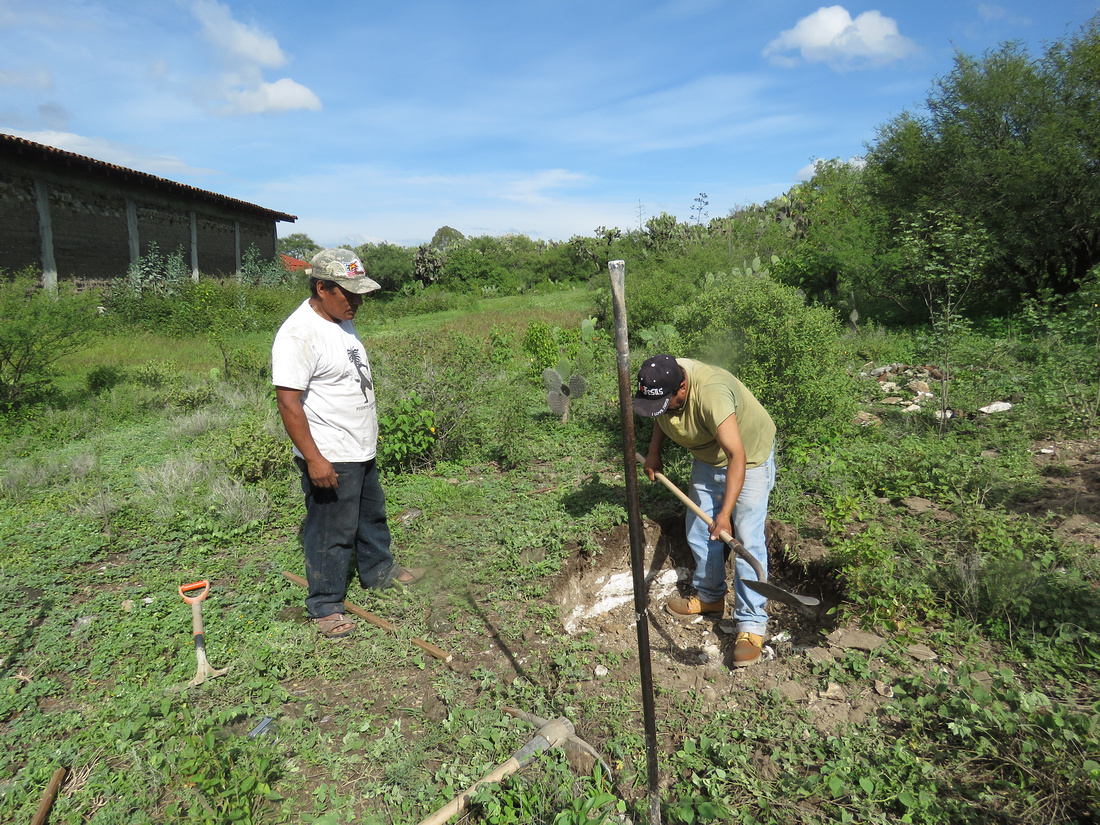


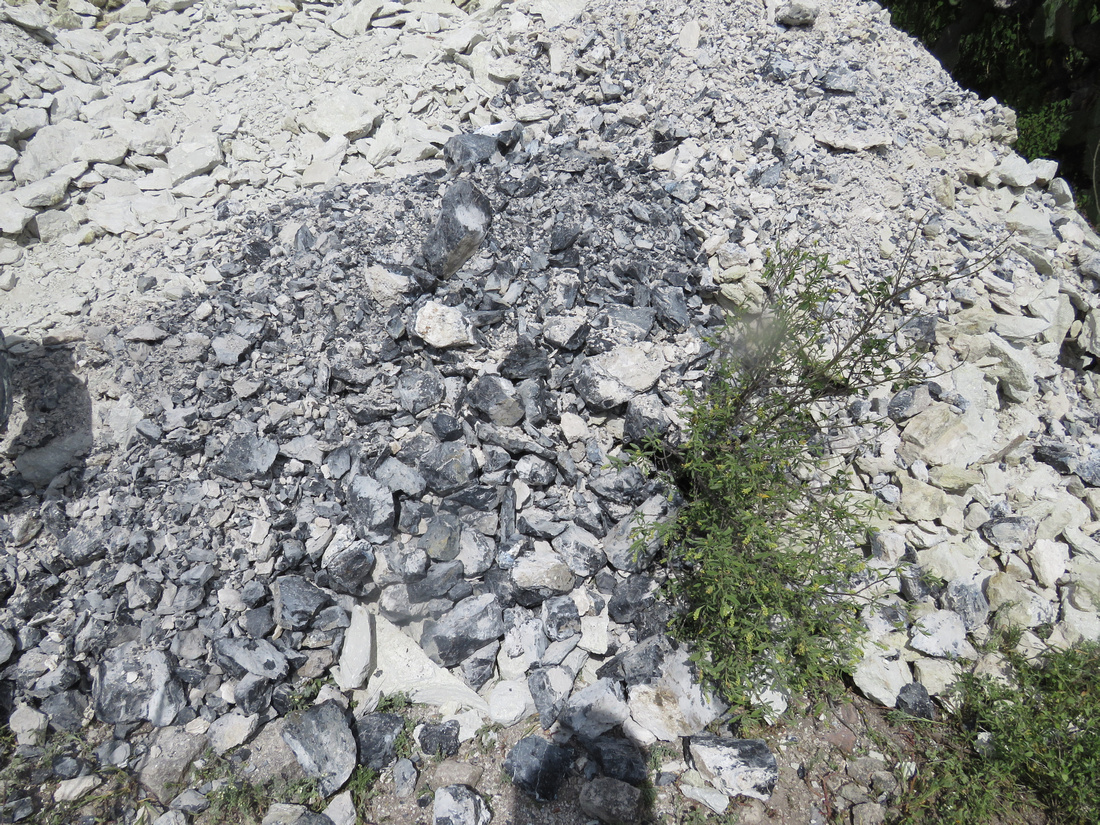
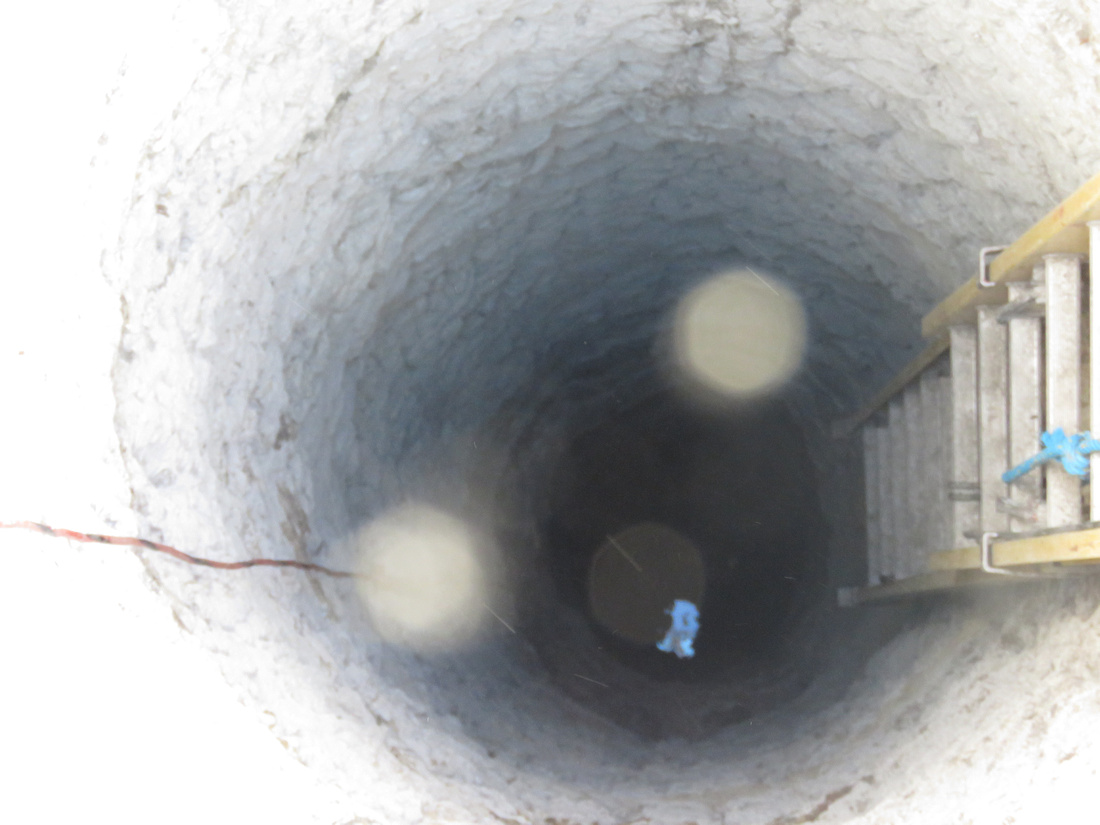
Our first bucket of water.
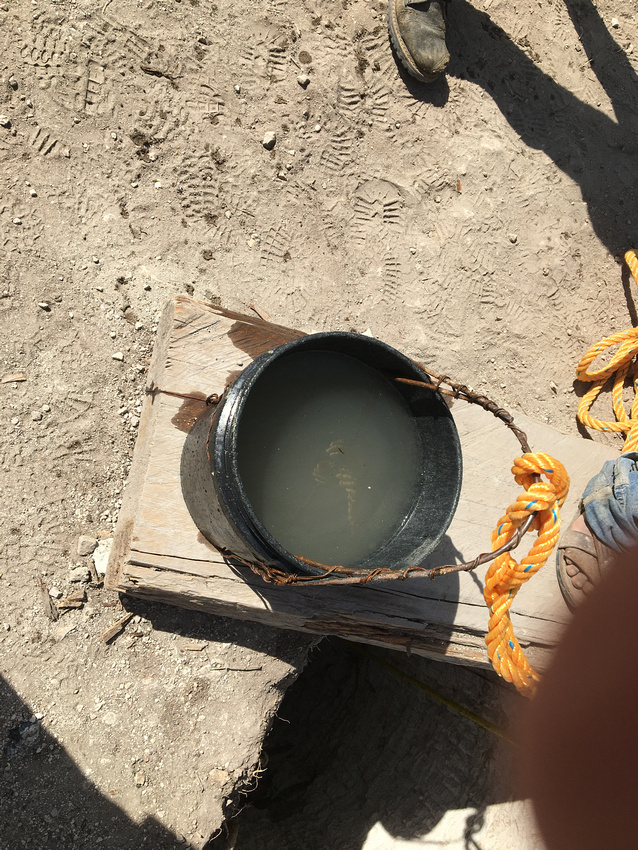
Beth and I love traveling to Cuajimaloyas. About eight miles past Cuajimaloyas is a small town call Llano Grande. In this mountainous region it’s difficult to find a stretch of level land that’s more than twenty meters long. The town of Llano Grande must be a couple hundred meters long and almost as wide. And it’s level. After having lunch in a restaurant/ general store the owner allowed me to video the interior. It reminds me of a general store from the past. It’s loaded with merchandise, made of wood, lots of old nick knacks, and the owners make you feel at home.
One dark cloud that hangs over us is our first full time neighbor. Aside from being dishonest, after he’d built his little wooden shack, he took over a year to build a bathroom. They just went wherever they wanted. And as family and friends came to visit, the accumulation of excrement multiplied. I understand that in large cities on the West coast of the United States, this might not be a big deal, but it is here. We were at first shocked. As time went on our shock turned to disgust, and then to anger at their lack of common decency. This is something we’d not experienced since our retirement. To make matters worse, the family had speears in the US which made it more difficult to understand this kind of behavior. As their home is only fifty meters from ours, our concerns over health issues escalated. I finally confronted the owner and he did build an outhouse. I’m still amazed that he chose to do all sorts of projects rather than build a simple outhouse.
I’ve made hundreds of photographs of the Sunday market in Tlacolula, but photos lack the movement and sounds of the market. A few weeks back I decided to video the market. The lack of people in the videos is due to our early arrival at the market. By noon many parts of the market are literally shoulder to shoulder with people. Many people from the outlying indigenous villages do not like to be photographed. I’ve always been respectful of that fact. In the video though, I chose to film an indigenous family. They weren’t happy about it, and I was uncomfortable, but I was determined to film their resistance to being filmed or photographed. It’s something that I still don’t understand.
Our purchases at the market are usually limited to fruits and vegetables. We make about three trips a month to a Walmart in Oaxaca and a trip to Sam’s Club once every two months.
A couple of videos of the Sunday Market. They are pretty much unedited.
I continue to ride my bicycle every day and recently switched to tubeless tires. Mickey talked me into switching and I’m so glad I took his advice. I haven’t had a flat since I switched.
Beth continues to crochet beanies and blankets for newborns. She still quilts and makes alterations for locals.
I’ve begun to give guitar lessons on Saturdays. This has proven to be quite difficult as I’m far from fluent. We manage to stumble along and my vocabulary has increased. I’d love to find an accordion player to make music with.
An emaciated puppy wandered into our yard about three months ago. We’ve fattened her up and she’s become part of our family along with our other two dogs. We rescued Big Boy from Tlacolula, and purchased Nellie from a farm down the road. I believe she’s a mix of Jack Russell and who knows what. She’s smart as a whip and has proven to be a loving companion.
The last thirty days ended up being our most stressful month here in Oaxaca. Beth began to have some pretty serious side effects from years of taking lithium for several years. A local doctor recommended that she slowly wean off the lithium and try marijuana to help her sleep. That worked but did little to curb manic episodes. Reluctantly we both decided that returning to the lithium was the best choice. Fortunately she’s able to take a smaller dosage. About a week after she began taking the lithium again, while putting on her pants in the morning, she was stung on her thigh by a scorpion. We’ve both been stung and although it hurts like hell for a while it eventually becomes similar to a bee or wasp sting. This time it was different. Throughout the day she began to develop new symptoms. Her lips and lower legs began to tingle. I took her to the hospital where they administered anti-venom and observed her for a couple of hours. The next day we went back to our doctor for blood work as she’d began taking the lithium. Some of the results were not good. She was prescribed additional medicines to counter her problems. Of course the new medicines had side effects. Through trial and error she has stabilized. She’s controlling her high cholesterol and high blood pressure with a very strict diet. What became apparent from these events is that if I pass before she does, there is no way that she could remain here alone. So we’ve decided to move back to the States. We believe that it’s best to do this move while we are still able. We are considering Washington State. Fortunately the decision to move back was an easy one. We didn’t have to go through the process of weighing the positives and negatives of returning to the States. We are in the process of making our house more saleable and are unsure how long it will take to find a buyer. Anyway, this could be our last blog. It’s likely though that we’ll post once the house sells. Neither of us feels any desperation so hopefully we can continue to enjoy our remaining time here. We’ve enjoyed writing the blogs and reading all of the comments. We expect to keep the donpedrillo@yahoo email, at least for a while.
My driver’s license from Texas expired so I acquired a Mexican license. It was a bit of a hassle but ultimately I was able to procure one. No eye test, no written test, and no driving test. Paid my eighty dollars and that was that. I won't have to worry about it again for 5 years.
We had to have one of our dogs put to sleep. He developed a neurological disorder and was in a lot of pain. He was born with several defects so we suspected his life might be short but when the time came; it was tough. Coby was the best dog I ever lived with. He was also the first dog that I never struck. Coby was kind, patient, very loving, and extremely loyal. It’s been months since his passing and we still miss him dearly. We buried him close to the house to remember him daily. Coby watched over our property like it was his. He used to sit on the front steps and just watch. There was always hell to pay when a stray dog wandered into our yard. His goal was never to kill, just to run off the intruder. Coby was with us for three years. The saying that dog is man’s best friend fit Coby to a tee.
This picture of Coby was taken in June 2017.
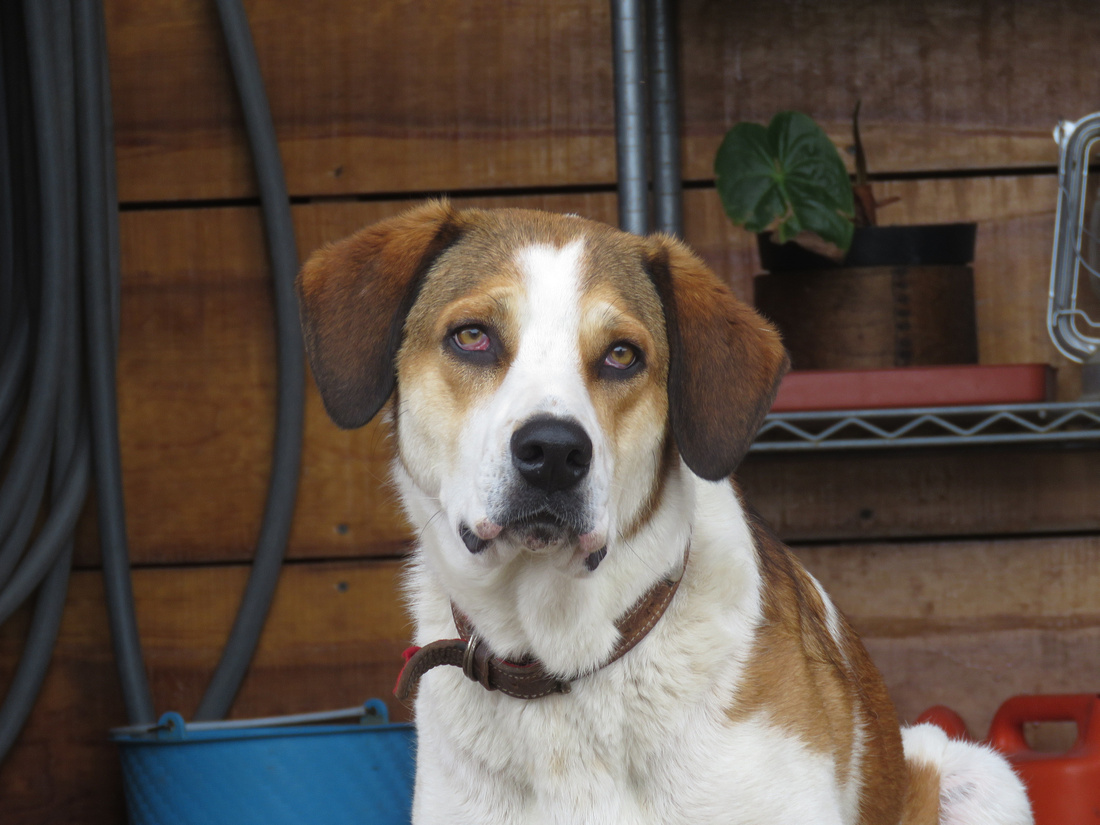
Scooter is over fourteen. We got him as a pup and brought him down when we moved. He mostly just walks around, sleeps, and eats. He’s always been a bit of a loner but it’s gone to the extreme. He has lost his hearing but we've had him so long he picks up on our body language and his loss is not an issue. He's a tough little guy. The eye was lost tangling with a German Shepard back in 2013.

One of our hens disappeared for a while and came back with a brood of chicks. We’ve had trouble keeping chicks alive so we gave them to a friend. They are a blast to watch though. We decided to keep the latest brood. There have been twelve chicks wandering around the property. Hard to believe there are twelve chicks under the hen. You can see that the chicks are pretty big. She is a great mom.
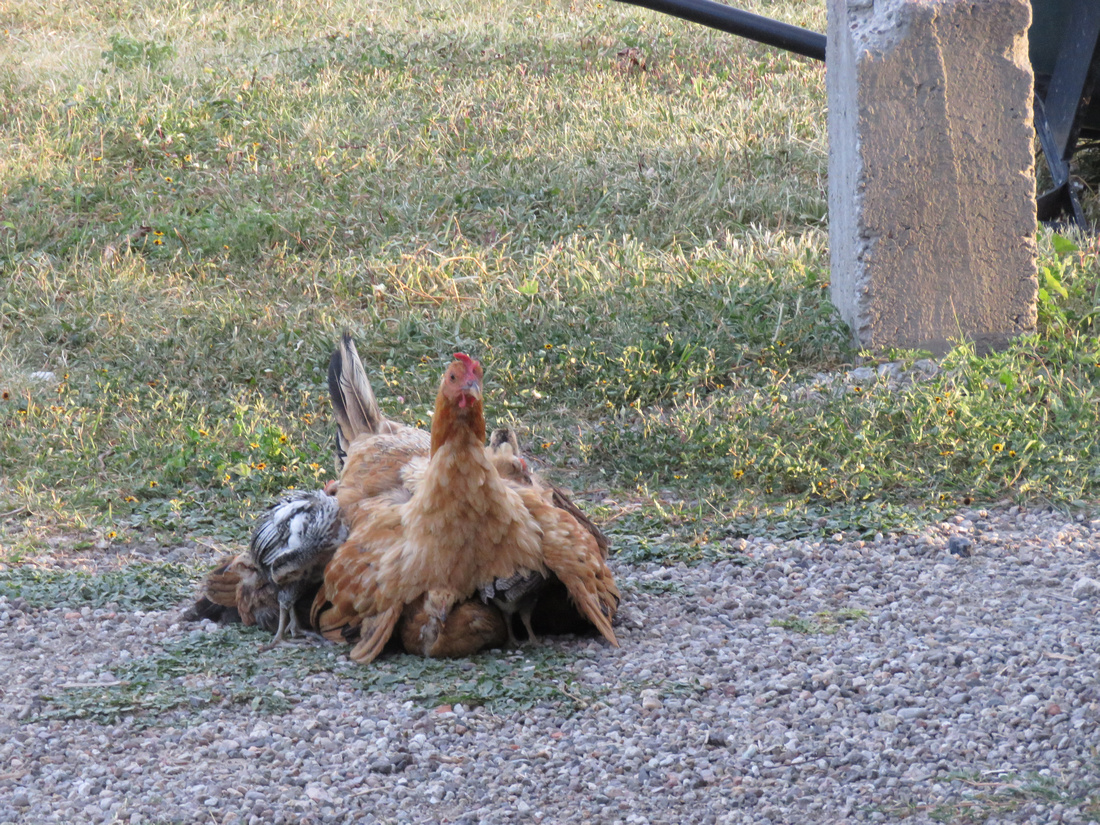
For quite a few Sundays I saw the same dog, usually lying next to someone that was selling fruits or vegetables. I always petted and talked to him. He looked like a chocolate lab and had a few years on him. A few weeks ago I ran into him again at the feet of a woman selling pineapples. After petting him I told the woman how beautiful he was. She then told me how unfortunate it was that his owners had moved and had left him to fend for himself. There are lots of stray dogs in Tlacolula, many on the edge of starvation. Because this dog looked pretty well fed, I assumed he had an owner. Apparently, others felt the same as I did and decided to feed him. With the permission of the women, I coaxed him to my truck with pork rinds. When we got to the truck, I tried to coax him in with the pork rinds. He wasn’t afraid. I concluded that he’d never been in a vehicle. I picked him up (wearily) and put him on the back seat. If he was afraid, he didn’t show it. He was very trustful. When we arrived home, he climbed down and immediately faced Lucky who was unhappy with his presence. Lucky has since accepted him. He suffers from a little arthritis, probably from years of sleeping on a cold surface. He sleeps in our protected patio now on a padded carpet. Because of his age I kind of think of our home as a retirement center for him, although after cruising around our property, he is limbering up and acting much younger. He’s already a part of our family and he loves to accompany Beth on her walks. He has also taken on the responsibility of protecting our home. He’s not aggressive but lets his presence be known. In many ways he’s like Coby. He’s a big old loving dog. We had a rooster once that we named Big Boy. Our new dog is now Big Boy. I hope we will have him around for years.
About a week after I wrote the above paragraph I made a trip to Tlacolula. While there I discovered that a woman had been inquiring about Big Boy. I’d been misinformed. The dog had an owner. I brought him back the next day. I ran into him a week later and could tell he was glad to see me. I missed him terribly. The following Sunday I again ran into Big Boy again. After playing with him for a while we continued on to the market. We took a mototaxi back to the truck. On the way back I saw Big Boy in front of his home with his owner. I asked the driver to stop so I could speak with the owner. I explained to the owner that I was sorry and that I’d been told that he’d been abandoned. We talked for a half an hour. As we were about to leave the owner asked if I was still interested in taking the dog again. The family lives in town on a busy street. She felt that Big Boy would have a better chance of surviving if he returned with us. The whole family was in tears but they all understood that Big Boy’s quality of life would be better with us. They were concerned that he would be happy with us. I assured them that he was very happy with us. I was asked if they could visit us and answered that they could visit any time. I could tell that Big Boy was happy to be at our home again. After two days he seemed totally content to be with us. We did learn that his name is Canelo (or Cinnamon in English) because of his color.
Unfortunately, the story doesn’t stop here. Two days after bringing Canelo home the former owners showed up. They’d decided they wanted Canelo back. We were crushed but gave him up. What a disappointment!
Incredibly, the Canelo saga continued. The Sunday after we’d given Canelo back, we ran into the owner at the market. She again asked us to take him. She said that the whole family was in agreement. This is the last time. If they change their minds, I simply won’t let him go. I don’t believe this will be the case though.
If it seems a little odd that we pursued this dog so diligently, it’s because Beth and I took such a liking to him. We both feel like he’s been searching for a home like ours.
This is Big Boy. What a great companion!!

We’ve never had good internet here. We are thankful when we have it, which is often confined to early in the morning. Sometimes there is no internet for days. We have a Netflix account and often watch YouTube. When the internet is down, we read more. If we are both in the middle of good reads, we’ll continue reading until current books are completed. There have been stretches of constant and acceptable internet. Thanks to Telcel, we have just obtained great internet. I tested the speed and discovered that it varies close to 9mps. That’s screaming for us. The price is about nineteen dollars a month.
If you are interested in the history of Mexico, an enlightening read is T. R. Fehrenbach’s Fire and Blood. I usually don’t read a book for pleasure more than once. I’m just about to finish up my third read. I honestly believe this book has been very instrumental in understanding the Mexican mind set. Losing is one thing; losing face is another.
After six years, Beth and I have finally realized that our comfortable SAS sandals are impractical. They are very comfortable but the soles are soft and cushy. They’ve proven to be magnets to the wide variety of thorns and stickers. I hate wearing closed shoes which is why it took six years to make the logical change. So, Beth and I have switched to low, hiking-type boots.
This is the sole of a pair of sandals. The white spots are thorns that have been broken off. This photo doesn't show the hundreds of thorns I was able to remove.

I spend hours listening to audio books. I have found these headphones to be the most comfortable. The hook fits over your ear and the spring loaded speaker lays against your ear. No discomfort whats so ever.

Last December we made our first visit to the Radish Fair in Oaxaca City. It’s held in the Zocalo (main square). People create statues and scenes from radishes. Some of them were pretty incredible. For most of the work radishes were used although corn husks and flowers were also used.
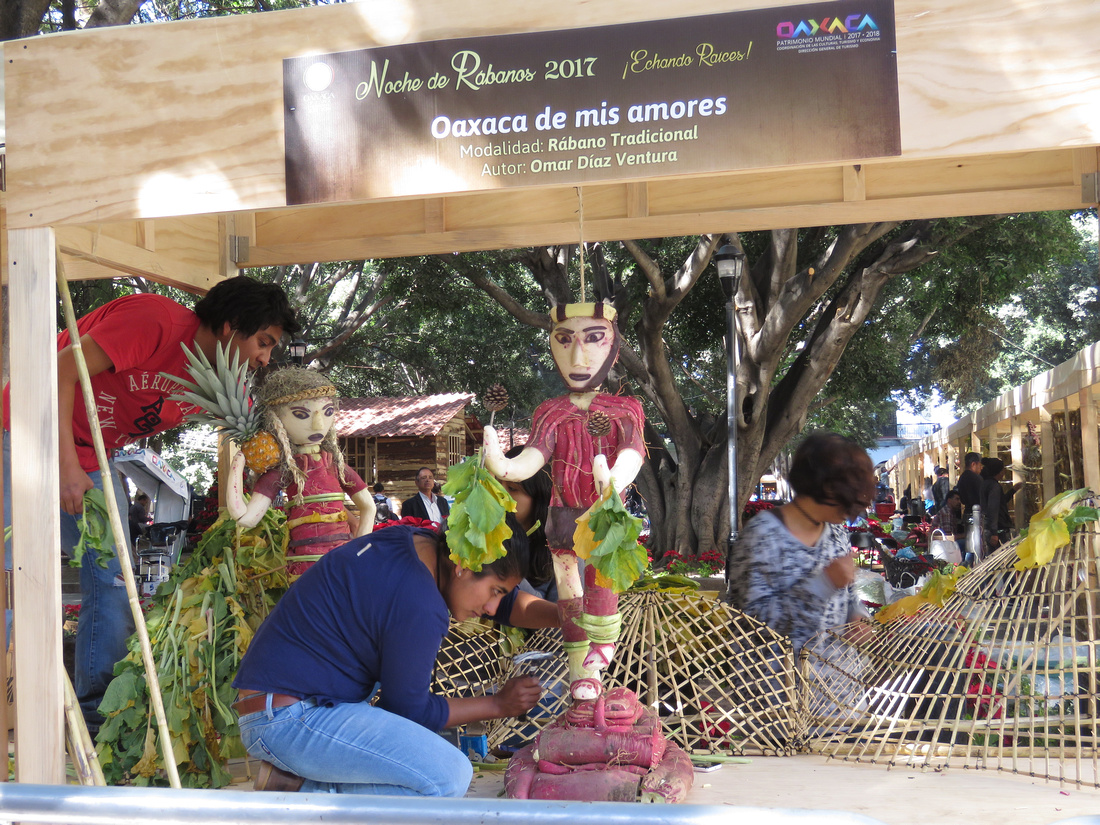
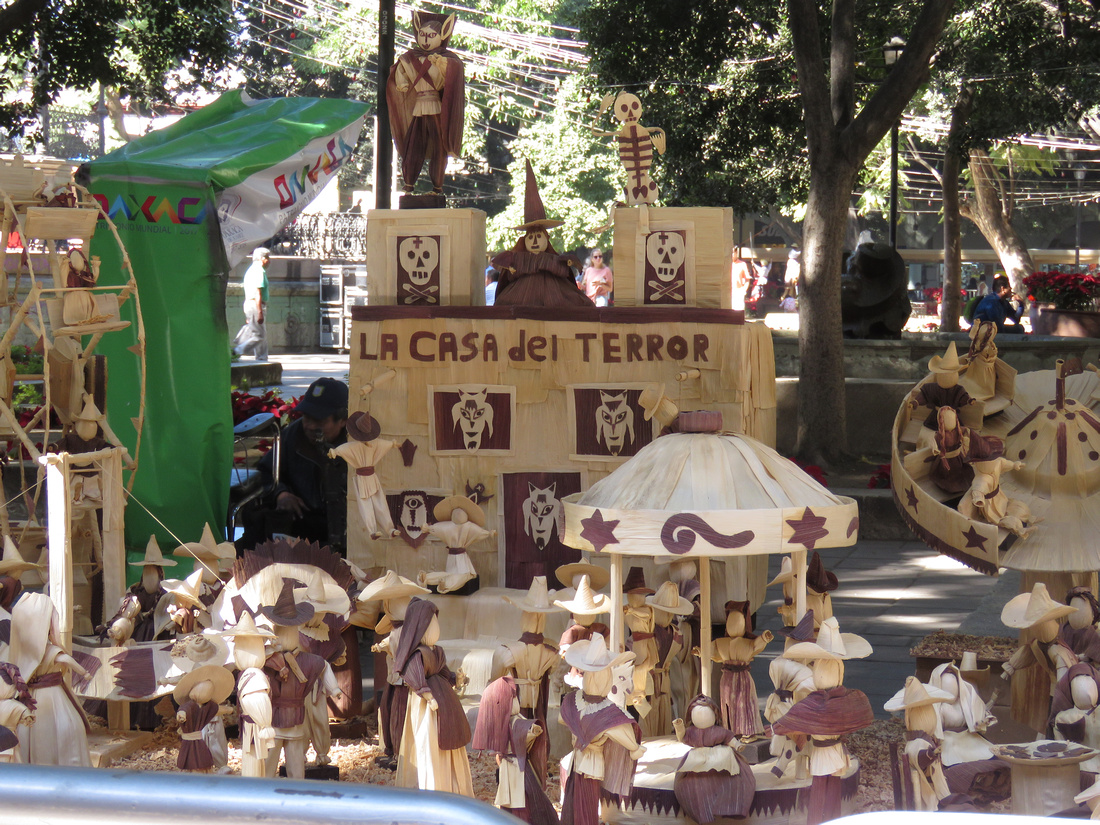
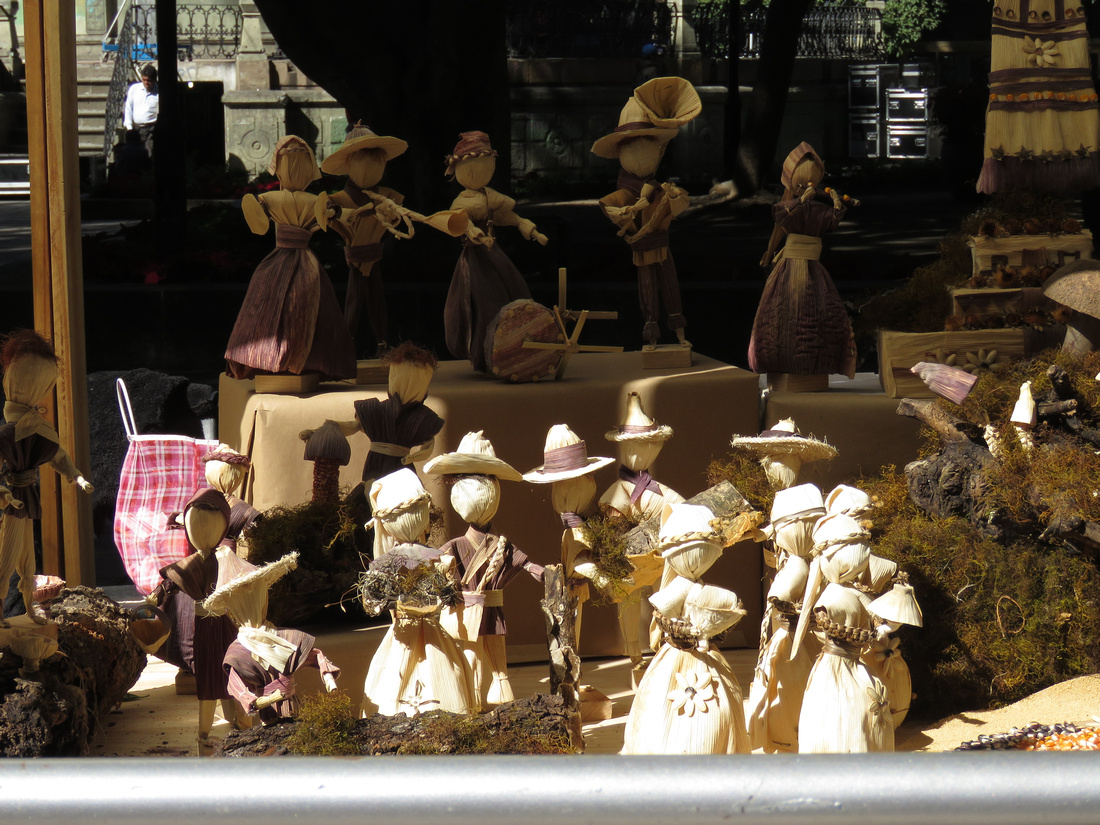

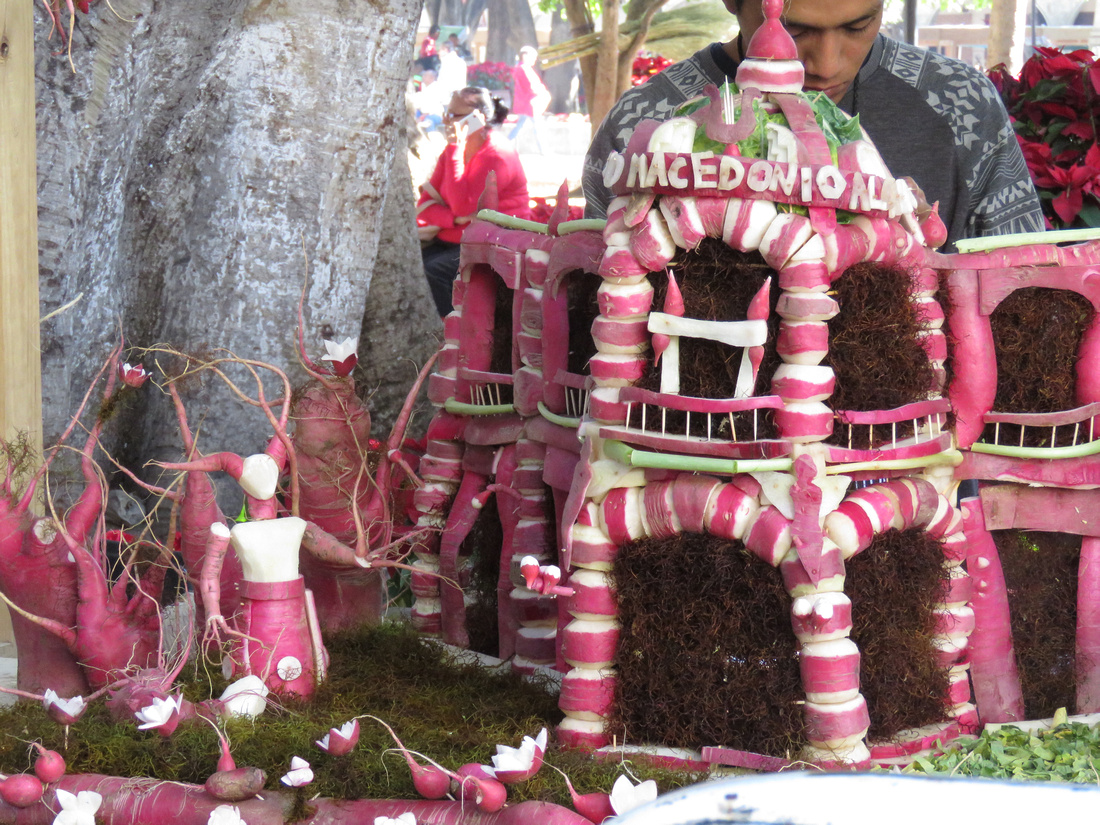
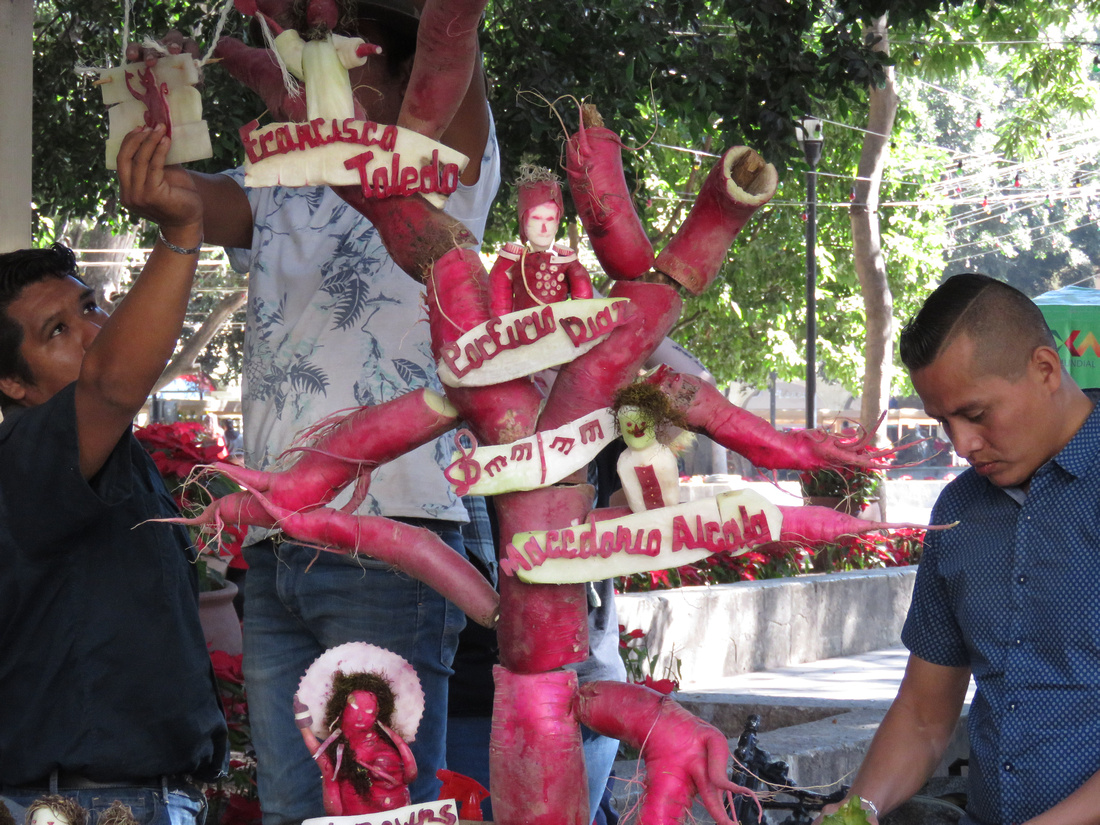

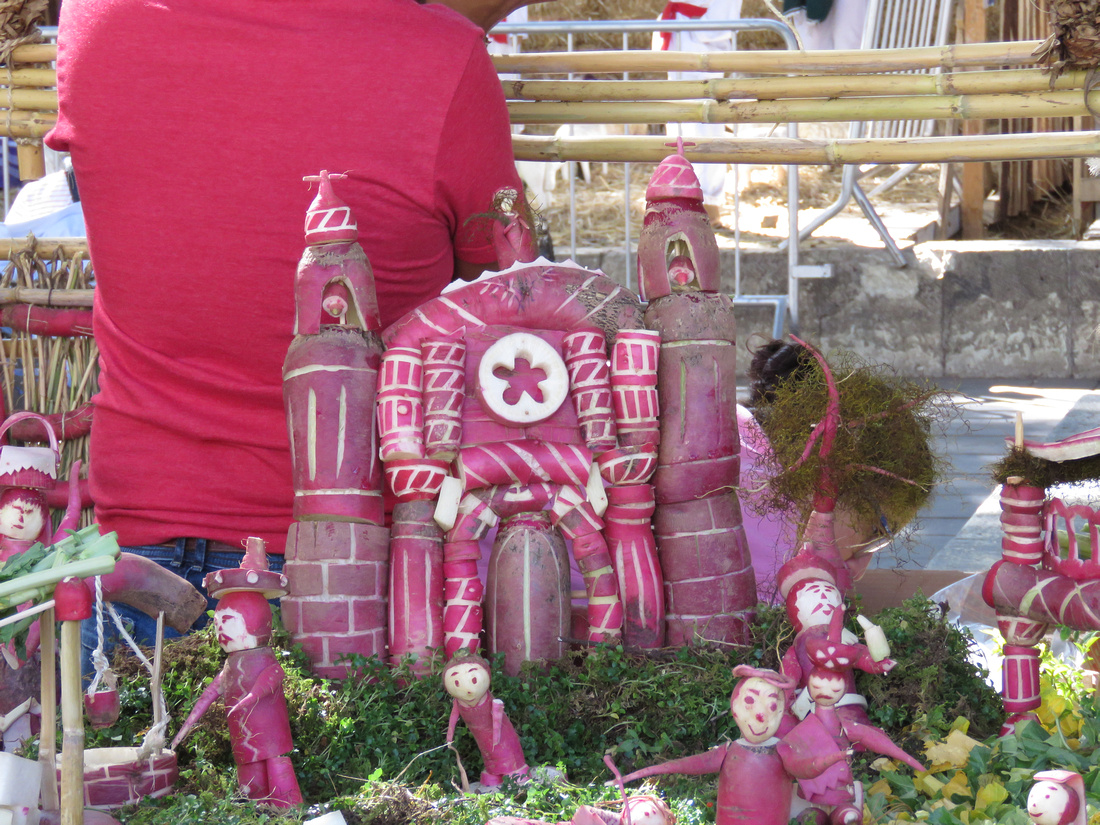
A fire that got out of control came a little too close to our property. Our property is cleared and it’s not likely that a fire could make it to our house; nevertheless, it was spooky watching the fire come closer and closer. The sound of the crackling didn’t help. I have a one inch hose outside just in case.
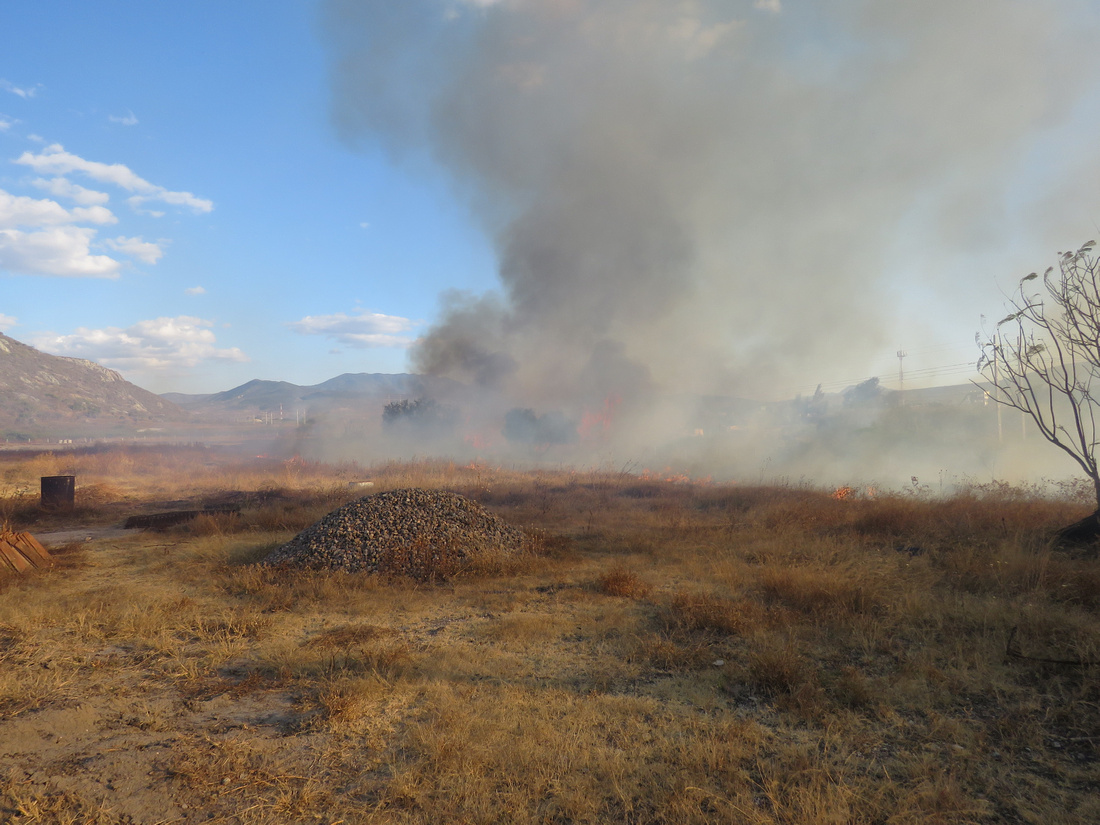
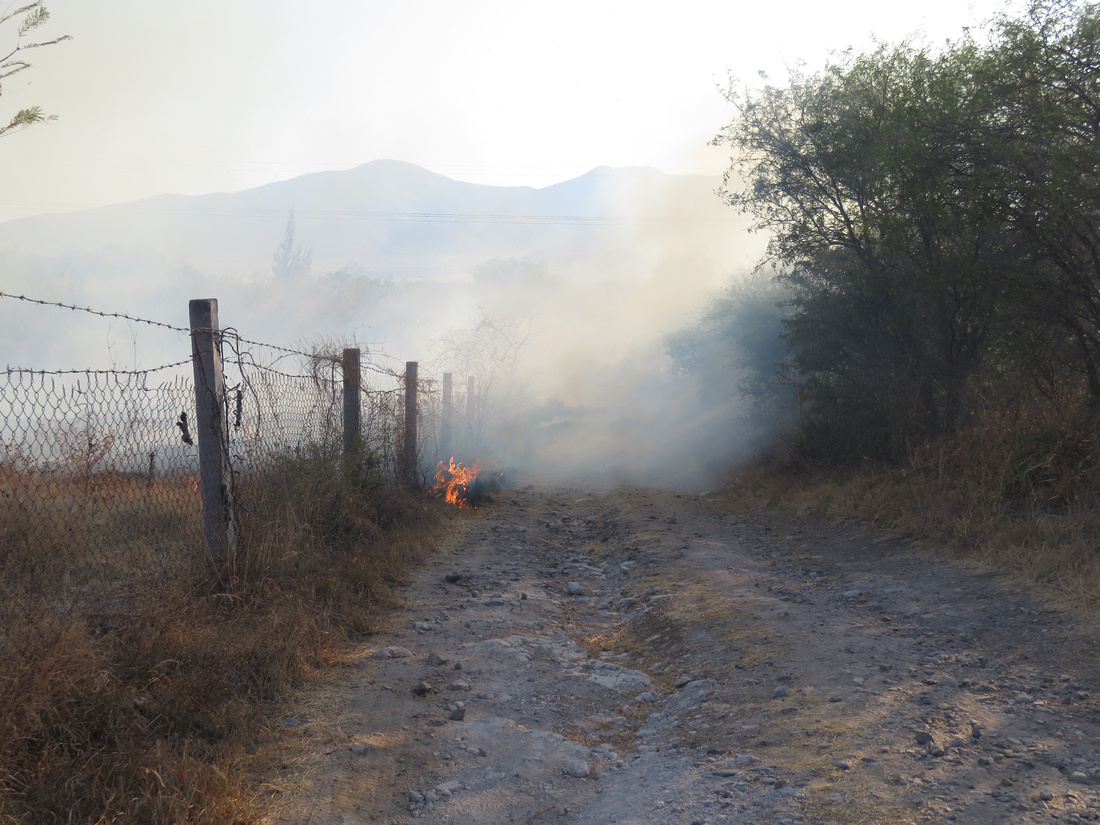

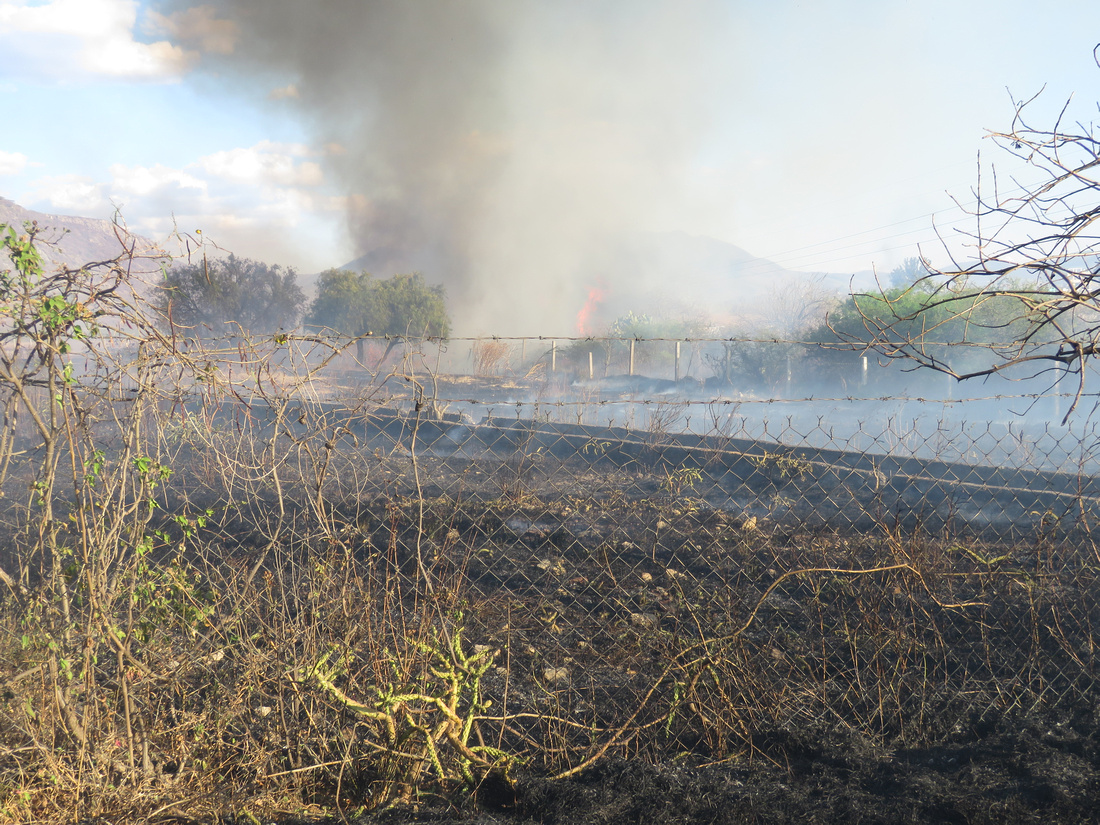
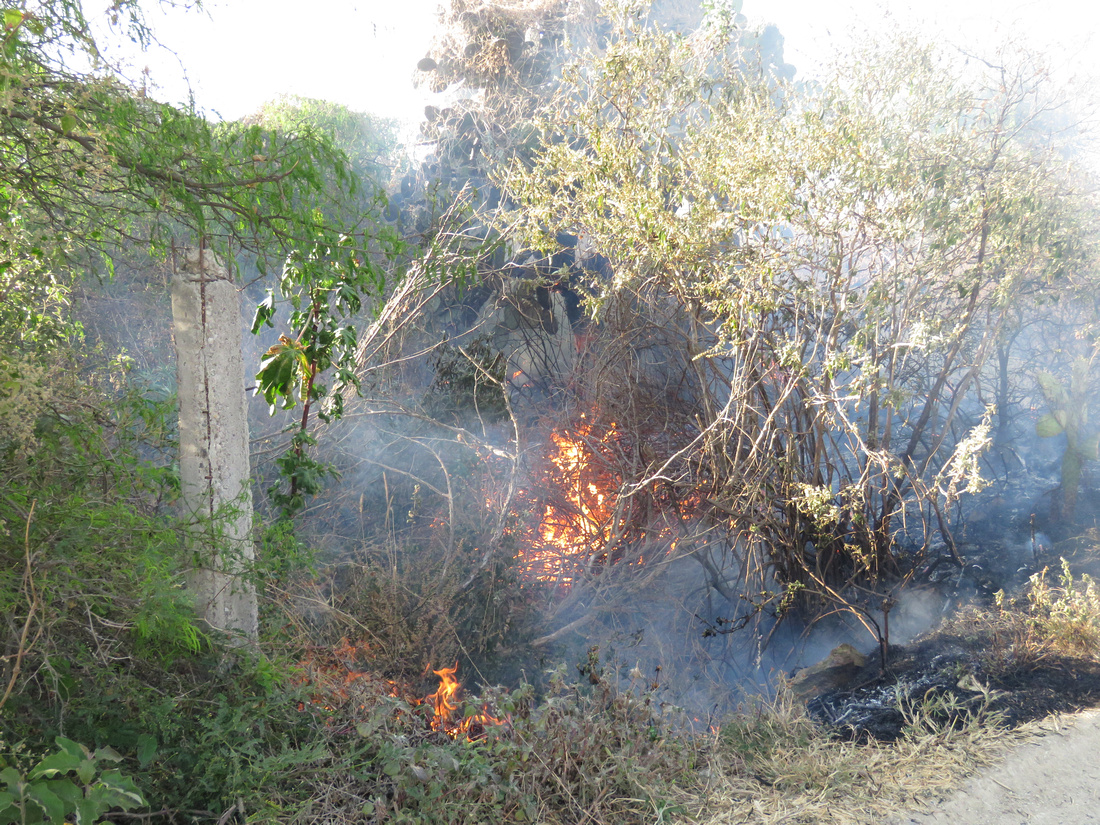
In February Beth and I were at the post office in Tlacolula. After we’d finished, I was getting in the truck when someone asked me for directions in English. Jonathan was from Sweden and ended up staying with us for four days. He’s quite a traveler. The Americas were his final visit. He’s been on and hiked on every continent except Antarctica. He had great stories and had to answer lots and lots of our questions. We hope he comes back after he finishes his travels in Chiapas.
Coming back from Cuajimaloyas the other day, three travelers from Germany asked for a ride to Tlacolula. We obliged, but soon regretted it. Neither Beth nor I were prepared for their insulting behavior. After minutes of listening to what we thought were bizarre positions such as there should be no borders in the world, I suggested that we listen to music. They reminded me of the videos of students protesting at colleges. I suppose in a way the three have gotten their wish. Ignorance knows no borders.
We've met many tourists from all over Europe. Most speak English very well. Apart from the three travelers from Germany, we've found them to be very interesting.
This is Jonathan.
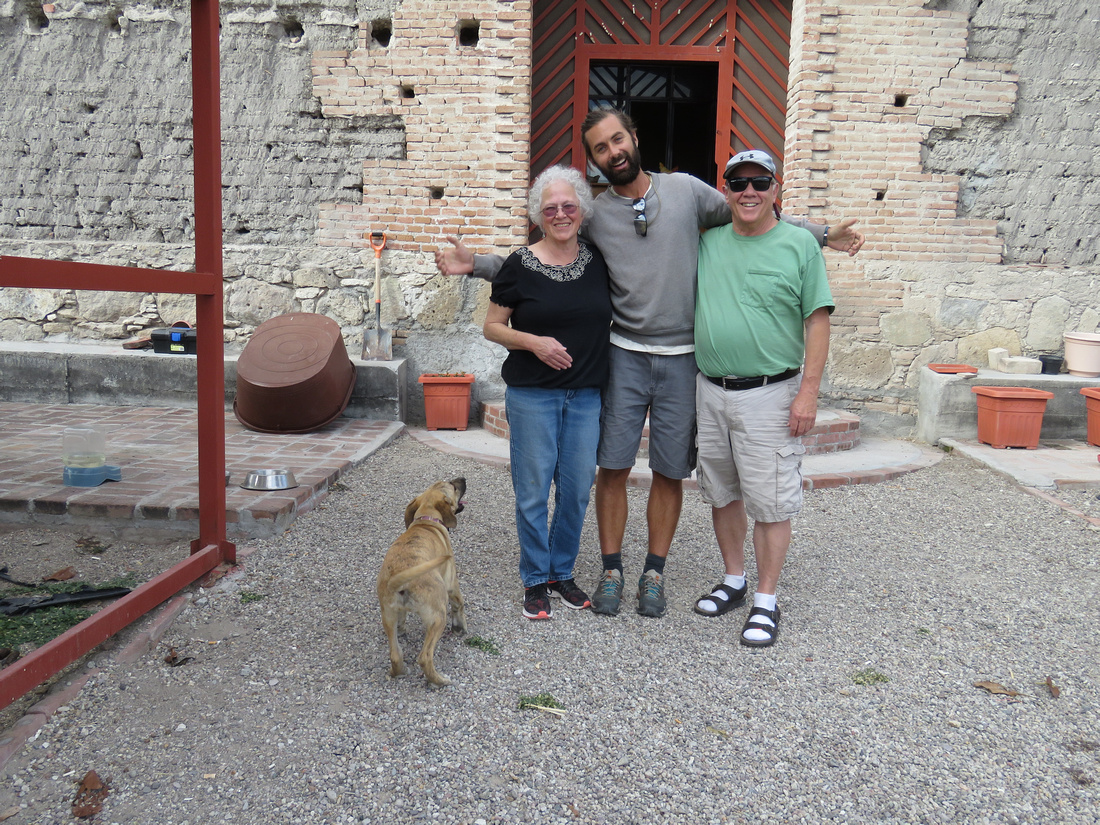
During a trip to Walmart, Mexico was playing against Germany. There were televisions all over the store being viewed by workers and shoppers alike. When Mexico scored or made a good play, there was yelling throughout the store. Reminded me of Superbowl Sunday.
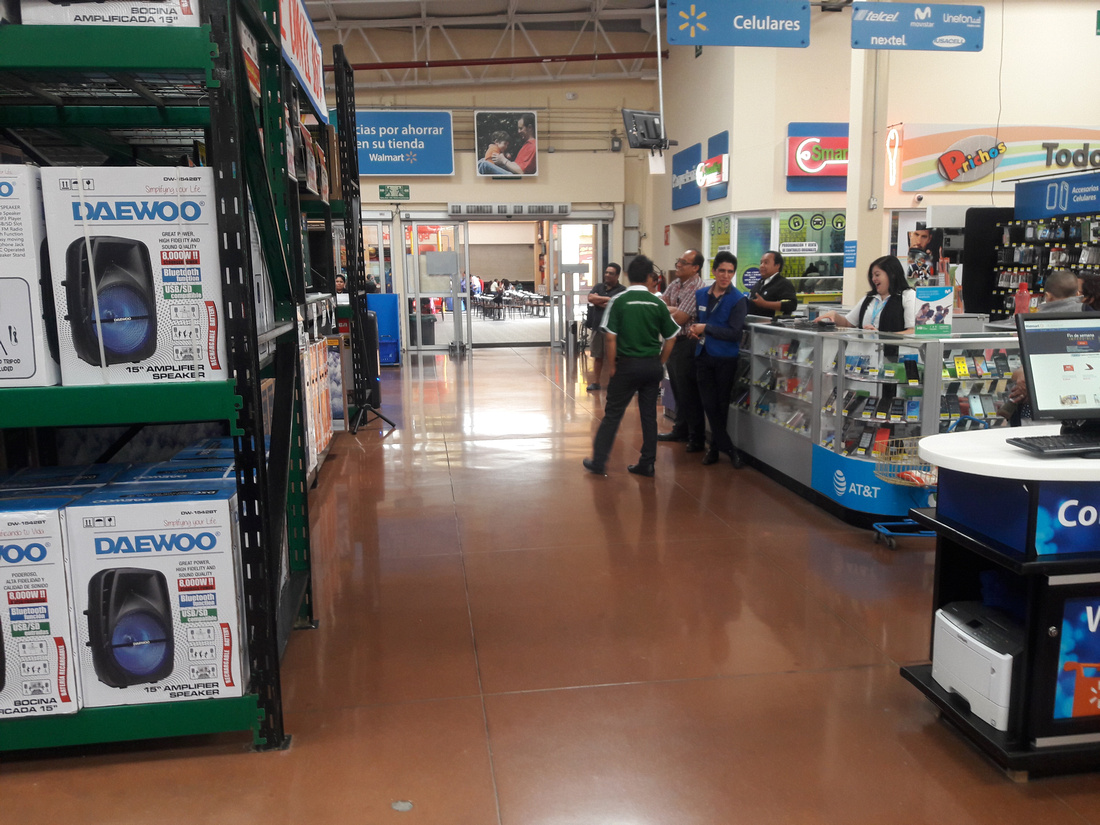




Beth and I were invited to a baptism in San Bartolo which is a Zapotec village. I believe that the majority of men from this village are in America. I couldn't help but take this shot of this gentleman. Later I'll clean up the background.

This is a help wanted sign that stipulates that they are looking for a young woman. These kinds of signs are very common here. Often help wanted signs include the type of worker they are looking for.
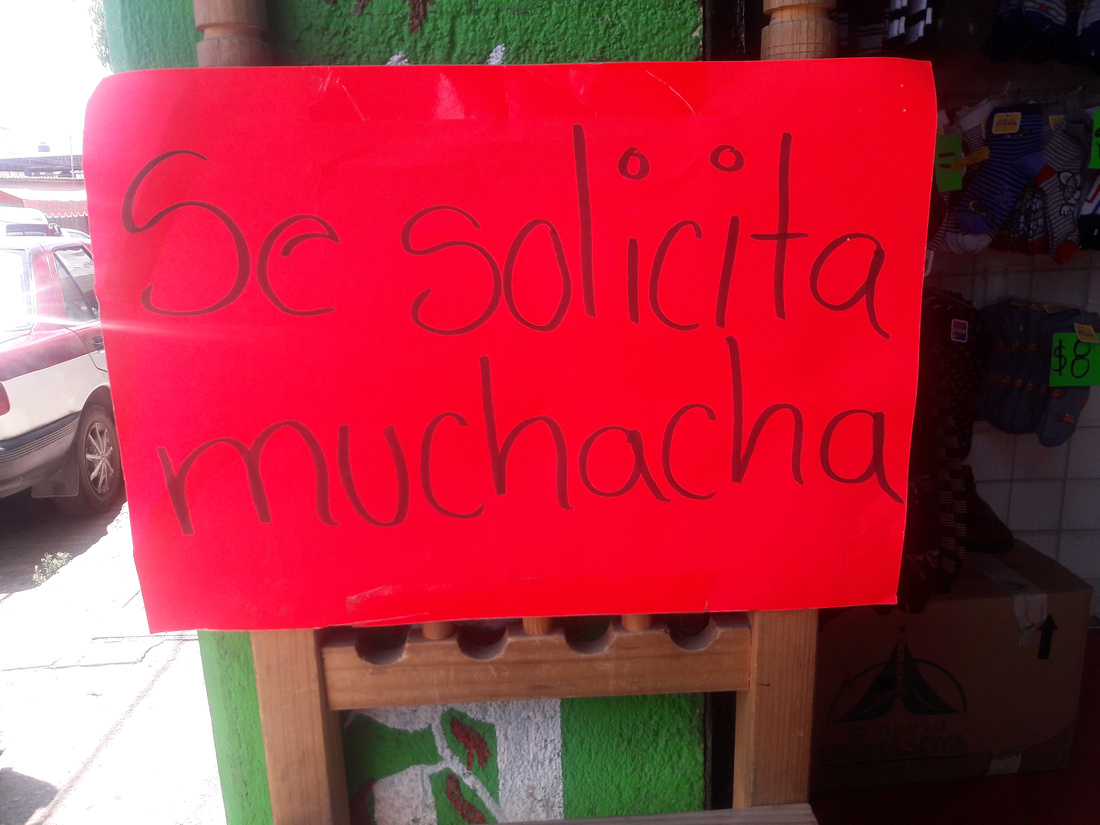
Beth has been crocheting beanies and blankets for newborns. It’s something she enjoys and there is certainly a need. She’s given away five sets so far. She recently finished a quilt for our queen-sized bed that she made with scraps from the many clothes she made for her two granddaughters.
Beth just booked her flight to Lubbock for a week in November to visit with our son Chris, his wife Danielle, their daughter Aly Marie who just turned 4, and their son Wyatt who turned 1 in June. She will get to celebrate Danielle’s birthday on Nov 8th and hers on the 12th before returning home to Oaxaca on the 13th. Beth has been so anxious to see her grandchildren face to face instead of on Skype. I'm sure she'll produce a blog over her trip.
Here is her beautiful quilt.

I passed this couple on the highway coming back from Oaxaca. I had to pull over and get a pic. It's not unusual to see whole families on a scooter.

I just finished a book called A Prayer Before Dawn (a somewhat deceptive title). A Brit serves time in a Thai prison. He’s allowed to serve the last part of his sentence in a prison back in England. The book is a quick read and the story is interesting, but what I found intriguing were his observations about the prison and prisoners in England. He found the prison to be very comfortable and the prisoners to be very whiny and ungrateful. After being held in deplorable conditions for years in Thailand it's easy to see how he would perceive the English prisoners in such a manner. Beth and I find ourselves in a similar position. I'm not comparing being in Mexico to being in a Thai prison, but I am comparing the difficult conditions here to conditions in the US. The sacrifices that some parents make to get their children an education is very humbling to see. Beth and I are usually invited to graduations every year and we always attend. This year we had four. Watching these young people graduate with pride and being aware of the challenges they face demands respect and elevates their accomplishments.
Beth and I have learned some lessons here. We've learned that you can be tolerant without being accepting, a lesson that seems to be lost in much of America. We've learned that life works much better when you use what you have to help others. We've learned to be nicer to each other. We've learned to value life more and how important it is to be grateful for our good fortune. We've re-learned the importance of having spirituality in our lives. We've learned to overcome new obstacles. We've learned to respect and appreciate the lives that our sons are living.
Sunday we celebrated Beth's birthday. It had been a couple of years since we had a fiesta, and Beth's birthday was a wonderful opportunity to get together with friends. I usually take photos at events, but I decided to enjoy the fiesta and have someone else take the photos. Beto's daughter Yesenia volunteered to capture this event. Beth and I thank her for her work. We also want to thank Vic and his crew who worked hard. Vic came to Beth's birthday from Puebla by bus. That's a five hour trip! We sure appreciate his expertise with sound and lighting.
This turned out to be a special fiesta for us. Having so many friends at the same place at the same time was incredible. Beth and I never could have made it here in Oaxaca without the help of so many people. Aside from celebrating Beth's birthday, the fiesta gave us the opportunity to say thanks.
We began preparing for the fiesta about four weeks earlier. The custom here is to invite your guests personally. Emails, messages, and calls are considered impolite. So.... we invited everyone personally. Many of our guests arrived by bus or taxi which made their attendance even more special.
A family from Union Zapata makes pork carnitas. We purchased a pig and they did all the preparation which included refried beans, salsas, a salad, pork rinds, and guacamole. Beth and I purchased twenty kilos of tortillas to complete the meal. We also bought twenty cases of beer and twelve liters of mezcal. Many guests also contributed additional bottles of mezcal and cartons of beer. After the fiesta we ended up with eleven liters of mezcal and six cases of beer. We had several visits the day after from folks that couldn't attend or just wanted to stop by to visit.
The cake we purchased is call tres leches. Three types of milk are used. Evaporated, condensed, and regular milk make the cake moist and very rich. The kids quickly learn that the cakes are about to be cut and are right there in front waiting for their piece.
I normally play Latin music at our fiestas but decided to play American music, mixed with a little Latin.
Beth and I talked and talked and talked. Having the food prepared by others gave us the time to spend with everyone. This was the most diverse group we've had at our home, from farmers to businessmen to professionals. Because things are so different here, I doubt I'll ever tire of listening to people. Five people spoke English! How sweet it is to be able to converse in our native tongue.

Yesenia made the letters while her sister, Shela, and brother, Armando, assisted hanging them.
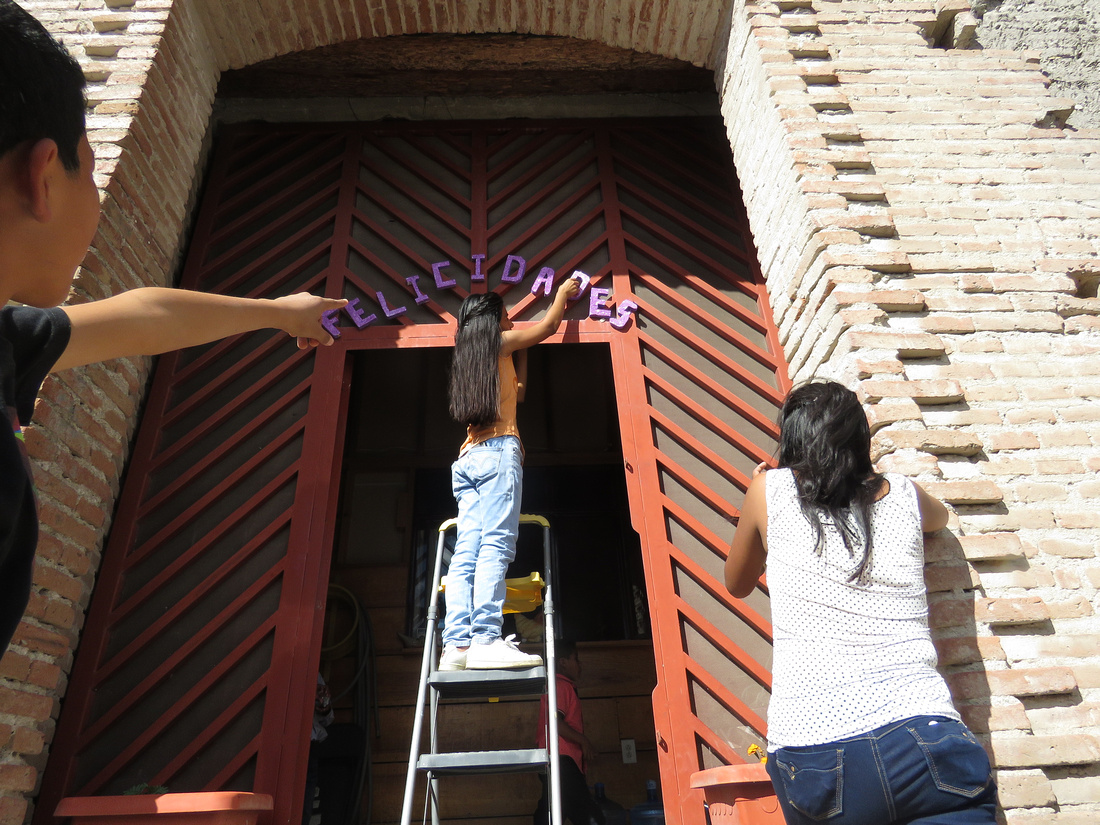
Everette is serving mezcal to our friend Rodolfo and his wife, Holga.
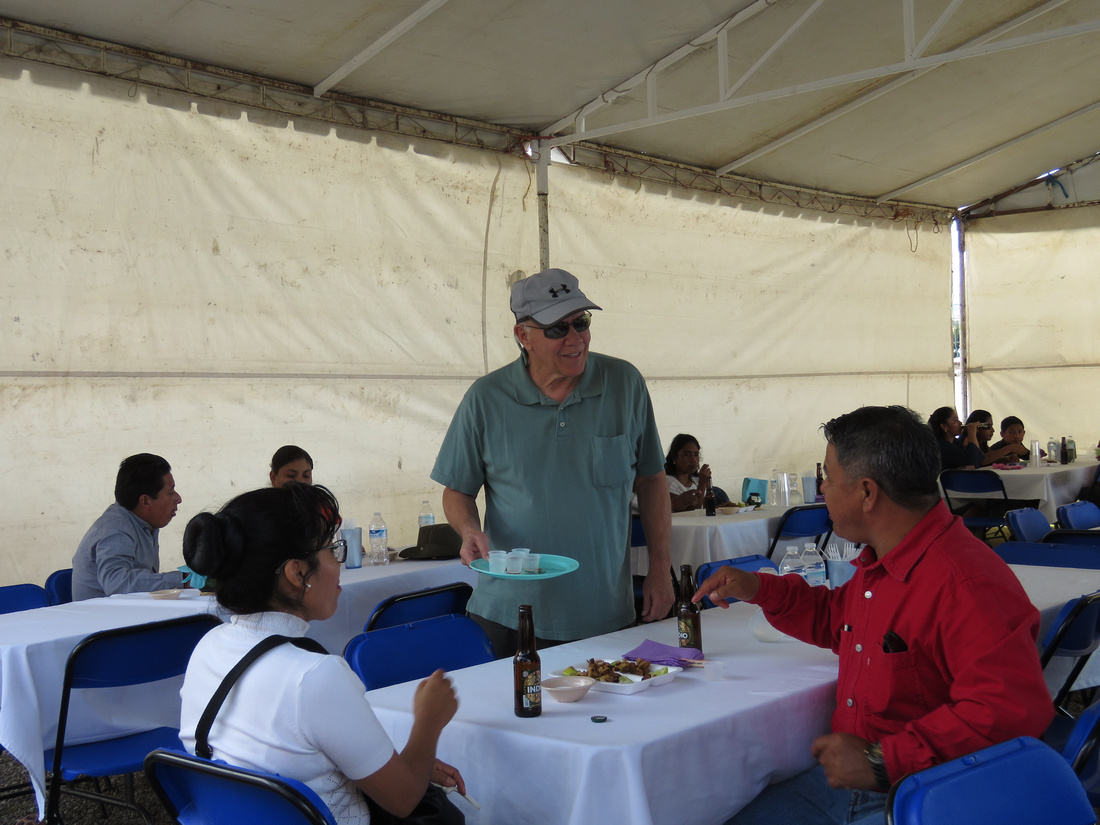
Getting ready to serve carnitas.

I believe in total we had about a hundred guests.
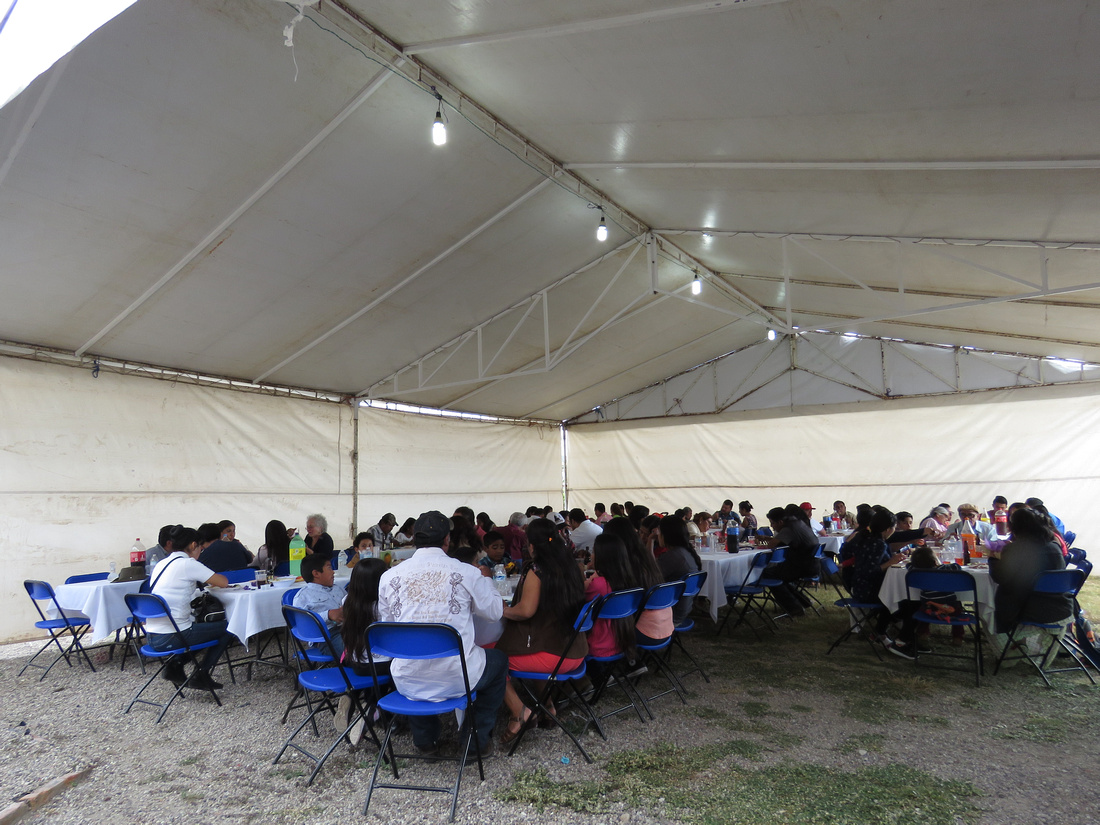
I have no idea how many cups of mezcal I served.


I've known Lalo for many years. In the background are his wife, Victoria, and one of his daughters.

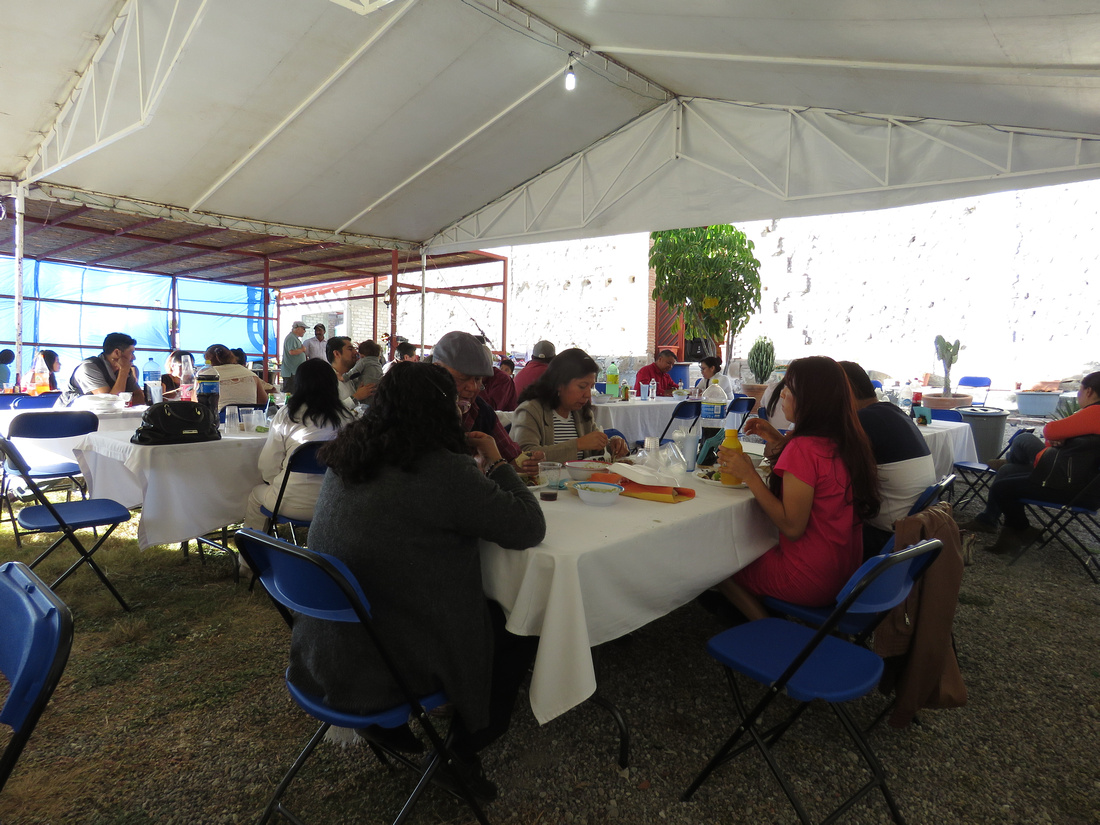
Dancing in front of everyone was a little embarrassing especially when some friends started to clap.
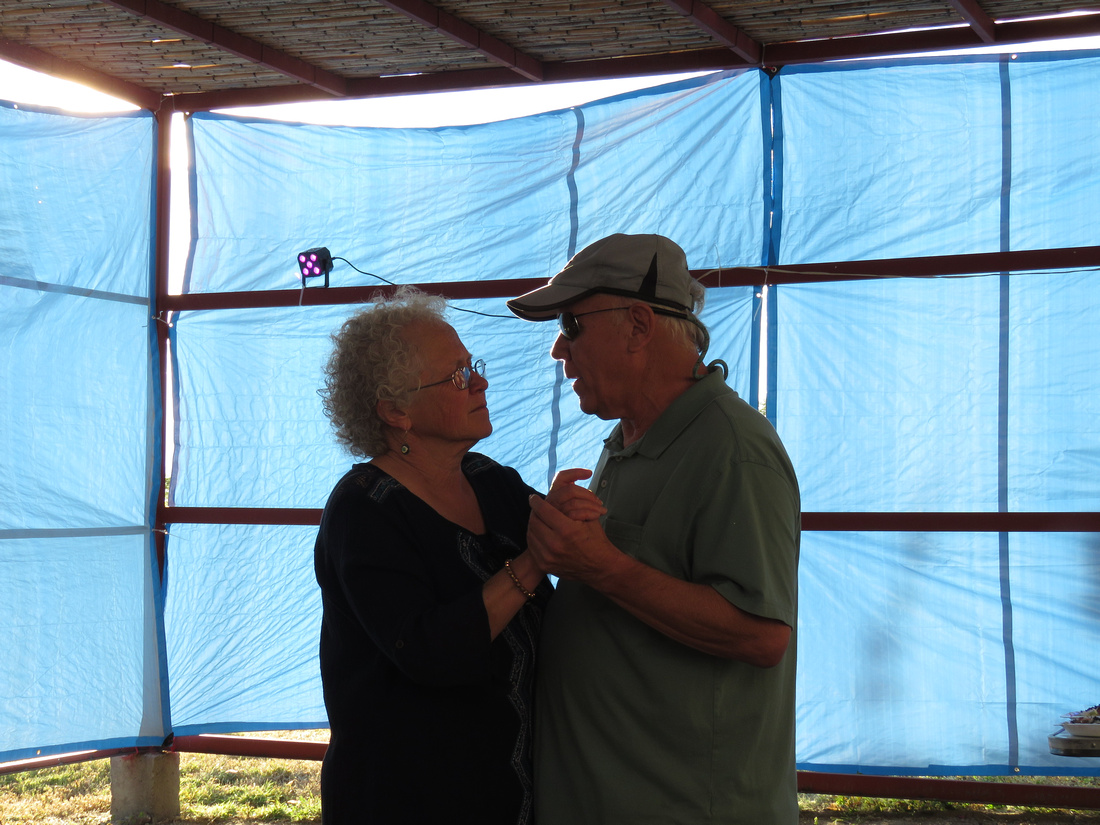
Beth enjoyed dancing with Lalo's mom.
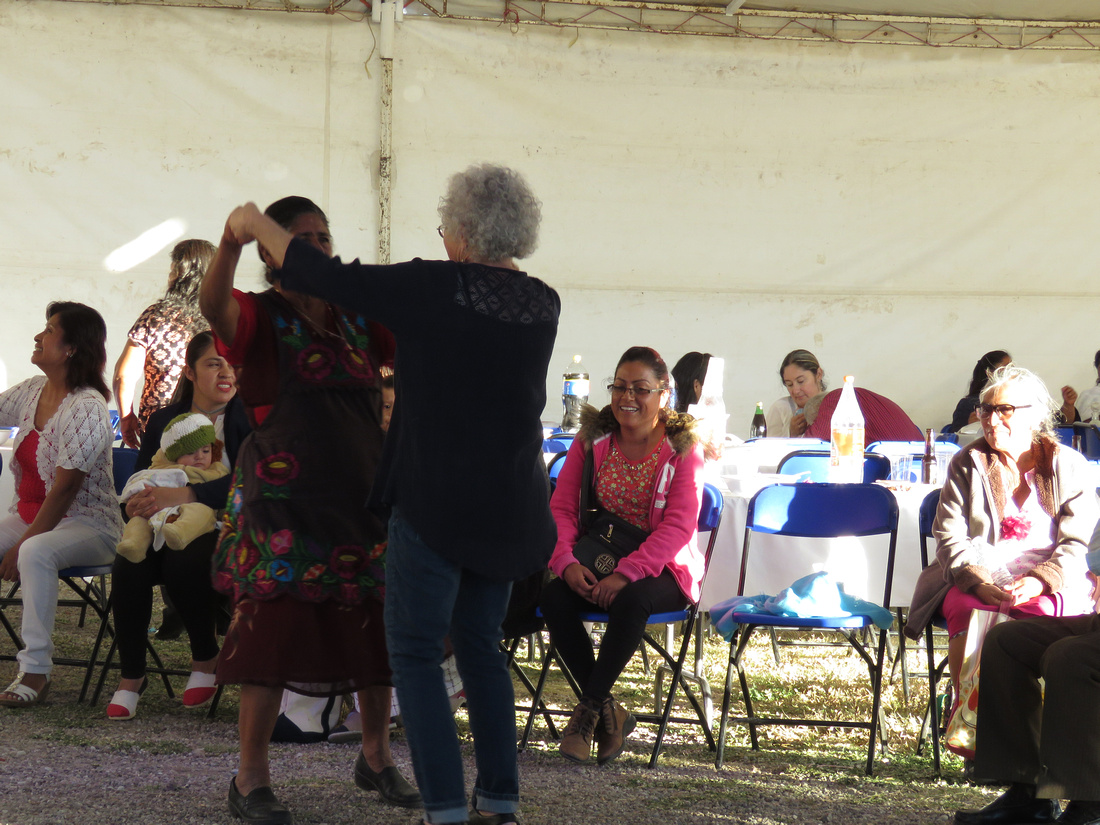
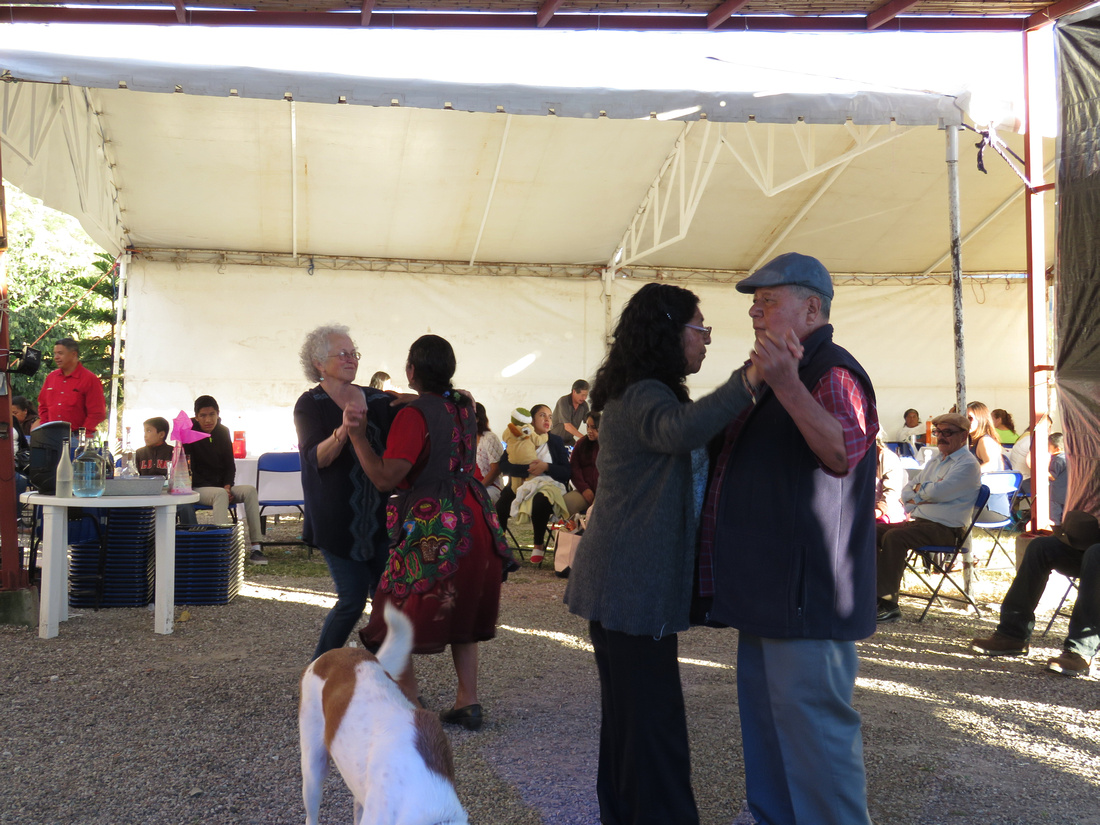
We loved watching the kids enjoy themselves.

Beth and Yolanda shared the same birthday but they each had their own cake.

Everyone loved watching the two bite into their cakes.

And some captured the event.

Everyone loves cake!

Agustin with his granddaughter Diana.
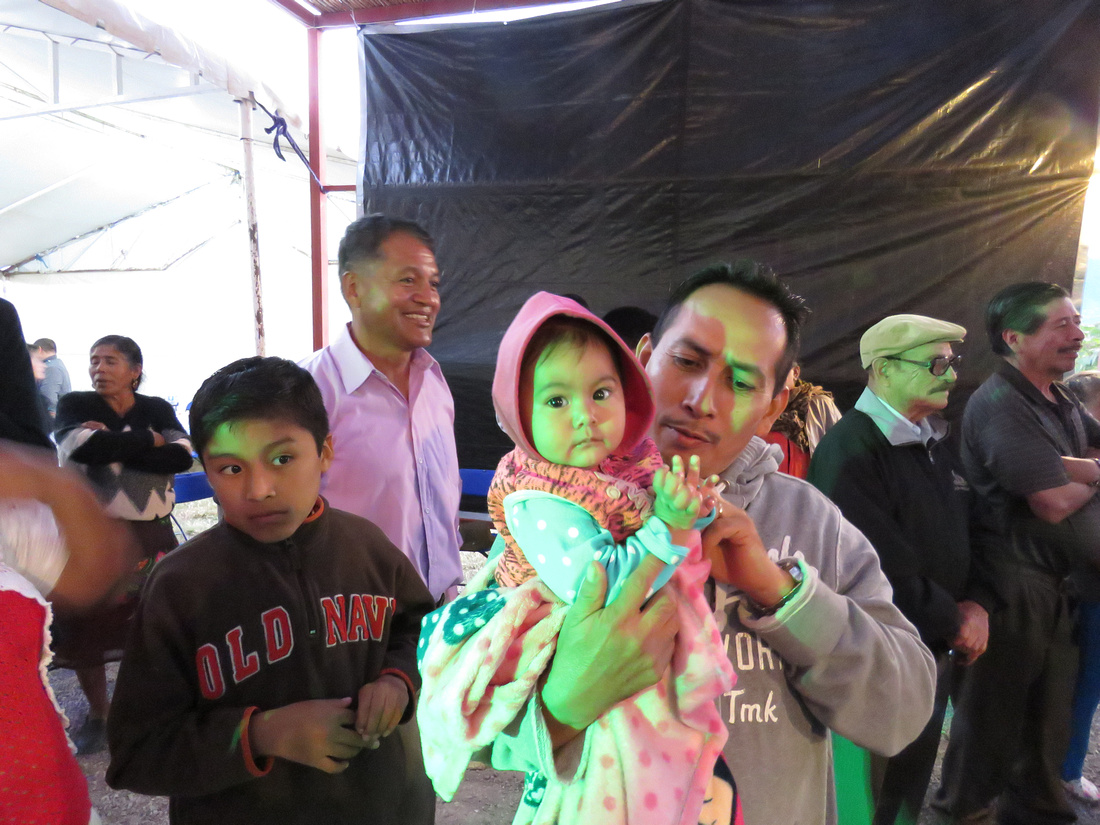
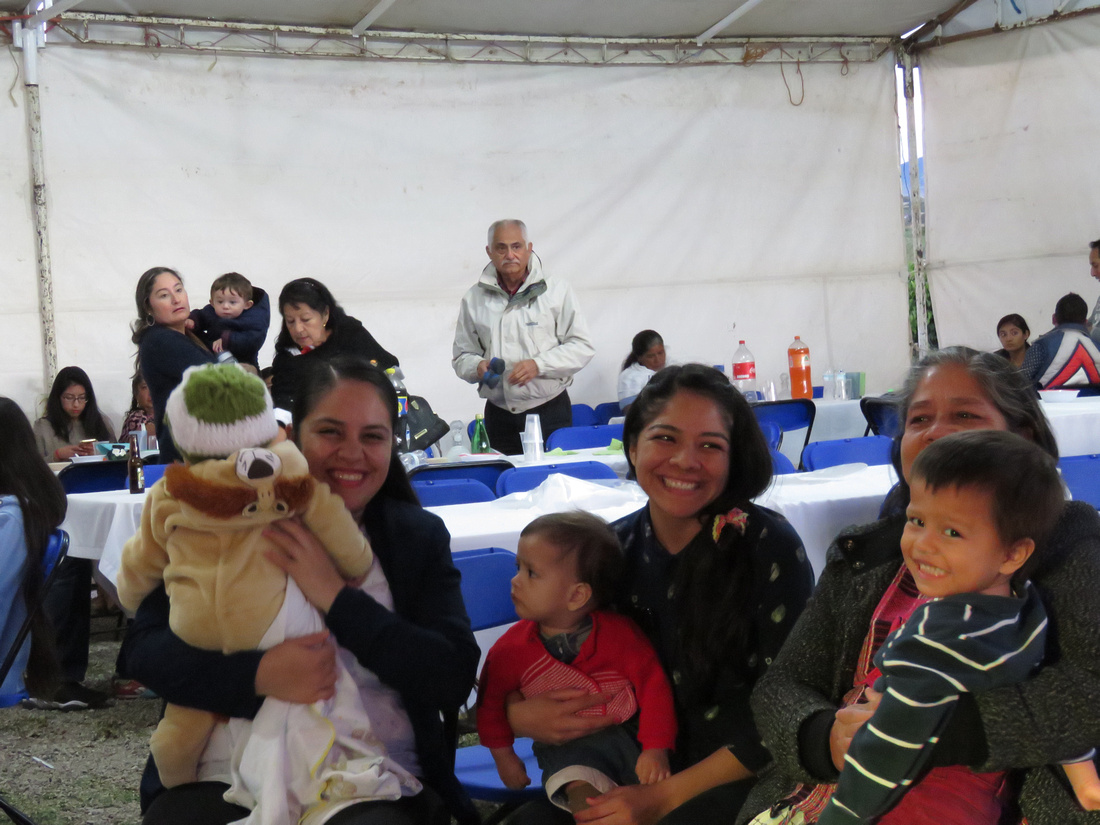
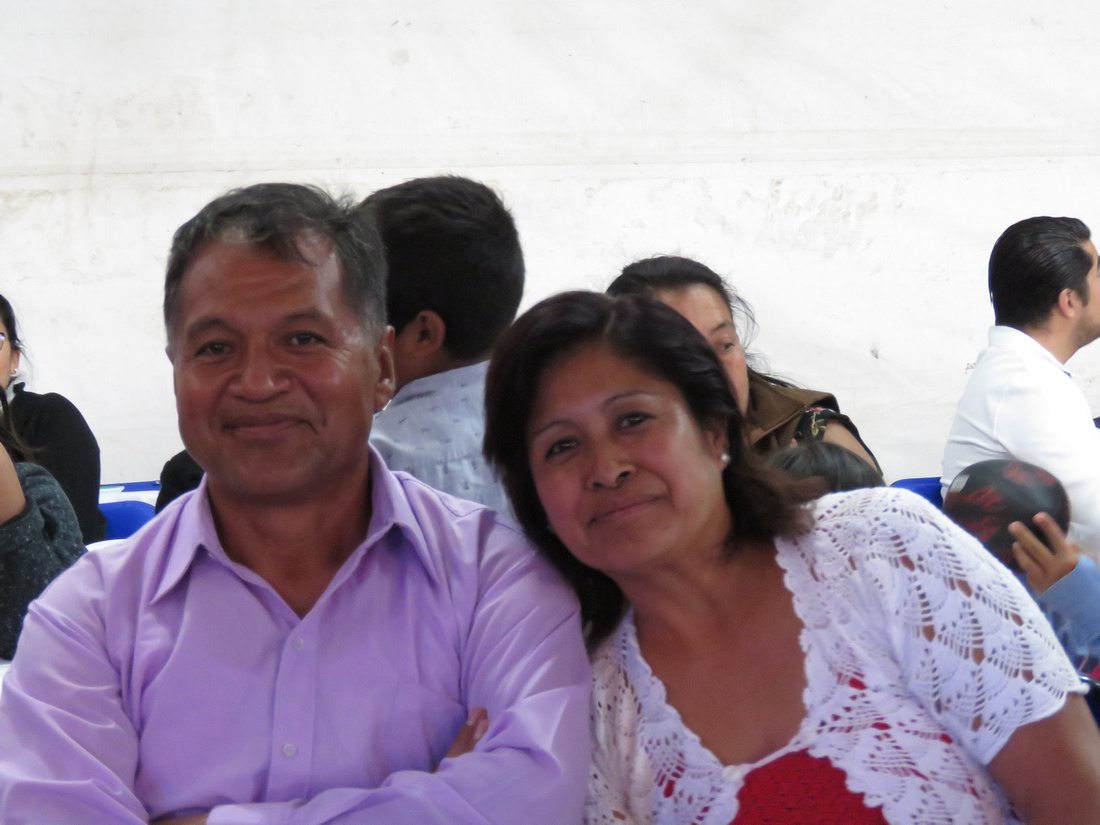
We became friends with these men through Felipe before we moved down. Right after we moved in they all showed up and made tamales in front of the house.
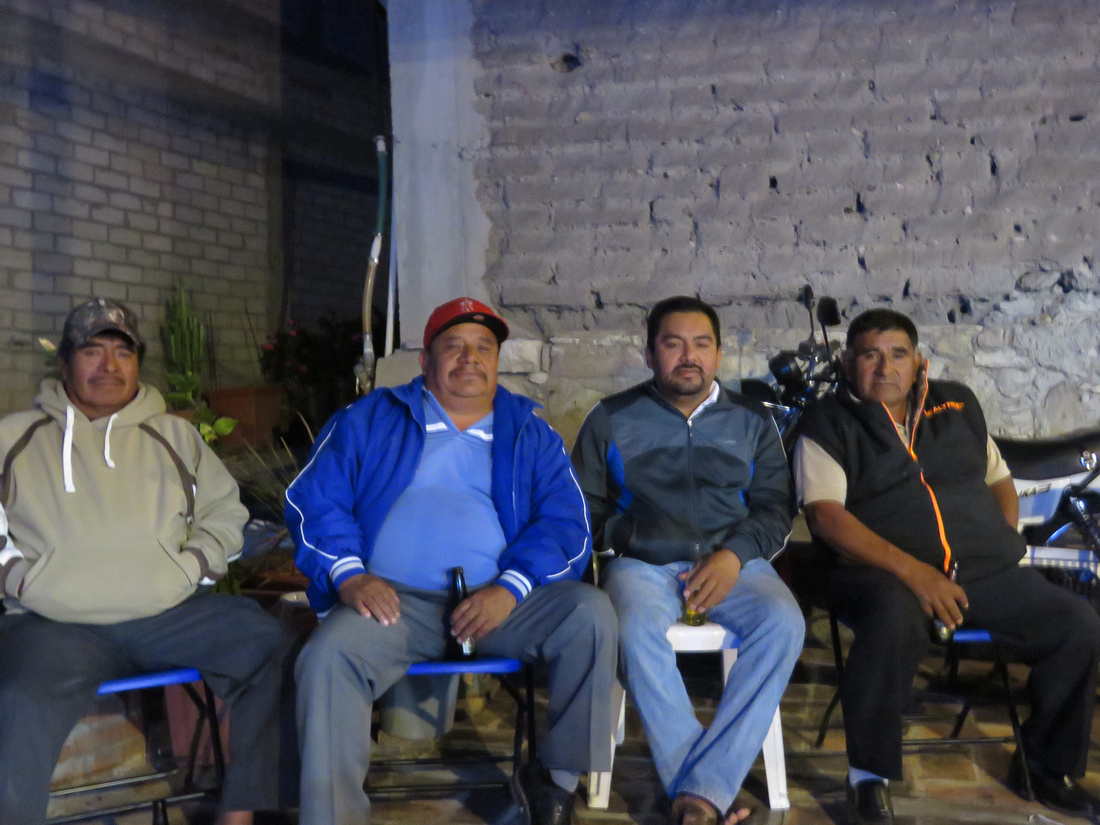
Rodolfo works for the electric company and his wife, Holga, is a high-quality seamstress.
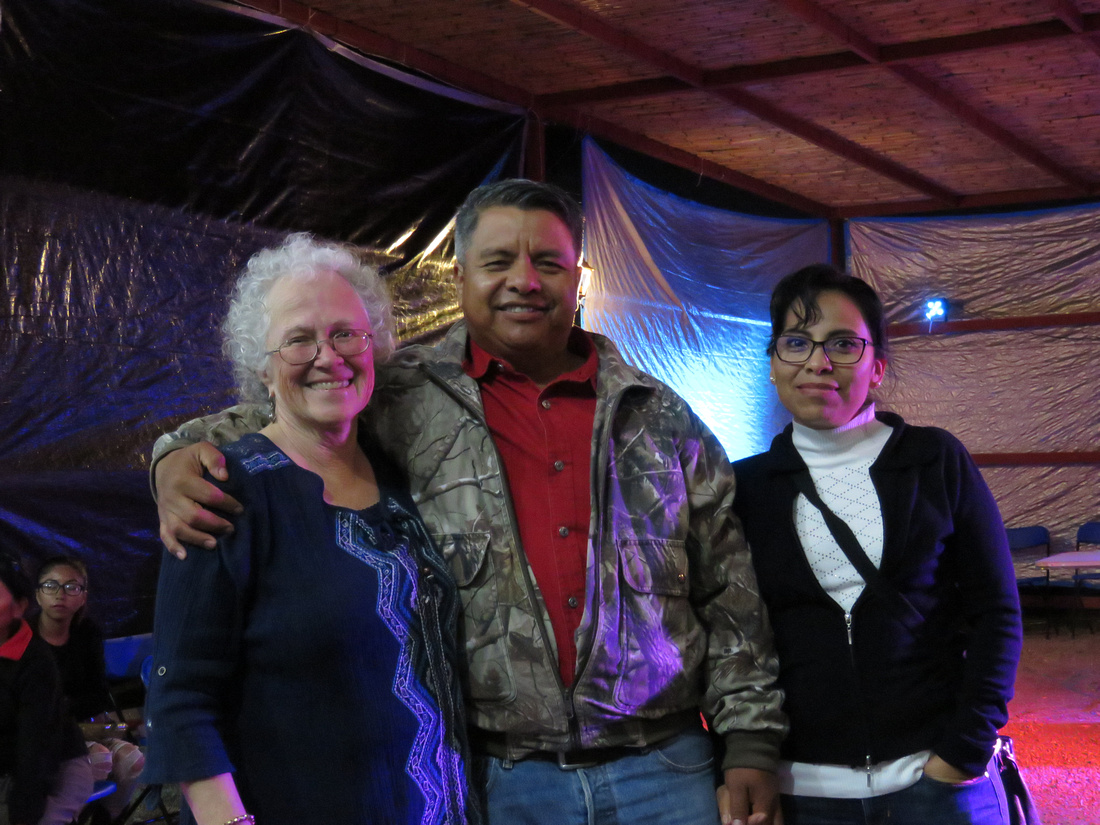
We met Lidio back in '94 when he was just a kid; we have become good friends. He is one of the few Christians here in the valley.
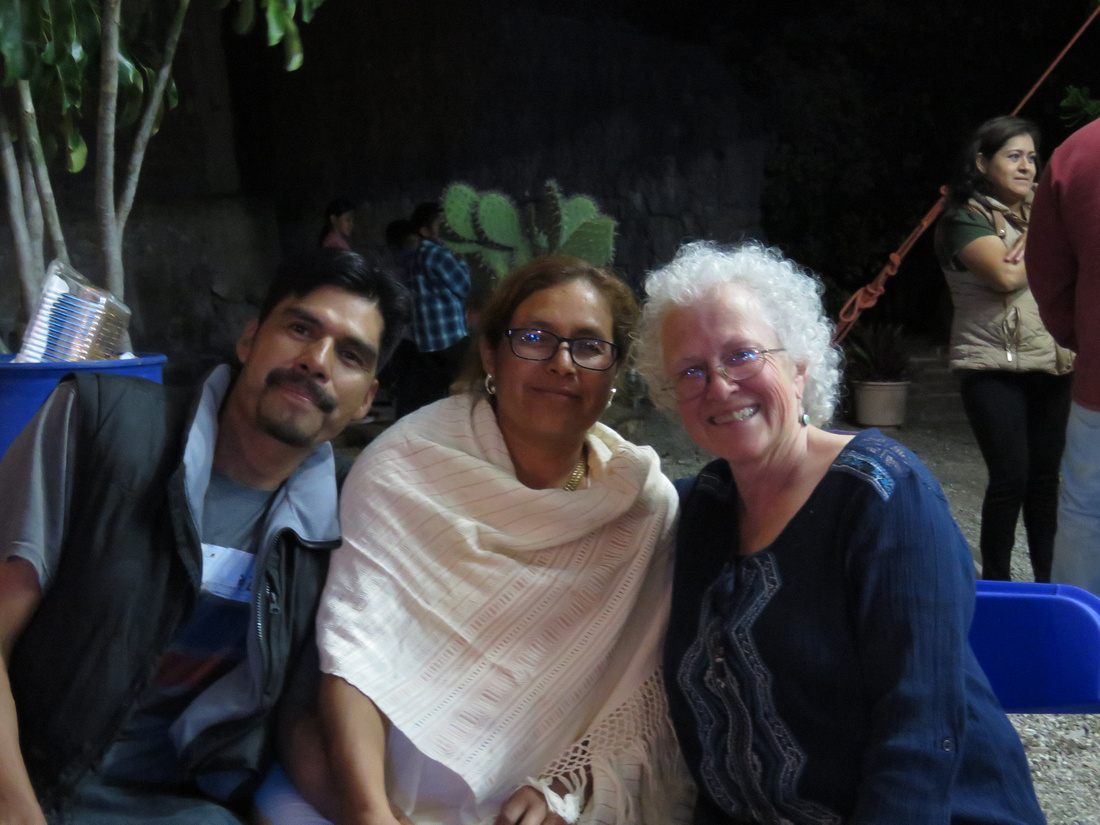
Jose delivers propane to our house. He is a wonderful gentleman

This gentleman came with his daughter. You can see his personality in the photo.

The gentleman on the left is our auto mechanic. The young man and young woman (Armando's daughter) are both studying Linguistics in Oaxaca. We are going to spend Christmas with them. Ricardo, the young man, plays guitar to American music.
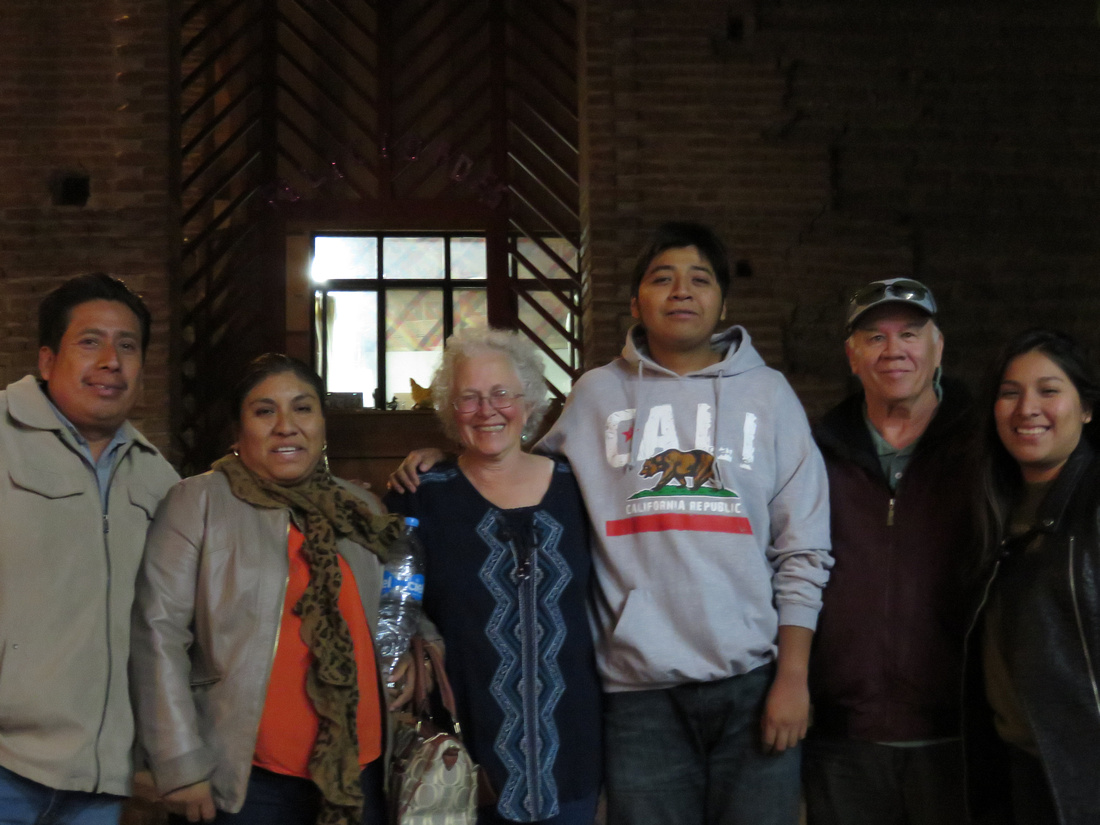
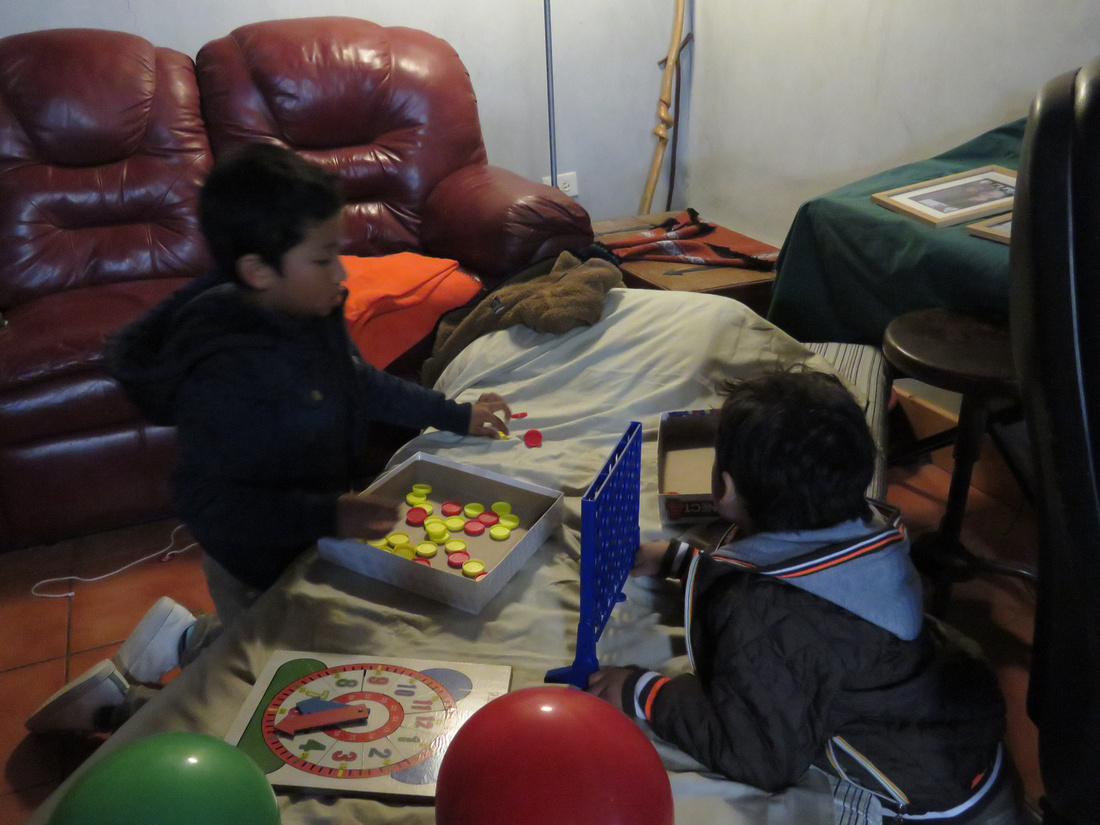
The husband of this woman owns a nuts and bolts store. They have been very good to us.
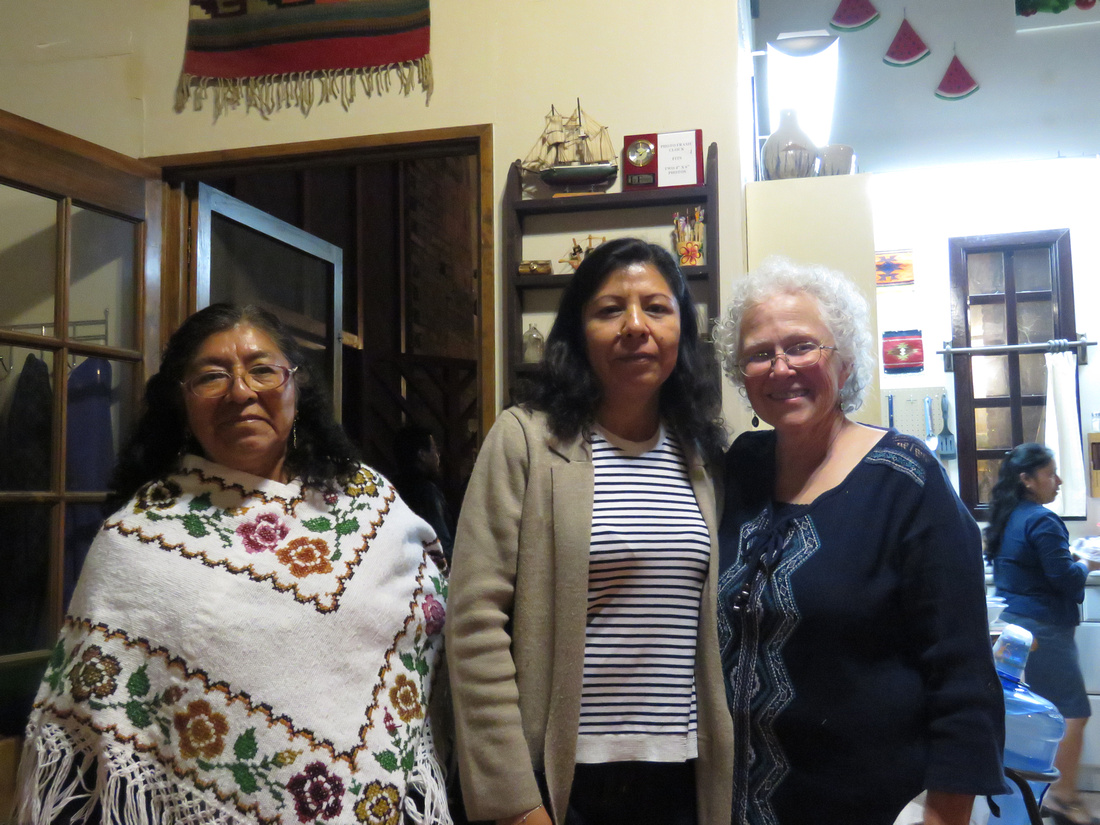

Lalo's family from Tanivet.
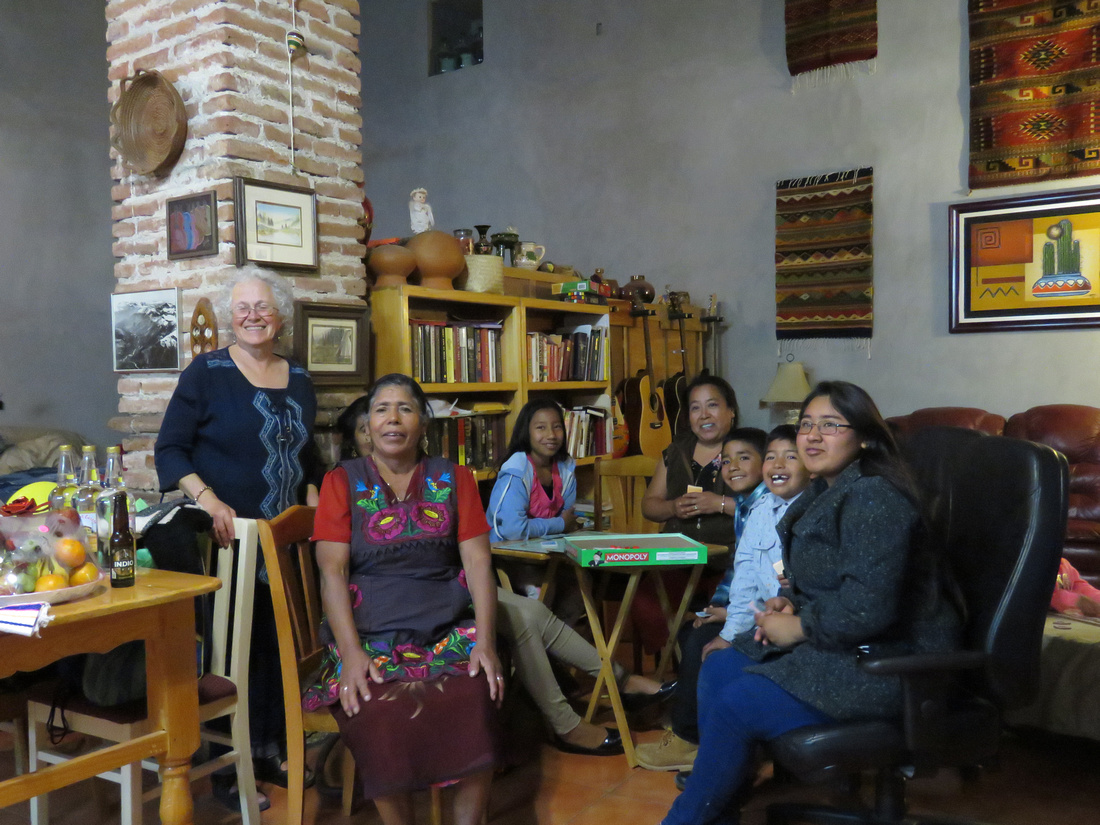
The other birthday girl. Yolanda.
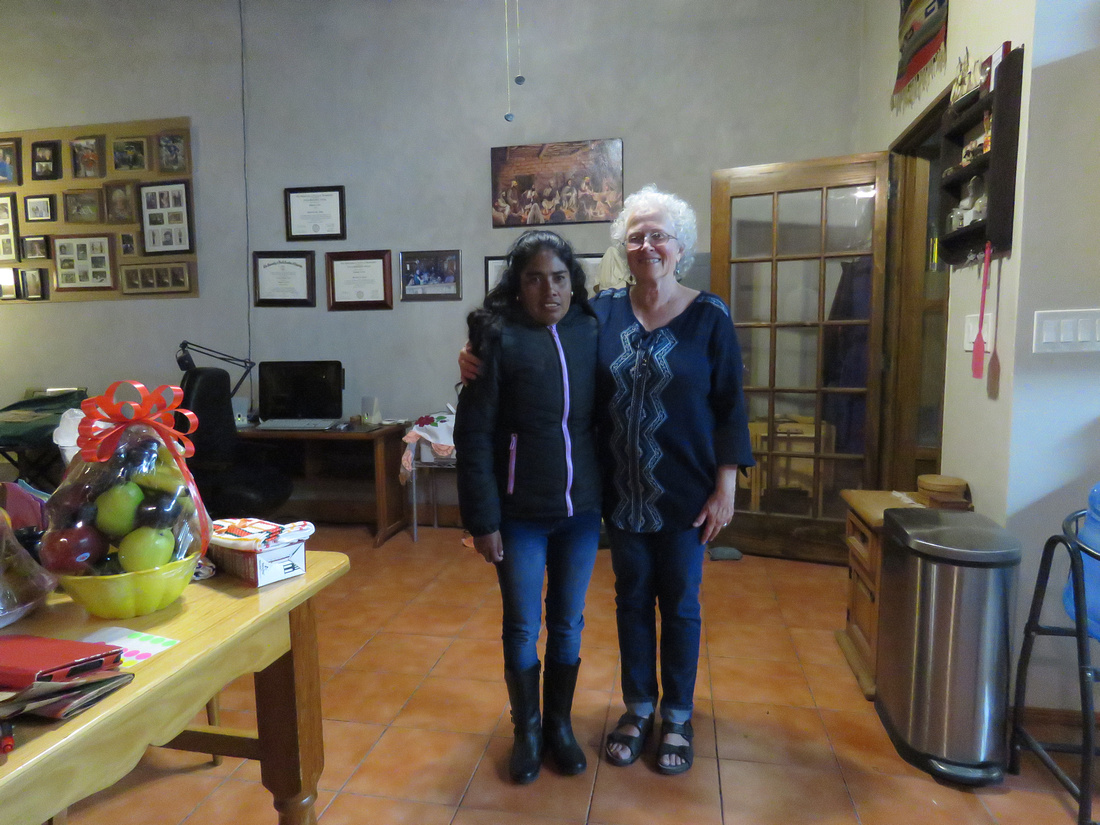
Beth and I are going on a month without listening to or reading American news. The change has been very dramatic. We both feel more peaceful inside.
It took a visit from Mickey, Yadira, and Emily, to motivate me to write another blog. It’s been over a year. I’d started several, but because of the elections, I’d always end up addressing political issues then reading back, being uncomfortable with what I’d written, and deleting everything.
I'd also developed cataracts in both eyes which made it difficult to read and write. I've since had one eye operated on. The total cost which included a pre-consultation, a blood test, an examination by a general practitioner, the operation, and two follow up consultations was five hundred and fifty dollars. With the new lens I can actually see better that before the operation.
Since our last blog, we had a carport made to keep the truck out of the sun. We don’t actually have that many days of rain here so the roof was made out of carrizo (a bamboo like material). Cleaning, cutting, and tying the carrizo was extremely labor intensive. I think they ended up cutting a couple thousand stalks, but only about half were usable. We received our new residency cards. They are good for three years after which we can apply for permanent residency.
Thank goodness I have a chop saw. People usually use a hacksaw to cut the carrizo which takes a long time. The three of us cut about fifteen hundred pieces in a few hours.
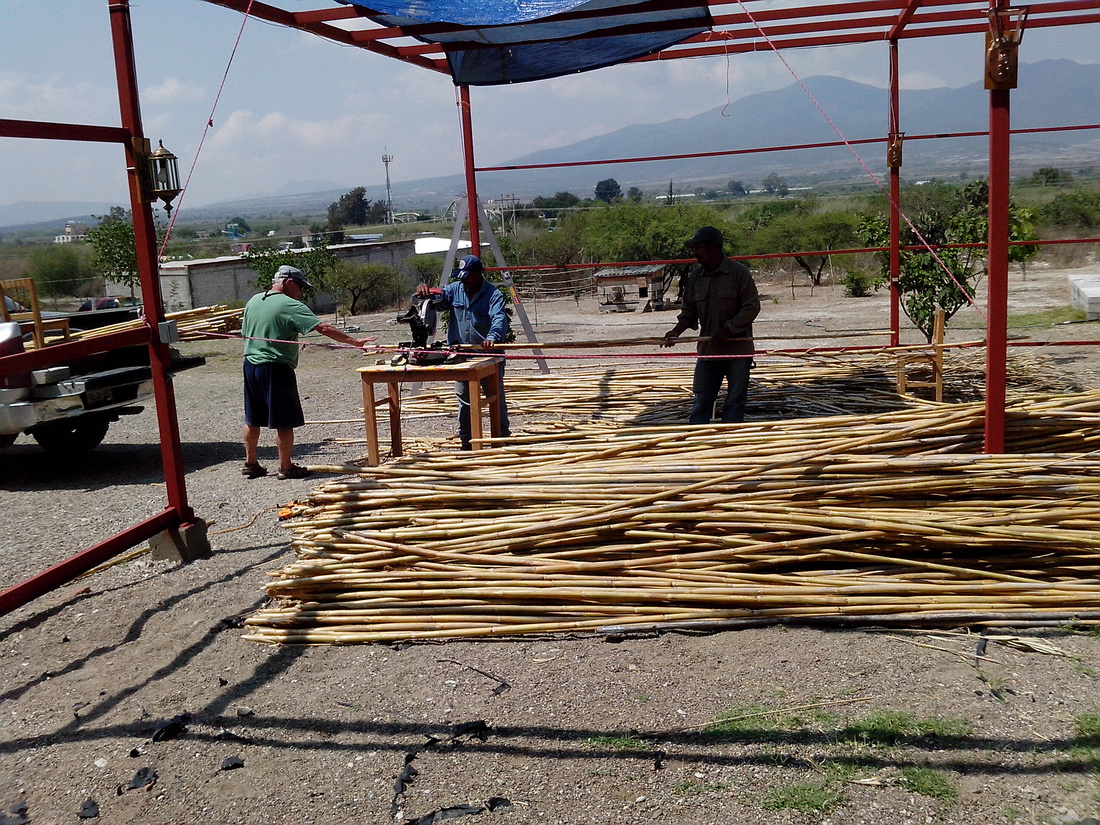
Even though there are gaps in between the carrizo, it's nice and cool underneath.
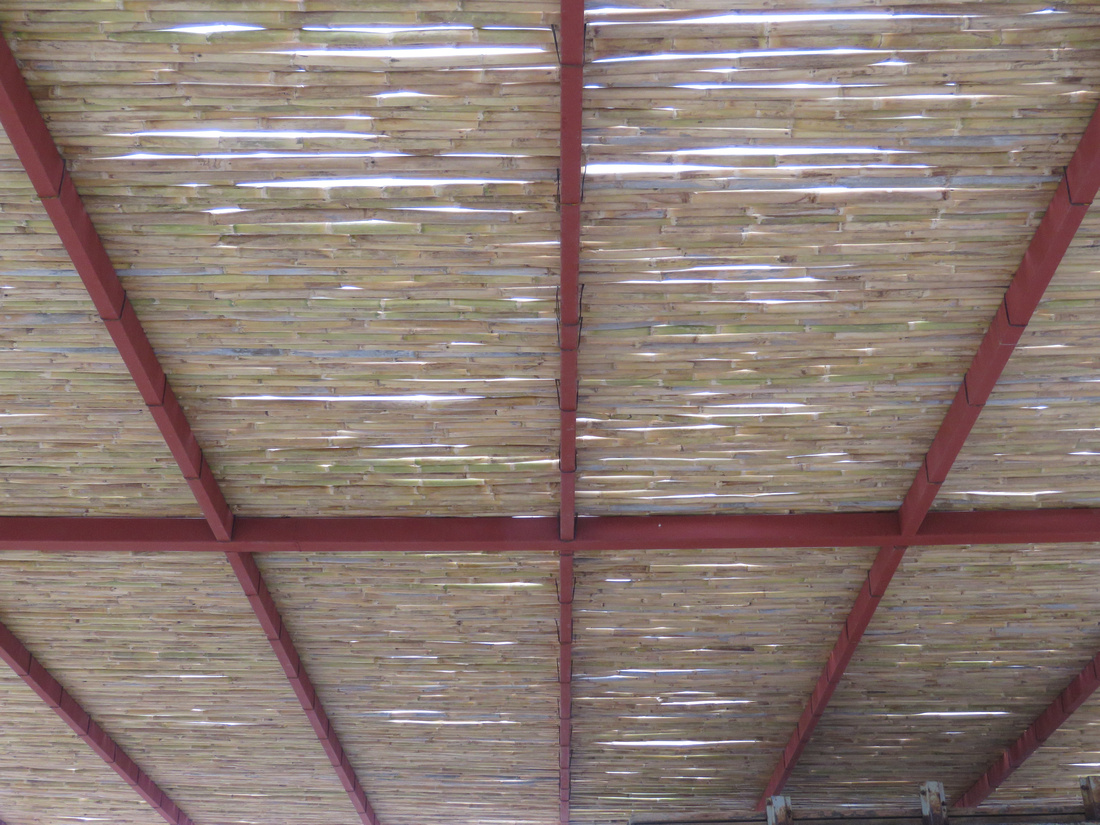
Mickey brought his family down for two weeks. Beth and I attended Emily’s birth last June. Seeing her again as a one year old was very special. Mickey and Yadi are wonderful parents. Emily is as sharp as a tack and very inquisitive.
We drove to the mountains one day. The roads are very similar to logging roads.
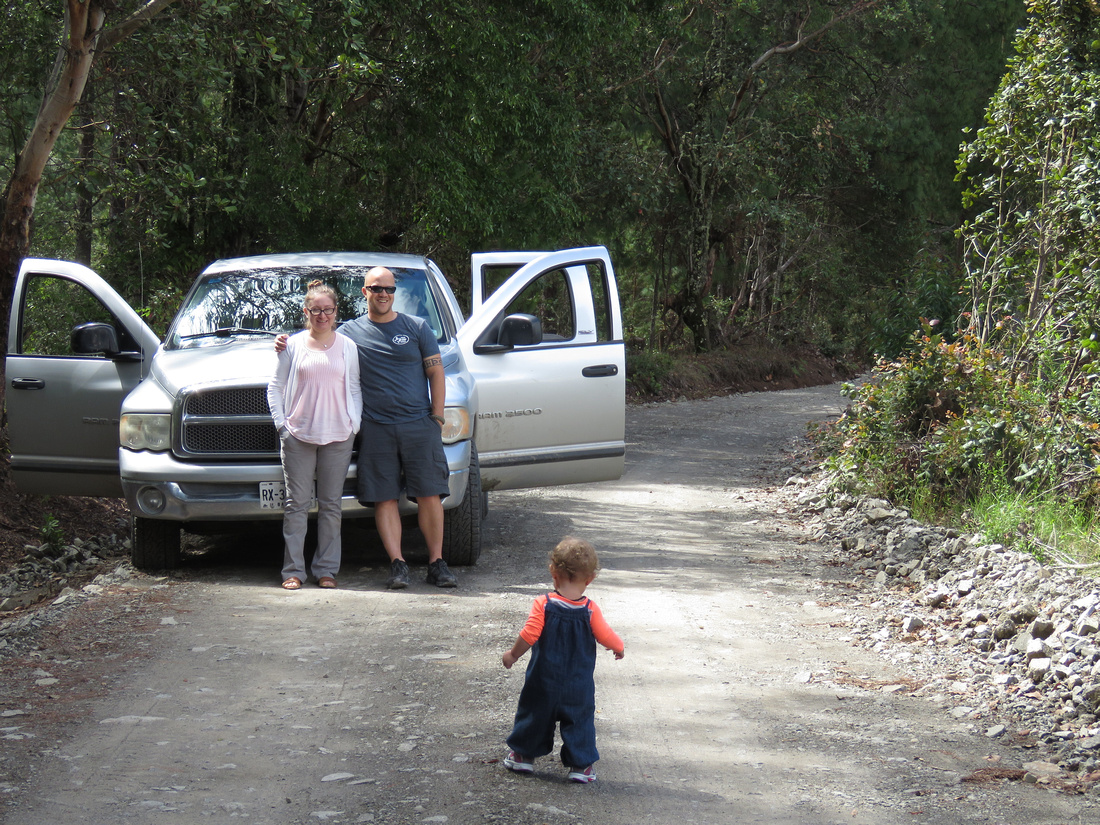
This store is in Cuajimaloyas. It was very similar to an old general store in the States. I took a taxi home so Mickey and Yadi could stay the night in one of the cabins.

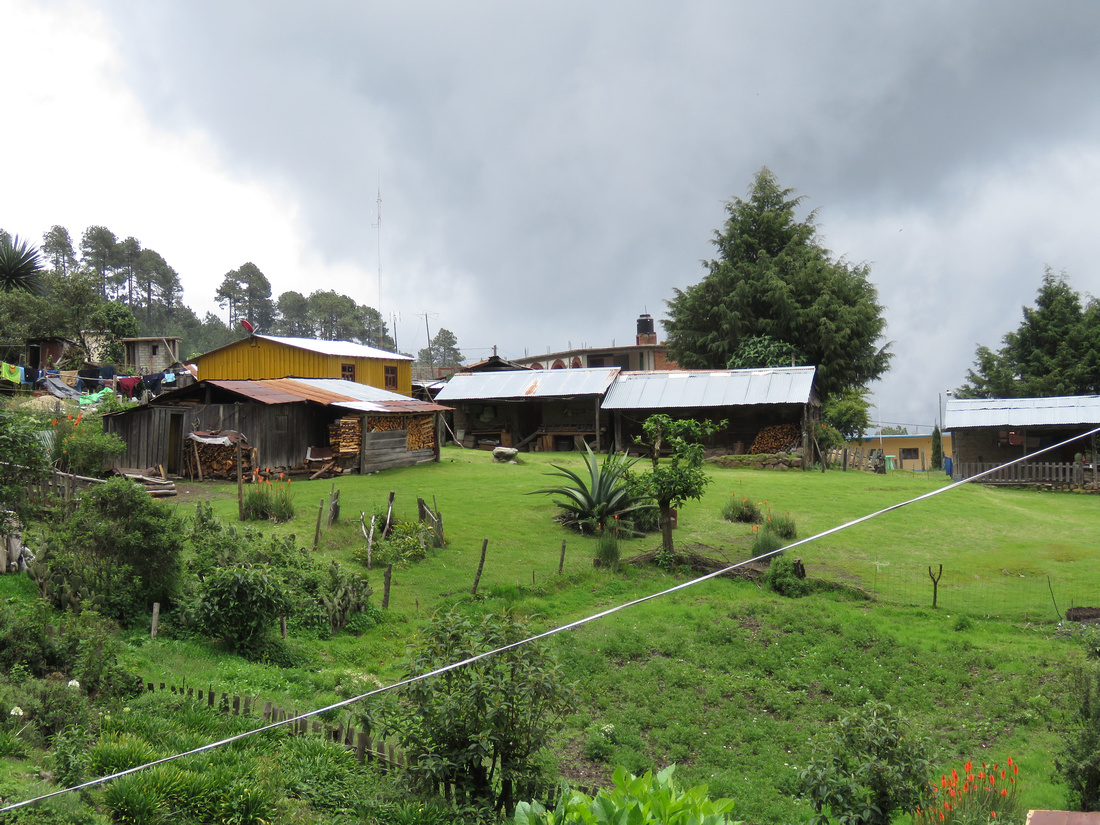

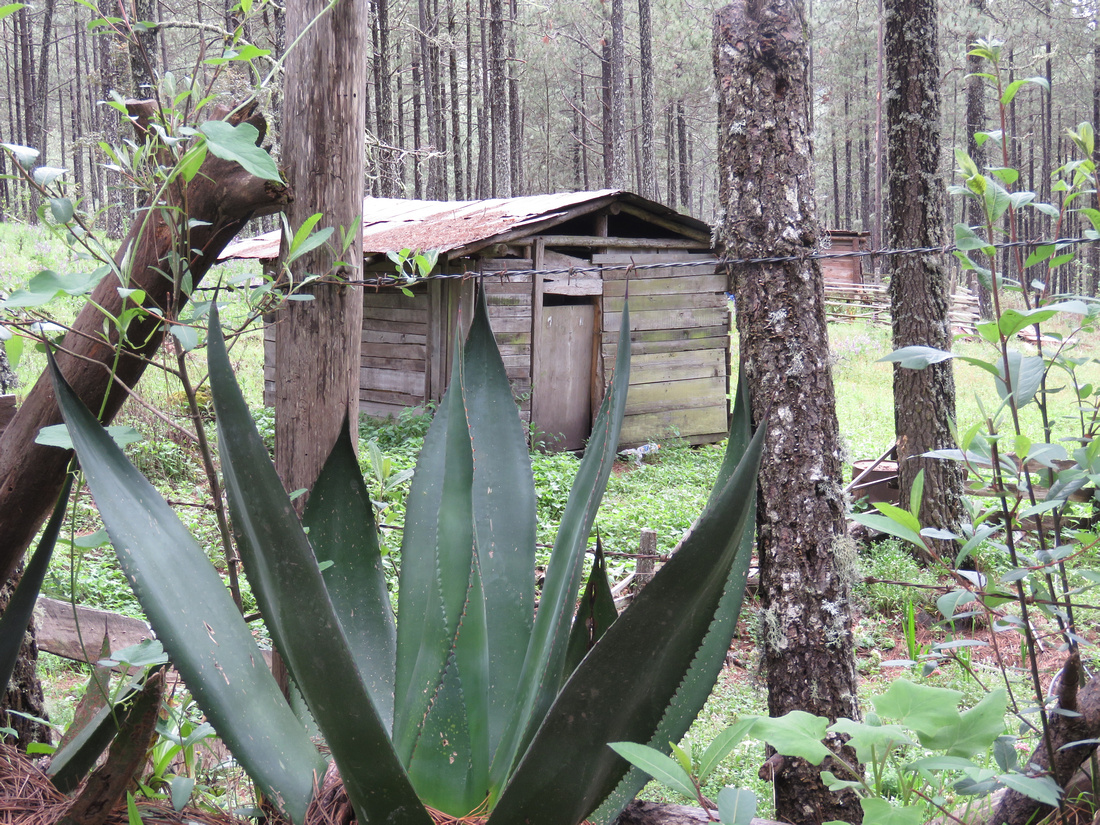
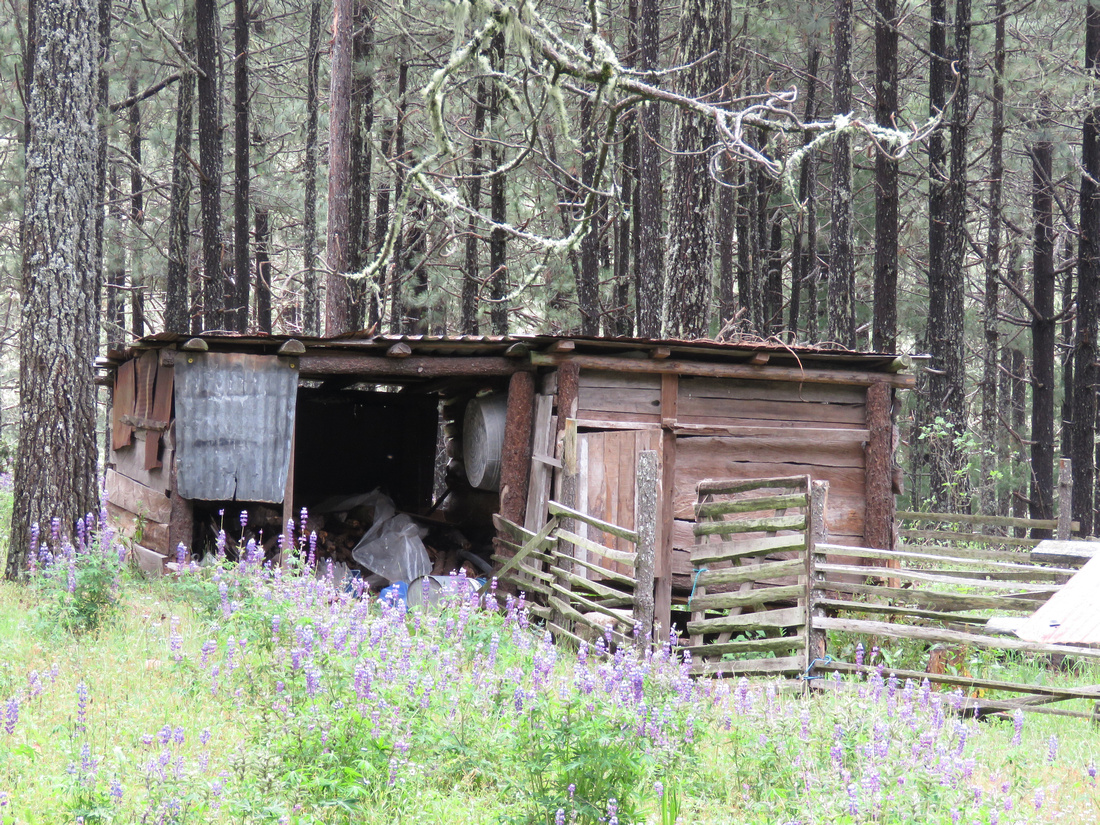

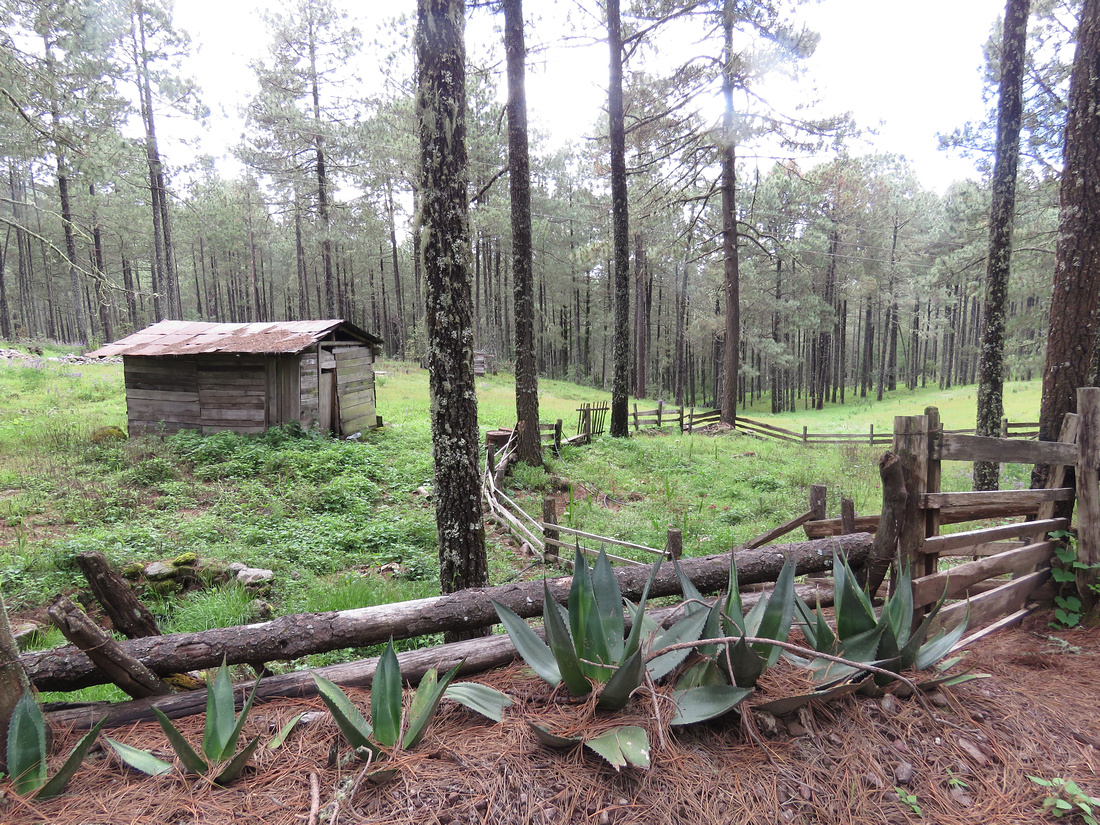

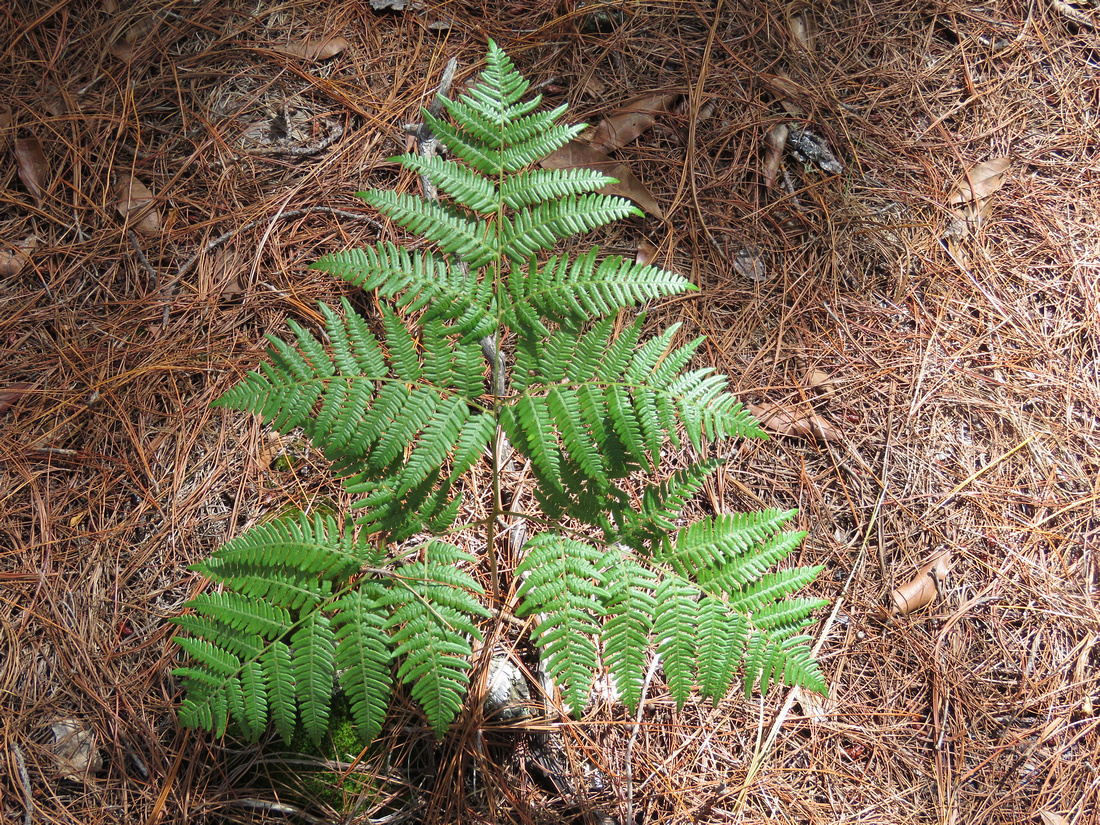
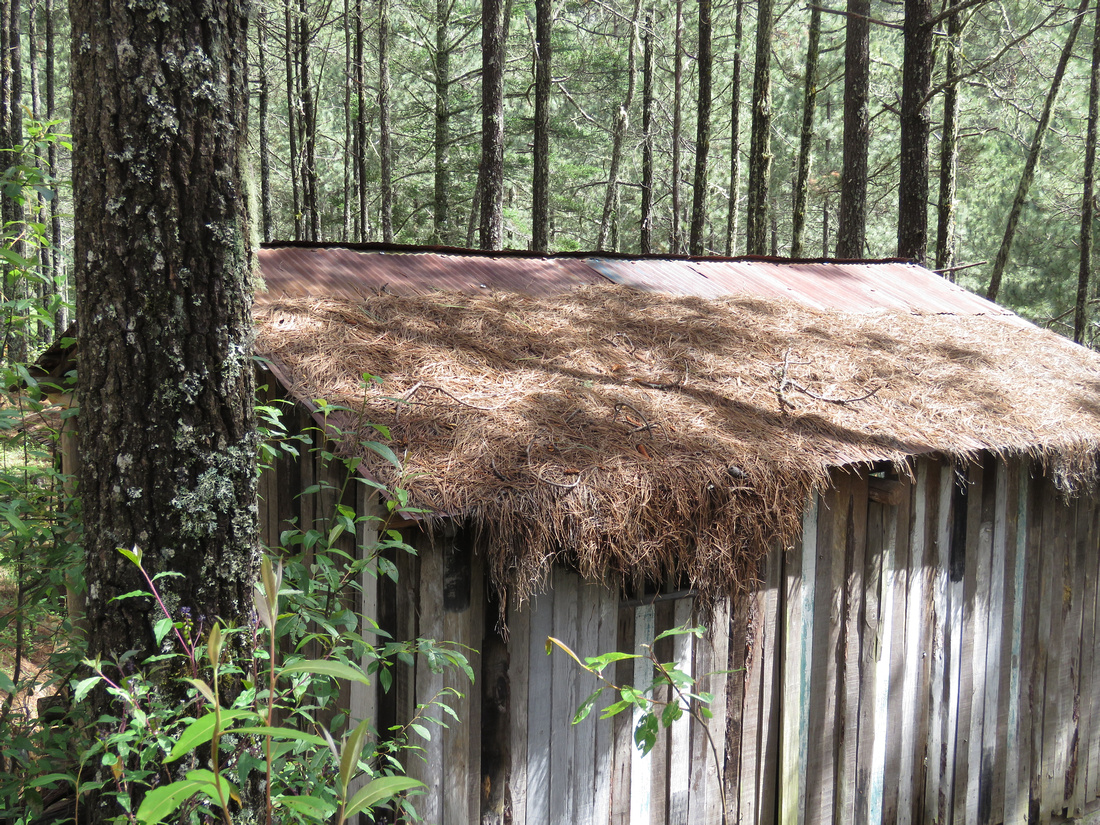 It was a surprise seeing this home in Plano Grande. I thought the owners were Americans but they were Mexican.
It was a surprise seeing this home in Plano Grande. I thought the owners were Americans but they were Mexican.
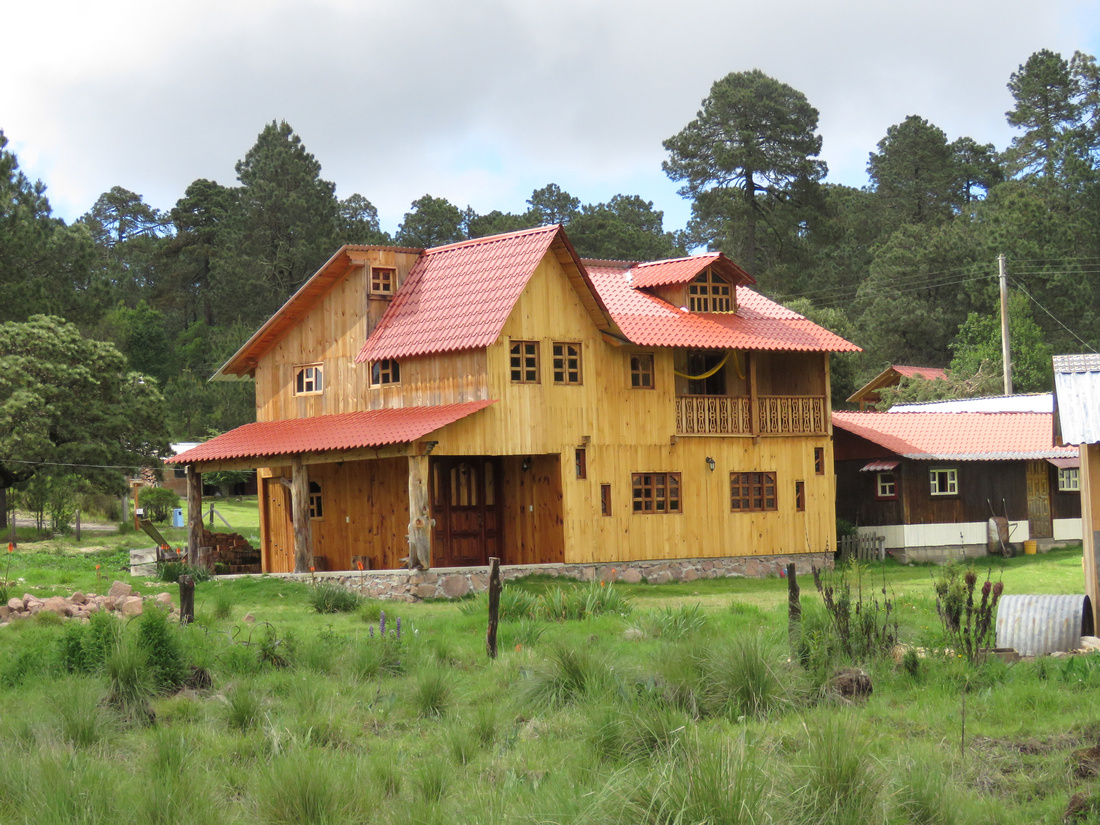
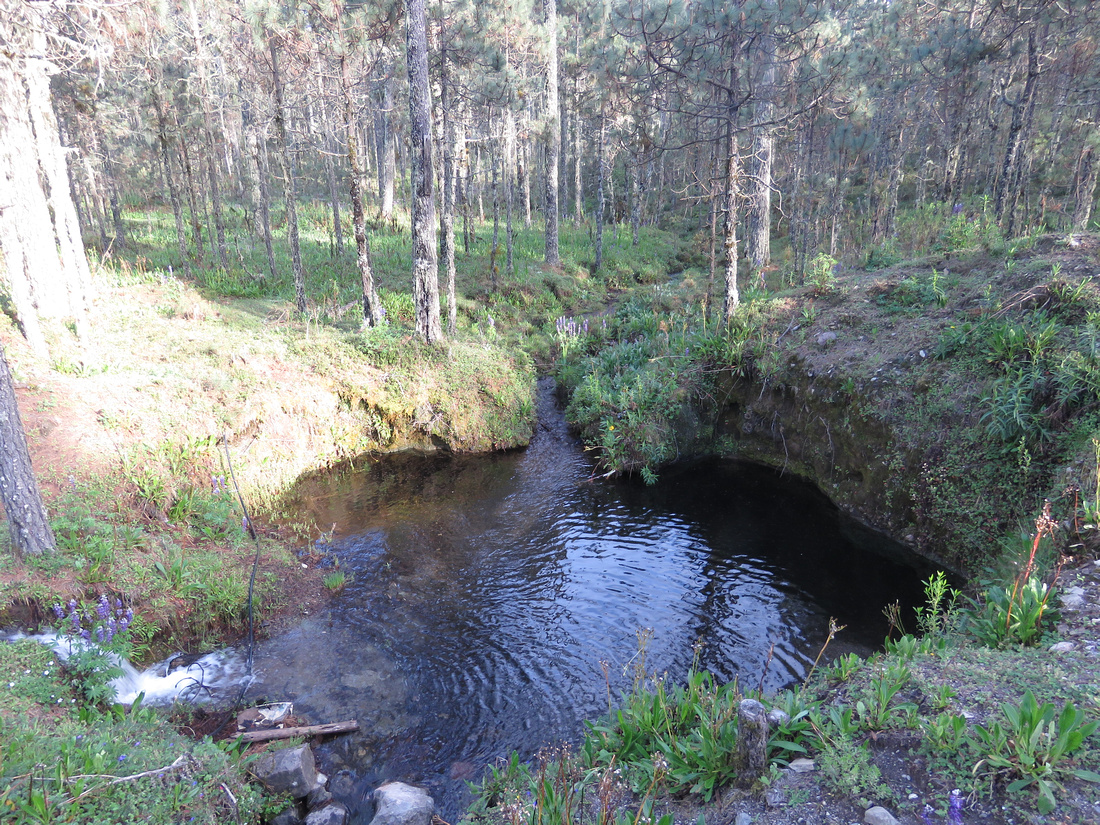
Gotta include some photos of Emily
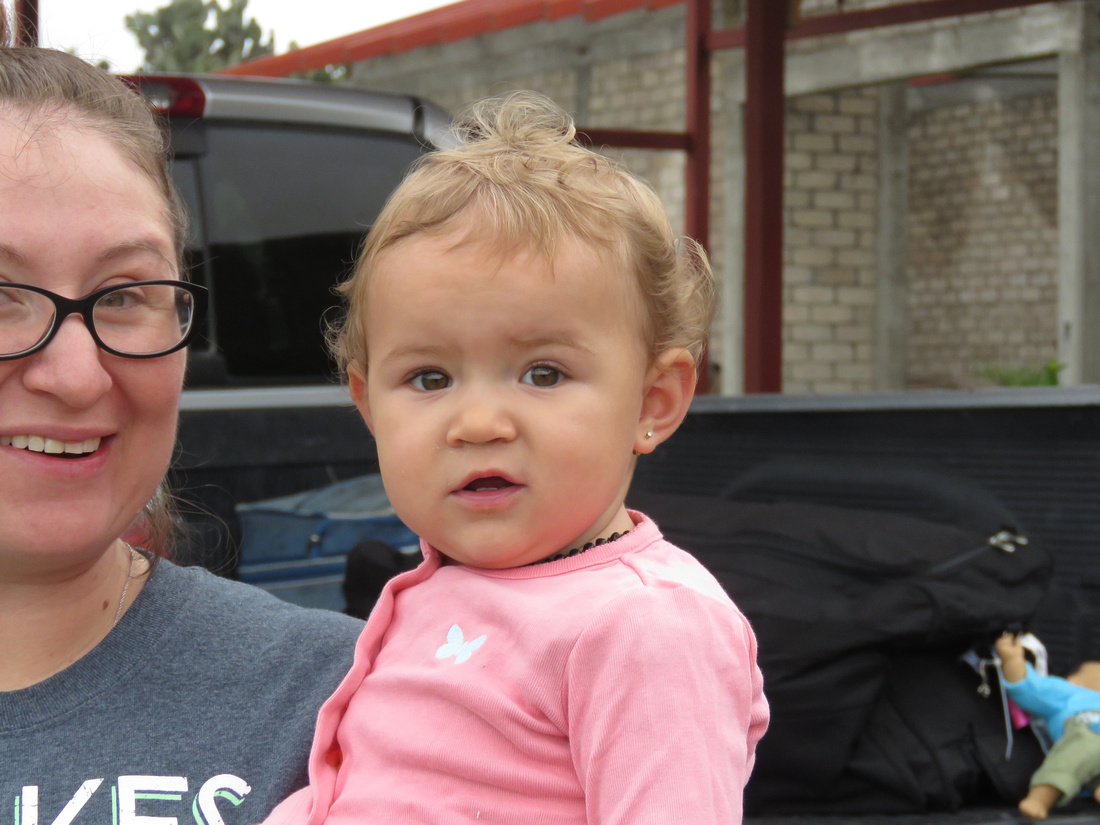



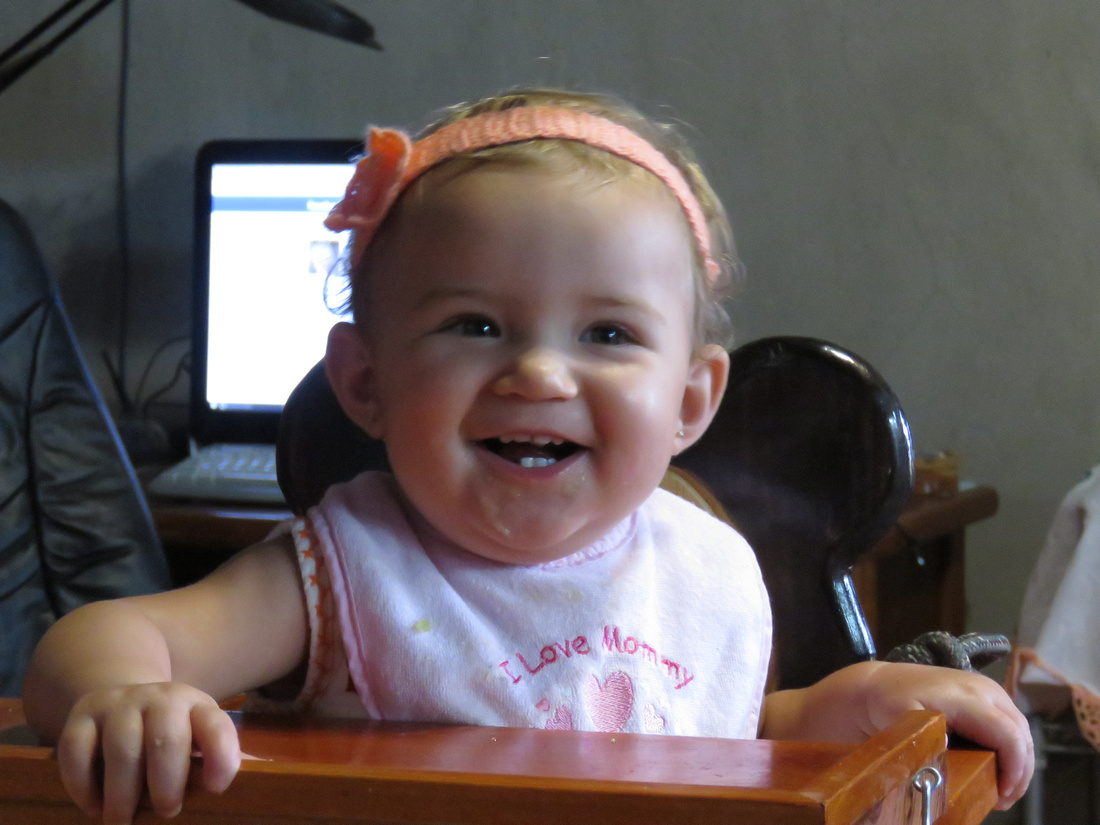
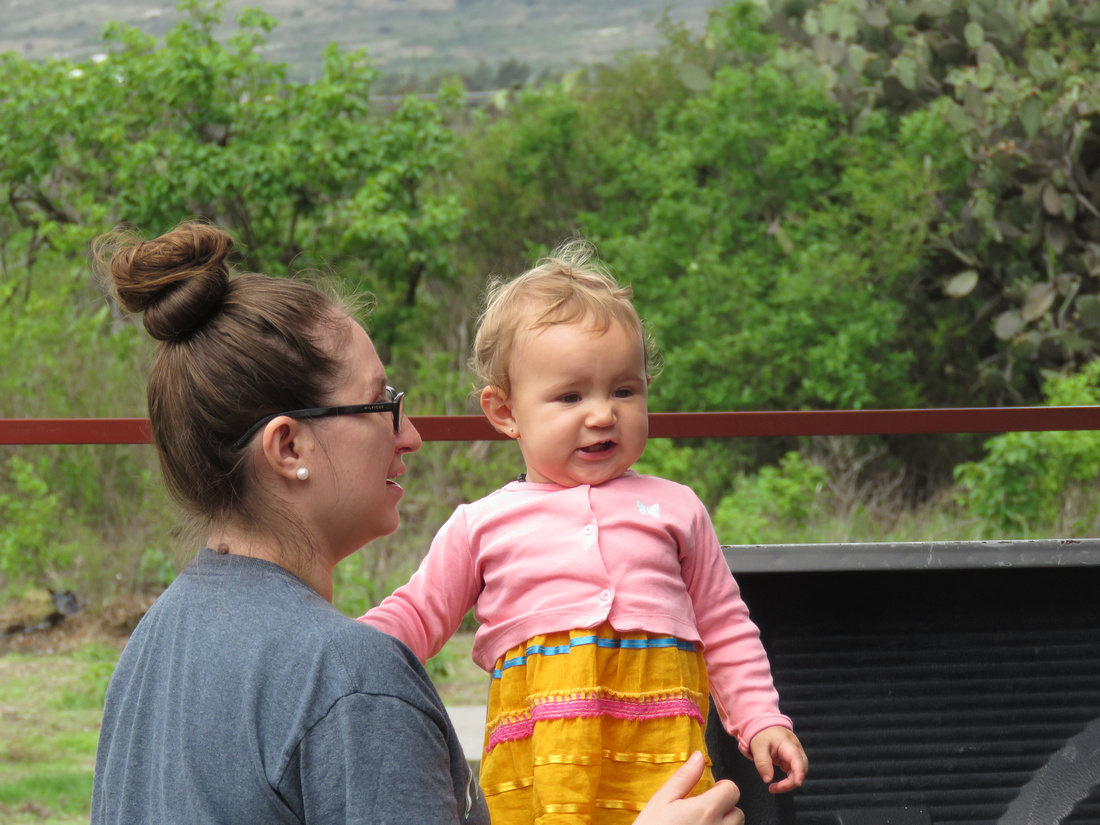
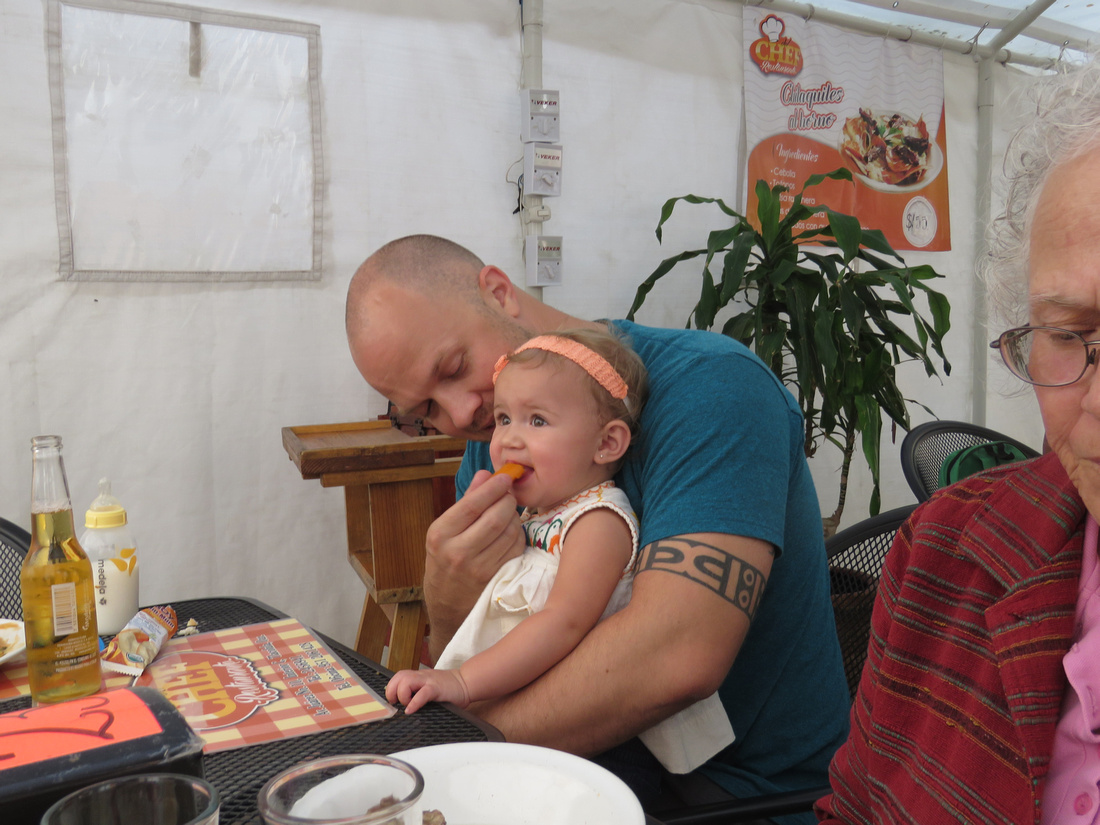
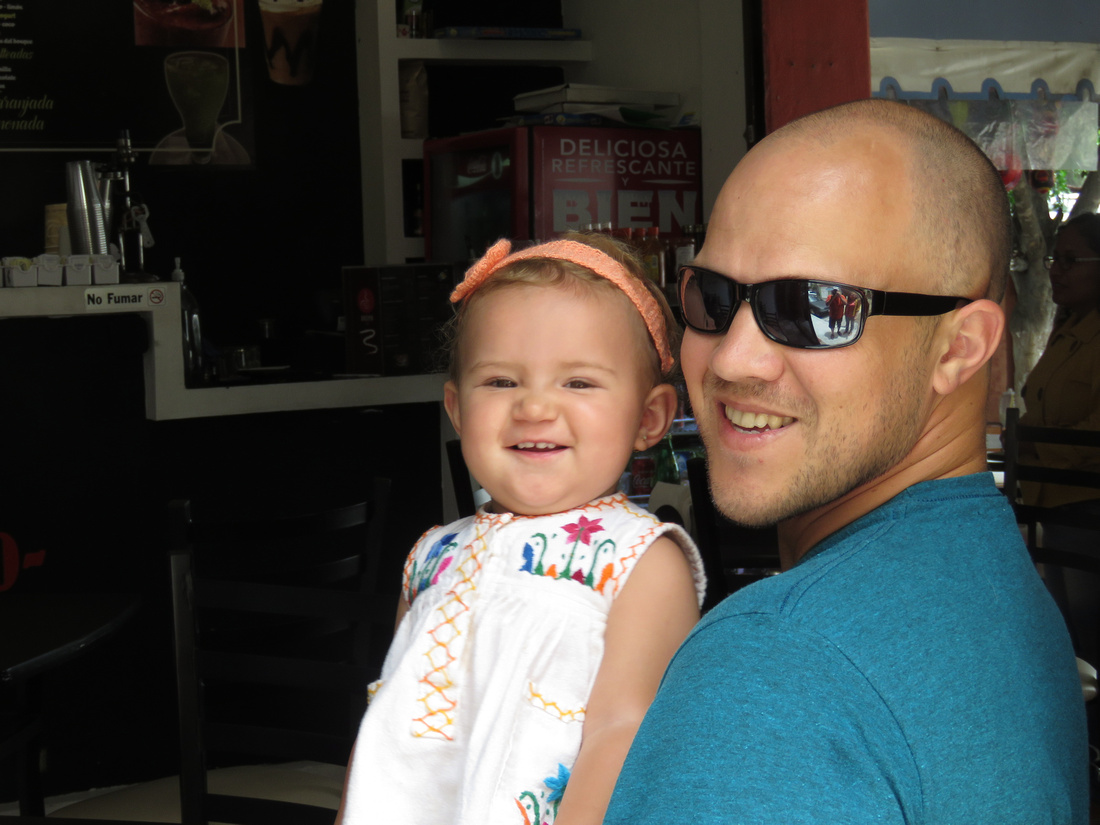
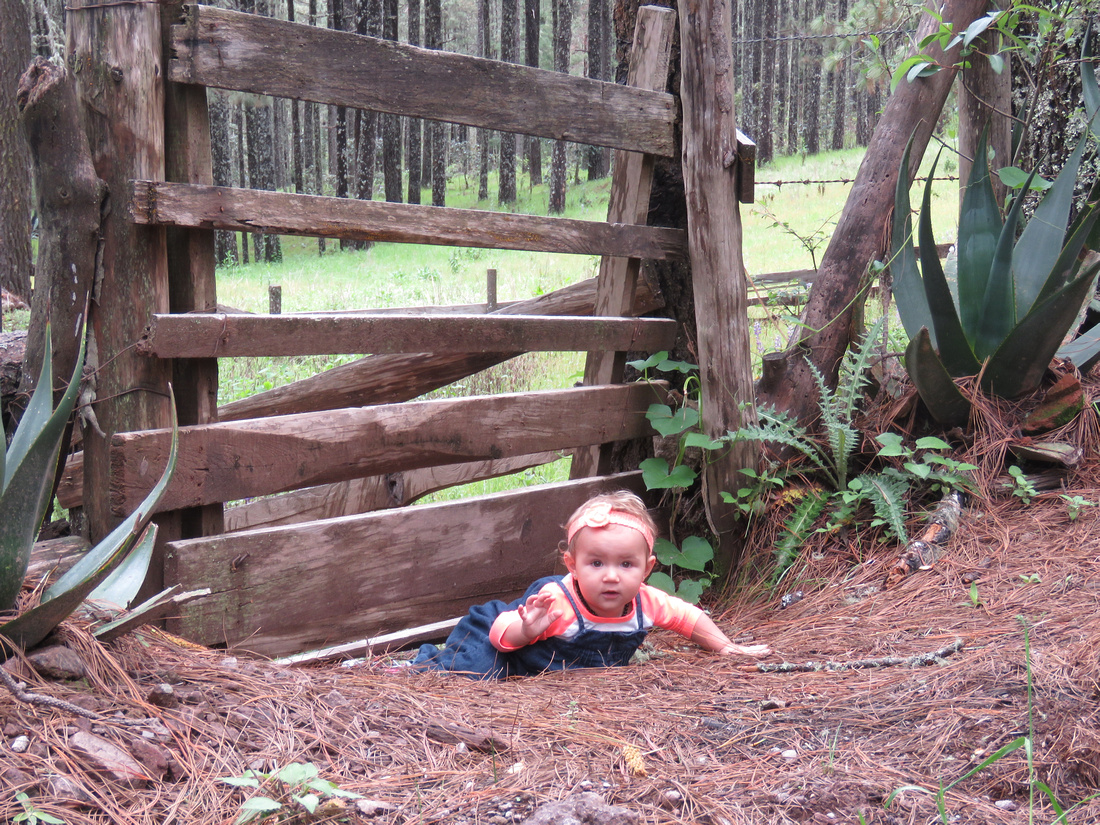
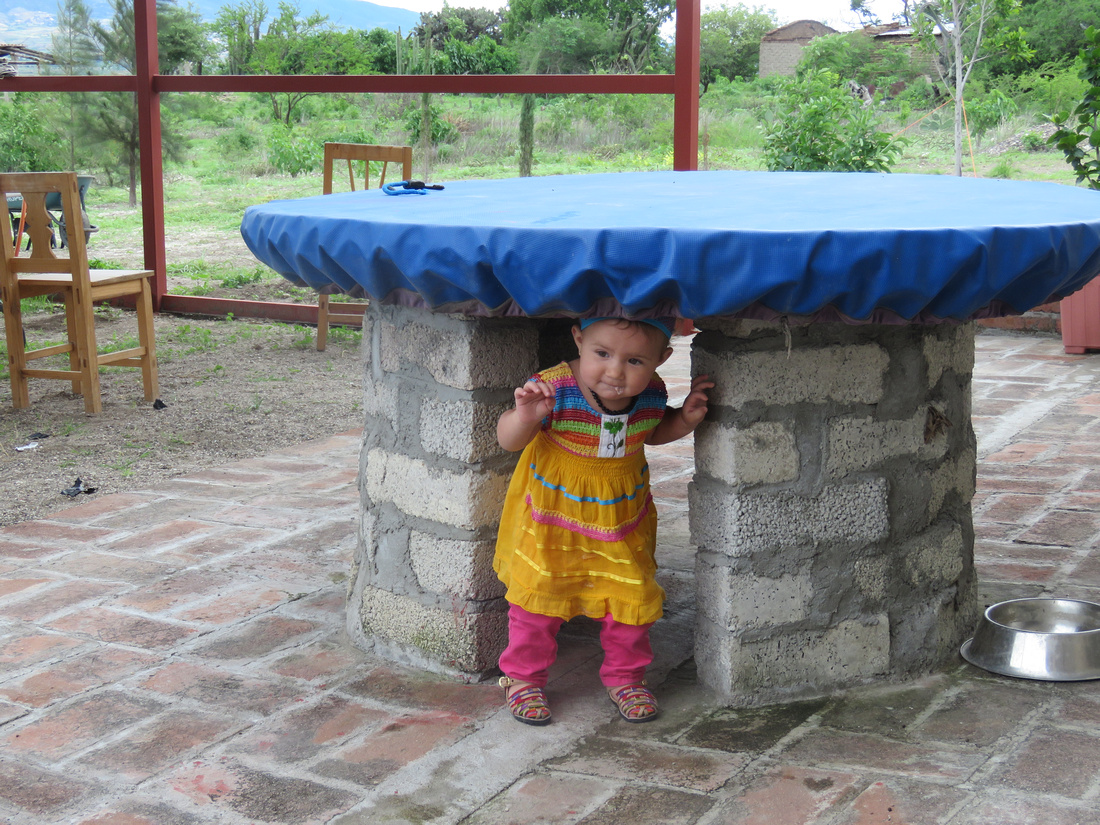

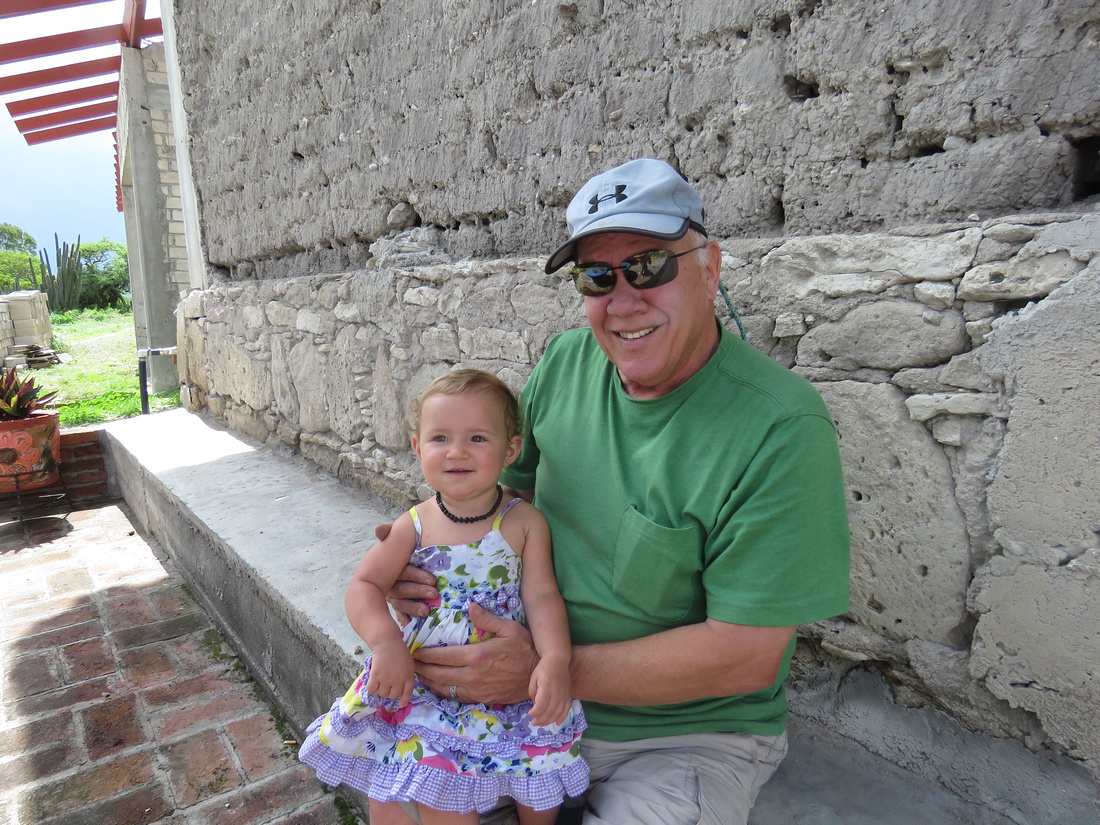
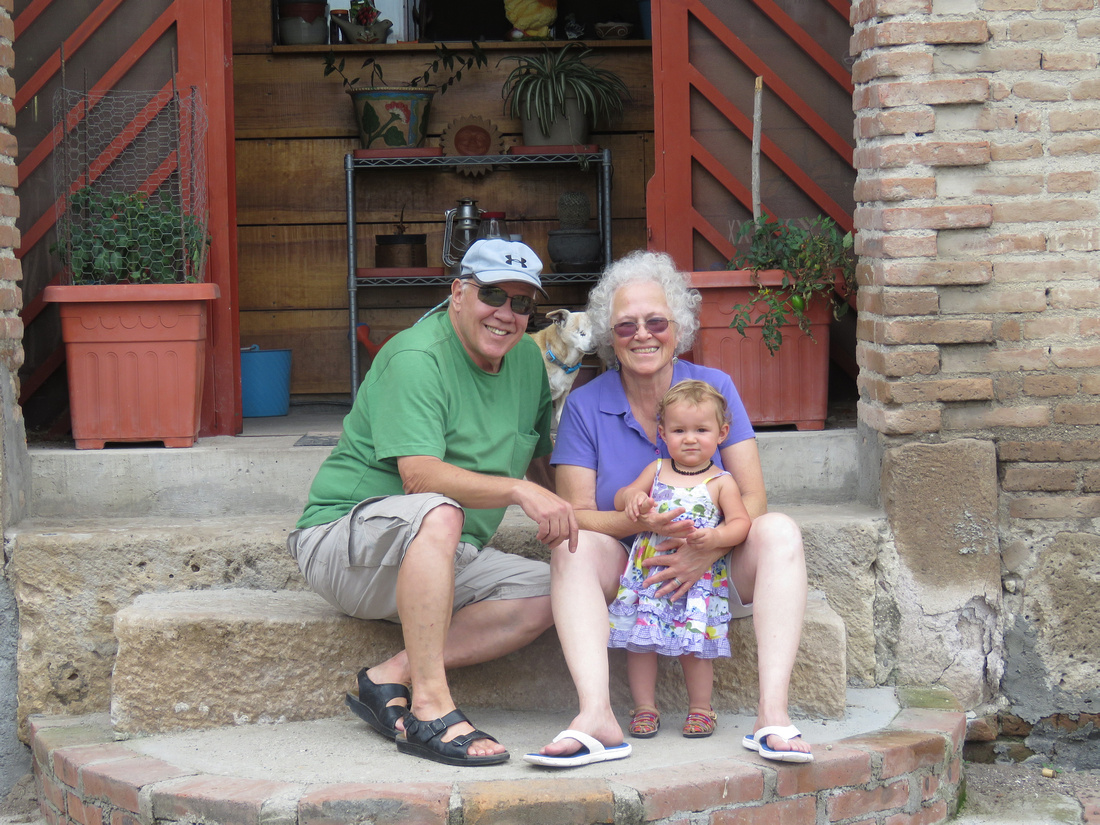
Our dog Coby is huge but very gentile. Can't say the same for Scooter.


Mickey bought a motorcycle when he was here in 2014. We never really got it going, so before this visit I got it running: it’s a 150 so it can be driven on the highway. We had a lot of fun on it. I’m a little afraid of it, so I don’t know how much I’ll use it.
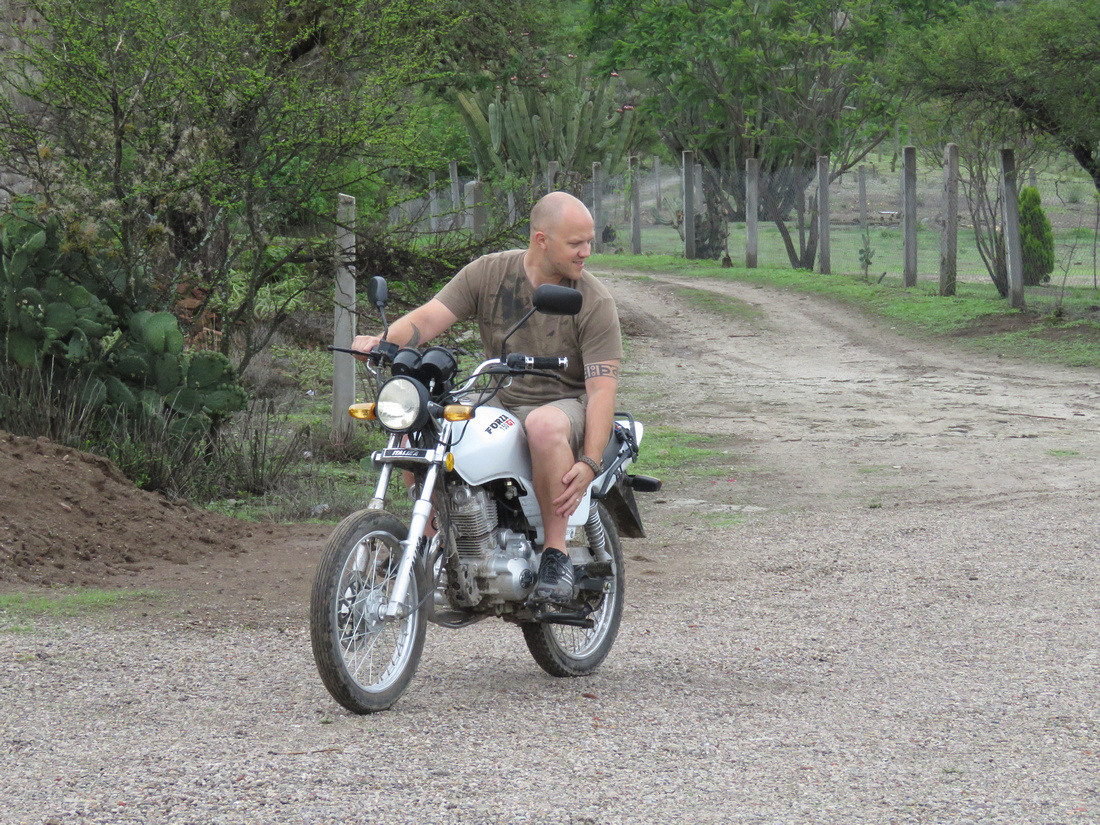
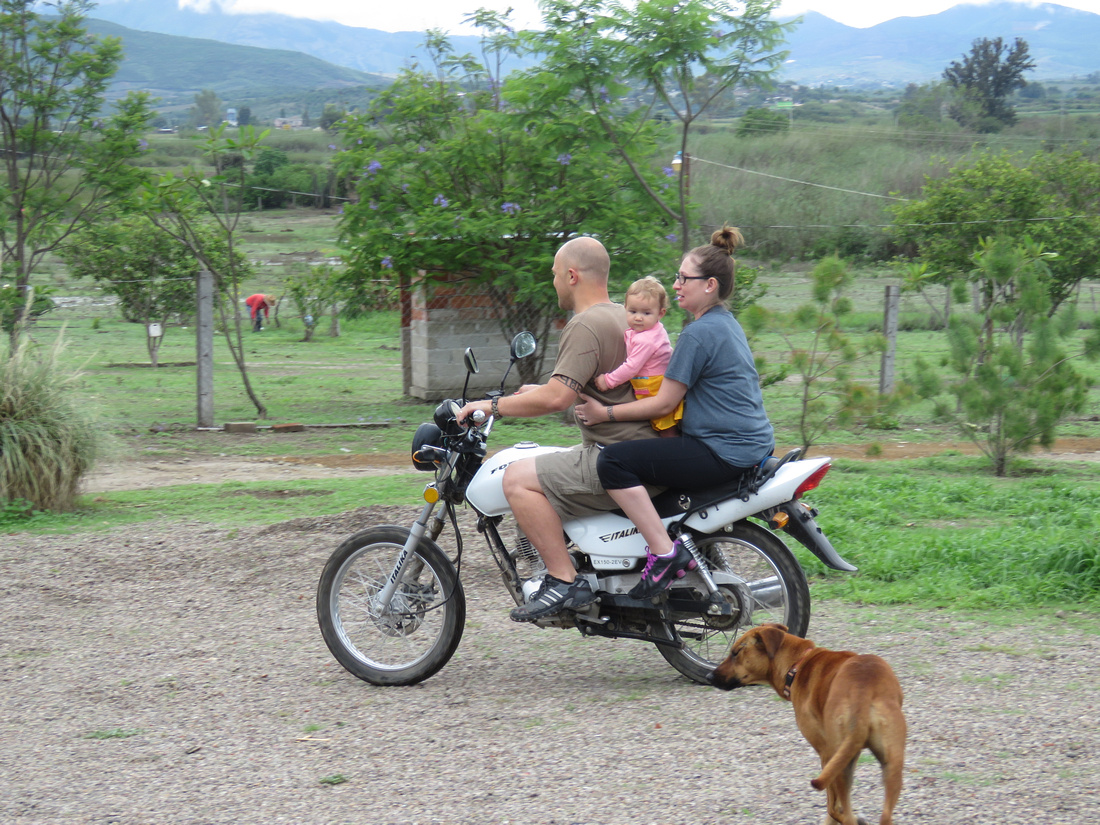
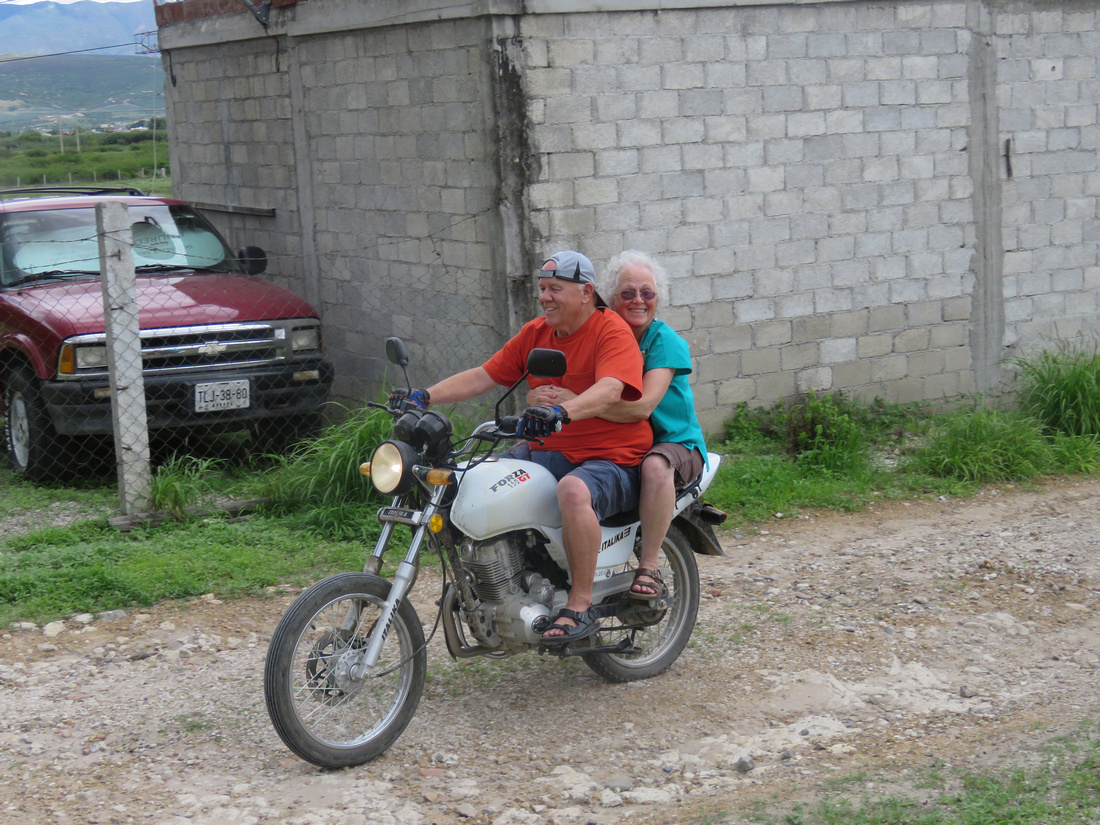
One week we had to take Gonzo (our rooster) to have his spurs cut down. He could hardly walk without cutting the insides of his legs. His spurs also cut into the backs of the hens while mating. He’s part fighting rooster which accounts for the large spurs.
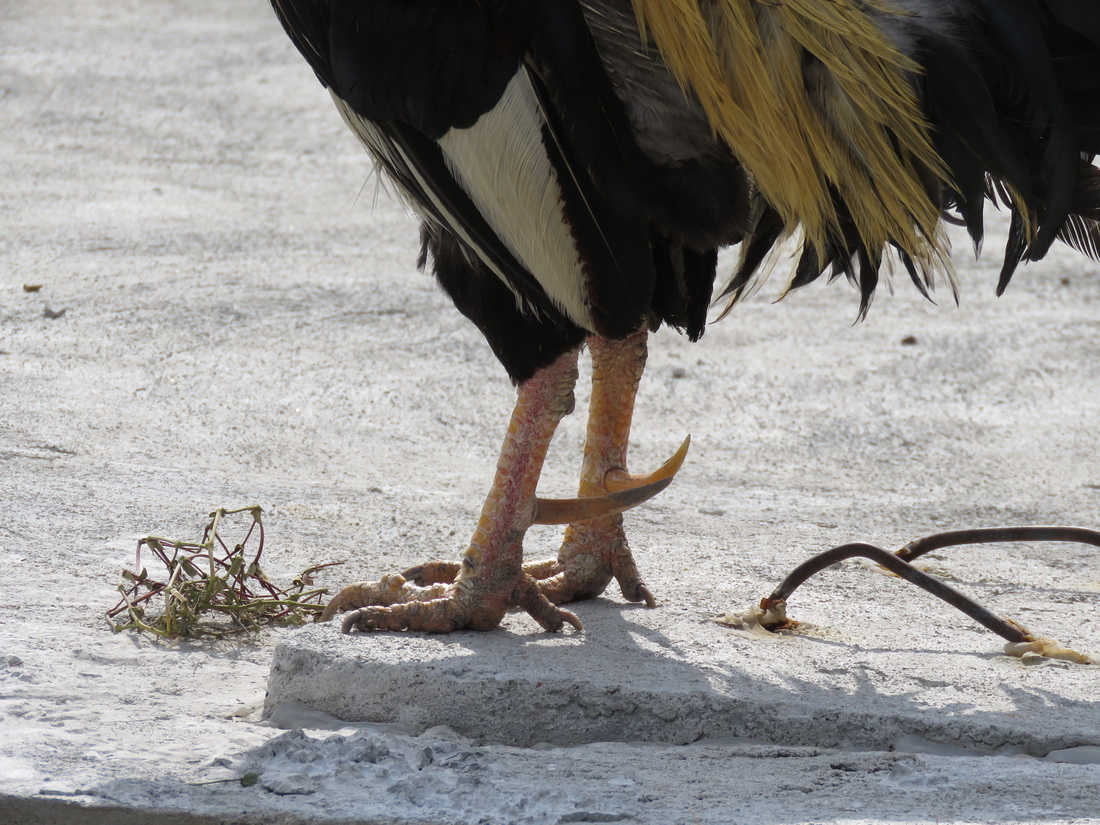
Cuajimaloyas is a little over an hour from our house. Mickey talked me into taking a ride on a zipline. The entire hike up was steep. I had to rest several times. Aside from not being in shape, I felt like the altitude was like walking around on top of Mt. Baker.

Geared up and ready to go! The gentleman who helped us said that some people change their minds once they arrive at the top. After that hike there was no way I wasn't going.
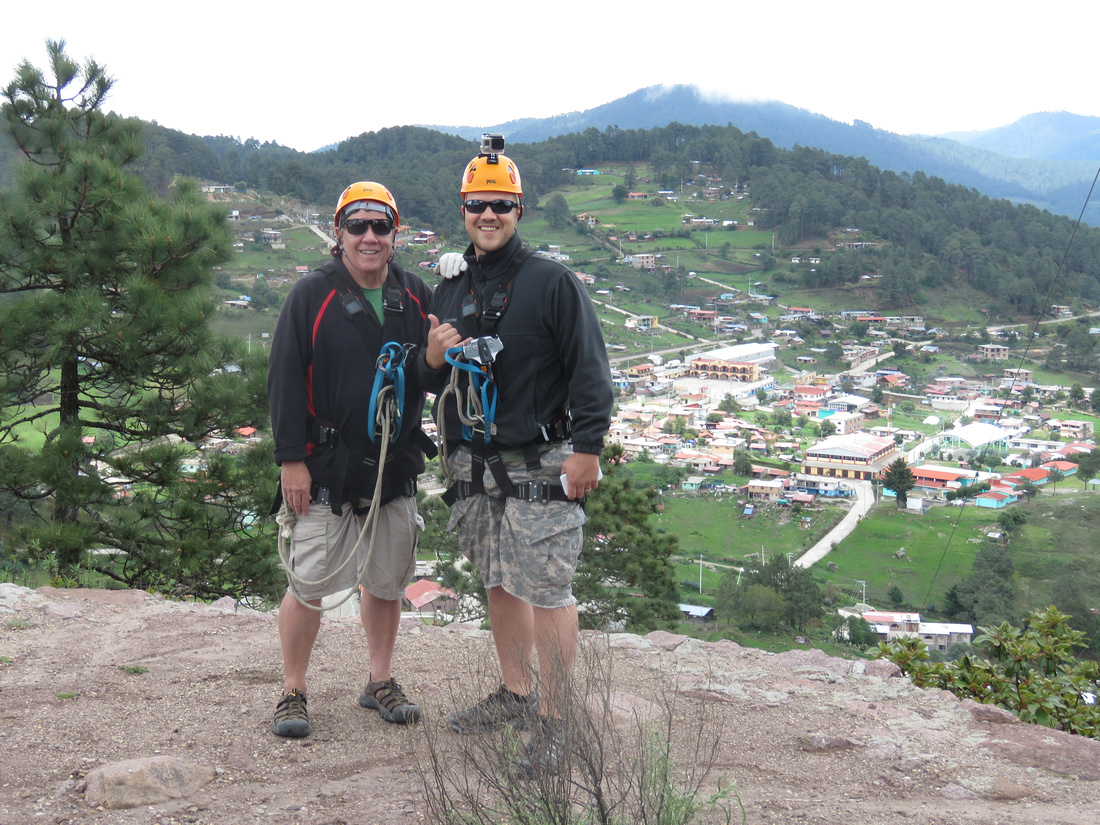
Mickey had a go-pro on his helmet. I don't know if I'll ever do it again. I think once will be enough. The trip lasts for a minute.
Mickey did a ride around here on the motorcycle. He mounted his go-pro on the front of the bike and later sped it up. It's long but the reason I posted it, is that it shows a lot of the terrain close to the house. For those of you familiar with the area, he left the house traveling towards Mitla. He crossed the highway a little past Union Zapata. Traveling back to UZ, he went past the graveyard to San Lucas then into Tlacolula and back to our house.
We took a drive to La Neveria and had to pass through Teotitlan. I'm guessing the population of Teotitlan to be about ten thousand. I had never noticed how large their church was.


Reyna and Ricardo are college students studying linguistics. They speak English very well; both are very bright. Ricardo also plays guitar and knows quite a bit about American rock. He turned me on to Keith Richard's style of playing in open G.
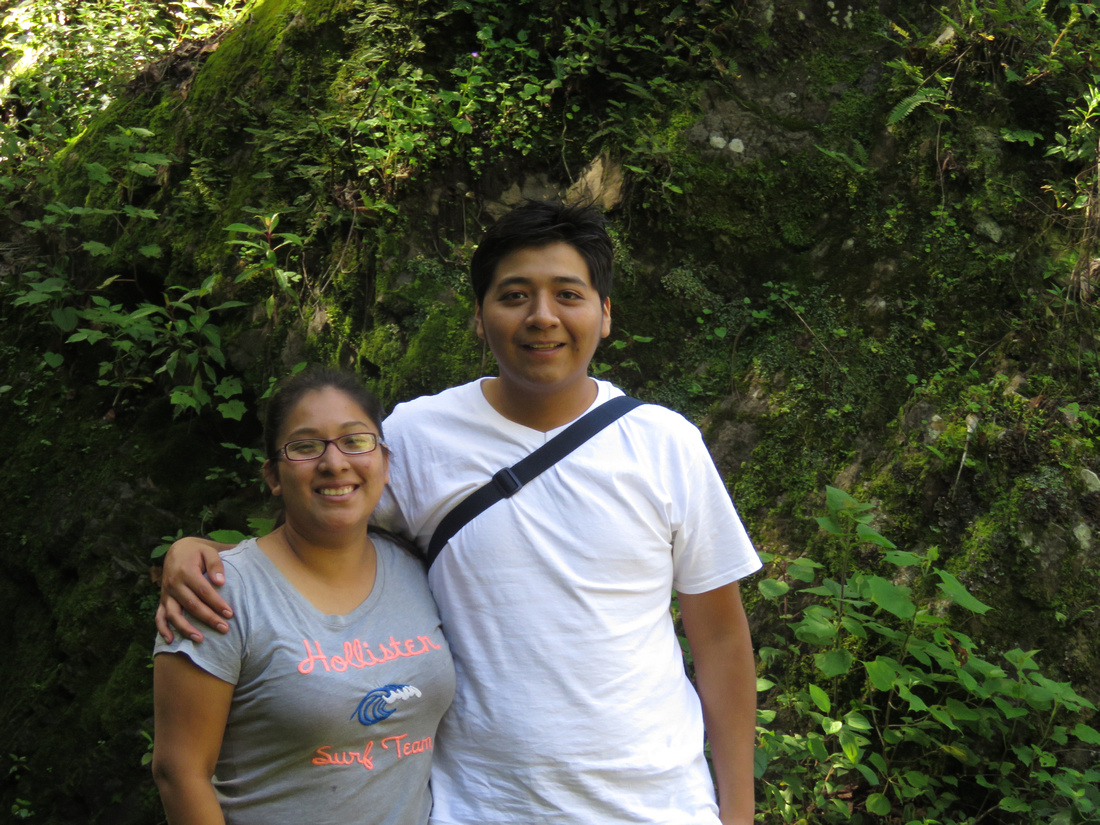
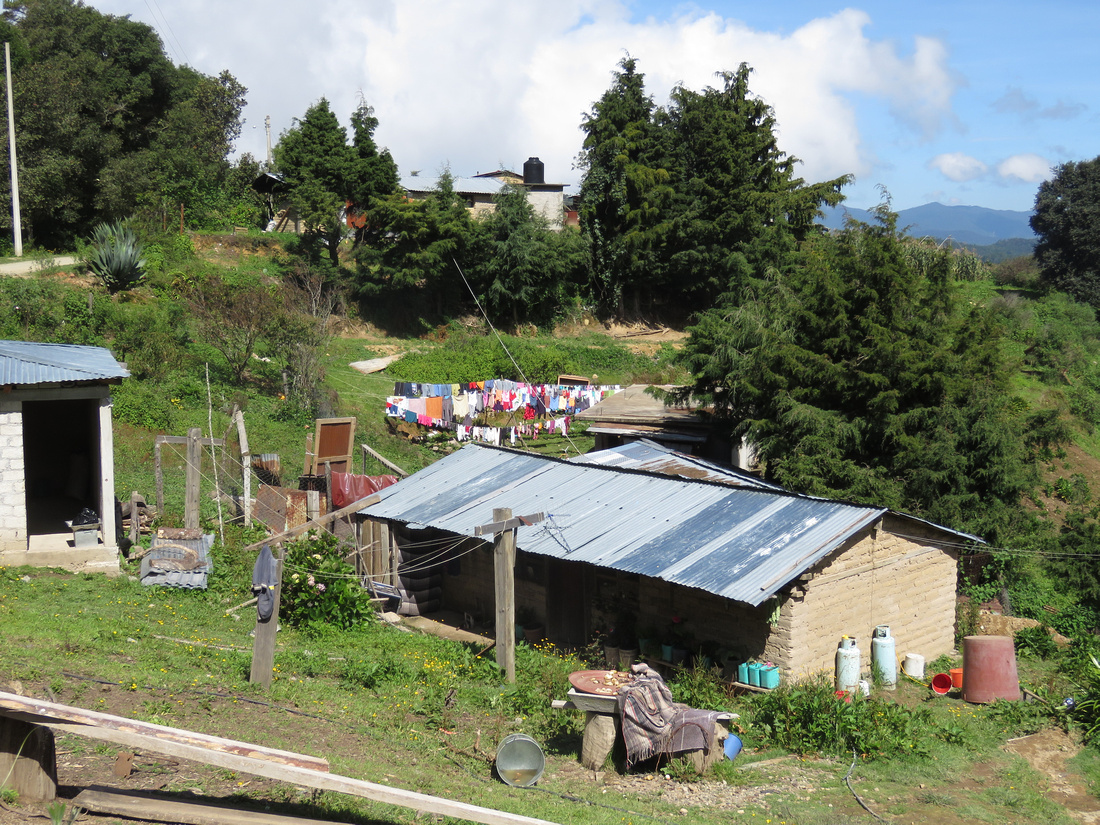
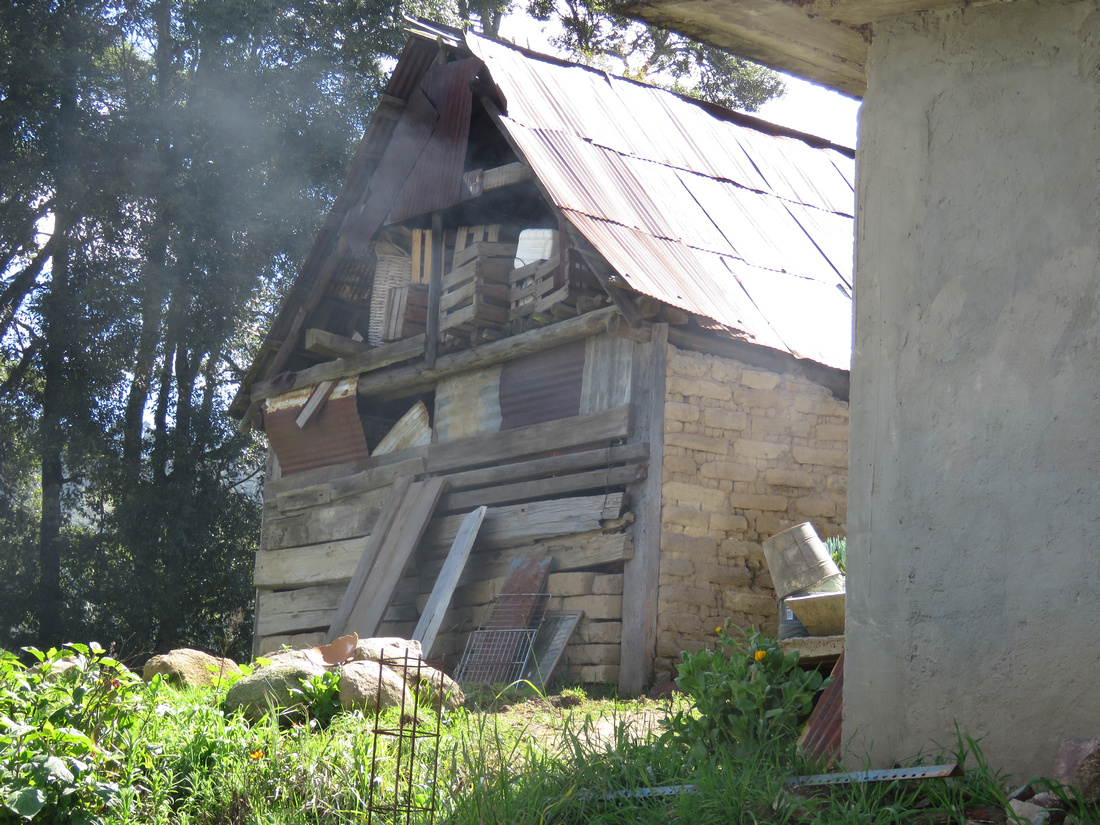
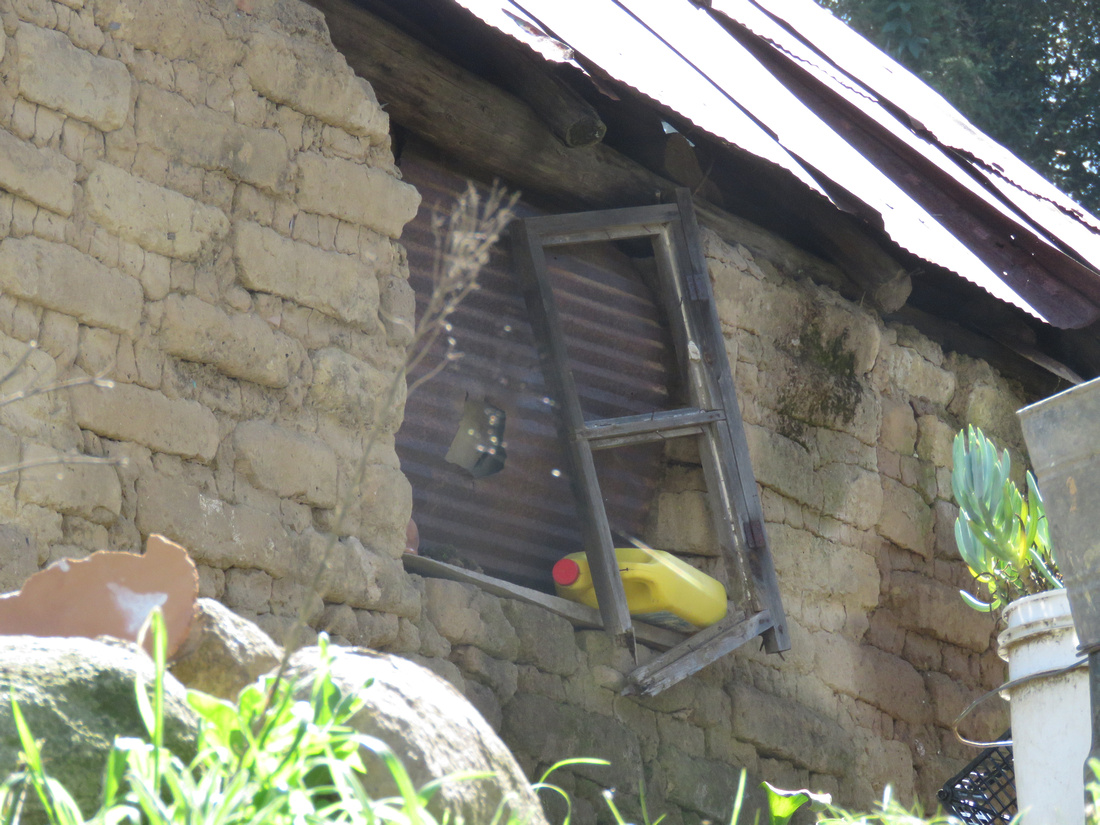
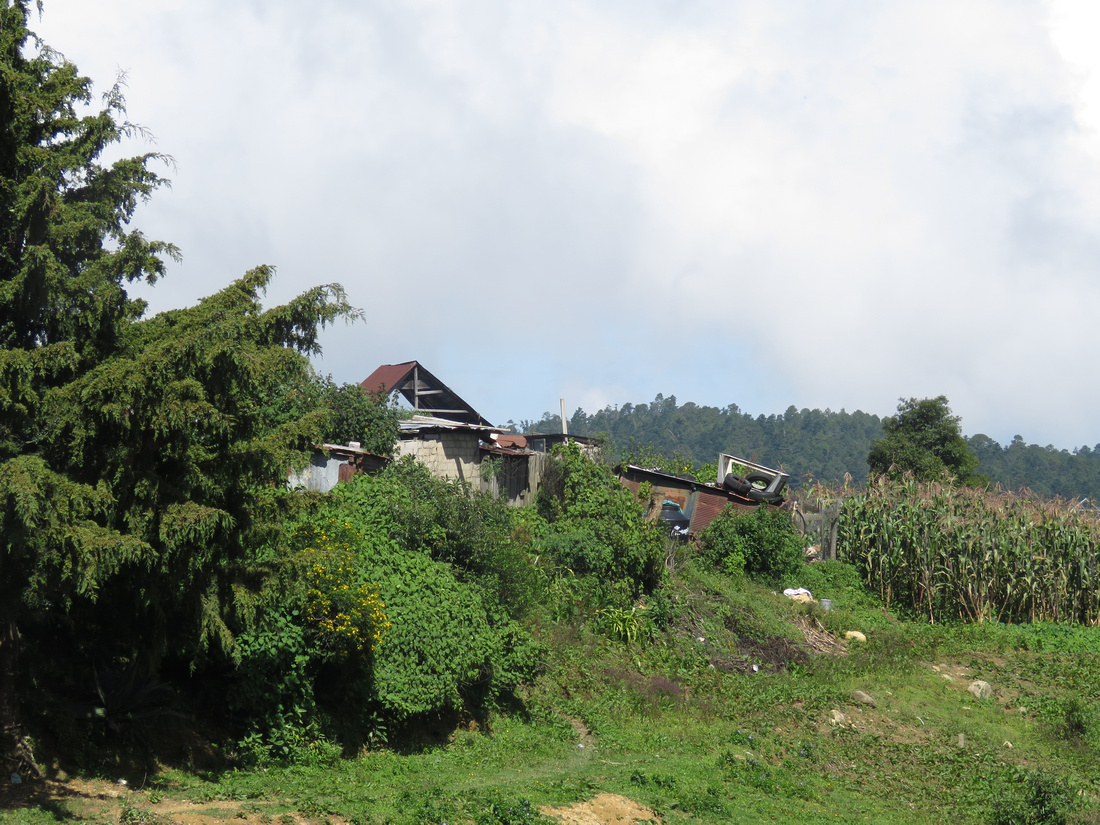

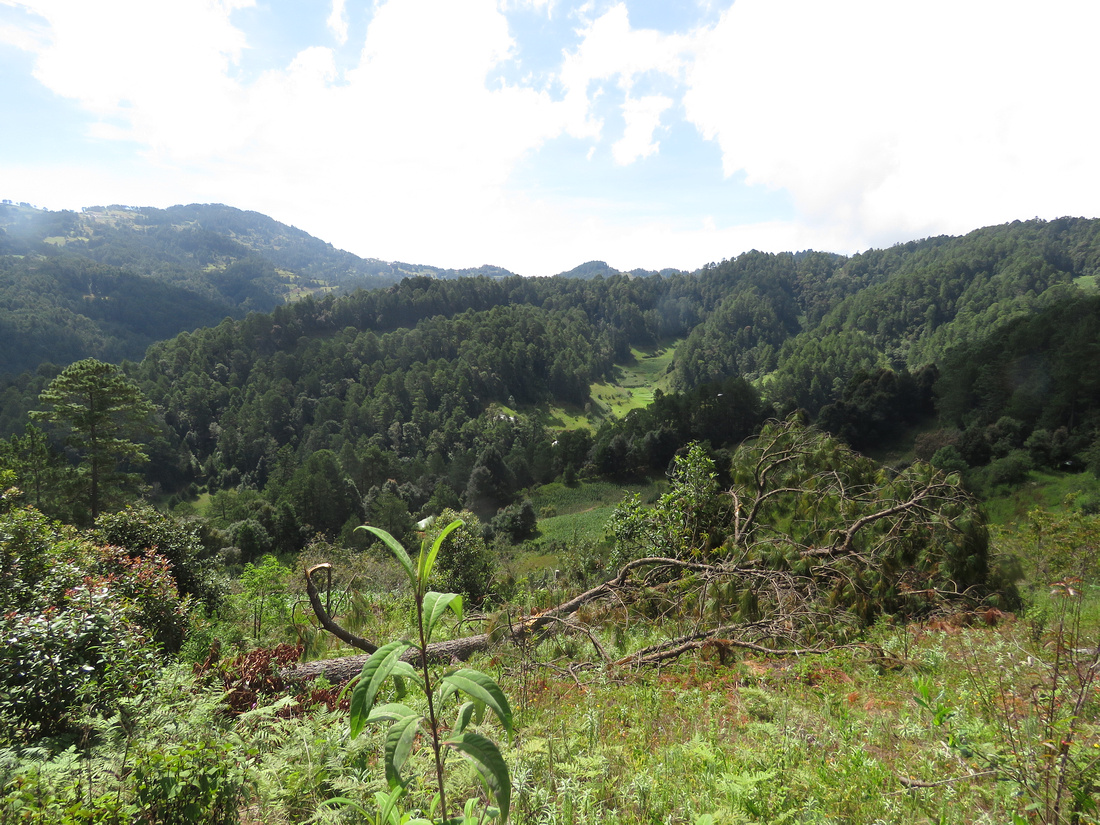 La Neveria is hidden in the mountains. It's a beautiful little village with about eighty families. One of the men I talked to told me that if you were walking and dropped something you could be assured that when you returned, whatever you dropped, would still be there. There are no drugs in this village. This is probably the most innocent place I've ever visited. Unfortunately, there is not much work for youth, so most leave to a large Mexican city or pass to the US. I couldn't help but imagine how difficult it must be to leave and endure the challenges of the outside world.
La Neveria is hidden in the mountains. It's a beautiful little village with about eighty families. One of the men I talked to told me that if you were walking and dropped something you could be assured that when you returned, whatever you dropped, would still be there. There are no drugs in this village. This is probably the most innocent place I've ever visited. Unfortunately, there is not much work for youth, so most leave to a large Mexican city or pass to the US. I couldn't help but imagine how difficult it must be to leave and endure the challenges of the outside world.
I asked a gentleman what happens in case of a heart attack as they are so far from civilization. He replied that no one has ever had a heart attack. In the past thirty years they have had two cases of cancer. One case involved a man that had worked for years in the States and the other was a man who'd worked in Mexico City for years.


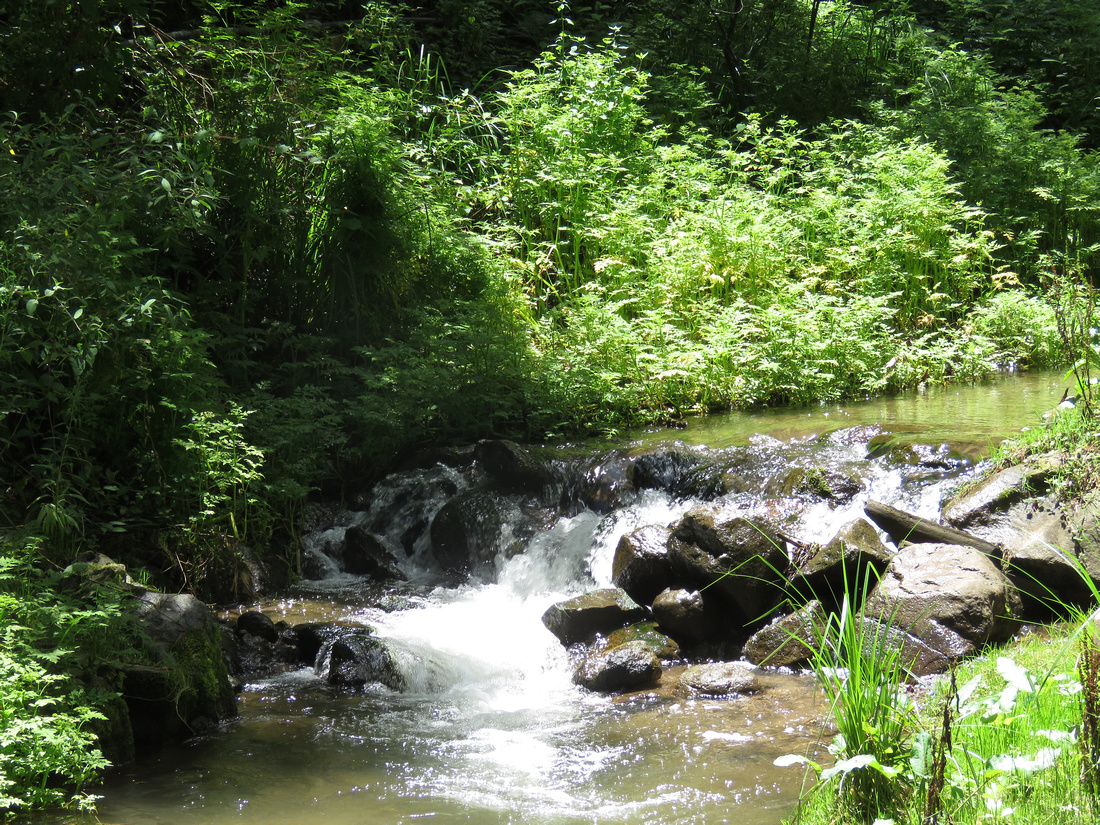
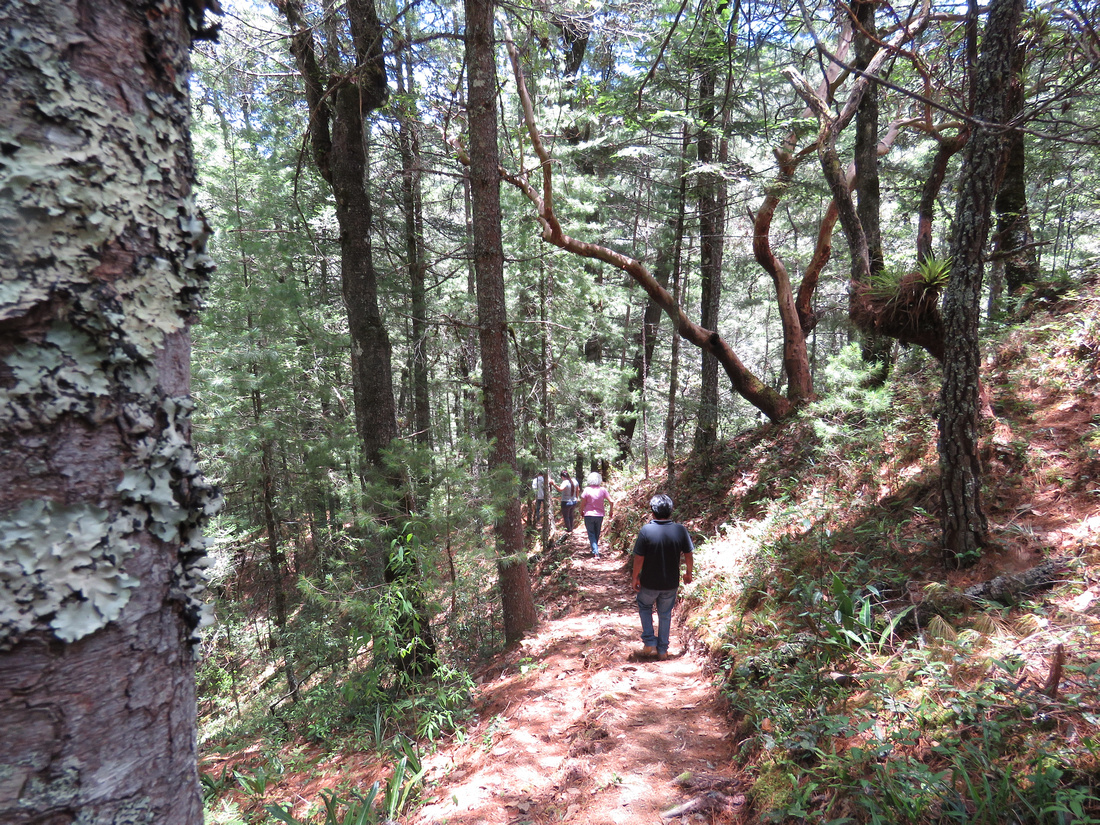
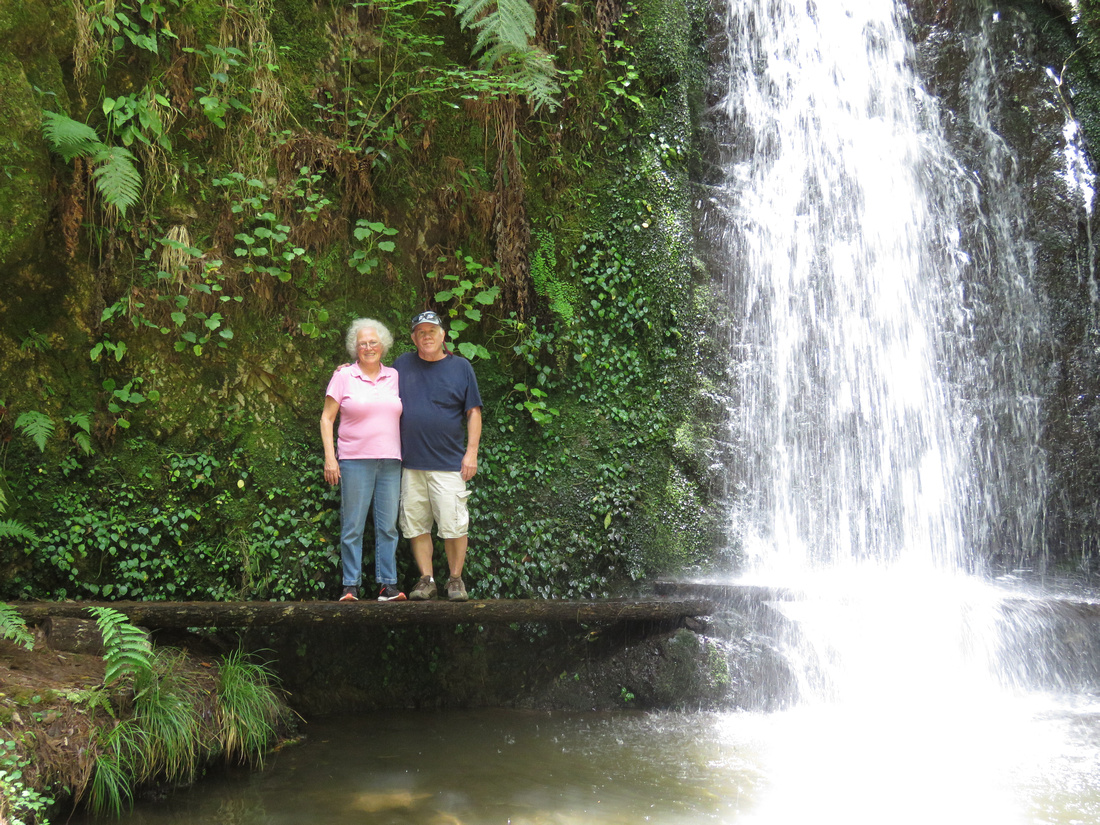 We don't see a lot of moss. It's so dry in the valley.
We don't see a lot of moss. It's so dry in the valley.
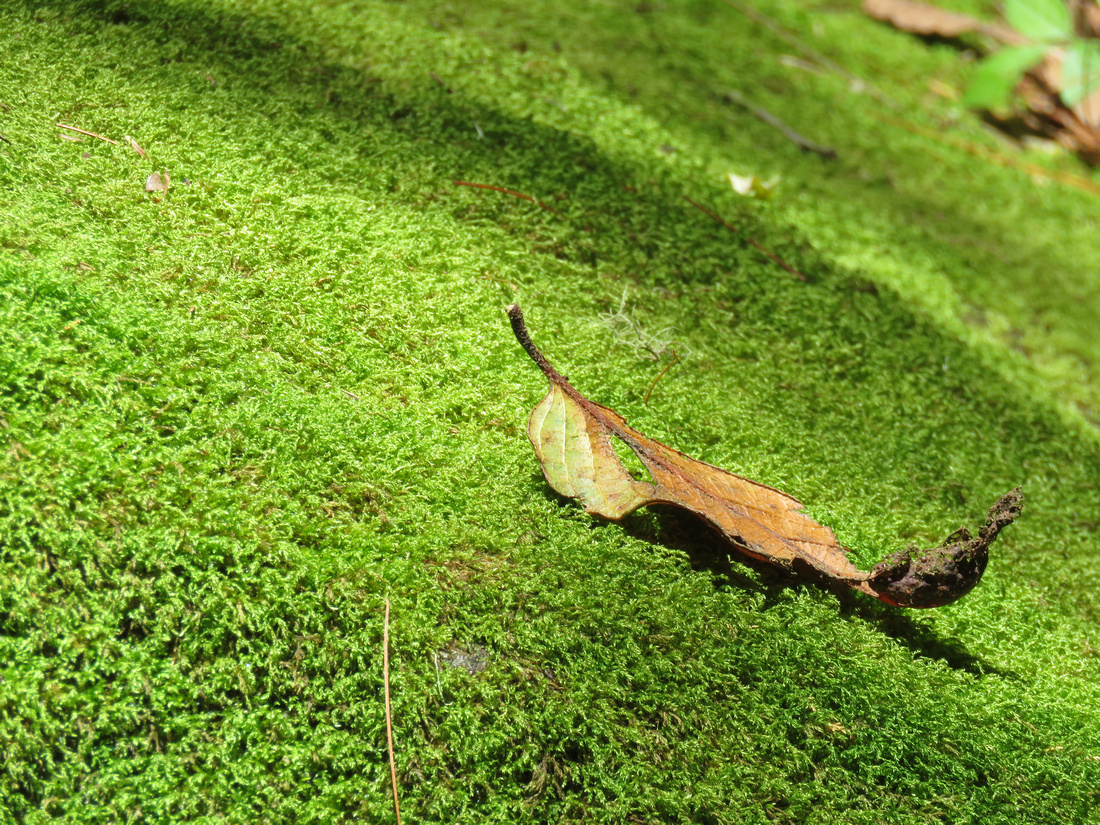 This little sweat lodge was built for tourists.
This little sweat lodge was built for tourists.
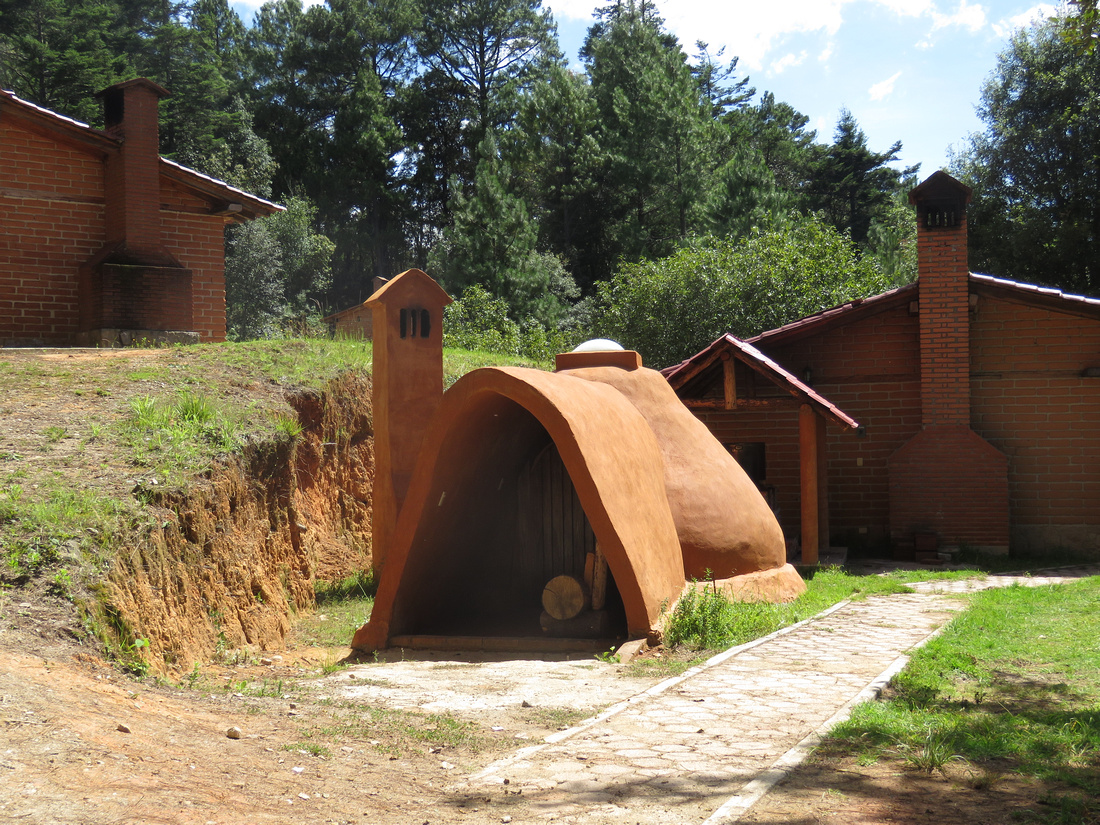
Beth had the chance to do a small zipline. She loved it!
We just found out that a McDonald's will be opening in the MacroPlaza in Oaxaca. This is where the closest WalMart is located and where we do most of our grocery shopping. Now we can eat American-style when we shop.
When we left our truck in Texas (due to the high cost of nationalizing it), I had no idea how long it was going to take to replace it here in Oaxaca. I hadn’t noticed before, but missing here are car lots with used cars. Ok, there are a few. They are all of the name-brand agencies (more about that later).
We spent the first month back using taxis to get around. The walk out to the highway wasn’t bad, but coming back loaded down with groceries, etc. was uncomfortable especially on hot days. We learned to respect the majority of the folks here that don’t and never will own a vehicle. Planning ahead is crucial and we got a peek into the lives of how the vehicle-less survive. Grocery items don’t present too much of a problem but there is feed for dogs and chickens, and filtered water to be purchased and transported. It turns out the taxis are accustomed to hauling items apart from passengers. They were very accommodating, including delivering items right to our door (for a reasonable fee).
We were adjusting quite well, spending more time at home, and making fewer trips. However, it did drastically cut into our social life. We literally stopped visiting friends. But our friends came to see us and on several occasions gave us rides to run errands. Our friends often showed up with fruit, bread, tortillas, and other basic items. I don’t believe we ever appreciated company as much as we did that month.
One Sunday we were at a comida at our neighbors when the subject of transportation came up. They had no idea that we were without our truck. Feliciano offered us the use of a vehicle but Beth and I were uncomfortable. We’d been offered other vehicles, but we were reluctant. A friend (Rosendo) had offered me his only truck.
A couple of days after the comida, Feliciano showed up at our house with a Jeep Wrangler. He had all the paperwork and proof of insurance. We were floored! Beth and I will never forget this act of kindness. We accepted the Jeep and have driven it for almost three months.
We diligently searched for a truck. We were adamant about wanting a four door pickup. Buying a vehicle in the States can be tough. Here, it’s scary as hell. Totaled vehicles can be repaired and resold here. They do a very good job repairing and painting. I almost bought a couple of trucks, but fortunately I spotted small signs that they had been repaired. There is also the problem of buying stolen vehicles. I probably passed on a couple of good buys, but I had bad vibes.
I bought a 2002 Ford pickup that had been brought down from the States but discovered that the original paper making it a Mexican vehicle was missing. We tried for a week to get it changed into our names without success. Ultimately, our money was returned and we returned the truck. We were sorry. It was a beautiful four door Ford truck.
We became a little desperate and applied at the Nissan dealership to buy a basic four door new pick up. We filled out all the forms, supplied several references, and waited for an answer. A week went by, then two, and by the third week we became frustrated.
We looked at a few more trucks but were either wary or dissatisfied.
One evening we got a call from a friend who knew of a truck for sale. It was a 2002 Dodge Ram pickup with four doors. It was owned by a doctor who’d bought it new. We made arrangements to see the truck. It turned out to be the deluxe model sold that year. It had everything including a V8. But it was the smallest V8. In fact the motor wasn’t available in the US. The doctor was a nice man, pretty straight forward about the truck. The truck was built in Mexico for use in Mexico. I converted the kilometers to miles and came up with ninety eight thousand miles. Not bad. I had read the reviews online and was impressed by its rating. I could see immediately that the truck had been well maintained. I bought the truck that night for eighty thousand pesos ($4,200 USD).
After driving small vehicles for years, Beth and I are both amazed with the comfort. Converting kilometers to miles and liters to gallons, I calculated we’re getting a little over 14 miles per gallon. Not bad as we don’t do an extreme amount of driving.
I was proud that I was able to change names, register the truck, and buy insurance by myself. A couple of times I had to have things explained a little differently but overall it went pretty smooth.
So, we finally have our land in our names, our residency, and a vehicle with Oaxaca plates. Life is good!
Our Jeep for three months. It was a blast to drive although a little chilly in the morning. Again, we thank Feliciano for the loan.

Our new truck. Very comfortable and we now have the space for friends to ride inside instead of having to ride in the bed. It's a little tricky maneuvering in Tlacolula. Most of the streets are pretty narrow. The doctor we bought it from had just had the air-conditioning repaired. It gets very cold!!!
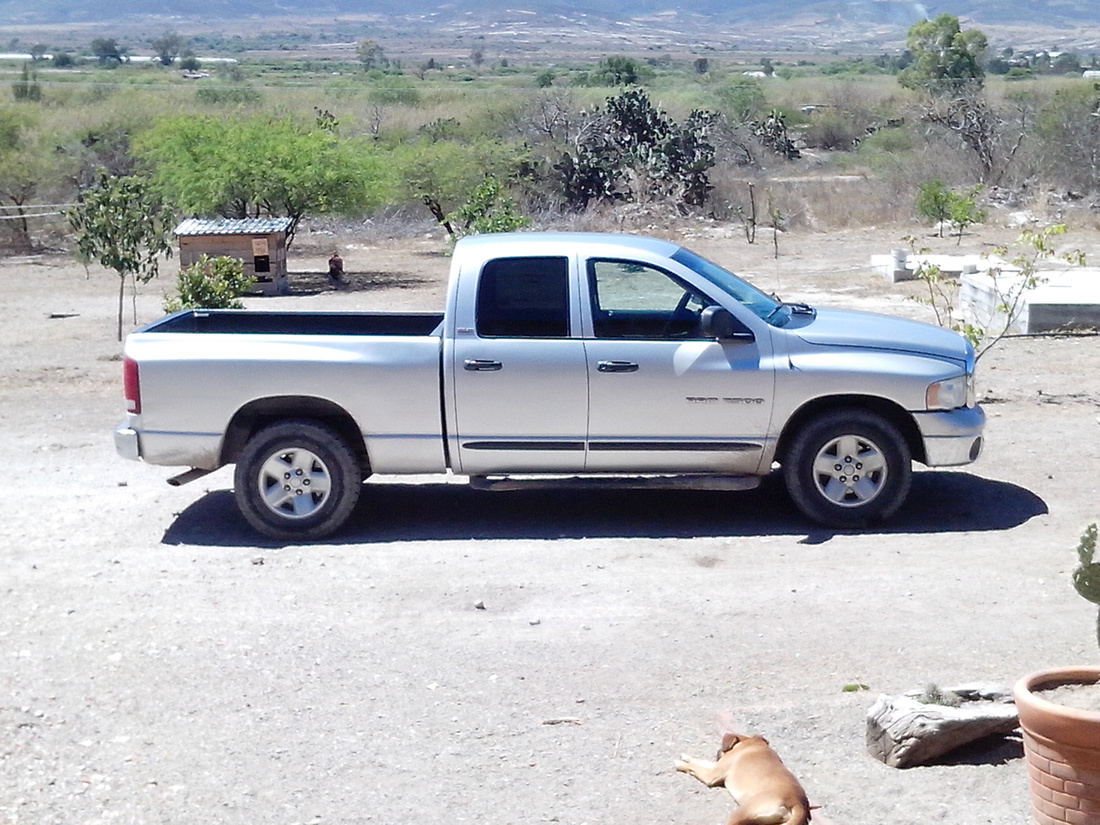
We made a trip to the U.S. in November. It had been three years since our last trip. We'd forgotten how different other Mexican states are. It was a shock to see how progressive some of the northern states are. Oaxaca is very traditional and industry is almost nonexistent especially on a large scale. Oaxaca relies on tourism. We found many cities comparable to cities in the US with an obvious amount of U.S. influence. The trip reconfirmed why we chose Oaxaca. Life is much slower here.
When we reached the border. we checked into nationalizing our truck. The cost was almost three thousand dollars. Apparently Mexico doesn't want older vehicles entering the country to stay. That drastically changed our plans. We had hoped to bring back lots of things from the flea market. The need here is so great it's difficult to make a trip to the States and not bring something back. We would have feelings of extreme selfishness. We did bring back four suitcases but it was a paltry amount. Mickey is going to sell our truck so we can buy a Mexican plated vehicle here.
Our major goal was to receive our Visas and we did accomplish that. When we returned to Oaxaca we applied for Temporary Residency. We have two more trips to make to Oaxaca, one to be fingerprinted and the last to pick up our residency cards. Having residency status will keep us from having to leave Mexico. We made the drive to the States in twenty one hours. Eleven hours the first day and ten the second. It has become very tiring. Our future trips will be by plane. I have to say that the drive has changed considerably. Most of the trip was comparable to driving in the States. The roads are maintained much better than in the past and there are many new freeways.
We visited with a few friends and were able to spend time with Mickey and Yadira. Within thirty miles of our home here in Oaxaca, there are two traffic lights. What a shock it was to drive in Brownsville. Wherever we went, there was traffic, lines of it with so many traffic lights. Of course we see traffic in Oaxaca de Juarez but those trips are becoming few and far between. I enjoy driving here locally. Most of the driving is in the country. We were stopped a few times on the trip north, mostly by the military. These young men were very polite.
After our trip I got the urge to make some photographs of the market in Tlacolula. I think being away made me appreciate it even more.
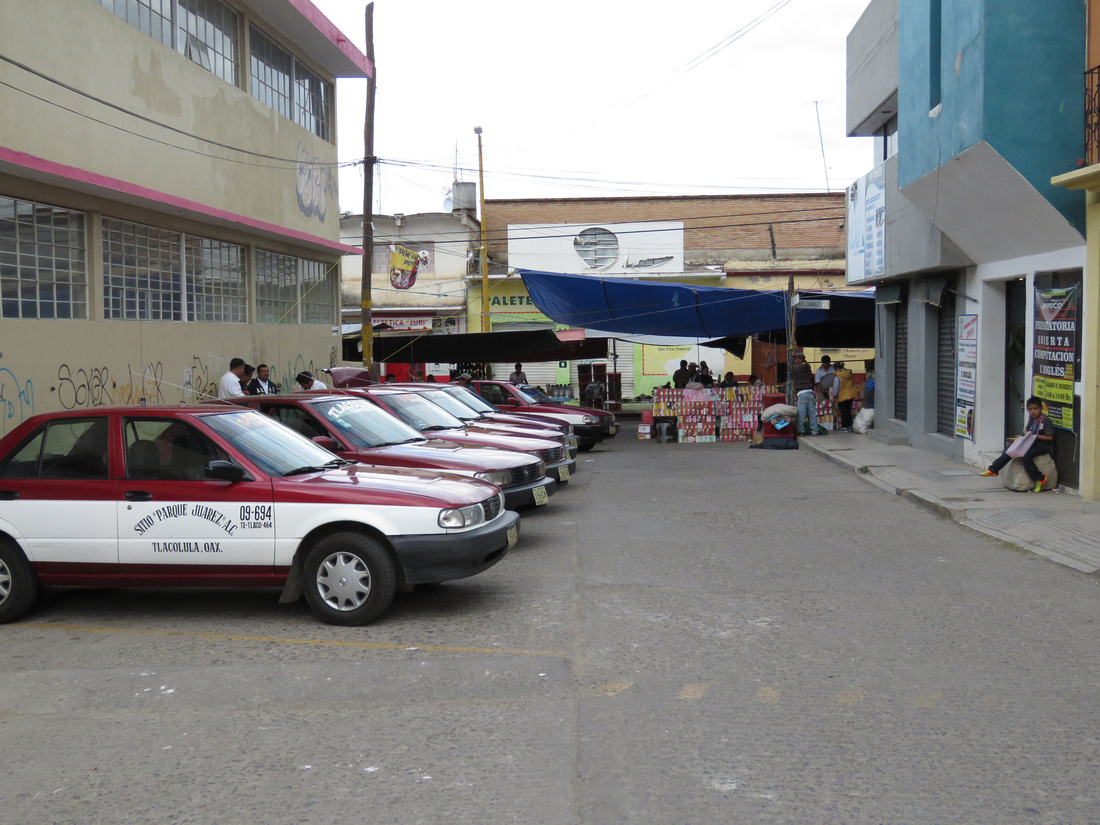
It's illegal to bring used clothes into Mexico except for personal use. I was told that the law protects folks like these who make their living selling used clothing.
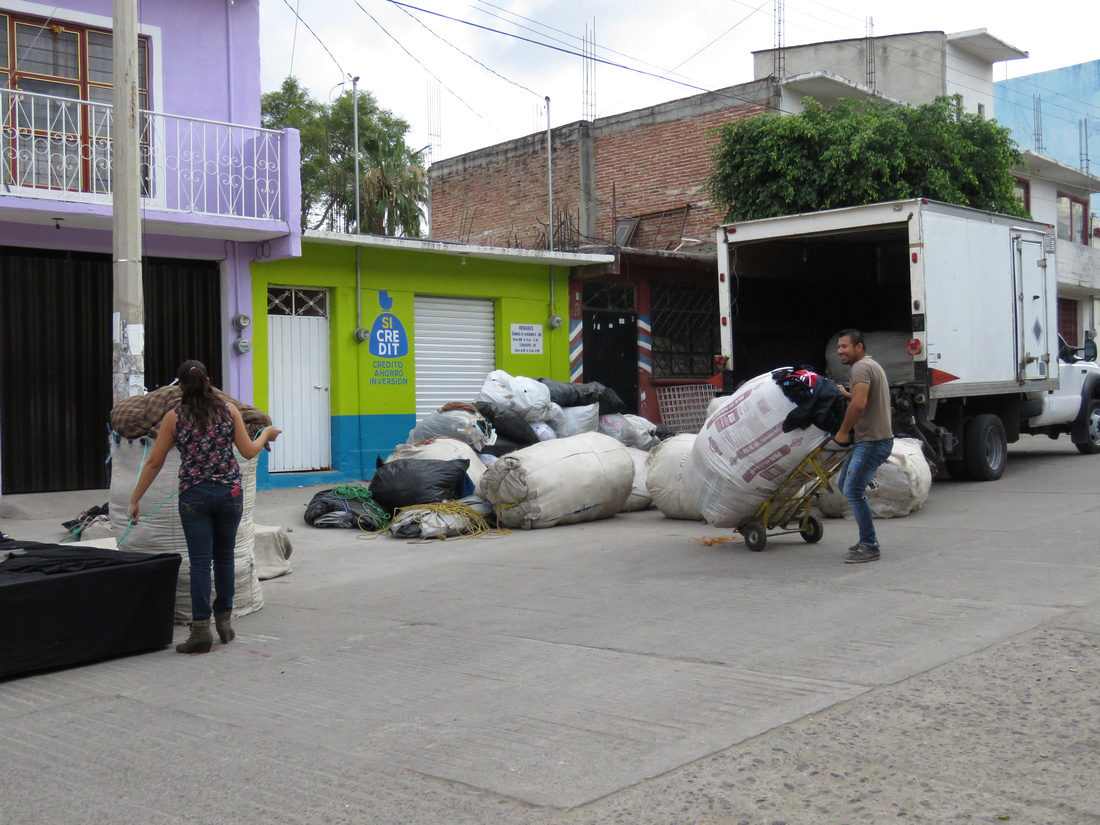
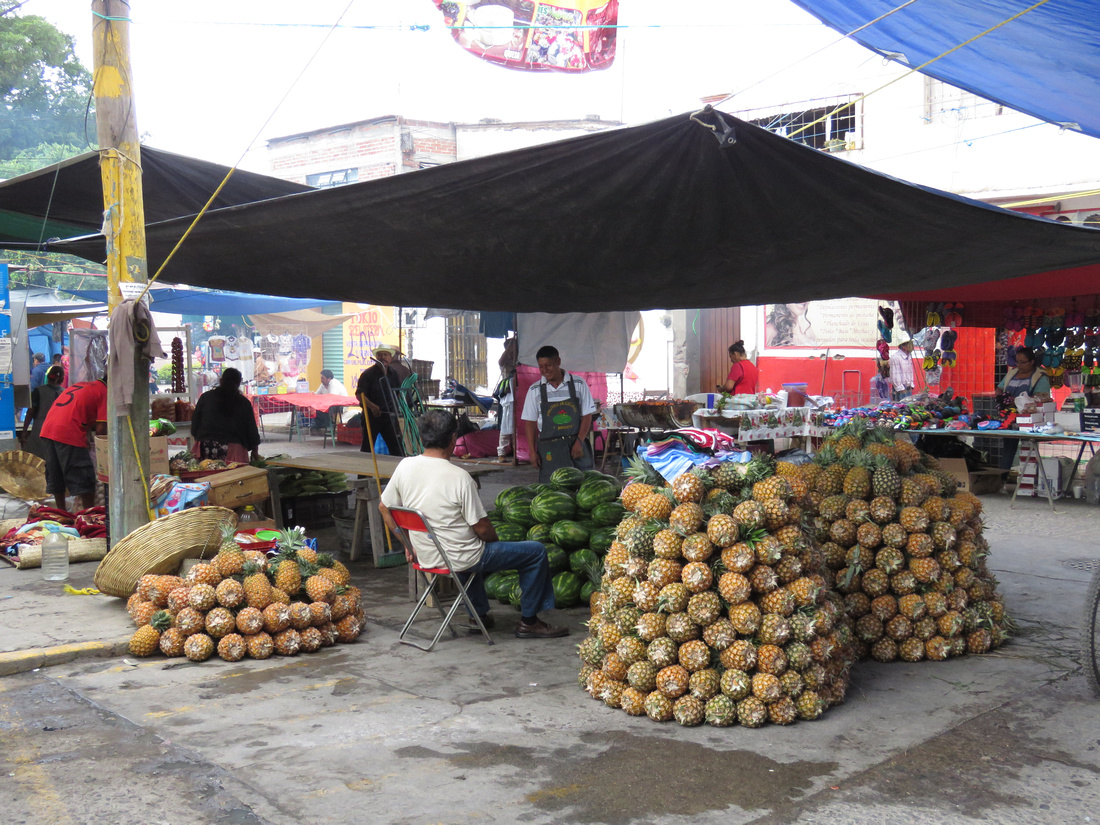
Even though there are hundreds of mototaxis, Sundays still provide an opportunity for people with these bicycles to make some cash.

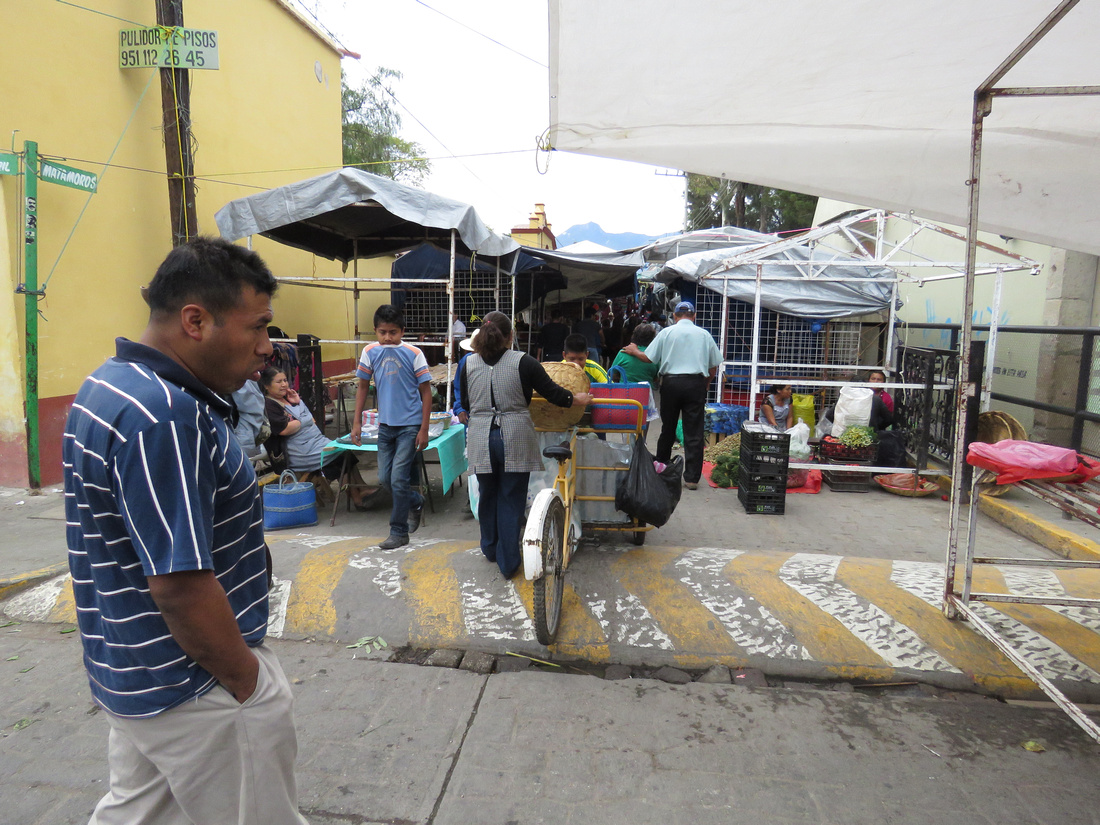

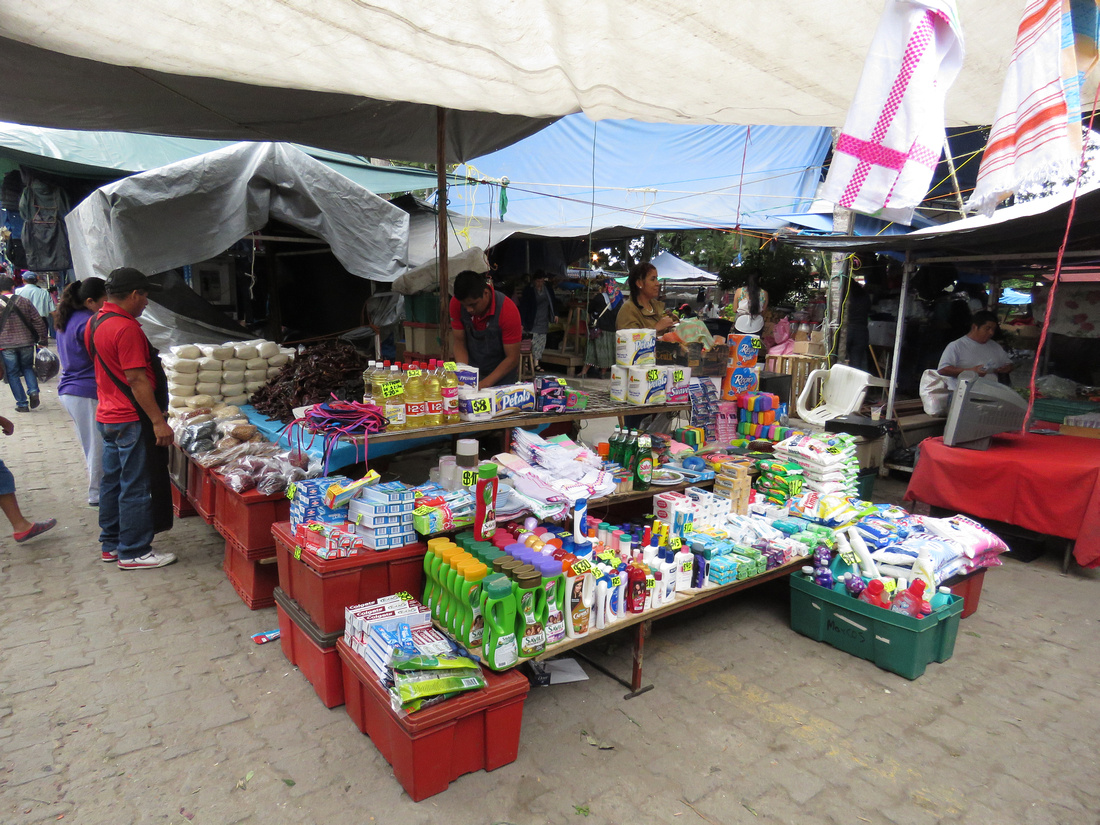

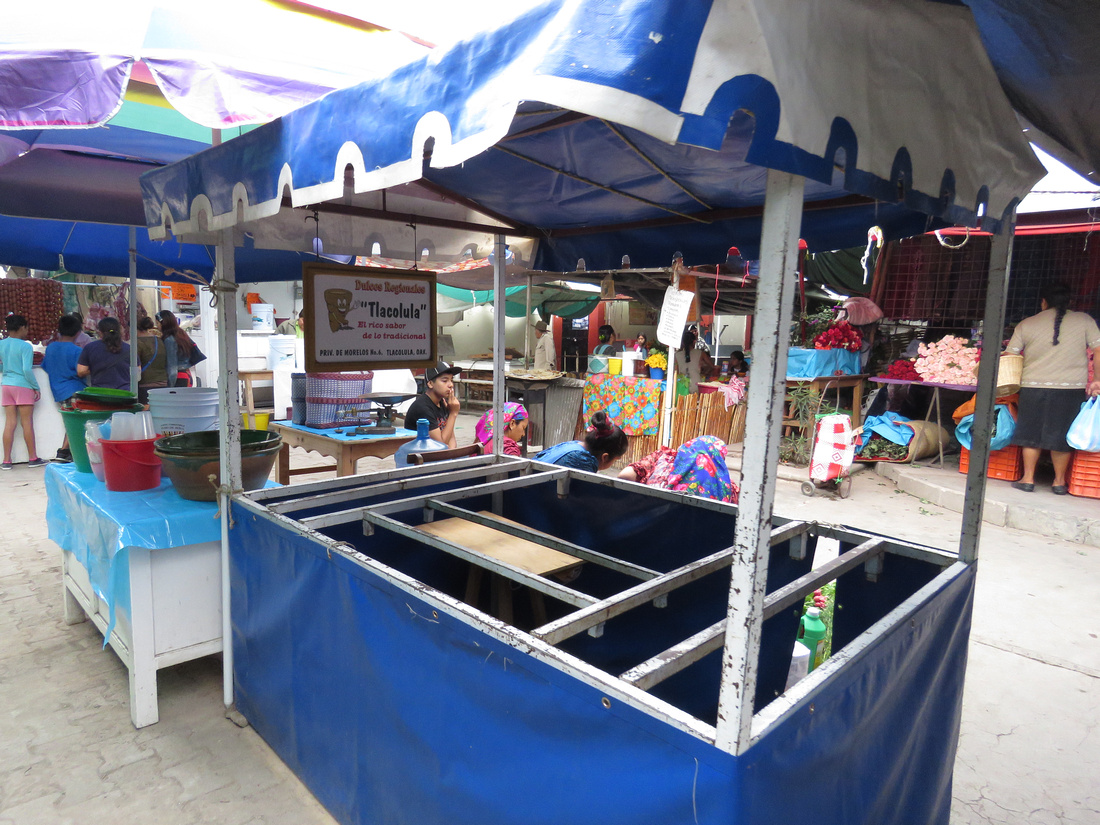
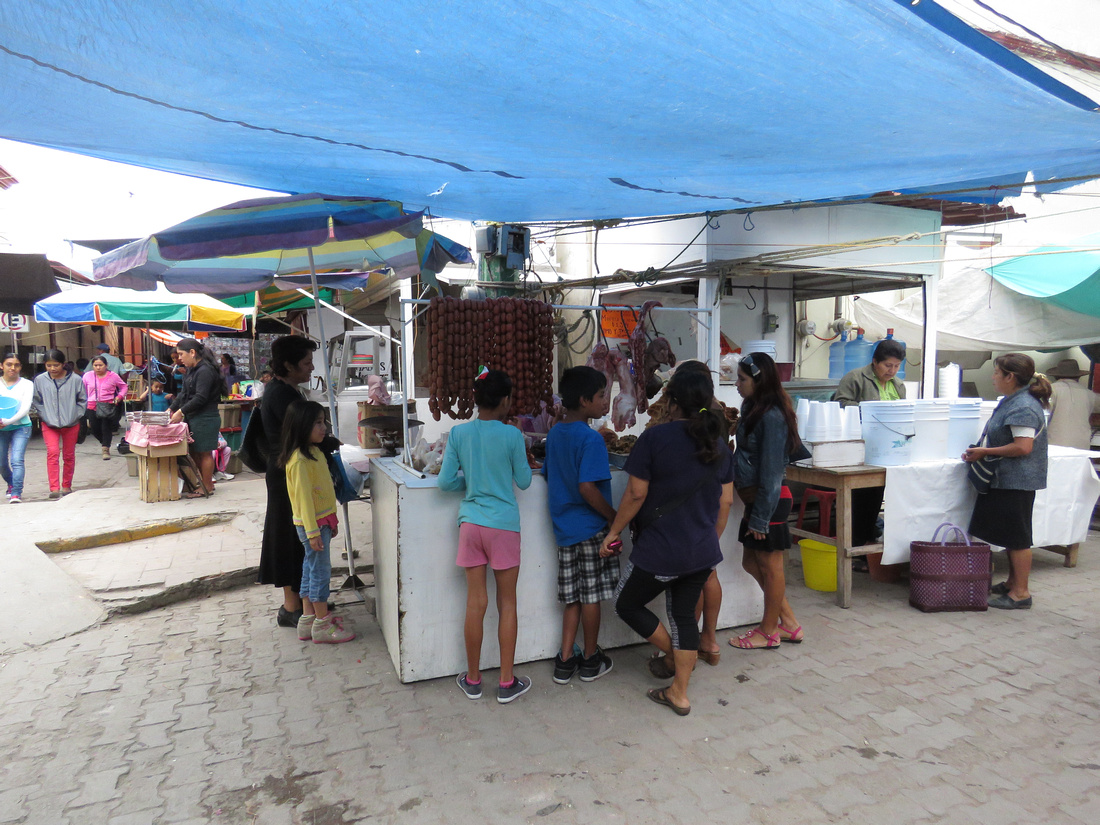
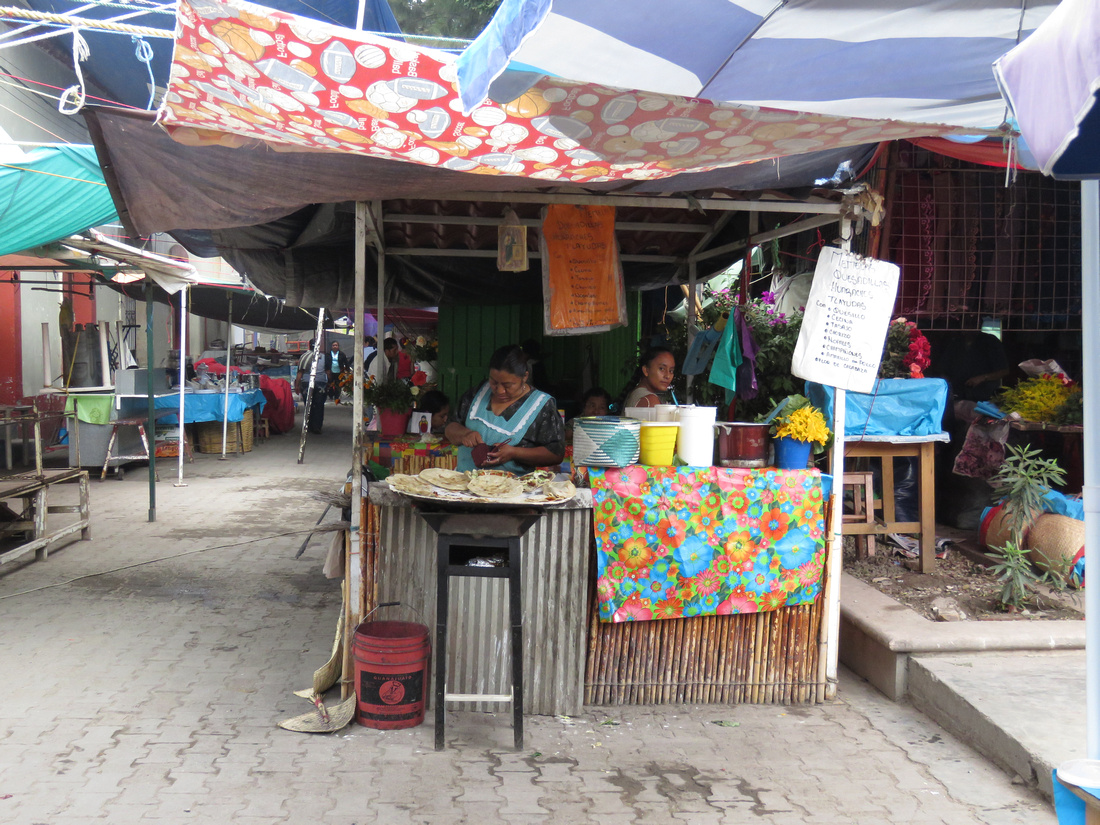
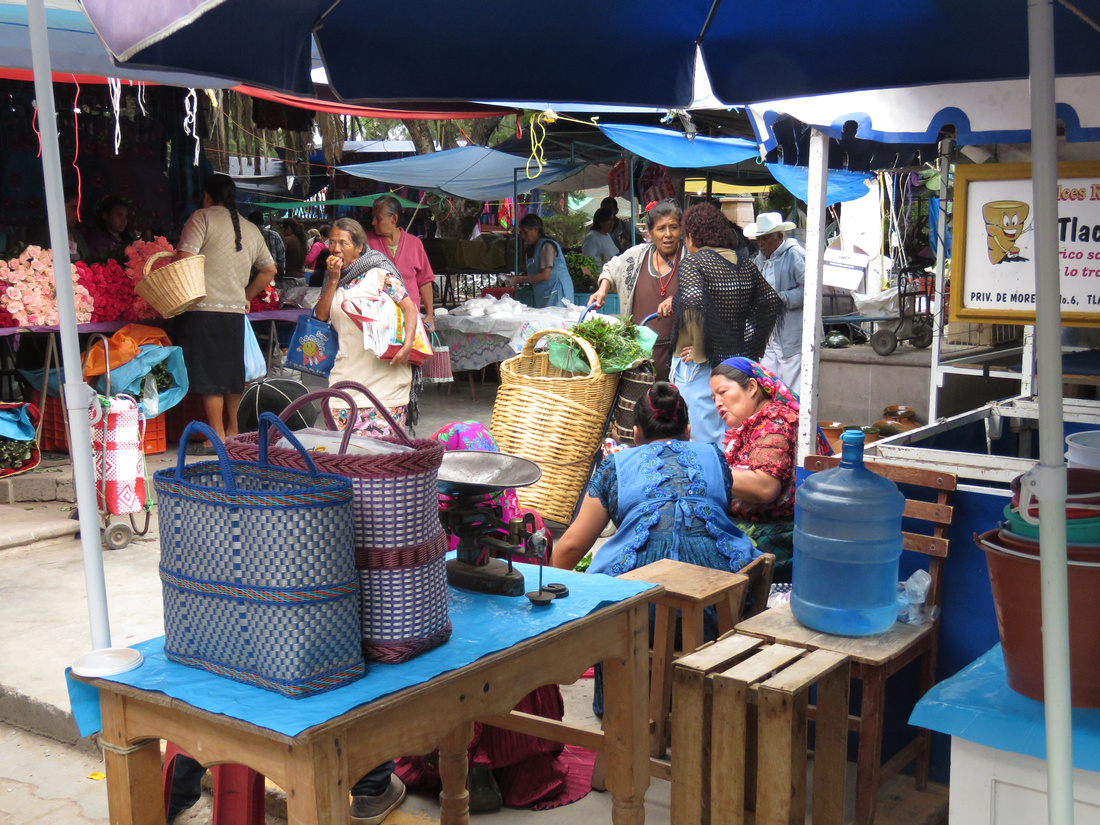


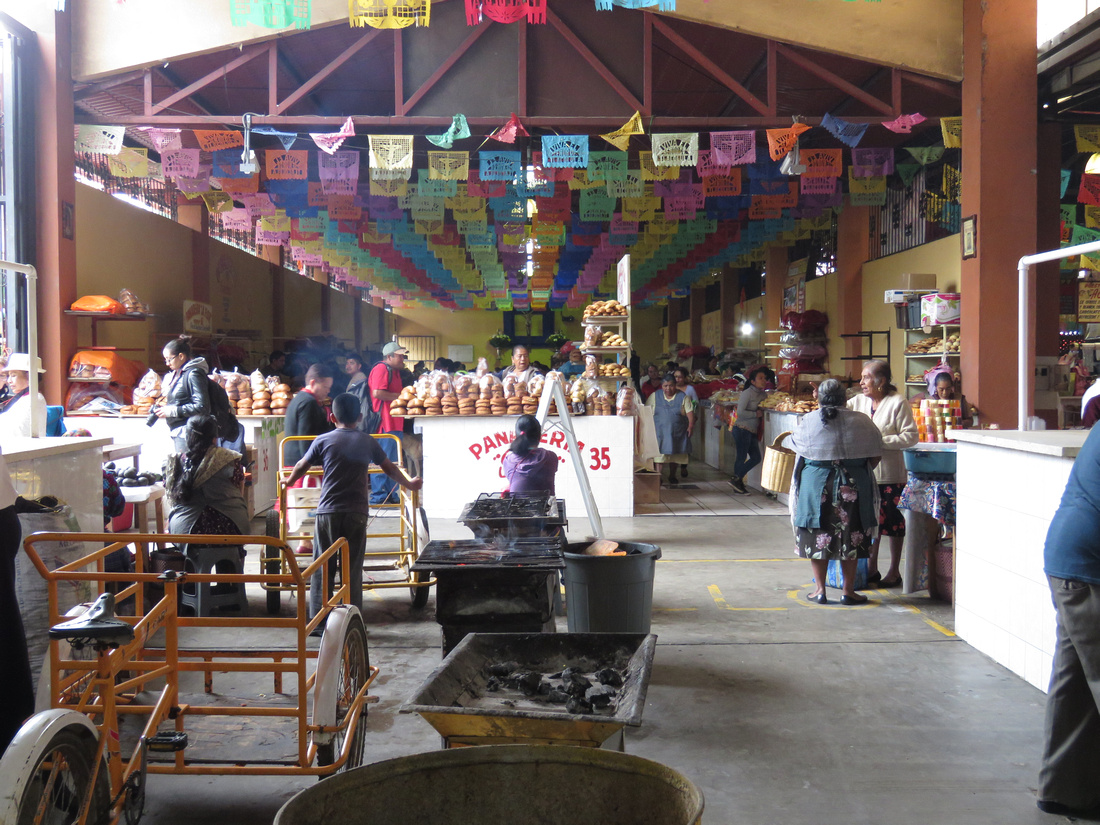
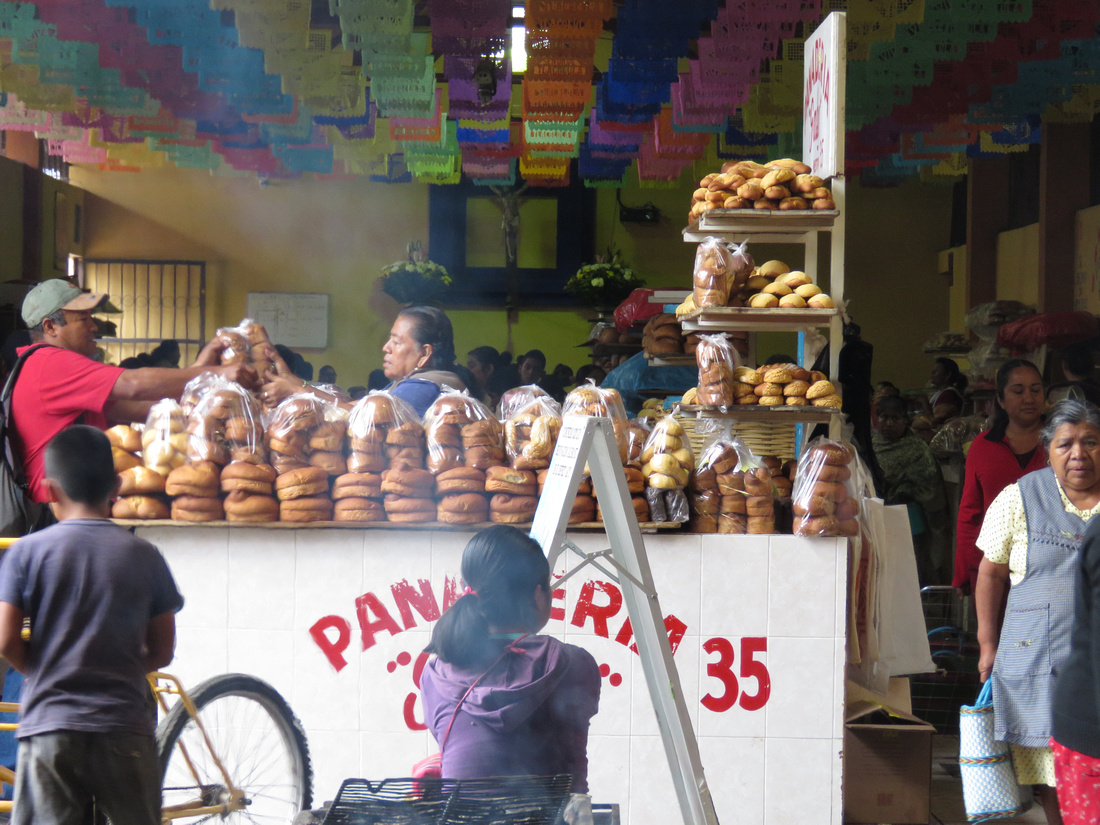

Oops, some Americans snuck into my photo. These ladies are selling handmade tortillas.
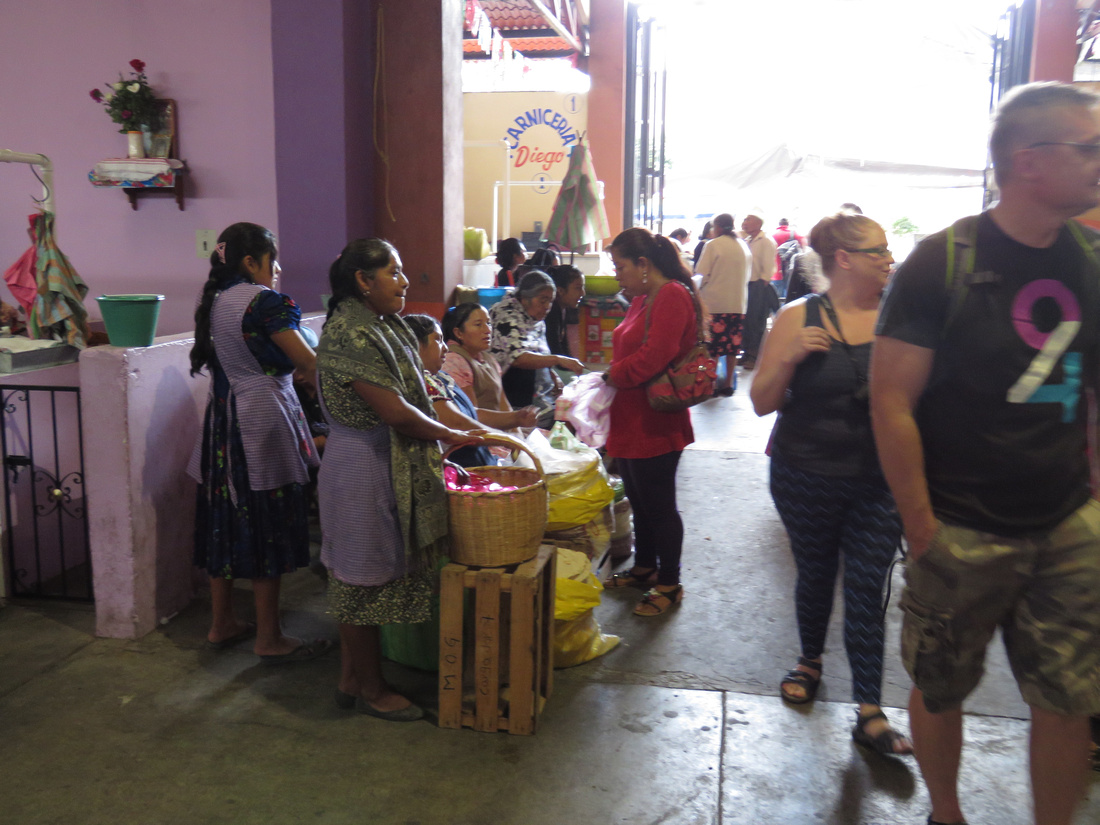
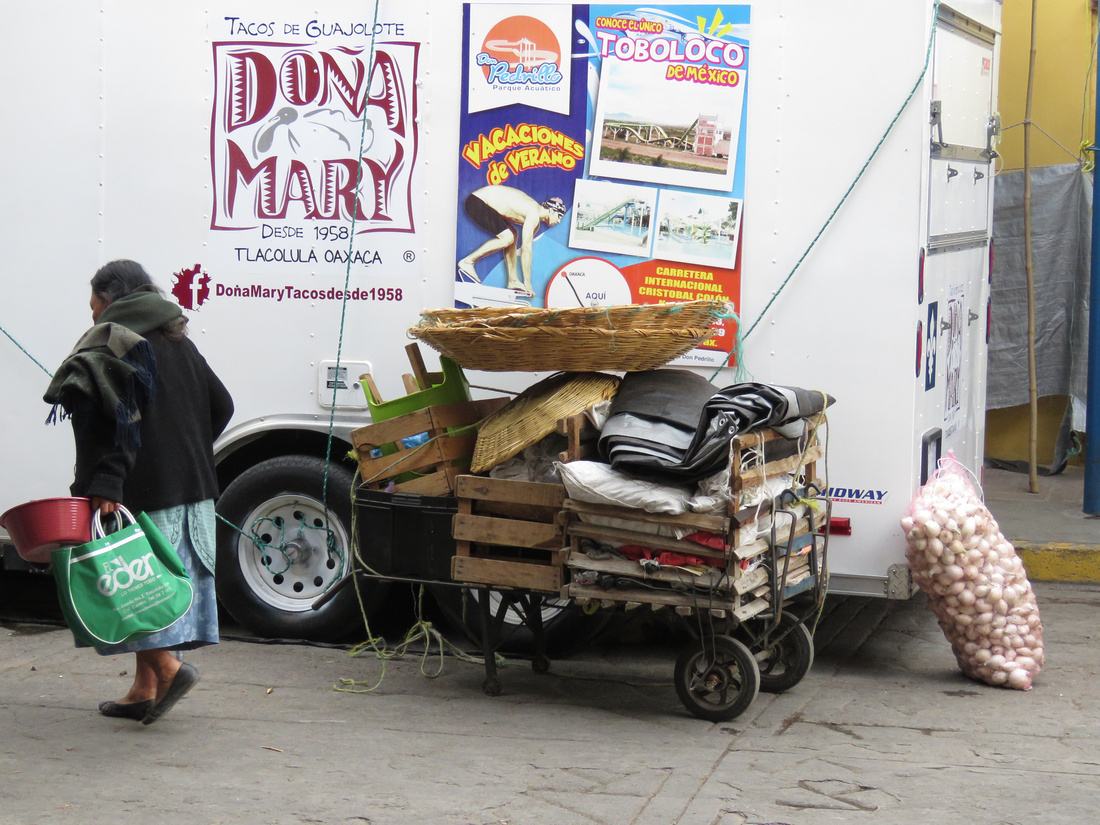
An addition to the market is being constructed so for now the park is being used.

Notice the difference between the clothing of the buyer and that of sellers. The women selling are from out lying villages.
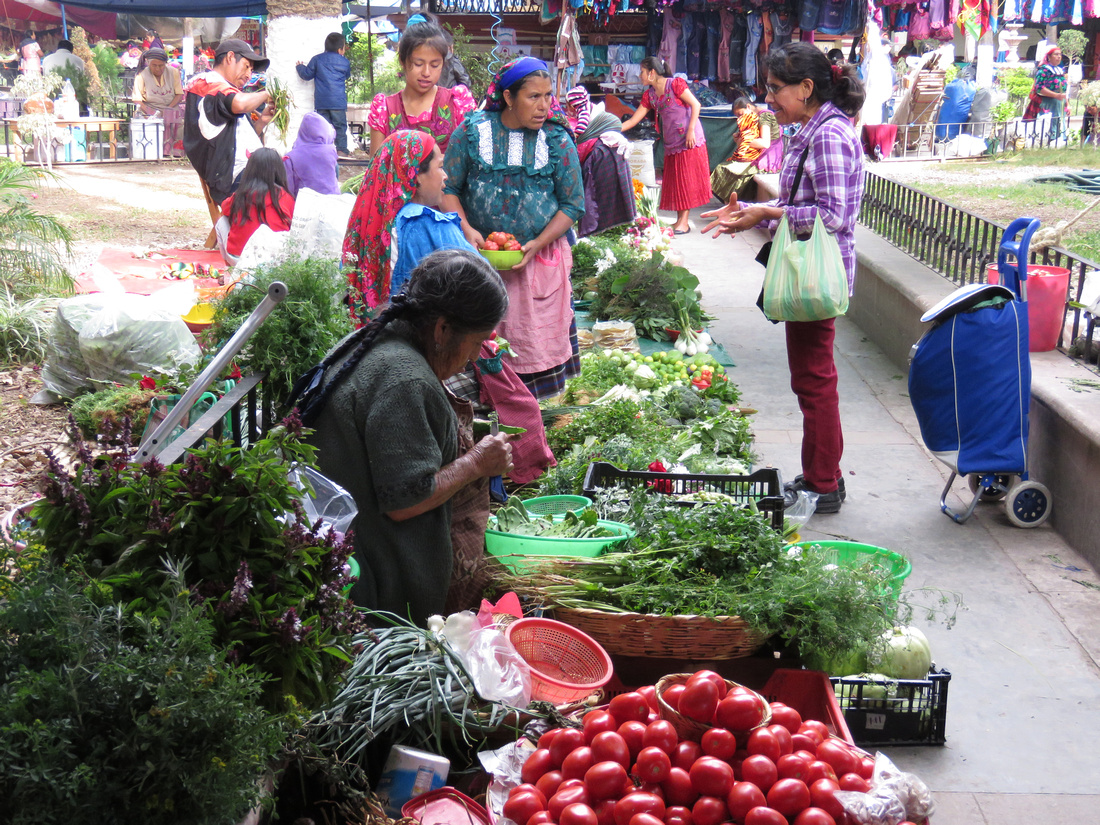
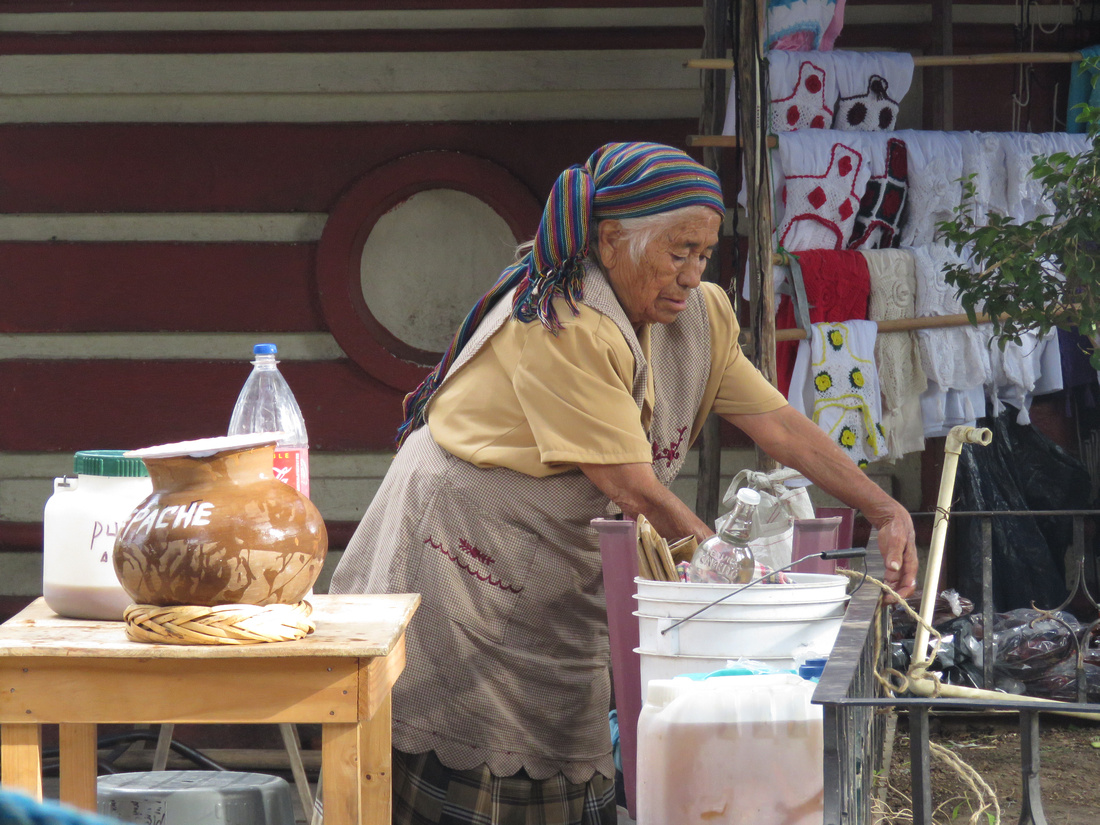
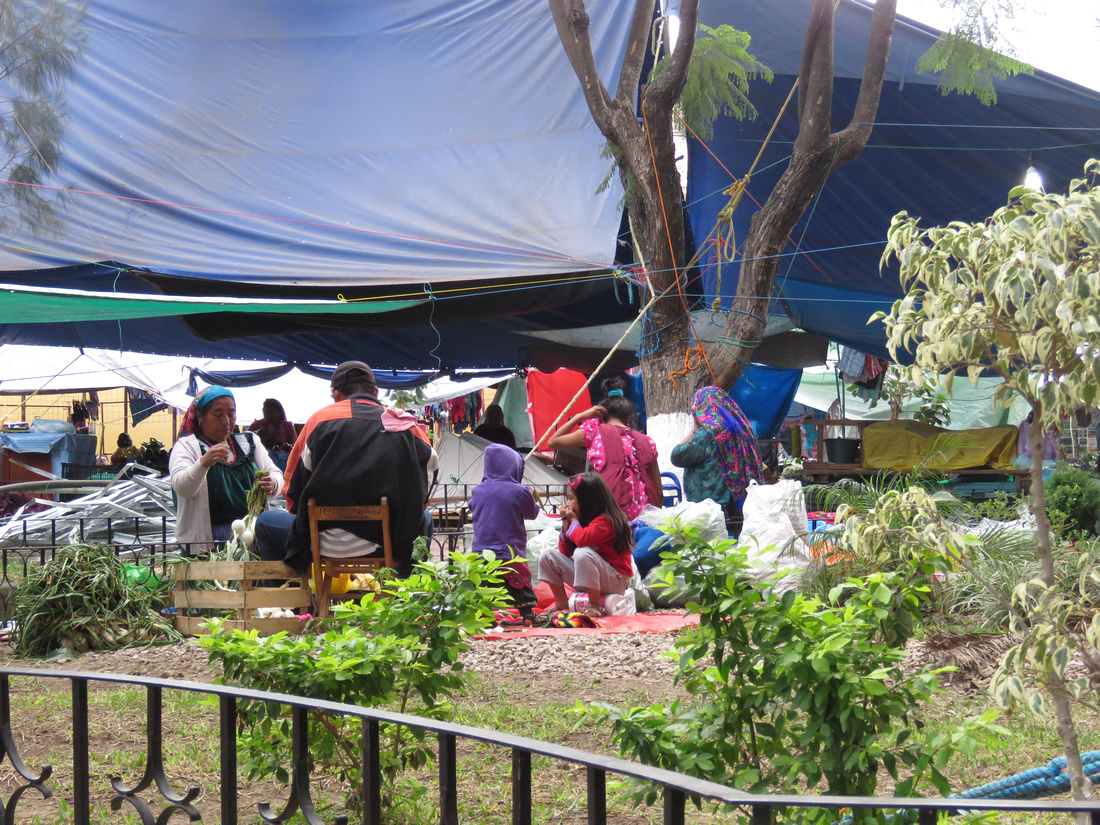
Trees are painted with lime to keep the ants out of the trees. Everything stable is used to anchor tarps.

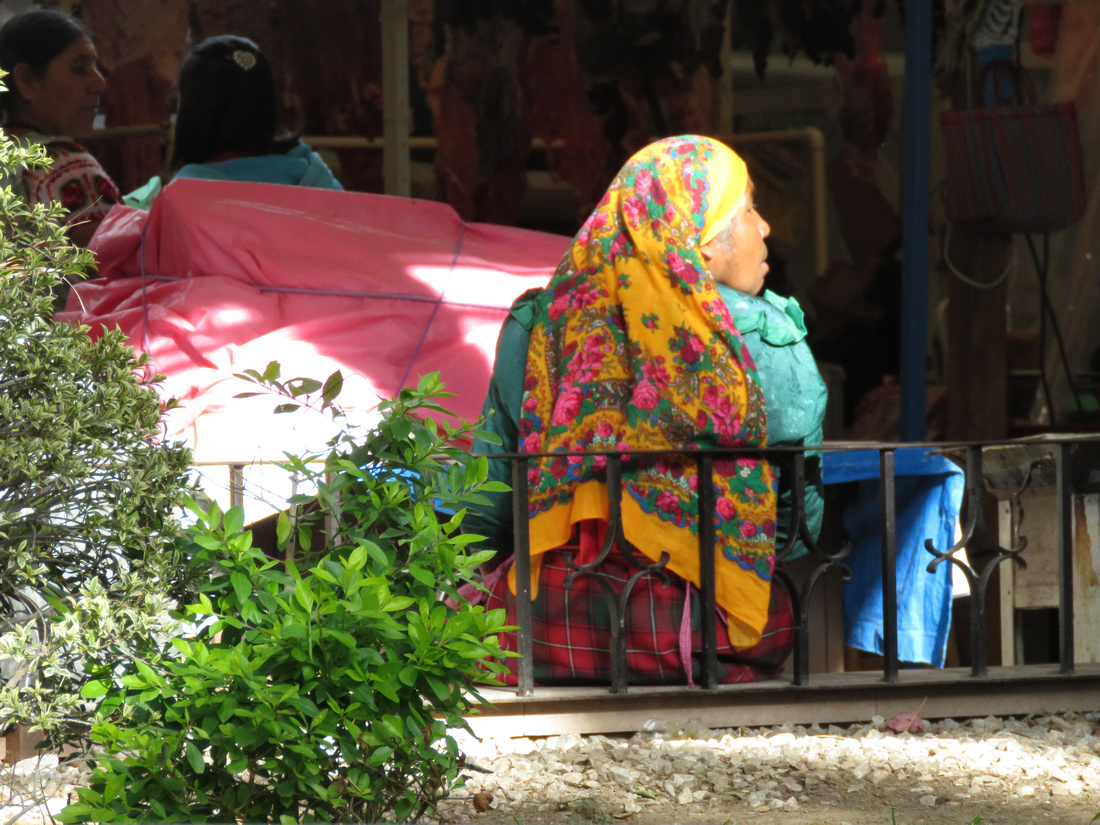
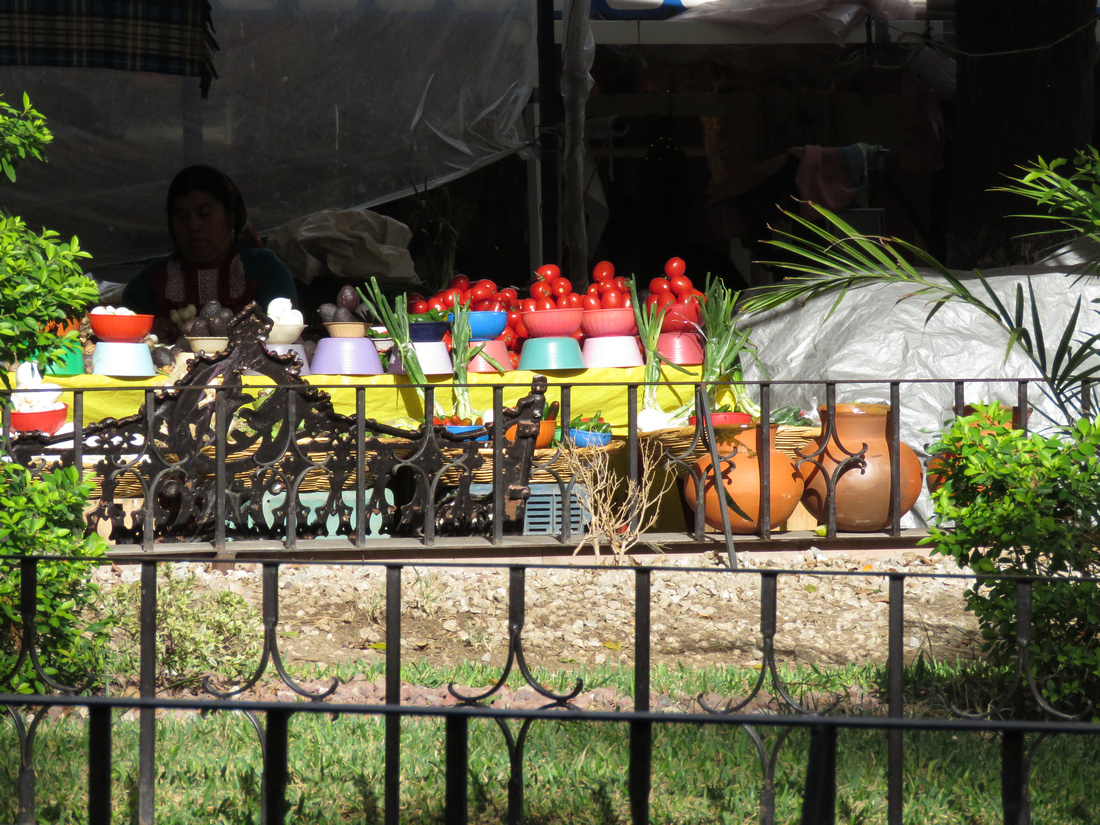
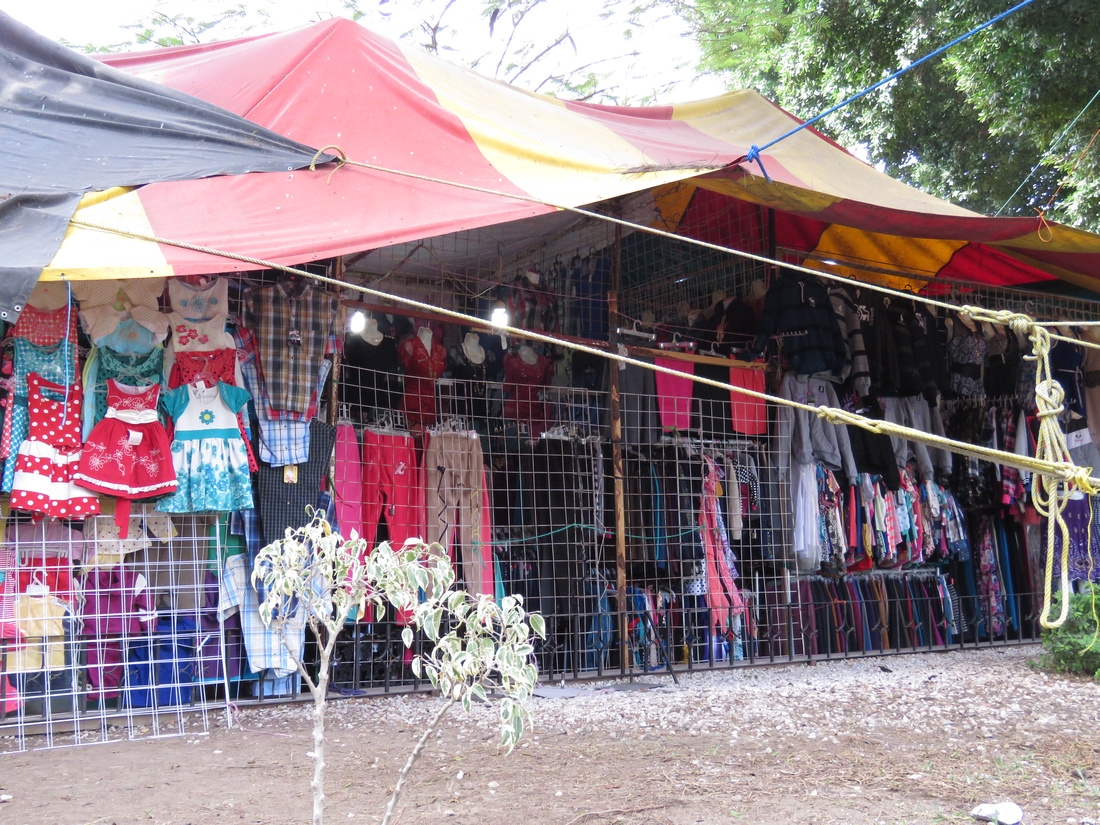
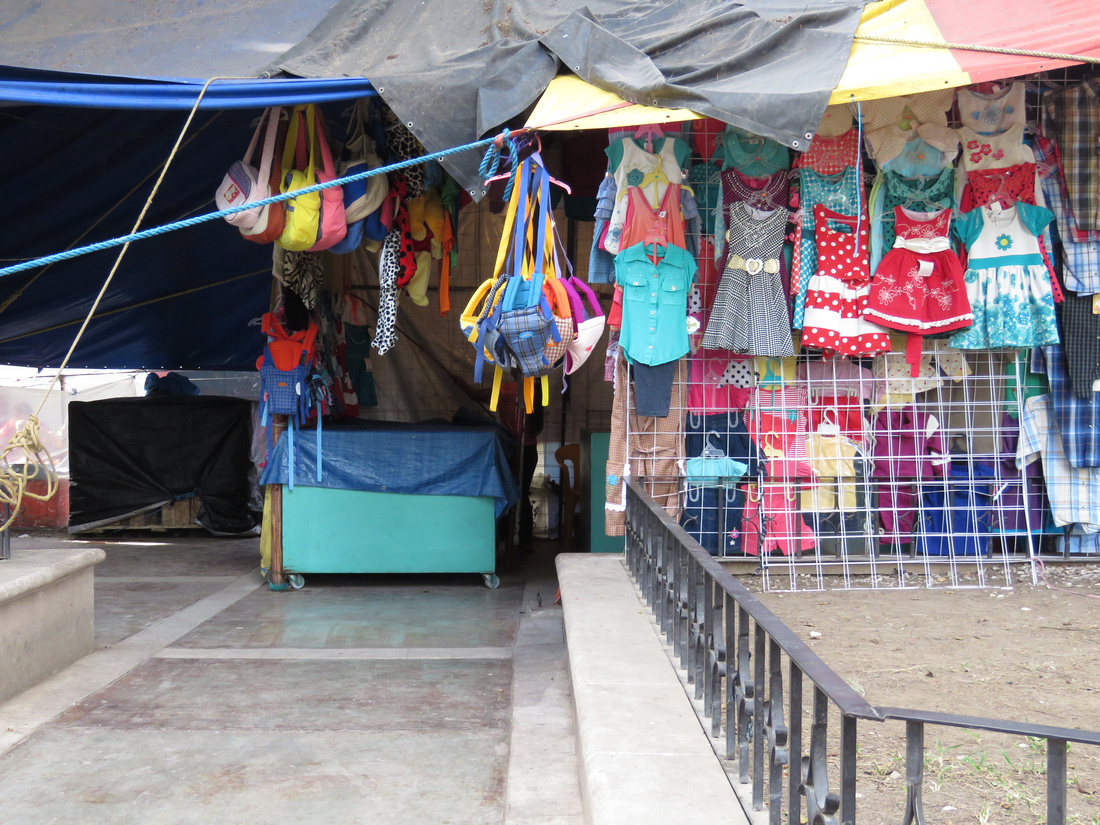
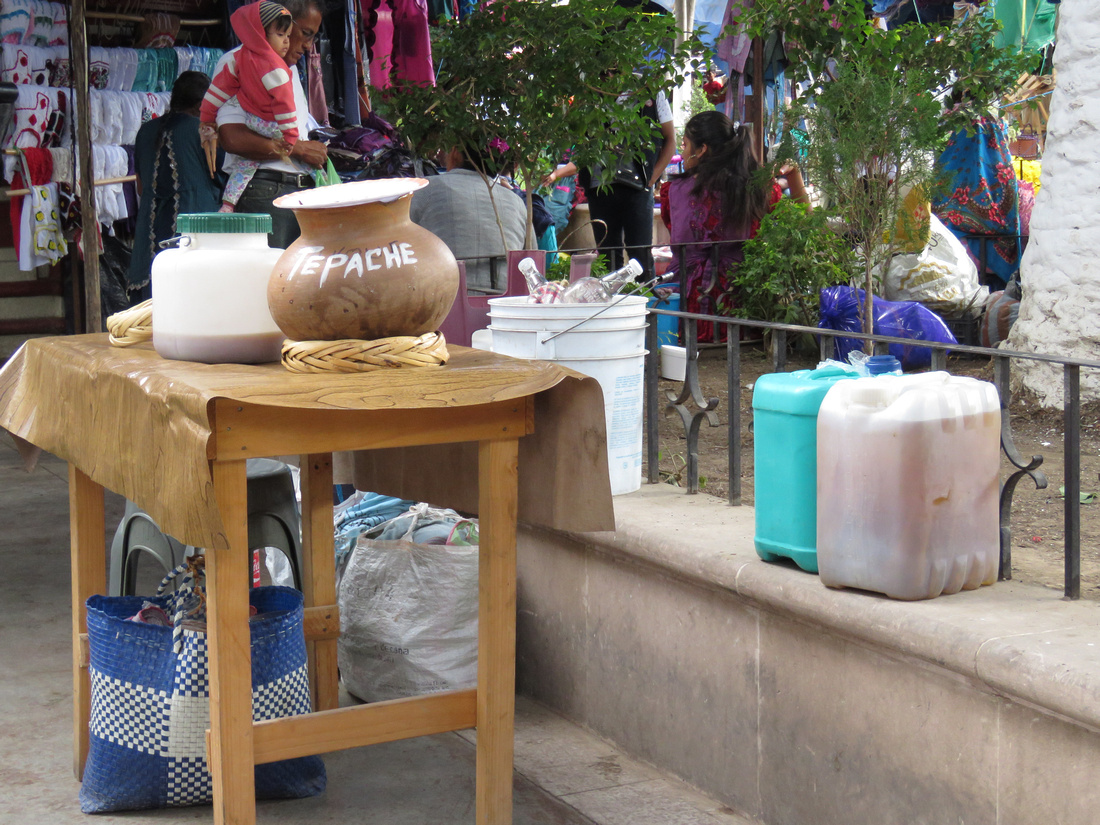
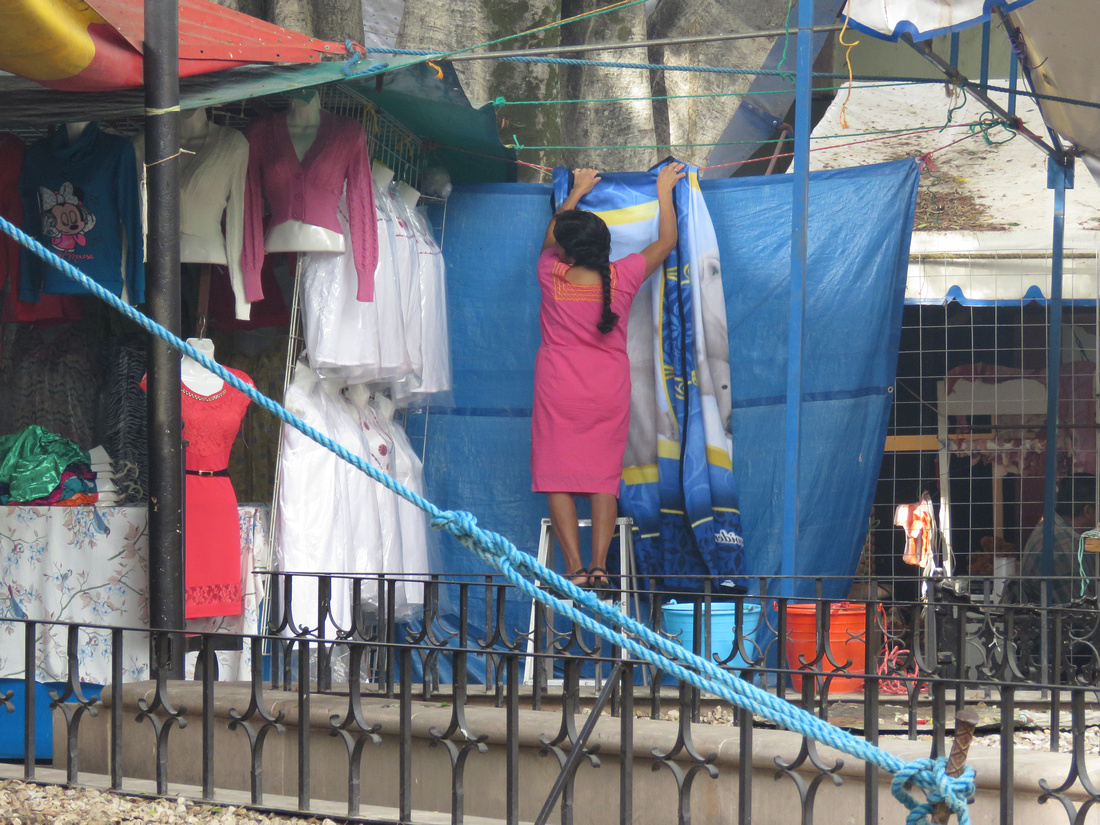

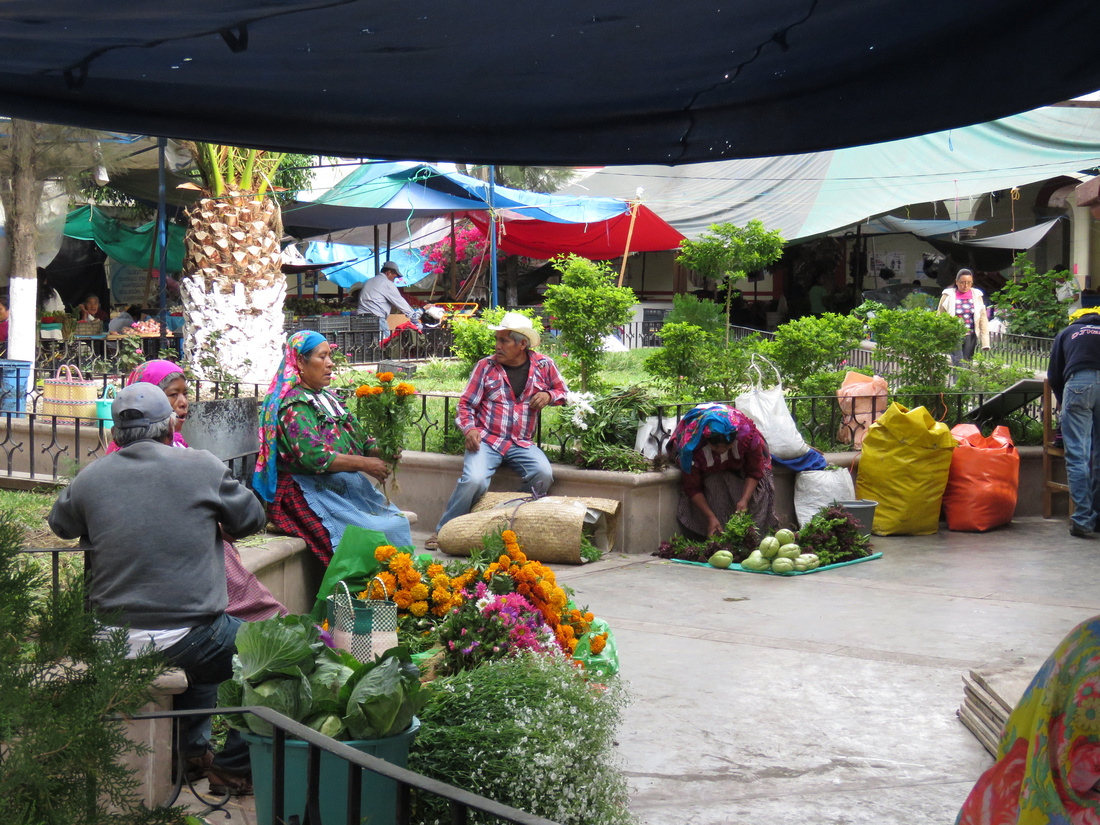

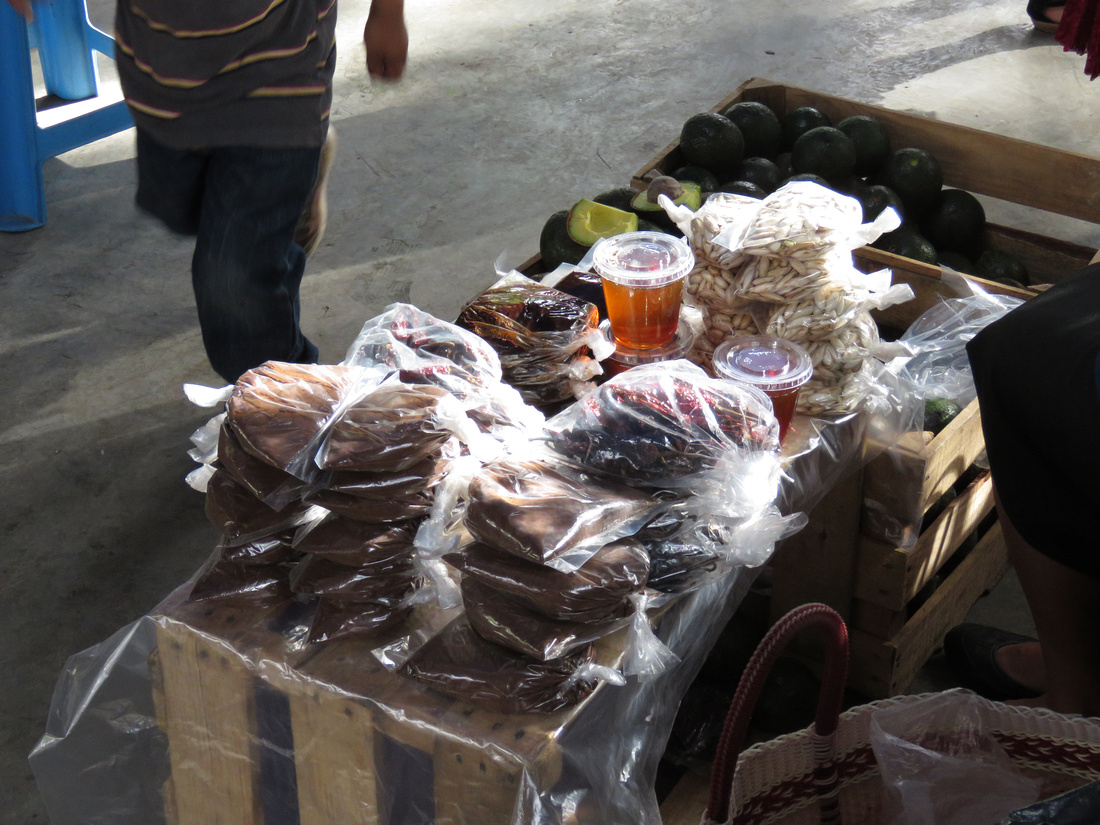

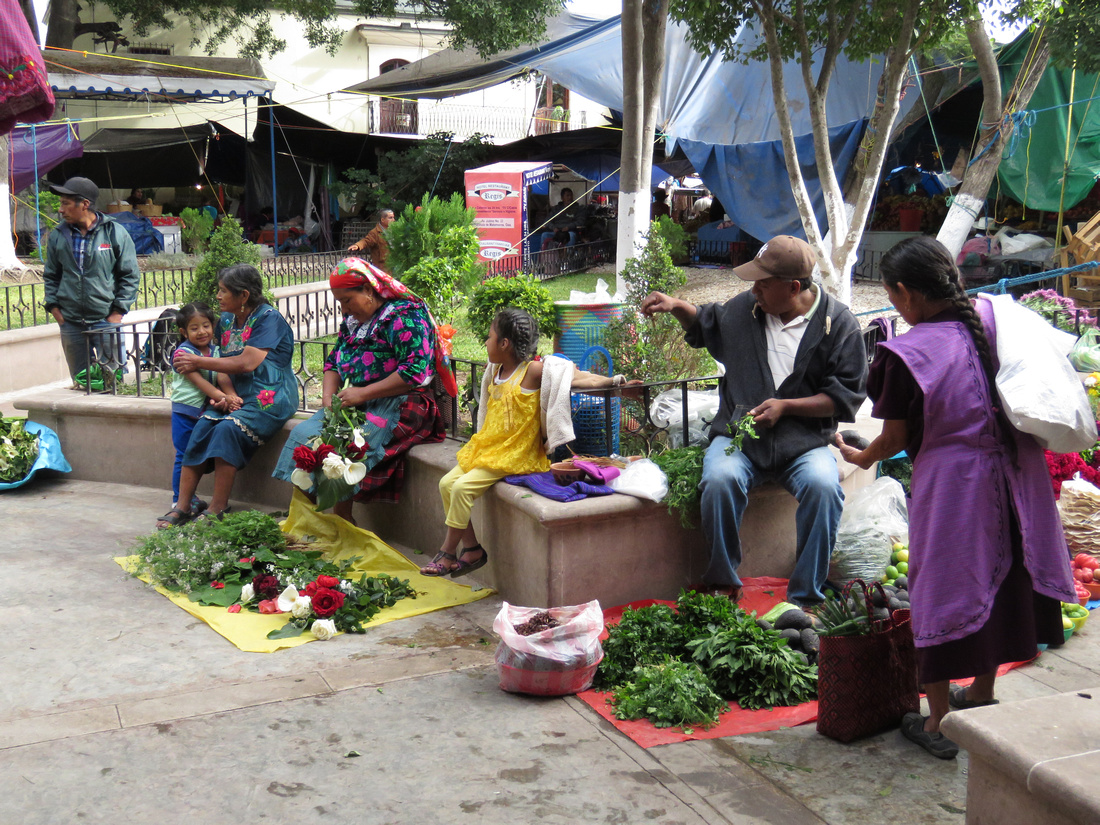
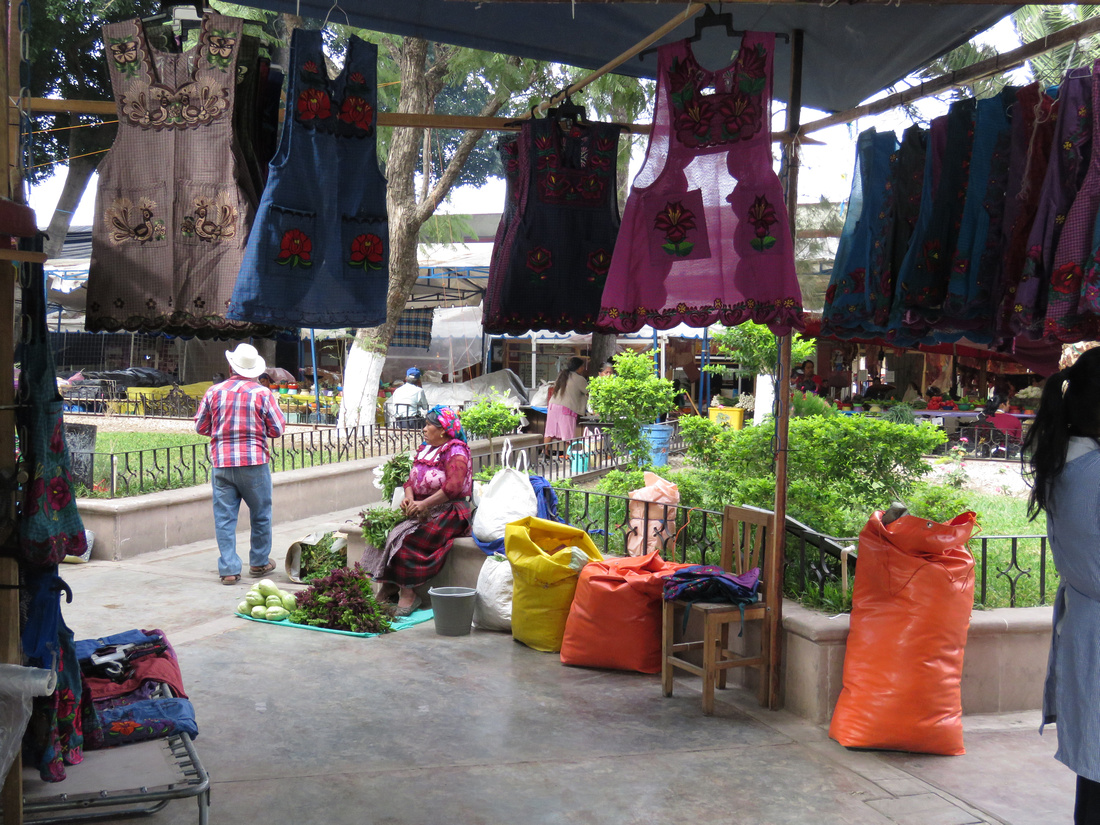
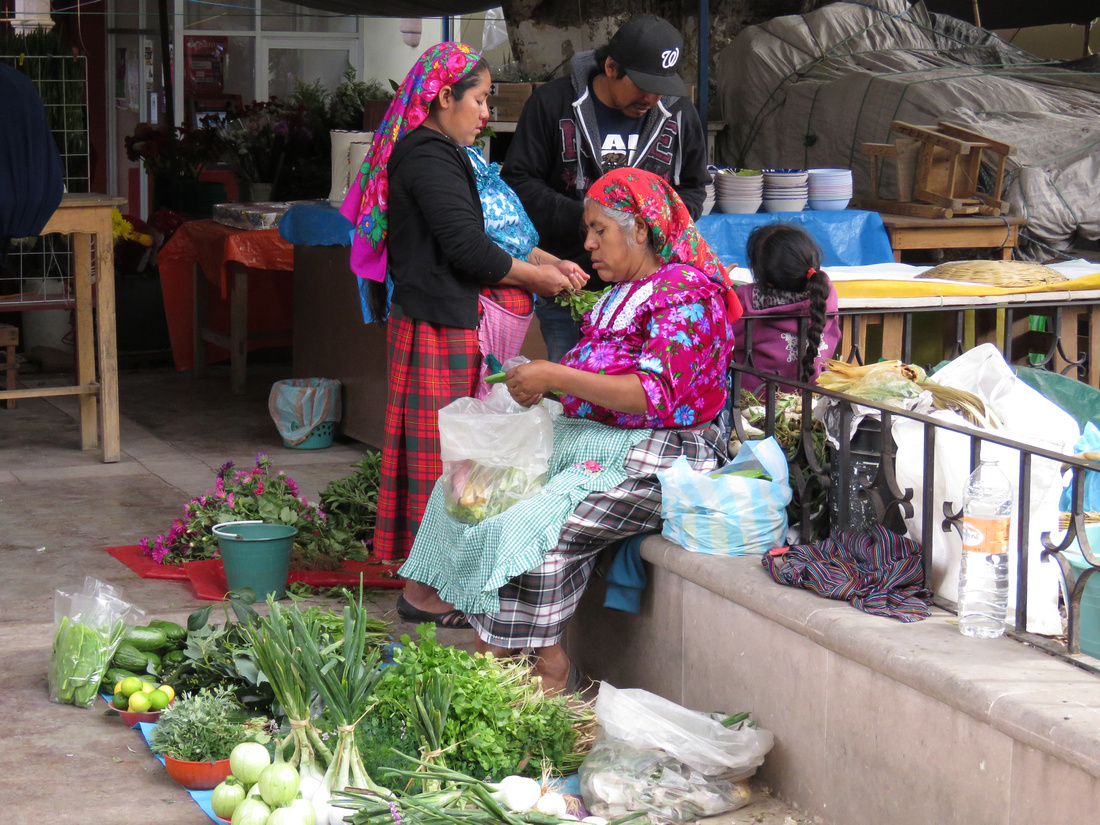
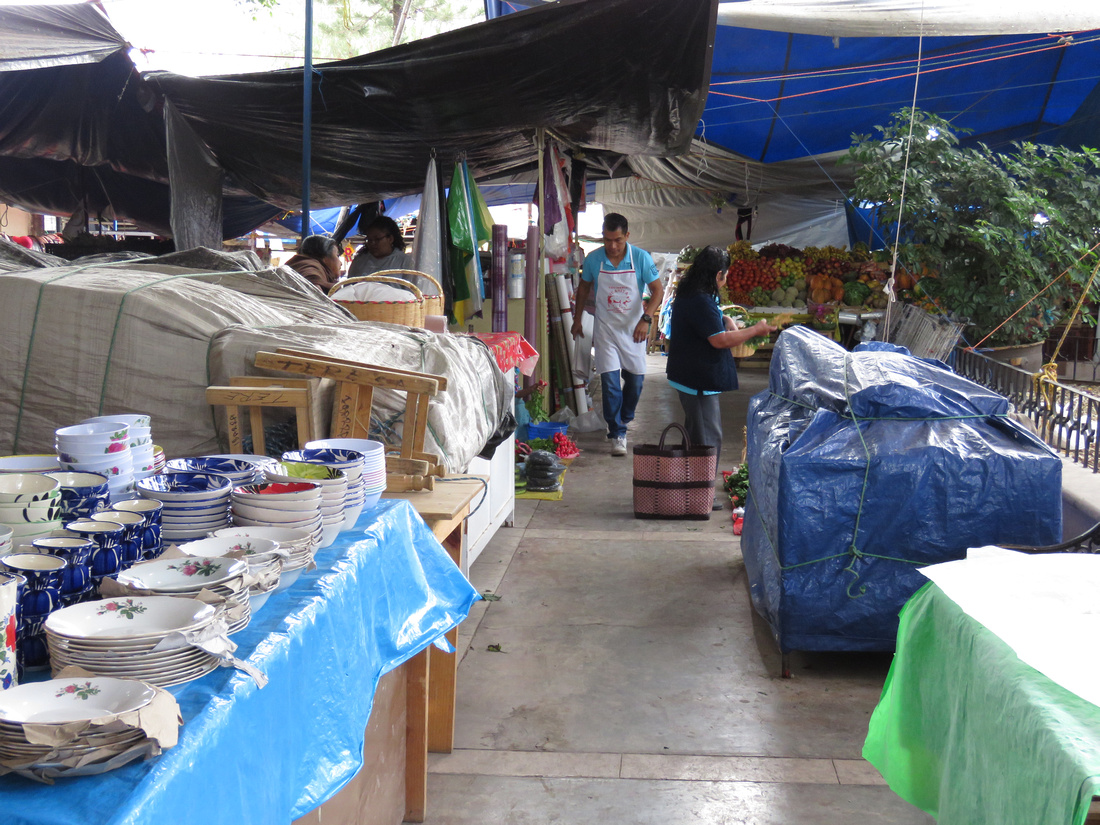

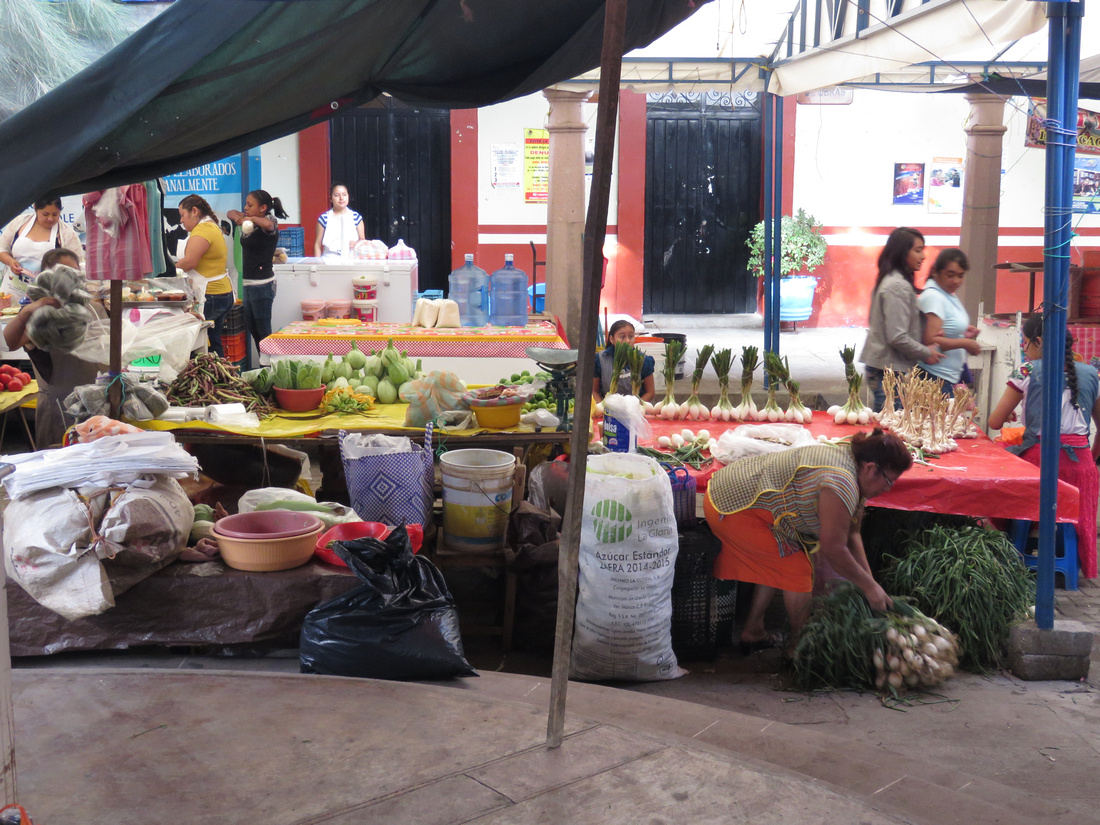
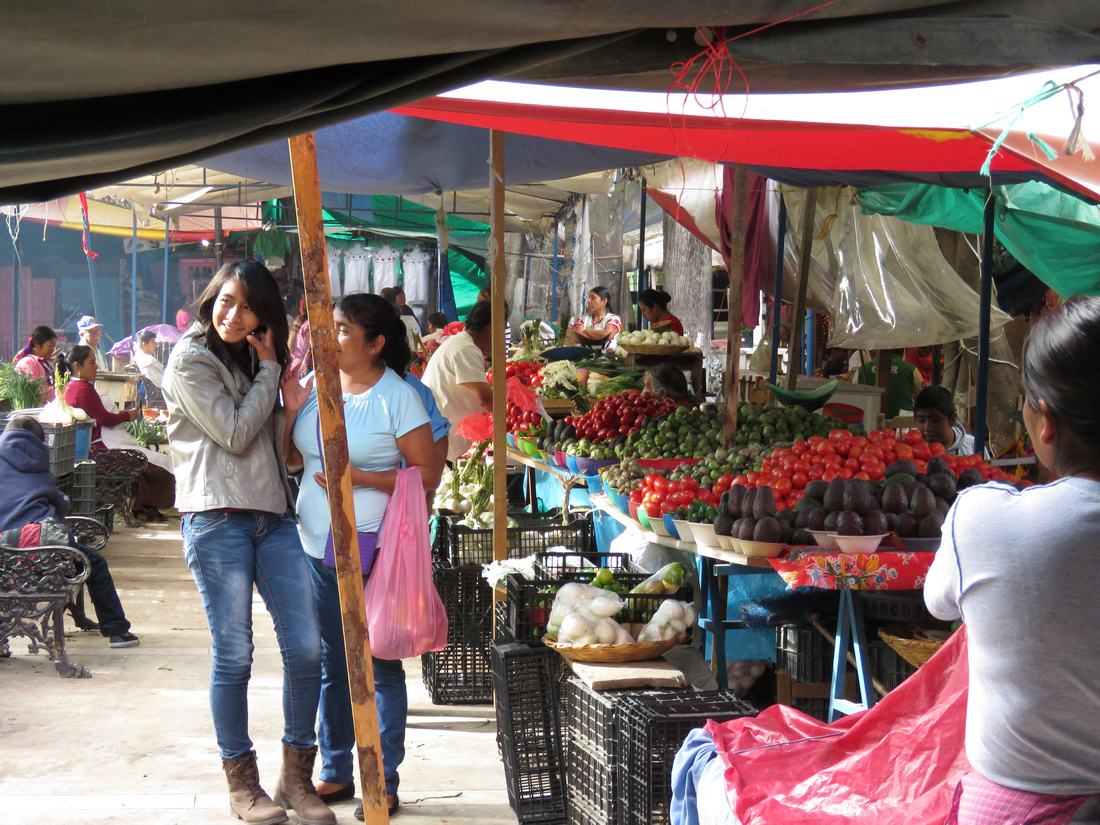
We seldom buy meat at the market. We are much more comfortable buying meat that's wrapped and stored in a refrigerator.
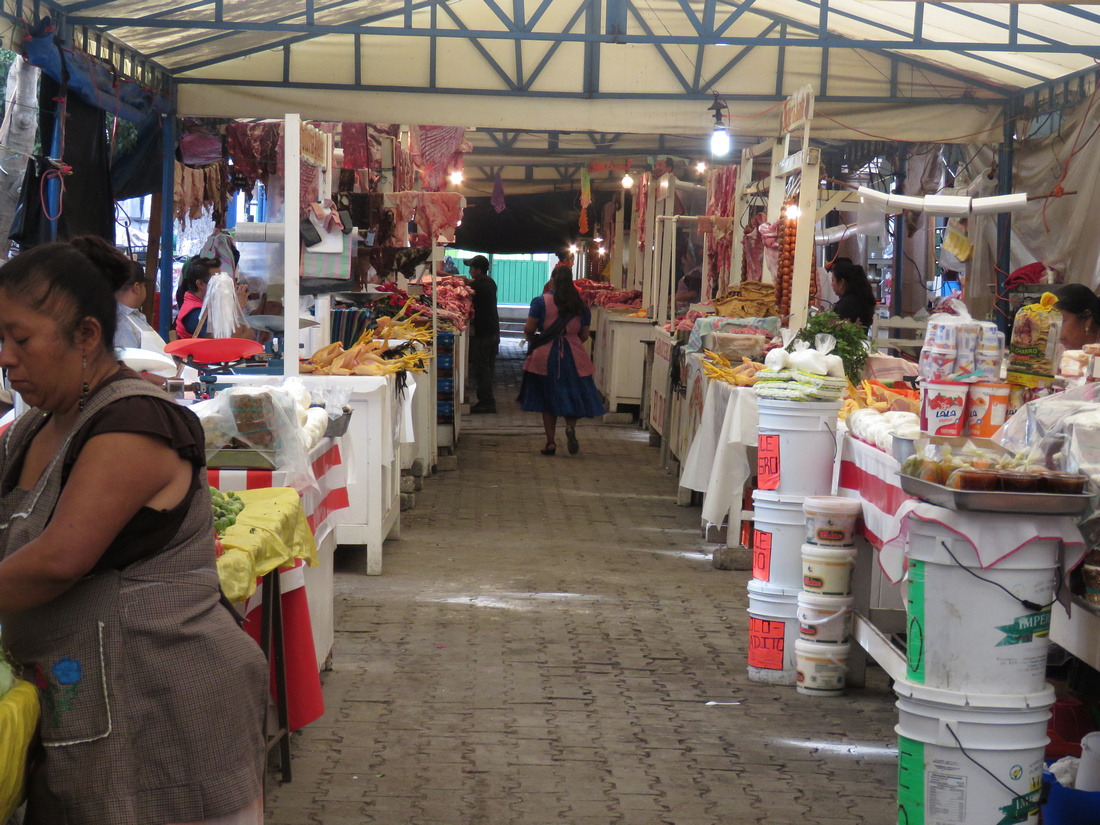
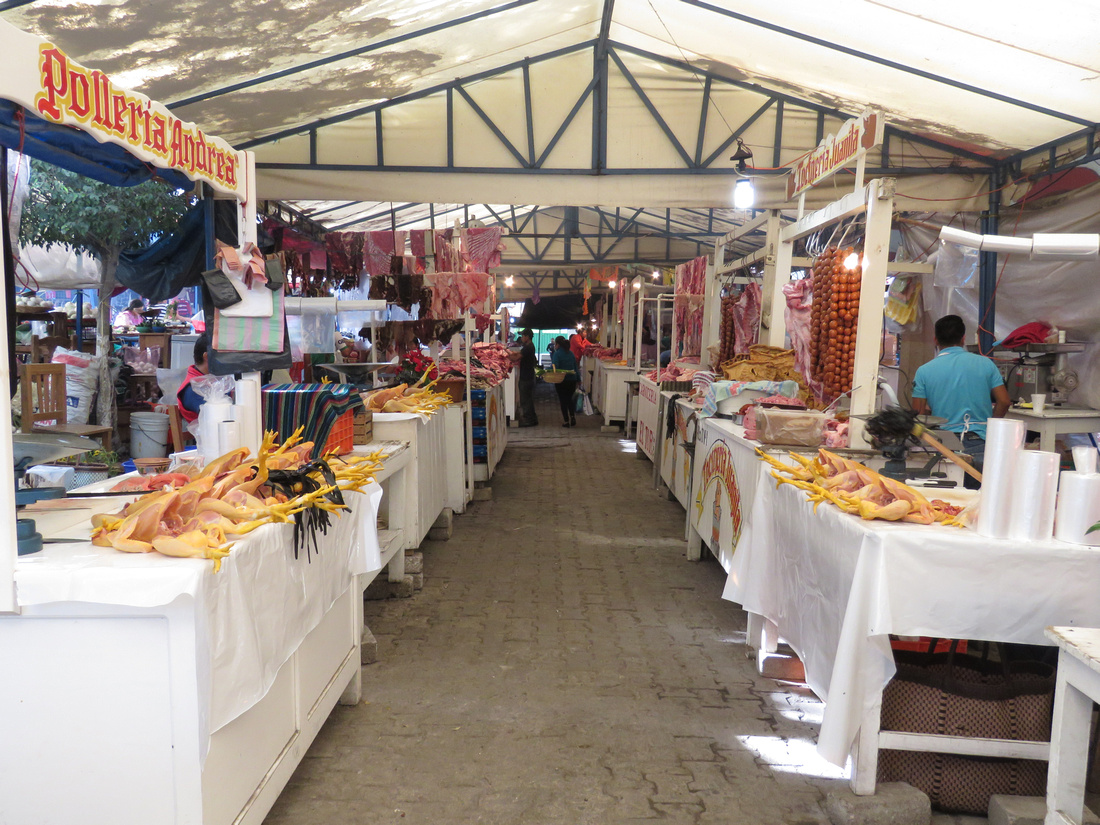

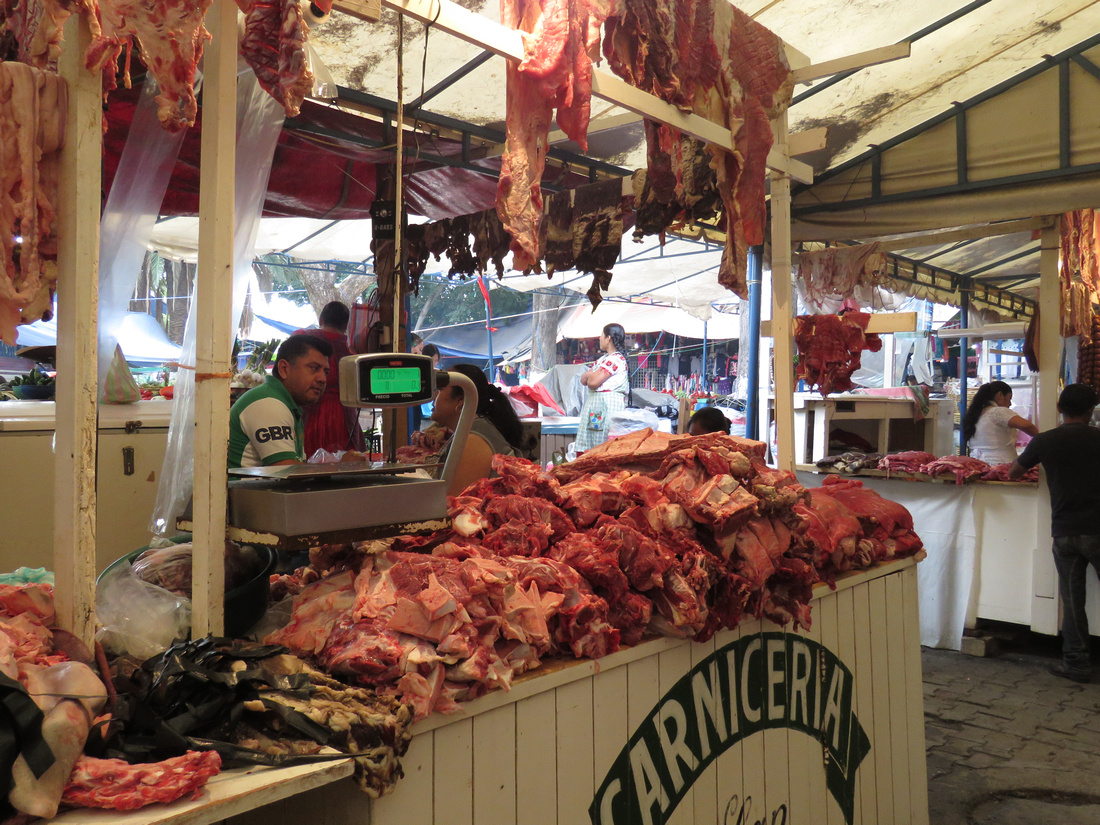
The police allowed me to take a photo showing the inside of the jail. In the past women and children lived inside with their incarcerated fathers and/or husbands.
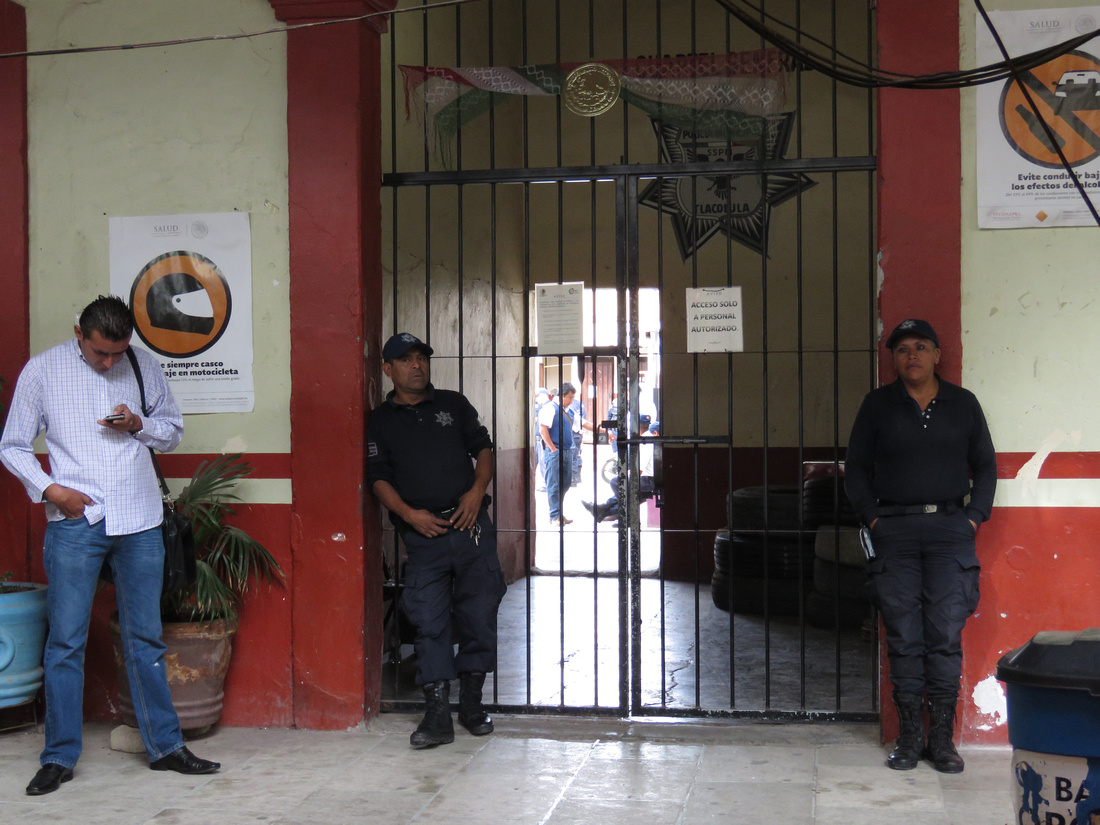
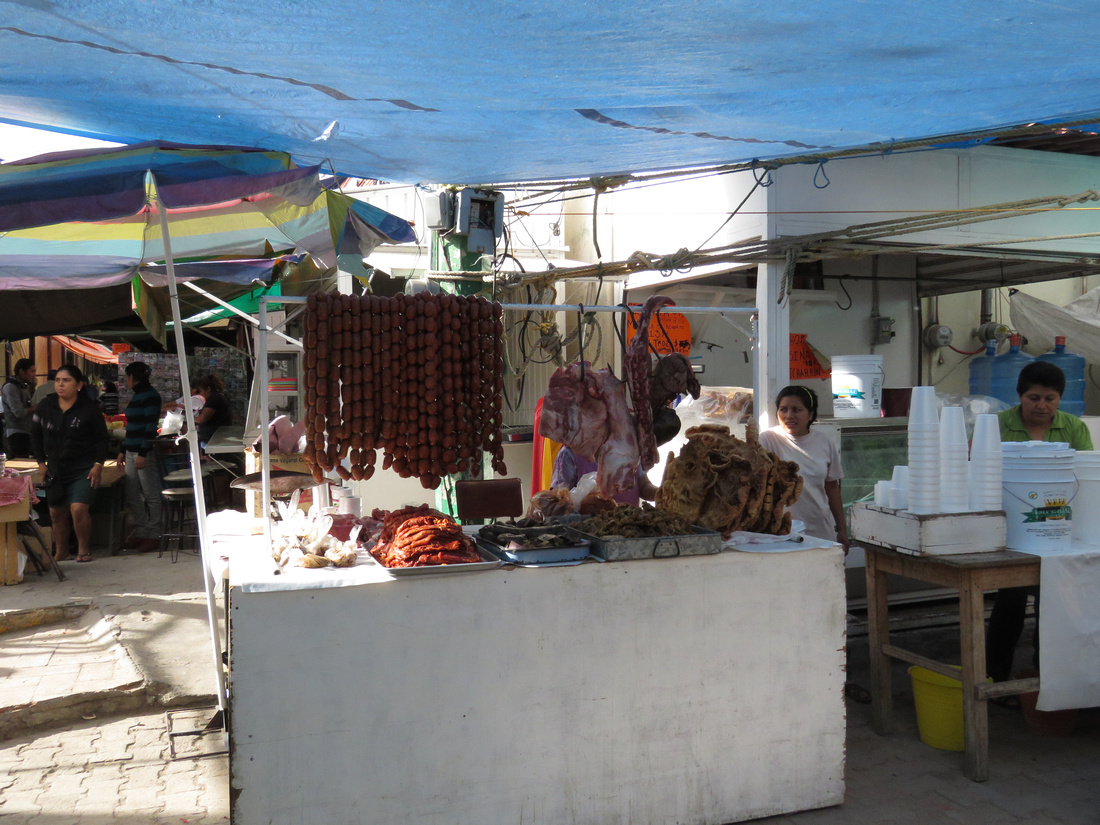
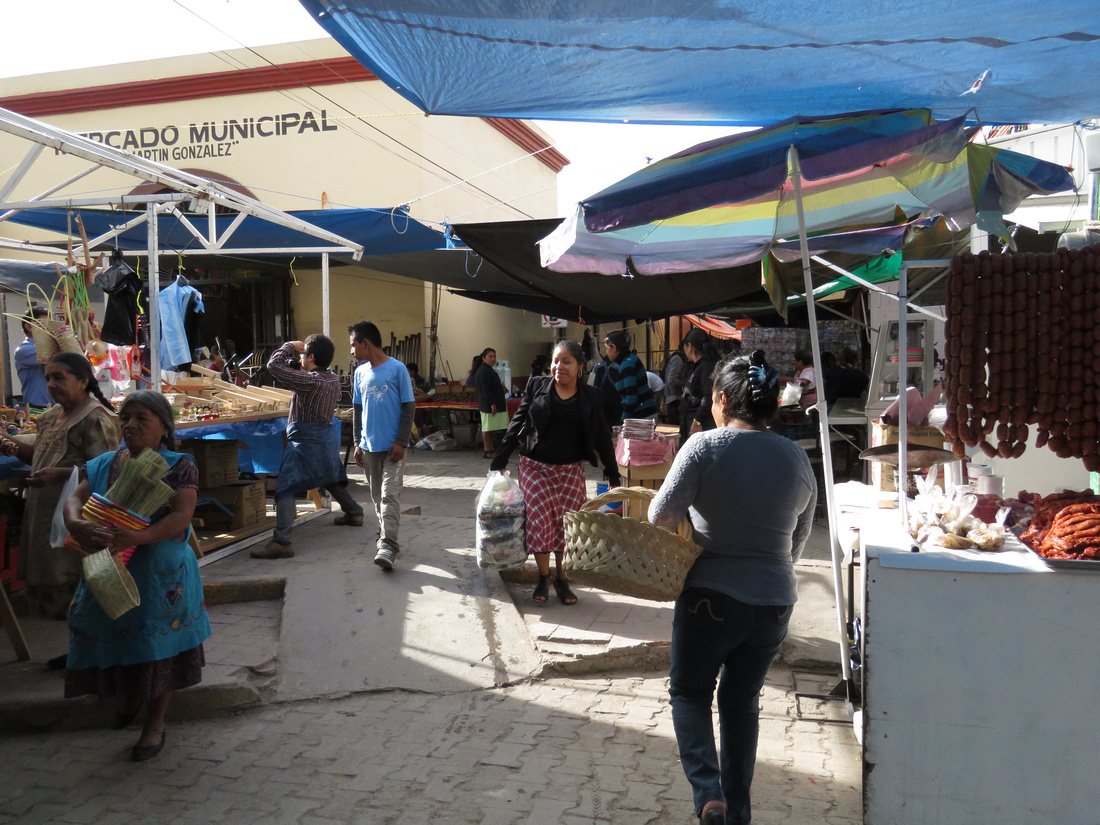
We go to the market early so there aren't many people. By twelve o'clock it's difficult to move

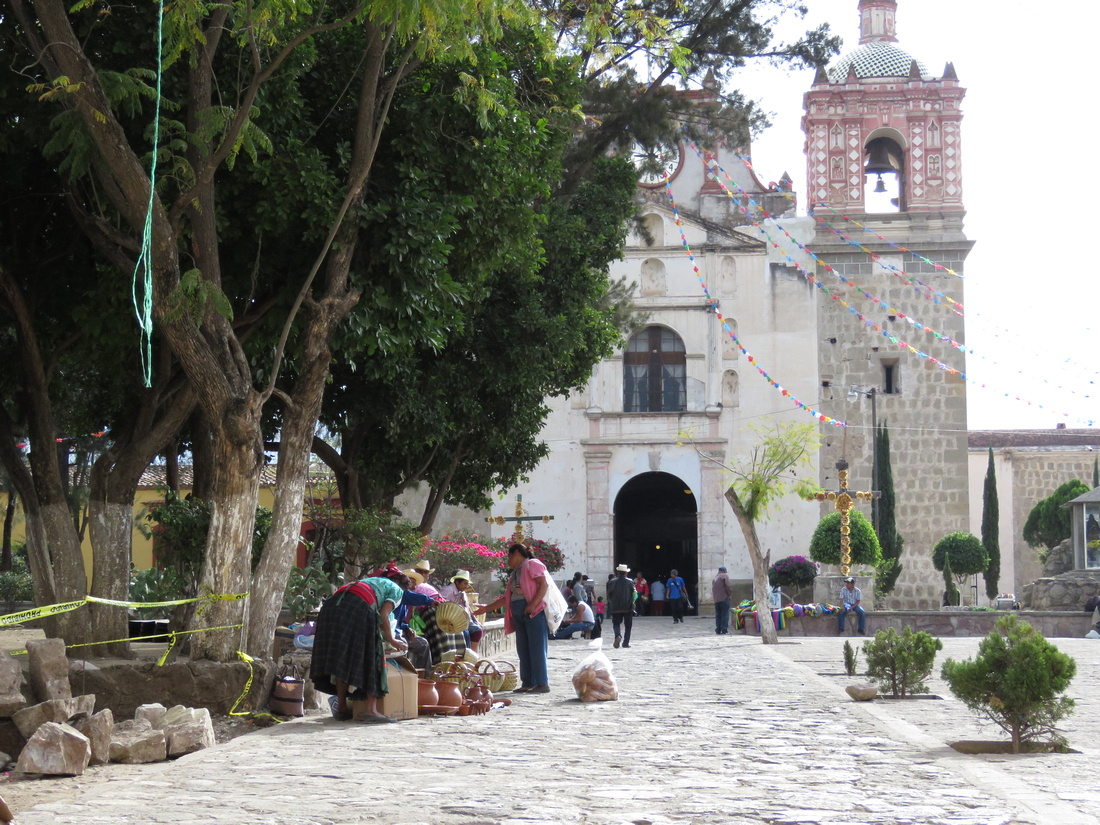
We still haven't acquired a taste for these toasted grasshoppers.




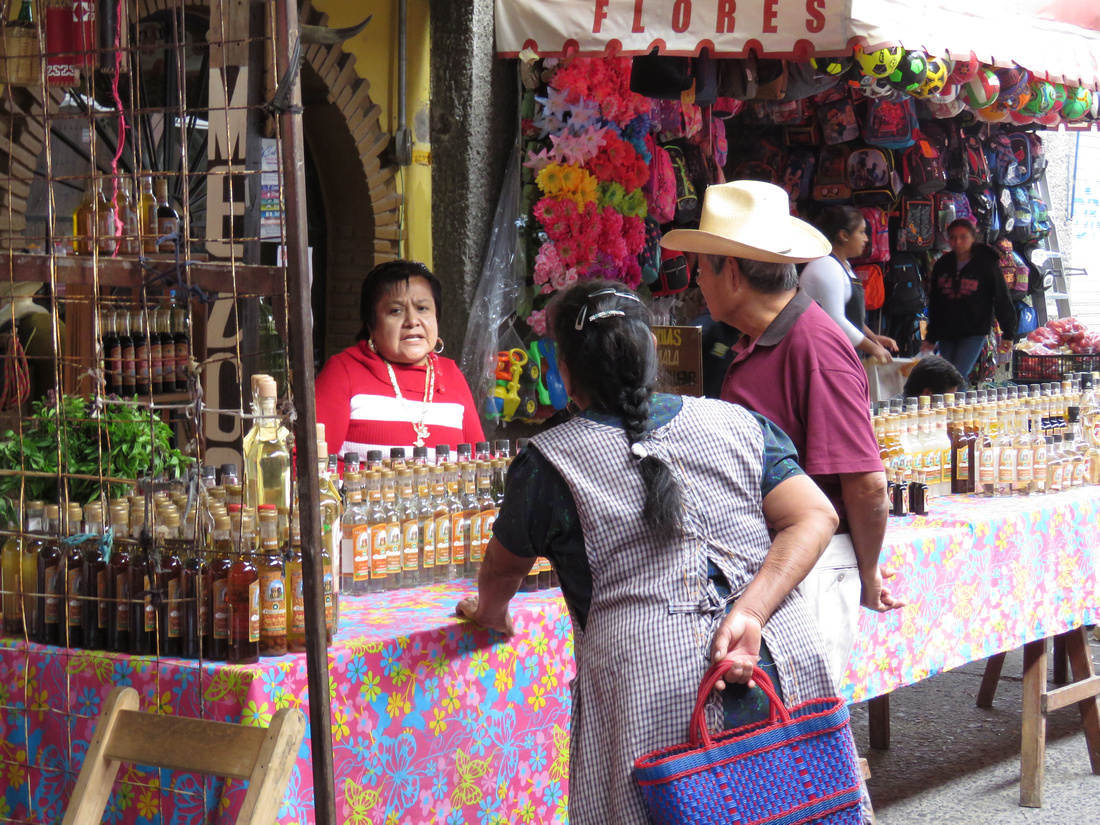
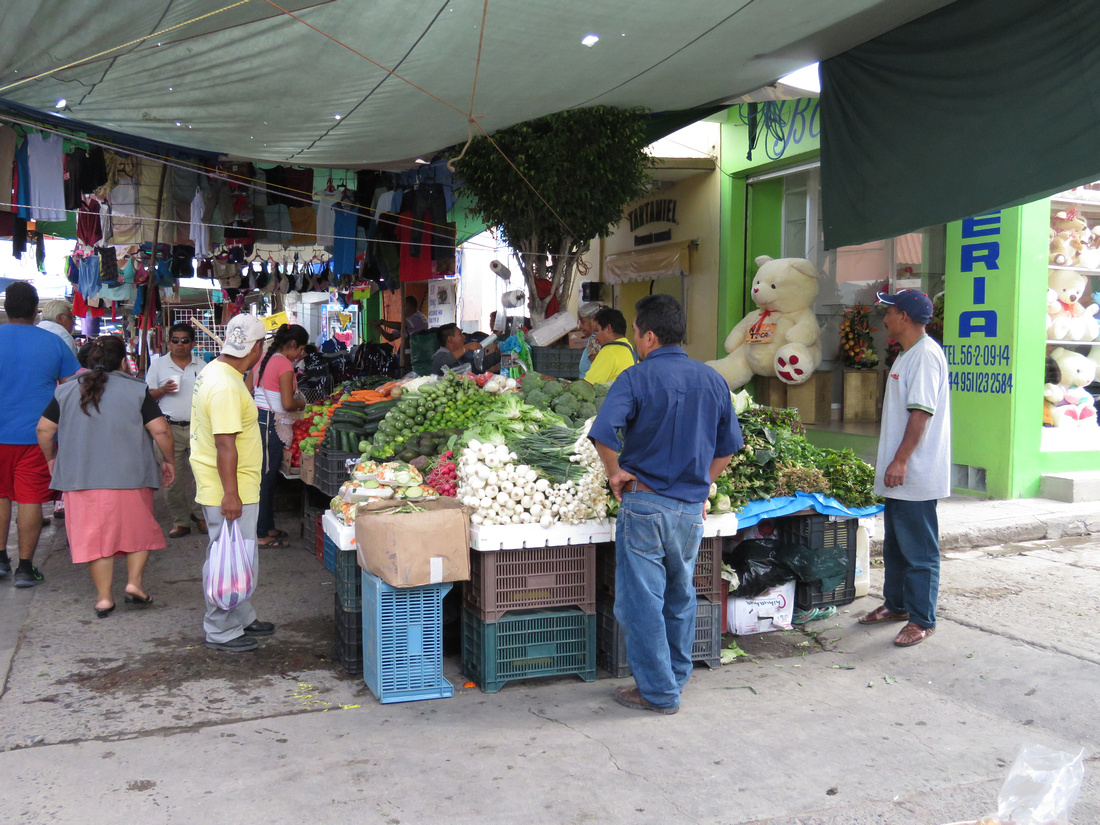
There's not much control over pirated movies and music. Three movies are about three dollars.
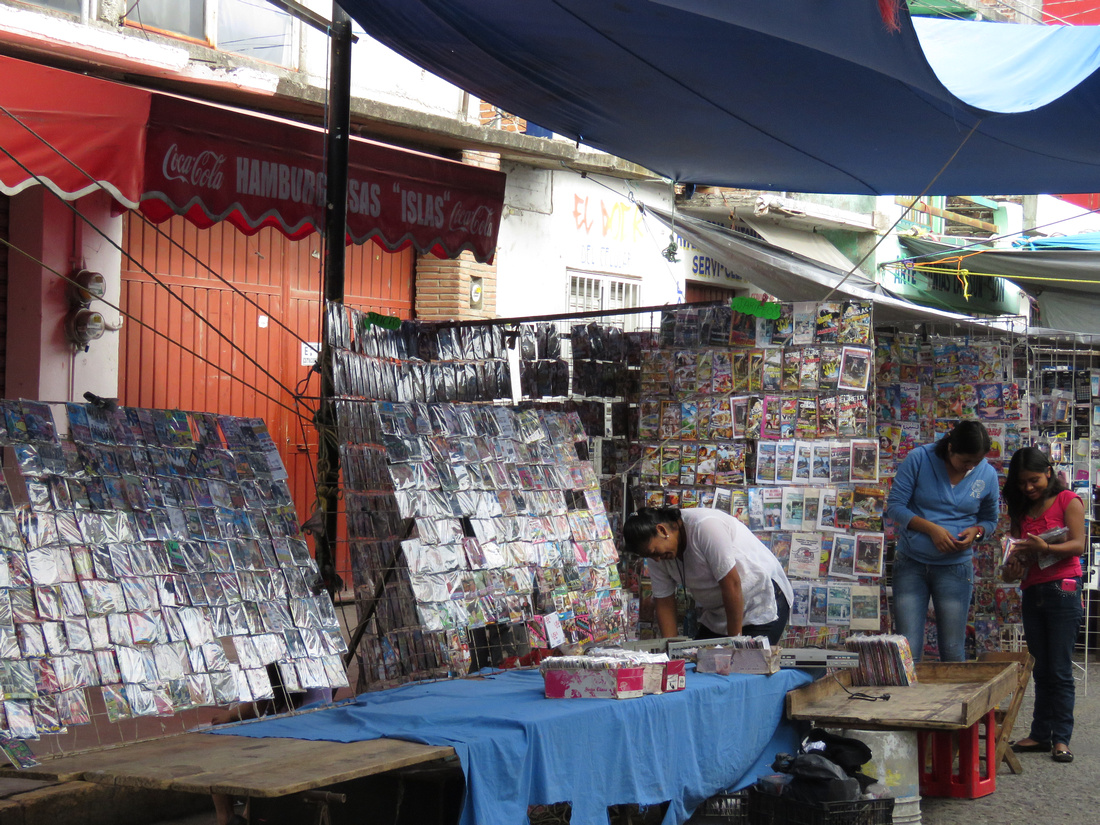
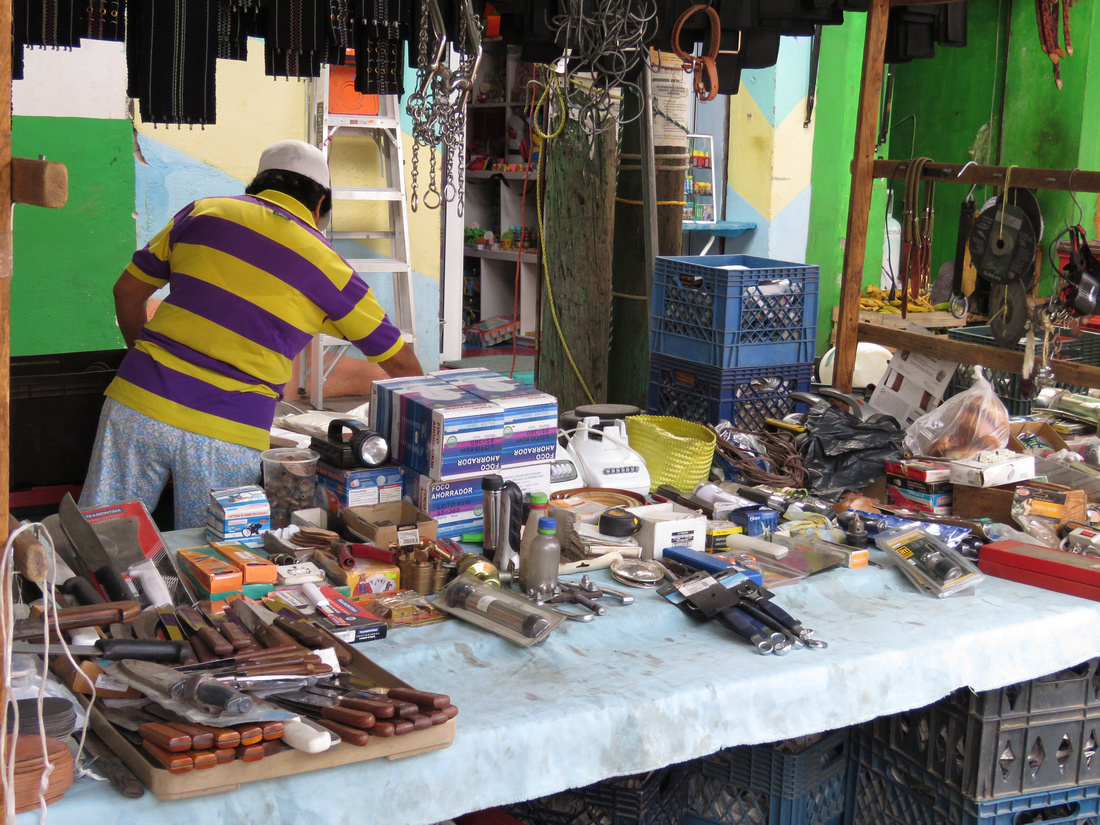
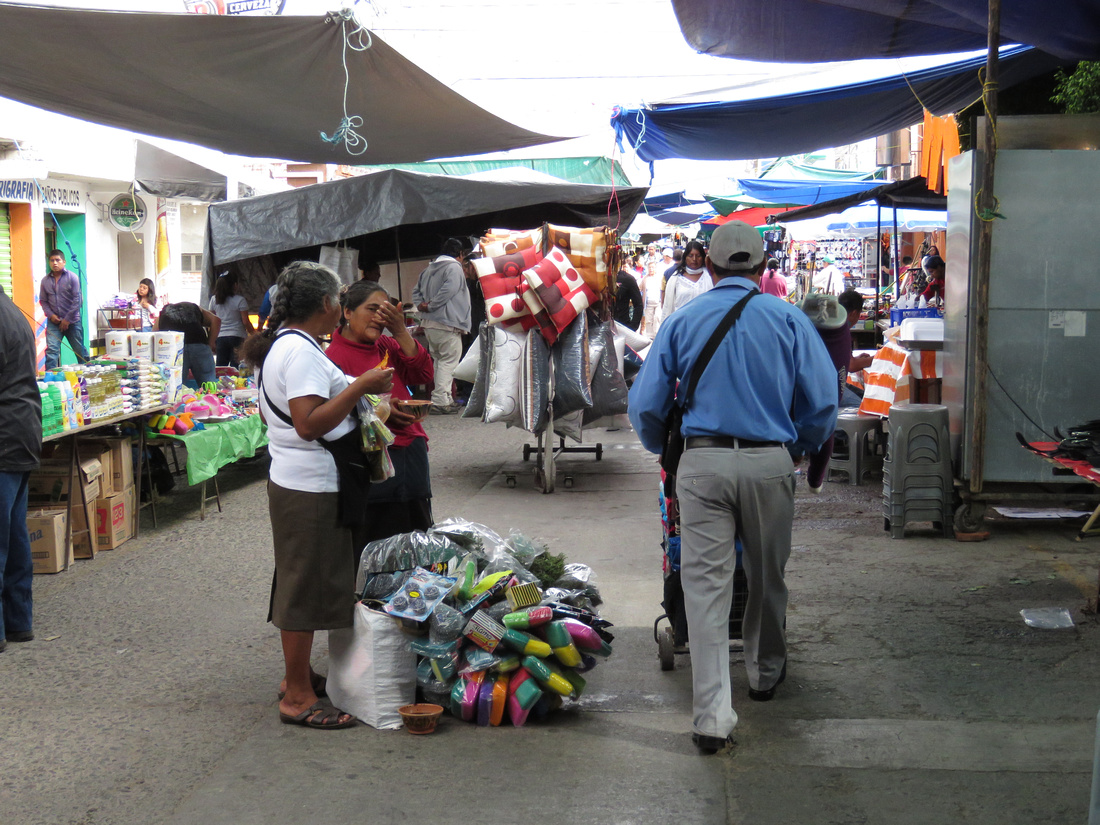


We often buy from this young woman and her mom; nevertheless, the woman refused to be photographed. The mom enjoyed her daughter's embarrassment.
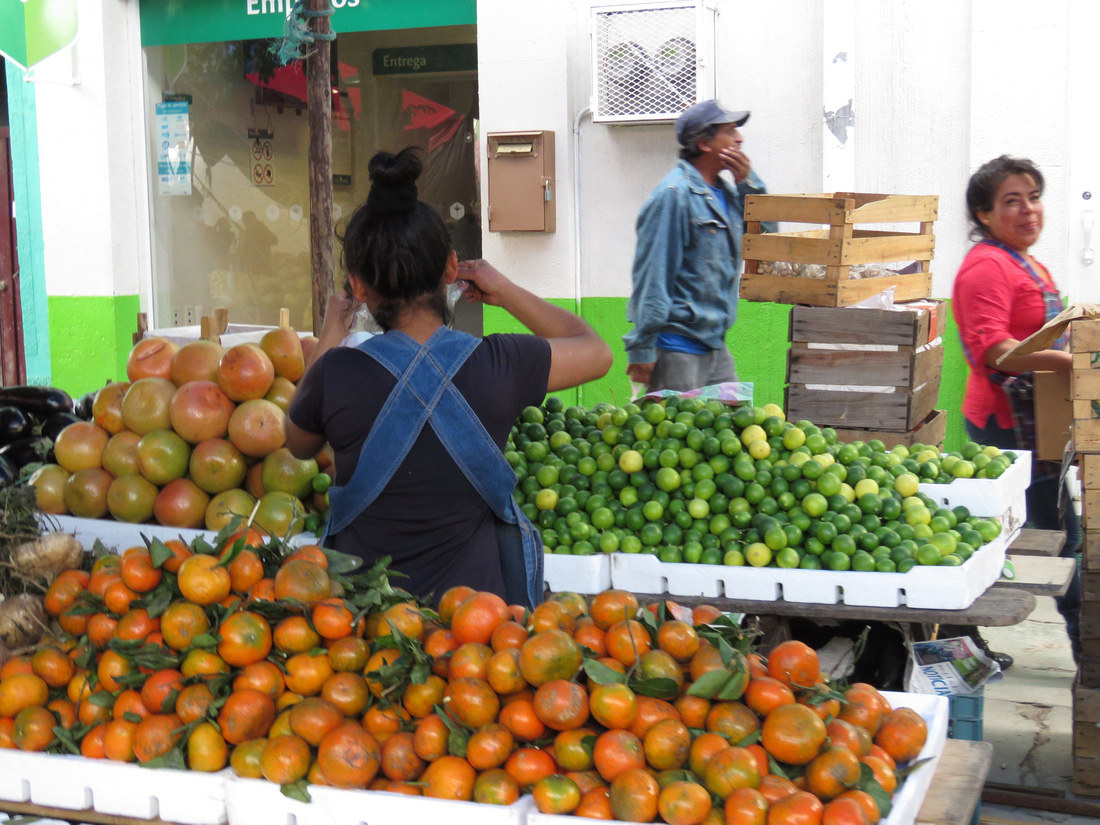

We buy a lot from this young man. Like many other vendors, he makes his living traveling around the valley selling on each villages' market day.
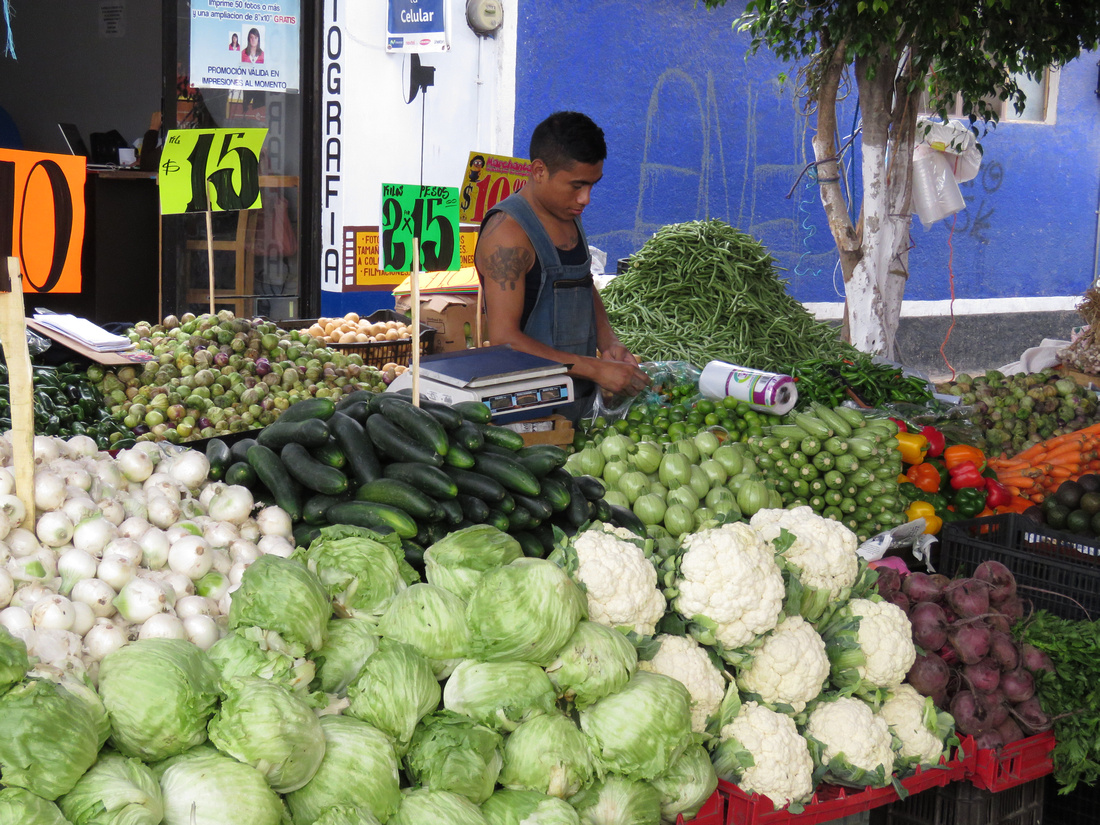
There are about eight cellphone stores on the main street alone. The last few months I noticed that many new stores were opening in Tlacolula. Then I read that more Mexicans are returning rather than traveling to the US. I would guess that most of the new stores are opened by those that have returned with their saved money from working in America.
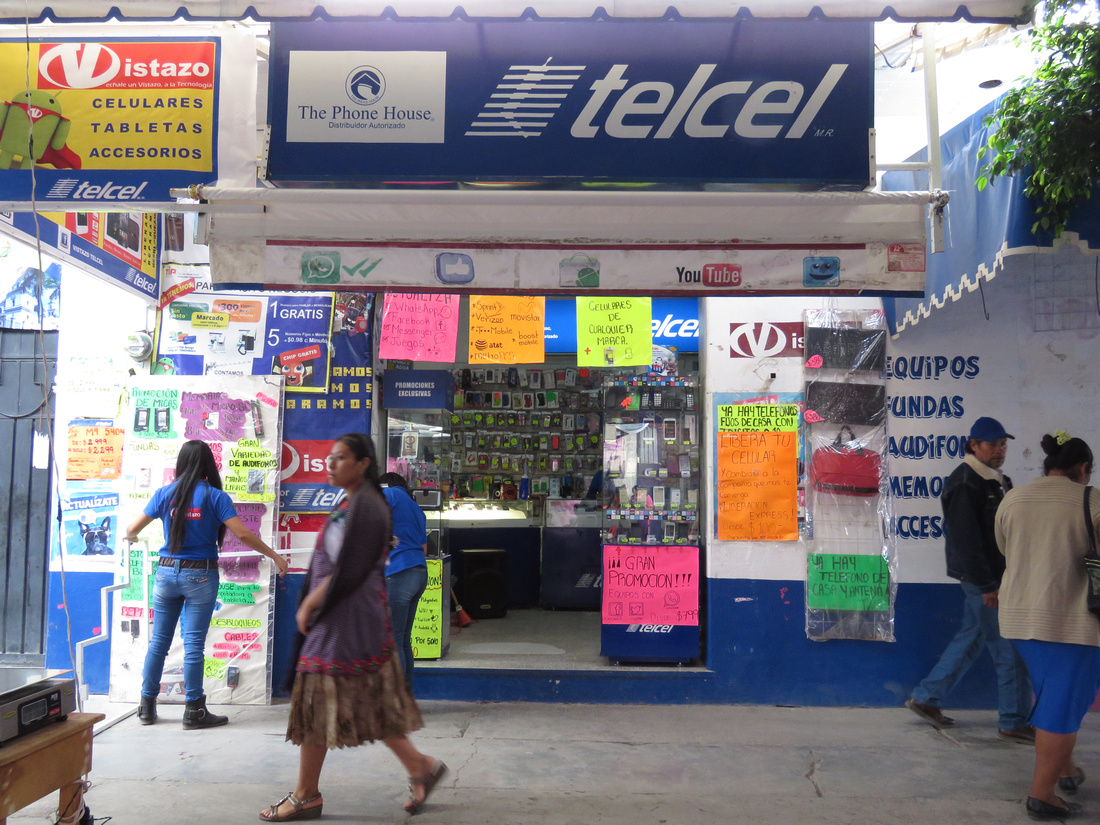
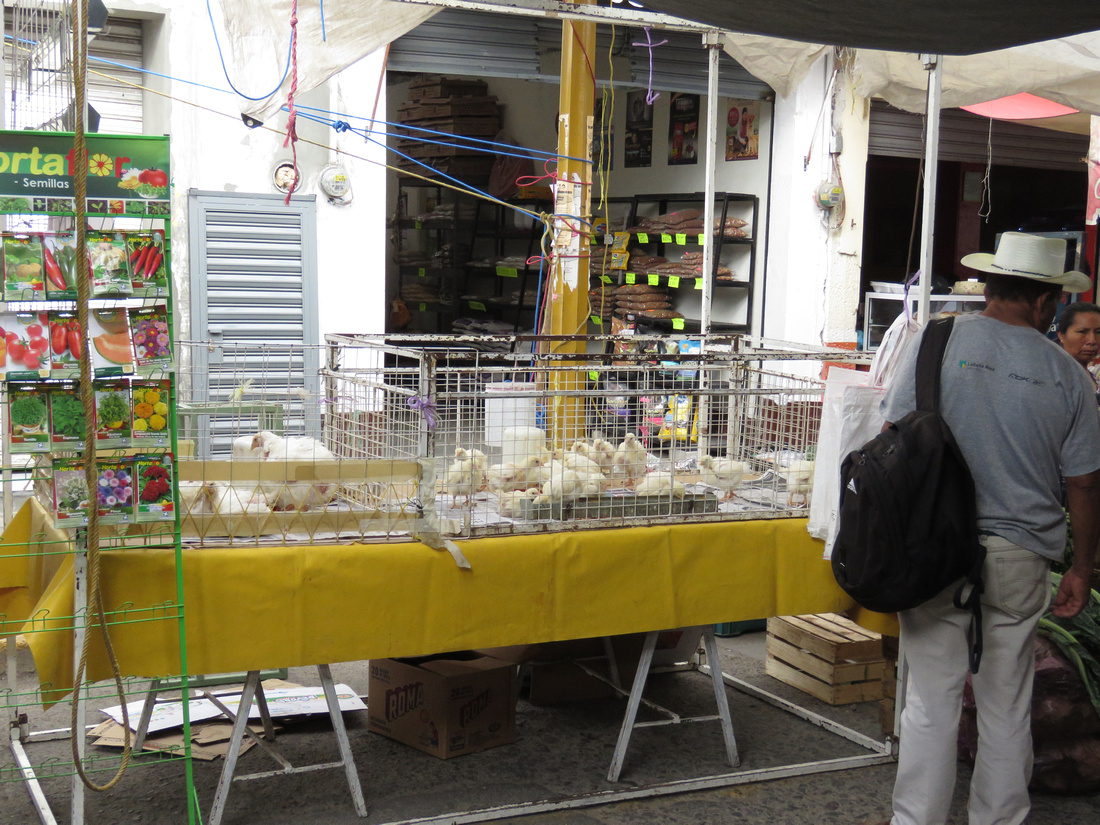
Locally made furniture is for sale on Sundays.
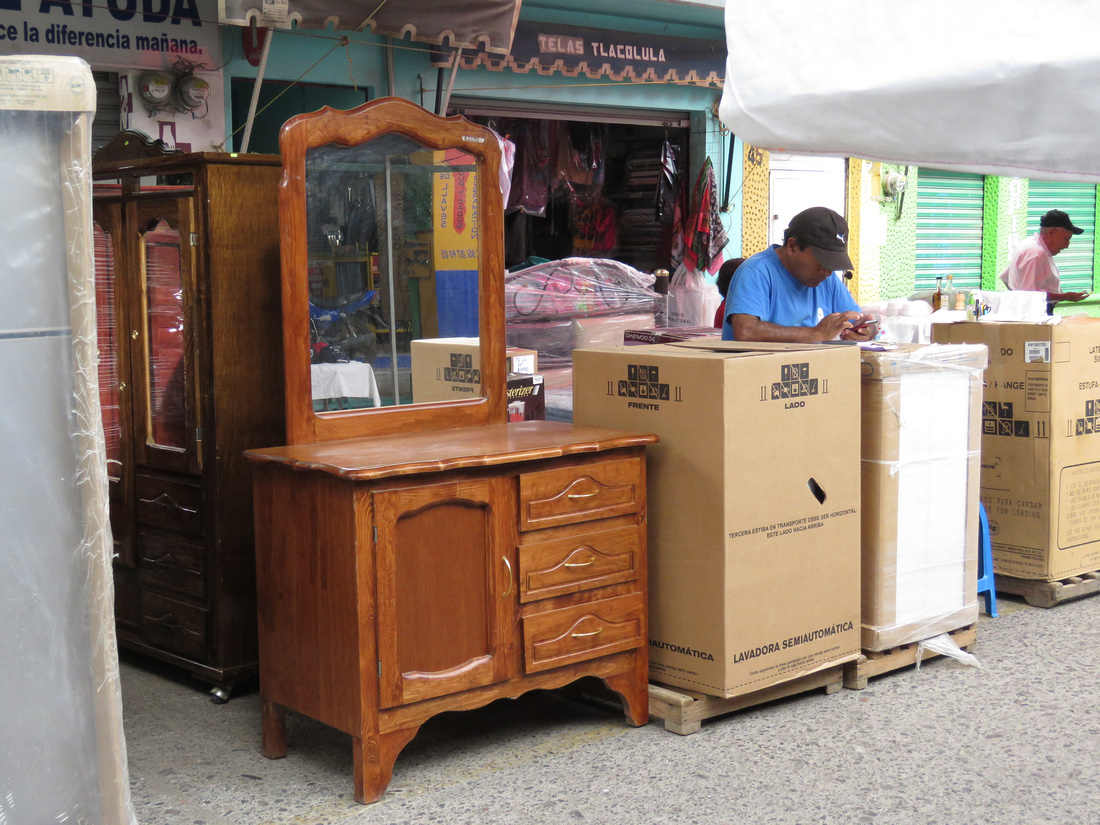
We don't often buy pork rinds but these are fresh and tasty.

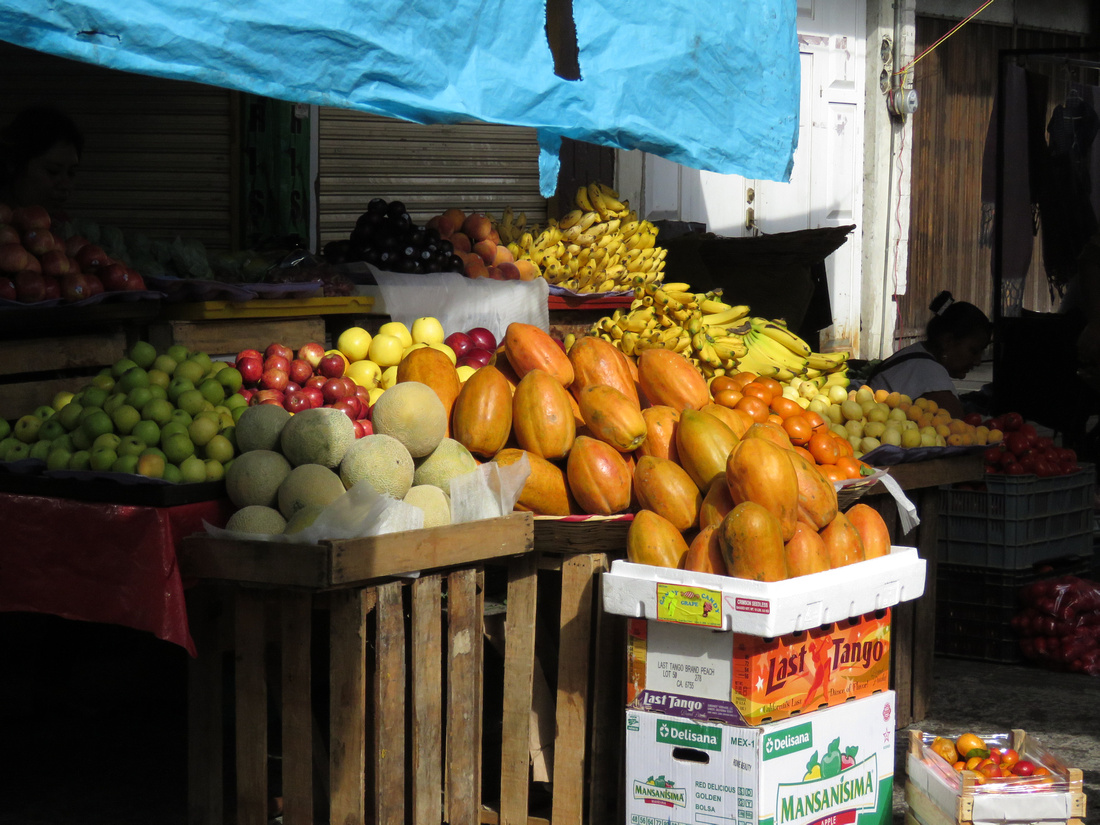

We consistently buy our watermelons from these folks. They are always sweet and firm. We also buy their oranges and pineapples.
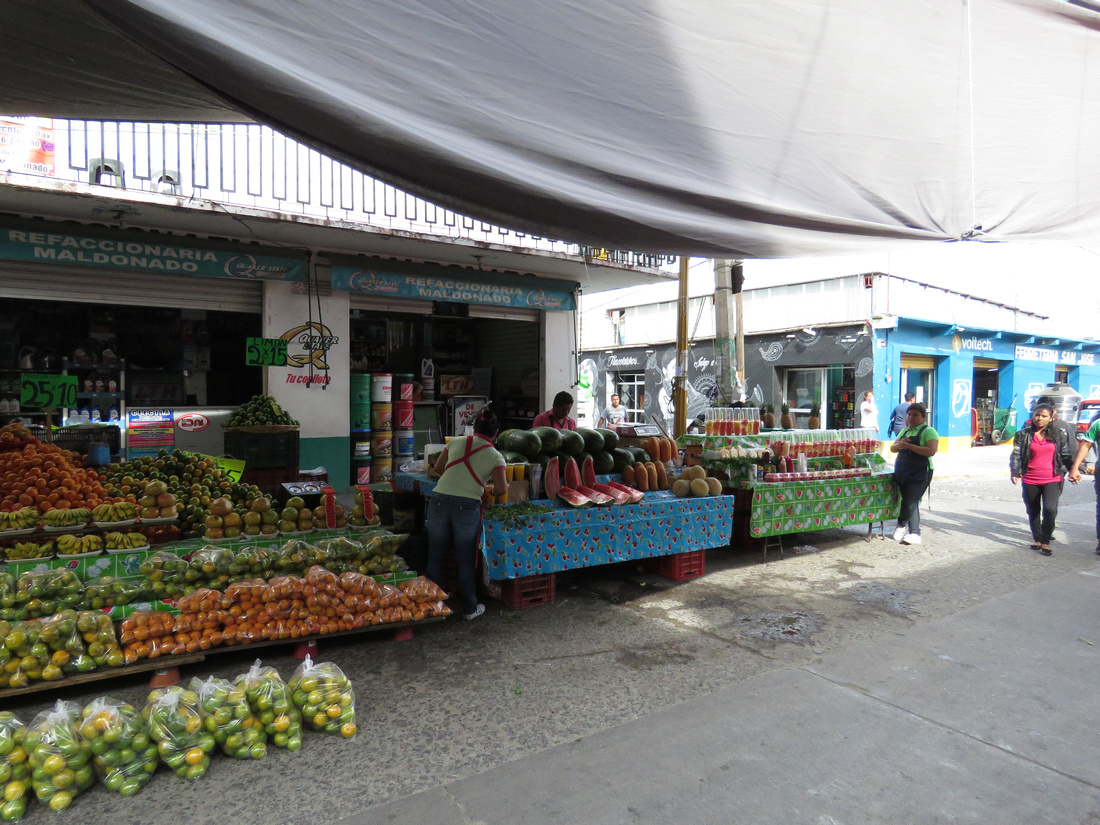
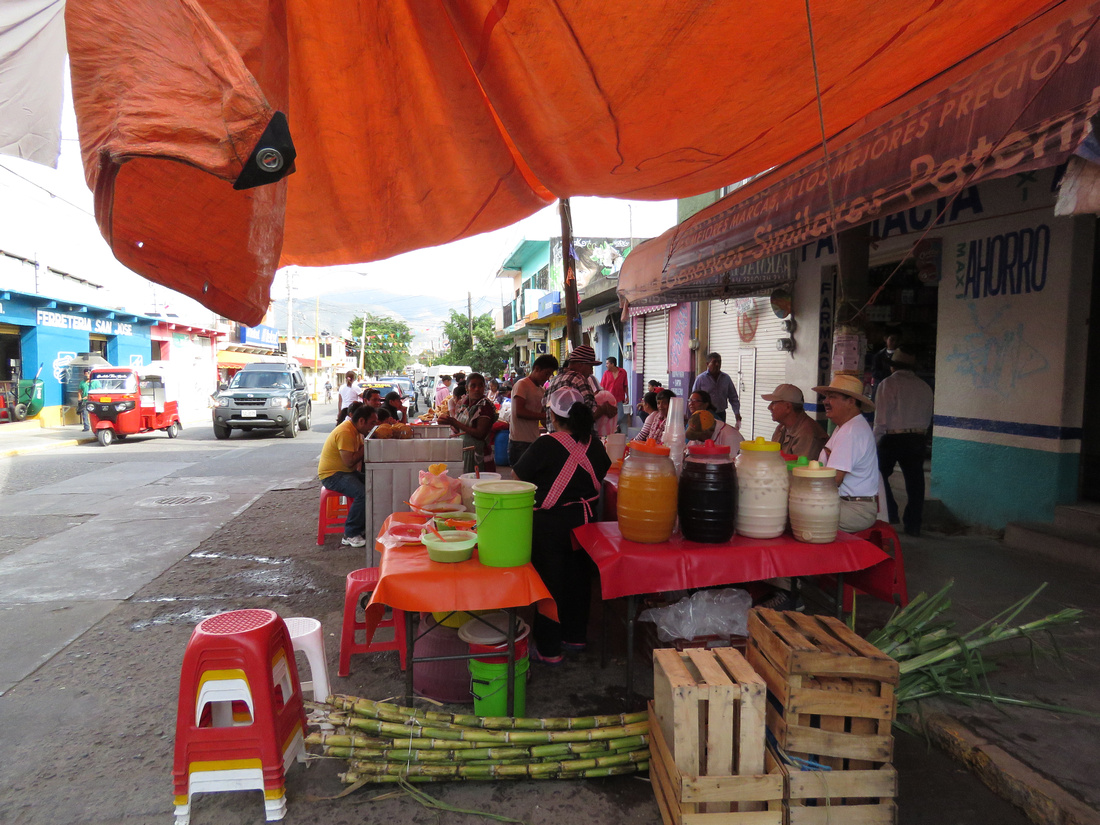
This is the first stall as you enter the market. They sell pork prepared different ways. I'm not sure which is worse, the smell or looking into the open tubs of cooked product.
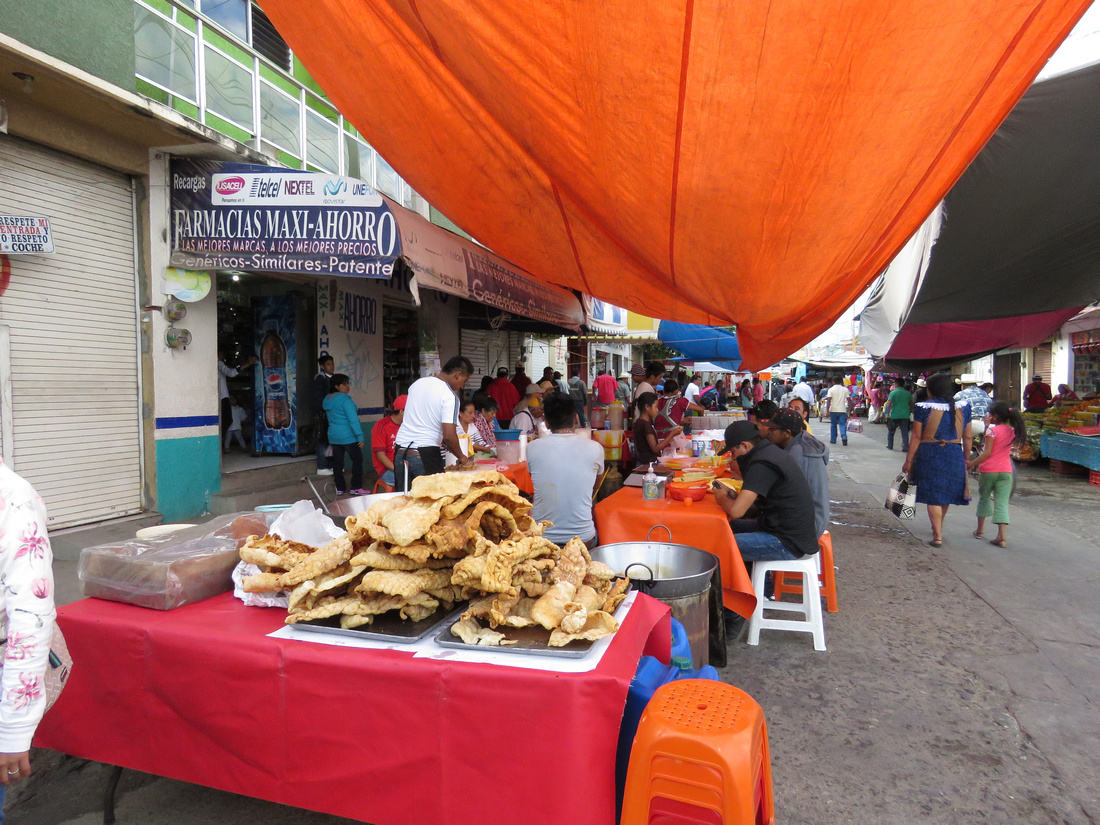
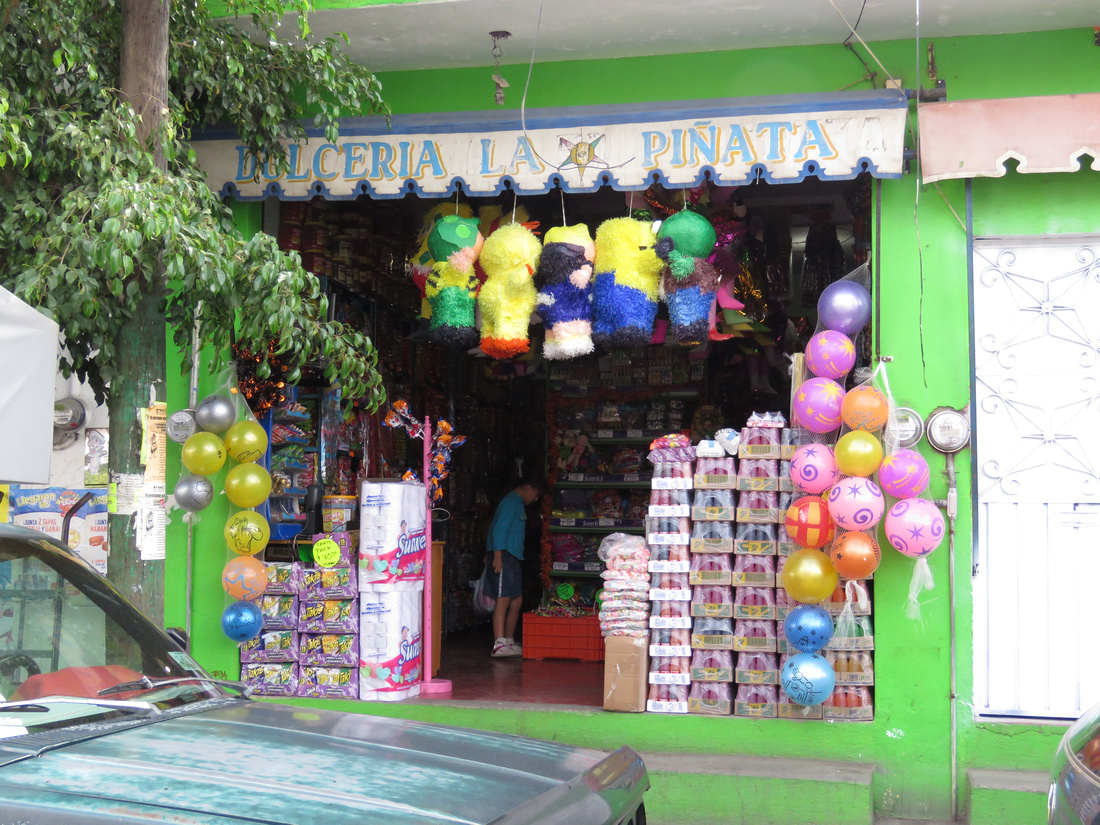
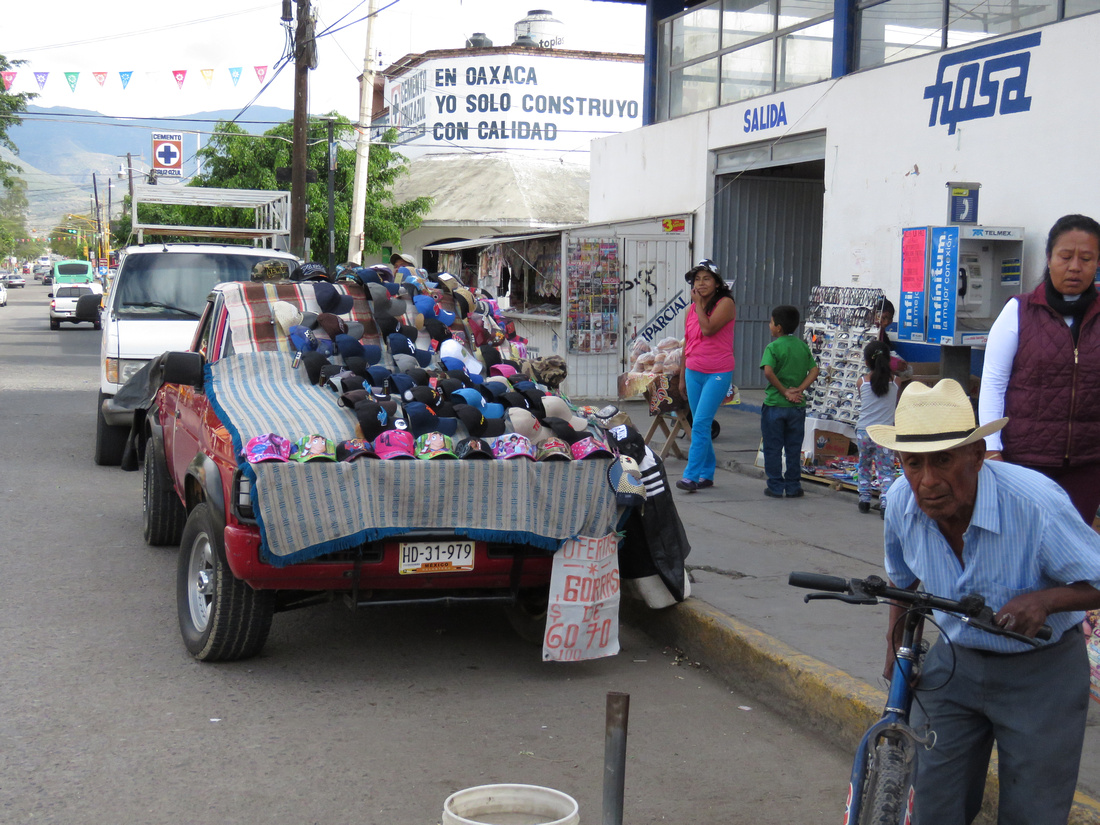
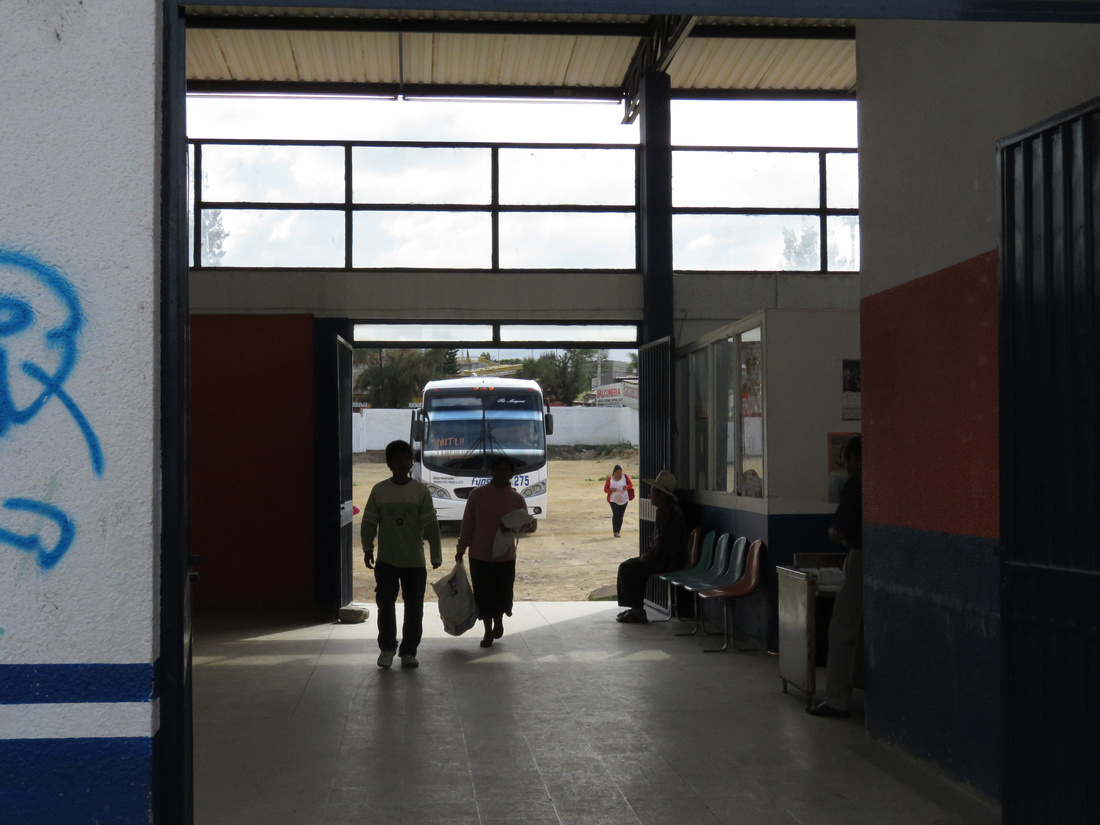
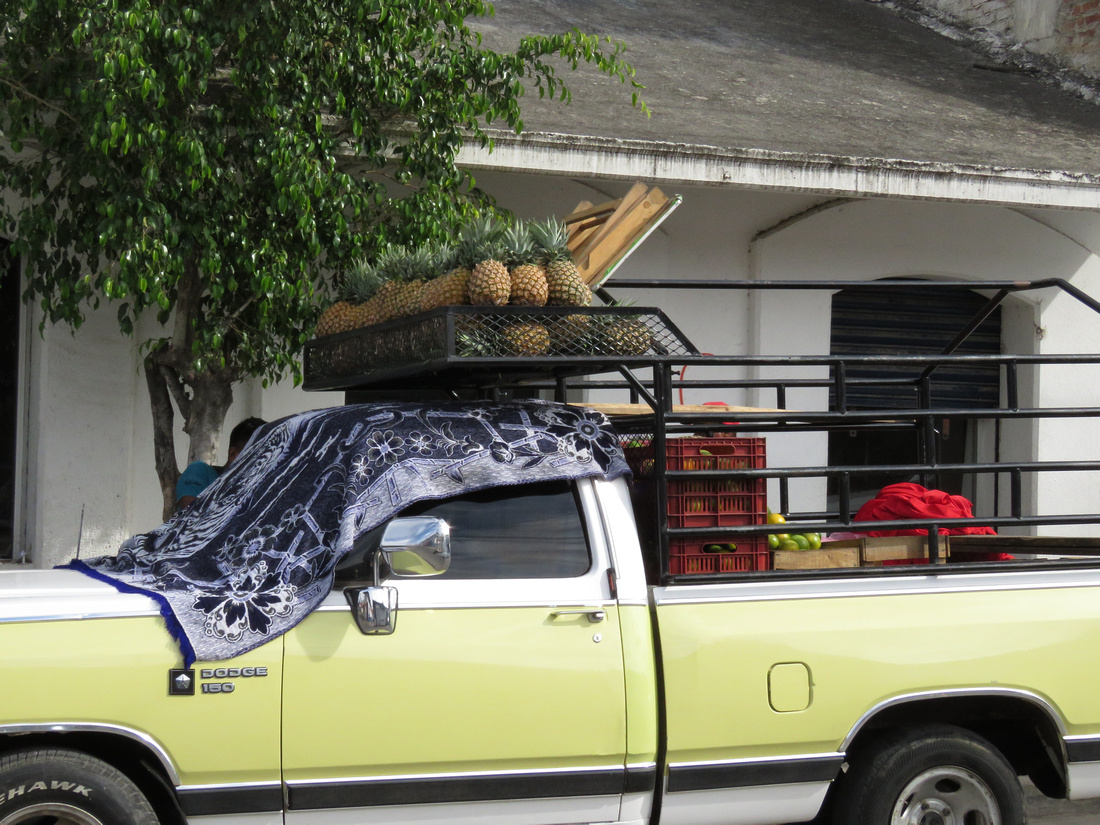
Many stands don't have running water, so water containers are used to wash your hands.

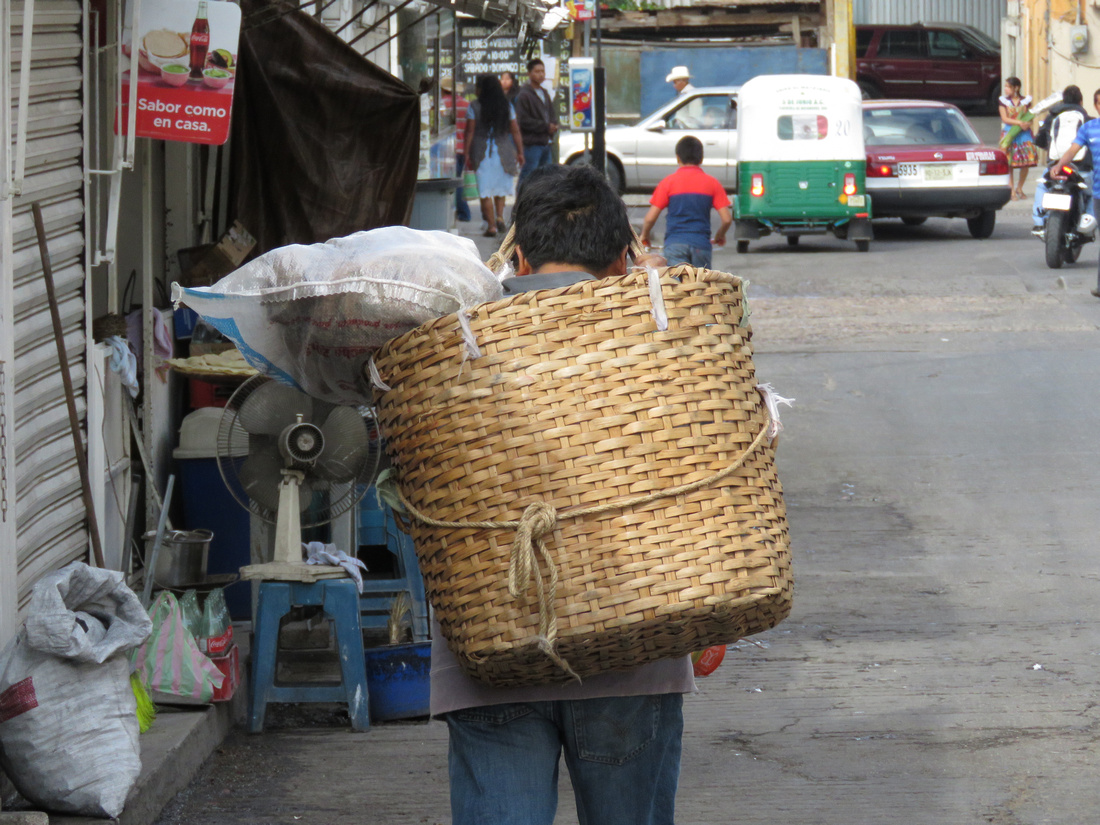
This family-ran hardware store has a little bit of everything. They have gone out of their way many times to procure what we were looking for.
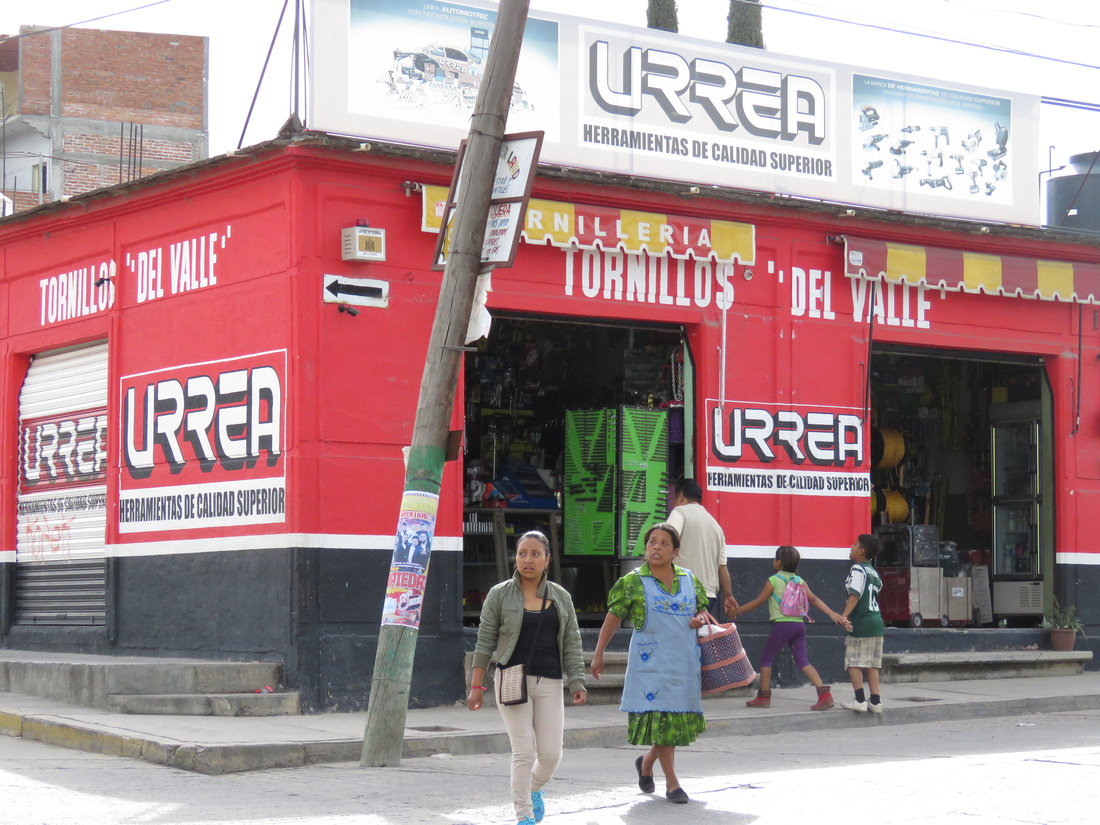
We celebrated Beth's 65th birthday with just a few friends.
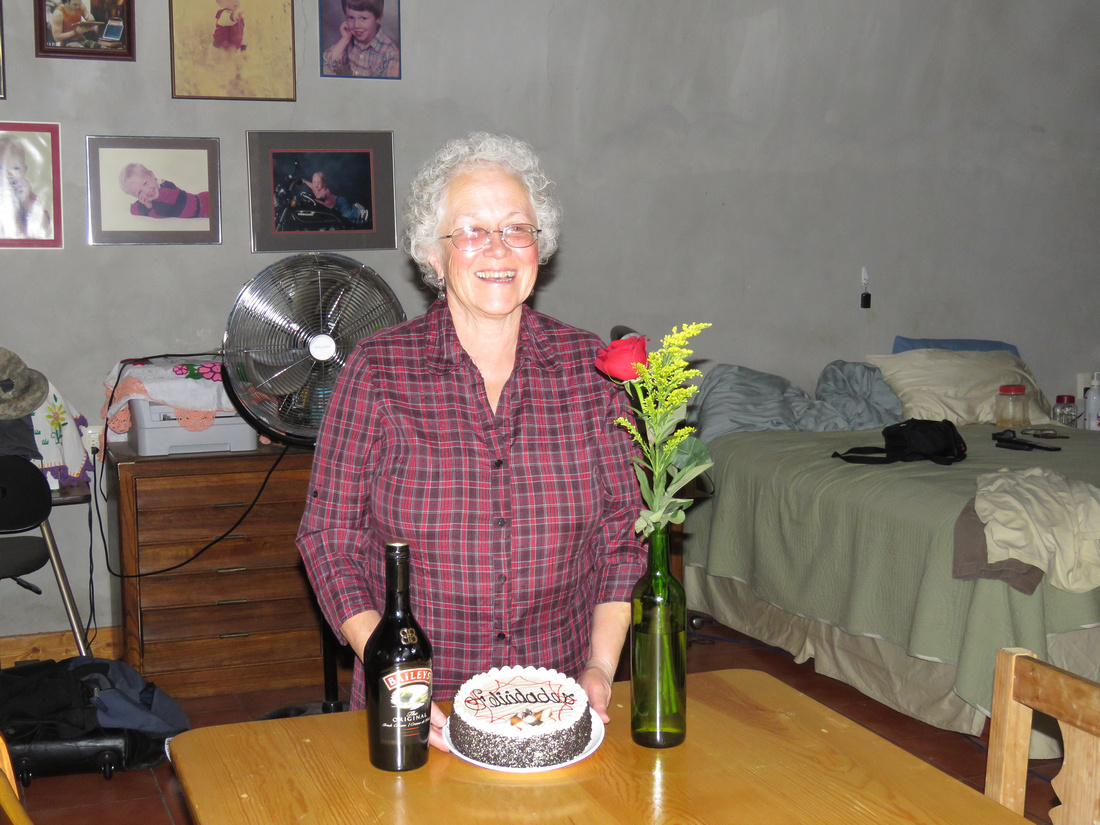

On our trips to the immigration office, we often stop at the Zocolo (town square). We found a restaurant that caters to Americans. I had the best omelette that I've had in Mexico. It's fun to eat and enjoy the bustling movement at the same time.


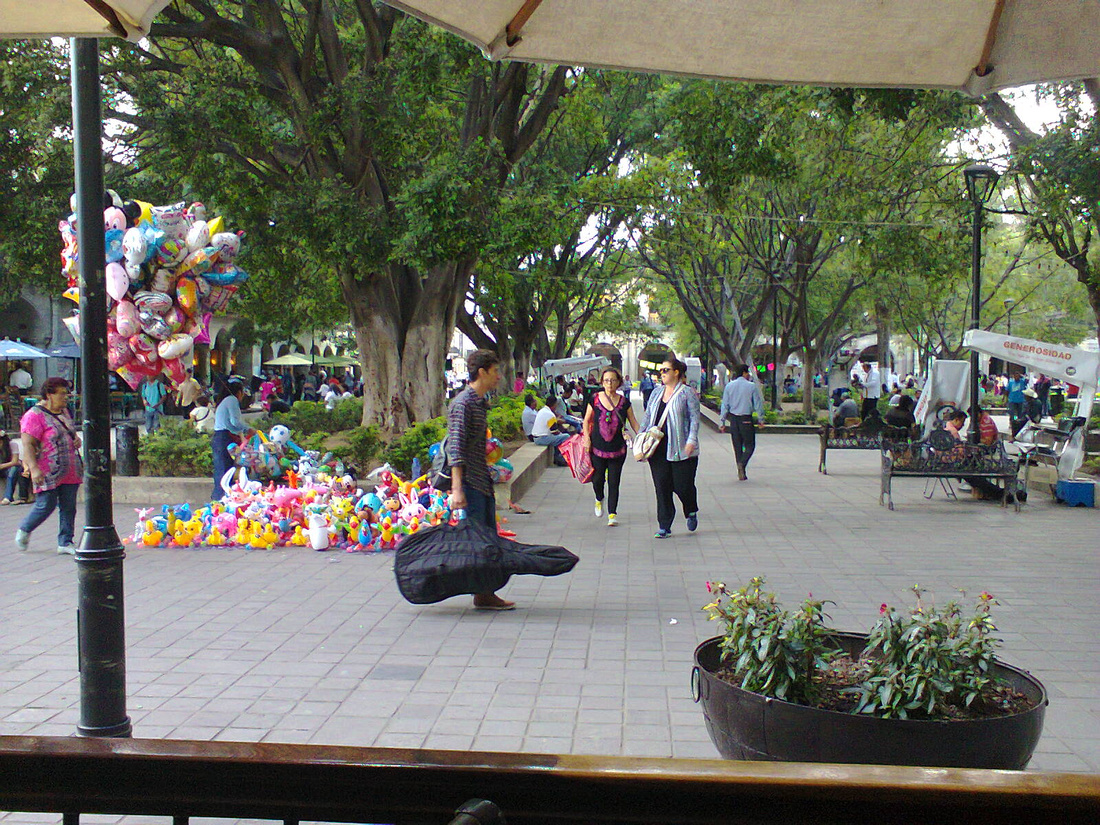
This waiter prepared Beth's dressing for a caesar salad at the table.

This is a great place to listen to street musicians. Peruvian music is very popular.
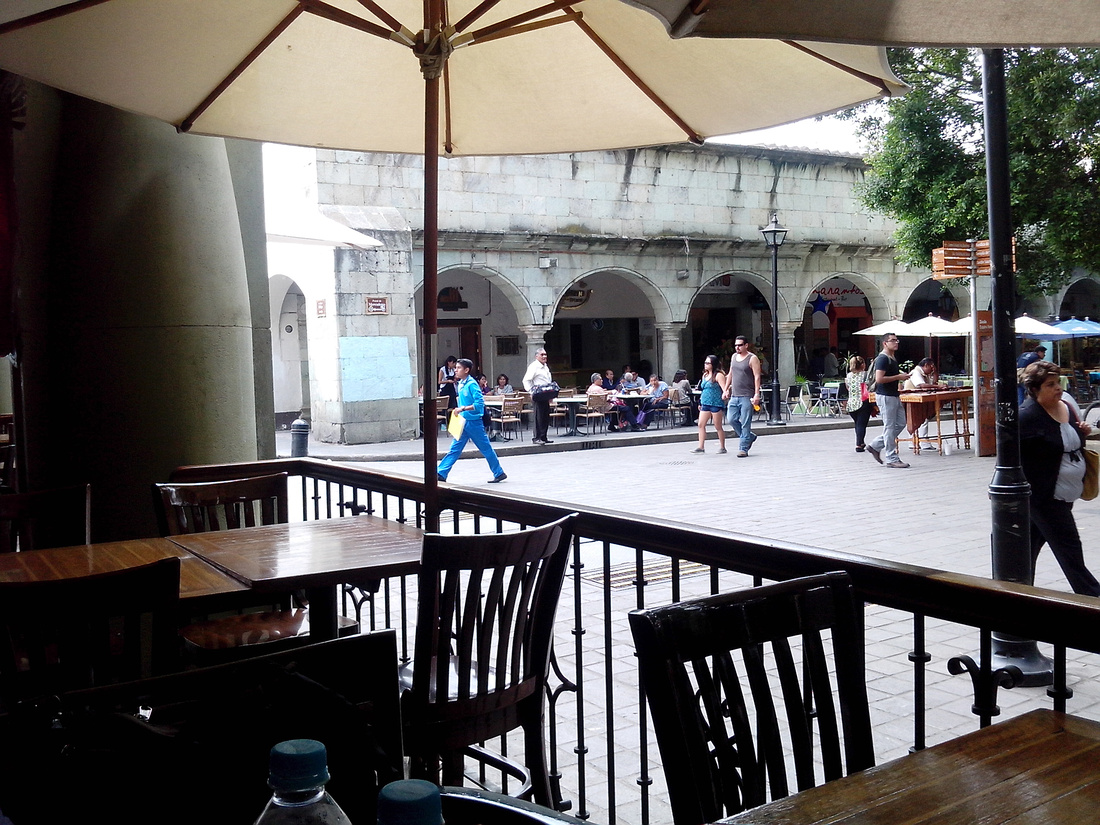
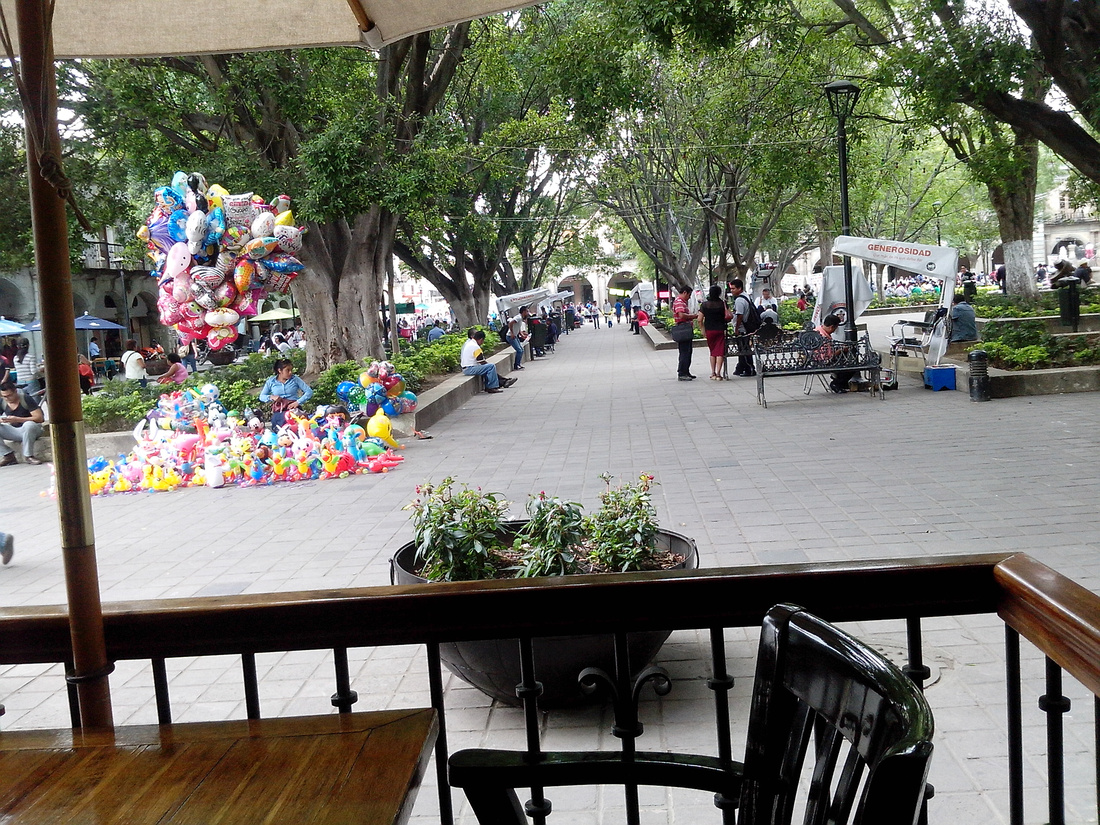
A maguey plant as a Christmas tree?
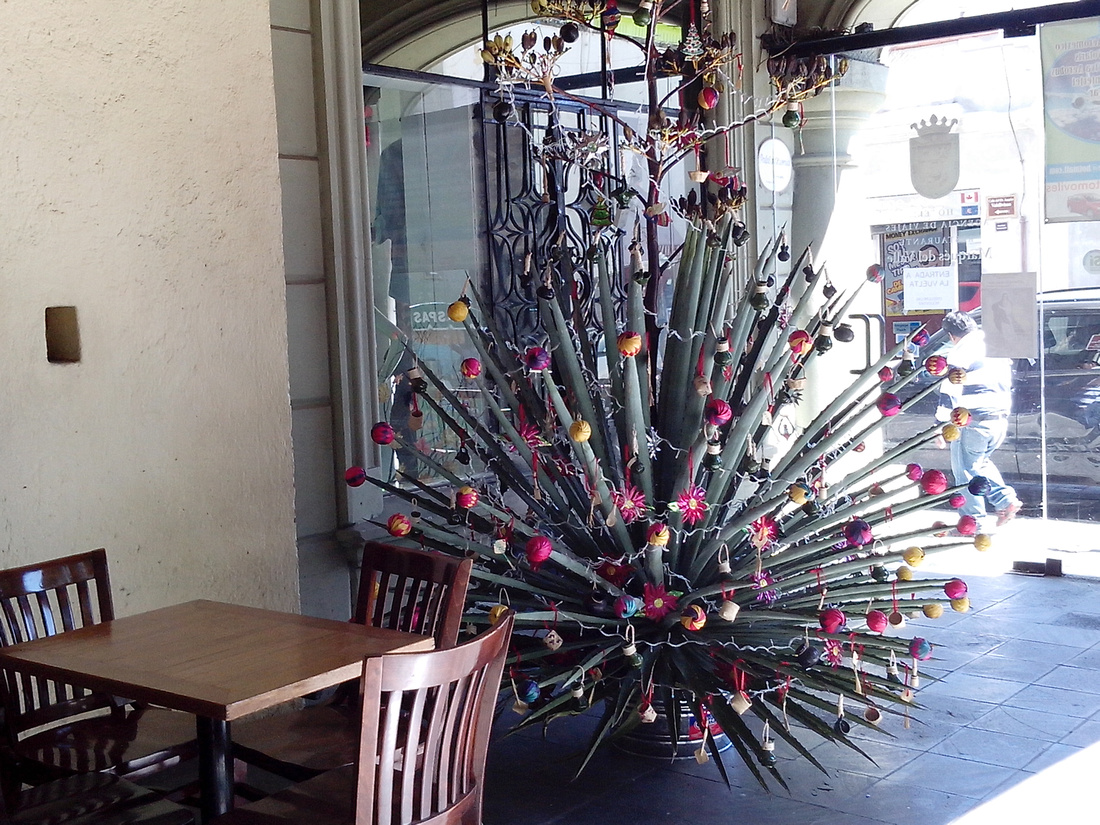
I think most of the pueblos in the eastern part of the valley where we reside reflect the mainly agrarian lifestyle lived by the majority of the population here. There aren't a whole lot of niceties. As you travel west towards Oaxaca de Juarez that changes. Beth and I visited a few areas towards Oaxaca this month and were surprised at the difference a few miles can make.
Teotitlan is a pueblo about fifteen minutes away from our home. Some historians believe it was the first settlement of the Zapotecas. Teotitlan is famous for its wool rugs. Natural dyes made from insects and plants are used to add color. Many of the rugs have Zapotec designs, but I have seen more and more modern designs. I have been told that there are many American expats in Teotitlan. The sign below shows the importance of the tourist trade in this town.
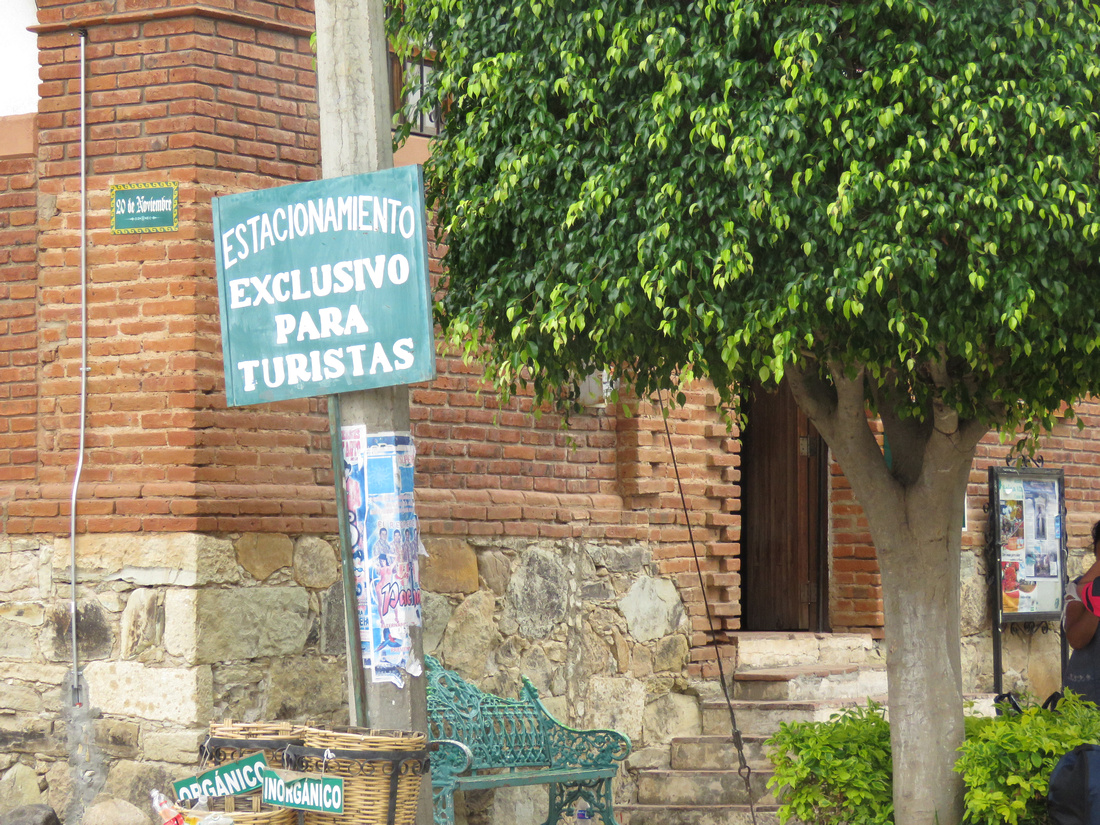
We visited a museum that displayed archeological pieces from the Zapotec era. When the Spanish came to Mexico, they often built their churches on top of Zapotec temples which were therefore destroyed.
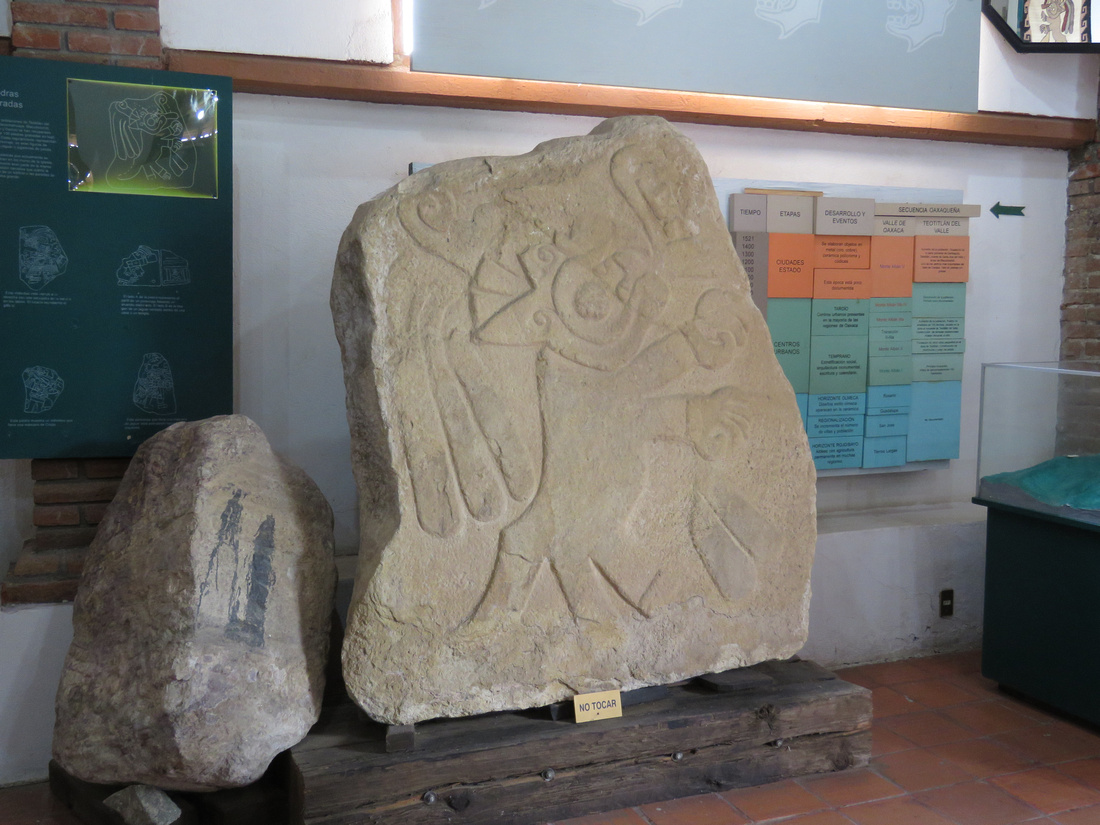

Before the arrival of the Spanish, the Zapotecs wove with cotton. The Spanish brought sheep which provided the wool which now dominates this market.
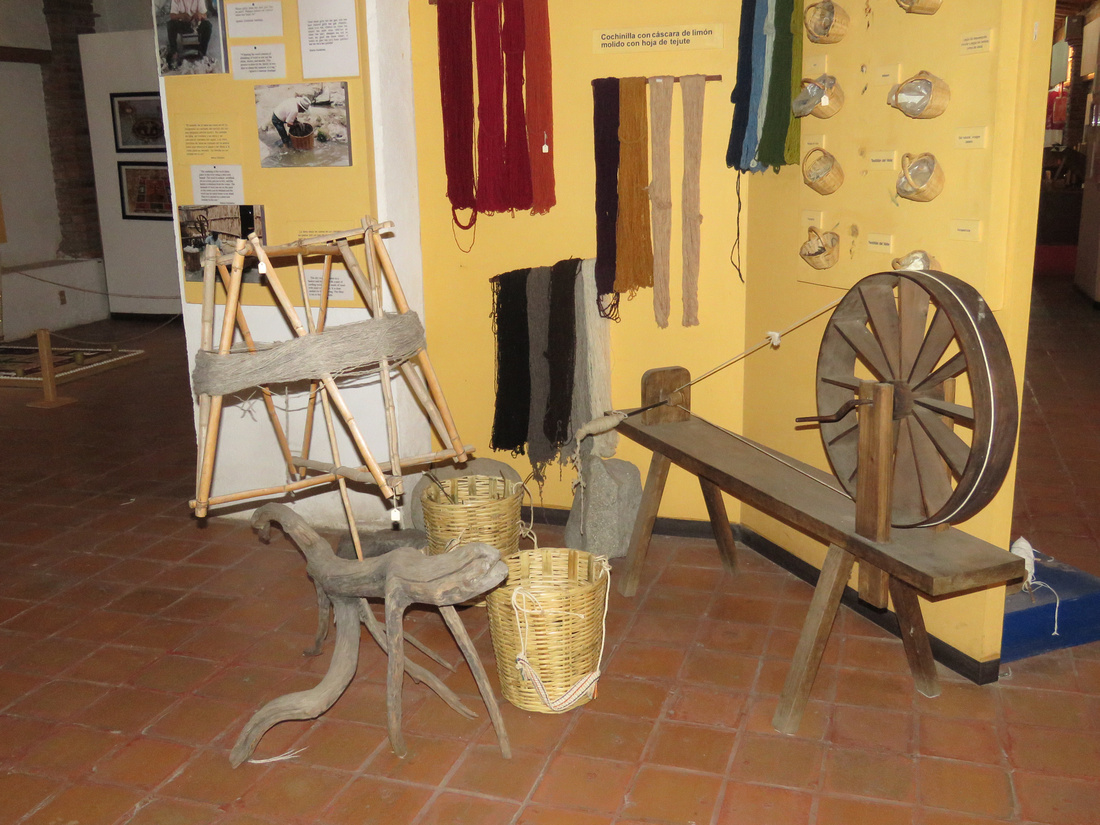

This picture shows some of the ancient designs of the Zapotec temple ruins.
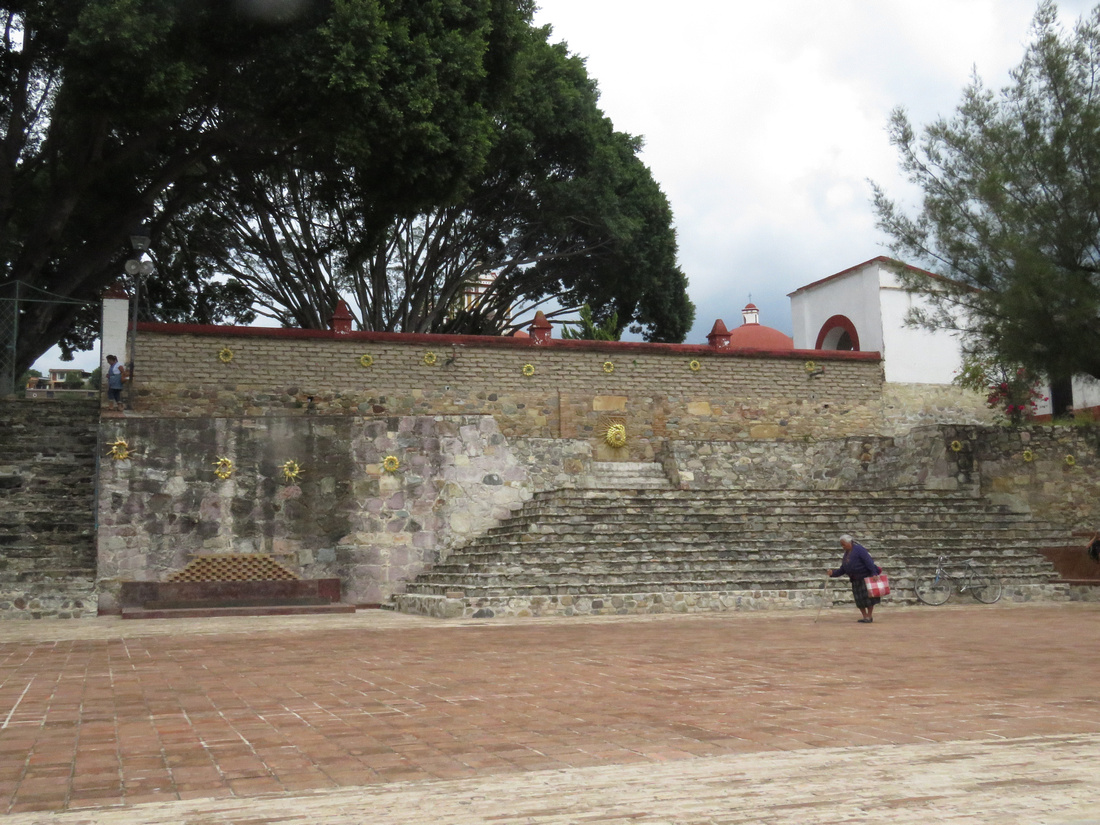

I have included photos of these little motorized taxis before. They are made in India and cost about five thousand dollars. Some towns like Tlacolula are overrun by these vehicles. There are about 500 in Tlacolula alone. Normal fare is ten pesos. Many of the drivers are young adults that have had little or no training of the rules of the road. You definitely have to keep an eye out for them.
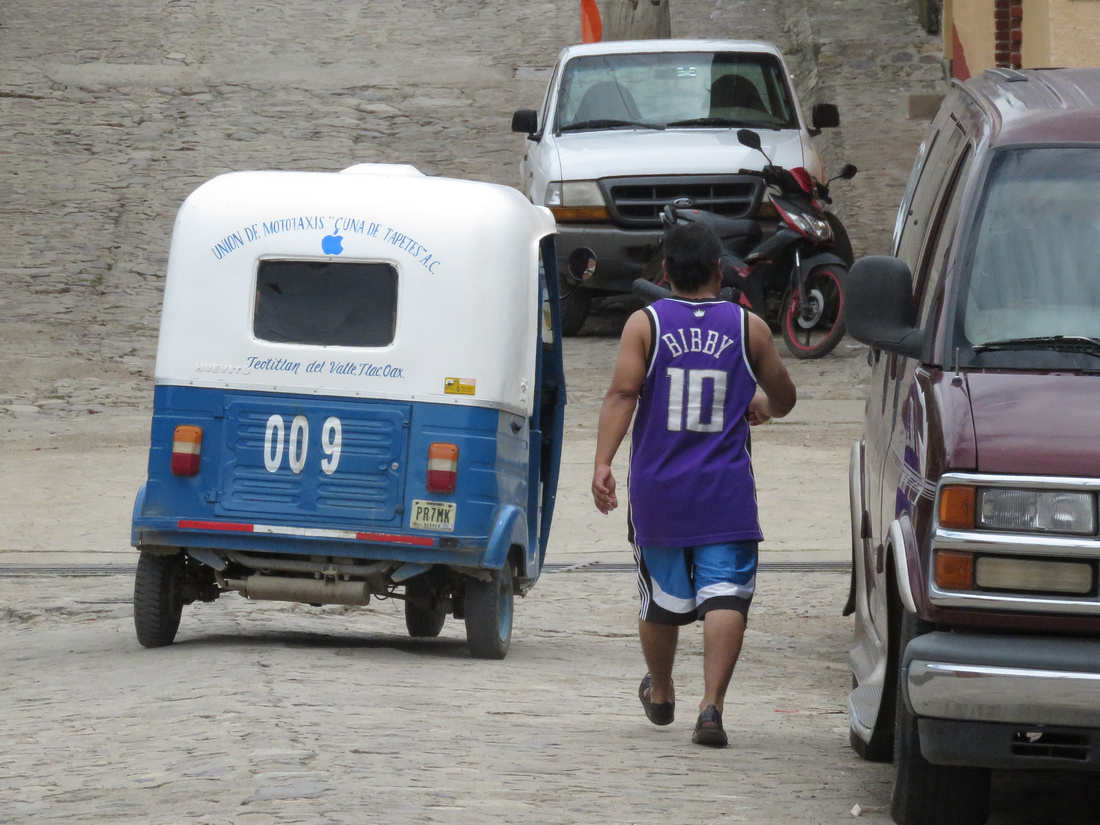
Again, Zapotec ruins at the base of the Catholic church.
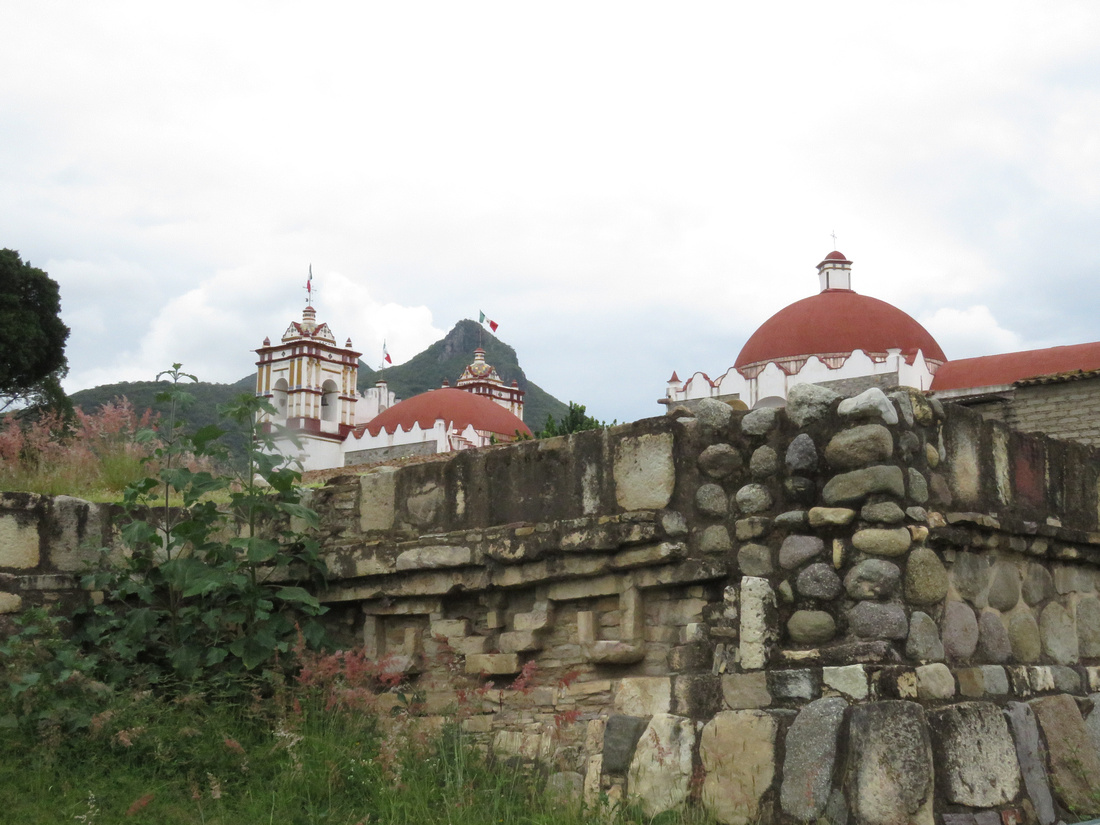
This empty market booms in the mornings and especially on Fridays.

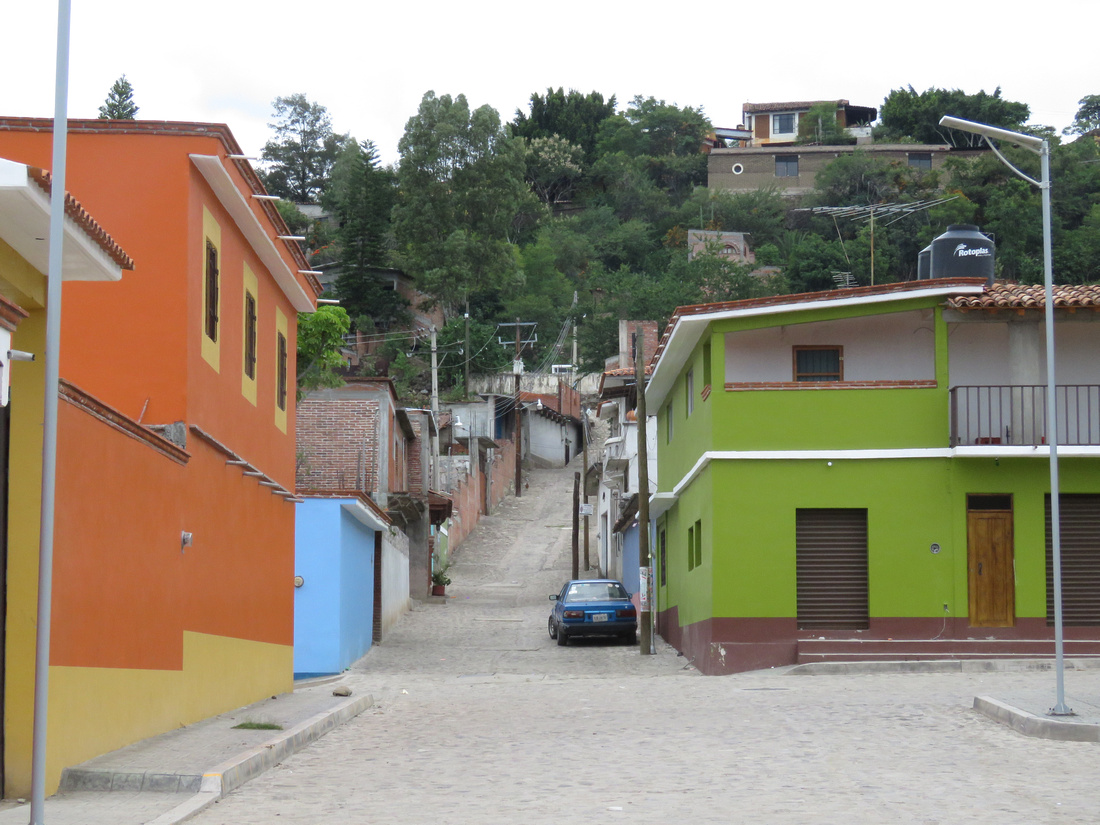
This is a typical small store. They carry a little bit of everything.
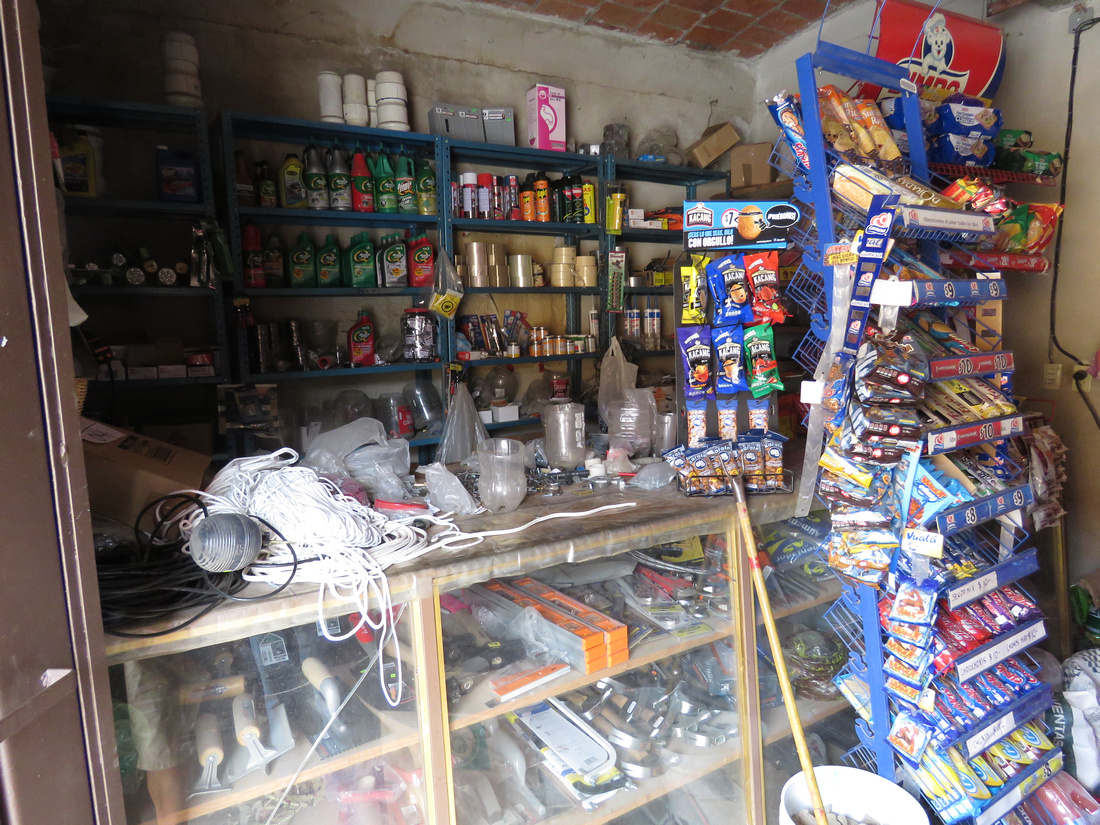
I do not remember every visiting a pueblo that did not have a Catholic church or a capilla. Some pueblos often also have other denominations, but the Catholic church dominates. A friend was over the other day expressing his concern about all the new Christian sects coming to Mexico. They literally tear villages and families apart as Catholicism is their culture, as well as their religion.

I had never seen one of these vehicles before, but it sure looks practical.
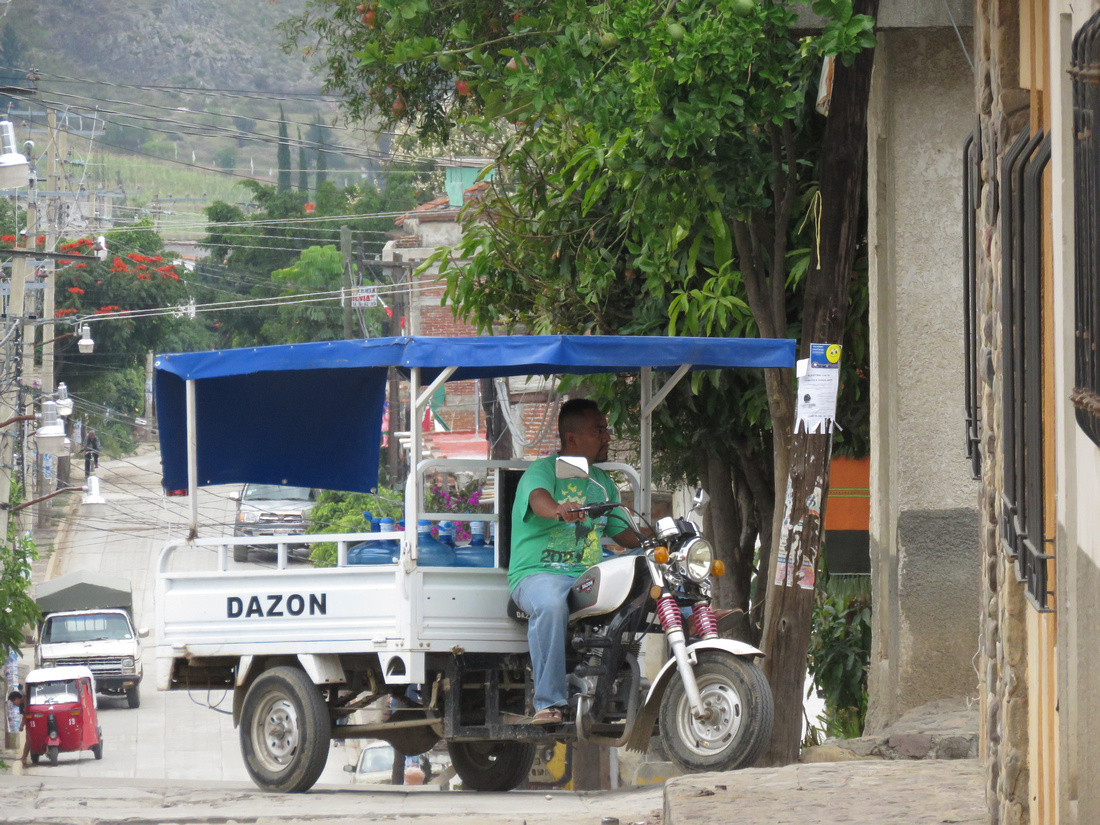
Many women bring their corn to be ground for tortillas every morning . They soak the corn kernels in lime water over night to soften them. If you go to a village early in the morning, there is often a line of women waiting to have their corn ground into masa. like mix to make tortillas. These machines also grind coffee and cocoa beans.

This sign shows how locals cater to Americans.
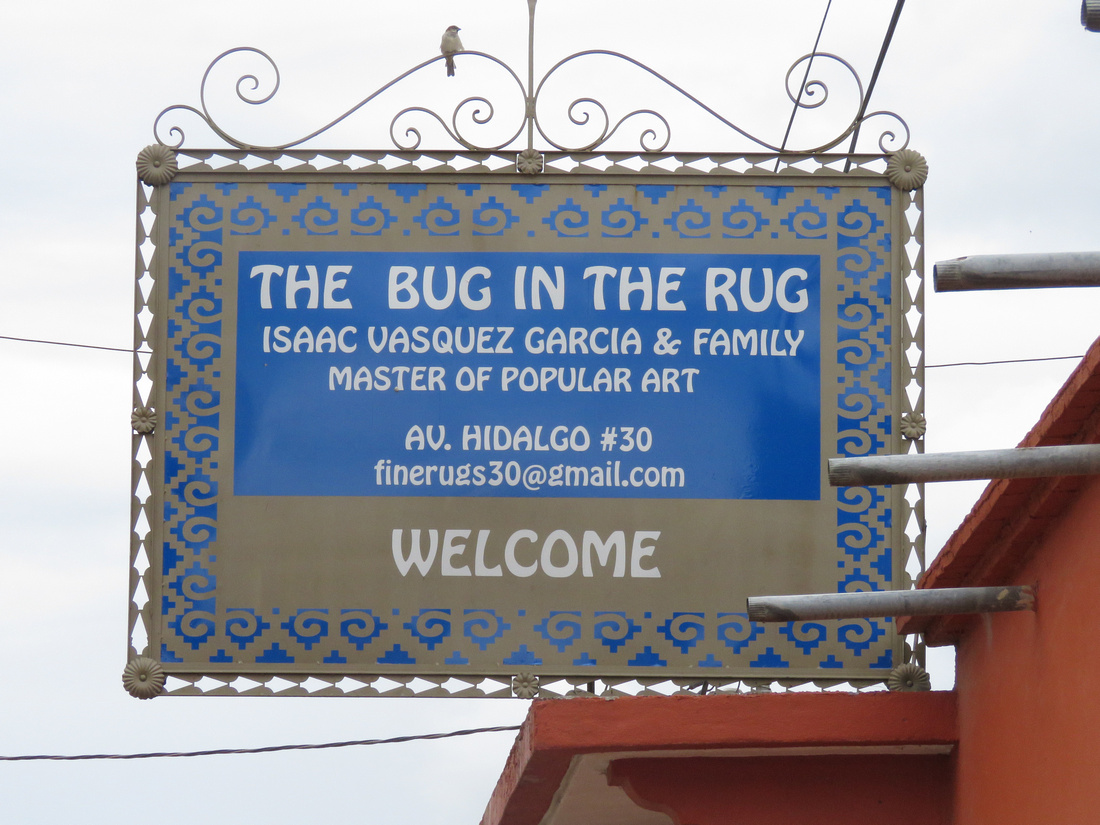
I cannot imagine how this owner has managed to keep an old Colorado plated car without having it confiscated. He probably does not drive it outside the pueblo.

By Teotitlan standards, this store is pretty basic. Many store owners have large, extravagant stores.

Leaving Teotitlan and heading towards Oaxaca, there is a restaurant/swimming pool/park. We have passed it many times on our way into Oaxaca de Juarez but its walls prevented our view. Looking for a new place to eat, we decided to give it a try. We were immediately amazed. We were later told by workers that the owner took fourteen years to create this park-like setting. This must certainly have been a labor of love for him.
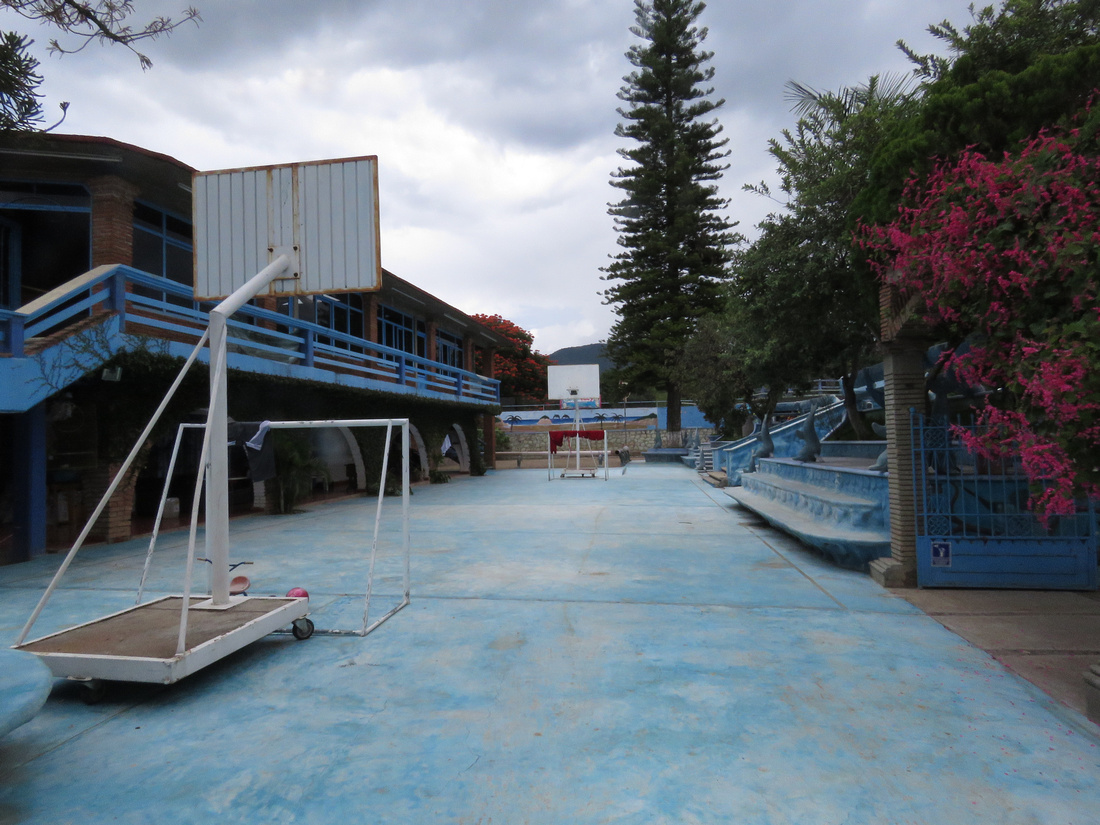

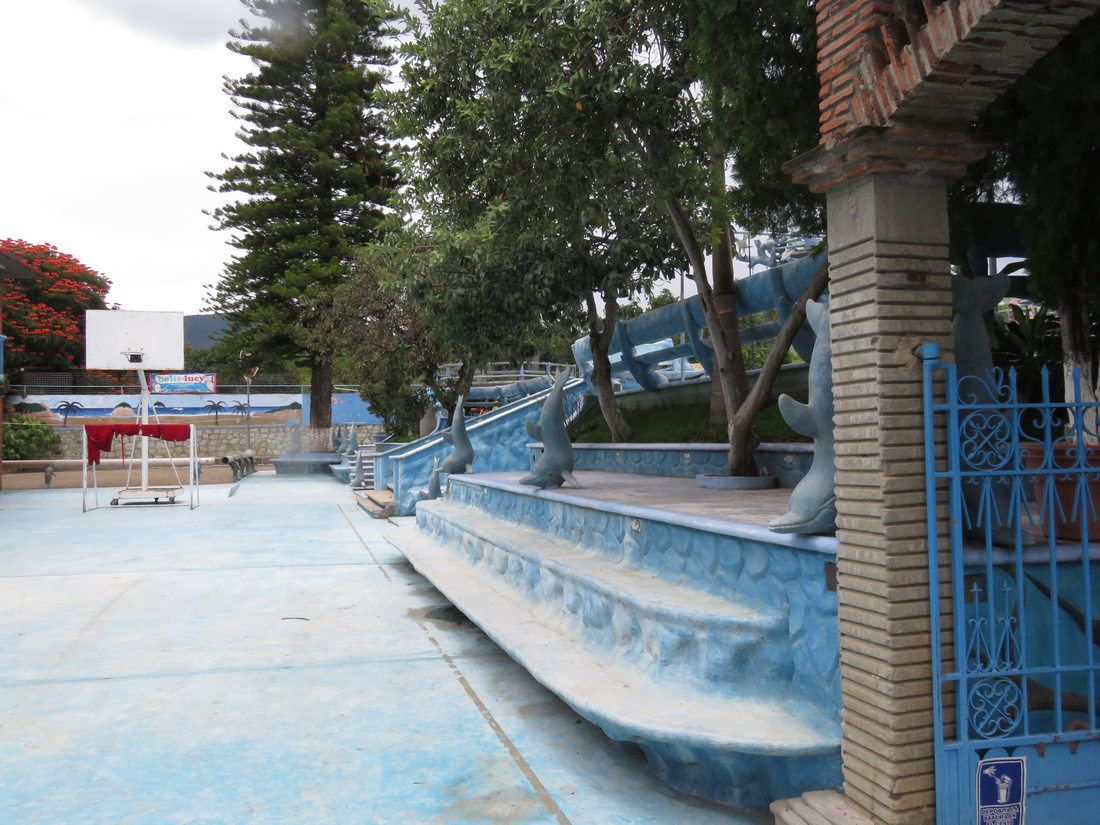
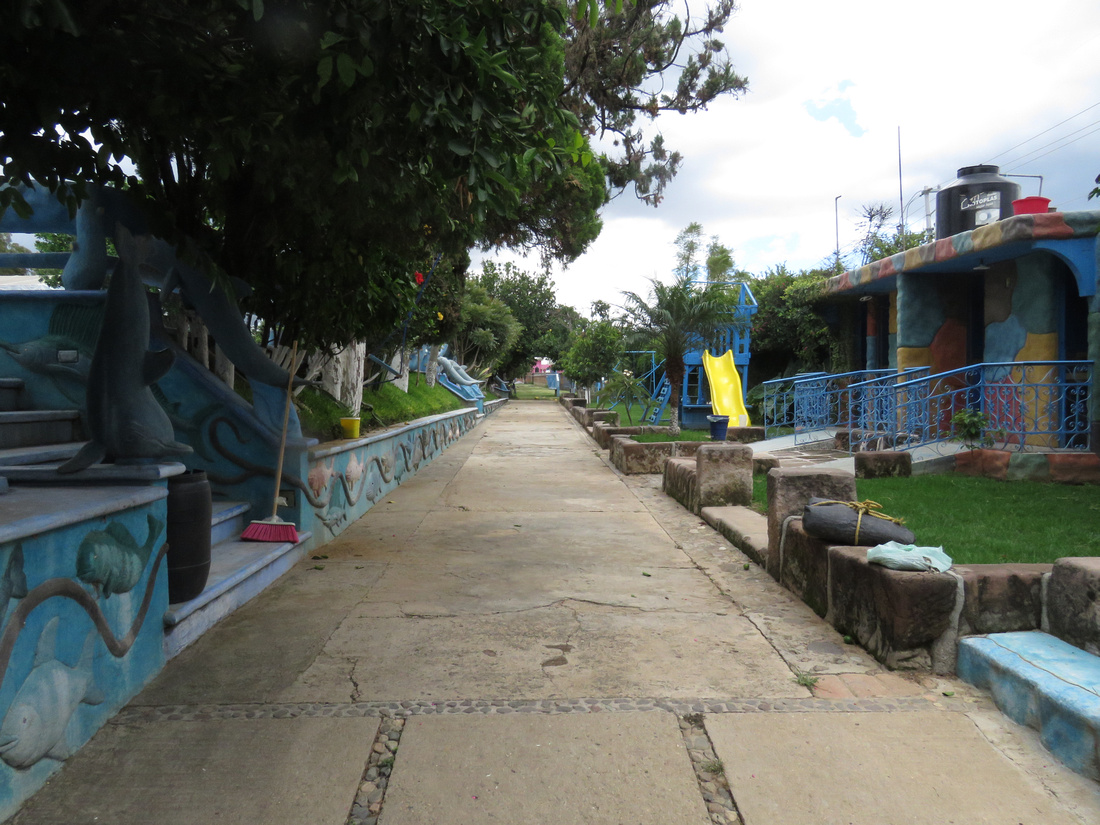
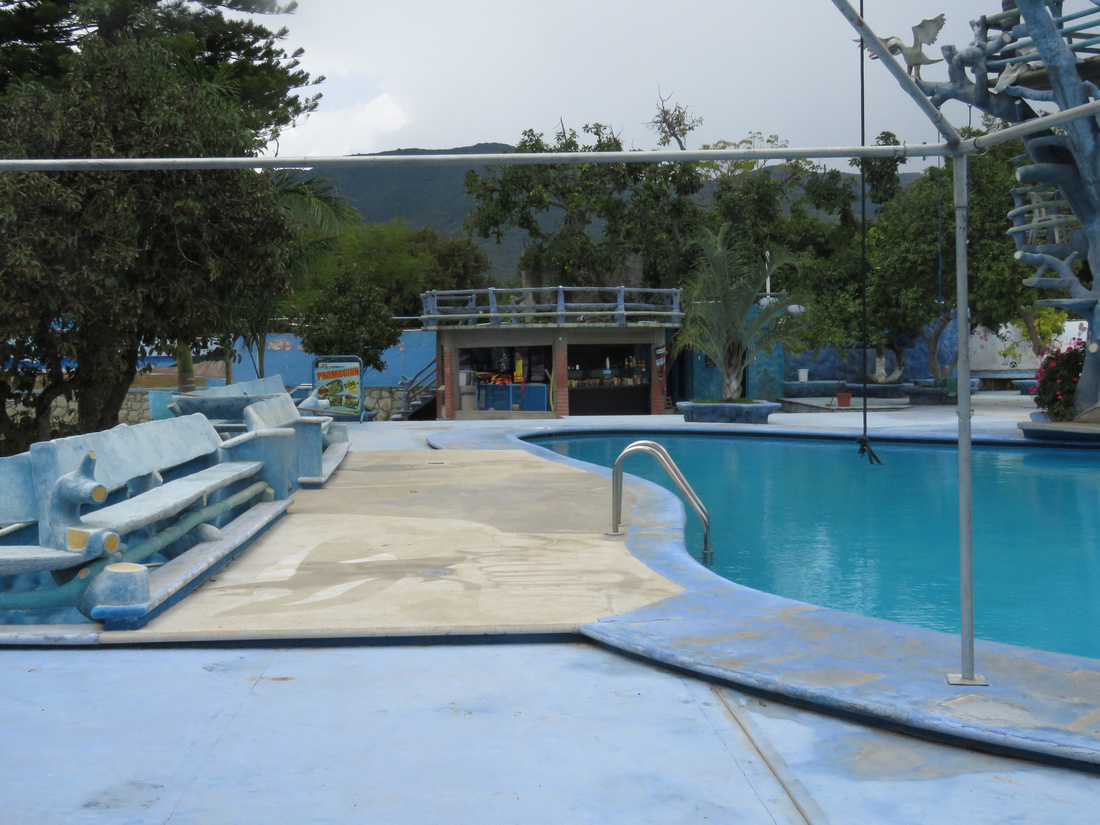
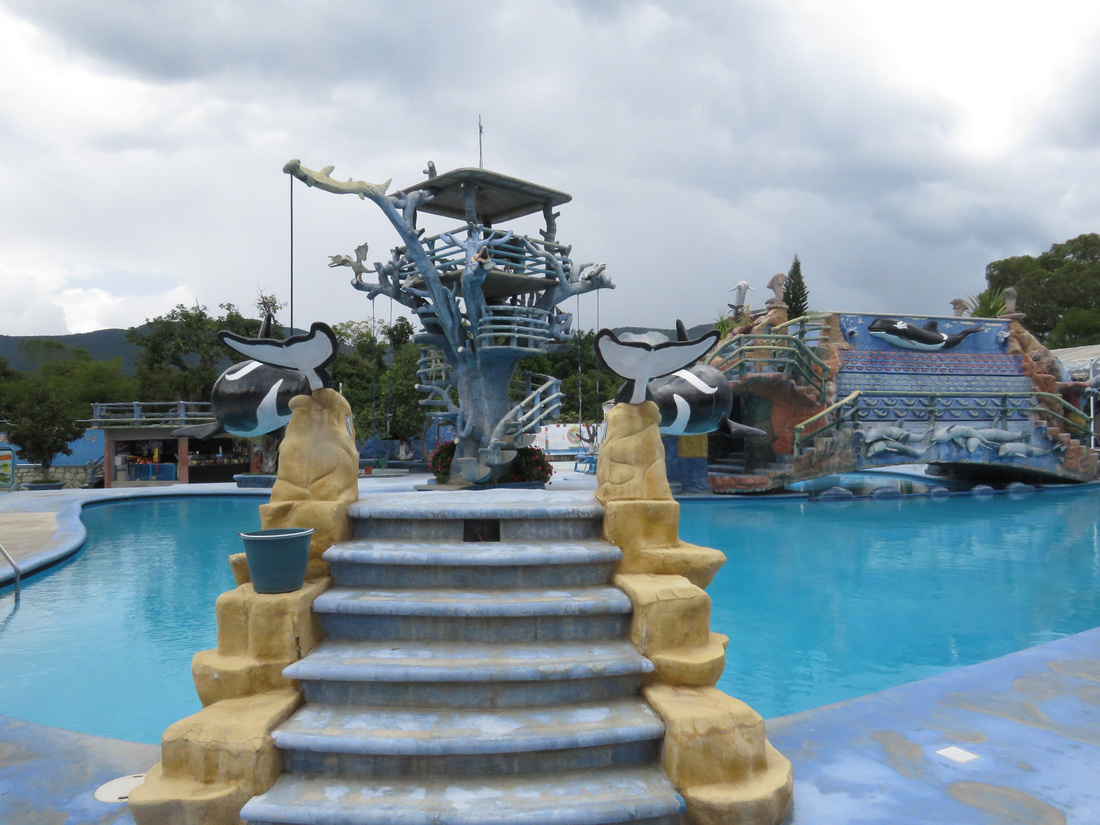


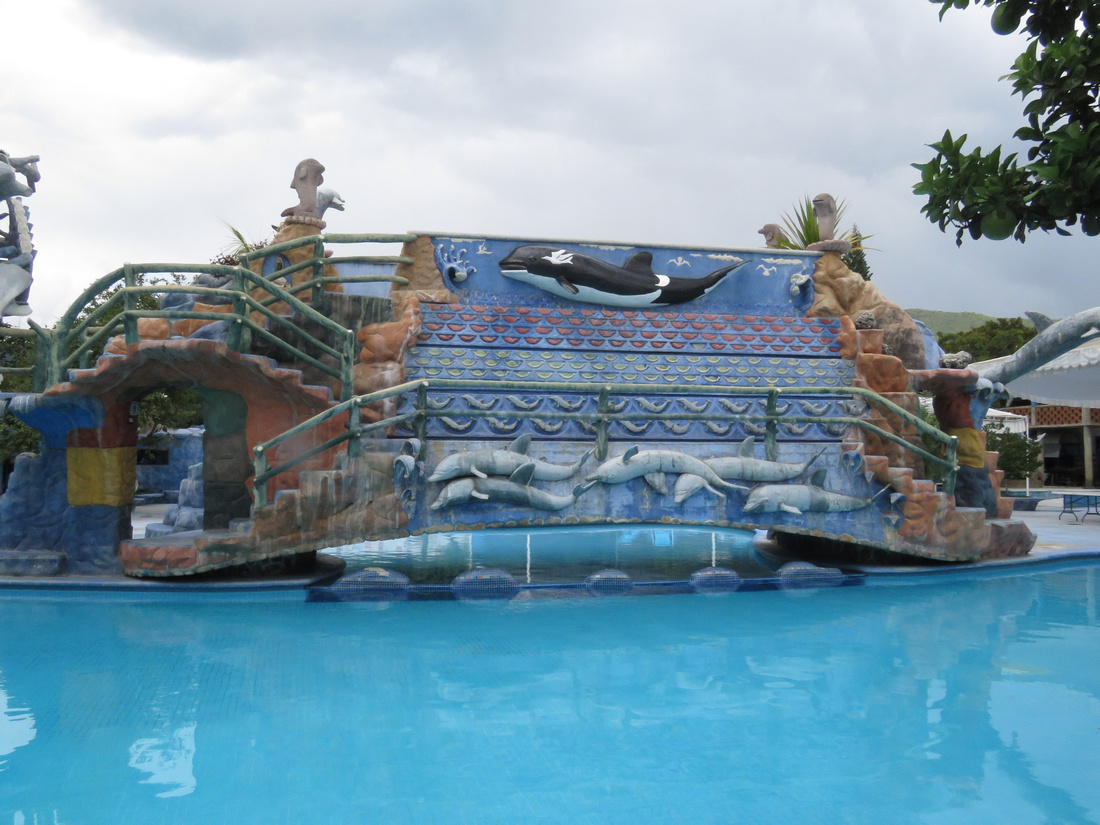
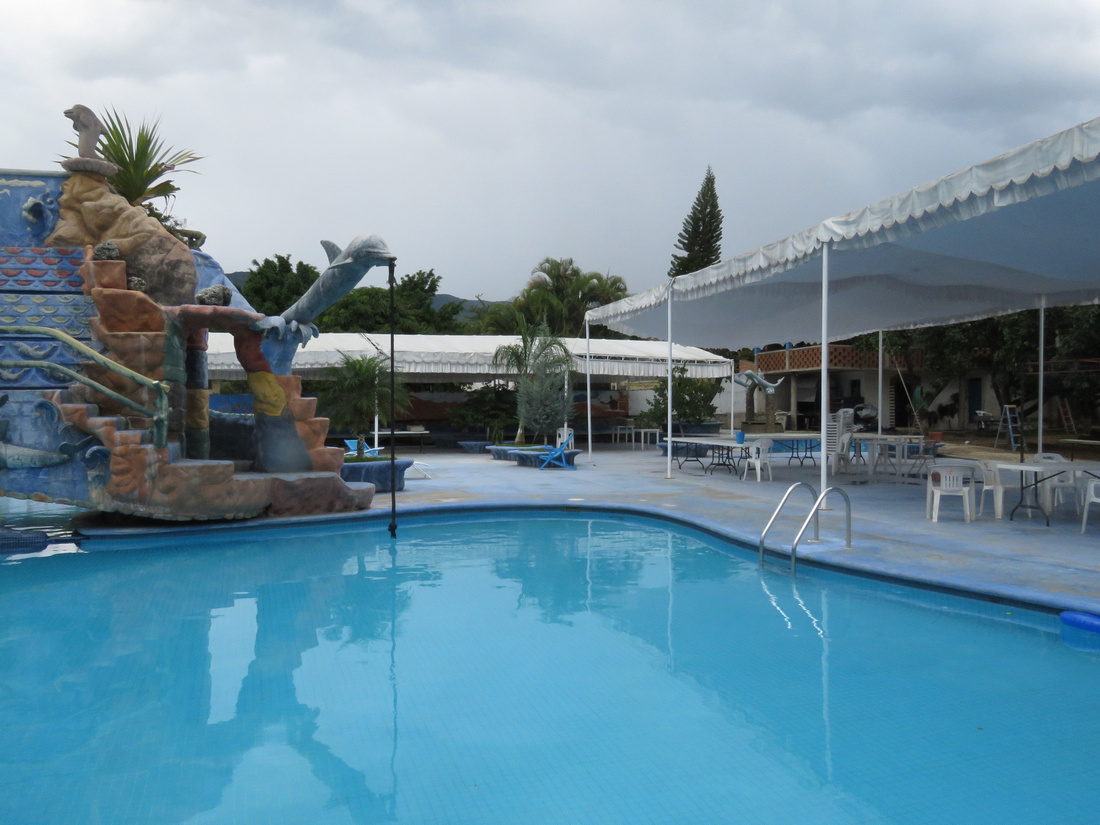
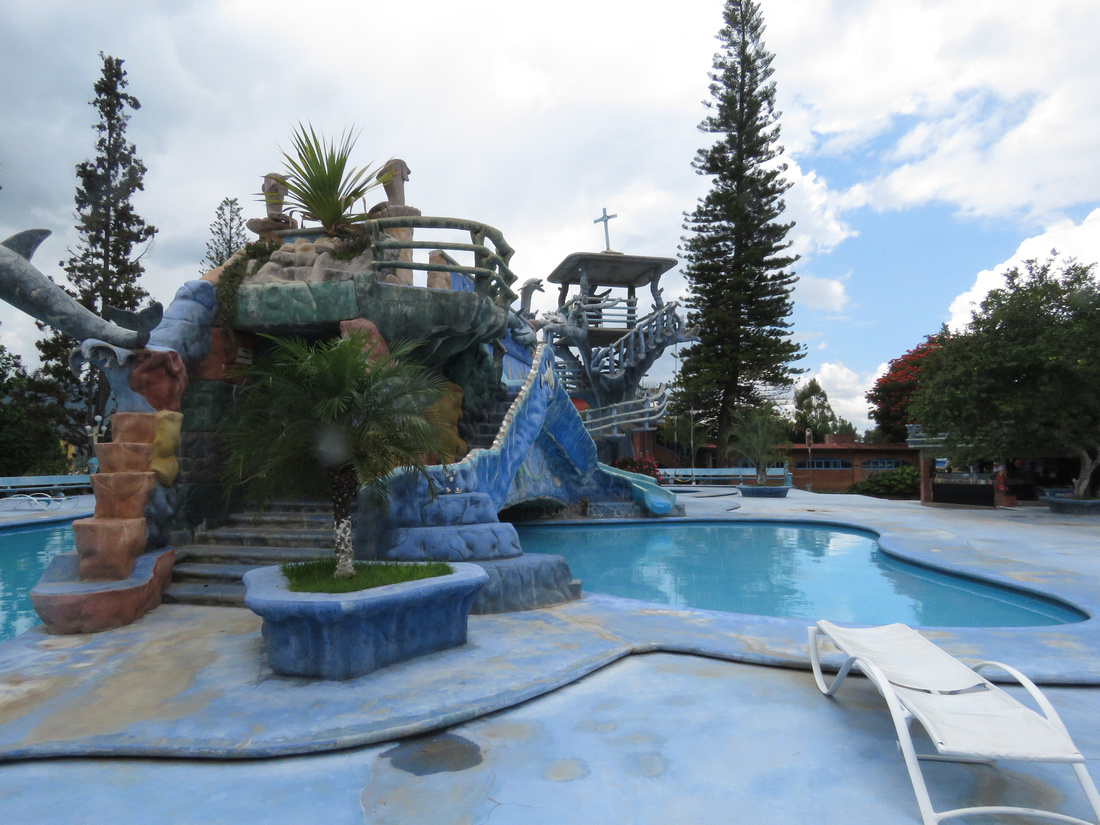

These avocados were larger than softball size and some weighed about 1 kilo.
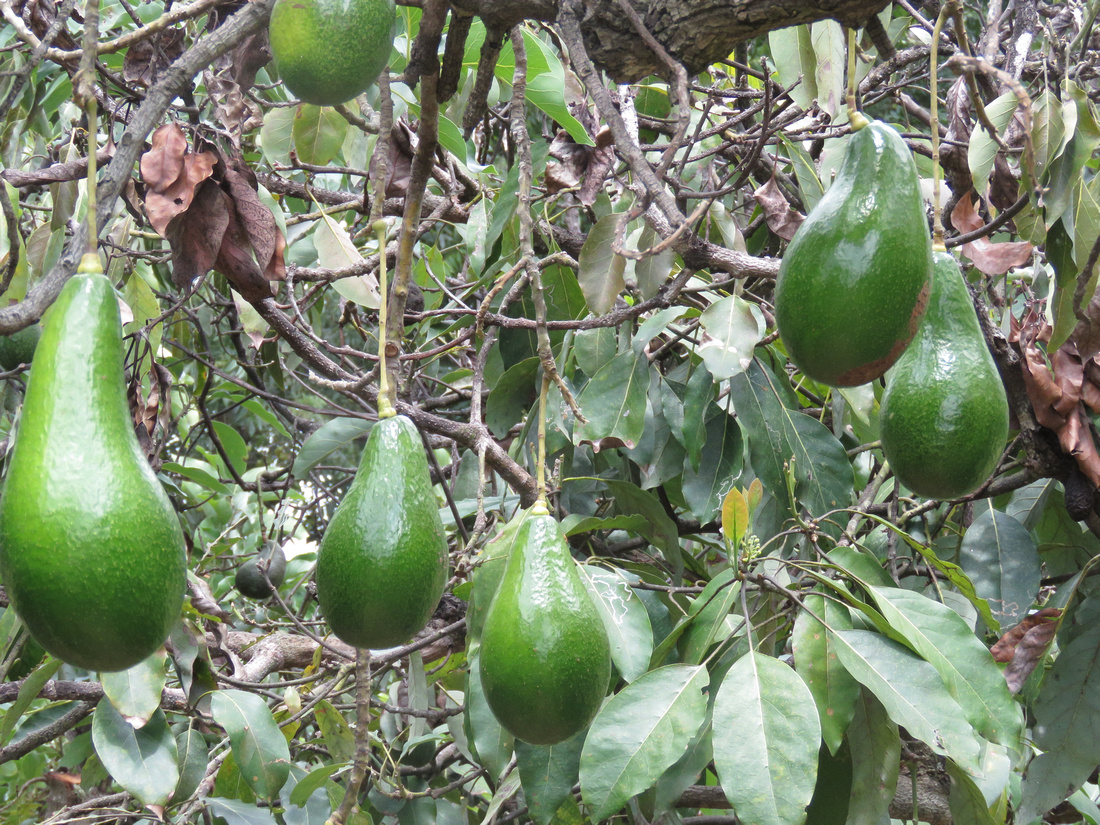
This emu was very curious. He examined me for at least five minutes and often bumped into me.
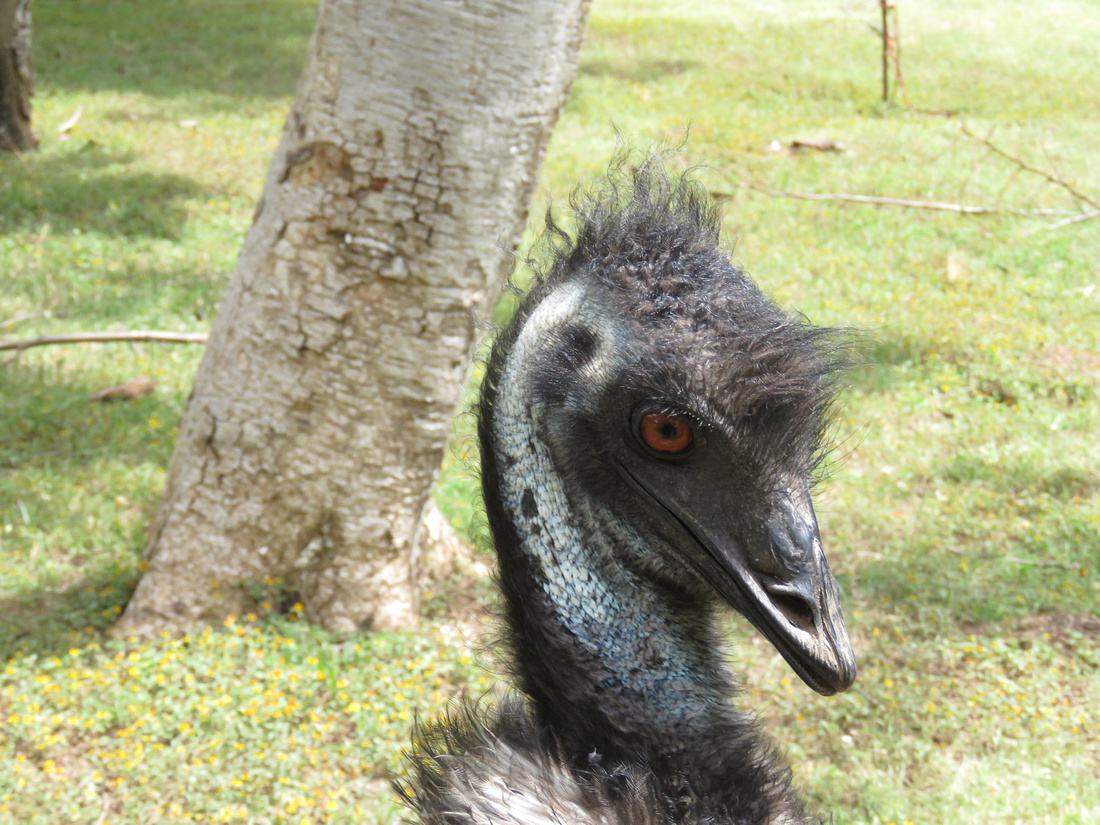
Luckily we ate under a tarp since it began to rain before we were finished.
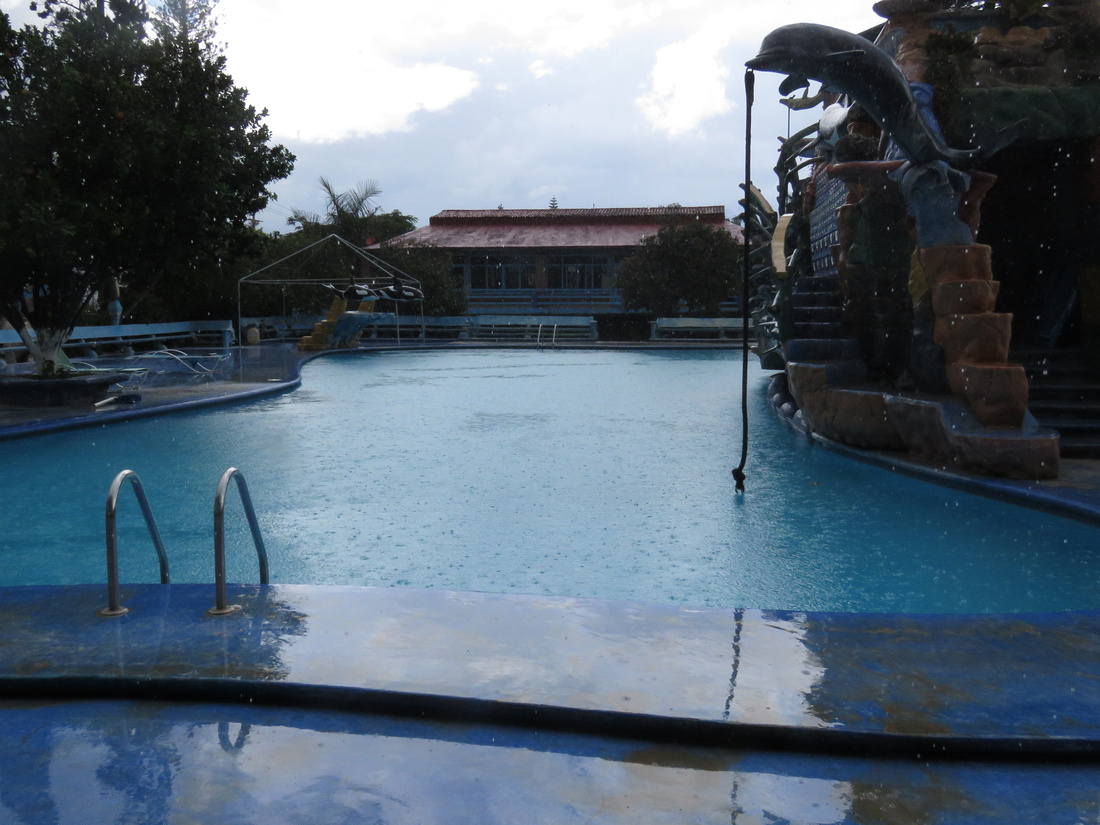
This is the entrance to Rancho Alegre.

A little further up the road is Tlacochahuaya (Tlah-co-cha-why-a). It's about half way from our home to Oaxaca.
 We sure have not seen many parks like this on our end of the valley.
We sure have not seen many parks like this on our end of the valley.
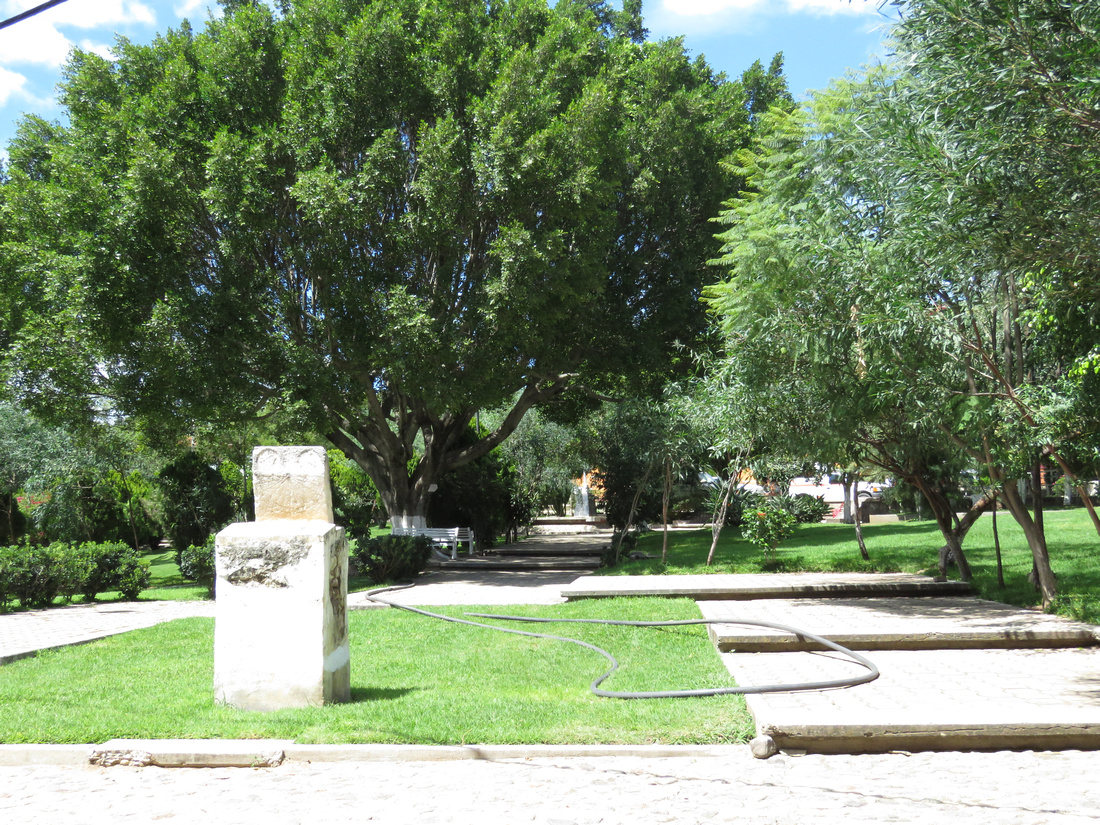

This uncompleted market is the nicest we have seen here in the valley of Oaxaca.
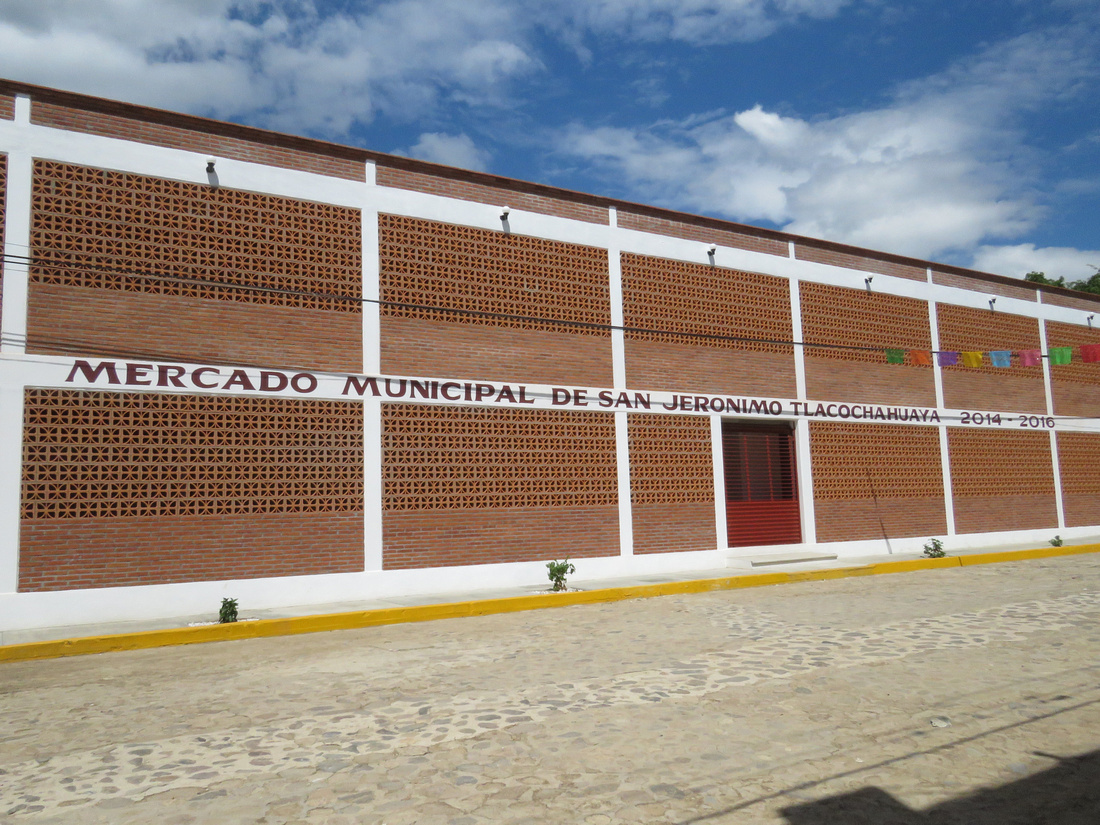
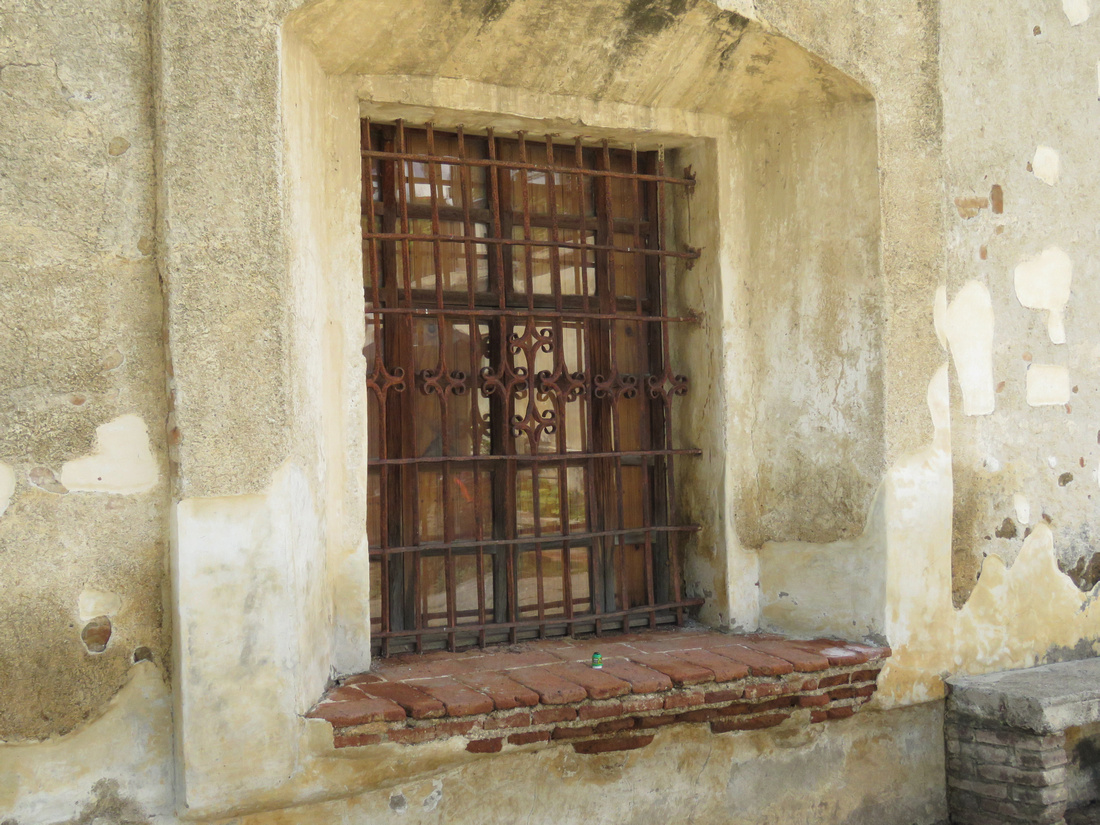


Something we have noticed here in the valley is that many people live behind walls. We are not sure if this is a security or privacy issue, but we found it odd coming from a country where homes are open to view.
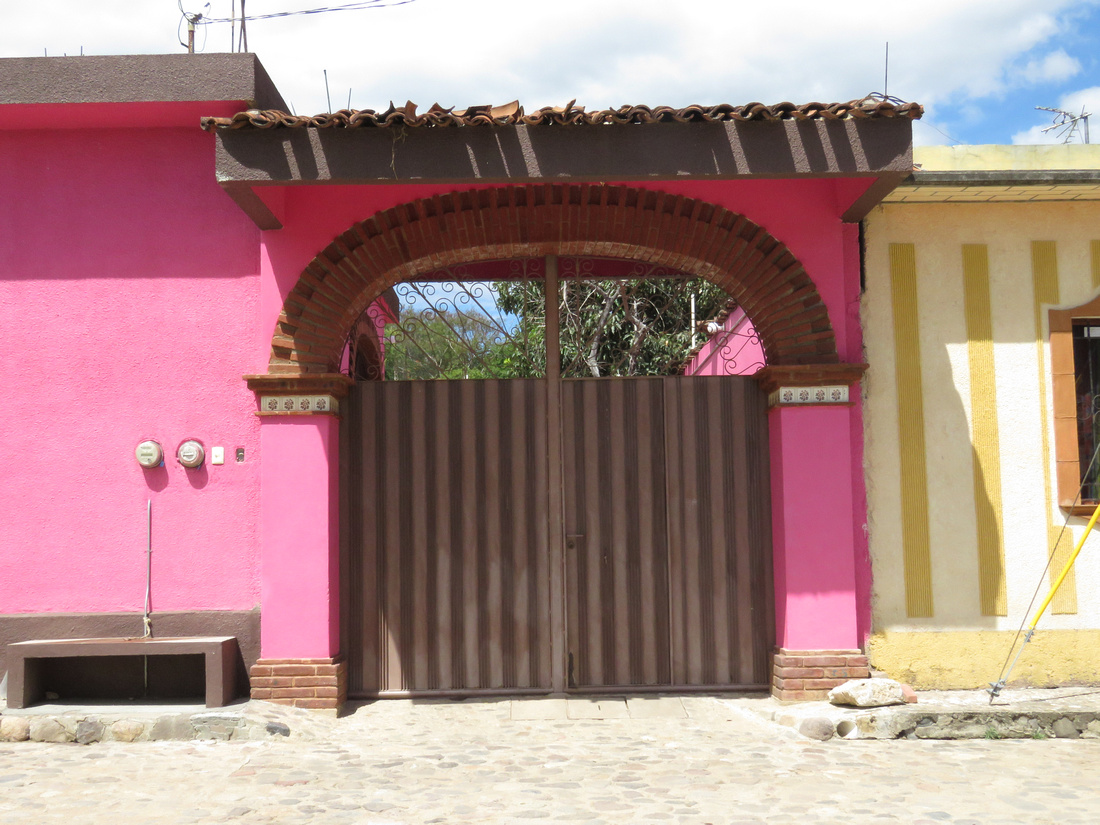
I would suppose this wooden support is hundreds of years old.
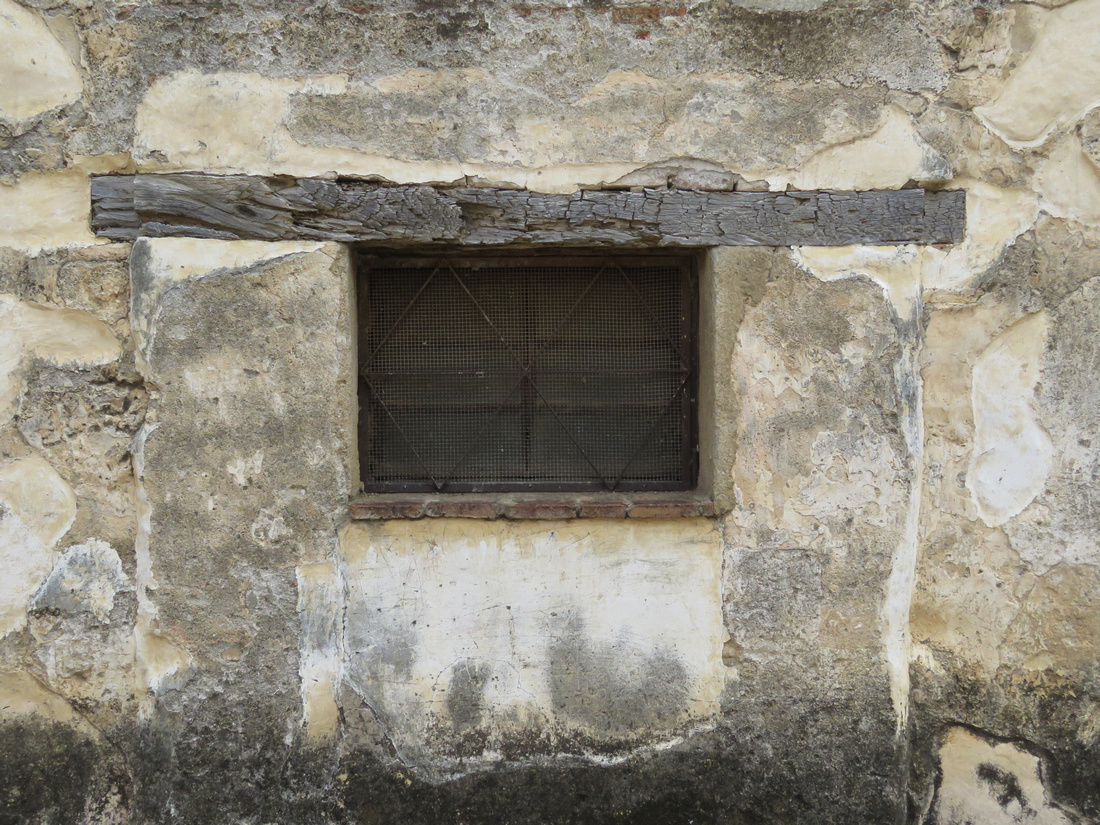
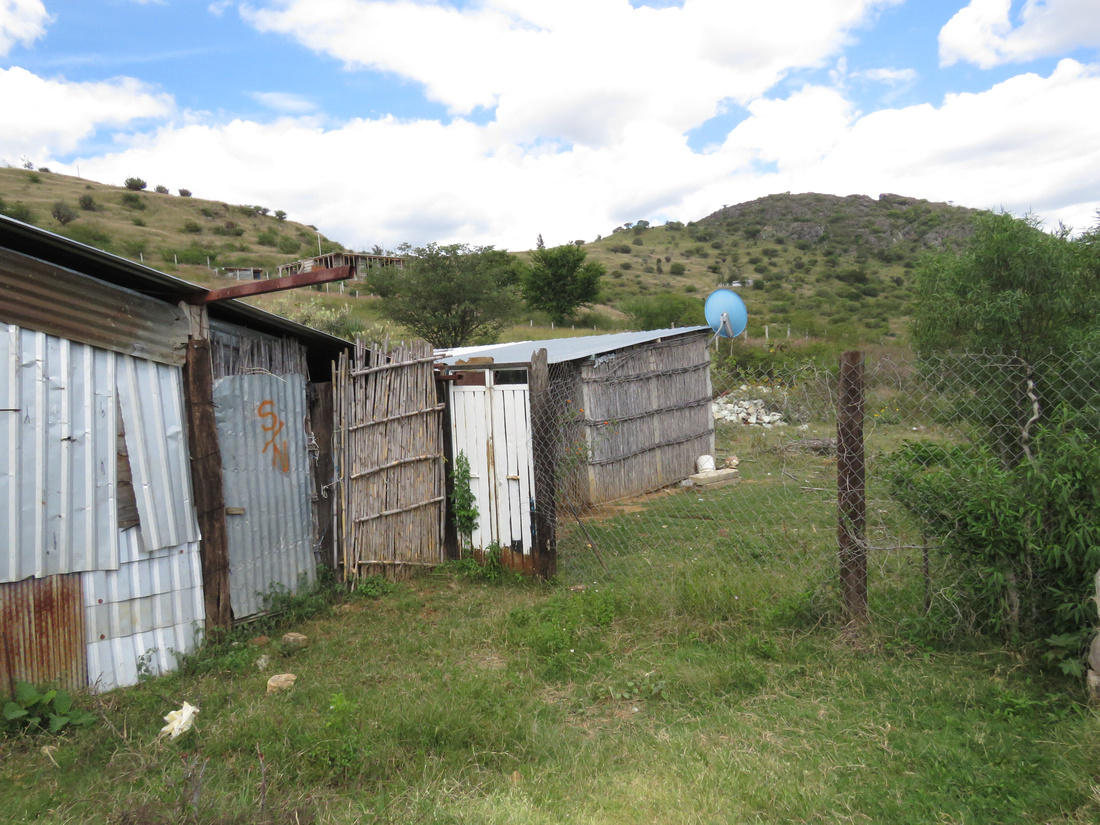

For several years we have driven by a sign along the highway advertising La Quinta. We were a little surprised that a small town like Tlacochahuaya would have an international chain hotel. Well, we were wrong. This Quinta is a salon for events. The manager informed us that rent for the building for one day was $2,000 US. That is just to rent the building and grounds. Everything else is extra. We sure do not know any people who could afford this, so we assume clients must come from the city of Oaxaca. Tlacochahuaya is the most progressive village we have visited. We could immediately sense the difference. Of course, we had to know why. After asking several people, the consensus was that Tlacochahuaya has a long history of its residents working in the US so money has been sent back for years. There is also a river that flows year round. That means crops can be planted without fear of the lack of rainfall. The consistent ability to successfully raise crops makes Tlacochahuaya unique.

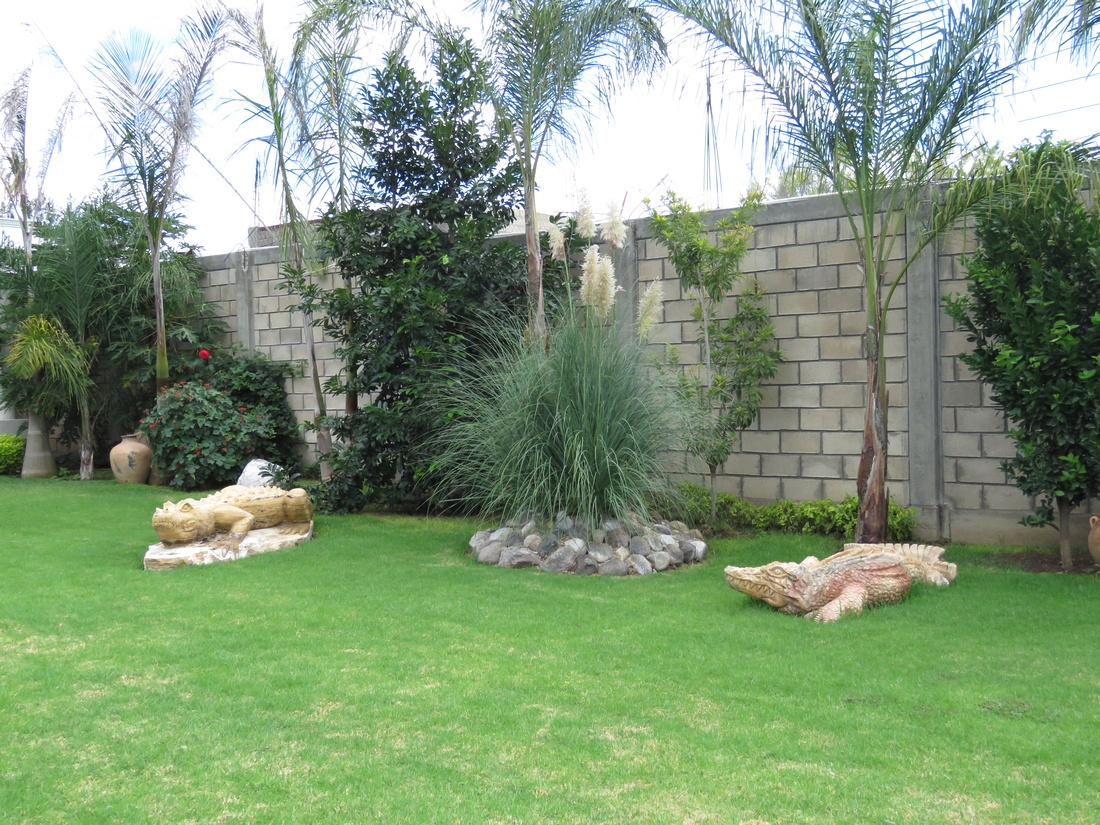 These stone carvings were incredible. This bear shows an incredible amount of detail.
These stone carvings were incredible. This bear shows an incredible amount of detail.
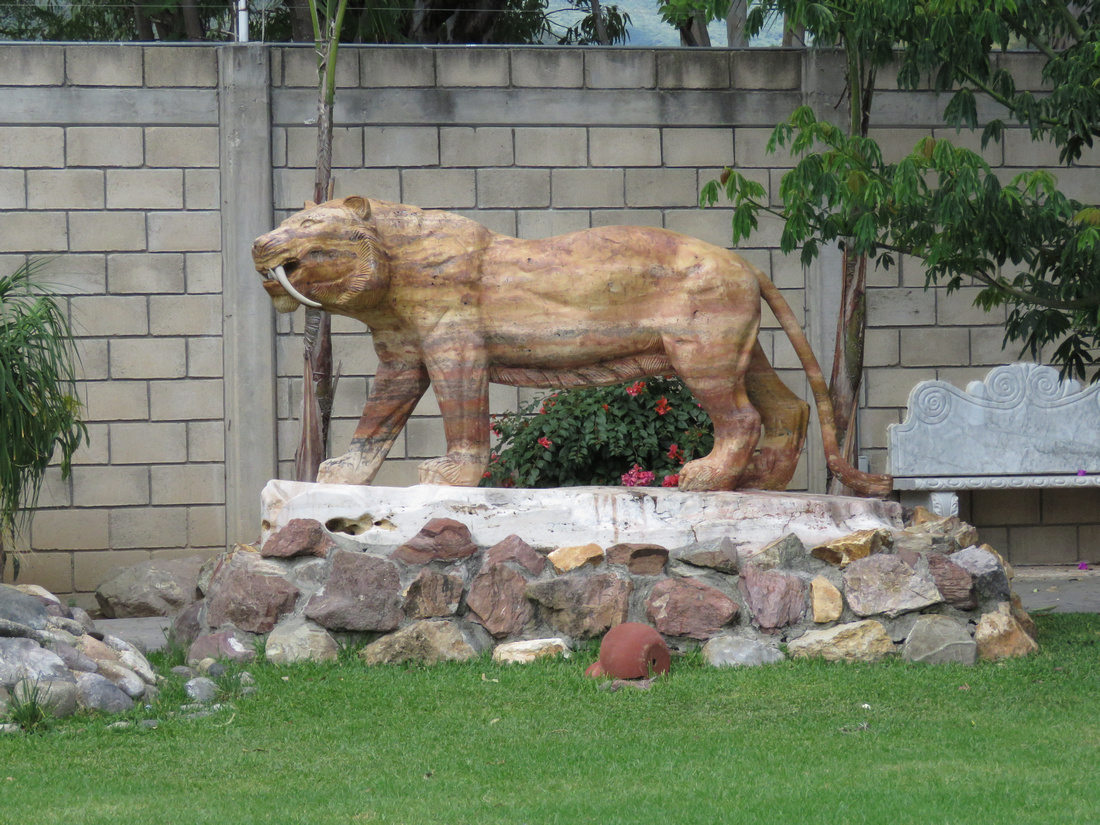
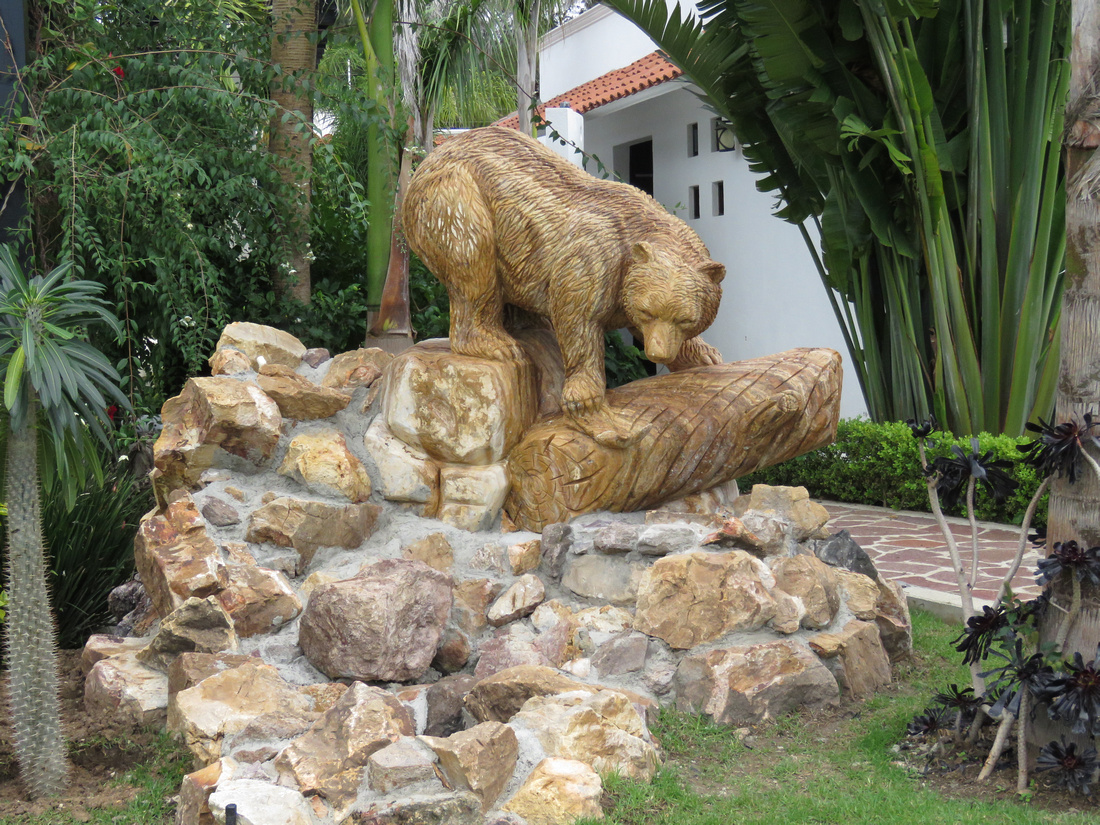

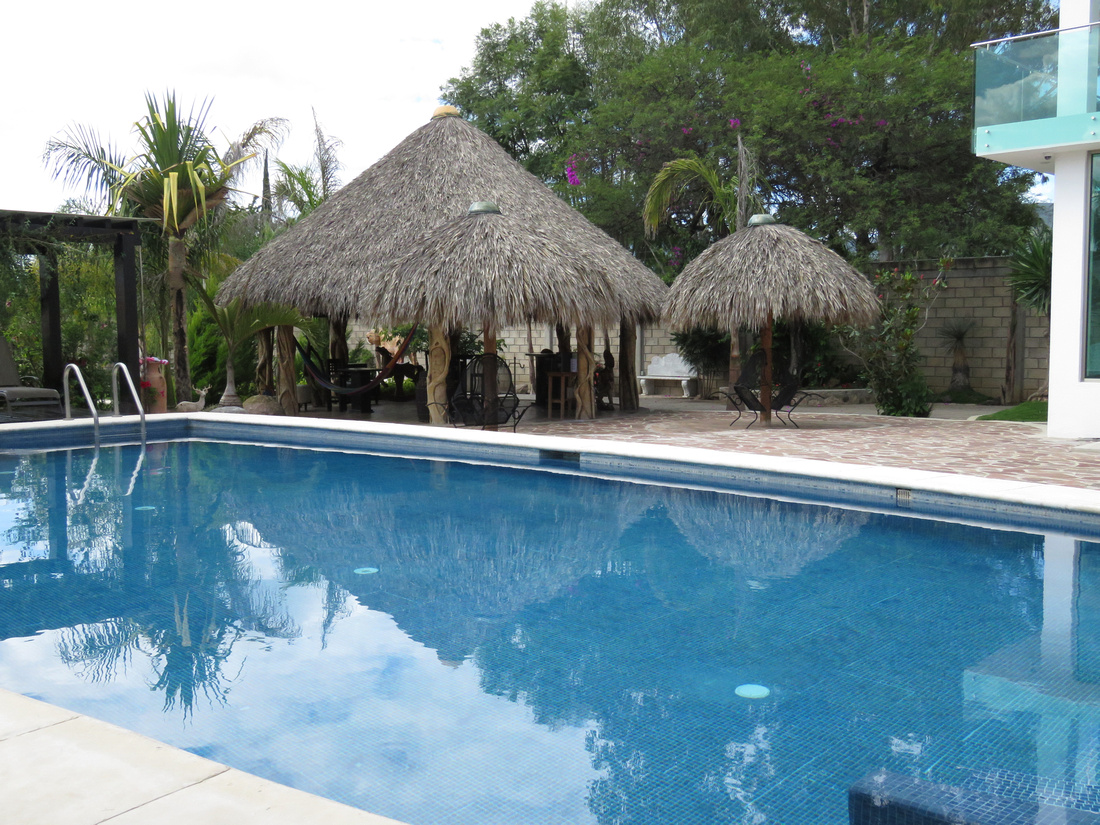
The mixture of rich and poor buildings and homes existing side by side is interesting. This home is not far from La Quinta. I have mentioned before the wide gap between the rich and poor here. There are schools with extremely rich students mixed with others who barely have enough to eat. I have also mentioned before how my perception of poor has changed since living here. I thought I had seen poverty in the US, but my definition has changed immensely.
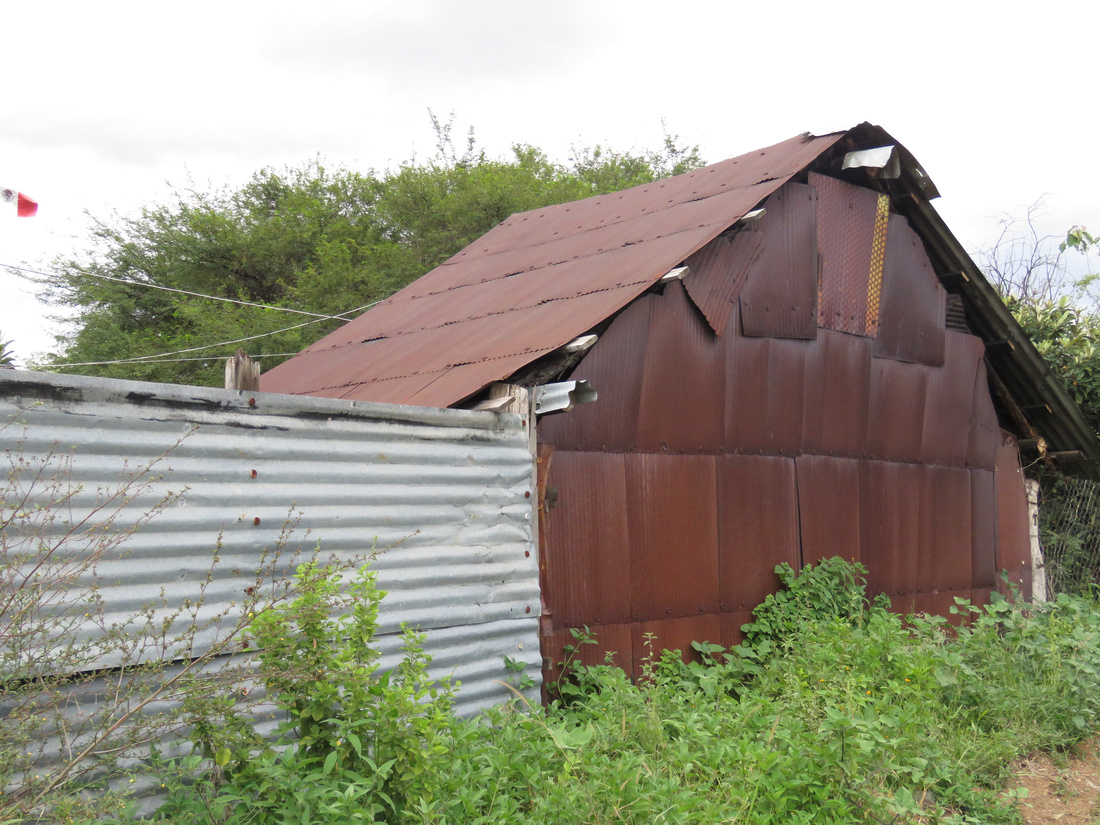
It is rare to see a wooden home here.

I got a kick out of this little guy guarding his home.

Around the house
Our hen Goldie no sooner separated herself from her first brood of chicks when she hatched another brood. The first brood she kept inside a fence. We only caught glimpses of the chicks because of the tall grass. This time she's parading them around the yard during the day. I was going to give the chicks to a friend, but we are enjoying watching them so much I'm going to wait. They are a blast to watch and our dogs are leaving them alone.
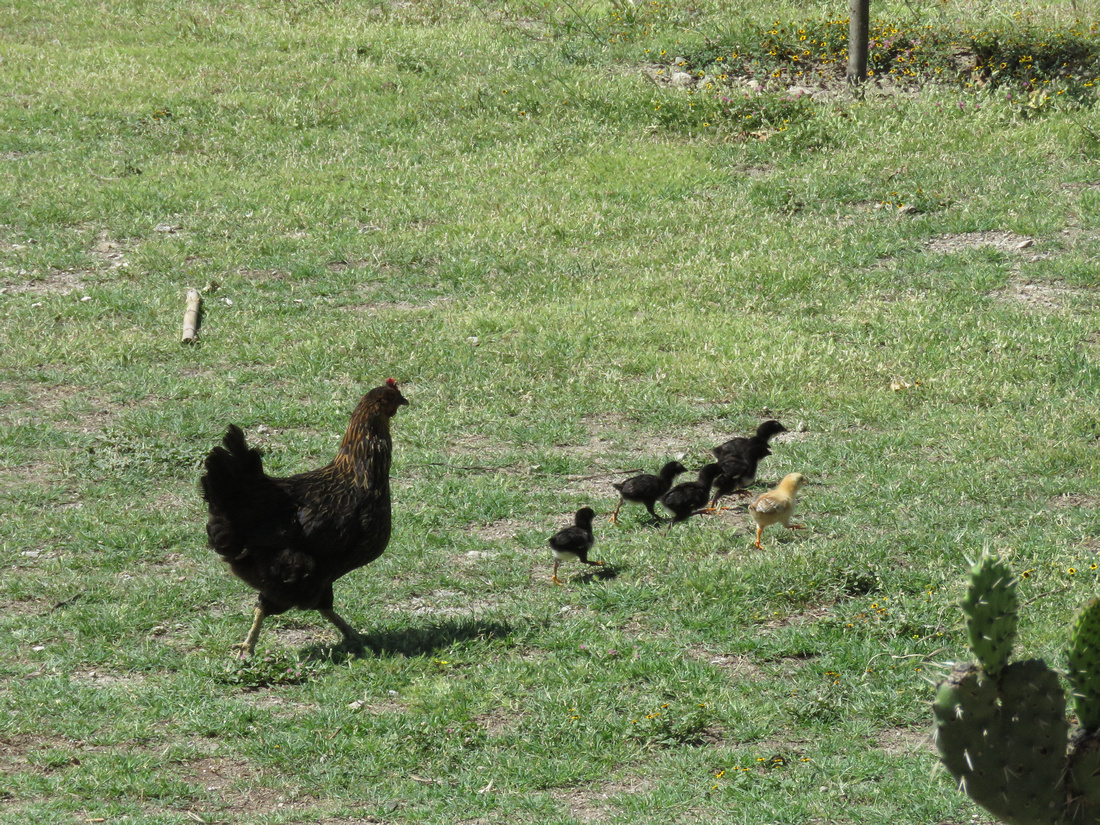
This farm is along our walking route. The owner has acres and acres of alfalfa.
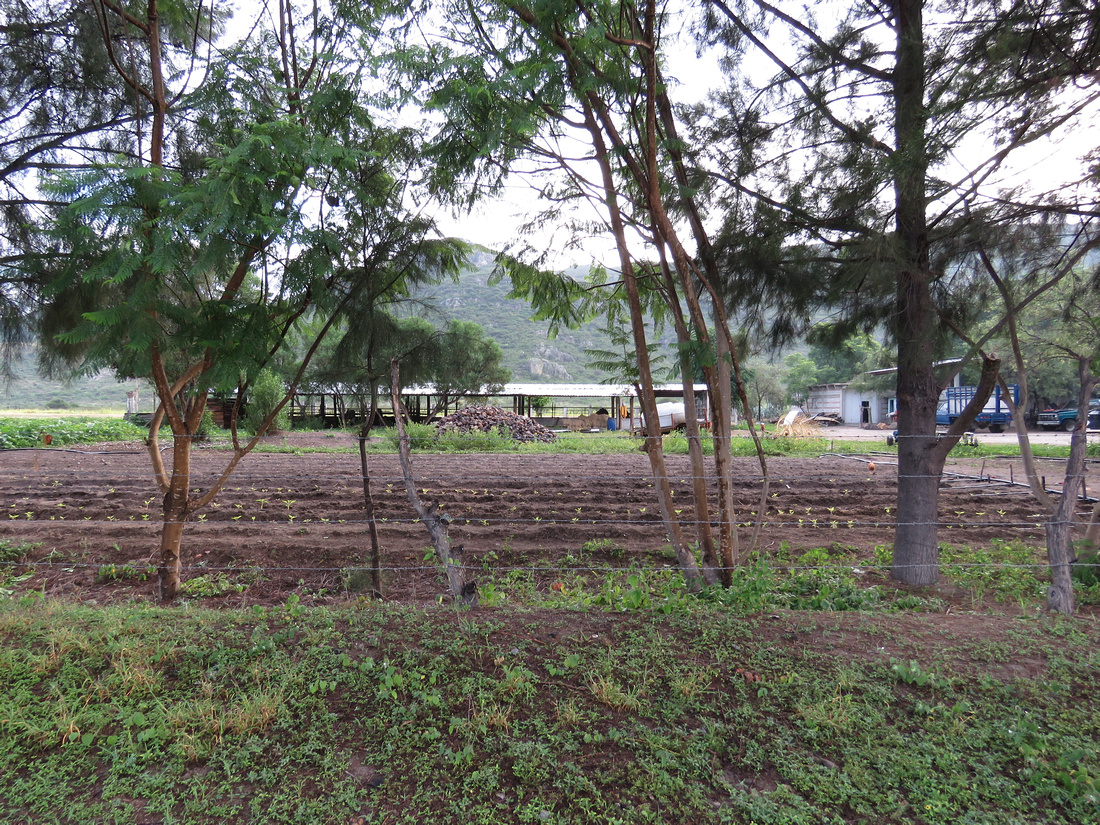
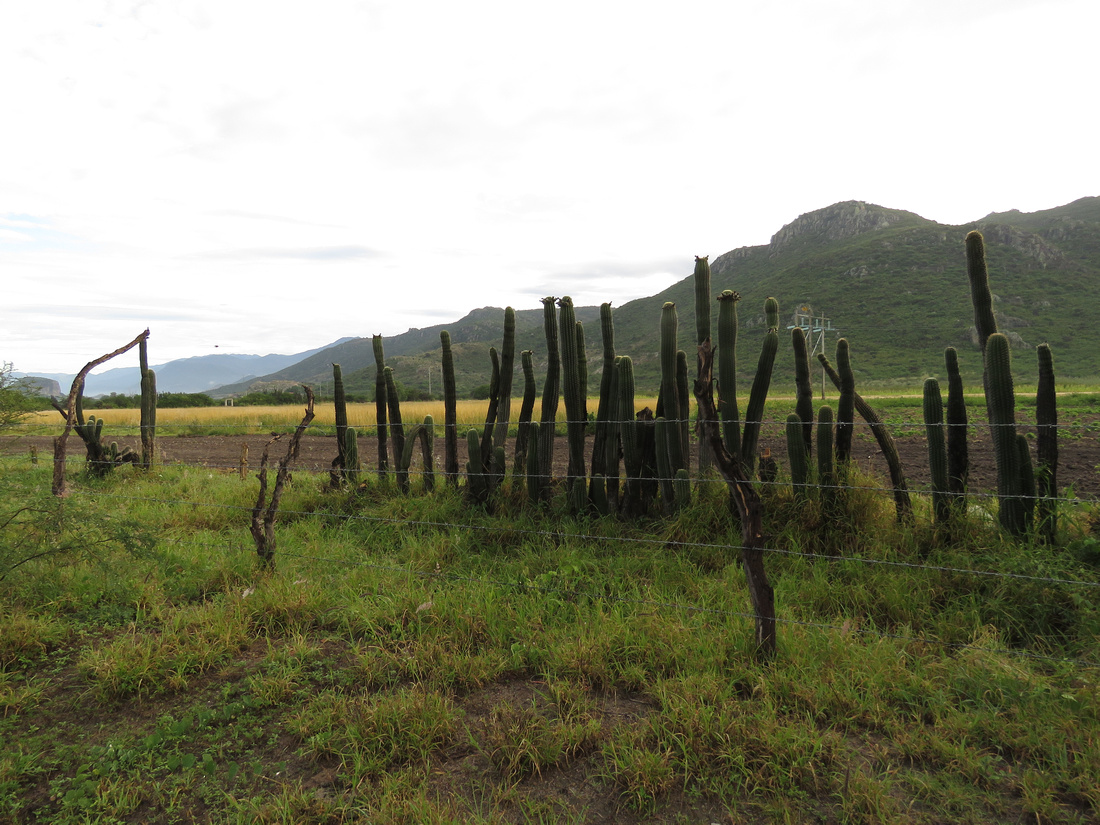
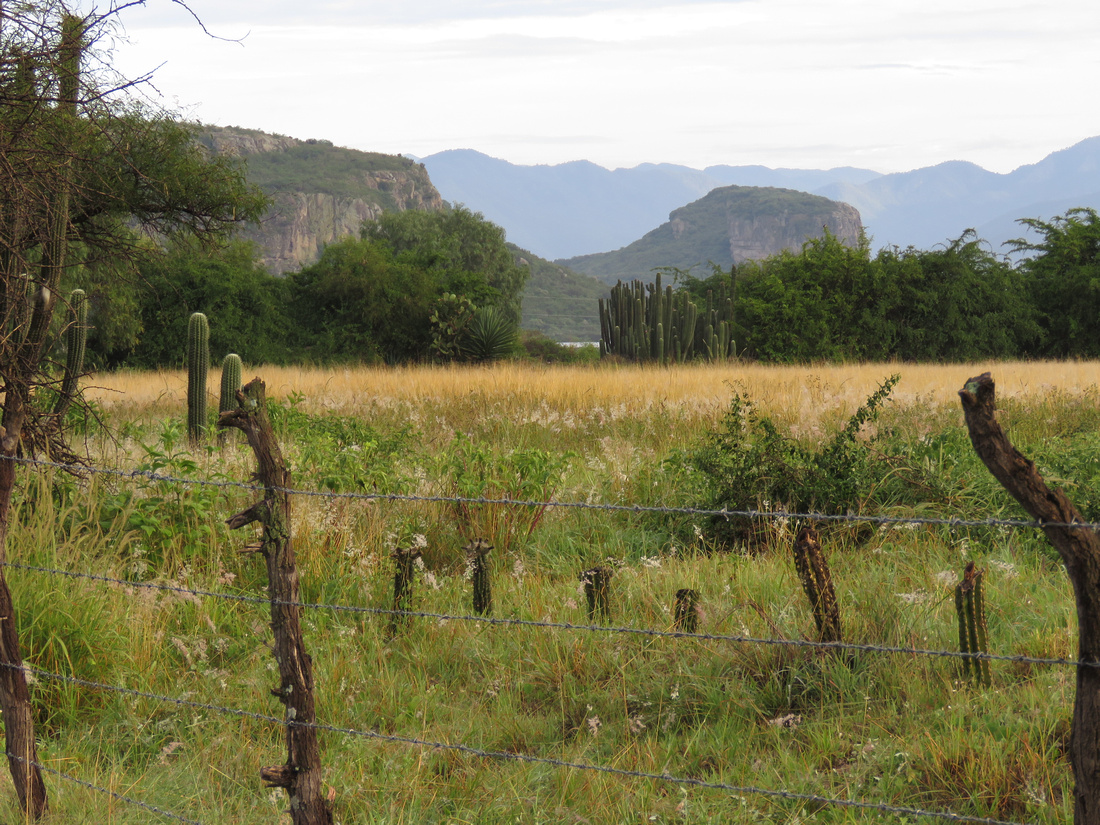

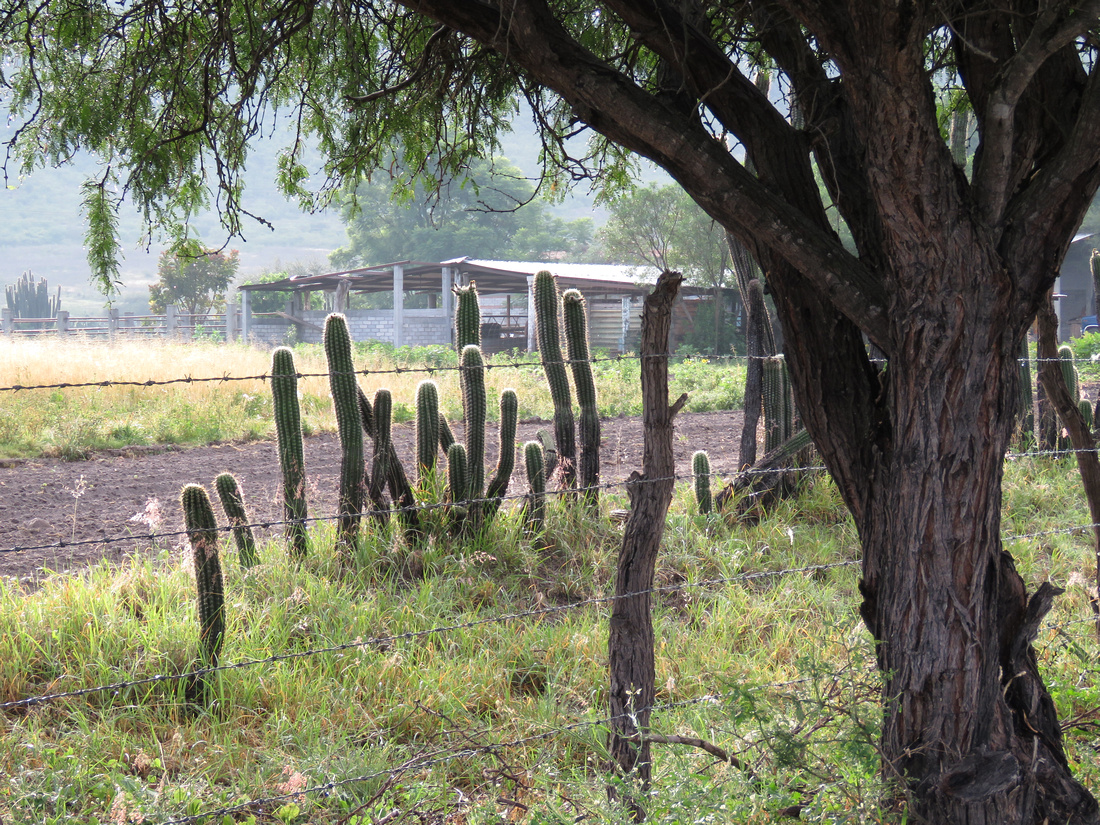
These anthills sometime have a ten foot diameter.
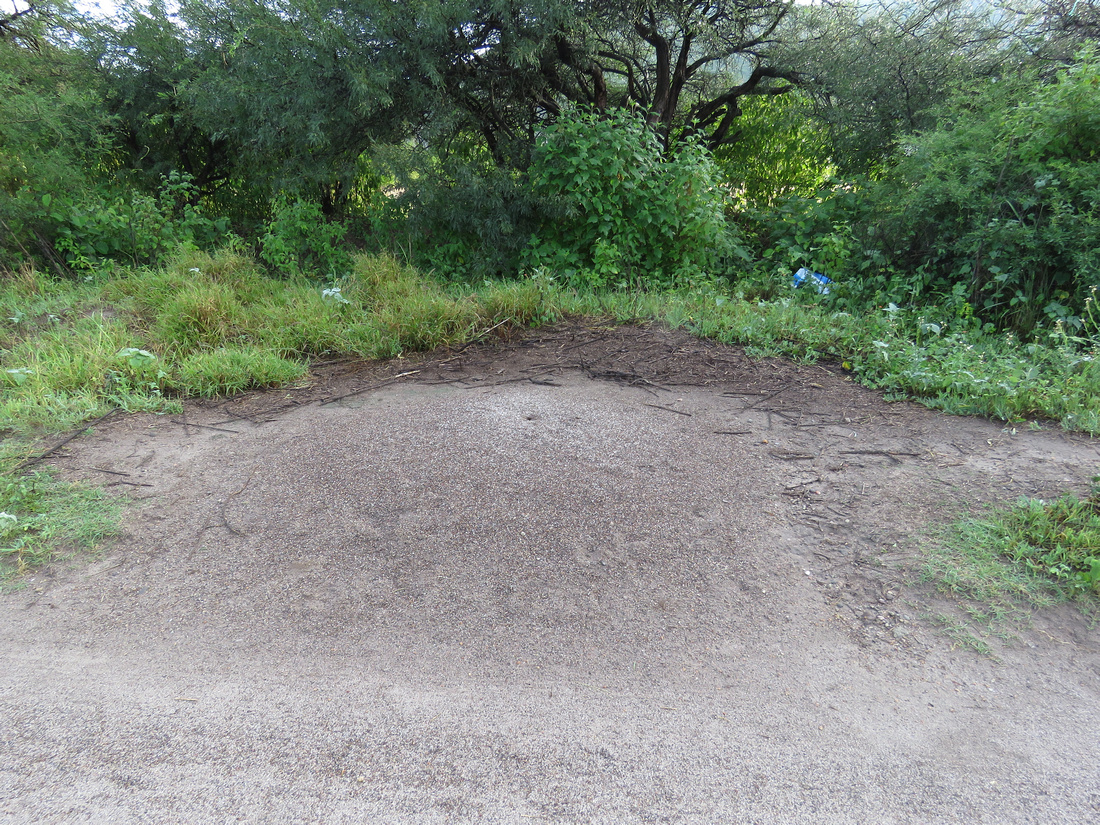
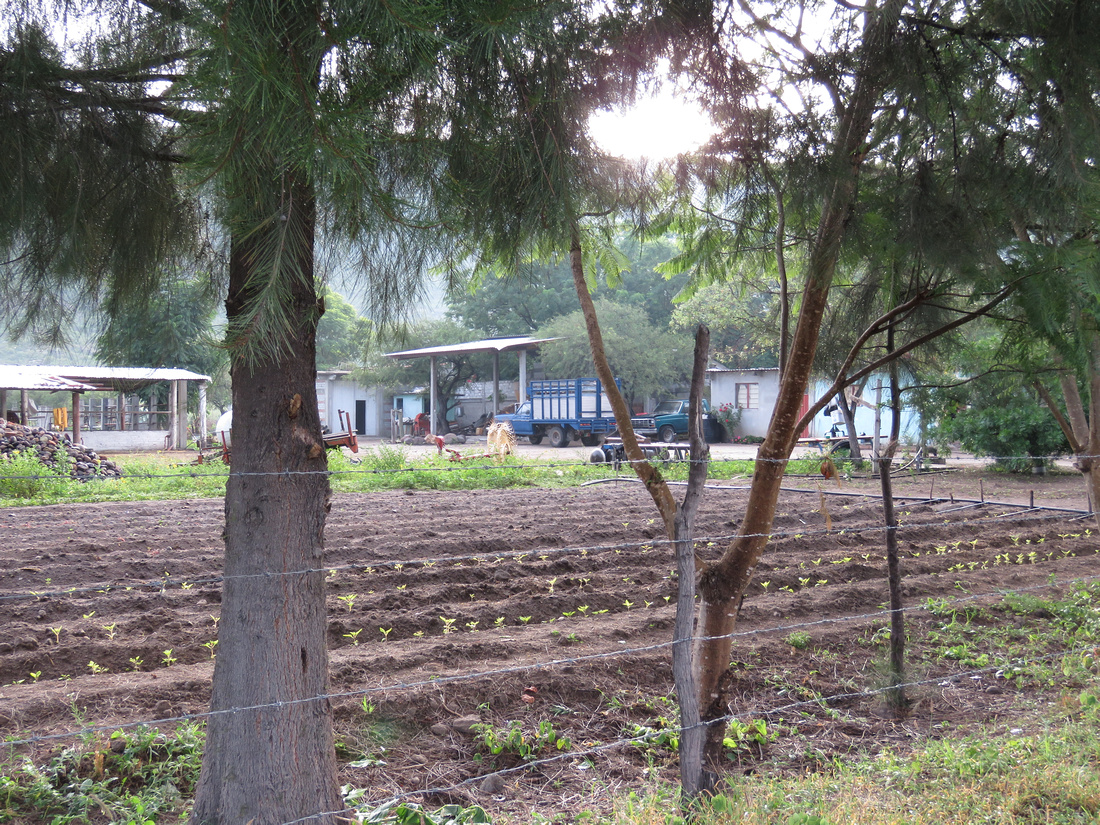
We are glad to see the Federal government cracking down on one of the corrupt teacher's unions. Hopefully their days of wreaking civil havoc is over.
Now that we have our property in our names we are going to travel to Brownsville to acquire our immigration visa. We also plan to nationalize our pickup. It's always a little spooky traveling through the northern states where the cartel violence is so prevalent.
We continue to enjoy Facebook as it is our primary lifeline to friends and family. We especially delight in posts by nieces and nephews. It is wonderful to see them making their way in the world and we celebrate their successes.
We are looking forward to sharing our trip to the US next month.
While living in Sedro Woolley, Beth and I photographed hundreds of weddings. We’ve also photographed a few here in Oaxaca. On August 15th we photographed our most memorable wedding for Adelfo and Monica in Matatlan. It was a large wedding. I estimate about five hundred guests. Adelfo is from Matatlan. Their wedding customs are still very traditional. Mixed with their customs were the traditions of Mitla, Monica’s home town. I had to stay on my toes as I was often unaware of what was going to happen next.
We were invited to the groom’s house the day before the wedding for lunch. I couldn’t believe all the preparation. There were at least fifty people performing different tasks. And they were very organized. Everything was made from scratch so preparing meals was labor intensive. A cow, two pigs, eight large turkeys, and two chickens were butchered.
Later in the day I began a conversation with a man from Matalan. After we chatted for a while he told me that when Beth and I first arrived he and his friends thought we were lost and just kinda wandered into Juan's yard. He didn't say so, but they must have been a little annoyed when I immediately began taking photos. It was a little embarrassing realizing we were perceived as dumb gringos that had lost their way or that maybe we were trying to buy some mezcal. Once it had been explained that we were friends, everyone became very friendly. We've often heard people speak Zapotec, but this was the first time we'd been around so many Zapotec speakers. It reminded me of when we first started coming down to Oaxaca and did not understand what folks were saying in Spanish.
We were invited back the day of the wedding for breakfast. After breakfast we walked with the bride and groom, along with a band and several people from the groom’s house, to the church about a kilometer away. The ceremony was similar to any Catholic wedding except the bride and groom had their son baptized as well. Adelfo and Monica were married civilly three years ago and now wanted to have a church wedding. I believe this was so their son could be baptized. After the wedding we marched backed to the groom’s home and were served a bowl of noodle vegetable soup after which guests received a serving of ice cream. Later the full meal was served. A whole lot of food was consumed along with eighty cases of beer and twenty bottles of mezcal.
I happened to be near when the fireworks were set off. I was across the road when they were lit but was hit twice hard enough that I still have bruises. I’m sure if the fireworks had been encased in metal, the shrapnel would have penetrated my body. I believe the ground actually shook! This was not the place for any veteran suffering from PTSD to be.
Preparing a tub with carizzo. Meat was later stacked on the carizzo. Water and spices were used to steam the meat. The tub was eventually buried in a large hole with several hot rocks on the bottom. The tub was covered with aluminum foil and sheets of cardboard and tin, then covered with dirt. Cooking time was about five hours.
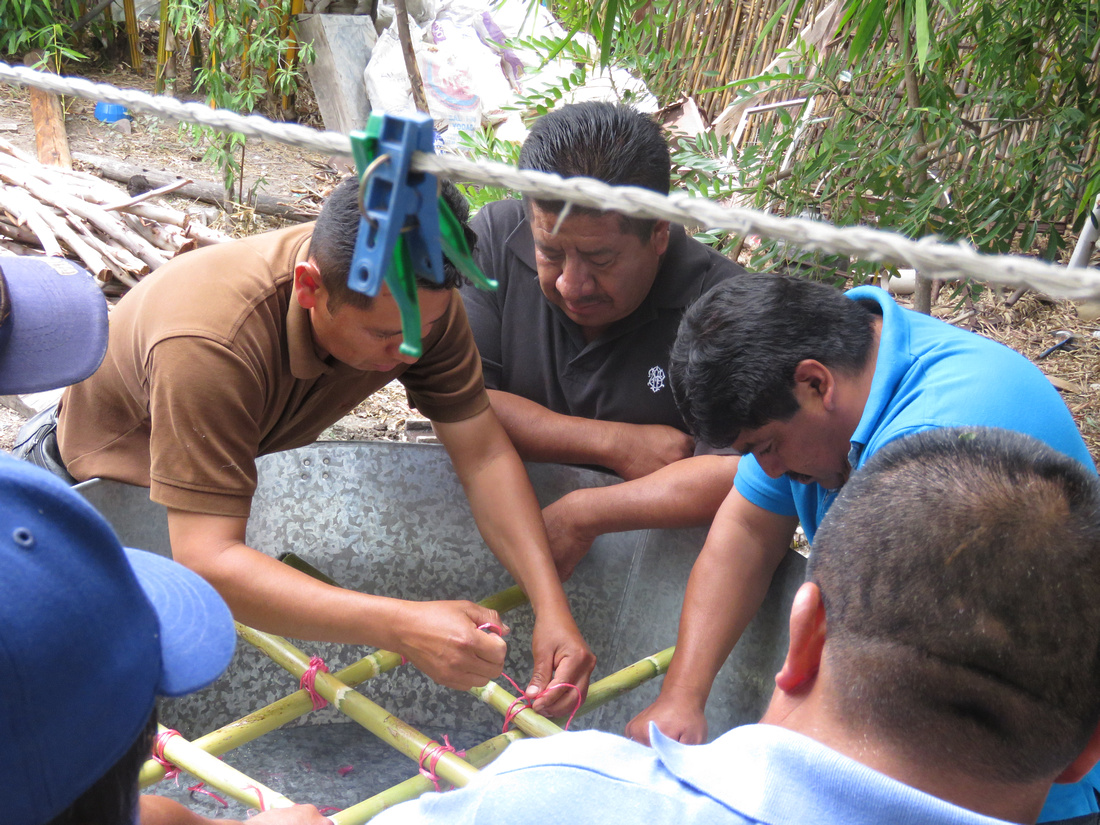
Many pots of either water or oil were heated outdoors over fires.
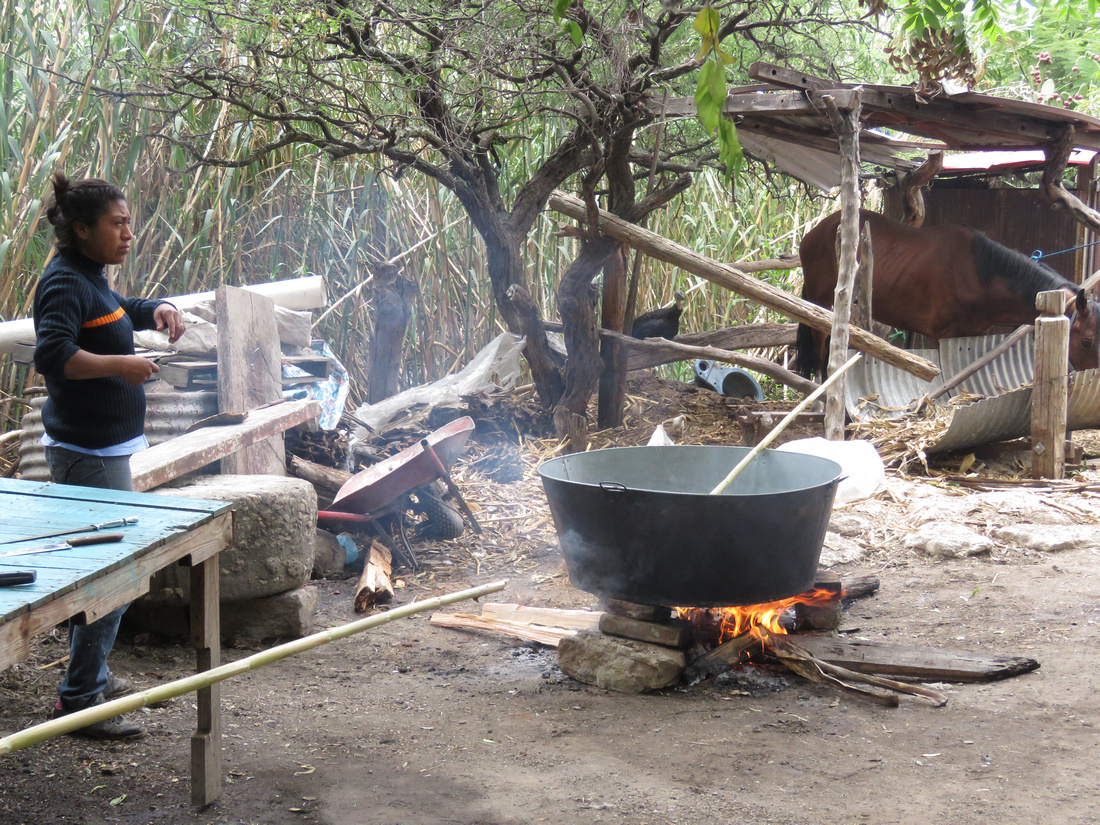
And the hens and their chicks were often underfoot.
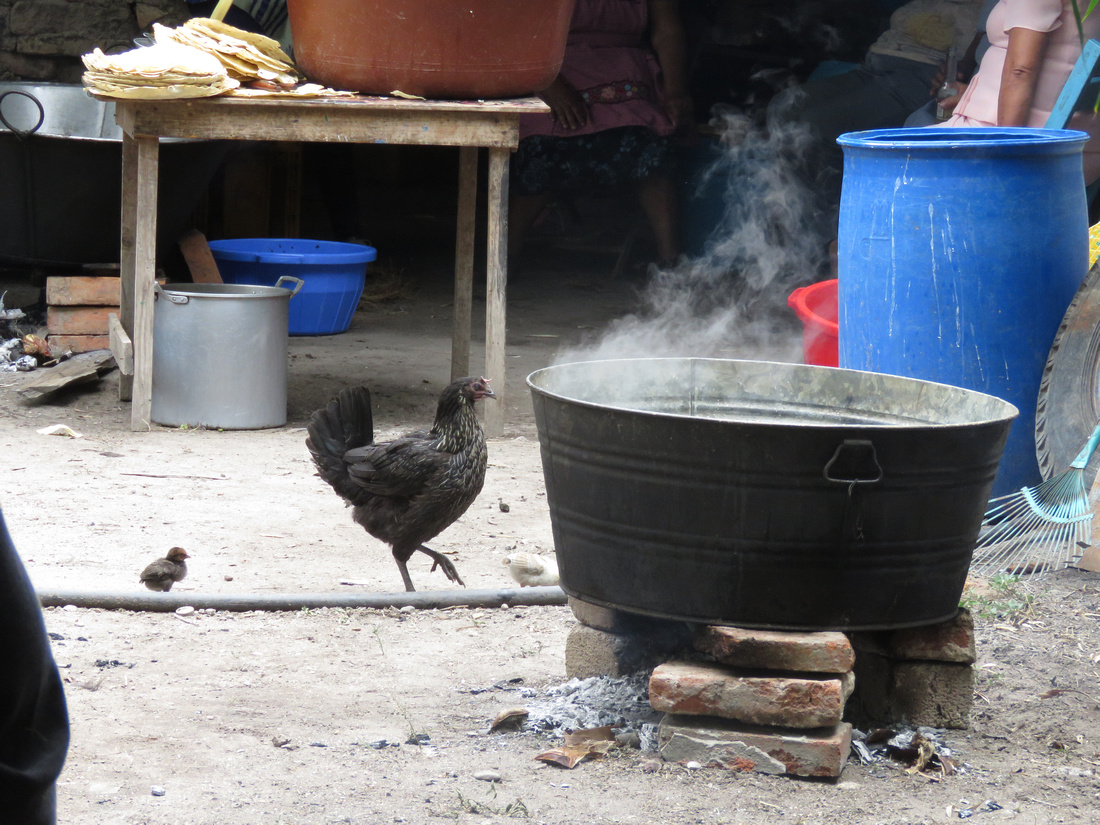
Pork rinds were made and were part of the prep day meal.
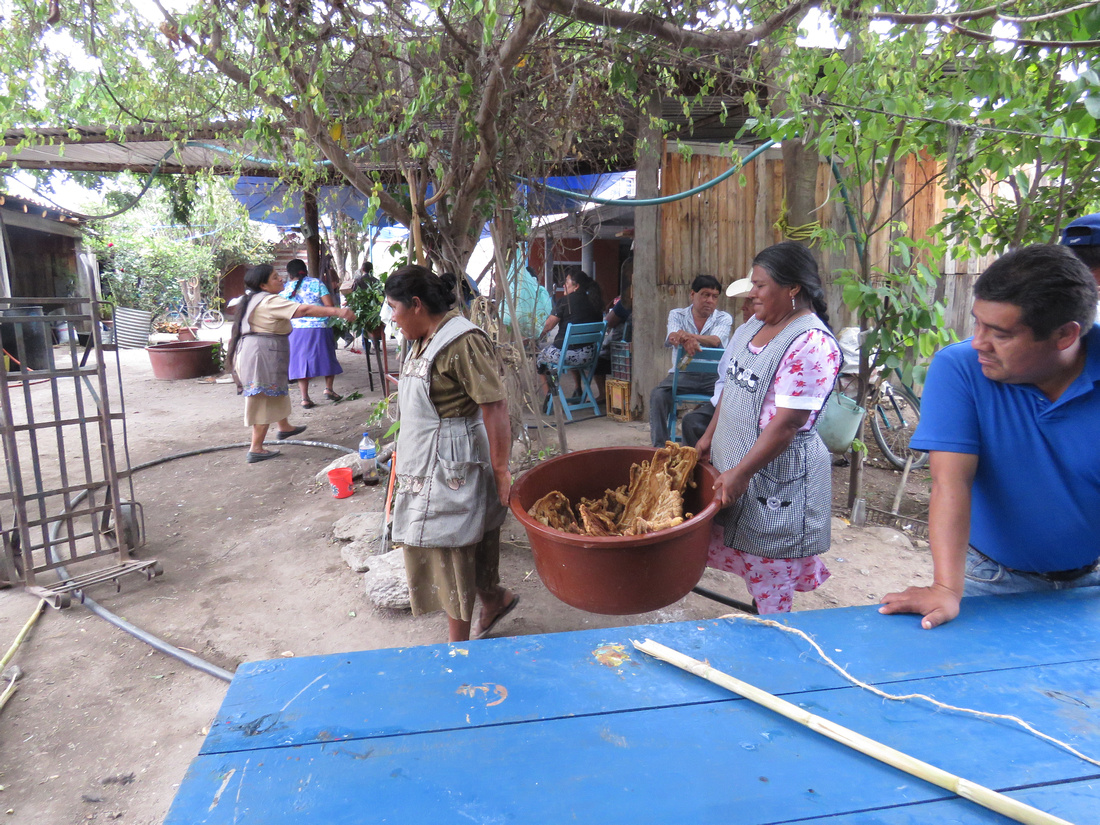
I'm not exactly sure where this pork ended up.
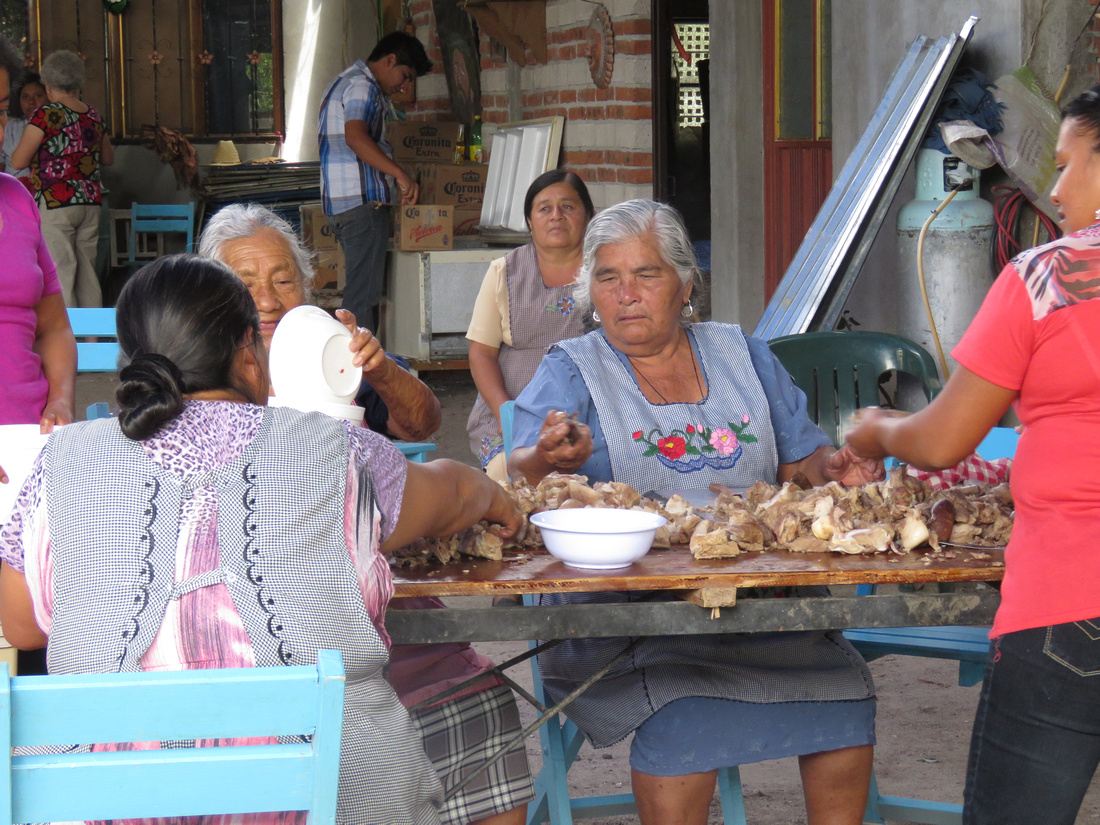
The women work well together.
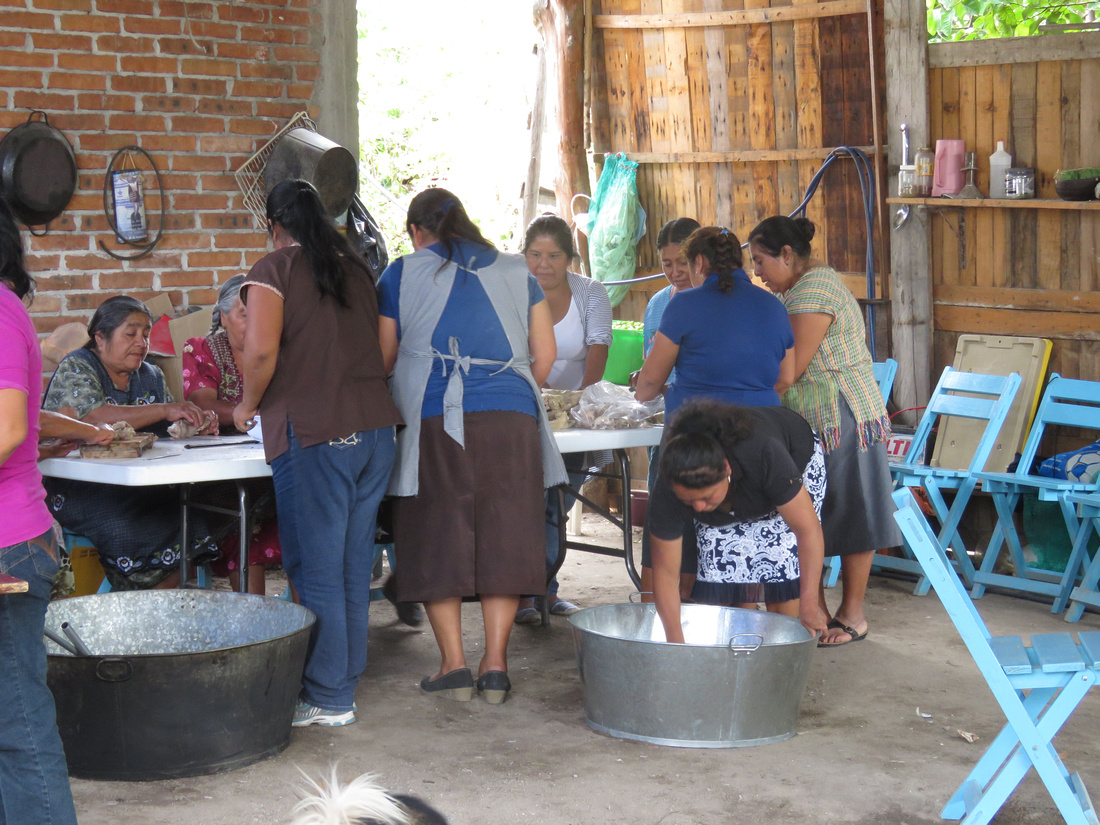
This is the outdoor kitchen Juan completed in preparation for this huge event.

There were several cooking fires scattered around the yard.
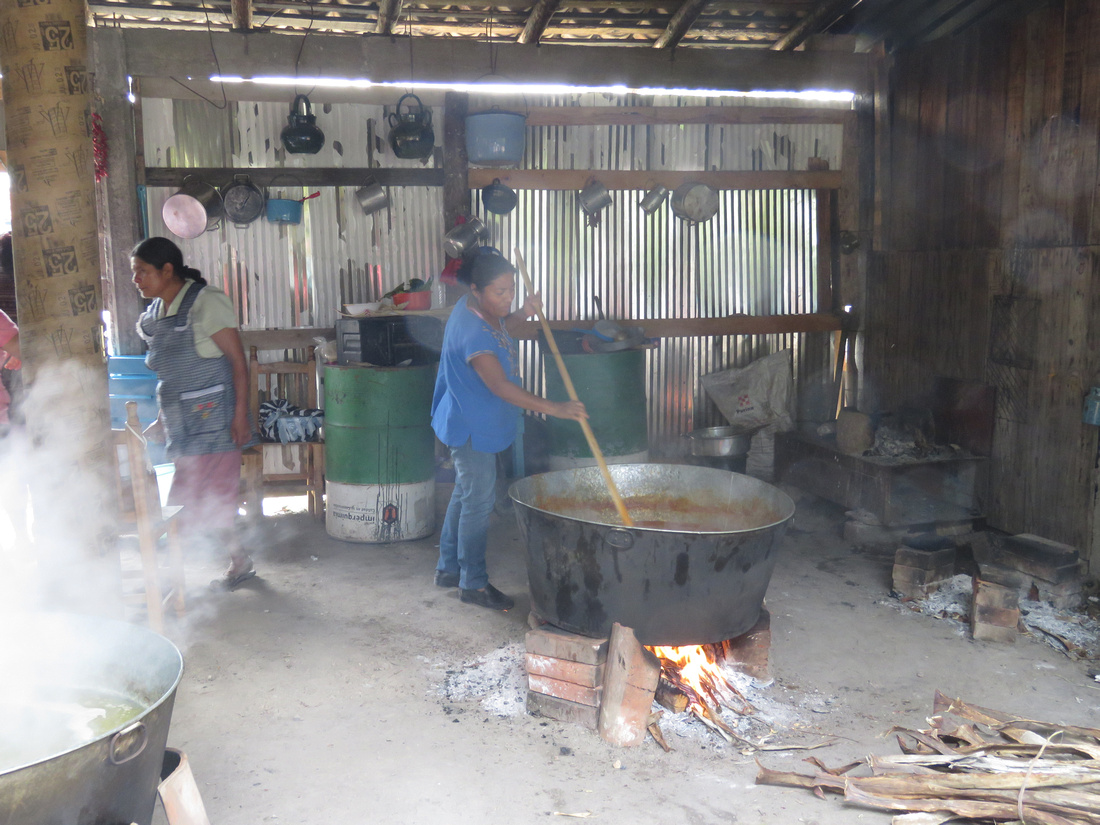
Naturally, cold beer was served to help cool every one down.
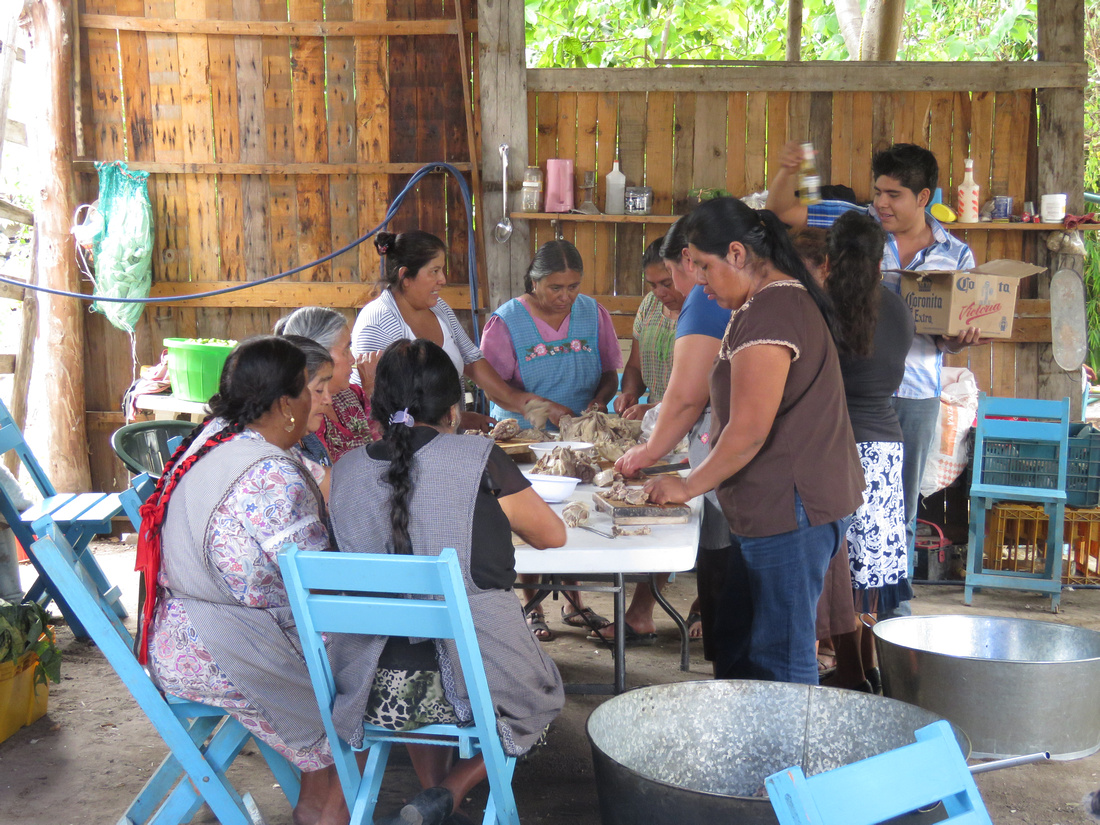

All the workers were served lunch which included horchata and handmade tortillas.
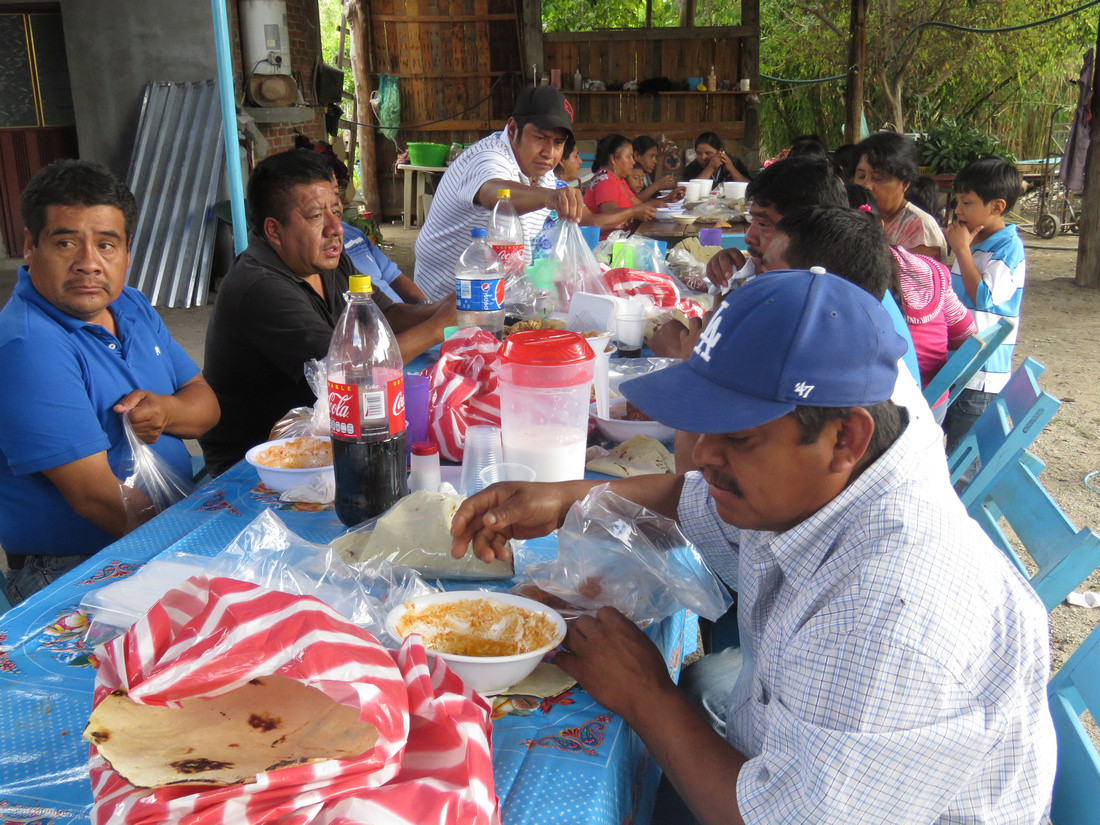
Most every one had a hearty appetite after all the hours of prep.

Monica the bride.
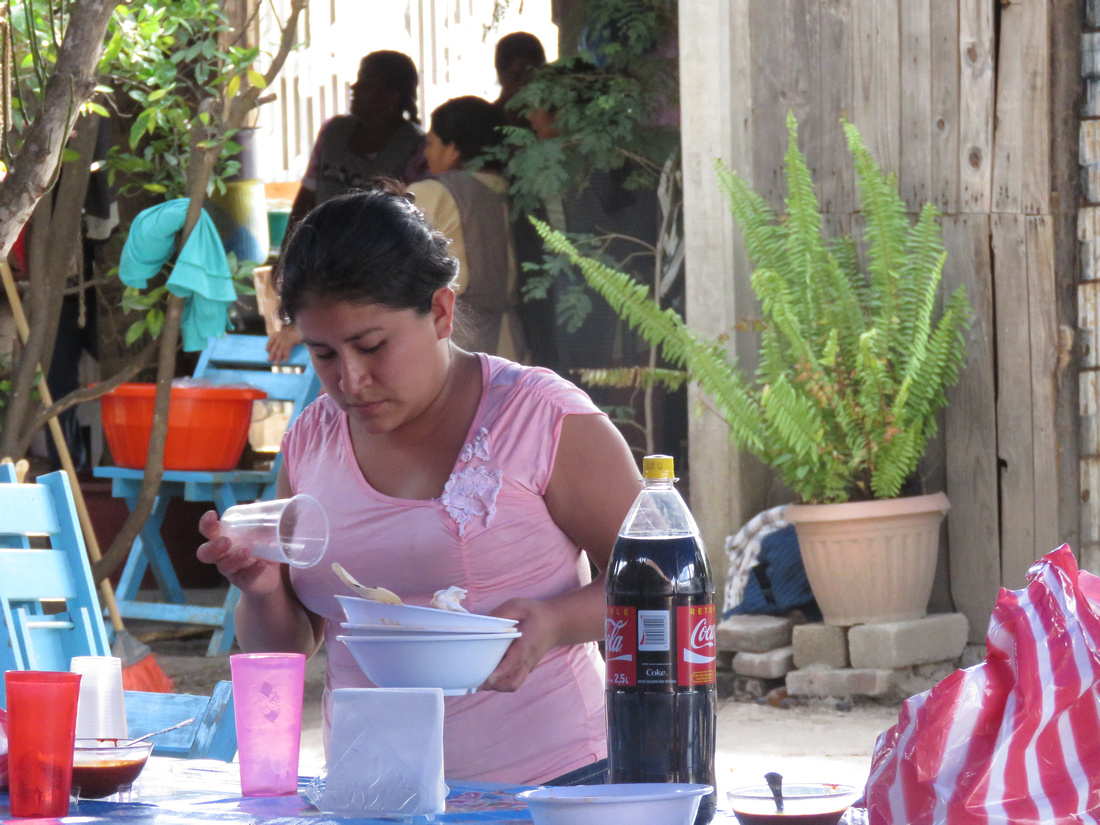
These women are preparing the leftovers for others to take home.
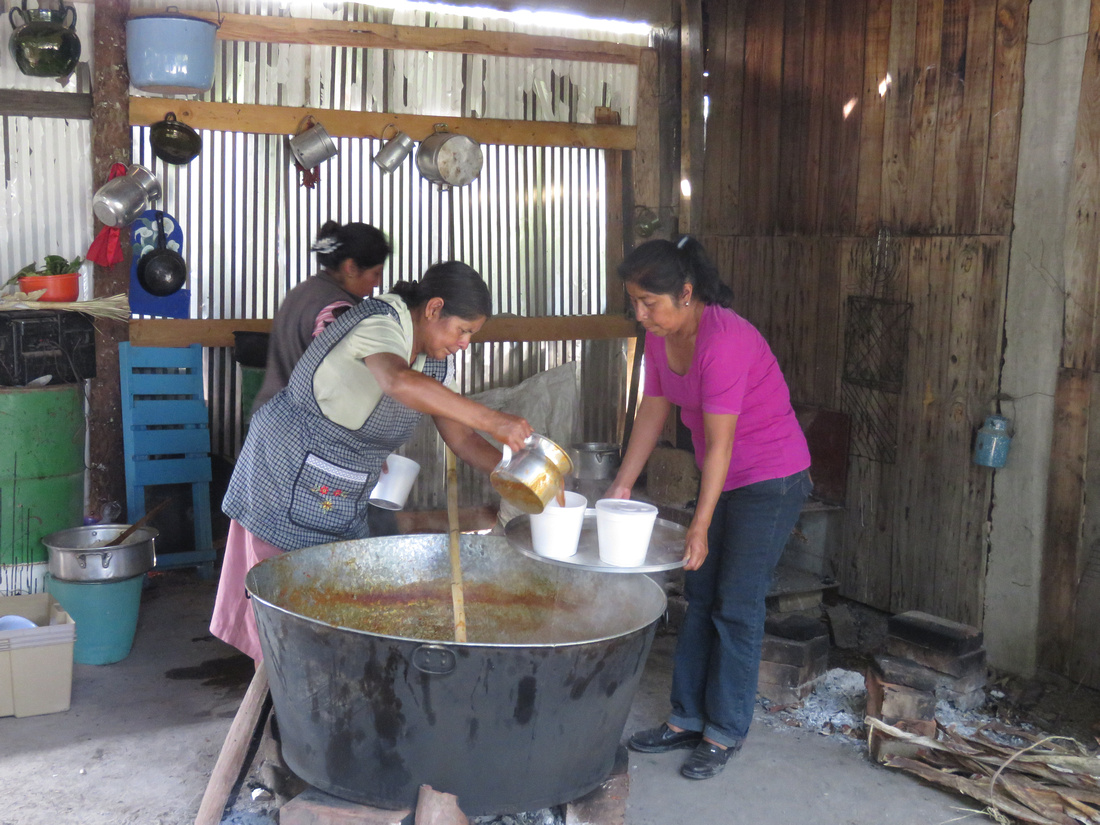
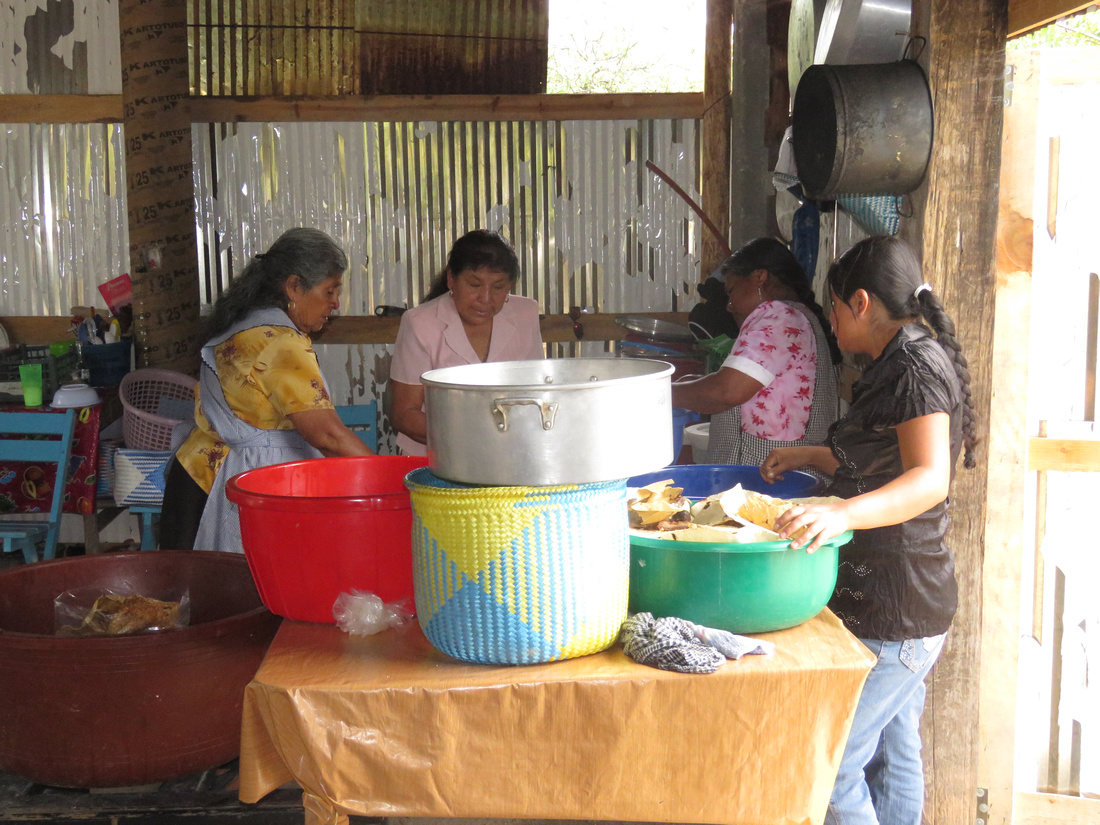
Aldelfo the groom.
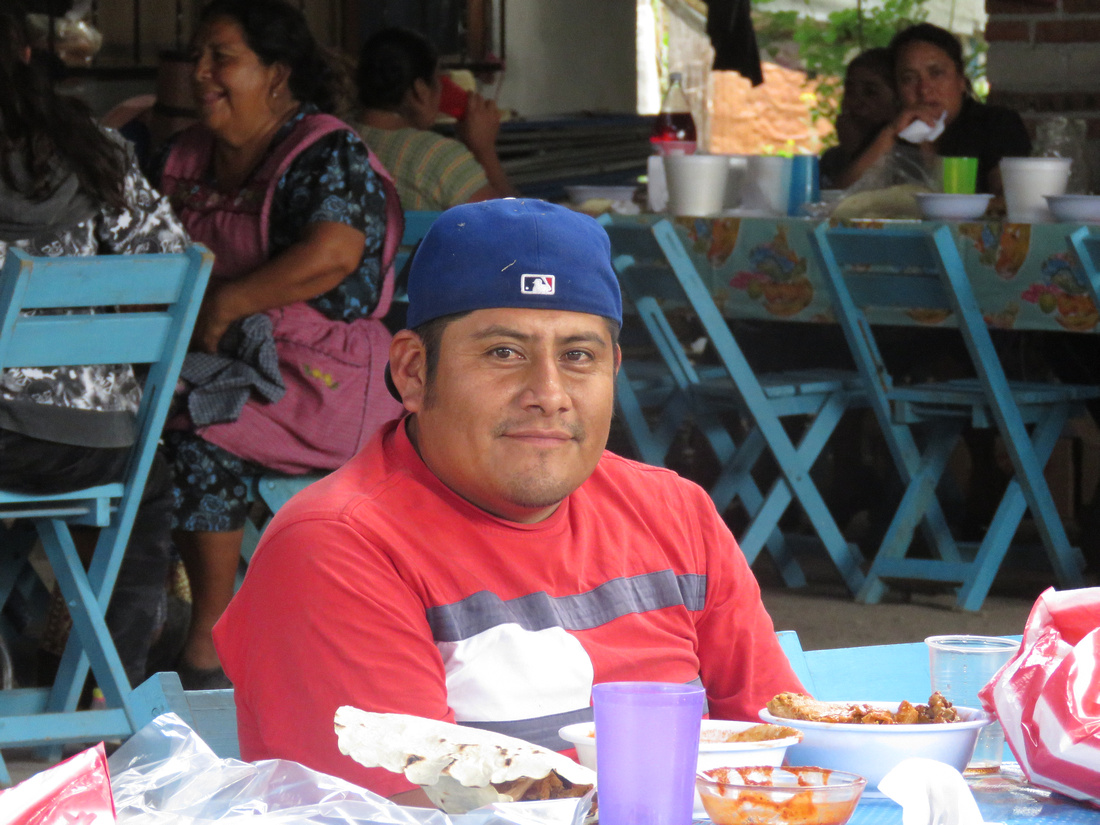
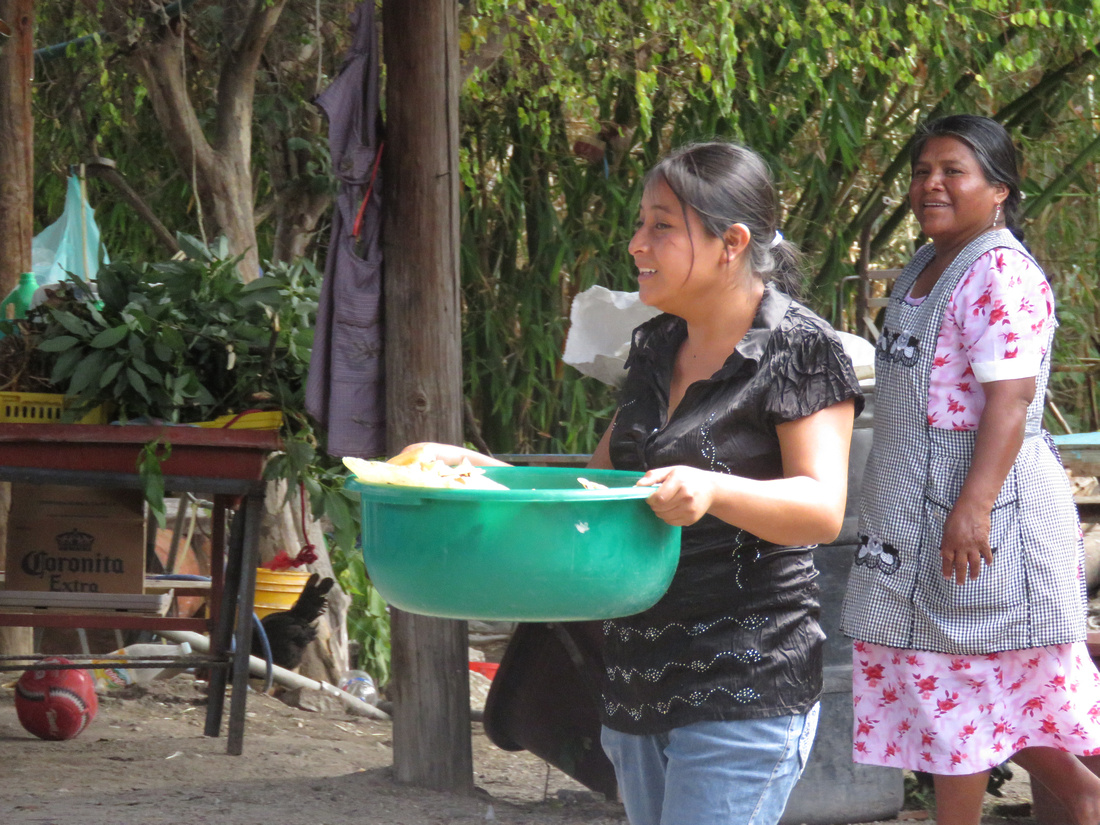

Butchering the cow.
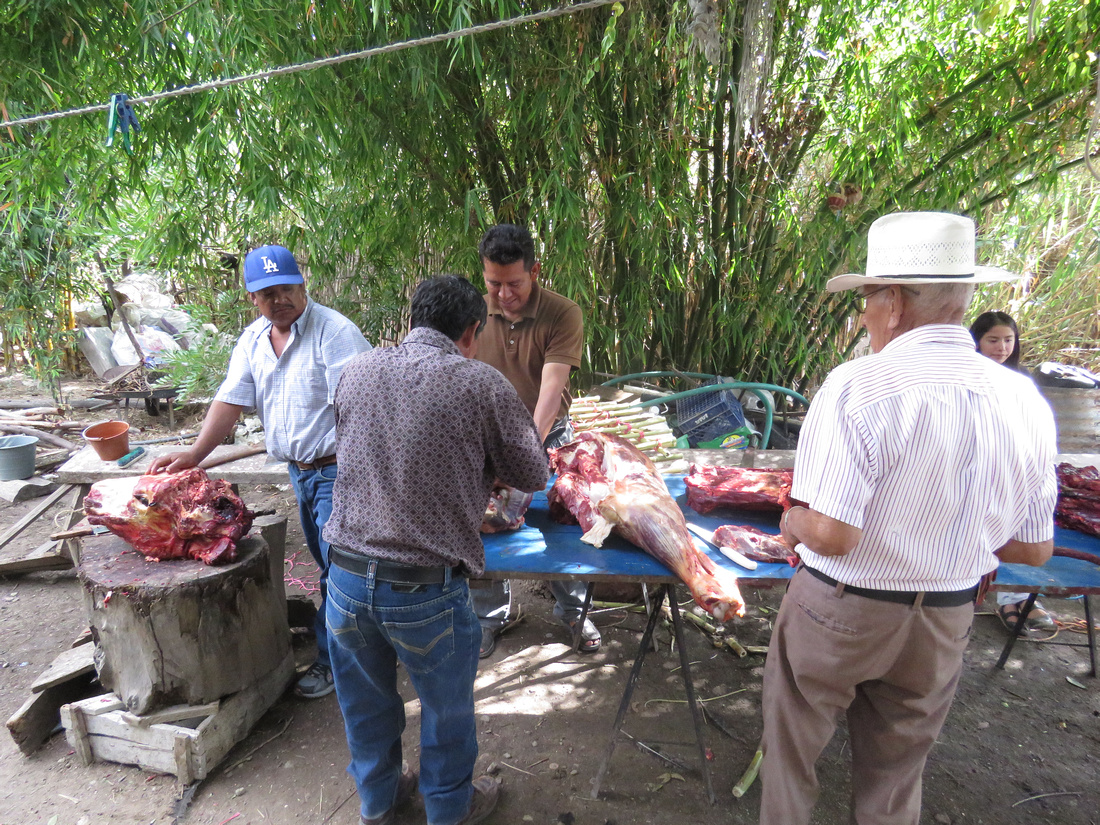
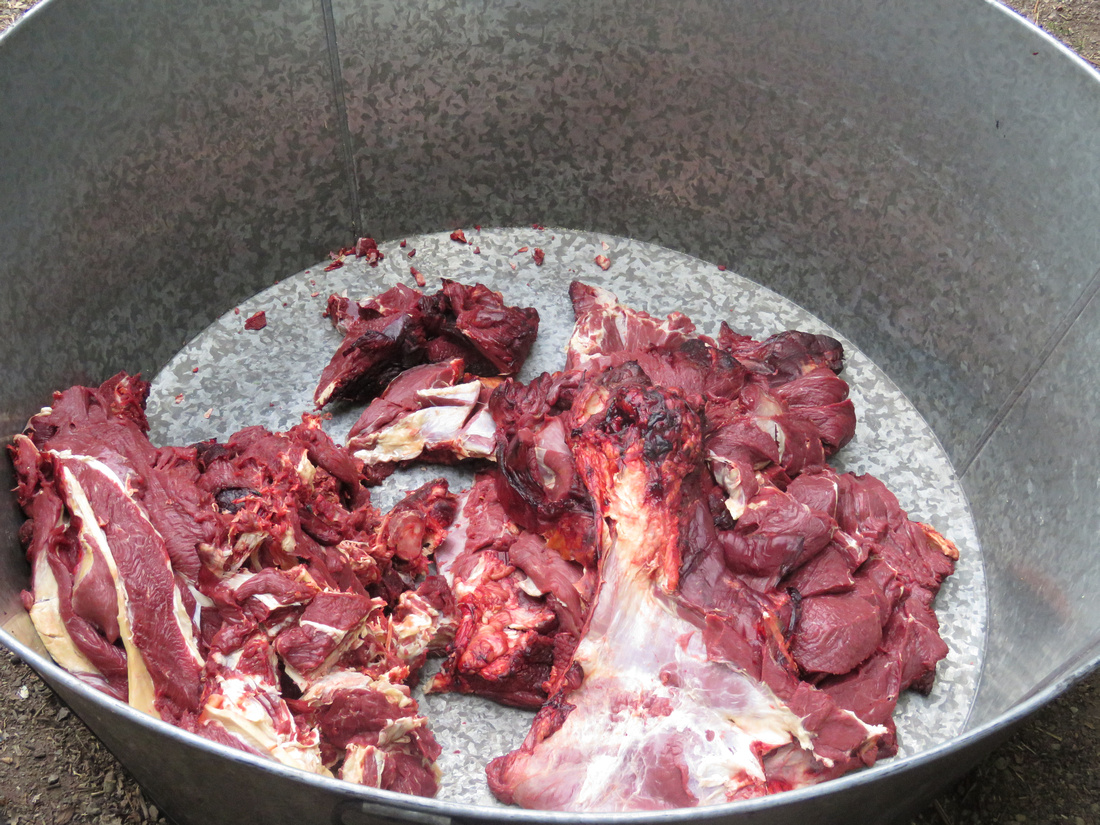
This was a little tough to watch. Removing the brains.
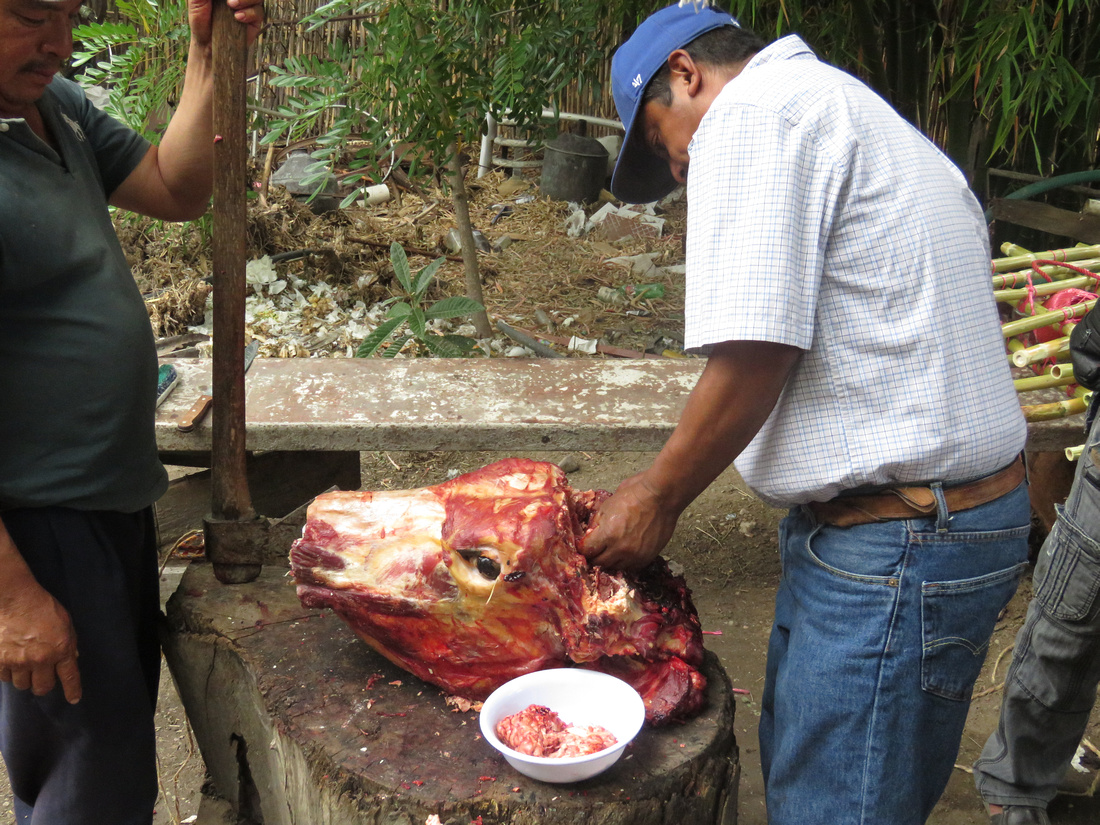
Here the head is split open and small pieces of meat are being cut off. Here in Oaxaca there is not much from an animal that is not eaten.
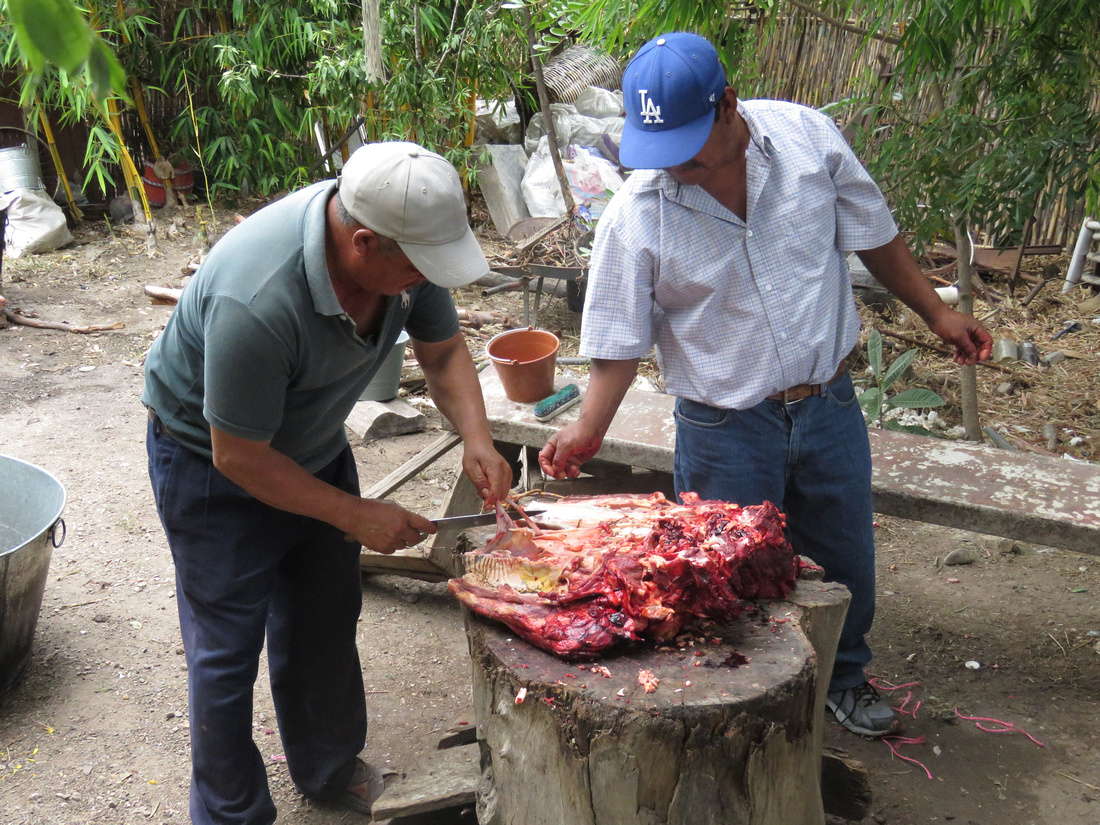
Before the actual wedding ceremony, guest were served breakfast. Here the women are almost ready to start serving the chocolate and breads.
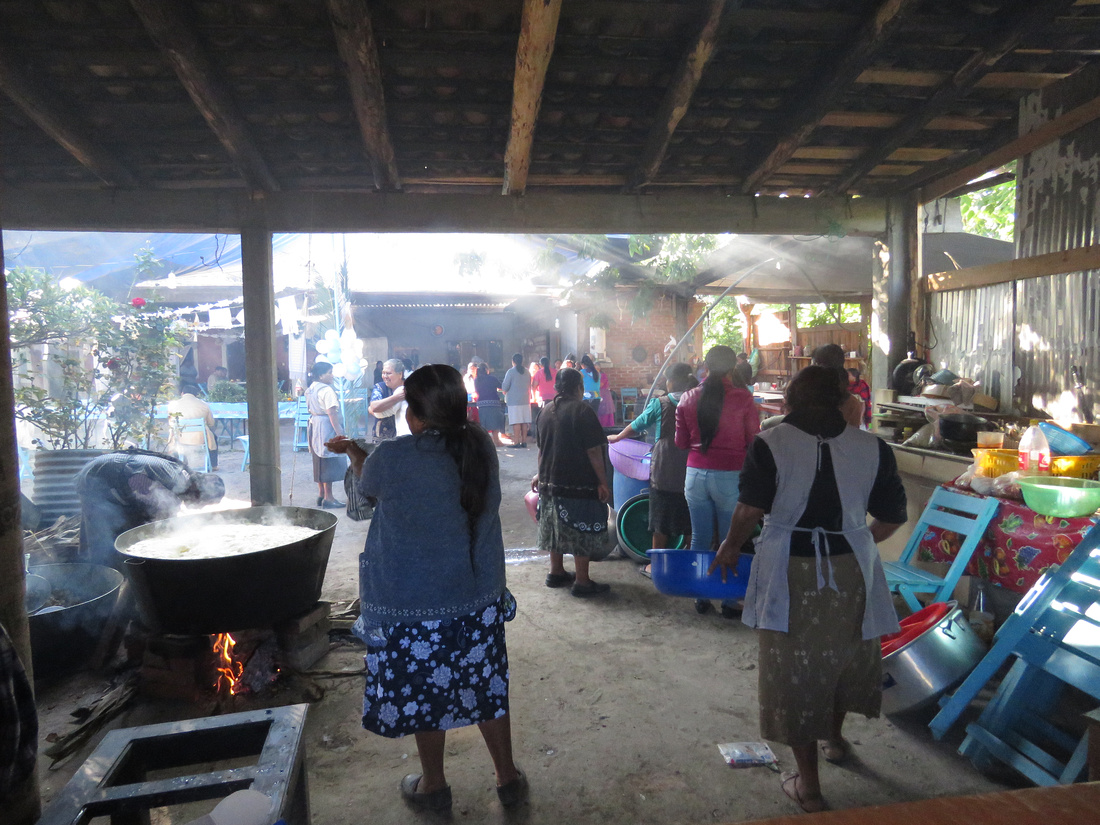
Washing dishes was a monumental task. They were constantly being washed and rewashed. All the women pitch in to help.

Women preparing chocolate that they call espuma.
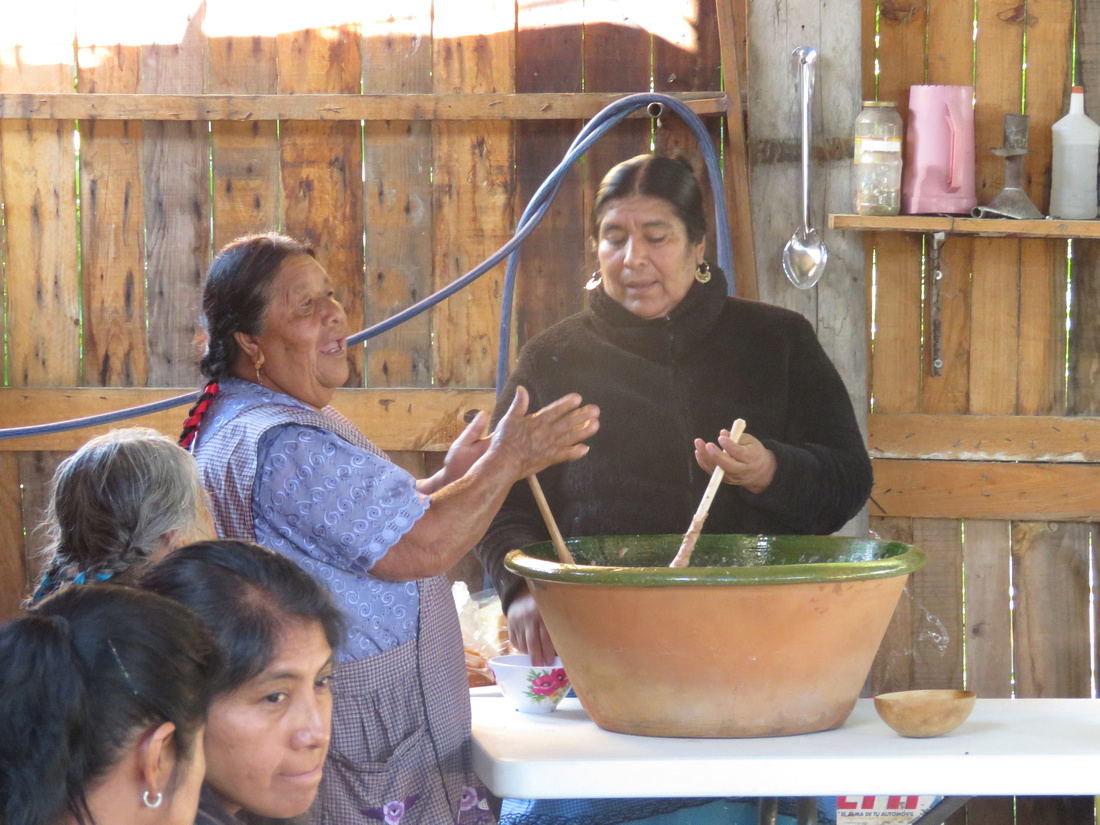
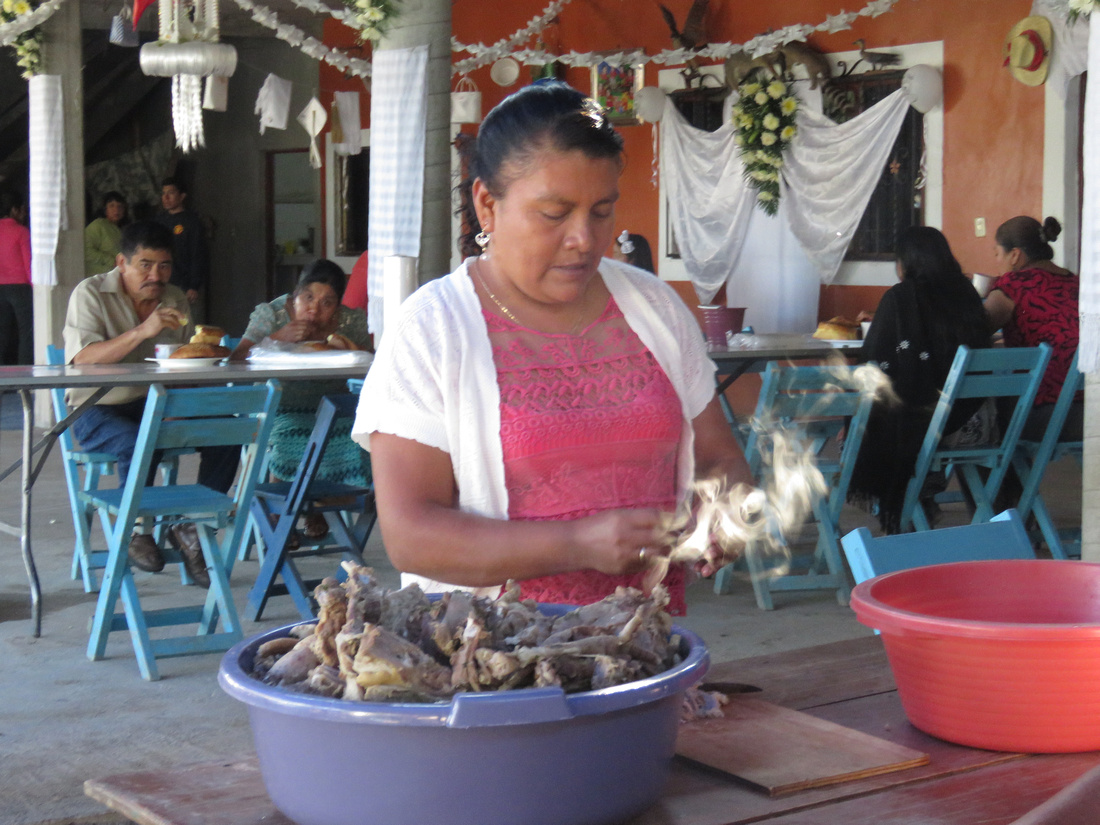
All guests received three pieces of bread to eat with their chocolate.
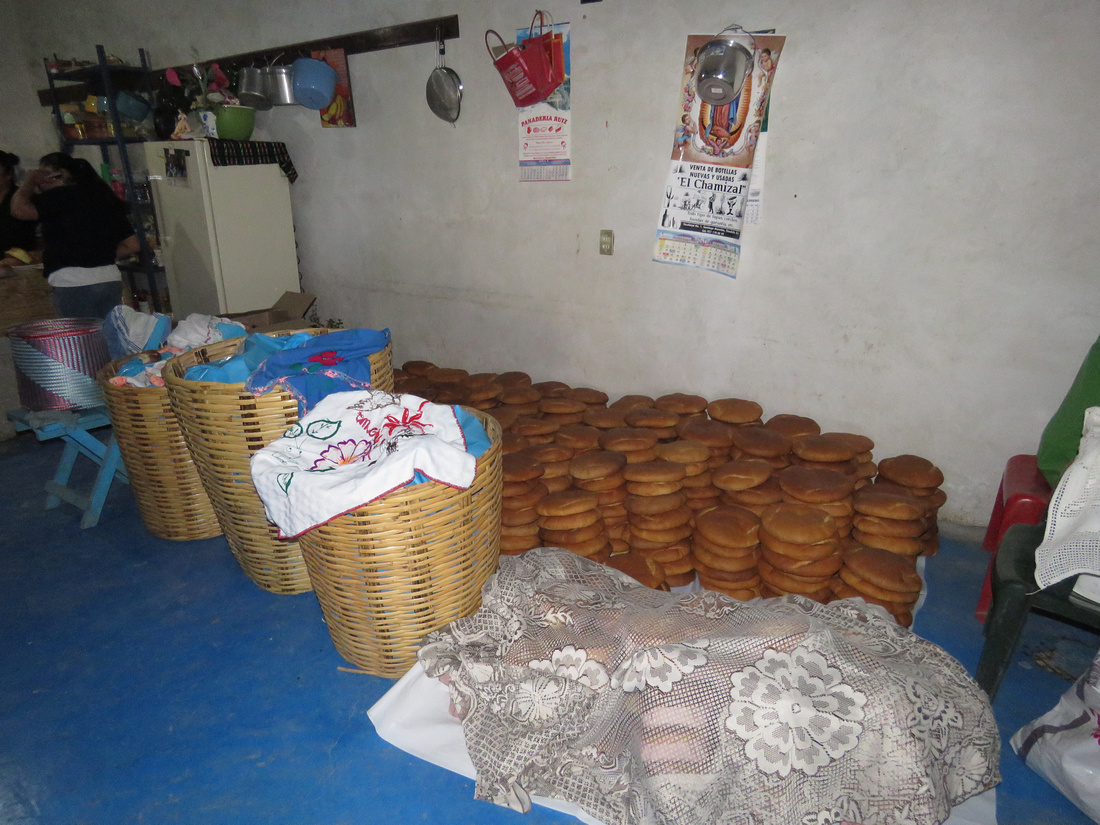
Dolores indoor kitchen is large and great for preparing chocolate and sweet bread ready to be served to guests.
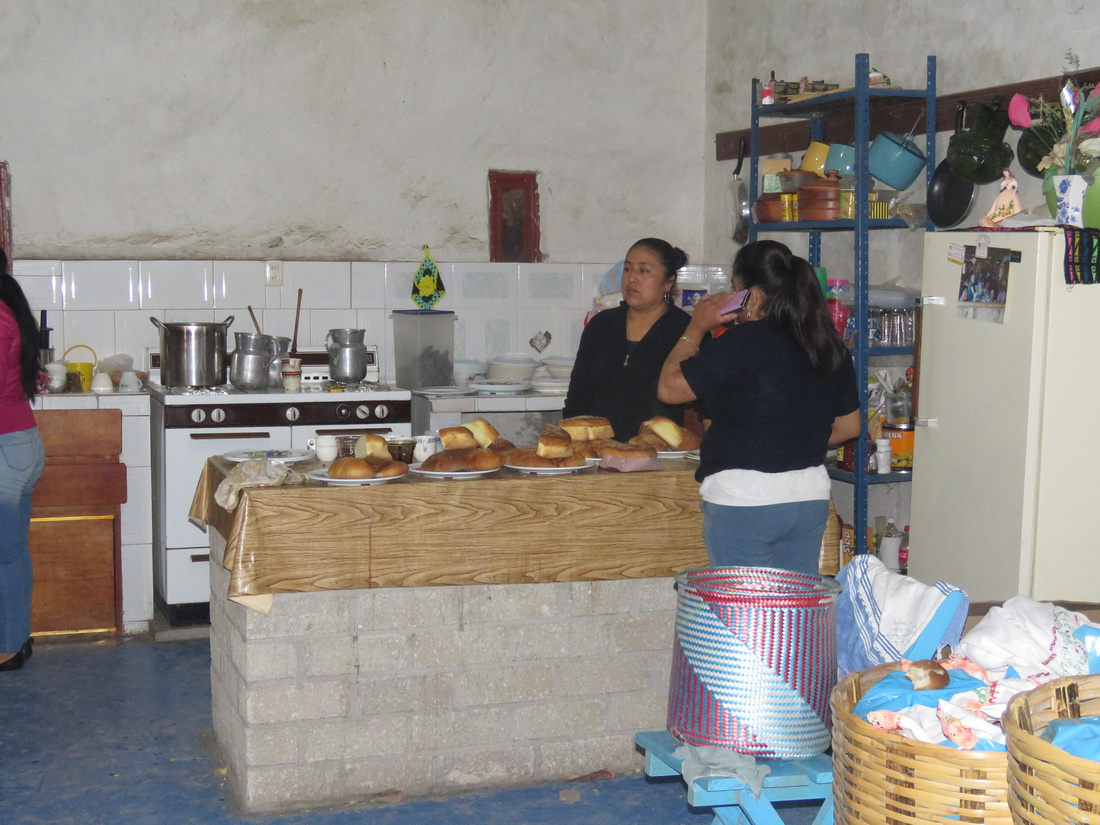


I have no idea how many tortillas were made but it had to be in the hundreds. Two women were assigned to the task.

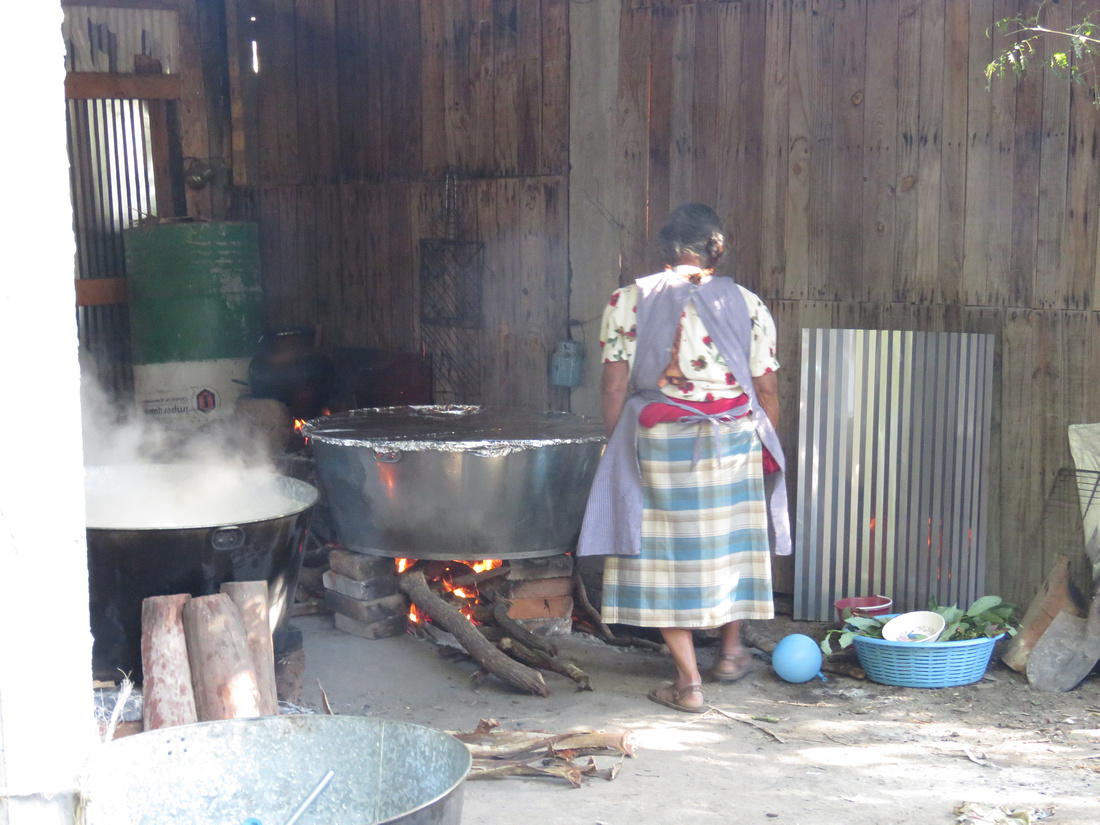
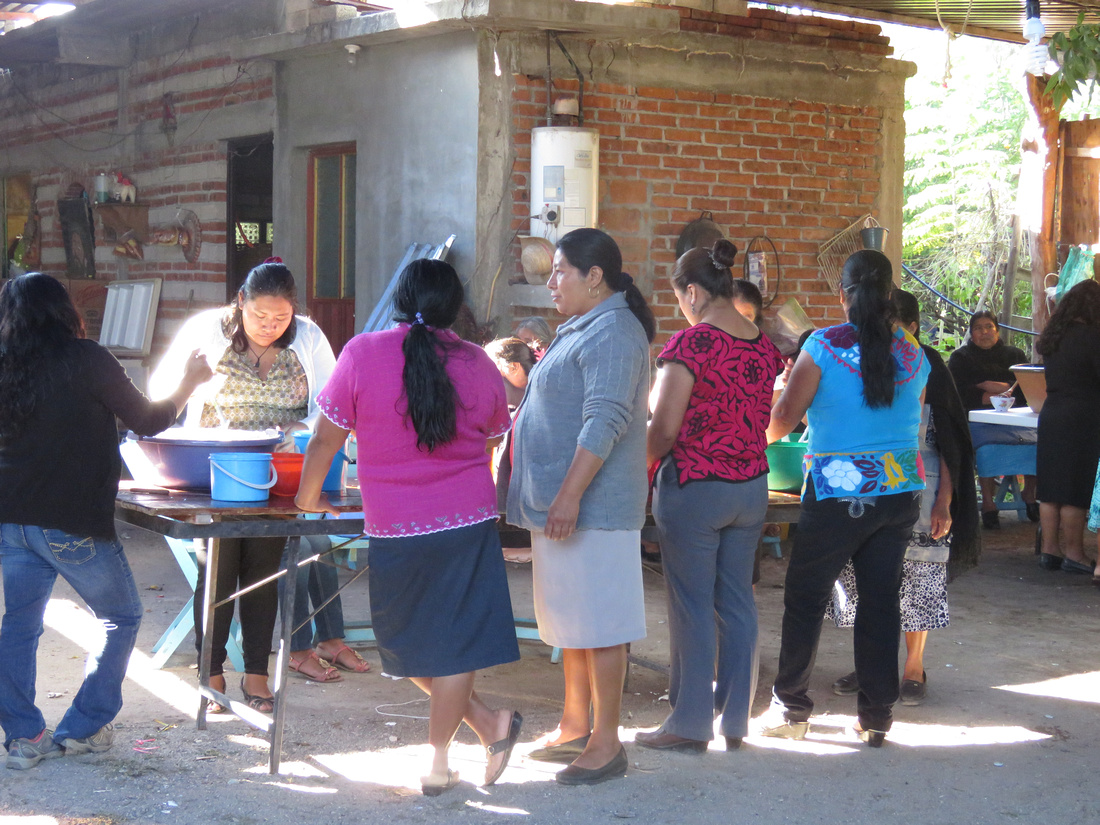
The morning of the wedding a local band of young men showed up. A lot of their music reminded me of marching songs.
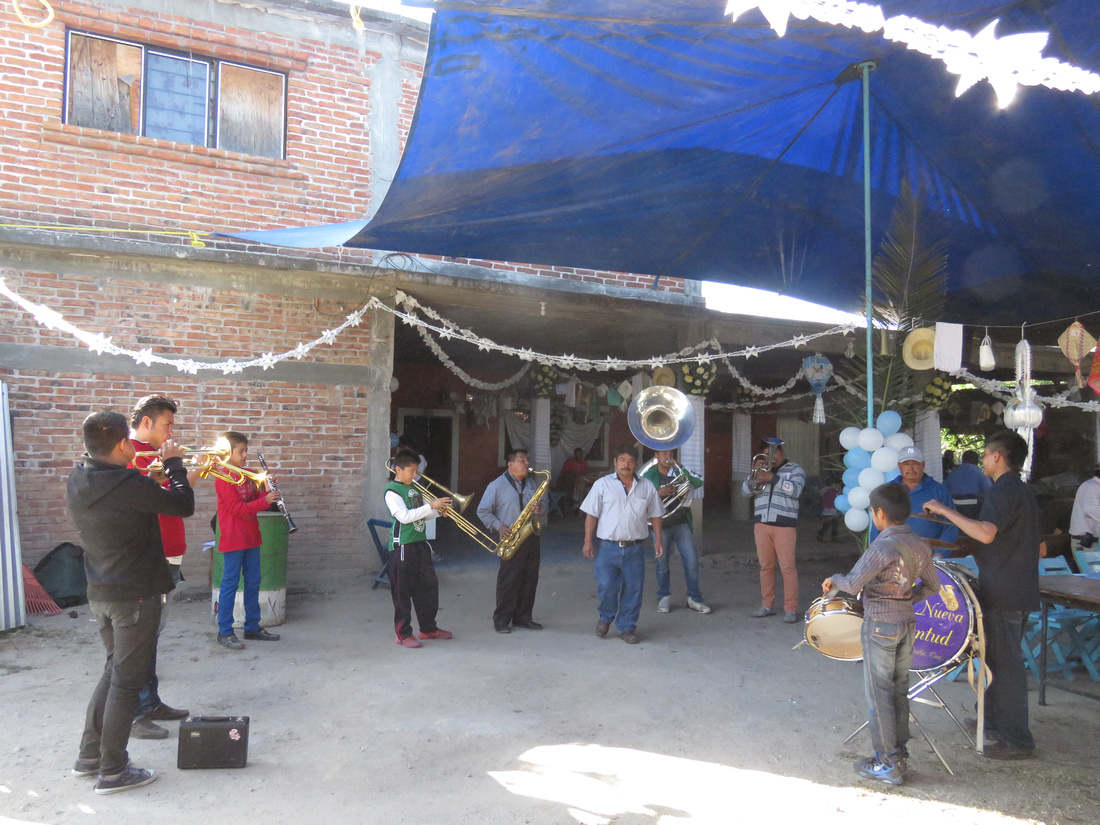
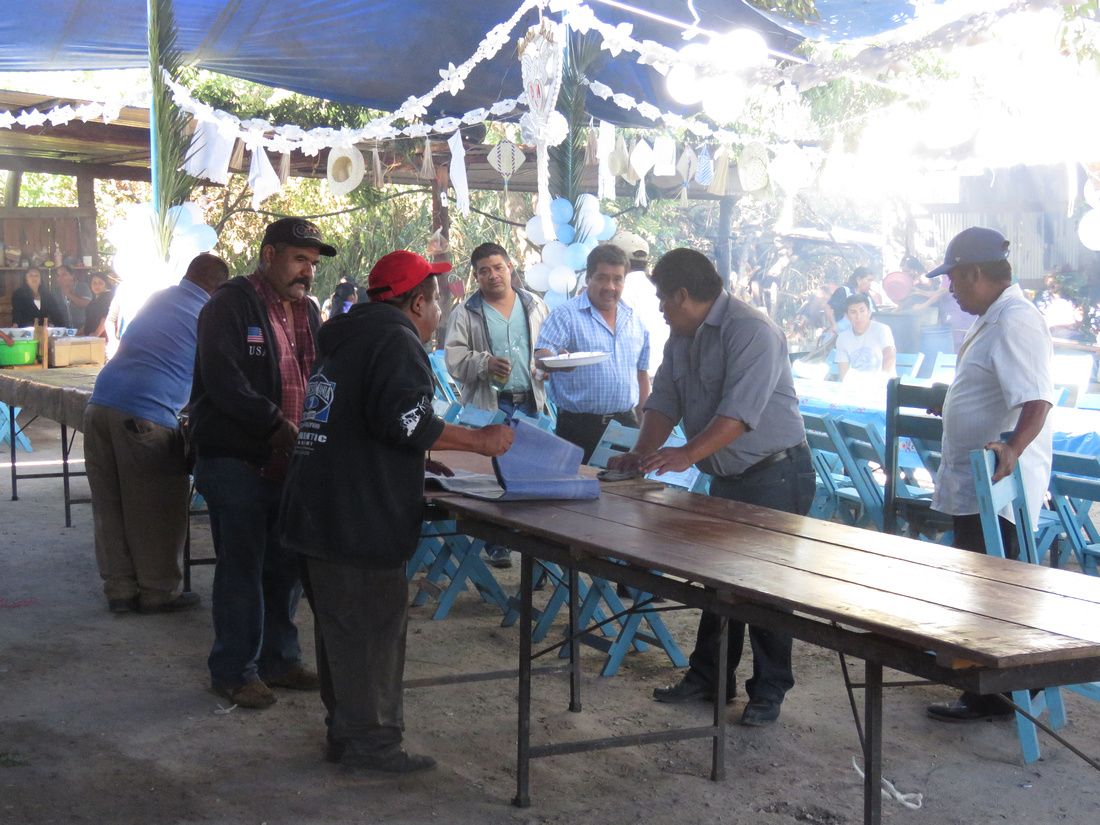
Beto receiving his first cup of mezcal.
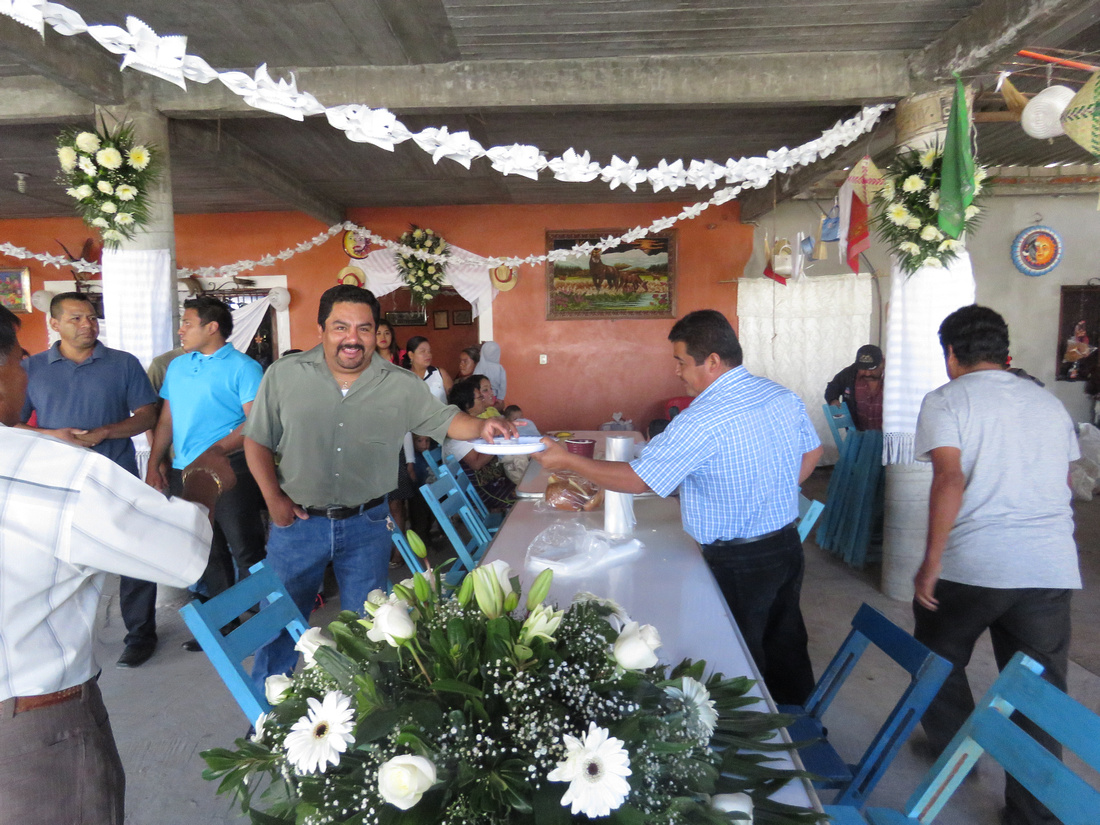

Breakfast was higaditos (a type of scrambled eggs with chicken and spices in broth).

Beth is wiping down the rental chairs while breakfast is ready to be served.

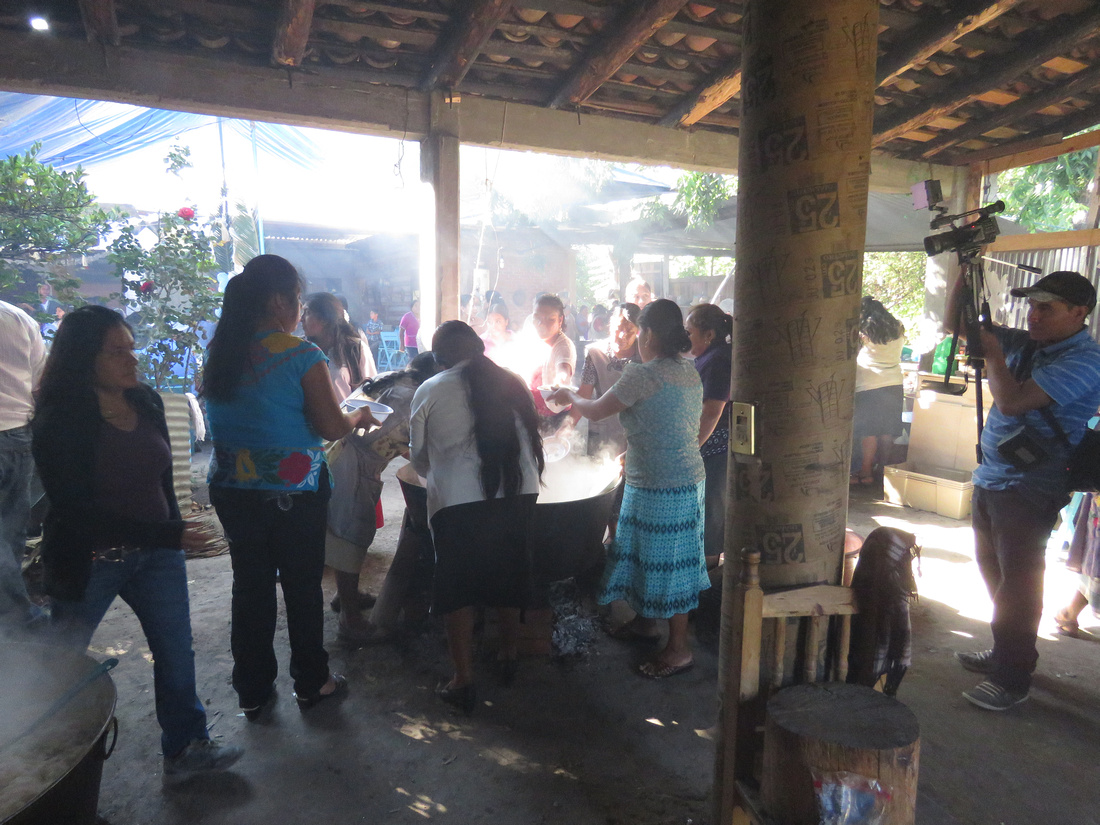
Beto and his extended family.
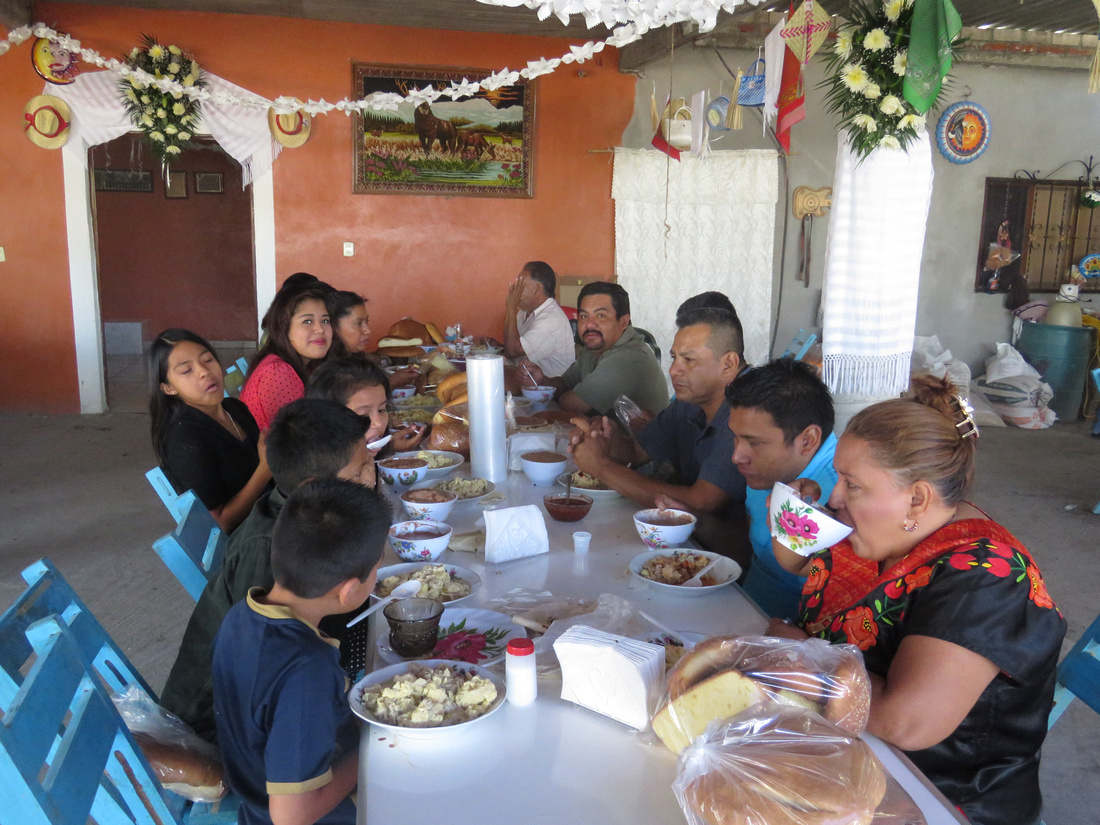
These things really make a noise.
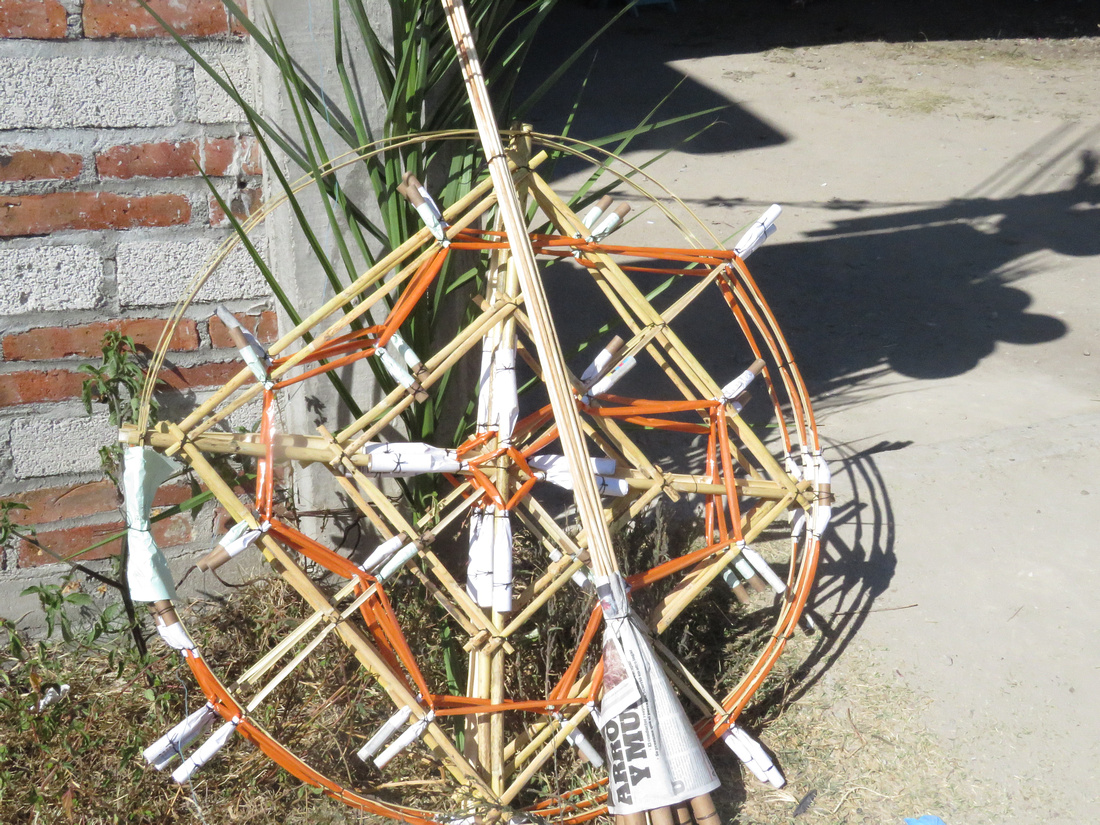
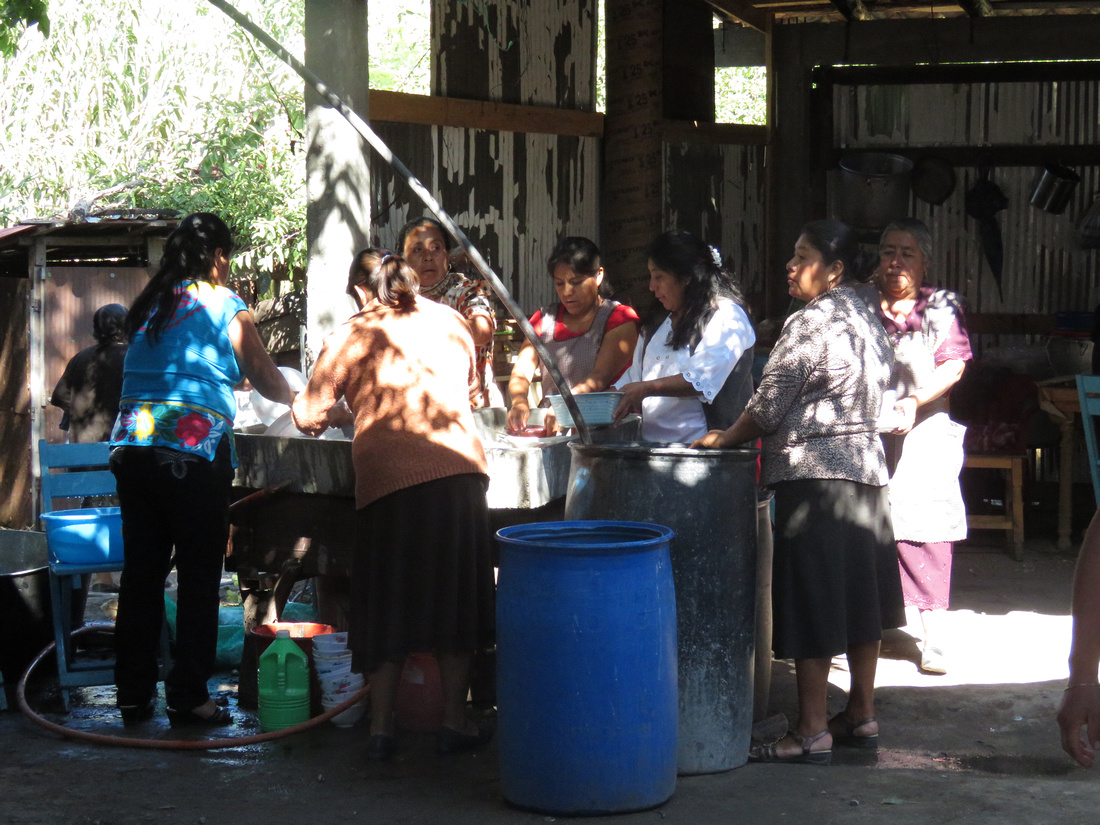
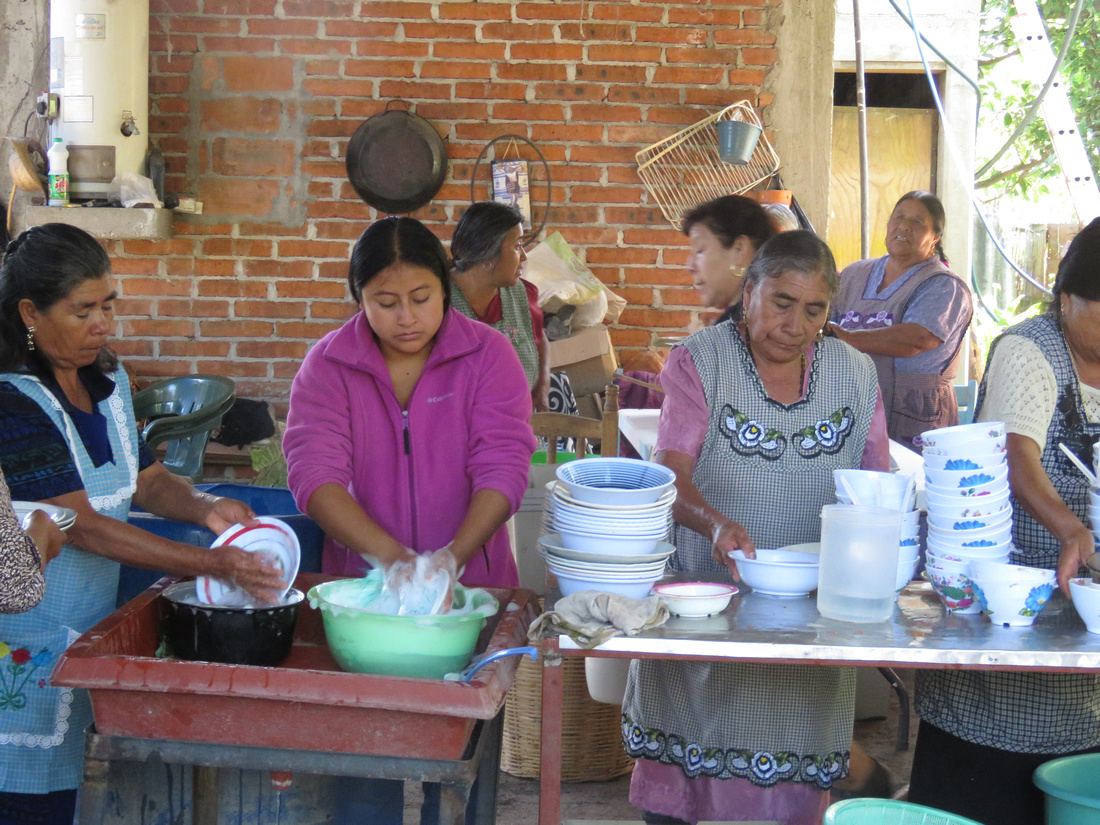
The young man on the left videoed the wedding.
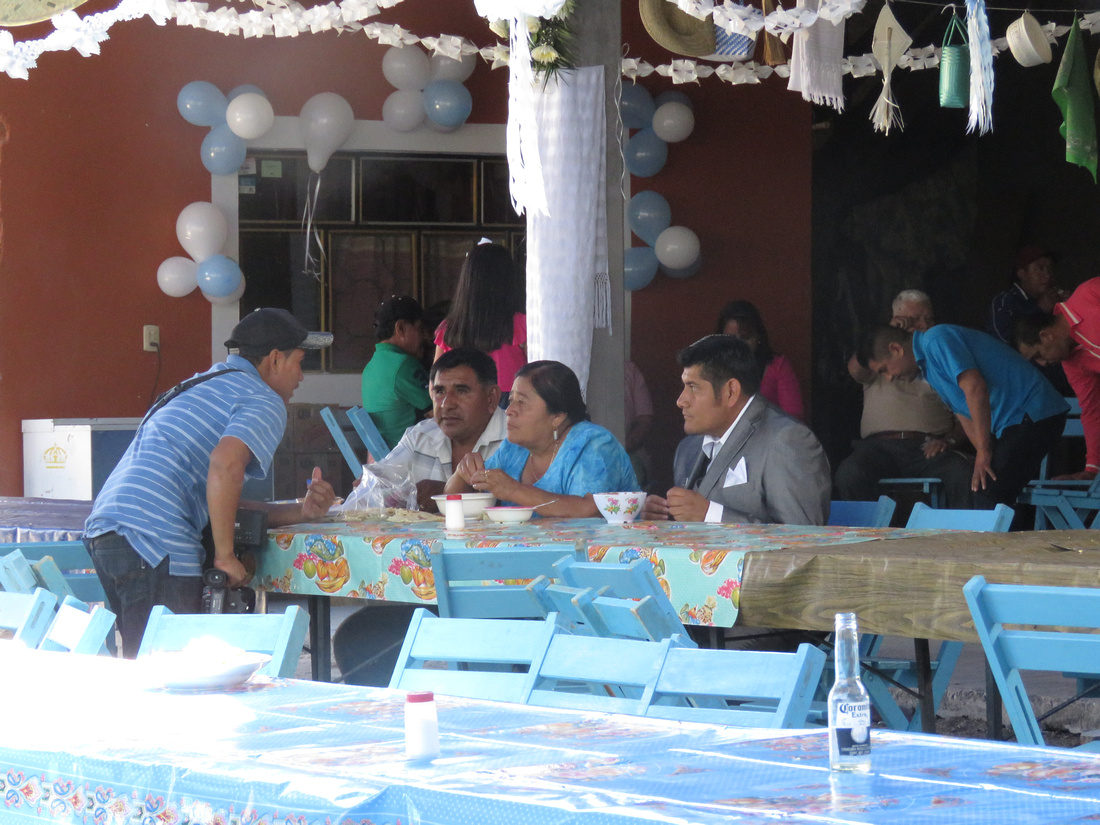
Walking to the church. People came out of their houses to watch the procession.


Typical Beto on his cell phone.

Monica came to the church by auto. She's waiting to enter the church.
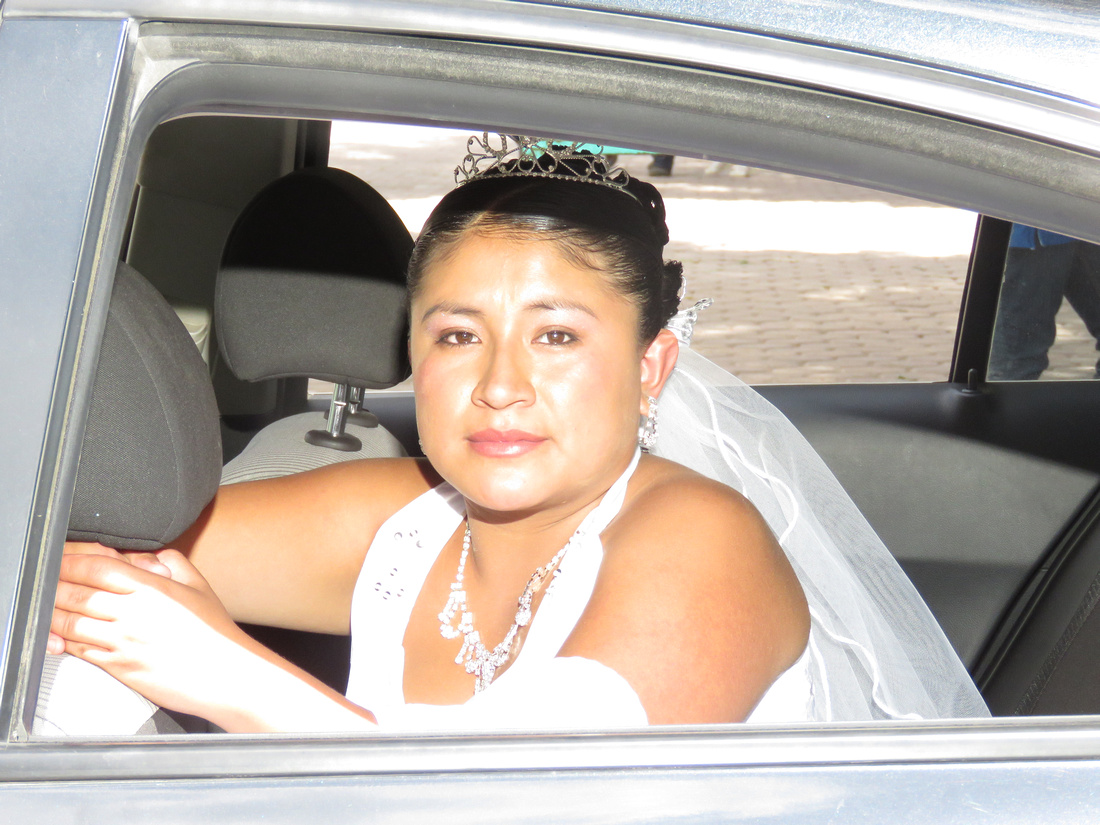
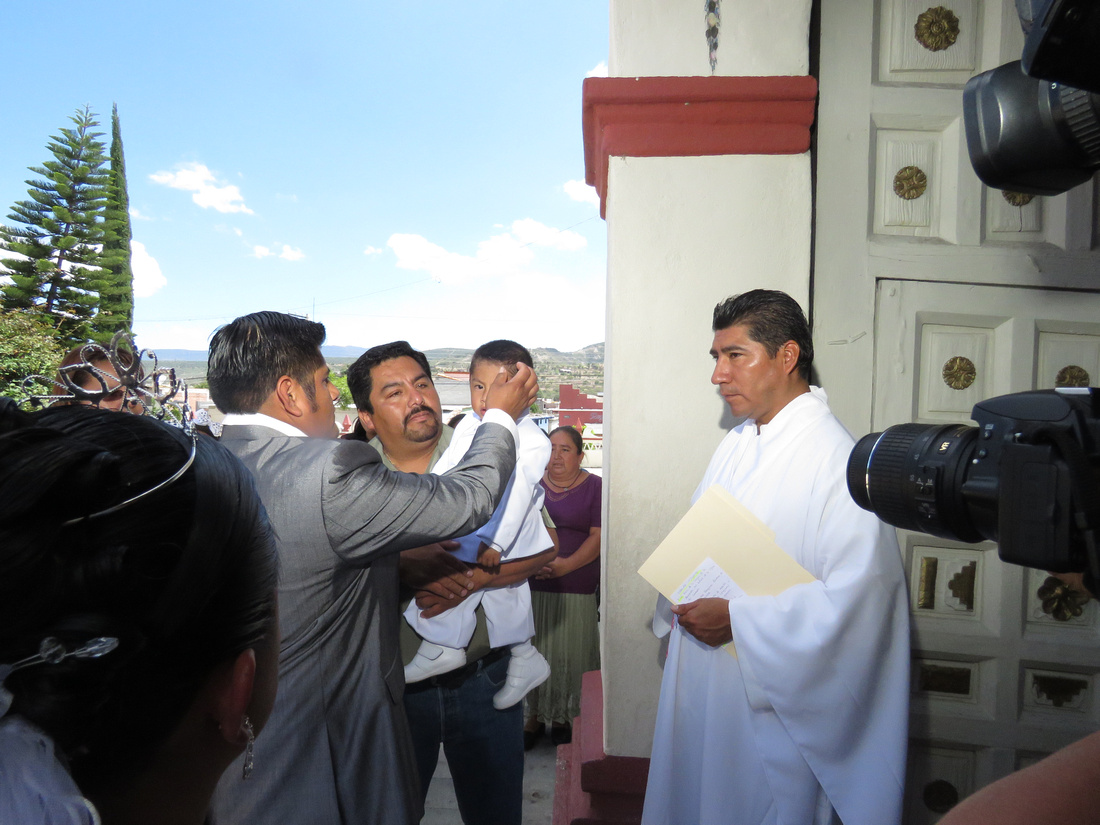
Giobanni being baptized.
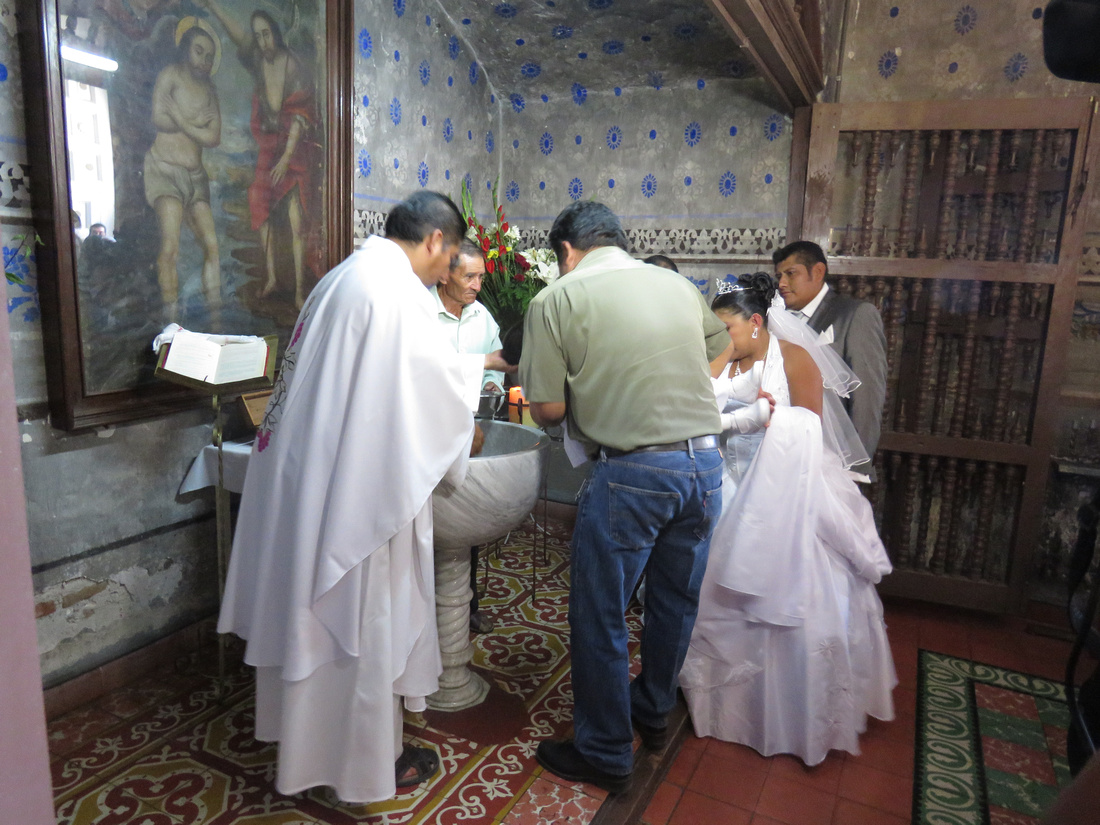
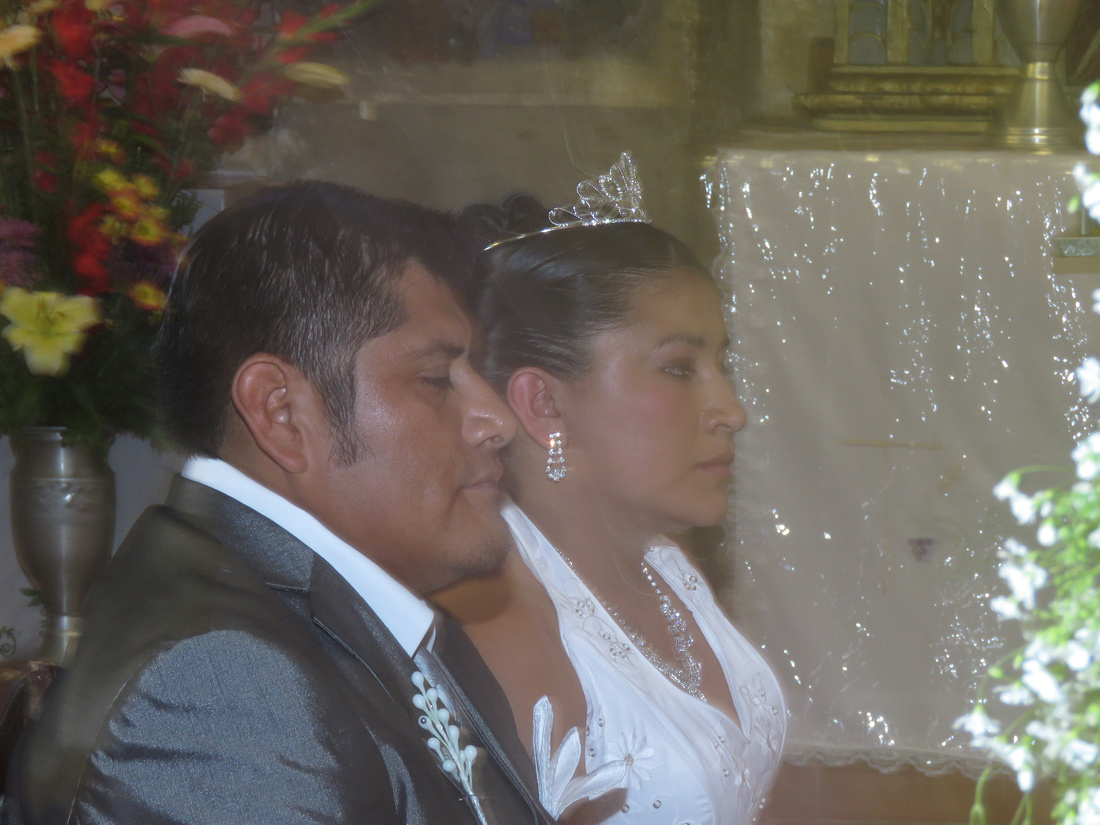
I believe the significance of the chain is to bind the couple together.
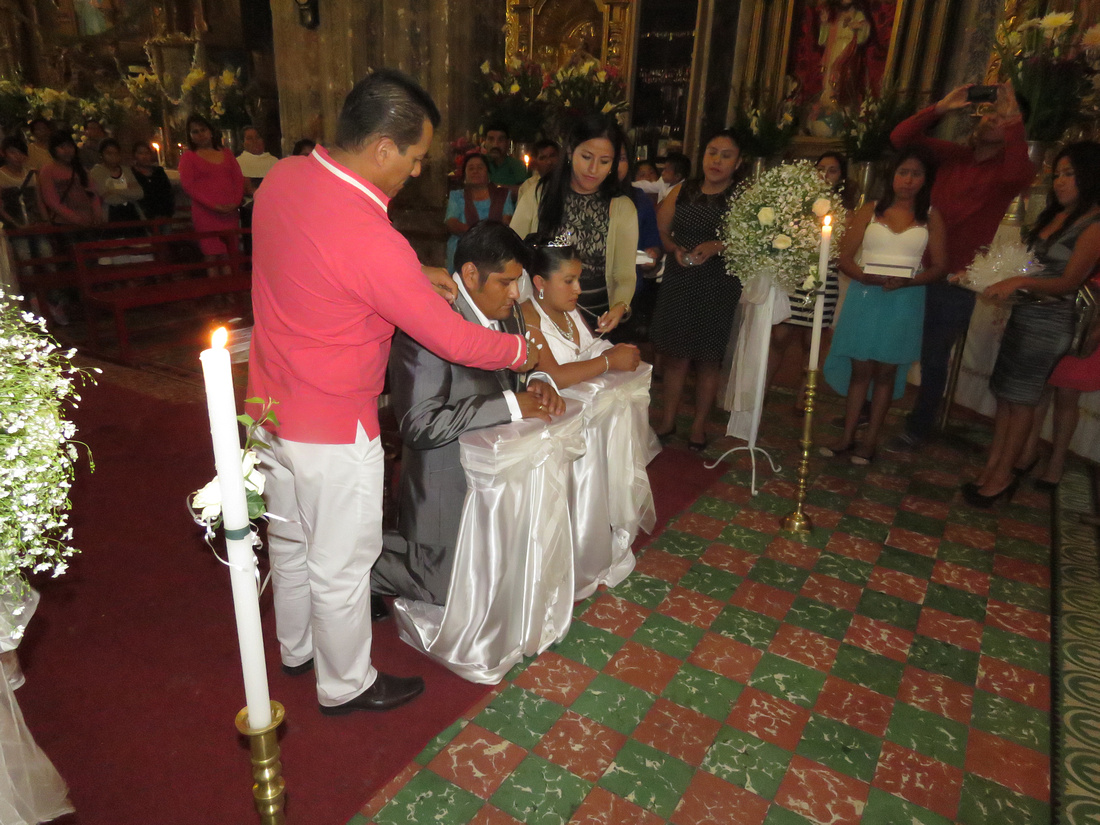
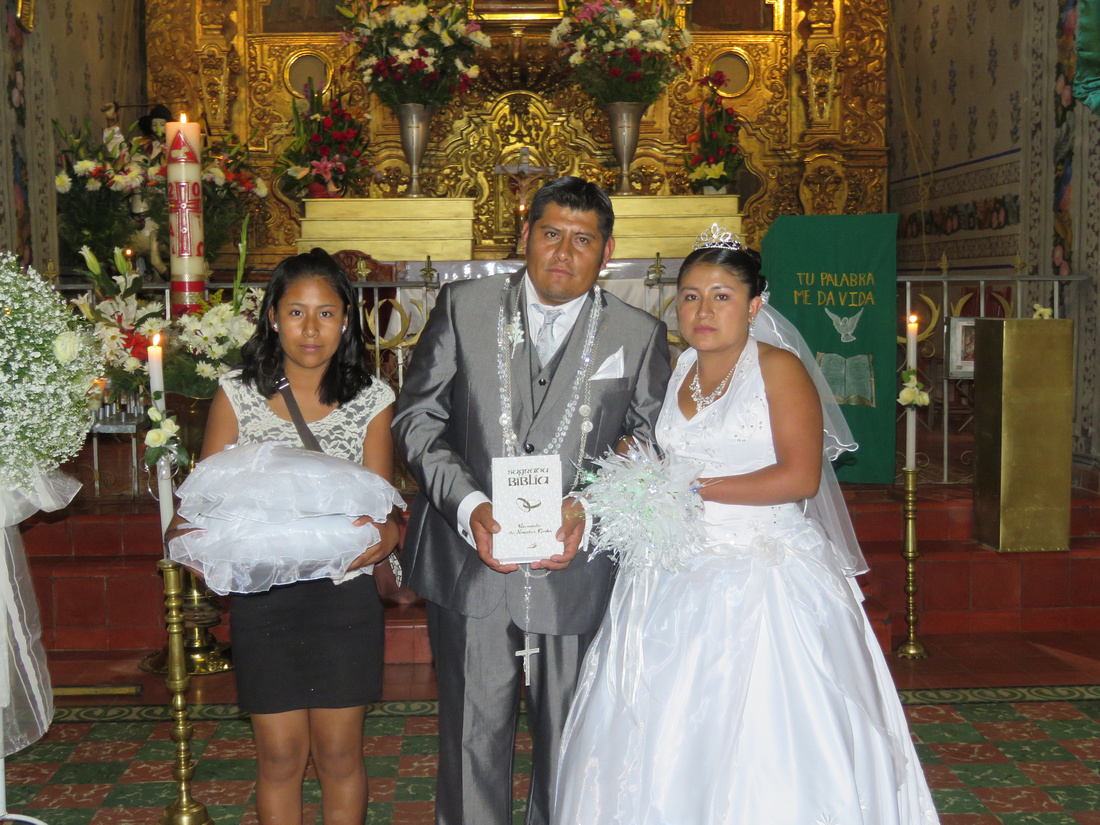
Exiting the church. My favorite photo of the day.
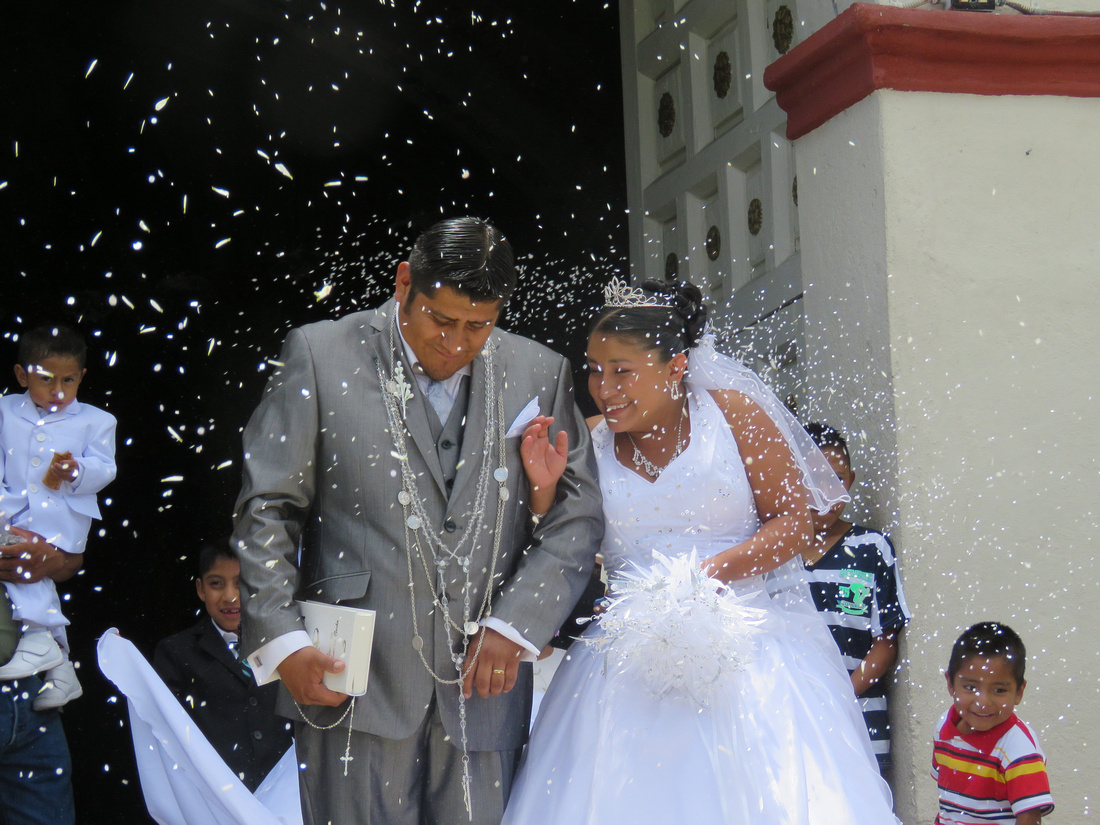

Returning home.
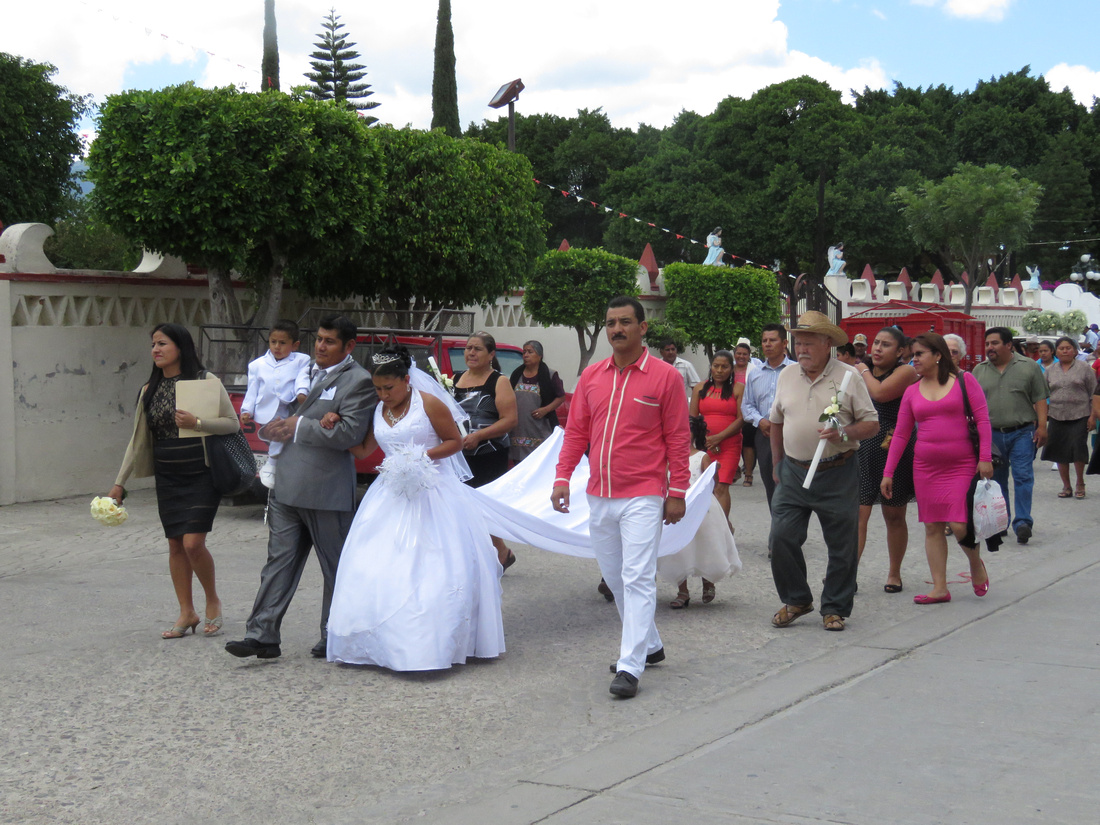
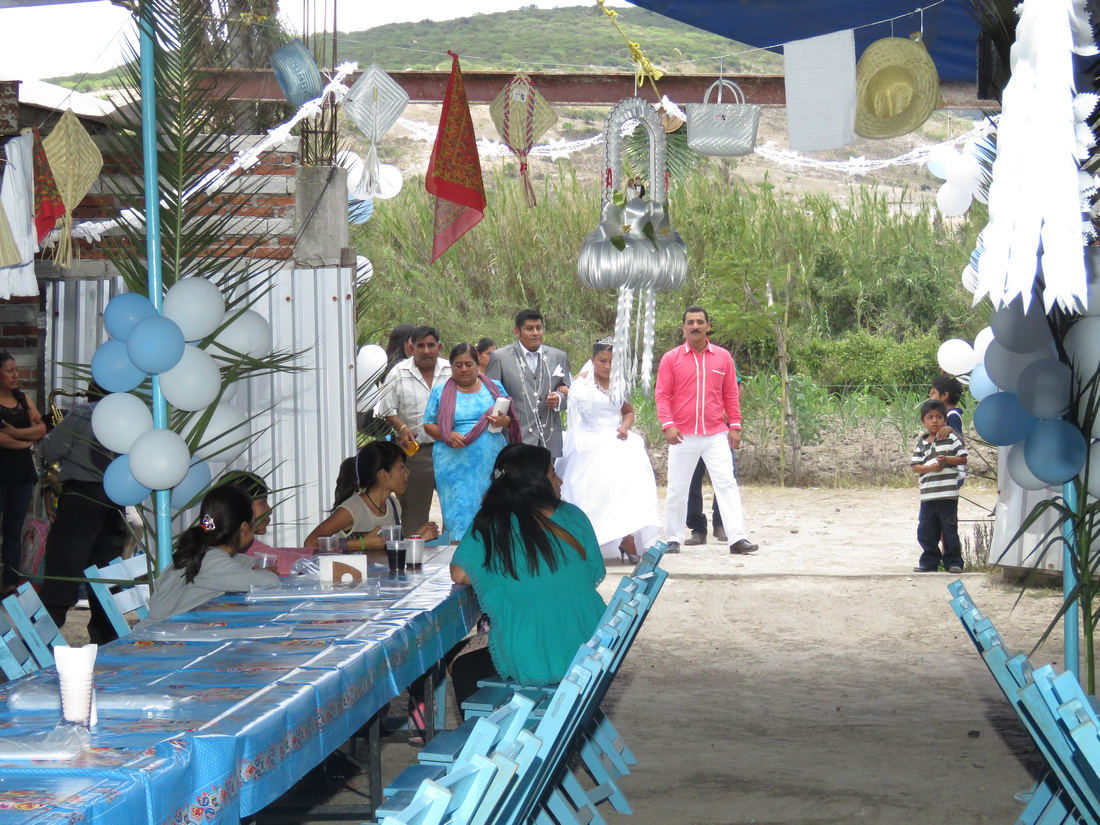
This is when I got hit.

Nothing wrong with my camera. The incense created a lot of smoke.

One thing I noticed is that people were not always eating the same thing at the same time. If you arrived late, you still began with chocolate and bread, and then breakfast.
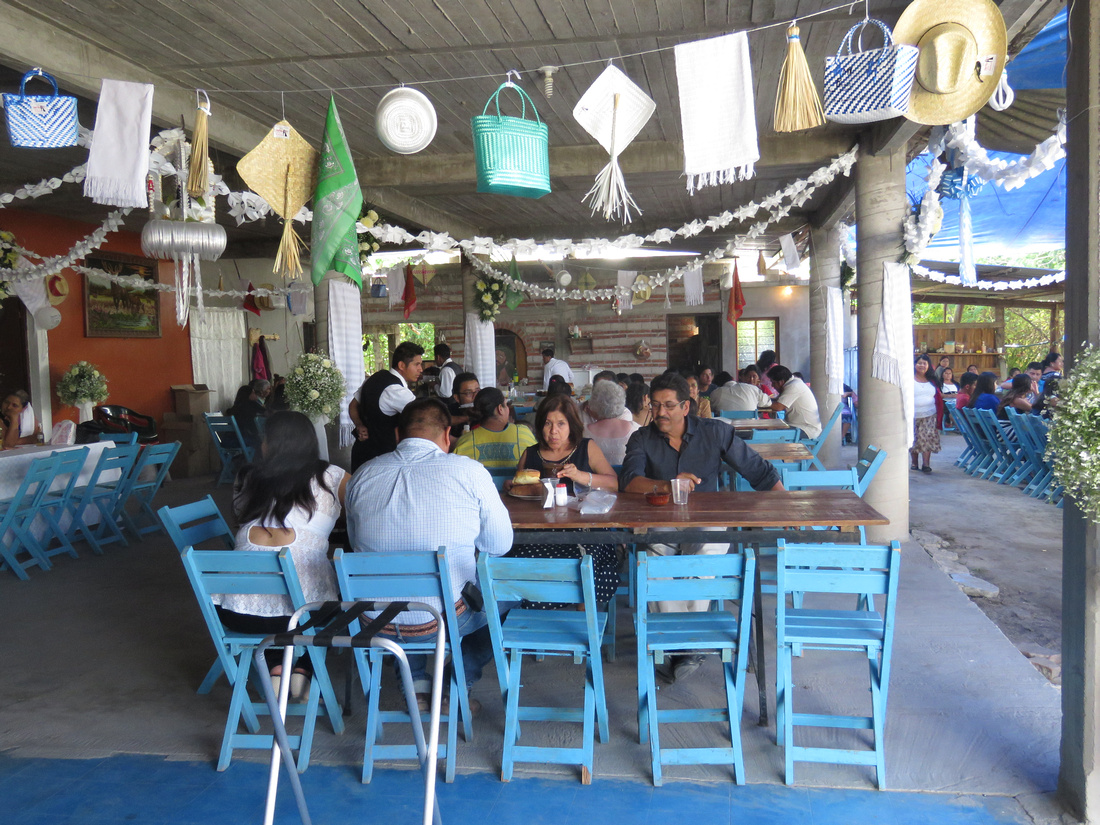

Again the vast majority of folks in the photos were Zapotec speakers. Juan hired waiters to help serve food and drinks.
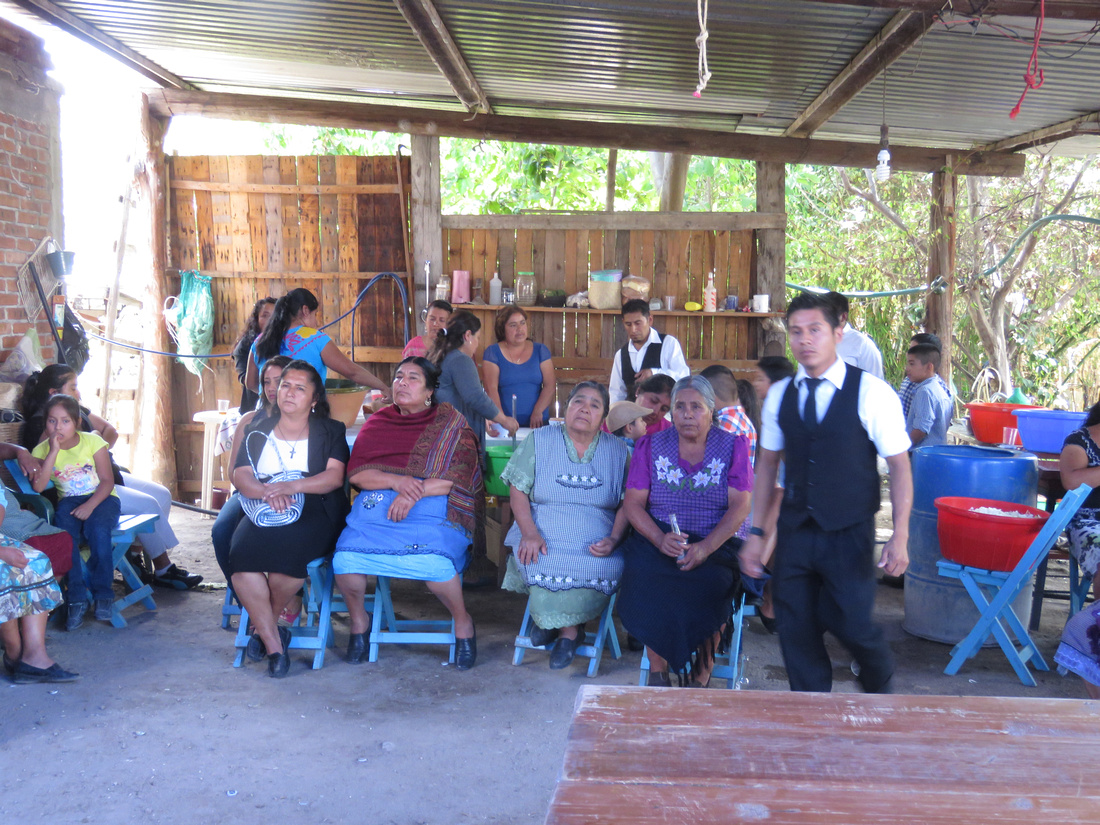
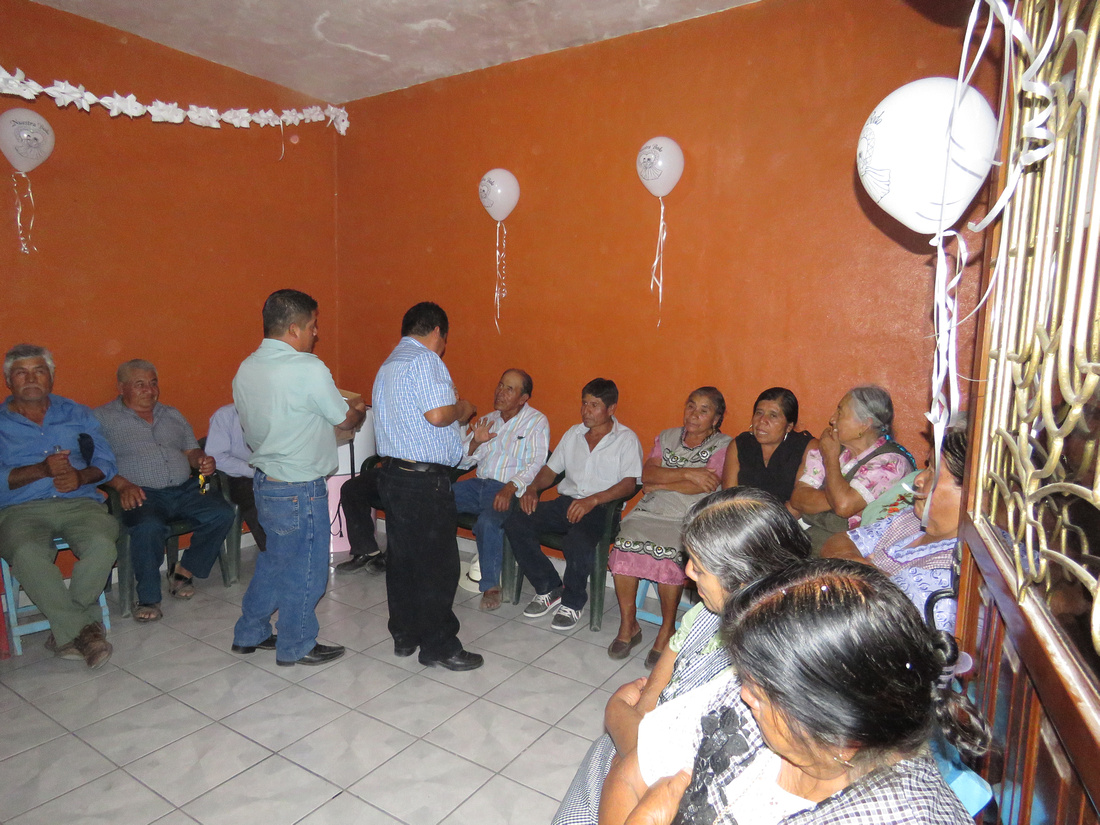
Uncovering the cow being cooked.
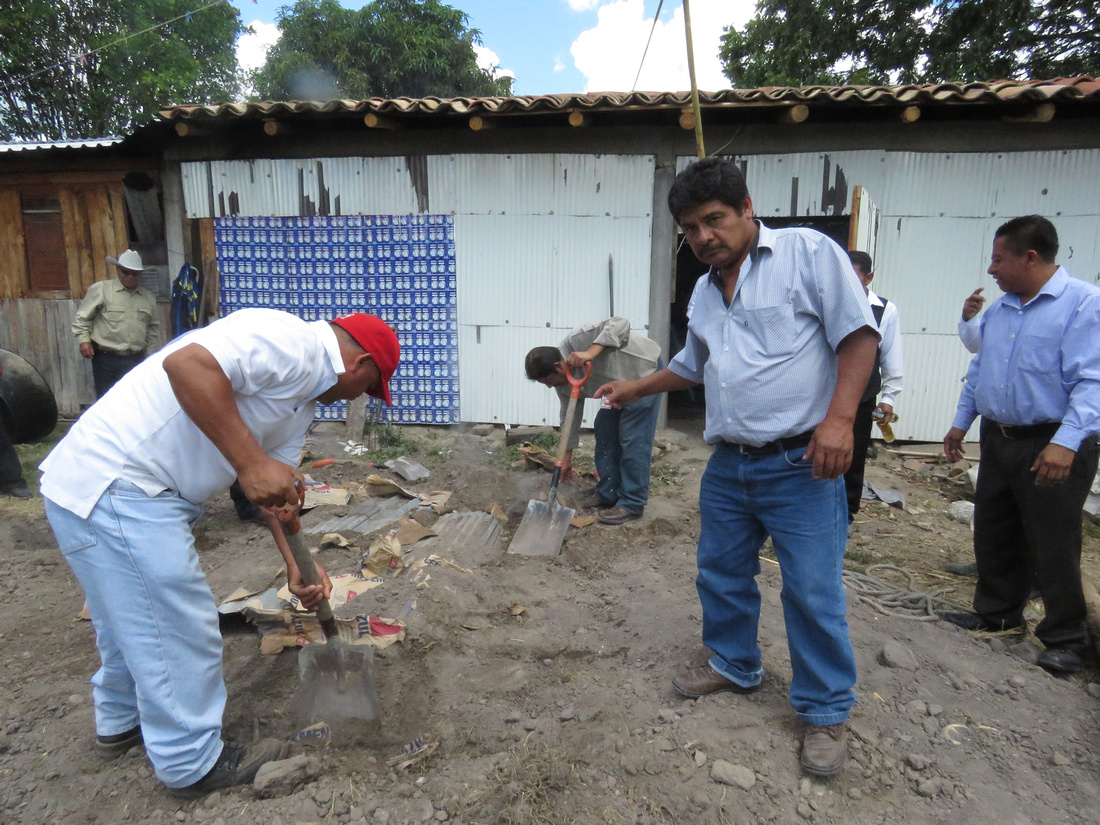
That tub weighed hundreds of pounds.
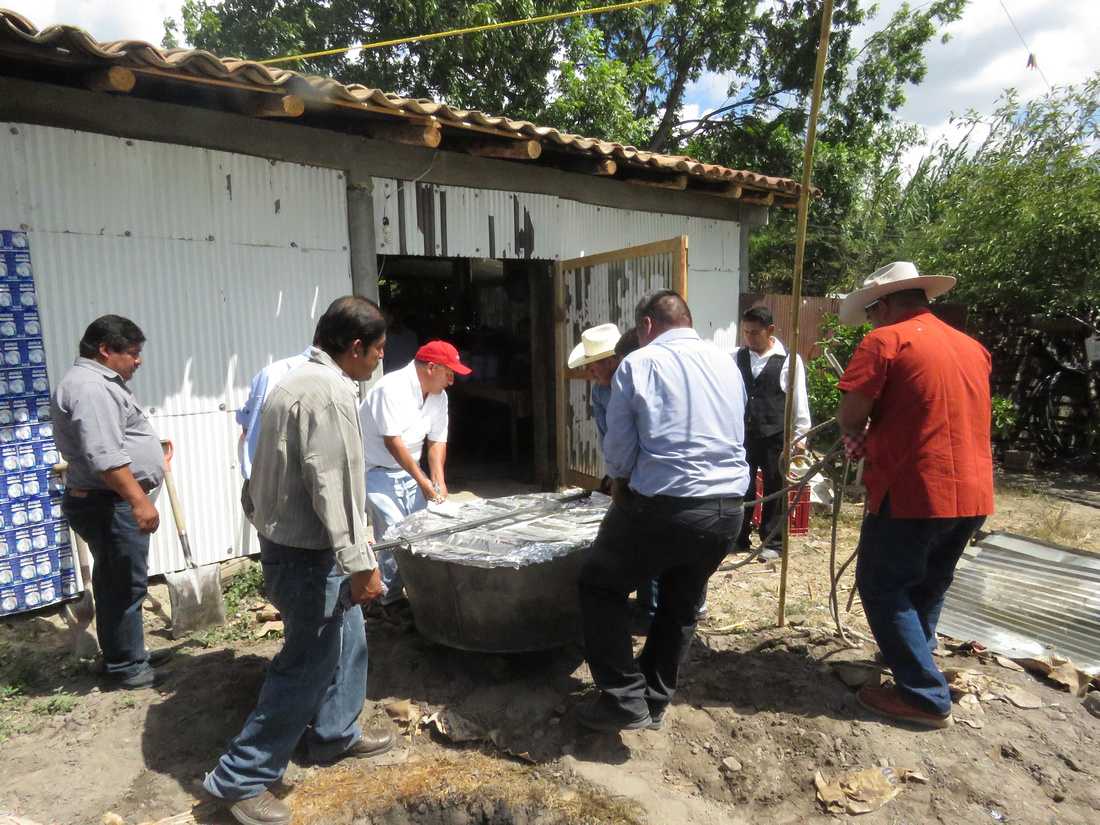
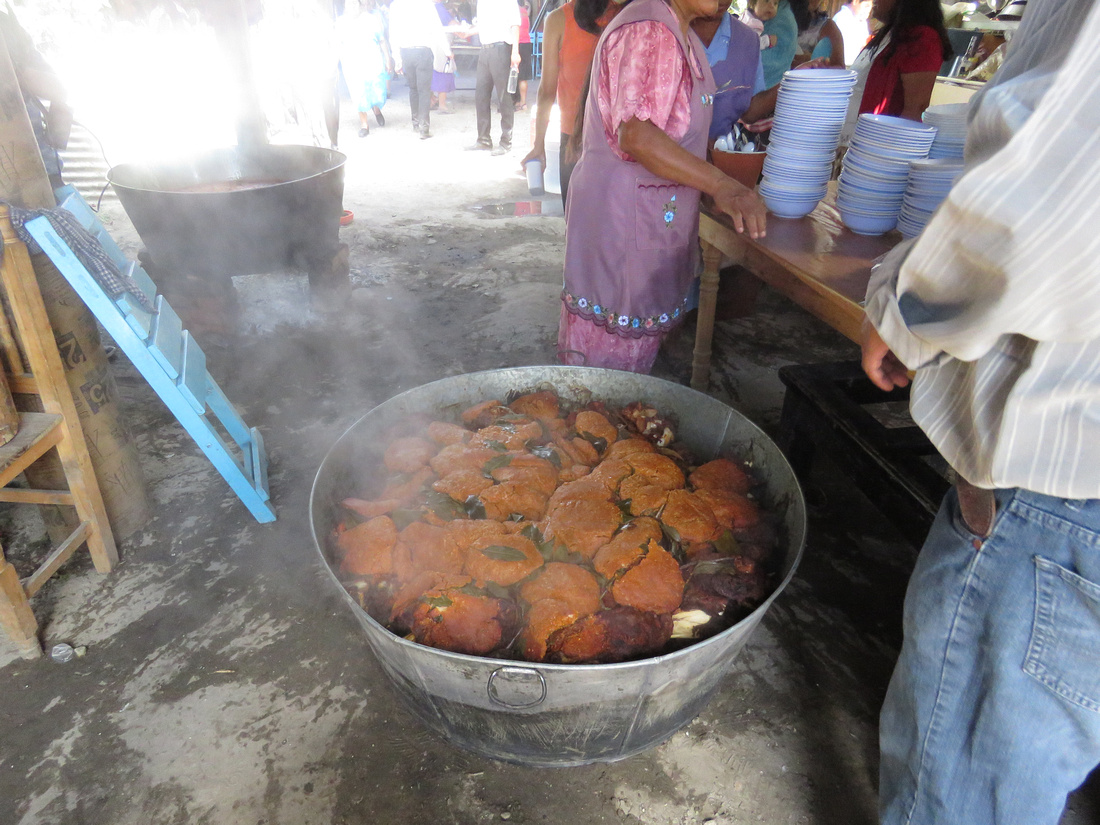
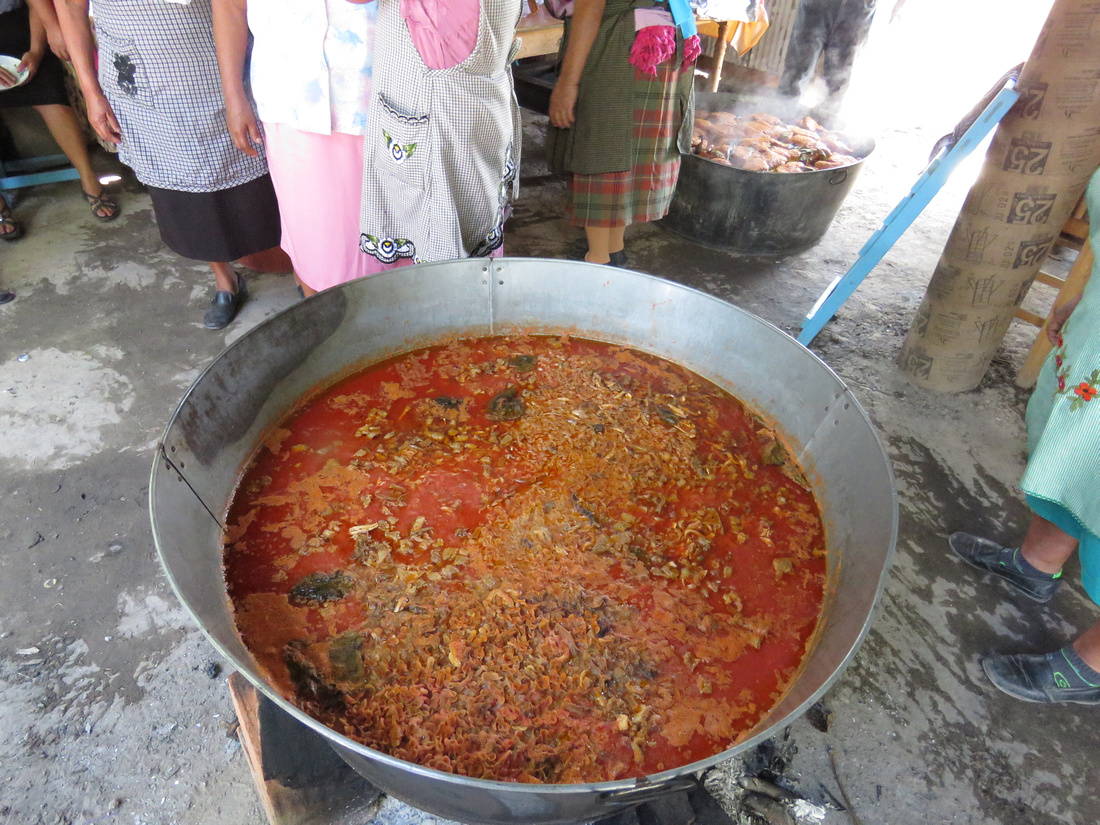
Monica with Beto's daughter, Yesenia.
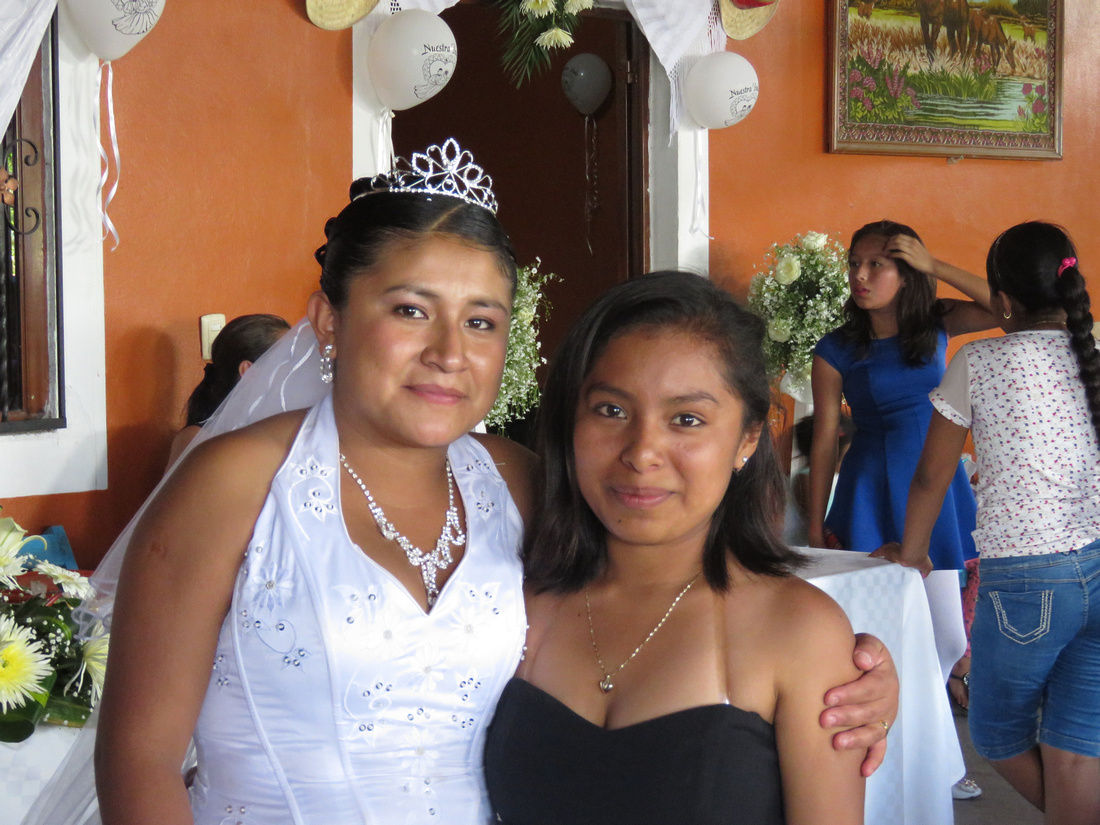
Making and wearing these "coronas" of flowers and greens is another wedding tradition here in Matatlan.


The baptism cake. The financial obligations of the padrinos are pretty significiant.
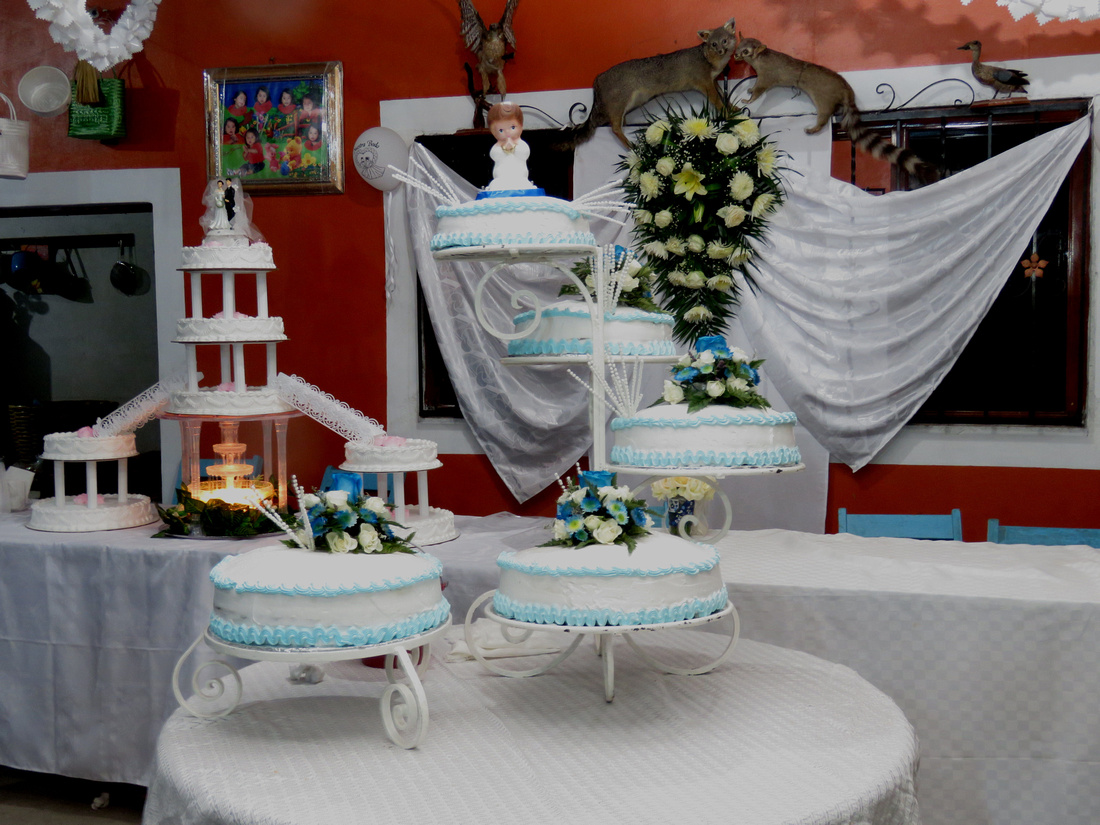
Wedding cake.

This family wanted a photo but insisted Beth was in it.

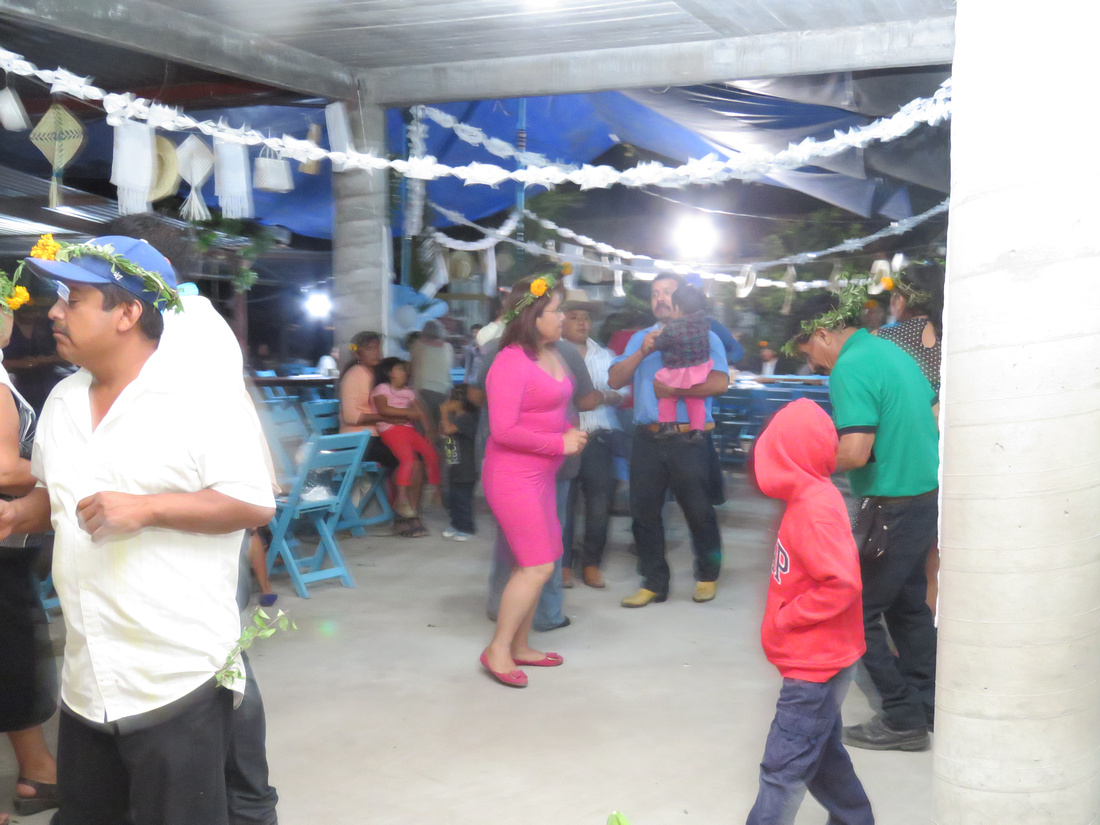
Ready to serve dinner to those who have arrived from Mitla.
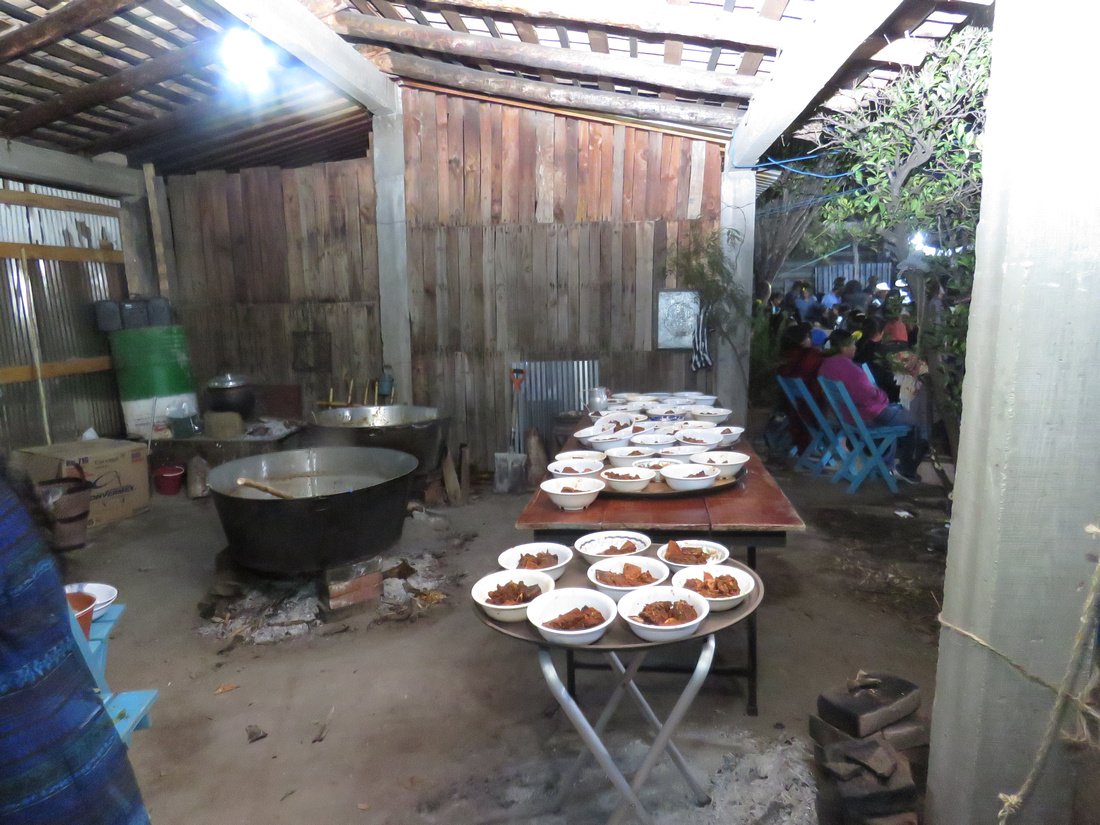
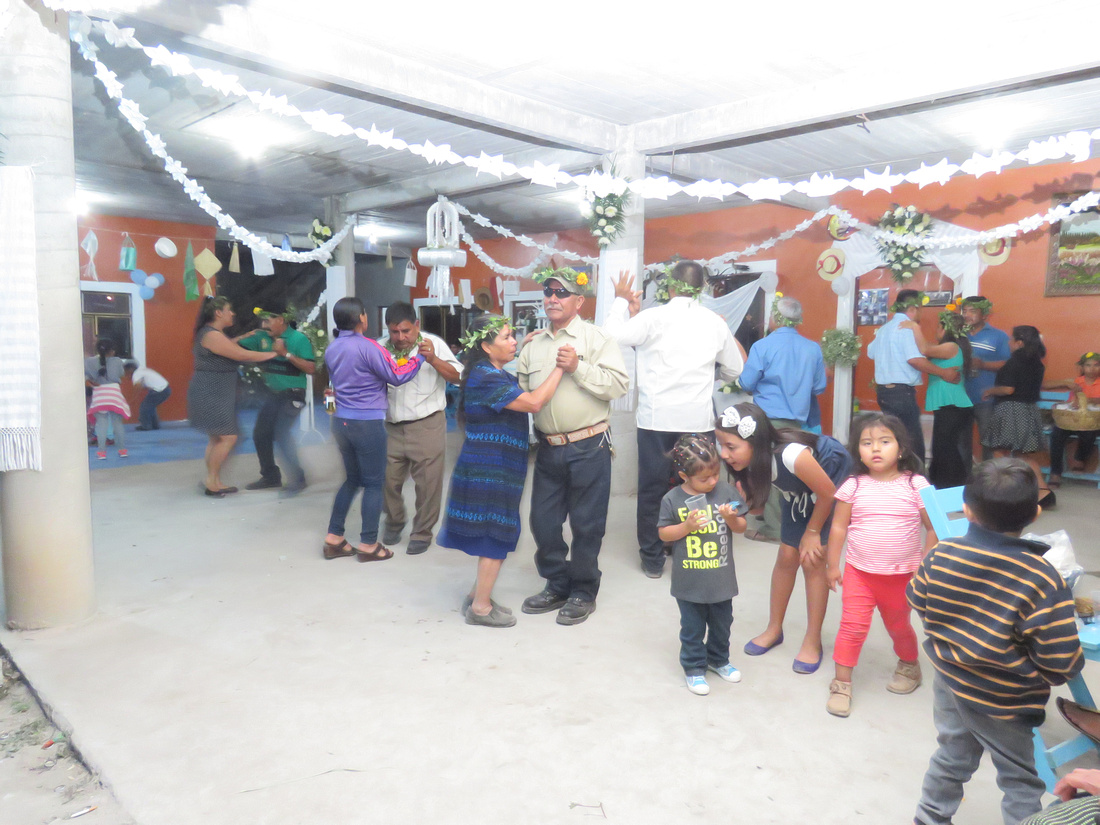
Juan with one of the madrinas.
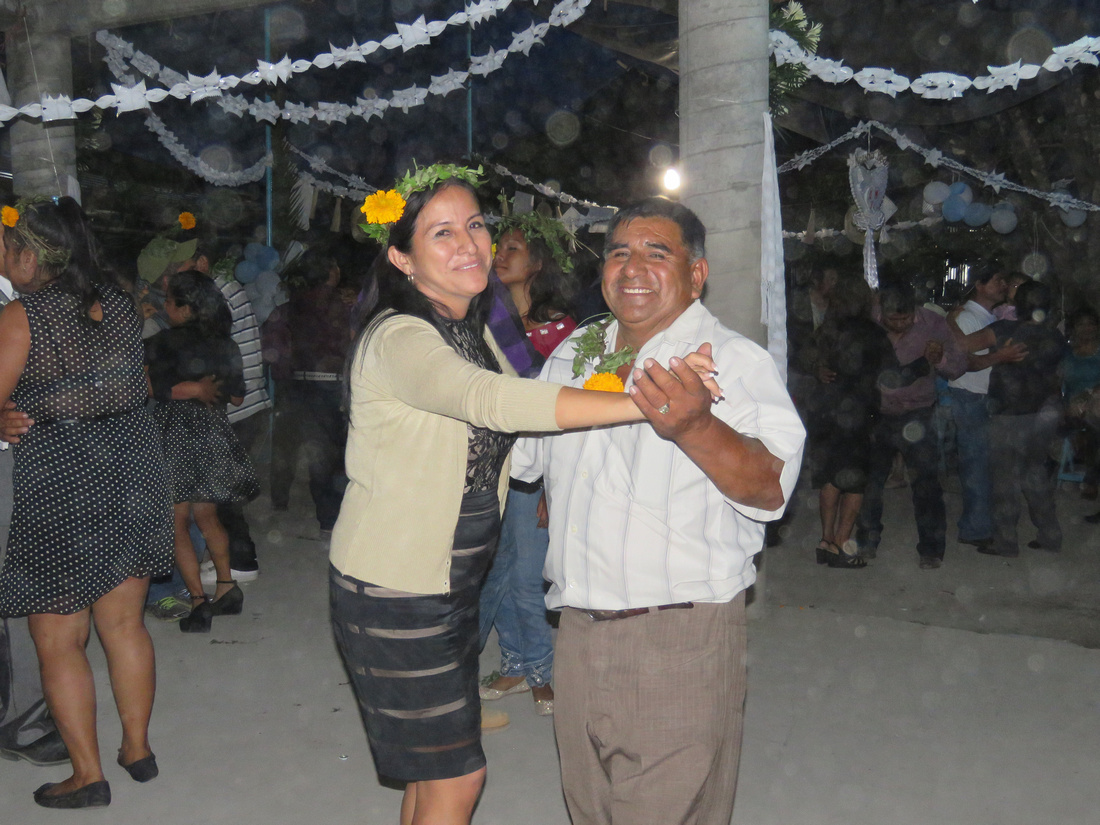
The guests from Mitla didn't arrive until nine. It was immediately obvious that they were from another village. Here you see women from Mitla dancing with the gifts they brought.
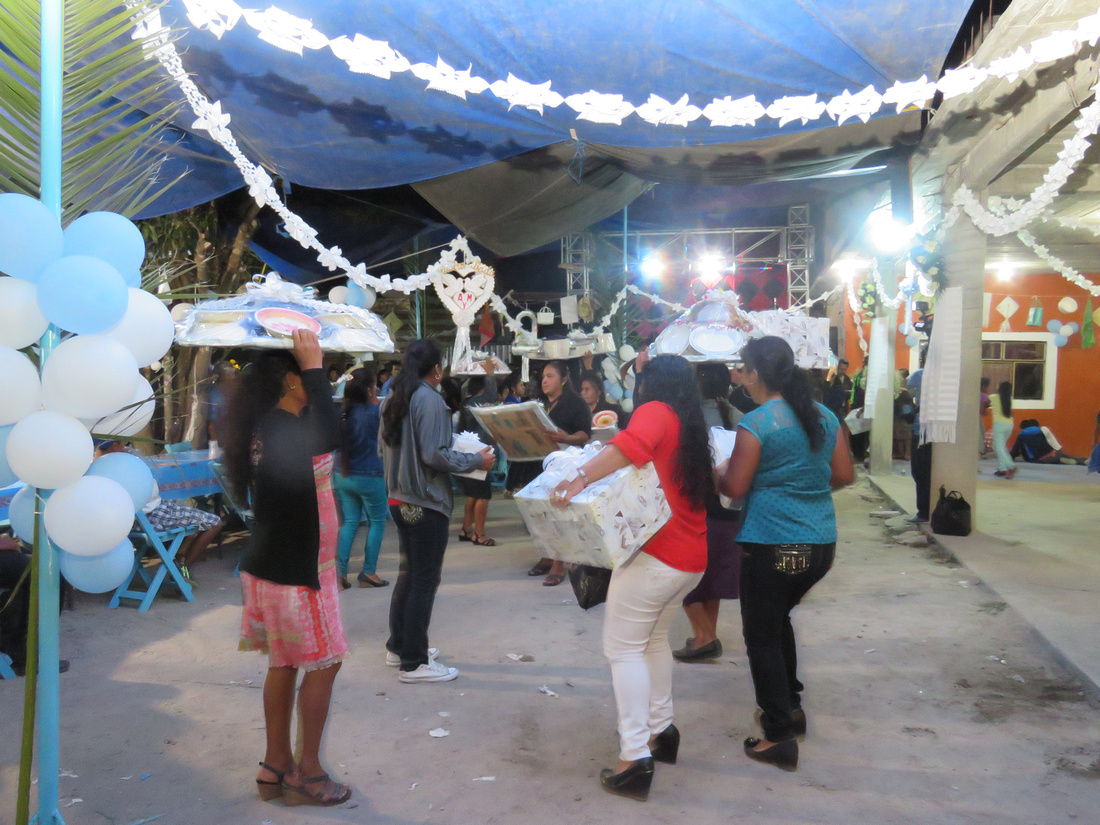
Two days after the wedding Beto and his family came to visit us. I asked Beto if he had gotten drunk. He claimed he hadn't but I believe this photo removes all doubt.

Late dinner being served to the folks from Mitla.
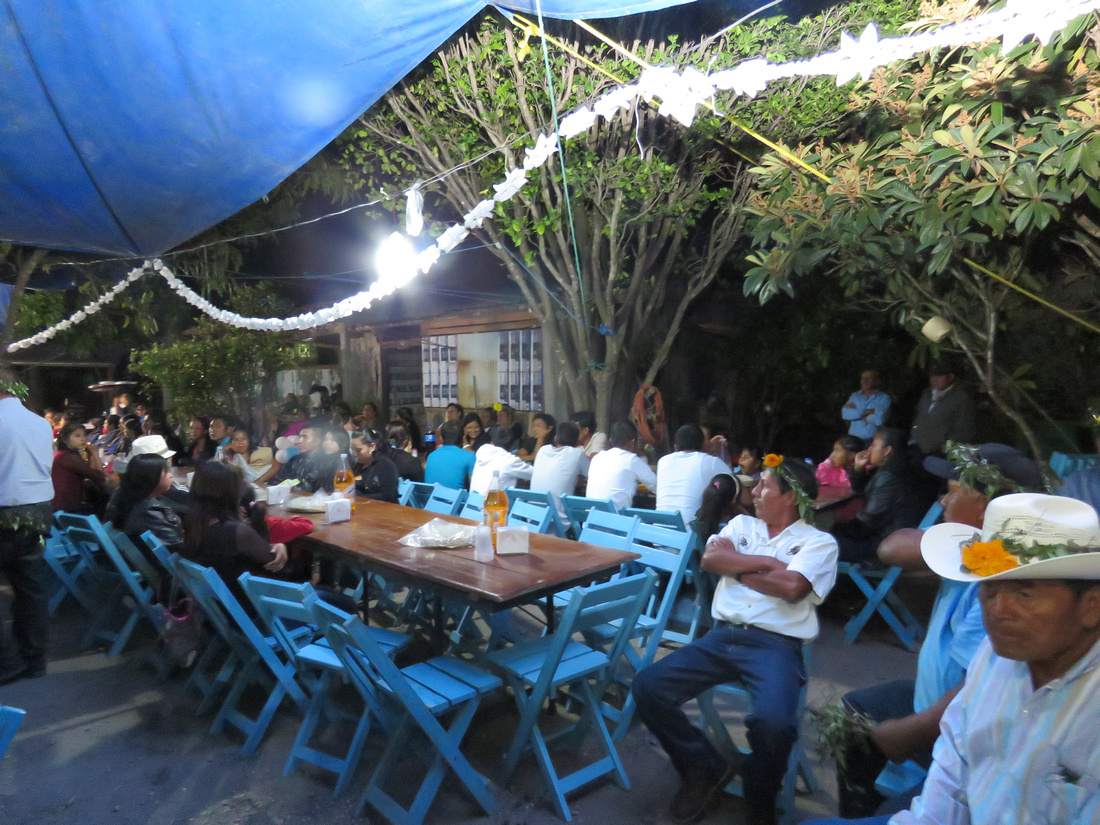
This padrino is playing the role of a bull.
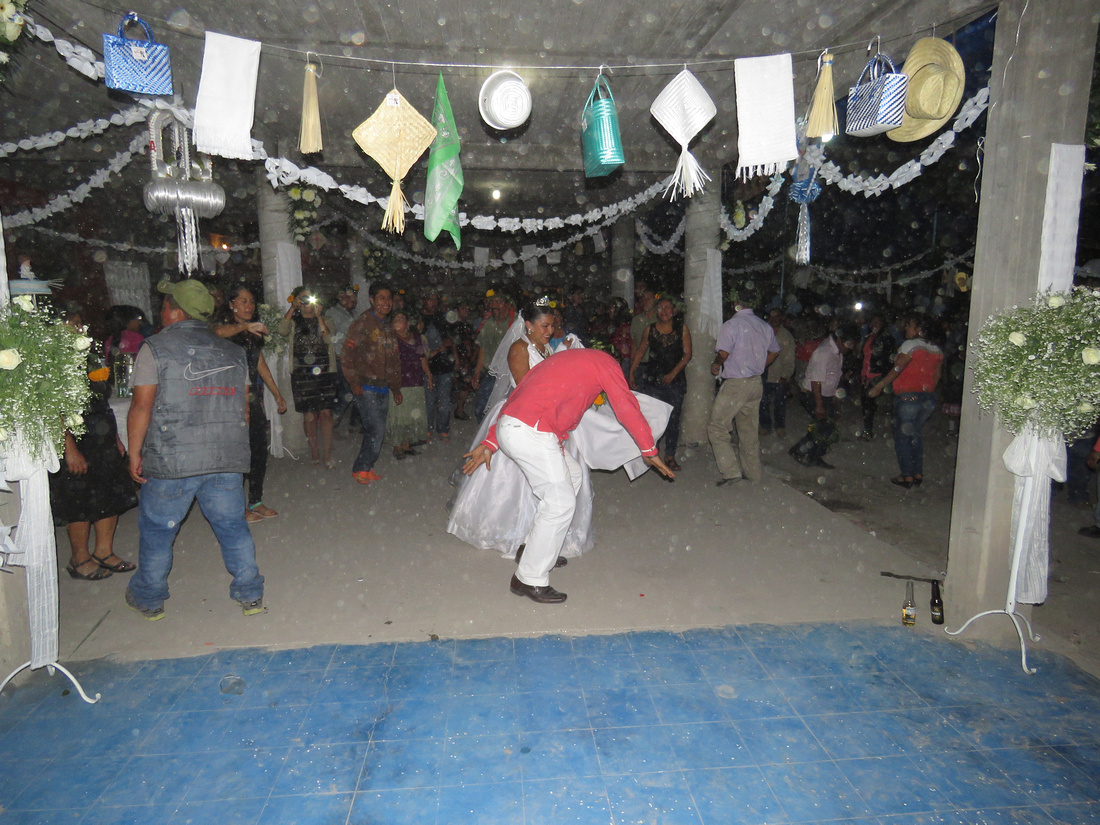
Aldelfo's mother Dolores and her brother cutting the rug.
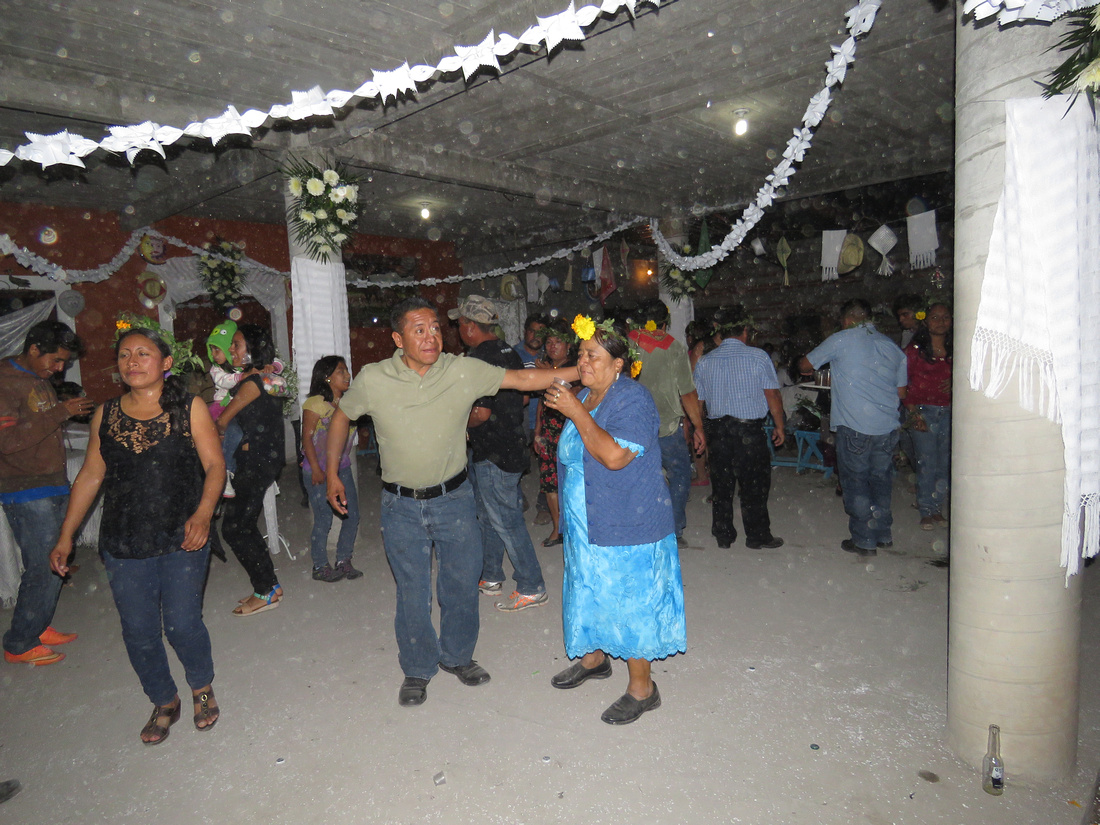
Mother and father of Monica along with spokseman and a few others ask Aldelfo's parents to receive their daughter and their gifts.
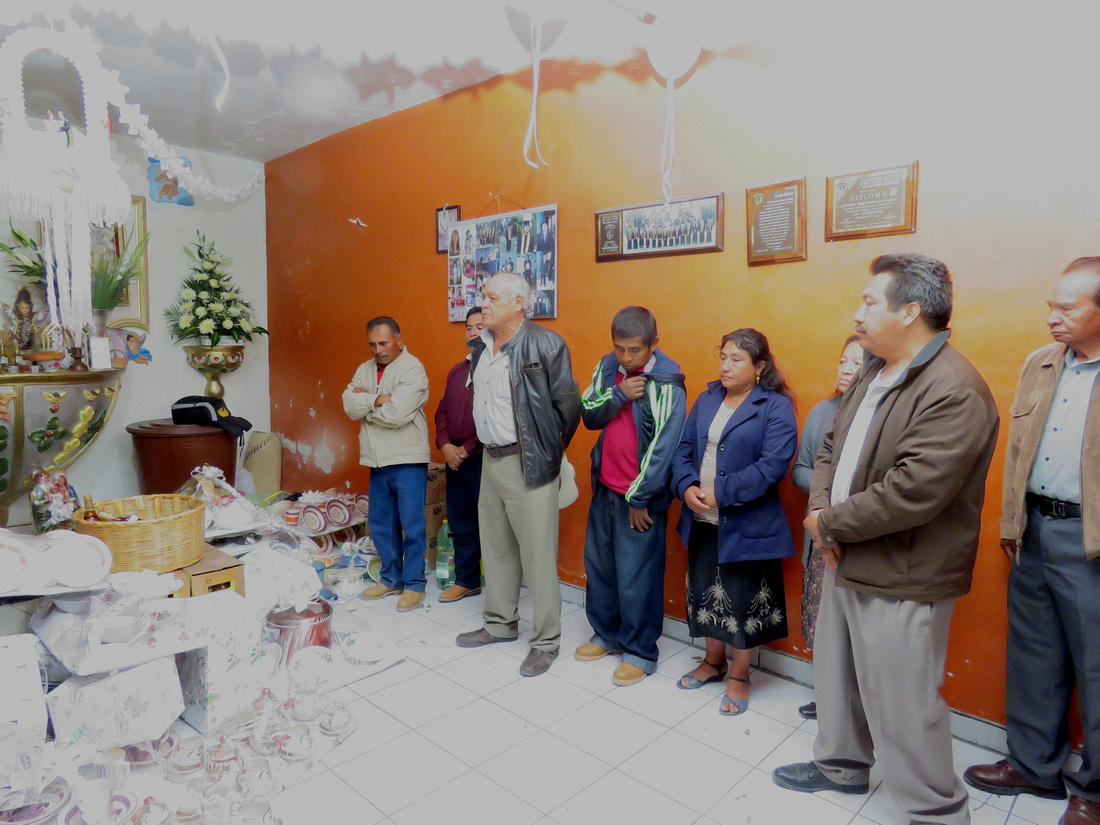
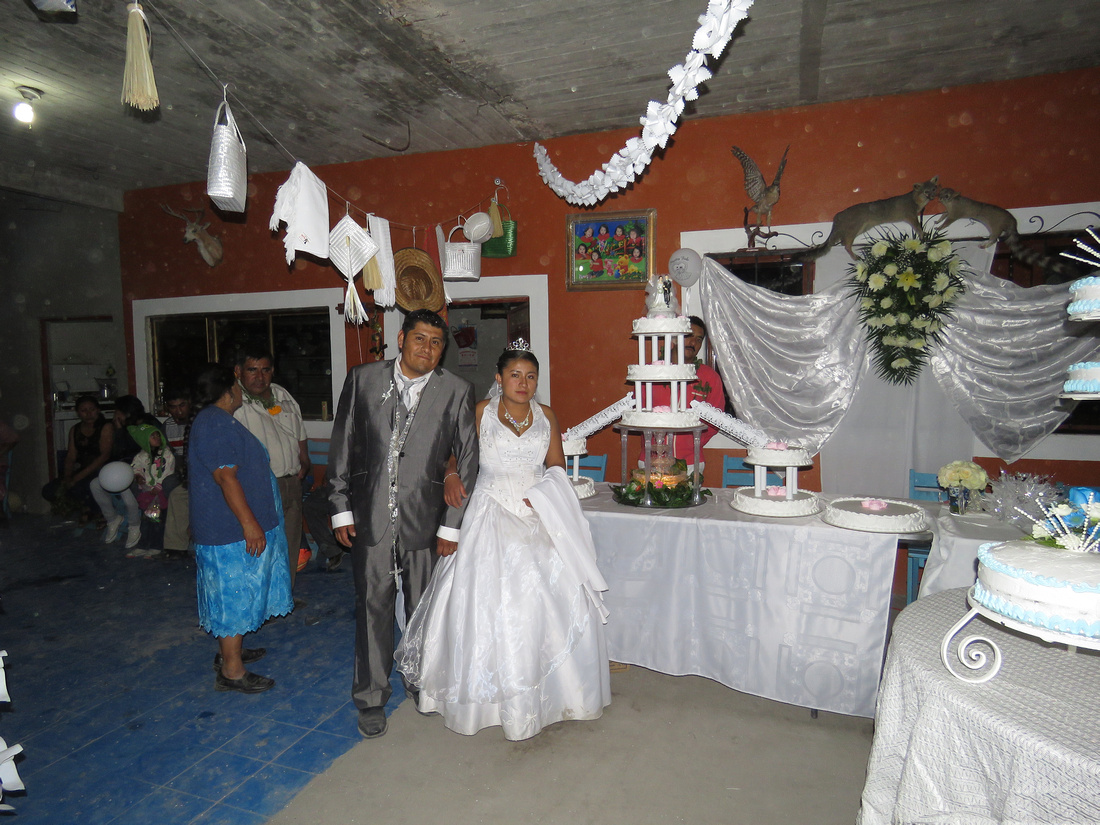
Giobanni wasn't into the mordida.
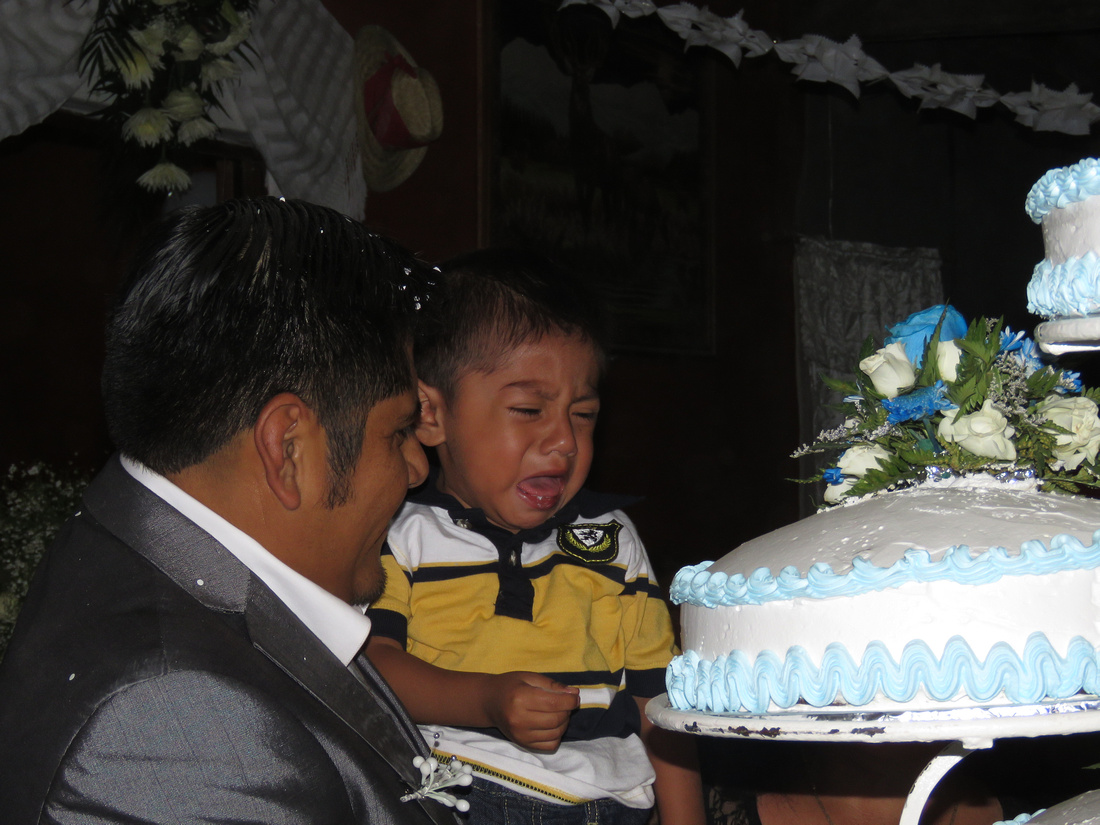
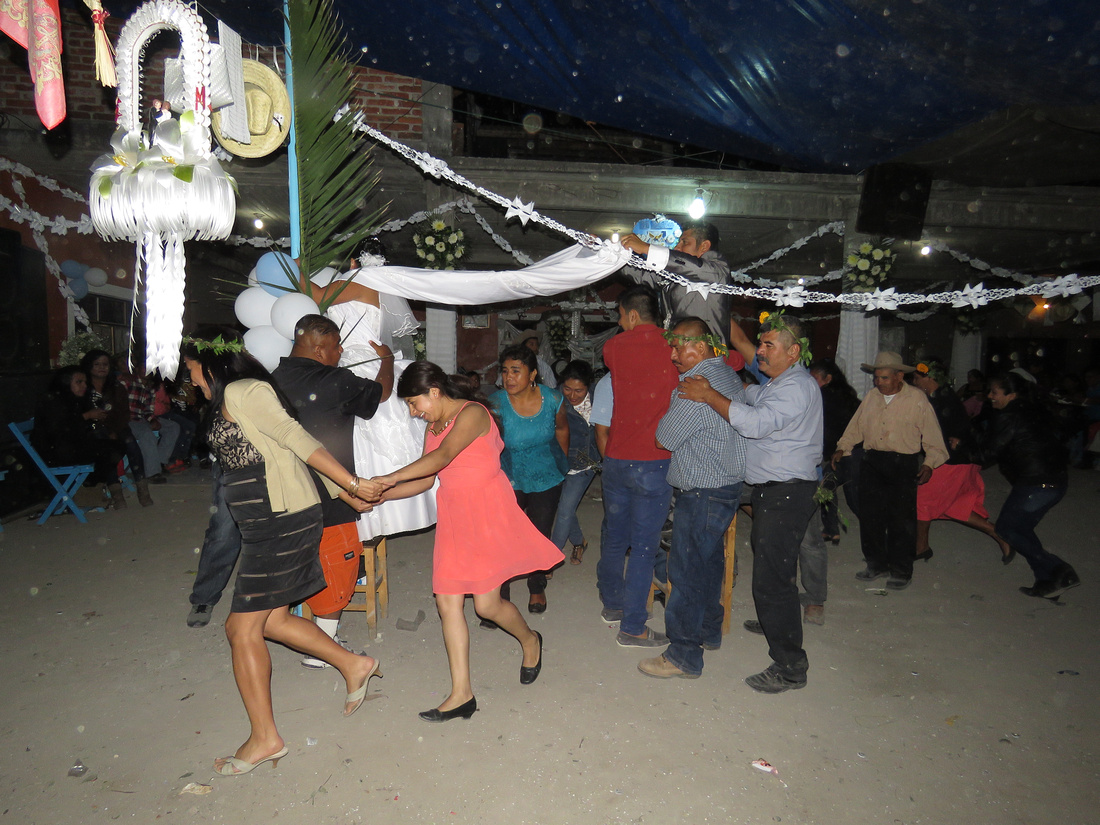

This was an incredible event for Beth and I. I began taking photos at nine. We left at twelve thirty AM. We were exhausted! Later we were told that many guests didn't leave until four in the morning. We wish much happiness to Aldelfo and Monica and thank them for allowing us to be part of their celebration.
In over twenty years of traveling down here to the Oaxaca valley we’ve seen only three houses of adobe being constructed. Houses here are made from regular or a cement based brick. I think it's because an adobe house has the stigma of being Indio or less than. Too bad. Adobe does have its limitations. It’s harder to hang heavy items on the wall, rain can eventually wear the adobe down, a structure can only be one story, and for security an adobe wall can be destroyed easier. But for climate control, there is no contest. An adobe structure provides much more insulation. Inside our home the adobe walls consistently remain cool. Selvario is constructing an adobe home in Union Zapata. He invited me to take some photos the other day. Selvario told me that adobe bricks are more expensive than other bricks but they are larger in size. An adobe brick is about 15” x 10” x 3”. Building is also much faster with adobe bricks. The home being built in the photos will be completed in just three weeks. That’s for walls only. The owner hasn’t decided on a roof style yet. Cement roofs are the most popular. With proper drainage a cement roof will last almost an indefinite period. The Spanish tile (teja) could need replacement in twenty years but is much cooler than cement.
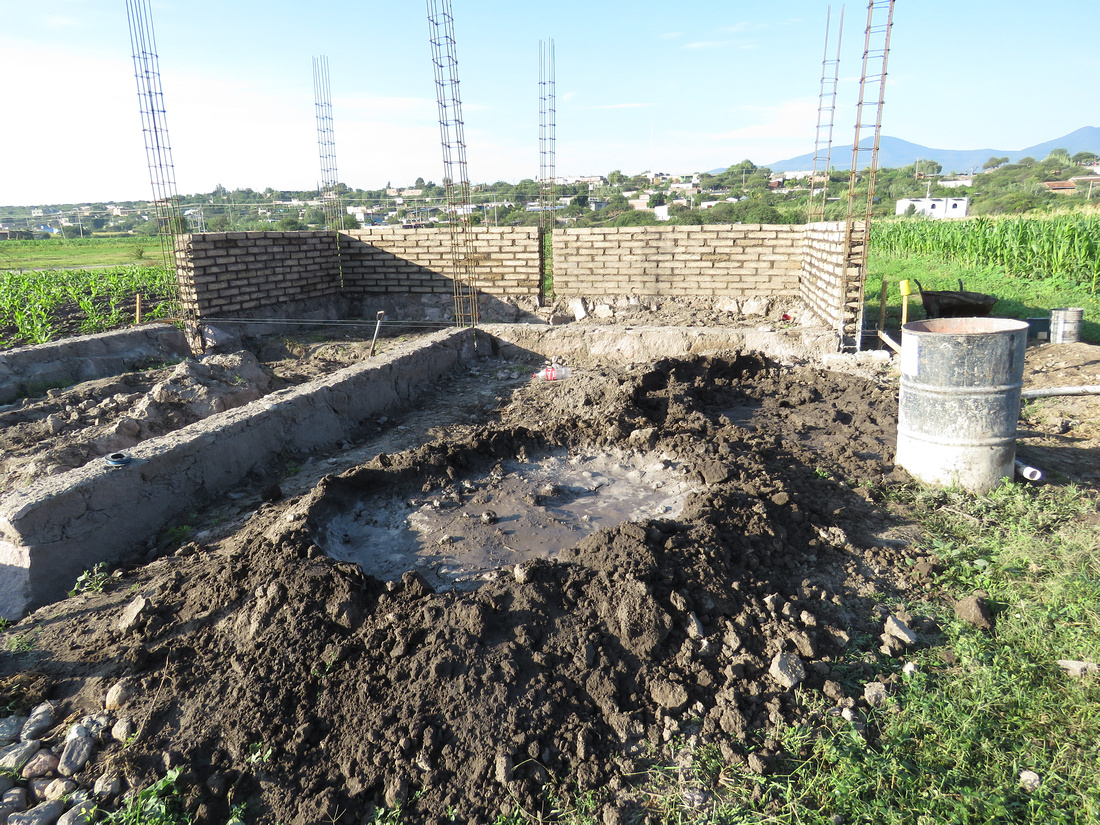
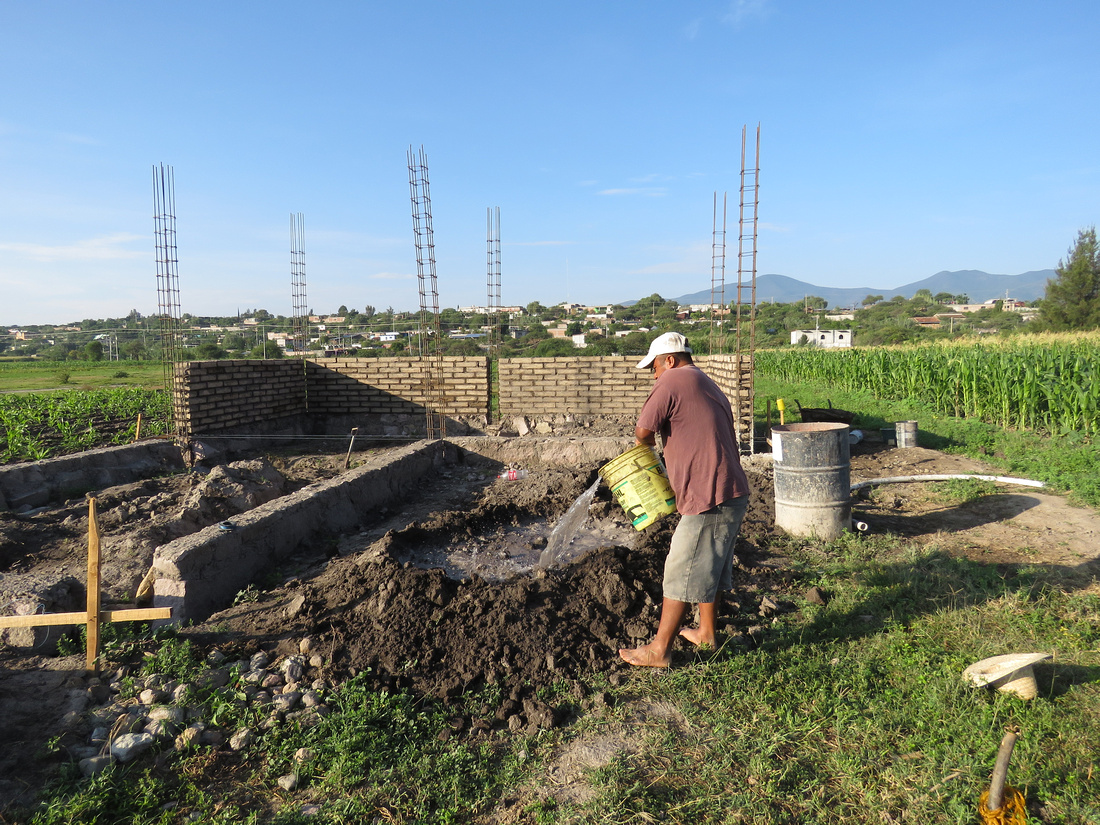
Selvario mixing up mud for the adobe bricks.
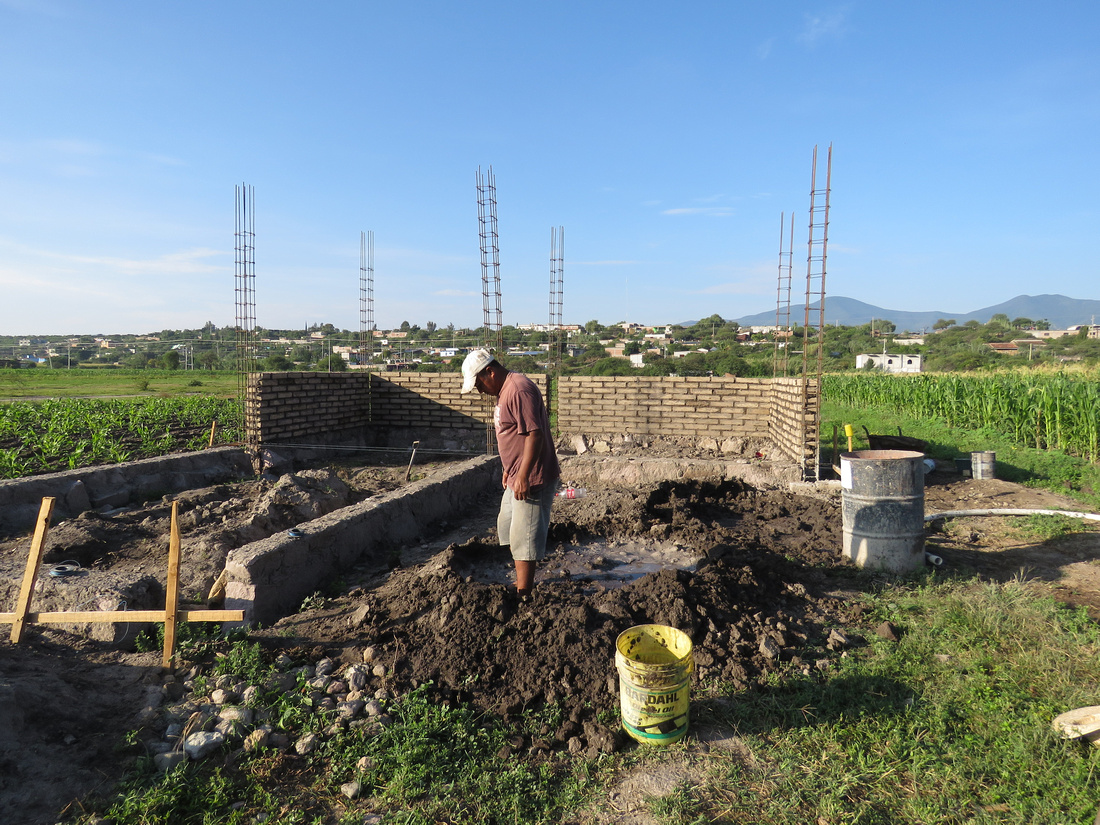

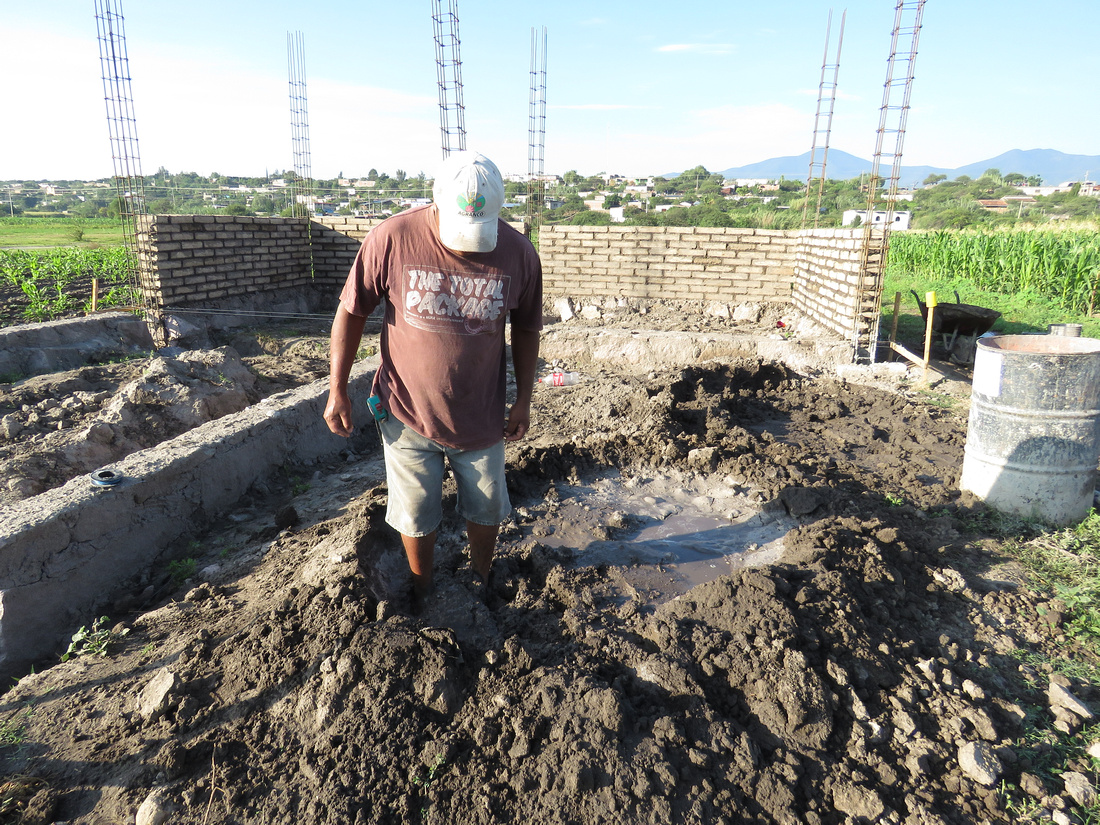
Cement columns are poured in the corners and in the middle of long walls for reenforcement.

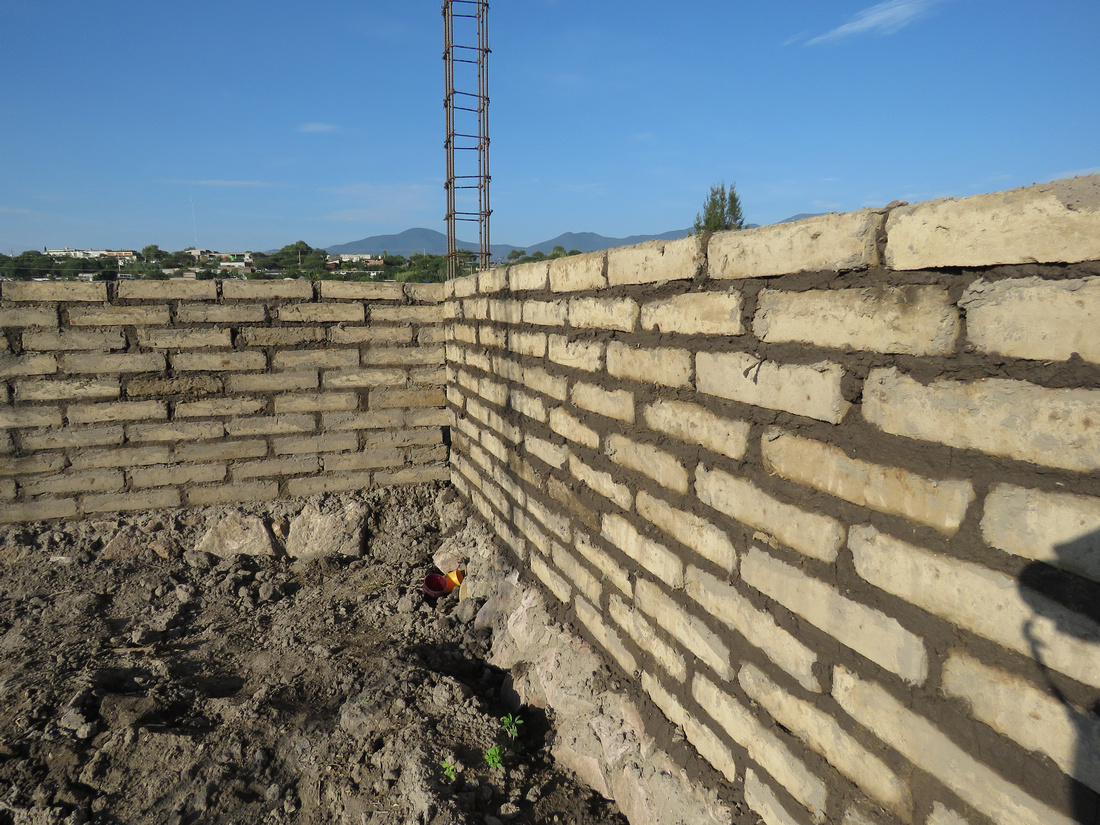
The inside walls will be covered with stucco.

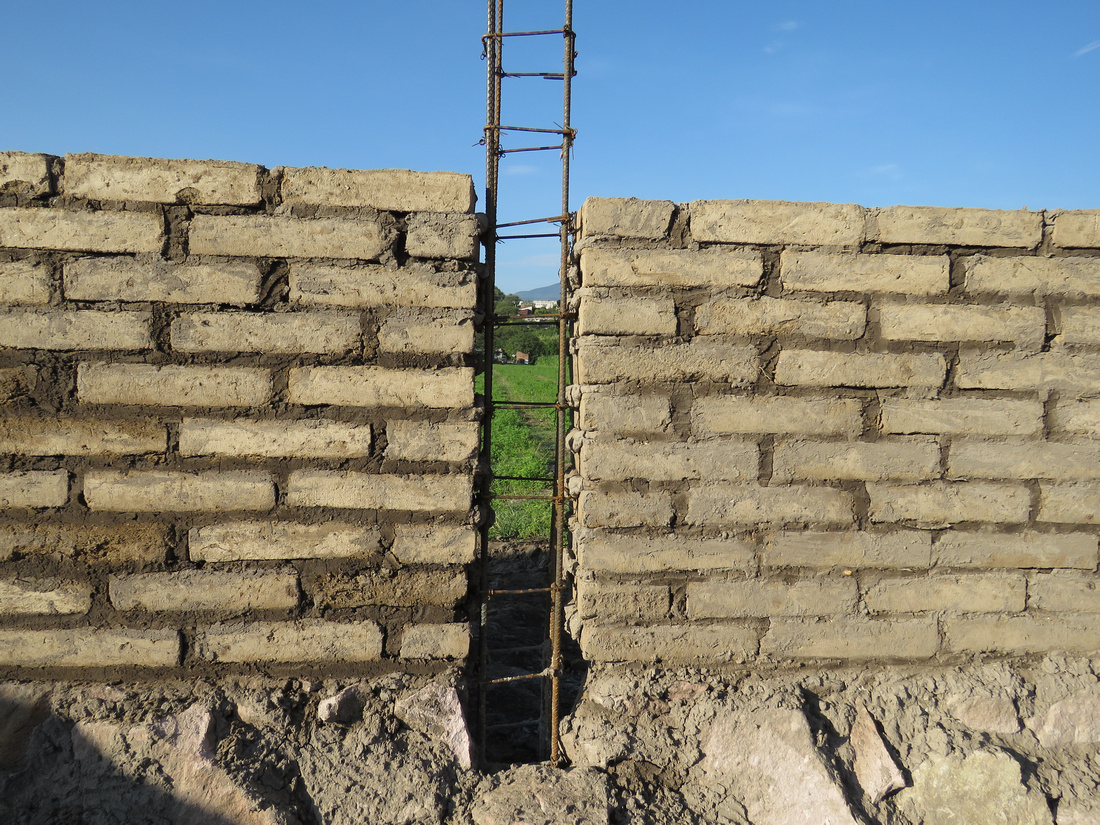 Selvario told me a little trick they use is mixing sand with the mud to avoid mud sticking to their hands.
Selvario told me a little trick they use is mixing sand with the mud to avoid mud sticking to their hands.
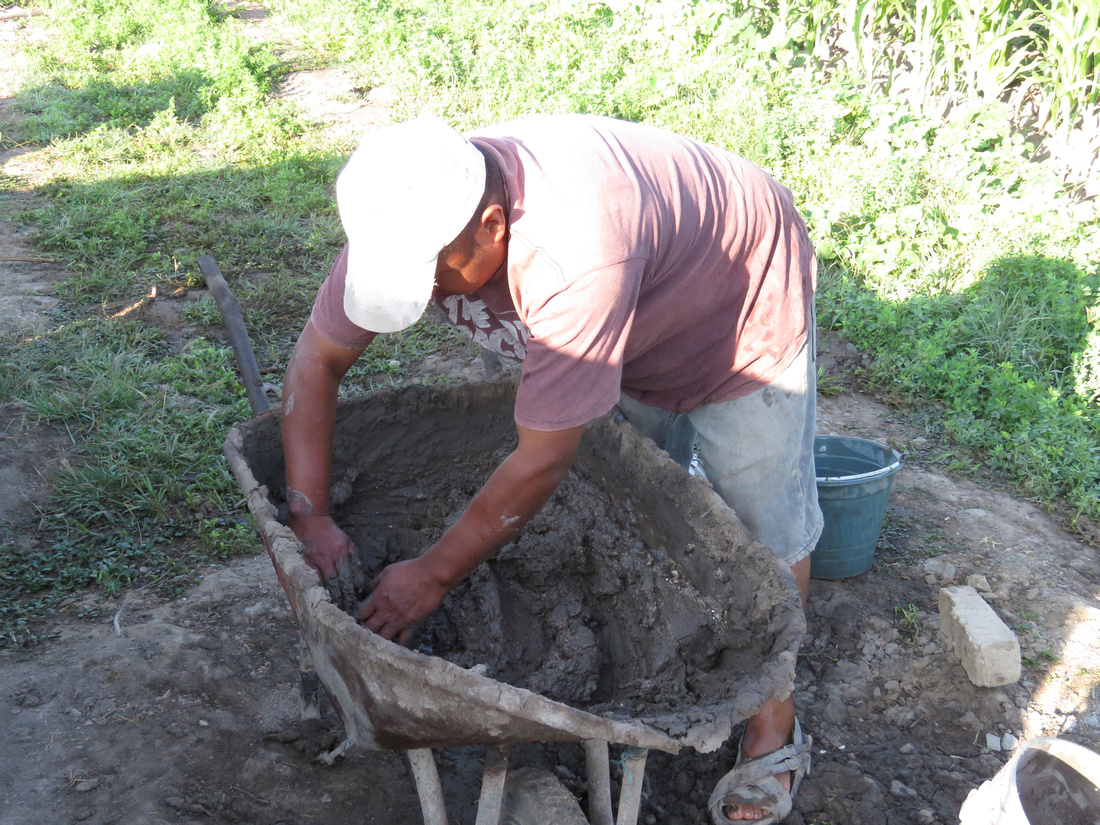
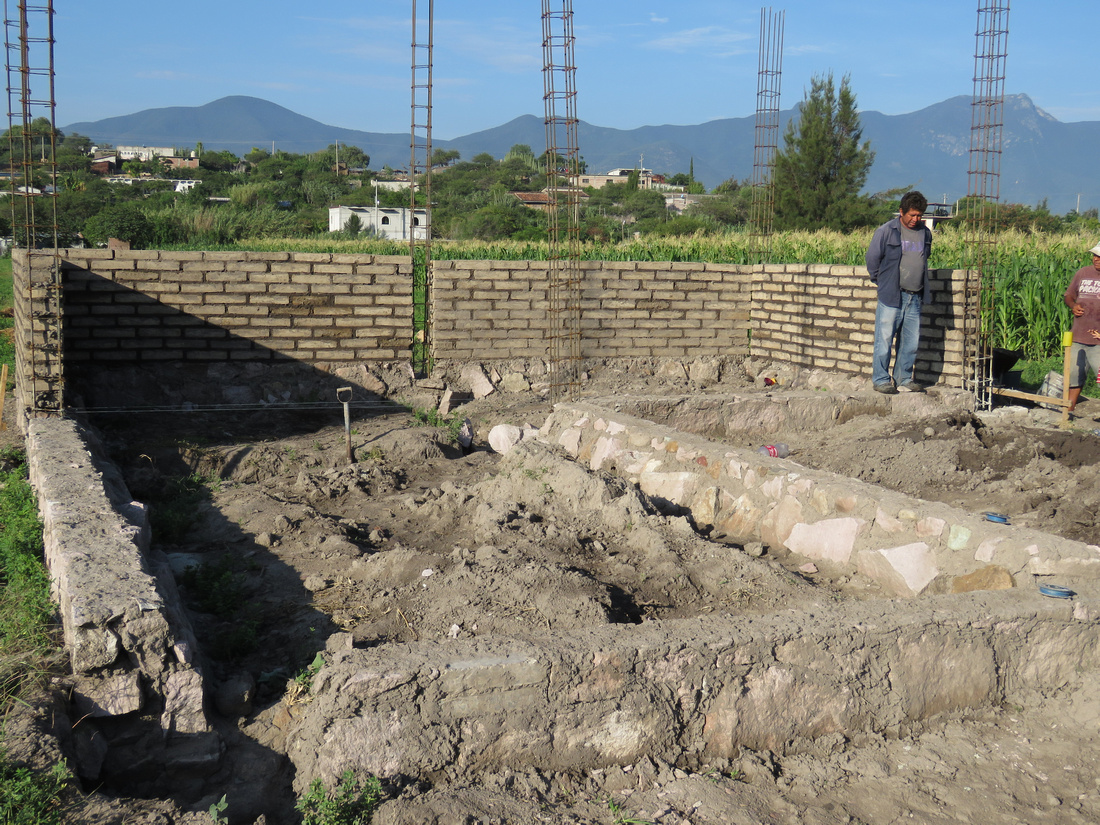 The owner is a young man that's never been to the States. It's pretty rare when homes are built in UZ without US dollars.
The owner is a young man that's never been to the States. It's pretty rare when homes are built in UZ without US dollars.
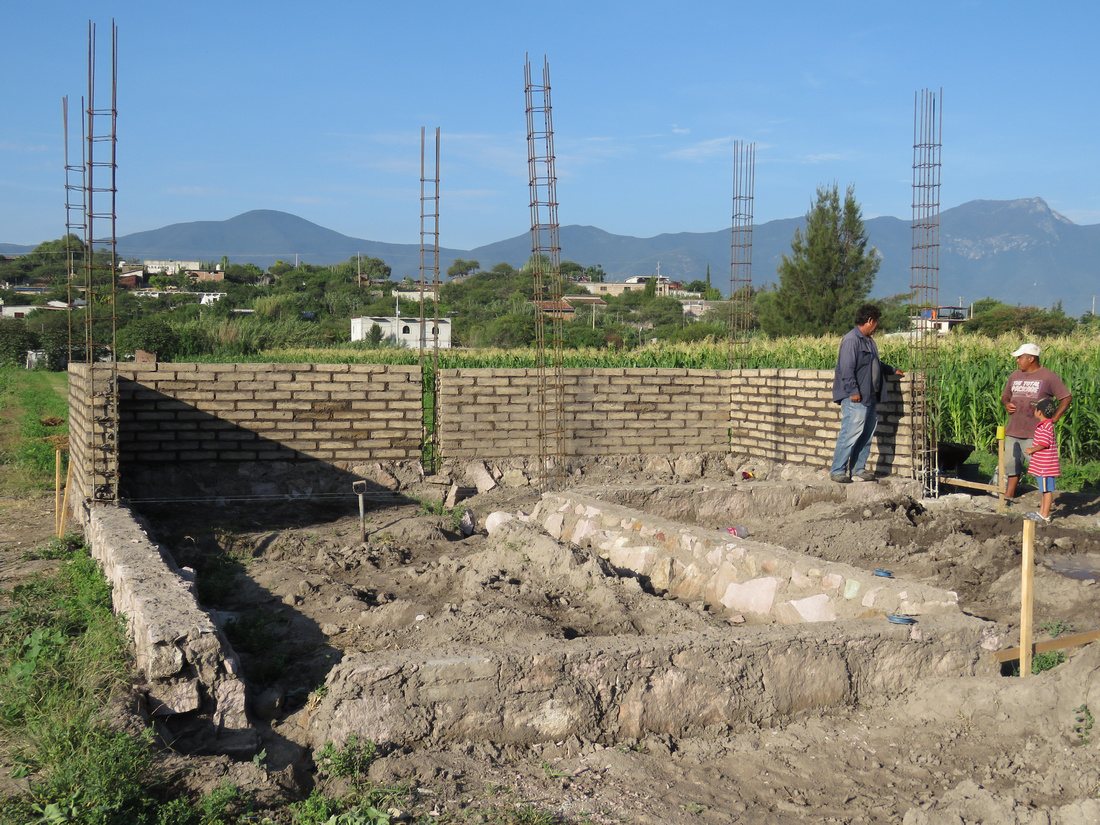
We bought two more hens. Their colors are beautiful. Our rooster Ganzo now rules over all the hens. Poor Big Boy hides over in the neighbor’s yard. Ganzo doesn’t even like Big Boy to come close to the fence. Every once in a while our neighbor’s rooster wanders over to our yard but Ganzo quickly runs him off. Goldie had eight chicks but only four have survived. For the first month Goldie and the chicks were locked up for safety but they now forage in the yard. They still sleep in a fenced area for safety. We’re not sure what happened to the lost four. Could have been rats or maybe even Scooter. Scooter has proven himself to be a killer of chicks. I’ve had to pay for a few that he killed. I added another nest to our hen house. It too is made from a five gallon bucket but I attached this one from the outside so it didn’t take up space in the hen house. It took a couple of days for the hens to used it, but now they use it daily. We bought our last two hens from Felipe’s daughter Leticia. I wasn’t looking forward to catching them but it turned out to be quite simple. Felipe has a couple of young hound dogs. One of them is trained to catch chickens. He doesn’t harm them. When a chicken is cornered is just sits down and submits. Felipe just picks them up. Incredible!
Scooter checking out Goldie's chicks. Yummy!!!!
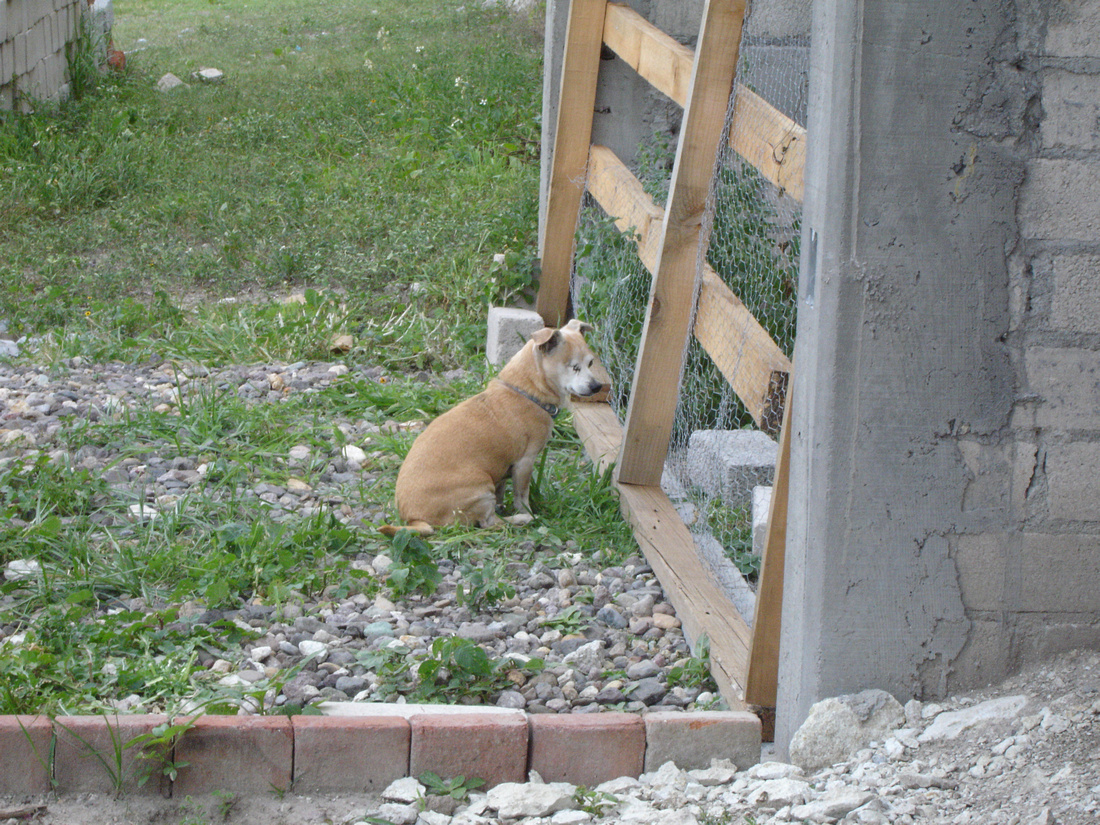
The nest I added to the outside of the coop.
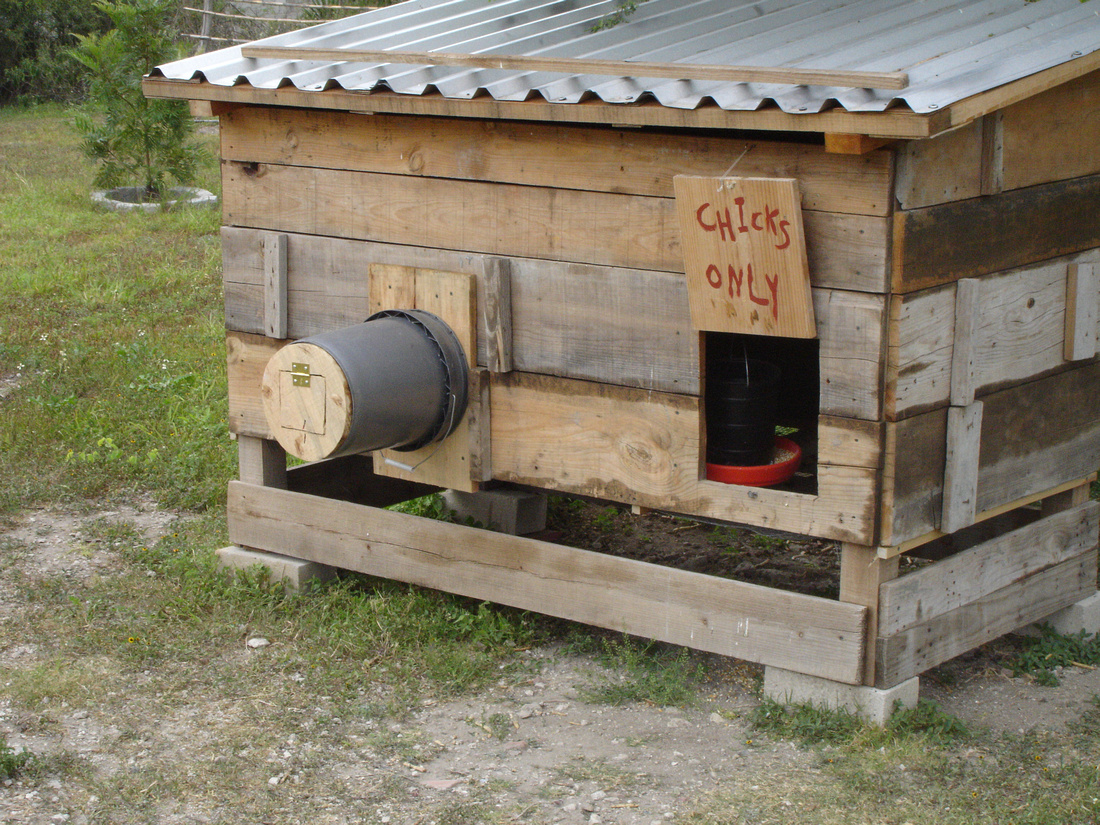
Goldie in the brush with her chicks.
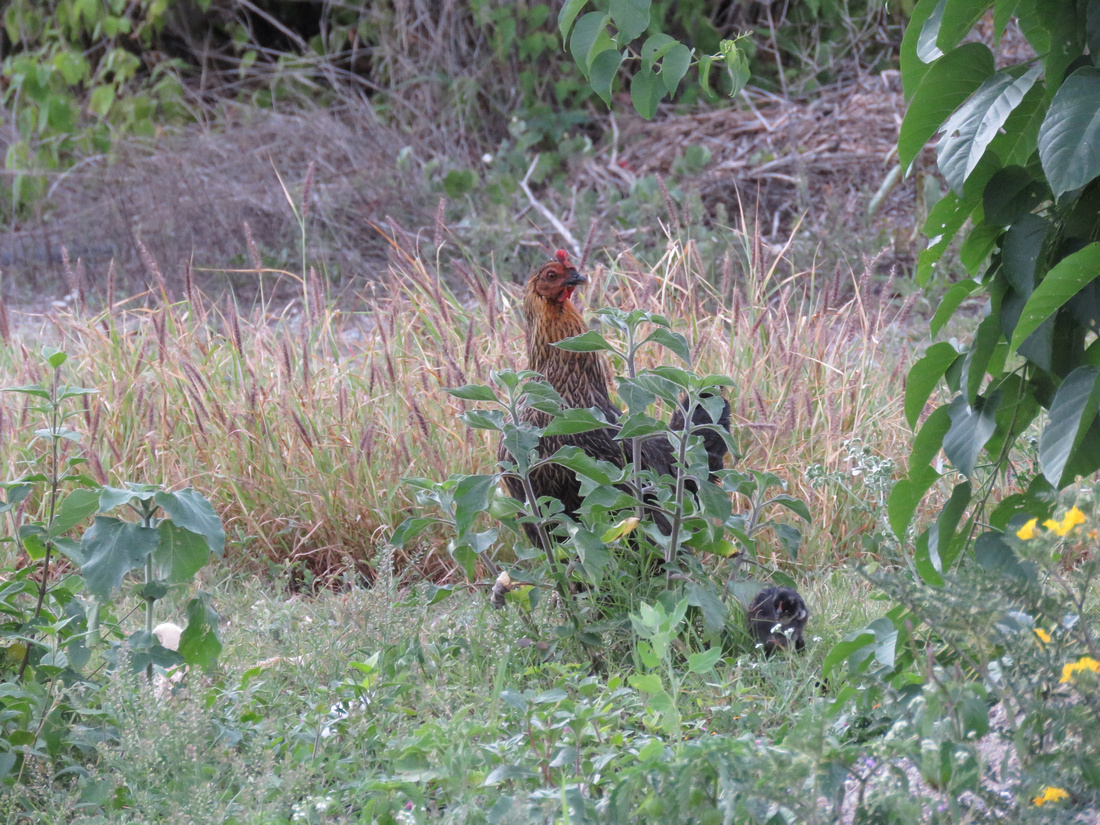
Goldie now roams the yard with her rapidly growing chicks. We were going to give the chicks away but have decided to keep them for now.
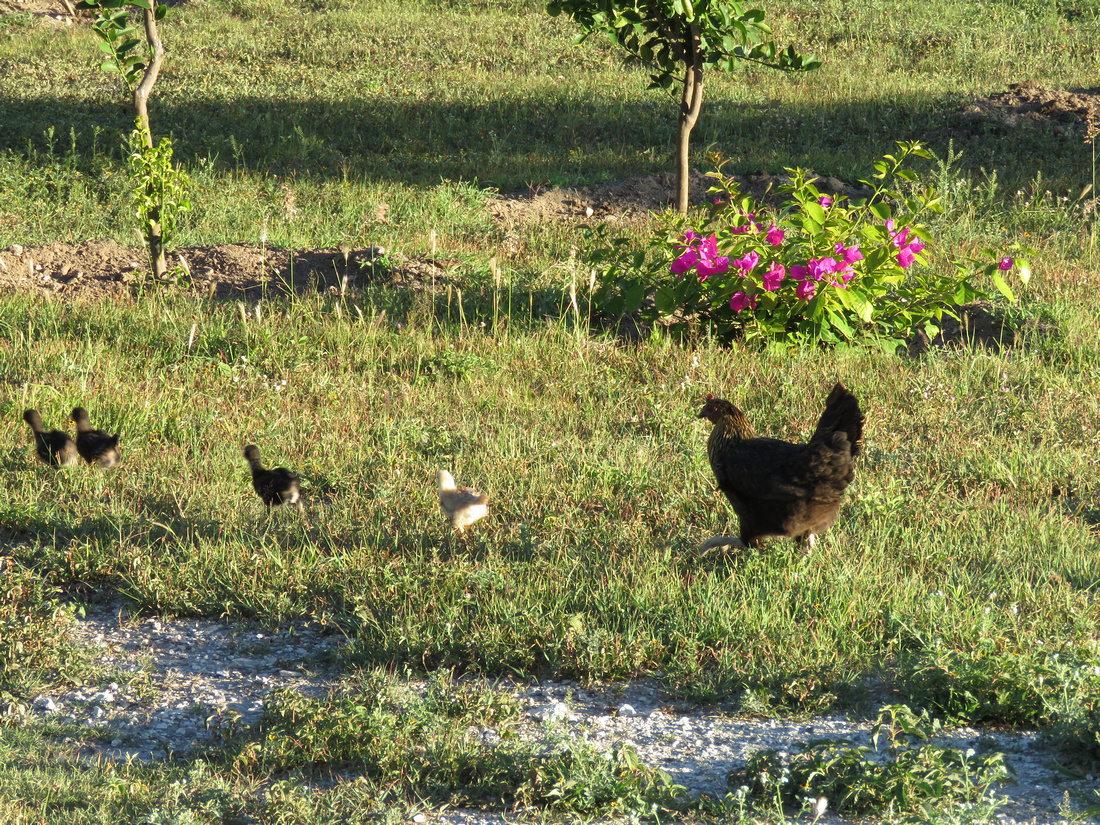
Our two new hens Sandy and Ashley
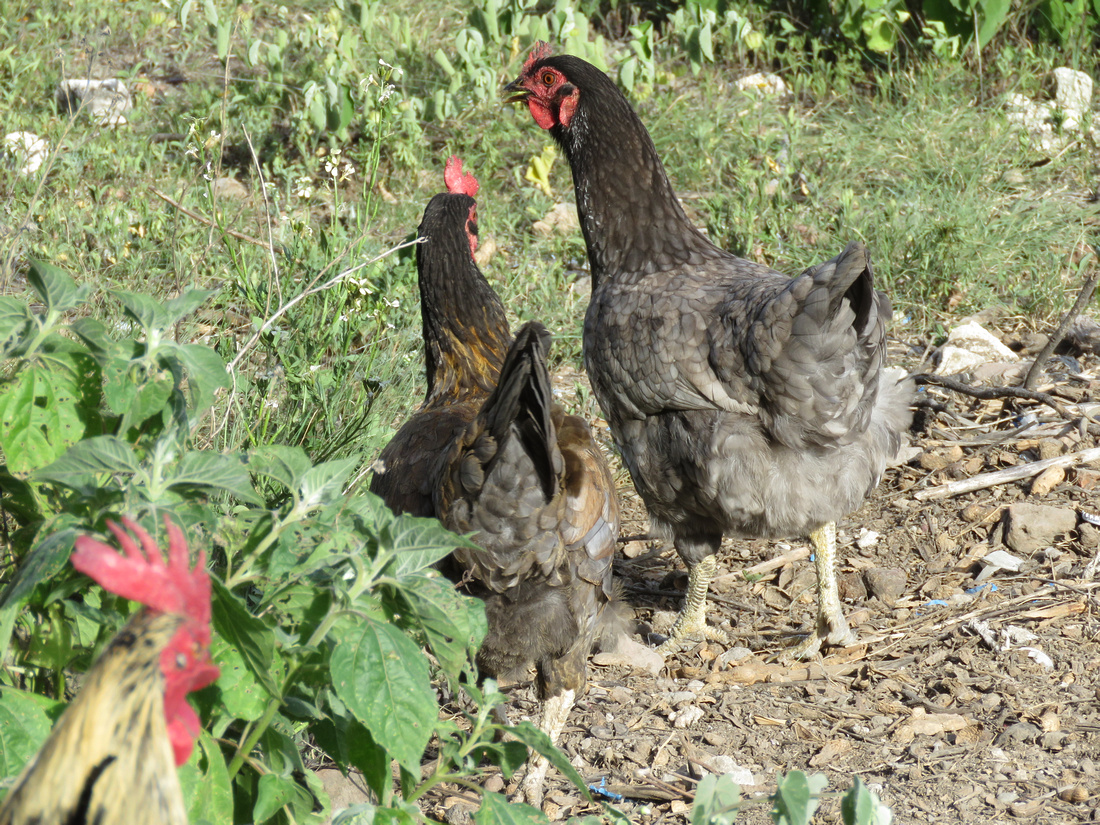
We became compadres again. A friend’s daughter graduated from kinder and we were her padrinos. We are limited to nonreligious events for becoming compadres. Weddings and baptisms are out. We watched Denia receive her diploma then went home until three. We then returned to Marino’s for the fiesta. We ate, drank, and danced until ten. It was a great night. Most of the guests were family members. We swapped experiences and thoughts about Mexico and the United States. Of course, Mr. Trump came up in our conversation as it has with many of our friends. Chapo Guzman is also a lively topic right now. Many people view him as a kind of Robin Hood.
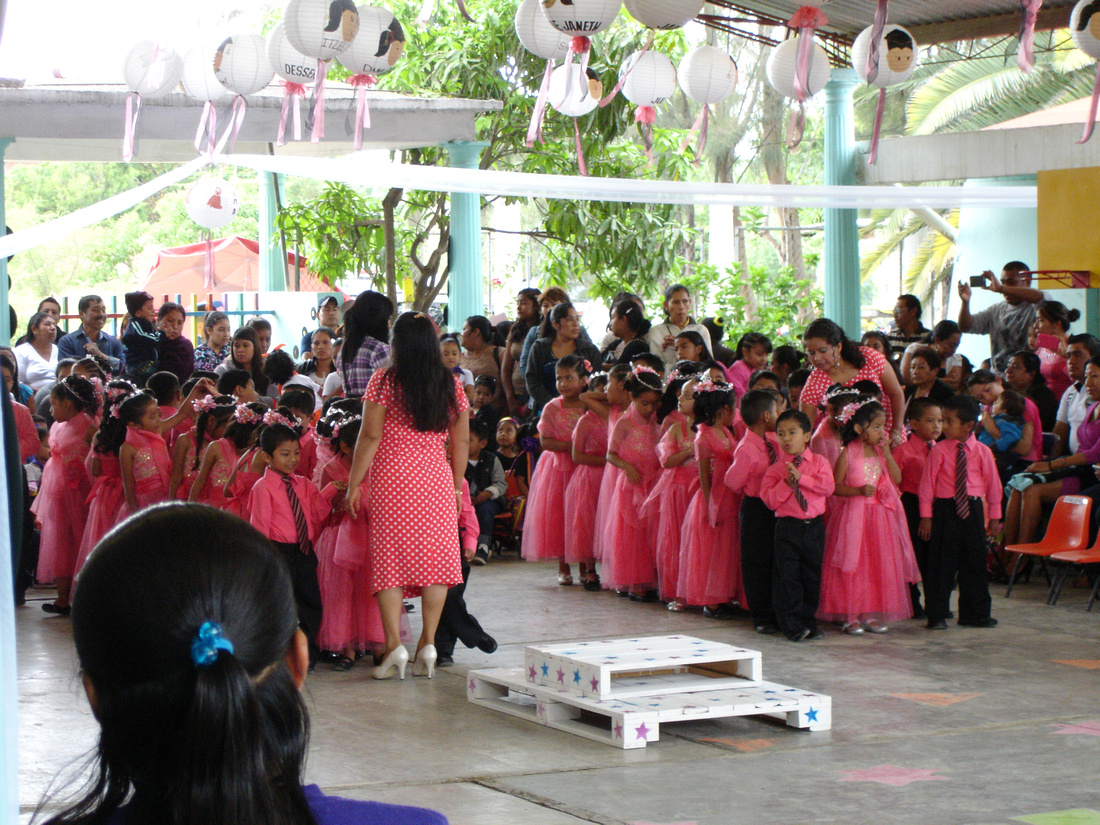
 Marino's daughter Denia at her graduation from kinder.
Marino's daughter Denia at her graduation from kinder.
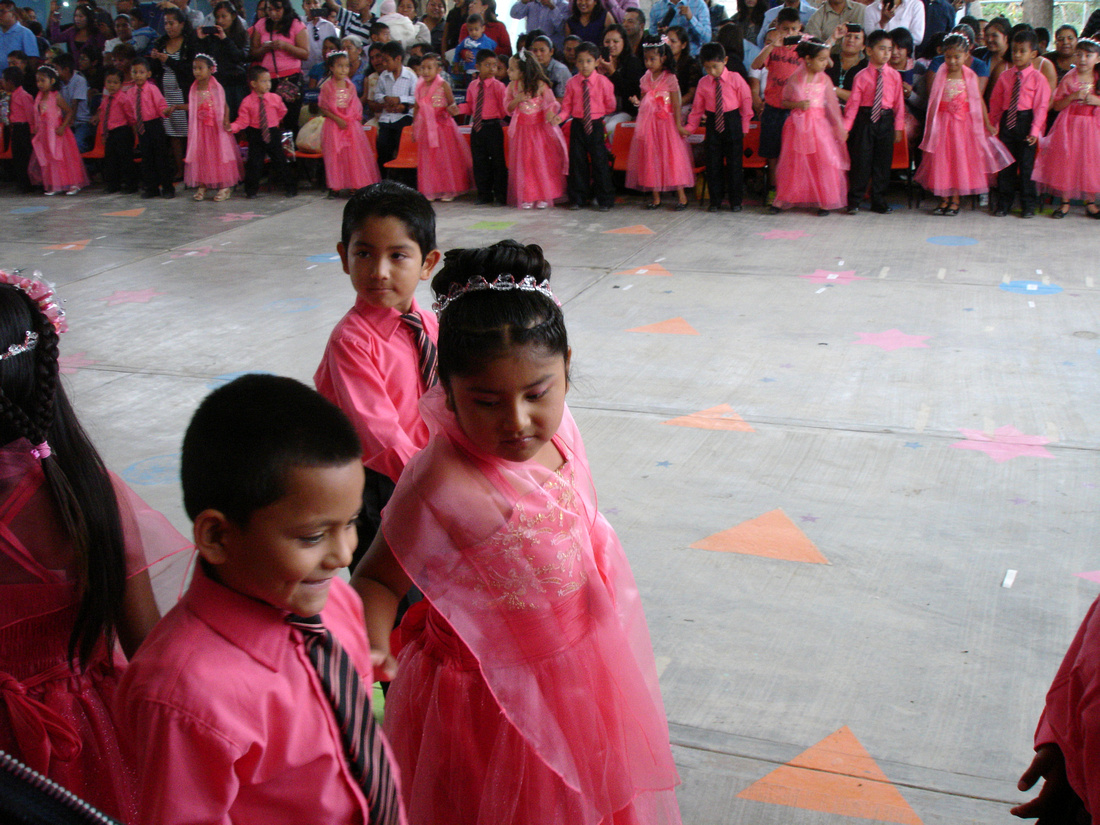 I believe the theme for their dances was the fifties.
I believe the theme for their dances was the fifties.
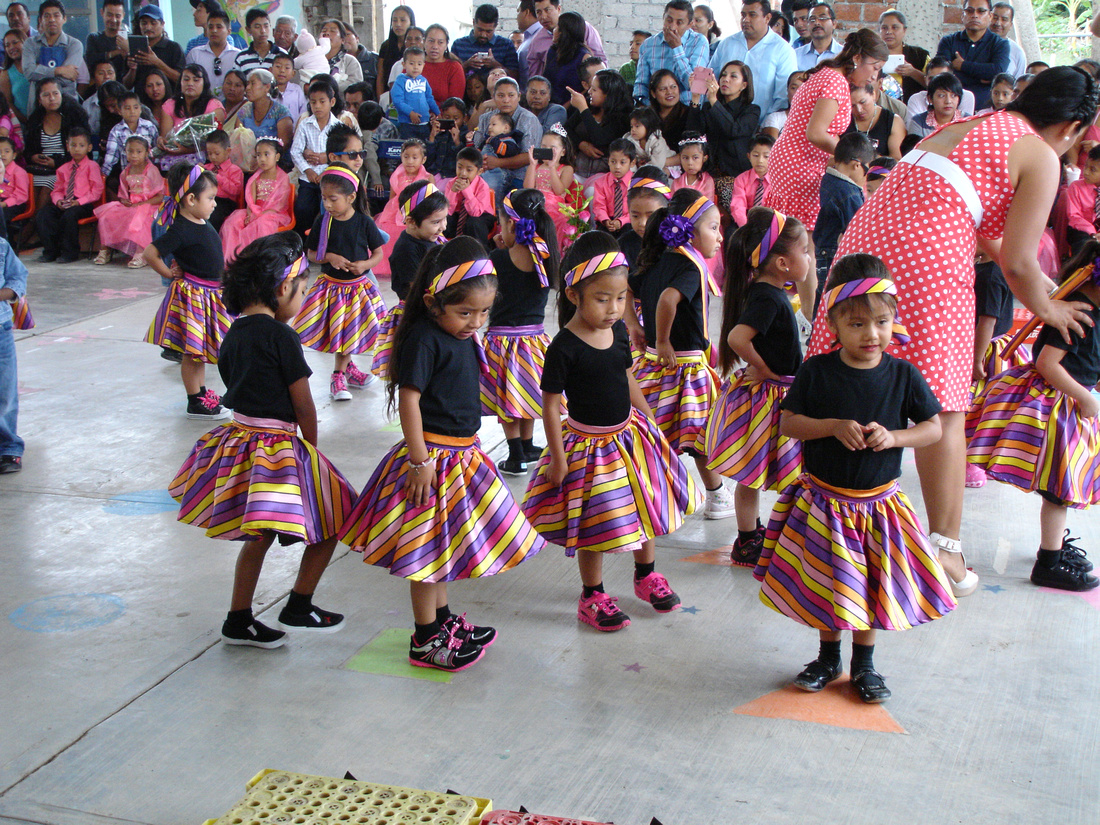

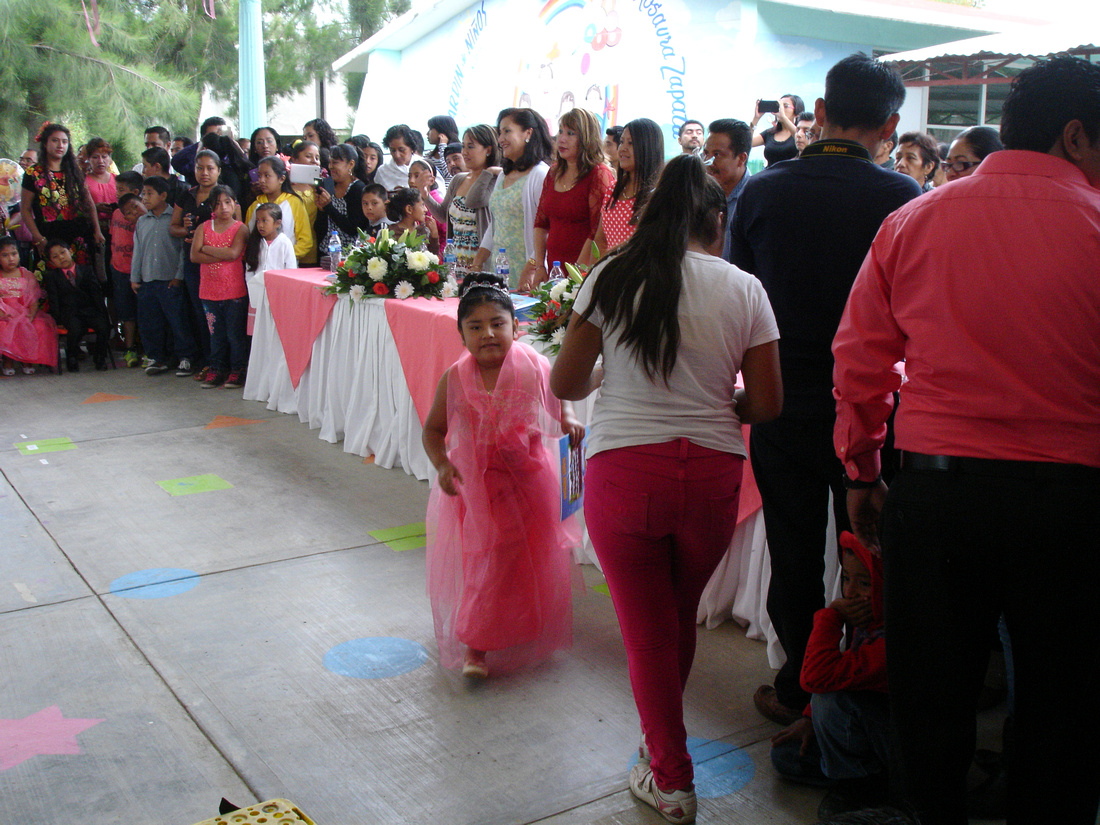 Excellent food.
Excellent food.
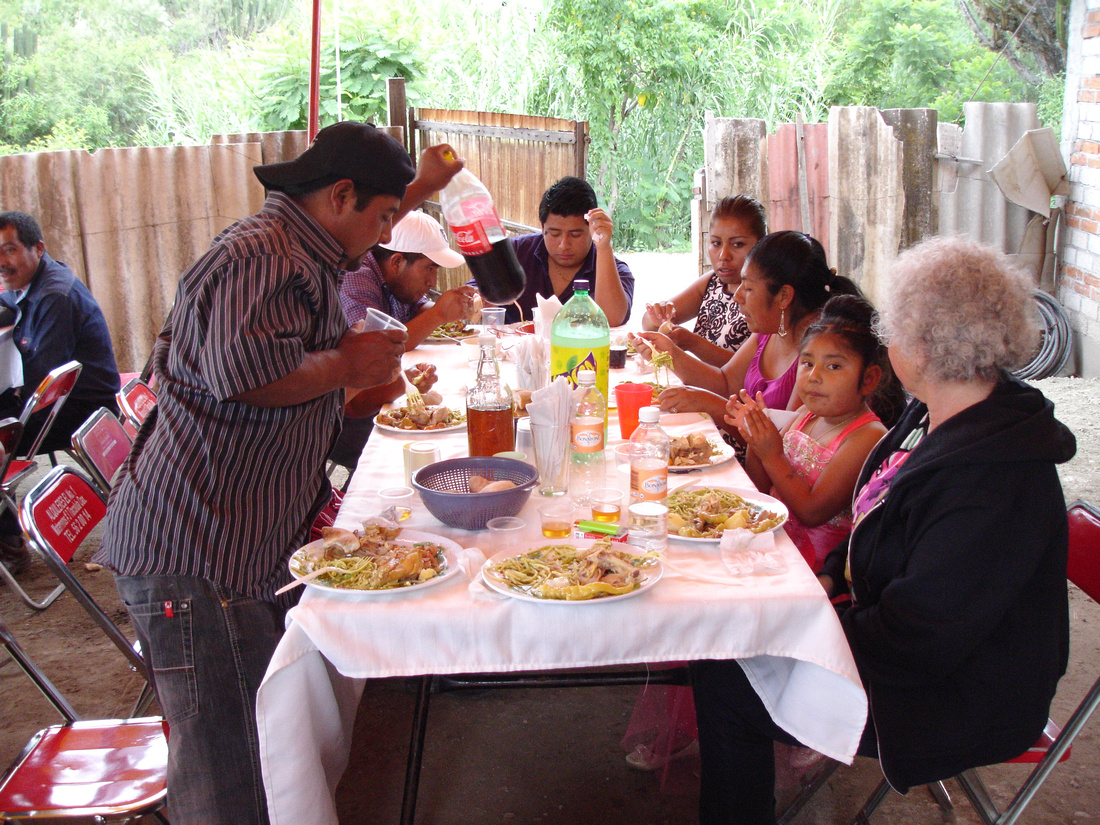
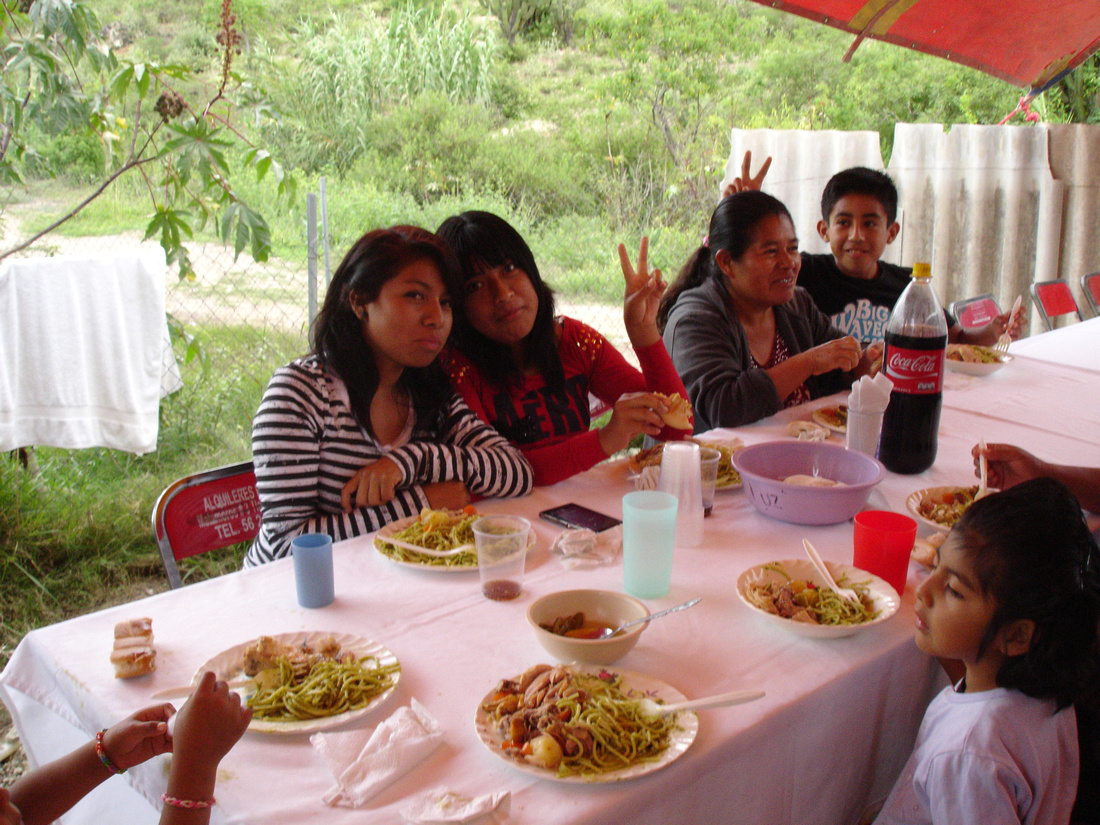
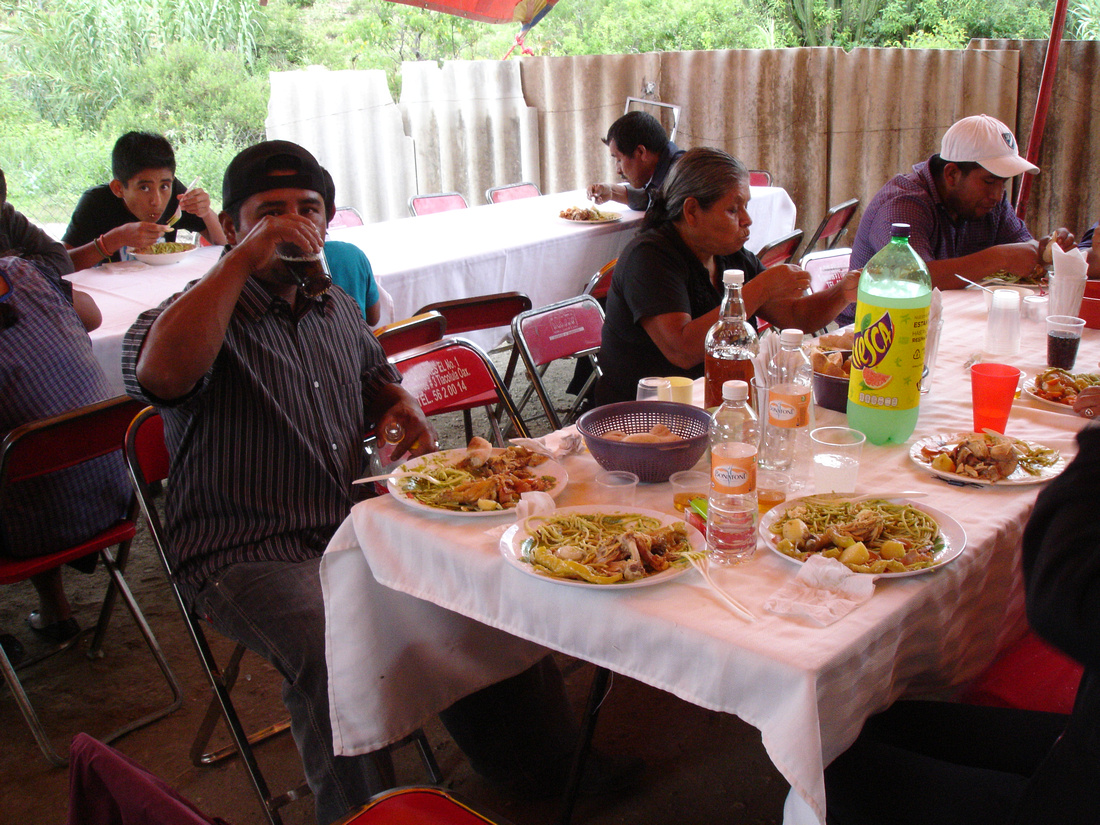
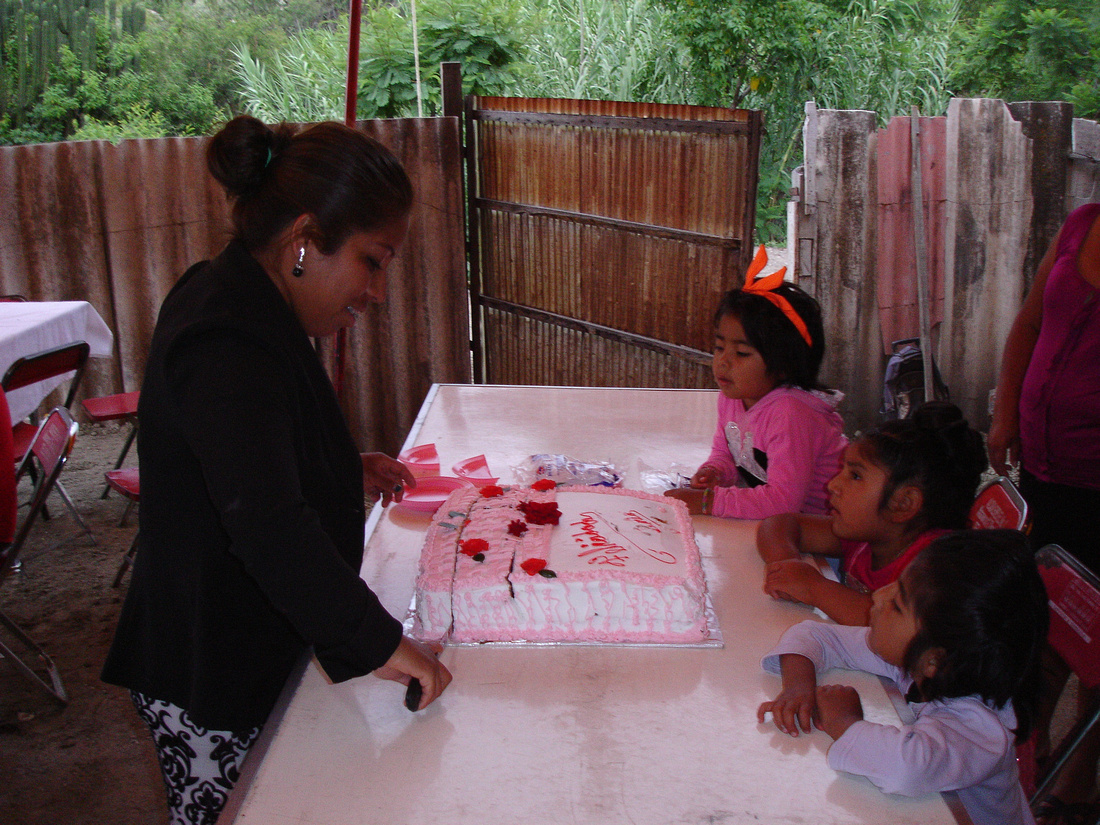 Don't remember what made us laugh but it must of been a good one.
Don't remember what made us laugh but it must of been a good one.
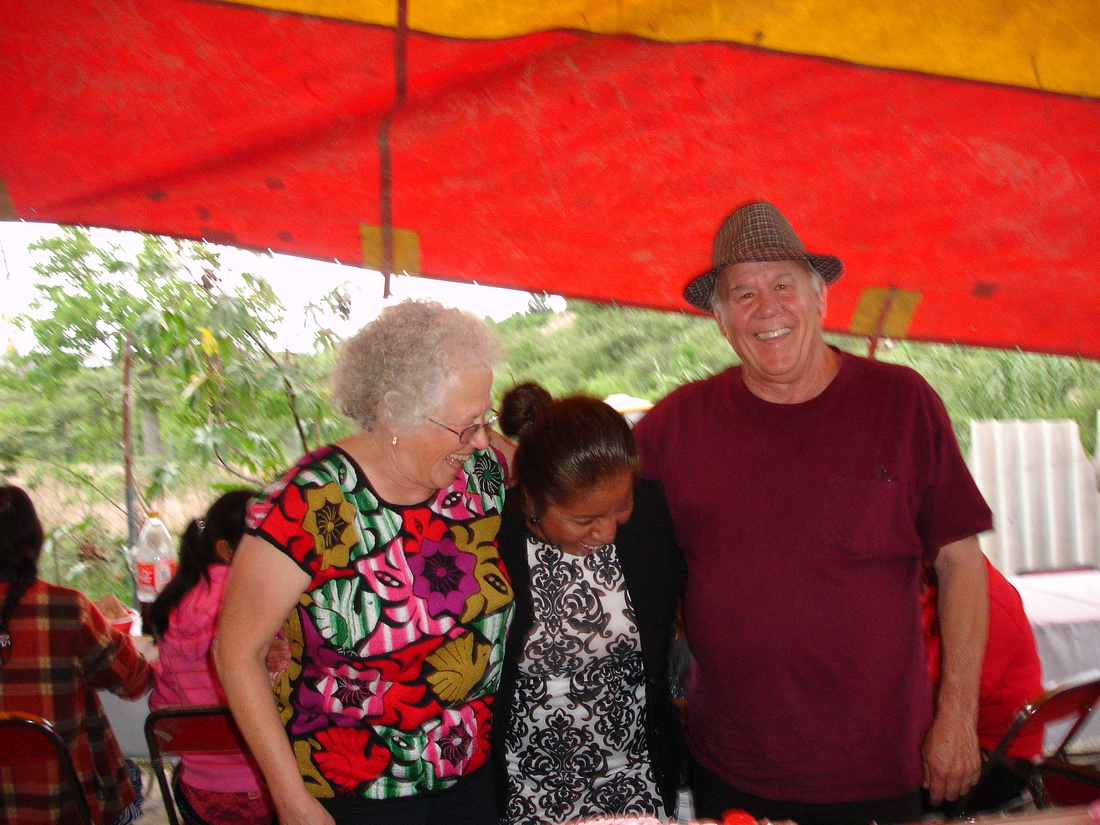
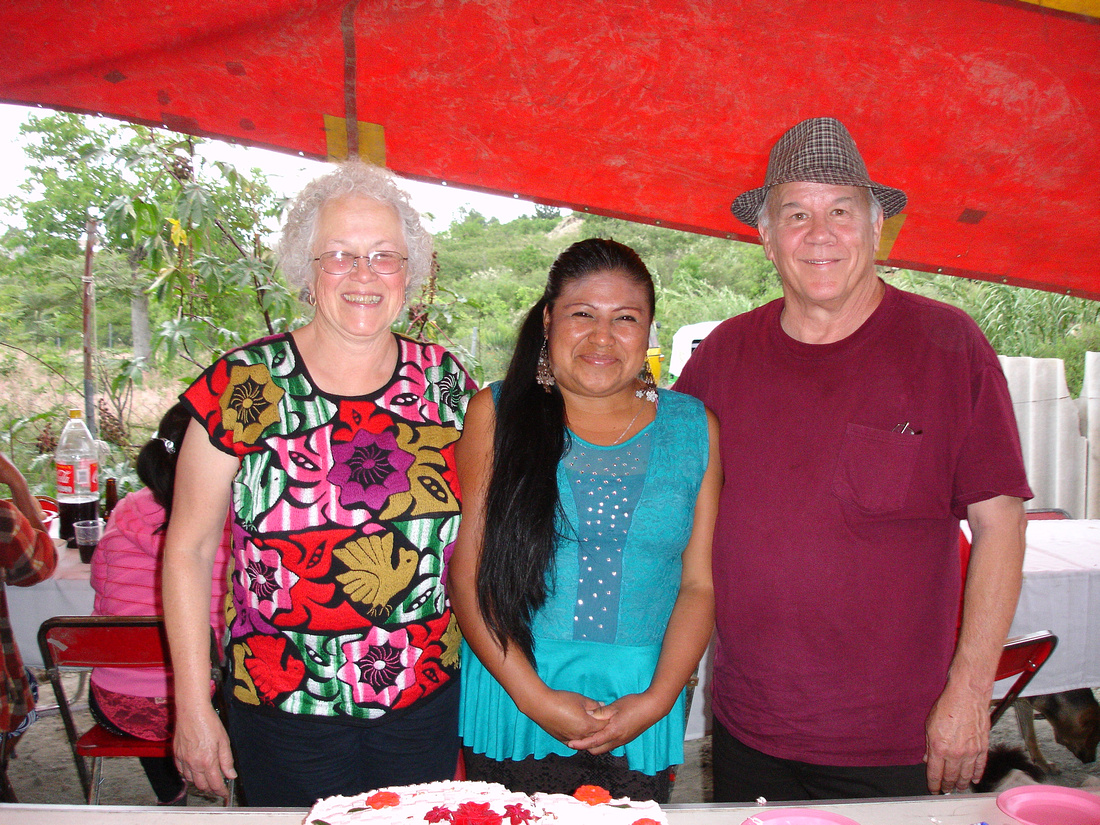 Our compadre and comadre.
Our compadre and comadre.

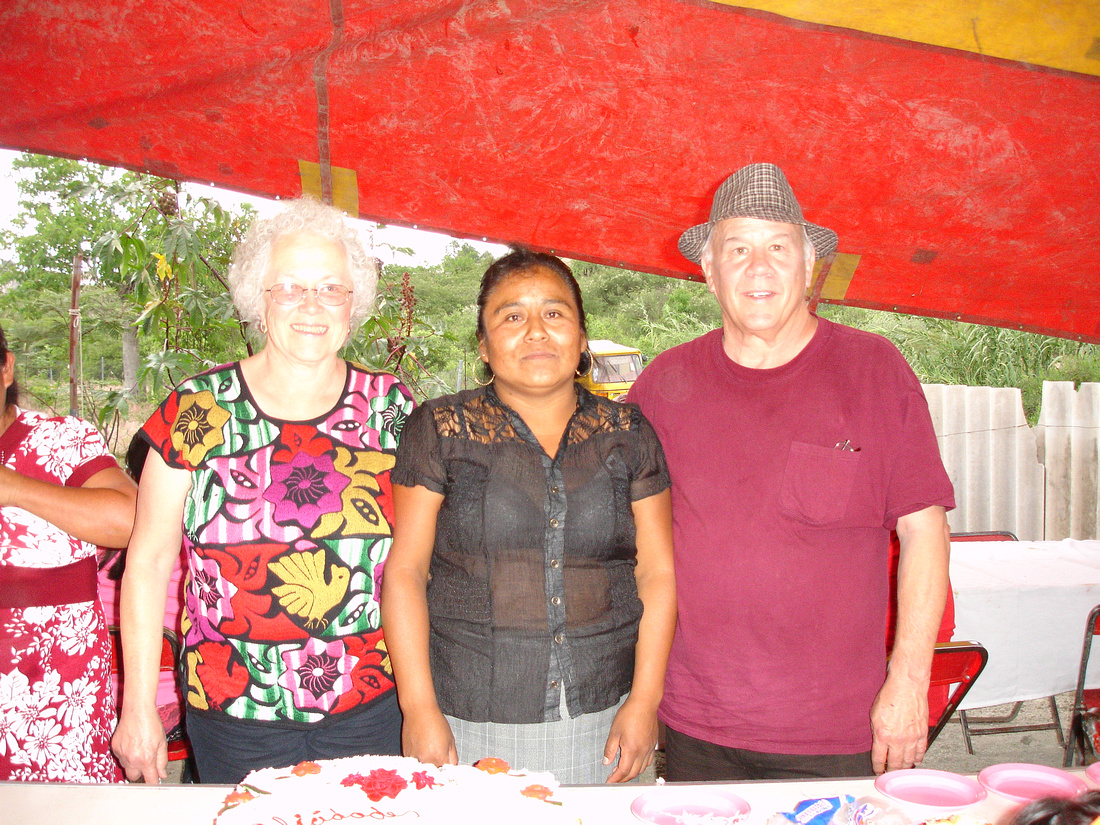
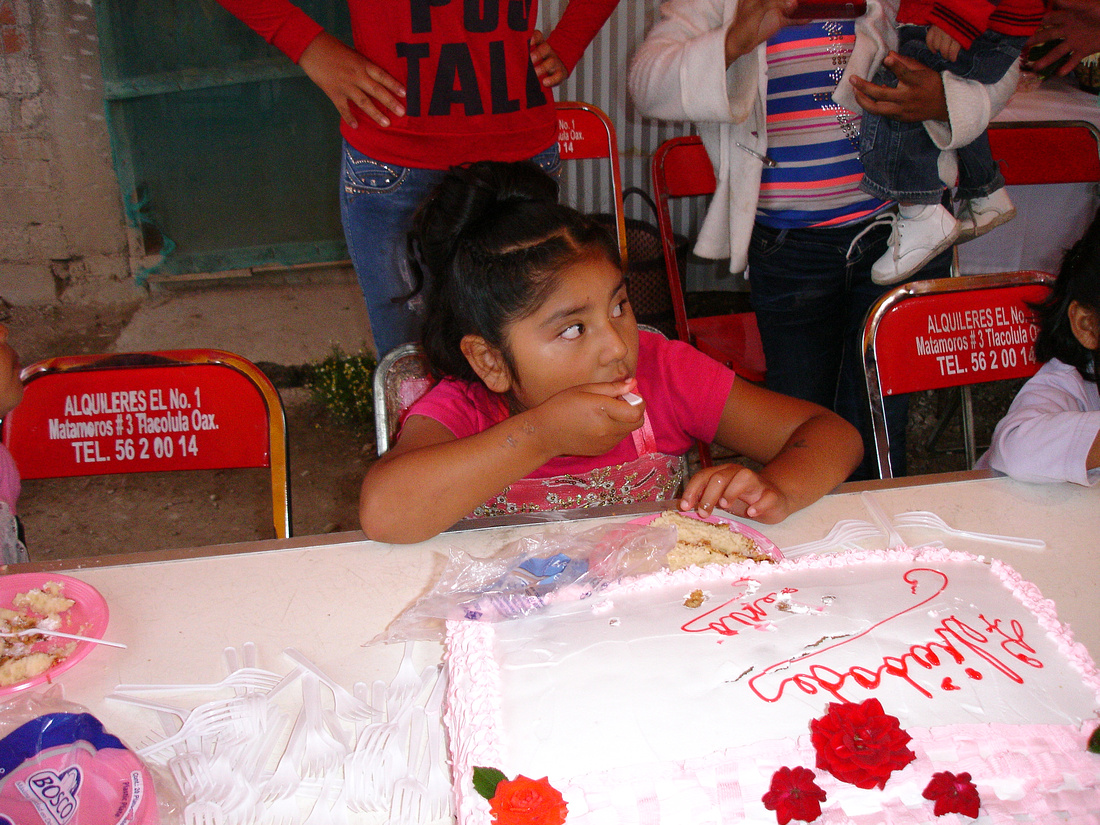 We danced until about 10:30.
We danced until about 10:30.

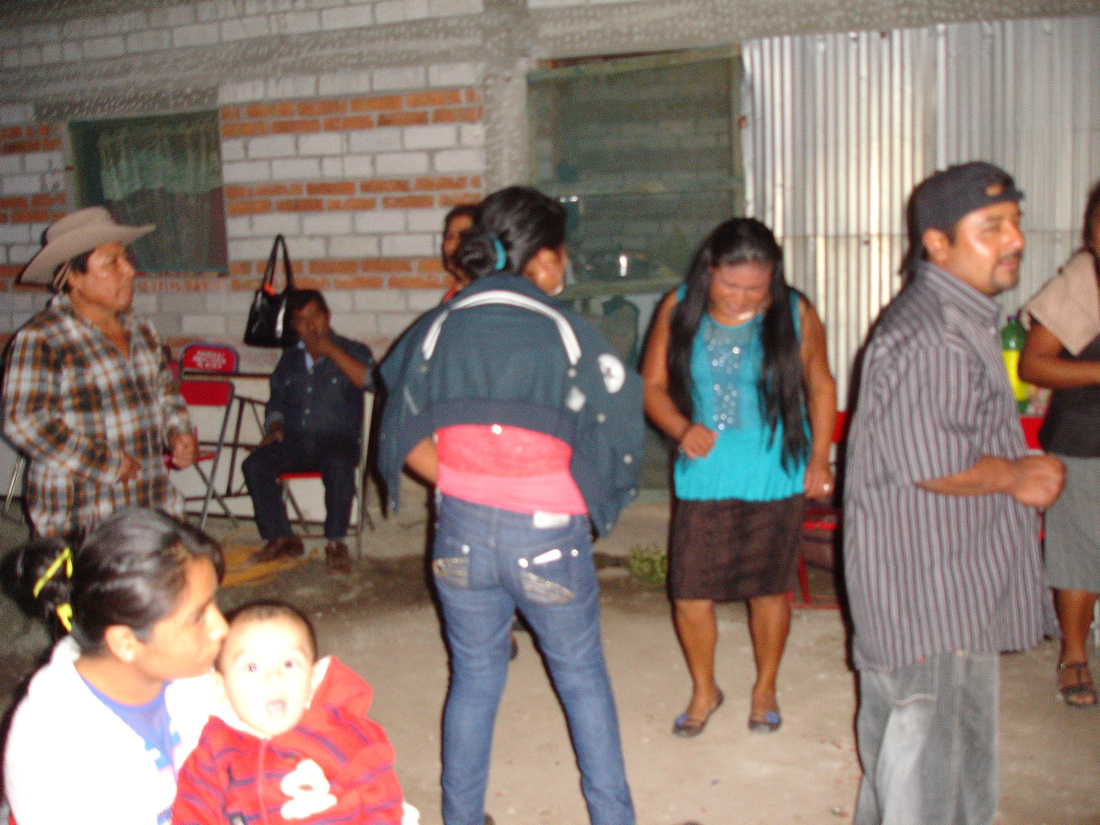
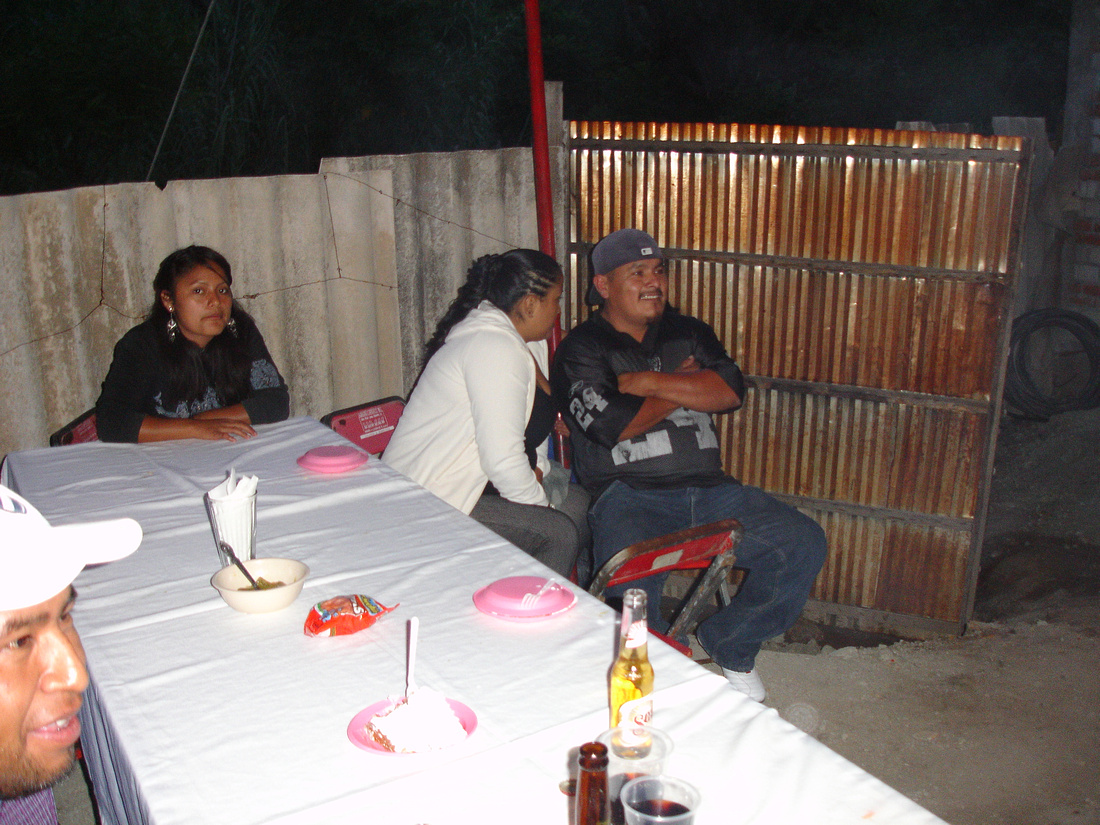
The end of June we celebrated the 3rd birthday of Ali (Felipe’s granddaughter), Margarita’s visit here (also Felipe’s granddaughter), and our third year here in Oaxaca. We had the fiesta here at our home with about fifty guests. Felipe’s daughter Leticia made tamales, Beth and I bought a cake, friends and family brought drinks (mezcal, beer, and soft drinks). It was a fun day with piñatas, games, and dancing. Fiestas are special to us when they involve Felipe’s family.
Ali trying to break a pinata.
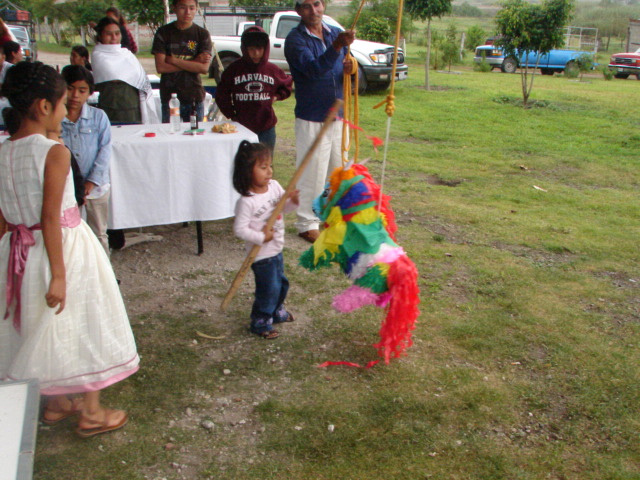

Margarita with a friend. She'll be going back to North Carolina the middle of August.
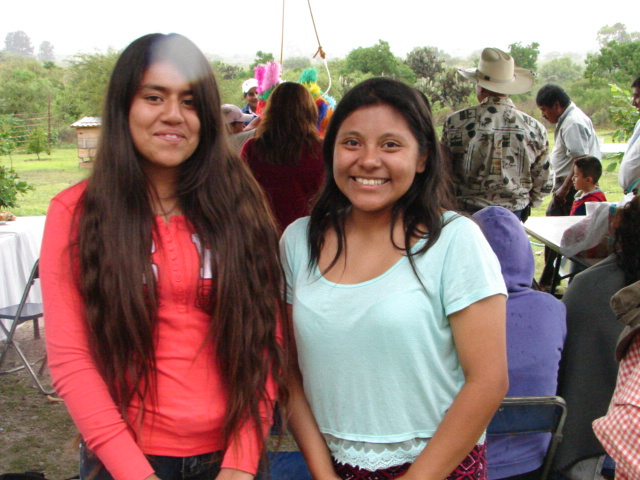
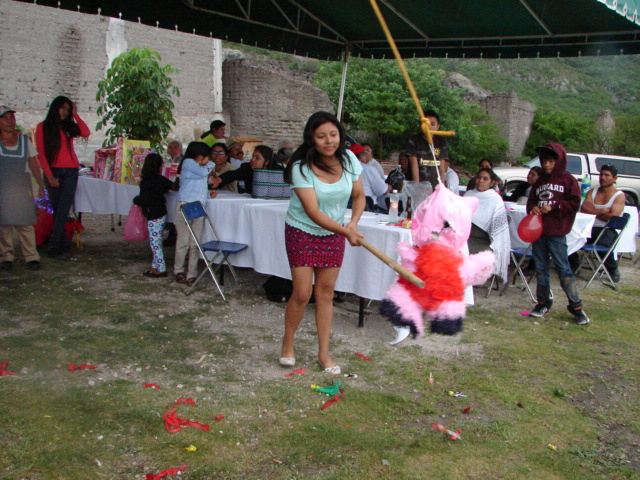
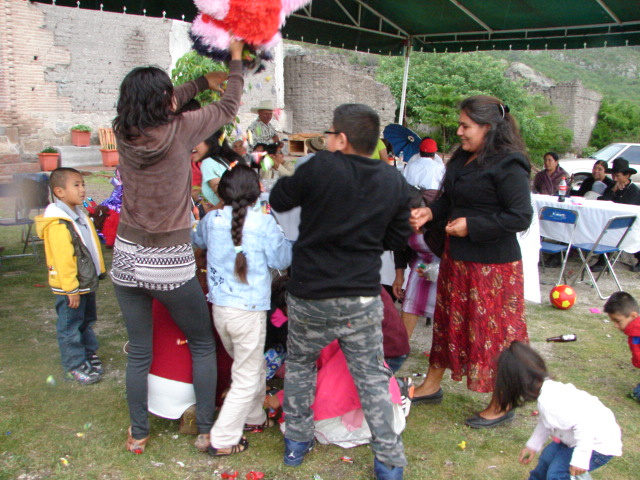

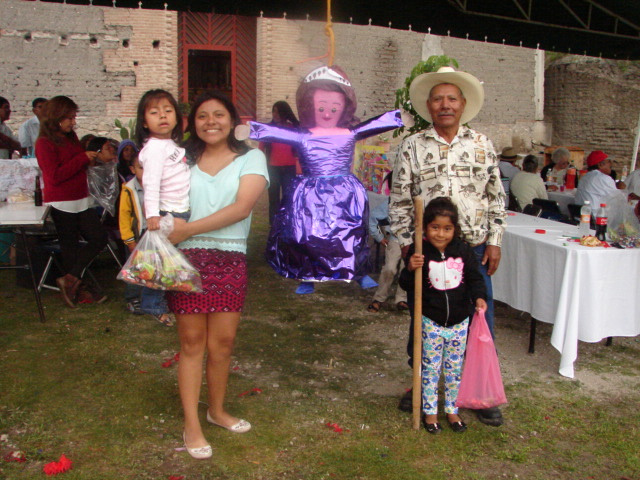

This bag of balloons was broken like a pinata. Some of the balloons have peso bills inside of them.
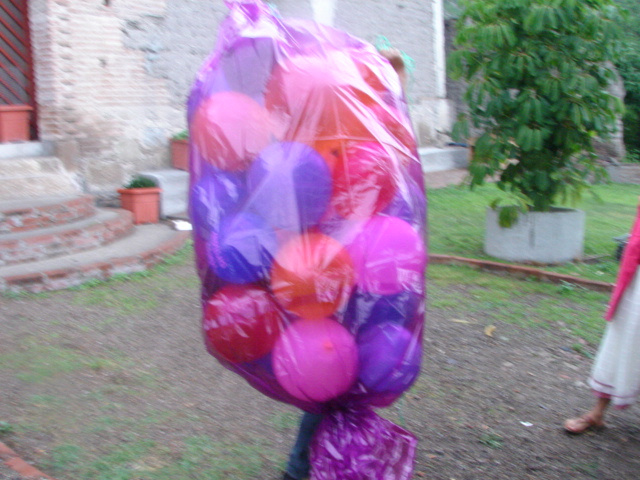

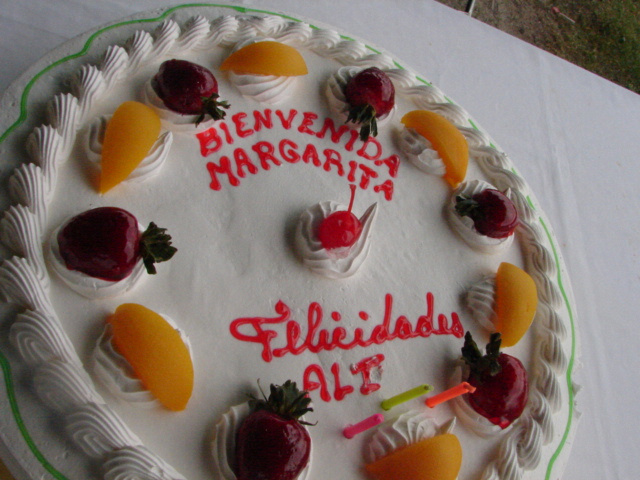
We bought trick candles that don't blow out.
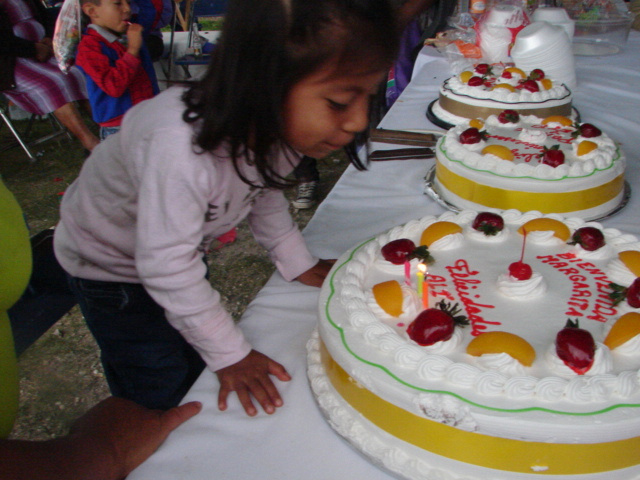
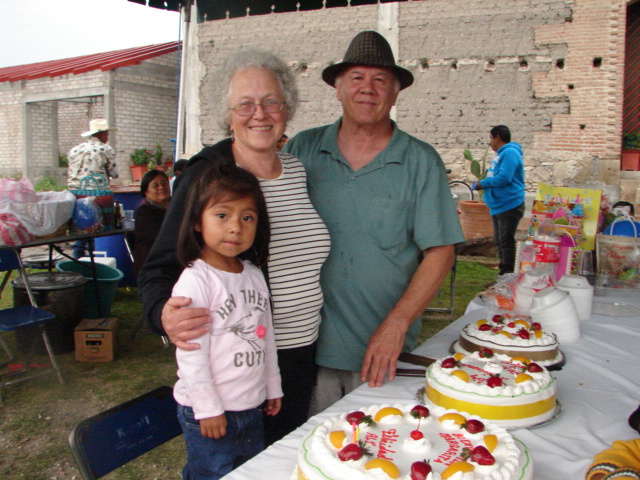
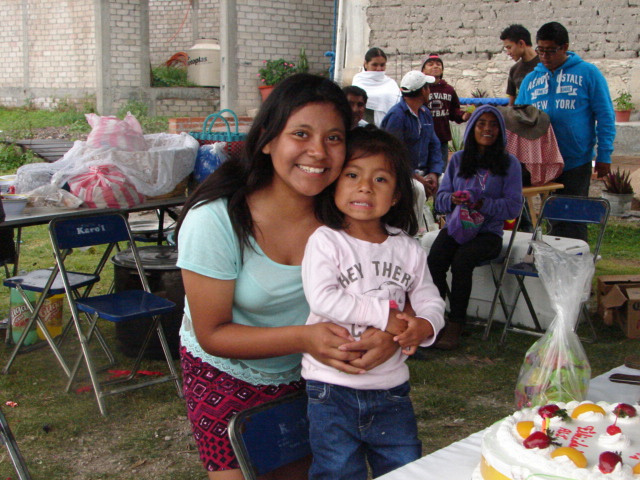
Cups of tapioca.
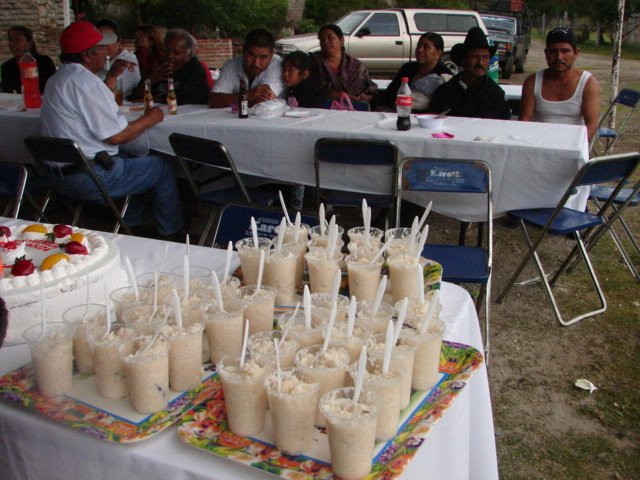
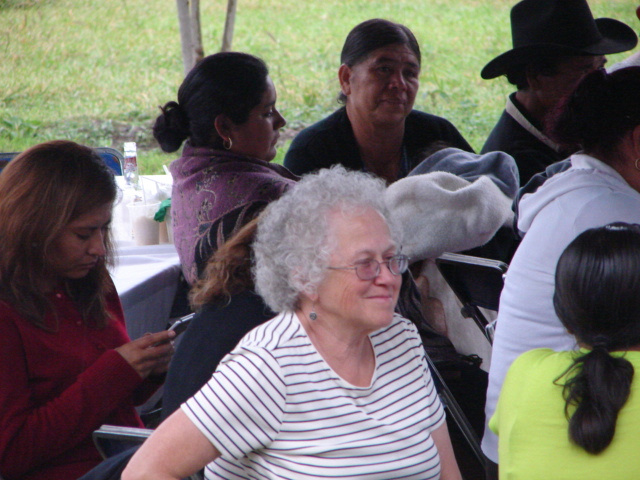
Me, Mr. Morga, and another neighbor. I think those were mezcal induced smiles!!
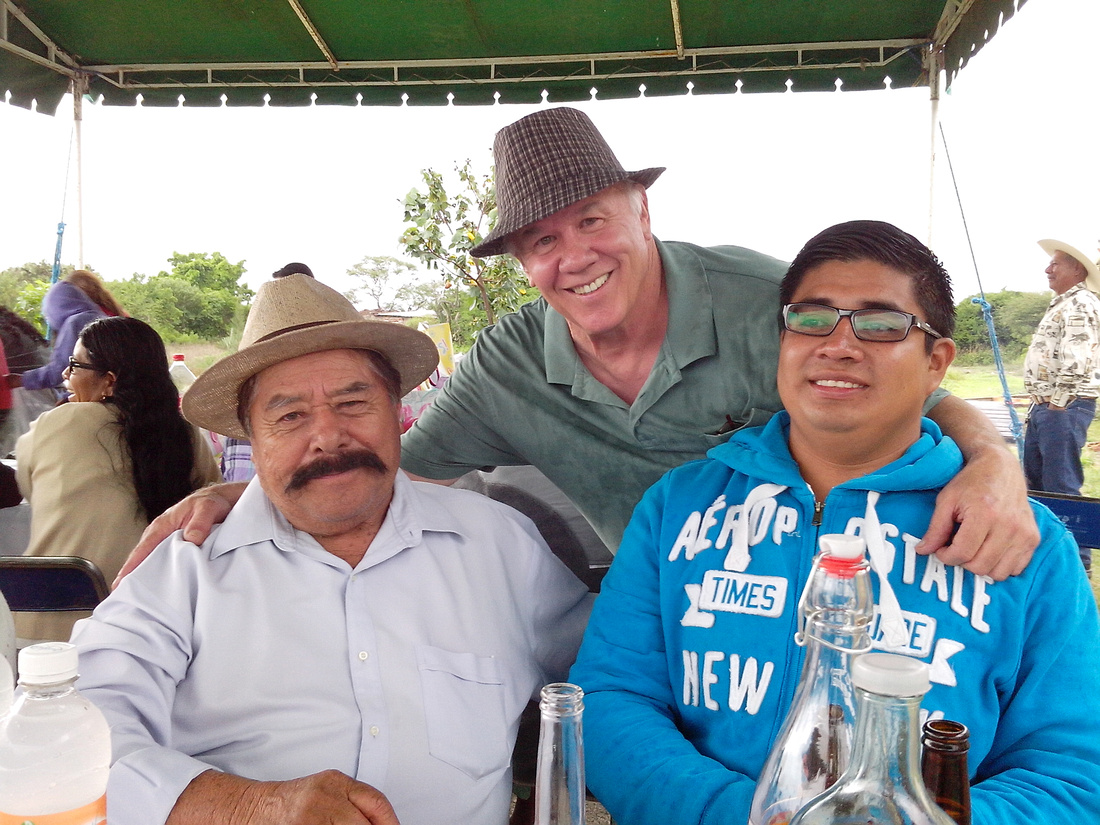
It hasn’t been a good year for rain. It started out well but good hard rains have been rare. Farmers in Union Zapata are beginning to feel desperate. Even farmers with wells are feeling the lack of rain. Wells are drying up which makes it more difficult to get to well water as the levels drop. We are lucky; our well remains at a steady six meters or higher. I measured the other day and our level was seven meters of water. We’ve heard of wells drying up. That means having to pay to have water brought to homes. We bought water for a while. You certainly live differently when you’re buying it. Being able to take a hot shower is a luxury here. Most bathe in cold water. The idea of getting ready for work in the morning and taking a cold shower is not the least bit appealing to us. There are people that prefer a cold shower. We think they’re crazy!
Our friend Felix who sometimes lives next door just celebrated his fifty-second birthday. He invited a few friends to help celebrate. Leticia made tamales. I usually have a few drinks at parties but decided to drink only water. The guys razzed me a little but I stuck to my guns. As I’ve said before you have to be careful with the mezcal. It’s not uncommon to attend six or seven events in a month. That is way too much drinking for me. It’s always a temptation though. Mr. Morga who lives by the highway in front of our house called us the other day to invite us to a comida. He had family visiting from California. It’s pretty rare when we get to have conversations in English at a fiesta or comida. We ended up staying there late. Some of the family had never been to Oaxaca. It was interesting listening to their perceptions of the valley. Following Spanish conversations at a fiesta can be tiresome. Sometimes I zone out and take a break. Mr. Morga did have some good mezcal which I had a little too much of. An interesting occurrence here is that many men when they get up in age drink only mezcal at events. Good mezcal without any chemicals tastes good and leaves no after effects. Many younger men throw caution to the wind and drink anything offered to them. Whopping hangovers! A welcome change here is that it’s very rare when someone becomes aggressive from drink. Back in the nineties is was pretty common. It might be because of the circle of friends we now have. We are also selective about the fiestas we attend.
For Felix's birthday Letty made tamales before hand and just needed to steam them a little to warm them up.
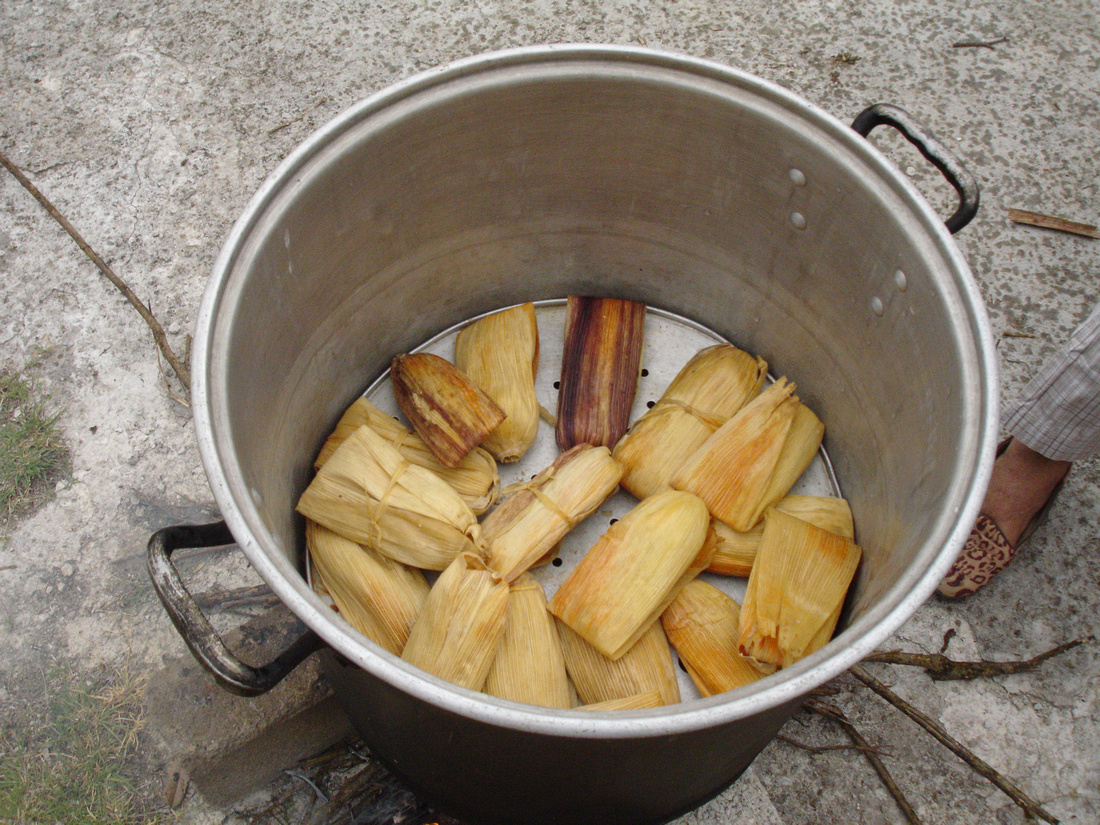
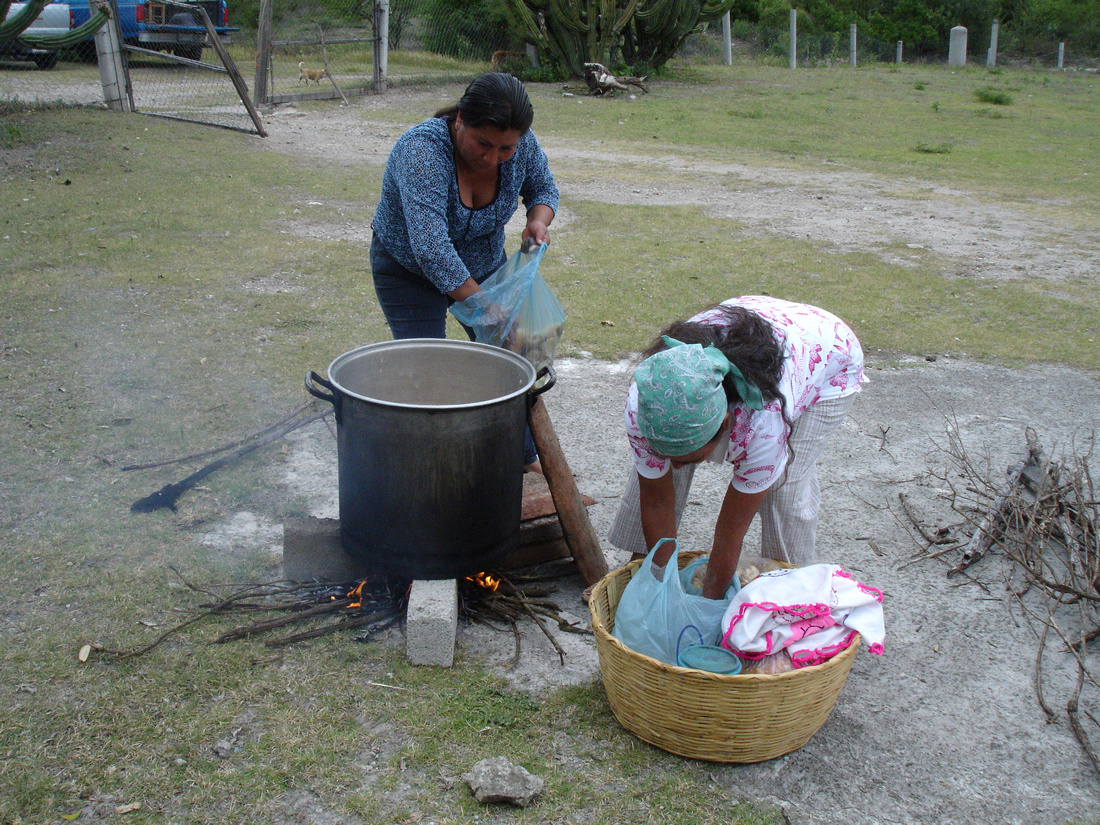
The gentleman in the middle is a retired physical education teacher.
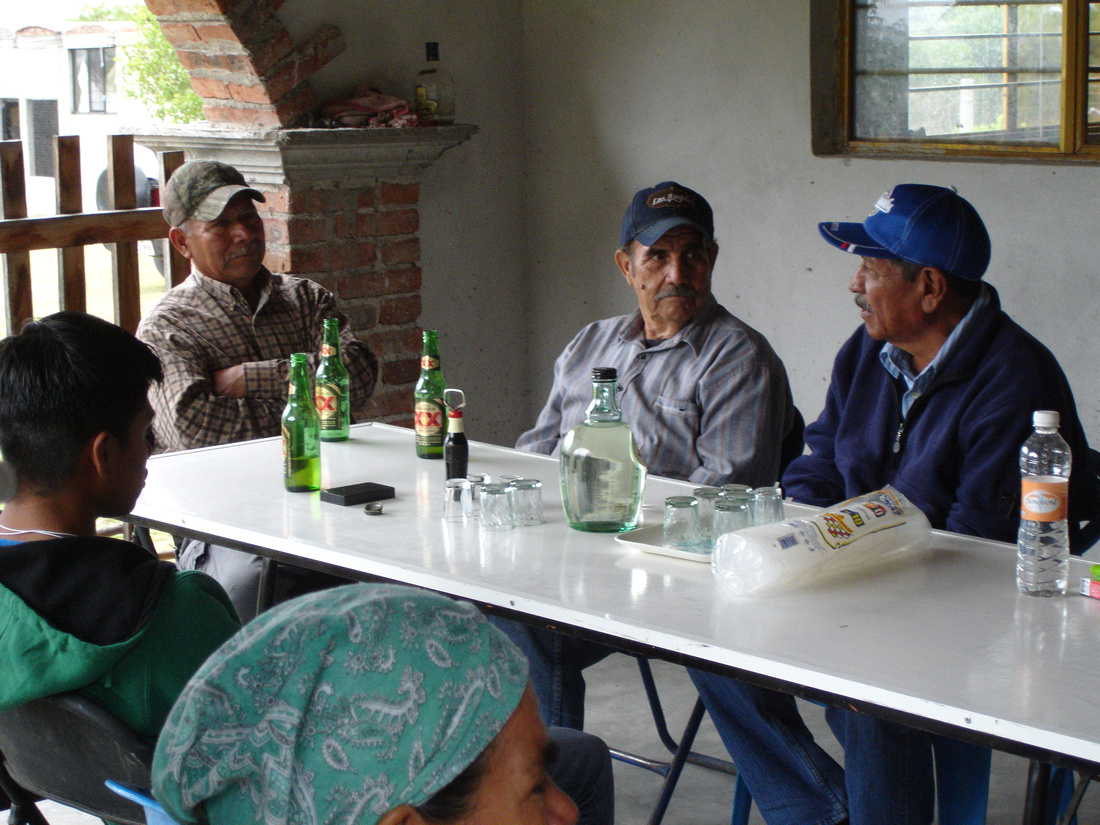
Manuel's grandson.
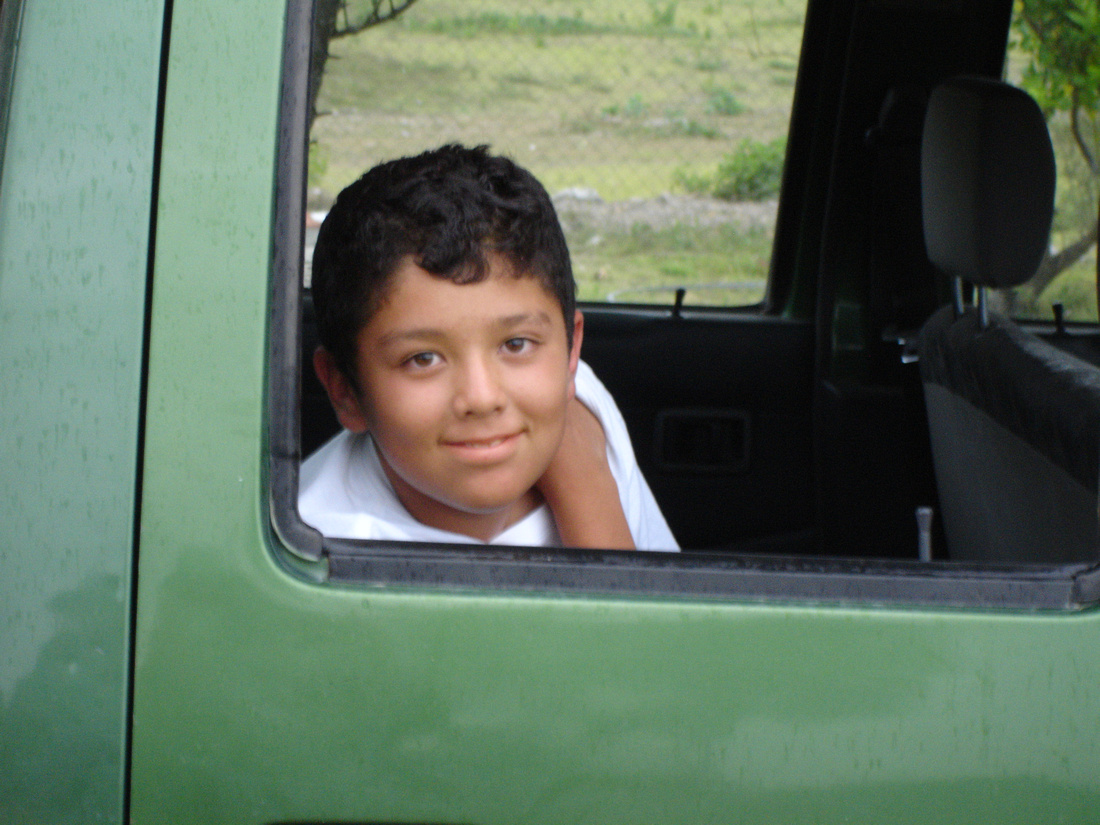
Felipe and Beto.
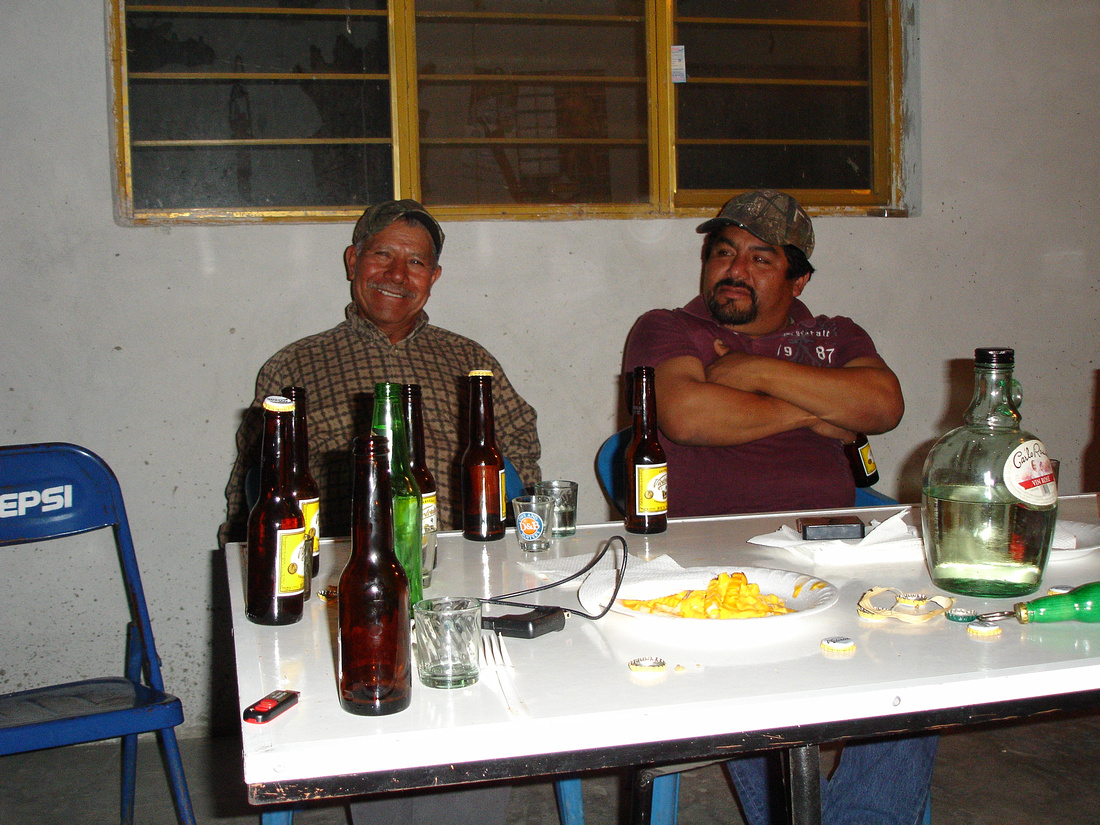
Felix and his son who just graduated from high school.
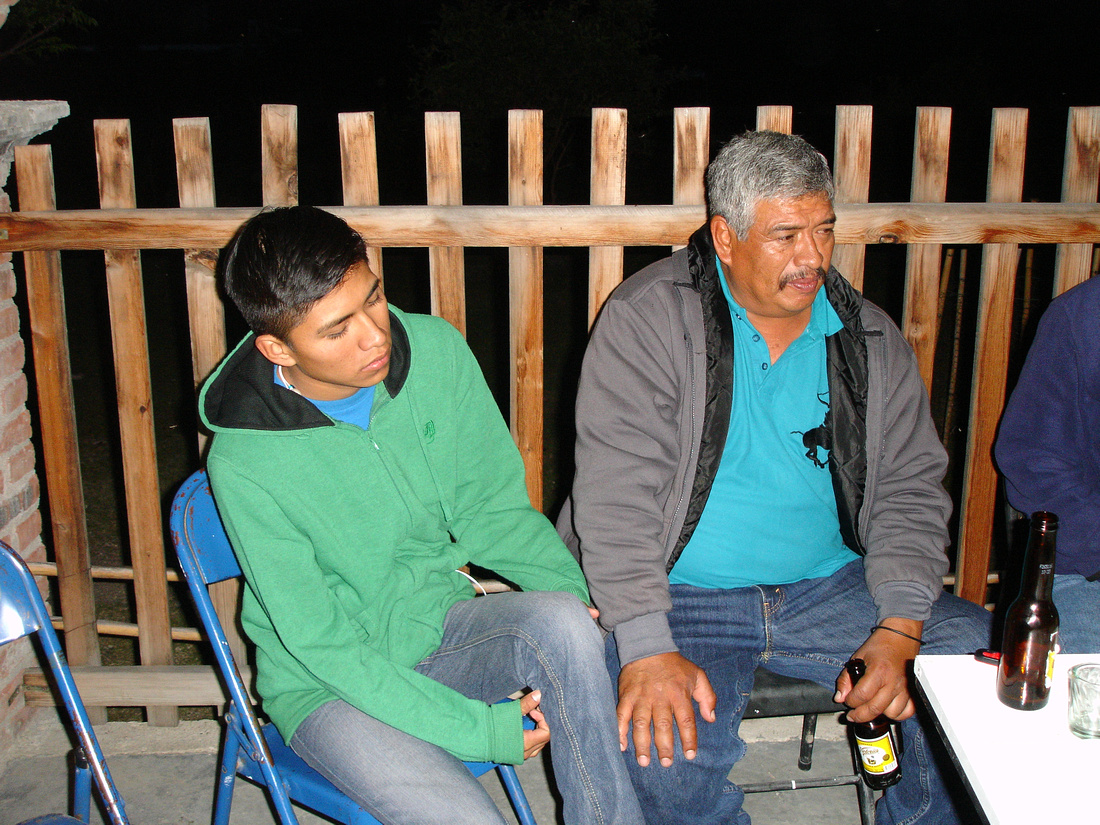 Scooter looking for hand outs.
Scooter looking for hand outs.

At Mr. Morga's birthday party his son in law played and sang. It was touching to see Mr. Morga surrounded by family and friends.
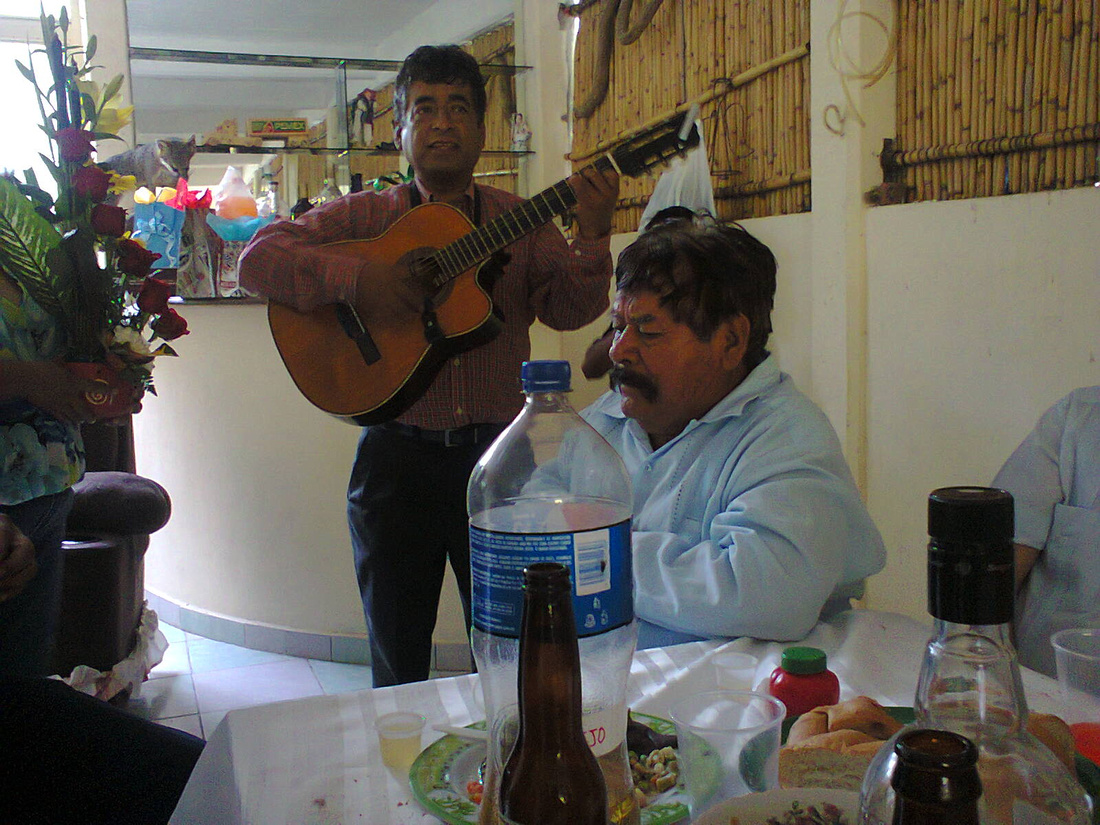
We’ve had to say goodbye to Vic Jimenez who is leaving Oaxaca to work in Puebla. We wish him all the luck. He’s been a good friend and has added to our life here immensely. Vic’s a fine young man with a great work ethic. Beth and I both would be proud to have him as our son. Best wishes to you Vic. We will stay in contact.
We wish a belated happy birthday to my cousin Dan Self who resides in Washington State. We love Dan and what he stands for. I would love to get a visit from he and his wife Cindy. Maybe one day!
Felipe is making a little lean-to on his property in front of our house. He cleared a large area which opens up our view. He lives in Union Zapata so I’m guessing this will be his getaway from the village. Eucalyptus trees are the preferred tree for the four posts that will hold the roof. I believe it is because they don’t crack or split. It’s a real solid, heavy tree.
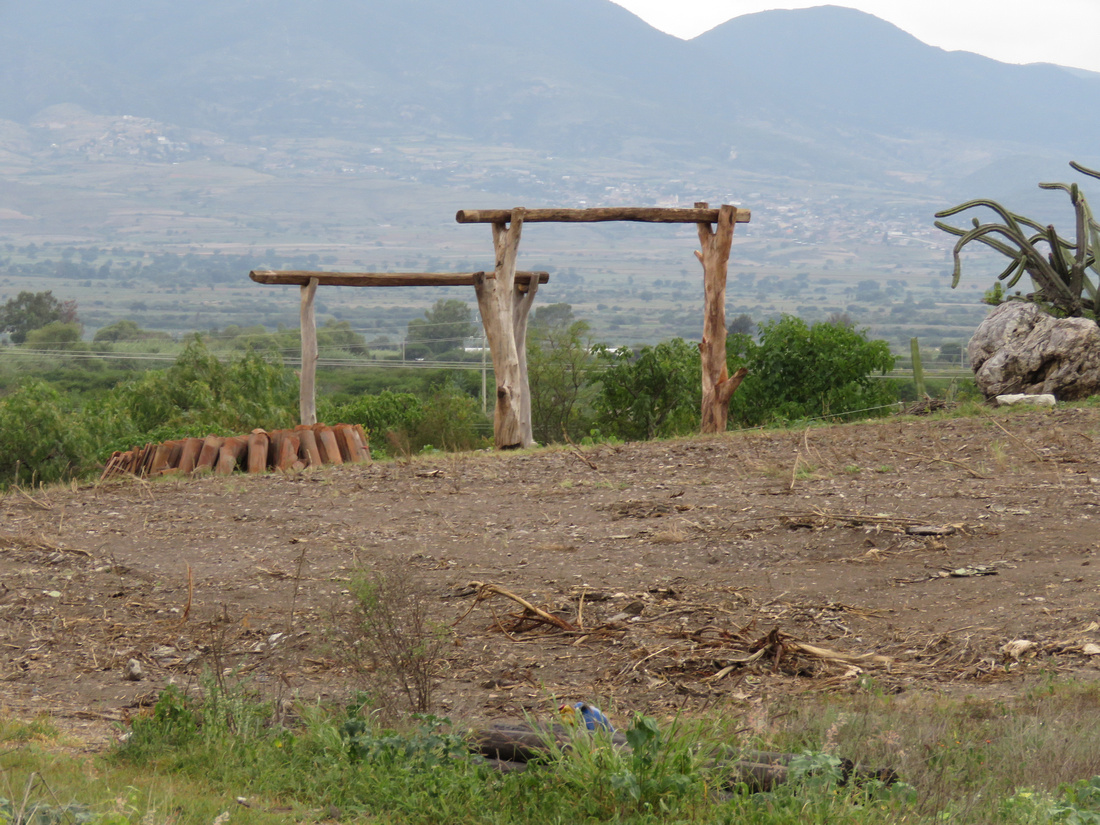

This view of our house is new because Felipe cleared a lot of the woods away for planting. It really shows how close we are to the mountains.
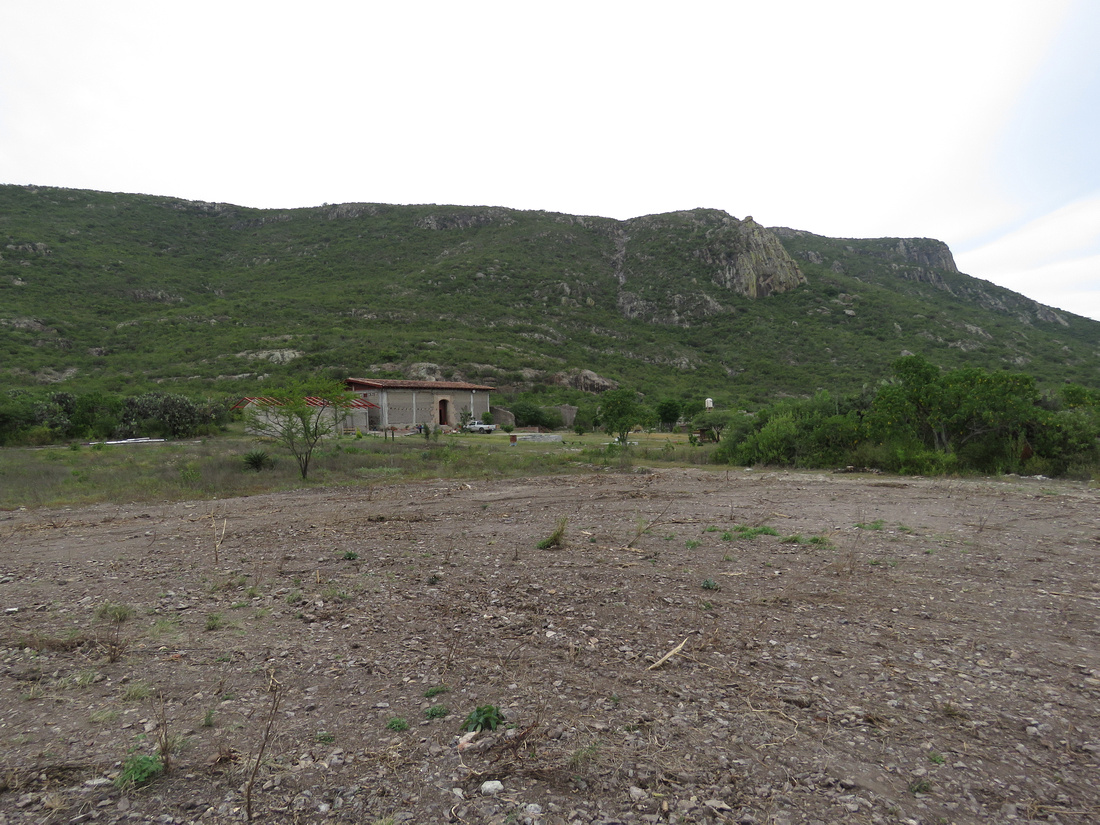
While clearing away brush Felipe found this large rat snake. It was well over a meter long and quite thick. he eventually wandered into the brush.

The way electricity works down here is that the less electricity you use the more subsidy you receive. There are several levels according to usage. If you go over 500 KW of usage you lose subsidy and are put in the highest bracket. We were using many electrical items and went over 500 KW of usage. Our bill more than doubled. I found out if we stay below 500 KW of usage for three pay periods (that’s six months), our bracket will drop again. We’ve reduced our consumption and are on our last pay period. October should bring us back to thirty dollars a month.
We have a new puppy. Harley is a six week old Beagle. His first night he cried off and on all night. It was pitiful listening to him. We could do nothing to comfort him. He missed his mommy terribly. Never in my life had I considered having four dogs. But we have the time to spend with them and are able to provide food. They are such wonderful companions.
This is Harley, our new pup. Whether inside or out he runs around with his nose to the ground.

We celebrated my birthday in San Dionisio. Actually we received a call from Augustin to come for lunch. When we got there in addition to lunch they'd bought a cake. We'd decided that we weren't going to have a big party. It was perfect celebrating with Augustin, Dalia, and Iris.
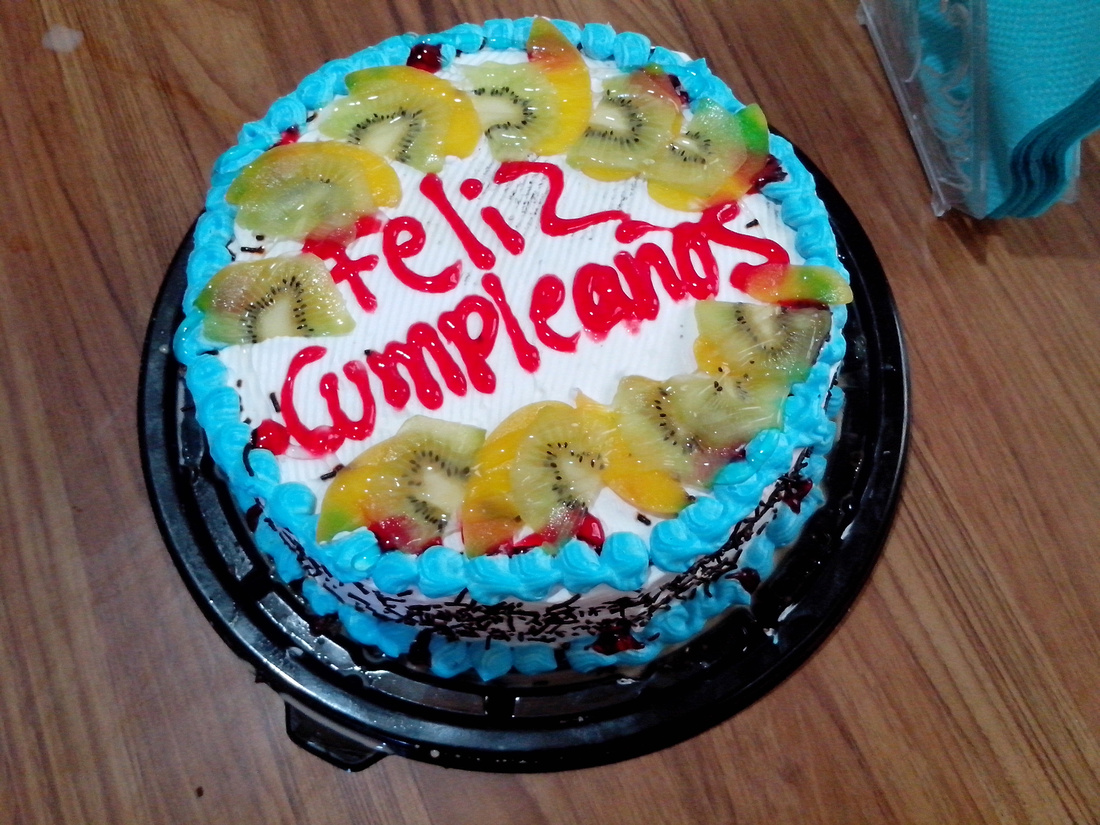
We are padrinos to Iris. She surprised me with flowers.
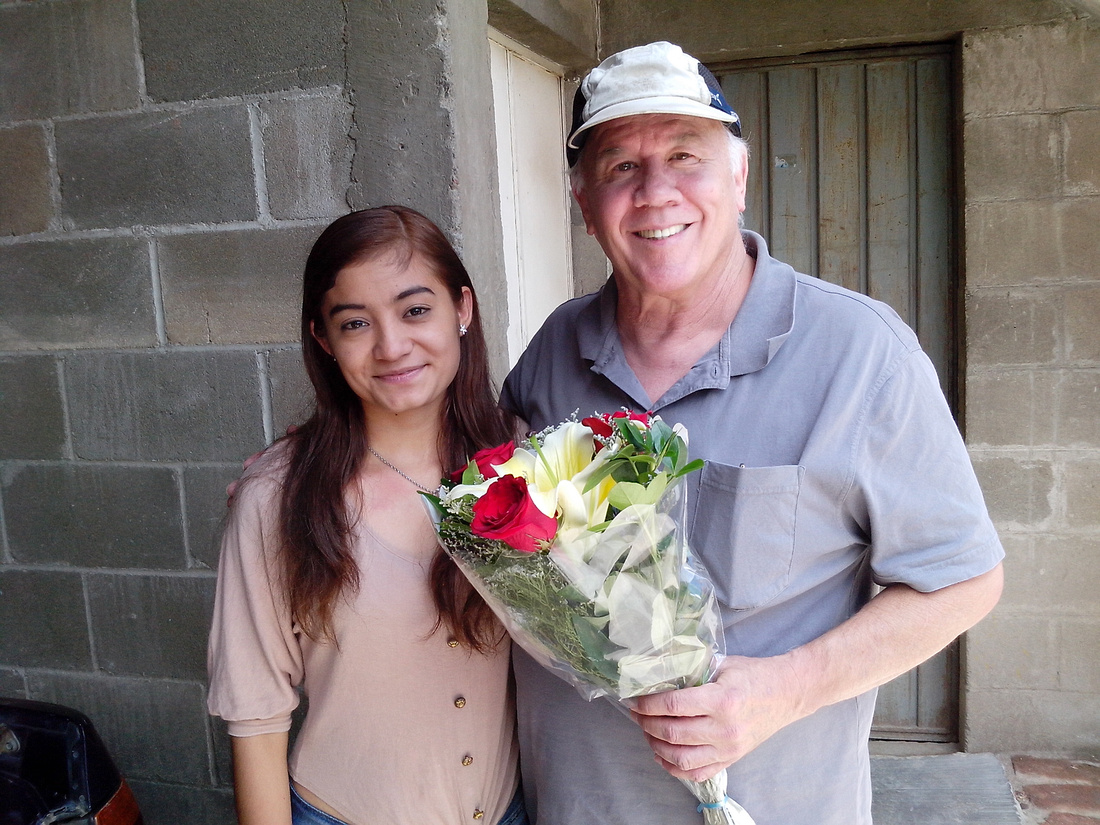
Sometimes Felipe hunts for rabbits around the house. He and a friend are skinning a couple. I hope all those nut jobs don't come after Felipe like they have that dentist who killed the lion. Sorry about that Felipe.
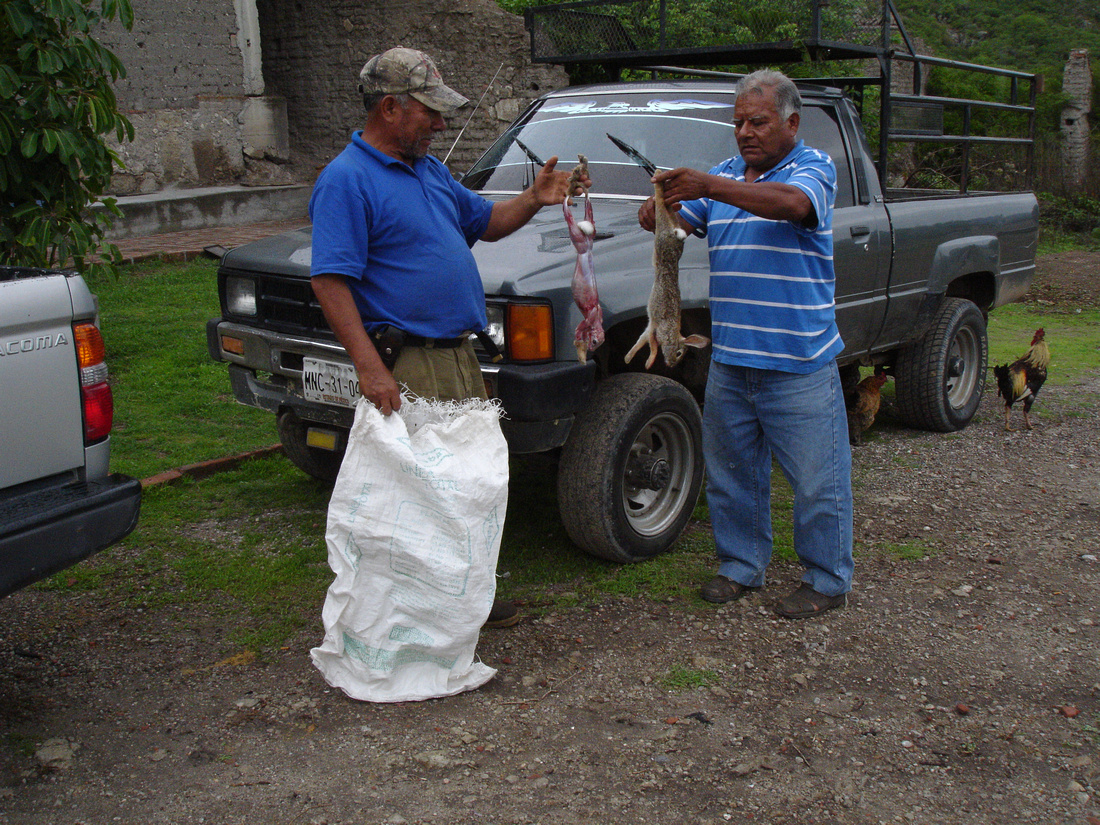
Our friend Beto's daughter Shela just graduated from fifth grade. Because of her high grades she was picked to be in a group that will present the flag during next years events.
Shela's group accepting the flag from the present sixth graders.
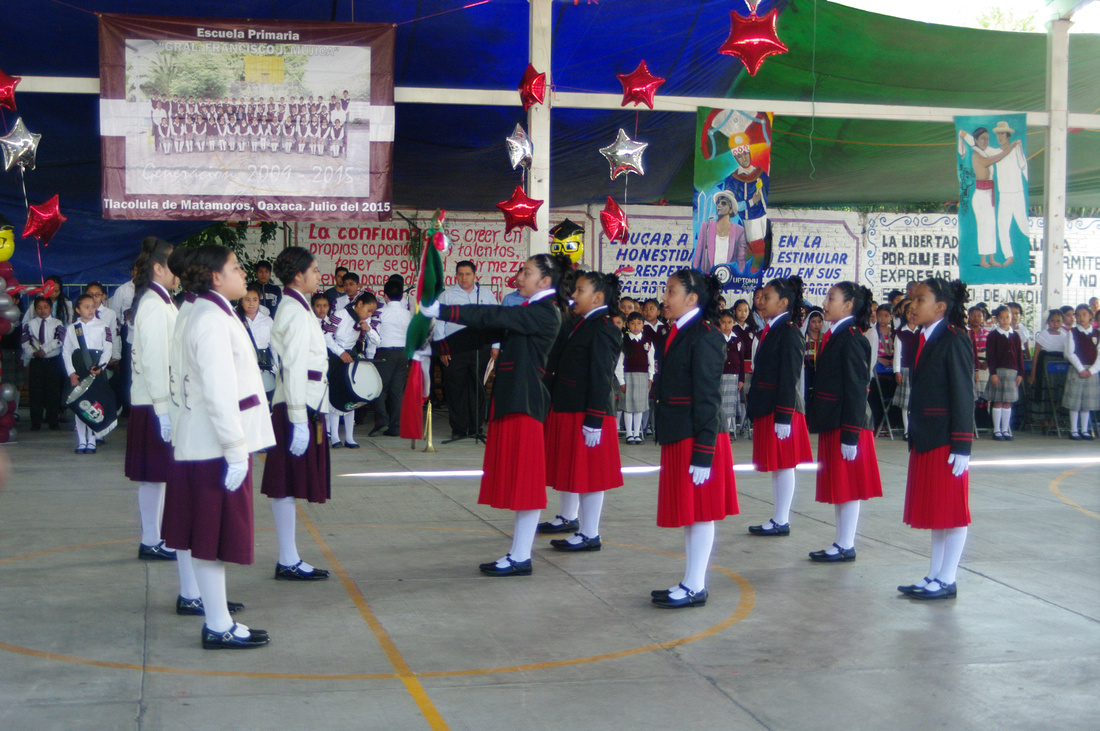
That's Shela far right.
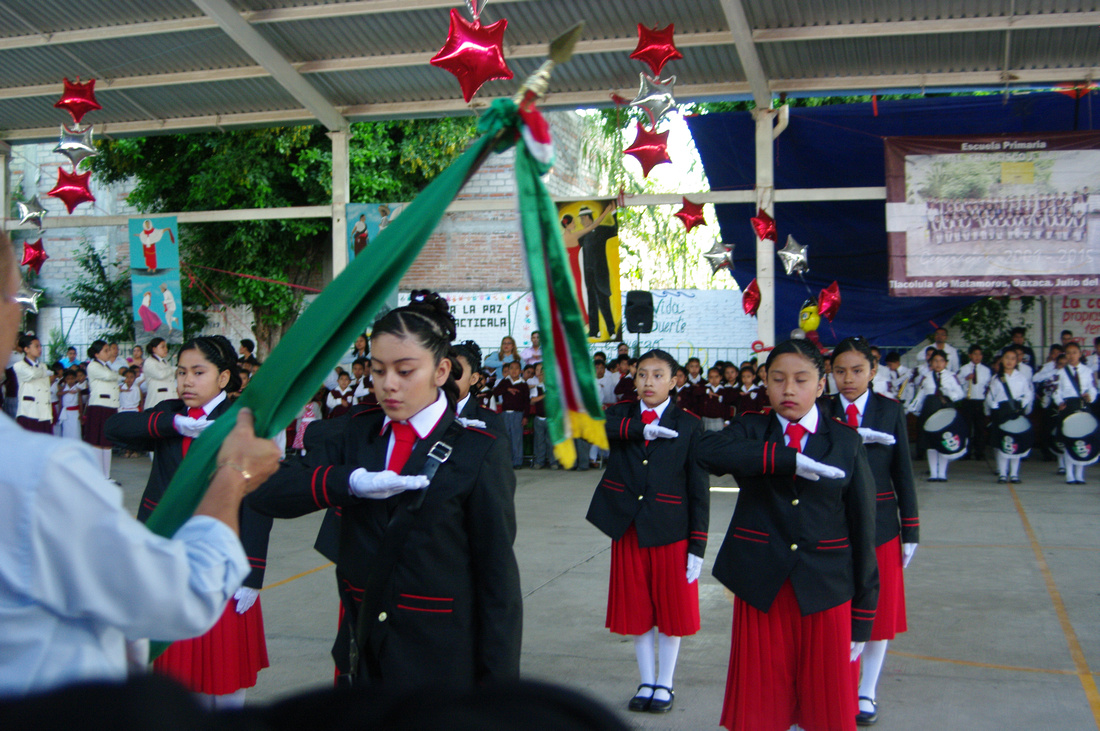
Congratulations to Beto and Lucy!!


Sitting here this morning beginning our new blog, I am smiling as I hear our two roosters calling back and forth. It sounds like a verbal macho battle. Our new rooster (Ganzo), like two of our dogs, has only one eye. His crow is also a bit pathetic as if he’d damaged his vocal cords but that doesn’t stop him from crowing back. Lucky’s four puppies can also be heard fighting and playing with each other. For some reason Lucky had her pups down on the river bank under some carizzo. After about a week she carried them up to the old abandoned house next to ours. One evening it poured. I checked on the pups and they were wet and trembling terribly from the cold. We brought them into the patio for the night and dried them good. The next morning I moved them into the dog house. They now like to sleep on the porch behind a big planter. Lucky’s been a great mom and Coby is now Tio Coby. He’s very patient with them even when they are biting his tail with their little sharp teeth. For the last few days the pups are venturing out into the yard. They play with the big dogs for a while then return to sleep. Of course Scooter wants nothing to do with the little bastards. If they touch him he growls and snaps at them. Lucky is now trying to wean the pups so she's gone for long periods and rarely allows the pups to suckle. I guess she figures she's done her time. Coby diligently keeps them company. The four pups have evolved into quite a challenge. It's a bit like caring for four one year olds. Some of my outside chores have to be done when the pups are asleep. They gather around my feet and make it very difficult to maneuver safely.
Feeding time is a zoo. The pups want what the dogs have. Dogs want what the pups have. Chickens want what the dogs have. Dogs want what the chickens have. Dogs want what the other dog has. Chickens want what the other chickens have. We truly have to be referees. Everything has to be planned and timed.
Lucky feeding her pups.
Tio Coby was very nervous when the pups began to leave the house. He even tried to push them back in.
One of our hens disappeared for a couple of days. She returned then went missing again. This went on for a while and we finally figured out she had a nest somewhere in the brush. We are anxious for the day she returns with her pollitos. I’ll have to put a ramp in the doorway of the coop so they’ll be safe at night. The crowing continues and the two roosters maybe working up to a physical battle (probably not since Ganzo is a coward).
This is Gonzo our new rooster. The photo doesn't do him justice. He's very pretty.
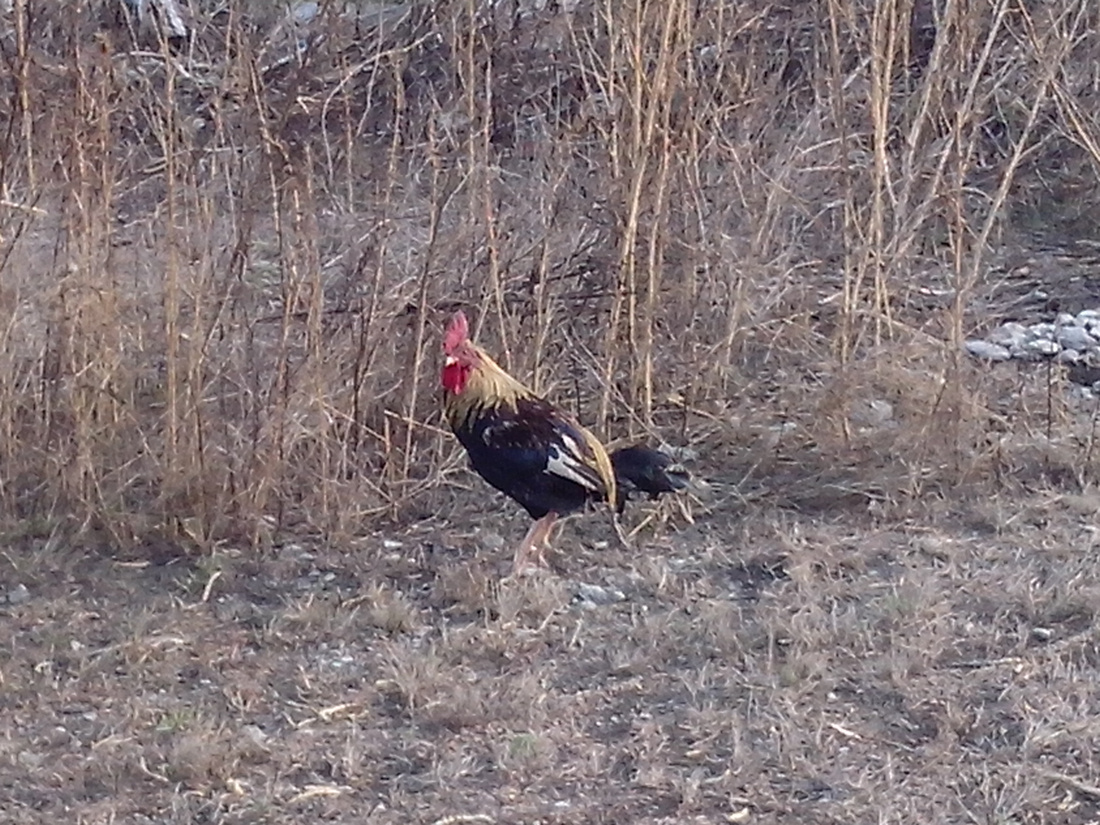
Here's something you don't see every day!! Betty is our most domesticated hen.
From just a few rains everything is green again. It’s amazing how fast it goes from a dismal looking brown to a rich green color. The downside of the rain is that the bugs are back. We are constantly discovering new varieties. Some of the bugs like our plants and trees so we’ll be battling it out with them again. Some of the color schemes of the bugs are fascinating. Many are multicolored with strong colors and spectacular patterns. We are constantly reading about and trying natural repellents. The worst by far are the chiggers. The itching lasts for days.
You can see how green the grass is from just two or three rains.

A while back a friend asked if I could drive to Oaxaca to the bus station and pick up his nephew the next day. His nephew was flying to Mexico City then coming to Oaxaca by bus. The next day my friend and his wife got a call from their nephew. He’d tried to bring thirty thousand dollars into Mexico without declaring it. For a mordida (bribe) the officer was willing to let the nephew go. My friend didn’t have the money so they asked if I’d help. I wired the money from Banamex here to Mexico City to the account I was given. The whole thing ended up being a scam. My friend called their nephew who was still in California and had no plans of returning. It was a hard learned lesson. Bummer!! We were told later that most of these scams originate from prisoners who have cell phones.
Our last (and hopefully final) trip to Guatemala was our smoothest ever. The only problem was that about four hours from the border a village had blocked the freeway. The blockage was on a narrow strip of the highway in the middle of nowhere. I stopped behind a line of semi trucks. I got out and spoke to some drivers. They’d been there for twenty-four hours. The road was too narrow for them to turn around so they were stuck. They did give me directions though to bypass the blockage. We traveled through some interesting villages and lost about an hour and a half. One of the interesting things we noticed was that a few villages don’t use the little motorized taxis. They still use bicycles with a large rack on the front. Maybe it is because of the pollution factor? The blockade was still there when we returned so we had to go around again. The next day on our way home an official told me that the road was still blocked. Poor truck drivers. I was told the village had blocked the highway because the government had pulled the accreditation from a school. It seems that so many students were unable to pass their final exams that the government decided the school just wasn’t working.
The next three photos are of the actual blockade. With all that time on their hands you'd think they could pick up their garbage.

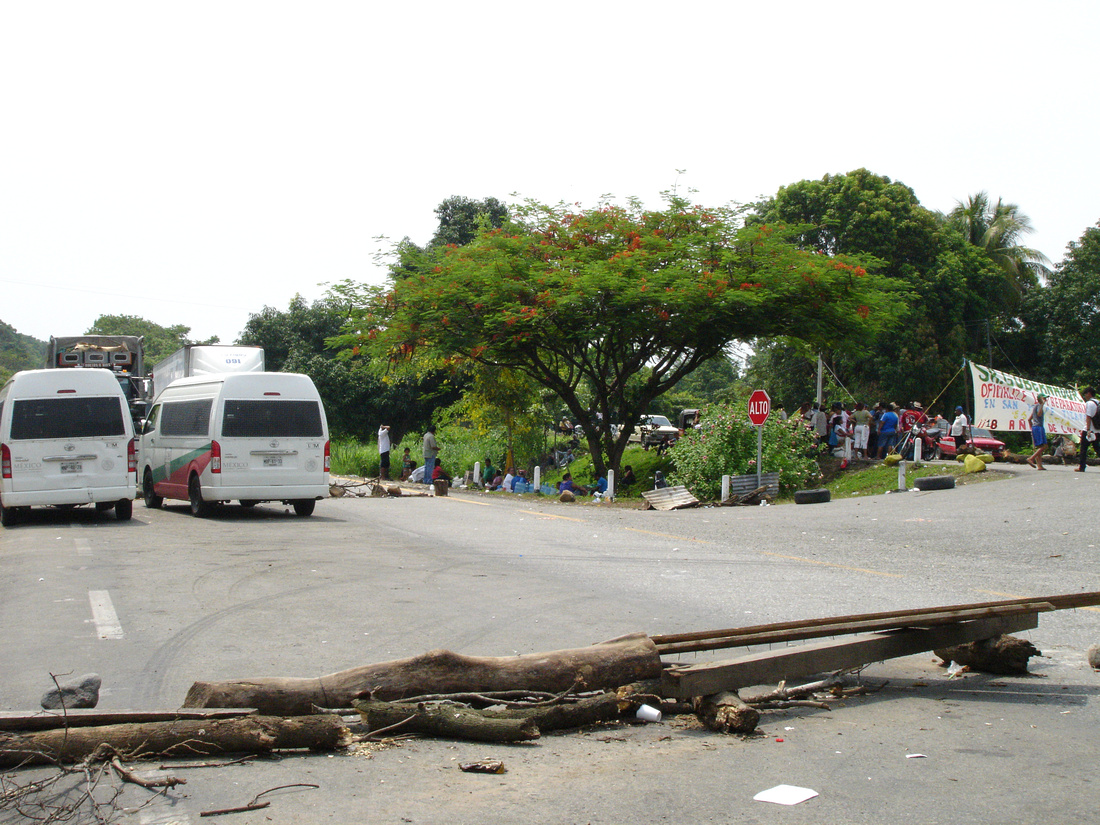

Beth snapped these photos of the detour out of the truck window. The vegetation here is very dense. The two following shots show the bicycle taxis. I've mentioned before that Chiapas is very beautiful but it's extremely hot and humid.




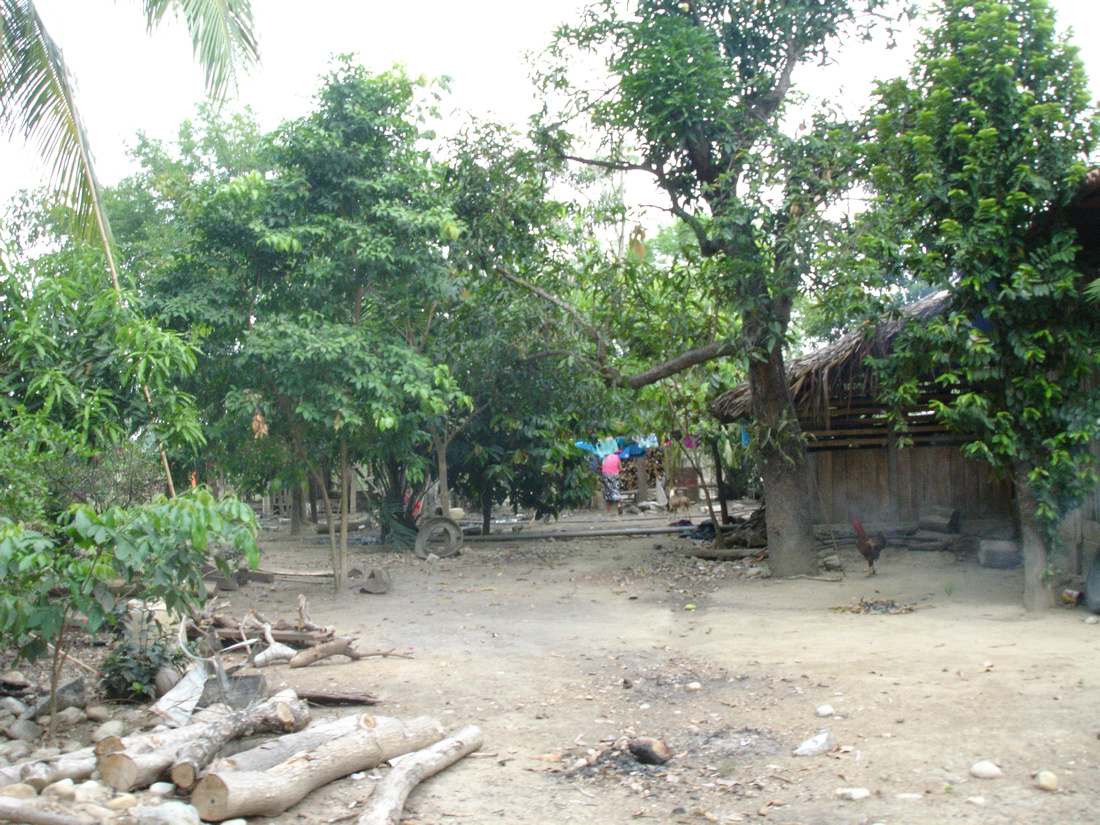
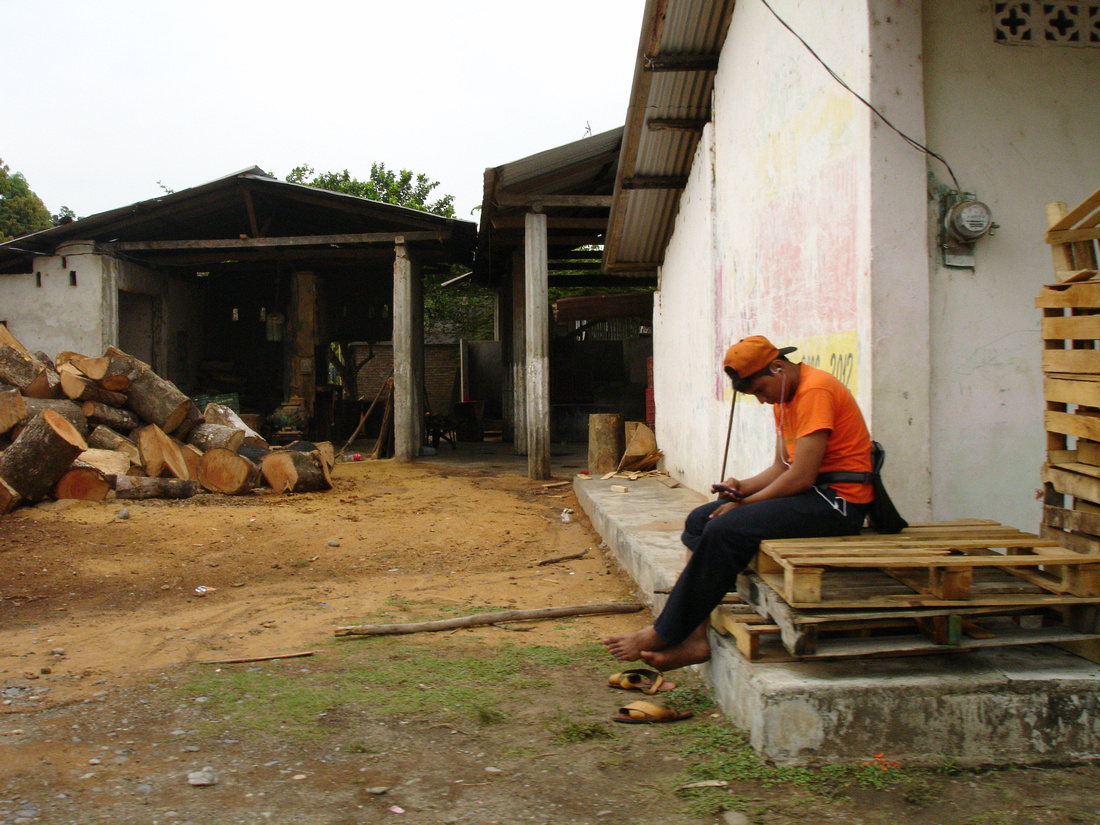
We kind of fell into a caravan. Good thing because the detour was pretty complicated.
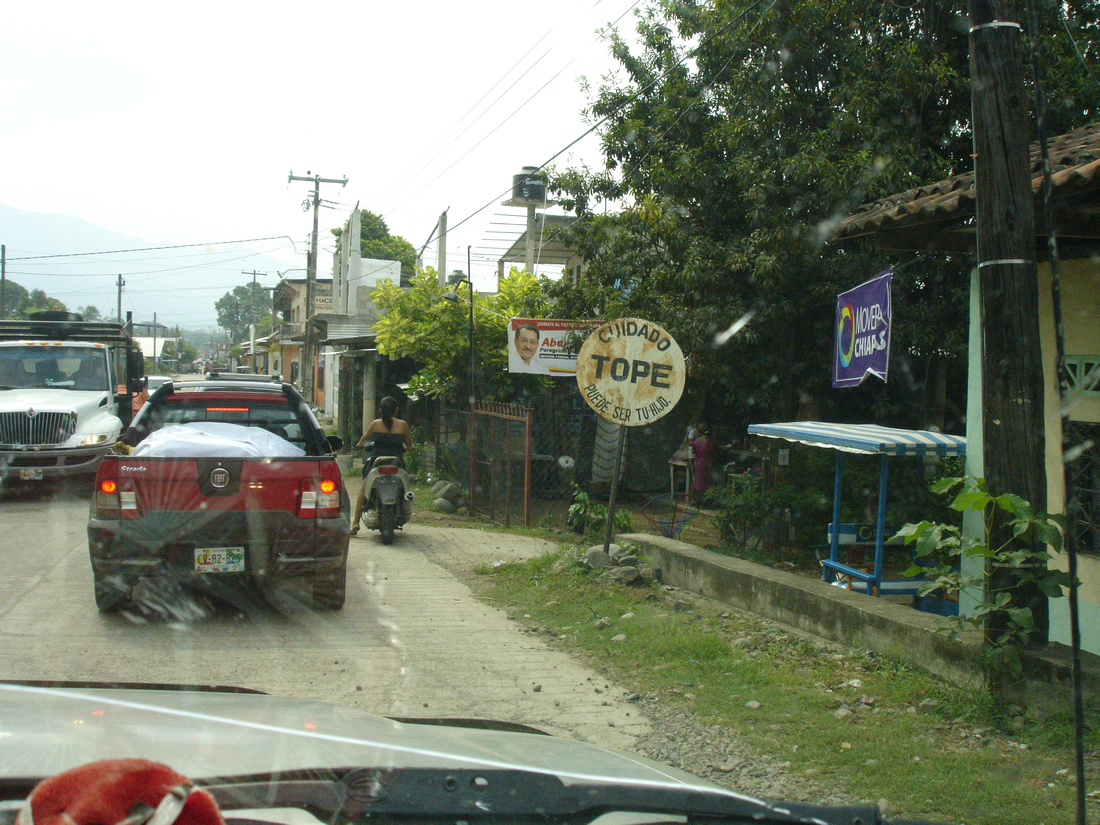
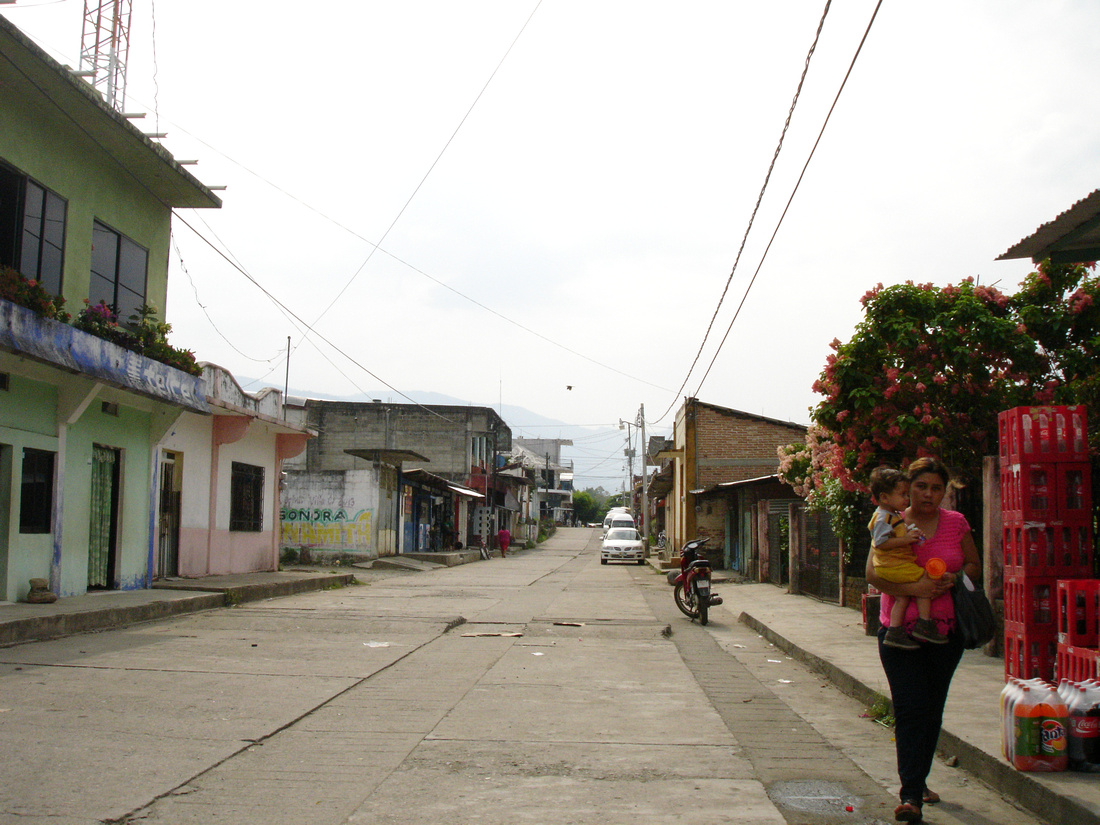
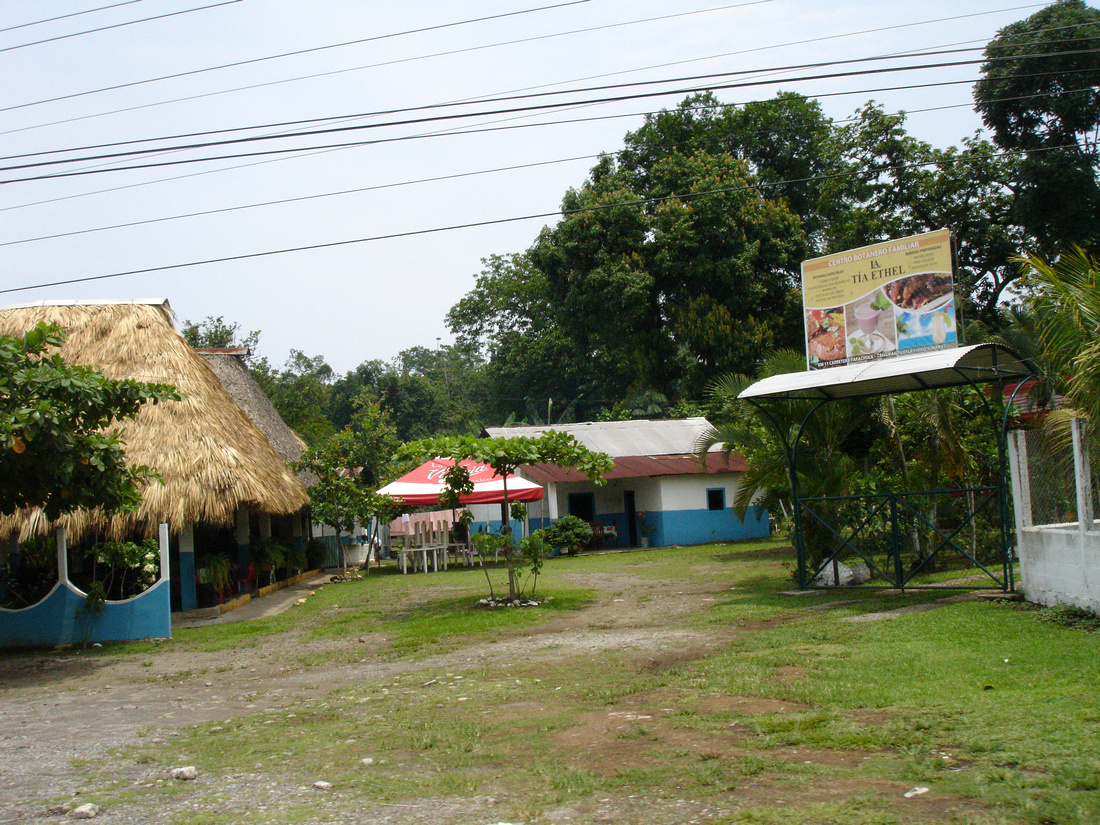
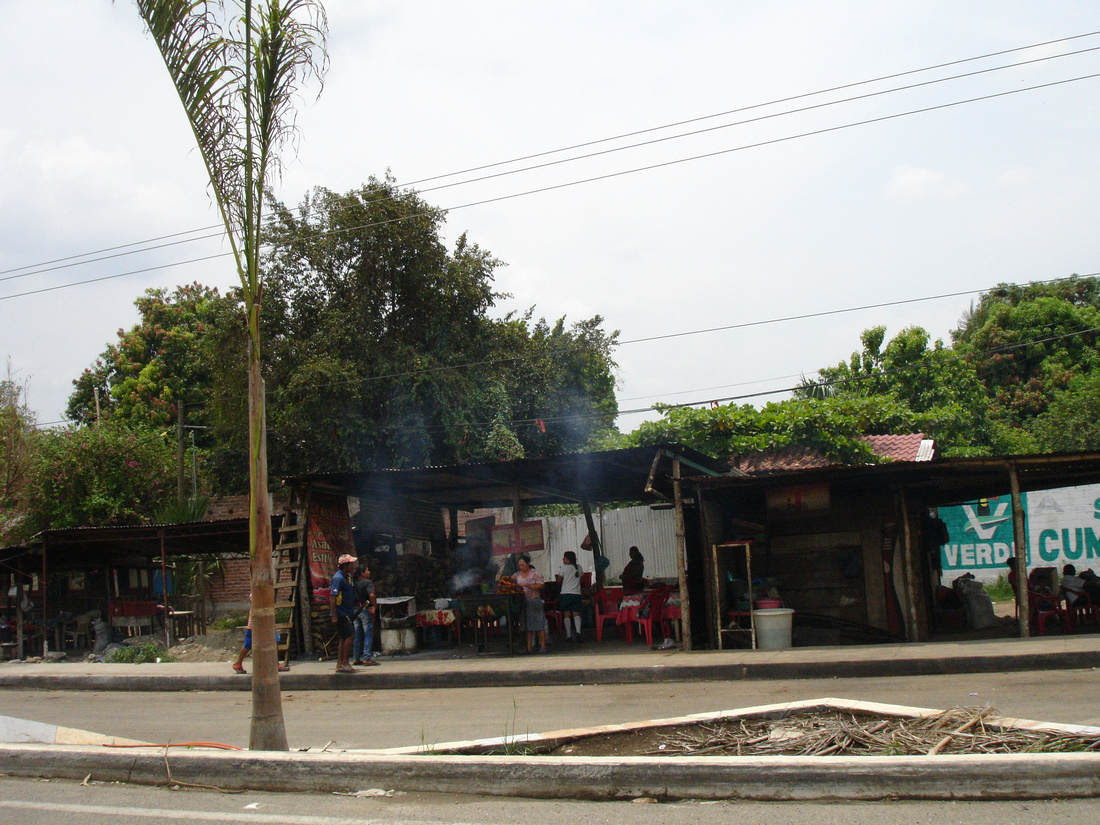
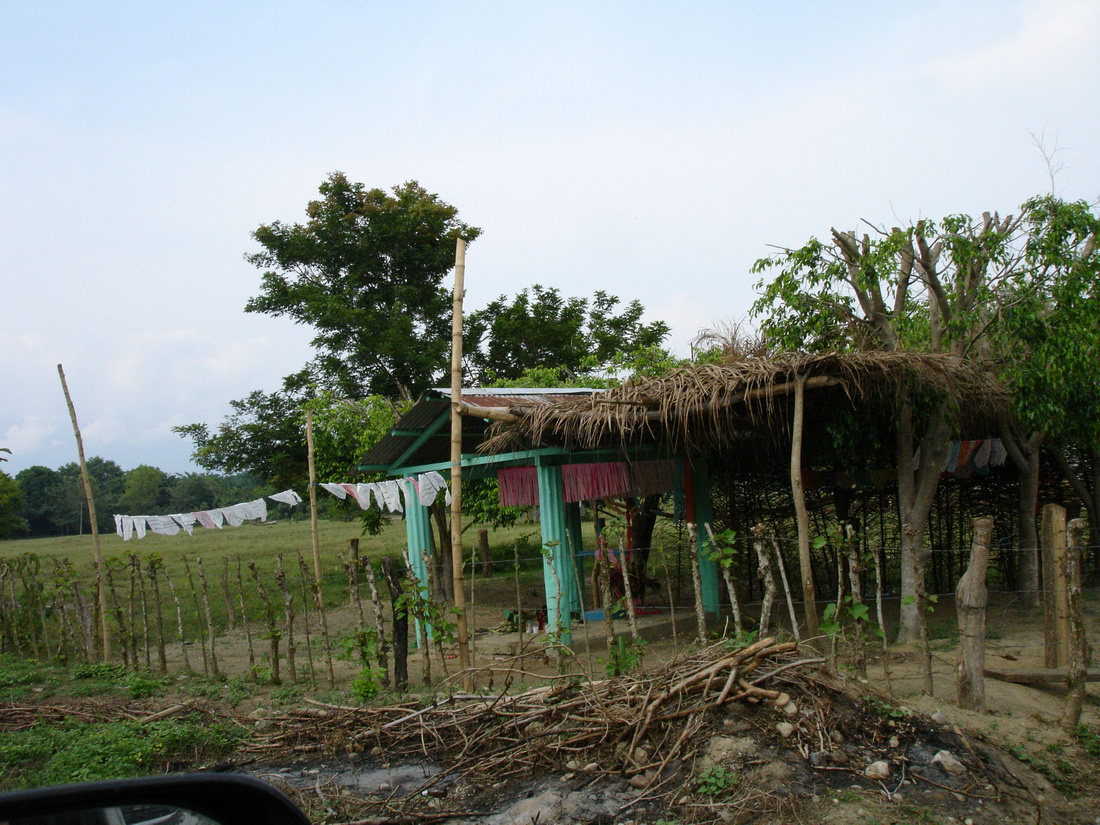

Some of the teachers here in Oaxaca are striking again. I read that a lot of the fuss is over the teachers having to pass tests in their content area. Blocking roadways wasn’t enough so they decided to block the Pemex factory that distributes gasoline throughout the valley. Stations quickly ran out of gas so traffic was greatly reduced. Many people were out of work because they couldn’t get any products. Here in Tlacolula they also blocked a voting location. The Federal police finally came and removed the teachers. I did read that one of the conditions the teachers were asking for was a hundred percent pay raise. You’ll see in the videos as we passed the two blocked areas that most of the cars are newer. Folks that are farmers cannot afford such cars. In fact we have only one friend that drives a newer model. He works for the electric company. There are a couple of nearby villages that told their teachers that if they leave school to protest, don't come back. The teachers stayed. Wish all towns and villages would do that. The kids ended up missing about two and a half weeks of school. The teachers stipulated that if they caught anyone taking pictures of their protest, they would confiscate either cell phone or camera. We ignored the warning and took these videos. We figured as were were on the highway, it was safe.
This video is passing the Pemex distribution center outside of Tule. Under the tarps are the protesters.
This video shows the teachers blocking a voting station in Tlacolula. Again mostly new cars.
Yesterday we signed papers to transfer our land into our names. It was quite a process getting to this point. We should have our title well before our trip to the US in November.
Felipe's grand daughter is here from North Carolina for the summer. Her sister's 3rd birthday was back in April and June18th marked our third year here. On the 27th of June we are going to have a fiesta celebrating the three events. We are going to provide the location, tables and chairs, and the cake. Margarita's family is going to provide tamales. Yummy!! Photos to follow in our blog next month........
A while back an acquaintance wrote me that he didn’t believe that America was an exceptional country. I was shocked to hear an adult that grew up in the US make that statement. It immediately reminded me of a few students I’d had through the years. These students refused to understand that their parents were exceptional. Their parents had worked hard to give their children a better life, had made sacrifices, found ways to better themselves and to be better providers. But the parents were not perfect and maybe that was the problem of the students. The students had expected perfection.
America wasn’t the first exceptional nation. Throughout history there have been several, and it is an insult to not recognize that these great nations contributed so much to civilization. Possibly my acquaintance doesn’t understand that it’s not specifically governments that make a country exceptional. It’s the people that make a country exceptional. A government has to provide an atmosphere that makes it possible for its citizens to dream and experiment. America has done that very thing. From the beginning Americans used the fertile intellectual environment to grow and create. Our mistakes distract from our greatness but they do not distract from our being an exceptional nation. There’s a difference. If a family with five siblings of modest means produces a surgeon, a mathematician, and an educator, the fact that the two remaining siblings wasted their lives does not distract from the exceptionalism of the other three.
Perhaps it’s because I’ve resided in a country that doesn’t provide the same foundation for exceptionalism as America that our exceptionalism stands out so much to me. There certainly are many exceptional Mexicans. Their ideas and contributions are changing their country. But their numbers pale compared to the United States.
I’ve wondered if my acquaintance is aware of the exceptional nature of our Constitution, a long standing document that changed the lives of those living in the US and eventually had its effect on the entire world. Again the faults of our founding fathers might distract from their greatness but does not erase their exceptionalism.
Unfortunately the mindset of my acquaintance is all too prevalent in America today. Many children are poisoned by the rhetoric that success in the US has become unattainable for many especially for minorities. The results of that message have been catastrophic. Should we be surprised that we have an abundance of our population taking what they believe should be rightly theirs.
I am proud to have come from an exceptional nation. I marvel at the accomplishments of many of my fellow Americans. My children now have the opportunity to become exceptional. Whatever they endeavor to do; it’s my wish they strive to be their best.
As Memorial Day approaches I give thanks to our leaders both past and present. I also give thanks to those who unselfishly served and gave their lives in the military even when our goals were confusing. American exceptionalism both in and out of the military are directly tied to the greatness of the United States. Celebrating exceptionalism isn’t ethnocentric and excuses don’t have to be made where exceptionalism exists.
We haven’t written a blog since November. Laziness or lack of motivation, I suppose, are to blame. We’re into the hot dry season. The temperature rose to 82 degrees in the house the other day. That’s the hottest it’s ever been. I can’t imagine what it’s like in some of these brick homes with cement roofs. I suspect the temperature must reach into the 100s in the afternoons. No wonder many folks spend their time outside in the shade. From morning to nine and about six to sunset are the comfortable times to work outside. Everyone is talking rain. We’re really looking forward to those overcast days when the temperature hovers in the low 70s. I’m always amazed when people tell me that this is their favorite time of year. They love the heat. 90° is uncomfortable for us. We went to a birthday party in Union Zapata the other day and were astonished to see a game of soccer being played. This was in the peak of the heat. Don’t know why they didn’t play their game in the morning. Could have been a tournament, I suppose. Anyway, we were shocked. The location of the comida was one the side of a hill where three separate areas had been cleared making three terraced areas. The steps between each area consisted of cement blocks stacked to make steps. I was sitting on the bottom area when I noticed three young boys about four years old playing. They were running around chasing each other. At that point I began to take in my surroundings. To say that it looked like an obstacle course would be an understatement. In fact I thought if the US Army used a similar location for training parents would be outraged. Anyway amongst the rocks, piles of cement, uneven ground, tree stumps, pieces of rebar sticking up from the ground, the unfinished outhouse that consisted of a huge hole, sharp pieces of tin roofing, and cooking fires these young boys were maneuvering around chasing each other. There were lots of people watching but no one seemed to doubt that the boys were smart enough to avoid the obstacles.
We bought four hens and a rooster. Fresh eggs every day! We are unable to consume them all so many are given away. Sitting on the porch and watching the birds scratch around has become part of our daily routine. They too run for shade during the peak of high temperature. Under my truck is their favorite location to get out of the sun. Pickings are scarce for them now. Not many insects. When we first got them, the yard was full of various morsels. They rely on ground corn to survive. When the rain arrives, they’ll get their fill of grasshoppers which are here in the thousands. The grasshoppers eat our tree leaves so it will be interesting to see how effective the chickens are in reducing damage. They have greatly reduced the ant population who also eat tree leaves. I had some leftover one by twelves that were used for cement forms, so I used them to make a coop. They have to be locked up at night or they’ll be eaten by the various animals that come down from the mountains at night. In the morning when their door is opened, they file out and immediately begin the search for insects. At night they file back in by themselves. They also return to the coop to lay their eggs. About a month after we got our hens, the neighbor’s rooster started coming over which we tolerated. Then he began leading our hens over to his yard. The hens didn’t return during the day so we were not getting any eggs. This went on for some time. I talked to my neighbor but he was unwilling to do anything. We even bought a rooster, but at that time Big Boy was no match for our neighbor’s rooster. The problem was solved when my neighbor’s rooster mysteriously died. Our chickens now stay in the yard and have accepted Big Boy as their leader.
Fortunately Big Boy can't read.
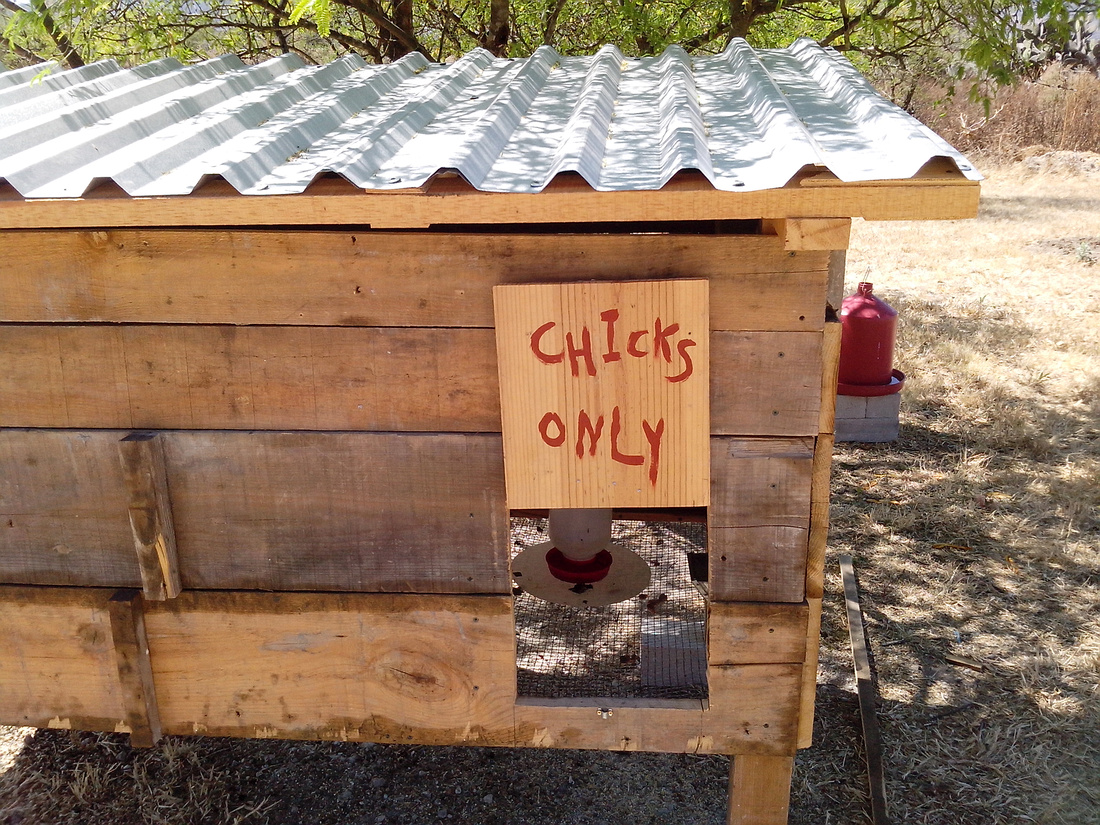
This little door makes it easy to collect eggs.
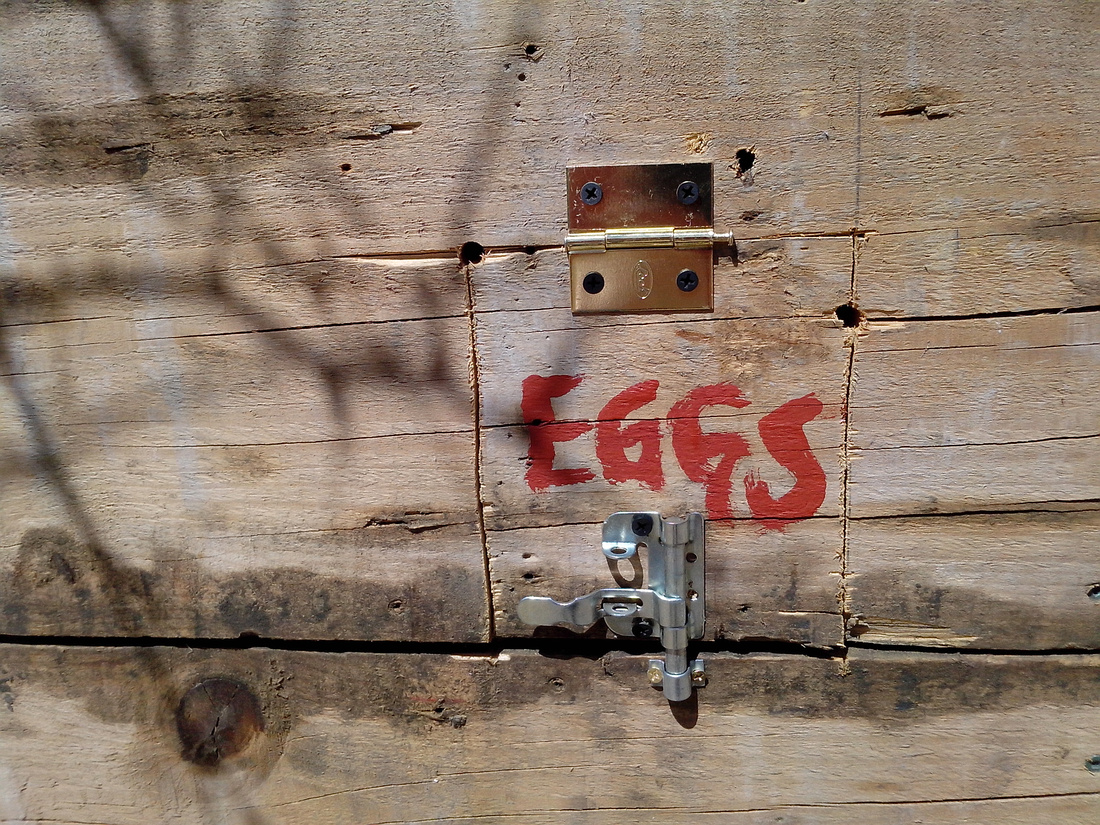
As food became scarce outside they now come into the patio to beg for something fresh.
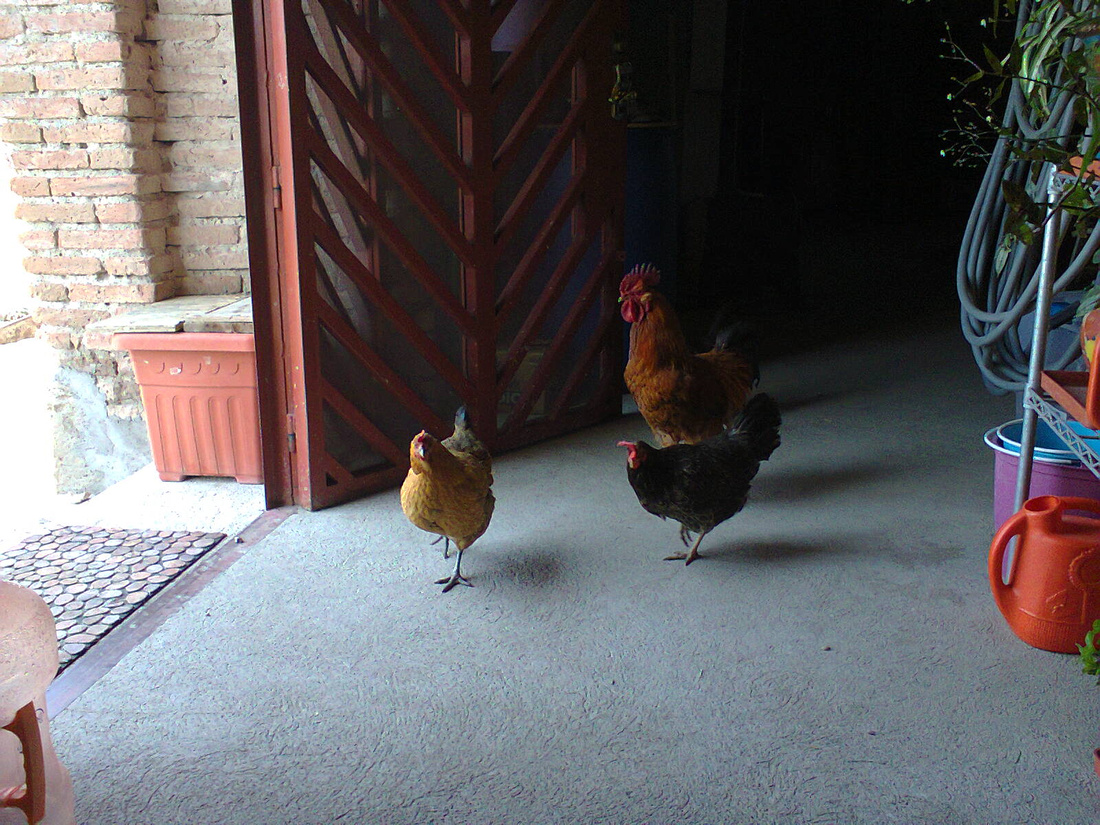
It's funny watching them file out in the morning.
Big Boy and Betty. They don't seem to mind American names!
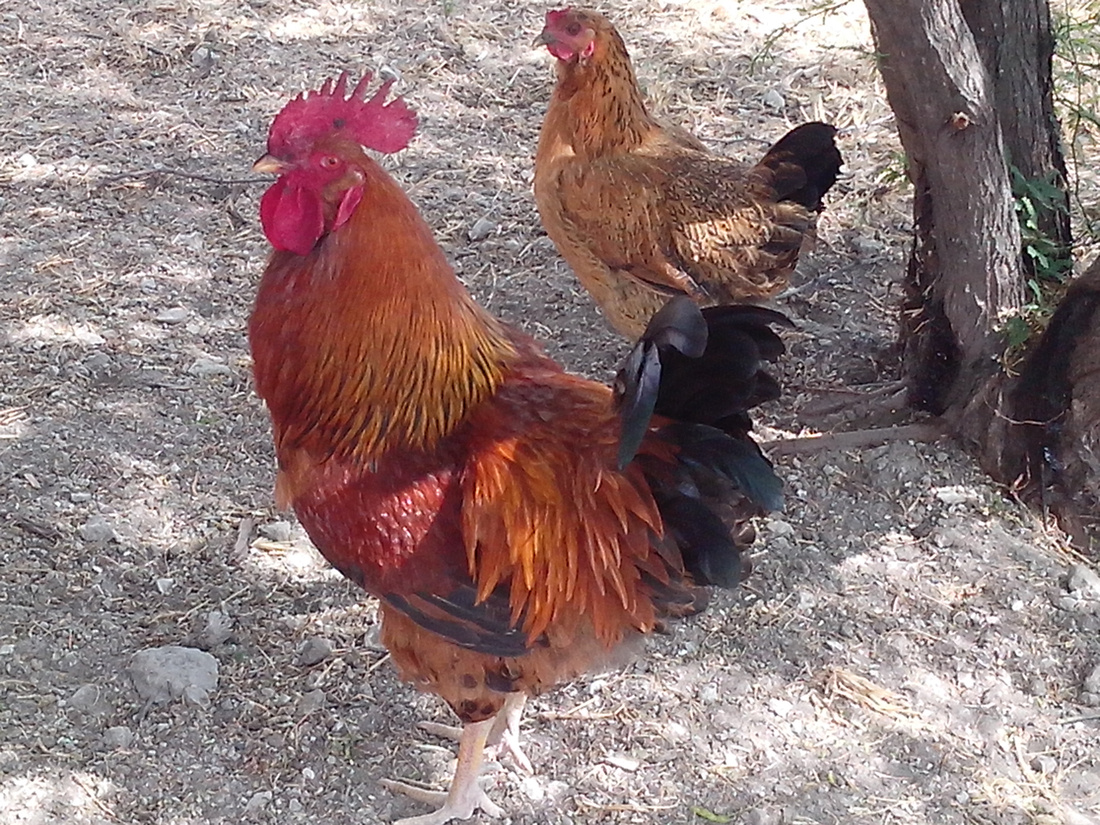
The eggs always vary in color.

The dogs are always looking for a handout.
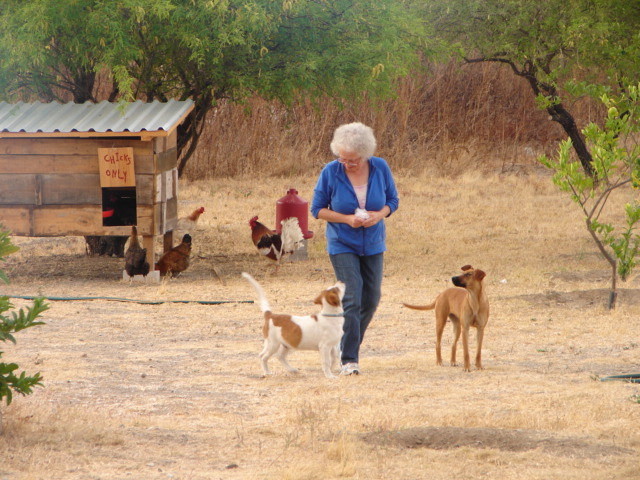
I caught Coby in the coop.
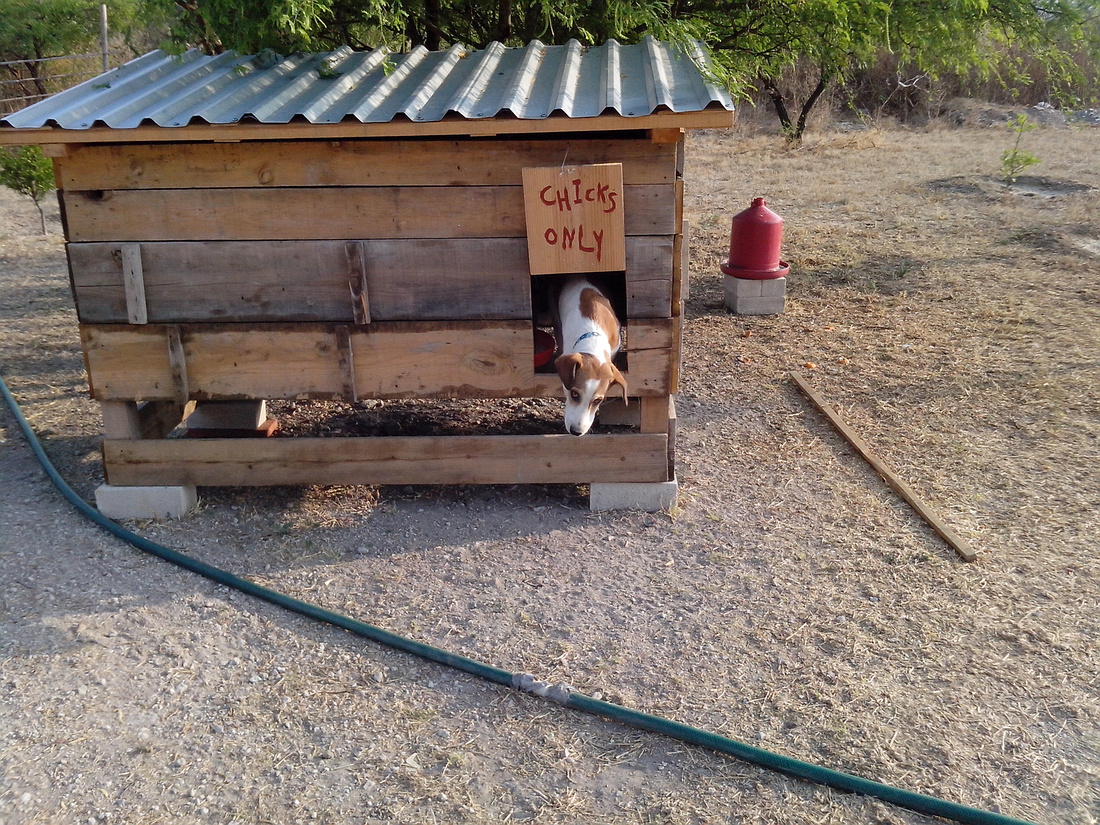
When I last measured, our well was holding at six meters of water. I expected less. We water fruit trees every other day and shade trees every fourth day. I installed some valves to make it a little easier to switch from watering outside to filling the tinaco inside for home use. We add a little chlorine when will fill the tinaco that’s why I added the screw on cap.
We continue to be appreciative for our internet. Because there are still so many things we do that are foreign to us, we are constantly turning to Google. It’s not an exaggeration to say that we sometimes Google particular subjects three or four times a day. I can’t imagine living here without Google. Solving problems would have been extremely difficult, if not impossible. Facebook has gotten a little frustrating. I still don’t read news but am sometimes drawn to spectacular political headlines that are regurgitated on Facebook. Ninety-nine percent of the time the headlines prove to be false and I feel foolish for being sucked in. We’ve solved the problem by unfollowing those who seem to revel in regurgitating negative political news without checking the validity of the story.
Our computer of nine years finally gave out so we bought a new one. Windows is in Spanish. We keep a dictionary next to the computer but many words are not listed. When a scary box pops up, (one of those are you sure you want to do that?) it’s a bit unnerving. Adding to the language change was the switch from XP to Windows 8.1. Fortunately all programs we install are in English. The Latin keyboard was worse to deal with than the Spanish operating system. We figured out how to configure the keyboard to US style and have added our old keyboard. Much better!!!
I am learning to play guitar with the ultimate goal of playing slide. There is so much information available. From the internet I’m learning scales, finding new chords, acquiring background tracks to play along with, learning tips from old time guitar players, learning how to set my amp for particular sounds, finding sheet music to learn familiar songs, and there is even a metronome on the internet to practice staying in time. This information is all the more important because I’ve yet to find anyone that plays anything except Latino music. Added to the disconnect of musical tastes is the Mexican formula for identifying notes and ultimately chords. In the US notes and chords are identified by the, a b c d e f g method. Here, “do ra me fa so la ti do” is used. Rapid chord changes are impossible. When I’m told to go to ra, for instance, I have to use fingers to count much like when I first learned the days of the week. There is no lack of musical talent here. With all the fiestas there is a plethora of groups competing to play at weddings, birthday parties, anniversaries, and town fiestas. I’ve probably mentioned it before, but it’s still interesting to see eighty year olds listening to the same music as fourteen year olds. It’s not always the case, but I think music here in general passes through more generations than in the States. Maybe Country music would be the exception.
Four months ago a friend brought us a two month old pup that had been abandoned. We named him Coby. He’s a mix with some hunting dog blood in him. He’s been a wonderful addition to our home. He is a bit goofy, but oh so innocent. We were able to house break him pretty quickly. He would eat all day if we allowed him. He loves chicken poop. He’ll literally walk behind the chickens waiting for them to drop a snack. It’s a bit dangerous and we’ve tried to change his behavior but with little results. The other day we caught him inside the chicken coop. He barely fits through the door. Each time he goes into the coop, he falls through the screening we use as a floor. Each time I repair it, I make it a little stronger. He tried to enter the coop again the other day, but he could only get his head and front paws in. Beth chased him out, so hopefully he’s learning that we don’t like it.
Lucky, the dog we inherited from our neighbor, is pregnant. We wanted to take her to the vet and have her fixed but she’d been abused so bad she won’t let us touch her. She too has a bad eye. She’s a great guard dog and always the first to bark when someone passes or comes to the house. She wags her tail and greets us when we return to the house after being gone but stops at letting us touch her. She’s had a couple of close calls with death mostly due to infections. The name Lucky fits her well.
Our one eyed Scooter is almost eleven. After being a house dog for so many years in Brownsville, he seems to love the freedom he has here. He still struggles with the plants that have spinas. Poor guy spends much of his day sleeping now but still likes to explore our property like he’s on guard duty. He doesn’t have much to do with the other dogs. He enjoys his time with us or alone. He’s a grouchy little guy but we’re sure going to miss him when he goes. Everyone that comes to the house is amazed by how well he communicates with us.
I saw a young Mexican boy in Tlacolula the other day wearing a German helmet. It cracked me up.
We had a little scare the other day. I was standing on the porch the other evening talking on the phone when up the road came four police vehicles and three motorcycles. I panicked a little thinking what have we done but was relieved when they passed by the house. It turns out that the police had stopped a fellow who’d stolen a car that he was using to transport drugs. He ran so the police were scouring the area. They eventually caught him.
The new prison down the road is almost completed. It won’t be long until prisoners from all over Mexico will be transferred here. It’s a maximum security prison. Our apprehension isn’t so much with escapees as with the possible migration of family members of the incarcerated.
Living amidst the poverty continues to weigh on us. It can be so overwhelming. As the dollar rises in power, the peso drops and makes life here more difficult for Mexicans. I was talking to a Walmart worker the other day. She makes fifteen pesos an hour. That’s almost an hour’s work to buy a Coke. Standard wage here is now about 150 to 200 pesos a day, roughly 10 to 15 dollars. Mexico for the most part lacks the safety nets and programs offered in the US so people must fend for themselves. Combined with the sorrow is an admiration we feel watching thousands of people eke out a living on their own. The ingenious ways they come up with to make a few pesos is humbling.
Beth continues to enjoy growing flowers and edibles. January and February were the best months to grow lettuce here and we had a great crop from one large planter. She also planted marigolds which flourished in the cool weather. Now with warmer temperatures and more sun, she has planted spinach, sunflowers, little onions, radishes, cilantro, garlic, and little cucumbers. If she can find the dill seeds or fresh dill, Beth would like to make some kosher dill pickles which we haven’t been able to purchase locally. Her roses and geraniums continue to do well as long as we water regularly. Our fruit trees (lime, mandarin, orange, apple, and avocados) have been advancing well with regular watering. We look forward to the additional growth that all our trees and plants will experience once the rainy season begins.
We went to Sam’s Club this past Tuesday. While in the store an alarm went off and all customers were escorted out due to an earthquake. They no sooner let us back in when there was another. Back outside we went. In all our years here and in various states in the US, we had never been told to leave a store due to an earthquake. We saw no visible damage and were allowed back in the store within minutes.
We’re going on three years here in the valley. One of the things that was initially missing was a network of providers. It’s scary not knowing which doctor to use, which auto mechanic to trust and so on. That’s different now. We’re pretty comfortable with those that we have chosen to make our purchases from. It’s added a fuller sense of security and of belonging. It’s one of those things you take for granted especially if you’ve lived in a location for an extended period of time.
We discovered something interesting today (May 6th): the rooster (Big Boy) and the hens (Betty, Goldie, Blackie, and Dixie) all love Bimbo Bread Integral (whole wheat), and both Scooter and Coby love Holanda Blackberry Cheesecake ice cream!! Hmmm, no wonder Coby now weighs 46 lbs. and little Scooter weighs 13 lbs.
Our first year here what appeared to be rat excrement began showing up in front of our gate every morning. Turns out it was a bat. I sprayed water up in the archway and the bat flew away. The next year they came back and I sprayed again. This year when the droppings appeared I decided to let him stay. Pretty soon though there was quite a bit of droppings. Then there were more. I finally sprayed water and thirteen bats flew out. I hated spraying this year but it really is a mess.
I don’t ever remember living anywhere where the smells were so distinct and powerful. When you walk through the market there is an incredible variety of different smells. Many of them are pleasant but some are not. I usually hold my breath when we walk by the dried fish and shrimp area. The drains are not usually sealed so there are often human waste odors. There are so many street venders making different types of food. I’m sure the smells of the vendors is an advertising technique. The fruits are sold ripe here so their smells linger. Roasting chickens, all types of tacos, barbacoa de chivo, all types of fresh breads, grilled beef, coffee being brewed, fresh pork rinds, fresh tortillas, flowers, and sometimes garbage. The central market isn’t just busy on Sundays. The market is full of people every day especially in the mornings.
The food reminds me of the lack of diversity here. Not much diversity in food, religion, Nationality, dress, or customs. Often the diversity that does exist is minimal. We have noticed the difference between the folks in Oaxaca City and the people here in the valley. People typically greet you in the towns here. They are much friendlier. I suppose it’s that way around the world. I think the lack of diversity often works in their favor.
Beth and I were discussing the difference between the roles of a homemaker here compared to in the States. Here in the valley especially in the small villages water has to be hauled maybe not far but it still has to be hauled. Clothes are washed by hand usually taking several hours to complete. Almost all food is prepared from scratch many times being cooked over a wood fire which takes time to make. Collecting firewood is an ongoing process for many families. Many women, aside from being homemakers, have found a way to make a few extra pesos: selling cups of jello, tortillas, bread, sewn items, objects made from palm leaves, having a little store in their house, raising animals, and countless other ways. Many women additionally help their husbands in the fields. The point being here in the valley the saying, a women’s work is never done truly applies.
A while back I tried to pay for groceries at Walmart. For some reason my debit card wouldn’t go through so I asked the cashier to hold on. She returned my card and I withdrew from a cash machine and paid the cashier. It wasn’t until a week later when we were making another purchase in Walmart that I realized the cashier hadn’t returned my driver’s license. I went to the customer service counter and to my relief they had my license. I’m afraid this wouldn’t have been the case in many stores. Buying in an open market (not yuppie farmer’s markets) opens your eyes to why the FDA was started. There are so many products at the market that we just won’t buy. Any kind of control is nonexistent. People do all kinds of things to make an extra peso at the expense of buyers. I am much more comfortable at Walmart. I often think of mistakes made by the FDA, but I’ll take a non-perfect organization over no organization any day. Walmart is clean; I don’t worry about pick-pockets; I pay the same as locals; most products are guaranteed; items are sealed; and prices are competitive.
Many of the women from small villages wear plastic shoes. There is no support. I wonder what the effect is on their legs. Many women walk with a small limp. As these women age, they also complain of problems with their knees, hips, back, and ankles. I can’t help but wonder if those plastic shoes are the cause. Men’s shoes are not much better. Most farmers wear huaraches which are still made with a tire for a sole. I had a pair for a while but gave them away. My feet killed me when I was on my feet for an extended time.
As I am writing this we are preparing for another trip to Guatemala to secure new permissions to be in Mexico. We are hoping this is our last trip. We have started the process of putting our property in our names which will aid us in obtaining immigration status. We’ll also be able to nationalize our truck and buy medical insurance.
Best wishes to friends and family. We hope to see some of you here.
Finally on this Mother’s Day, I’d like to thank my partner of over thirty-five years for sticking with me and helping me realize my dreams. Without her support and input, they would have been impossible. She’s been a good mother to our children, the foundation in our home, and continues to search for new adventures. She is strong, loving, and cares for others. I appreciate her patience and thoughtfulness. It’s been difficult at times having a partner that’s smarter than I am. I applaud her for her academic accomplishments. The move here to Mexico presented her with many new challenges which she met with her usual determination and fortitude. I’ve enjoyed watching her adapt to our country life in a foreign country. Happy Mother’s Day, Beth.
For a school project Jose had to interview a non-Mexican living in Mexico.
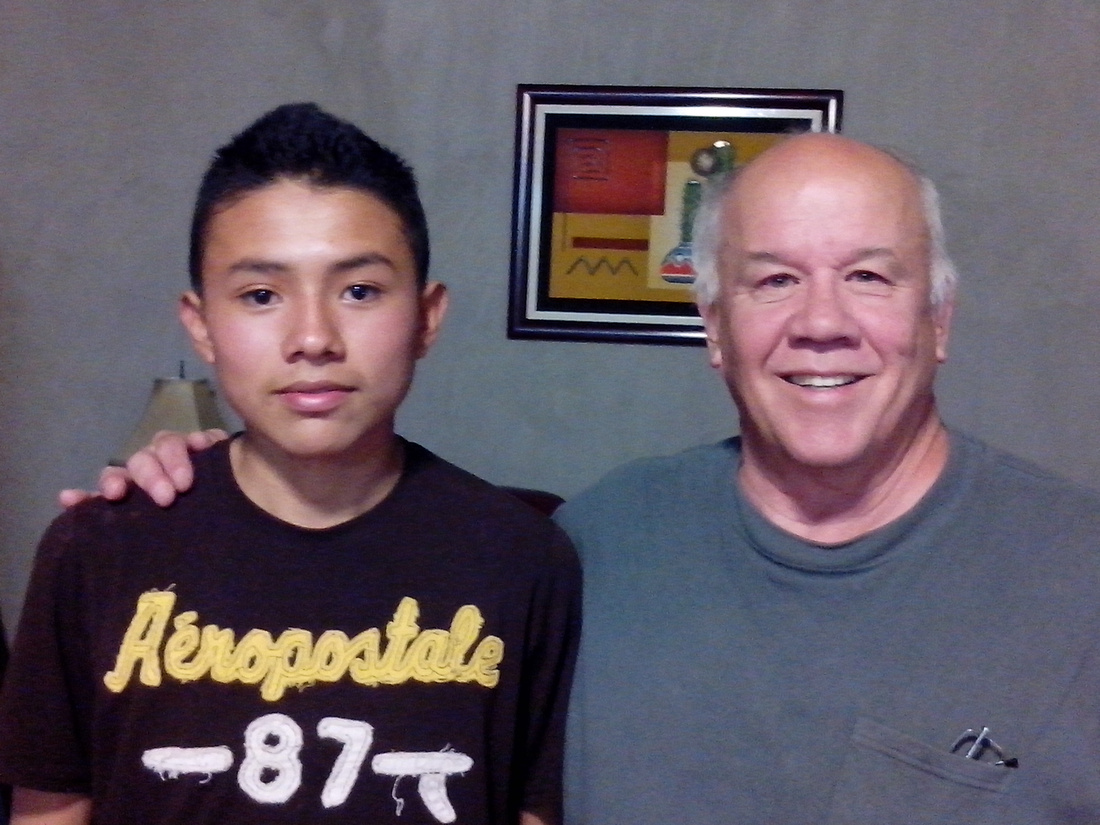
Our friend Abelardo opened a taco stand in Union Zapata. The tacos are great!
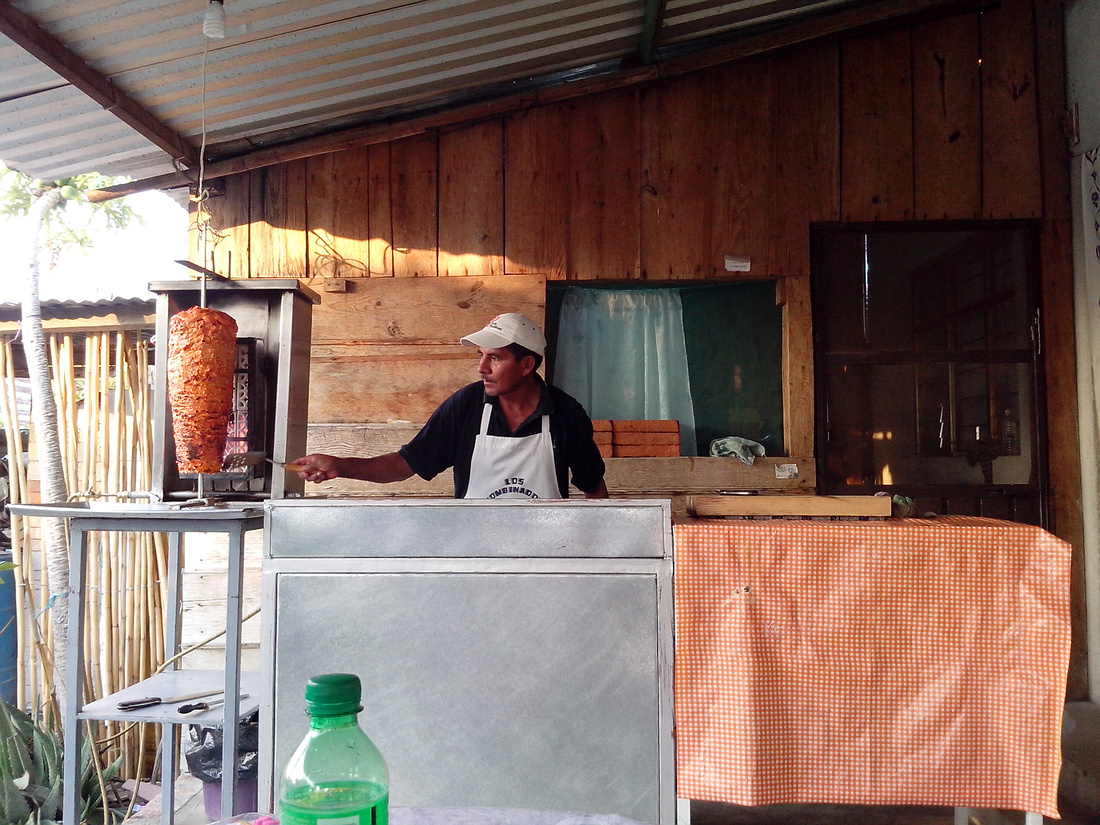
Taking the boys to the Vet. Coby has grown so much he no longer fits in the cab.
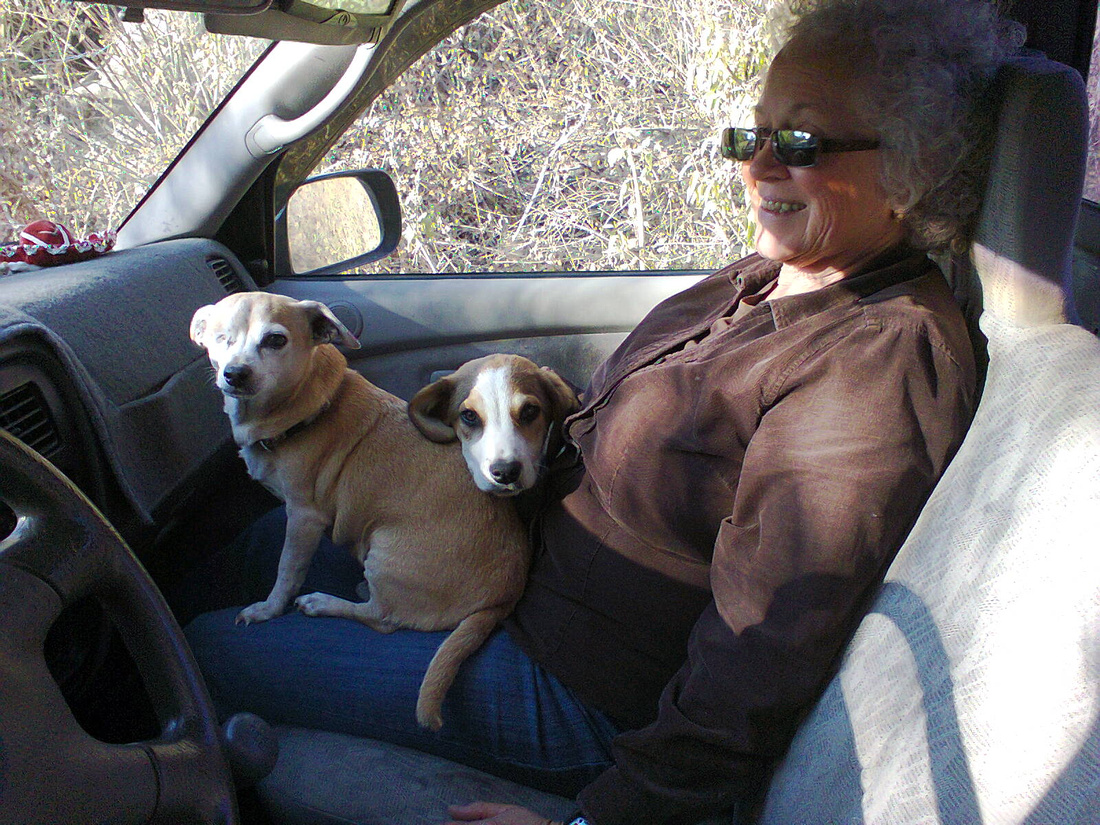
The post office in Tlacolula. No sign of automation.

Yesenia in a Shakespeare play. She's a little beauty.
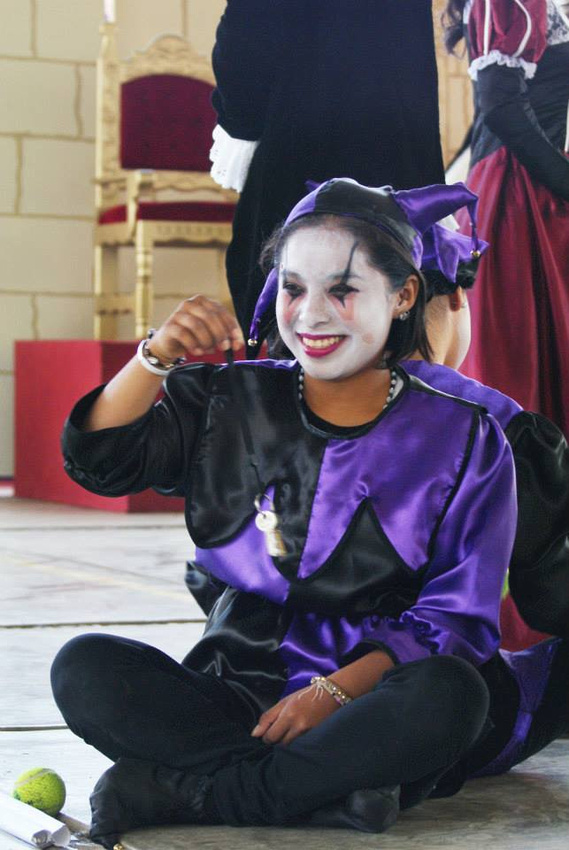
Felipe taking a break during a comida.
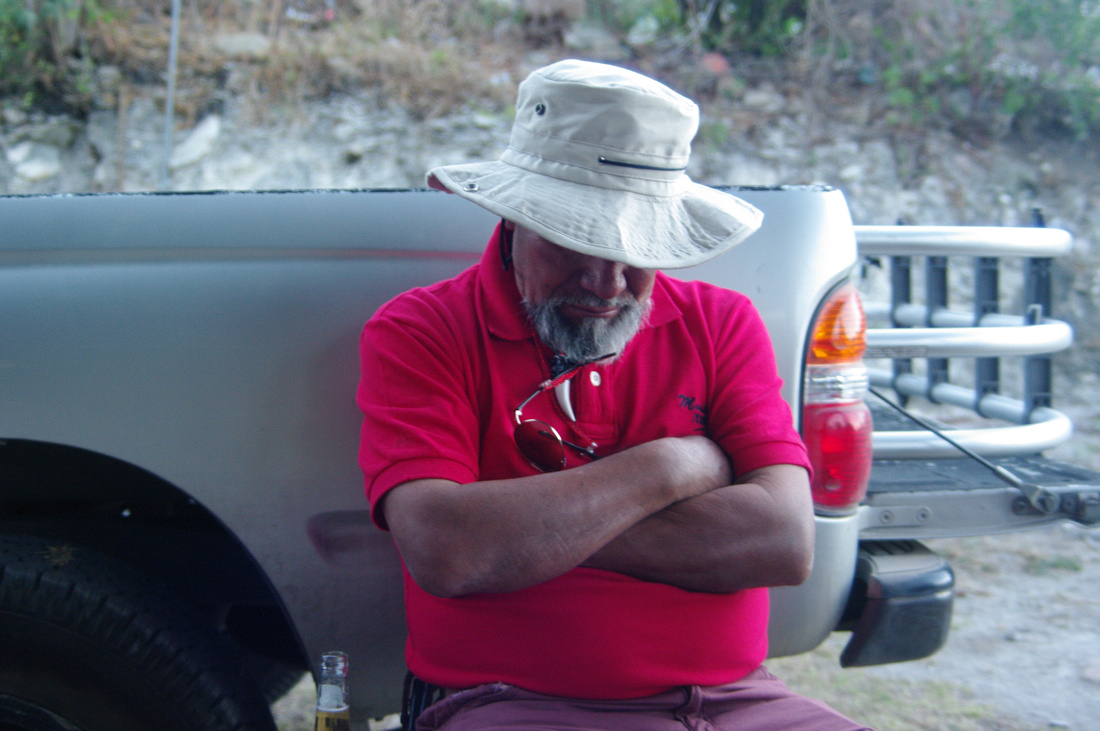
This is what it looks like when a group decides to block the highway. It's pretty unusual in Tlacolula.
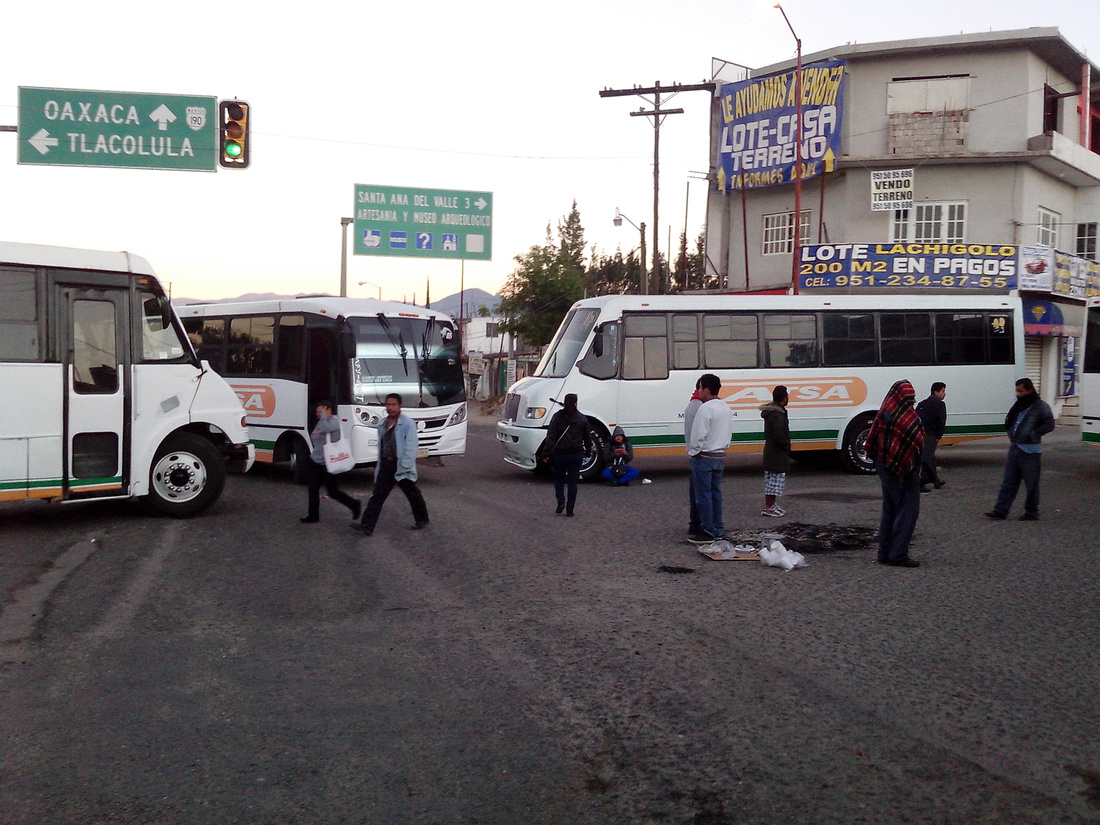
Went up to the mountains and was surprised how cold it was.
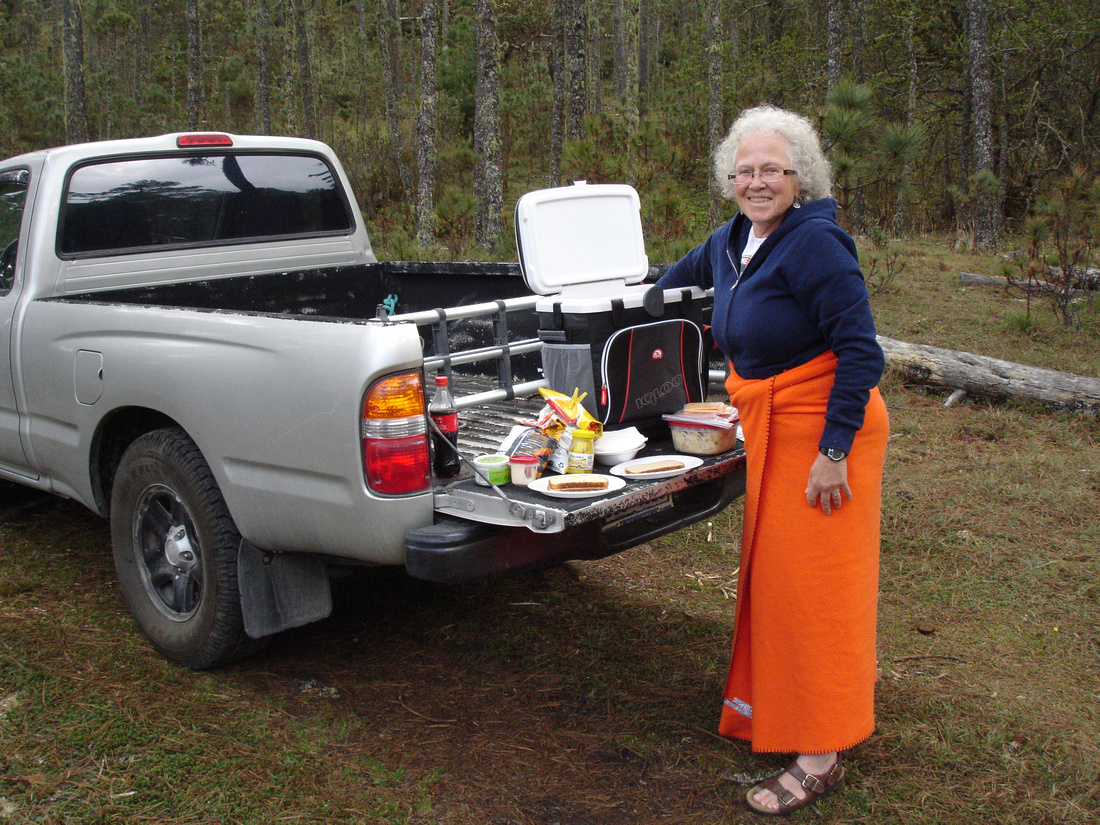
I can imagine Scooter thinking: um fried, boiled, or roasted!

Beth with the mother of a dear friend. I think Beth's cheeks are rosy from drink!
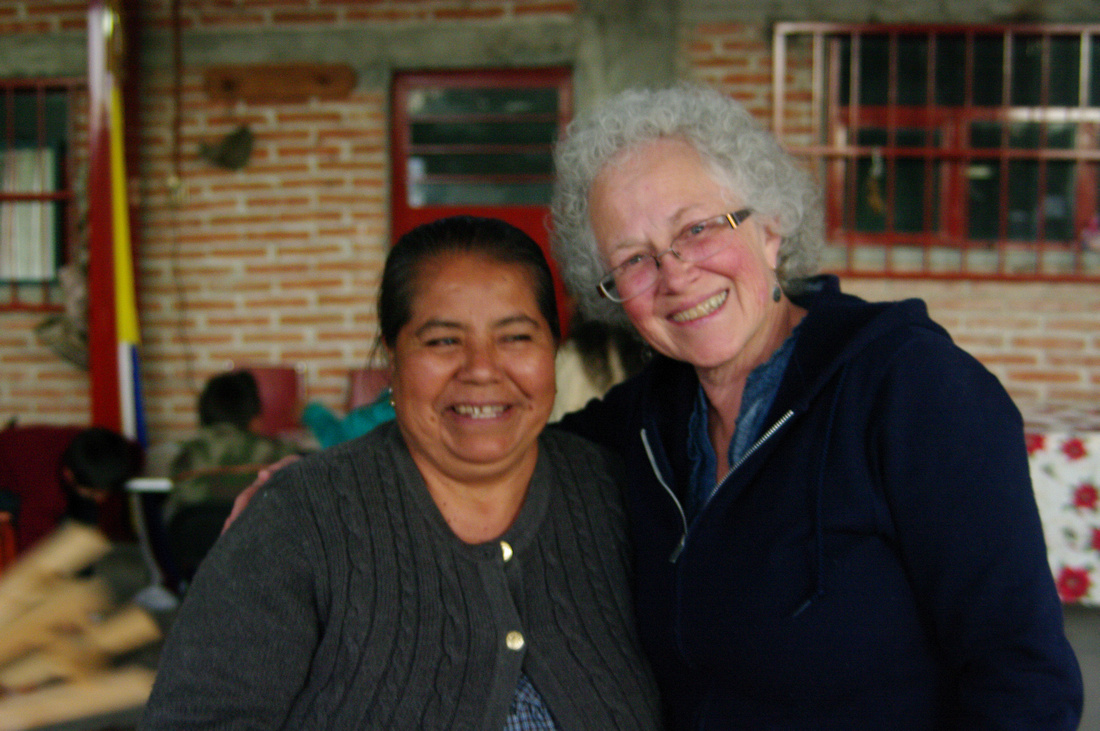
Since I bought Everette an electric guitar and amp for an early Christmas present, I have now become the designated blog writer. Since today is the last day of this month, I will just add one picture of our home at Don Pedrillo.
November seems to be the most appropriate month to express thankfulness; therefore, this blog will be one of personal thanksgiving.
I am thankful for:
- My husband of 34+ years, Everette, who is the greatest problem-solver I have ever known. He has acquired an immense list of skills that enabled him to make this adobe-walled structure into a beautiful home. He does not shy away from learning new ways to attack a variety of problems.
- My three sons, Chris, Sam, and Mickey whose intelligence, ingenuity, creativity, resourcefulness, and “joy in living” inspire me.
- My first daughter-in-law, Yadira, who adds the feminine perspective and her enormous heart to my family. I could not imagine my family without her.
- My newest daughter-in-law, Danielle, who with my son Chris, enriched my family with my first grandchild, the long awaited granddaughter, Alysandra. I look forward to spending more time with both whenever possible.
- Our friend, Felipe, who invited and welcomed my family to Oaxaca back in 1994. He and his family helped us adjust to our first year in Mexico and helped us purchase this property.
- Felipe’s wife, Alejandra, who sheltered and protected us during that first year here. She continues to share her knowledge of local customs, plants, etc. She is a lovely woman and I appreciate her friendship.
- Felipe’s family and friends who have extended their love and friendship to my family for the past 20+ years.
- The opportunity to study and to work at UTB in Brownsville, Texas. I am also grateful for the years Everette and I were able to work in Texas which afforded us the finances to reconstruct this home and to retire comfortably here.
- The ability to learn a new language and to appreciate a new culture.
- The beautiful vistas and the variable weather here in Oaxaca.
- The new vision, attitude, and appreciation of life that my time here in Oaxaca has provided me.
- My role as wife and mother with all its joys and challenges.
- My husband’s brothers and sisters: Cathy, Joel, Bobbie, Legrand, and Rachel, who have always accepted me into their family with unconditional love. My life has been blessed by them.
- The opportunity I had to live in the states of CT, PA, MA, CO, CA, WA, NC, and TX. My horizons expanded with each new state.
- For my parents, John and Jean Whitman, who raised me in a traditional home and taught me right from wrong, encouraged me to read voraciously, and showed me how to love the USA. They provided me with the foundation to pursue my many travels and adventures as well as my education.
- For all the teachers and the professors I encountered from kindergarten through graduate school who challenged me and inspired me to reach farther, see clearer, and to never stop learning.
- For the opportunity Everette and I had to start and run a business, set and achieve goals, and meet so many interesting people along the way.
- For the technology that has been available in my lifetime including computers, the internet, and especially Facebook and Skype. These last two have enabled me to communicate with my sons and my friends from around the US.
- The hours my husband spent online acquiring books, audiobooks, and movies for our enrichment and enjoyment here in Don Pedrillo.
- For my health and the energy to pursue my hobbies of cooking, gardening, crocheting baking, and sewing.
- A comfortable home which needs neither a heater nor an air conditioner, thanks to the 3’ thick adobe walls and the 18’ high roof of teja.
For all of these and many, many more I am thankful this year.
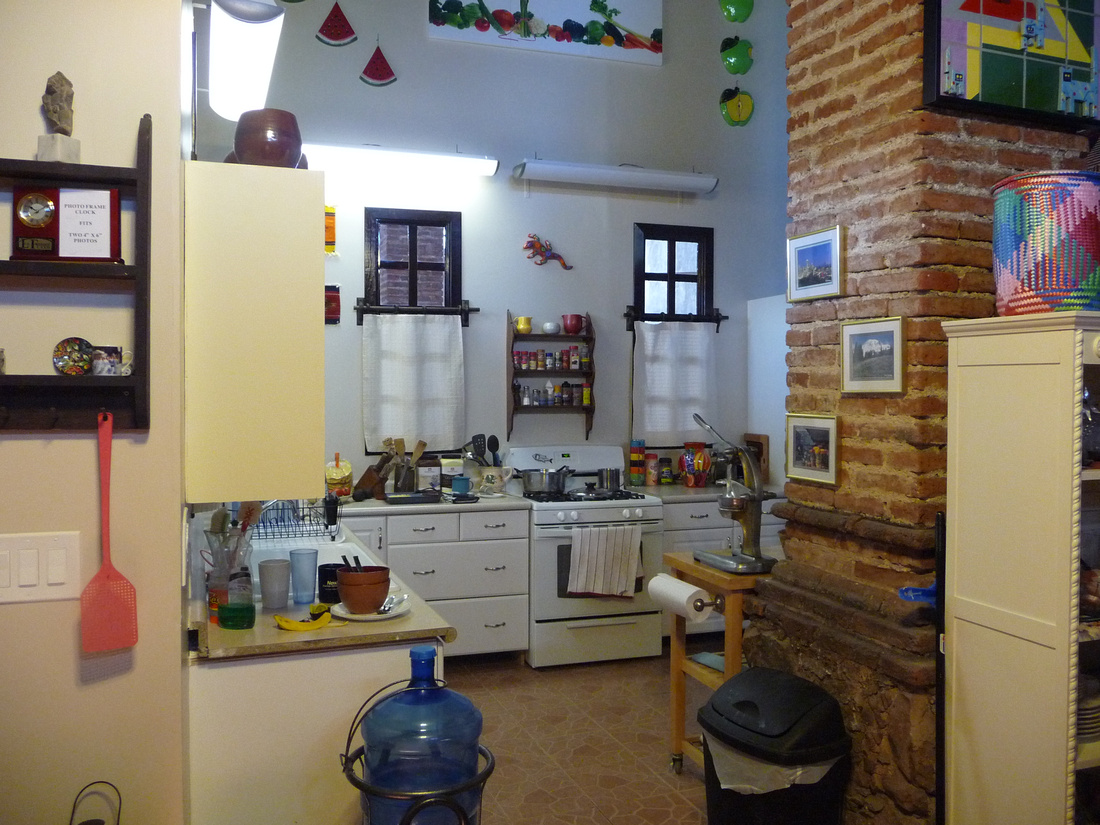
It's about five hundred meters from Highway 190 (kilometer marker 39.5) to our home. The winding road makes it a little longer. Here is a short video showing the road from the highway to our house. We've been without rain for over a week yet we still have a little standing water. During the dry season our house can be seen from the entrance. When we return home at night, it is very difficult to see the entrance especially when making a left turn. There are no street lights and no sign. Sometimes it's hard to find the opening in between the bushes. Everette put reflectors on the posts but they don't help much. When we first moved down in 2012, it was in the middle of the rainy season. The water was about a foot high in some places. We've invested quite a bit improving the road. Dirt can't be placed on the road since the force of the rain washes it away or turns it into mud. We've put down sandstone and another type of filler that we don't know the name of in English. The stretch passing the carrizo was especially spooky at night that first year. It was too easy to conjure up animals coming out of nowhere. The headlights added to the surreal atmosphere.
Standing at our front gate and looking up over our left shoulders, we see what we call Bear (Oso) Mountain. Don't you think that it resembles the head of a bear complete with right ear, two eyes, and a nose?

This is posted in front of a Pemex station outside Tlacolula. Can you imagine posting this in the USA? Nope, that would be major discrimination. However, we see these signs often, employers requesting that either women or men apply to work for them, for whatever their reasons.
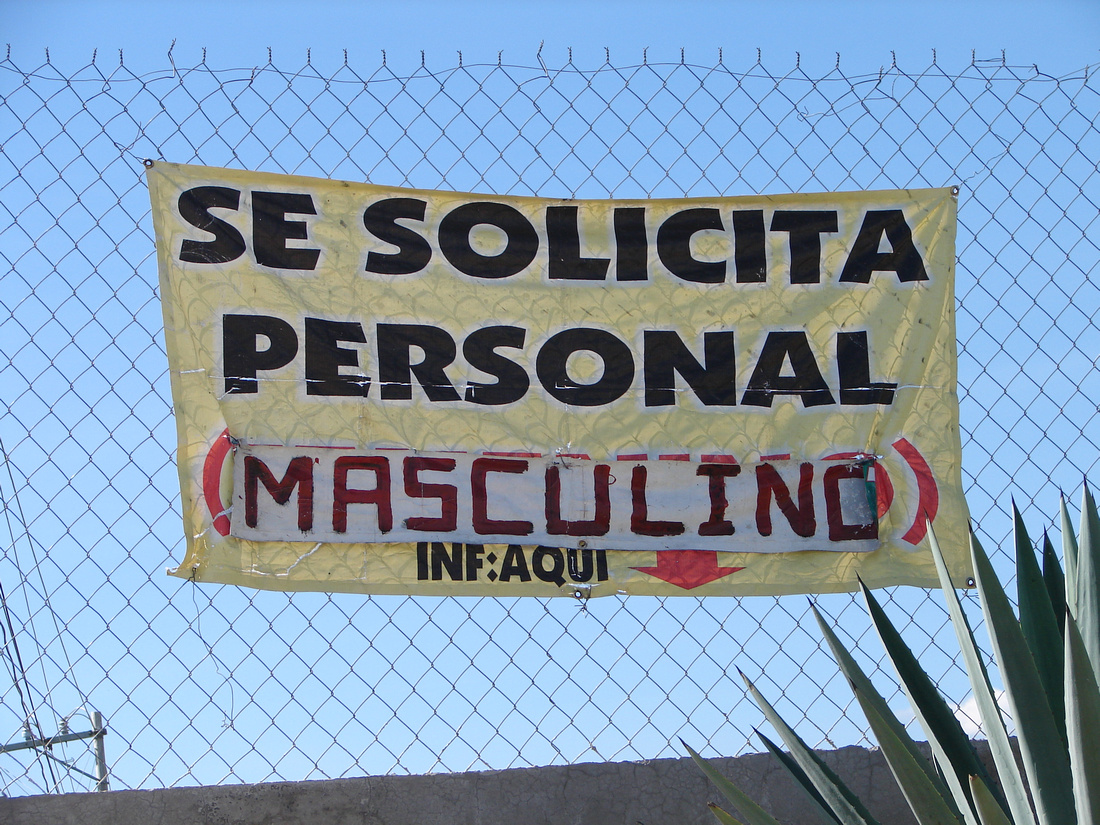
Just across the highway from our home and on the way to the zoo, there is currently a women's prison.
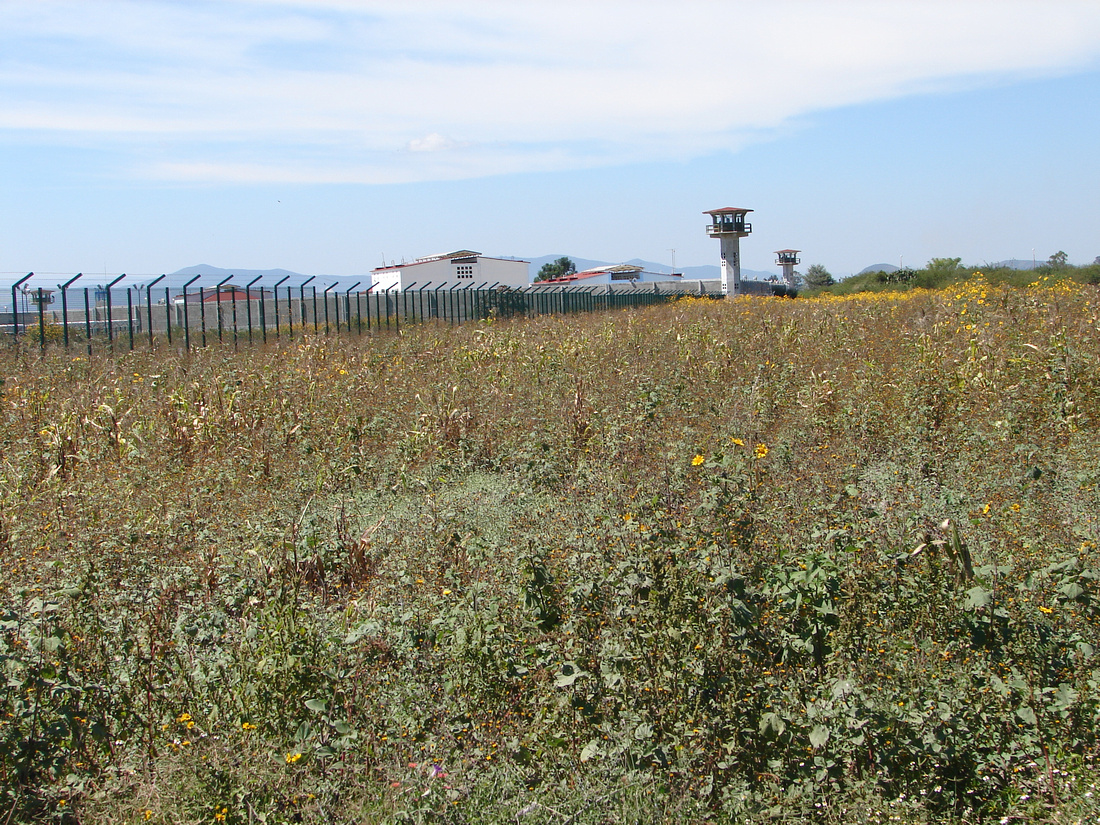
The Federal government is now completing construction of a maximum security prison which will house approximately 5,000 criminals from across all of Mexico. We are not worried about escapees; they will want to flee the area quickly. However, we are a little concerned about how their families and friends may change the makeup of surrounding communities.

Construction of this facility has provided much needed work for many of our friends and acquaintances.
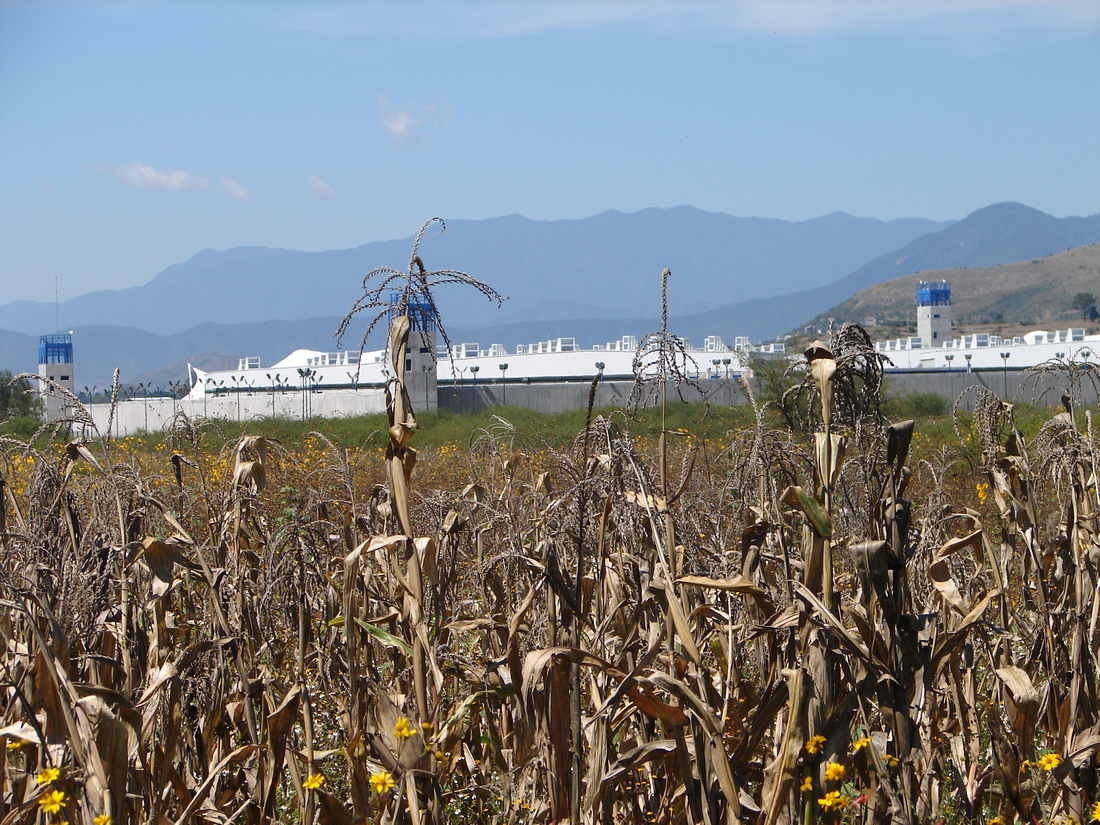
This river runs from the mountains east of here and behind our home and provides water for the pueblo of Tanivet. There is lots of water now due to the late October rains.
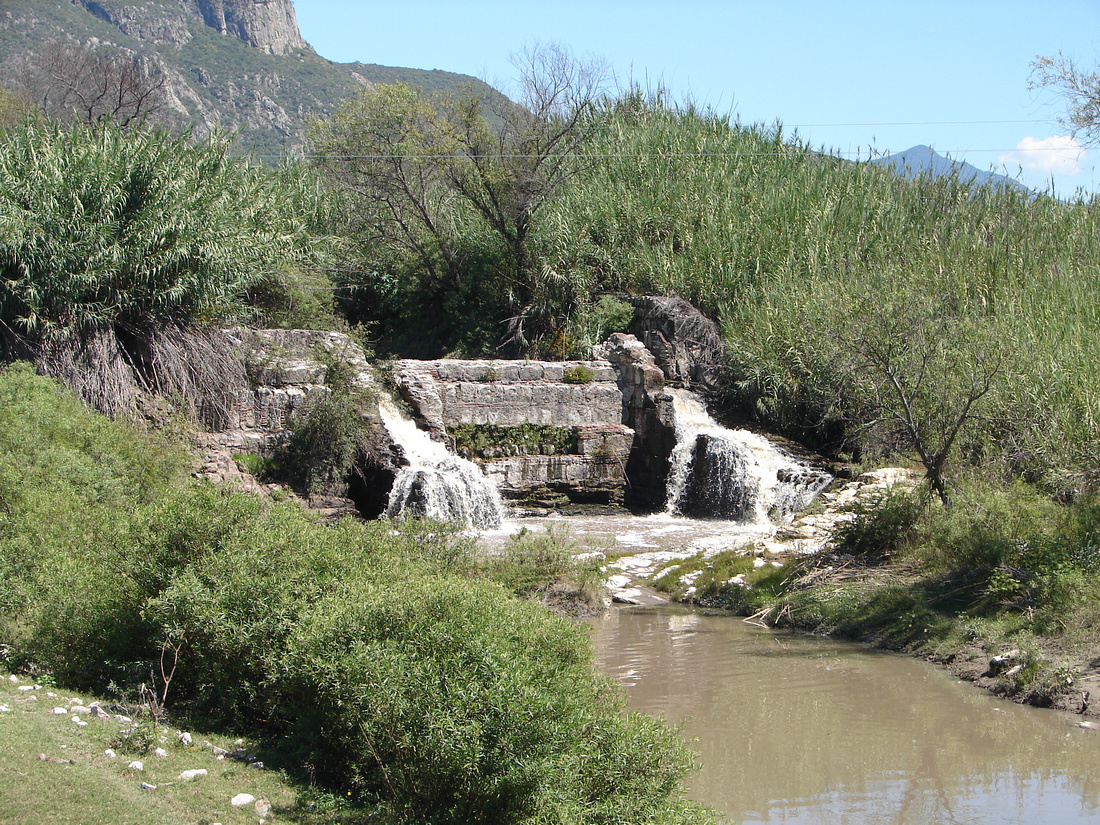
The other day on the way to the Jaguar Zoo outside Tanivet, we encountered these animals on their way to feed in the fields nearby. We enjoyed this since we were in no hurry.

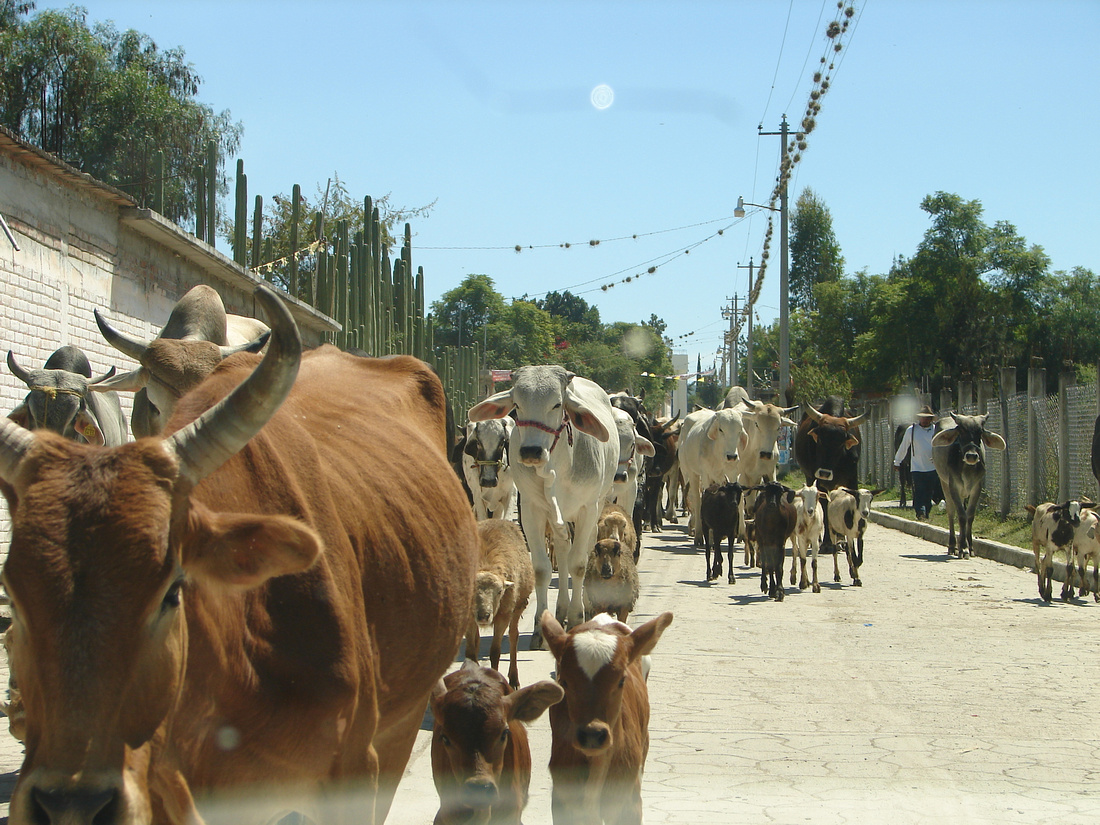
I must say that this was a little intimidating for both us!

These animals provide a living for many inhabitants of these small villages.
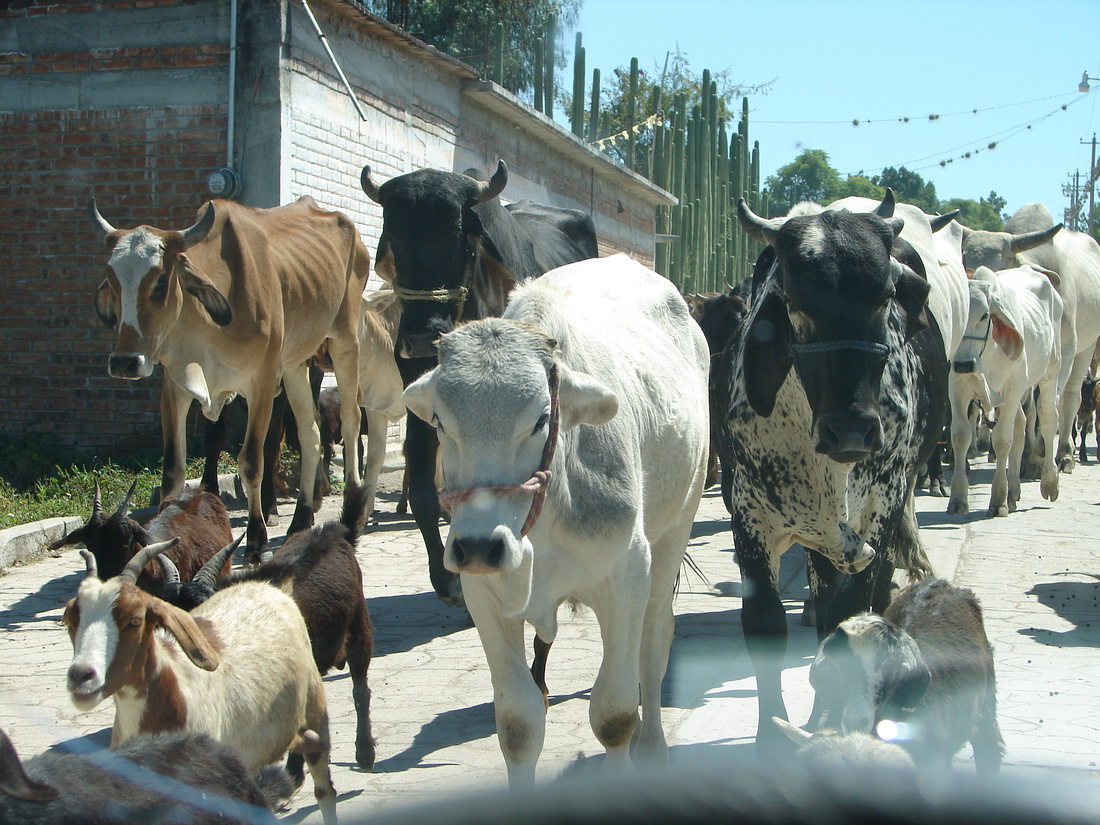
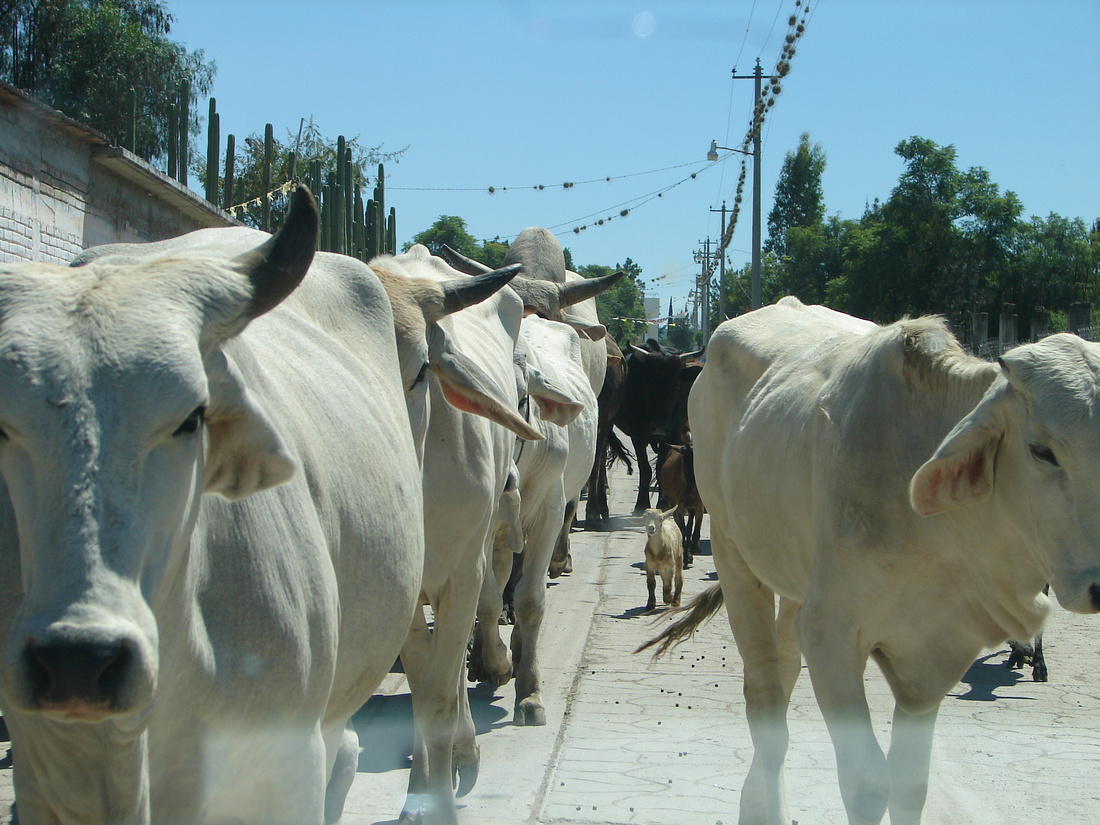
Here's the entrance to our local zoo.
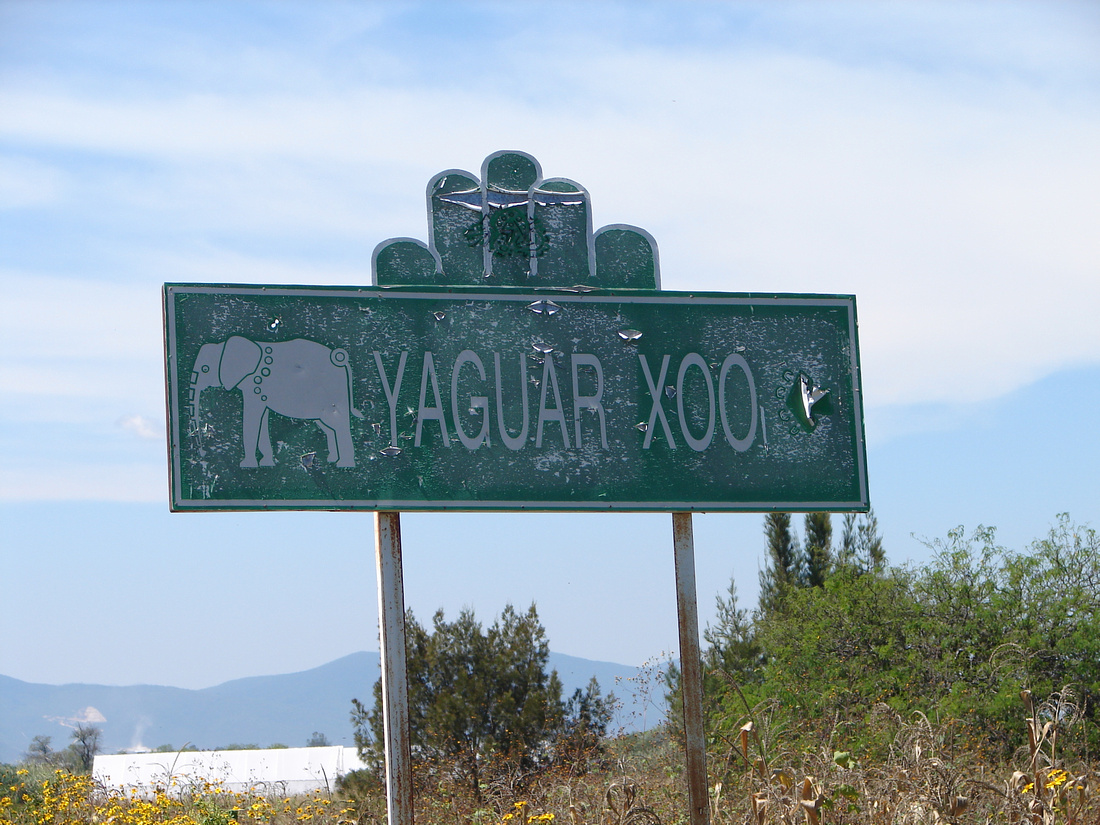
The snack bars at the zoo offer the typical "sabritos," hats, mugs, and other keepsakes.

Of course, you can also buy mezcal and cold beer.
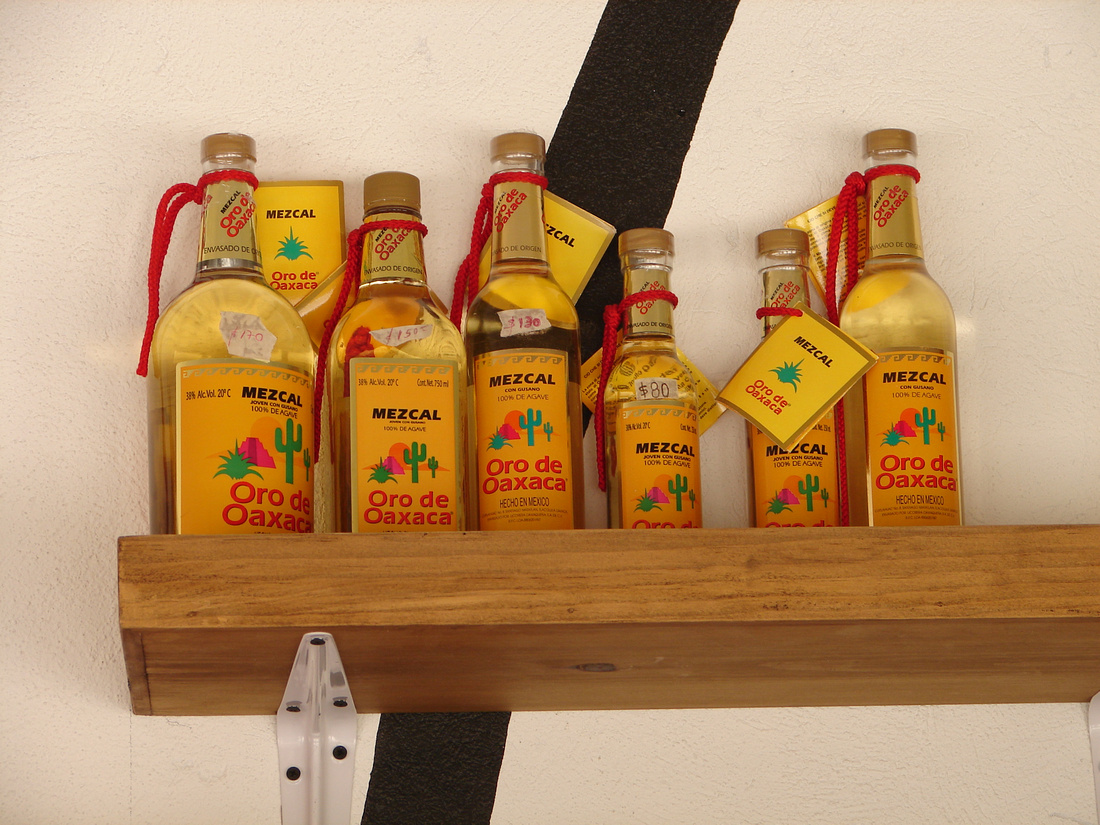
We sure thought this was interesting. They couldn't find a pole of say 14' so they lashed two 8 footers together.
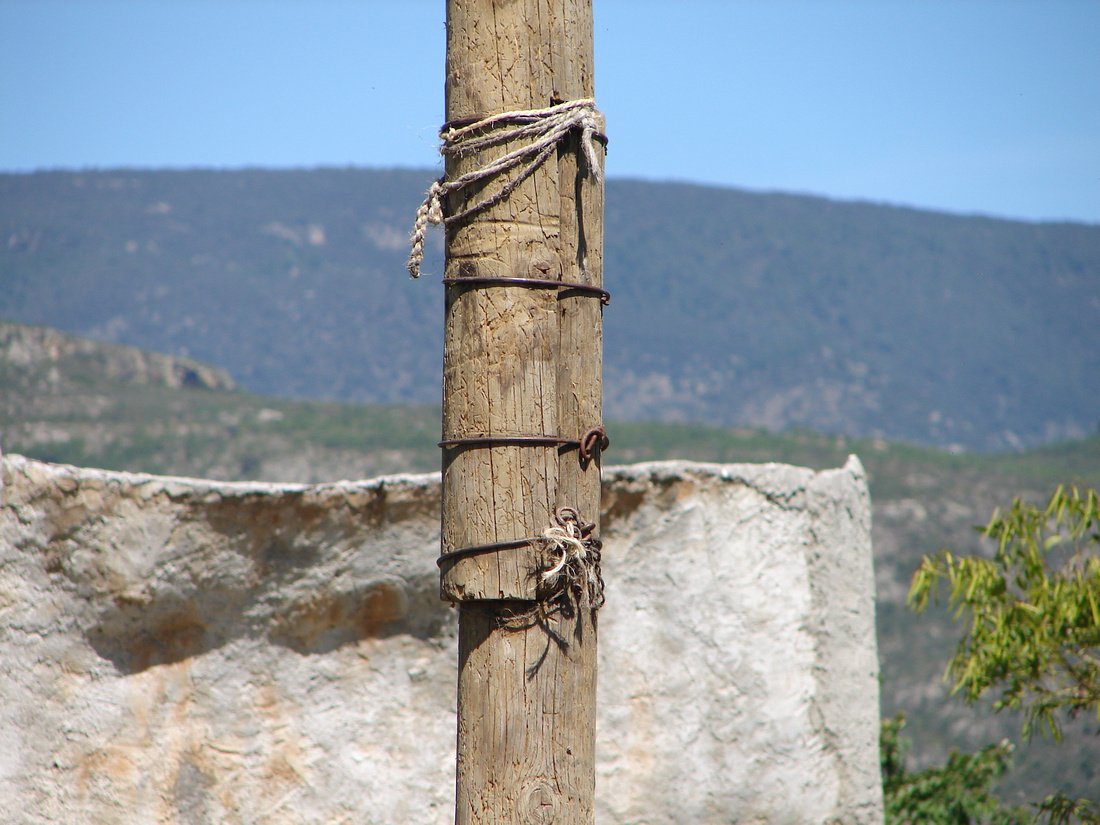
We have mentioned in several posts that the new Macro Plaza de Oaxaca opened the end of August. This restaurant named Toks is located in the plaza. We have eaten both lunch and breakfast here. The atmosphere is clean and lovely, the staff is well-trained, the menu is varied, although the prices are a bit high. We might indulge every other month or so.
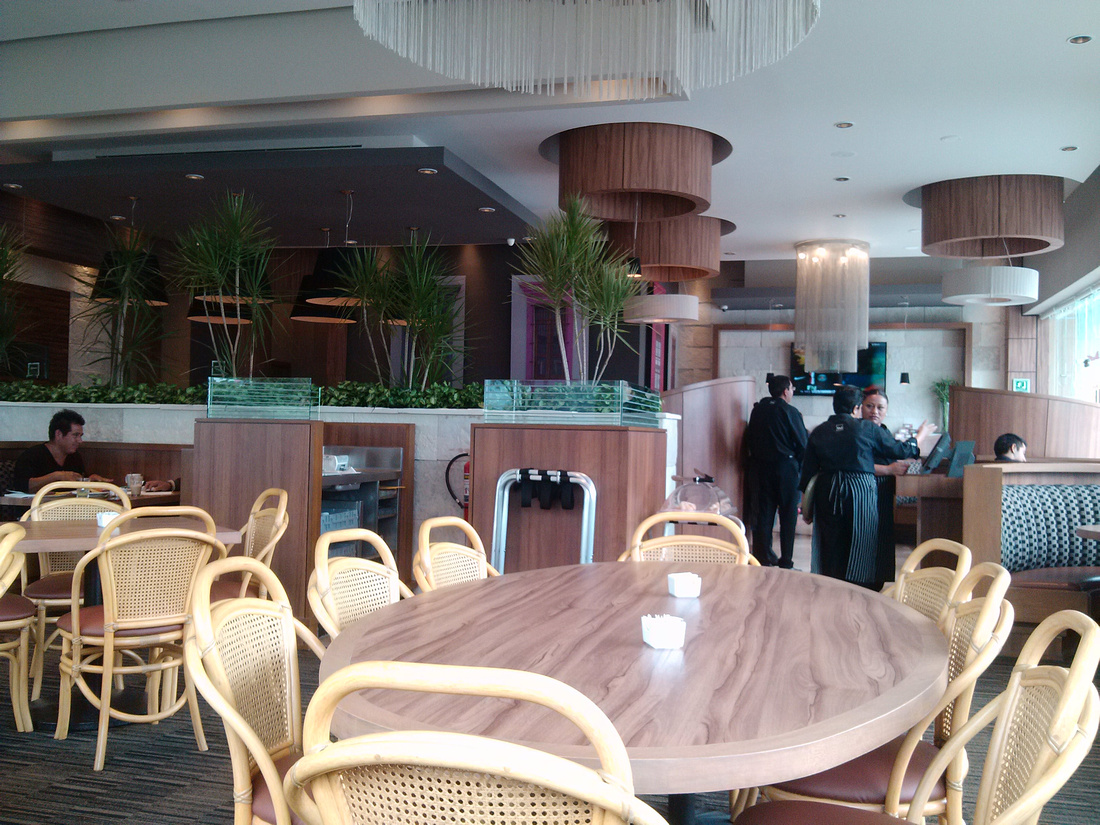
This is the classiest restaurant we have visited in all of Mexico. The menu choices include items we are familiar with from the States.

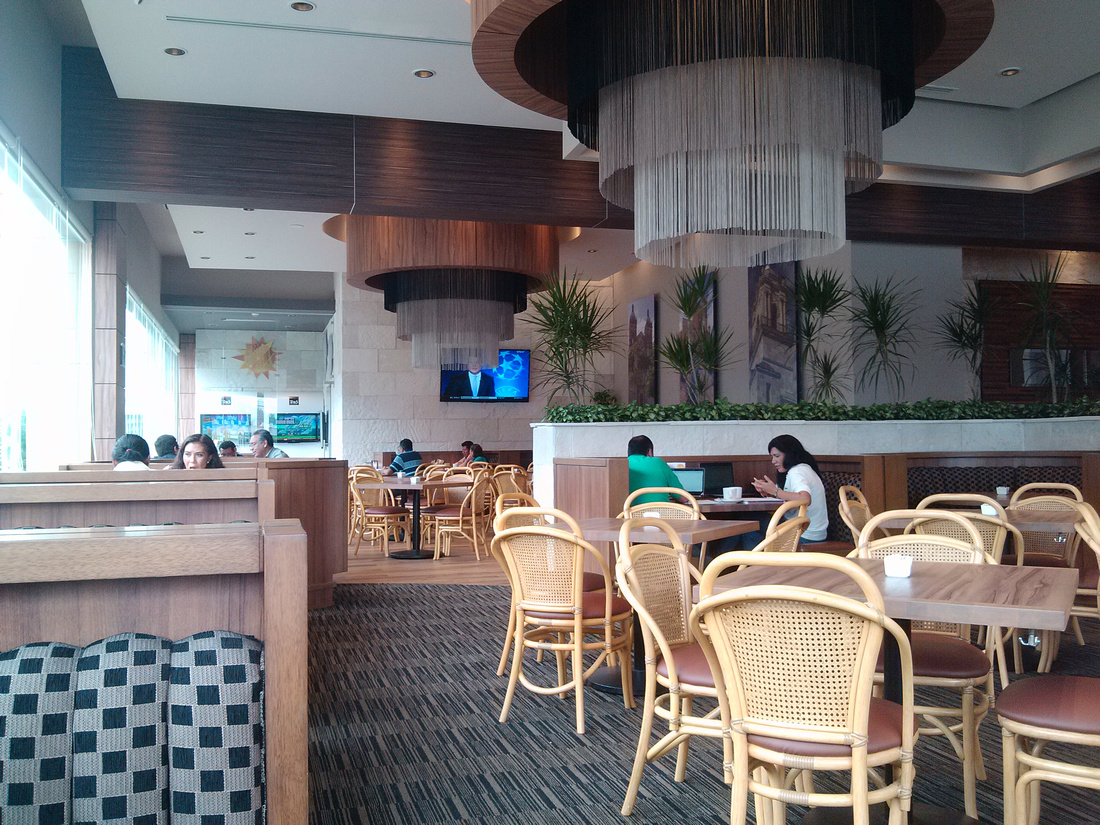
Yesterday, we had to buy four new tires for our Toyota truck (the roads here are pretty treacherous in places). The store where we bought them, mounted them, but the machine to balance was not working. They sent us down the road to a shop which balanced them for nothing. I loved this sign mounted on the back wall: In English, There are 3 types of work: the cheapest, the quickest, or the best. You can choose 2 at a time. [1] Good and fast, but not cheap. [2] Cheap and good, but not fast. Or, [3] quick and cheap, but not good.
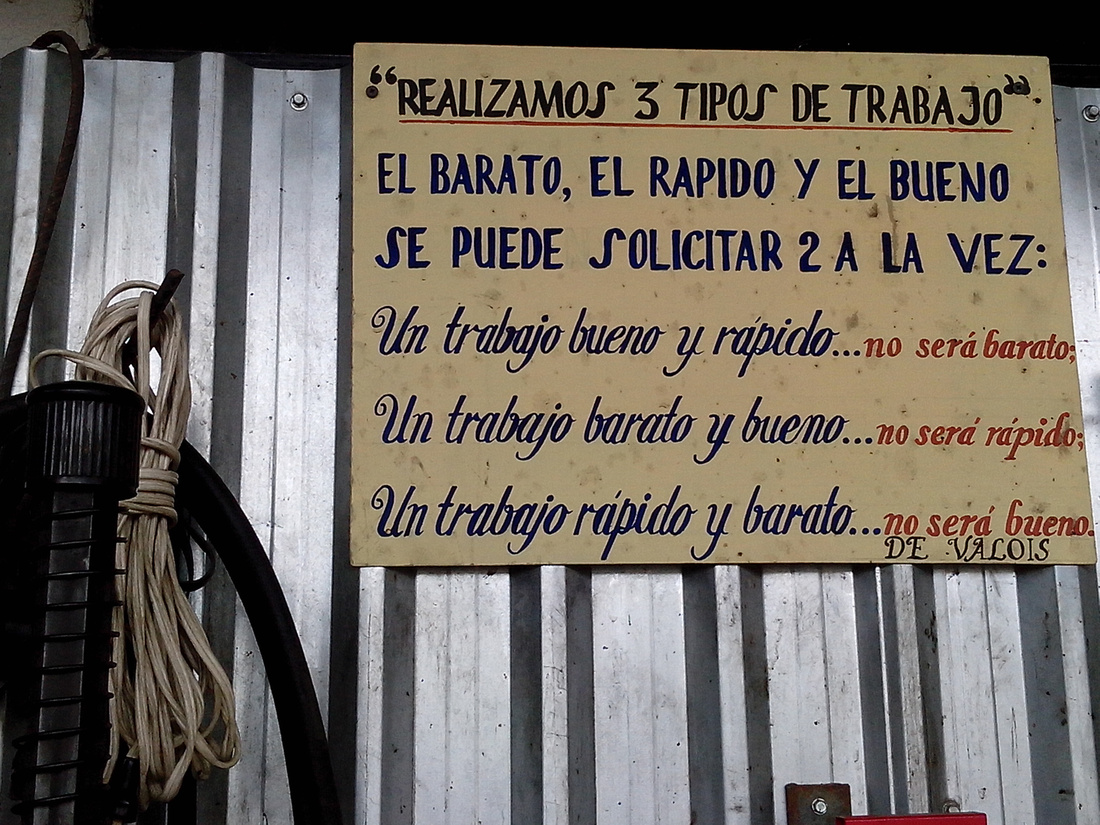
The valley here is a tough place to live for dog lovers. It's pretty rare to find a dog owner who considers their dog a pet. Dogs are work animals who protect their owner's property. Most dog/owner relationships are strictly business like: food in return for protection. In all my years traveling or living here, I can only remember very few times when I witnessed an owner petting his dog. Many dogs don't know how to play with humans. Tortillas are the main food source for dogs along with table scraps. It's not uncommon to see a dog's ribs protruding from its body. It's tough to see a female that's just had pups in this condition. Some females are unable to produce enough milk for their pups. Many local dogs make their rounds to our home with the hope of being fed. We've learned if we are going to give food, we have to feed them away from the house or they won't leave. Dog food is more expensive here than in the States so owners resort to the most common and less expensive tortillas. Beth and I have begun to make Scooter's food and supplement it with dog food.
Birth control is rare so pup litters are common. In villages you can see a natural pecking order. The biggest and strongest rule. It's fascinating to see dogs in what must have been their natural environment. For a dog to travel from one side of a village to the other, they must endure a gauntlet of other dogs. This is especially dangerous when an owner has several dogs. They'll team up on a passing dog. Dogs that kill chickens are beaten. So there are dogs in an emaciated state that will not touch a chicken. It's almost impossible to make the trip to Oaxaca de Juarez without seeing at least one dog on the side of the road that's been struck by a vehicle.
In the larger towns strays are everywhere looking for scraps. Sundays which are the market day in Tlacolula offer a windfall of discarded food. It's pretty easy to pick out the dogs that live on the street from dogs that have homes. Dogs from the street along with being in poor health are very weary of humans. They will not take food from your hand and handouts must be thrown far enough away for a dog to feel safe enough to pick it up. The higher economic condition of city folks is apparent by the condition of many dogs there. They are healthier and friendlier to humans.
The plight of dogs is a reminder of the plight of many people here who struggle to eek out a living. There is little help or assistance from the government. Consequently, people are forced to be creative and resourceful. Families with relatives in the US are lucky. A few dollars sent from the States makes a world of difference.
I'm going on a month without reading any news. It's been a bit of a struggle. The curiosity and feeling of not wanting to be uninformed still lingers. News from the US was especially depressing. Living amongst people who struggle to make a living make me ashamed to see the issues that Americans squabble over. Americans have so much and are afforded so many opportunities. It's been over two years since we've watched any news on the television. Television news we never missed. I blame television for much of the hateful divisiveness in America. Facebook is a little tricky. A little more Politics than I care to see. When President Bush was in his sixth year in office many of his strengths and weaknesses were obvious. We are now in the same position with President Obama. At this point we have a pretty good idea who he is and what he stands for. Vilifying or making excuses for him is not necessary. I was thinking today that more care seems to be spent choosing a coach for the NFL than for President of the United States as far as qualifications go. I much prefer to read about the hopes, dreams, and accomplishments of friends and family (not that I don't enjoy a lively debate). Another annoyance of Facebook is the use of celebrities who happen to agree with a certain point of view. Are we that intellectually depraved as a Nation that we have to turn to people that make their living playing a sport, acting, or playing music for political or scientific insight?
We just celebrated Mexican Independence here. I was a bit jealous to see Mexicans come together in honor of their country's freedom. It's refreshing to see a population celebrate their oneness instead of constantly being reminded of their differences.
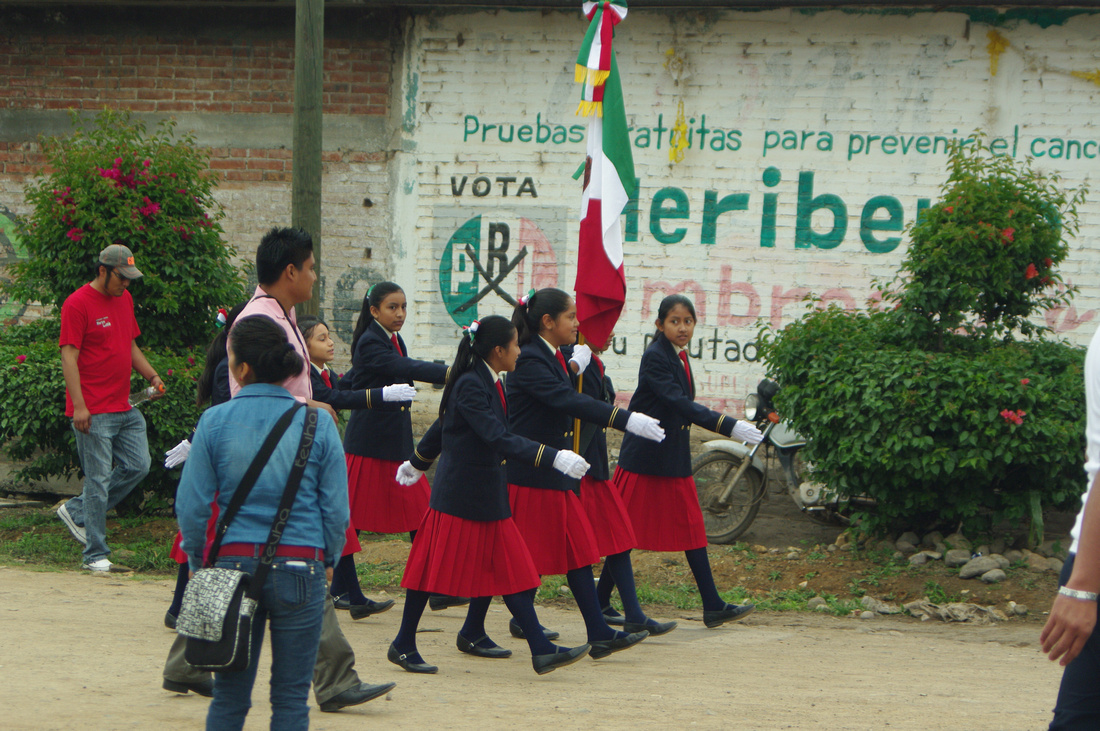
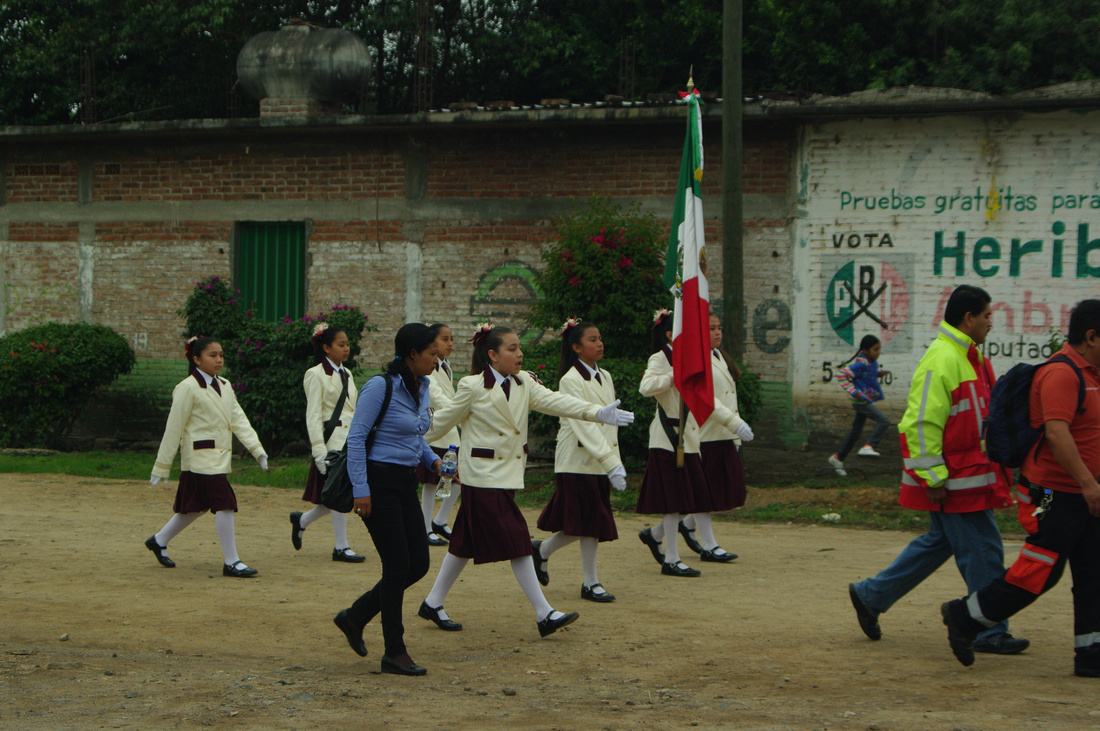
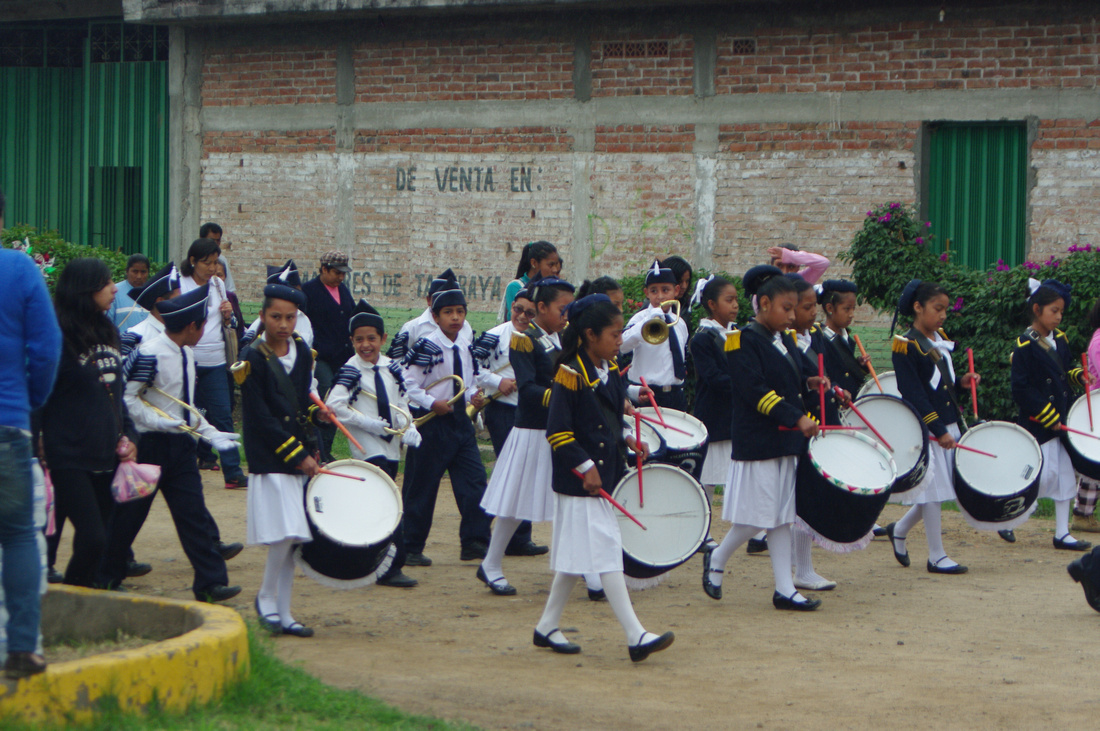
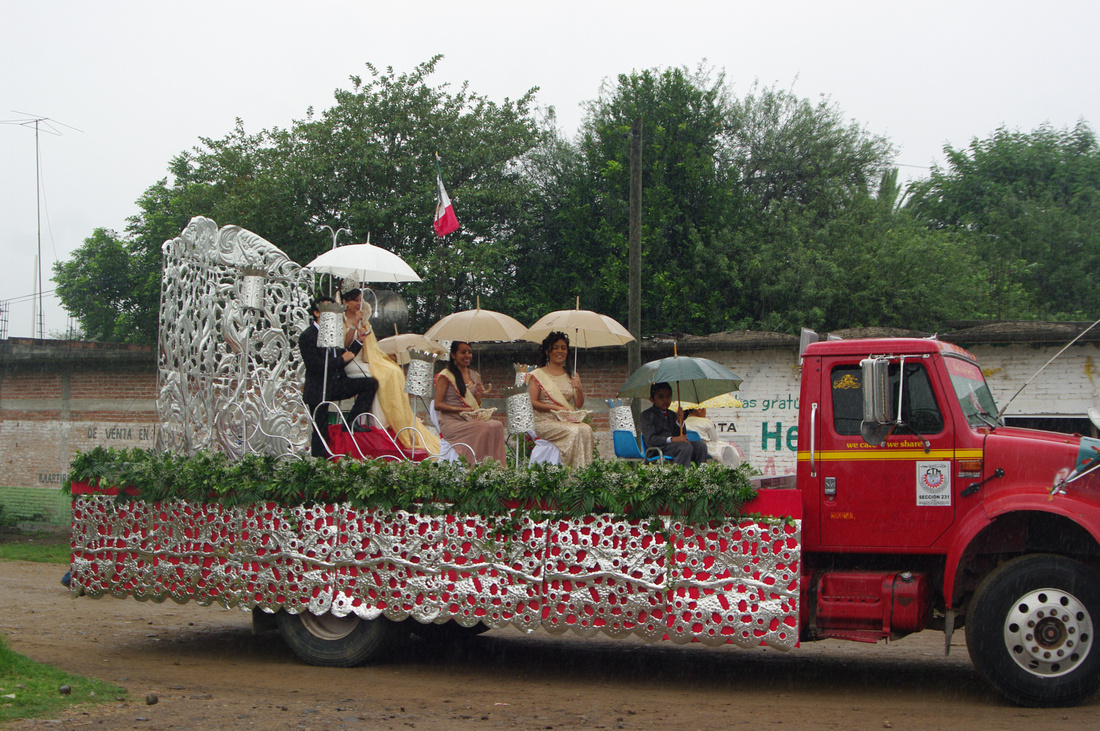
The new Macro Plaza (thirty minutes from our home) recently opened. We've already made several trips there. Located on this side of the city means we don't have to deal with as much traffic. It's close enough that we can make a weekly visit if we choose. We will still buy our fruits and vegetables from local markets, but it's nice to have easy access to items we are accustomed to from the States. There is a movie theater. The manager explained how to determine if the movie is in English (with Spanish subtitles). We were never movie goers but it would be nice if we can find a movie decent enough to see.
A new Home Depot also just opened in Oaxaca. The advantage is that everything is out in the open to see. In the ferreterias almost everything is behind counters so products have to be brought out one at a time to see. It's difficult to ask for items that I don't know the names of or to try to explain a project I am working on especially when the concept is foreign to them. I have to say though that the employees in the ferreterias in Tlacolula have been wonderful trying to assist me. It would have been nice if the Home Depot had been open two years ago when we were doing so much construction. Every month or two we also visit Sam's Club. Again, the familiarity is comforting.
Those who are opposed to Mexicans crossing into the US will be happy to hear that it is much tougher to cross (regardless of the rhetoric). Many people leave the Valley to cross only to return. The unfortunate part is that most borrow the money to cross so when they return they are in debt and much worse off than when they left. Consequently, fewer people are trying. For Beth and I it's complicated. We believe America has the right to protect it's borders; but when a friend leaves to cross, we can't help but wish them good luck. One good friend just returned unable to cross. We were sorry for him. It's unfortunate that our government is unable to come up with a reasonable solution to the immigration problem.
We continue to be thankful for our internet. Resolving problems and gleaning information is a breeze. Of course email, Skype, and Facebook remain our window to friends and family. Beth just traveled to the US to see Chris and Danielle's beautiful little girl (Alysandra). The trip was a bit stressful and we're both glad she is back. We owe a special thanks to Mickey and Yadira who opened up their home and made the trip possible. We are so very proud of our sons as they make their way. They have grown into fine young men.
A recent comida in Matatlan exposed us to a new experience. It was to be an all day event so Beth and I provided cinnamon rolls and scrambled eggs. For dinner goat was the main dish, BUT to kill the goat, it was tied to a seven foot rope about two hundred meters away. Several men shot at the goat until it was killed. I couldn't participate. Anyway the goat was skinned and the meat cut into manageable pieces. I'd never seen the intestines cleaned and prepared. Almost every part of the goat is eaten including the blood. I feel like Beth and I are assimilating pretty well into the culture here EXCEPT for the food. Many things are too foreign. Most of the meals served here are very traditional and have been served for many years. The majority of food here is prepared with lots of spices and contains a fair amount of grease. Sometimes tortillas are all we eat at a gathering.
I'd never seen this method before. A large and a smaller hole are dug. The earth is removed between the two holes connecting them. A fire is started in the large hole using logs that are quite thick. Air from the smaller hole allows the fire to breath. Rocks are placed on top of the fire. When the fire is burned down and the rocks are hot enough, the small hole is filled in.

The goat is two hundred meters away. Most of these men belong to a hunting club so are permitted to legally own firearms. It took a few shots to kill the goat.
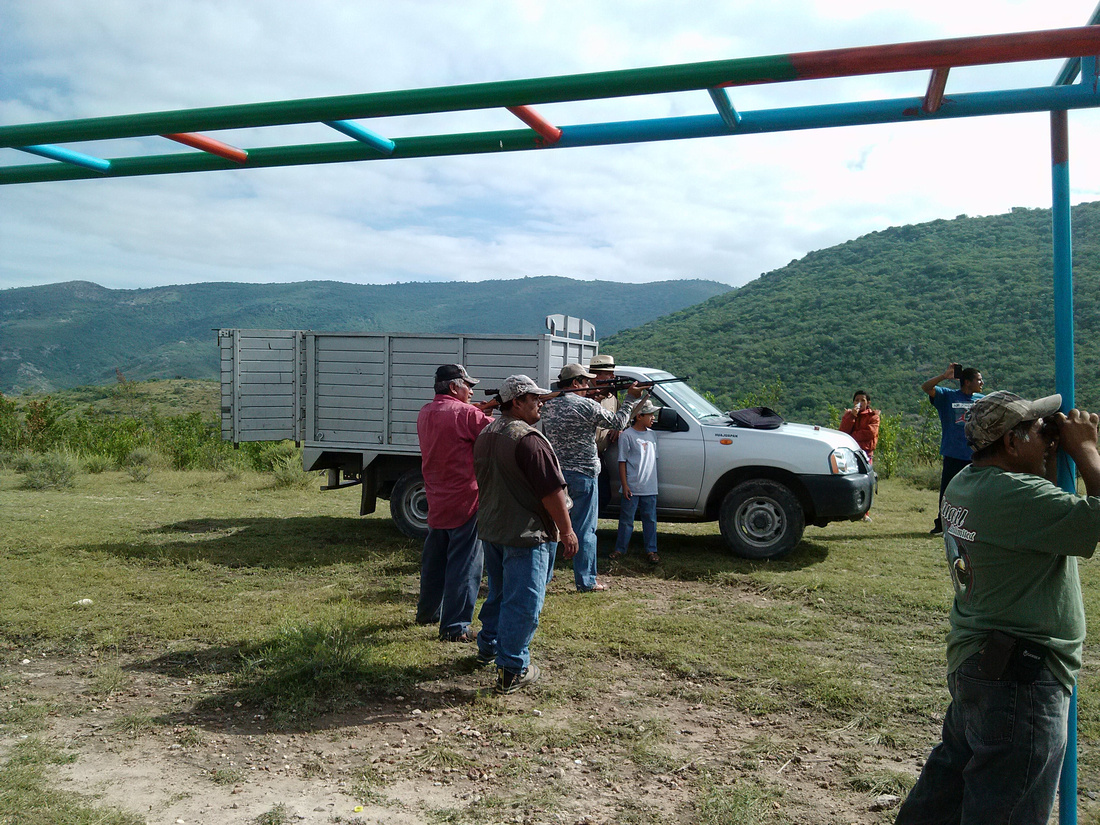
Skinning the goat.
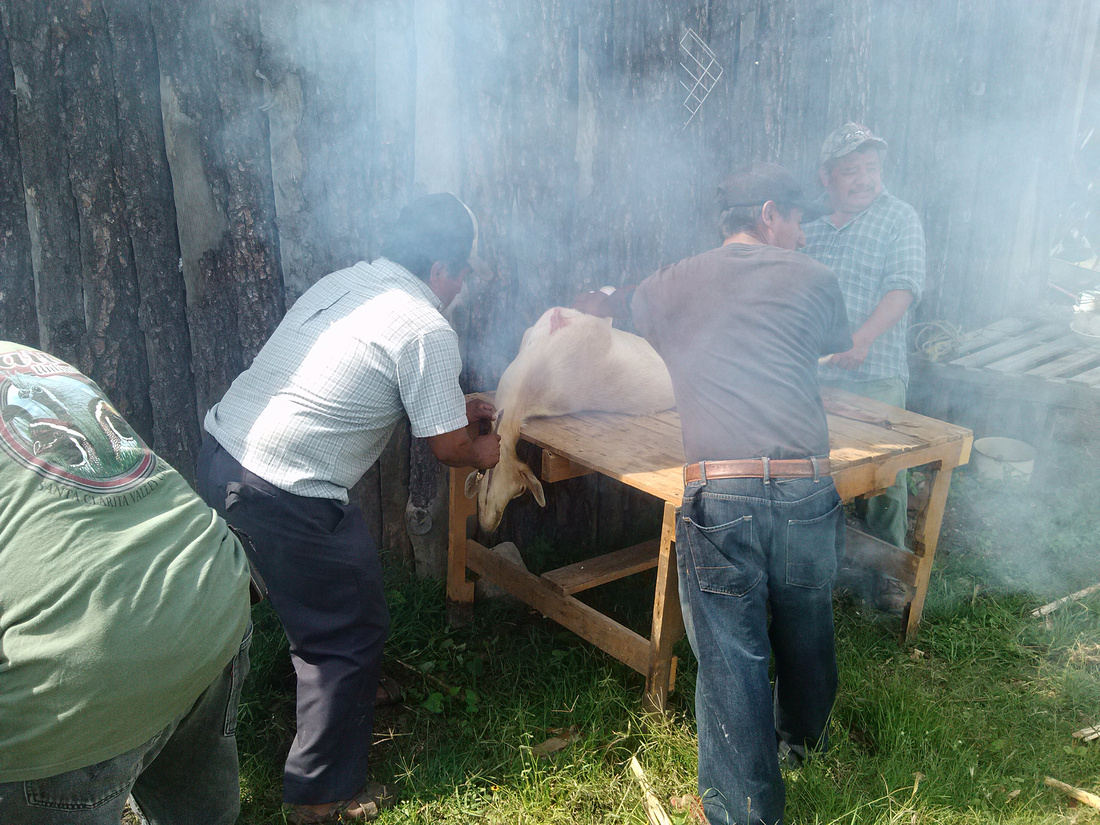
This tub was placed on the rocks. I'm not sure what the liquid was but it didn't look very appetizing.
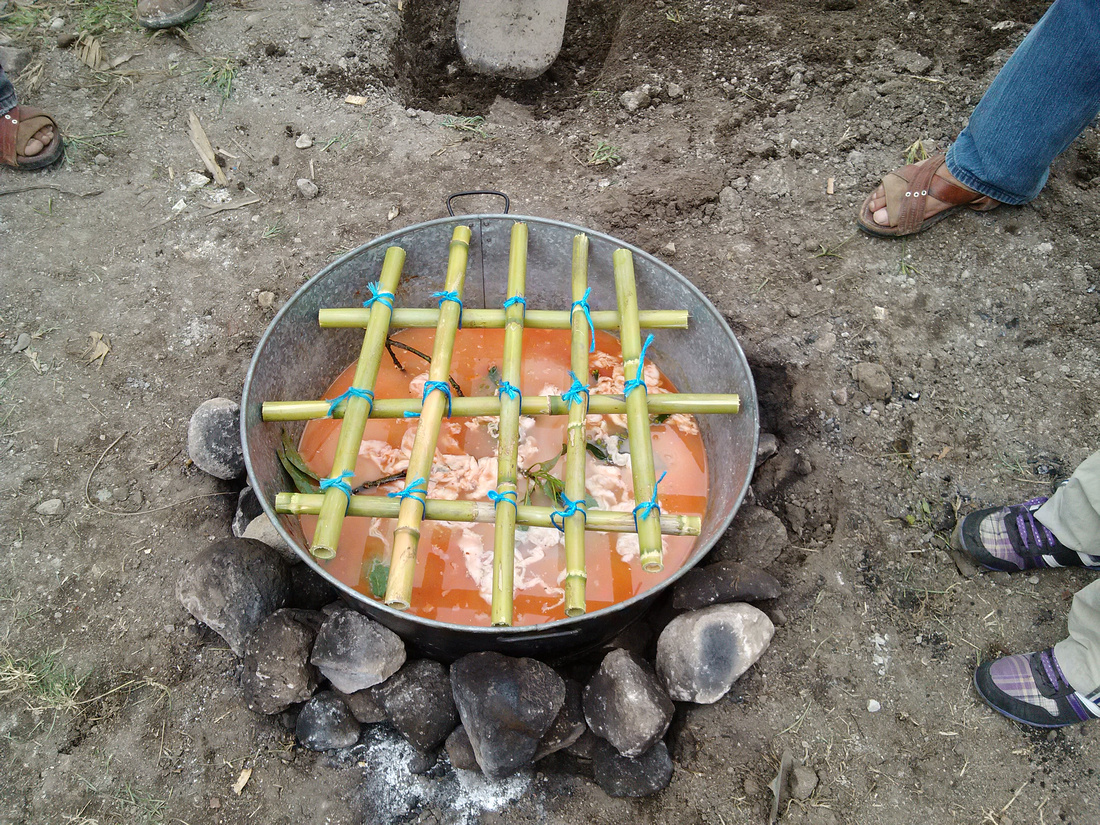
Meat was placed on the carrizo to be steamed by the boiling liquid.
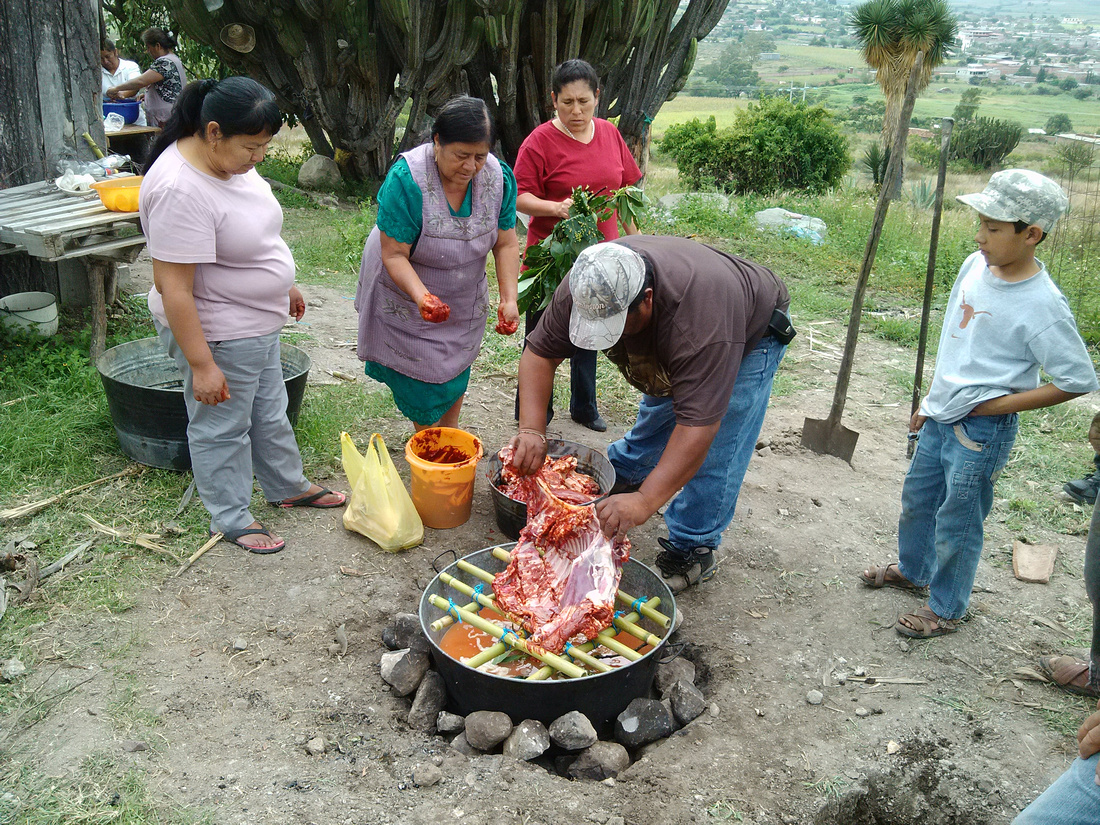
I believe the contents of the yellow bowl was fat from the goat.

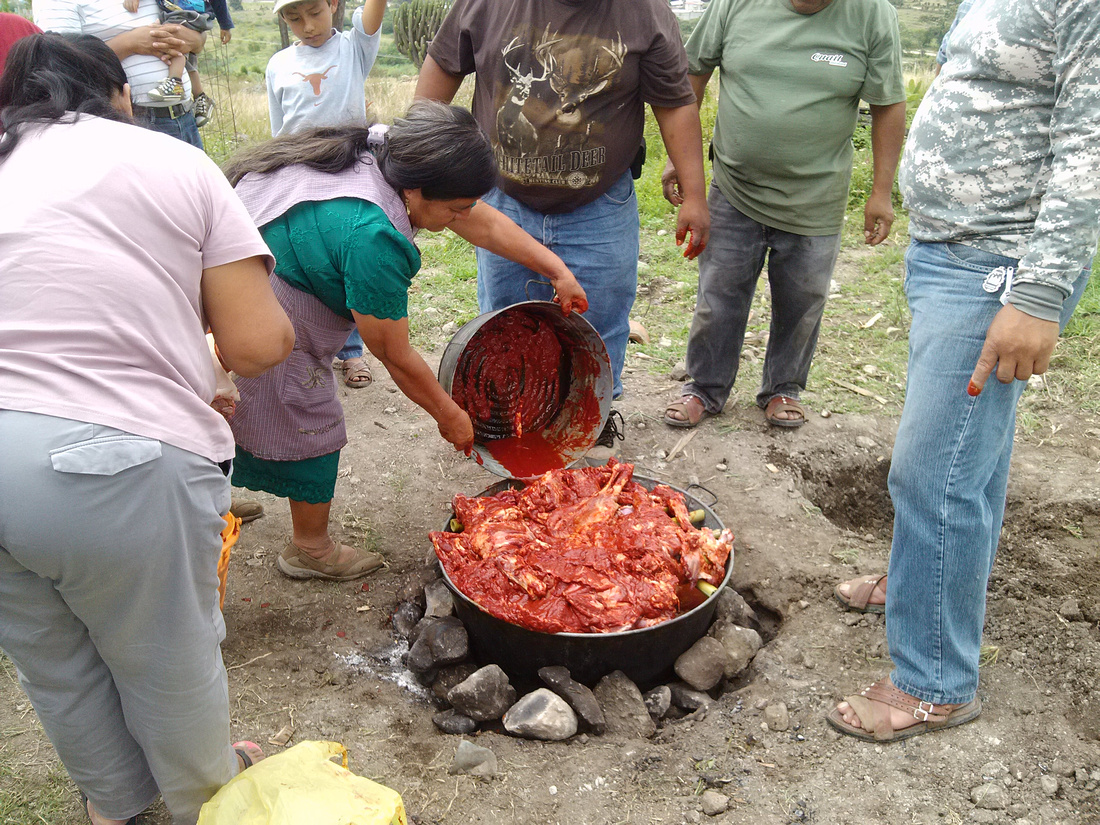
Cleaning the intestines.

A consume is made from internal organs.
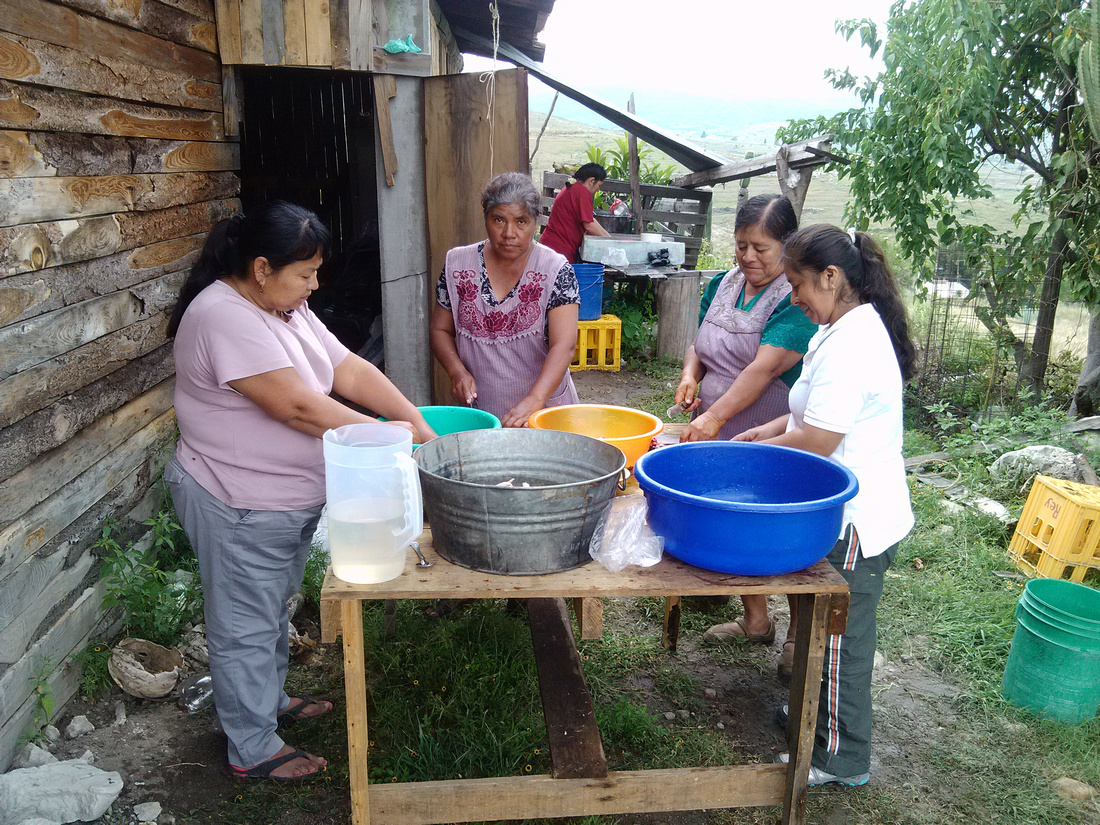
You could tell that everyone was familiar with the process. Everything was prepared very quickly. We left at this point, but I was told that it would take about four hours to cook. I believe I explained in another post that when we first arrived we tried to eat everything placed before us. That caused us a lot of stomach problems. As we've become closer to our friends, we've become a little pickier. If we are uncomfortable, we won't eat. Sometimes we feel uneasy sitting there munching on tortillas while everyone around us is eating. Eating meat that is freshly killed makes for a strong flavor. Not being accustomed to goat meat in the first place, the potent taste can be difficult.
Rainy season is petering out so we'll have to water our watermelons. I believe the ground is moist enough to bring corn crops to maturity. Beth and I continue to care for plants and trees. Brownie the dog that showed up about two months ago wandered off. We miss him and hope he is OK.
I've mentioned that our well water has a high content of alkaline. We are considering a reverse osmosis filter system. Beth purchased a Turmix juicer which is made here in Mexico. It's built with steel parts. Usually vendors who sell juice use the Turmix. The fast RPMs does a great job of extracting maximum liquid. After juicing the left over pulp is pretty dry and is a great addition to our compost. Not sure if the Turmix is available in the US, but we strongly recommend it. Beth has been experimenting with a variety of juices. We are fortunate that many fresh fruits and vegetables are available and of great quality.
Turmix Extractor

When Beth was in the States I ordered a Victorio Strainer and had it shipped to Micky's. We had one year's ago in Sedro Woolley. We processed and canned apples into applesauce, pumpkin into pie filling, blackberries and peaches into juice. Now that we are here with so much lovely fruit and veggies available, Beth had been dreaming of owning another. Beth packed her new one into her suitcase when she returned from Mick's. Last week we made a large batch of applesauce from local apples and froze it in small portions. No need to peel and core, nor to add sugar. We're excited to make pumpkin puree again from these calabasas.

The Mormon church is growing rapidly here in the valley. Tlacolula just built a building. It seems like everywhere we go in Oaxaca de Juarez, a new church has been built and of course there is a Temple in the city. We see missionaries often. They stand out in their white shirts and ties. I've been a little critical of the rise of Christian Churches here in Mexico but a moral compass is sorely needed. For many these new churches provide one.
It's rainy season again here in Oaxaca. Unlike last year we are seeing consistent rainfall. All of the farmers that depend solely on rain for their crops are content. In some fields corn has already reached four feet in height.
Numerous crops are grown here but corn and beans remain the staples. Several acquaintances here don't understand how Beth and I get by without growing corn and beans. The answer is that we don't eat a lot of tortillas and beans are inexpensive to buy. The black bean rules here in Oaxaca. Growing up eating pintos we prefer them. There is a bayo bean that is very similar to the pinto but holds together better when cooked. We eat bayos more often now than pintos.
We did plant a crop of peanuts and watermelons. The peanuts are growing very slowly but the watermelons are doing extremely well. We're hoping it stays warm long enough to allow the watermelons to grow and become sweet.
People walk around here hawking newspapers. Often the paper is unfolded so potential buyers can see the whole front page. The photos can be very explicit. Decapitations and car wreck victims are common. I'm reminded of the newspaper business in the 20s when headlines were shouted out by sellers.
While on the subject of selling. It's almost impossible to go to Oaxaca and not be approached by someone wanting to wash your windshield usually at a stoplight. I pay between 40 and 80 cents. Not sure what locals pay but if it's close to what I pay these guys do alright. I love watching them clean. They do a great job and very quickly. Some men work in pairs each taking a side then splitting the money. There are still people who put combustible liquids in their mouth then spray it on a lighted torch. I imagine all sorts of liquids are used and who knows what these fellows are doing to their insides. Jugglers sometimes dressed as clowns juggle at red lights then quickly go from window to window for tips.
So many scenes here reflect life from a hundred to two hundred years ago: men plowing their fields with bulls, old adobe structures, women carrying their cargo on the top of their heads, and countless other images. A profound contrast to this old world is the cell phone industry. Everybody seems have one. There are stores everywhere that sell phones and saldo. I can also purchase saldo now over the internet. Not sure if I related the story of being in Mitla and walking past a woman talking on her cell phone. As I passed her I noticed that she was speaking Zapotec. It struck me as odd. She was speaking in a language from the past on the latest technology. The contrast between past and present is also obvious when I see women from one of the outlying pueblos dressed in traditional clothing talking on a cell.
A friend of ours from Union Zapata passed into the US a couple of months ago with his wife and kids. It's his second trip. He crossed over several years ago and made America his home for over ten years. In the states he married, had two children, bought a nice truck, and saved enough money to build a home and small store here in Oaxaca. Things didn't go well when he returned to Mexico. I think our friend wasn't ready to fit back into life here in Mexico. It was very difficult to make the adjustments needed to survive here. The decision to return to America was a tough one. His parents are getting older and there is the distinct possibility they won't be around when he returns to Mexico. He called me from the States yesterday. I could tell from his voice that he was relaxed and happy. The family crossed the border with a few clothes and nothing more. He was proud telling me that he'd gotten his old job back. His boss had allowed him to live in a house until rent could be paid. He told me quite enthusiastically how they were beginning to acquire a few things for their home. They'd recently just bought a car. His wife has found work in the evening and their son (from a previous marriage) also has found work. The family is living the American dream. He is a very hard worker. Their goal is to work a few years in the States then return to their country and take another stab at making it here. I think of them as a poster family for immigration. They started with nothing but understand that with work and determination their dreams will come true. I saw this photo posted on Facebook and thought of our friend when I saw it. Basically it says, what is important is the will to overcome. I can't help but wonder why this philosophy is lost on so many Americans.

A new Walmart Superstore is being built on the east side of Oaxaca. This is great news for us as we won't actually have to enter Oaxaca to shop. Beth and I read and hear about how terrible Walmart is. They don't pay enough, they treat their employees badly and so on. We've always liked Walmart. They offer goods at a low price and provide work for unskilled people. I doubt you'd hear people complaining about Walmart here. Workers are thankful to be employed and prices are very competitive.
Beth and I tried to go to Sam's Club the other day but couldn't enter the store. The teachers were protesting and had blocked off the entrance. The store finally closed its doors probably to avoid any conflict. As I've said before I think the teachers are very selfish. It's summer now but we've heard that many villages are going to refuse teachers who miss school to participate in protests. In the past teachers would miss weeks protesting. Schools were closed and teachers still received their pay. The sacrifices parents make here to send their children to school is much different than in the US especially at the high school level. Books must be purchased, no free lunches, parents pay for transportation, and parents buy school uniforms. Many schools don't have a custodial staff. Parents clean the schools in the evenings. When a child graduates from high school here it is truly something to be celebrated. I had the opportunity to talk to a husband and wife who are both teachers. They told me that causing disruptions is the only way they know to get the attention of the Government. While I was sympathetic to their complaints I am still wary of their methods.
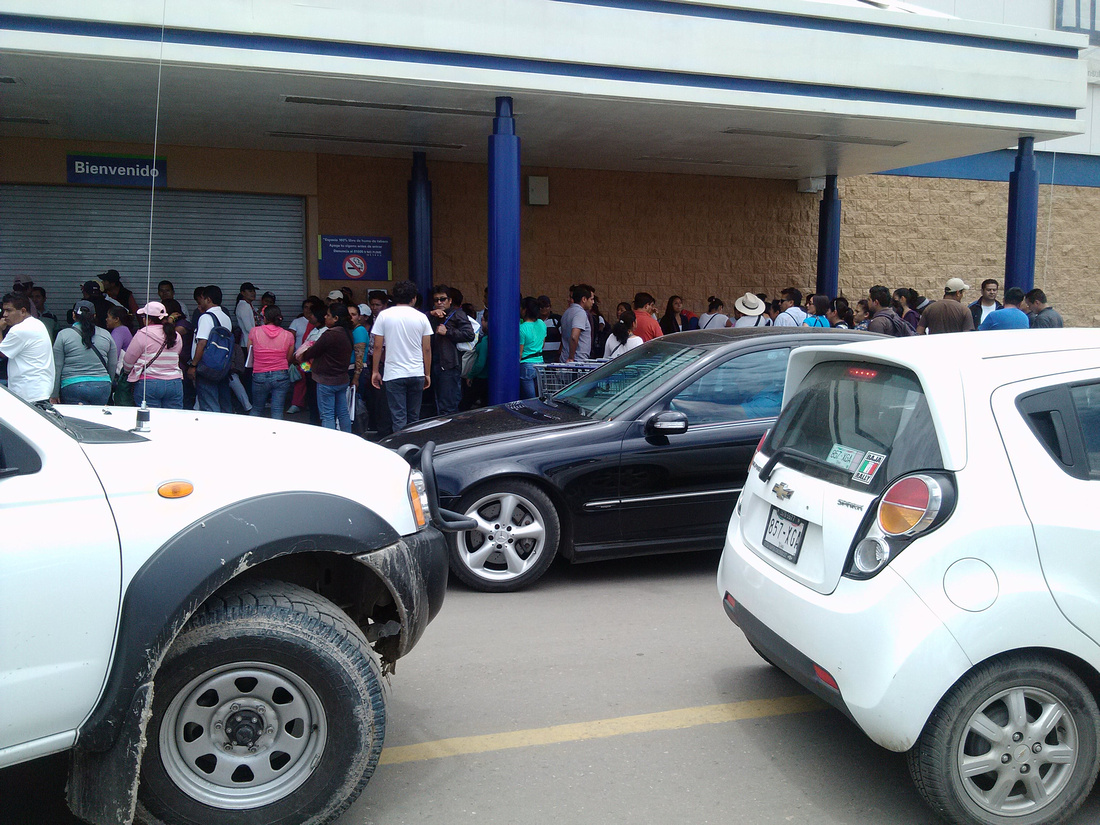
I've mentioned Cuajimoloya before. It's a little village about an hour and a half off the freeway towards Veracruz. We have a history there. Back in '94 we attempted to buy property. The seller was willing but the town was not. We drove up there again the other day.
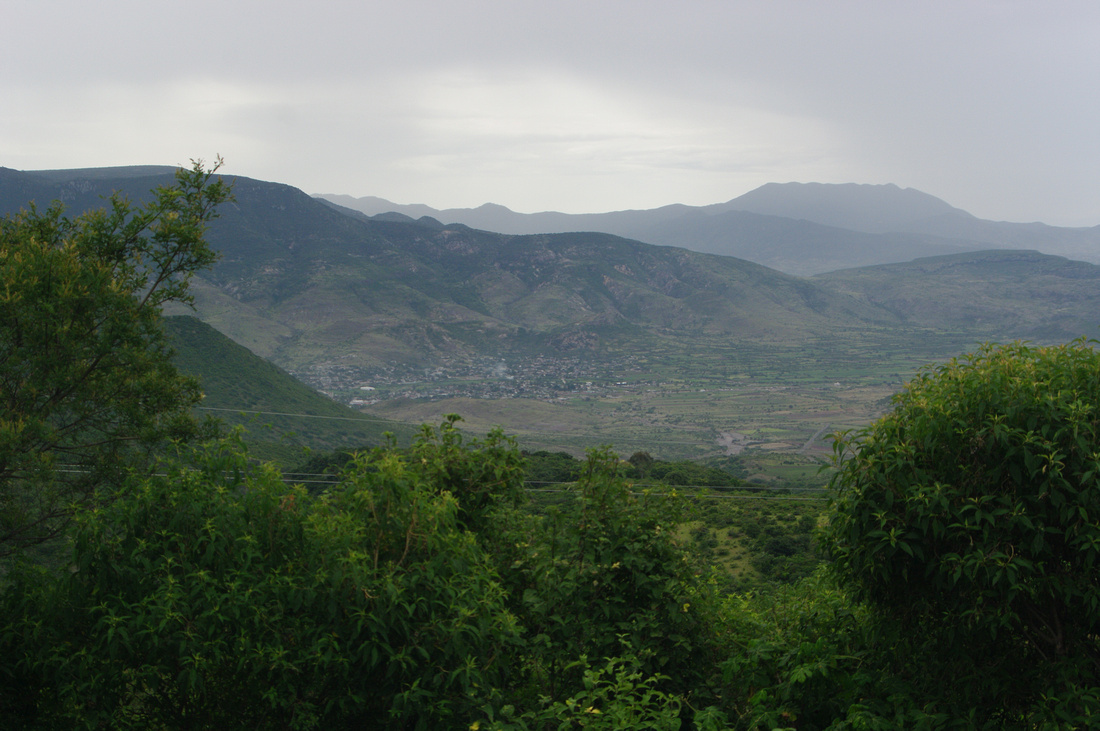
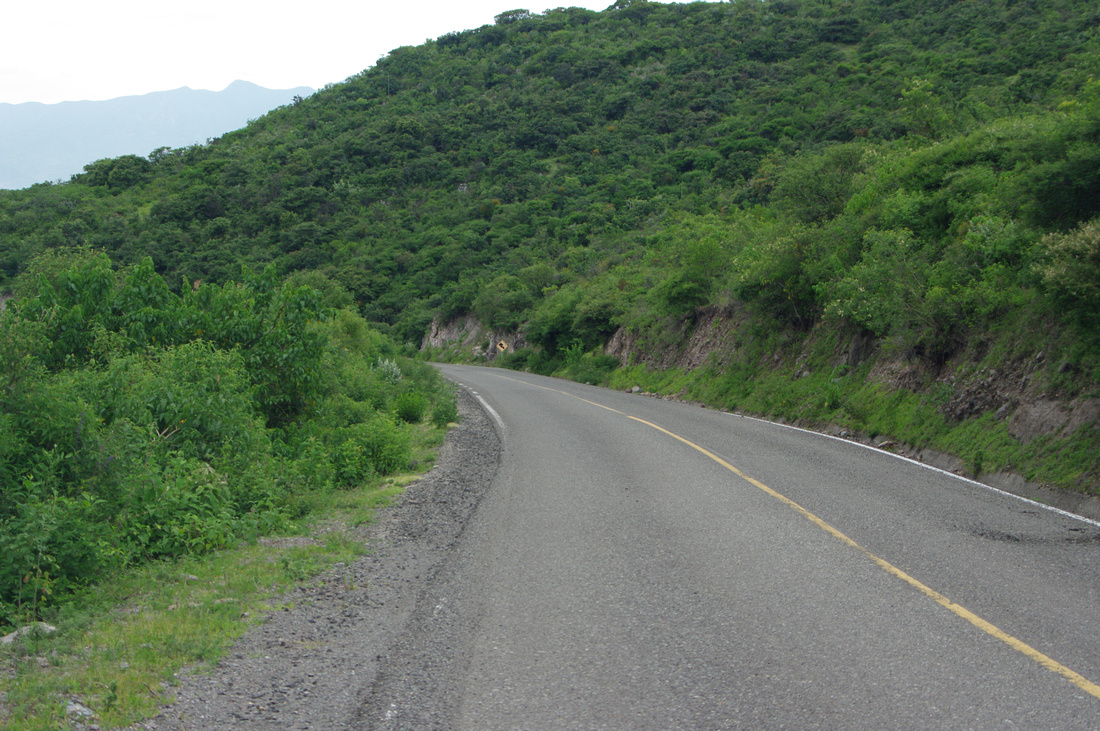
Many of the valleys here are gorgeous.
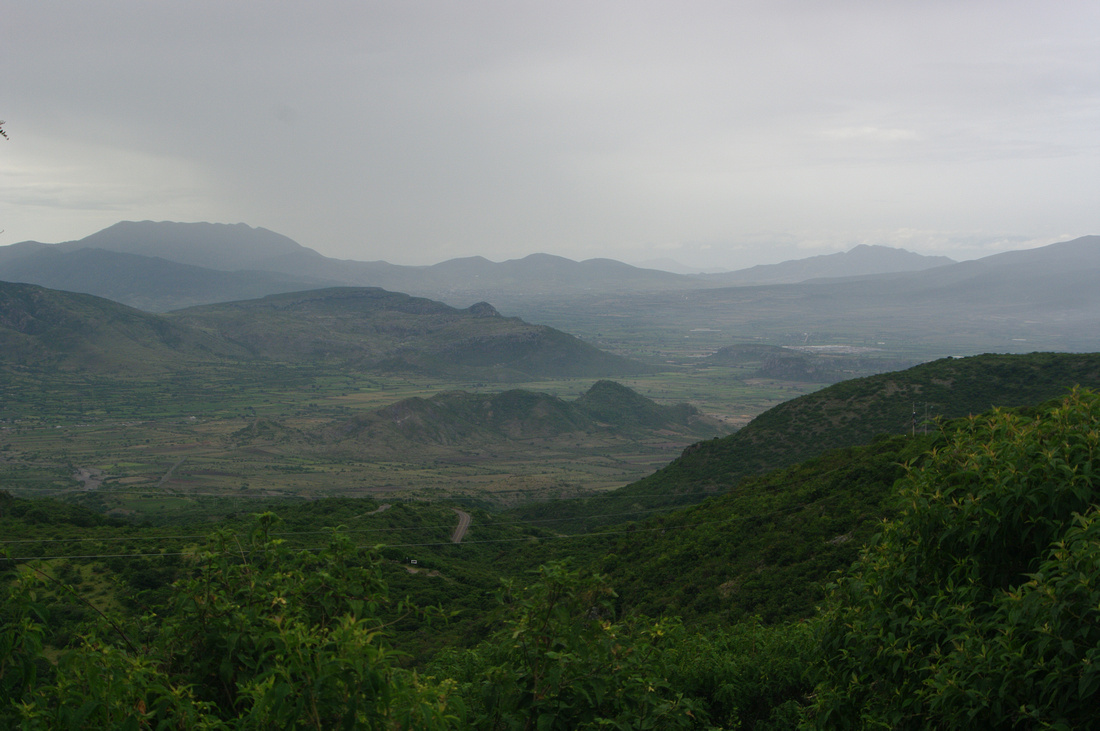
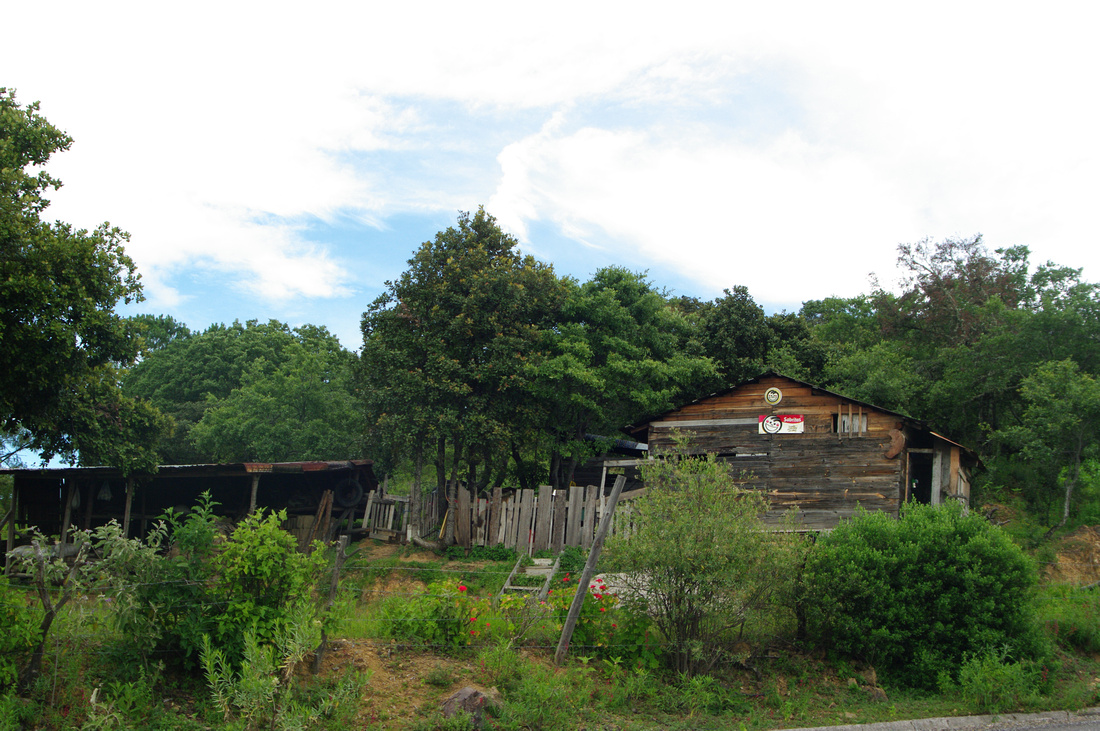
We took Brownie who showed up at our house one day and decided to stay (we feed him well).
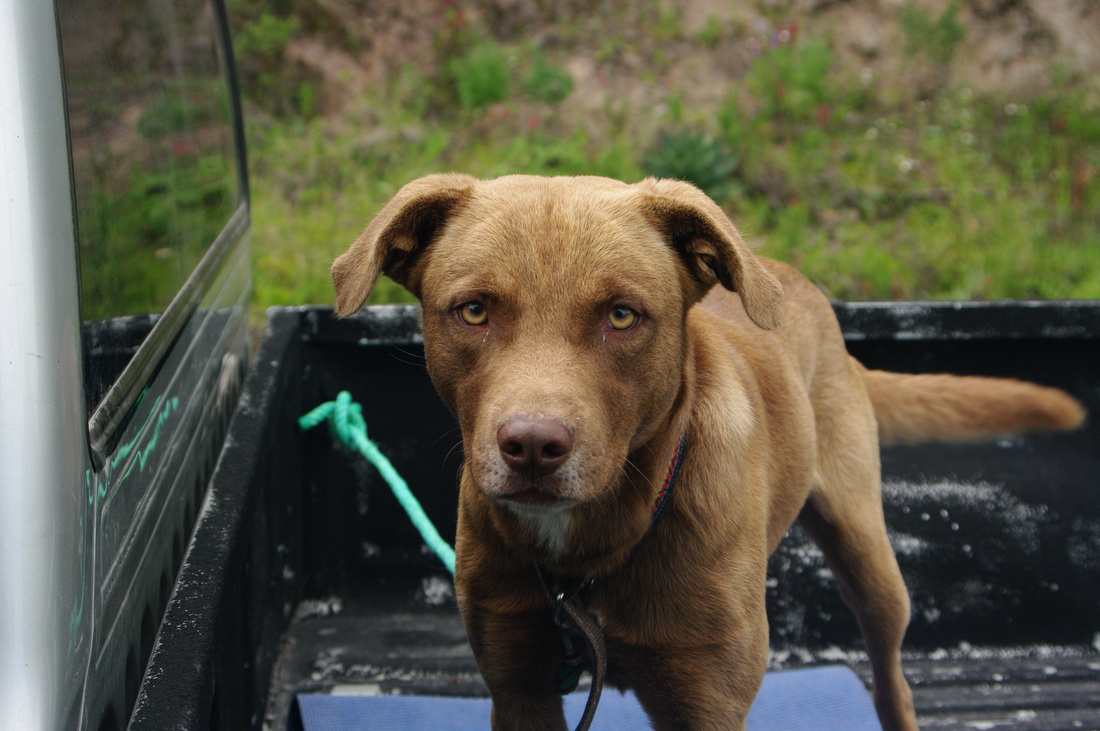
The entrance to Cuajimoloya. It must me about nine thousand feet elevation.
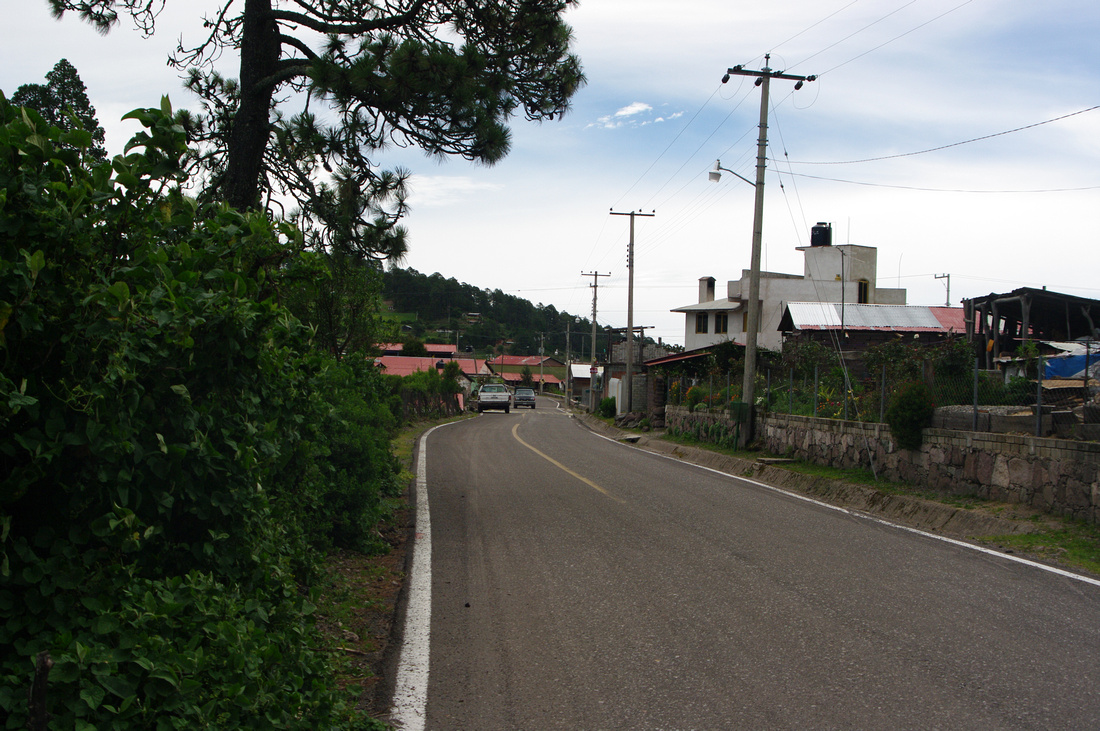
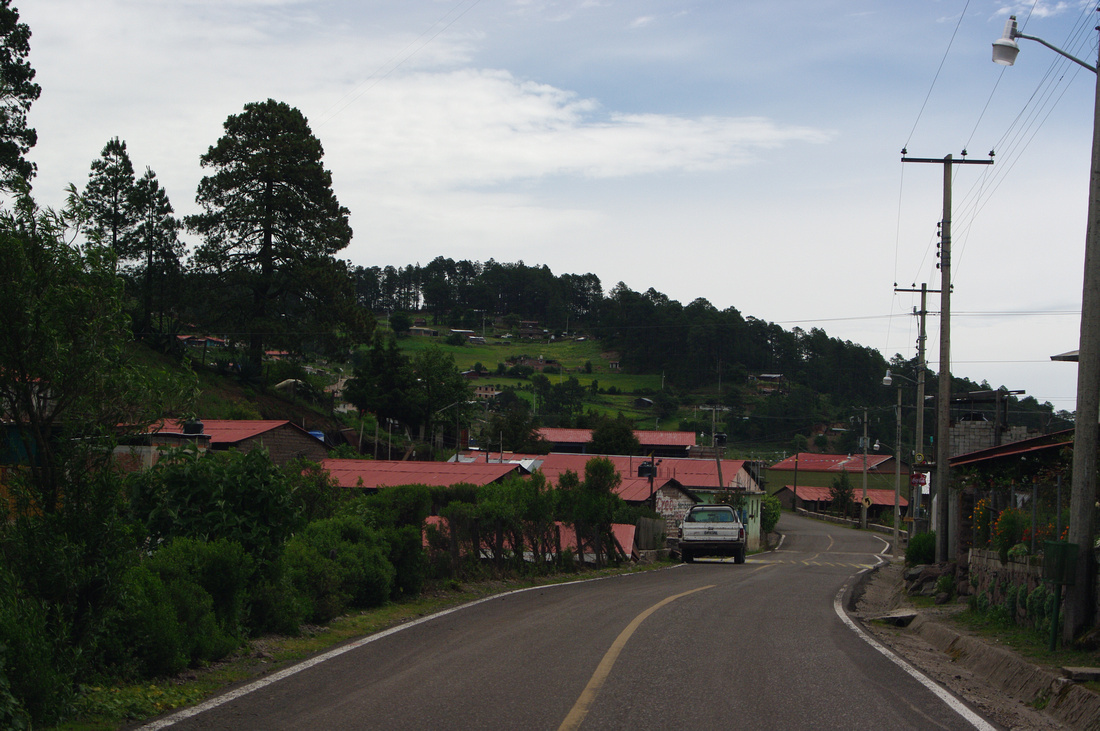
I wouldn't expect this hotel to cost more than twenty dollars a night.

The villages in the mountains are very different than the villages in the lowlands. The most obvious difference is the use of lumber which is very rare in the lowlands. I've always felt like life in the mountains is a slower paced life whether Zapotec or Mixe. Cuajimoloya is part of an Eco-tourism program here in Oaxaca. The influx of tourists has certainly seemed to help economically and I suspect tourism is responsible for a more progressive attitude.
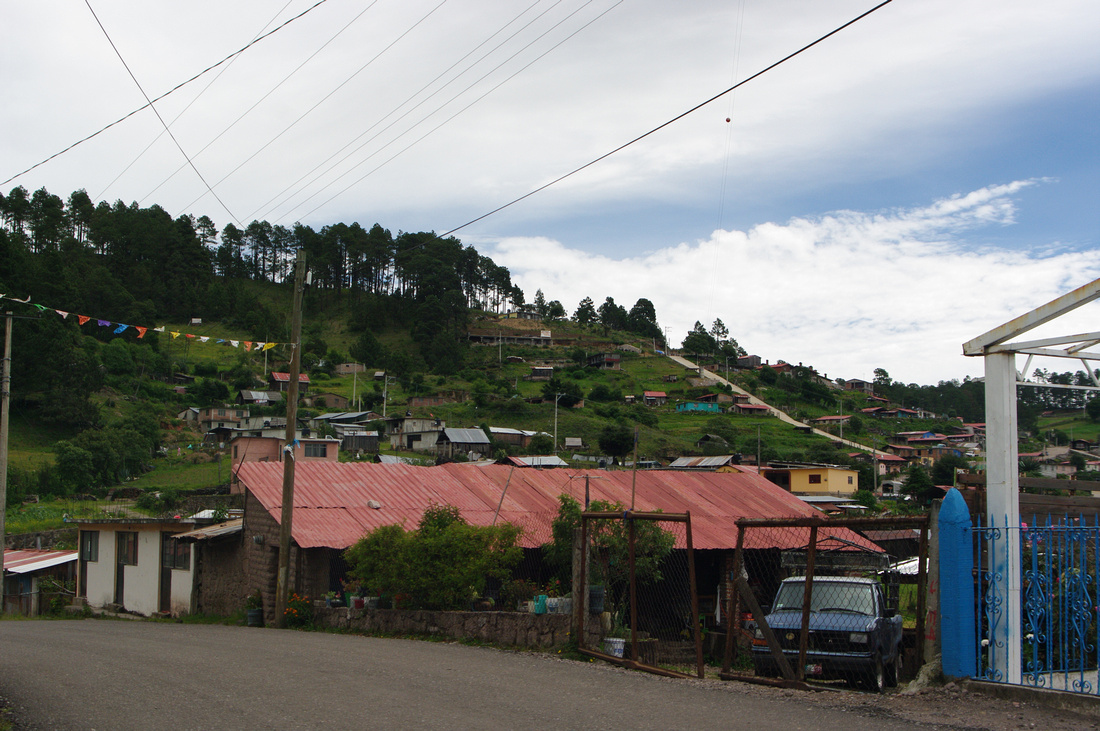
I don't believe I've ever been to a town that didn't have a Catholic church. The surrounding area where we live is not religiously diverse. Almost everyone is Catholic. I can think of a few towns that have churches of other denominations but they are rare. There are Evangelical Churches, Seventh-Day Adventists, and Christian Churches. The Mormons have a new church in Tlacolula and we've seen several Mormon Churches in Oaxaca de Juarez which even has a Mormon Temple.


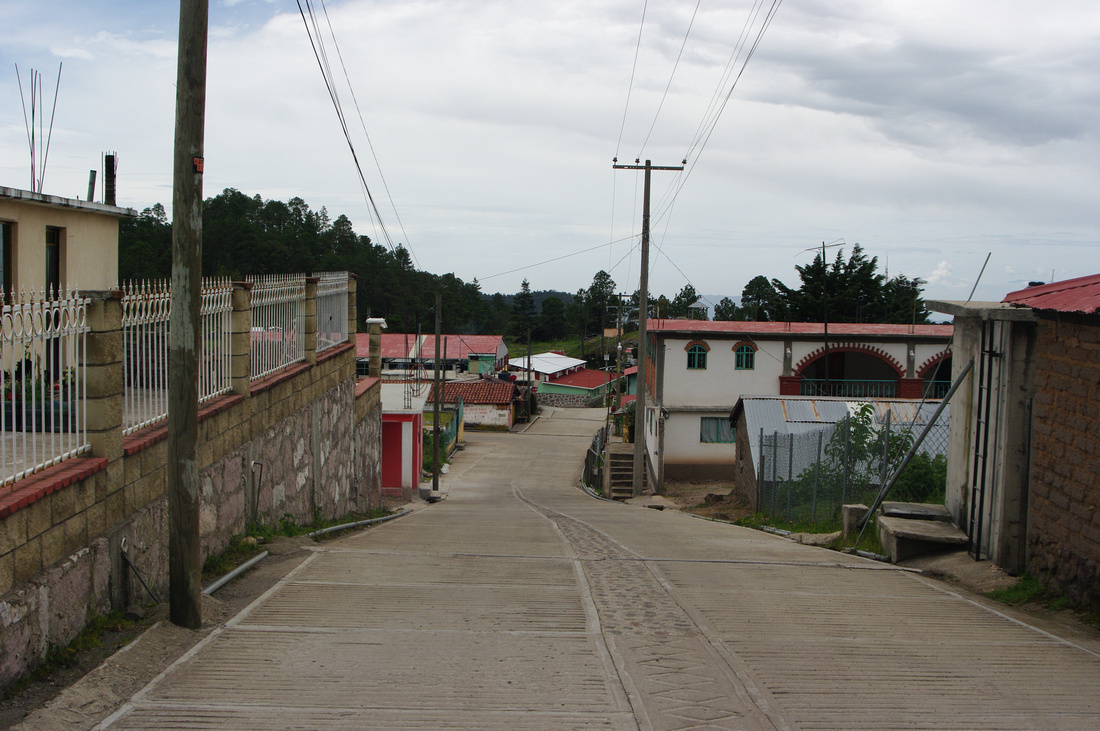
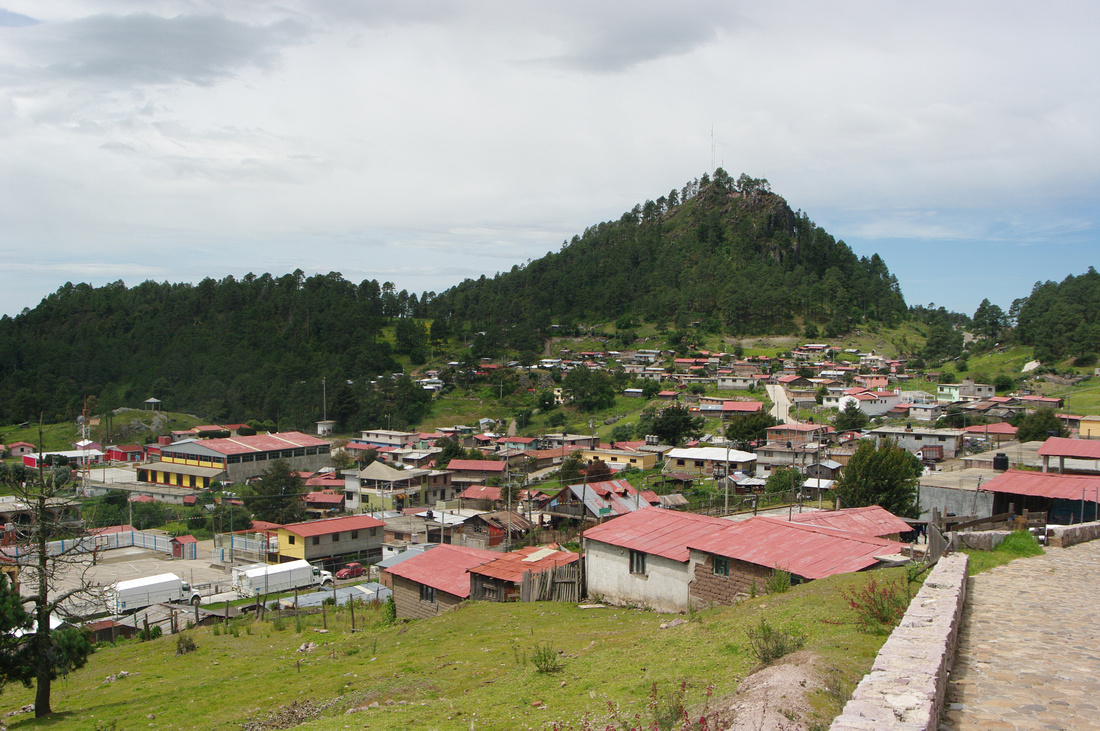

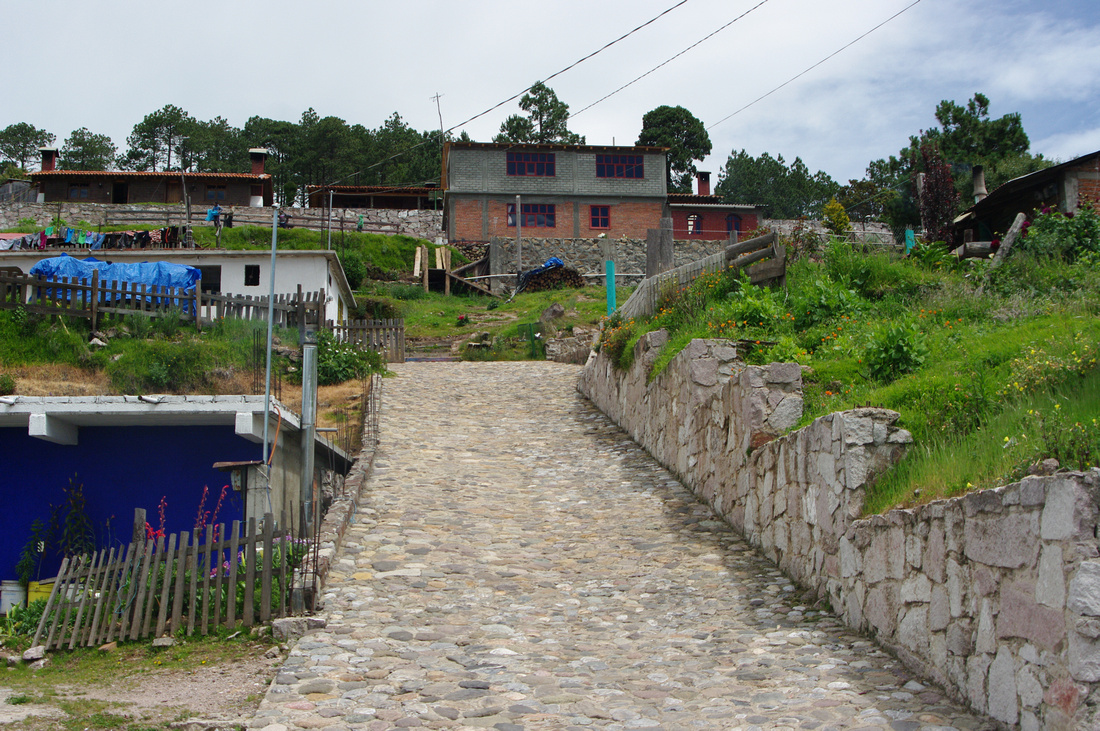

Cuajimoloya has some of the friendliest people we've ever encountered. It's changed a lot since '94. It's much more progressive now.
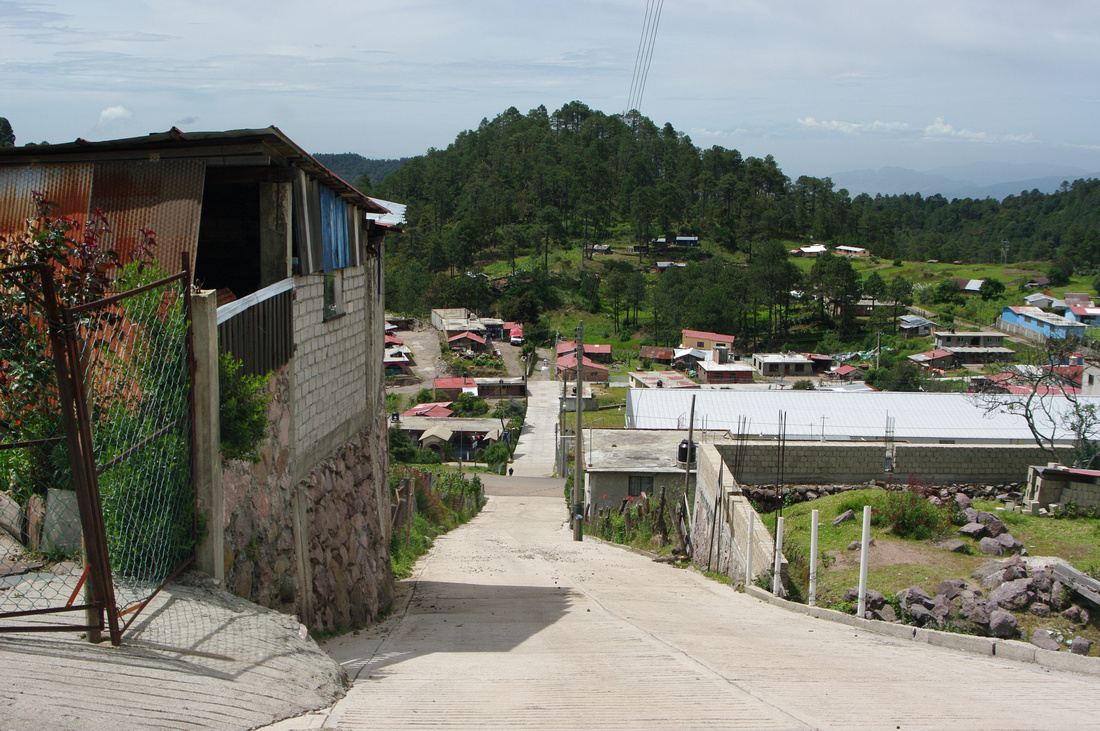
Those are pretty big Maguey plants.
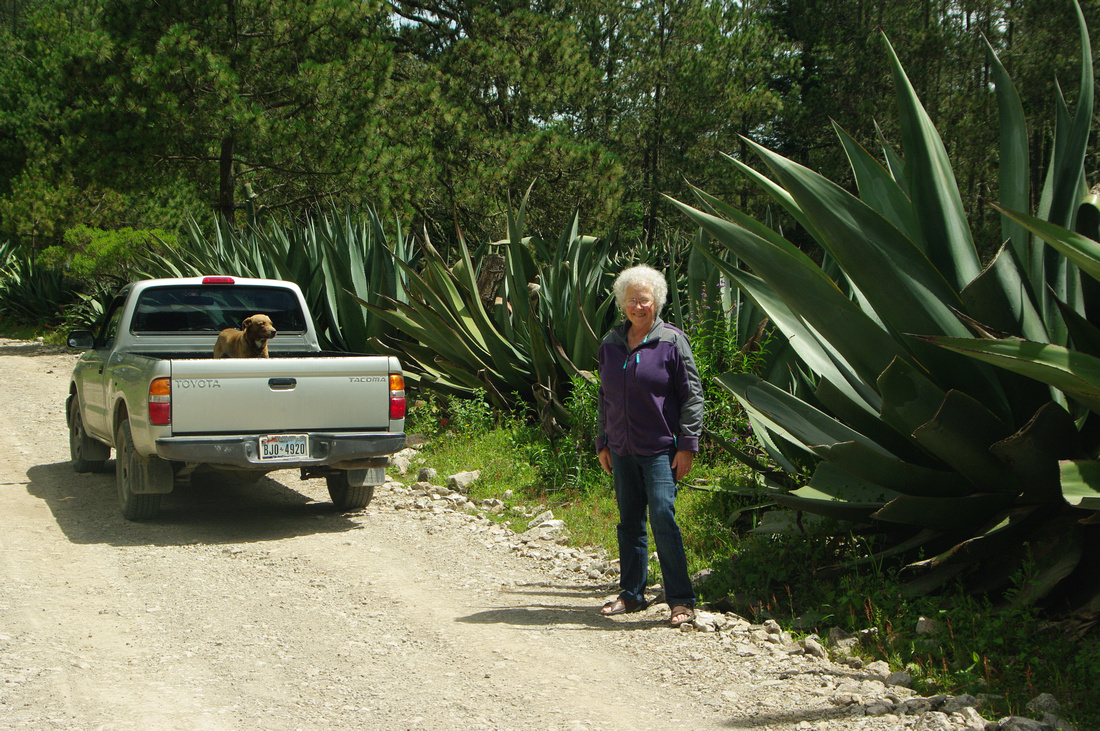
This old cabin reminded me of the mountain men in the early west.


Picturesque scenery is everywhere.
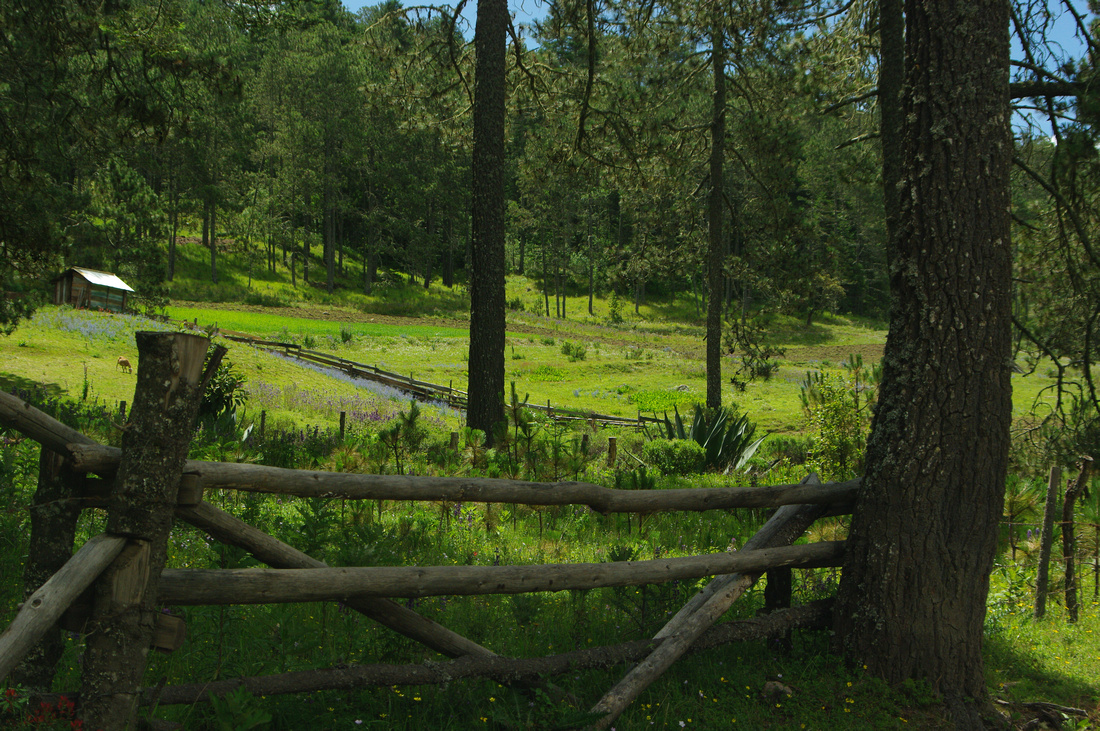


There are cabin rentals with power and water.
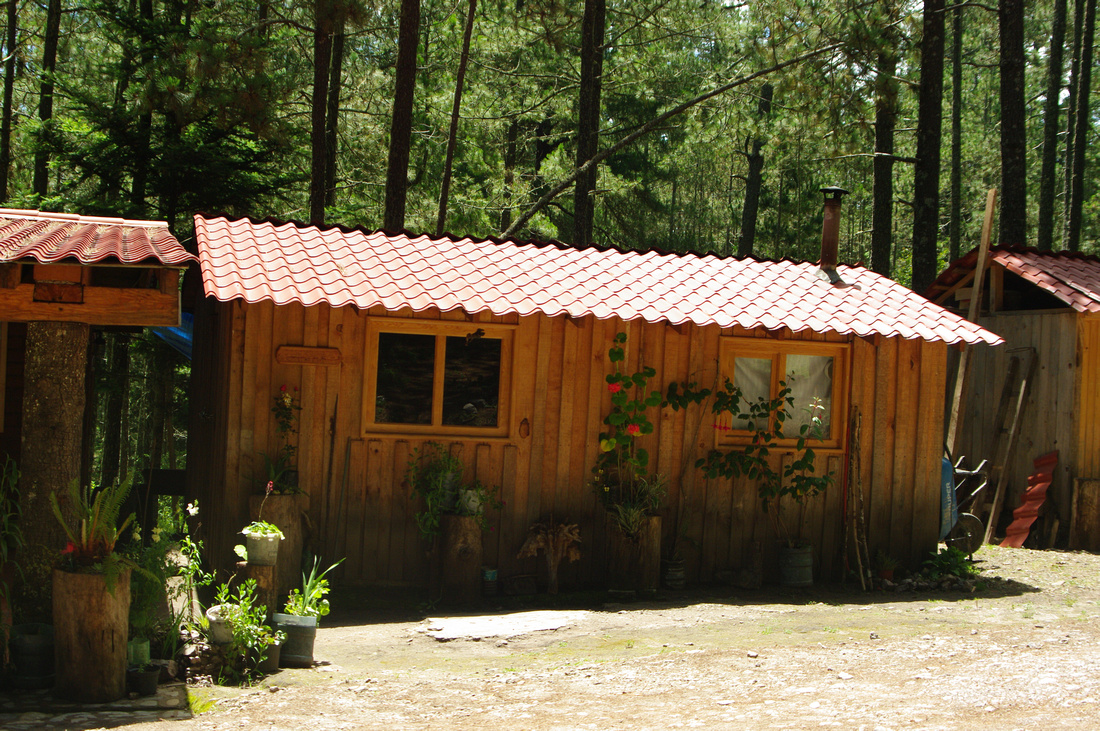
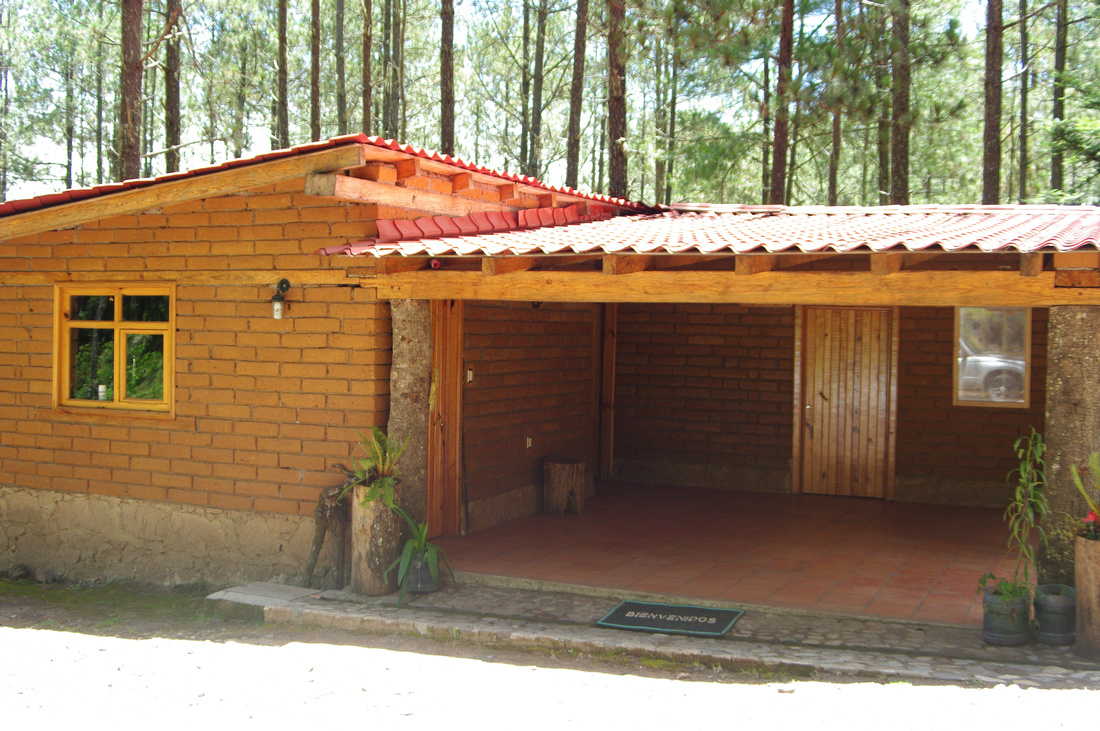
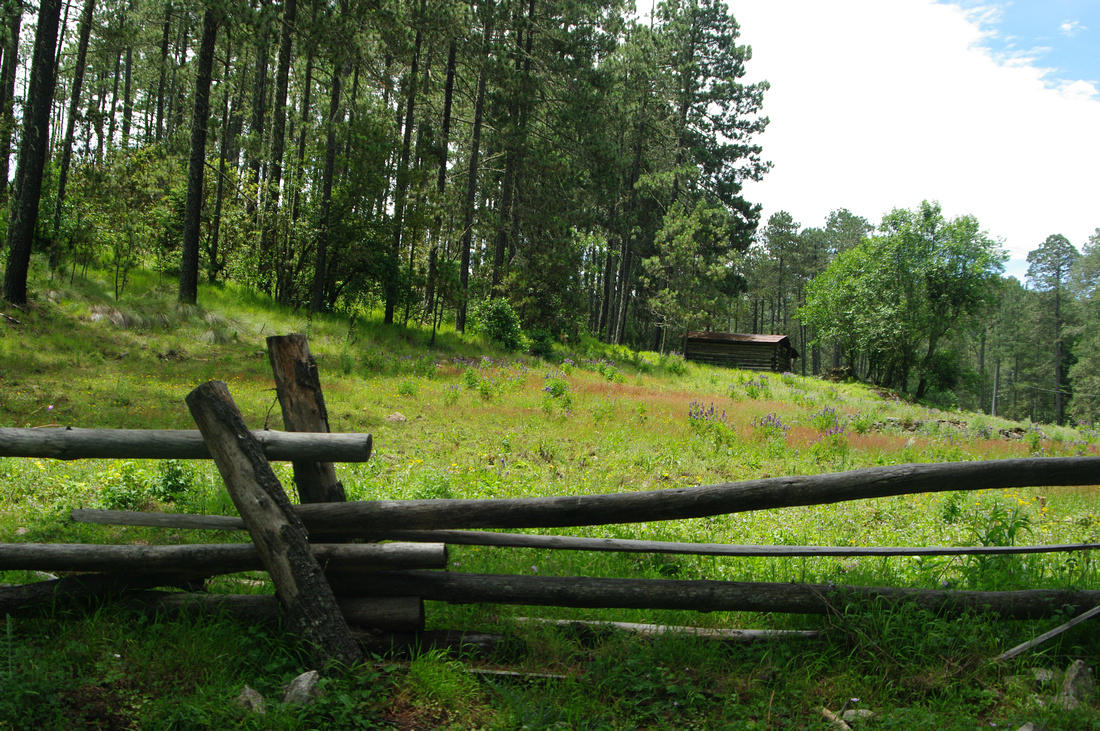
There are lots of wild flowers now during the rainy season. It's great to see the ground covered with pine needles.

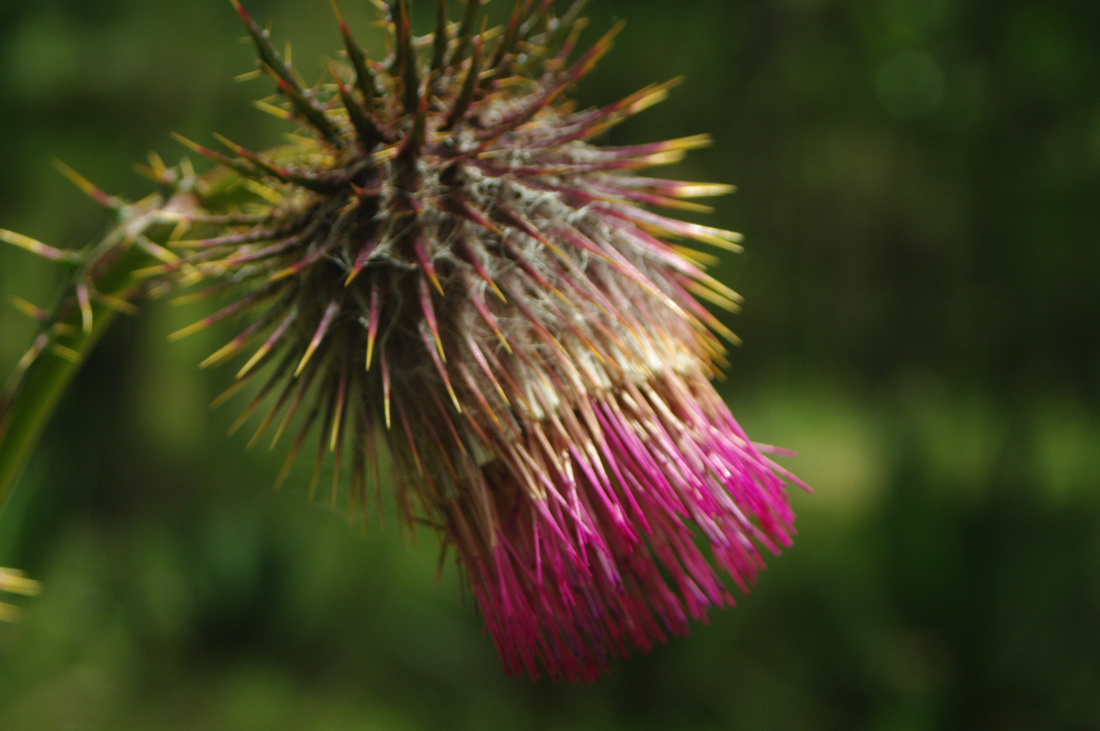

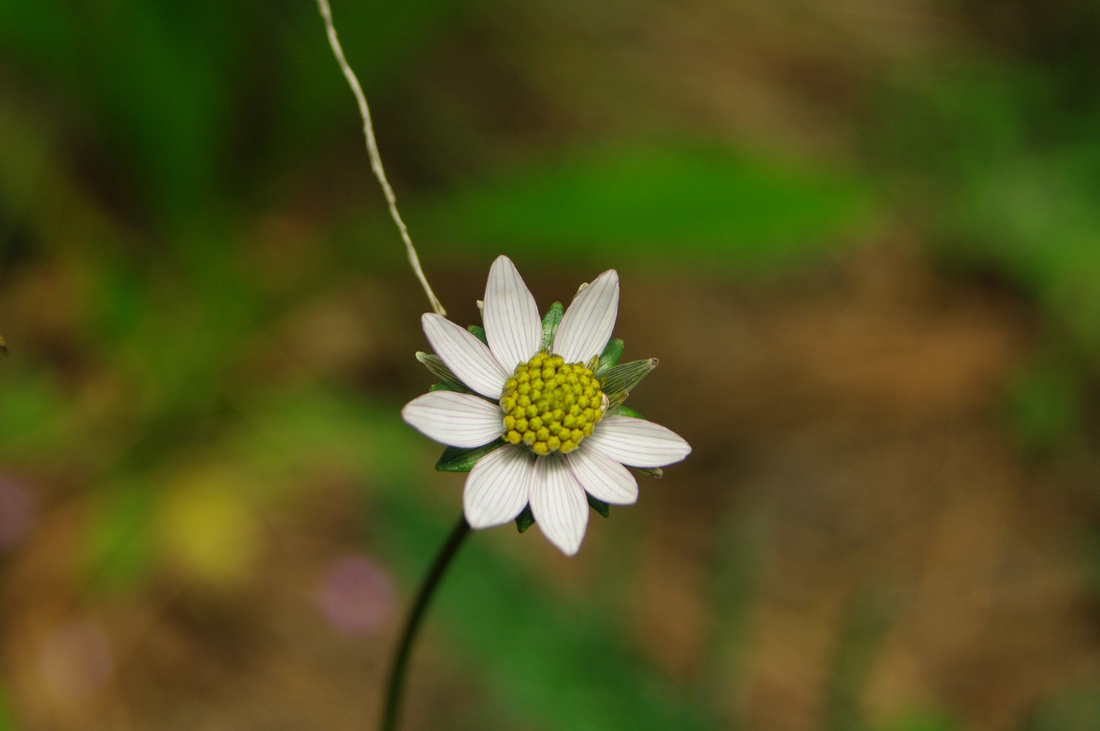
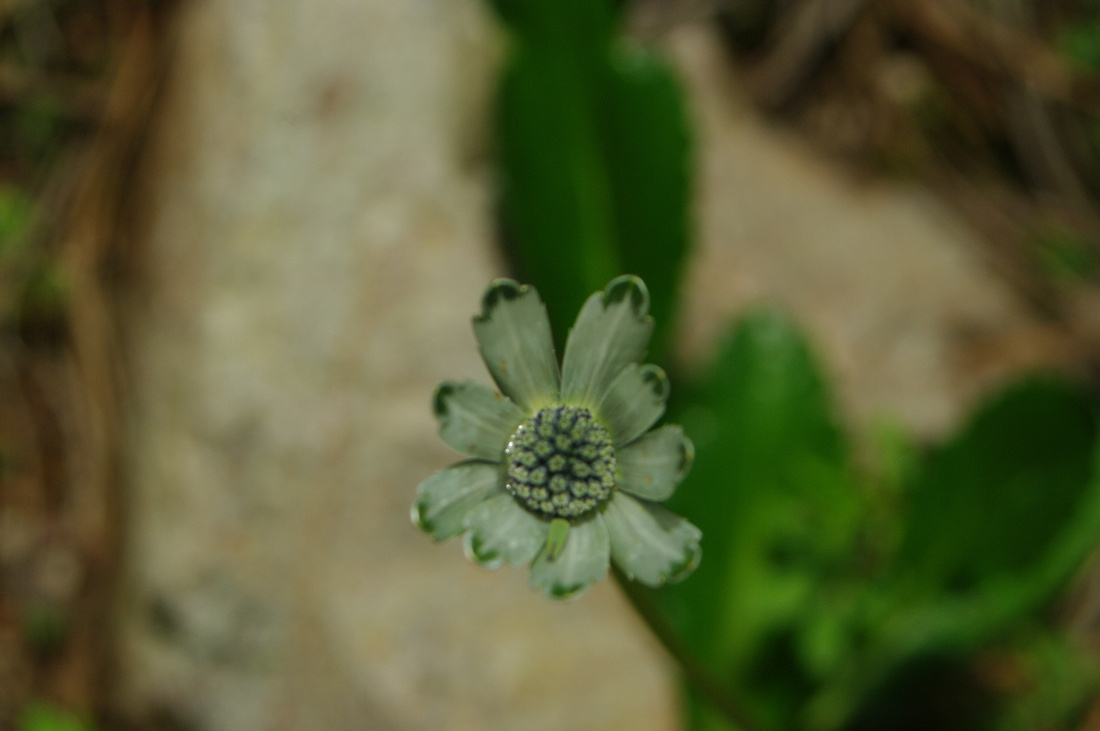
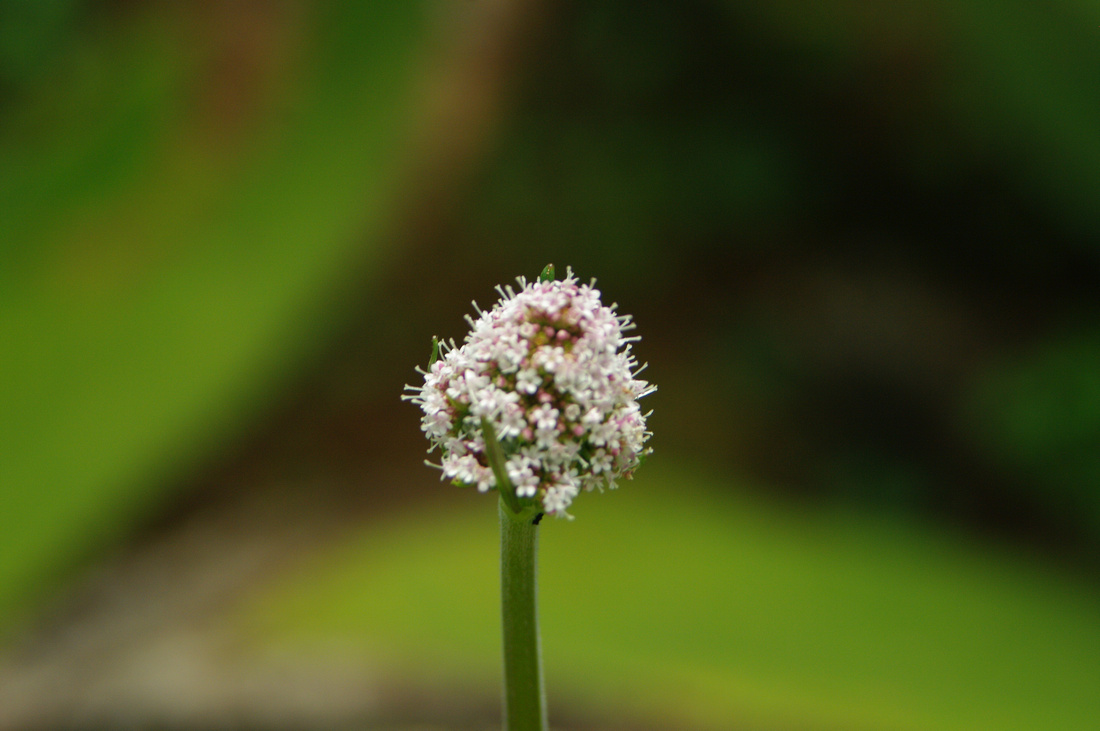

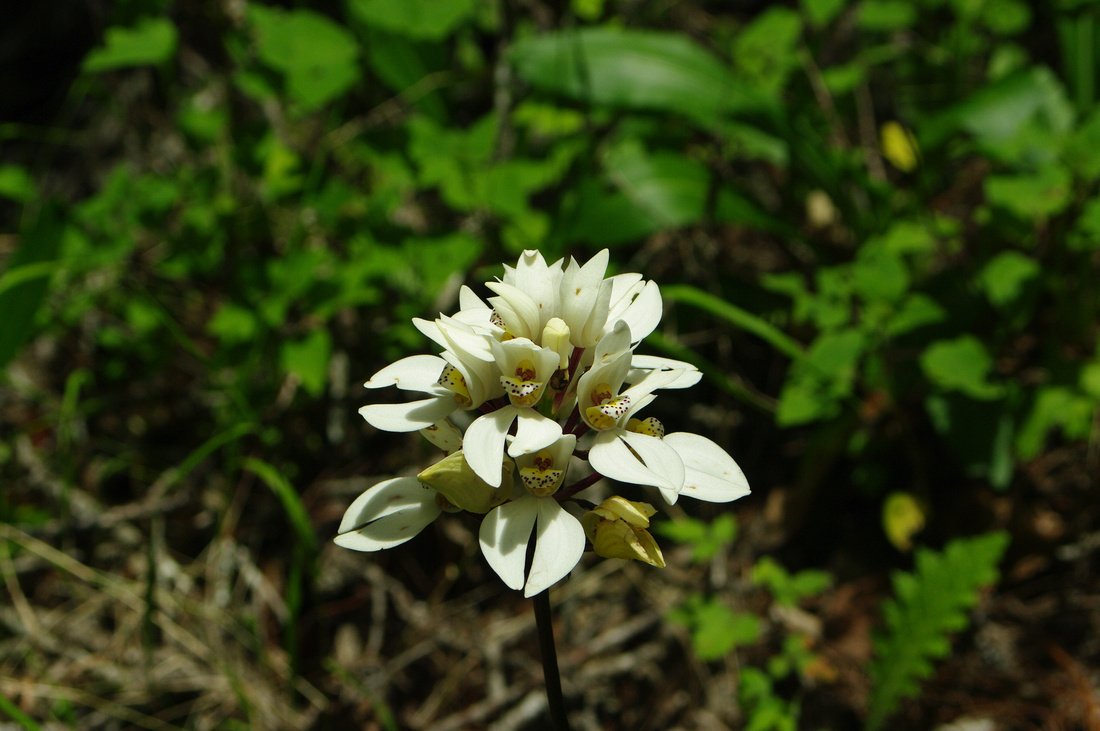
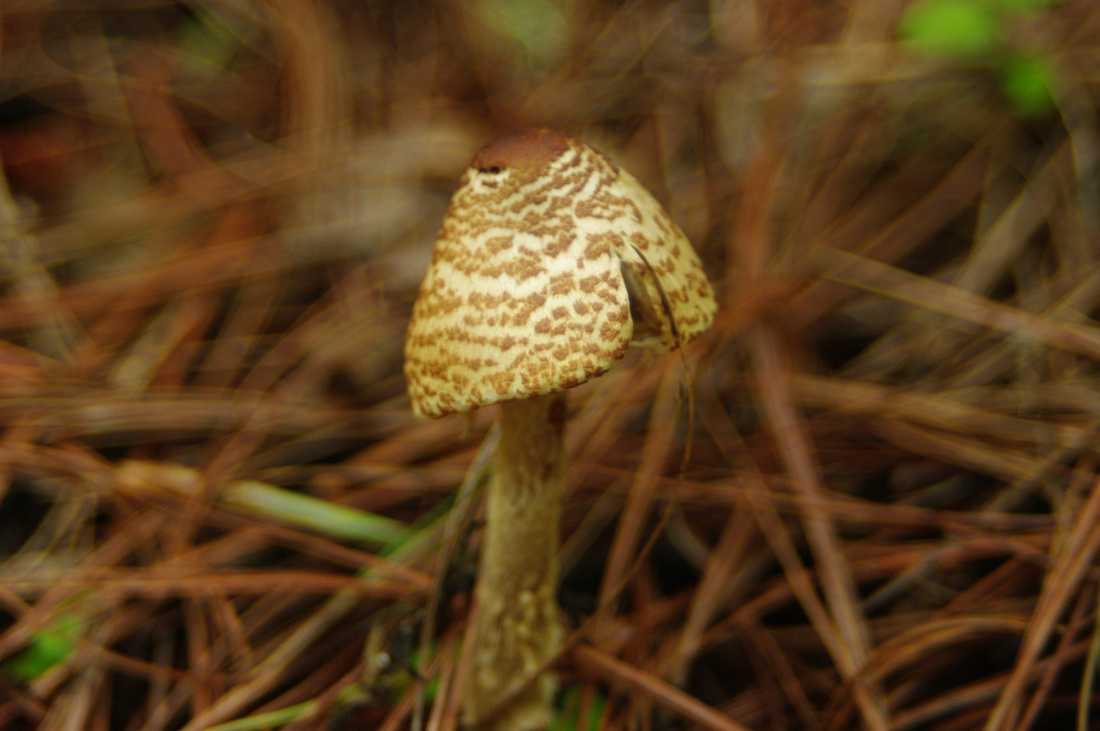

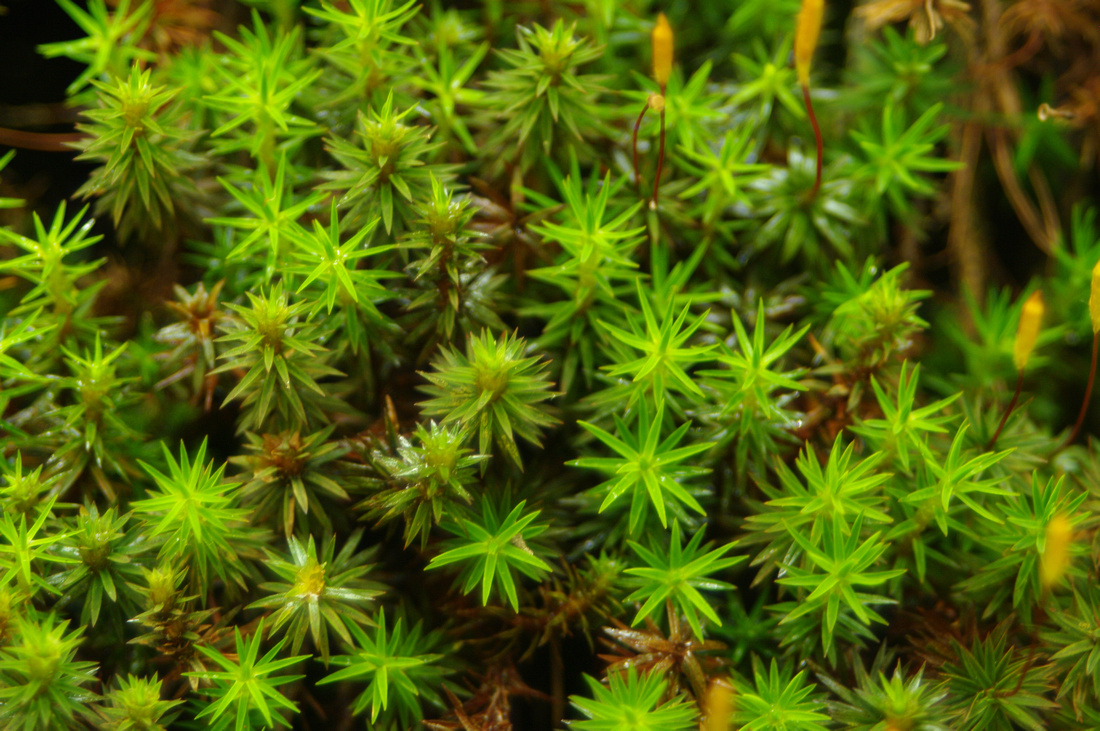
We ate at this restaurant. Don't know how they survive. It's in the middle of nowhere. There are a few log structures in Cuajimoloya. We love them.

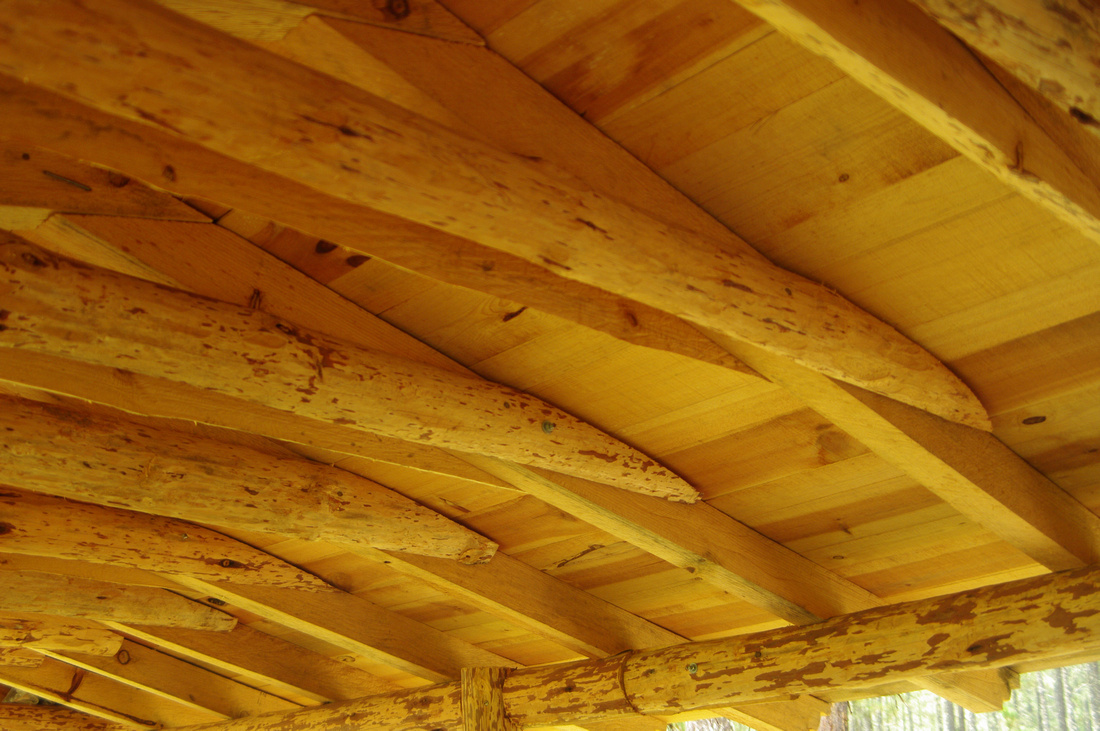

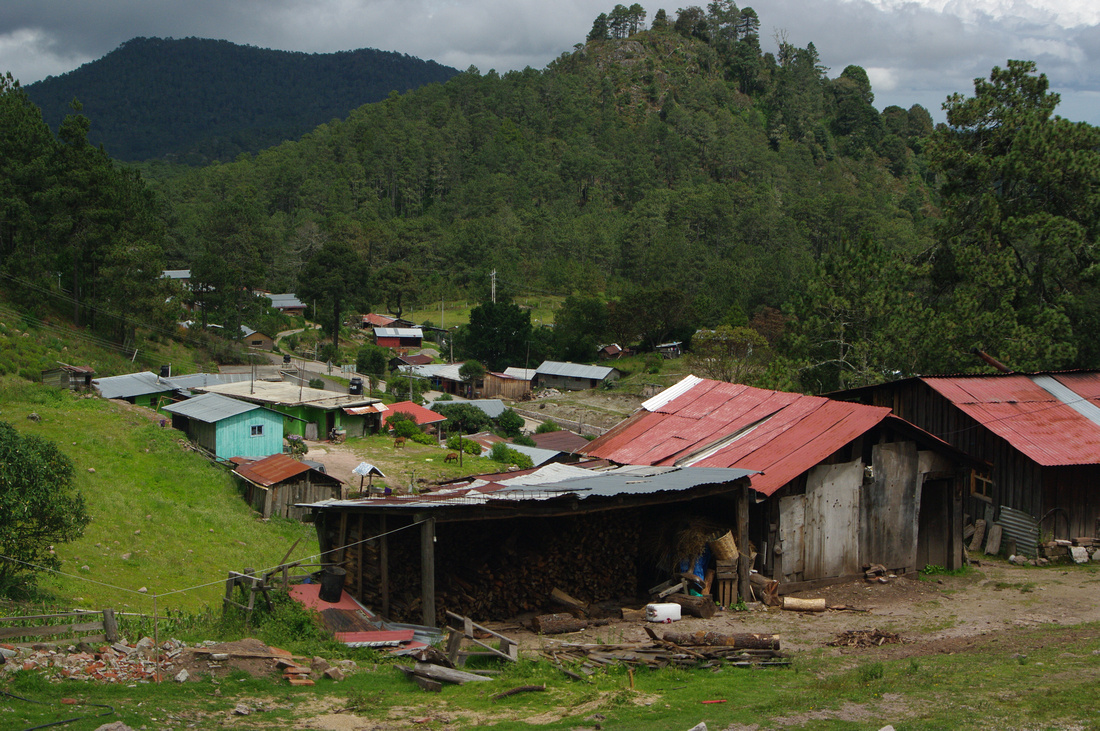
On the way out of Cuajimoloya, we ran into these ladies waiting for a taxi. It could have been a long wait! We took them into Tlacolula. Turns out they were from Ireland. We got to chat for a while. They'd been hiking for a week in the mountains. Many Europeans are not real friendly to Americans. These women were an exception.

Beth showing off a quilt, a crocheted blanket and baby beanie that she just made for Chris and Danielle's soon to be daughter Alysandra.
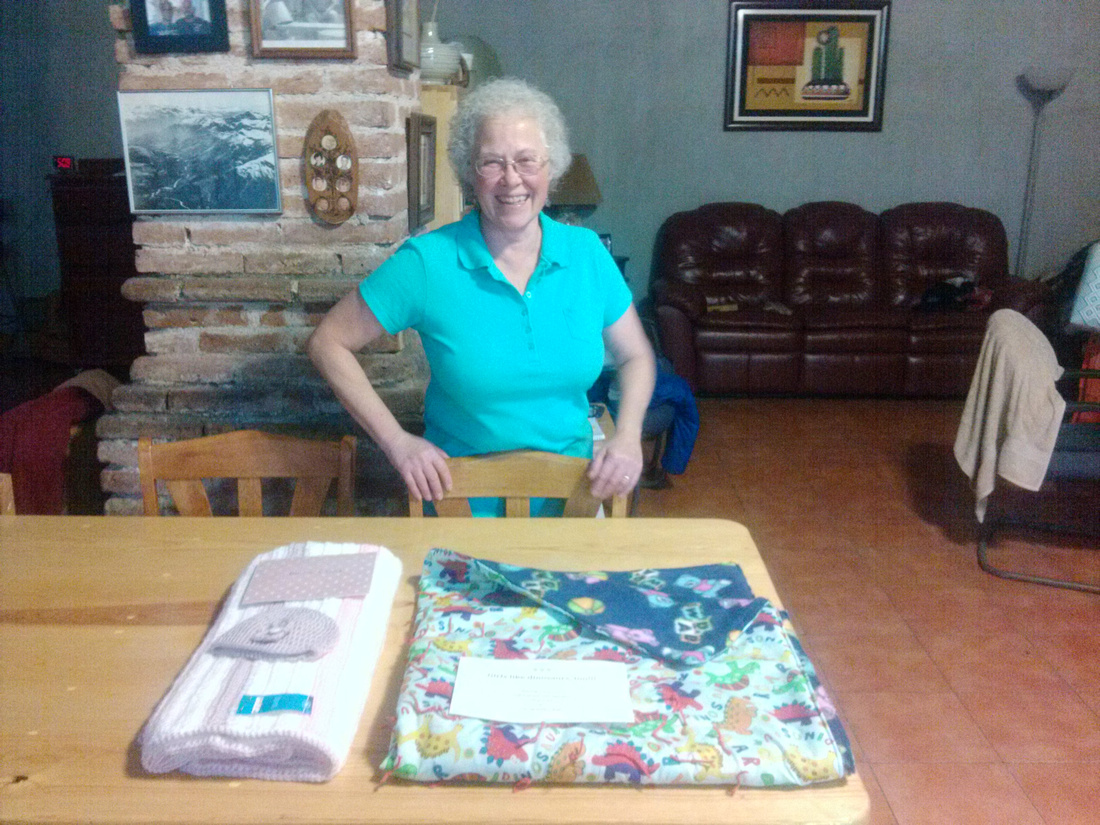

Beto took us to a river by La Reforma which is on the way to Tehuantepec. We played in the water and Beto's uncle fished.
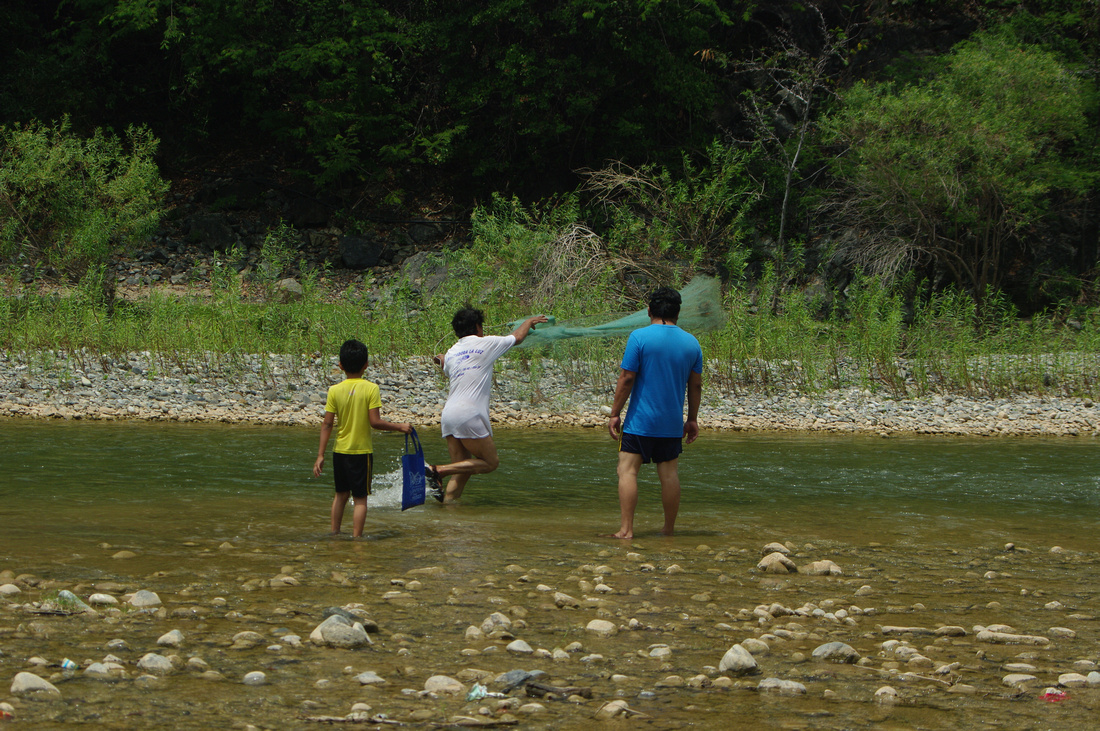
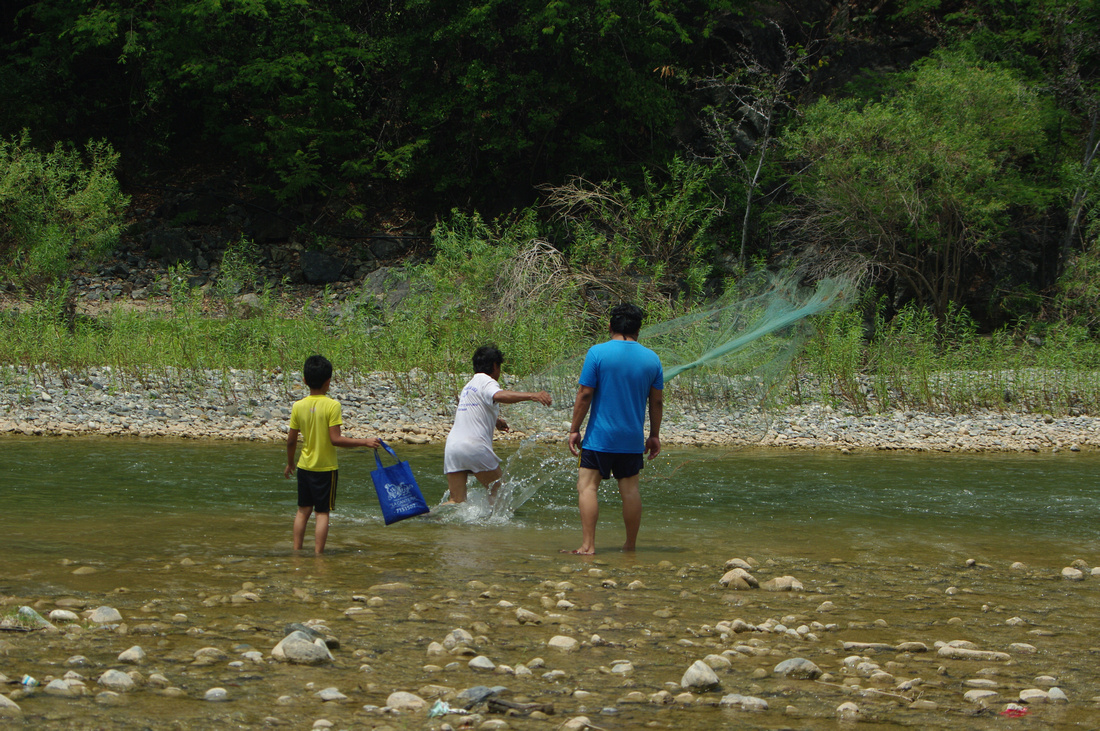
The River reminded me of Baker River in Washington.
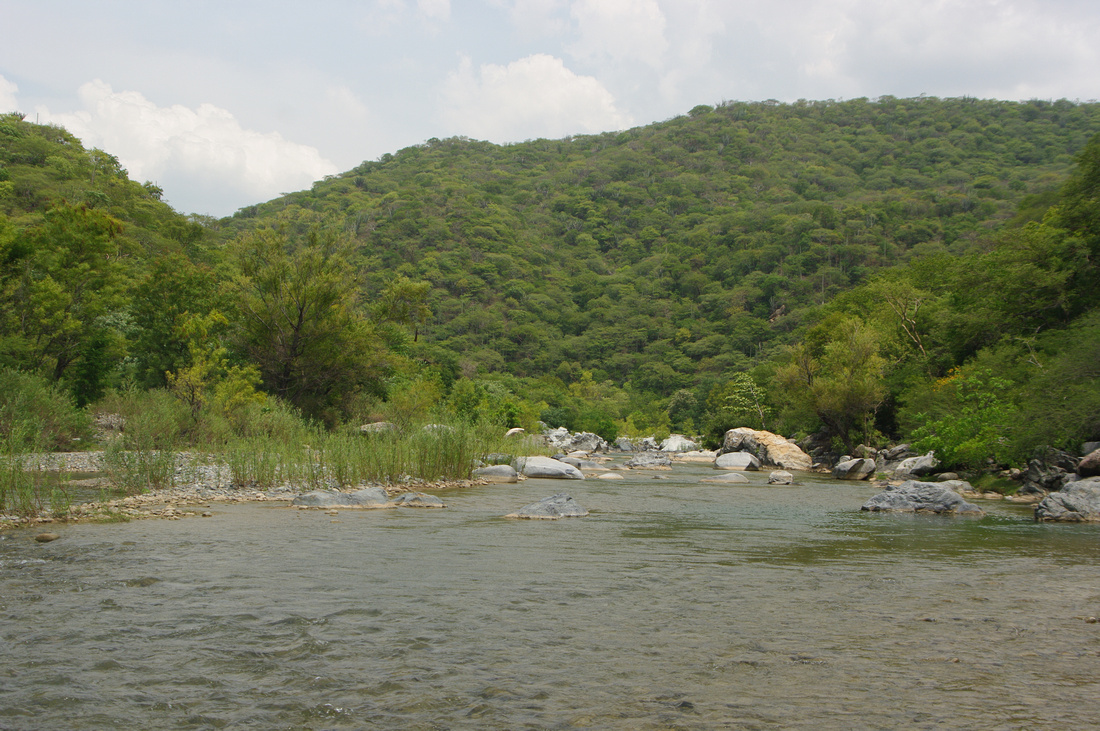
Beth didn't stay dry for long.
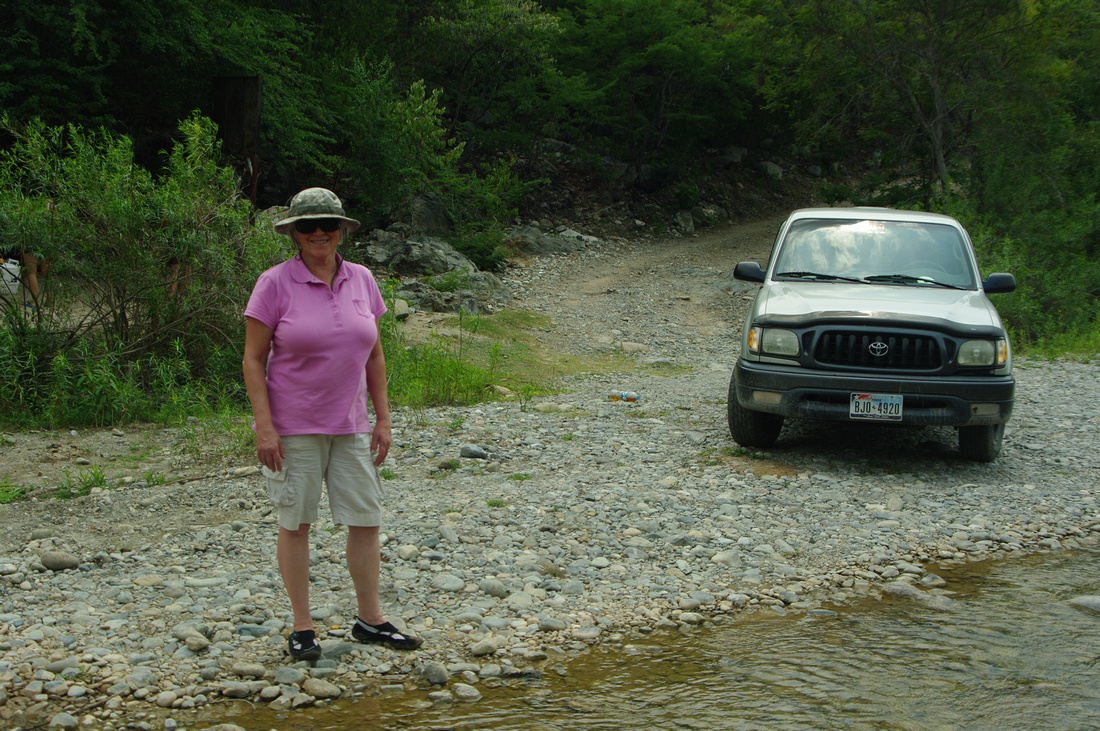
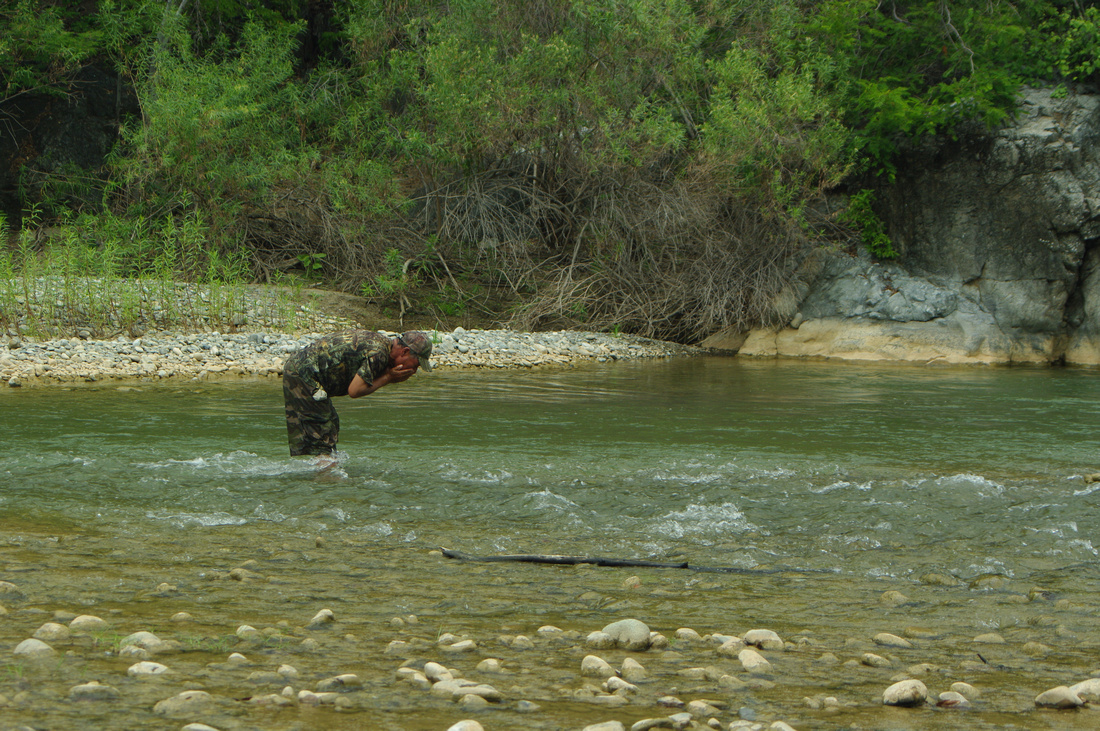
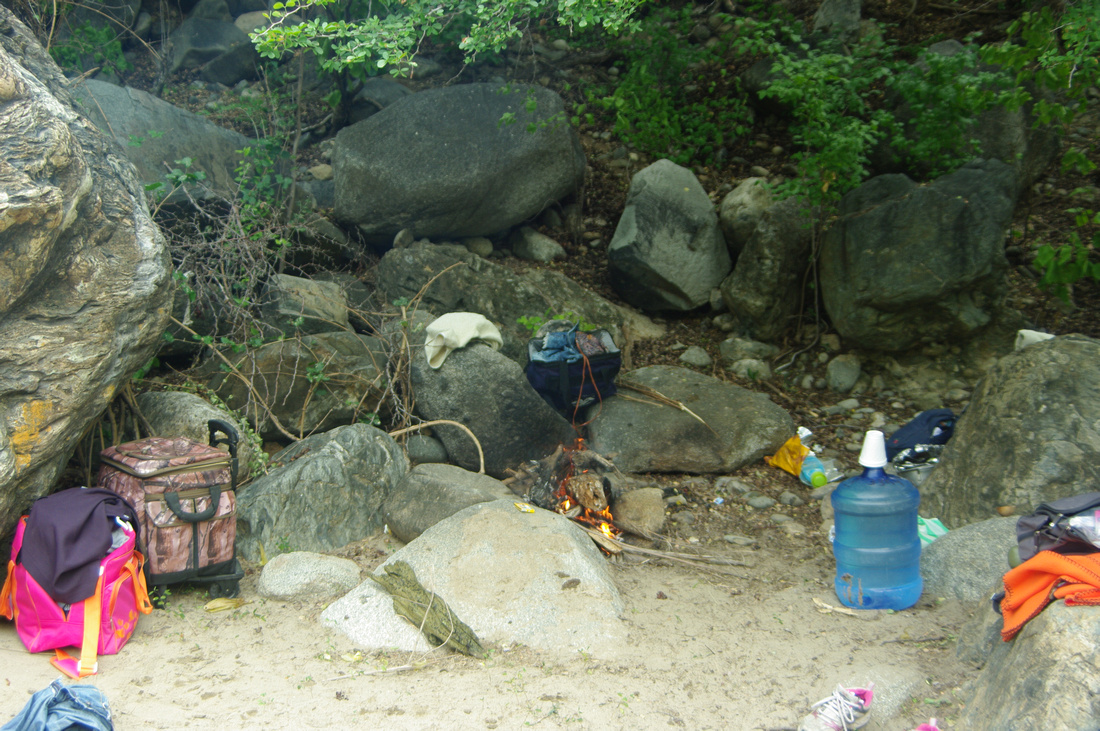
We had grilled tasajo, tortillas, and black beans. Beth also made cookies for everyone. Naturally we tried and eventually purchased some of Beto's uncle's mezcal. Very strong, about 60%.

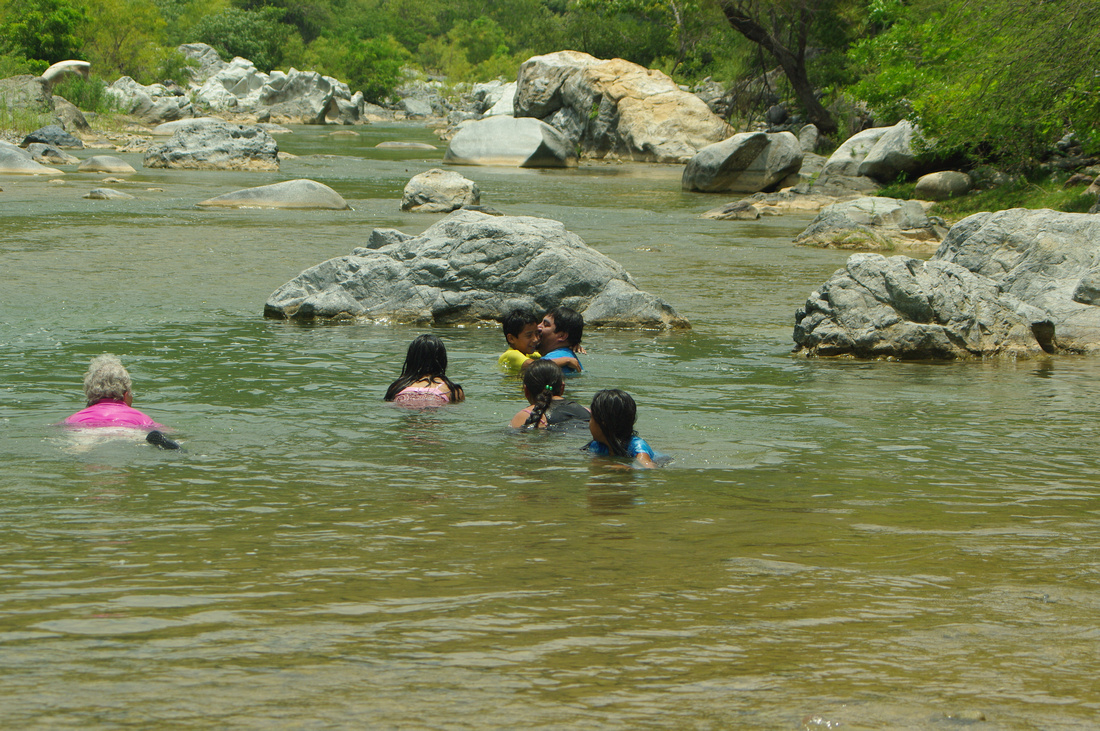
Thought this rock looked like wood.
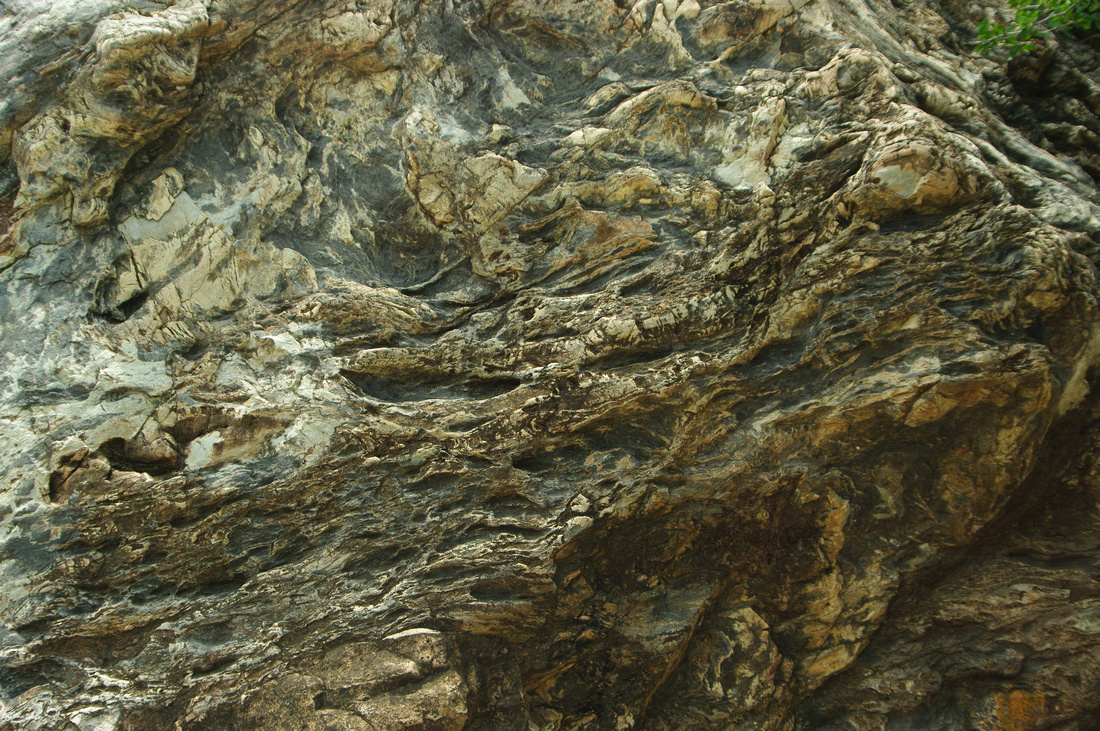
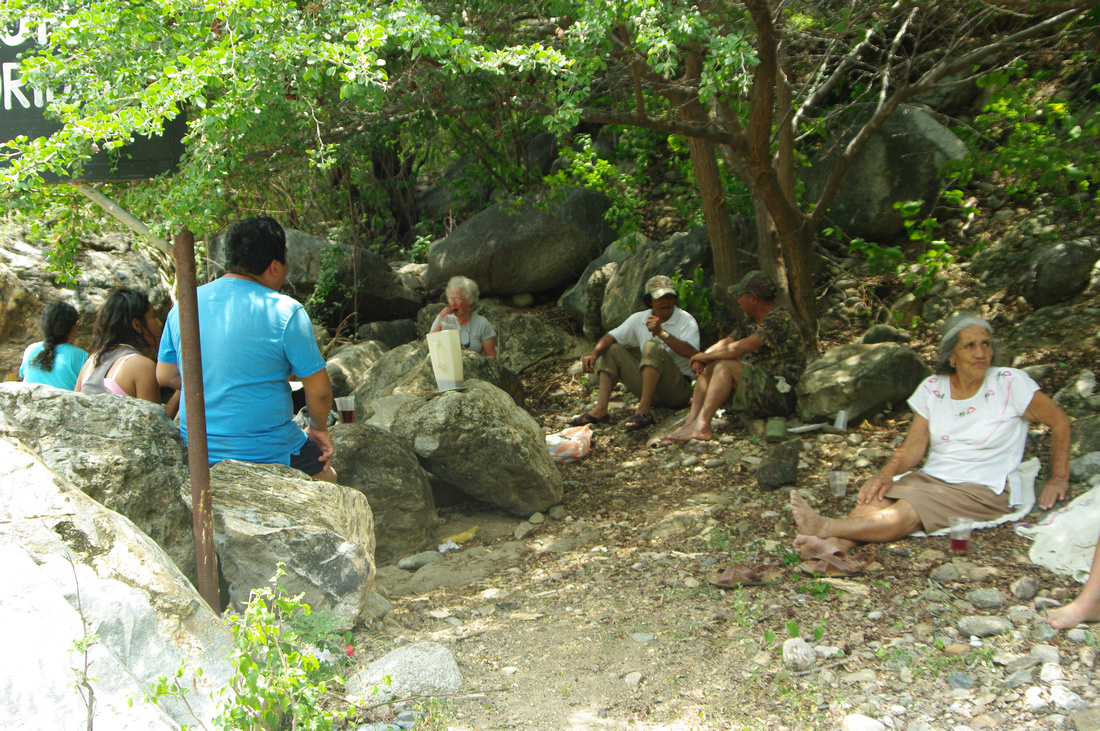
Mickey and Yadira just spent two weeks with us. We had a great visit. They both like Oaxaca and I suppose they'll live here one day. Mickey bought a used motorcycle while he was here. It's out in the patio. Not sure if I'll ever have the nerve to use it. In 1994 motorcycles were rare. They're pretty common now especially in Oaxaca. Italika is the most popular. I believe there are Chinese and Mexican models.
Because it's so dry here rust on vehicles is rare. There are still cars from the sixties and seventies. Nissan is by far the most popular name for trucks and cars. The majority of taxis are Nissan. Ford was popular back in ninety-four and you still see them frequently especially the big trucks. I don't know anyone who prefers an automatic to a standard. Many men have brought trucks with them back from the states. I'm always amazed to get in a truck and see that it's a standard. I wasn't even aware that standards were made for some models.
Normally a trip to a restaurant wouldn’t be worthy of a blog but our trip last Sunday is an exception.
About a year ago Beto had a friend that works for CFE, the electric company here in Mexico to come to our house to help resolve a problem. Rodolfo and I became friends so he stopped by a few times when his work brought him near our house. A week ago Rodolfo showed up with his wife and we ended up chatting for hours. Rodolfo’s wife Olga designs and makes custom clothing. Beth really enjoyed getting to know her and sharing similar interests.
They invited us to go with them up into the mountains to eat trout at a restaurant. So Sunday Beth and I rode the bus to Oaxaca where we met them at the Monument of Benito Juarez and then rode with them in Rodolfo’s car.
Highway 175 leaves Oaxaca and winds around to Tuxtepec eventually ending up at the Gulf Coast in Vera Cruz. The highway is a mountain road with lots of curves and elevation changes. It’s a beautiful drive! I was reminded of the North Cascade Highway in Washington State.
Very quickly we left the city and lowland vegetation behind and were surrounded by pine forests. We’d forgotten how much we missed being in a forested area. Normally when Beth and I go somewhere I drive; it was a real treat to sit back and enjoy the view.
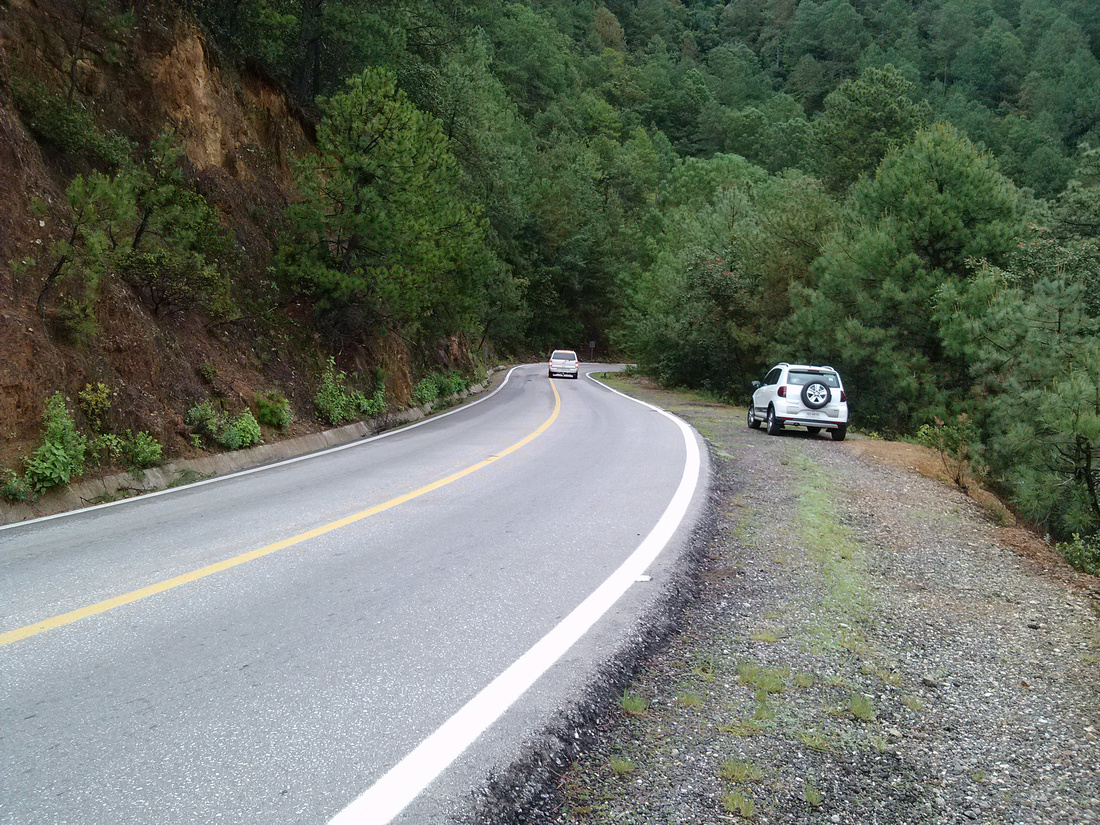

In the Background you can see Oaxaca de Juarez

It's hard to make out but at the bottom of the valley sits a small village.
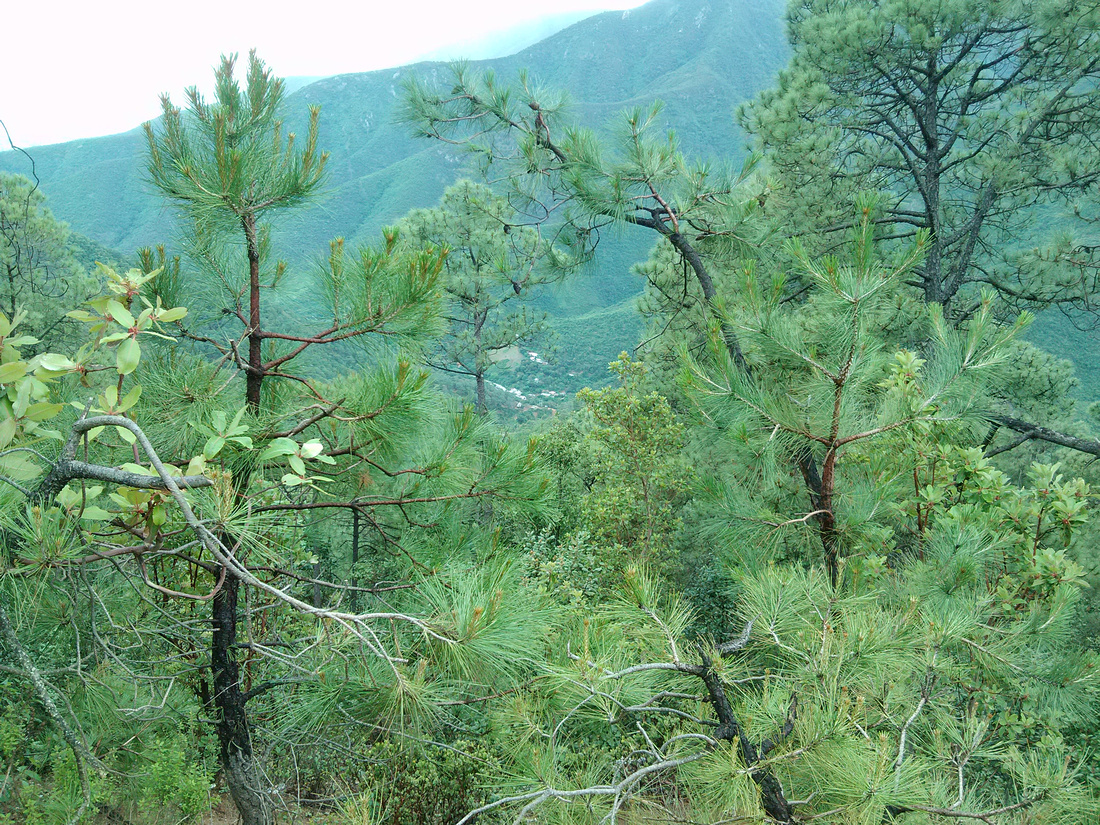

We passed through San Pablo Guelatao (birth place of Benito Juarez) and stopped at a restaurant just past Ixtlan de Juarez. The restaurant specializes in different ways to prepare and cook fresh trout. The fish farm right next to the restaurant provides the fish. The restaurant is nestled in a small valley. The location is spectacular.
Entrance to the restaurant.
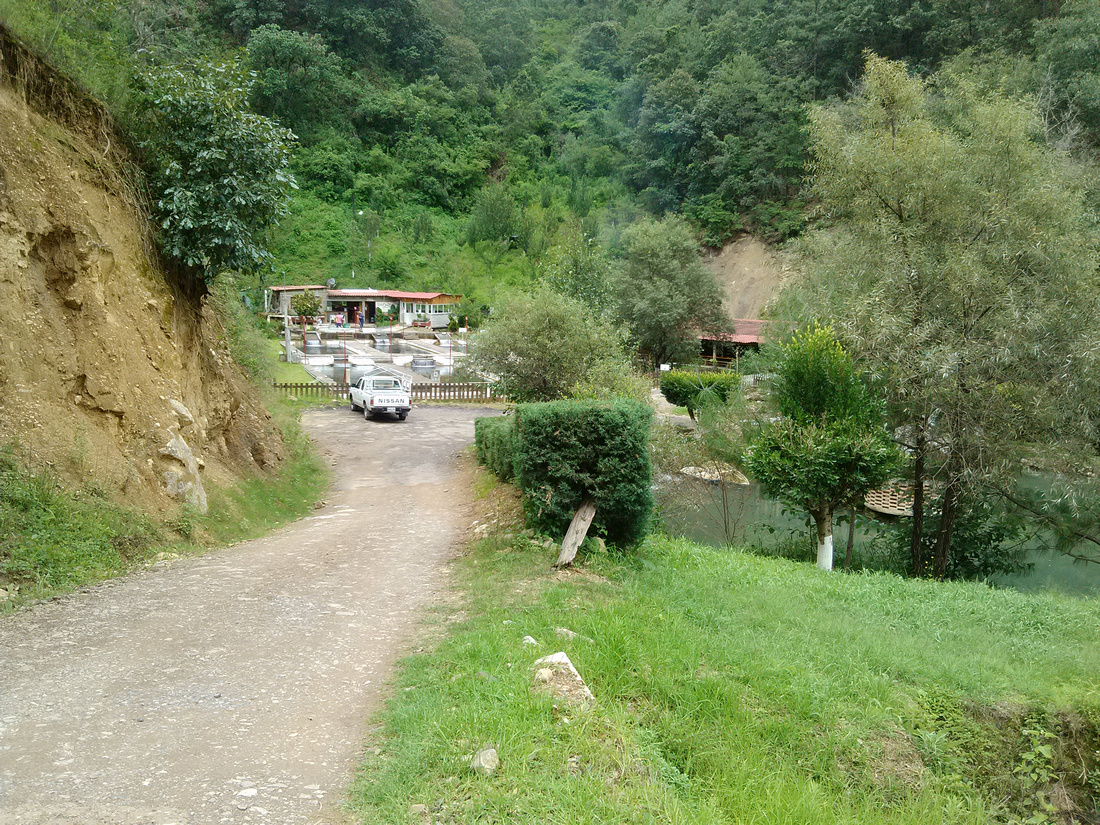
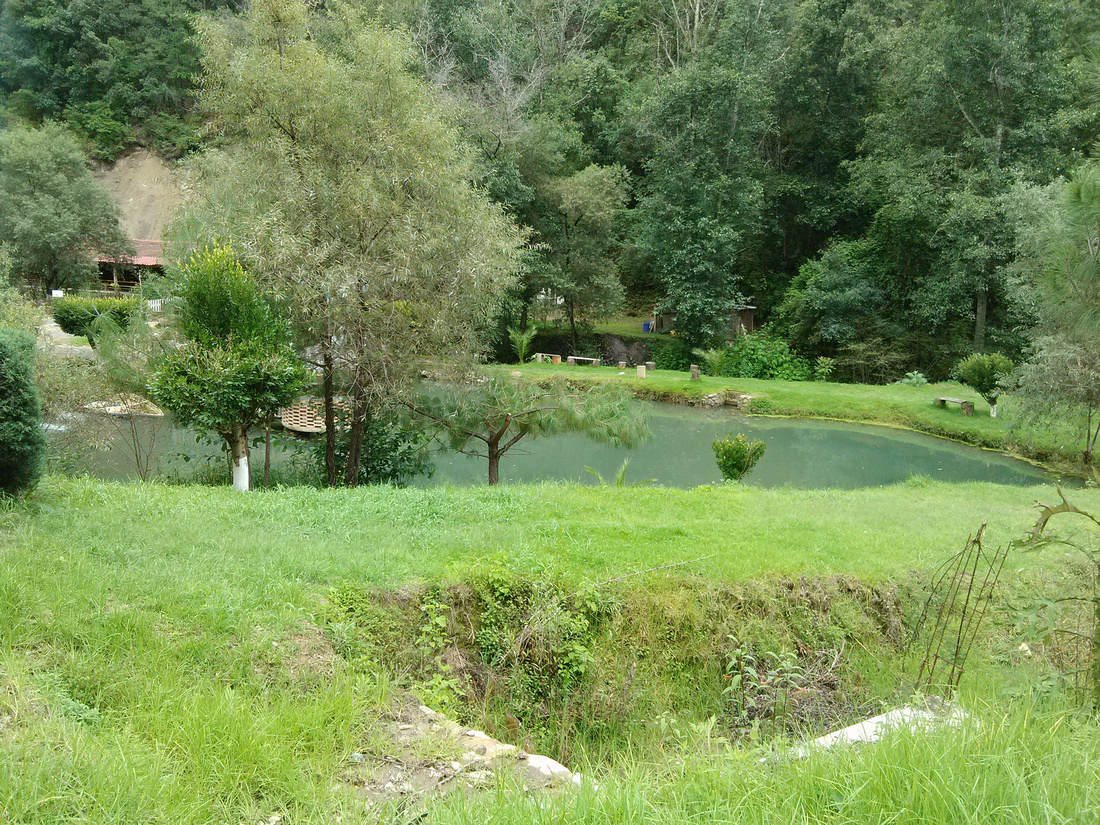
Other than drinks and deserts the menu was almost totally dedicated to trout. Instead of having tortillas with our meal we were served large tostadas about a foot in diameter. The food was great and the open restaurant provided a very relaxing atmosphere.
While eating we received a wonderful surprise. A family we knew from Brownsville arrived at the restaurant. It was a shock to see them here in this restaurant so far from Texas. The Sosas are originally from Zoquitlan which is about an hour and a half from our home. Their daughter had been a student of mine and through her we made a friendship. They lost contact with us when we moved so it was exciting to exchange info and new means to communicate. They come down once a year so I’m sure we’ll be visiting Zoquitlan in the future.
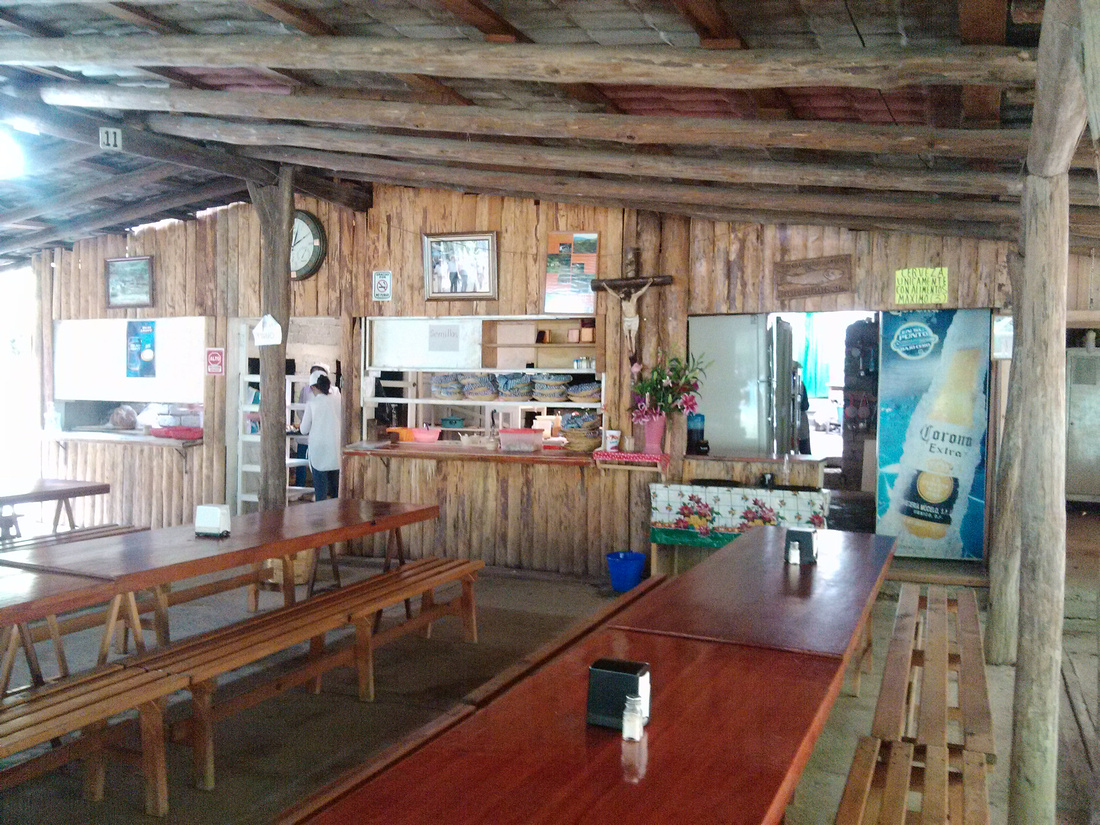

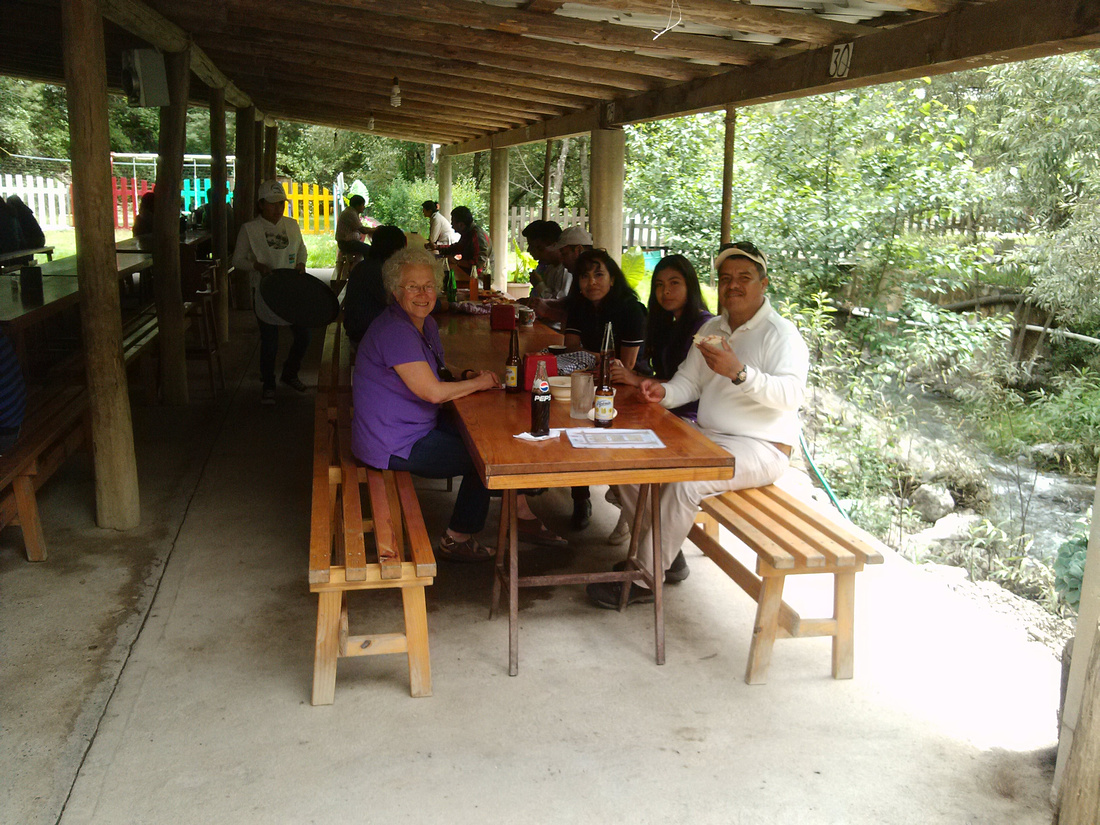
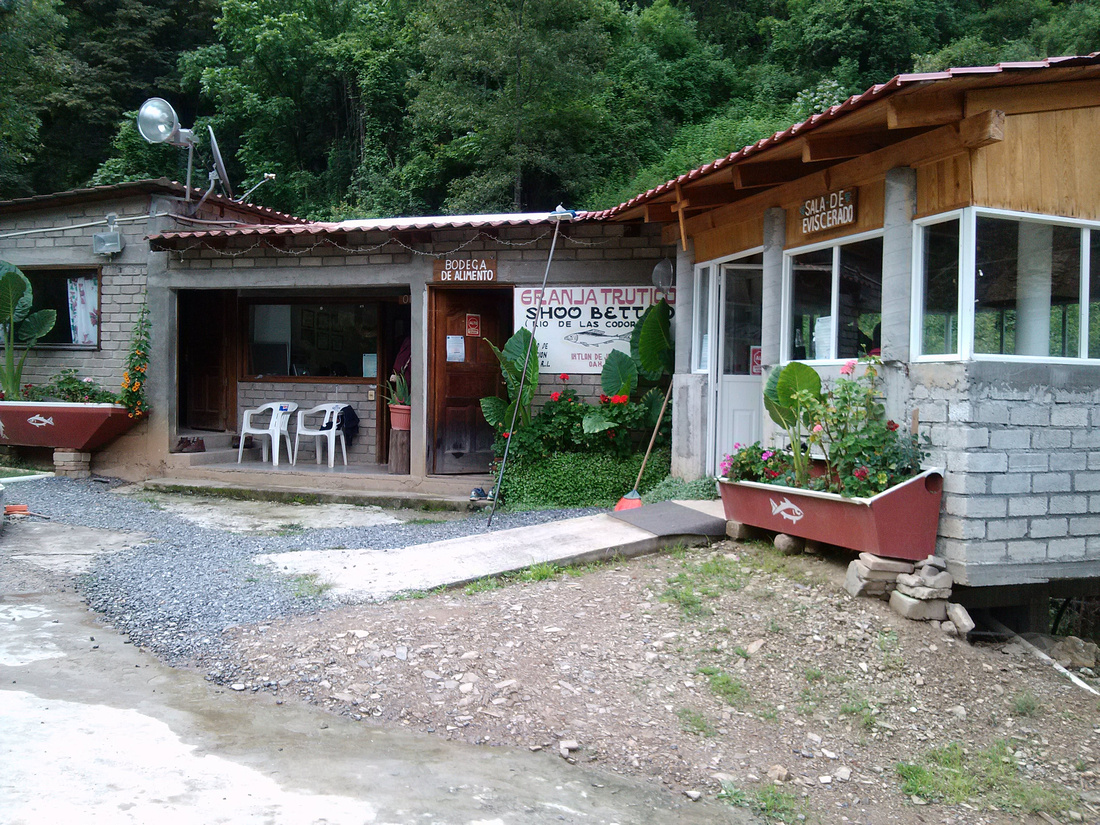

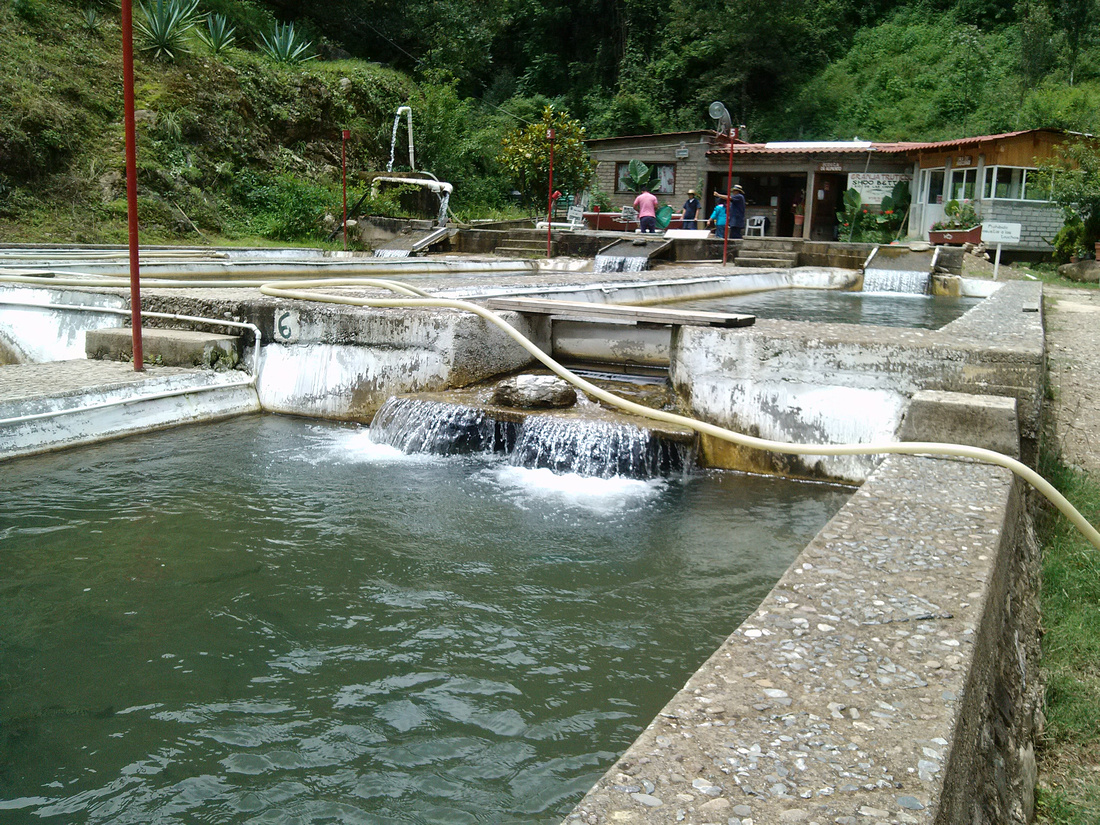



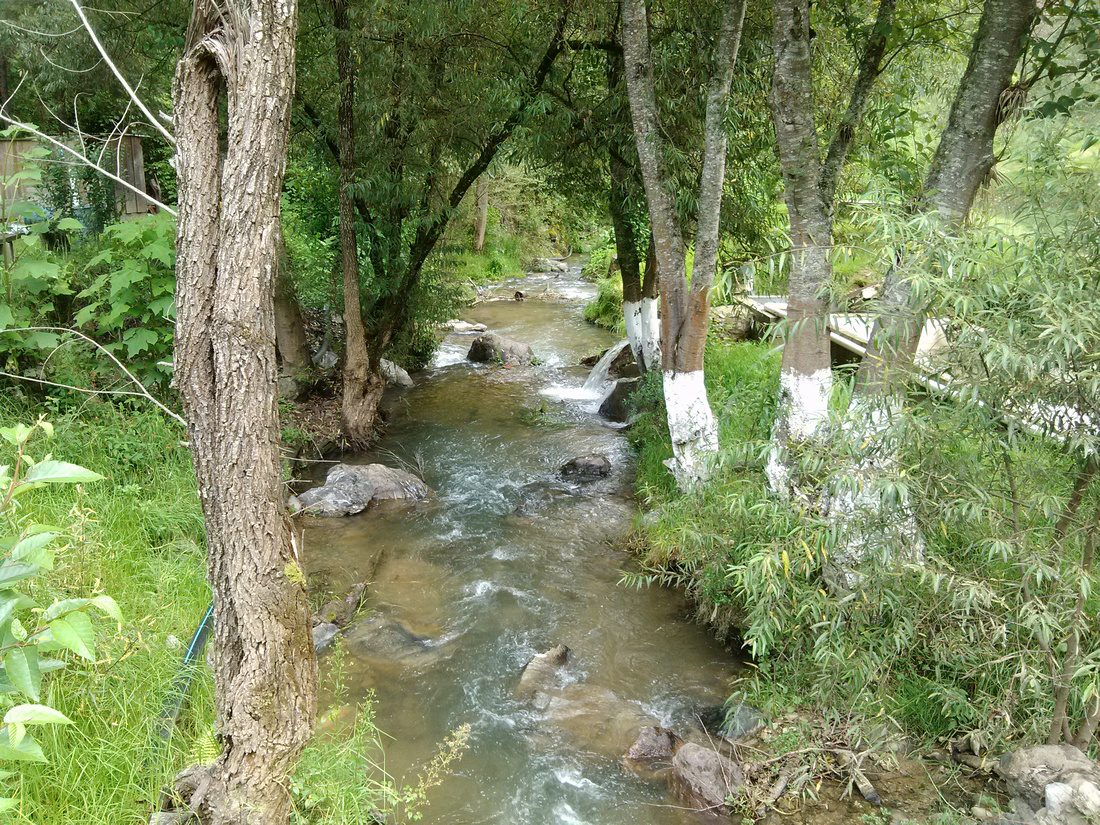
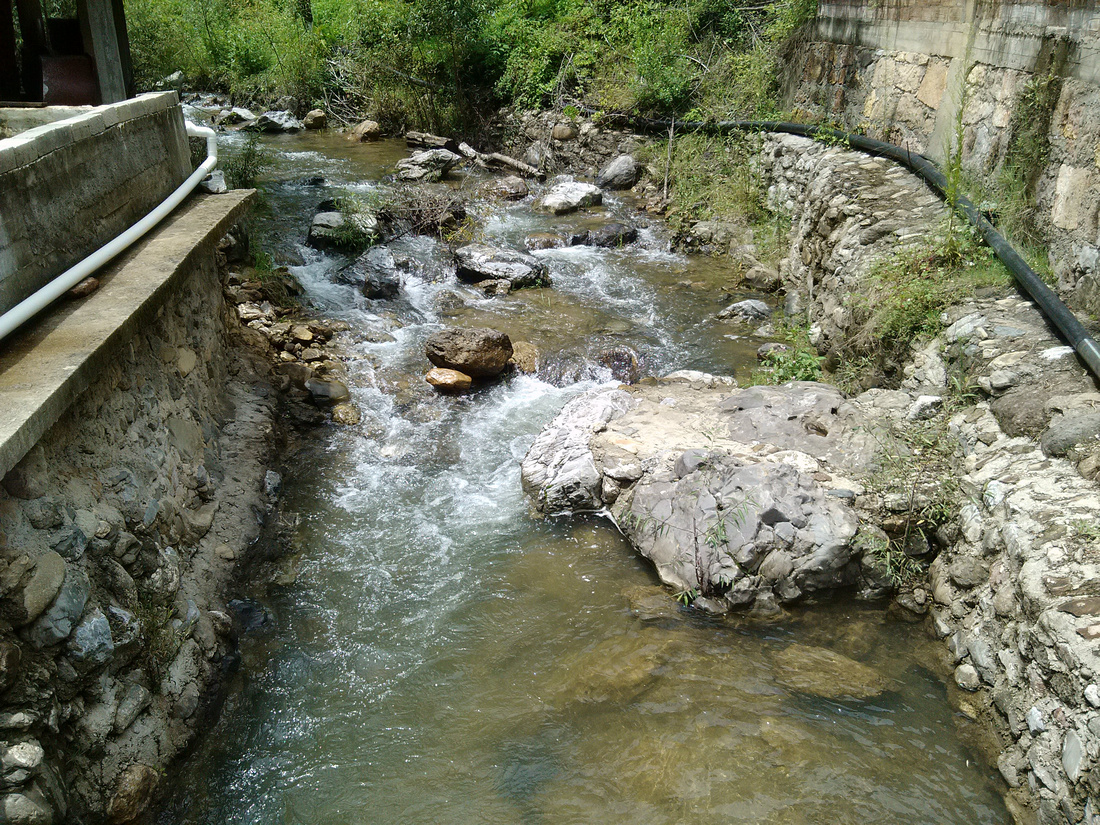
After we were dropped off by Rodolfo and Olga, we met up with the Sosas who then spent time visiting with us at Don Pedrillo. They have a daughter who is going into the eleventh grade next year in Los Fresnos. It was fun hearing about my old school.

Traveling to Guelatao filled in a spot that’s been missing in our lives. Beth and I both love the mountains especially with the pines which the mountains around our home just don’t have.
Beth and I live about three miles from the Yaguar (Jaguar) zoo. The zoo is about thirteen years old. I visited the zoo when it was in its third year. At that time it was little more than bulldozed paths with cages. The zoo is a private enterprise. They receive no help from the government. Growth has been slow but steady. We talked to the owners about donating our burra to their petting zoo. We’d love to see her there. The owners are coming this week to look at her. I’m sure they want to be certain that she’s gentle enough to be around children.
Two things are immediately apparent at the Yaguar zoo. First is their obvious limited budget. Shelter for the animals is very primitive. Shade is provided in the most rustic ways. Some of the cages are smaller than they could be. Walkways are not paved and snack shops are very basic. One area where corners do not seem to be cut is food for the animals. All look well fed.
The second observation is how close you can get to the animals. Even many predatory animals are within hands reach. Unlike in America where if a child were bitten a probable law suit would result, I suspect here the owners would ask why did you let your child put their hand in the cage? Personal responsibility is much more apparent here in Oaxaca in many areas. I’m reminded of an article I read this morning that stated one out of five American children live in poverty. Beth and I live around poverty. It seems almost an insult to use the word poverty so broadly.
The location of the zoo is very curious to me. It’s basically out in the middle of nowhere. I’d guess it to be about a forty minute drive into Oaxaca de Juarez. The zoo is located next to a village called Tanivet. It’s fun to have to drive through part of the village to get to the zoo. One minute you’re in a typical Mexican village and the next minute you’re in an area with animals from all over the world. Two extremes!!
The manager told us they have a real problem with local dogs coming into the zoo. Aside from being able to cause harm to some of the animals, introducing disease is a concern.
Here is a map of the zoo showing all the animals.
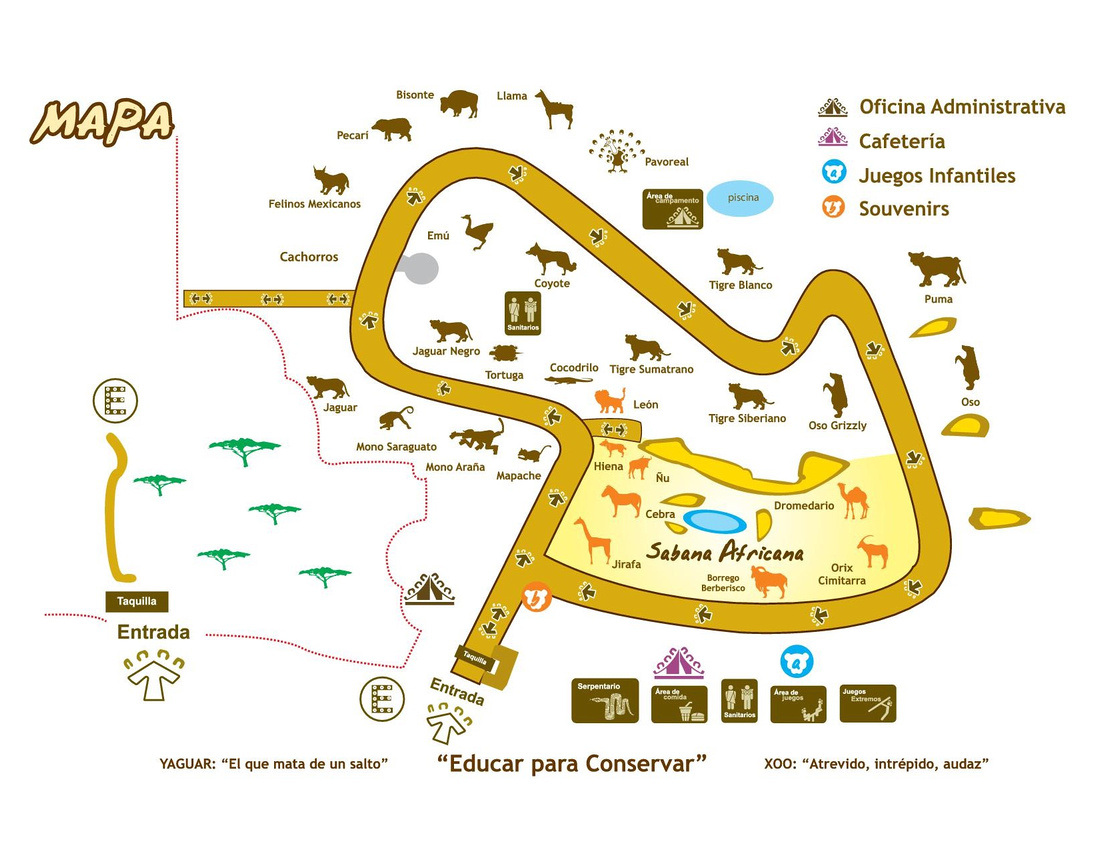
Entrance to the zoo.
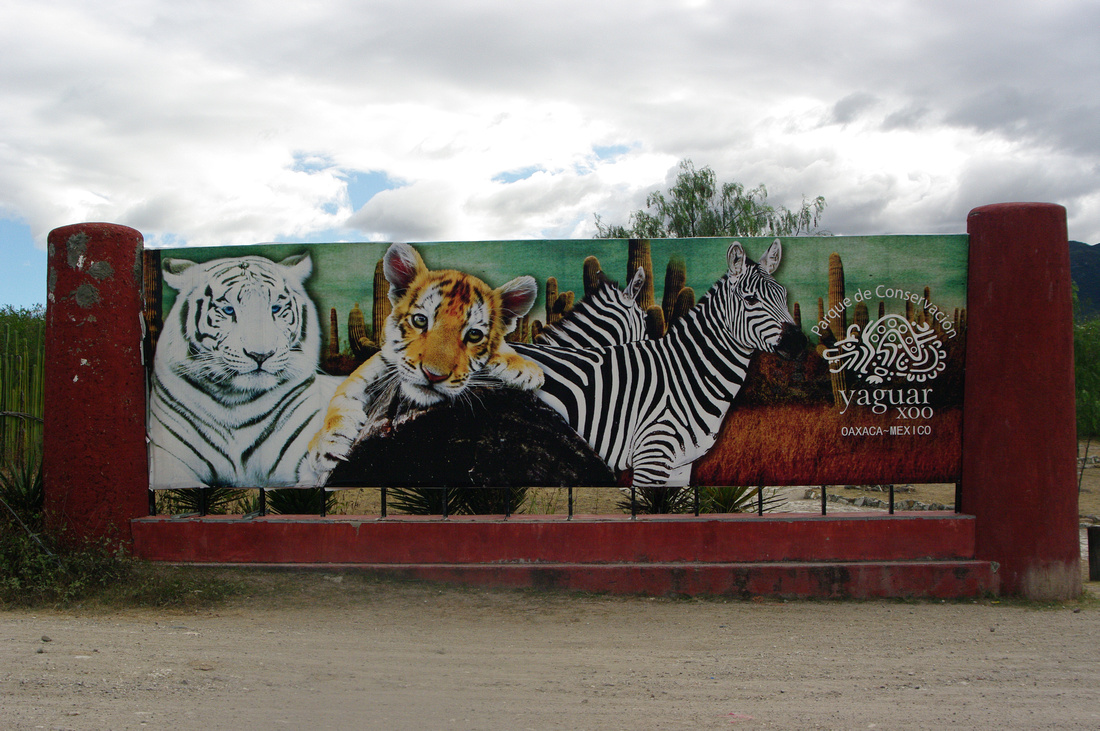

Snack bars without hotdogs. There ought to be a law!!!!!!
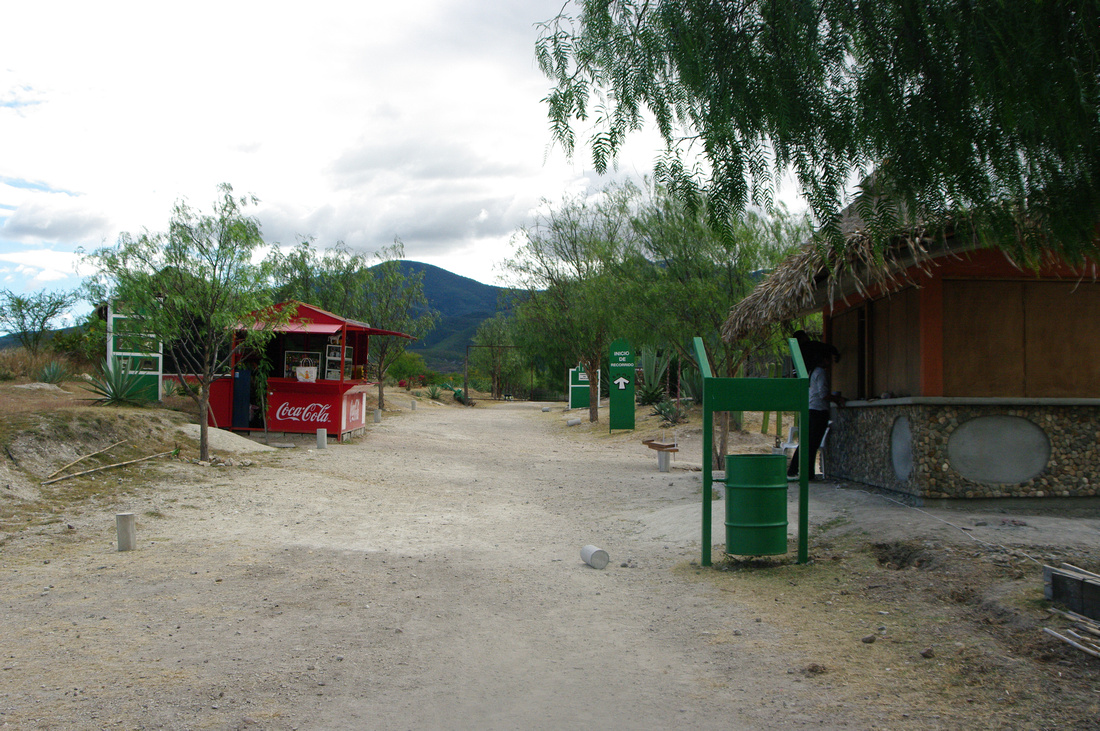
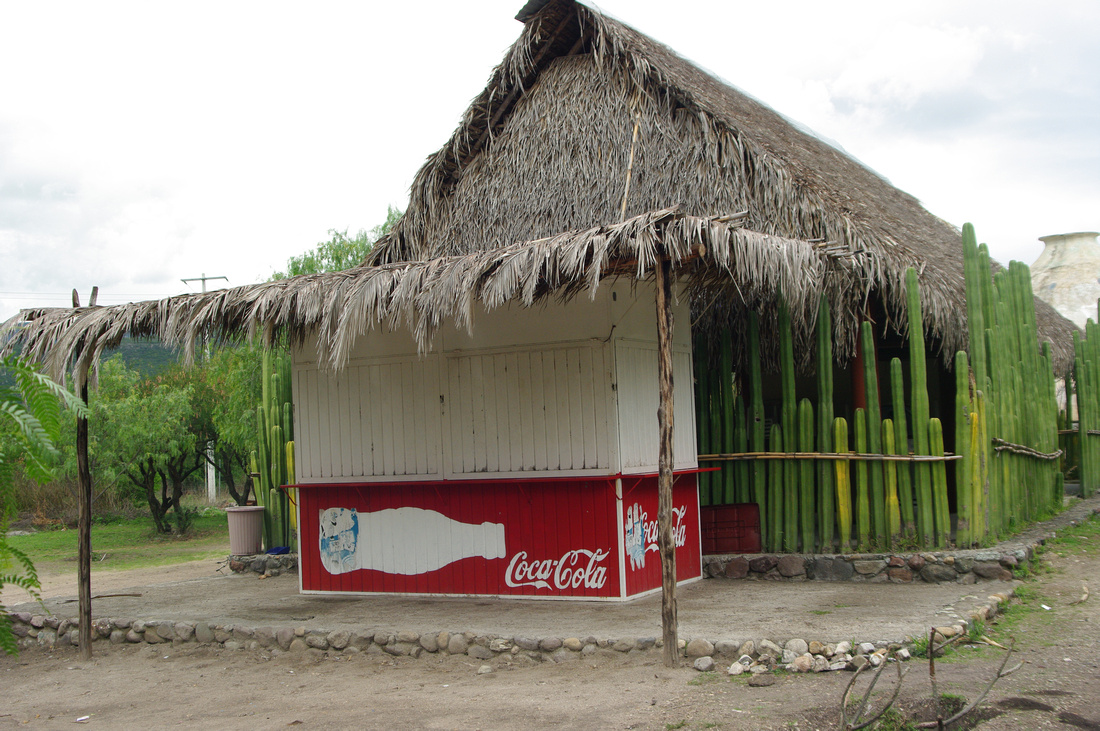

Rustic looking but functional.

This interesting structure holds work for sale by local artists.
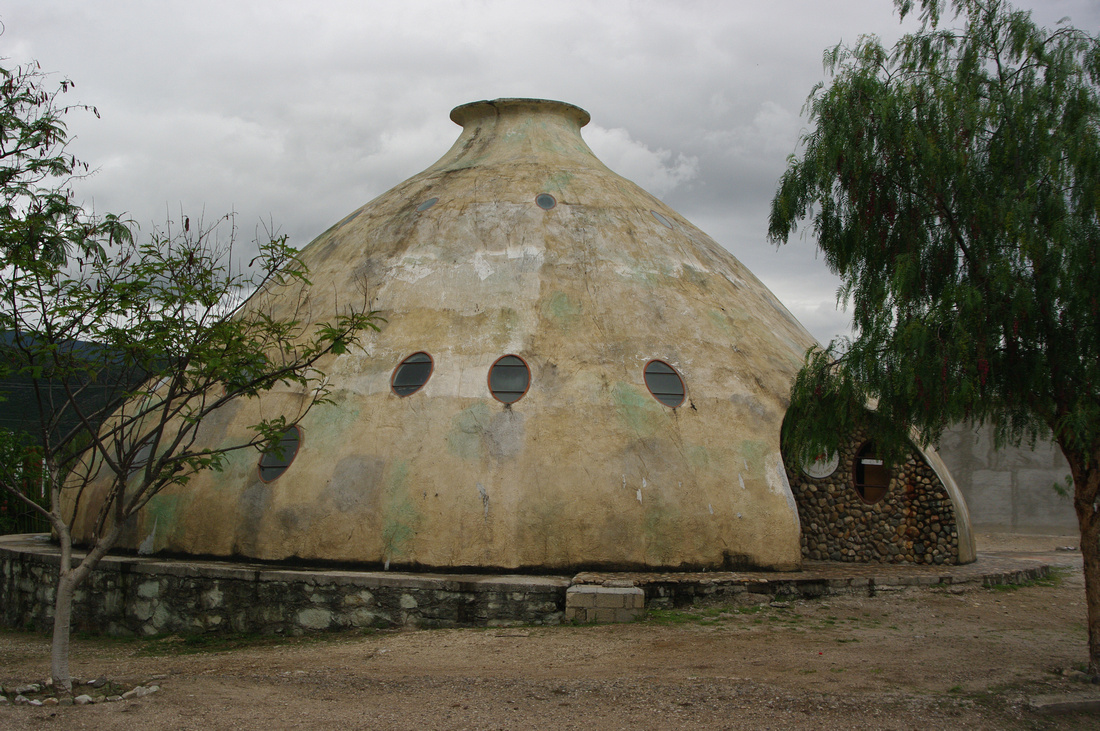
Paths are not paved but are beautiful.

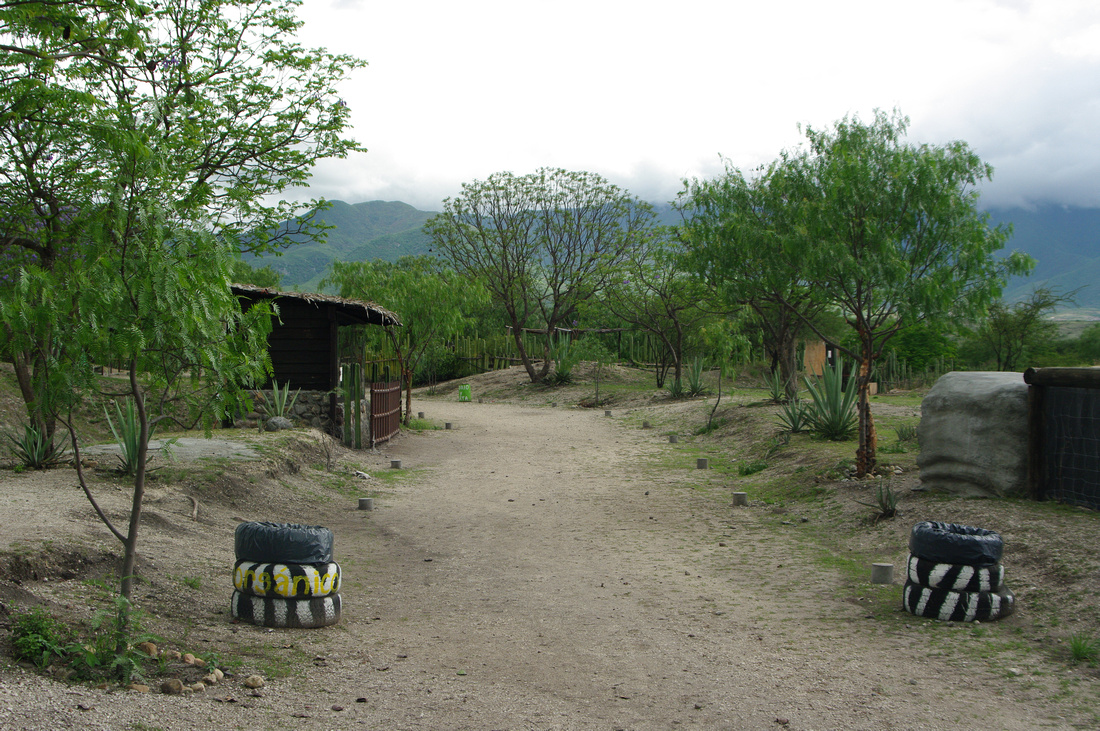
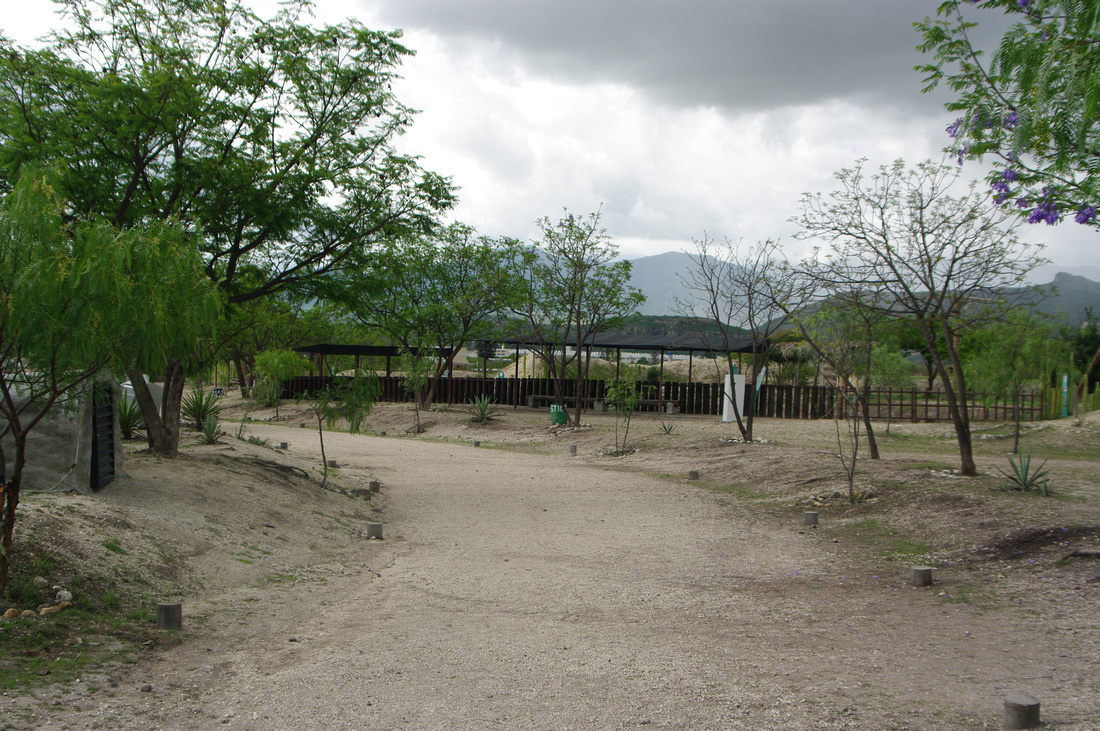
Shade and housing are pretty basic.
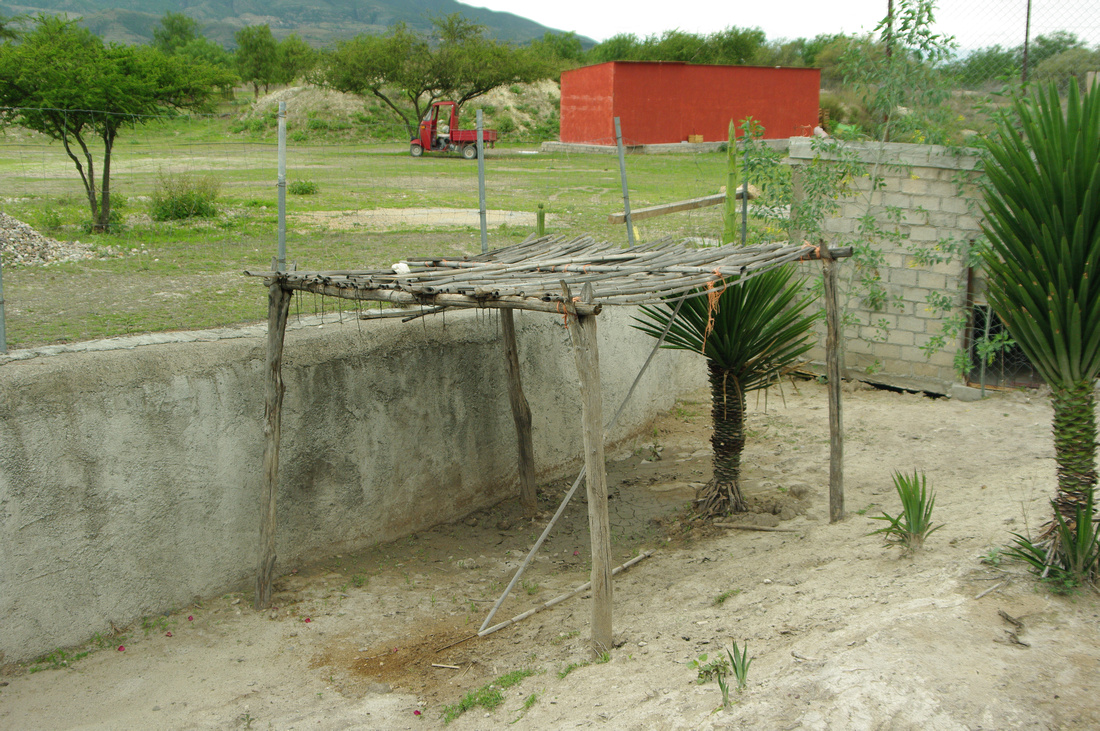
One section of the zoo is dedicated to felines found here in Oaxaca.


Some of the predators are in areas that look like they could get out if they tried.
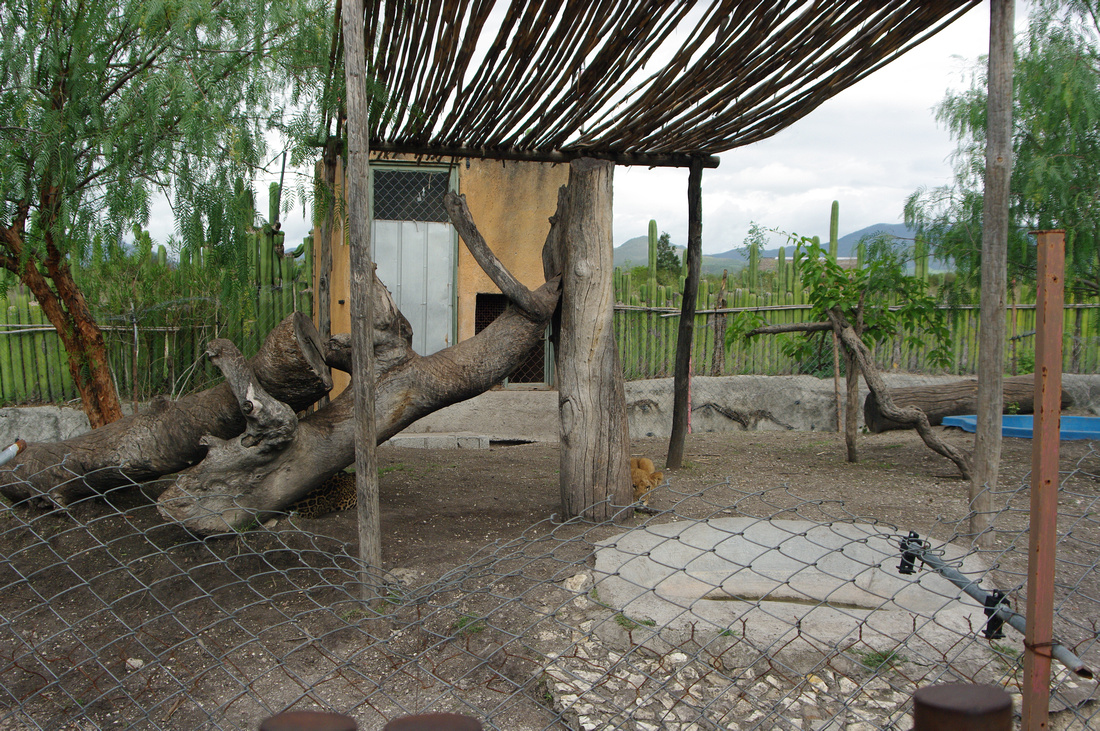
This cracked me up. Producing mezcal in a zoo. Not sure how this would go over in the States.
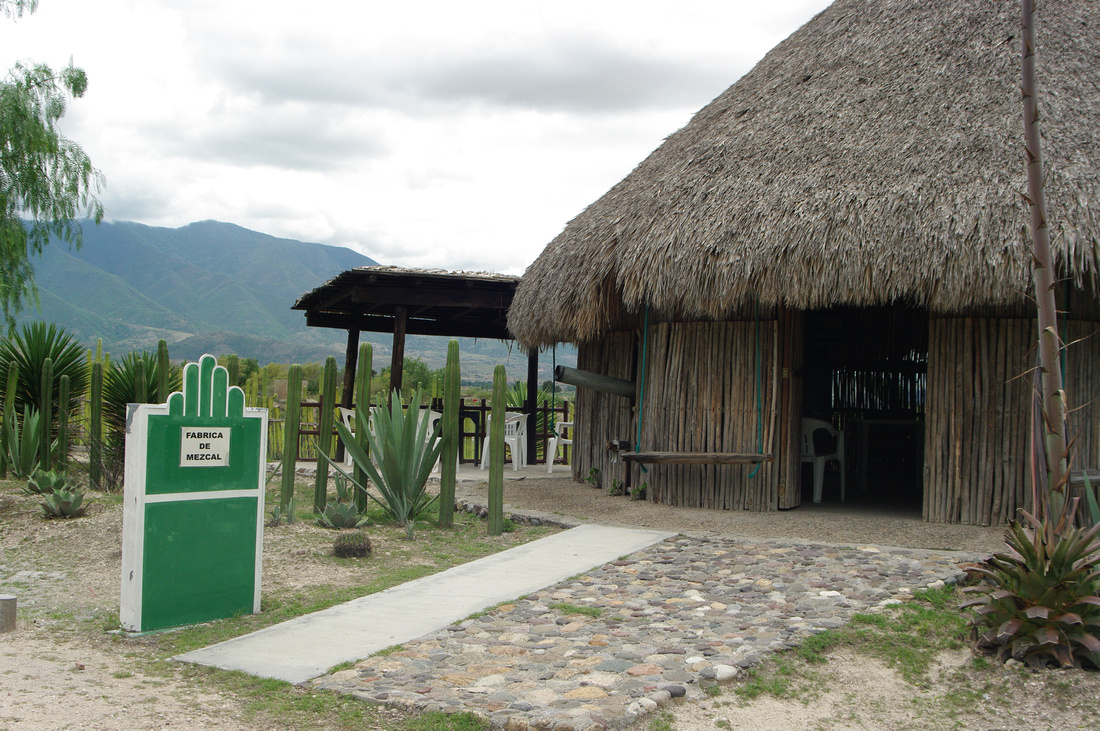
I couldn't have been more than three feet from this guy.

On this day Beth and I were the only visitors. We had the zoo to ourselves. You can see from most of the photos we try and pick overcast days to visit the zoo.
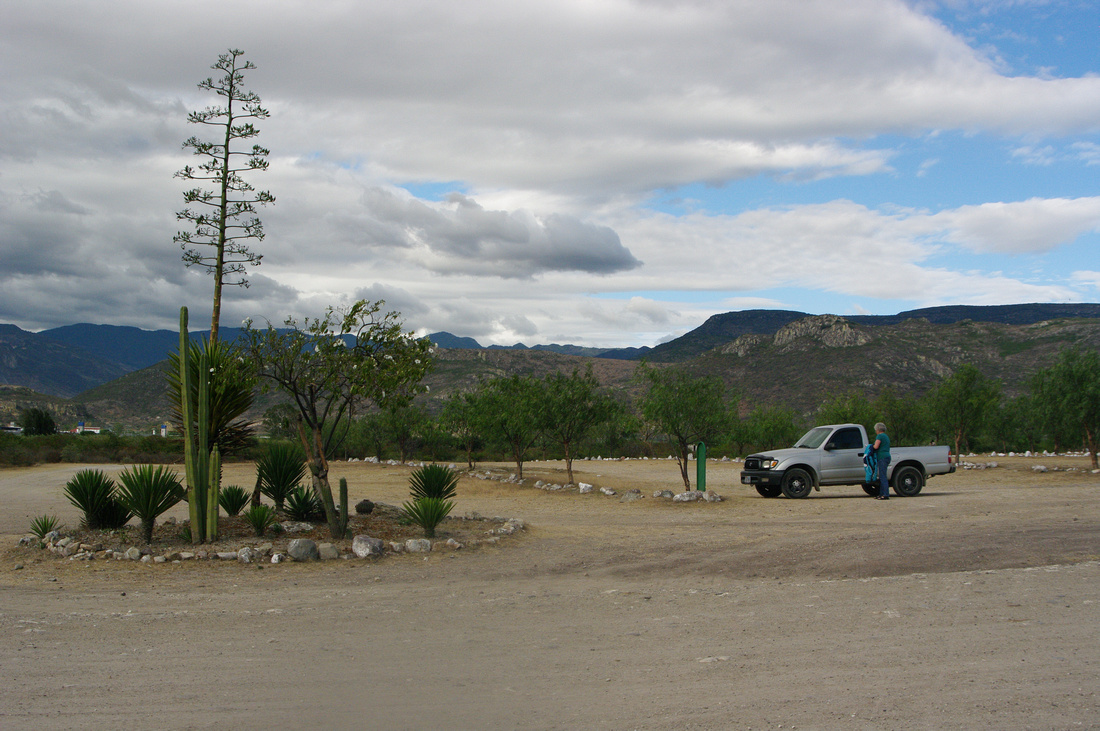
How fortunate were are to live so close to such an attraction. The web page for the zoo can be found at: http://yaguarxoo.com.mx/
We just got back from another trip to the Guatemalan border. This made our third trip so we are beginning to establish a routine. We found a very comfortable hotel in Tonala, Chiapas where we stay the first night. The next day we drive to the border, get our new visas, then drive back to Tonala. The next day we drive back to Don Pedrillo. It makes three short days of driving.
We are still accosted by the scam artists at the border but now ignore them the best we can. Some of them are very persistent! You have to become rude before some accept the message you want to be left alone. The biggest scam is the exchange of pesos to Guatemalan money. People walk around with wads of money looking to buy pesos. Their exchange rates are much less than the official exchange rates so the unsuspecting tourist can be gouged pretty good. We have to have our passports stamped in Guatemala showing entry and exit. One of the favorite tricks of money changers is to convince you that the Guatemalan immigration office will not accept pesos, but they do.
When we arrive back on the Mexican side we feel like we are home again.
While renewing our permit for our truck in Mexico, we met a couple of missionaries who work in Guatemala. Michael and Kambria along with their two young girls were driving up to Northern Texas. They normally drive up the Gulf coast of Mexico to Matamoros which is a curvy, hilly, two lane drive. It's a very tedious drive. It's not uncommon to come up behind ten cars trying to pass a slow moving, heavy laden, double trailer semi. It can take up to an hour before you reach the semi traveling at speeds down to ten miles an hour then get your chance to pass when there is a short stretch of straight road. Years ago we discovered that driving inland was much quicker and safer. By chance, Michael and his family had stopped at La Puerta del Sol, our hotel. We explained the new route to Michael and decided to travel together as far as our home. I received an email from him explaining that they'd just passed into the US. We hope to see them on their way back to Guatemala.
Southern Chiapas and along the Guatemalan border is very rain forest-like: a lot of rain, lush vegetation, and very humid. You have to sympathize with all of the people that live without air conditioning.
Talisman, Chiapas is separated from Guatemala by the Suchiate River. Crossing into Guatemala is as strange as passing from the US into Mexico. Like many border towns Talisman, Guatemala seems very seedy. Michael told me that the highway system in Guatemala is as different as the road system is in Mexico compared to the US. Must be rough driving.
The Suchiate River.

Street view in Guatemala.
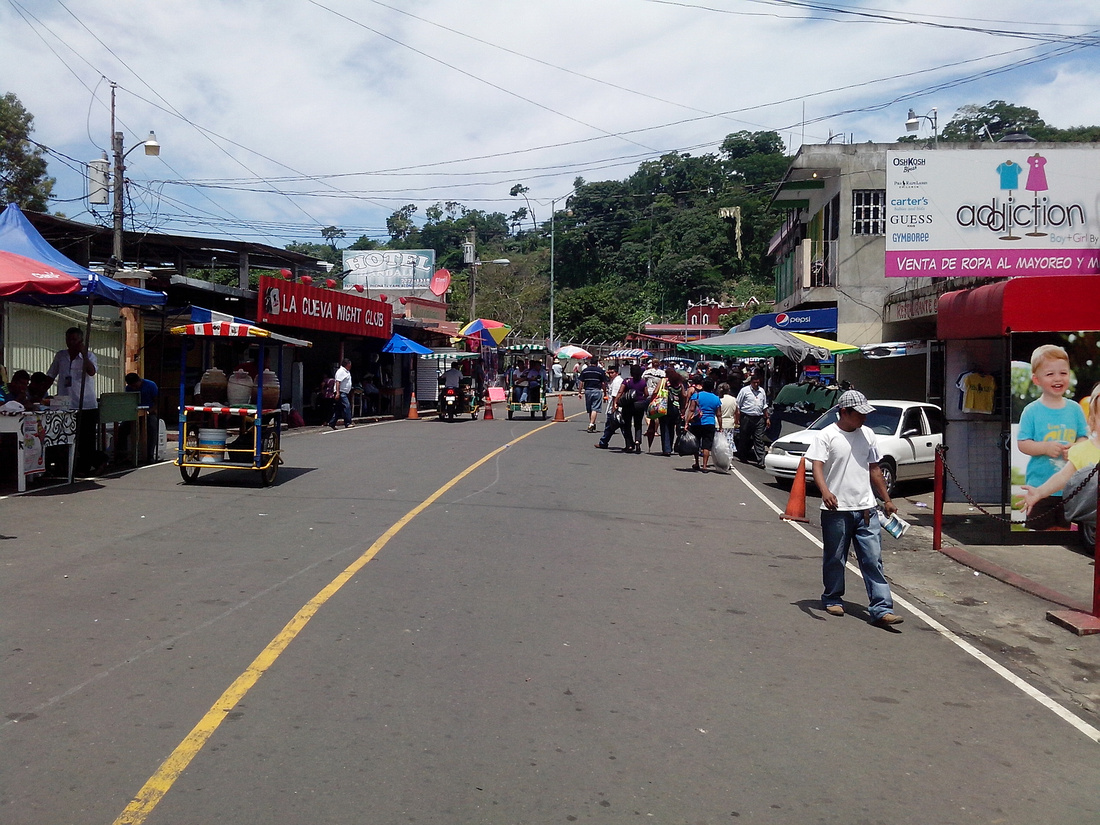
Notice the missing presence of much auto traffic.
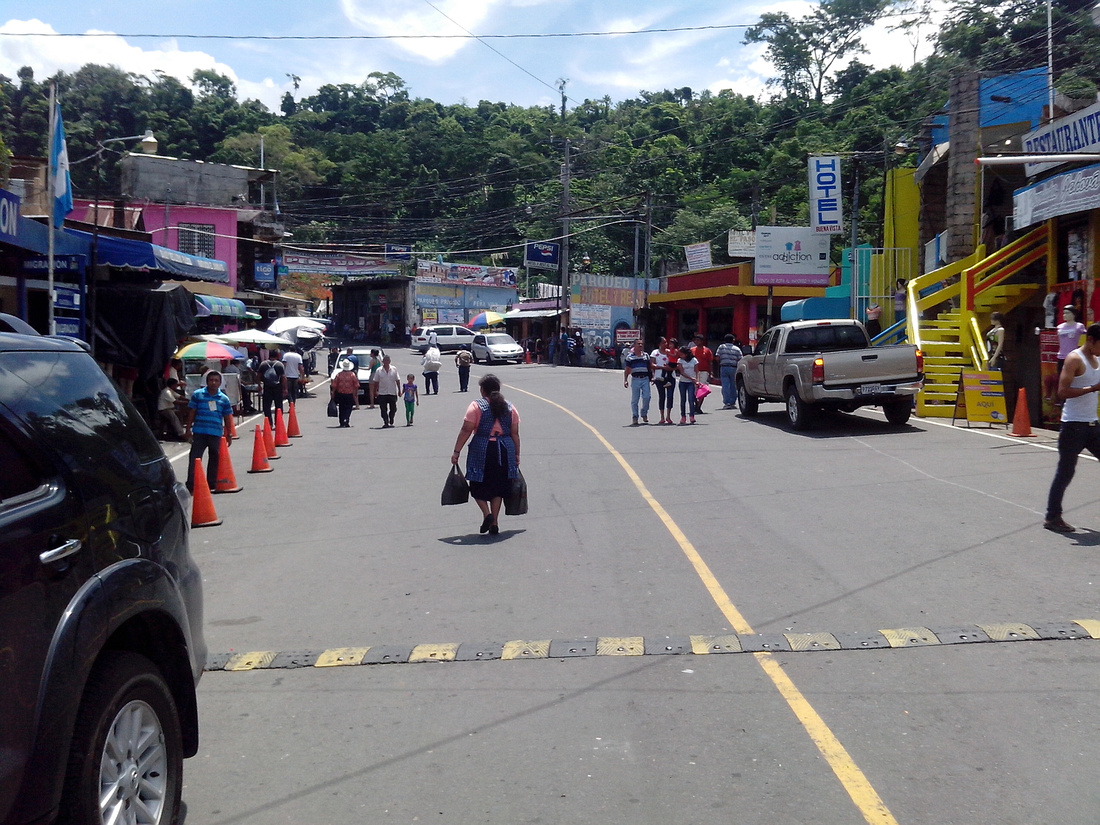
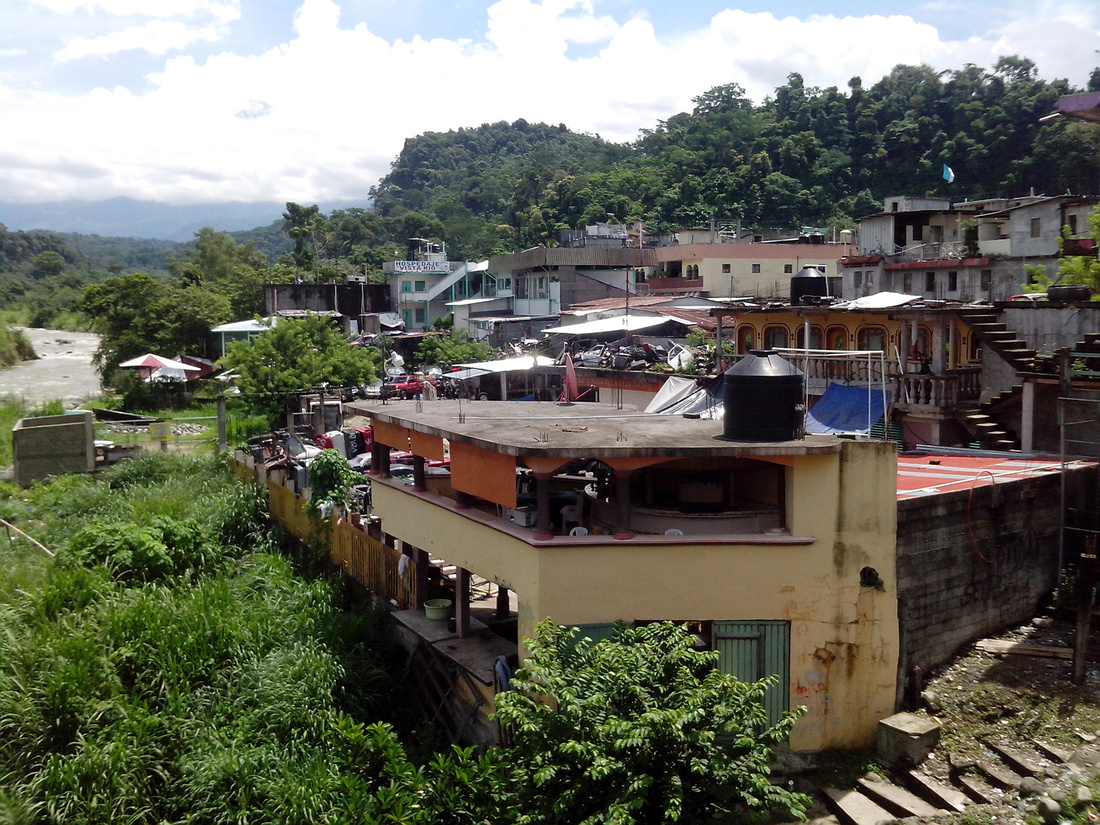
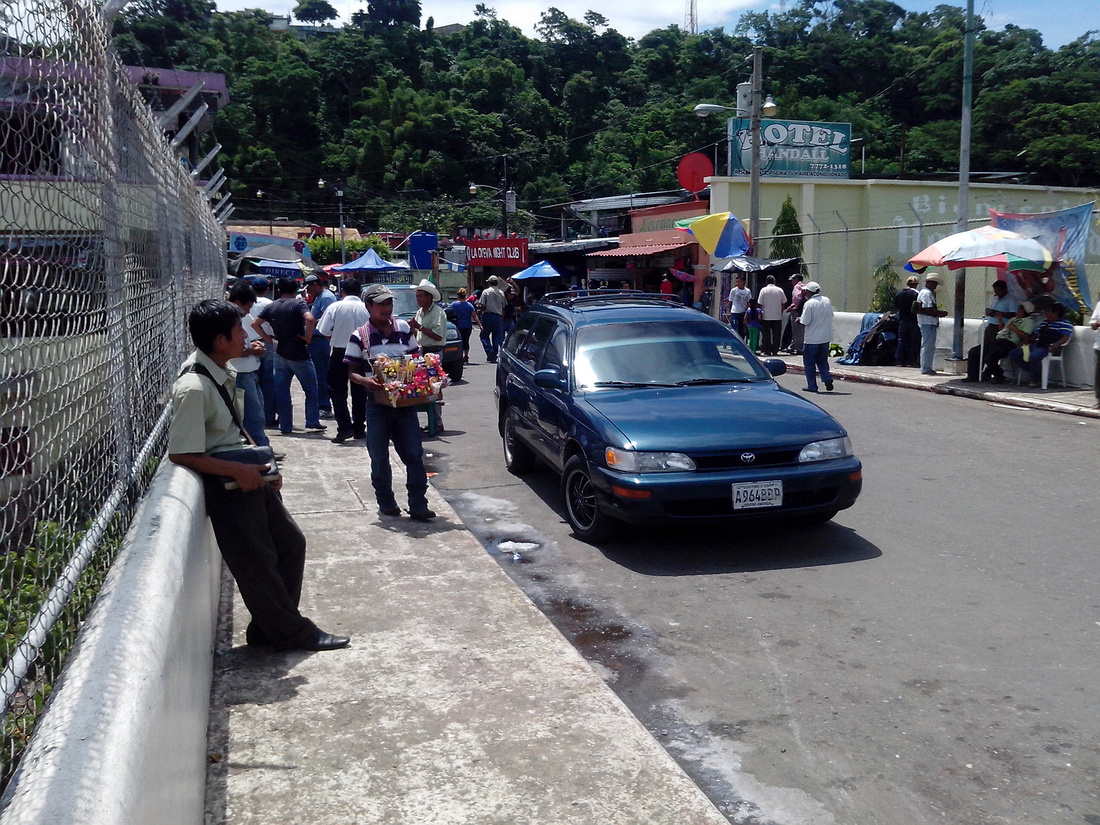
Most bridge traffic is on foot or these mototaxis.
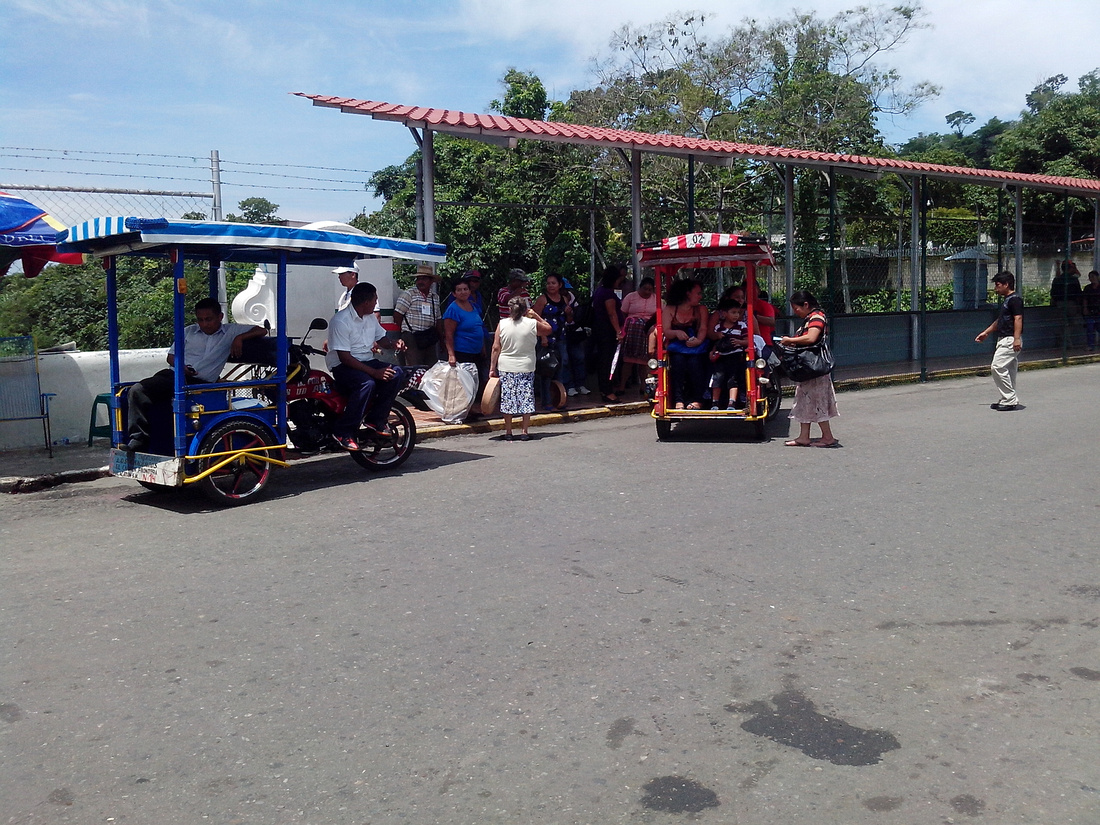
This is from the Mexican side looking towards Guatemala. Quite a difference from the border crossing into Matamoros.
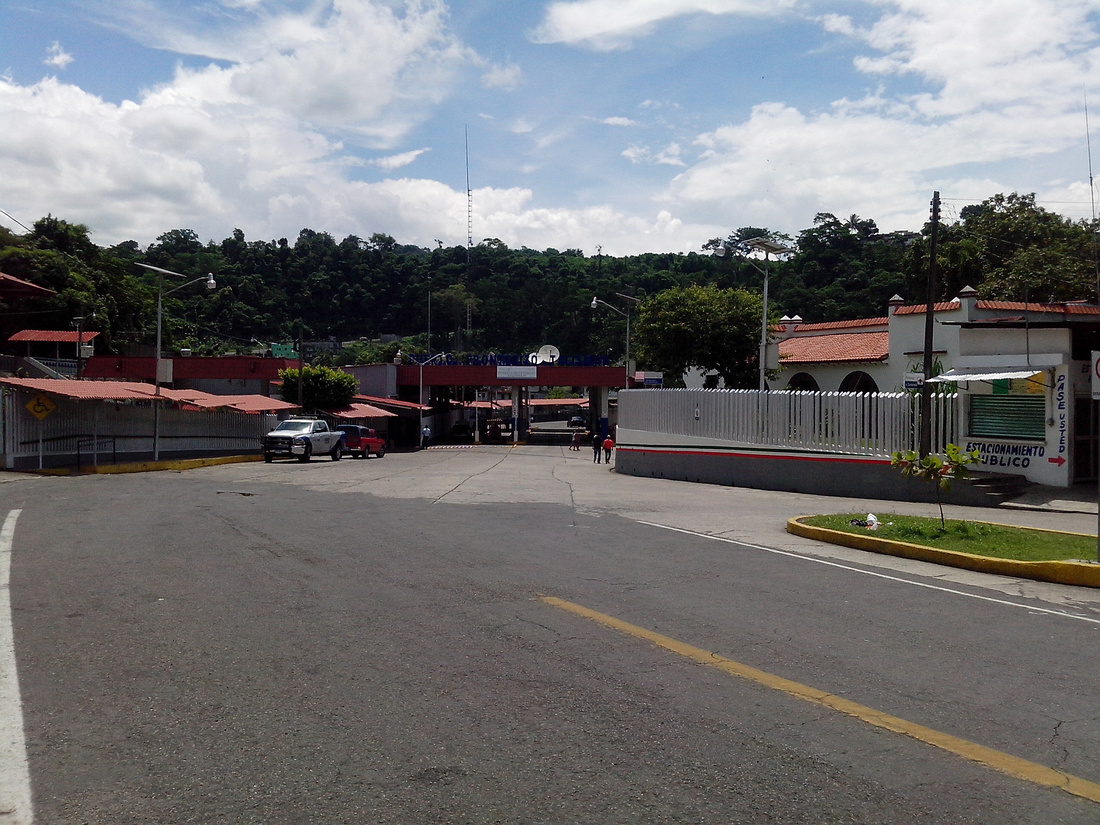
Hotel Puerta del Sol

The hotel costs thirty seven dollars a night. Quite a deal for a clean, safe, hotel with air conditioning, a pool, fast internet, and a restaurant.

The store is a small Soriana. It's right across the street from the hotel. The Auto Zone is new. It was completely built in six months. There was no sign of it on our last trip.

Travel for us has changed dramatically because of our increased ability to speak Spanish. Asking for directions is less complicated and we often actually understand them. The process of obtaining our visas is much smoother because we know the procedure but are also able to communicate much better. A major advantage is the ability to stop and chat with folks along our way to ask about their lives and answer questions about ours. We have found the people of Chiapas to be warm and friendly and it’s such a beautiful state. The highways we travel are amongst the best in Mexico.
In Tonala we purchased a barbequed chicken from a gentleman. He was set up in front of a Soriana (large store). While we were waiting we struck up a conversation. He had crossed the border into the US in his early teens with the plan of being taken to Canada. Something happened at the border that resulted in him losing his ride. He eventually ended up in Atlanta where he was taken in by an American family. I was bursting with pride as he recounted his time with the family that saw to his education and taught him to be a young man. I wish I knew the name and address of the family so I could write and thank them for their kindness and generosity.
The teachers here in Oaxaca are back out in the streets again. This year their beef is a new law stipulating that all teachers must take and pass an exam in their area of teaching. So in protest, they block off main thoroughfares with buses or trucks. Not only does this cause much inconvenience for the people that live in Oaxaca de Juarez, it hampers commerce and hurts the tourism trade. I am astounded by the selfishness of the teachers here. Life is very difficult without the disruption of the transportation system. Closed roads add to the difficulty of trying to make a living. I believe this boils down to unqualified people being held accountable and their inability to accept the consequences of their lack of knowledge in their chosen profession.
While teaching along the border in Texas, I was always amazed at the different speeds that Mexican students acquired English. Some newcomers learned very quickly while others who’d resided in the US for years spoke little English. I’m not a linguist nor do I understand much about language acquisition but I have gained an insight from being around Americans here in Oaxaca. It seems to me that the best speakers are those who really desire to improve their Spanish and are good listeners.
The other day in Matalan, Beth and I attended a birthday party. One of the men showed up wearing a Duck Dynasty tee shirt. I started laughing and had to explain I was laughing at the tee shirt and not the man. At the moment it just struck me as odd. There was a picture of the old man on the front. I have no idea what the old man thinks about minorities but he doesn’t strike me as the most accepting person in the world. Anyway it cracked me up to see a Mexican with a picture of a redneck on his tee shirt.
Friday we were invited to Beto's mother's birthday party in Tlacolula. A Mariachi band played for a while before the switch to modern music.
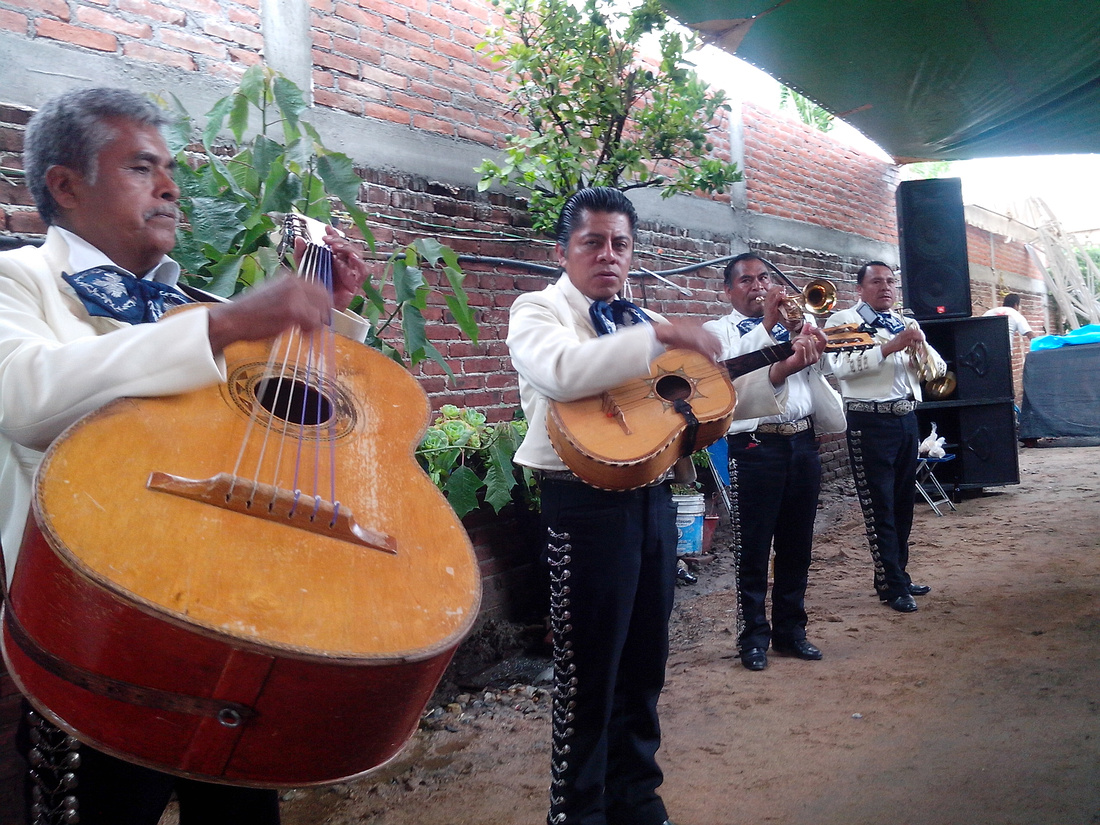
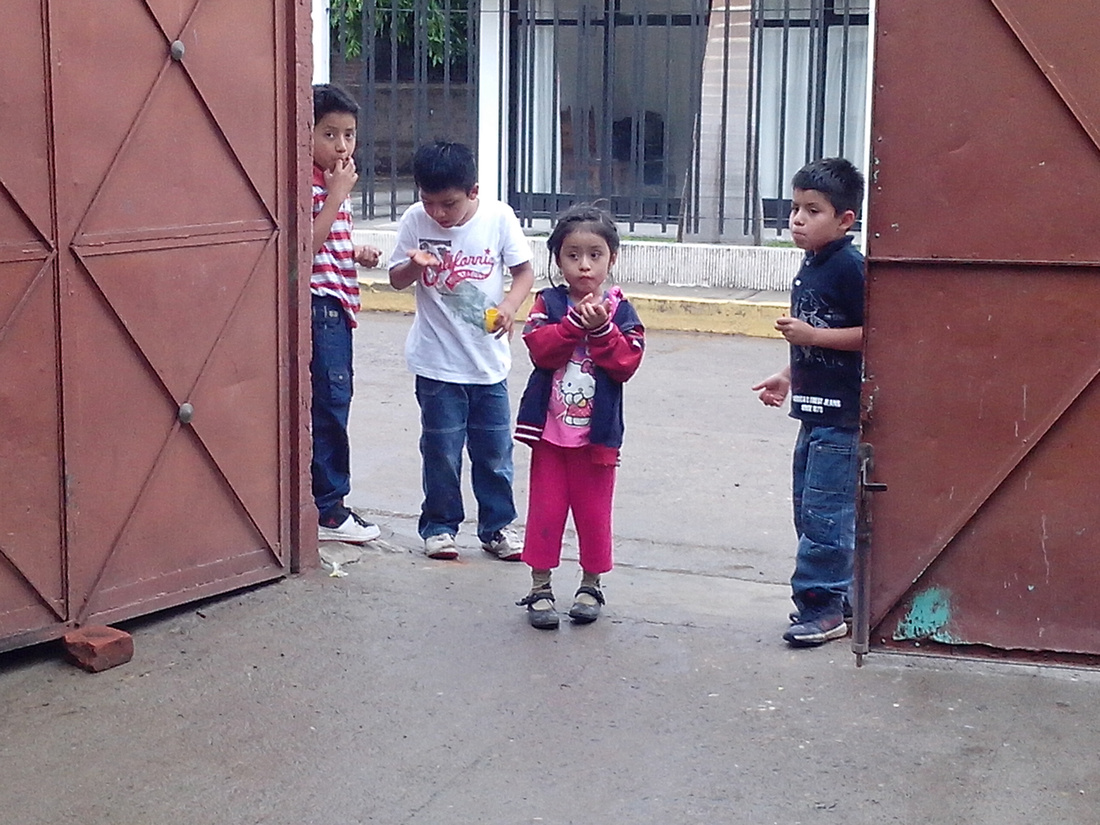
Beth sucking on a Corona. I would guess Indio to be the most popular beer here. Corona is a little more expensive as is Victoria which is our favorite.
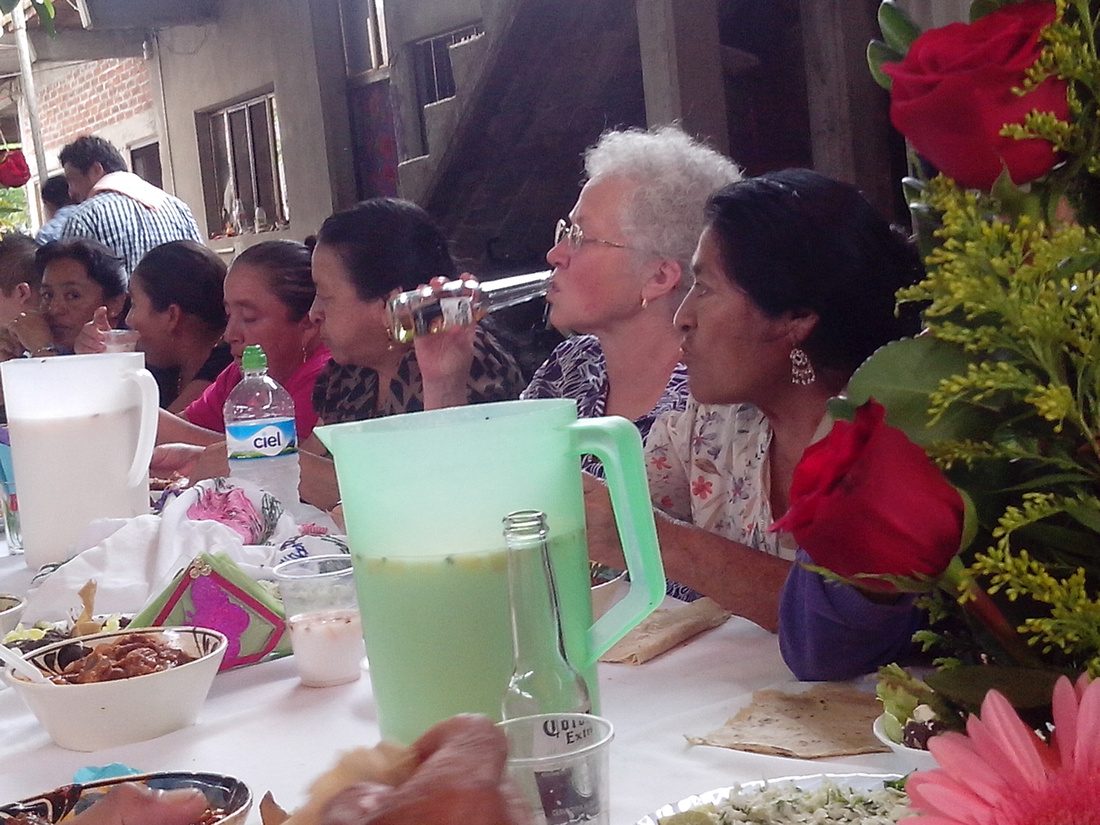
The Priest from Tlacolula loves to sing. I've mentioned that he always heads for my guitar when visiting.

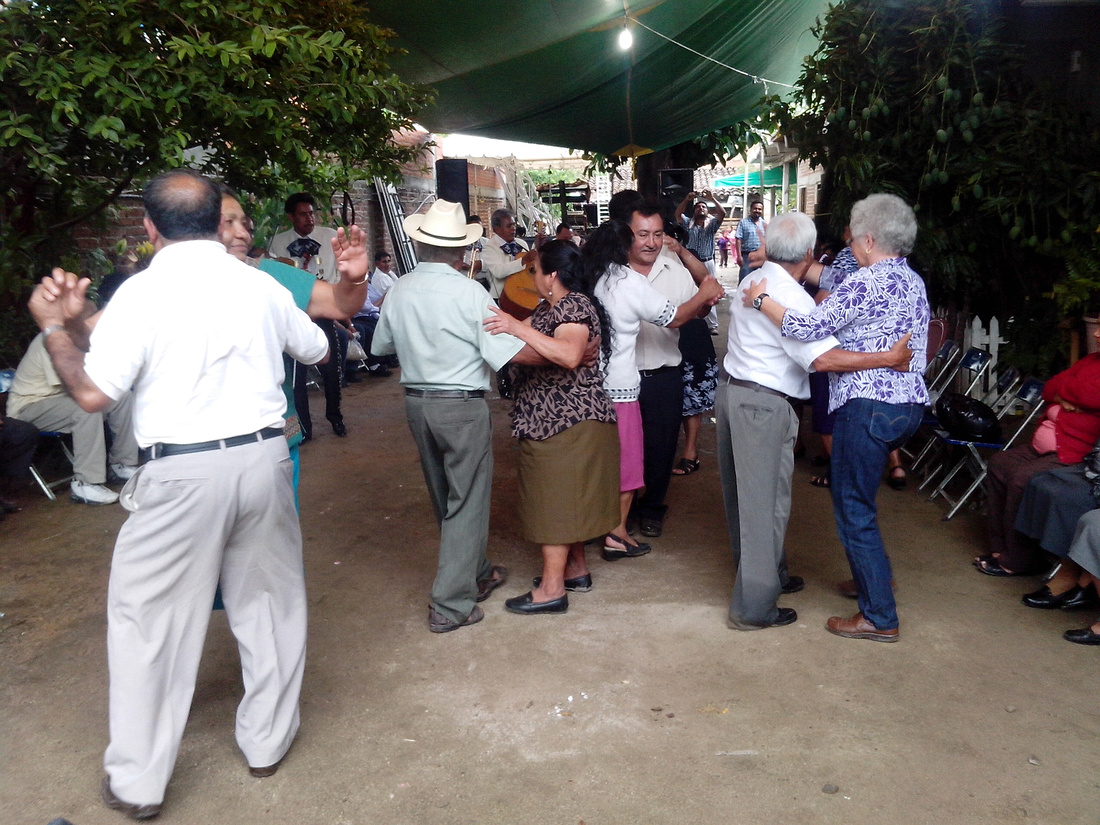
Beth trying to explain something over the loud music and in a foreign language.
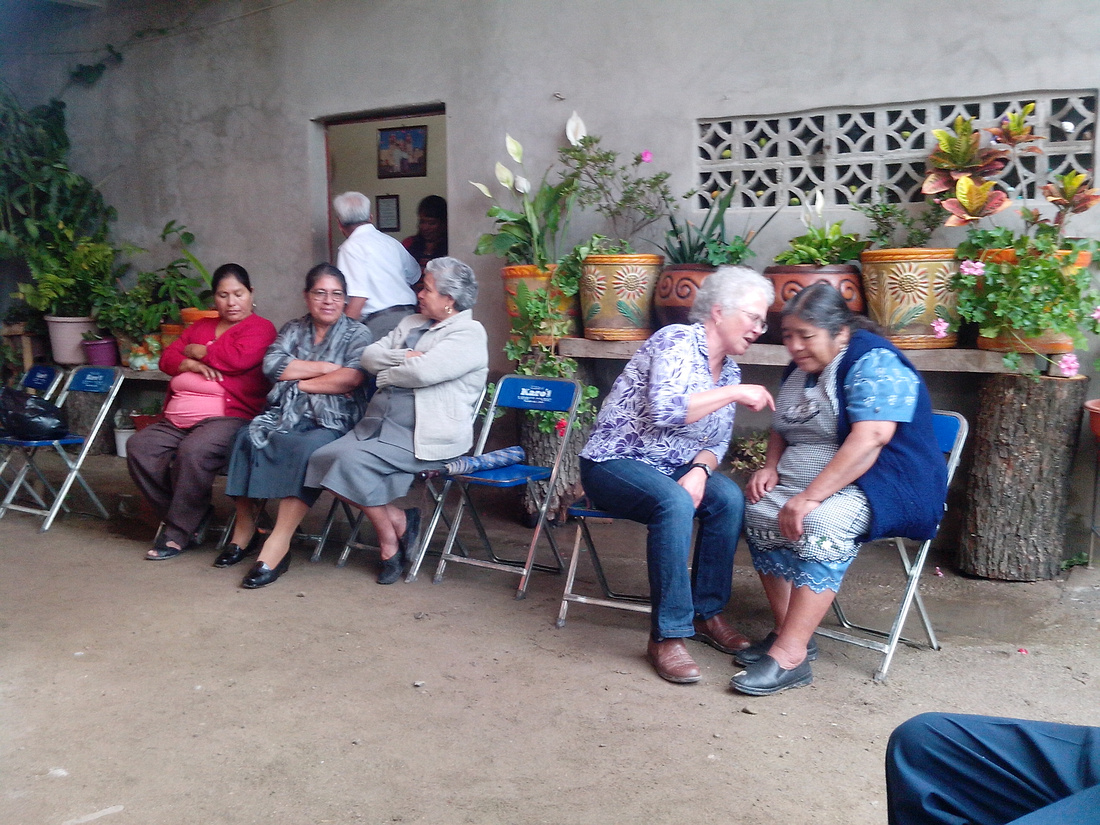
Normally men and women are separated in fiestas. It reminds me of junior high school dances.
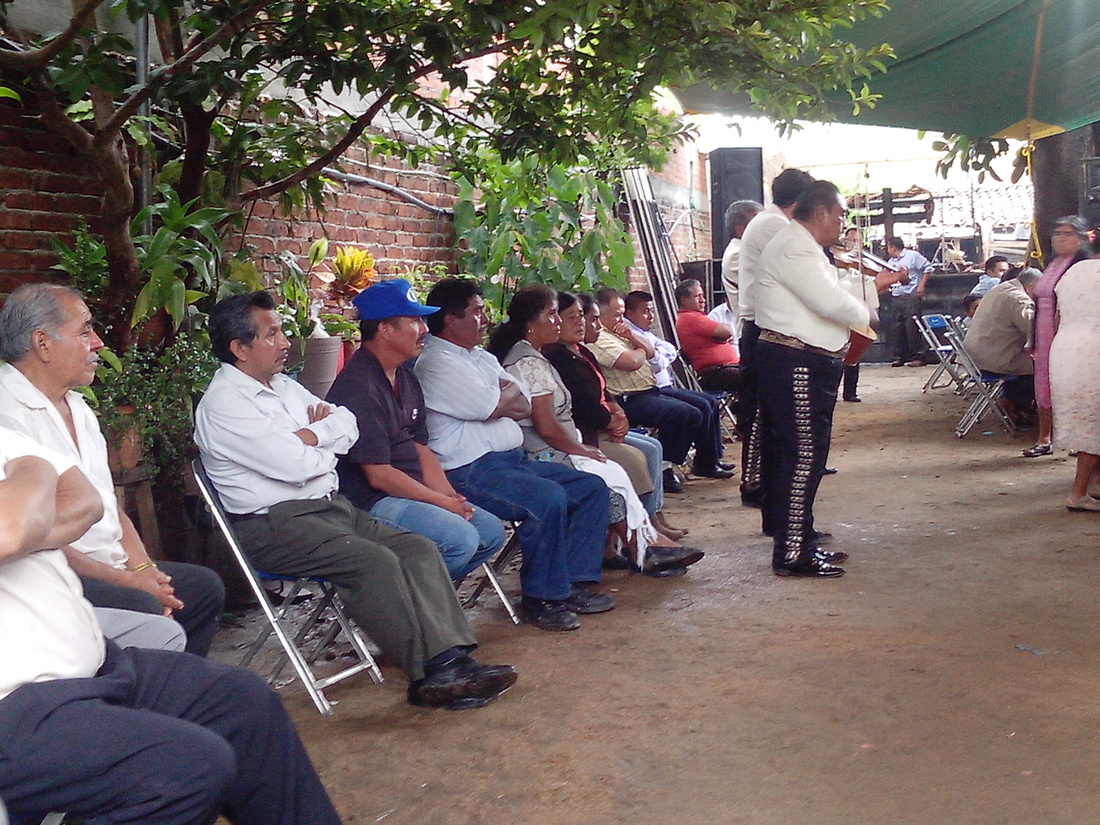
Beth and Beto. Beto has become a very good friend to us.
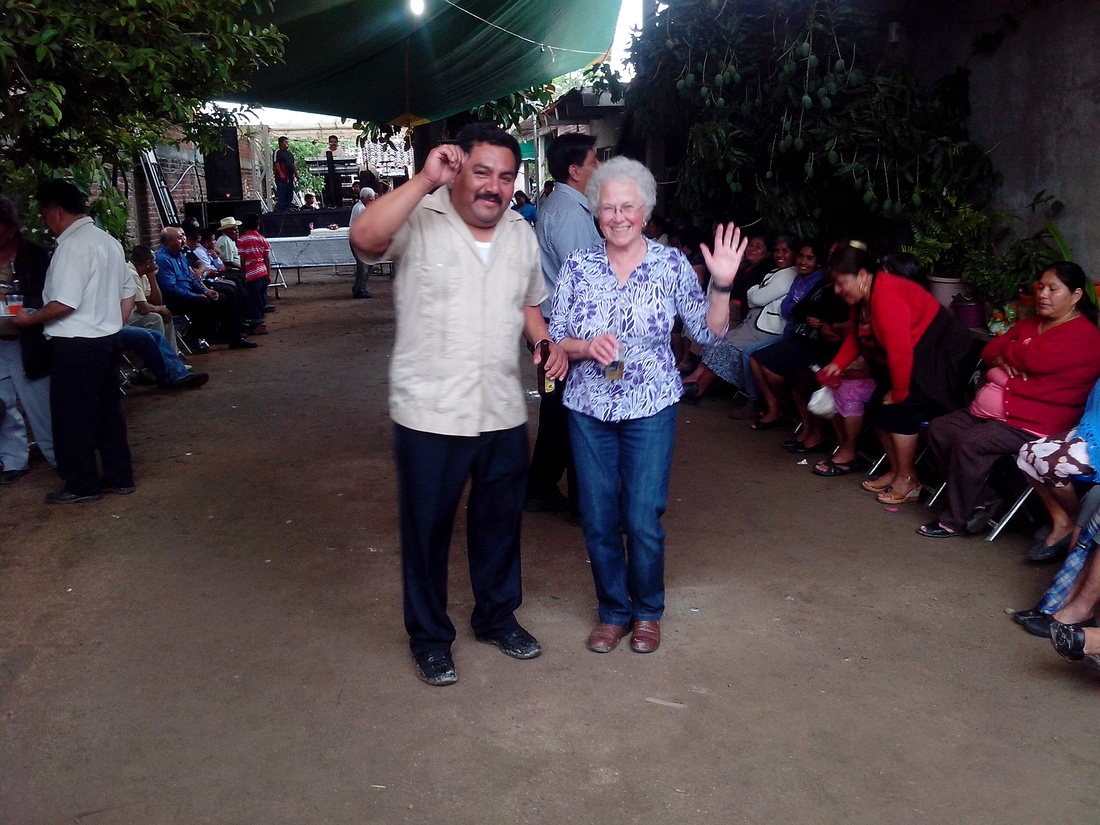
Here comes the beer. This was one of those fiestas that you didn't get much rest in between drinks. The young man in the background is serving mezcal. The young man in the plaid shirt is from Tule. He recieved his degree in Vancouver, Canada. He speaks English pretty well and I'm sure we'll be seeing him here at Don Pedrillo. That's Beto's dad in the white shirt. He loves to dance.
During and after fiestas I always think back to Brownsville. Arnold and Melba Mendoza invited us to several fiestas as did a brother and sister from Totolapan, Oaxaca. We appreciate the friendship they showed us.
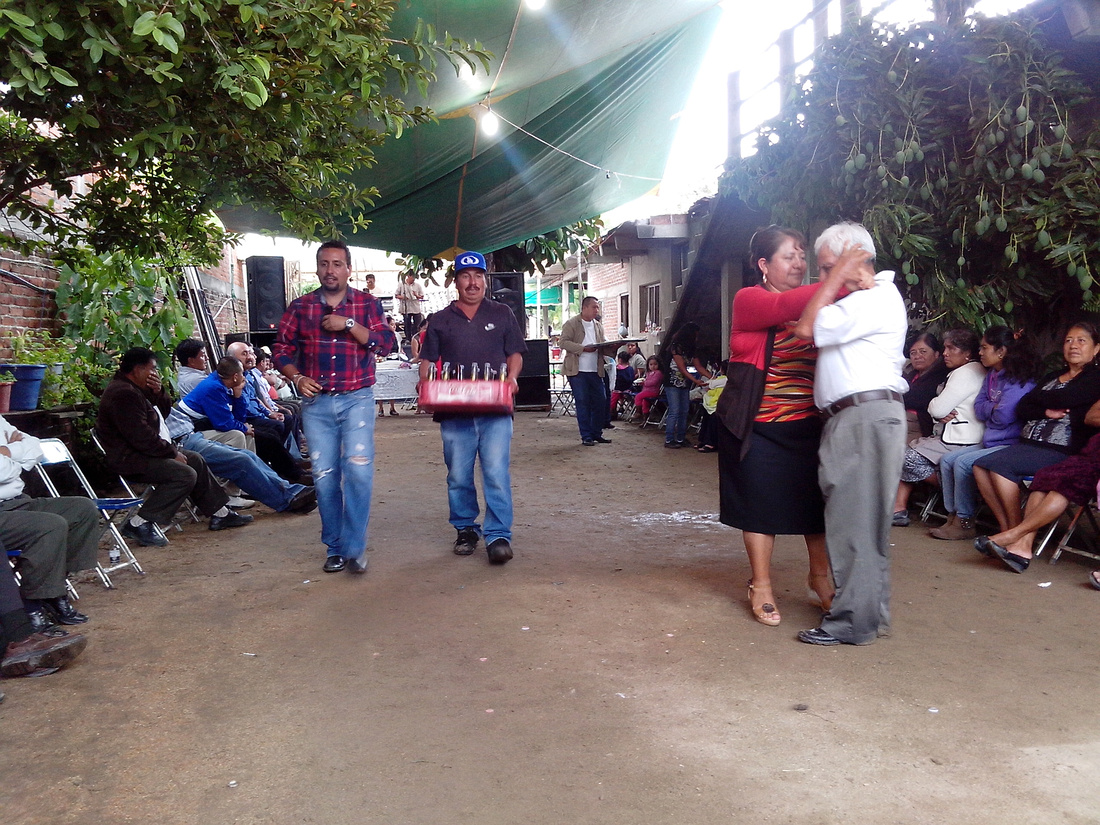
The other day while hoeing, I was listening to music with my little mp3 player. The song "Free" by Zac Brown came on and it really touched me. One of the lines was " We're free, free as we'll ever be". I couldn't help but think that the song pretty well expresses my feelings here. Having good health and being able to experience daily life without a lot of outside pressures is very fulfilling. We are confronted with just enough challenges to keep life interesting but not to the point of feeling overburdened.
We are in the rainy season and new life springs up almost daily. Normally when it rains here it pours but this year we've had some long steady periods of gentle sprinkling. I'd never noticed how much quieter it is when the ground is wet. We haven't had to water our trees for over a week.
Beth and I don't usually pickup hitchhikers. Actually we don't even see them very often. The other day while returning from Oaxaca we saw a surfer looking fellow hitchhiking. We picked him up with the idea of helping him get a little further down the road. Brian is an artist. He'd been to Mazatlan to paint some murals. He was hitchhiking because he'd had his wallet stolen. He'd been on the road for a few days, so we invited him to rest at our home for a while. Tonala, Chiapas was his destination. He lives in a little village on the beach and makes his living painting. Brian is forty and lives alone. His wife died three years ago and the pain he lives with shows in his lifestyle. He's a little reckless in his search for peace. He's originally from Oregon but has traveled and worked around the world.
We talked, drank, and talked while listening to music. It turns out that the anniversary of his wife was the next day. I think he enjoyed being able to talk to strangers. Our conversation went well into the evening so we invited Brian to stay for the night. A little risky because we still didn't really know him but felt compelled to help. In the morning we took him to Tlacolula and bought a bus ticket for him to Tonala. We were a little sorry when he left. A bright adventurous guy making his way in Mexico! When we go to Guatemala, we'll pass about fifteen minutes from his home. Looking forward to the visit.
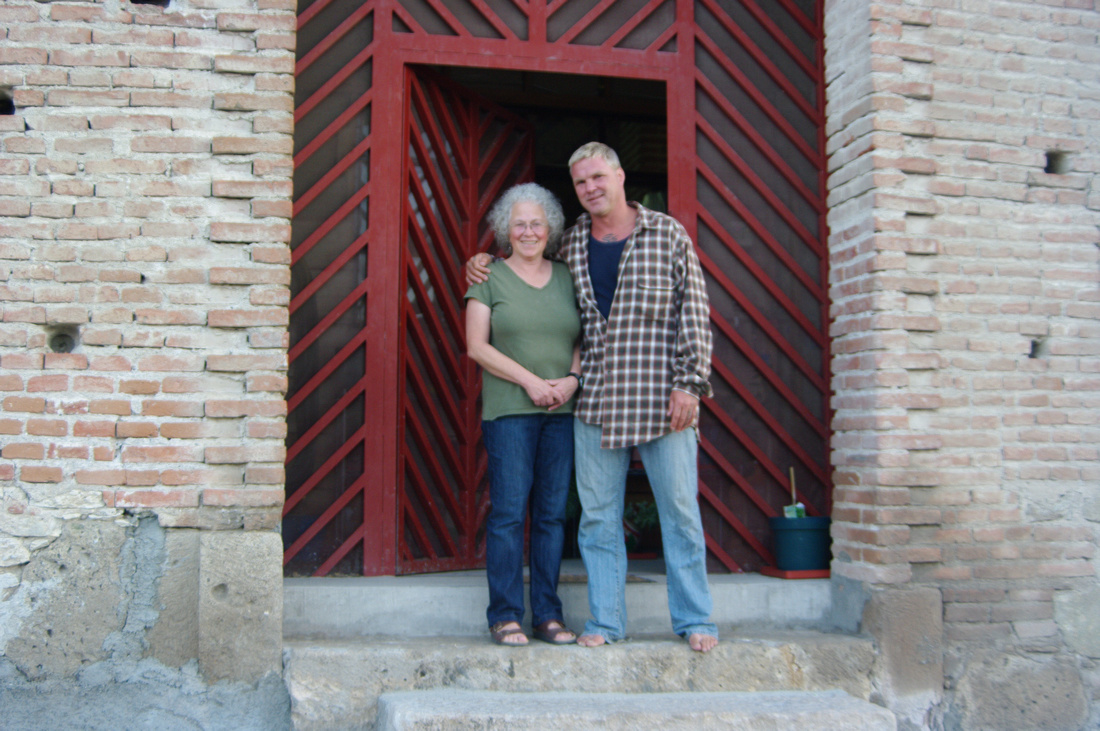
This photo was taken before sunset one evening. The colors are true. They were not manipulated in any way. It was almost eerie. There is a dramatic sunset here almost every evening which is our favorite time to be outside.
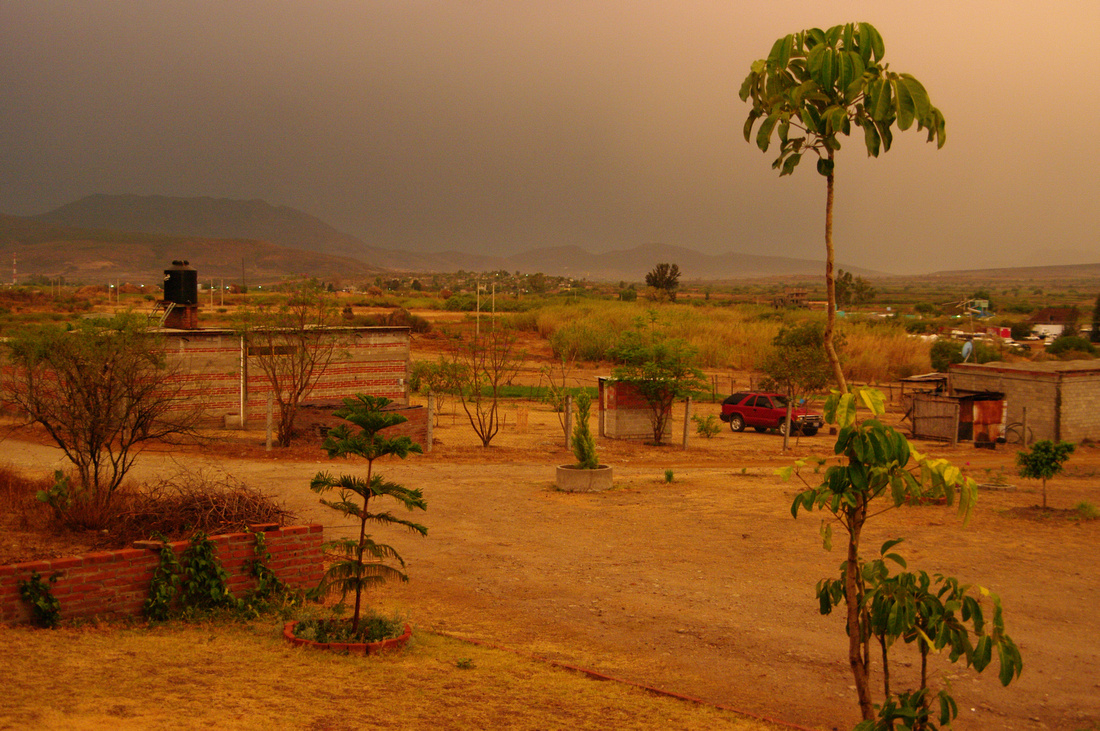
We were recently invited to eat at Juan's cabin above Matalan. Beth and I were the first to arrive so we helped Juan throw together this comal of adobe, rocks, and mud. We ate memelas (a super thick tortilla) and re-fried black beans.

Juan just finished closing off the cabin. The wind really whips through here so the protection was welcomed.
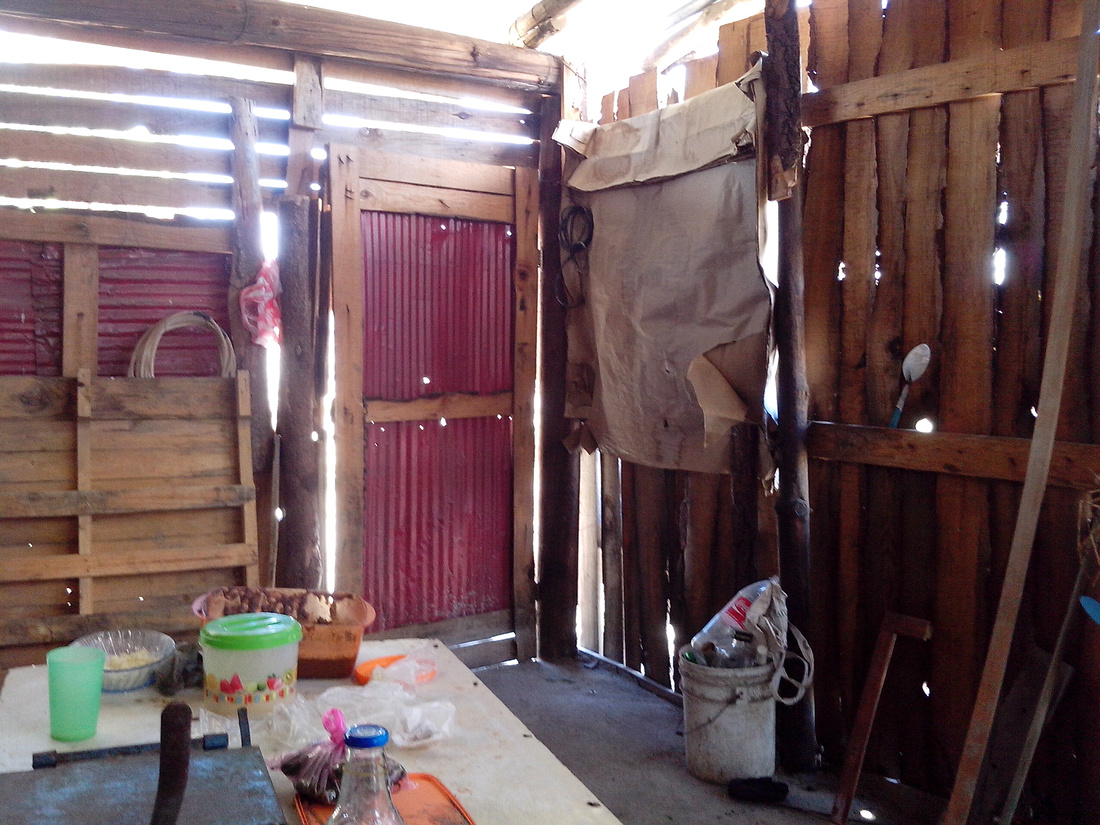
The rustic cabin provides a warm atmosphere. It's a wonderful place to relax and be with friends.
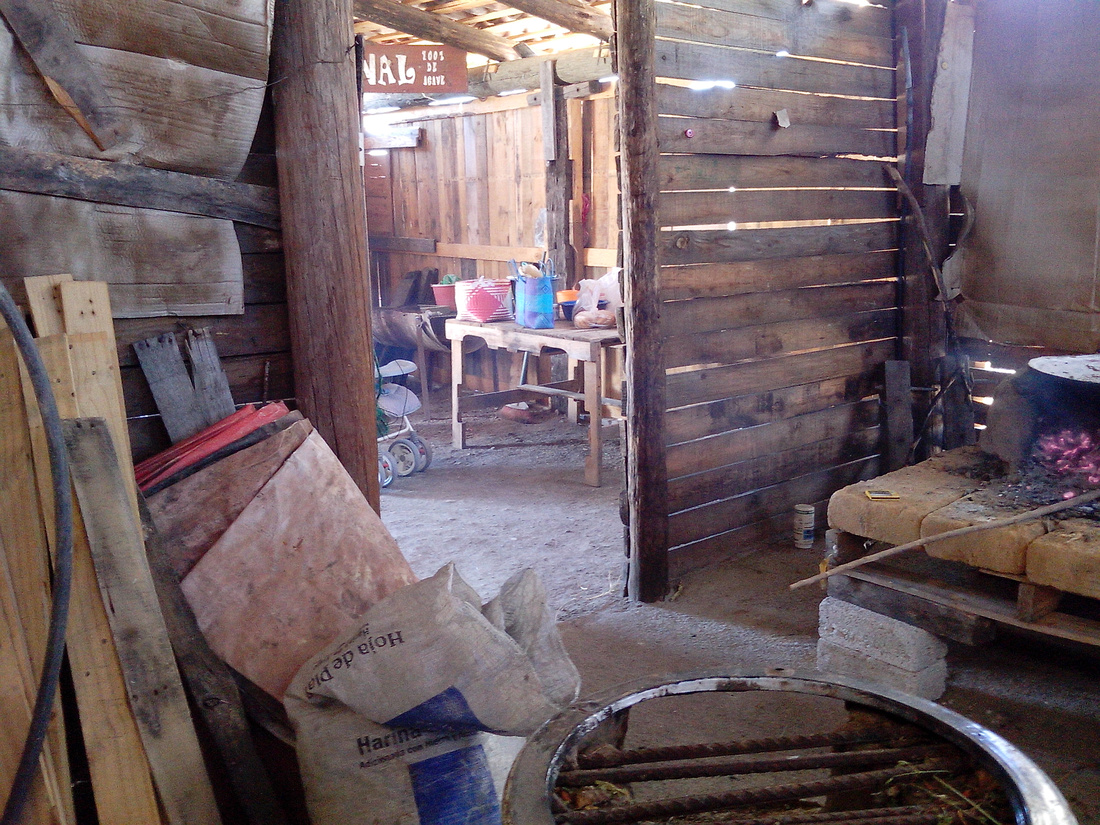
Juan and Felipe in front of the magnificent view of Matatlan down below.
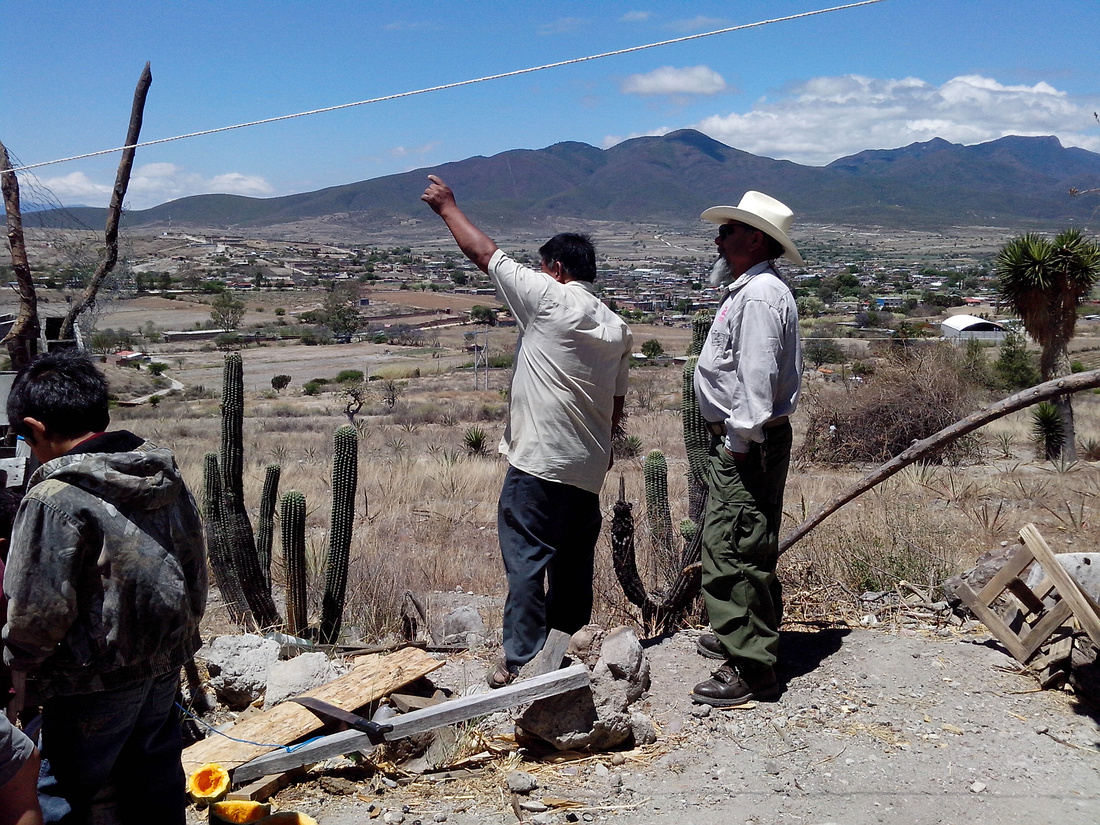
For Mexican Mother's Day a few friends from Tlacolula, Matatlan, and Union Zapata, came over to celebrate with us. Casto and Luis are cutting up the chivo.


Beto's kids Shela and Armando always gravitate to the computer.

Never trust a woman with a machete!!!!!
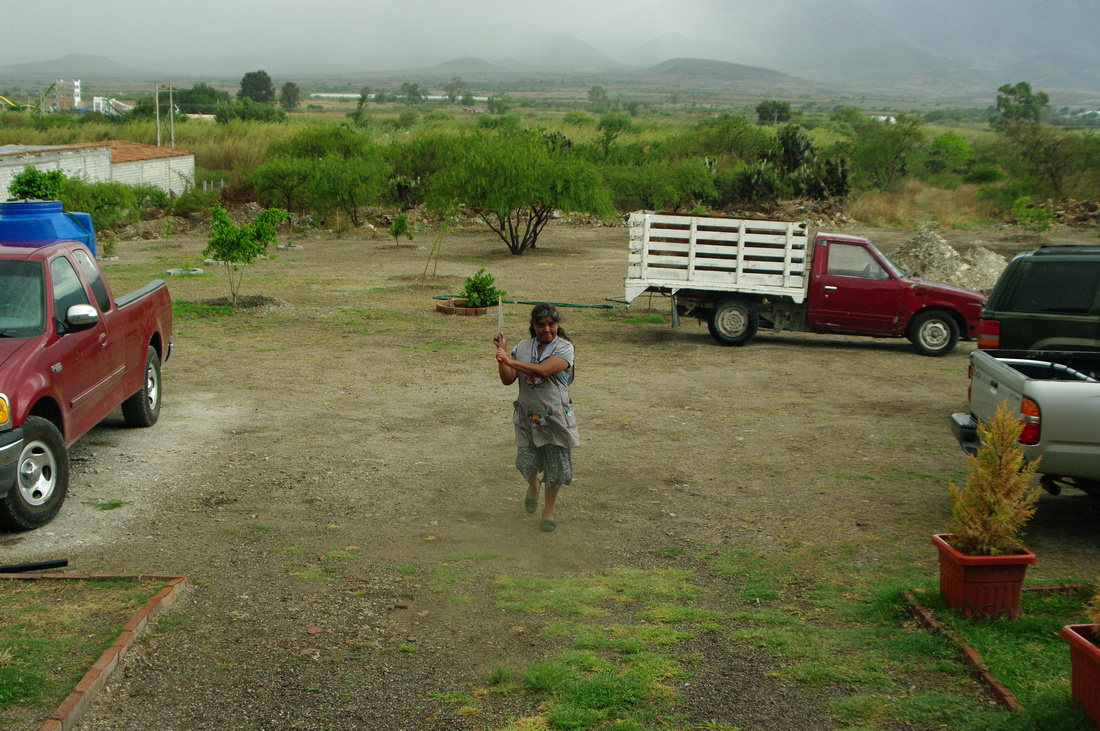
Grilled goat meat. A first for us. We even added a little barbeque sauce.
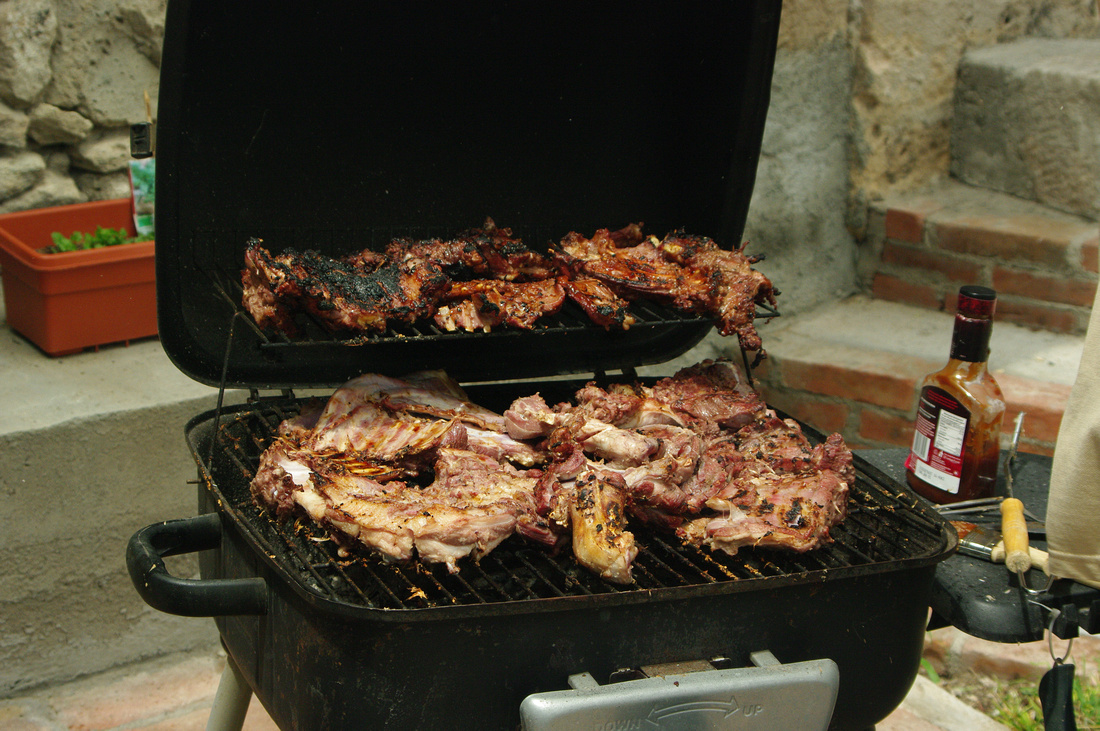
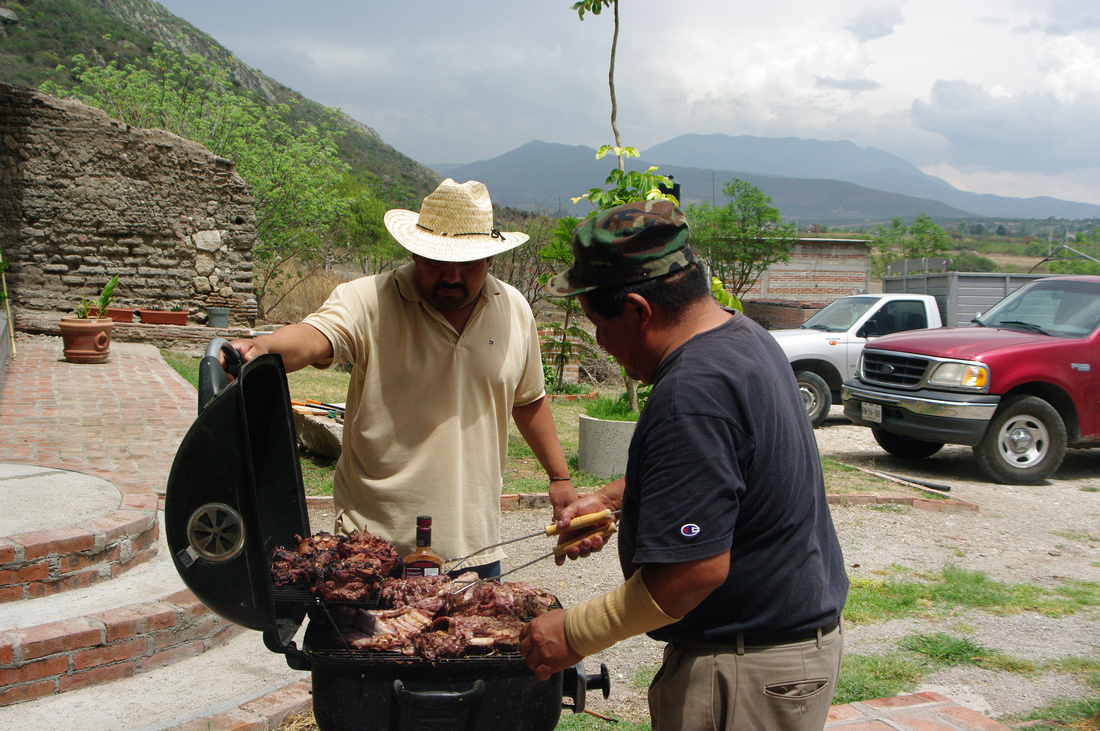
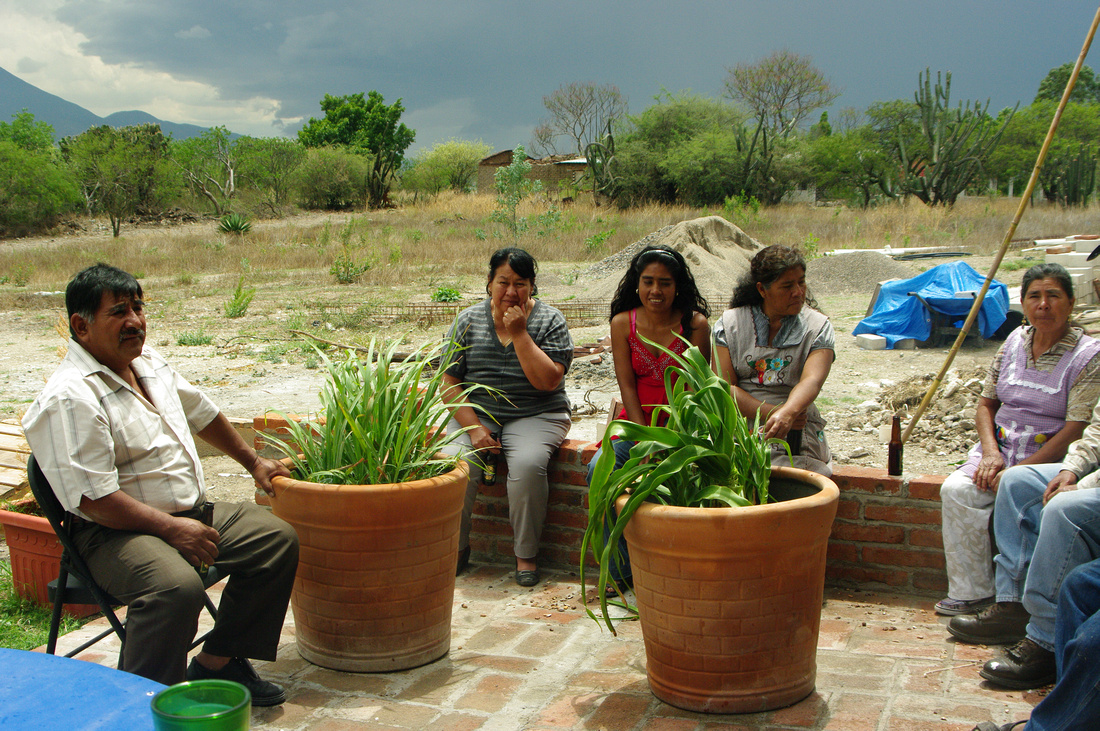
Delores in the background talked to her son in the US while we waited for our meal.
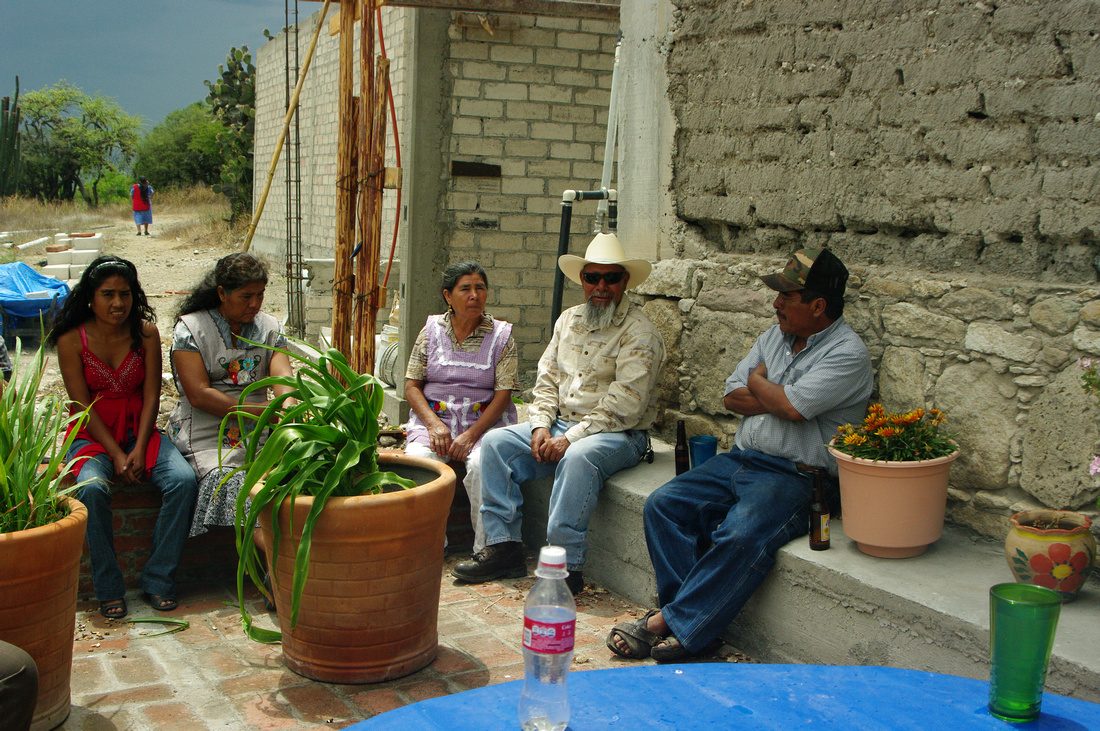
The first course was consume made from the internal parts of the goat. It looked good but turning it over with a spoon and seeing pieces rise to the top was a little much for me. I kept thinking where is Andrew Zimmern?


Beto's daughter Yesenia. She's fifteen and a half and has a wonderful personality which shows in her picture.
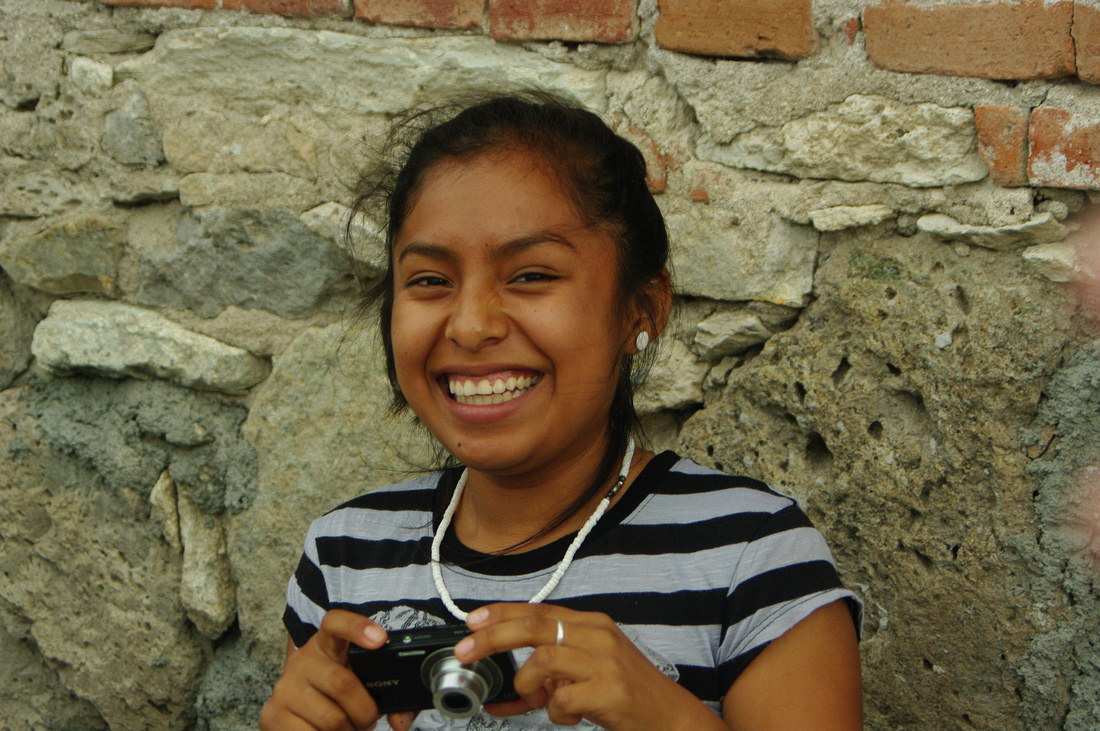
We ended up having to eat inside due to the rain and wind.

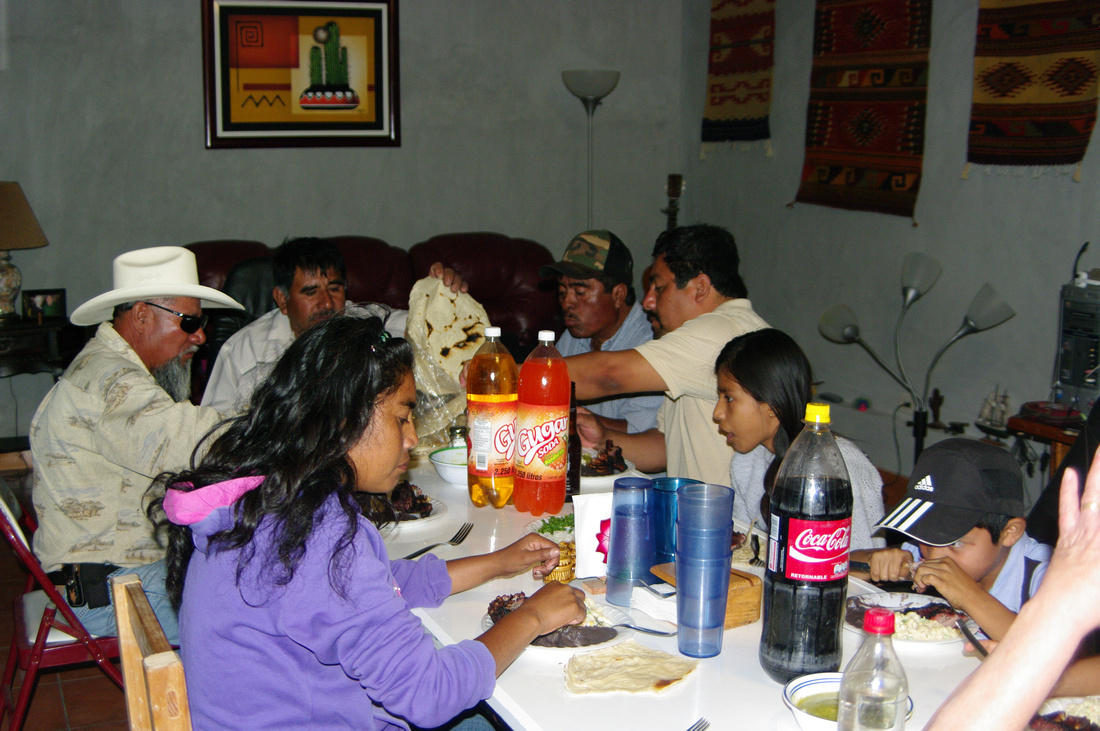
We went to a park with Beto's family in Tlacolula the other day. Seeing families playing together must be universally heart warming.

We are adding another septic tank to help disperse the water. Topsoil here was about a foot then pure sandstone. It took a backhoe six hours to dig the hole. The backhoe cost about thirty two dollars an hour.

Because we live so far from a supermarket Beth has started washing storage bags instead of throwing them away.

We drove to a little Zapotec village called San Marcos. Looks like they are serious about their people behaving. These cells are not for serious crimes. Wandering around drunk and being obnoxious is probably the most common offense.
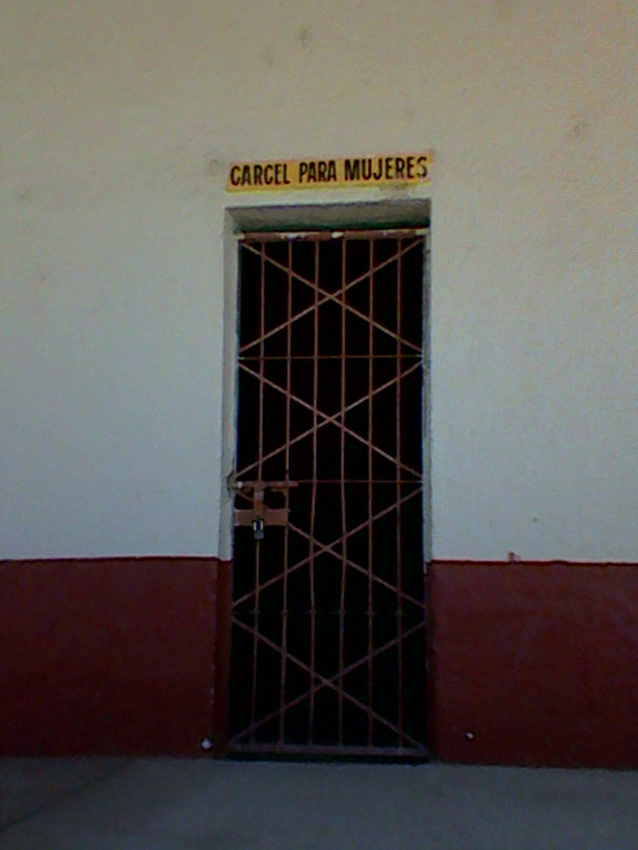 c
c
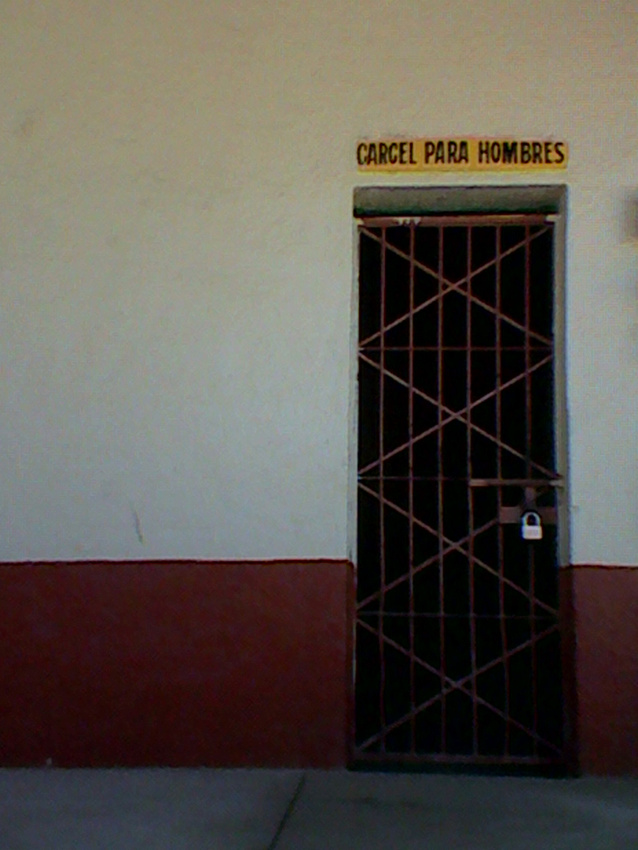
Looking inside the gate you can see that Beth is acquiring quite a green thumb.

Our first blackberries! Zazamoras are not very common here but we managed to find some plants in a Oaxacan nursery.

There is a bird's nest in the tall ficus. She can't be much more than two and a half inches tall. We've never heard birds singing like they do here. Sometimes they actually wake us up in the morning.
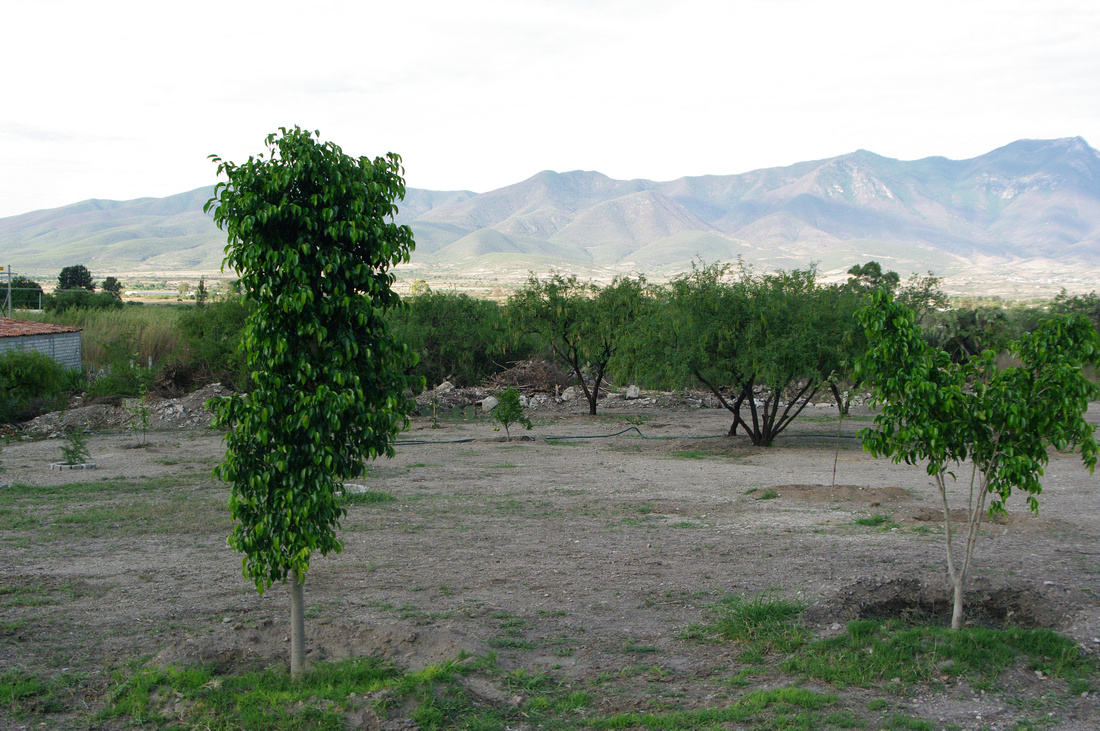
Our mandarine tree. We'll be eating them before long!
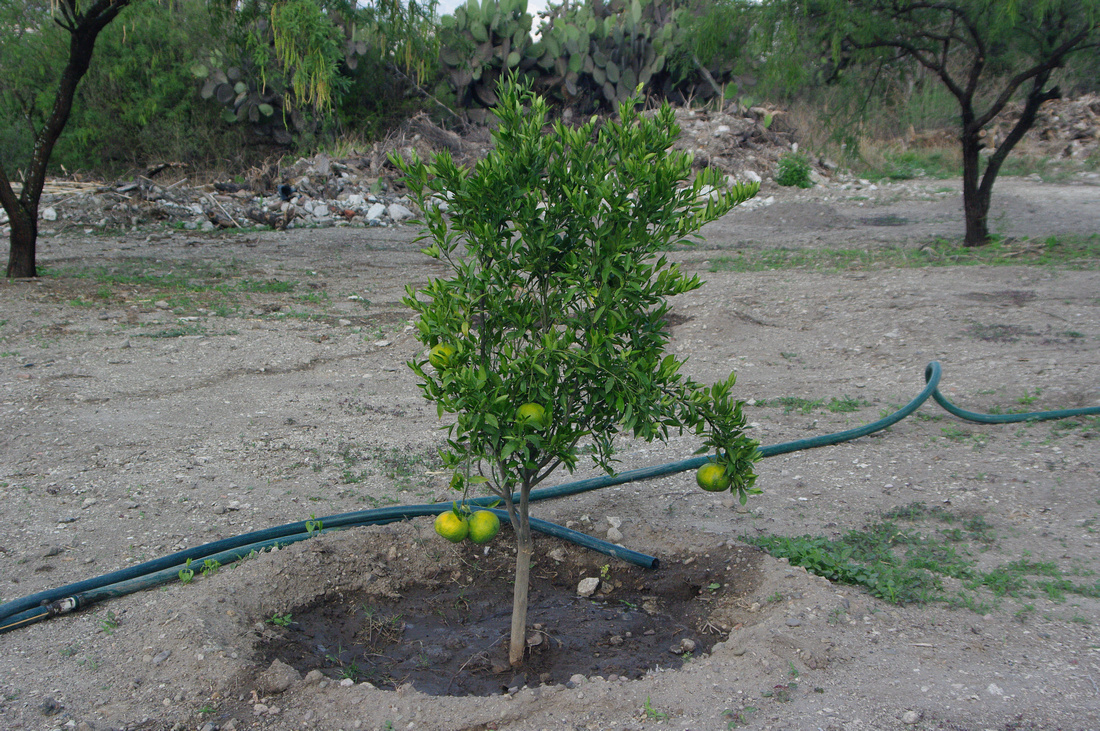
Our orange tree. Planting trees here is very labor intensive. In many places the topsoil is only six inches deep. We dig into the sandstone about three feet and fill it back up with natural fertlizer and soil.

One of our blackberry bushes.
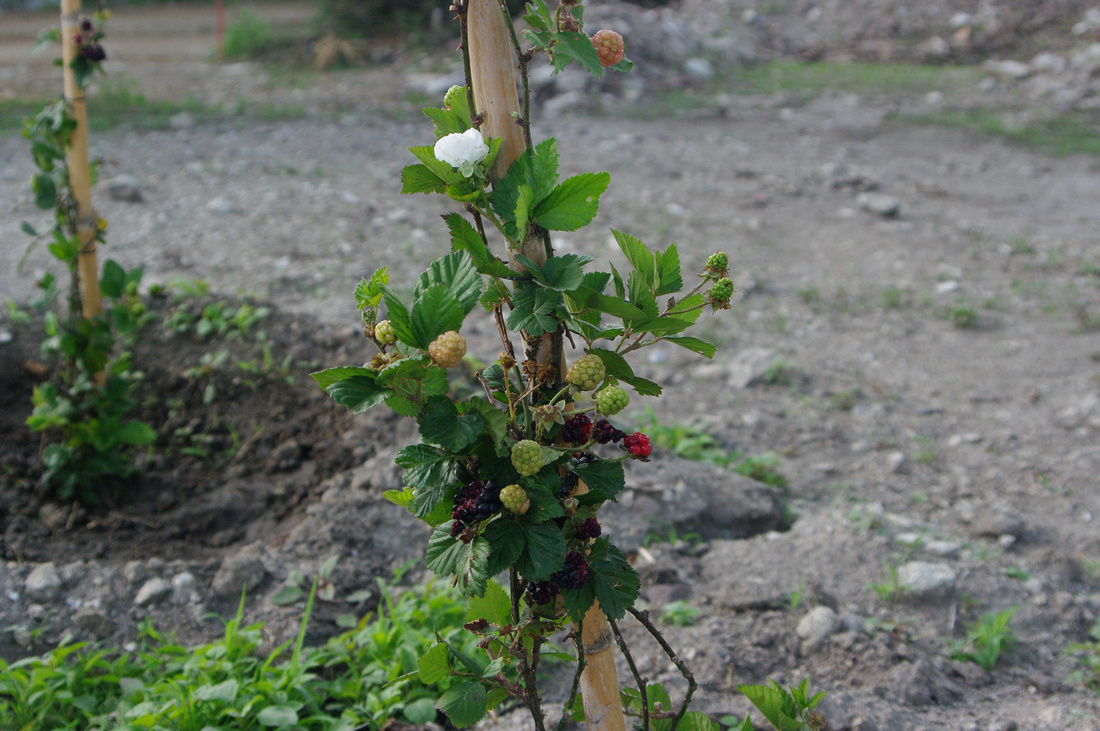
We very seldom walk to the property behind the house. This view is looking towards Tlacolula. There is a red dot towards the right hand side of the photo. You can't make it out but there is an orphanage there. I believe it's ran by a church group from the States. We've donated toys there given to us by friends.
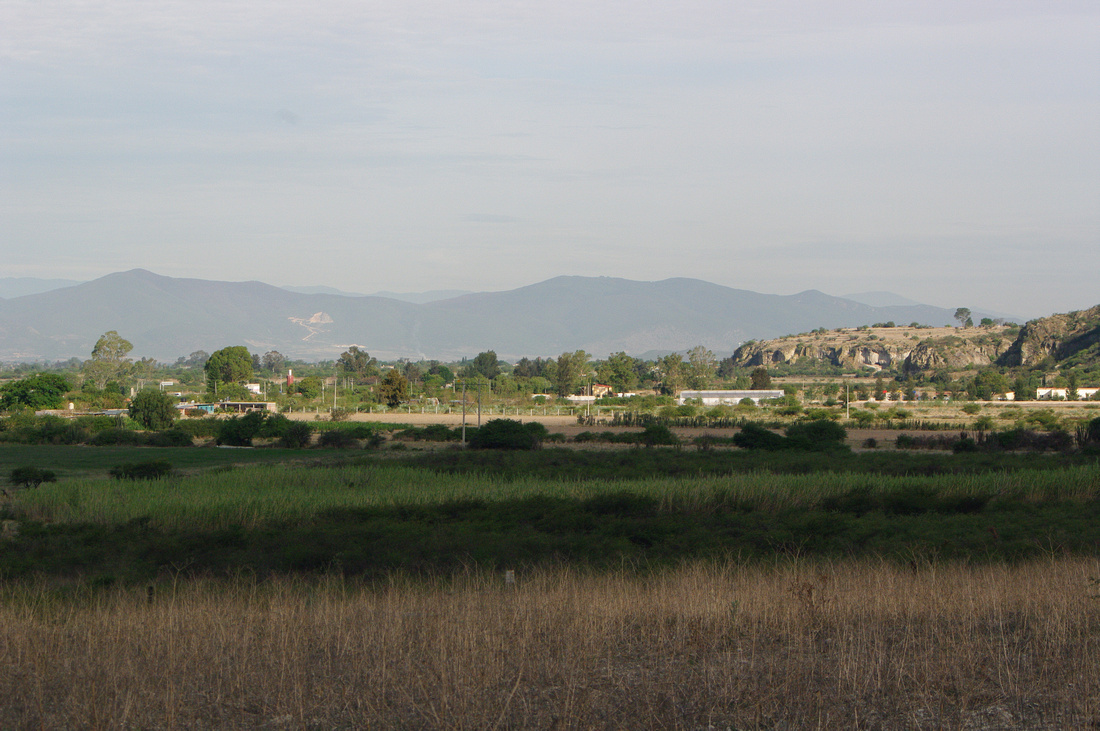
This is from the end of our property. You can see how close to the mountains our property is.
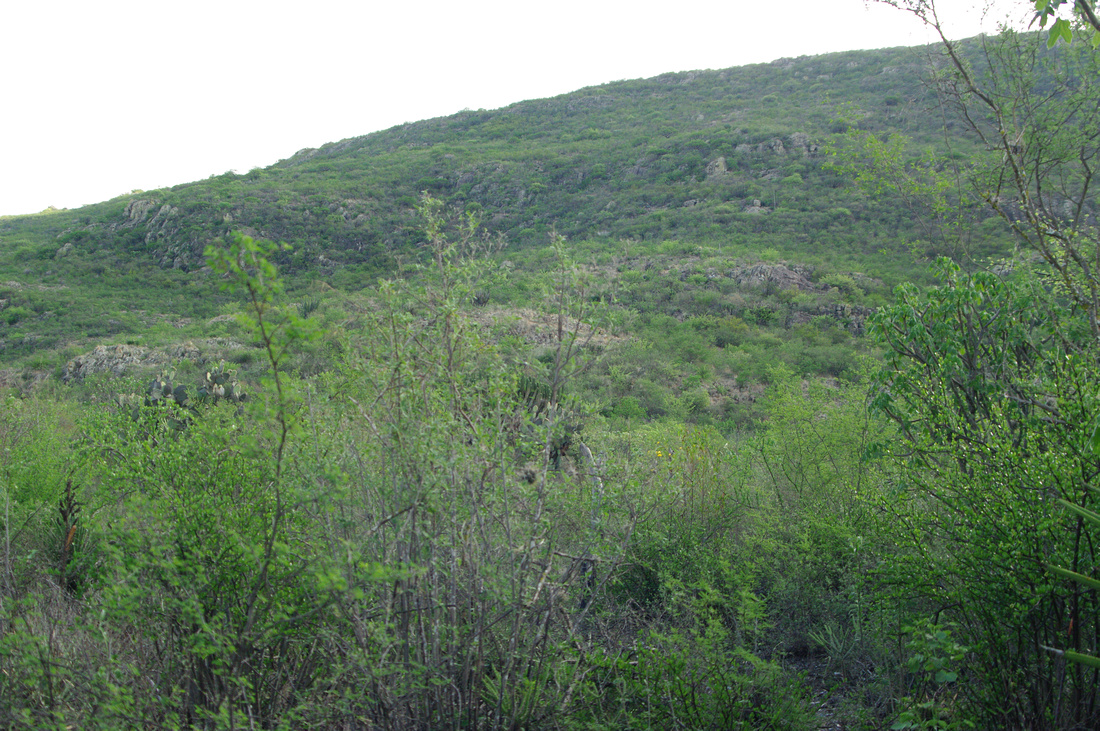
This plant is called Mala Mujer and with good reason. A brush againt it can cause discomfort for more than six months.

This cactus is also another you don't want to brush up against. The needles are released on the slightest contact and they have a barb on the end which makes extracting them painful. These plants are very common so when walking in the brush you have to be on the lookout for them.
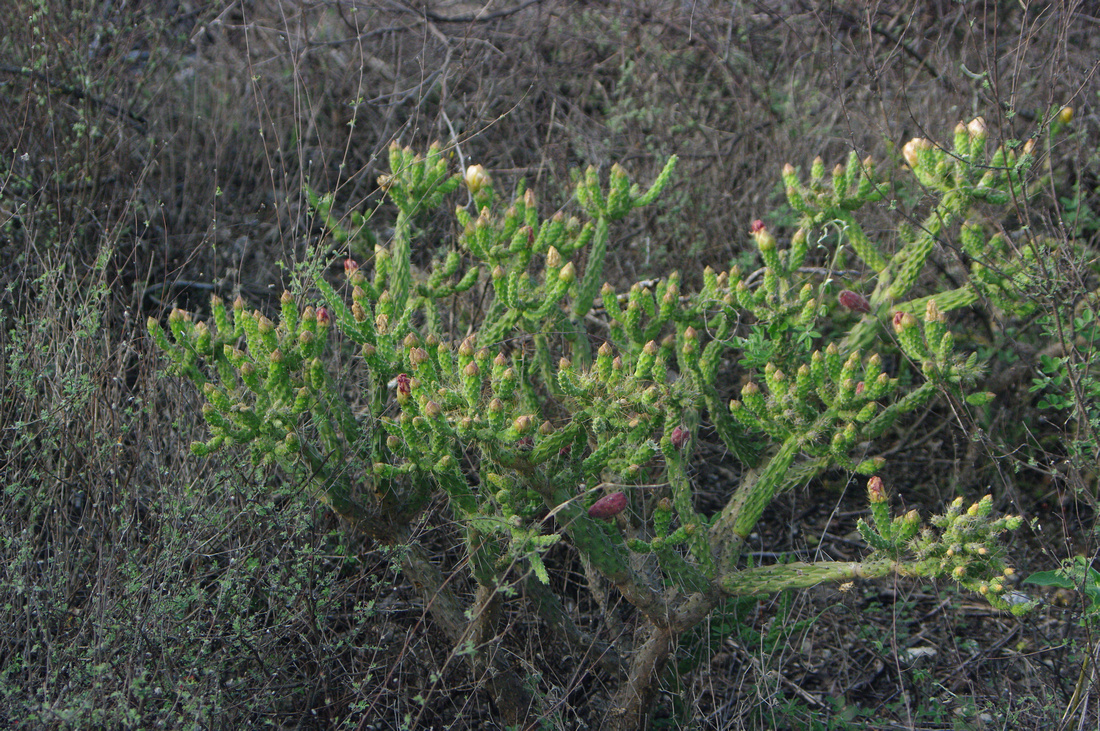
This cactus produces a prickly pear that is much sought after. They are quite tall.
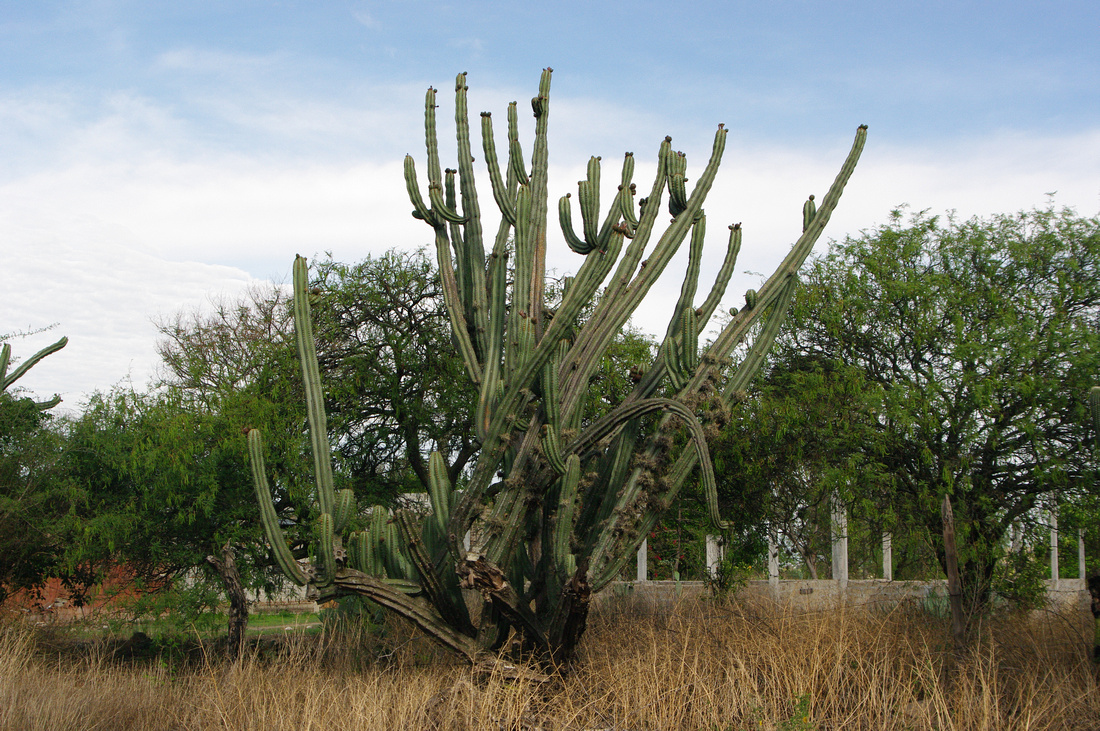
A close up showing the pricklypear.
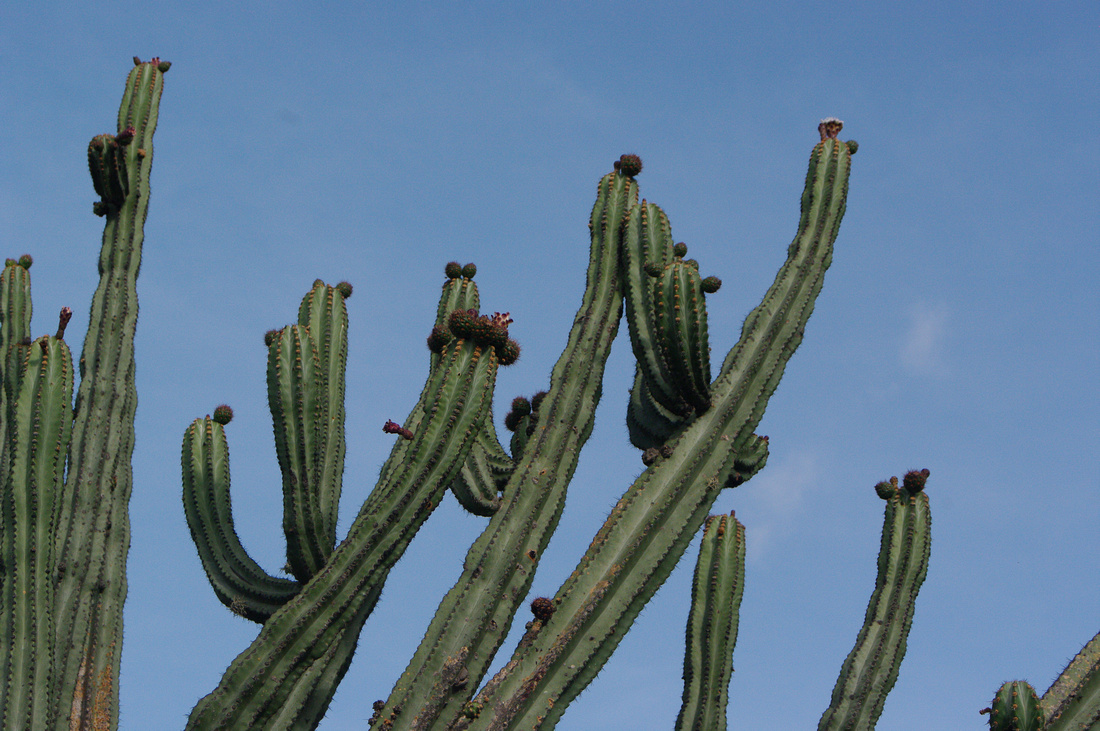
These are the tools used to pick pricklypears.
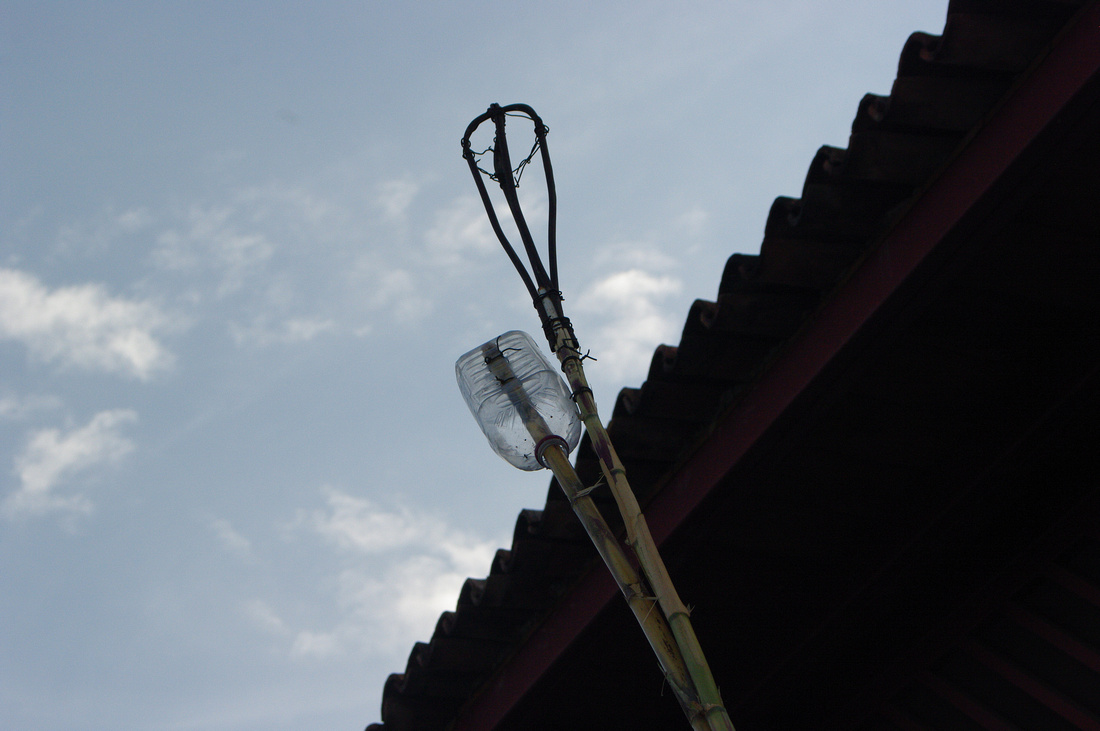
I built a little bridge to avoid stepping on our pvc sewer line.

Beth makes tea from this lemon grass plant. It's not in the lemon family but smells and tastes exactly like lemon.
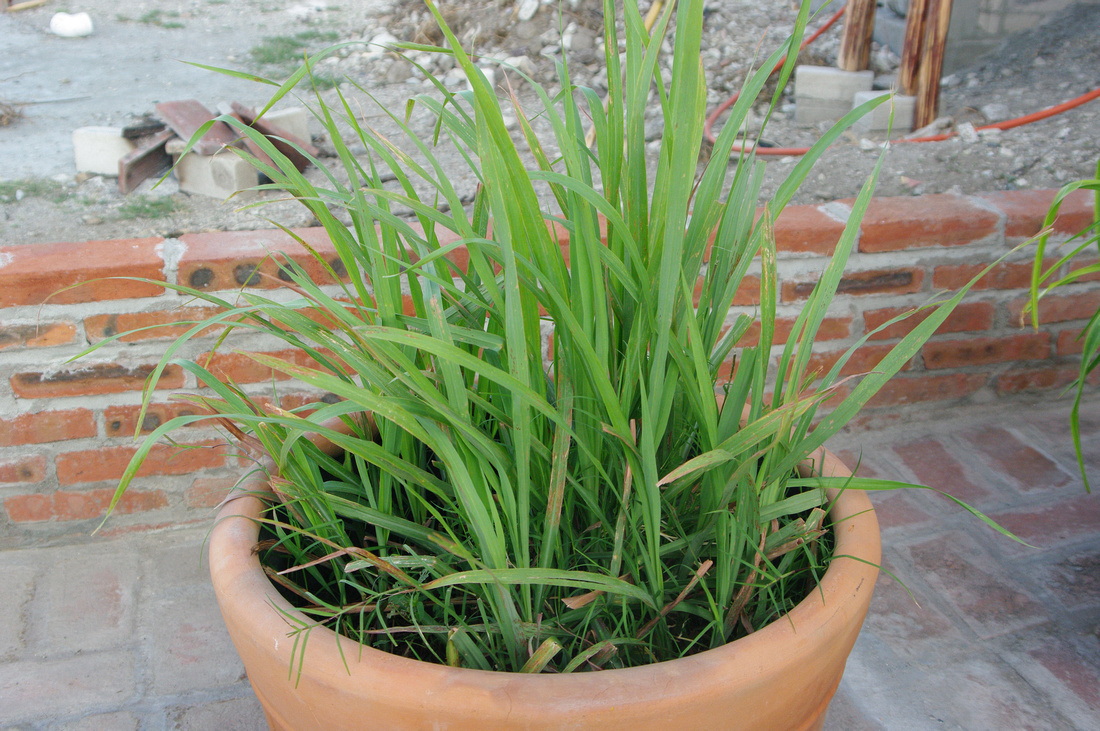
Beth and I are about to finish a book titled The Oxford History of Mexico. We've read several narratives but this one is a little different. It's a compilation of essays written by several authors who specialized in certain time periods. It's so informative we both feel like we understand the Mexican psyche a little better. Things make a little more sense now. I've always admired the way Mexicans we know deal with their country's past. The grumbling always stops short of hate. Quite a contrast to many Americans who seem to relish in it. We don't miss those folks. Been there done that!!! Anyway we recommend the read.
March 15: Our well has begun to dry up. The rains came late last year and the season was short. We are in the process of deepening the well. We have already seen new water and are hoping that another three meters will put us back in the green. If we had been drawing water just for household needs, we probably would have been alright but we have over forty trees that also need water. We have been able to maintain water for the house from the water that is being pumped out daily to facilitate digging. Trees are being watered by filling a tinaco from the old well below the house.
March 19: Stopped the digging, considered having a machine come in and bore a deep well, but decided to dig on. Felipe brought in two men from San Baltazar. They worked one day then noticed a problem. The rings on the top of the well were supported by two cement posts. The workers located breaks in the cement posts. If the posts broke, the rings would fall to the bottom.
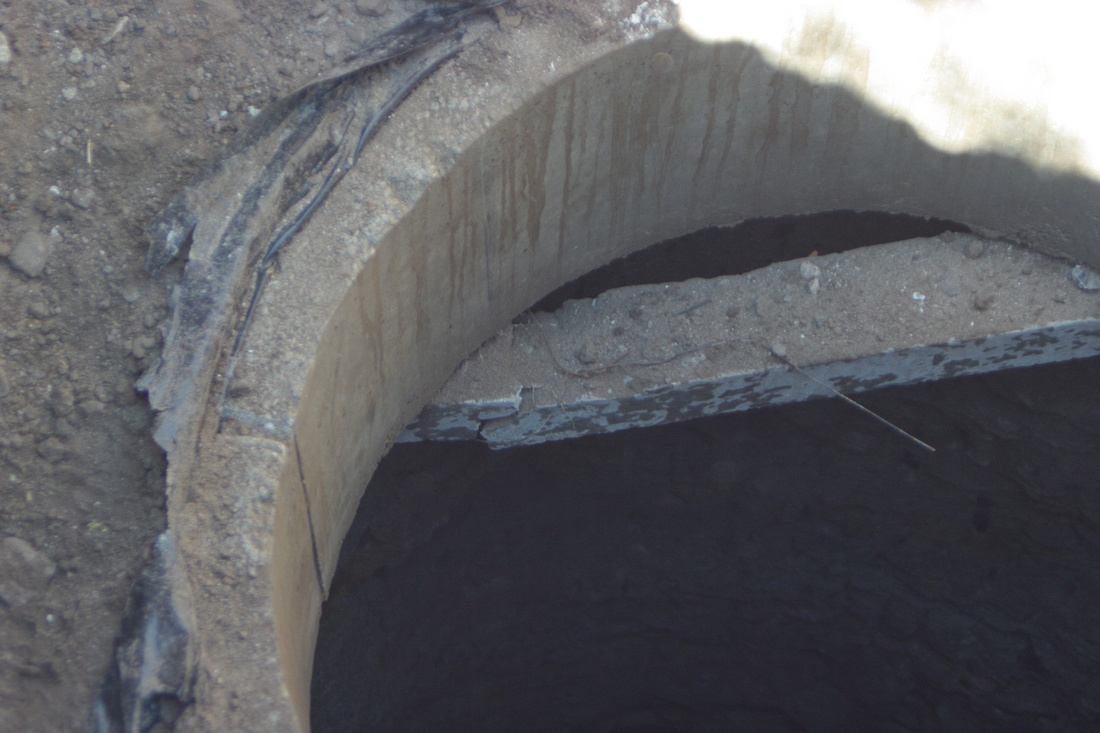
So... all the rings had to come out. I bought two, two inch rolled steel bars which we installed in place of the cement posts. The rings were then put back into place. We used a chain hoist to remove and replace the rings. It was very scary especially with the bottom rings. I decided to photograph the removal of one of the rings. Not sure what everyone thought but I could of sworn I got some "what the hell" looks for not participating.
The gentleman in the orange shirt is my neighbor.
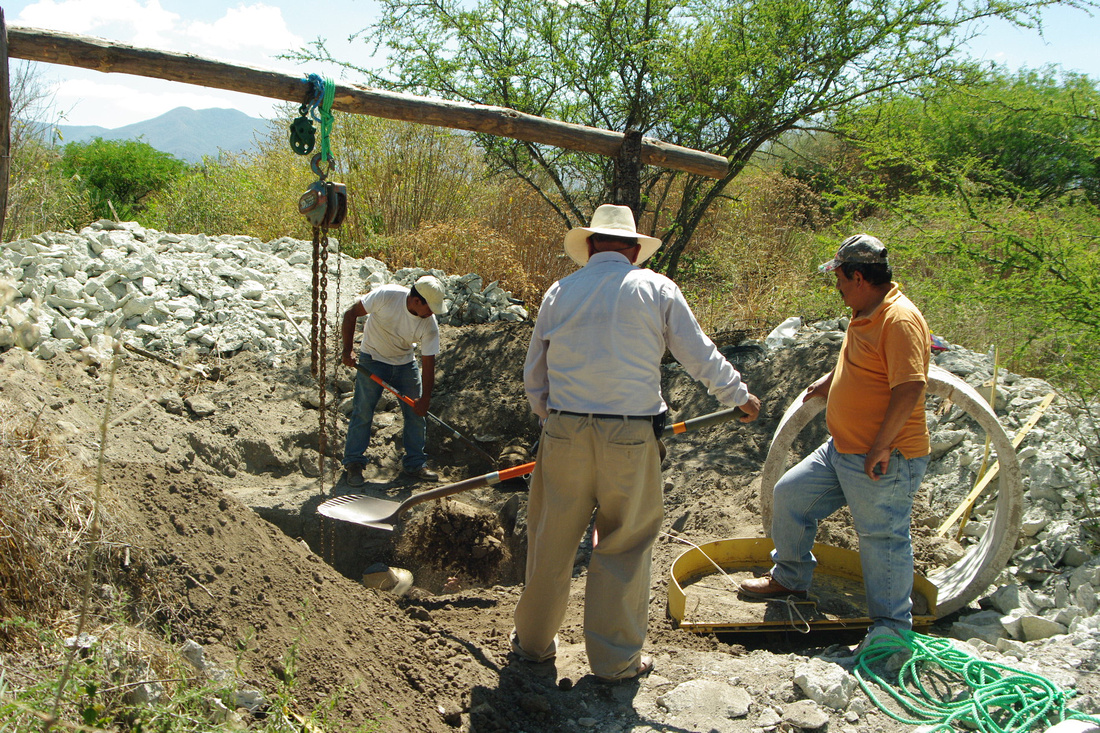
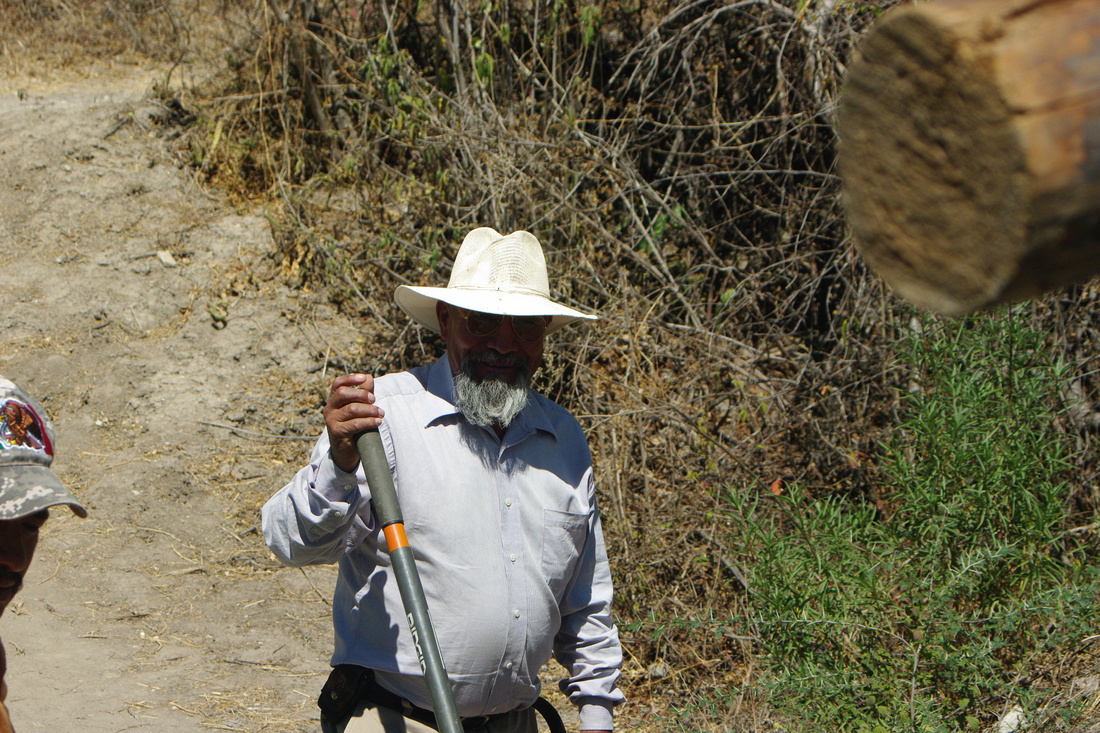
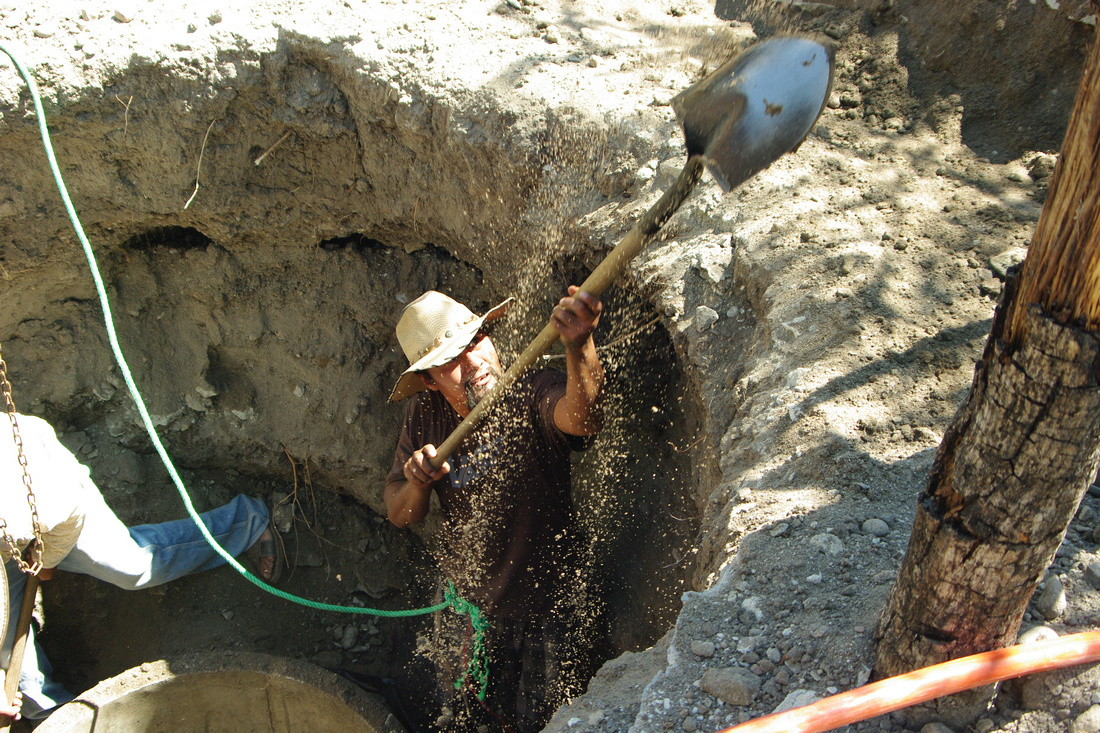
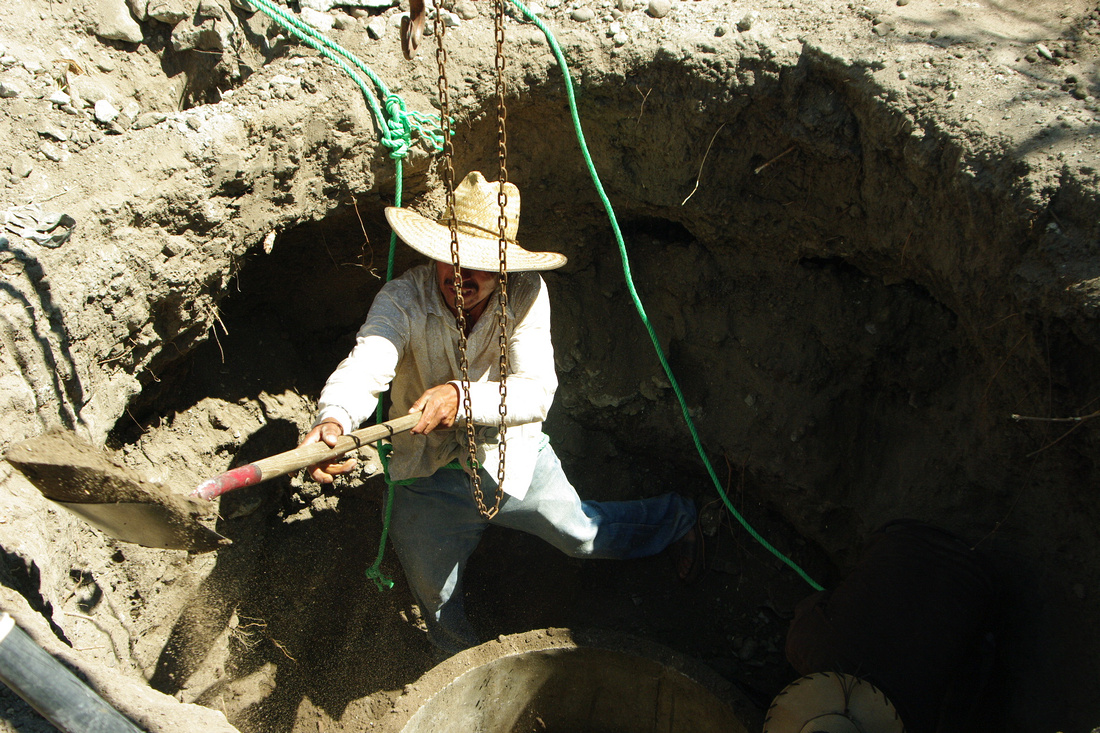
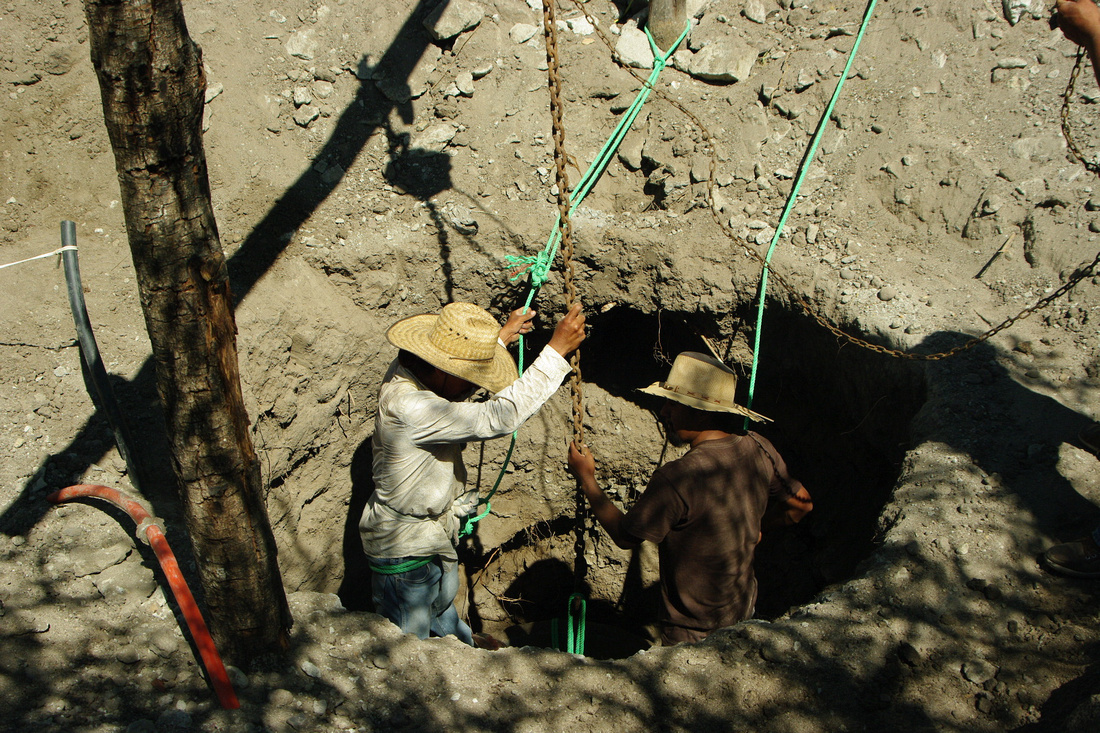
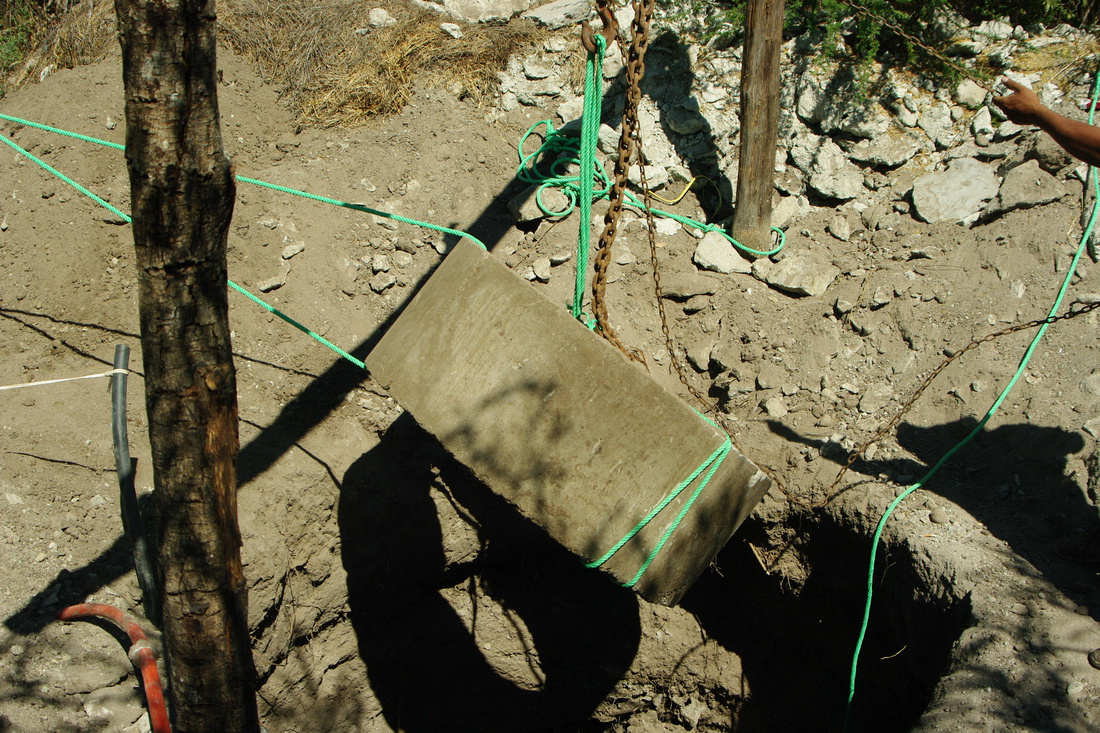


March 26: Next Monday we'll start digging again. Back to the chisel and sledge hammer.
I mentioned in one post how the men at the blacksmith shop work in tandem putting an edge on a tool. I took a chisel to be sharpened and remembered I have a video camera on my phone. Here are two men working in rhythm. I've seen as many as four working together. When the man holding the piece turns it, he often hits the anvil instead of the piece so the rhythm is not lost. The man in green is the owner. I'm guessing he must be sixty but he keeps busy.
Here in the valley Nissan pickups are often used as taxis. The other day while driving to Tlacolula Beth and I saw the truck on the right so crammed with people a man had to stand outside on the bumper. We couldn't resist sticking a camera phone outside the window to record this event that would undoubtebly land the driver in jail or at least have his license taken away in the states.

I also mentioned once the difficulty buying peanut butter in a large container. This store in Oaxaca is owned by Walmart. Choices are very limited and prices are high. You can divide by ten to get an idea of the prices. After we took this photo we were approached by security and asked what we were doing. After I explained that we were used to seeing a greater variety of peanut butter and wanted to show our friends back home the difference, she was ok. She did ask me though to not take any more photos.

Beth and I took a day off to visit a couple of hacienda sites. Then surprisingly a couple of days later a couple of Americans from Oaxaca de Juarez showed up at our home asking about our hacienda. Linda and Allen are photographing and gathering information about the haciendas here in Oaxaca. We had a great time talking about Don Pedrillo (our hacienda) and hearing about their project. Once again it was a treat having an extended conversation in English. Hopefully later on everyone will have access to their work. There are a lot more hacienda sites here in our end of the valley than we knew of. More places to explore!!!!!!
Beth and I spent years in Brownsville being critical of people that mixed their sentences between English and Spanish. I even scolded a few students for continually doing so. Well we owe everyone an apology. It seems as though your mind picks out the word that you remember the easiest. Sometimes we can no longer remember the word in English (old age?) but the word in Spanish is right there immediately. There's probably some laziness involved; anyway, sorry for being so critical.
For years Beth and I read stories about Mexicans crossing the desert into the US and perishing for lack of water. A year ago a young man from Union Zapata died trying to cross. When immigration found him he was still alive but died shortly after in the hospital. I don't remember the young man (twenty eight years old) but am friends with his brother and parents. I was going to Union Zapata the other day and offered the mother a ride. The subject of her son came up. It was extremely painful listening to the mother recall her son's life and his subsequent death. The tragic part is that no one knows what happened to him. Was he abandoned? Was he trying to cross alone? I wish there was some way for this woman to know. I'm sure it would help her with closure. A friend I worked with in Los Fresnos works with an organization that drops off water in the desert for folks that are trying to cross. Larry happens to be against an open boarder but doesn't want people dying that try to cross. My hats off to you Larry. Maybe if your group had more support this young man would still alive.
Before we left Brownsville Beth bought an attachment for her Champion juicer that grinds corn. She got to use it the other day. Corn meal is very difficult to find here so we bought some whole kernels and had them ground at a grain mill. It wasn't quite fine enough so we ran it through the Champion and it came out perfectly.
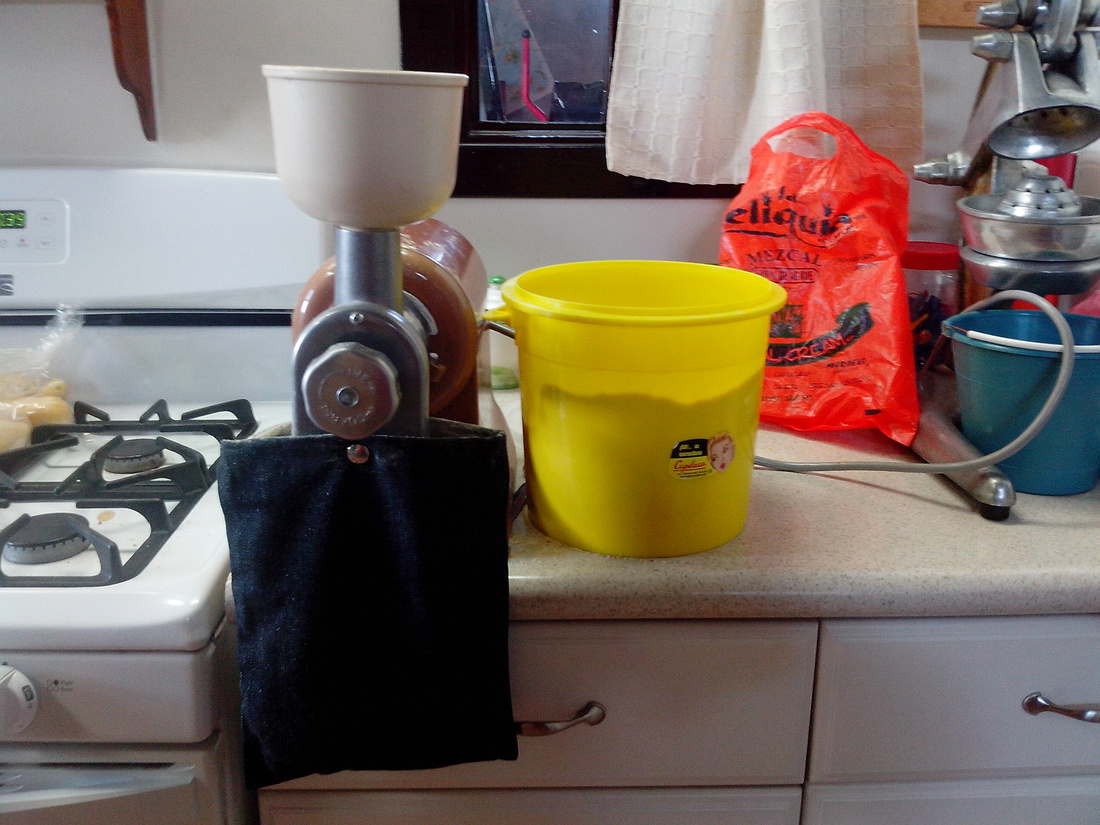
Last night we attended a birthday party for Beto in Tlacolula. I think it was our best fiesta yet. Beth is becoming more confident speaking which makes gatherings more enjoyable. I was too lazy to take photos but did get this video of Beth shaking her booty with Juan's grandson.
We get our internet from across the valley from San Bartolo. An enterprising young man who owns internet cafes figured out how to send out a signal that we pick up from an antenna that looks like a satellite dish. For us it's incredible living in a building over four hundred years old and having internet. We are most grateful to Daniel for his skill and ambition.

We are still living here in Oaxaca on tourists visas. That means we must leave Mexico every six months. Also as of yet our property is still in Felipe's name. Our goal is to put our property in our names and increase our immigration status to allow us to buy into a health care program, nationalize our truck, obtain a Mexican drivers license, buy Mexican auto insurance, and avoid having to leave the country every six months.
We've read extensively on the processes of accomplishing these goals, but between working on our house, laziness, and extreme fear of the Mexican bureaucratic system we have failed to move forward. We decided last week to hire a lawyer to assist us.
One day while paying our internet bill in Tlacolula, the young girl referred to Daniel as a licensiado. Having great confidence in Daniel, I called him and asked if he could help us out. It turns out that licensiado in Mexico can also mean completing college in addition to being an attorney. Daniel's title reflected his completion of studies in computer science. I was let down until he informed me that his father was a lawyer. Daniel talked to his father and an appointment was made. Daniel, his father, along with their wives and Daniel's brother came to our house Monday evening to discuss our needs.
Daniel's father, Manlio, and I hit it off right away. Through our conversation I sensed how well read he was. Apart from law our discussions drifted to many topics. I was amazed when Manlio mentioned the Beatles. We went on to exchange stories about the Beatles and other early music. Manlio and I are the same age but encountering someone here in Mexico that appreciates American music from the 60's was a first. He even has old records from the sixties.
As far as our legal problems, Beth and I are ecstatic to have someone like Manlio to assist us. More importantly we made new friends. Of course we were invited to their home for dinner. I predict Manlio and I will have mezcal shots and listen to his music collection.
Beth and I are still assisting the committee in charge of restoring the old organ in Tlacolula. The process has moved to restoring the mechanics of the organ. We were invited to photograph some of the process for the webpage we created. The gentlemen doing the restoration are from Spain. One of the workers stood out from the others. It turns out that he is from Germany. He's lived in Spain for the last fifteen years. The workers travel around the world restoring old organs. They are masters! The work is tedious and meticulous. The gentleman from Germany patiently walked us through all of the processes. His Spanish was very articulate.
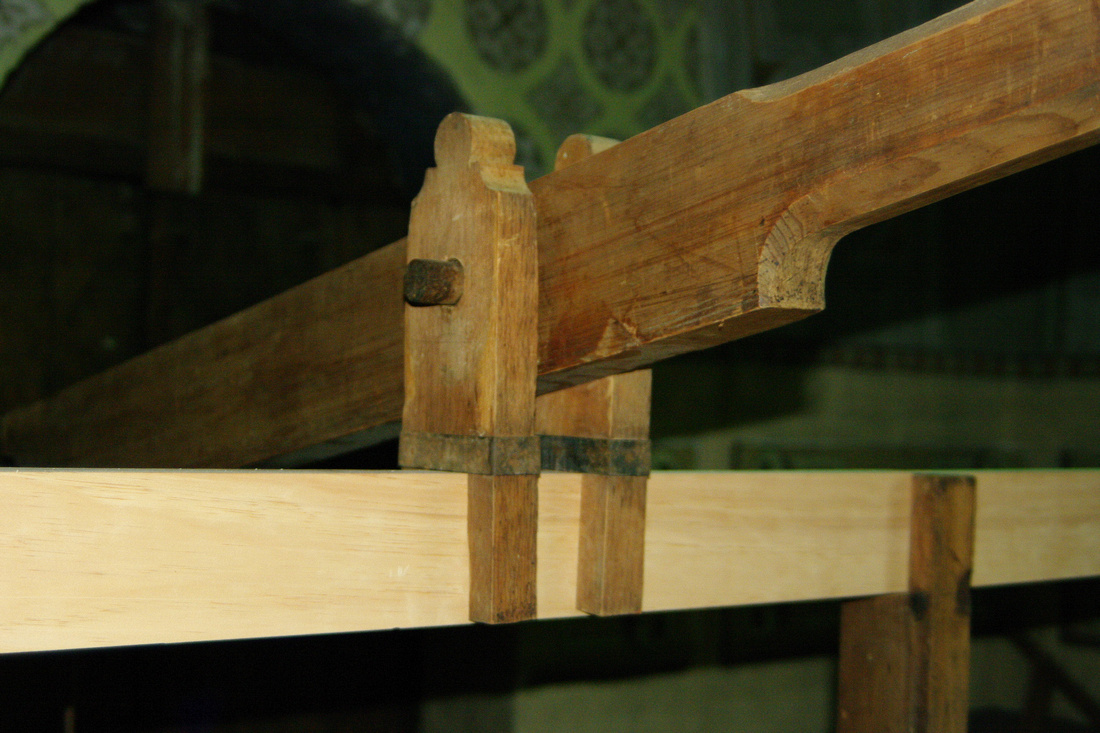
I was surprised that an electric motor was added to pump air. The original bellows are being restored. I guess the motor is an option if no one is available to pump the bellows.
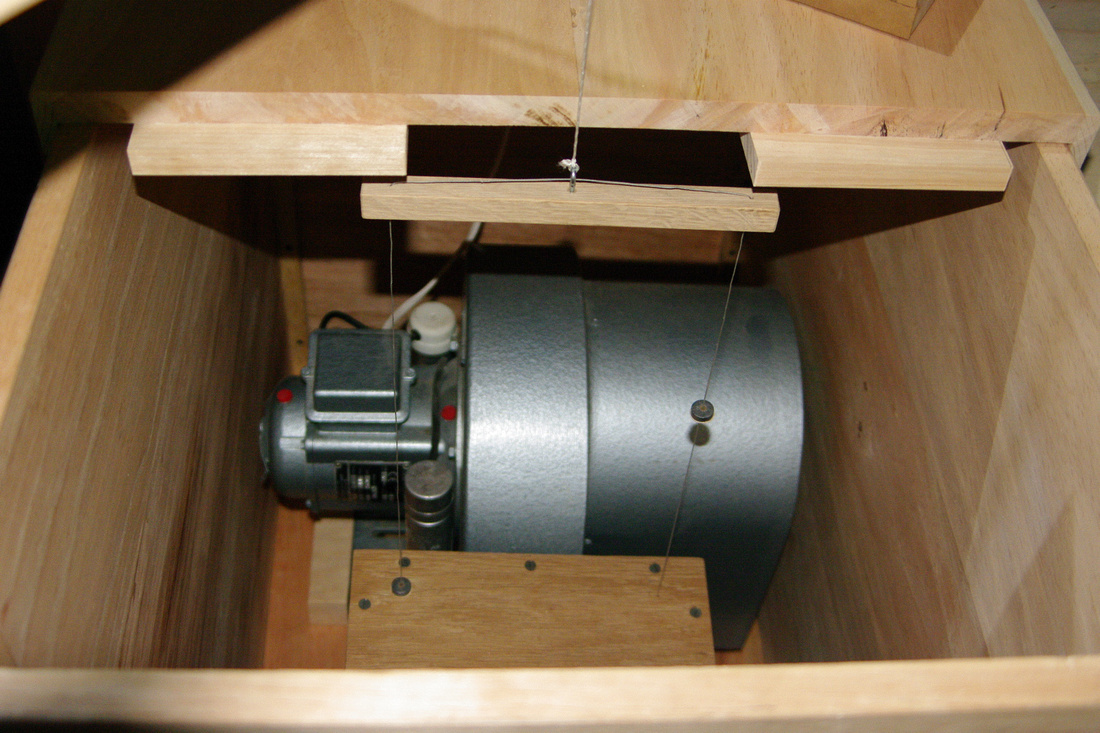
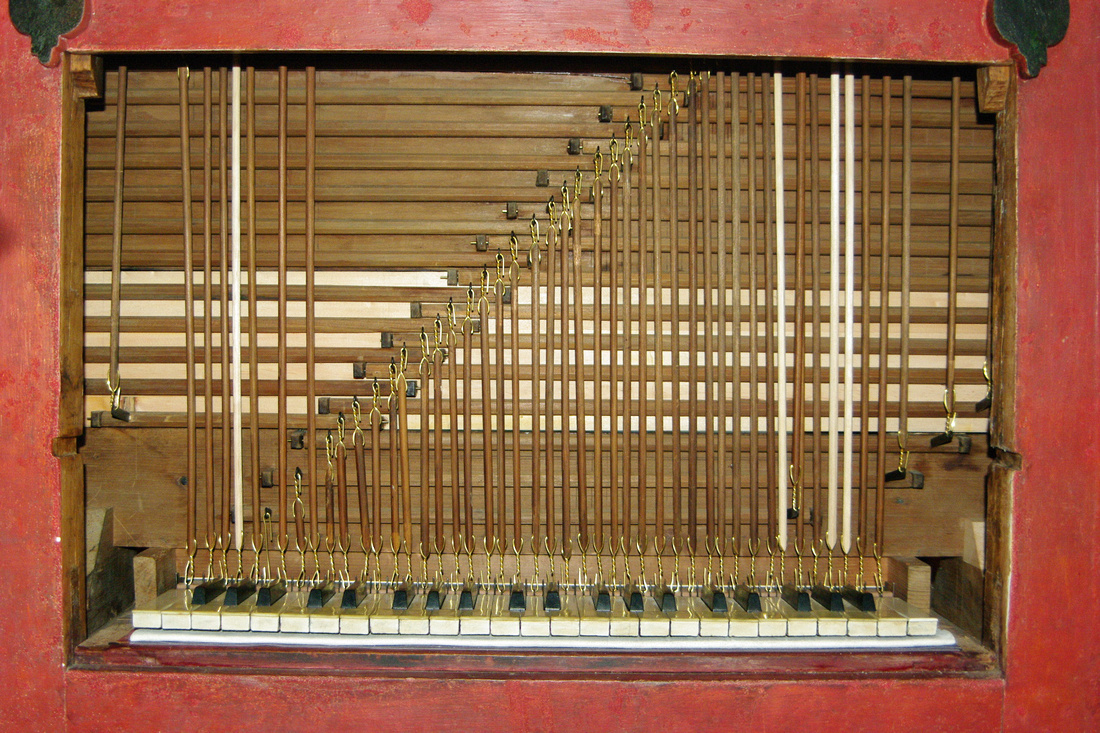
One of the restored bellows.
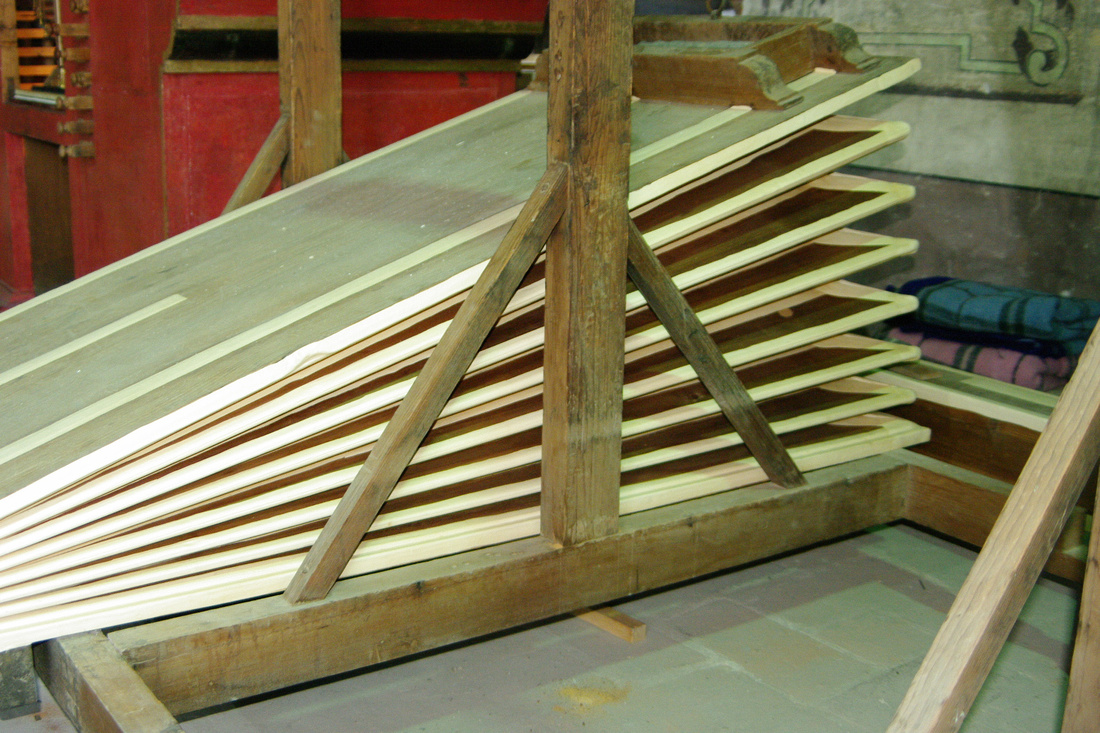
A bellows yet to be restored.
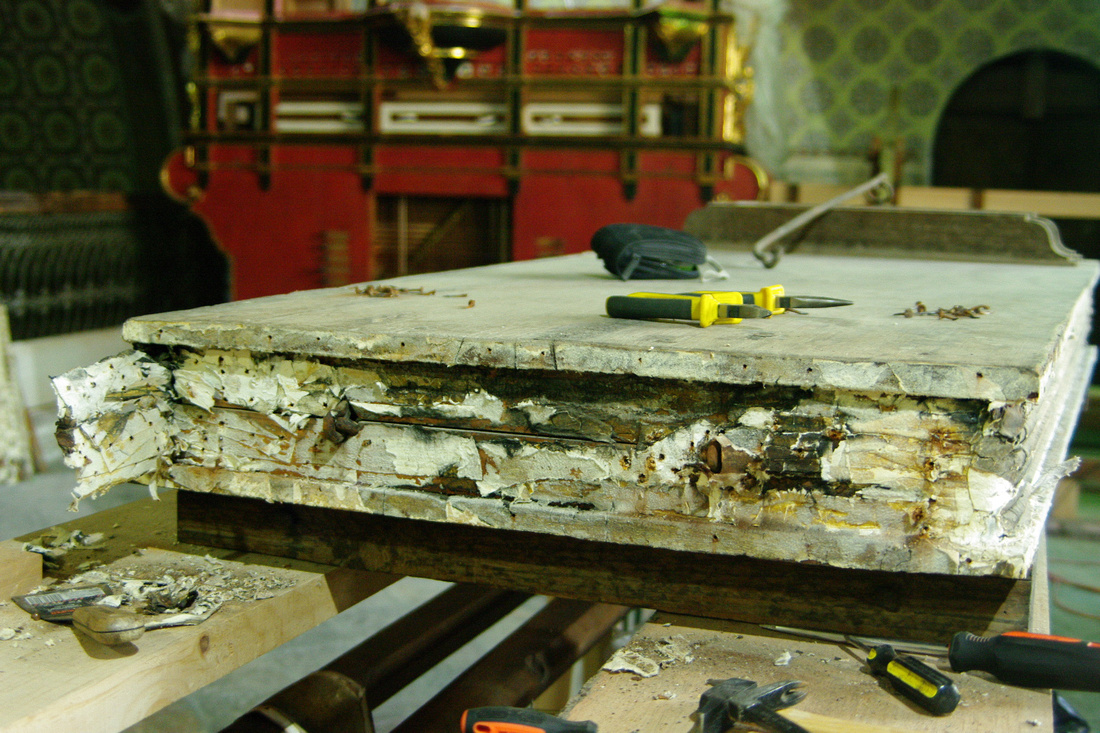
We are here in Oaxaca due to a friendship we made in Washington back in ninety-four. A friend of mine was an auto mechanic and spoke Spanish. He called me one day to tell me that there were a couple of men from Oaxaca at his shop. Beth and I went over and met Felipe. A friendship began that day that has evolved into something special. We just helped him celebrate his sixty-forth birthday. The differences between our early lives adds to the richness of our friendship. Felipe is a unique character. To say that he was poor growing up would be an inadequate description. Plants that could be gathered in campo were sometimes all that kept his family from starvation.
I don't remember how he acquired his first firearm, but I do remember conversations about the pressure of making a kill expending only one bullet. He became an excellent marksman. Today he belongs to a hunting club. He is registered with the government and is allowed to own firearms. When they go out as a group, Felipe is usually the most successful.
Here's Felipe with a coyote he eliminated.

Felipe with a deer he recently killed.

Felipe reminds me of Will Rogers. He's a wonderful story teller. Between his growing up in Old Mexico, his experiences working in the US, and his present life back in Mexico, his repertoire of memories is endless. I admire Felipe's resourcefulness, his never wavering ability to keep plugging along, and his keen wit and incredible sense of humor. How odd that one of my best friends in life doesn't speak English!
A word about Felipe's children. All but one reside in the US. They are industrious, hardworking, and caring people. My family is better because of the contact we've had with them.
One of the organ commitee members is named Alonso. He is a panadero (baker). He too worked in the US as a young man. He and his wife built a home with their earnings. Alonso is from Tlacolula. We've had he and his wife over a couple of times. He invited us to his home a couple of weeks ago to eat pizza. His oven (which he uses to bake his bread) is a dome structure made from adobe and bricks. It must be six feet across and is fueled by burning wood. The wood is burned down to coals before the bread is placed in the oven. The ashes are pushed aside to make room for the pans. Eating pizza from a wood burning stove was a first. The oven sits on a large base that consists of brick, dirt, pieces of metal and ground up glass that are meant to help conserve the heat.
I didn't take pictures at Alonso's but his oven was very similar to this one.
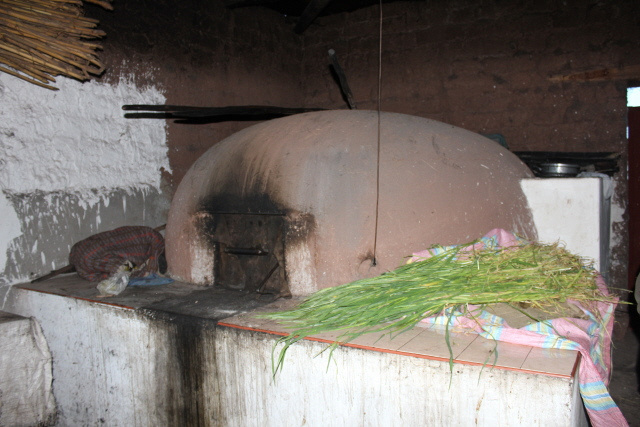
Alonso likes to talk about his faith. He is Catholic and is very involved in the church. He brought the Priest from Tlacolula over the other day to drink and sing. The Priest from Tlacolula is another interesting man. He loves to sing and play my old guitar. We attended his birthday party last week along with about six hundred other people. He is loved by the community. Unfortunately we heard the other day that he is going to be transferred.
My cousin Freda and her husband recently built an outbuilding by their home. She posted pictures of some of the progress on Facebook. I was a little envious because the structure was built with wood. The finished product looked great! Wood structures are rare here. The sun is so strong that the life of anything wooden is very short. I've seen beautiful wooden gates that look like hell very quickly. Mickey and his wife, Yadi, want to make a home on the patio side of our house. To do this an additional building is needed to store my tools and everything else that is now in the patio. Mickey and I are sharing the cost of making the new building. The building is being made of cement bricks. Because of the weight of the bricks a pretty secure foundation was needed. The workers had to dig down about a foot and a half in rock before they began laying the brick. Progress is extremely slow and is very physically demanding.
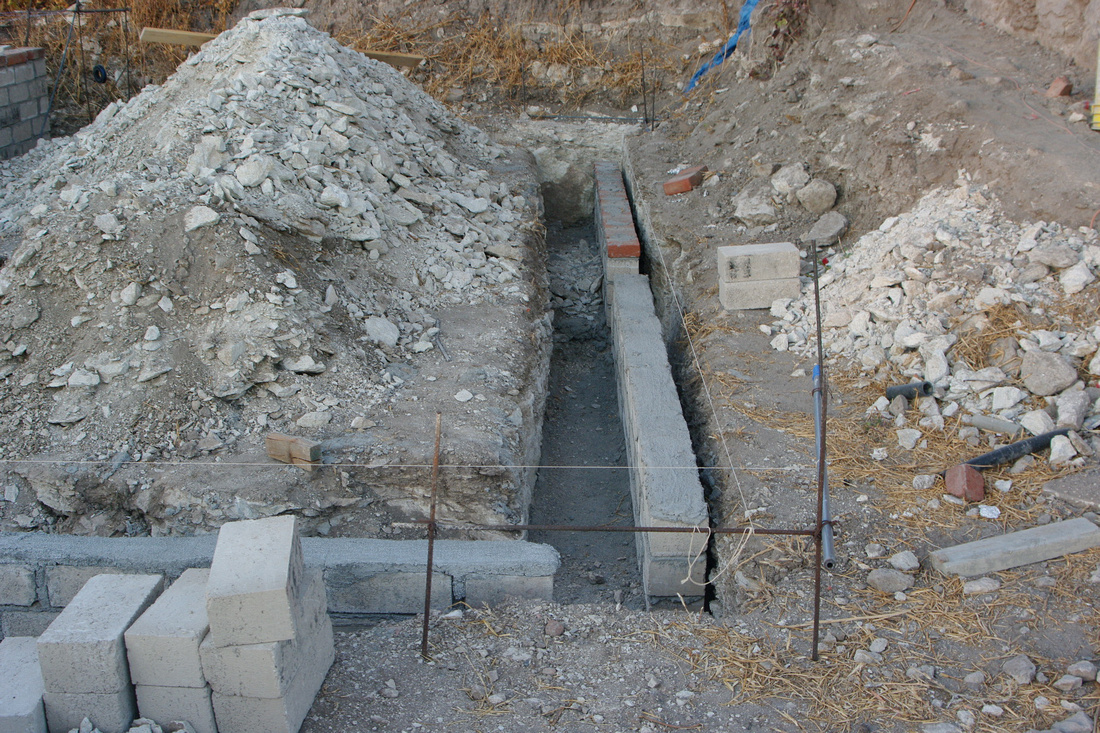
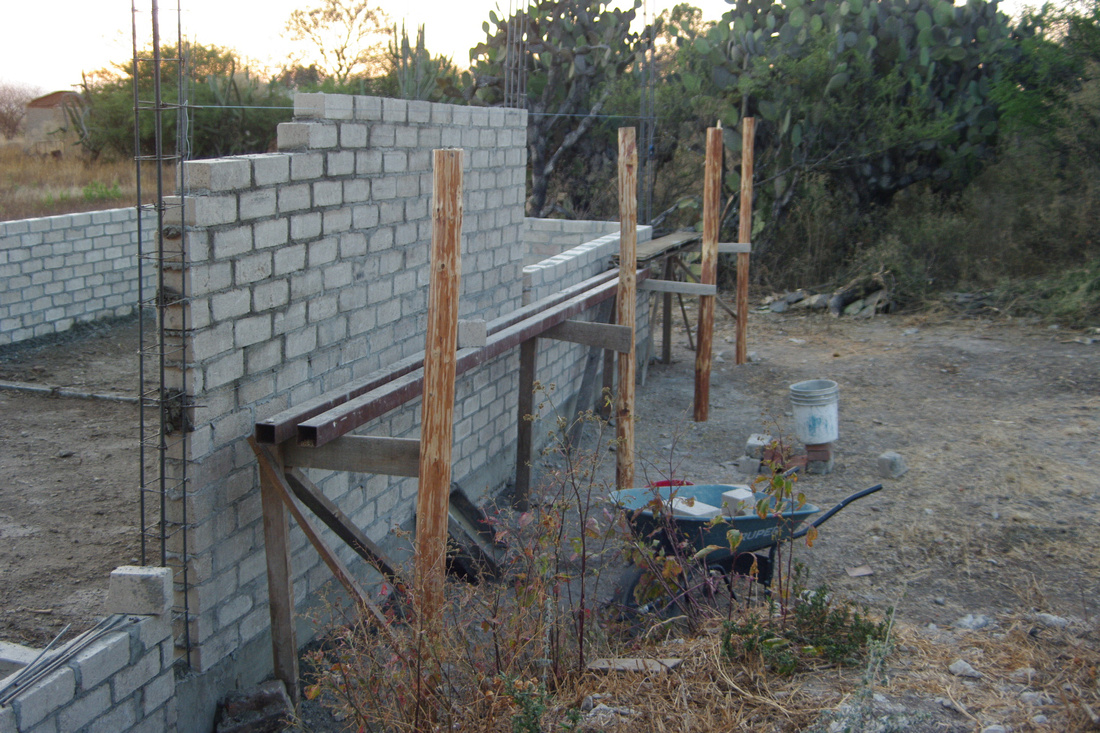
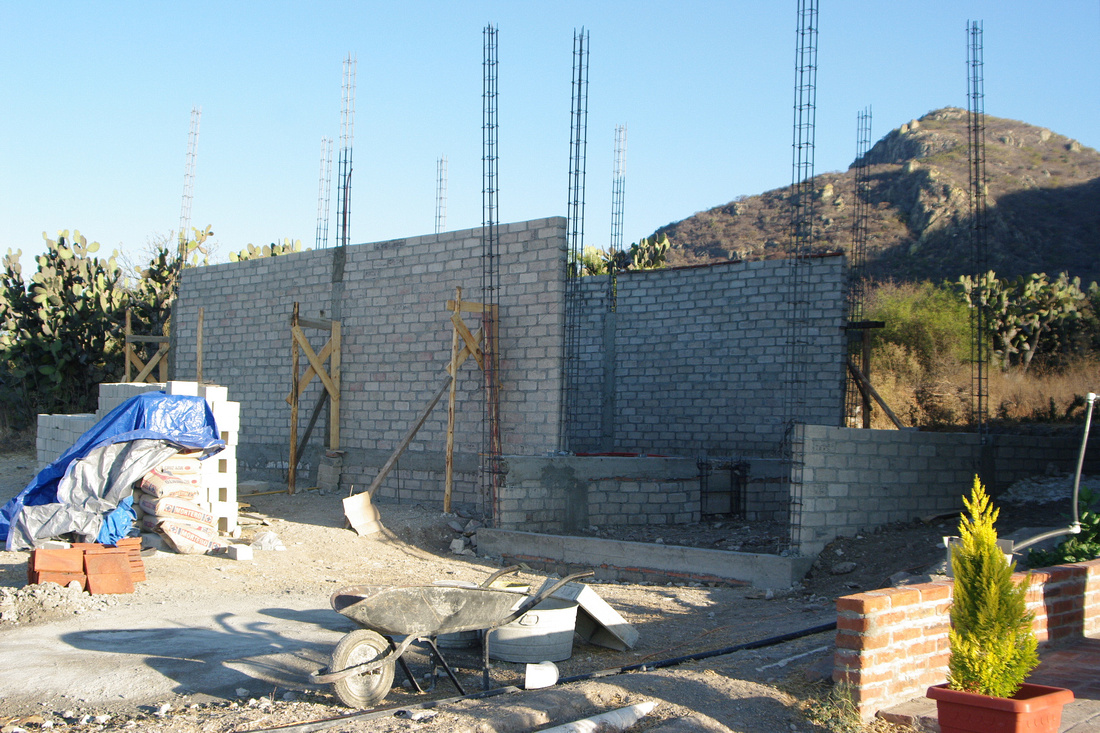
Selverio is in charge of the construction. He lives in Union Zapata but is originally from Vera Cruz. Although only thirty-three Selverio has incredible stories of growing up in Vera Cruz. Their family was extremely poor so Selverio went to work selling bananas when he was just six years old. He also cared for animals taking them out to campo to eat all day. He came to Oaxaca in his early teens because the rate of pay was higher here. He also worked in the US for a few years. Most of his jobs here when he returned were twelve hours a day for around ten dollars. He began helping bricklayers and learning the trade. Our garage/storage building is his first job solo. He and his assistant work from eight to four-thirty. We pay Selverio two hundred and fifty pesos a day (about eighteen dollars and eighty five cents). The rate that we pay our workers has been a difficult choice all along. If we pay the standard rate, we feel that we are exploiting our workers. If we pay more. we catch hell for raising expectations. We have resolved the problem by giving bonuses. We brought down our laptop but rarely use it as we have a desktop. I took the laptop to Tlacolula and had Windows seven installed in Spanish. Selverio's son is thirteen and is a very good student. We gave the laptop to his son to use for school work. A band is coming to Union Zapata as part of a fund raising project for the church. The tickets are expensive relative to the local economy so we purchased tickets for Selverio and his wife. The balancing act is complicated for Beth and I. We are on a fixed income but we want to be fair to anyone that works for us.
Disculpa a mis amigos Mexicanos. Es que todovia no puedo escribo bien en Espanol!!
In 1994 during our first year in Oaxaca, we learned that Las Posadas is a nine-day celebration that people in Mexico celebrate annually beginning December 16 and ending December 24. The nine-day event represents the nine months of pregnancy of Mary carrying Jesus. The procedure has been a tradition in Mexico for 400 years. Although Catholics predominately celebrate this now even Protestant Latinos celebrate this tradition.
Village people move in line from one home to the next each evening with the owner responding by singing a song and welcoming a ceramic Mary and Joseph into the home. At the end of each night's journey, the people sing Christmas carols, children break open star-shaped piñatas to obtain candy and fruit hidden inside, and tamales and atole are distributed to all.
In 1994 the festivities were much simpler than they have now become and reflected the poverty of the people. About forty people arrived at the home we attended. The welcoming residents gave two sweet tamales, café, or cocoa to each attendee. Men and women were offered cups of mezcal. There were no piñatas. This year’s Las Posadas was much more extravagant and reflected the increasing income of the people. In contrast, in this year’s celebration over 200 people arrived at the home of Felipe. Everyone received both meat-filled and bean-filled tamales, three to each attendee. Bags of candy and fruit were also given to all, and the children enjoyed breaking six candy filled piñatas.
Preparations began early in the day.
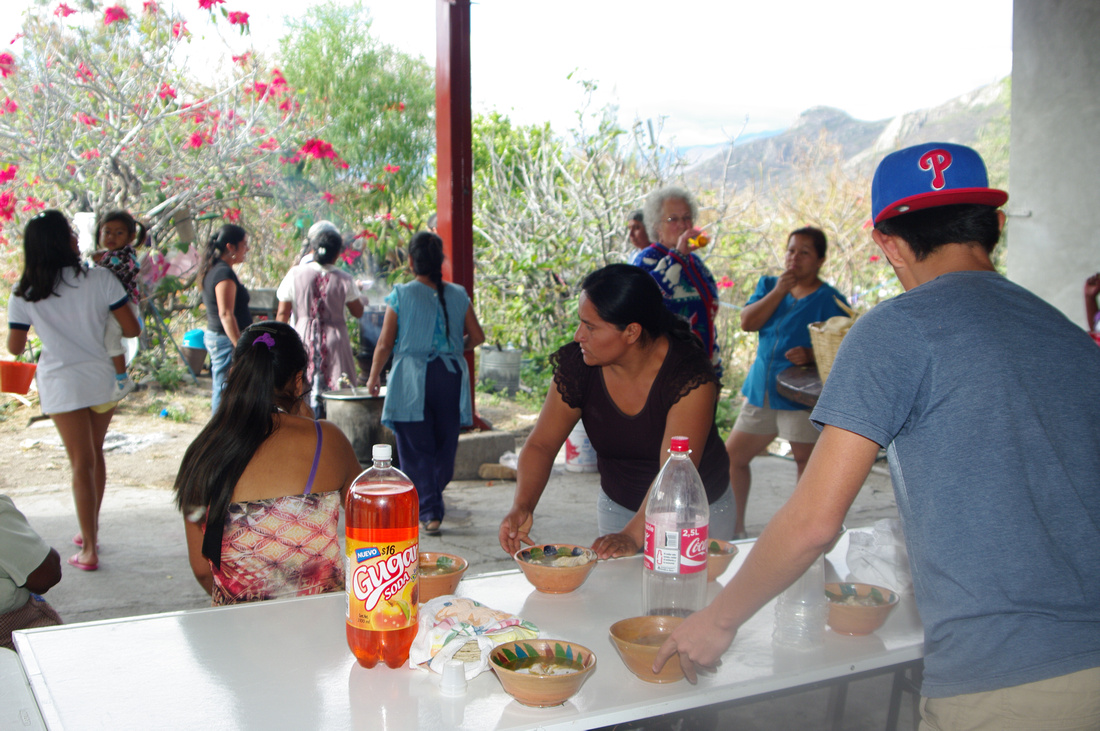
Beth and Amparo taking a break!!!!

Caldo (soup) was served early in the day.

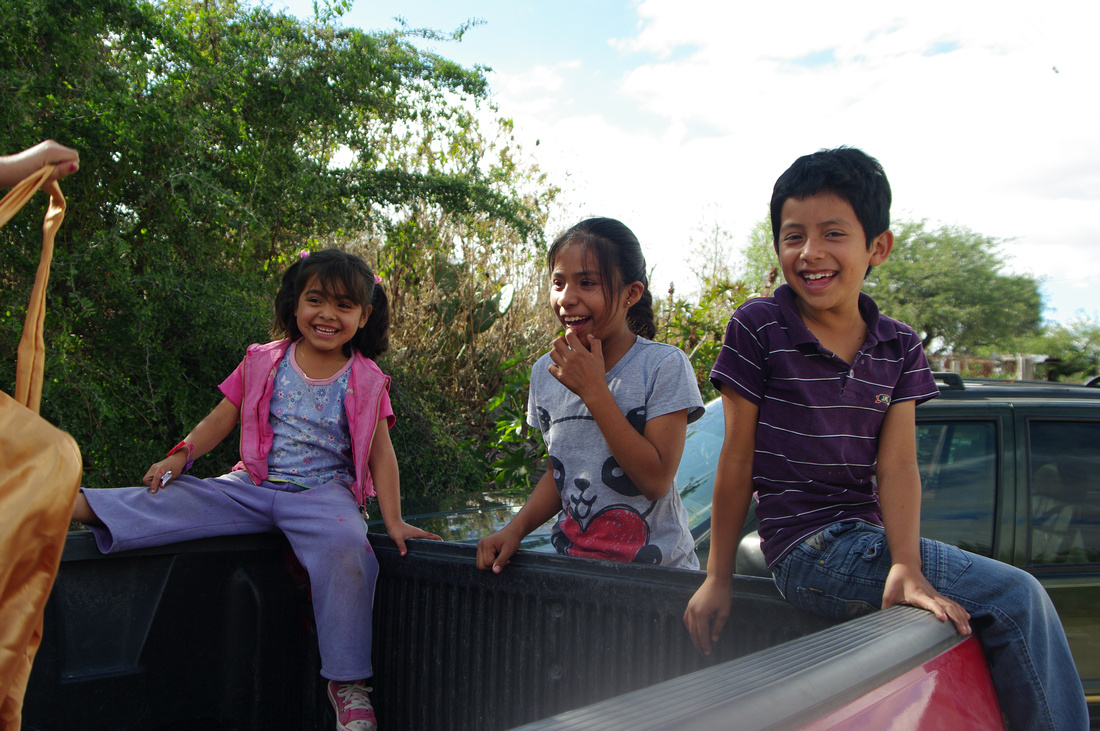
Beth with the grandson of a friend.

Had to photograph this little guy. He's pretty scruffy but has a wonderful personality.
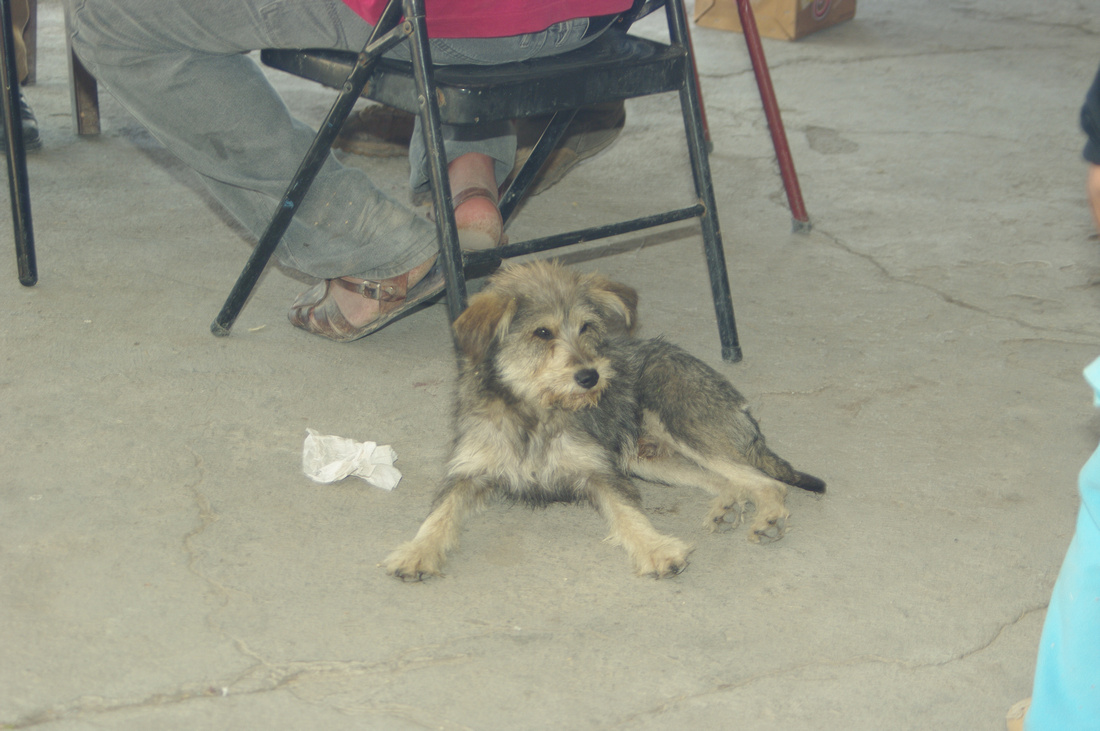
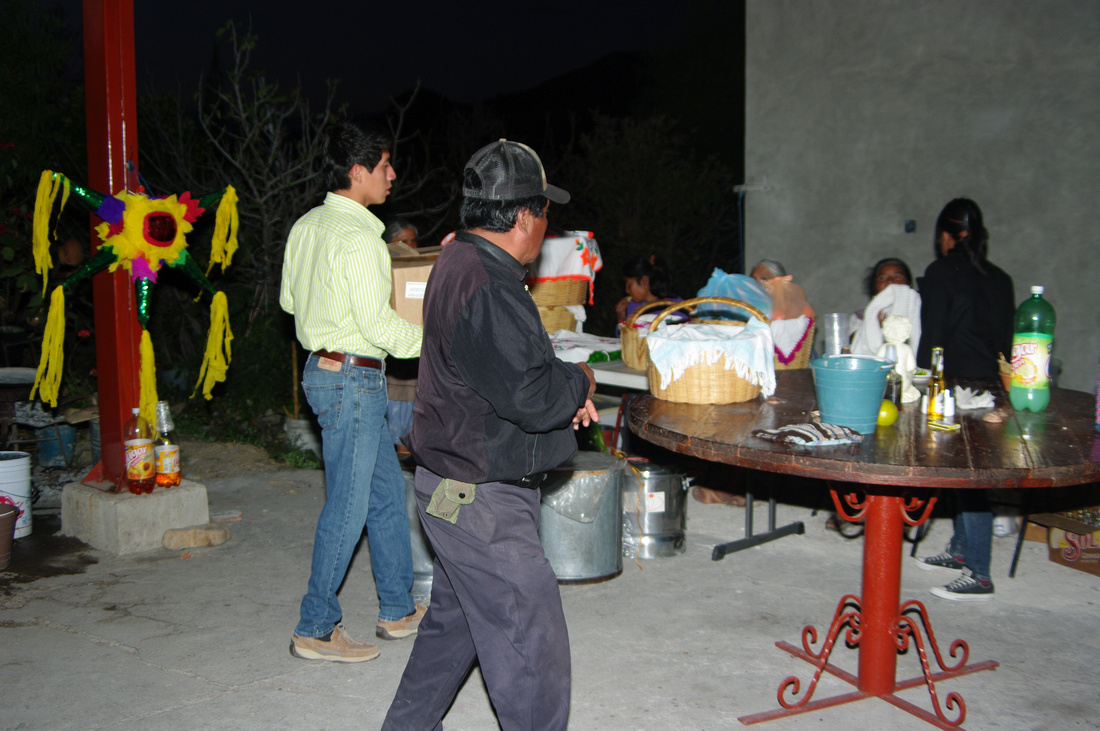
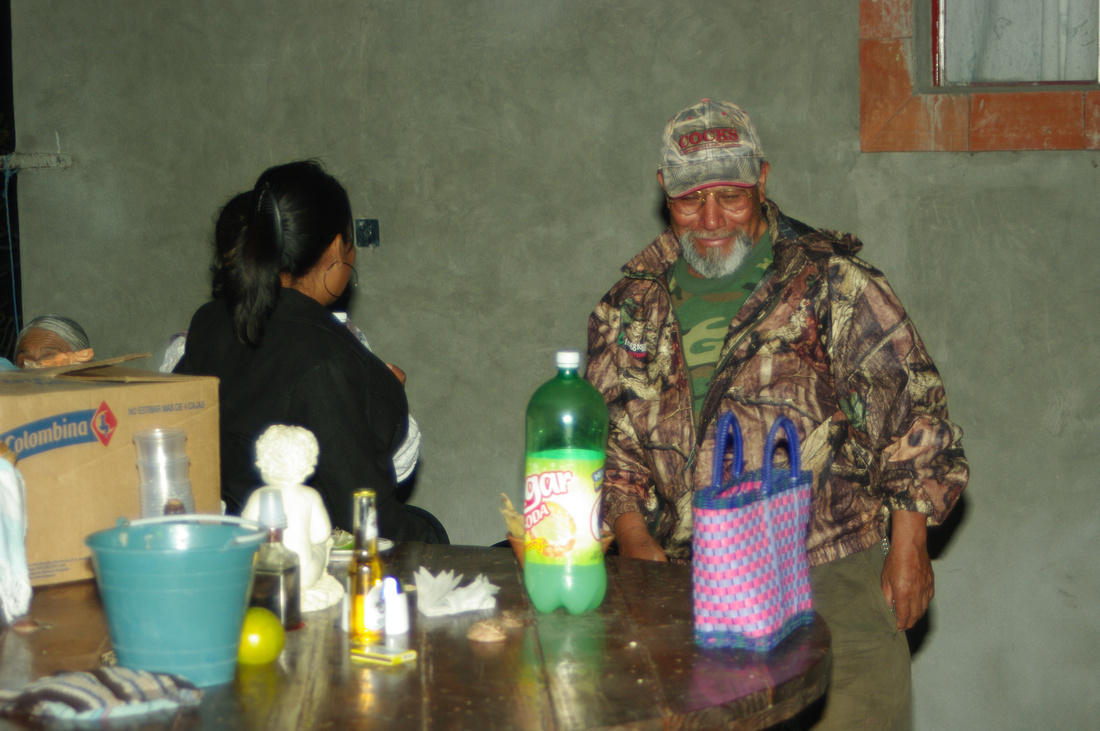
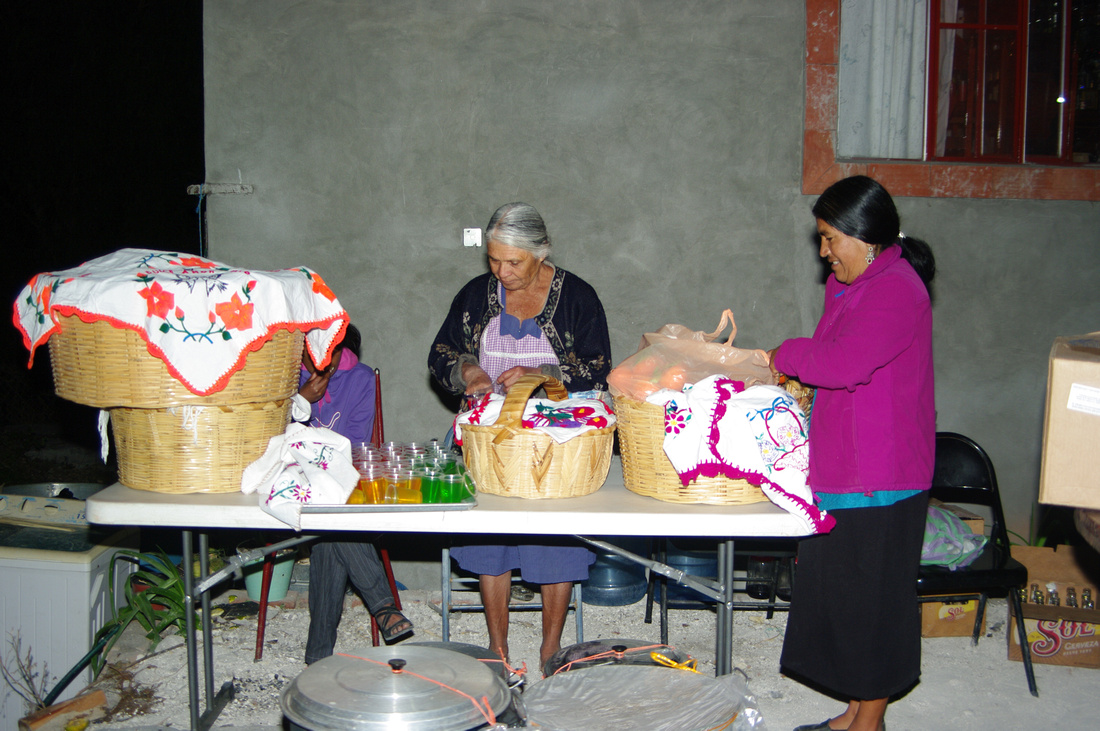
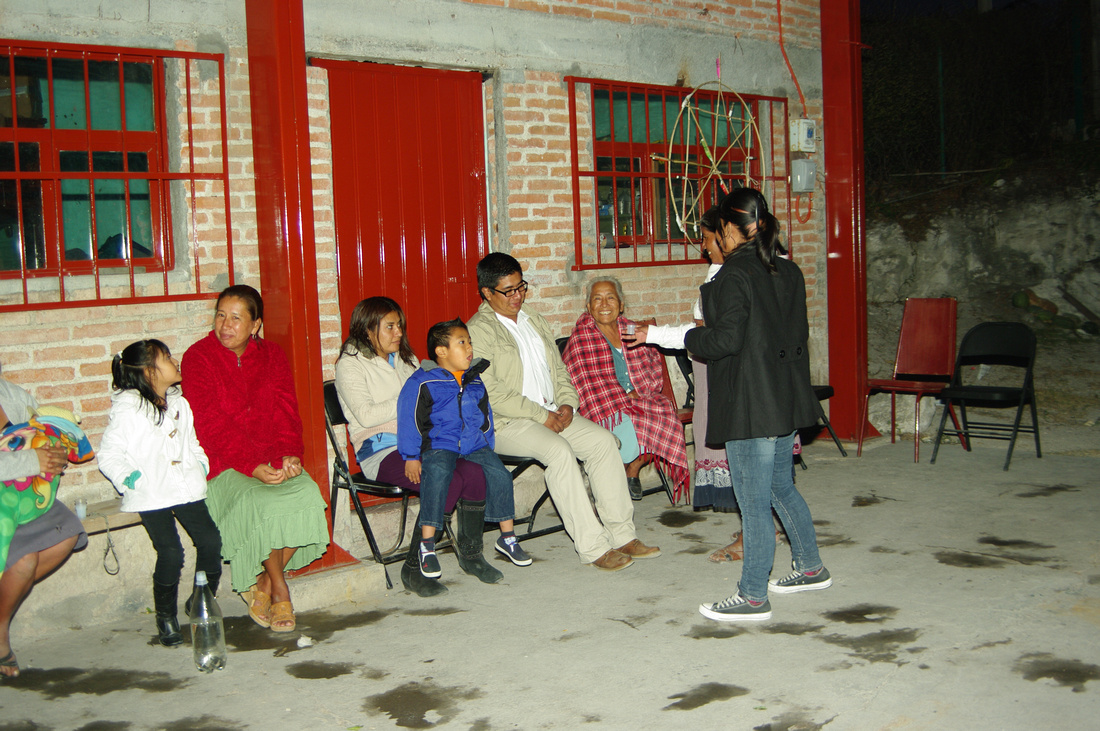
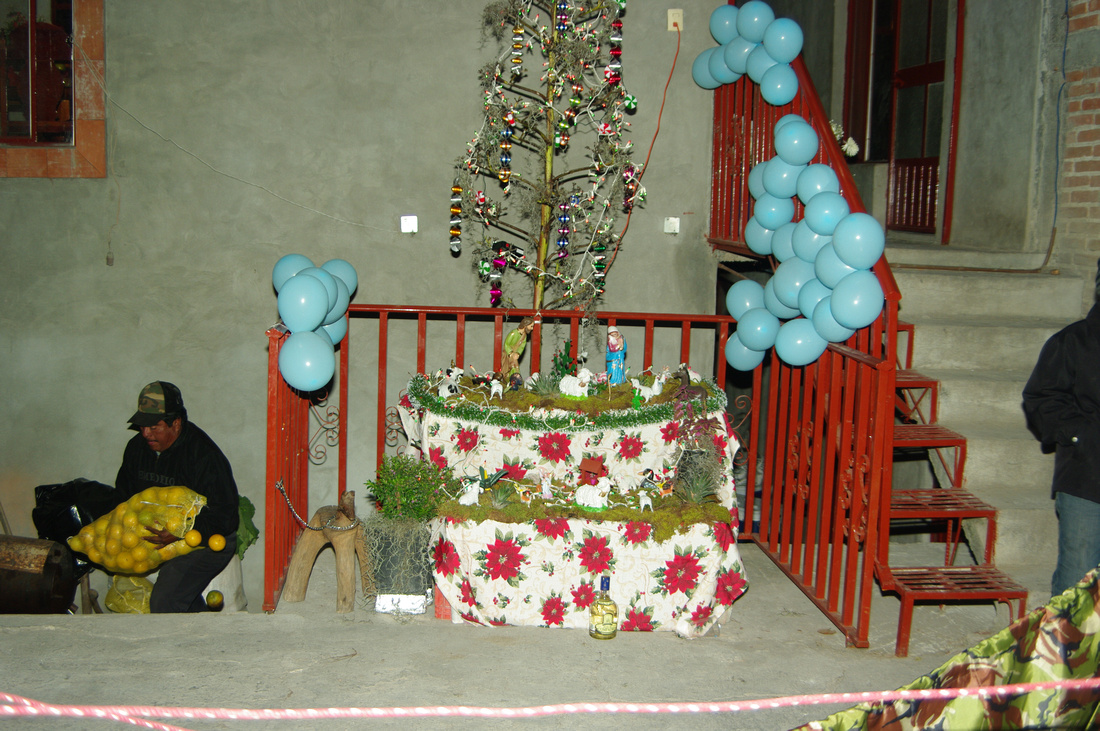
The arrival of everyone. Yea the guy in front was pretty wasted! For us the mixing of a religious celebration with alcohol was at first a little strange. It certainly adds to the festive spirit!!!
For those residents from Union Zapata that have been in the states for years I imagine there are a lot of faces you don't recognize especially the young adults and children. For that reason I tried to include as many faces as possible in my photos.


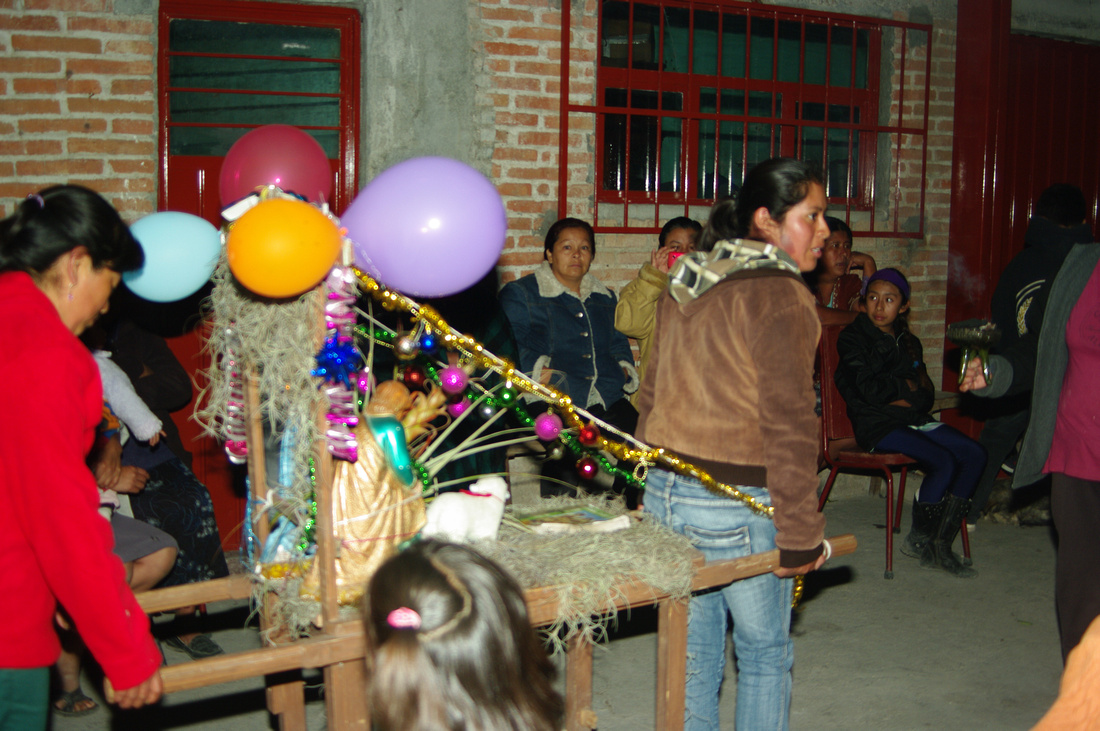

I couldn't believe the young lady in the middle was Pofirio's daughter!
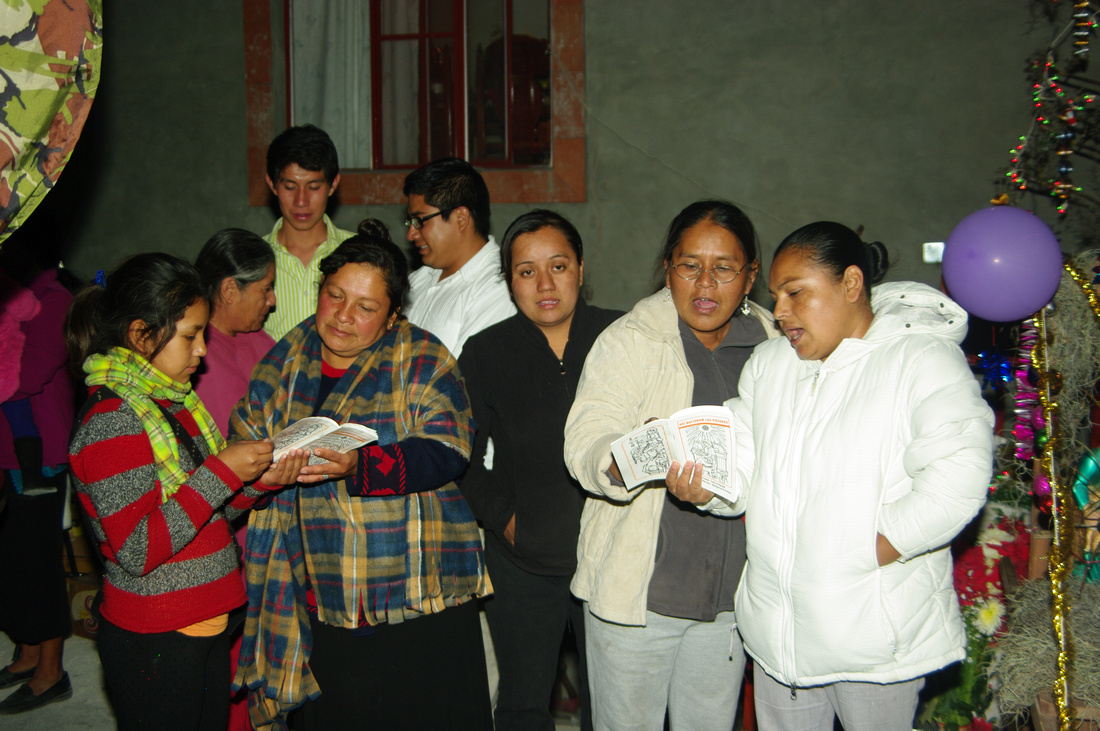
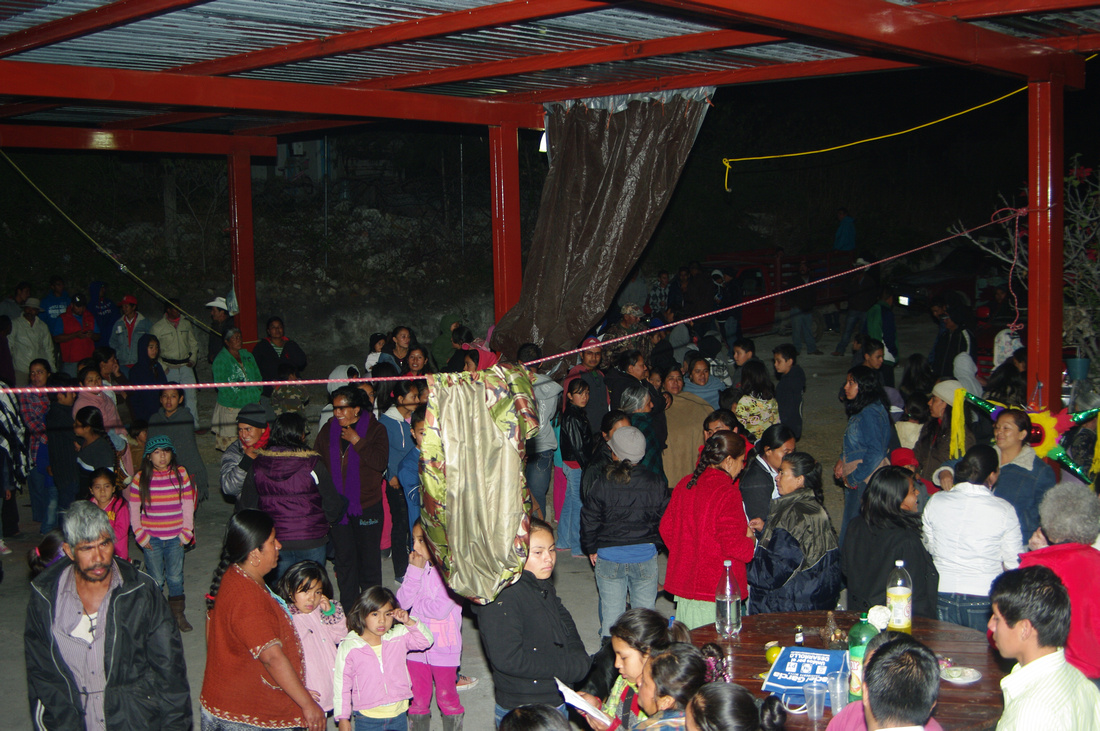
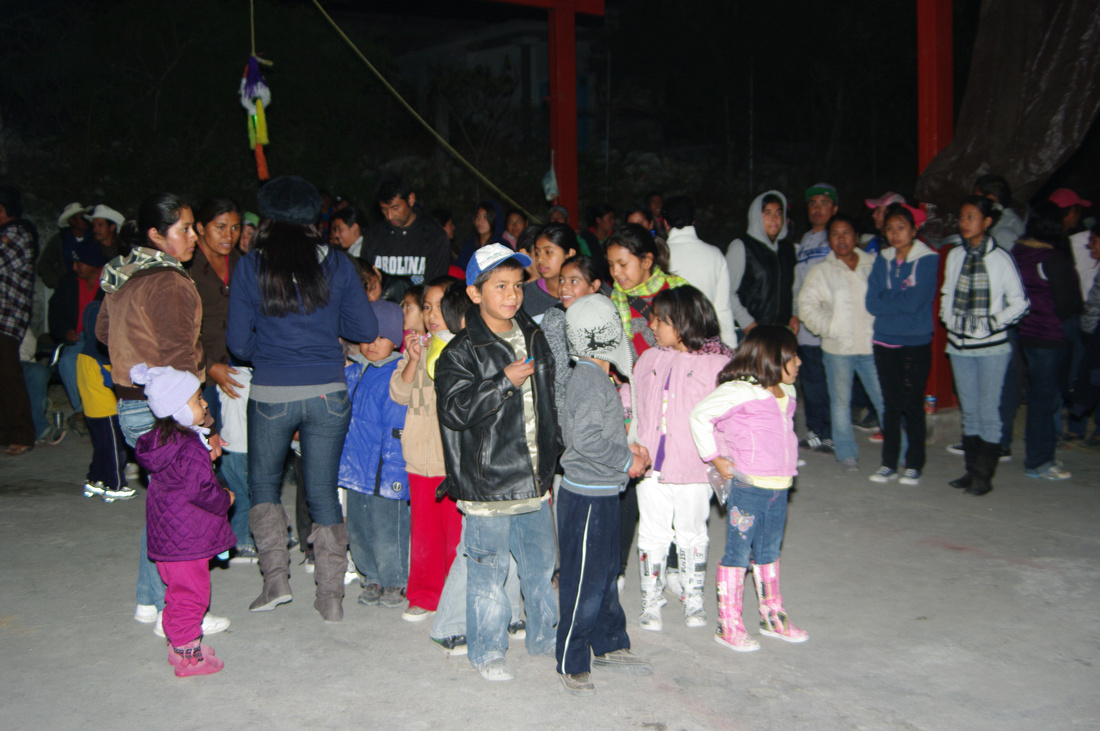
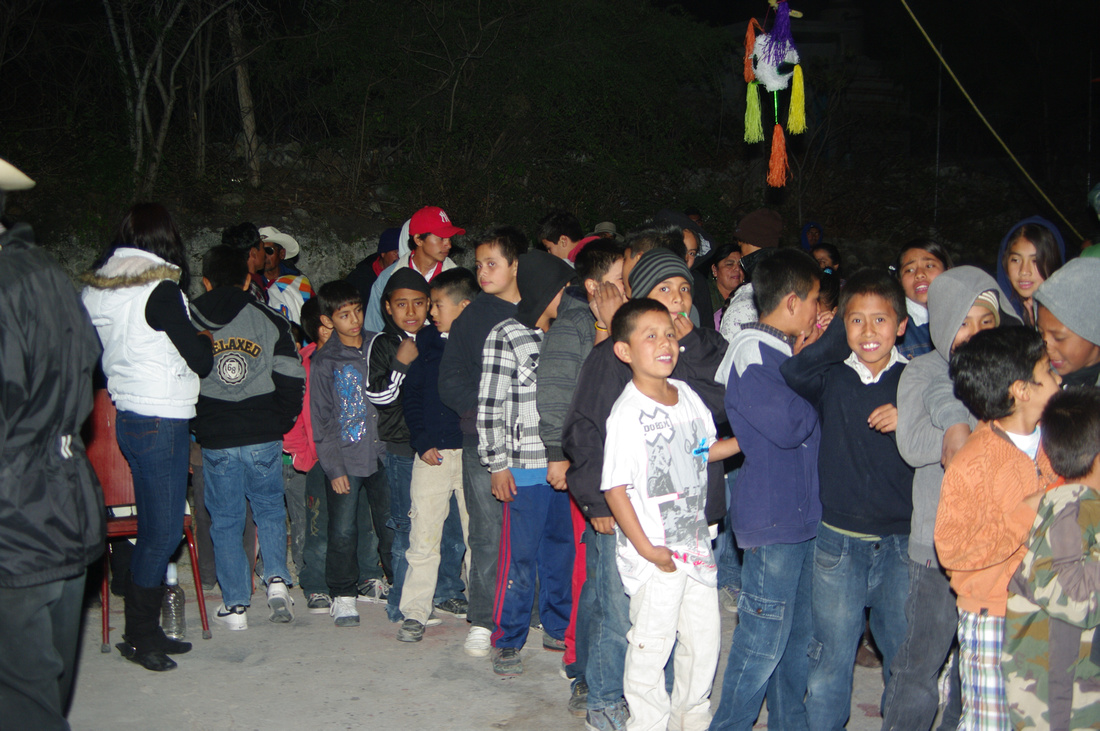

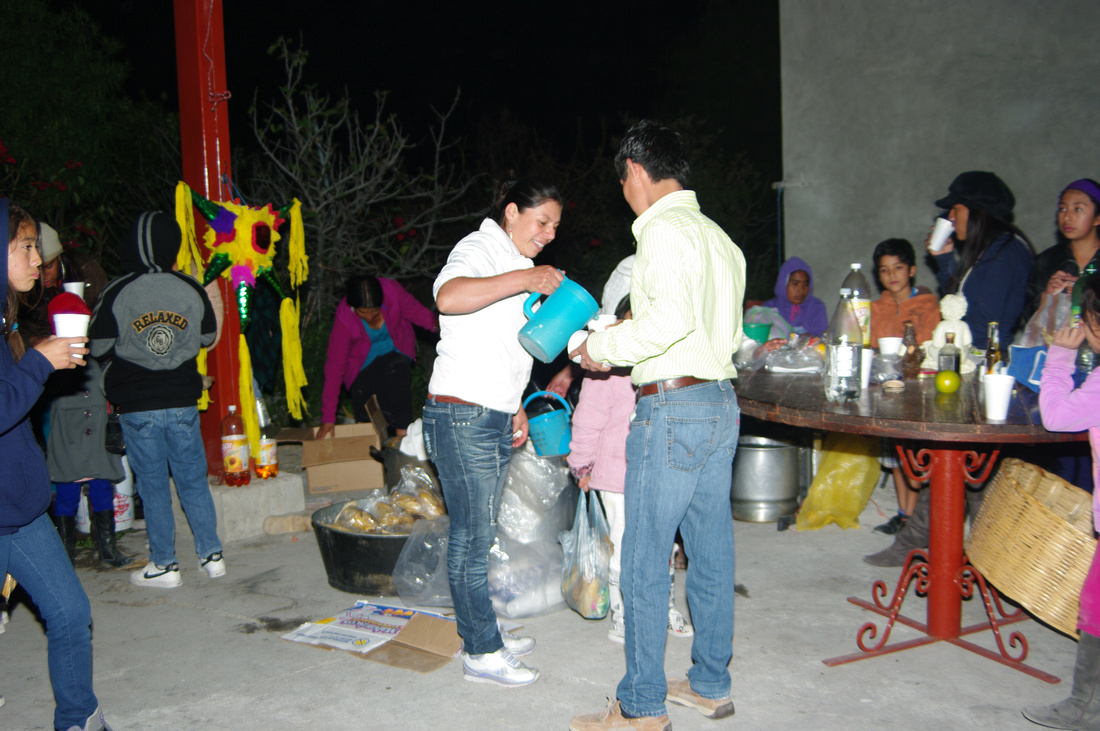

Felipe serving mezcal.


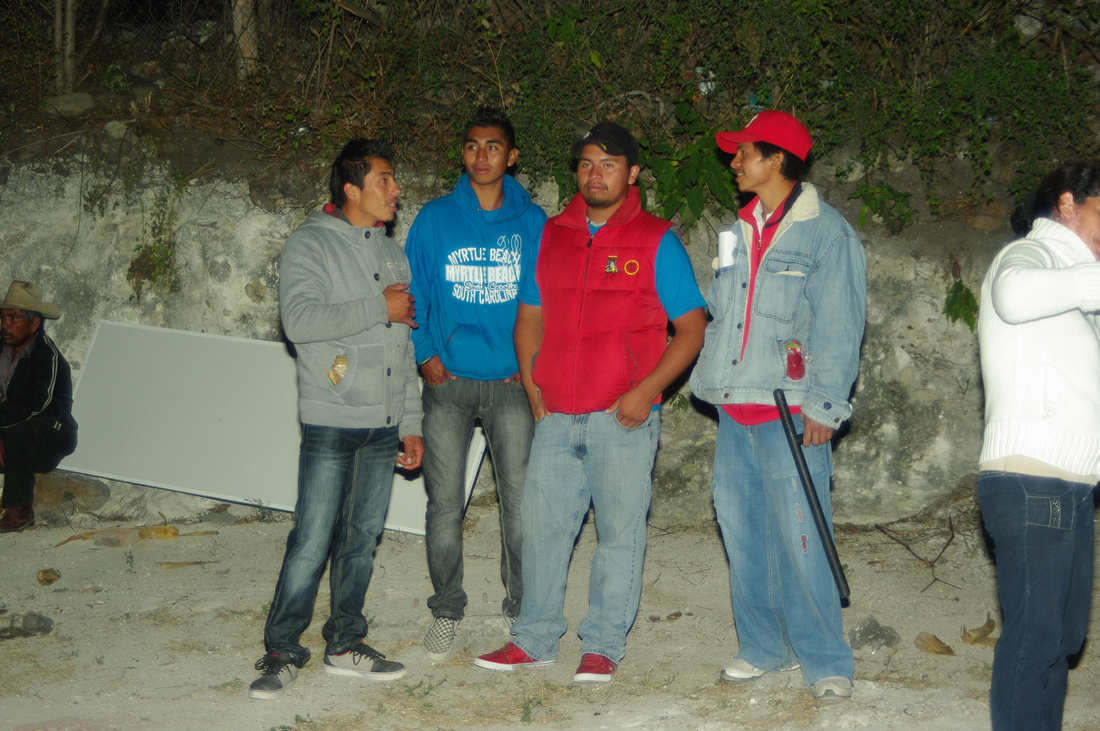


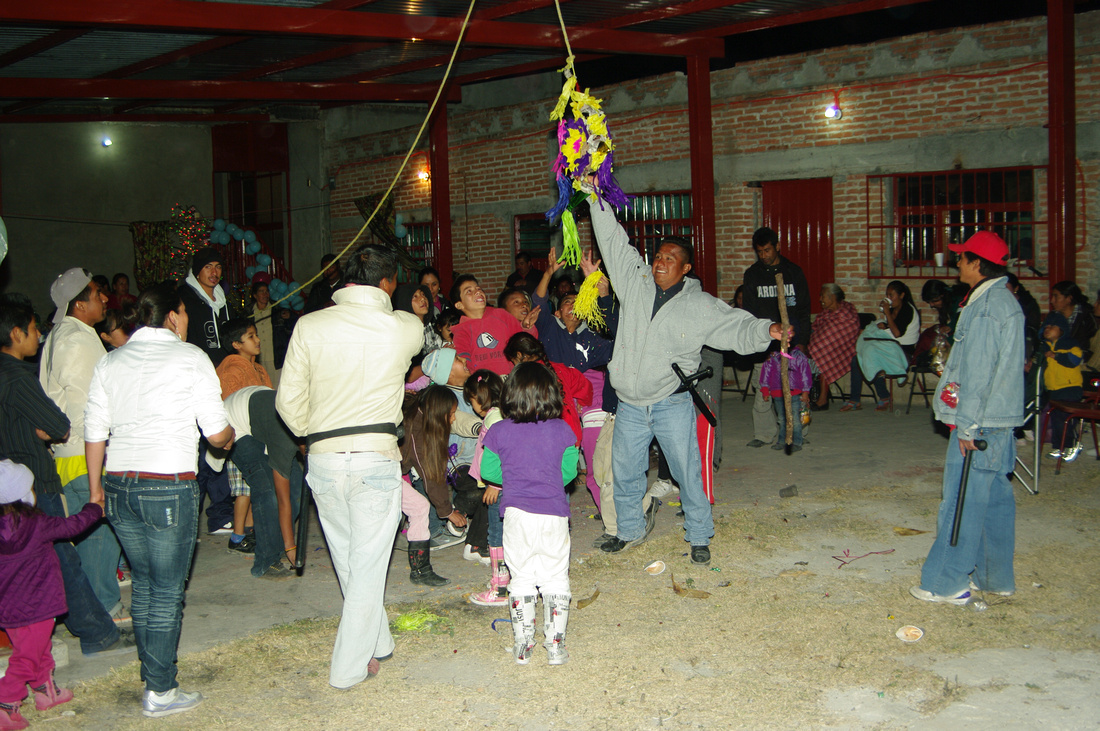
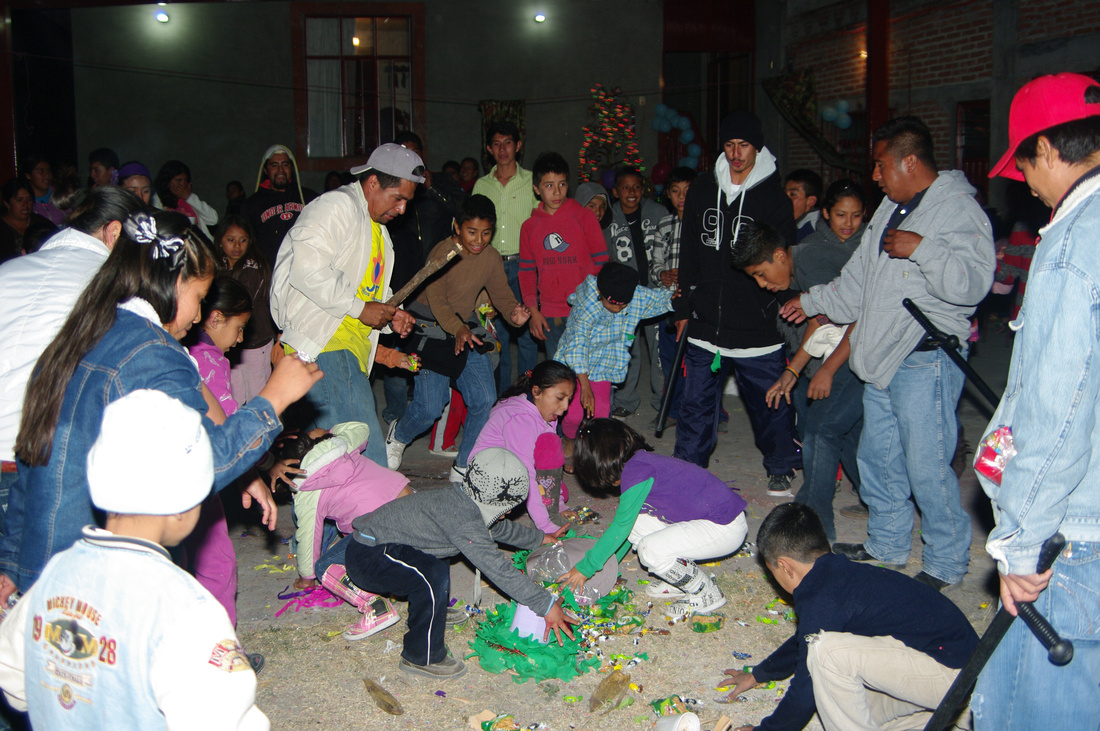
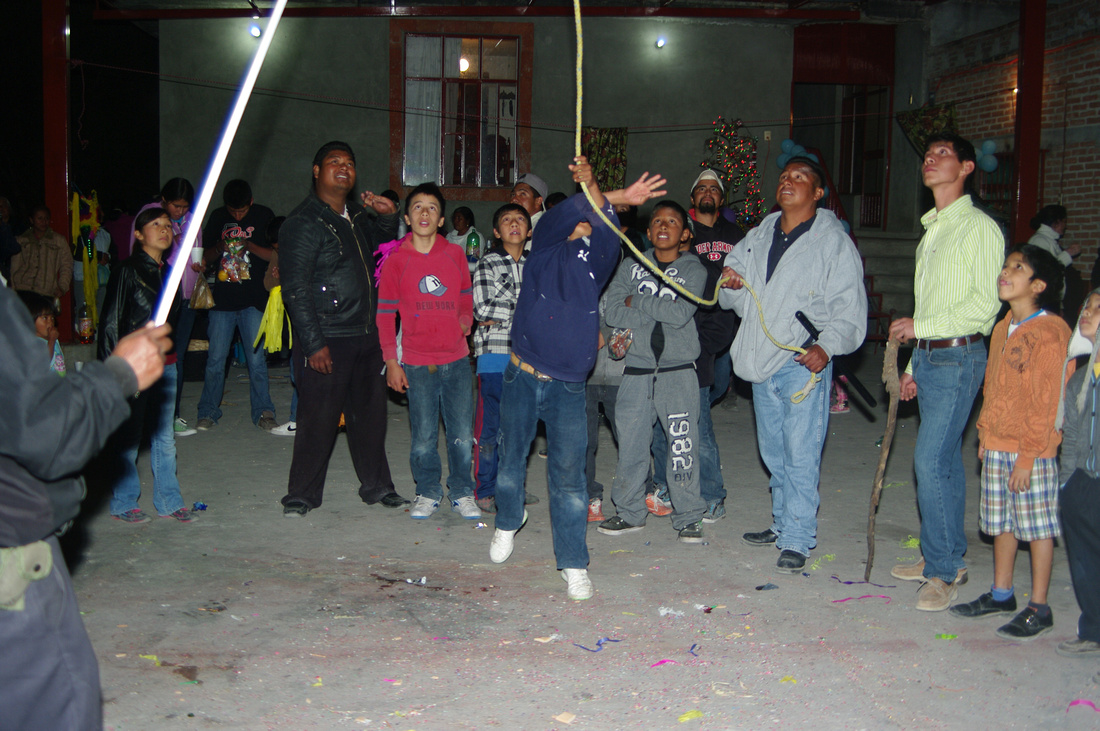
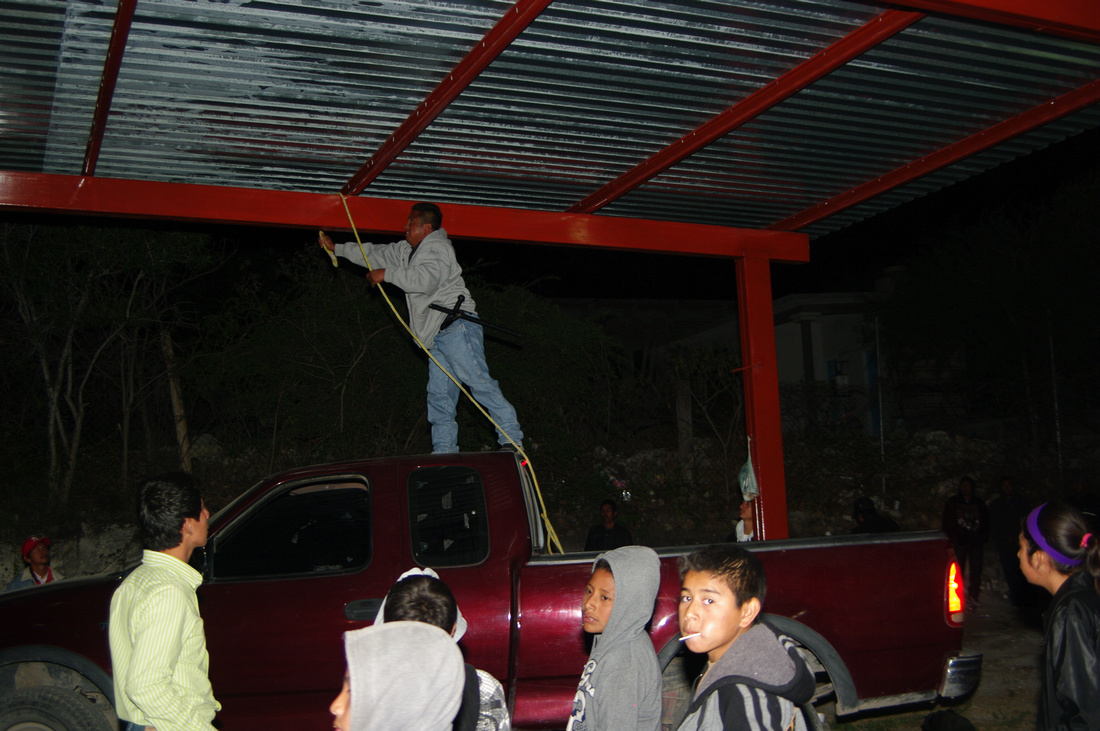
You don't want to get in the way when the kids dive for the fallen candy.
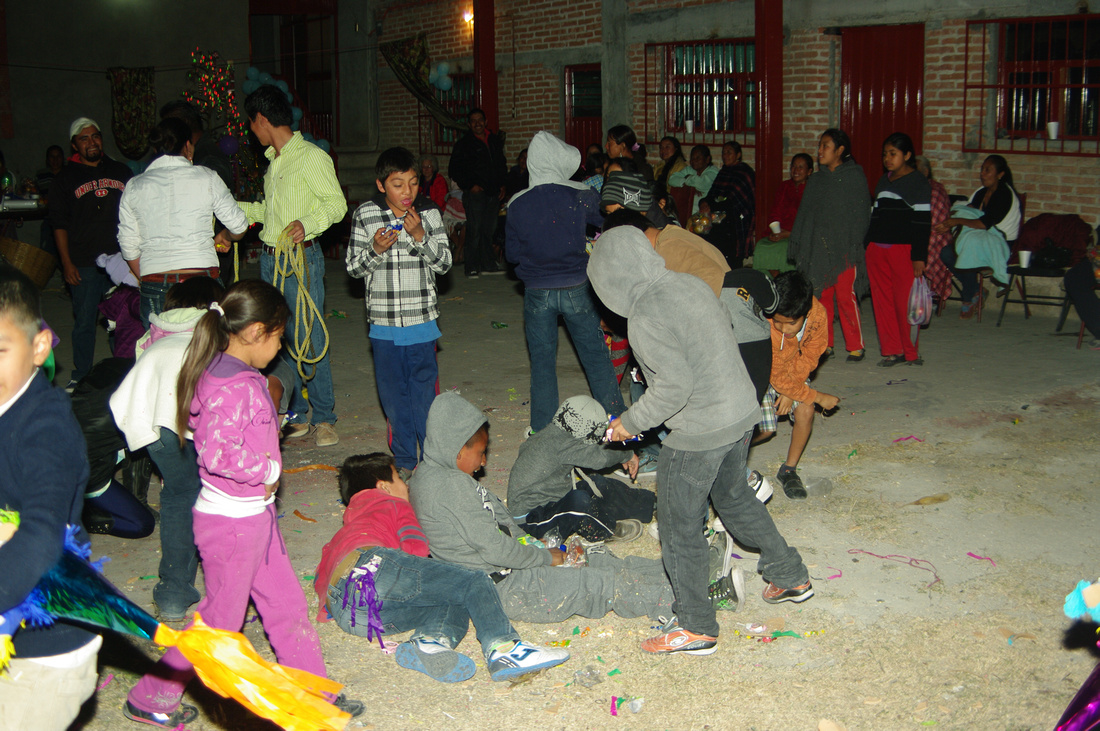
Last week we were invited for dinner to Juan's in Matatlan. He owns a little cabin on the side of a mountain that overlooks the valley where Matatlan is located. The view is spectacular. I'm sorry I didn't photograph it! Anyway we all met at Juan's before driving up to the cabin. Mickey, Yadi, Beth, and I were the first to arrive so we walked over to the palenque where mezcal is made. I love the building. It's made mostly out of adobe and wood. I always feel like i'm walking into the past inside. Everything shows signs of wear and hard use. The boards that make up the walls do not fit tightly together so light filters in and makes beautiful patterns inside. The brutish work it takes to make mezcal is staggering when one sees the process.
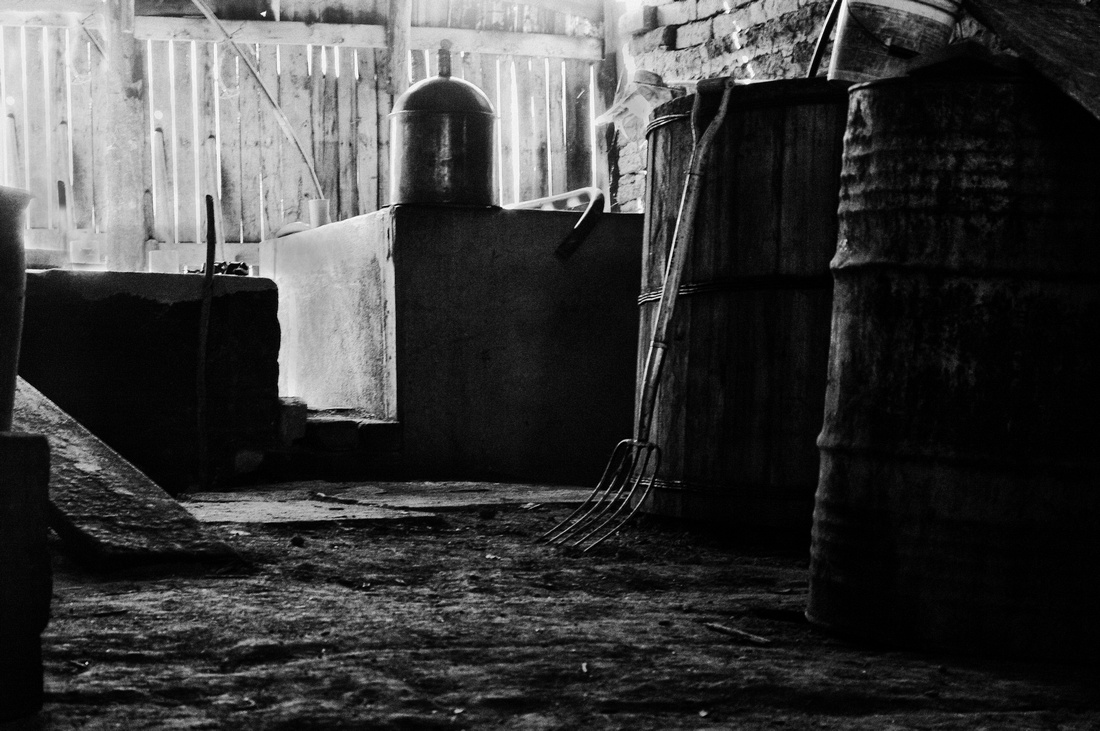

Making mezcal is a long process. Casto and Juan often spend the night waking up to stir the fermenting mezcal or add firewood below the copper hojas that cook the maguey.

Luis is explaining the process to Beto's son Armando.
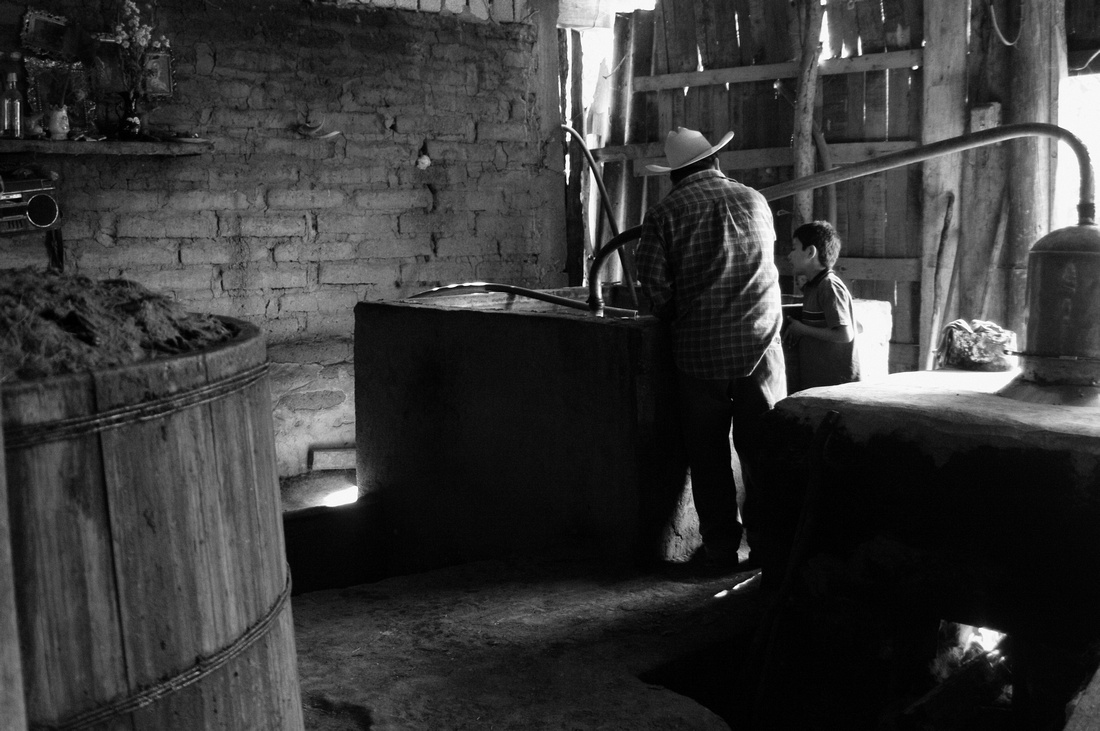
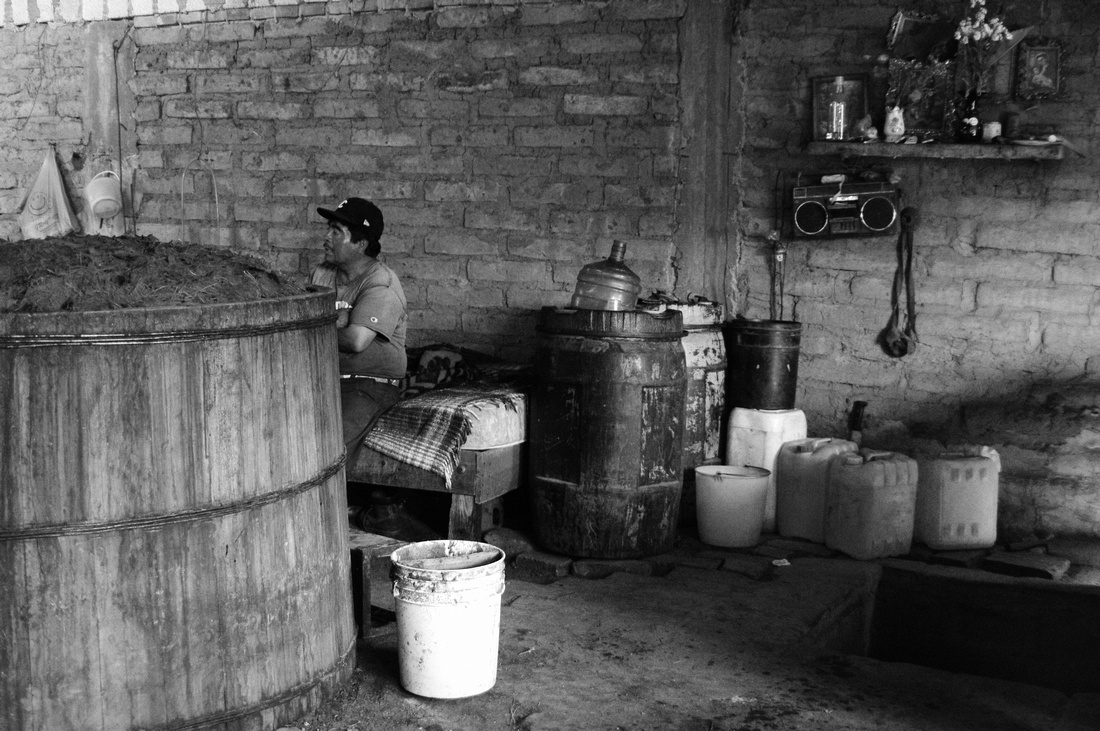
In the background you can see the stone circle where cooked maguey is placed and broken into pieces. A horse pulls the heavy stone around to smash the maguey into a stringy fibres matter. At this point the maguey is very sweet with a maple flavor leaning towards molasses. When the maguey is thoroughly smashed it's put into the wooden tubs. Hot water is added to expedite the fermenting process. You can actually see the bubbles coming up to the surface. After fermentation the maguey is pitchforked into copper pots where it is cooked. Through condensation the mezcal travels through copper tubes and into a waiting container. The first mezcal out of the hoja is deadly often reaching ninety nine percent. It's usually recycled to drop the percentage but there are men who drink it. I put some in a spoon once and lit it. I got tired of waiting for it to burn out and dumped it.
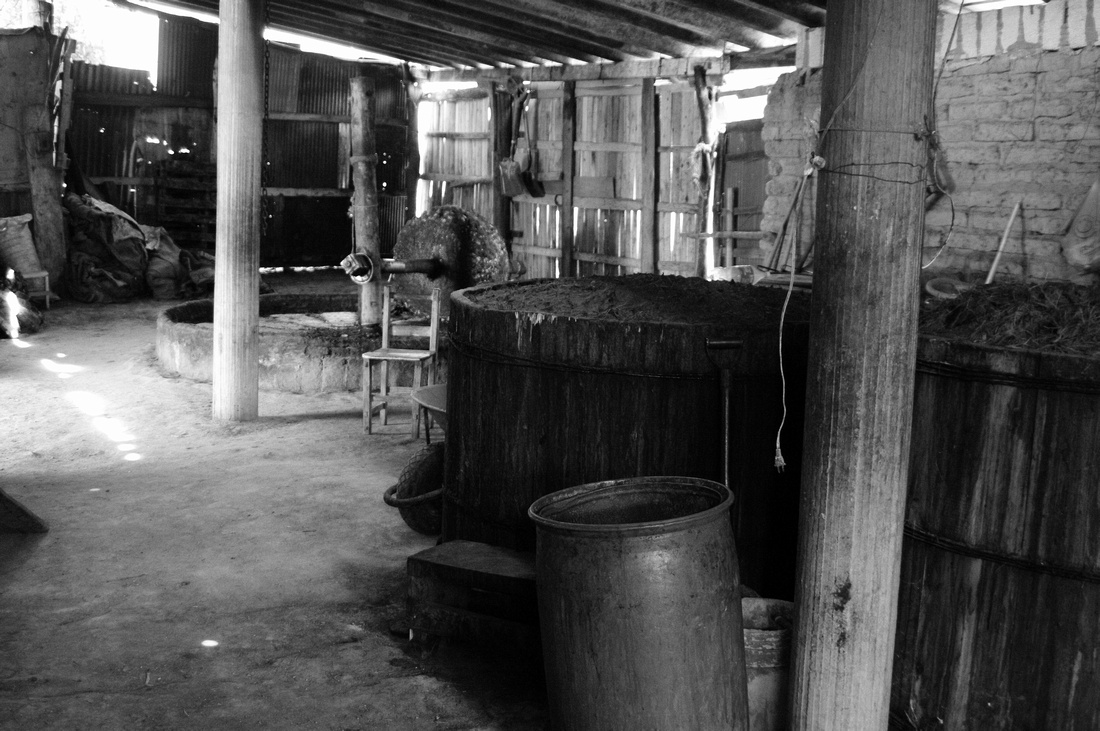
Juan's cabin.
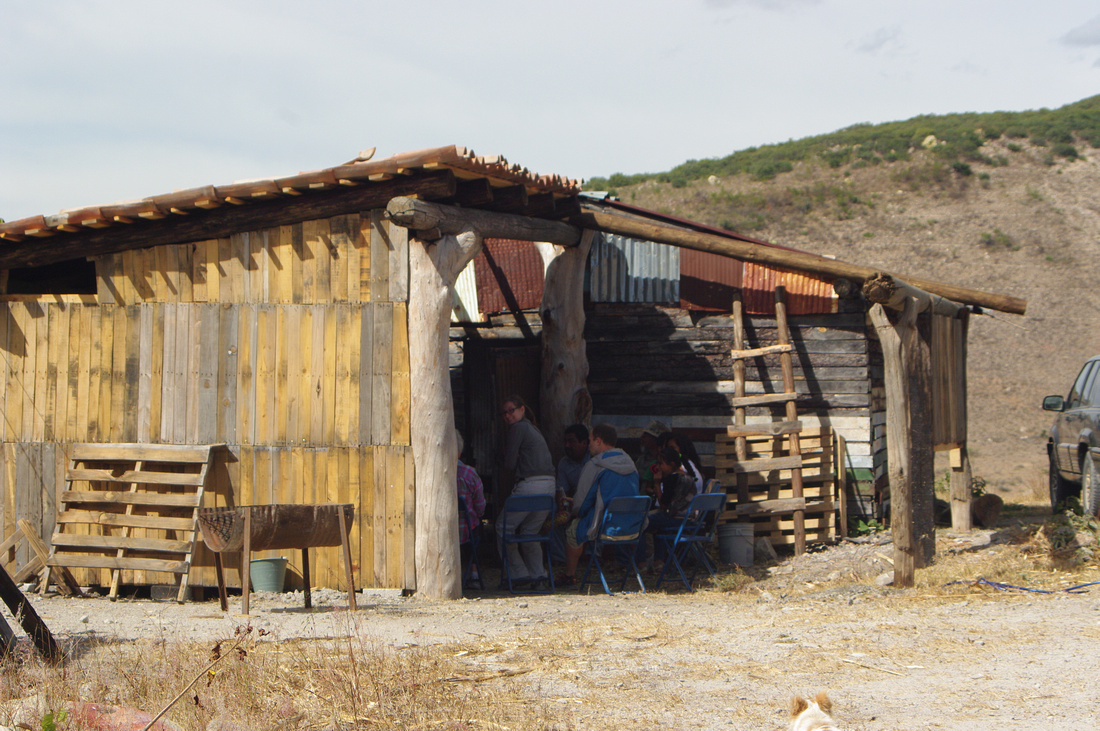
Beth with Juan's grandson.
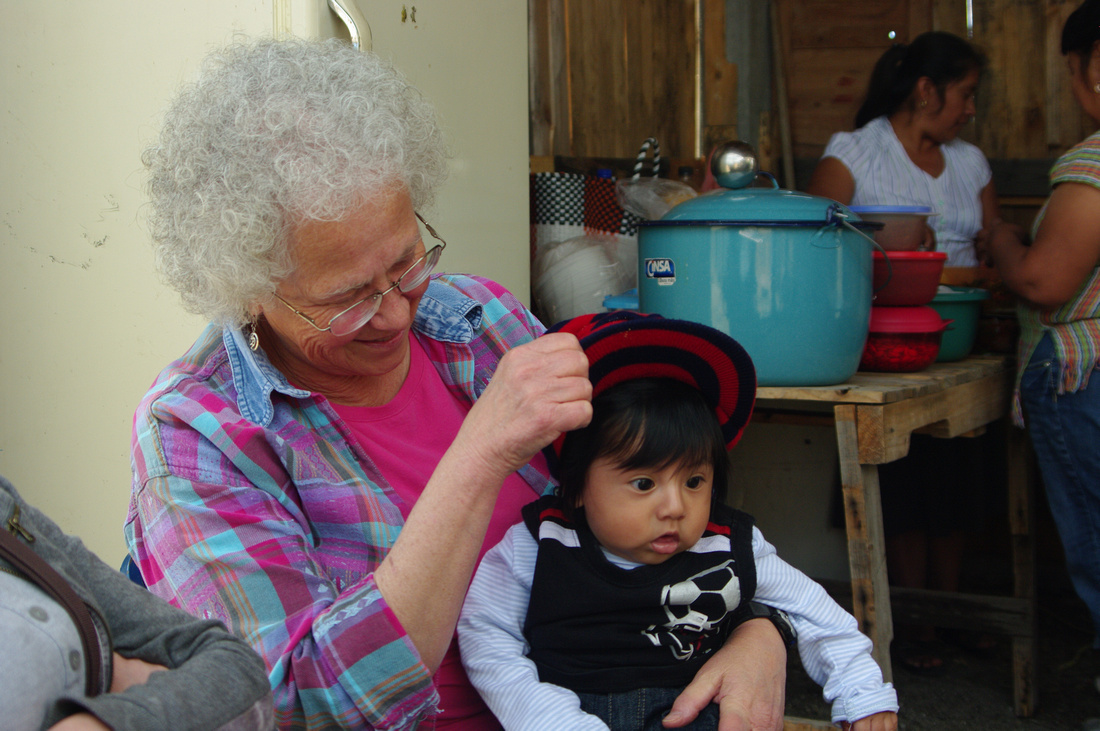
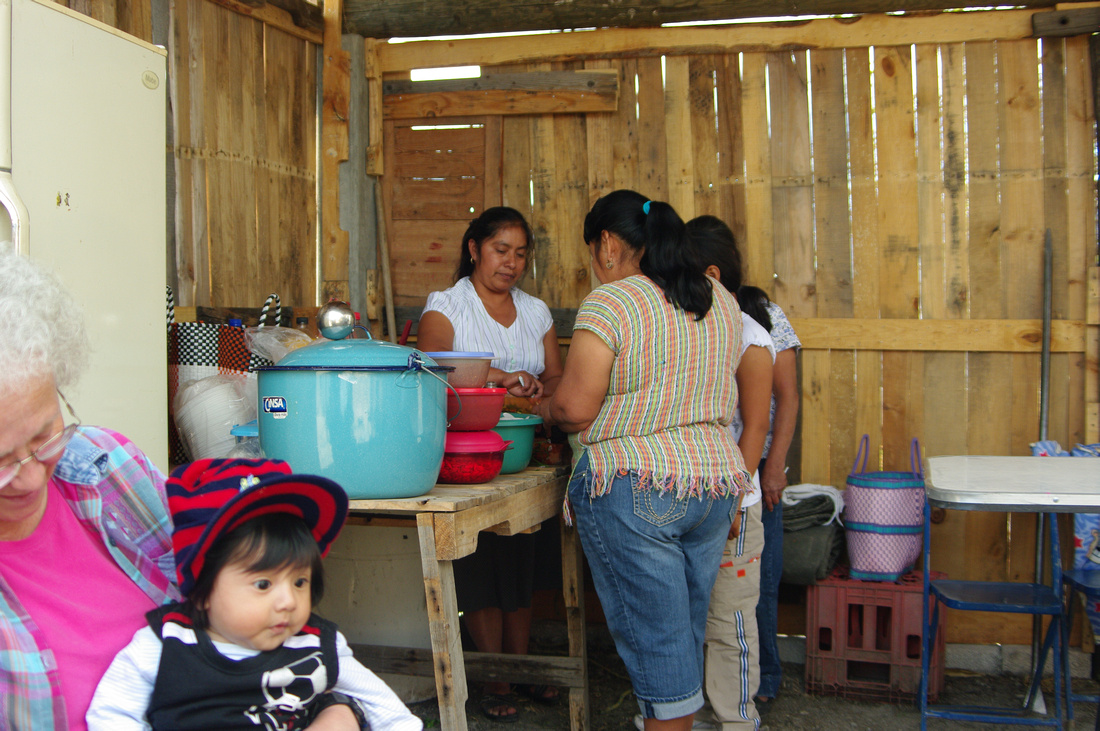
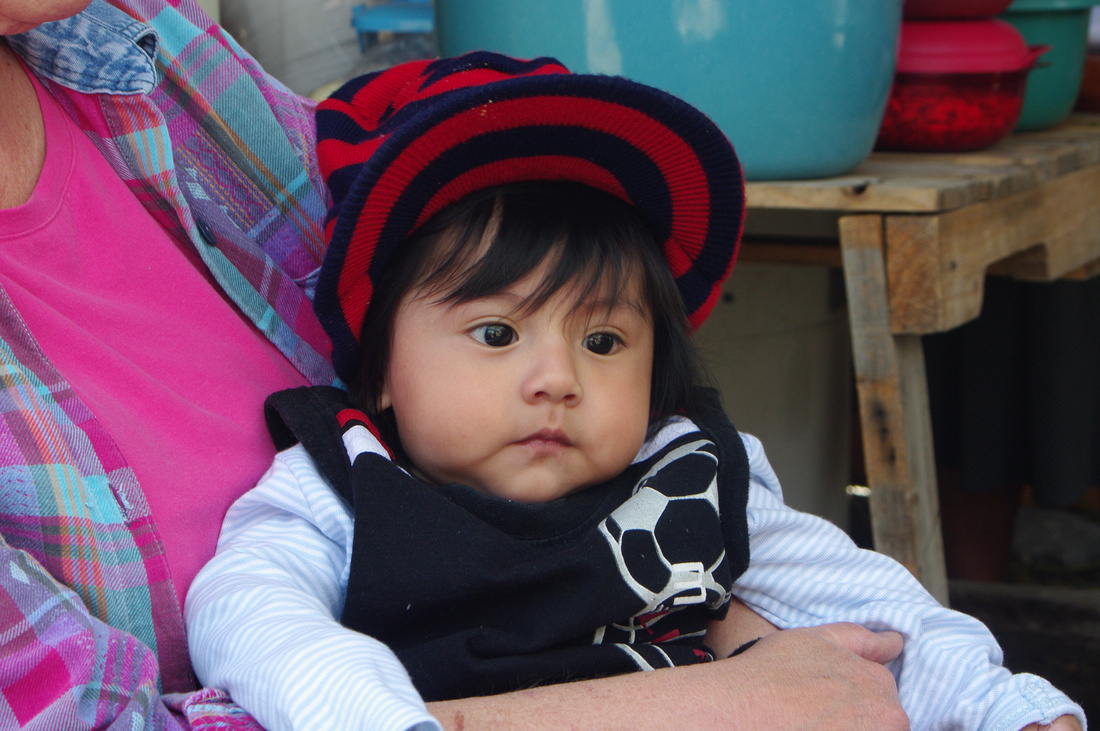
Yadi learning how to make molotes.
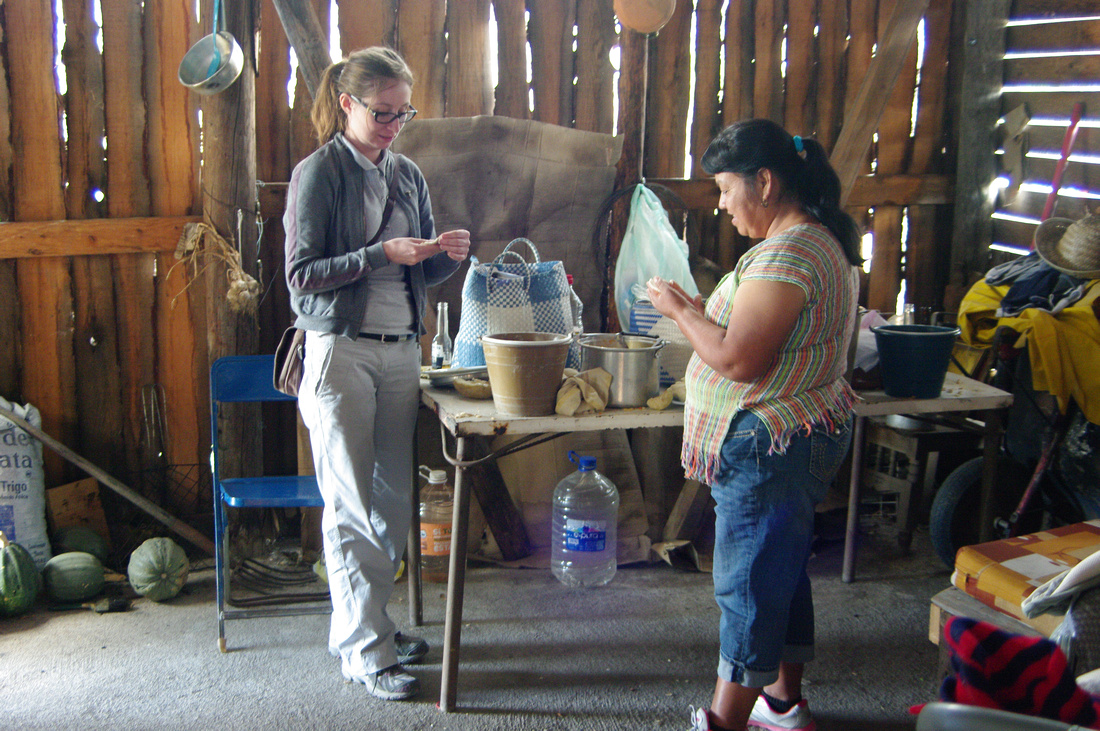
Beto's kids. They are fun to be around.
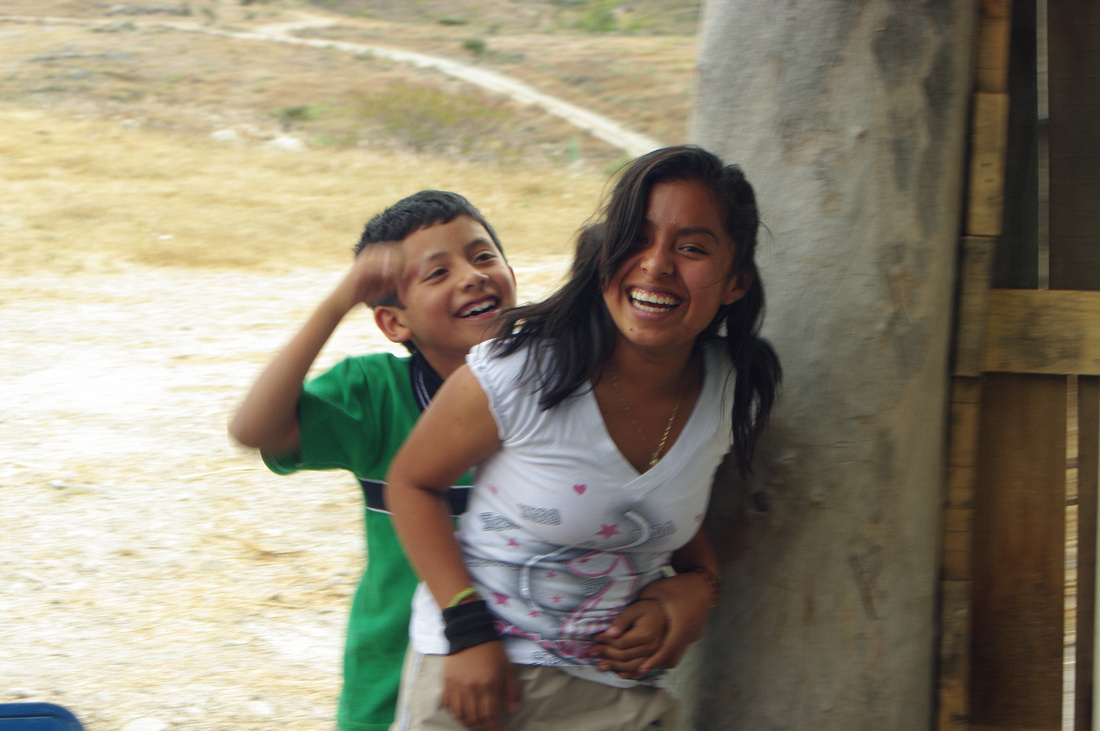
Poor Mickey had a tooth ace. But he more than paid for his trip by visiting the dentist several days. Some vacation!!!

The meal consisted of tesajo, rabbit, Beth's chile, a salad with nopales, large hand made tortillas, and molotes. That's Yadi's hand reaching for hot sauce. It ended up being quite a feast.

Saturday Beth and I went to an agricultural fair down the road in Yagul. The fair gives farmers a chance to display samples of their crops and submit their best for judging. There is also information on new techniques for farming more efficiently. Vendors offer their goods, some concerned with farming and others just taking advantage of the large concentration of people.
Last year the fair was at Union Zapata. It’s a yearly event and must rotate between communities.
Corn is the major crop displayed followed by beans and squash. Chilies are also displayed.
A few artists show their work, some of which are quite good. I was especially impressed with carving done on the gourds of squash-very intricate detail.
The farmers sit proudly behind their displays eager to swap stories and describe what they have. I was reminded of car shows in the US.
The trend here in farming seems to be shifting towards green houses. Crops can be grown year round and more importantly less water is consumed. A bit disturbing is the practice of mixing fertilizer with the water. I’m no chemist but it seems that whatever they are putting in the water is being introduced into the plant then the product. I don’t believe there is much control here so it’s buyer beware. Beth and I typically stick with products grown outside. You can tell the difference. Products grown inside are perfect looking and very tempting.
Until the fair last year I’d never realized how many varieties of corn there are. Some of them are beautiful in color. Beth and I have purchased tortillas made from more colorful corn and the flavor is different. Some have a stronger richer flavor.
Our friend Casto and his family sold pulque and tepache. Pulque is juice extracted from the maguey plant and tepache is made from the flesh and rind of pineapple. Pulque, cinnamon, and brown sugar are added. Pulque, drank in quantity is a great natural laxative. It’s best to drink fresh so I doubt that it’s an exported product. It changes flavor daily as it continues to ferment. Some disreputable people water their pulque down.
One display that caught my eye was a hand crank water pump. A pvc pipe is inserted into the well. The water is brought up by rubber pieces inside the pipe. It works really well and is good to ninety feet. It’s perfect for those without electricity.
There were a couple of booths that provided children with activities.


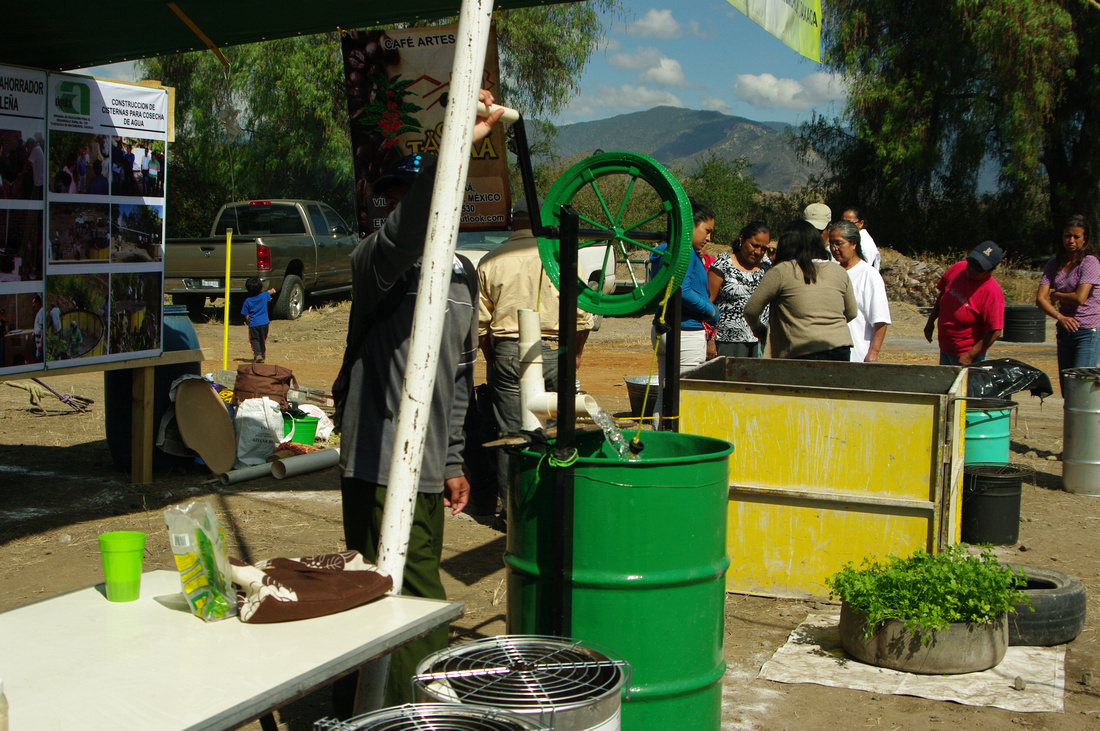
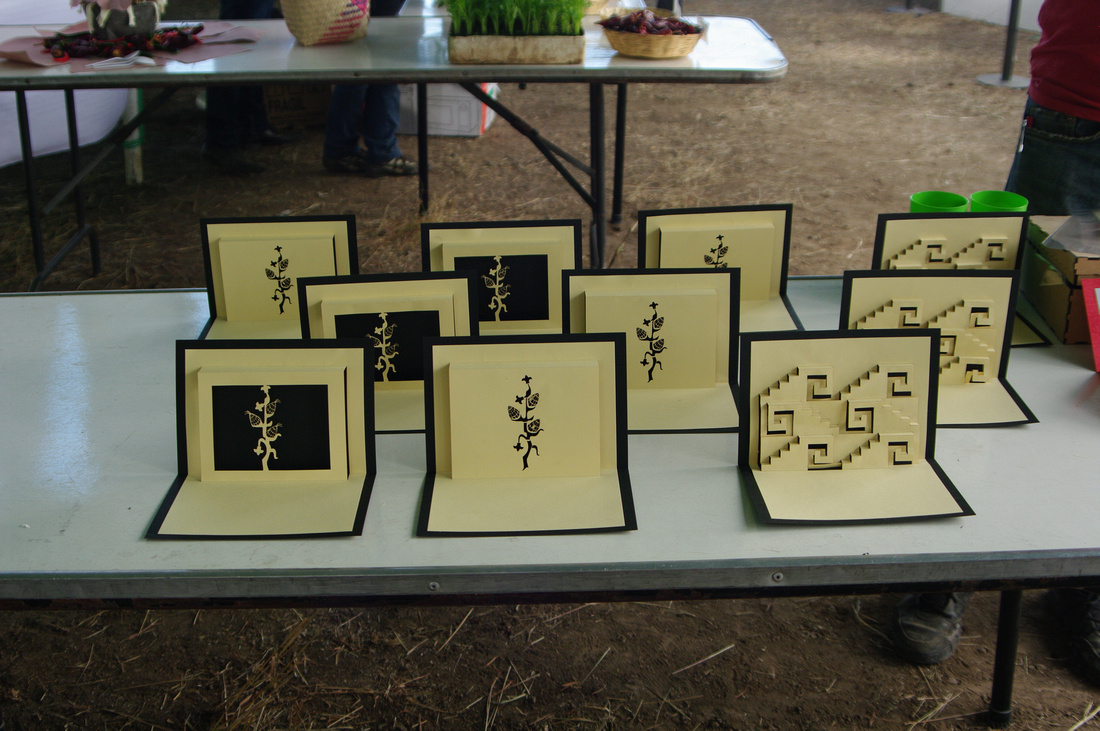
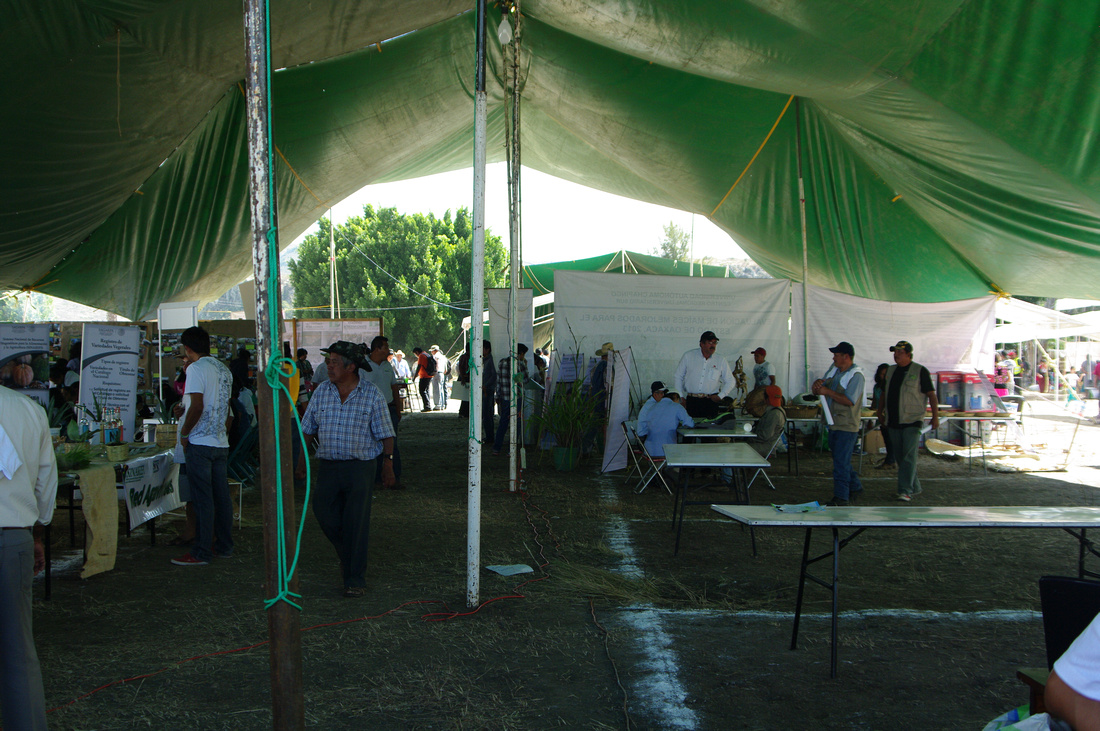
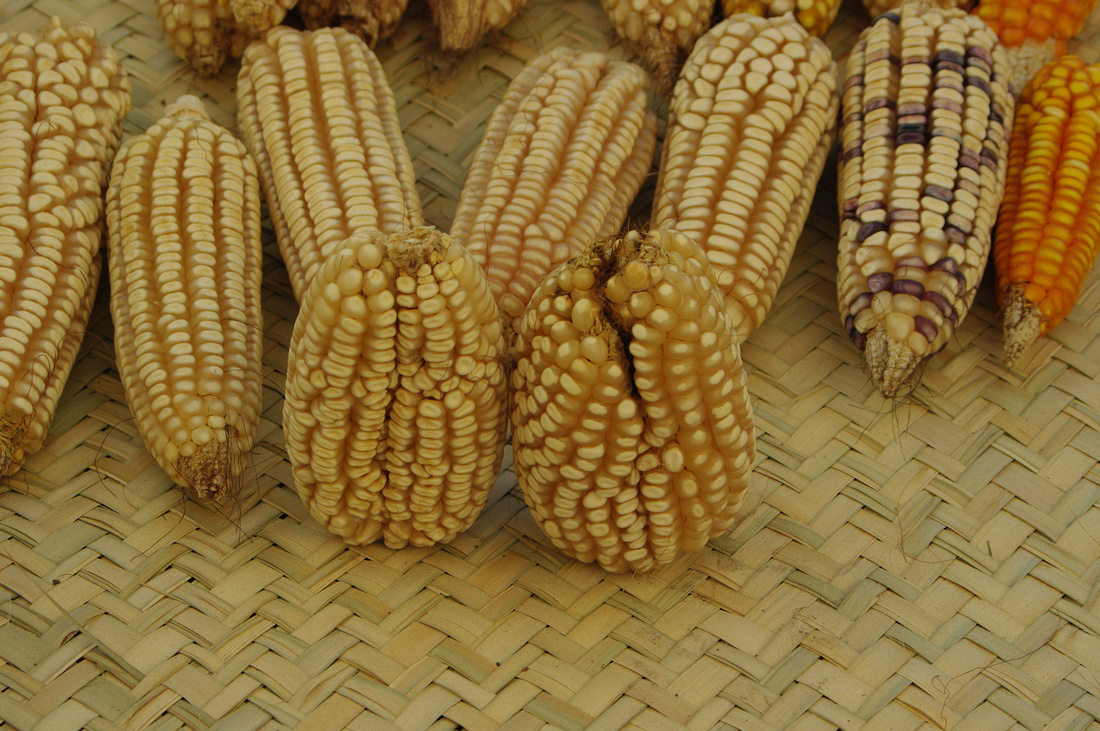
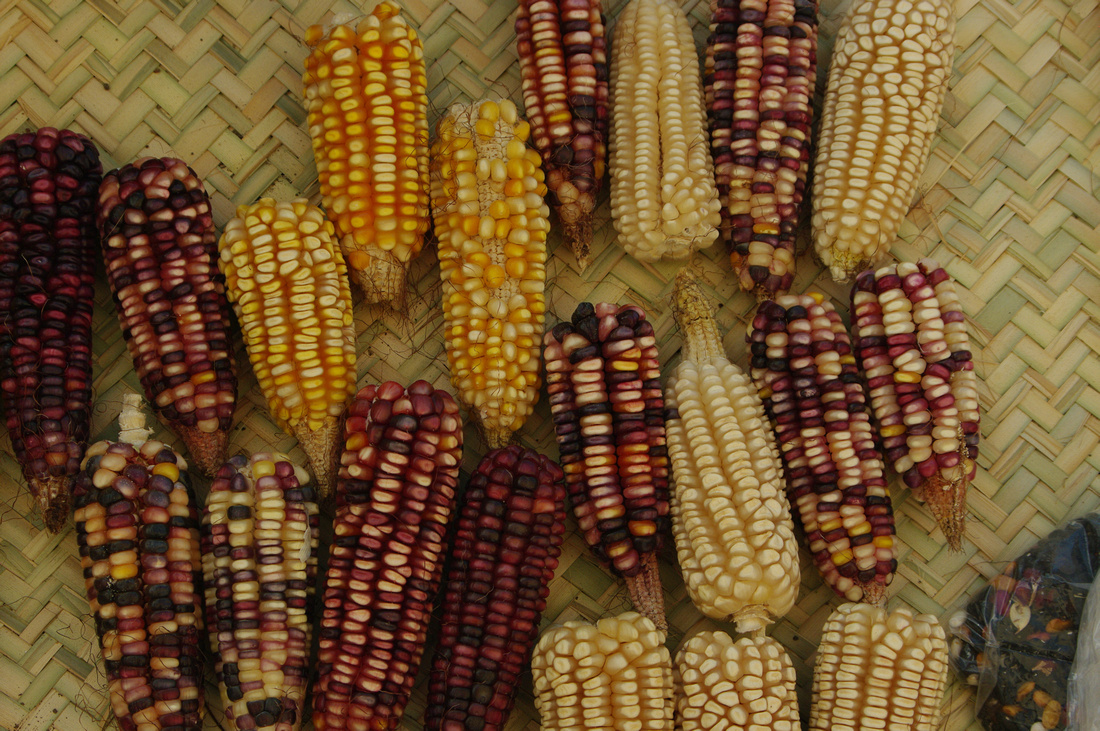
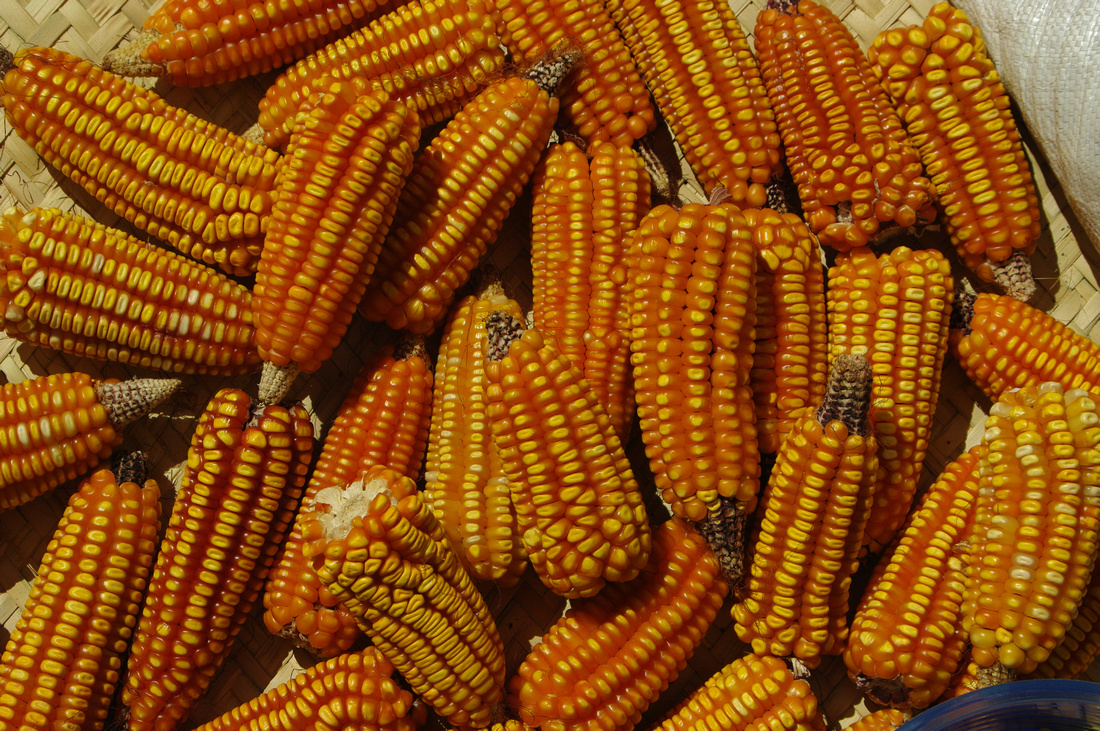





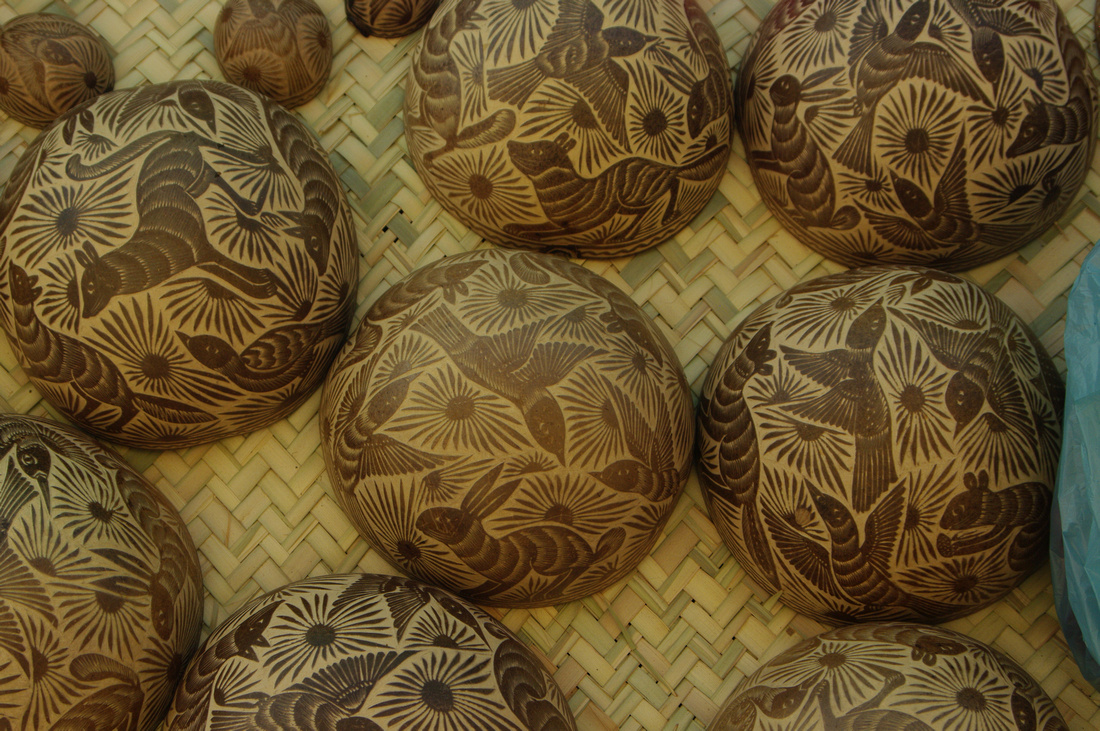
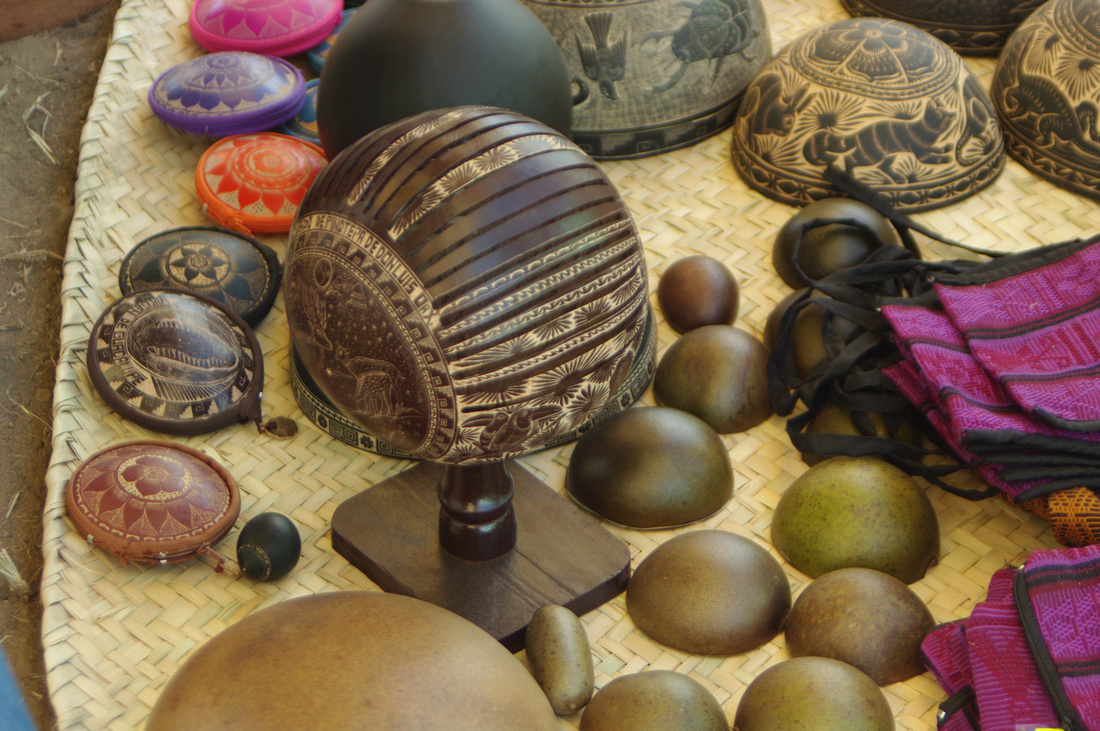
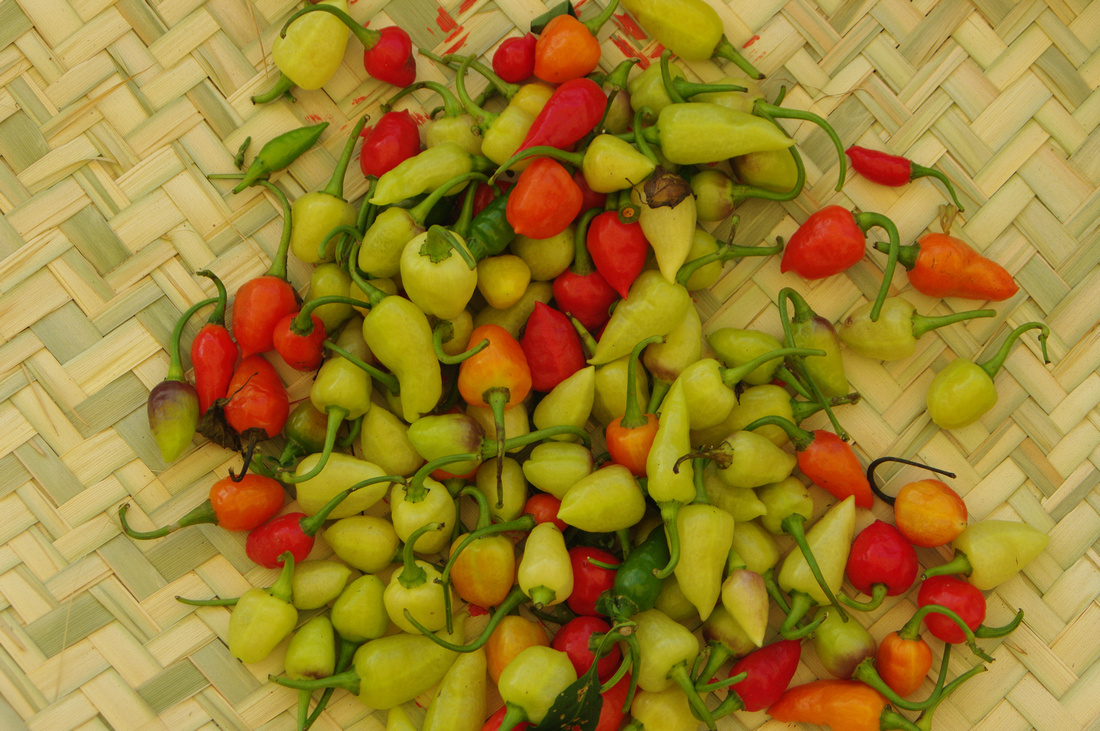
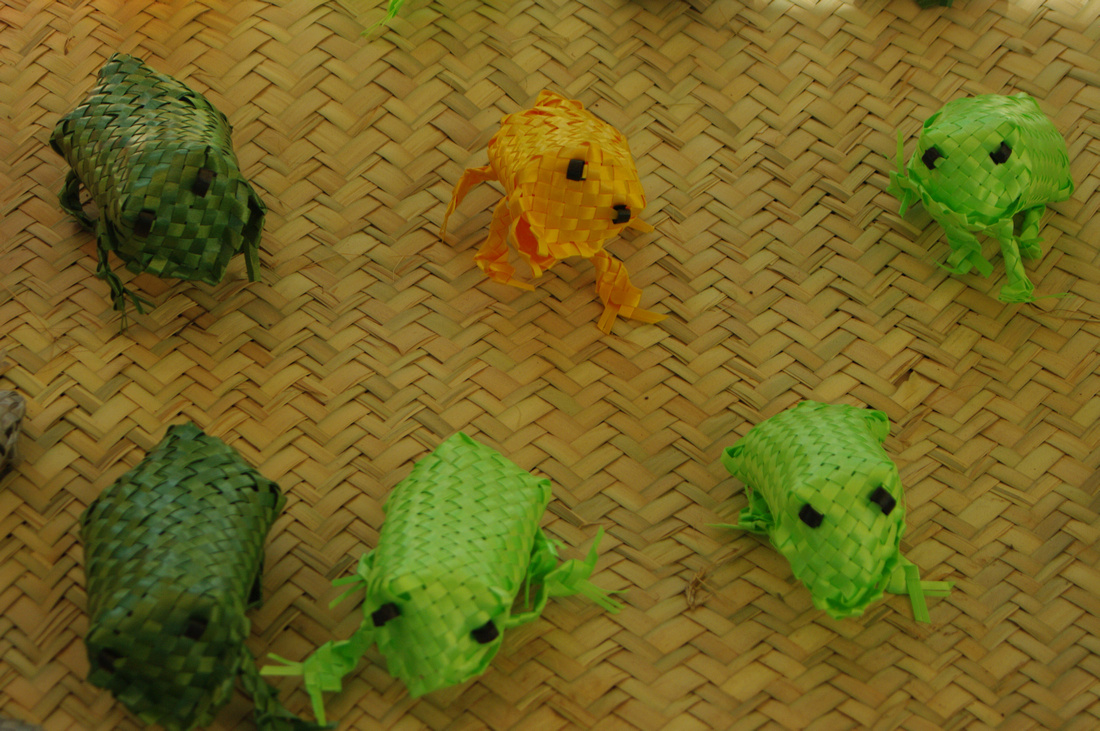

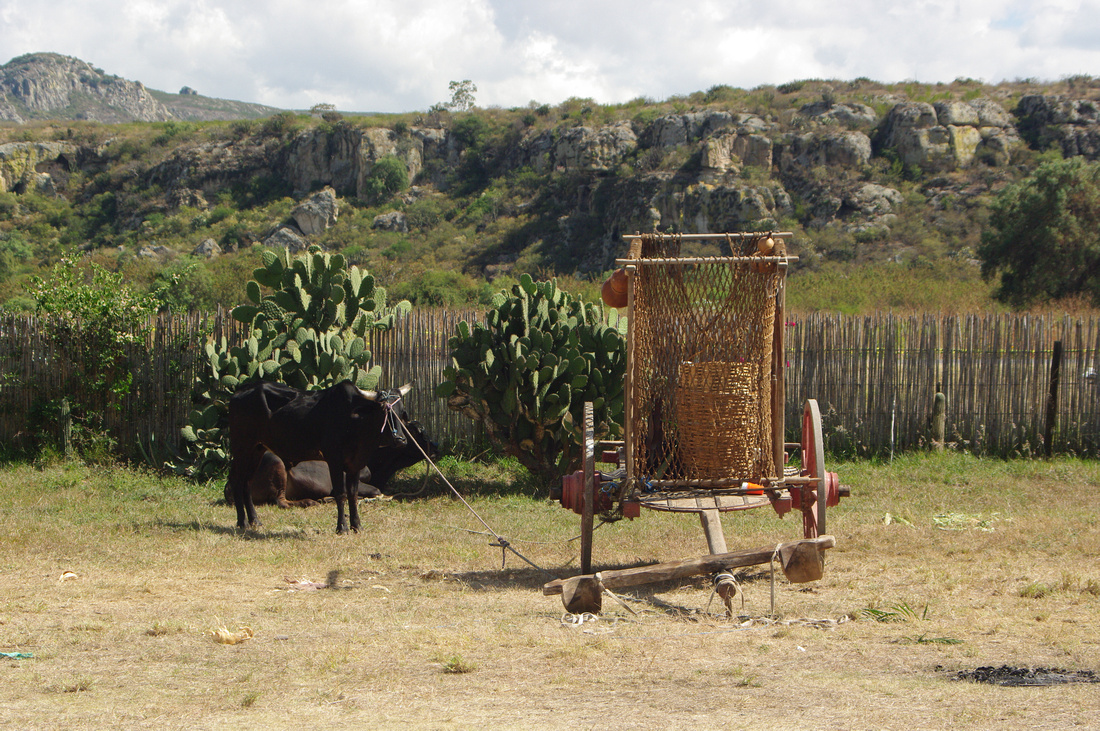
We got invited to San Baltazar week before last to celebrate finishing the roof on one of Epifanio’s sons' home. Juan Carlos (the owner) is in the US and sends money down when he can. He hopes to have the house finished if and when he returns. San Baltazar is about thirty minutes from our home heading down towards Tehuantepec. The village is located in a small valley. The view of the surrounding mountains is simply beautiful. When we arrived most of the cement had been poured. Epifanio told me they’d used about eight tons all of it carried up ladders a bucket at a time. The first layer was cement mixed with sand and gravel. Once that layer had dried a little an additional layer of just cement and sand was poured on top of the first layer. The second layer about a half inch thick is what keeps the rain from passing through the roof. The cement is supported underneath by planks that are supported by vertical beams. The workers, eleven of them, chatted and gave instructions in Zapotec changing only to Spanish to speak to us. Once work was completed we ate chicken and mole.
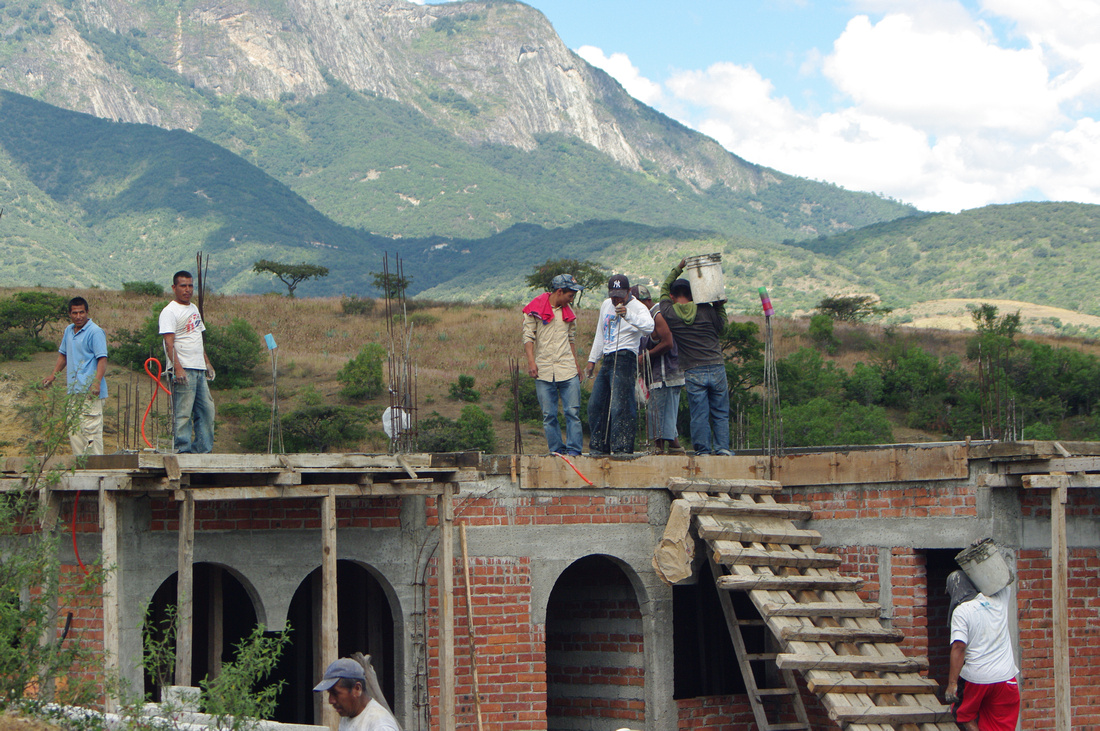
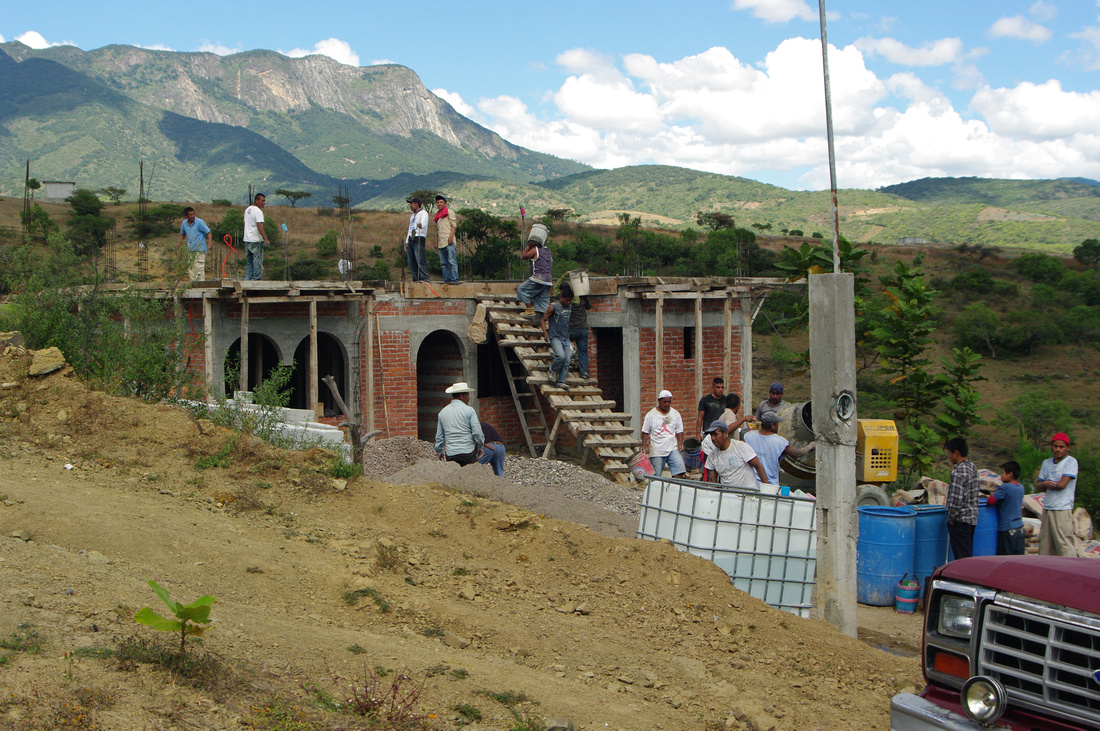

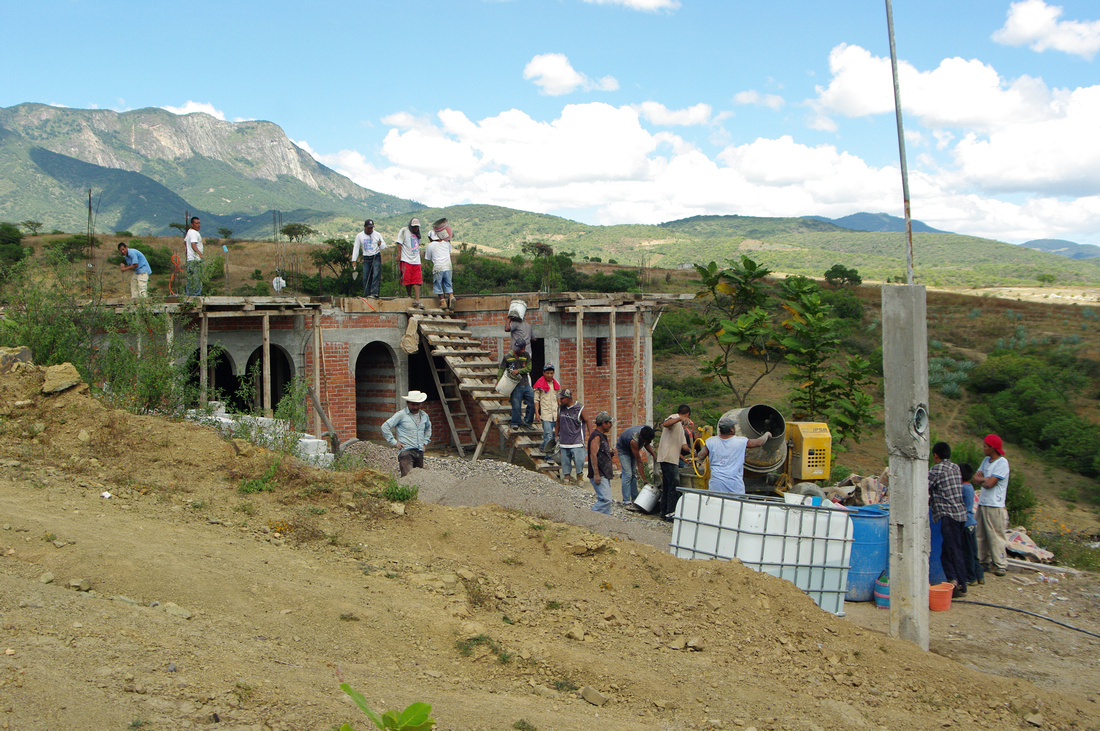
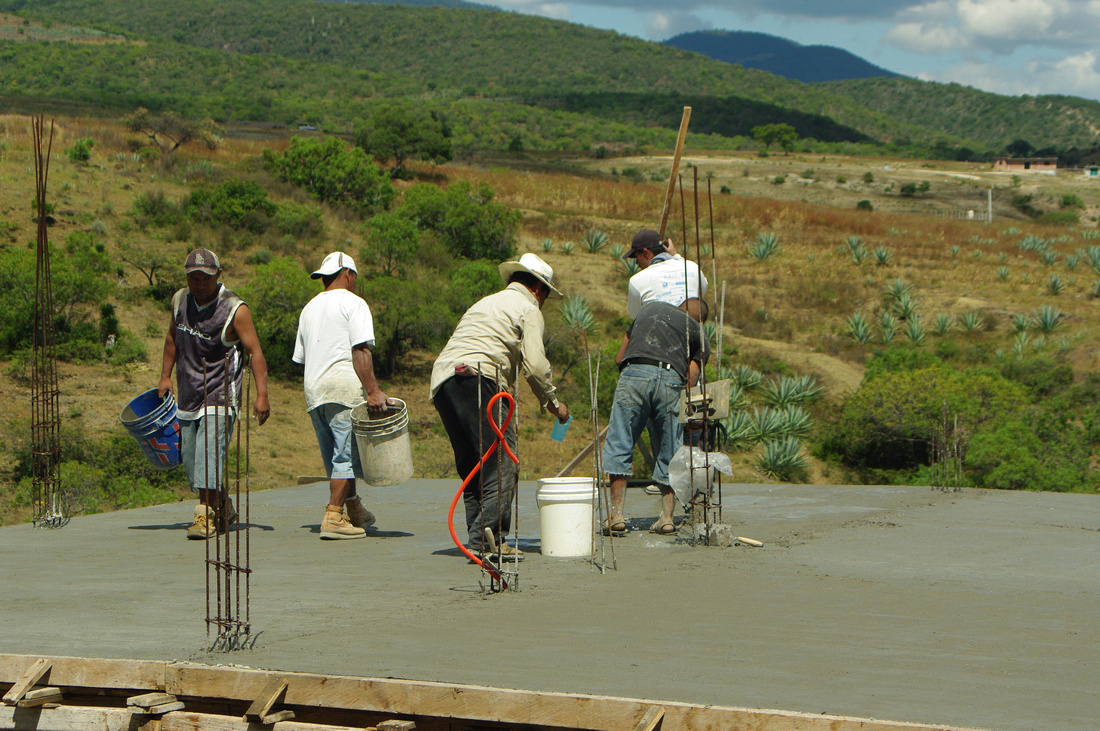

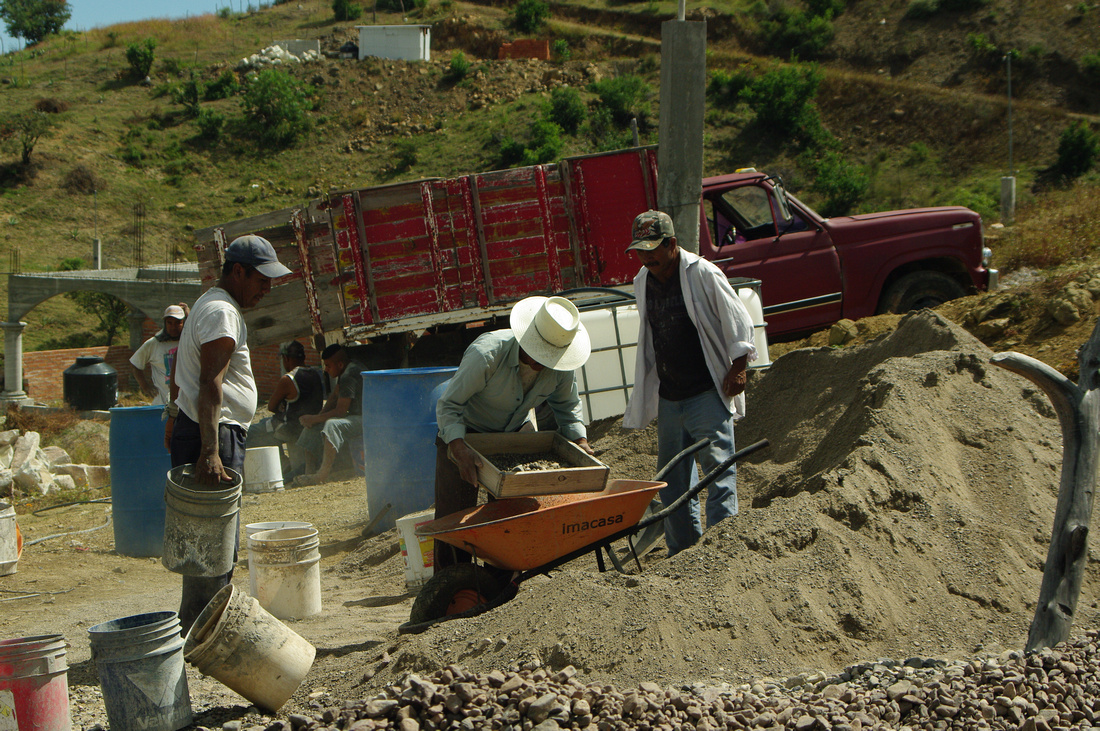

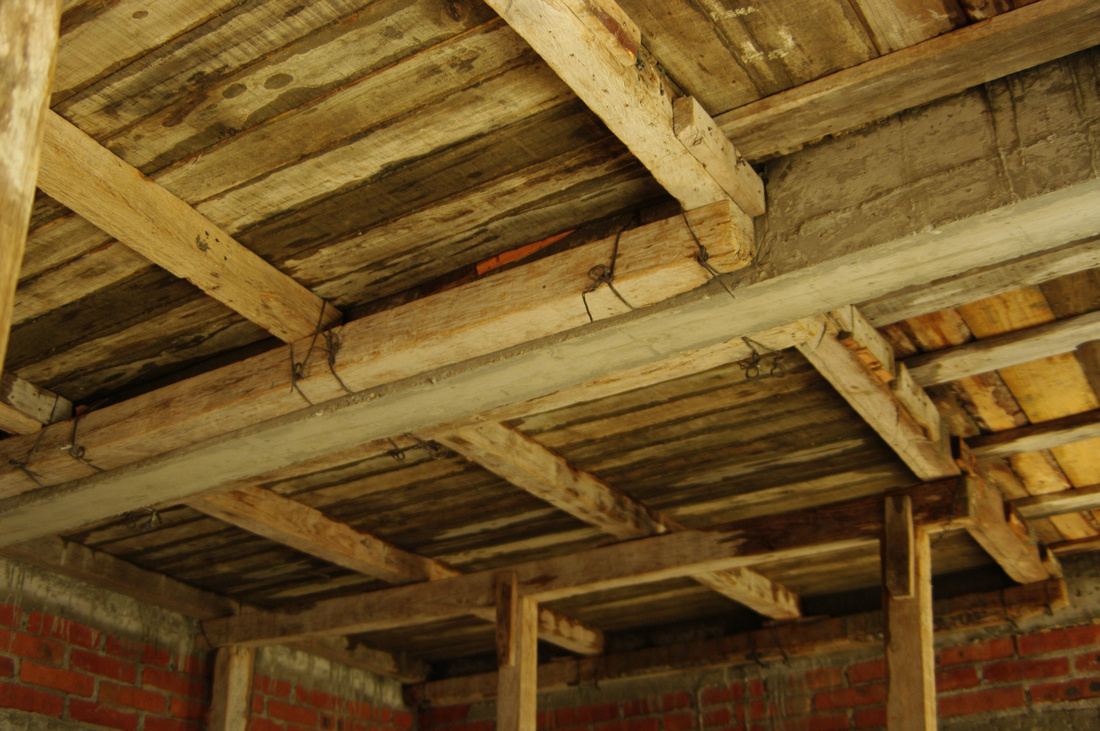

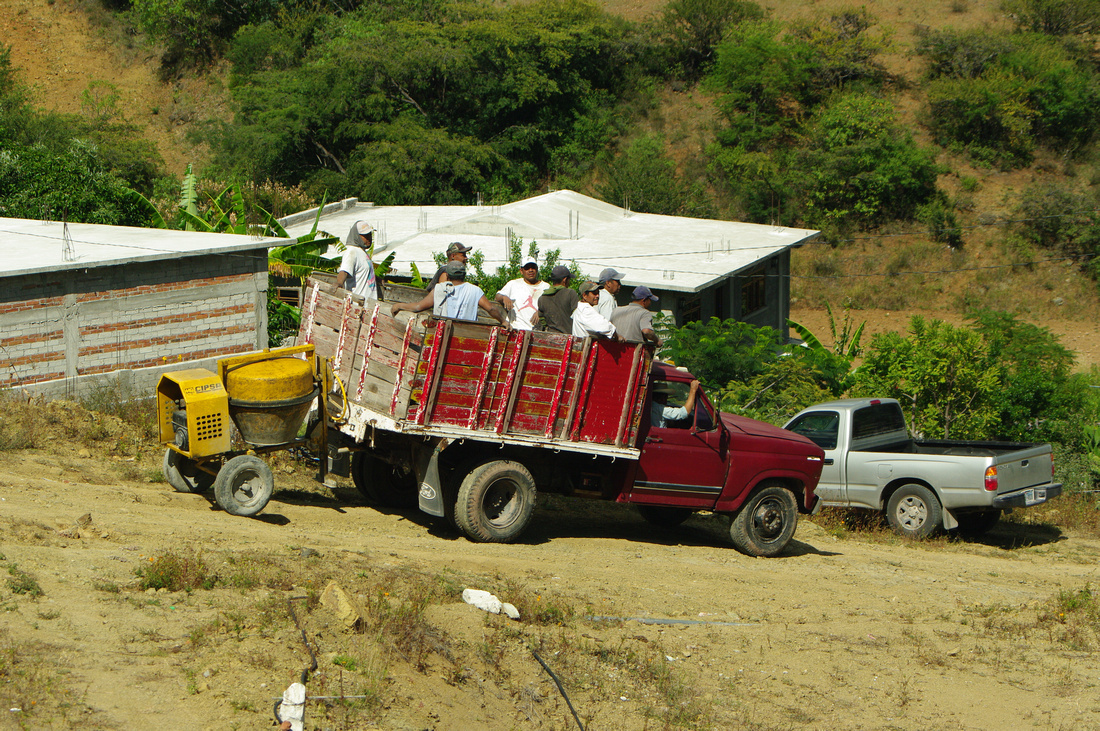
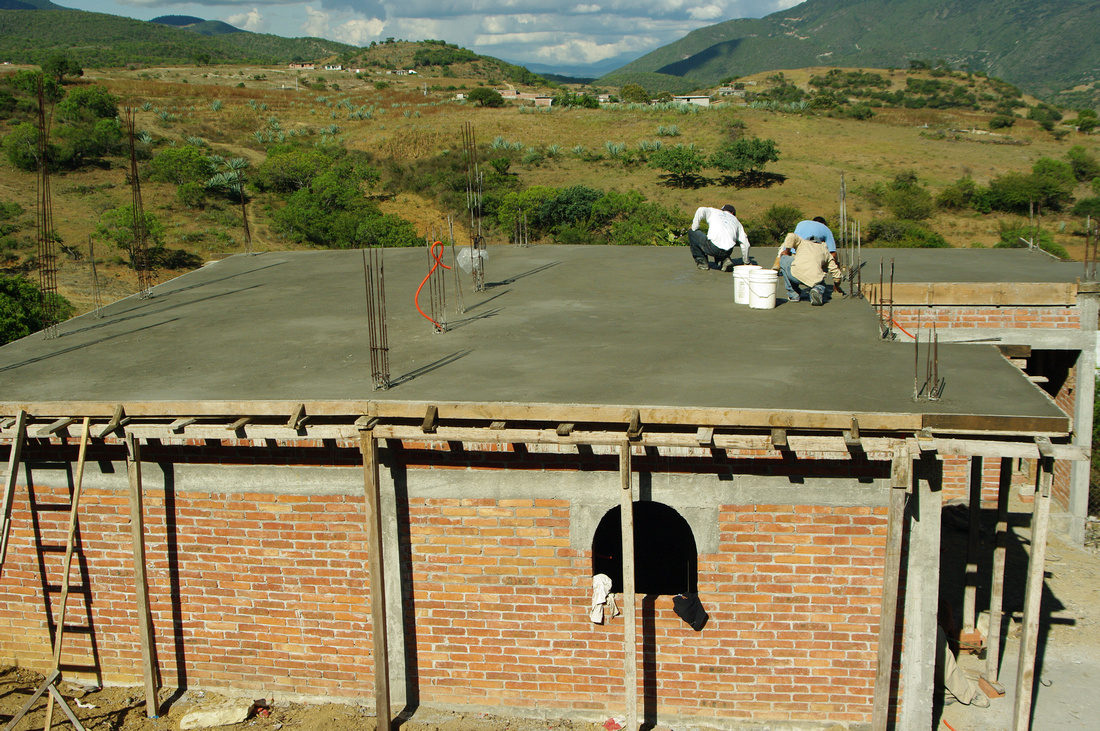
Two weeks ago Beth and I drove up to Ayutla about a two hour drive. Our house is at about five thousand feet altitude. I’m guessing Ayutla is another fifteen hundred. Even though the road is paved (poorly) it reminds me of the logging roads in Western Washington. Very quickly the terrain changes to pine forests. By the time you reach Ayutla the forests are dense. The area around Ayutla is occupied by the Mixe. Because of their remote location and their fierceness the Mixe were never dominated. Both the Aztecs and later the Spanish tried but neither was successful. The Mixe tend to be a little shorter in height but have a reputation of being very strong. I remember hearing stories about the Mixe walking to Tlacolula to purchase goods (including bags of cement) and then walking back home taking several days to make the journey. It’s been my experience that the Mixe are more standoffish than other groups. They are not unfriendly but wary. Never been approached for conversation. But… once confidence has been established they are very friendly. It’s also been my observation that the Mixe as a group tend to be more politically minded. I photographed a wedding in Ayutla in ninety four. At the reception I was bombarded with political questions. They were very interested in my opinions on many topics. I also believe they are the most tied to their ancestral lineage. Their language has been converted to written form. I noticed walking around the town that the street names and numbers on buildings are in Mixe. As you’ll notice from the photographs there isn’t a lot of area that is flat. Almost all buildings and homes are built on the side of a mountain. Also interesting is how buildings and homes conform to unusual lot configurations. They must be in incredible shape from all the walking! I have a good friend from the village of Cero Pelon (bald mountain) whose mother is in her nineties and still going. I’ll never forget my first visit to Cero Pelon. Abelardo drove the hour and a half drive to the village. Once at the village we walked a path for about forty minutes and arrived at his mother’s home. No electricity. To this day I have no idea where the water source was. Her cabin was built from wood. When we ate I was invited into the kitchen which consisted of about a four foot hole dug out in about a fifteen foot diameter. The round cover was made of plank boards. I sat there eating my bean tamales watching the smoke from her fire filter out through the spaces between the planks. The day we were in Ayutla was a holiday so the town wasn’t bustling as it had been in past visits. We spent about an hour sightseeing and making photographs. A new highway is being built that will pass by Ayutla. Hopefully they’ll receive a tourism boost. Anyway the drive down to Tlacolula will certainly be safer and faster.
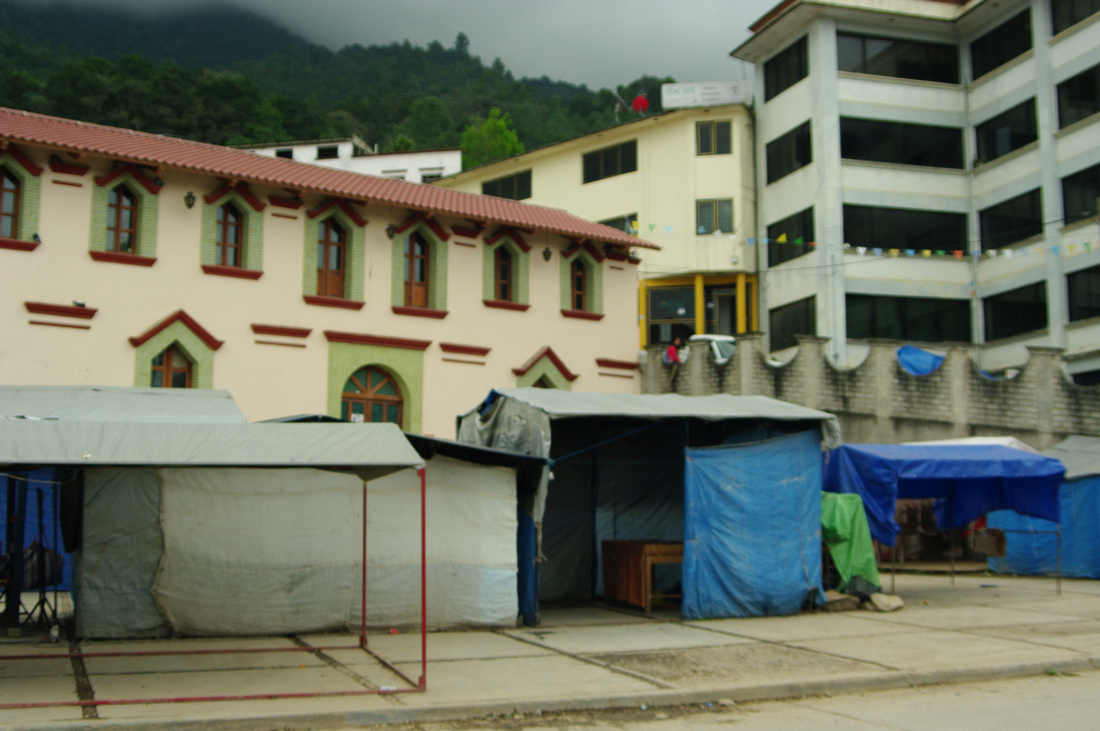

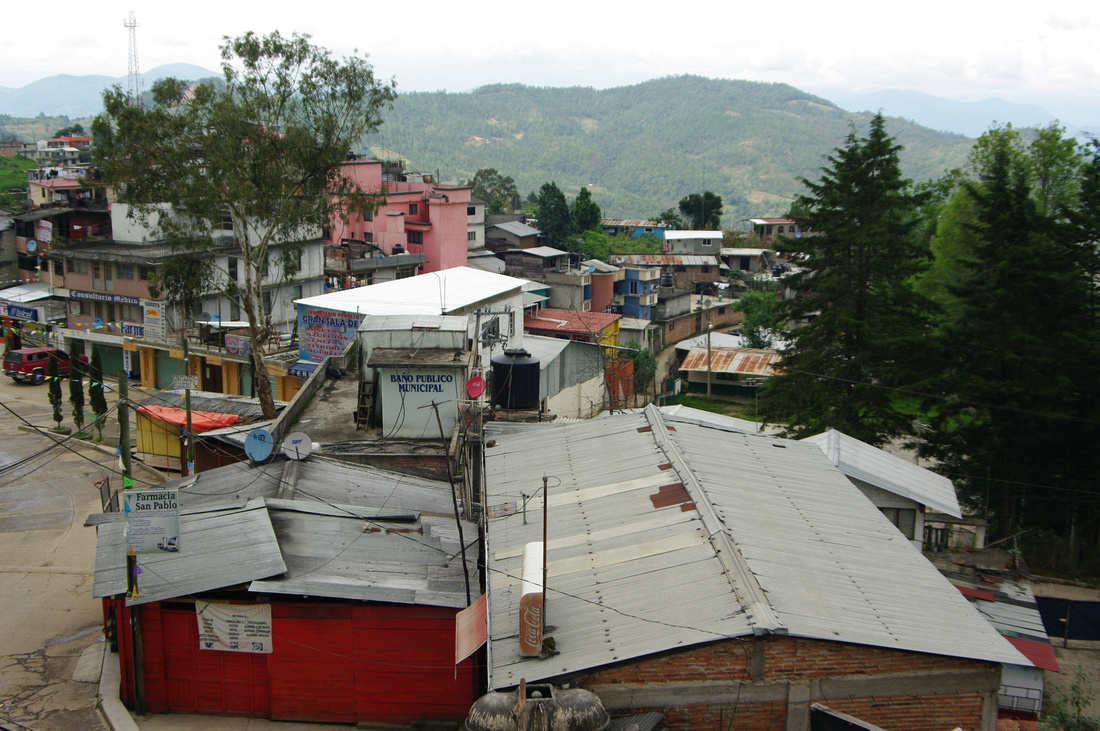


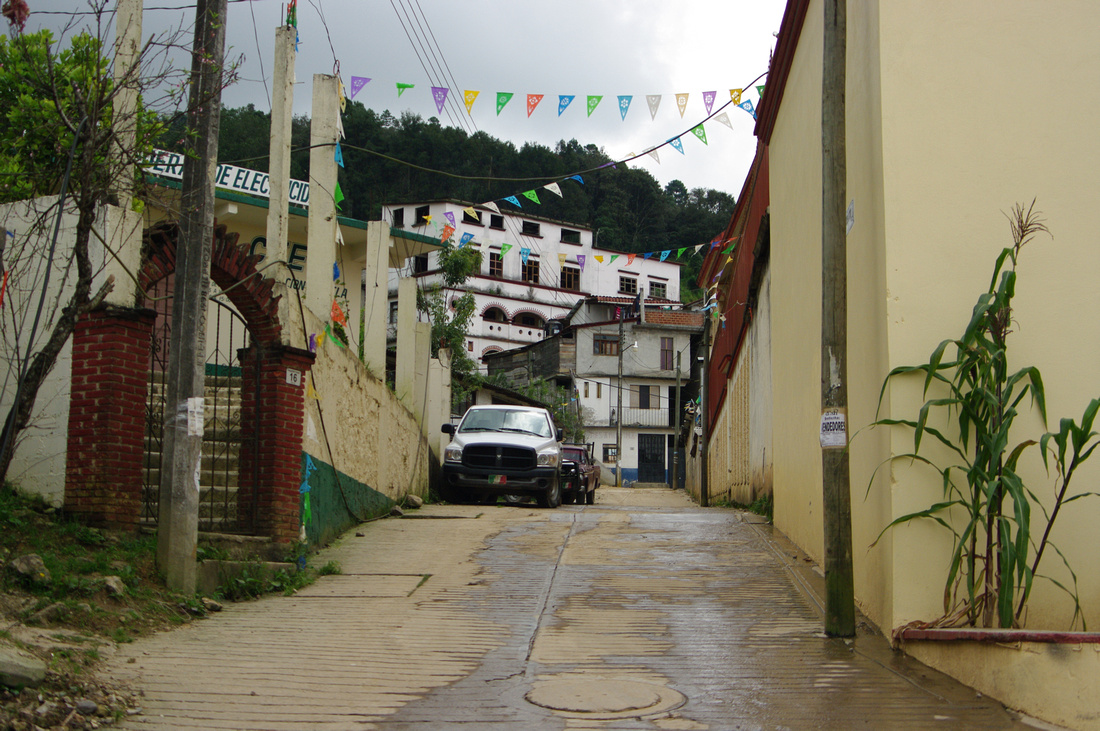
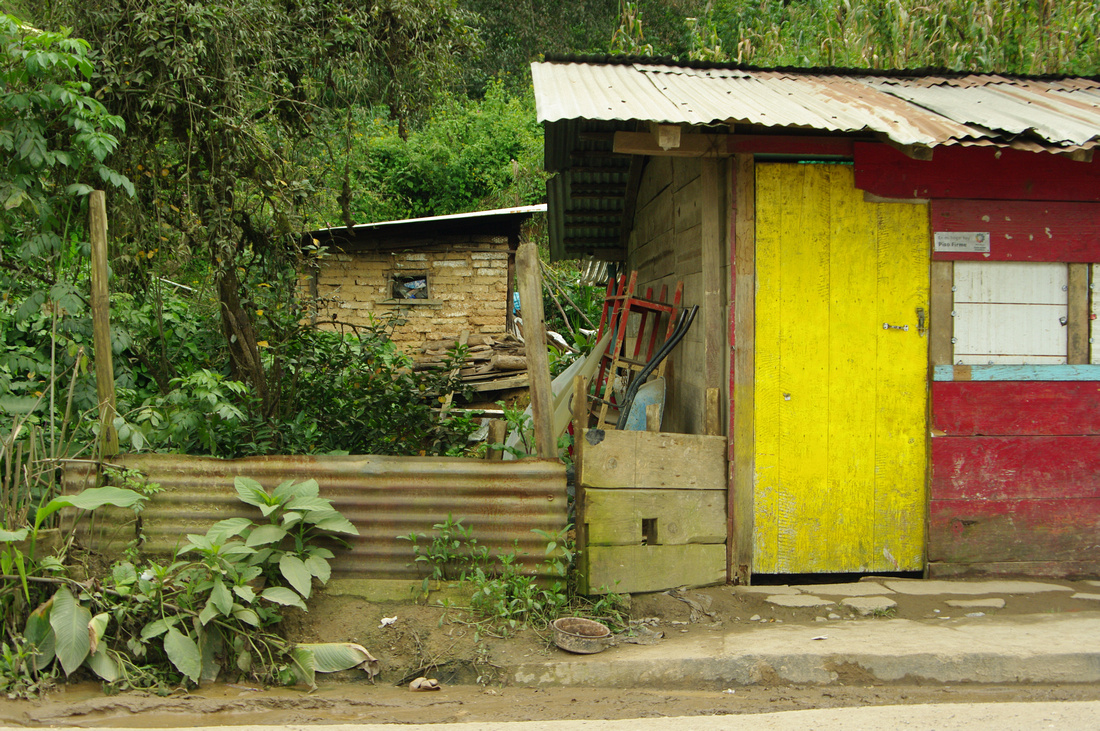
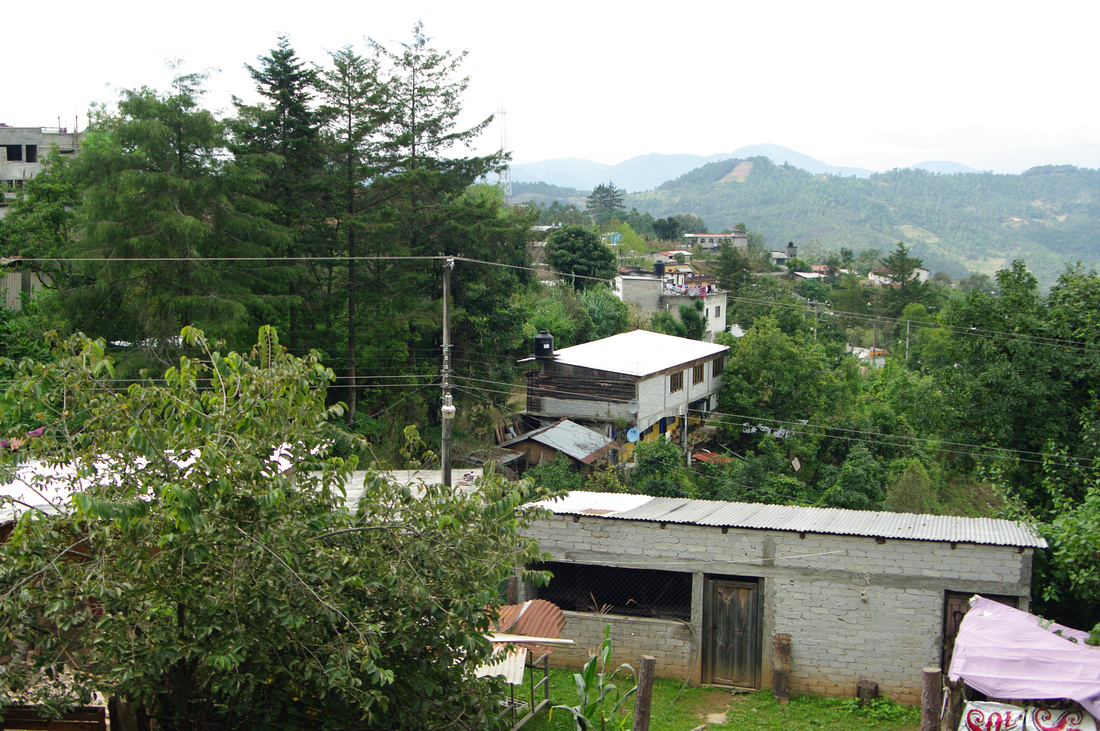
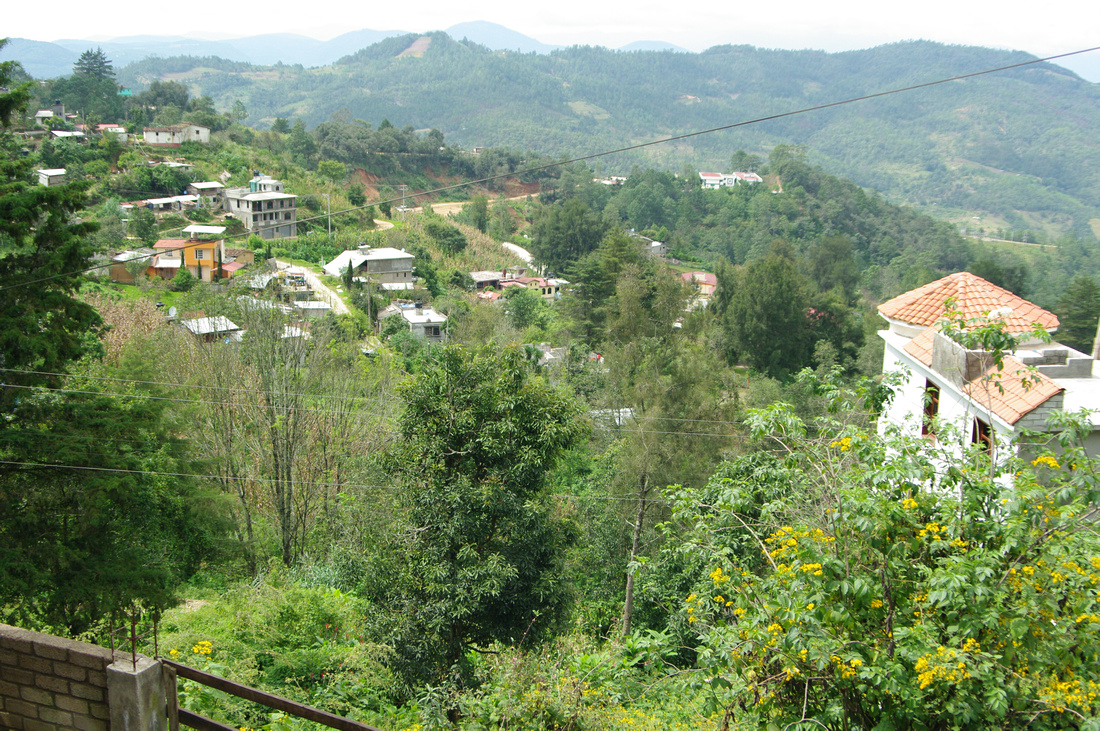
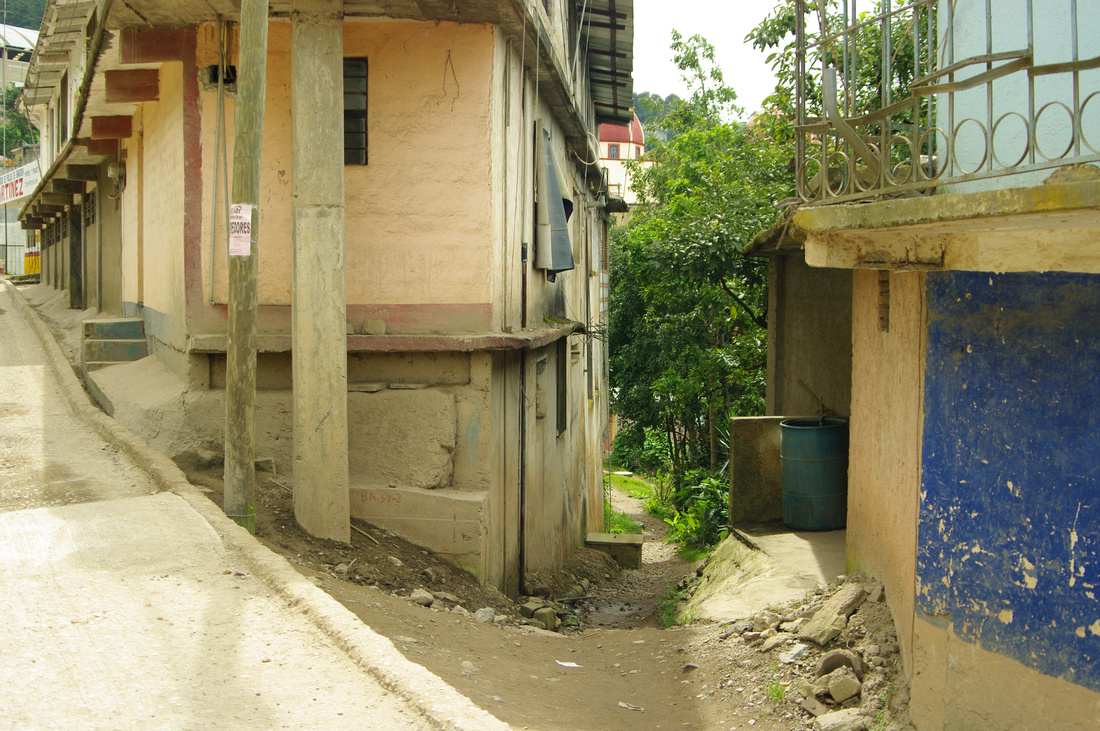

This past week we ate about as far away from traditional Mexican as you can get. A couple from Mitla recently moved back from the States after living twenty years in Los Angeles. They opened a restaurant called “Pink Burger”. We had to try it. So Monday we ate barbecued chicken wings. They were fantastic! Tuesday Beth made chicken cacciatore. It was also very tasty. Wednesday we had to make a run to Oaxaca for a friend so we stopped at our favorite Chinese restaurant on the way back. The food there is always fresh and we always overeat. Thursday we were invited to a birthday party in Tlacolula. In a one in a million chance they served hamburgers and fries. Not a typical meal here! Friday our friends Jeff and Elia came by to cook pizza. Don’t remember a better tasting pizza! Saturday Beth prepared American style chicken vegetable soup. Delicious!!!!!! Back to beans and rice this week.
Yesenia with cake on her face. She got it pretty good! A toast was made to Yesenia. Mom, dad, padrinos, family members, and friends said a few words. It was very touching. What a great support system she has. She is a beautiful young woman. We wish her the best!!!

This is Jeff our pizza guru. We kind of see him as our Dr. Phill but Jeff doesn't talk nonsense and he doesn't have to kiss Oprah's ass!!!!!!
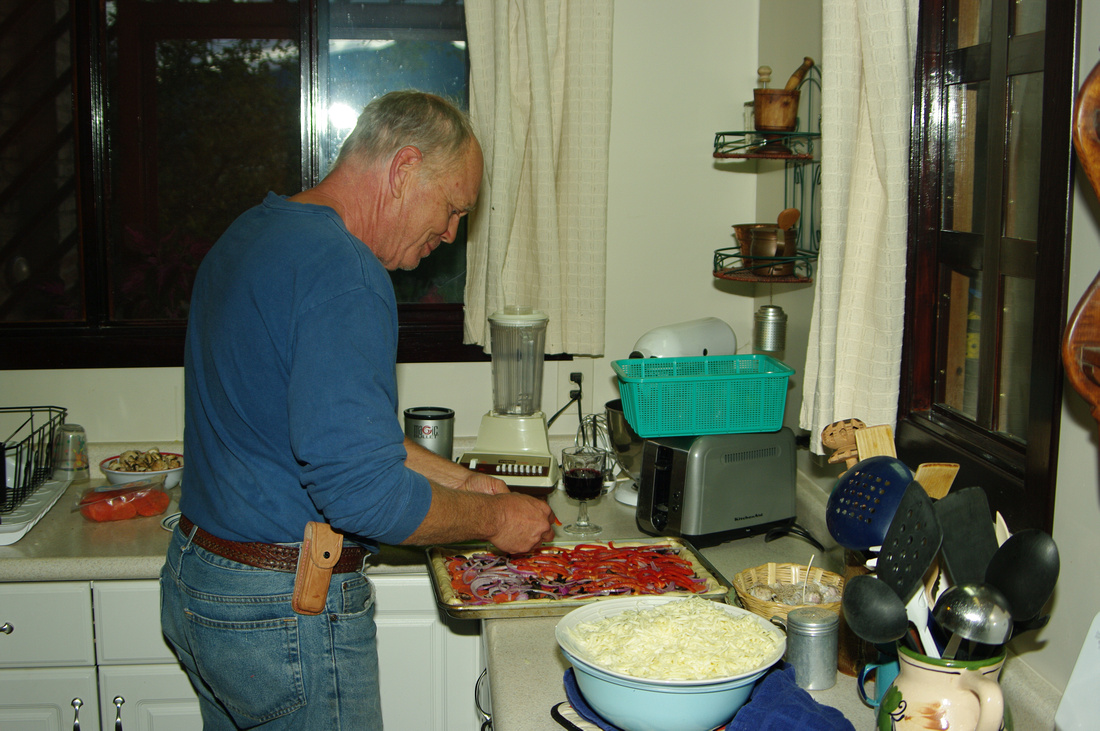
Epifanio's son Jacobo came over last week to seal up the window in our patio. During a break we drank coffee and chatted. The subject of Oaxaca city came up. Jacabo's village of San Baltazar is about forty five miles from Oaxaca. He rarely visits the city. Here is why. For he and his wife to make the round trip it costs one hundred and forty pesos. And that's leaving the kids with family. Jacabo makes two hundred pesos a day. Just the bus ride eats up about three quarters of a day's pay. If they eat there they'll spend more than a days pay aside from their purchases. Jacobo is a bricklayer so he needs pants that will hold up to the punishment they receive on the job. A pair of levis costs about 700 pesos. He buys knock offs that are far from levi quality. We also talked about tools for his work. Drills, saws, and grinders are a must to have. The price of good tools is higher here than in the States. He recently bought a hammer drill that cost one thousand six hundred pesos. Jacobo also has two girls in school so there is the expense of clothing, books, lunches, and writing material. The day that Jacobo worked for us was his day off. He often works on his day off to make a little extra. During our conversation I couldn't help but think about so many Mexicans entering the US. When you live down here you get a real insight on what motivates so many to journey north. Jacabo did work in the US. That's how he built his home. Mind you Jacobo wasn't whining. He and I have been friends for almost twenty years. Our conversation was about life here.
We just cancelled our account with Dish network. Too much time spent watching worthless programs. In fact there is not much to see that has any redeemable value. Most of the programming seems so petty, dumbed down, and gives a distorted view of life. One of my regrets is that I spent as much time as I did watching mindless programs. I'm glad that our boys have yet to fall into that trap.
Beth started giving cooking lessons to some of the women from Union Zapata. Anywhere from seven to fifteen women come to the house every Wednesday to learn a new meal. The recipes are all inexpensive to make but give the women choices of meals to prepare at home. No one owns a cook book so meals are usually traditional meals that have been passed along, many of them containing a lot of fat. Spaghetti, chili, banana bread, various Chinese meals, and apple pie, are menus to date. Along with helping others Beth gets a chance to speak and increase her vocabulary. When planning the menu for the following week, the ingredients are divided so no one is burdened with the expense. A couple of weeks ago the women taught Beth how to make tamales of chicken and chepil (a plant that grows here. Don't know the name in English.)
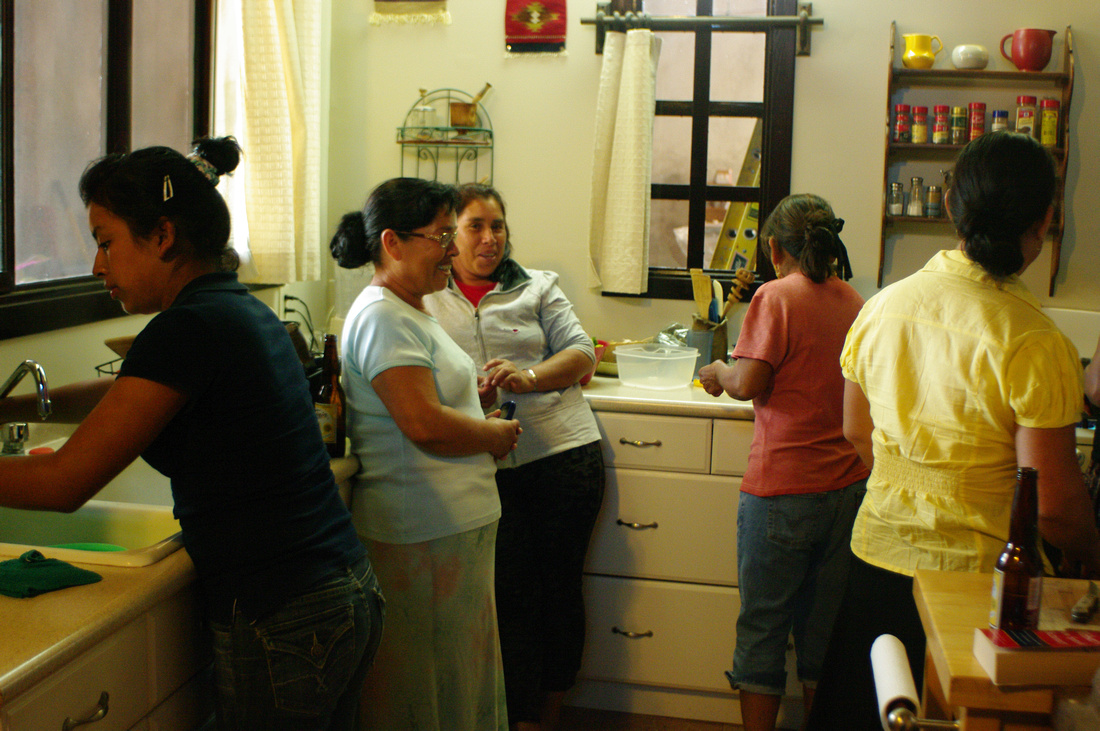
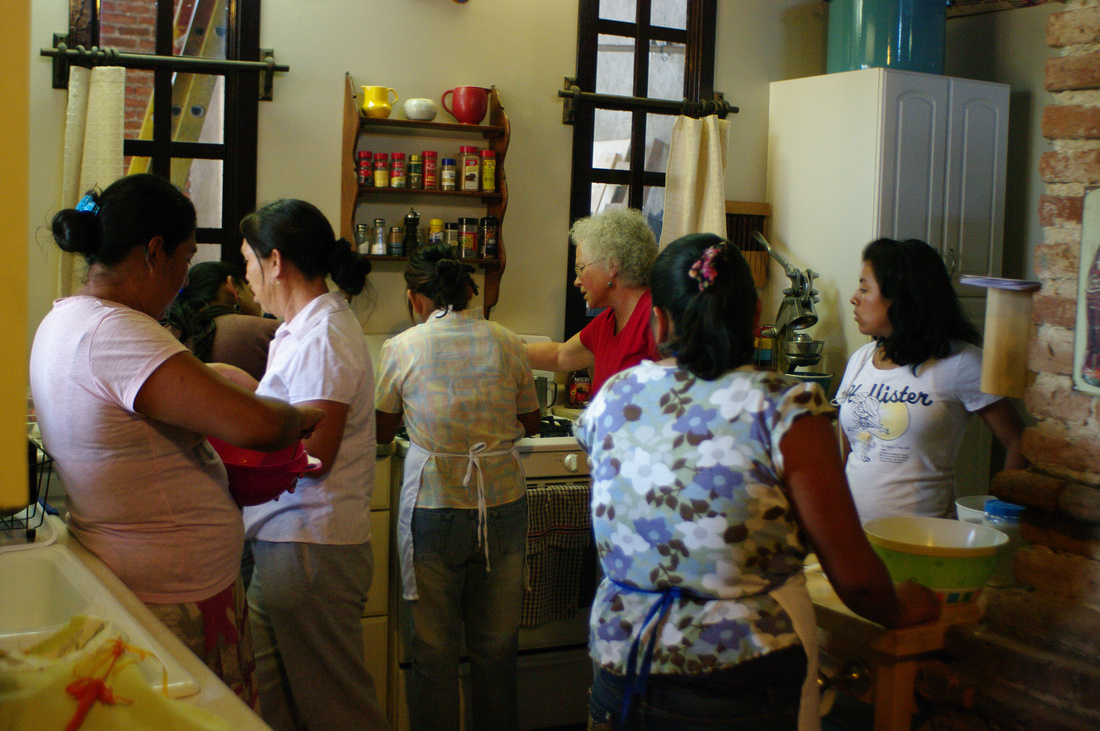
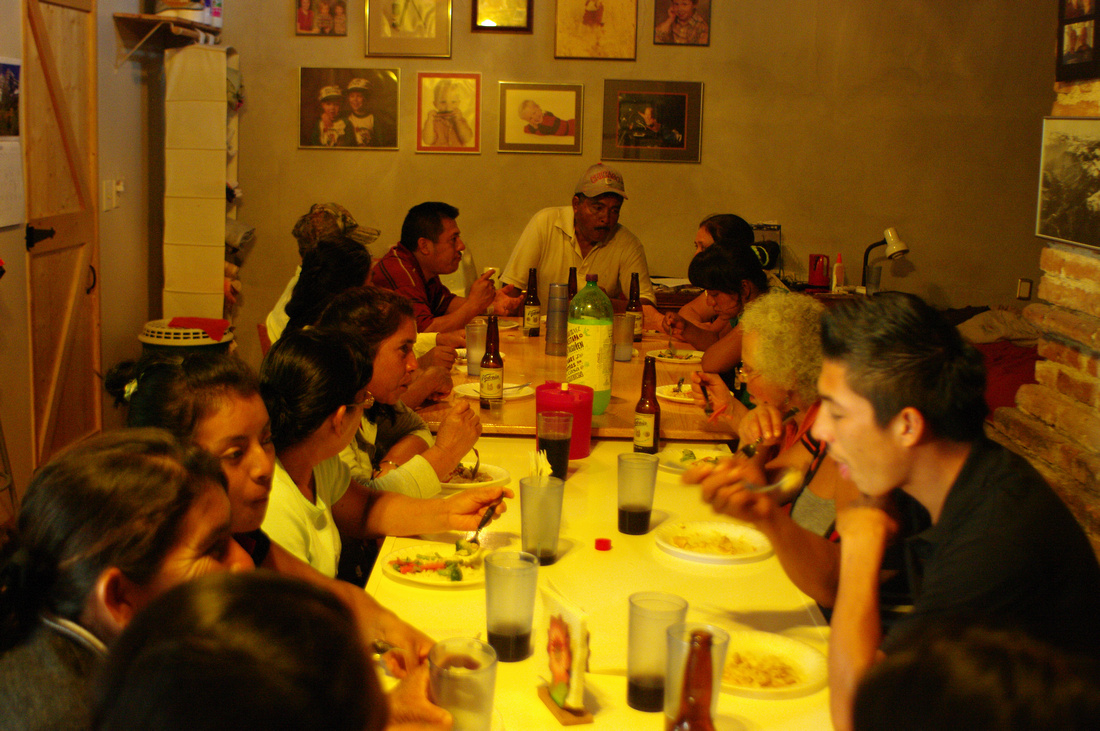

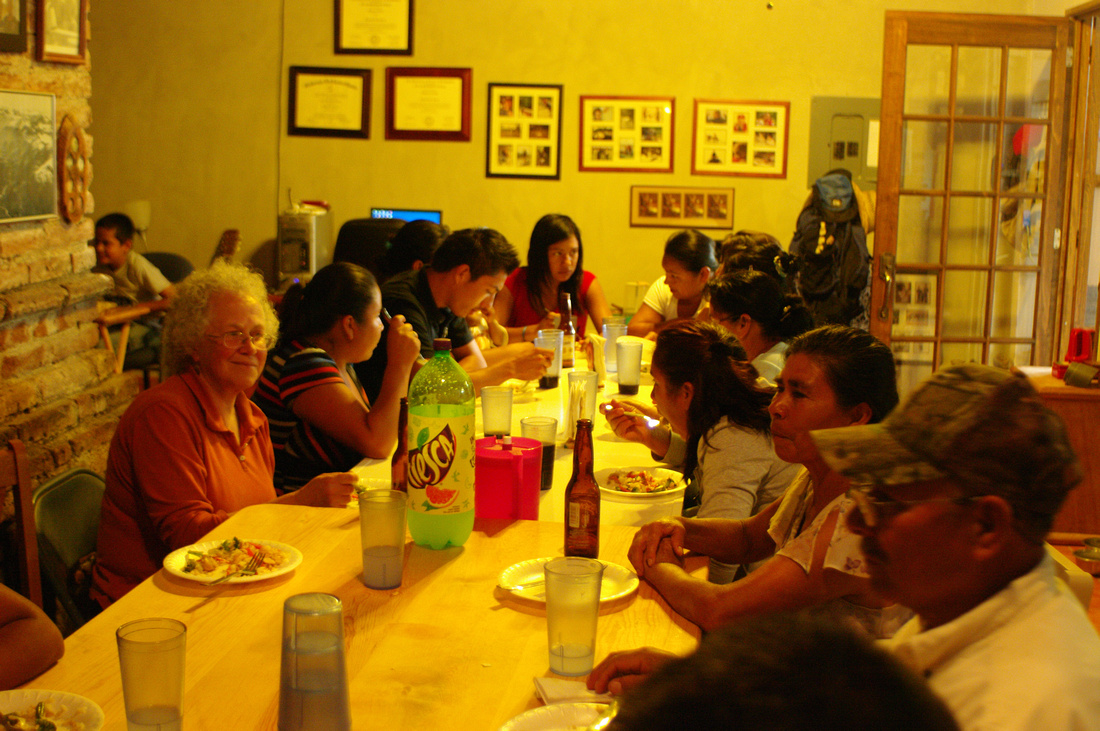
This is the chepil plant. A variety grows wild here.
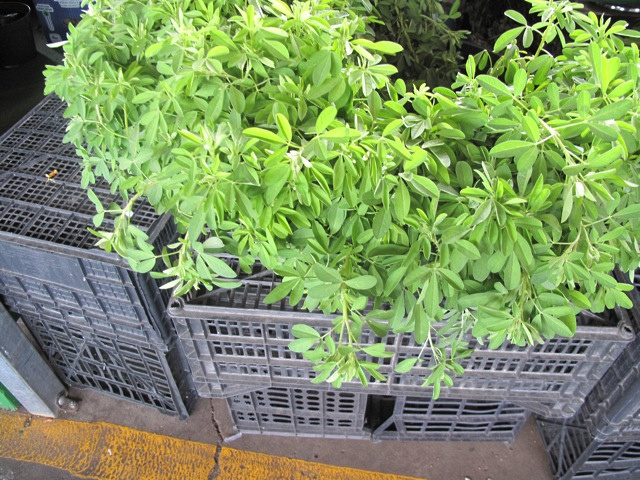
Our final rain was a drencher. It poured! Our well became contaminated from rain water so it had to be pumped dry which took about eight hours. There was some mud at the bottom that was removed a bucket at a time. Cement was poured around the well so next year we will have less of a problem. We did have our water checked in Oaxaca and it came back fine. No bacteria. There is a high presence of alkaline so we still buy water to drink. Cooking, brushing our teeth, washing dishes, and bathing are all done from the tap.
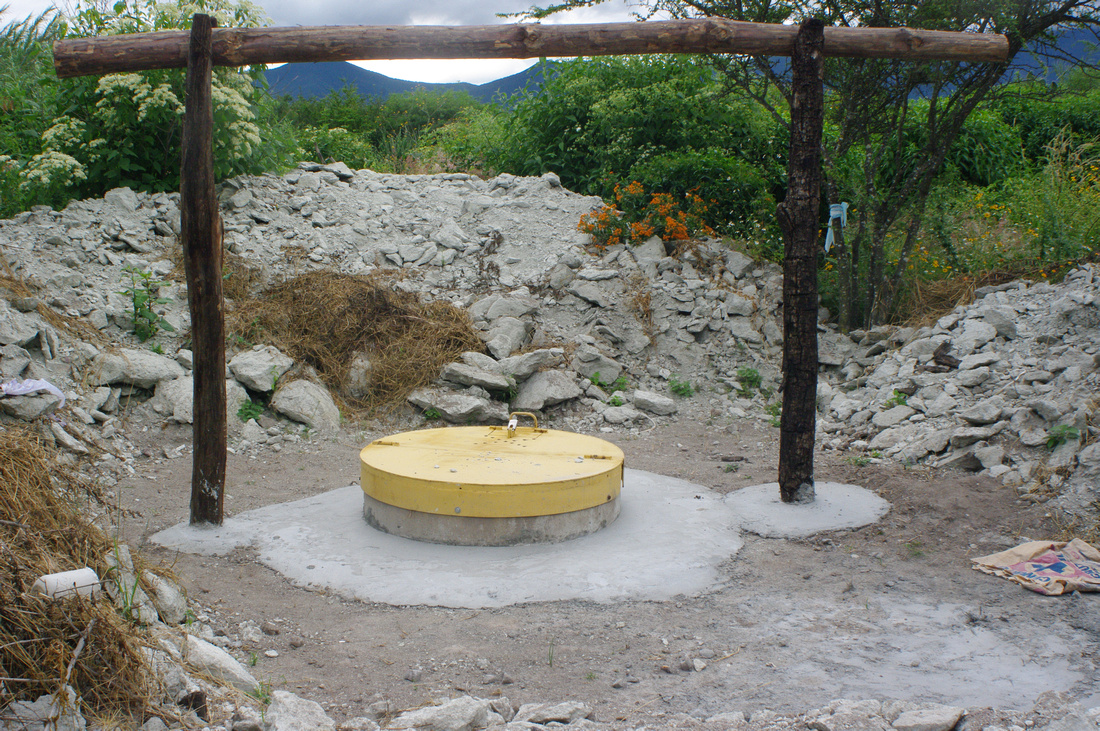
One of the advantages of retirement is the time I have to read and think without a lot of distractions. Because of the number of books we have (over thirty thousand ebooks and growing) I can really jump around. Beth and I both have Kindles and we love them.
I had a crown break last week so we went to a dentist in Matatlan that was referred to us. His name is Dr. Guillermo Serna Bautista. He had to extract the tooth and is going to build a bridge. Total cost, four hundred and twenty three dollars. Incredible! His story is another success story. He crossed into the US as a young man and worked for five years. In America he saved his money, paying for college when he returned. I was proud being next to him and listening to his story. Talk about determination!
Not sure if I mentioned but our burra is pregnant. We believe she is due in March. We are so looking forward to having a little burro jumping and running around. Lily has caused us a little trouble. We usually keep her tied to a twenty foot rope. Every once and a while I let her run keeping an eye on her. Well sometimes I'll walk into the house for a while and she disappears. I finally followed her and found out she's been getting into a field and corn and squash. When I caught up to her she was enjoying a squash. I could see where she'd eaten some corn off the stalks. The next time the owner comes by I'll have to square up. We keep a rope around her neck but have recently found out it's not a good idea. With the rope around her neck it's impossible to stop her if she decides she wants some corn. I tried a couple of times and bit the dirt on both occasions. Sunday we bought a halter to keep control of her. She was very quiet when we first got her but she has become very verbal lately when she wants something letting us know with the typical donkey hee-haw.

Saturday before last we had fifteen people over for a brunch of tasajo (thinly sliced beef), tortillas, pico de gallo, and guacamole. There was quite a bit of meat left over so we made a day of it eating tacos for dinner. We still had meat left over so we had people over again the next Friday to finish it. Simple conversations are becoming easier and easier for Beth and I. We have a couple of friends that speak extremely fast. They keep us on our toes.
A couple of weeks ago we went to a Calenda in Tlacolula honoring "el Vergen del Rosario". As you can see there were quite a few people there. Some of those globes weigh one hundred and fifty pounds. Men and boys dance with them attached to a harness until they get tired then pass it on. Many young adults and children dressed in traditional costumes. I was a little surprised when beer and mezcal were passed around. The festive mood was captivating. I love the way Mexican's celebrate!
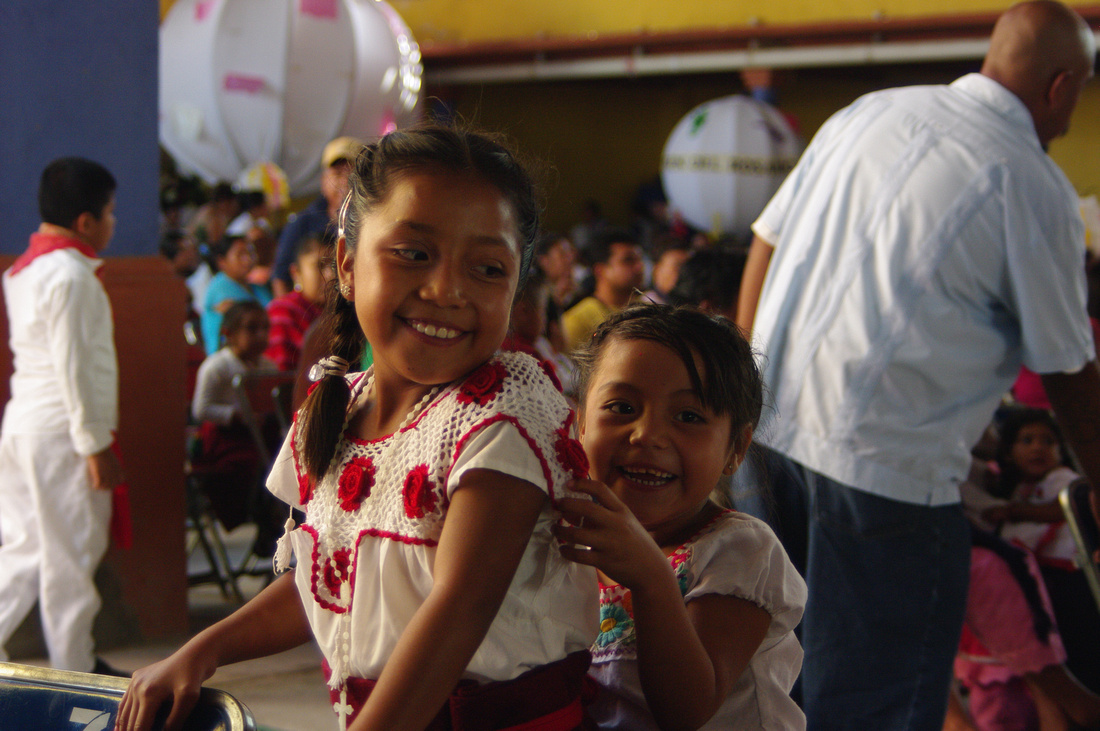
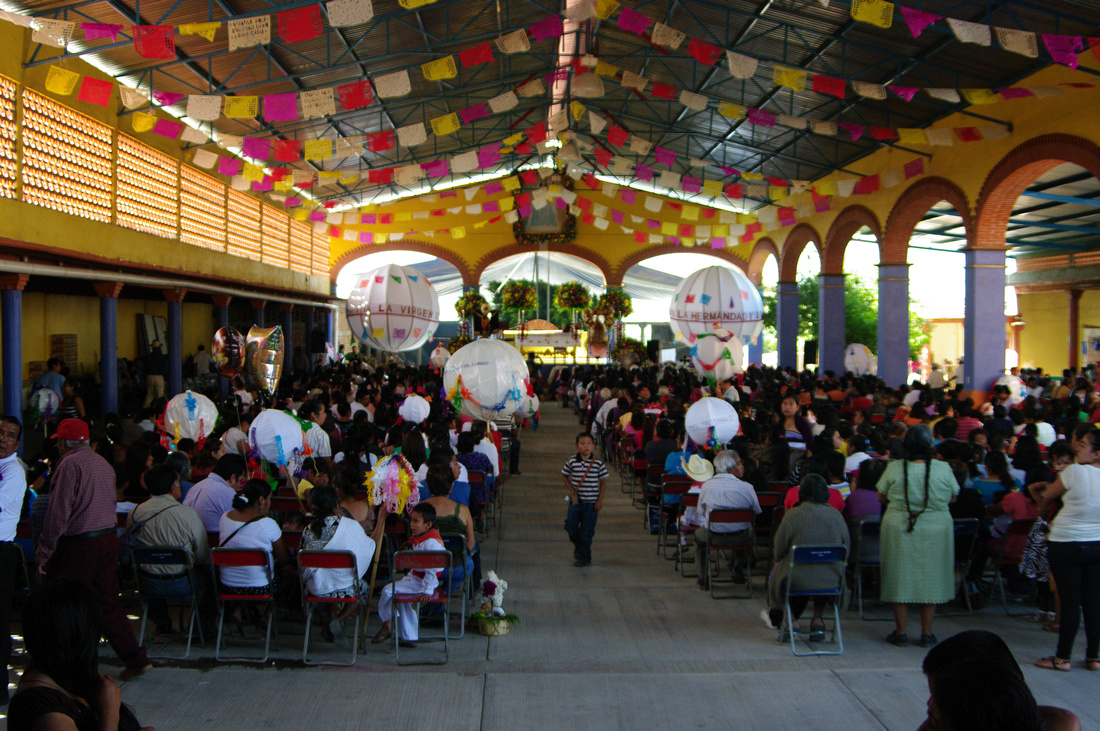

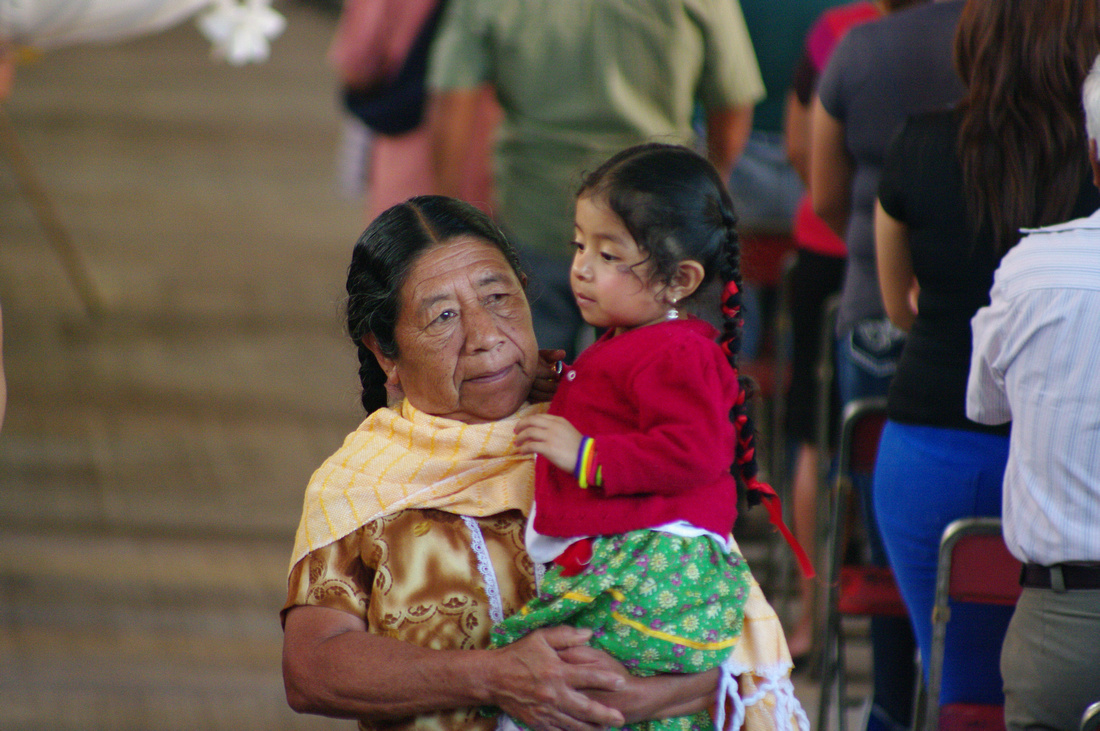


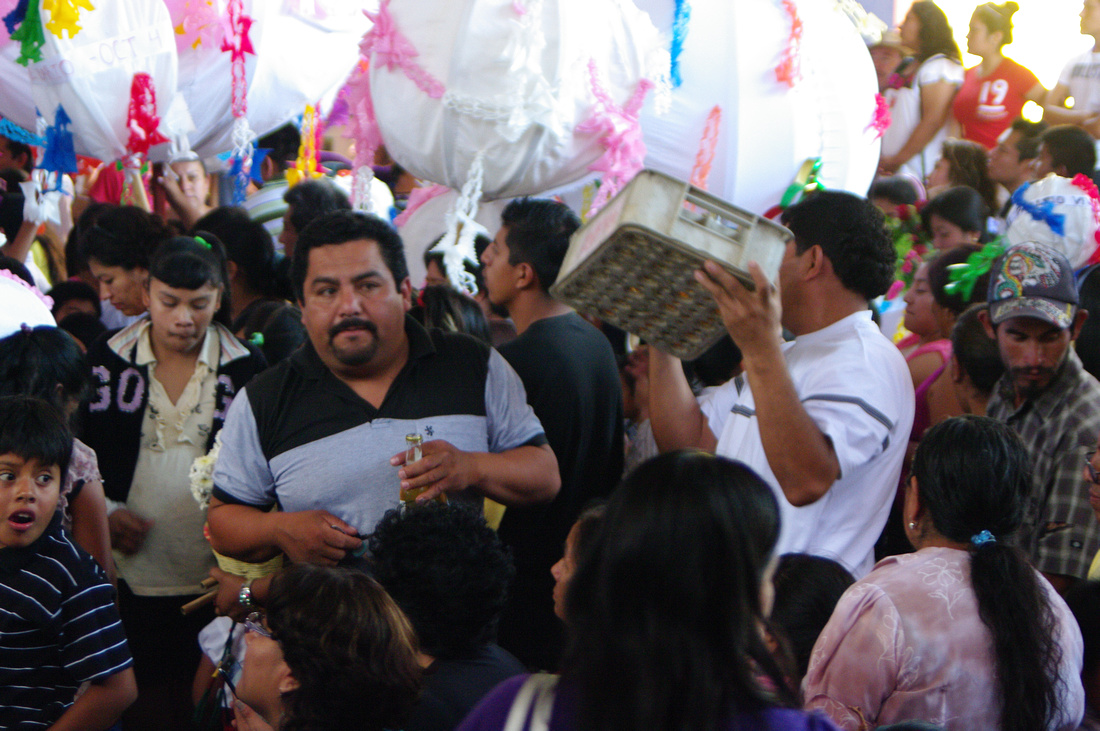
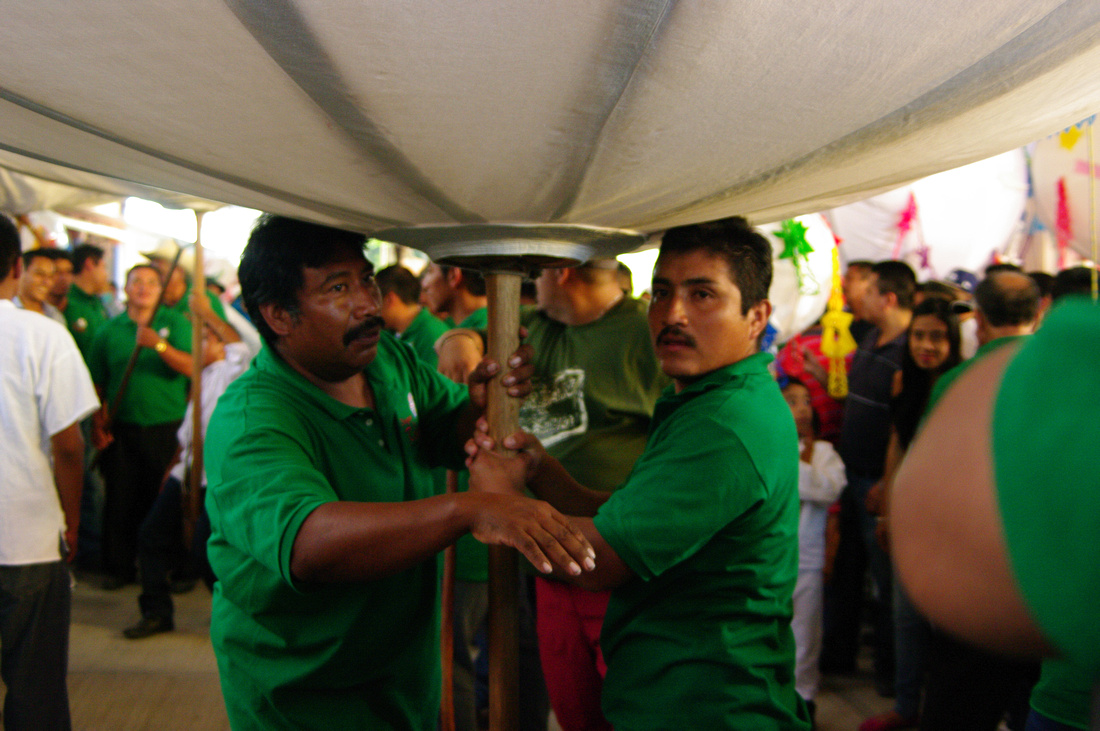




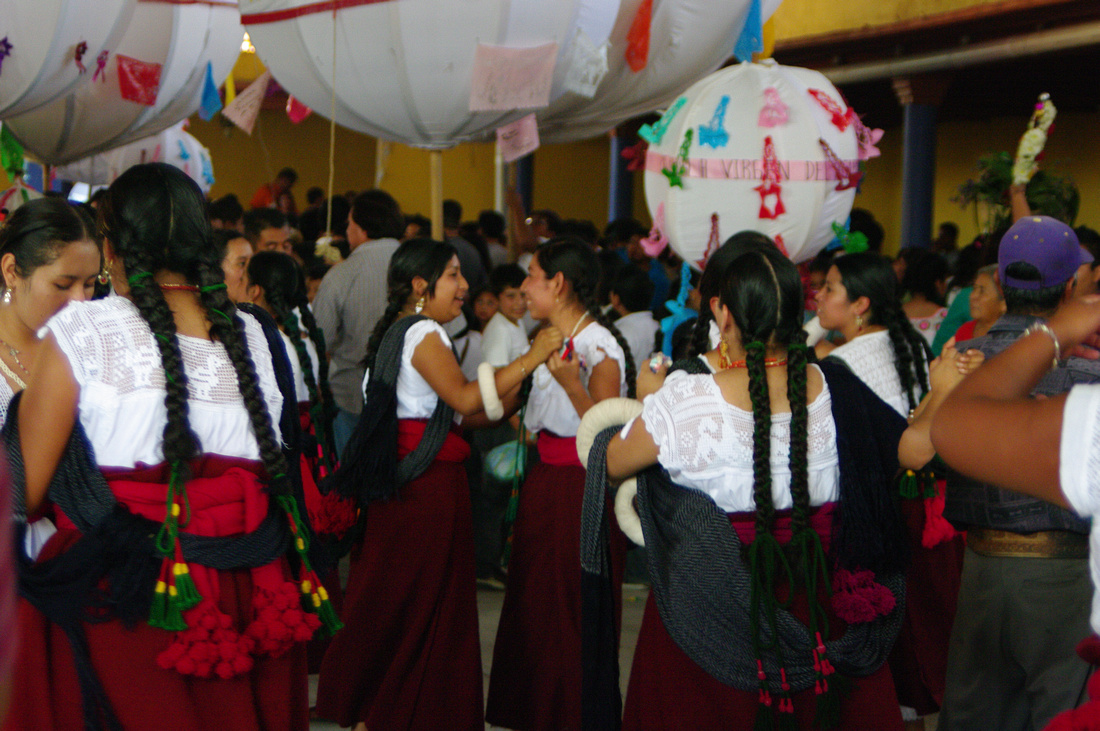



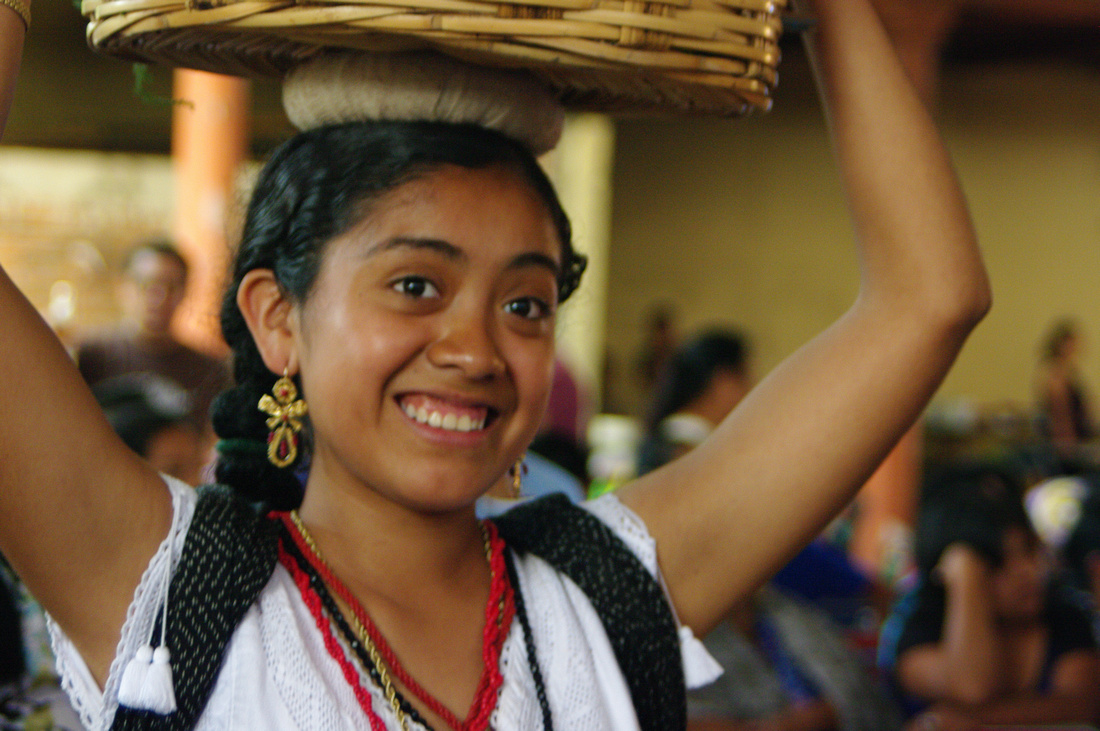
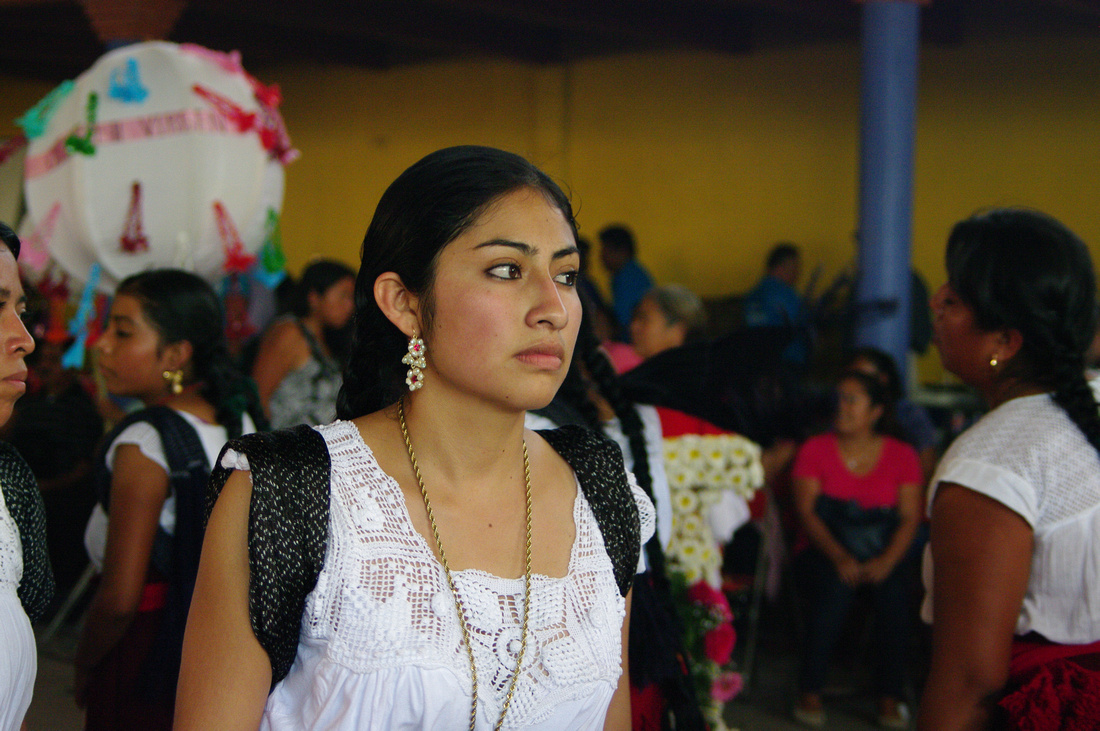
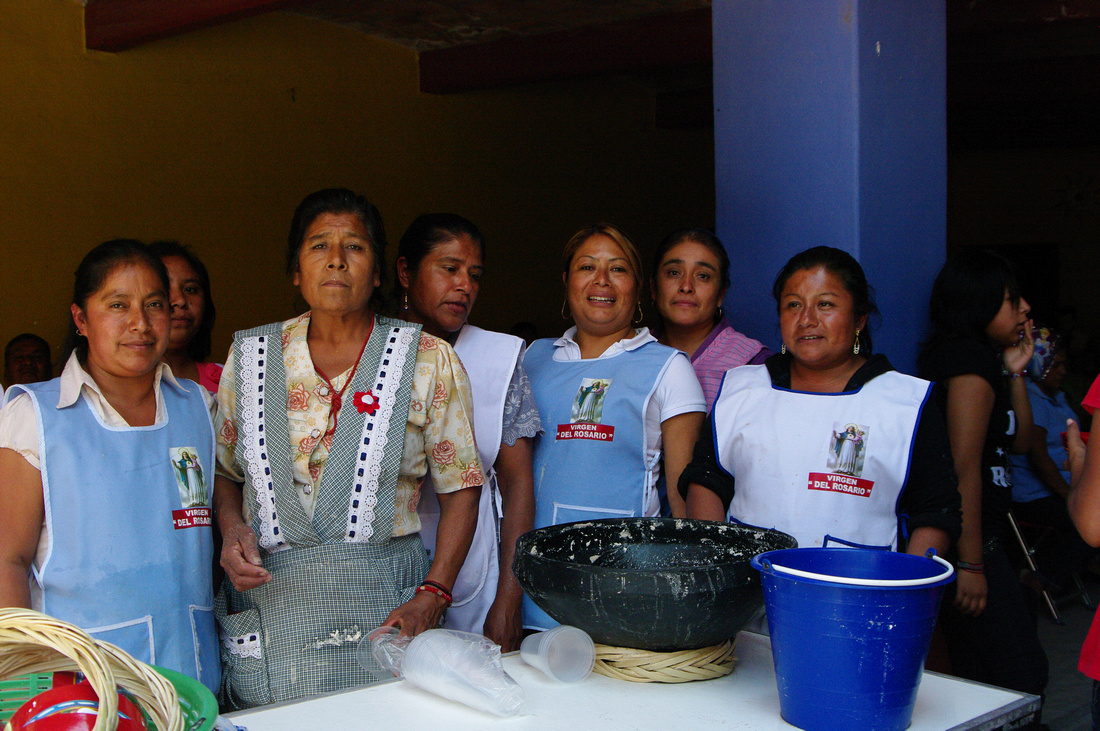
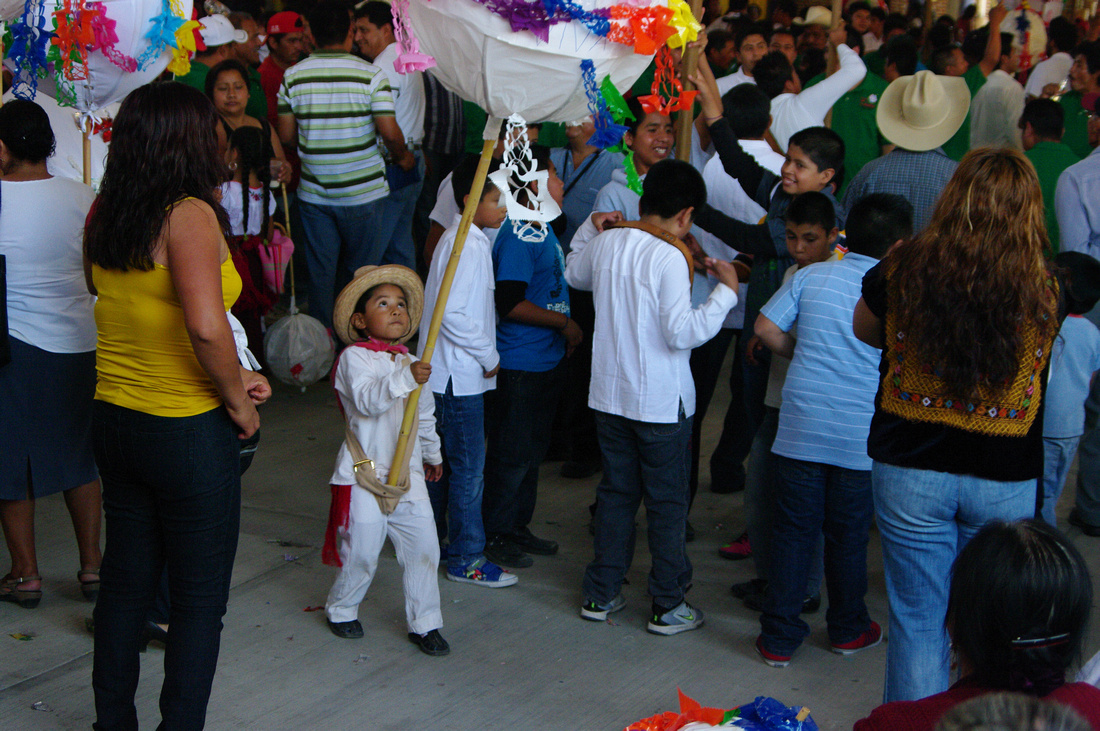
I saw an article that I believe was a follow up to the question of "buying and fixing up haciendas here in Mexico". Someone used our house as an example. http://sparksmex.blogspot.mx/2013/06/hacienda-in-oaxaca.html?utm_source=feedburner&utm_medium=feed&utm_campaign=Feed:+SparksMexico+(Sparks+Mexico) The structure that Beth is standing is not our home though. It's the hacienda in Xaaga, the sister hacienda to ours.
I finished the web page (in English) that gives a little info about the very old organ in the church in Tlacolula. There is a place to make donations through Pay Pal if you'd like. There is still work to do. The page is located at: http://edeese.wix.com/organodetlacolula I'm not a web designer so any suggestions on how to improve the page are welcome. A young friend of ours is currently translating the page into Spanish.
A few years ago we met a man from Washington State who married a woman from Mitla. He owns a storage facility in Eastern Washington. They come down every year for five or six months. About three weeks ago Jeff and Elia came down for their yearly visit. They showed up the other day on a motorcycle and since we've met with them several times. Jeff is one of those guys who knows a lot about a lot of stuff. He reminds me of my brother in law Sam. Septic tanks are made a little different here. Most people that have running water use it for their toilets only, so little water enters the septic tank. Some are even without any kind of drain. Tanks that drain do so through the bottom. No cement is poured on the bottom so liquids seep out through the bottom. That's how or septic system was built. But...... because all the water we use drains into the septic tank we are beginning to see it fill up. That little seepage through the bottom can't keep up. I mentioned it to Jeff the other day and he explained how to build a drain field. A couple of days later he showed up with complete instructions on how to build a drain field complete with diagrams. I could see that he'd spent considerable time on the instructions. We are very thankful for his work. I had been thinking about adding a drain field earlier but I would have done it wrong. Thanks Jeff!!!!!!!!!!!!
Lastly I've been thinking about the idea of getting ahead here in the Valley. In an earlier post I listed some prices of goods. Imagine someone making a living when their income is twenty five dollars a day or less in most cases. The idea of getting ahead is simply unattainable in many cases. I believe the idea is foreign to many. When something as simple as adding a power receptacle is viewed as a major improvement it shows the plight of a lot people here. An illness or need for dental work can set a family back for years. A year without rain also has catastrophic results. I knew before we moved here that we were going to be exposed to the sufferings of local people. It's proven to be more difficult and widespread than we'd imagined. I've said it before. The United States has been a godsend to the people here. The income derived from being in the States changes lives significantly. I read an article a while back that stated many Mexicans are returning home from the States because of the slump in the US economy and the surge in the Mexican economy. I have no idea what's going on in the rest of Mexico but here in the valley that's simply not true. Many families that we know with relatives in the States tell us that their family members have no intentions of returning. Some are counseled by family here not to return. It's a tough choice. Remain in the US and reap the financial benefits away from family and friends or return to be close to loved ones and become engulfed in the brutal economy here. Many people here have never seen grand kids. The young children that left to work in the States are now grown up. Everyone loves to talk about the successes of their children in the States. They are proud and sad at the same time. They pay a horrendous price for getting ahead.
We finally have rain. Lots of it. Just in time to save crops that were days away from being ruined. Rainy season usually starts in June so planting centers around that time. When the rain didn't come this year the disappointment was immediate but countered with an unsured optimism. No one wants to believe it's going to be a dry season. There is too much at stake. The prediction "Va a llover" was heard wherever you went. Conversations always gravitated towards the weather. Comparisons were made to other years. When we passed into July then August without rain there was this horrible sense akin to a child slowly dying and no one being able to do anything but watch. This a community that depends on the production of crops to feed their families, send the kids to school, repair items that are long past the need. For many el campo is their only source of income. As time went on without rain it was like being in a community in West Virginia when rumors began to spread that the local mine and only employer was going to shut down. Fear creeps into every part of life. Beth and I had never lived in an area where so many people were dependent on agriculture. And we certainly weren't used to anyone planting a crop without a way to water it. Anyway it's raining. Everyday. Some days it's just a sprinkle which probably help spirits grow more than crops. But the change in vegetation is undeniable. Overnight plants change from brown to green.
We had the brush cleared back about thirty meters in front of the house. This now defines the line of our property. We plan to plant shade trees in this new area. The young man that did the backhoe work was from Matatlan. After work we chatted for a while. His story has become a very familiar one. He left home at the age of fifteen and went to the states where he worked for five years. At the end of the five years he'd saved enough to build his home, buy a truck, and most importantly, buy a used backhoe which he uses to make his living. With all the talk in the US of unemployment and the lack of opportunities Beth and I are continually amazed with the stories of returnies. It's like they are talking about a different America. Recent times have changed though. Work has become more scarce. Fewer go and more are coming back. The young man from Matatlan believes that US policies are to blame for the welfare state that America is drifting towards.
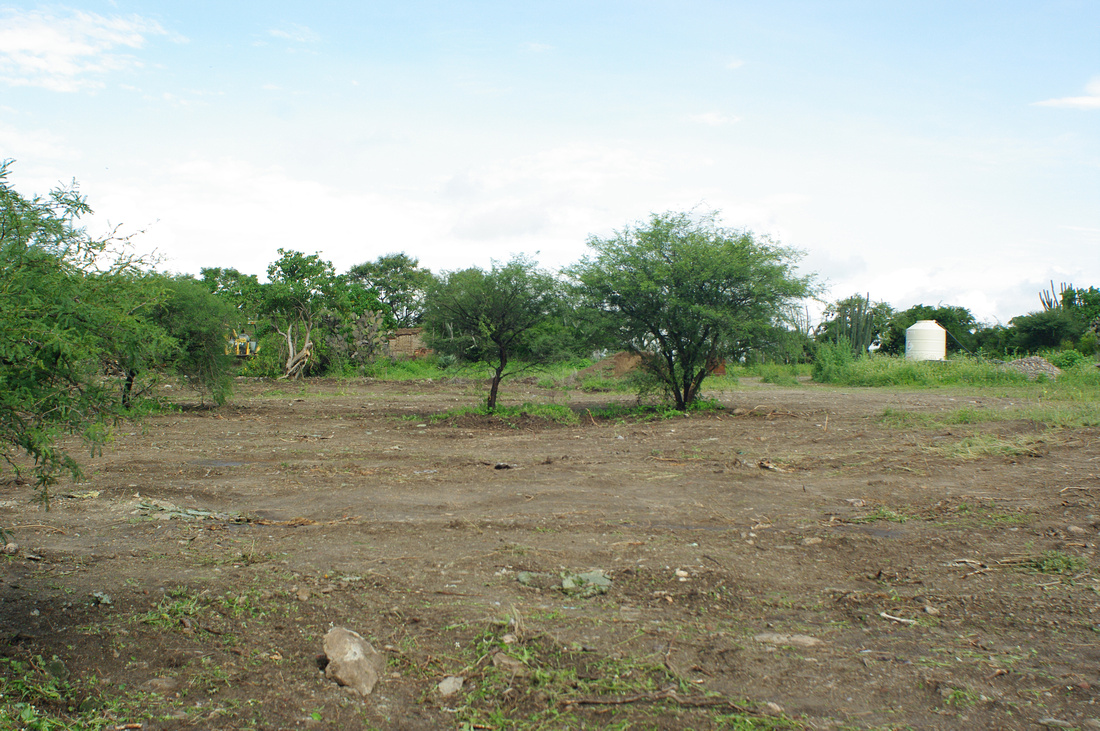
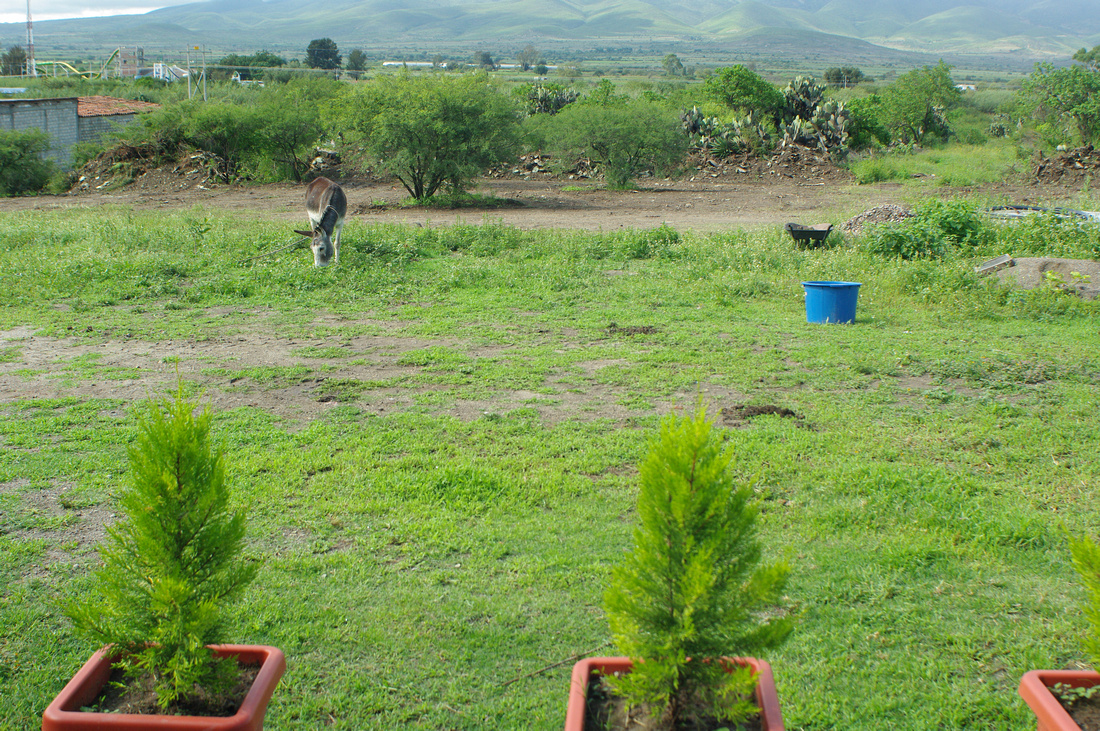
We recently planted about forty pine trees and a variety of various fruit and shade trees. Before the rain started it was quite a task to get everything watered. I hooked a half horse pump to water with. We can even use the pump to run a sprinkler. I attached the sprinkler to an old tripod I had. I have another so nothing lost. The tripod works perfectly though. We plan to water through the dry season next year. It turns out we have a special reason to do so.
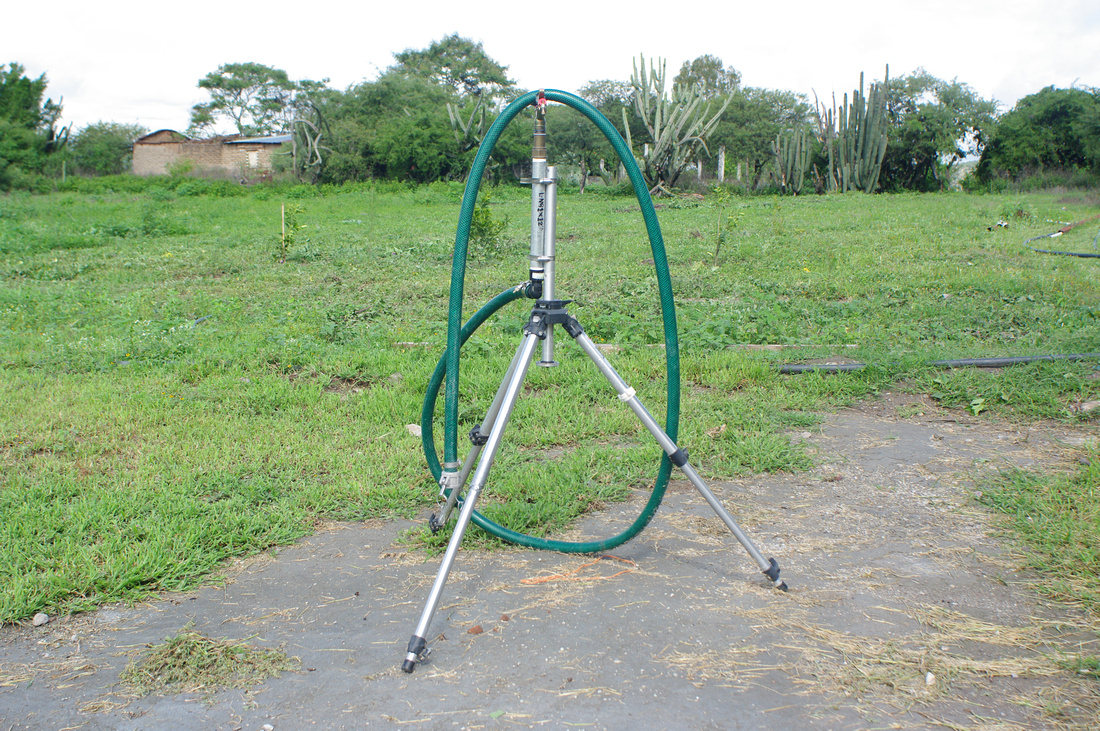
This is Lily with Beth. She is about six years old and is the latest in grass cutting technology. When we got her we named her Michelle but she's proved to be far too intelligent, color blind, her ass is smaller porportionally to her body than the other michelle, and she doesn't try to tell us what to eat, for her to have that label. What incredible animals burros are. The internet has provided us with much needed info. A major surprise was the dispelling of the myth that burros are stubborn. Actually they get scared and will refuse to move. Another interesting fact is that unlike a horse when it is afraid a burro will not gallop far away. Burro's run for a little ways then stop to assess the situation ( I've seen Lily do this). While she is gentle and friendly Lily doesn't know what to make of the idea of being petted and scratched. She likes it but is apprehensive. I made a pretty careless mistake with her the other day. When we bought her the rope that was tied to her was old and scratchy so I thought I'd change to a fresh one. Not thinking anything about it I removed the rope and let her run free for a while. When I later tried to attach the new rope she wasn't having anything to do with it!! For three days she went without a rope. She ran and jumped like a baby burro. We enjoyed watching her enjoy the freedom but were afraid that she might wonder off. Finally our neighbor was able to attach a new rope. With the new rope she seemed to resign herself to once more being a captive. We plan to make a corral so she can continue to run free. Lily has changed what going outside feels like. She always raises her head and acknowledges our presence. She fits and belongs here. Lily eats constantly. We believe the reason for this is that she is pregnant. We can't wait to have a little burro running around the property. She loves carrots and apples. Corn curnals are her favorite. Now when I shake a few curnals in a plastic bowl her ears perk up and she makes her way to me.

The priest from Tlacolula is coming for dinner tomorrow. We are looking forward to spending the evening with him. We were asked by a commitee to create a web page describing the history and restoration process of an incredibly old pipe organ (1791) that's in the church in Tlacolula. It's a bit tedious but interesting. I'll post the page when it's completed.
Fiestas continue to occupy a lot of our time. The drinking is done in amounts that is simply brutal. You really have to be careful! It's very easy to allow yourself to always embrace mezcal as a form of celebration. You have to learn to say no and mean it. Or easier yet turn down a few fiestas. I believe that saying, "work hard play hard", applies here.
Felipe called me the other day to photograph a coyote that he'd killed. I'd never really been close to a coyote and was shocked by it's size and structure. It was the size of a large dog and filled out not skinny as I had imagined. It's teeth were like spikes and very long. No wonder dogs here are reluctant to mix it up with them.
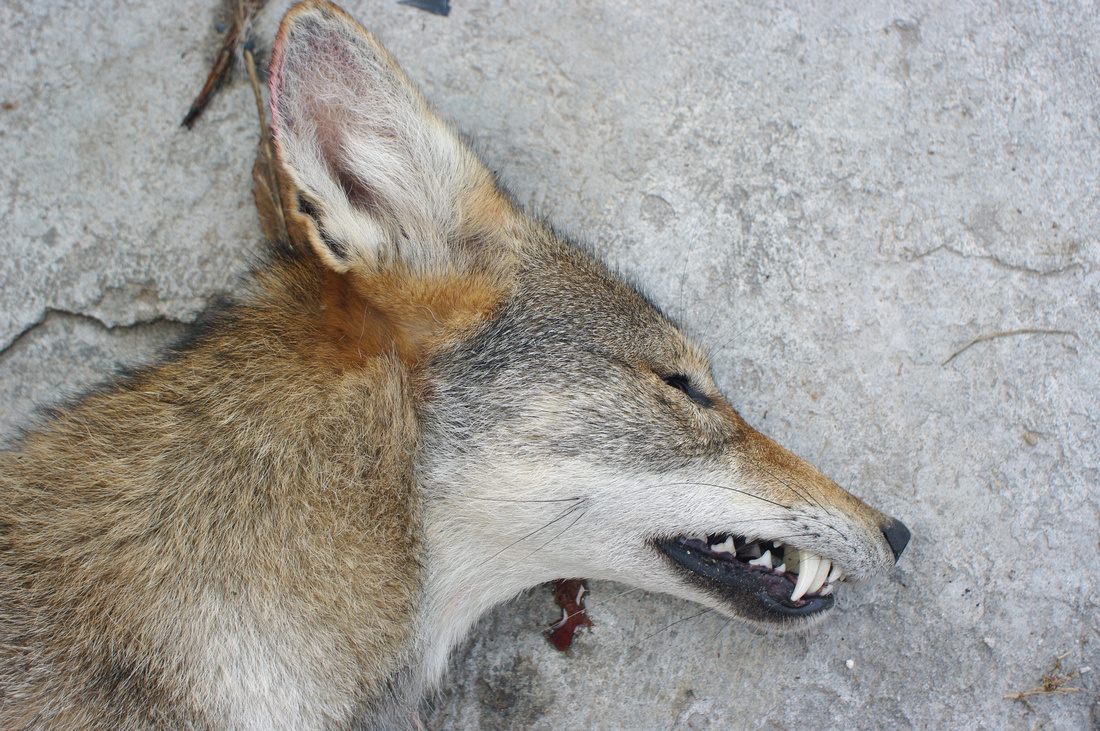
 Here are some prices of goods and services here:
Here are some prices of goods and services here:On Saturday the 27th Beth and I hosted a dinner. It just so happens that the 27th is also my birthday. Our idea was to use my birthday as an excuse to host a comida but not to actually make it a birthday party. Well, it ended up being a birthday party. We're not sure how the word got out that is was my birthday but it did. Chisme (gossip)!
Because of the number of guests we invited we rented a tarp and ate outside. Flies can be a real problem with outside dinners but it usually stems from families having their animals close to their homes. As we have no animals the unwanted guests were kept to a minimum. We have attended fiestas where the tables are almost black with flies. Thousands and thousands of them. It takes some getting used to. Keeping the cap on your beer helps and a napkin over your soft drink is a must.
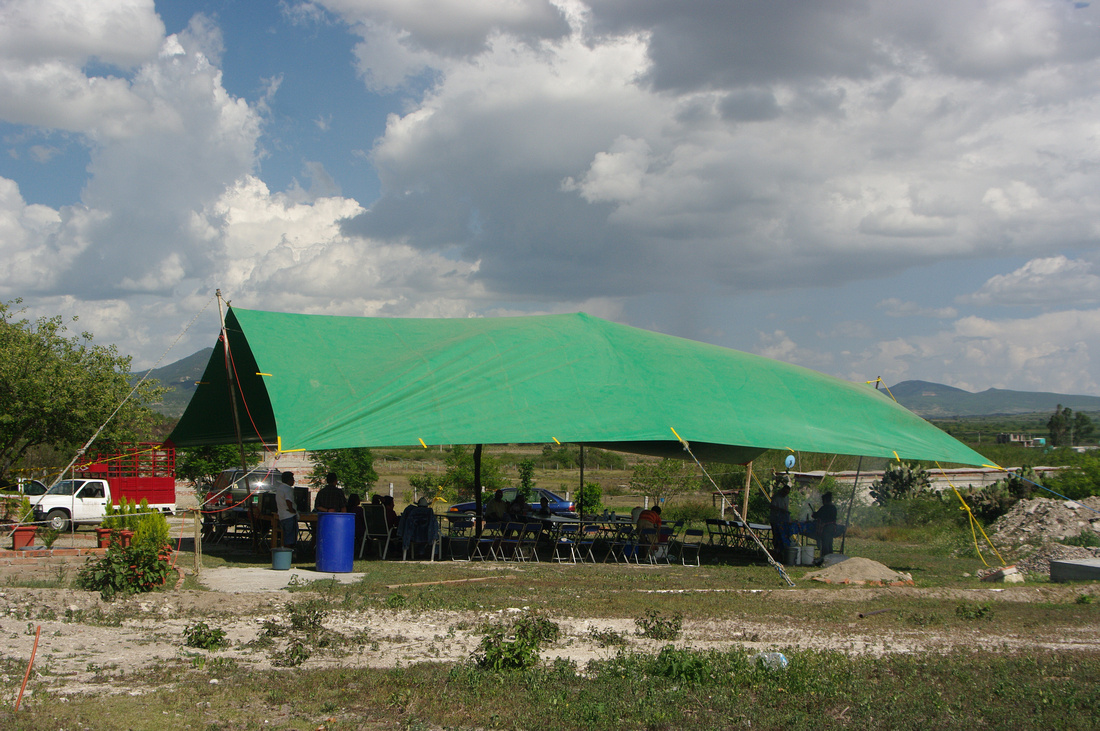 Early in the day Scooter found a mouse and got a little tied up chasing it!
Early in the day Scooter found a mouse and got a little tied up chasing it!

Every Sunday in the market at Tlacolula this man and his wife sell barbecued chicken. We've eaten it a few times and enjoyed it so we asked them to prepare the chicken for our dinner. It was fantastic!

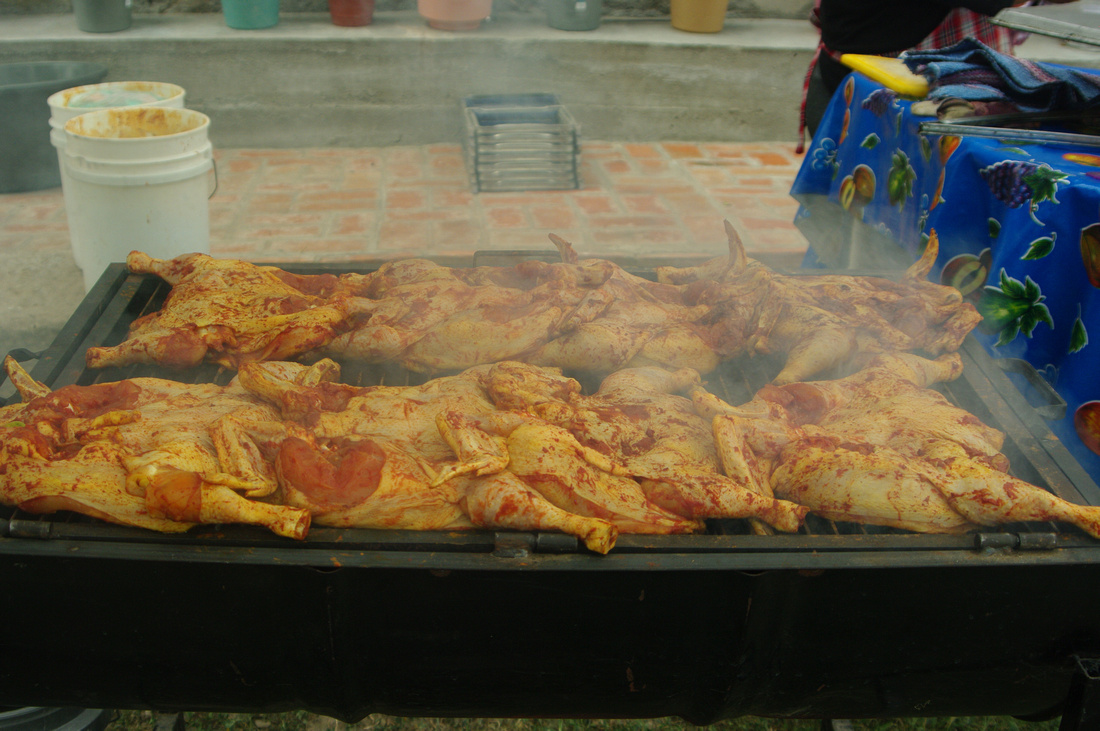 This is my neighbor Manuel (Manny) with his wife and grandson. Manny is retired from his work for the government.
This is my neighbor Manuel (Manny) with his wife and grandson. Manny is retired from his work for the government.
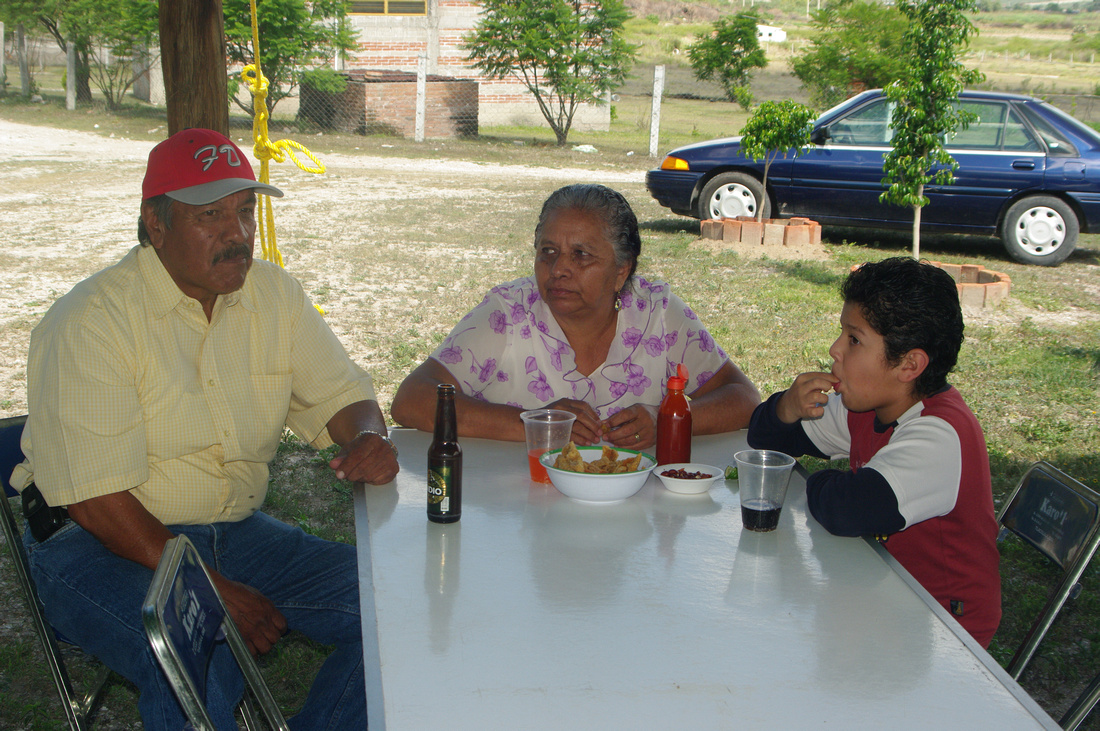
On the very right is Felipe. He is recovering from having his second eye operation. The family is Humberto's. Beto works for the government. Beside him are is wife Lucy, Armando, Shela, and Yesenia. Yesenia gave me a piece of art she made at school for a present. I can't believe how well behaved Beto's kids are. They are a pleasure to be around.
 Augustine and Dalia. Augustine owns an electric repair shop in San Dionisio. Dalia is originally from Vera Cruz. She was kind enough to make frijoles a la charra and a very tasty desert for our dinner.. A lot of work preparing for forty five people. The lady on the left is his mother and the lady on the right is Felipe's wife Alejandra.
Augustine and Dalia. Augustine owns an electric repair shop in San Dionisio. Dalia is originally from Vera Cruz. She was kind enough to make frijoles a la charra and a very tasty desert for our dinner.. A lot of work preparing for forty five people. The lady on the left is his mother and the lady on the right is Felipe's wife Alejandra.

The gentleman on the right is Juan. He is from Matatlan. He makes mezcal and farms for a living. His wife across the table is Dolores. When talking to each other they usually speak Zapoteca.



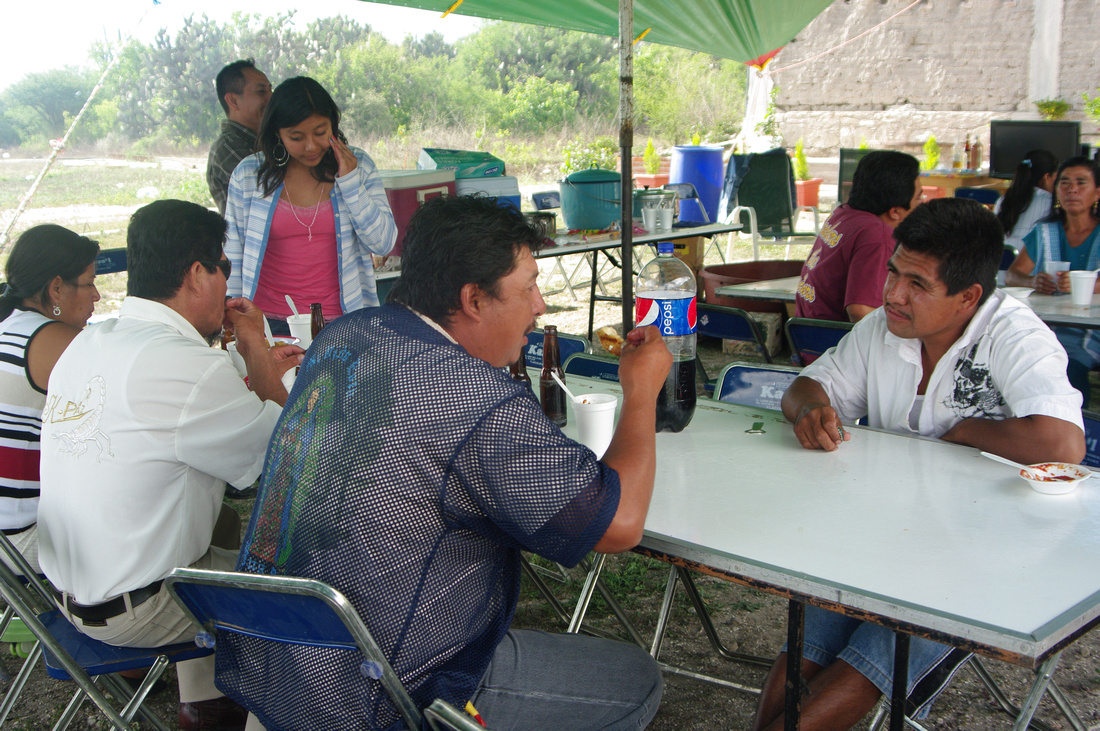
In the forefront is Ciro. He is a policeman in the city of Oaxaca.
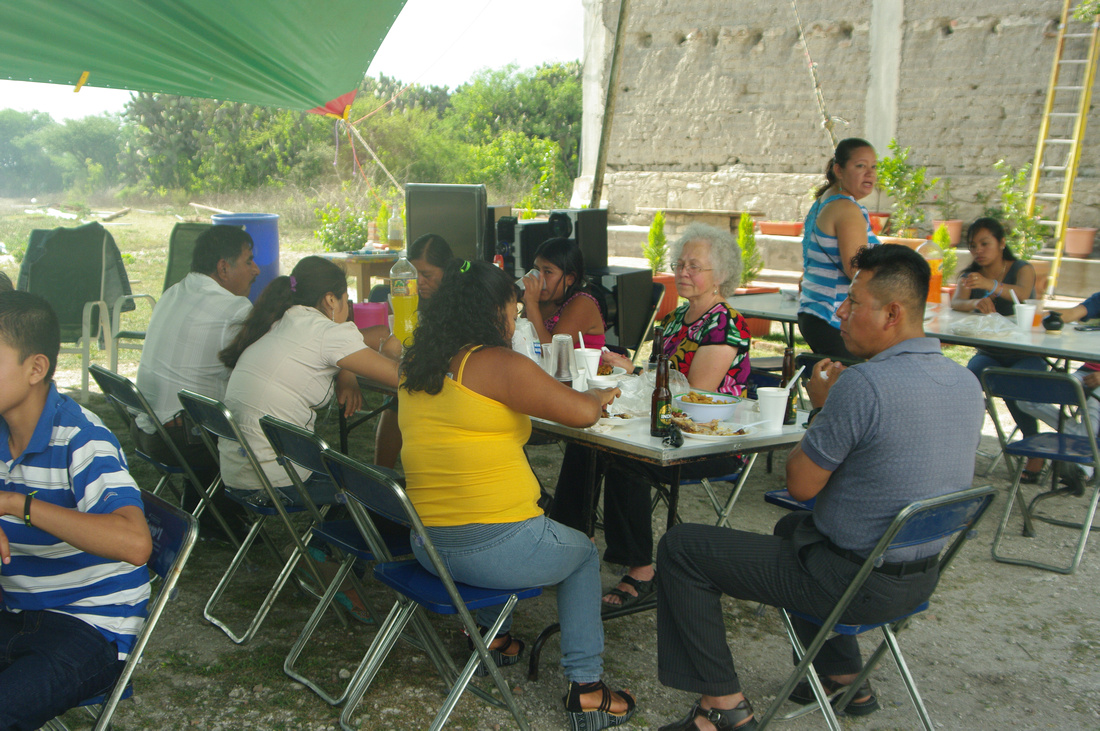

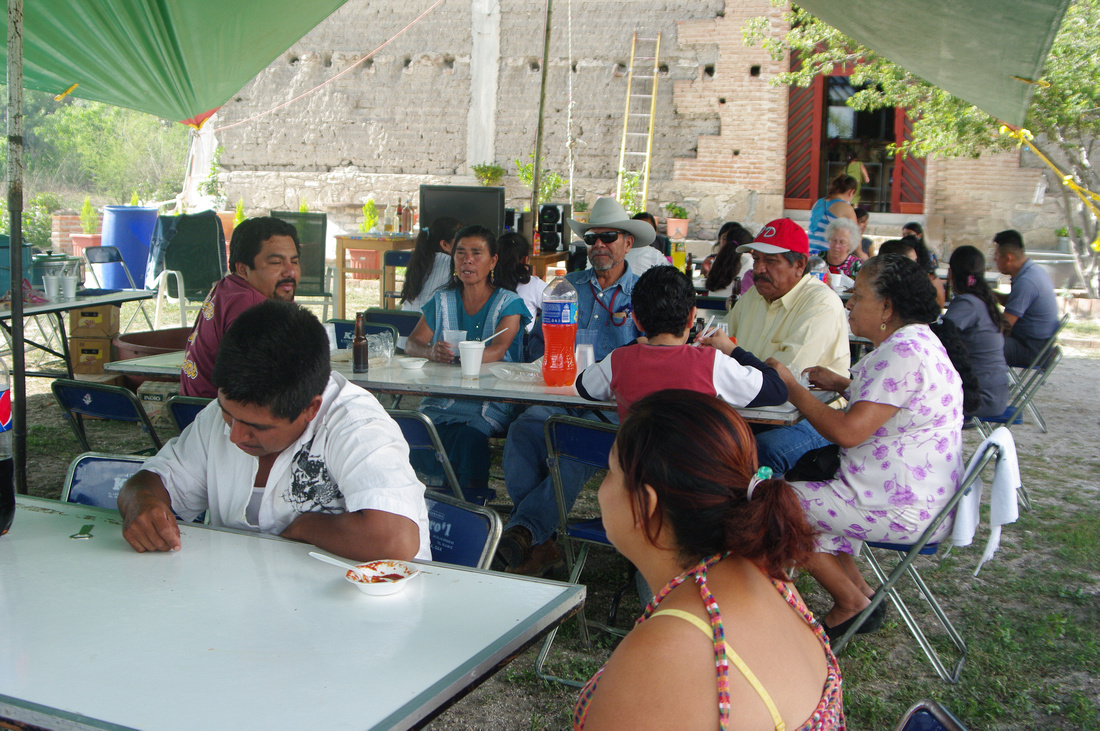
Kids doing what kids usually do.

What a surprise. She's usually beating him up!!!!!!!!!!!!!!!!!
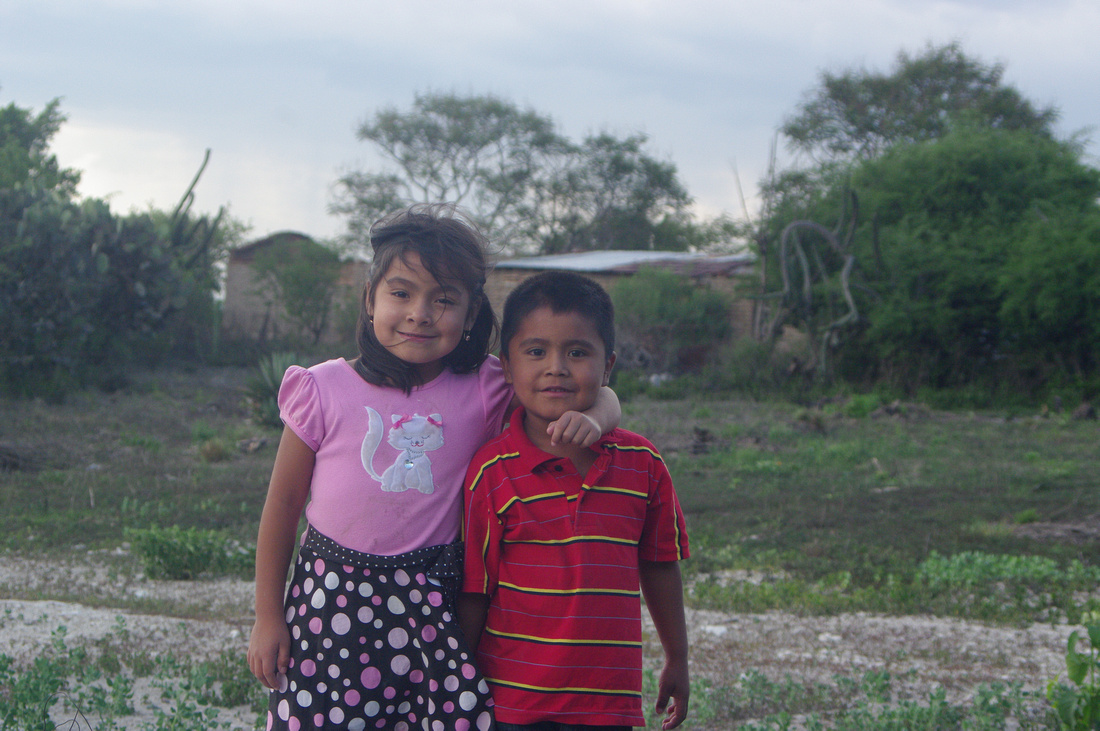
We love how the women jump in and help serving the food without even being asked. Here Lucy and Amparo are preparing plates to be served. In addition to the chicken and frijoles, Beth had prepared a huge pot of potato salad. The potato salad turned out great and we love turning our friends on to other foods. In keeping with their tradition, the red cooler is holding forty pounds of tortillas!
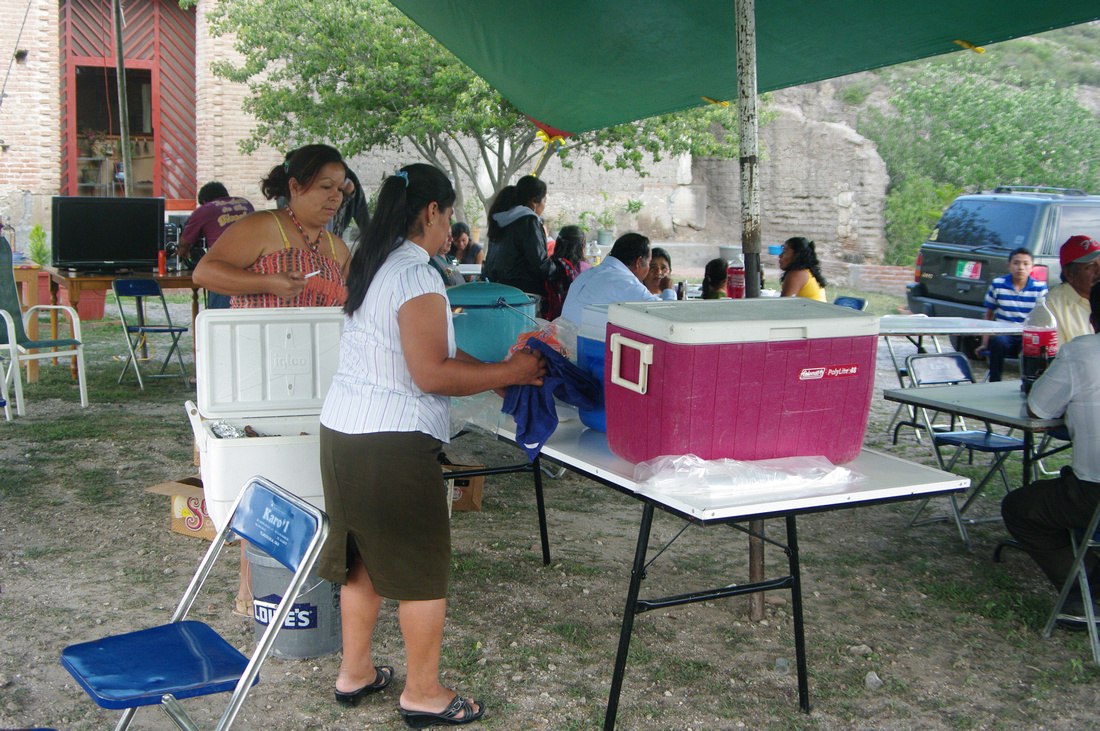
Felipe's dog Colt loved the icy cold water.
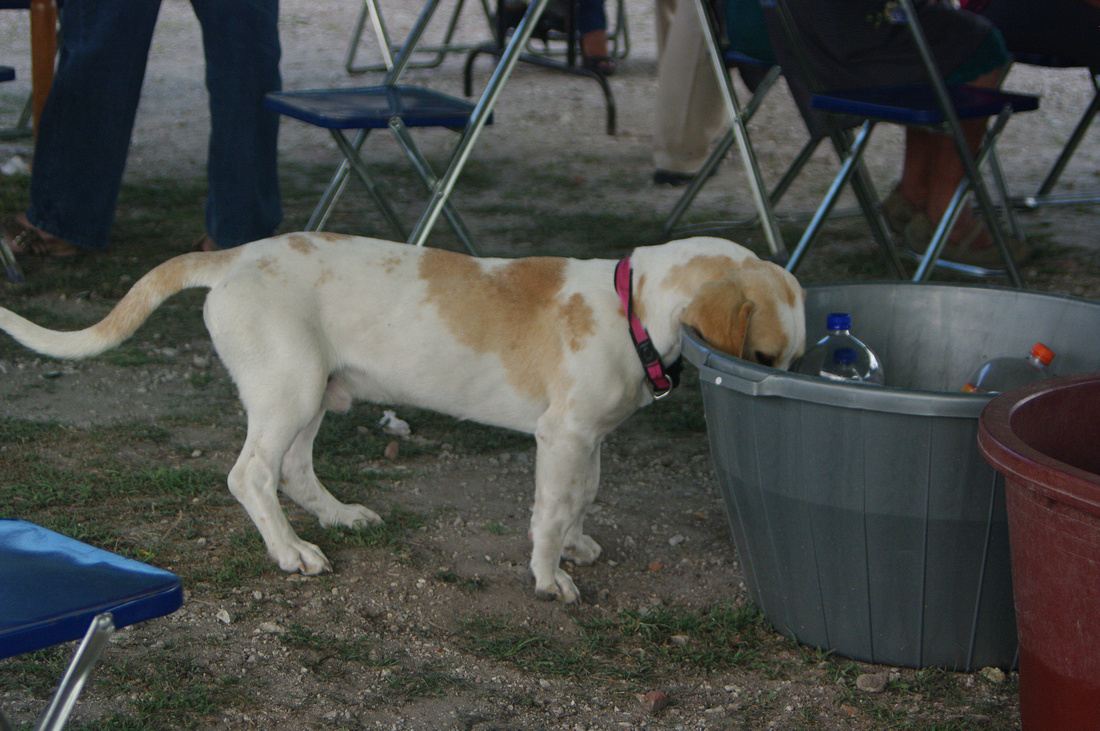
Augustine's daughter Iris on the right with a friend. We are padrinos to Iris.
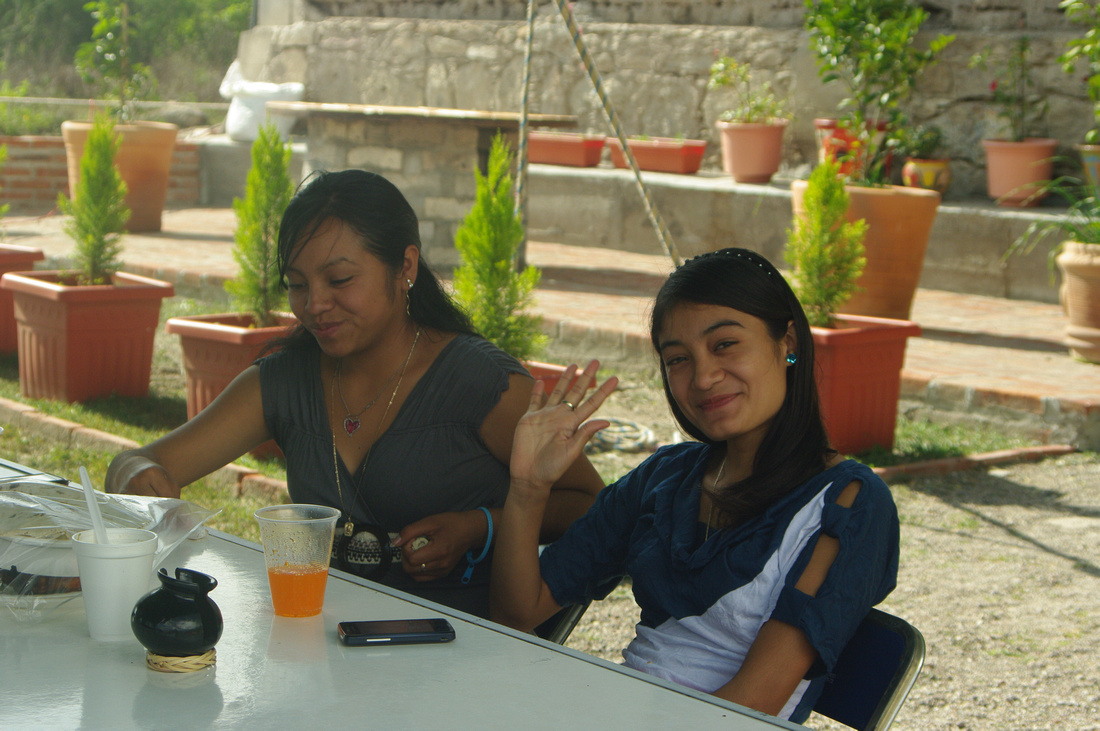
At many fiestas people do a lot of sitting. We decided to have a balloon toss for something to do. We wern't sure how it was going to be accepted but everyone enjoyed the fun. We played in three groups: men, women, and children.
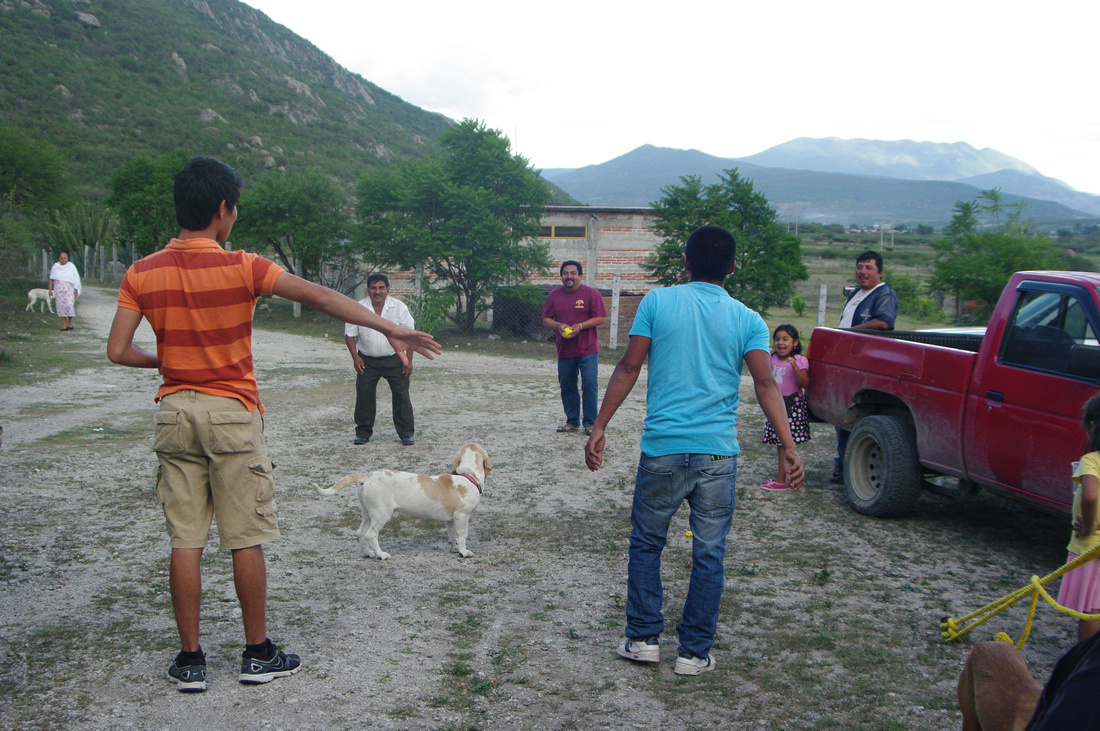

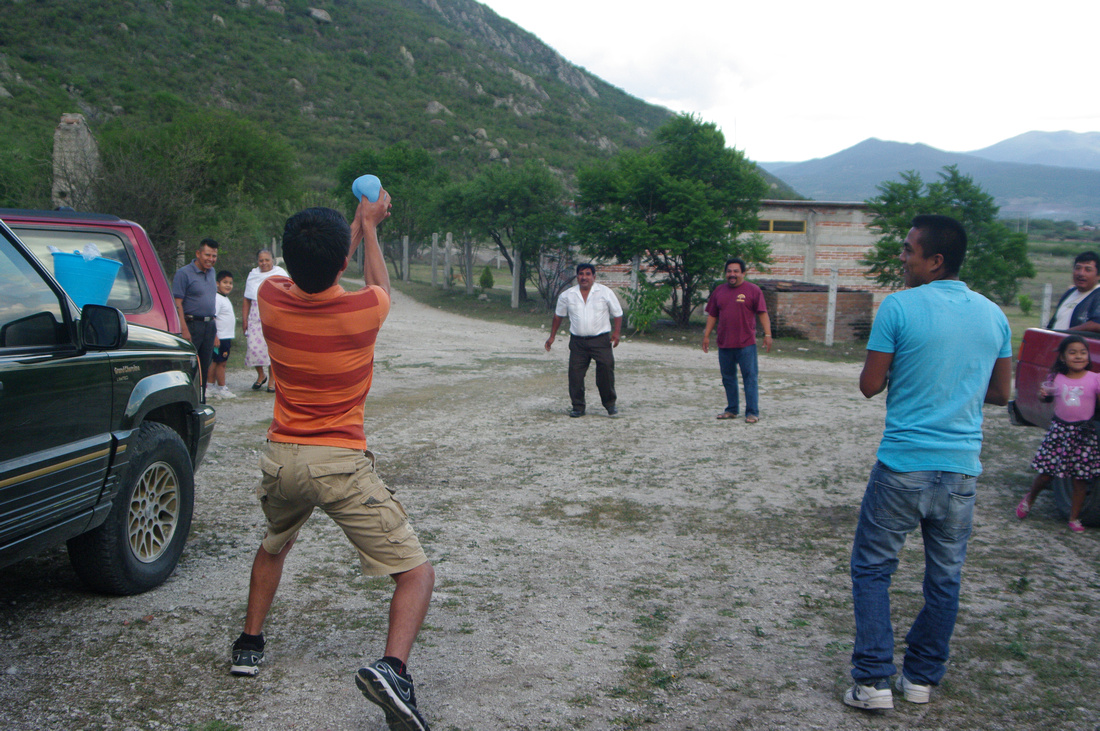
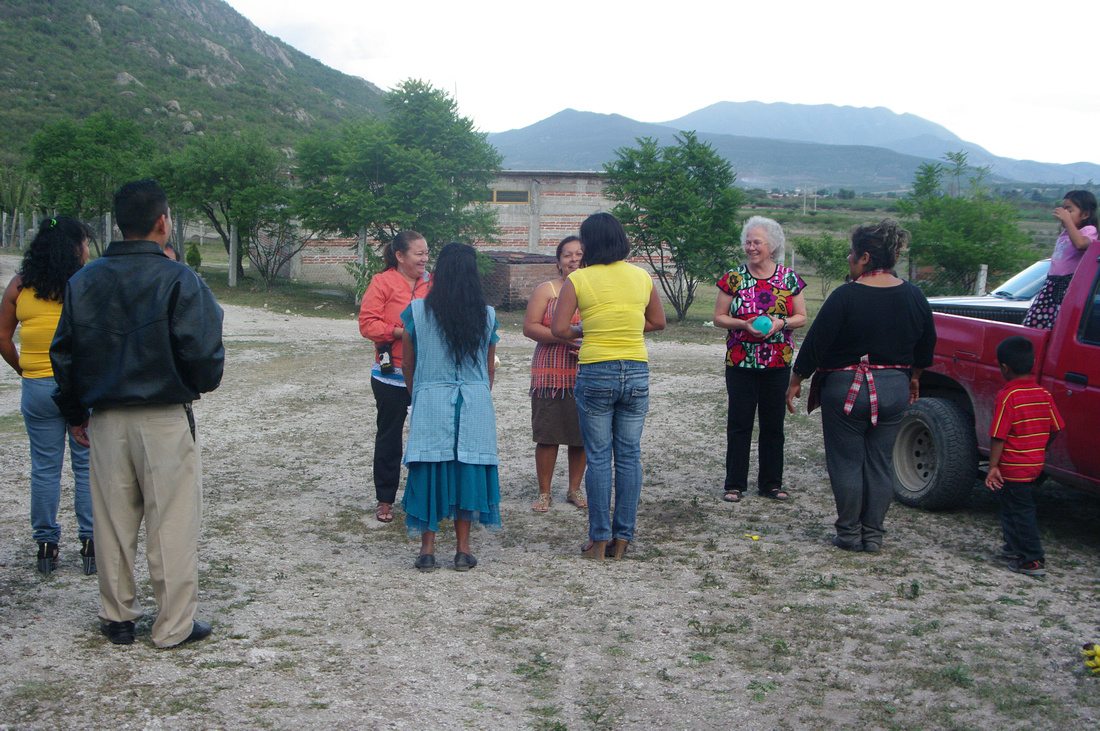


Not sure of the relevance but Beth and I were told to dance first. While we danced we threw candy and plastic bowls out, given to us by Felipe and Alejandra.
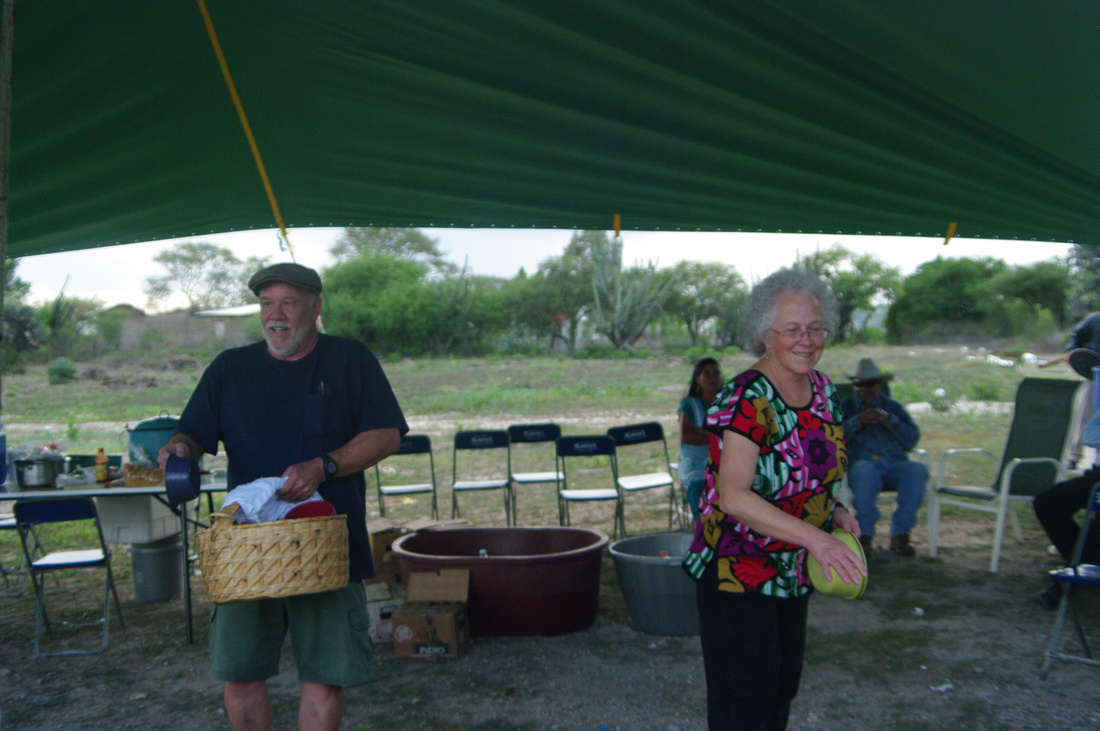
Even grown ups expect candy! This is Casto. He too is a farmer and makes mezcal. One day i'll explain the process of making mezcal. Its very physical work with critical steps along the way. Casto makes our favorite mezcal.
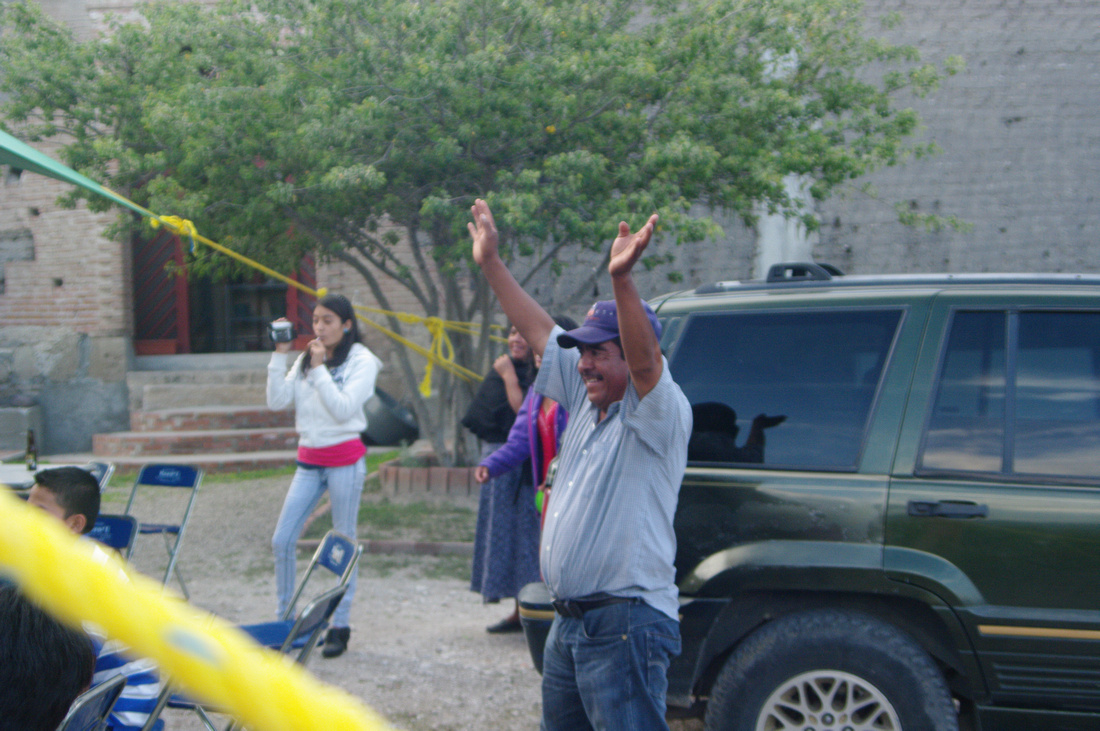
Casto gave me some mezcal and a cool container to keep and serve it in.

Beto brought his television to display a slide show I'd created over the get-togethers we've had over the first thirteen months. It was pretty emotional. I'd post it but I used copyrighted music and I'm sure Zenfolio wouldn't like it.
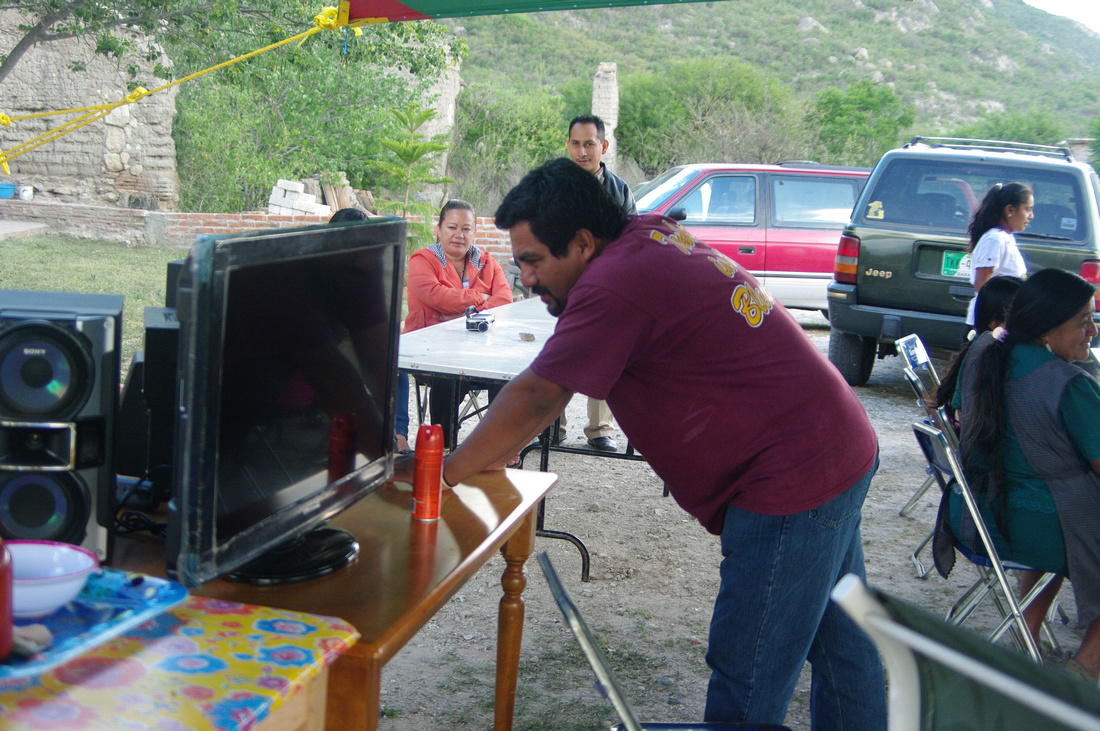
We did another dance this time a circle was formed around us. Talk about being the center of attention! This was a great day. The food was excellent, we were able to talk with friends for hours, people had a chance to relax, and a bit of alcohol was consumed. Can't wait for the next one.
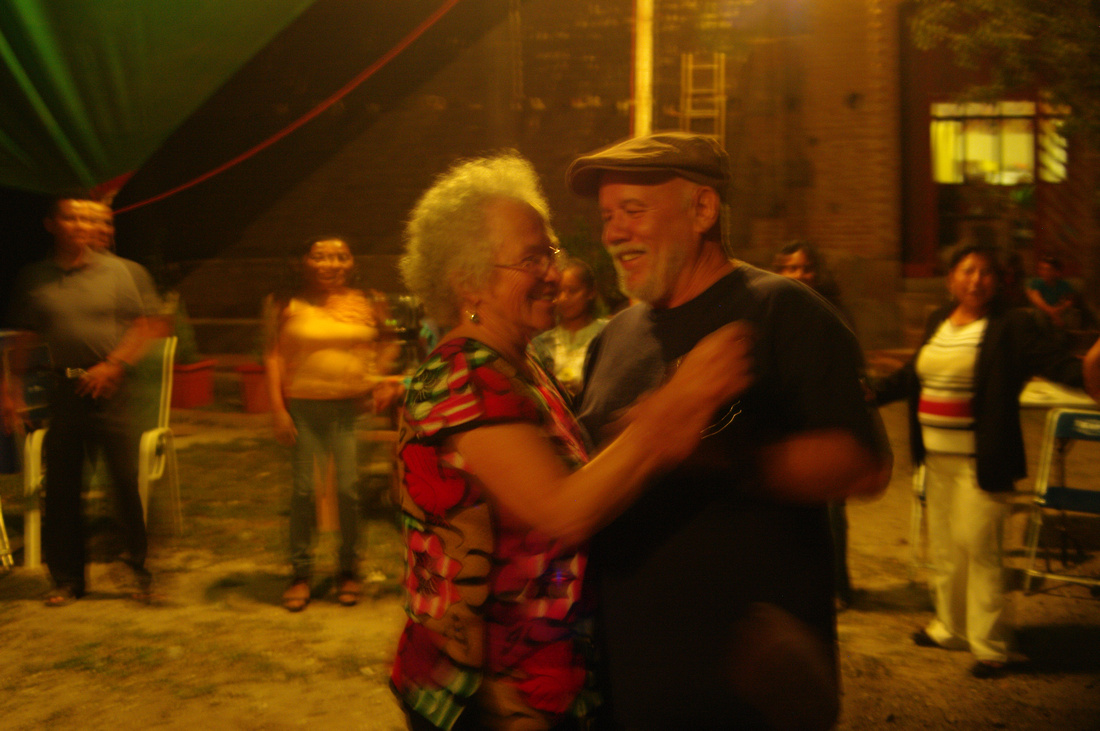
Monday the 1st Beth and I went to San Baltazar to watch Epifanio's son graduate from preparatoria (high school). Miguel Angel was the first of eight siblings to graduate from high school. To earn money for college Miguel is going to give one year of service to the government in exchange for three years help with college. He is going to teach at an elementary school. His most likely location will be in a rancho far from civilization. I was told that many of these pueblos are without electricity. Some teachers are unable to complete their service due to the primitive conditions.
While discussing Miguel's prospects Epifanio informed me that San Baltazar didn't receive electricity until nineteen seventy. The first phone in the village was installed in nineteen ninety. Cell phones have been in operation for about four years. One of the things that I am completely stunned by is the difference between my early life compared to the early lives of men my age. It's fascinating to hear men recall how life was for them. So many things I took for granted!
The ceremony lasted about two hours. There were seventeen students in the graduating class. It's pretty unusual for a village the size of San Baltazar to have a high school. I can't think of another.
It was wonderful watching these young people receive their diplomas. They are Mexico's future. The comaraderie amongst the students was touching. They have uniquely close relationships due to the small size of their student body.
Miguel being congratulated by members of the Municipio.

With diploma!!!!!!!!!!!!!!
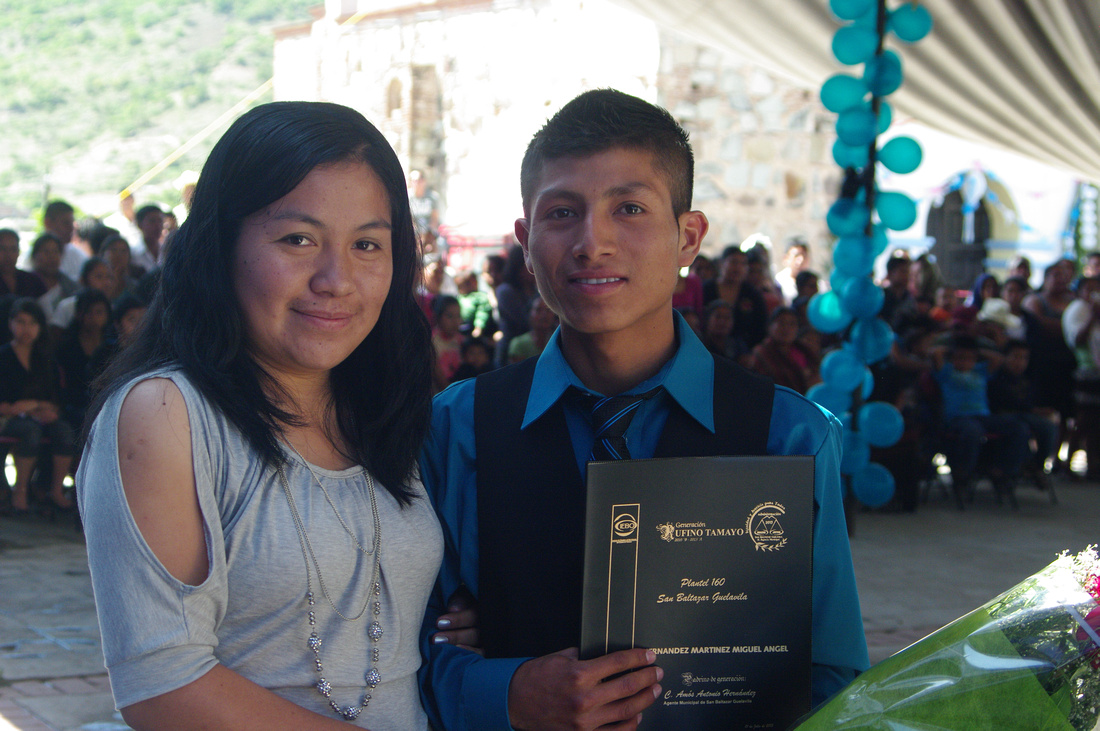
These are some of the parents and grandparents of the graduates. The generational difference between them and the graduates is enormous.
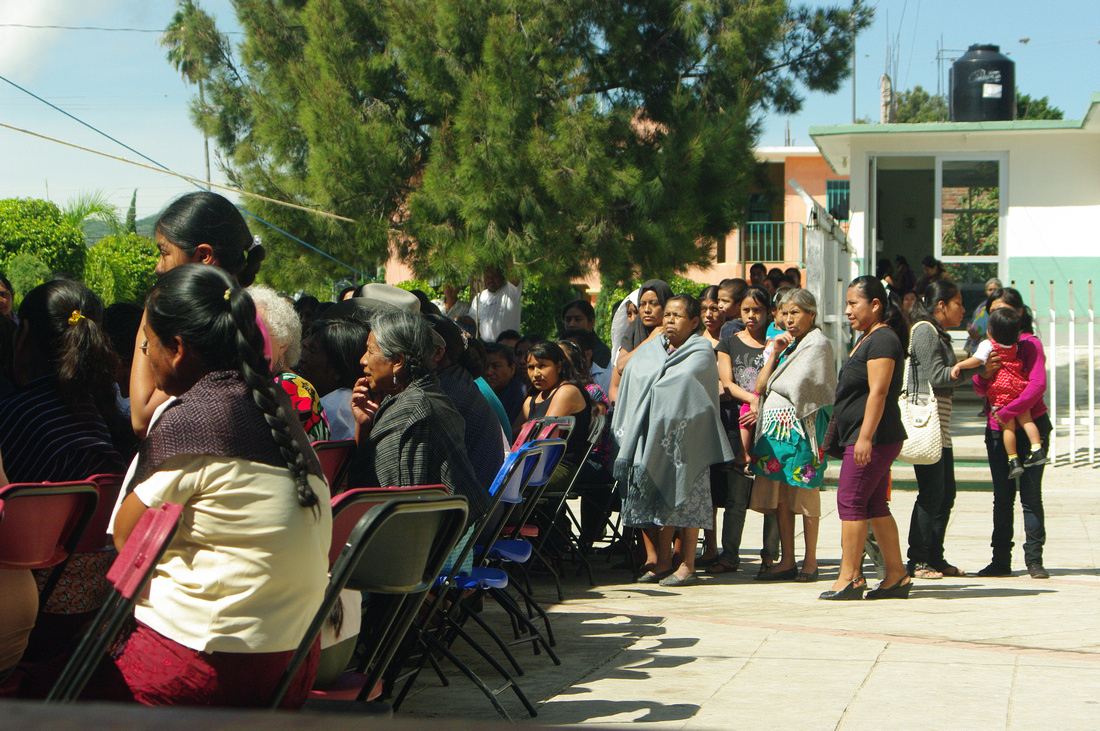
One of the younger classes provided entertainment with a traditional dance. The girl below is just beautiful.
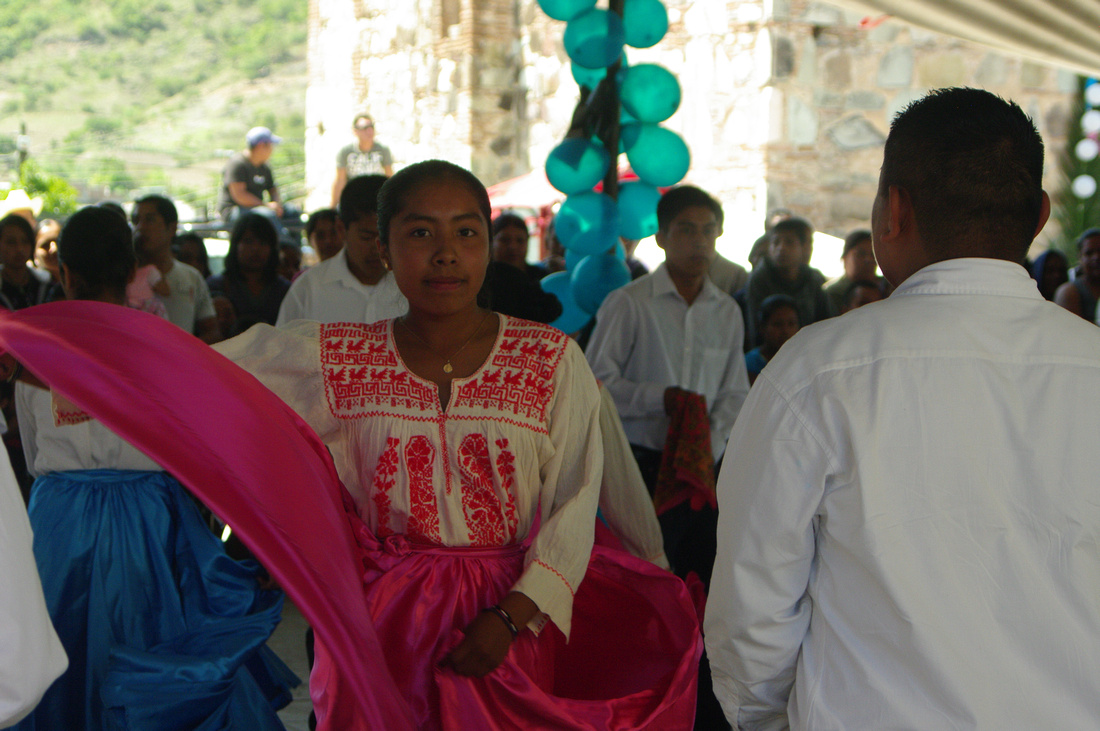
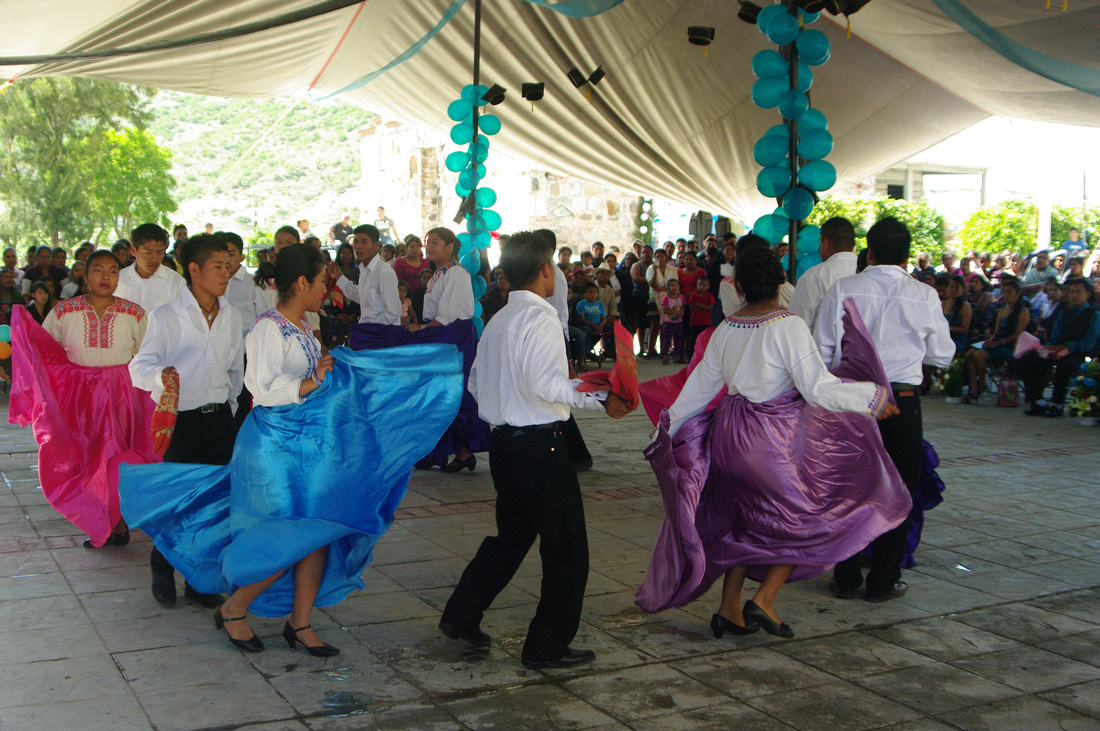
Of course Coca Colas were passed out to administrators.

This young lady was the equivilent of Valedictorian. In her speech she thanked those involved in her educational process. She also had words of wisdom for her graduating class. I spoke to her after the graduation and was very impressed by her.
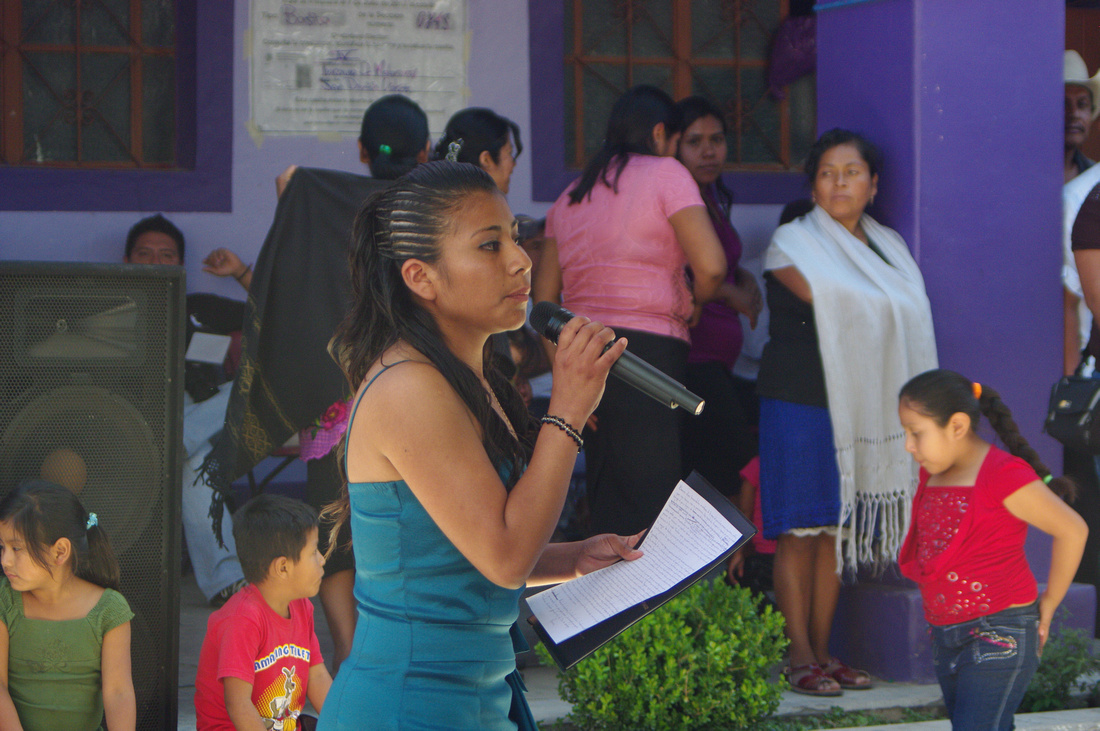
Miguel with a younger schoolmate.

Part of the graduating class with their instructors.
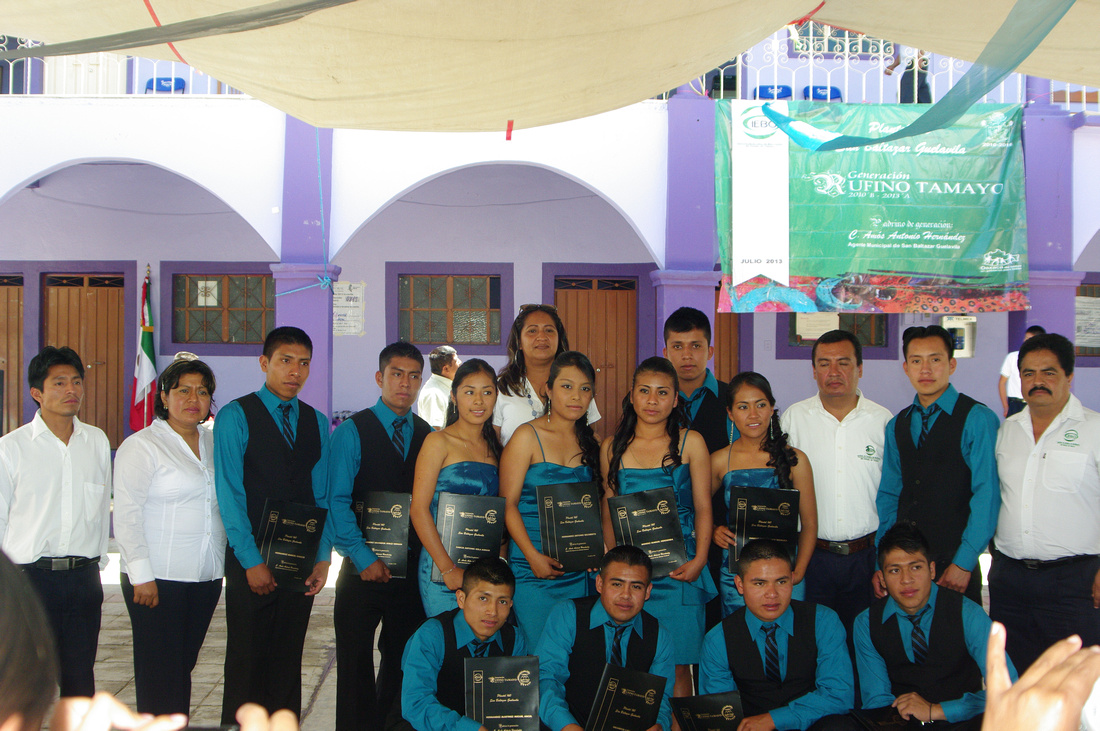
Today is our one year anniversary. It’s been a heck of a year filled with new challenges, friends, information, perceptions, reflections, and experiences.
Our retirement has ended up so far being what I pictured it would be back in Brownsville. The combination of problem solving without the extreme feeling of pressure is extremely fulfilling.
Becoming more proficient in another language will probably be our foremost long term challenge. We are fortunate to be in a culture where most have the patience to work with us. It’s amazing how well one can learn to express themselves with a limited vocabulary.
We are also fortunate to live in an area that is pretty foreign. Almost daily we are exposed to an unknown. This keeps you on your toes and certainly makes life interesting. The give and take continues as ideas are exchanged between us and our friends. We know very little of raising crops and maintaining animals. But we do know about doing some things more efficiently. Growing up in a country filled with technology has its advantages.
I had started a pretty negative blog thinking about the differences between here and the states but deleted it and started over. We still read the news and are often baffled by what we perceive to be self-destructive policies. I guess the main thing is the presence of so many victims in the US. Here where there are so many that could be considered victims the victim mentality is almost nonexistent. Despite the very low wages people work. Consequently I believe people are happier here.
Having spent a large portion of my life buying things on credit I can really appreciate that most folks here live on what money they have. Building a house is done a room at a time as money allows.
This year we plan to build a carport, a four foot brick wall around the front yard, experiment with raising watermelons and maybe some beans, and continue to try and fit in here.
There is grass growing in front of the house because of the rain. The grass will help keep the dust down when the dry seasons rolls around again.
Communication between Beth and I continues to improve. Solving problems together and depending on each other has a real bonding effect. Scooter also receives a lot more attention.
We are going to celebrate our one year anniversary by driving to Oaxaca and eating Chinese food. The restaurant is owned by Chinese and it’s a real trip to hear them speak Spanish!
We got back last Friday from a trip to Guatemala. Our tourist passes must be renewed every six months which means a trip outside of Mexico. Guatemala is half the distance to the US so we decided to test out a trip to Guatemala. We left the house at 5:30 in the morning and arrived close to the border about 5:30 in the evening. Tuxtla Chico is where we planned to spend the night but alas another group protesting wanted to make their voices heard by blocking the freeway. Not sure why the Mexican Government allows this. It happens all the time in Oaxaca. Semi-trailers are usually used to block the road. And it is often main roads that they are blocking. Most of the time it's unions that do the blocking. It appears Unions in Mexico are just as selfish to ignore the damage they do to their economy as American Unions are. Any way it's a real pain in the ass when it happens. Immediate change of plans. So we spent the night farther away from the border than we wanted. That night we worried that we wouldn't be able to pass in the morning. Sometimes these things go on for days! It's real frustrating when small interest groups hogtie the rest of a country. You know, the way they do in the US all the time.
The drive from Tlacolula to the turnoff before Tehuantepec is torturous. Average speed for the four hours is thirty miles an hour. I don't believe there is a single stretch of road that is straight for more than a half a mile on this leg of the trip. There is a new freeway being built that will drasticly cut driving time to the coast when completed.
The main thing I would say about Chiapas is that it is simply beautiful. It's almost jungle like. It has to be the lushest area that I have ever been to. The highway from Tehuantepec to Guatemala is pretty flat and is in very good shape. We must of passed at least fifteen or twenty rivers. The price of the lush greenery is a climate that is more humid than anywhere that I have ever been. That saying "it's a nice place to visit but wouldn't want to live there" fits the coastal area of Chiapas perfectly. We were told that inland is much different. From inside of our air conditioned truck the drive was amazing! There were many areas where the trees on both sides of the road formed a tunnel over the road. Lots of cattle grazing over acres and acres of thick grassland.
A surprise was the existance of windmills. On both sides of the Chiapas and Oaxaca border in a long valley are hundreds of windmills. They are of course quite large and turn at different rates. I'm not sure where the electricity goes but it was astounding to see this kind of technology in Southern Mexico.
We stopped at a store to buy coffee and the cashier had a name tag that read "Kenia" which is Spanish for Kenya. A conversation insued over her name and we learned that her last name was Chun. Her ancestory included folks from China. Talk about diversity.
We ended up spending the first night about twenty miles from the border. We arrived the next morning at the border at about 7:15 only to find out that we had to drive back about thirty miles to cancel our permit for our truck. When we returned with a canceled permit there was no reason to drive across so we walked across to Guatemala. There is no way to describe the abundance of scams along the border on both sides. We were literally accosted by men who insisted on helping us through the process. They claimed to know all the shortcuts while others had wads of money to exchange for our pesos. Thank God we have a little command of Spanish now. I eventually had to become quite aggressive and take control of the situation. We cancelled our personal permits in Mexico before entering Guatemala. Ends up we paid the government of Guatemala about seventy dollars for the privilege of entering and immediately leaving their country. We had heard a rumor that Guatemala required a waiting time between stamping your passport entering the country and exiting of three days. Maybe the lady at the window took pity on us as there we at least fifteen men around us trying to get into our pockets. I must say concerning these men on both sides of the border that they were in no way threatening. I never felt like I was going to be physically harmed. They were pushy and of course it was confusing. Next time we'll zip right through the process!!!!!
Normally Mexico requires you to leave their country for twenty four hours to apply for a new tourist permit. We were fortunate that the immigration let us renew our personal permits as soon as we re-entered Mexico. I must add here that the woman that canceled and renewed our personal permits was a real sweetheart. I told her that she was the most kind and helpful person that we had ever encountered.
We then drove back to where our permit for the truck had been canceled and requested a new one. Much to our surprise he gave it to us. No waiting!
Our initial plan was to take three days for the trip. One day to Guatemala, twenty four hours in Guatemala, then drive home the next day. We gained a day by not having to stay in Guatemala so we decided to take two days for the drive home. Felipe and Alejandra were watching our home so there was a little pressure to get back.
Stopping along the drive is always a special part of a trip for Beth and I. Even a chat while filling up with gas can lead to wonderful insights. The majority of people in Mexico are hardworking honest people. They like to talk as much as we do and are as curious about us as we are them. Driving in Mexico is a lot like driving in the US in the fifties. There are many interesting stores and shops along the highway. It's a little slower than driving on mega freeways but you don't miss the contact with the people.
We were stopped at checkpoints seven times coming back. Mexico seems a whole lot more serious about controlling who enters their country than the US.
As we were in a bit of a hurry on our trip I didn't take many photos but I would suggest that you do a Google image search for Chiapas. You'll be amazed at it's beauty.
We are going to begin the process of acquring a different status here that will elliminate having to leave the country every six months.
Anyone traveling from Mexico to Guatemala for the first time is welcome to email us for more specific details on crossing the border.
Back here at home the rainy season is beginning. The 18th will mark one year for us. As we are settled in now we'd like to invite friends and family to come down and see Oaxaca.
We have ended work on our well at 16 meters. There is about a seven meter reserve of water so the likelihood of running short is minimal. Work was stopped a few weeks ago. We are finally getting used to not having Selverio and Luis around.
The week we stopped work coincided with "San Maritana" (hope the spelling is correct), the celebration of having water. Our friend Beto explained that the custom began back when villagers shared a common well. Every year the villagers celebrated or gave thanks for having water. The tradition has carried on and is still celebrated today. We celebrated by putting flowers around our well.

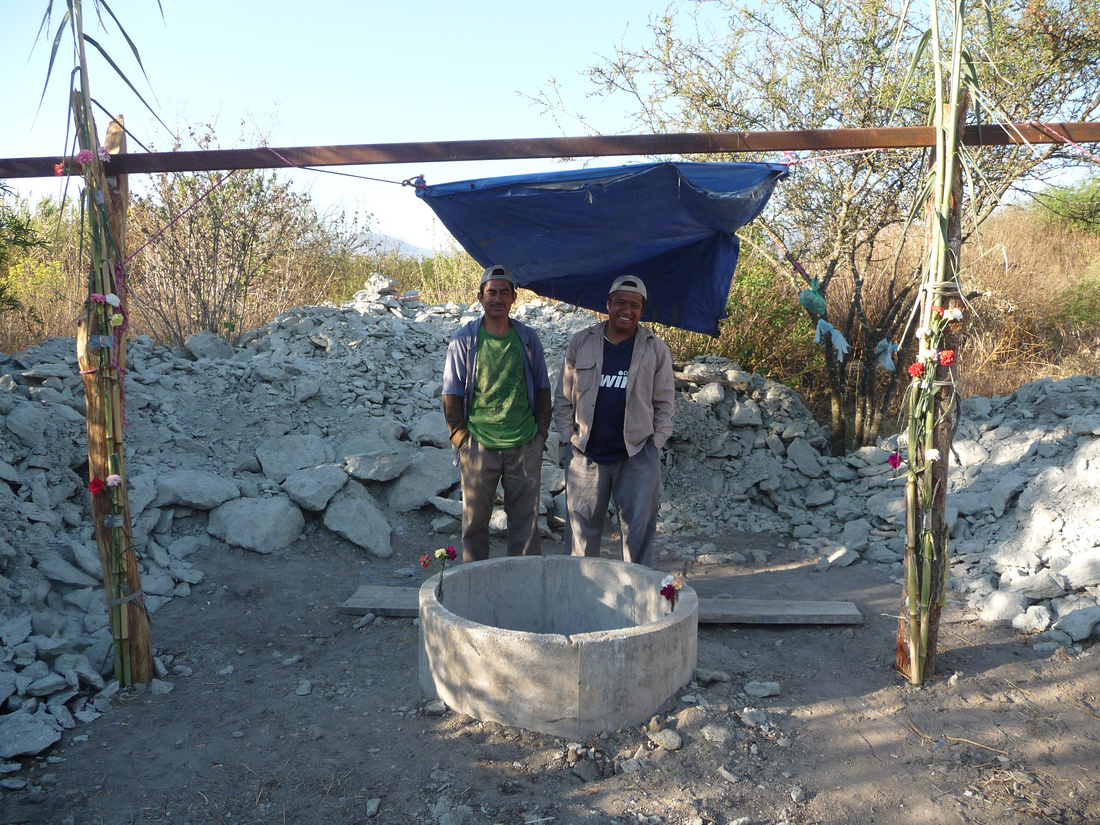 We also visited a Capilla (small chapel) in Tlacolula where water, flavored with fruits, was given out. For those in a hurry a kind of drive by service was offered. Cars could stop and have drinks brought to their vehicle.
We also visited a Capilla (small chapel) in Tlacolula where water, flavored with fruits, was given out. For those in a hurry a kind of drive by service was offered. Cars could stop and have drinks brought to their vehicle.

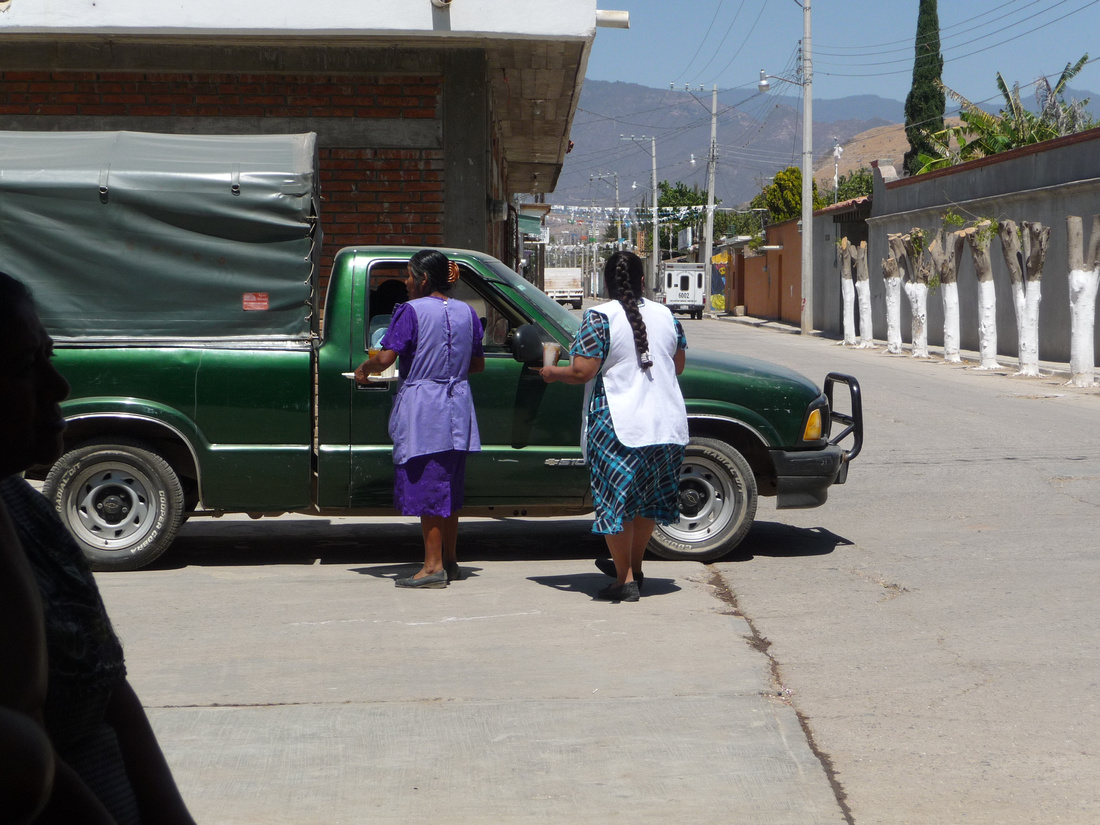 A few friends came by our well to celebrate finding water. Dolores blessed the well while burning incense. Gifts of mezcal, beer, and cigarettes, were made (the three food groups).
A few friends came by our well to celebrate finding water. Dolores blessed the well while burning incense. Gifts of mezcal, beer, and cigarettes, were made (the three food groups).
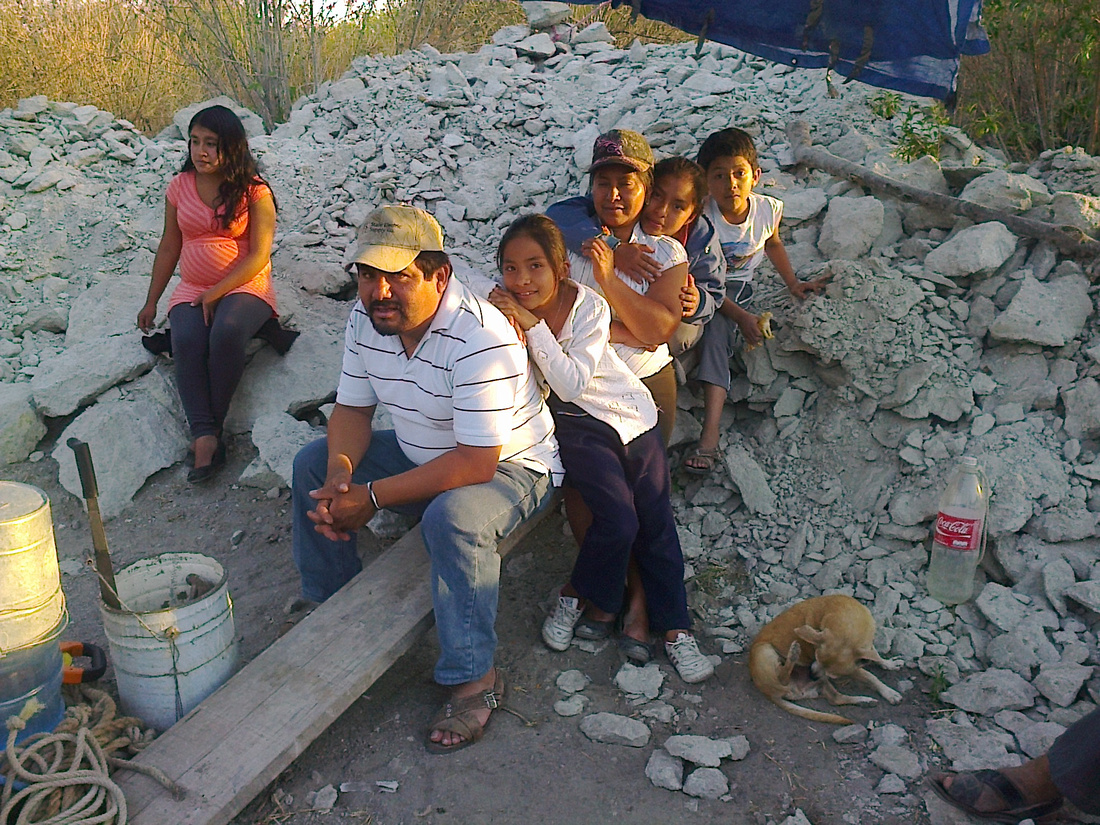
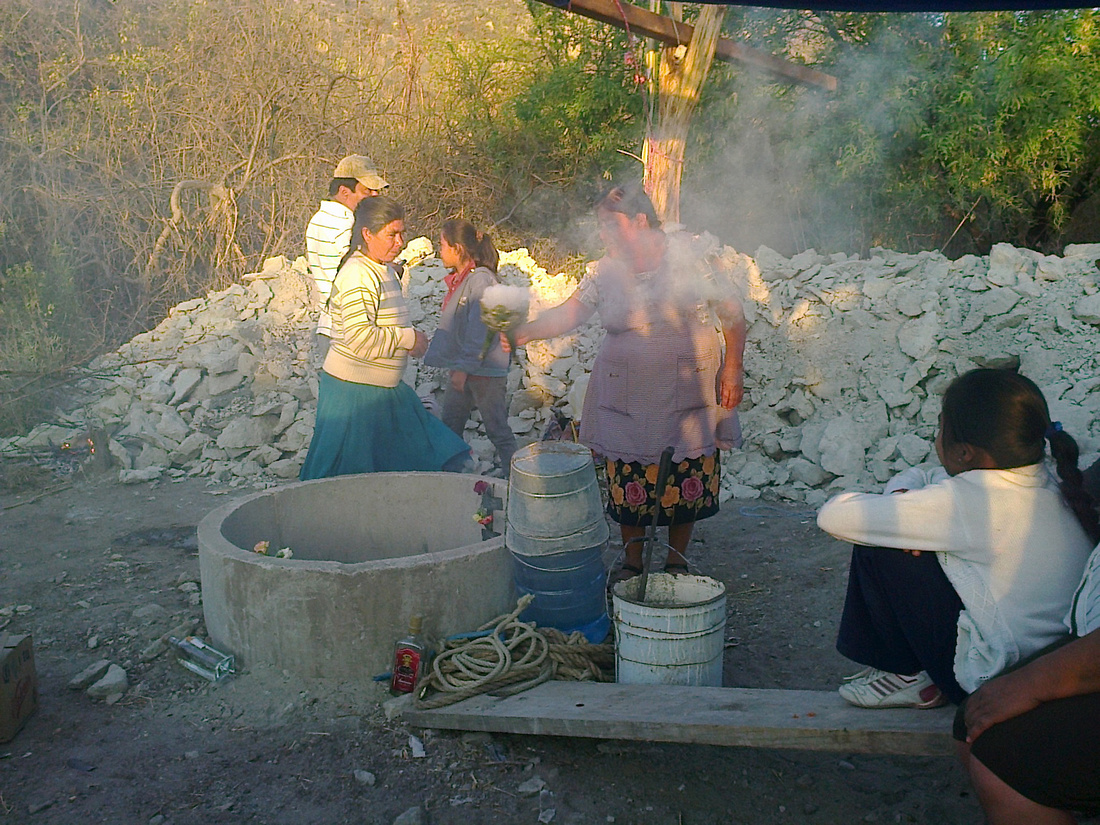

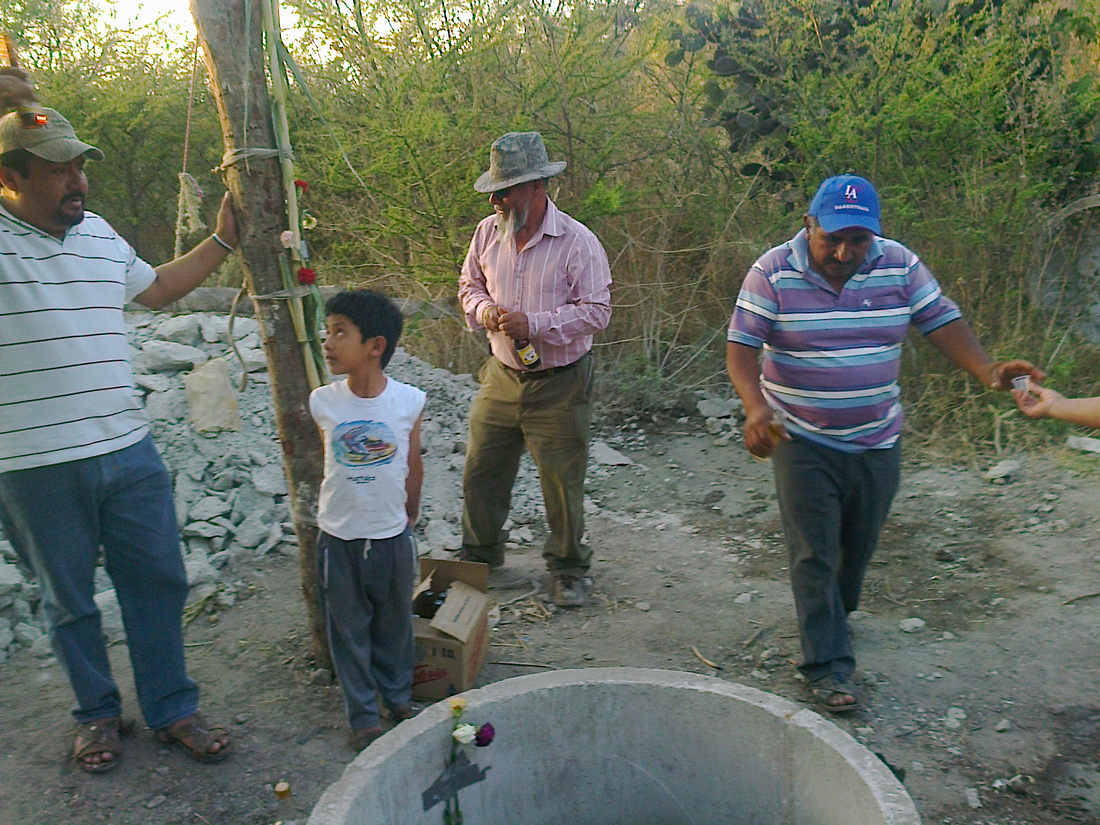
It seems like Mexicans are always celebrating something. In retrospect I think that has always been one of the things that drew me here. It's real healthy to constantly be around folks that are celebrating life and giving thanks for what they have. It's such a contrast from being around many Americans who have so much yet are so dissatisfied with what they have. I have found myself being a little curt with family and friends. Their complaints seem so menial. I see things everyday that remind me of how fortunate I am.
We had a backhoe come in and open up an area from the house directly to the well for convienence and security.
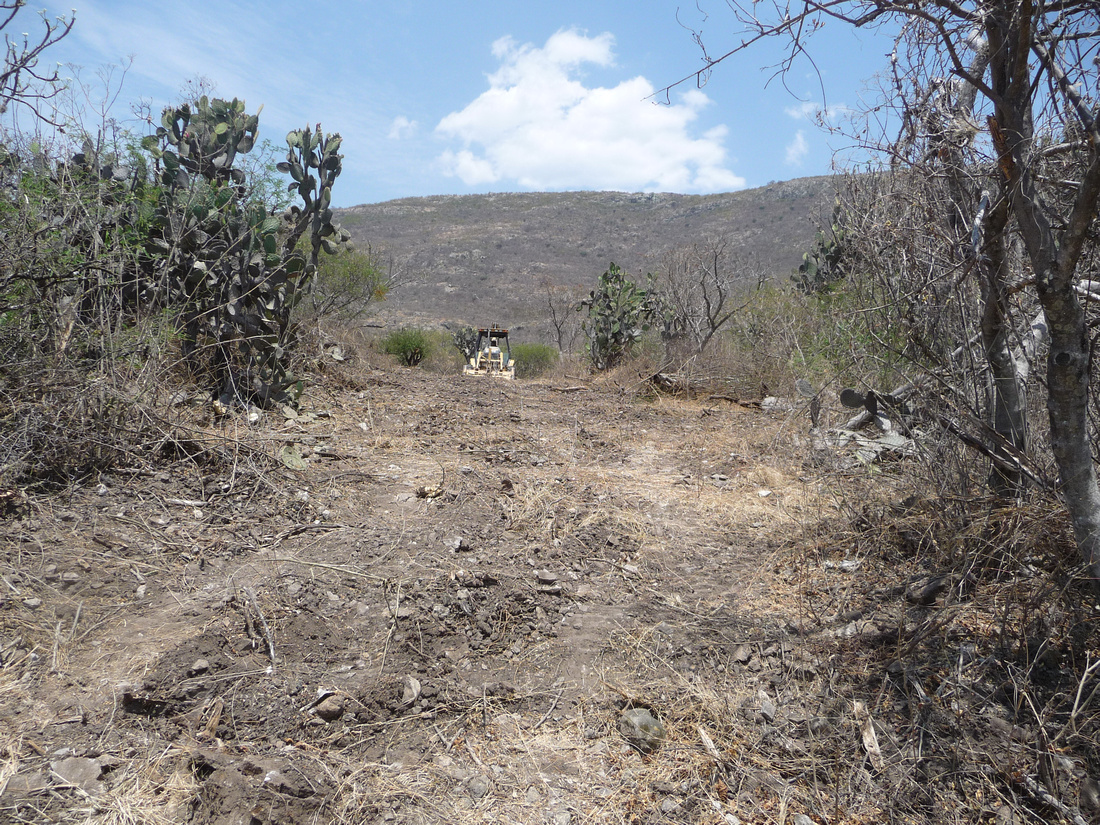 The well is so far from the house that I had to have a pretty secure top put on to protect the pump. The fellow that made it was pretty clever. There is a lock on top that allows the little door to be opened. Inside is another lock. It would take a lot of effort to get the top opened. And a lot of noise.
The well is so far from the house that I had to have a pretty secure top put on to protect the pump. The fellow that made it was pretty clever. There is a lock on top that allows the little door to be opened. Inside is another lock. It would take a lot of effort to get the top opened. And a lot of noise.
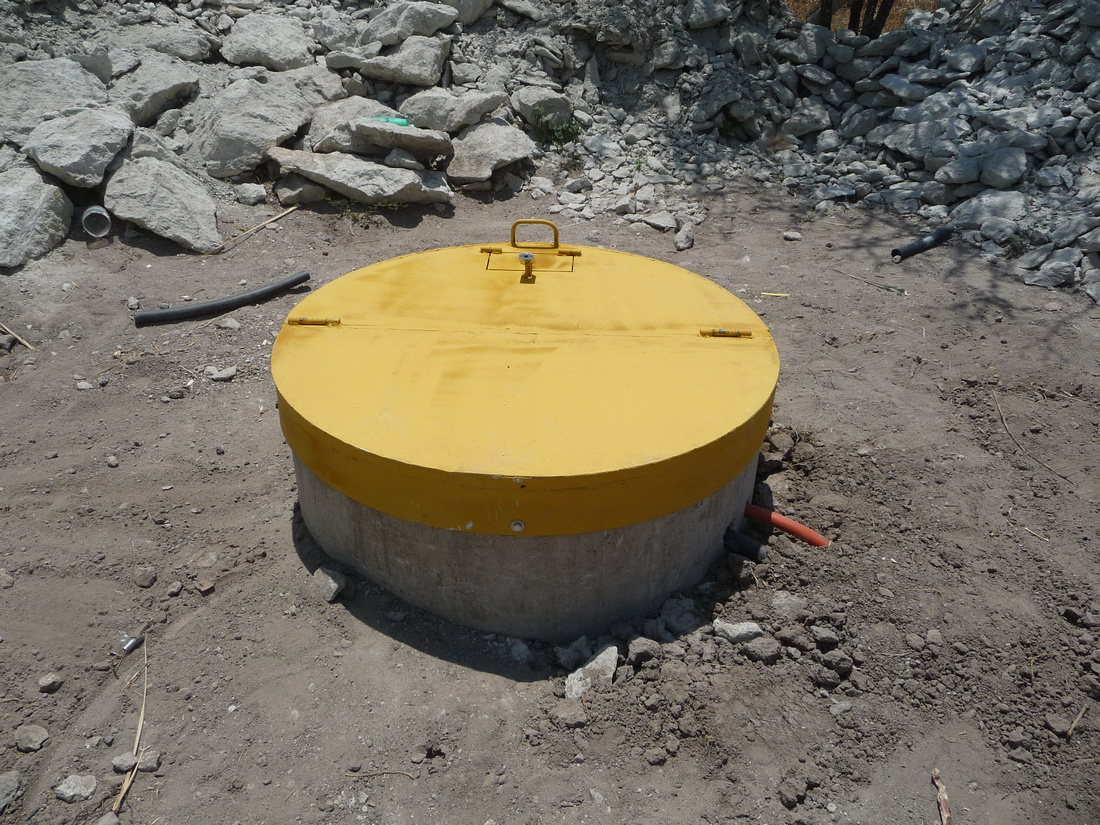
 This photo is taken from in front of the well looking up towards the house.
This photo is taken from in front of the well looking up towards the house.
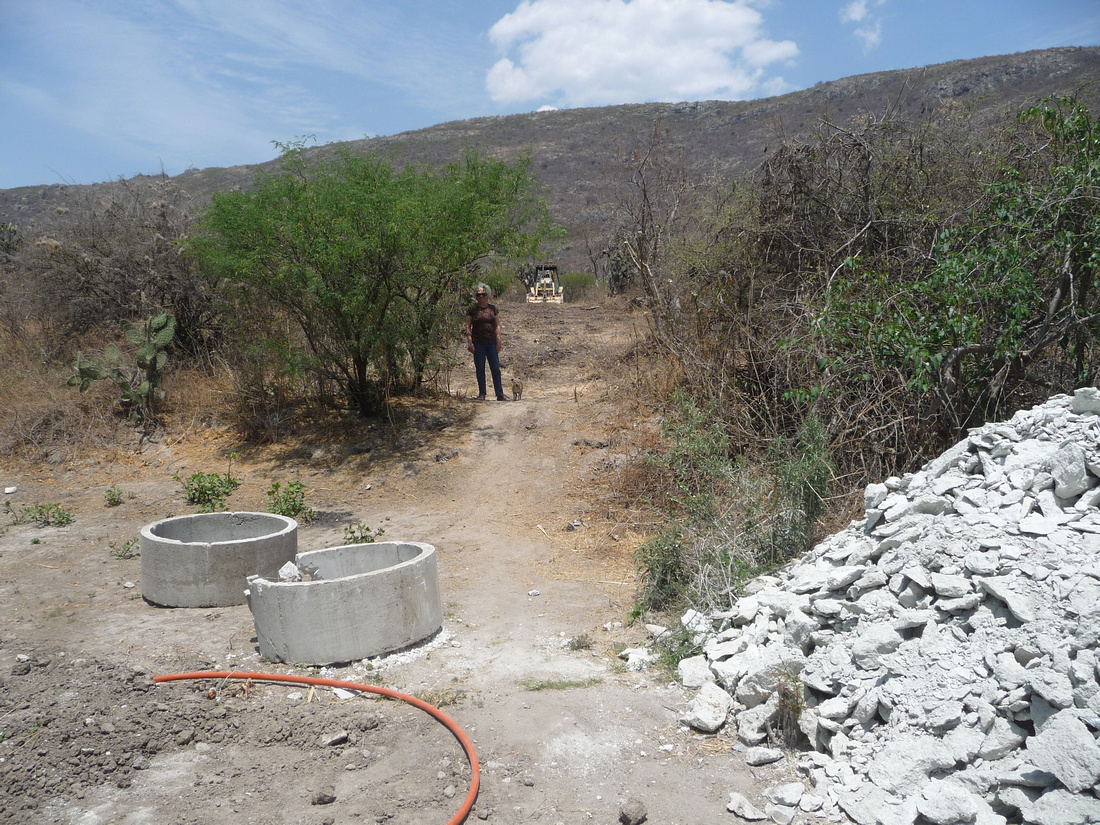 This trench holds the water and power hoses. Pretty quickly now the hoses will be completely covered with sand to protect the hoses then filled back with dirt.
This trench holds the water and power hoses. Pretty quickly now the hoses will be completely covered with sand to protect the hoses then filled back with dirt.

The distance from well to house ended up being about five hundred feet or about one and a half football fields. The water has to be pumped up from the bottom of the well about 50 feet, then travel up hill the 500 feet. And finally up the wall about fifteen feet and into the house. We brought down a submersible pump and while it doesn't fill the tinaco real quick (about nineteen minutes) it's great to just flip a breaker from inside the house. Getting the well and pump working was really the last major project. We now have all the comforts. Mickey bought me a wood heater that i'll install before cold weather hits again.
Our neighbor owns a German Shepard. About three weeks ago she attacked our little Scooter. We ended up having to have one of his eyes removed. He still bumps into things on his blind side but has recovered remarkably well. The vet who removed the eye in Tlacolula told us about a vet in el Tule that had a young Labrador that she wanted to find a good home for. We traveled to el Tule, about a thirty minute drive from our home, and instantly fell in love when we saw her. She's a white Lab about one and a half years old. Beth named her Lily. She's been with us for two weeks now and is fitting in wonderfully. There is lots of room for her here and lots of new smells.
With work basically done inside the house we have turned our attention outside. We now have a YARD. We hired a backhoe to move dirt around and have planted grass in front of the house. We have two lime trees that already have fruit. We got a tip from a friend who told us that when making lemonade it's better to use about six leaves ground up in a blender with water. The leaves don't have the real strong flavor of the lemons. Beth has many flowers, some ceder trees, a beautiful pine tree, three ficus trees, three pomagranate trees, and a palm tree. Our water consumption has risen with all the watering of our plants.
Here are a few shots of in front of the house before and during our work outside.

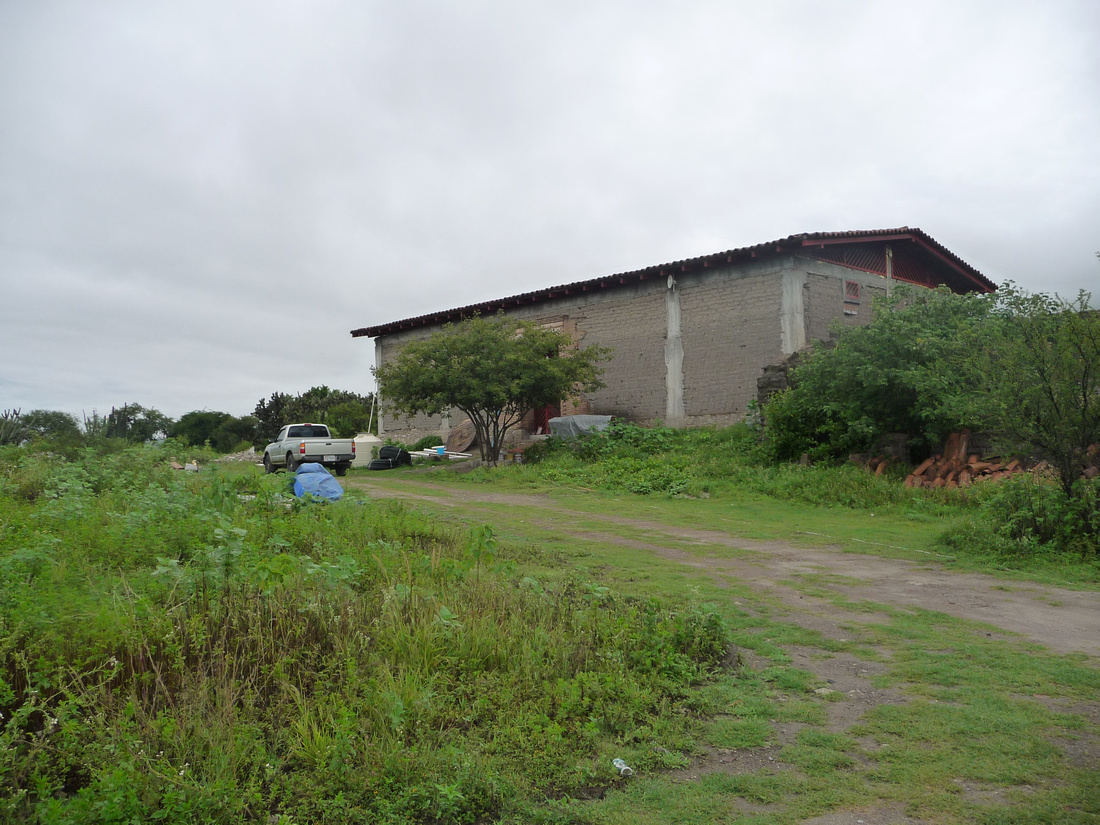


We'd had this key less lock in Brownsville. It works perfectly here.
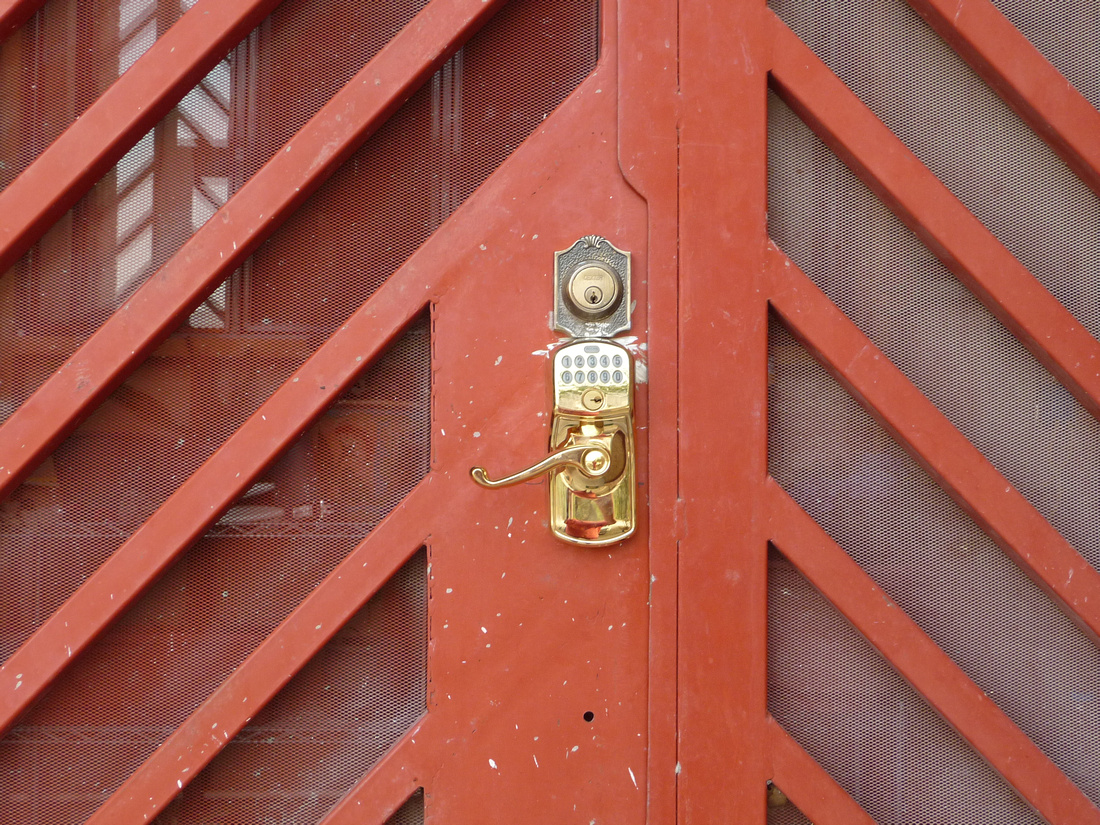 Grass has been planted on one side of the house. We toyed with the idea of buying grass that comes in squares but were disuaded by friends that reminded us that it would need to be watered every day. The grass we planted is a native grass. We are watering every day until it fills in after that it will need minimul watering.
Grass has been planted on one side of the house. We toyed with the idea of buying grass that comes in squares but were disuaded by friends that reminded us that it would need to be watered every day. The grass we planted is a native grass. We are watering every day until it fills in after that it will need minimul watering.
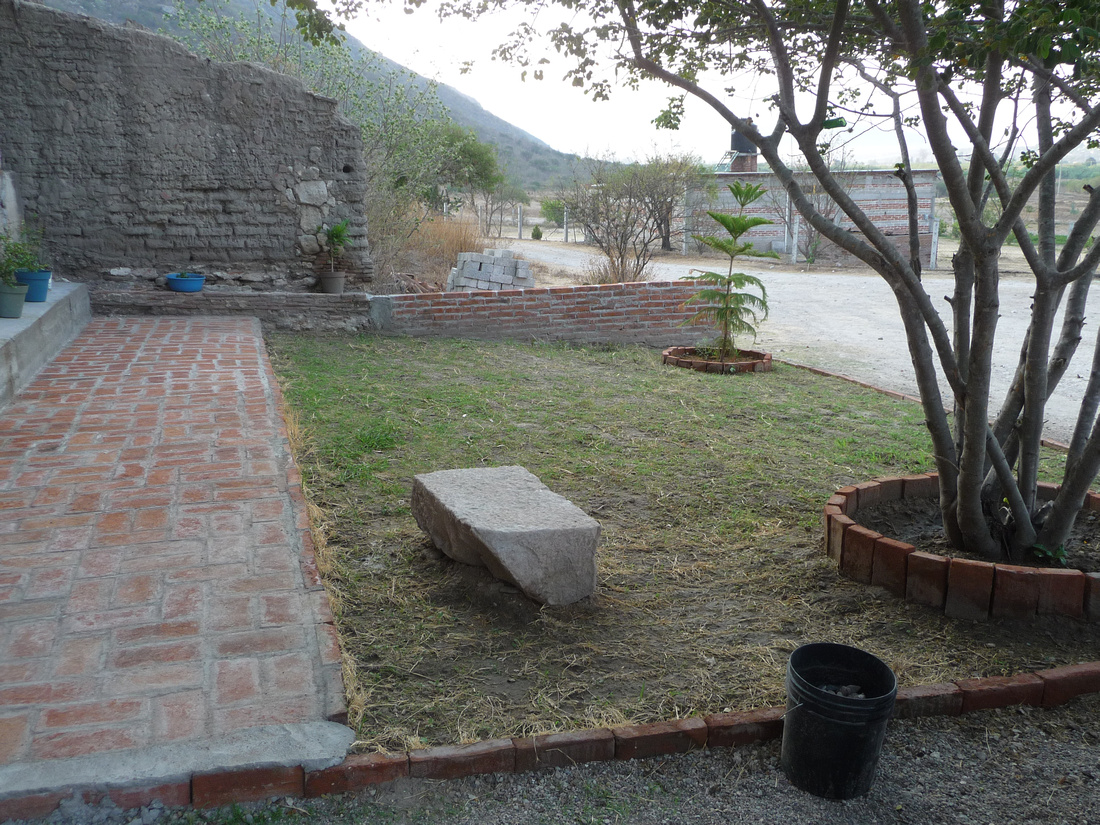
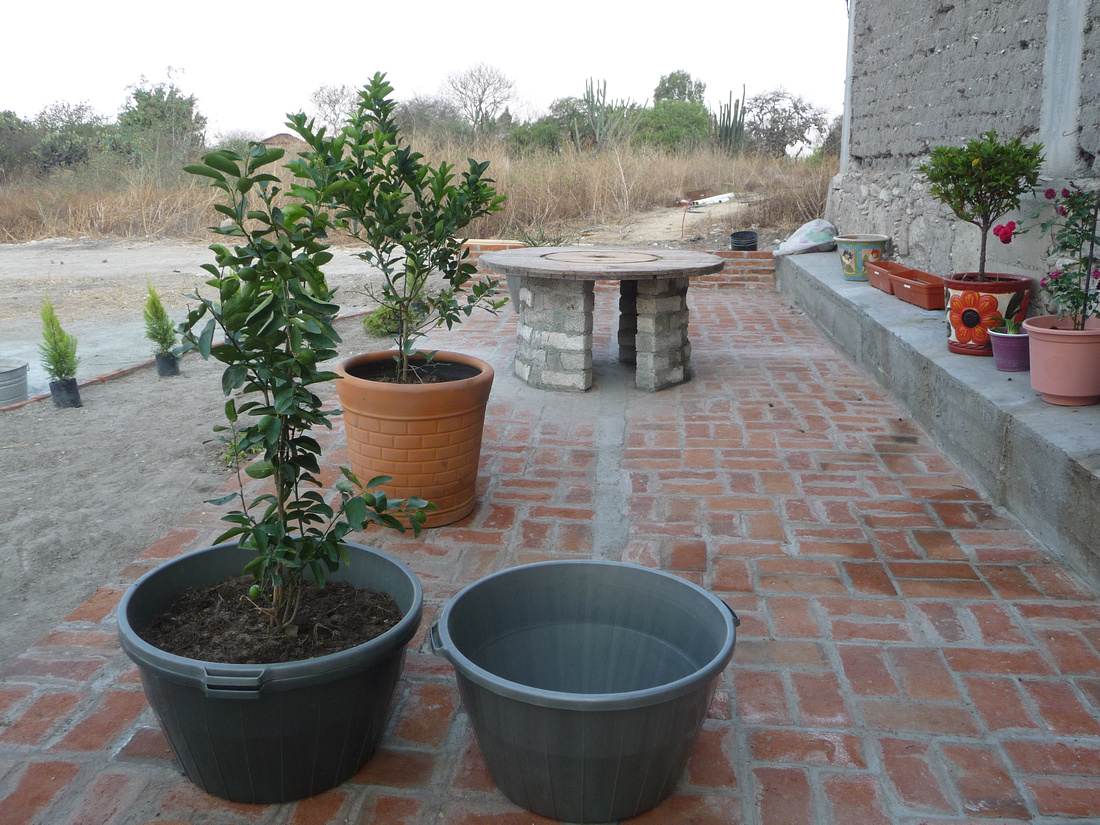
This is the future sight of our carport. The sun is so strong here that it's real hard on vehicles.

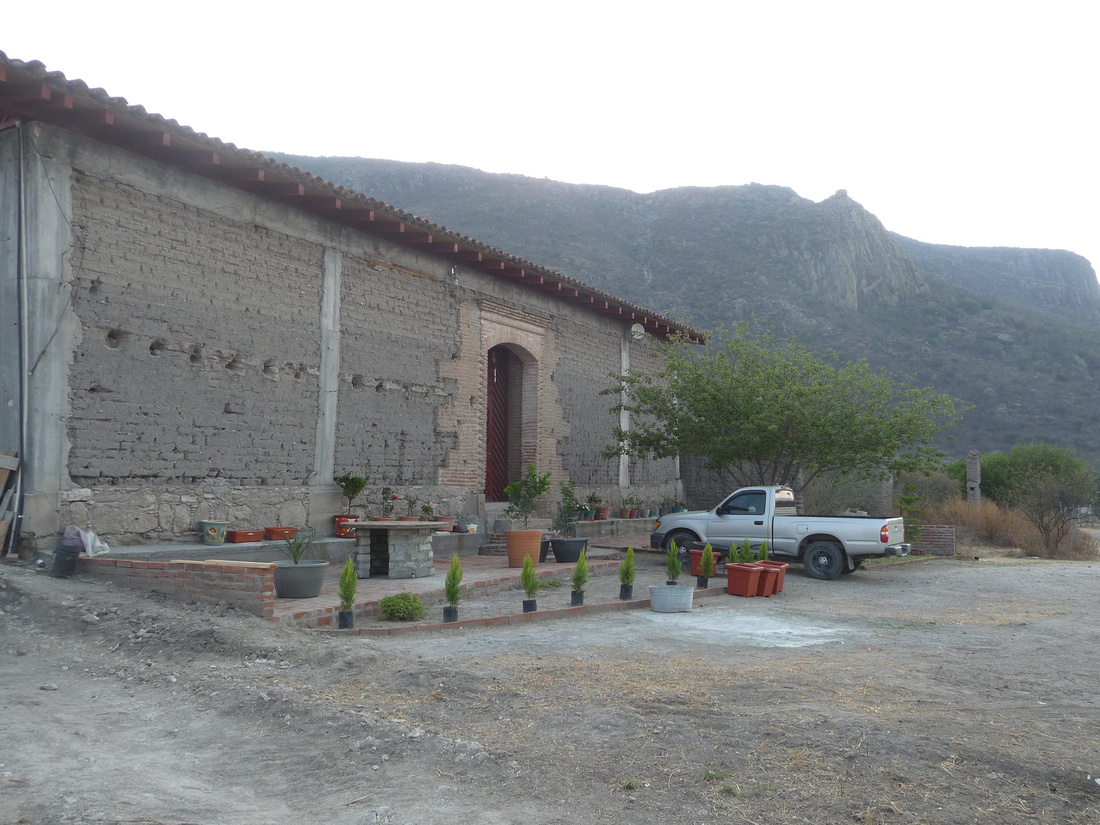 Keeping sand and gravel around is a must. Most construction requires cement.
Keeping sand and gravel around is a must. Most construction requires cement.
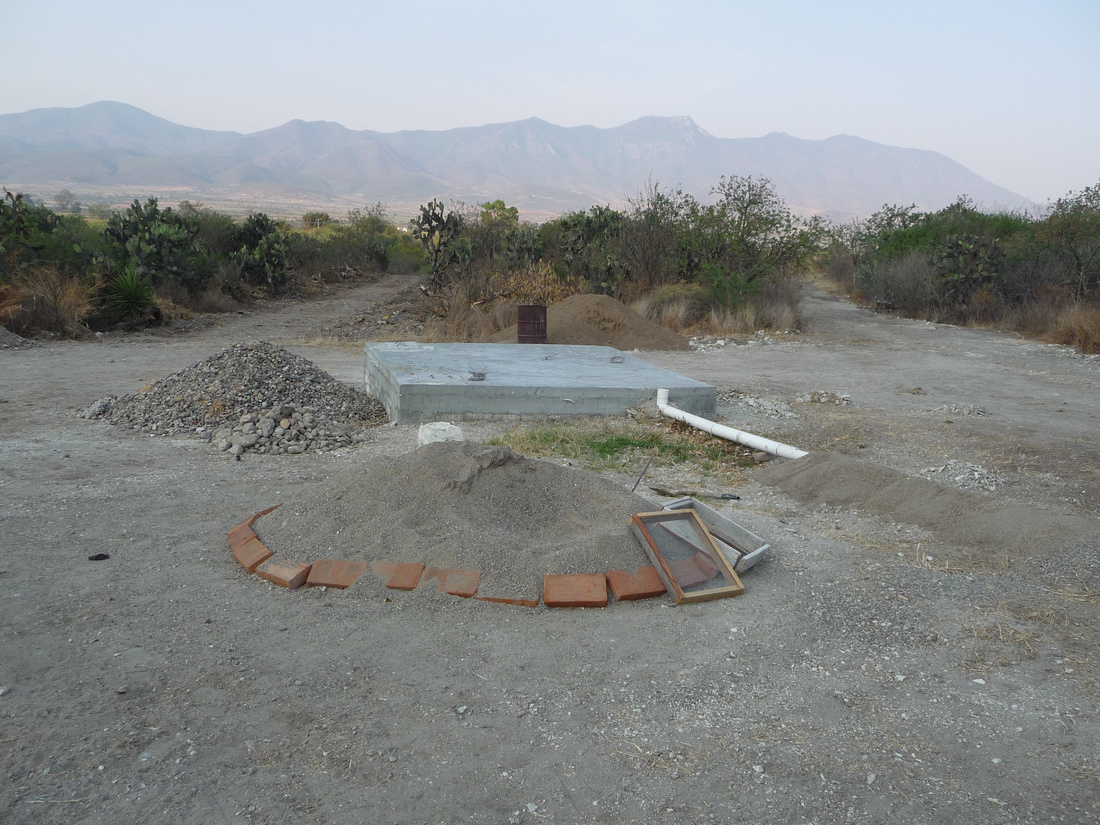
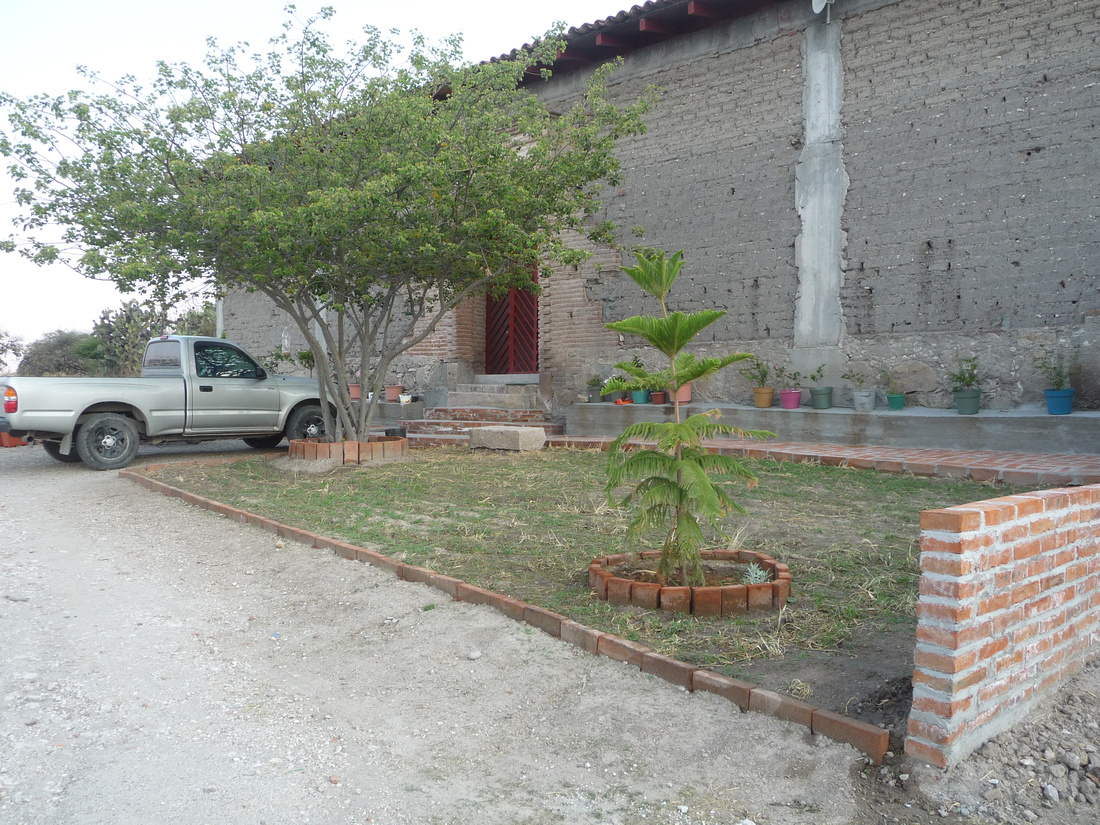
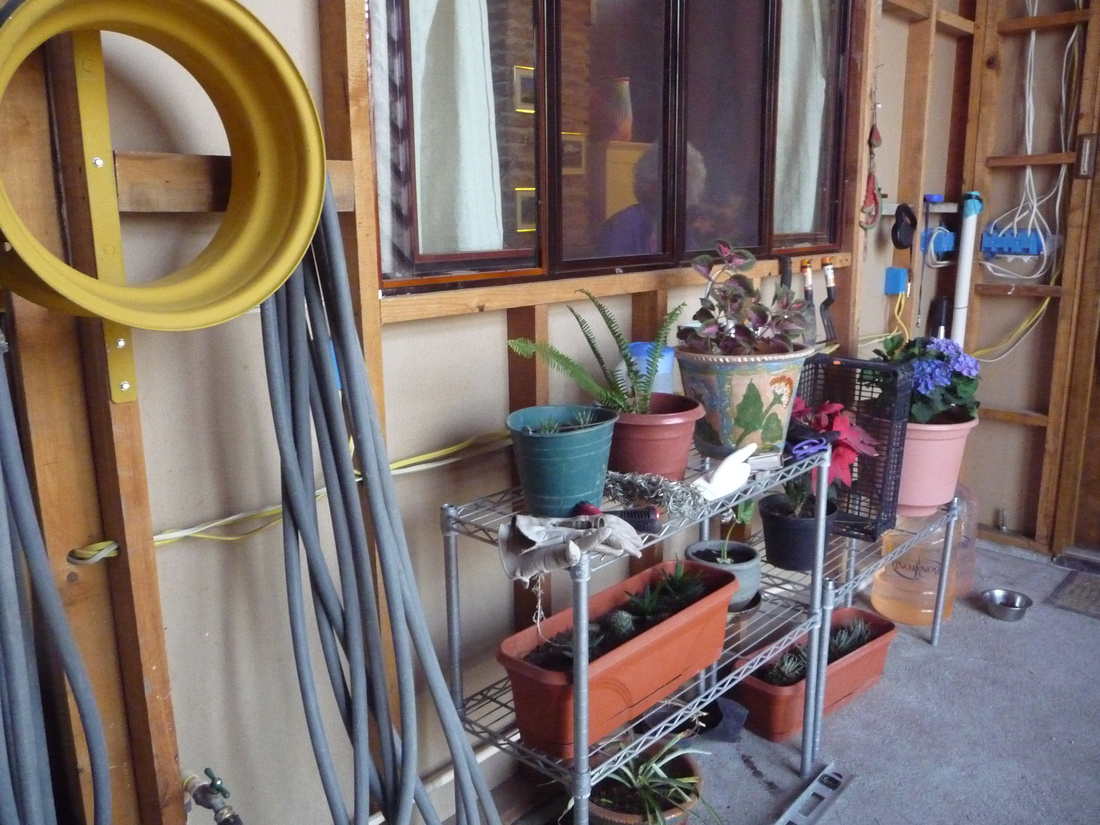
Our first breakfast on our spool table. We hauled the whole spool down from Brownsville. It weighed a ton and took up space but i'm glad we brought it.
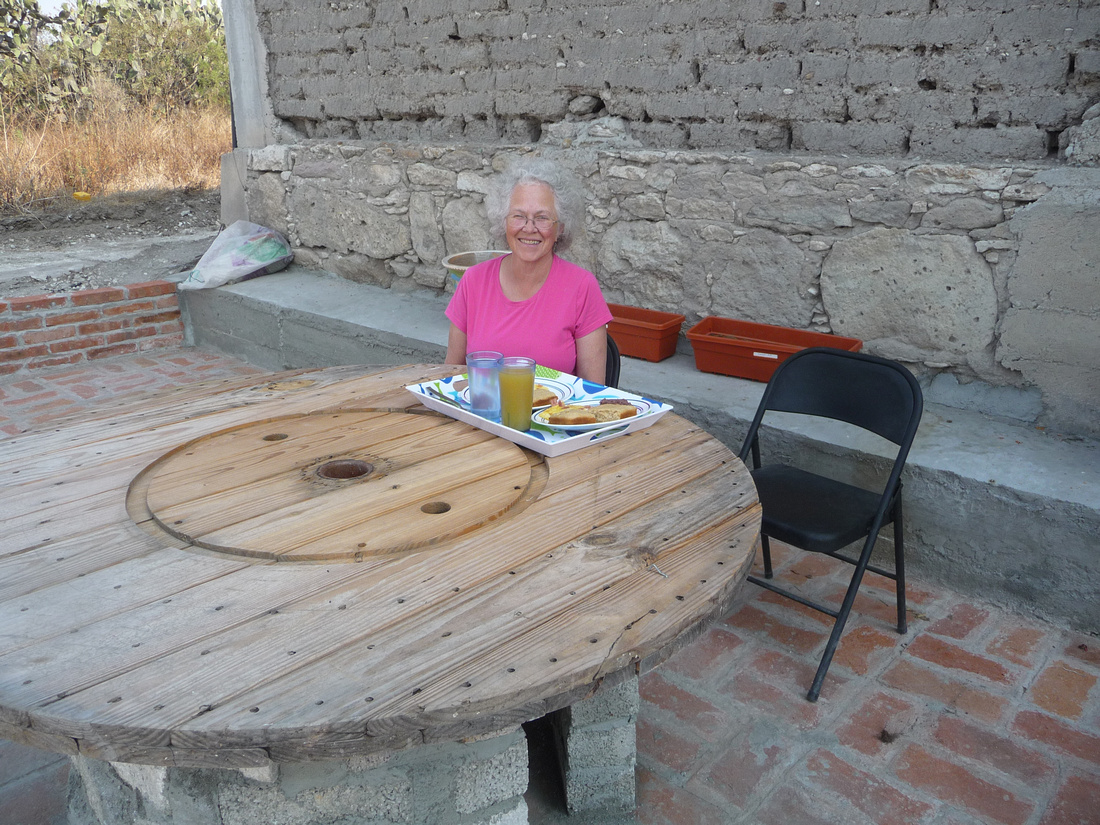
Beth and I only drink here when we have company. We found ourselves without any mezcal yesterday so we went to Matatlan to purchase some from a friend. Of course he wouldn't let is just buy, he had to have us sample the various variaties that he had on hand. An interesting thing we learned was that during the distilling process some men use a real hot fire which cuts down on the process time but makes the mezcal taste very strong. Casto uses a smaller fire which extends the distilling process but his mezcal is much smoother. The degrees of alcohol are the same either way it's only the flavor that's different. We much prefer the smoother mezcal. We ended up buying eight liters. Four liters were from a barrel in which the mezcal had been stored for five years. Cost for eight liters 300 pesos or about $27.
A question that is often asked of Beth and I by Americans and Mexicans alike is "don't you get bored"? It's hard to stifle the sarcasm when answering! There is always work to do here! We usually start our day from five to seven. Working outside is much more pleasant before the heat arrives which is usually about 11:00. The house stays fairly cool during the day so work inside is done between 11:00 and 5:00. After 5:00 we go back outside to water plants and do more landscaping type of work. There are always people to visit or receive. Then there are the fiestas. We don't attend as many as we used to. They tend to be hard on our digestive systems.
We bought a satellite and have many channels in English. Watching television is usually done right before bed. We also have a library of over thirty thousand ebooks that I continually add to. There are also many beautiful places to visit. We love driving up to the mountains. Many places remind us of Washington State. There are rivers, pine trees, and wonderful people that are always willing to talk to us. Most of the mountain regions near us are inhabited by Mixe. Their language reminds me of the Apache language. It's pronunciations are strong. Guteral. Very different from Zapotec.
I mentioned earlier in the post about the benefits of being around people who celebrate life. Another positive factor here is the ability to constantly problem solve. With so many new challenges opportunities to create and refine are a daily occurance. Friends help us toss around ideas. Never a dull moment!
Mickey and Yadi will be here Tuesday to spend two weeks. We are looking forward to their visit. They will be our first guests. A lot of late night conversations. They are both interesting people with lots of ideas. And we get to speak English!!!!!!!!
On Sunday February 17th, Everette and I were invited to join Epifano's family for a picnic adventure to a unique geological site on the east side of their village, San Baltazar Guelavia. Everette had gone there with them about three years ago, but I had never been. To start our adventure, a 1-ton pick up truck picked all of us up (more than 20 people - I didn't count) at Epifano's house. The drive up to the spot took about 40 minutes. In this first picture you can seen the truck crossing this creek. To enter this area, you must have permission from the government of the village.
All of us were in the back of the truck holding on tightly so we wouldn't fall. The ride was rough and we were constantly jostled. Only two of Epifano's daughters with small children rode in the cab of the truck.
The following pictures show the terrain and an another crossing of the river that creates some of the geo formations in this area.
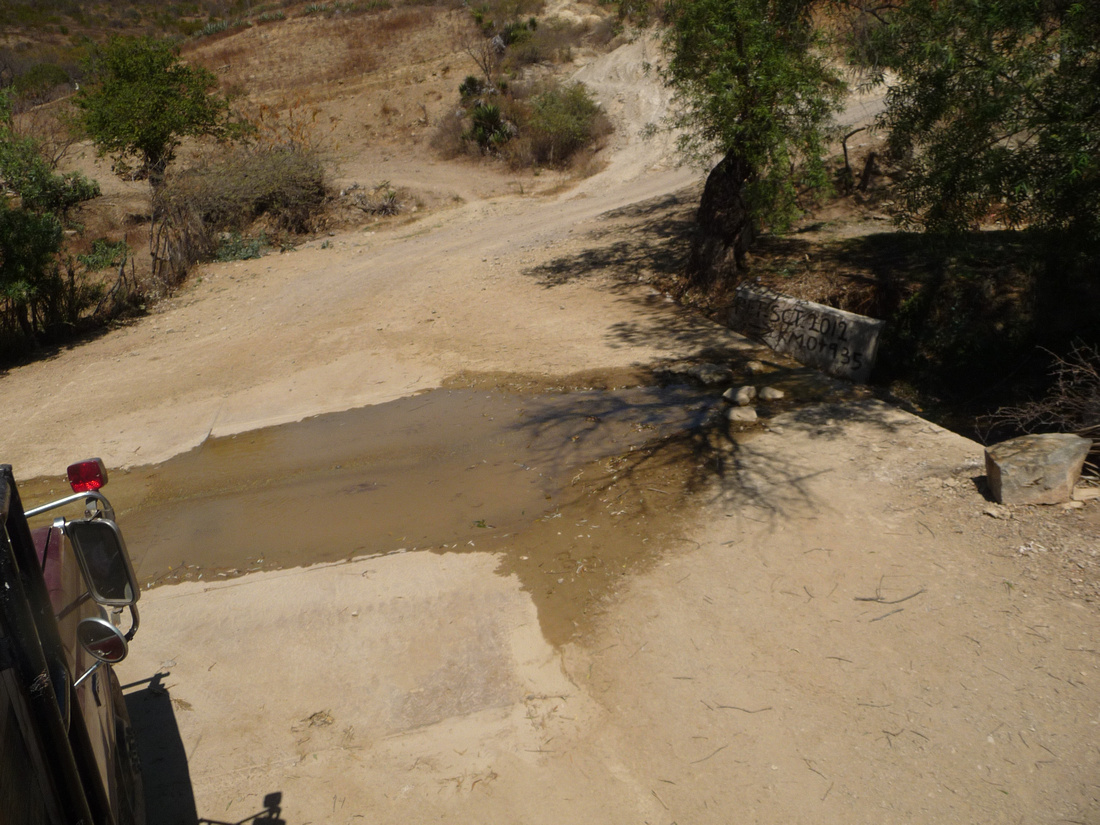
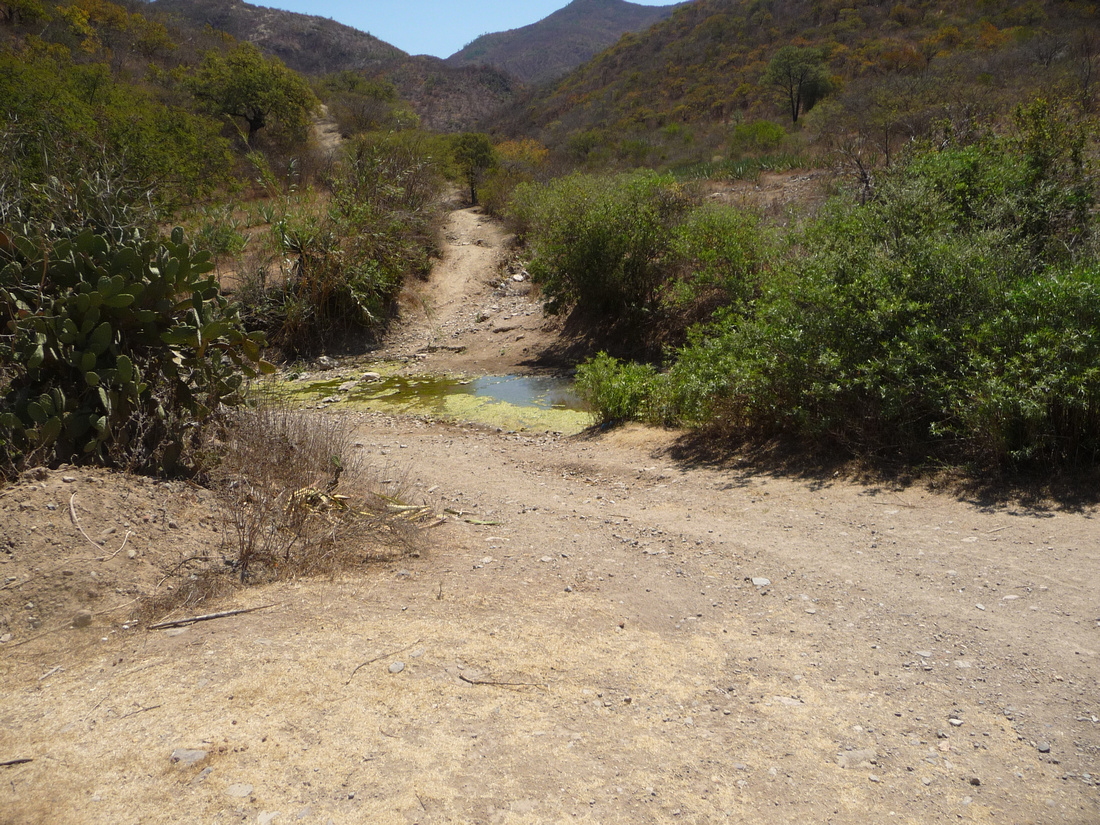
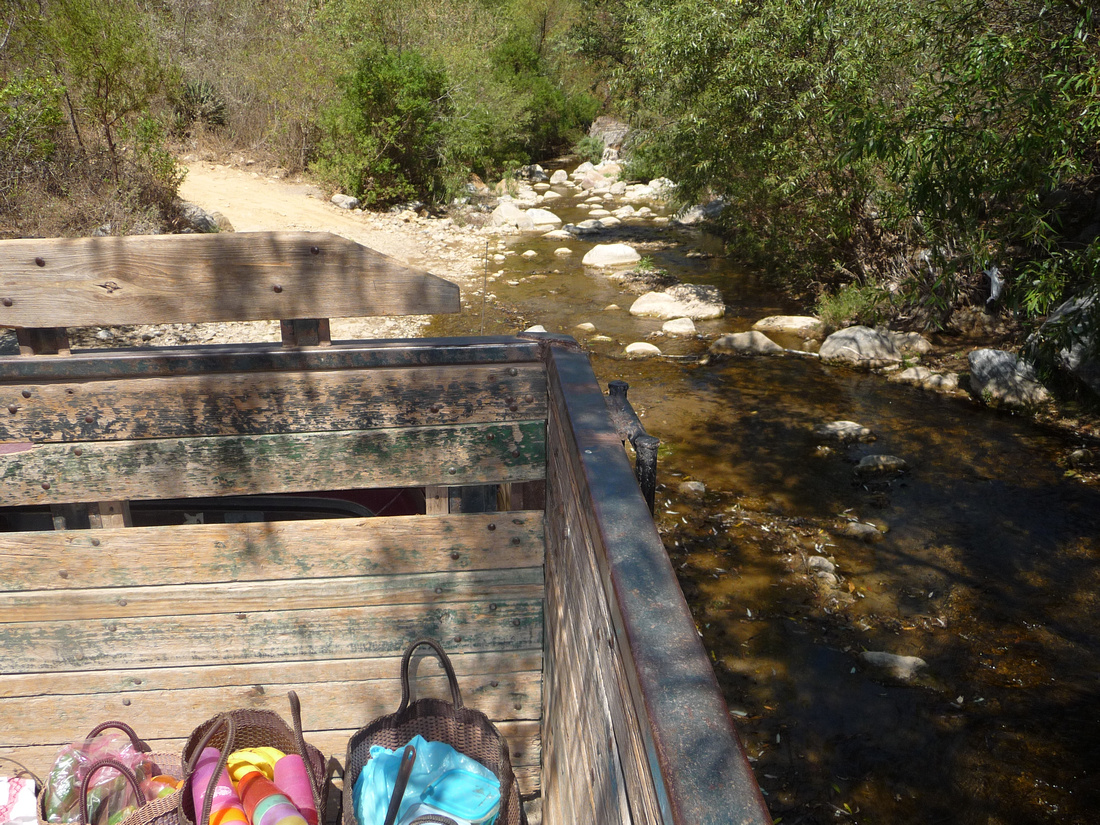
When we reached the end of the road, we started a one mile hike down to the river. Everette said that when he came with the family three years ago, the road was not complete and they had to hike about 2 1/2 miles in the riverbed to reach the spot. We only needed to hike about a mile. Everyone participated by grabbing a bag, a pot, a chair, or the small charcoal stove.
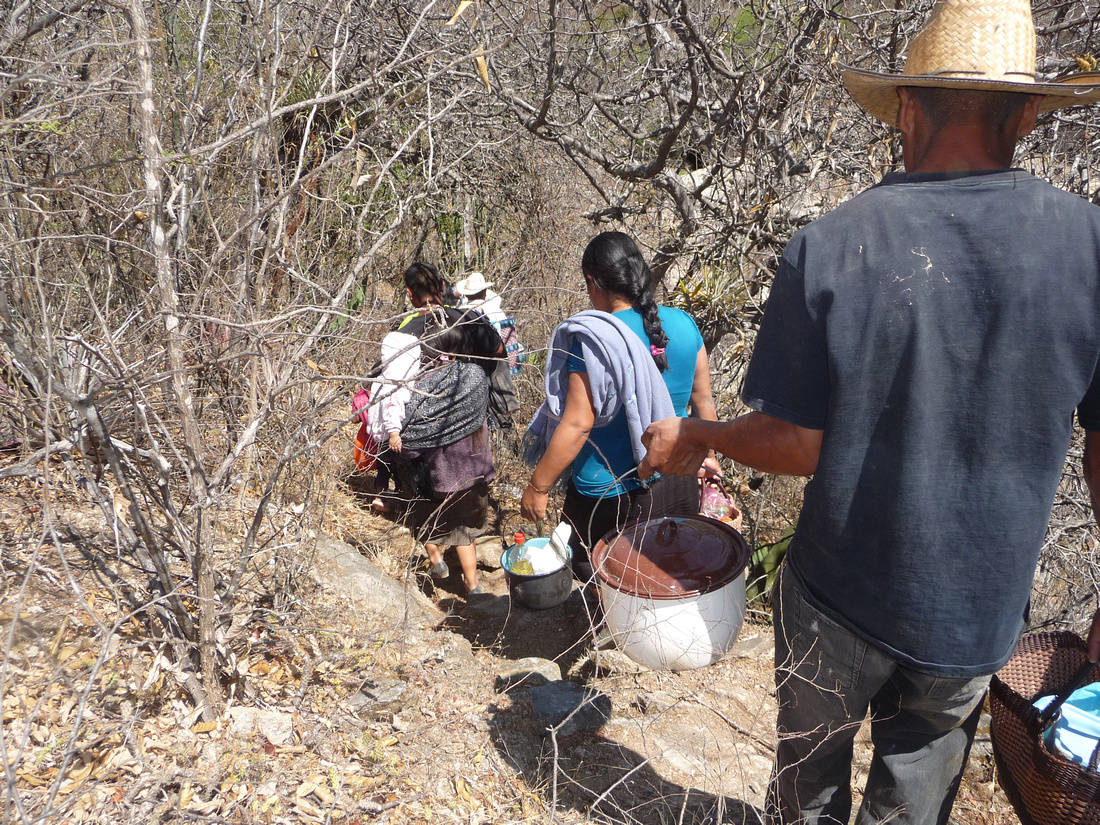
I carried the cookies and cups!
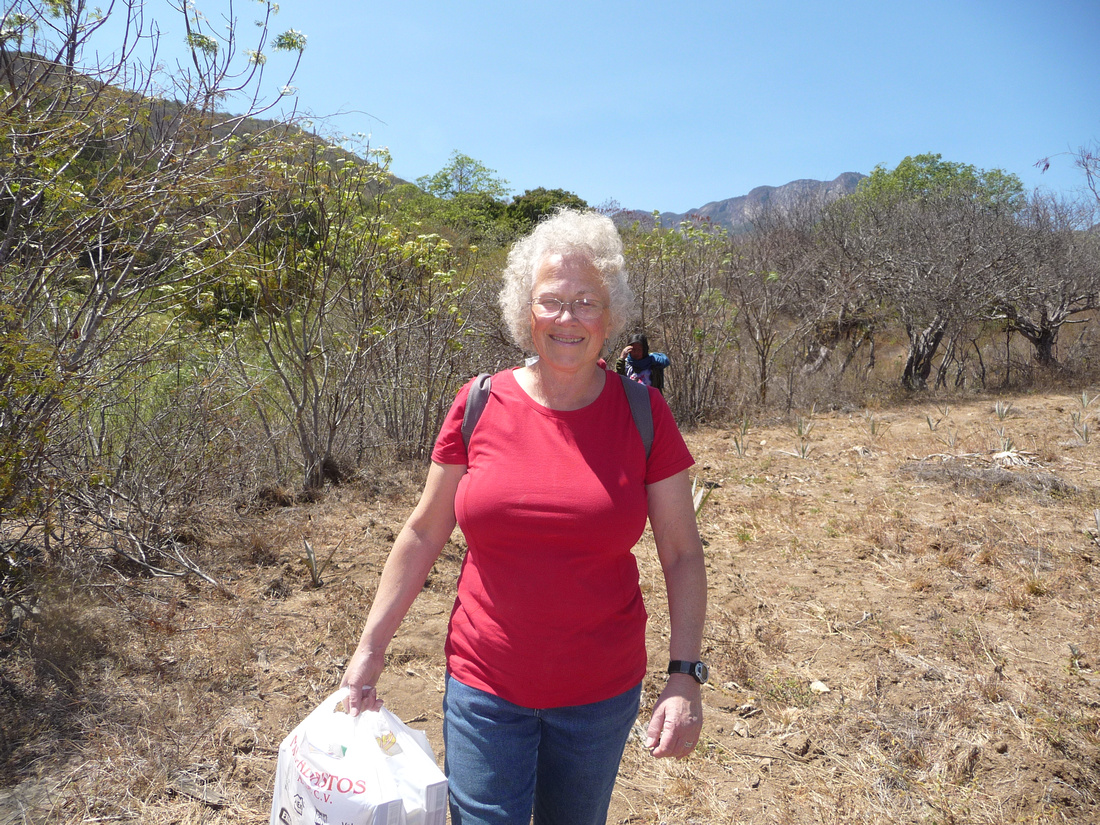
The terrain was not difficult here and we got to enjoy the plants and trees.
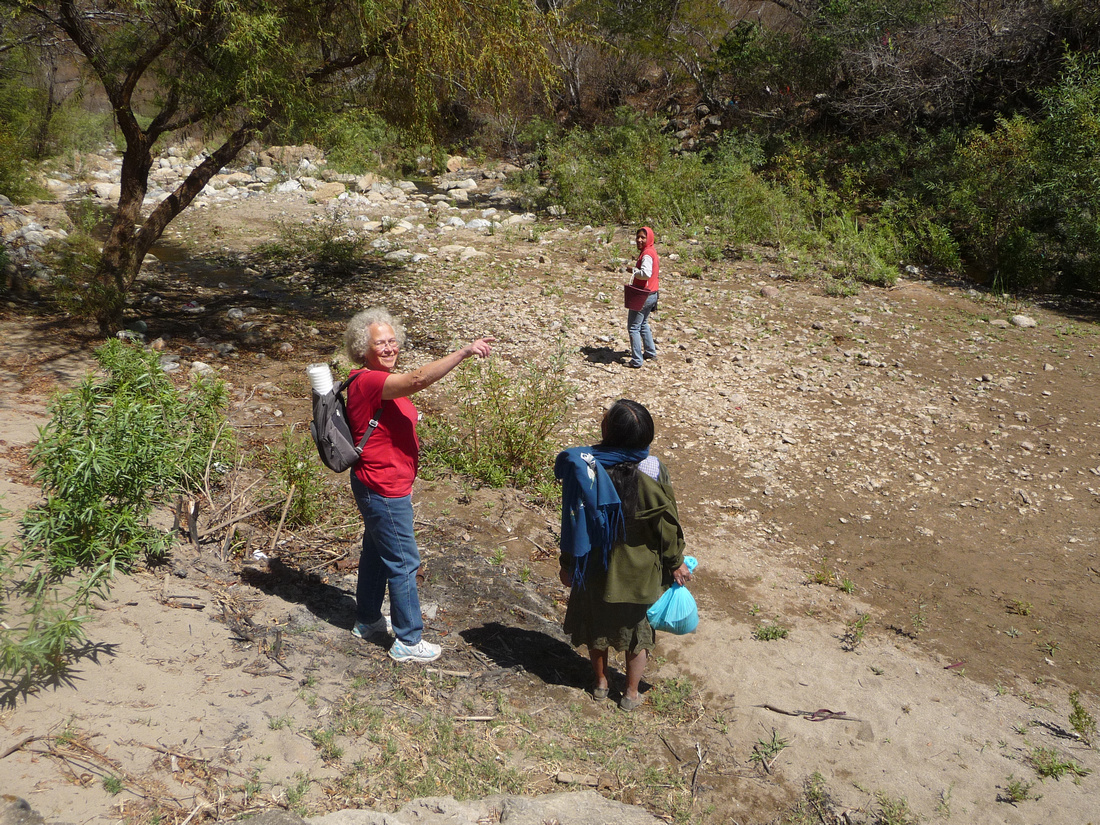
Here, Epifano's daughter, Beatriz, is helping me across the stream. Beatriz was very attentive and made sure that I was safe.
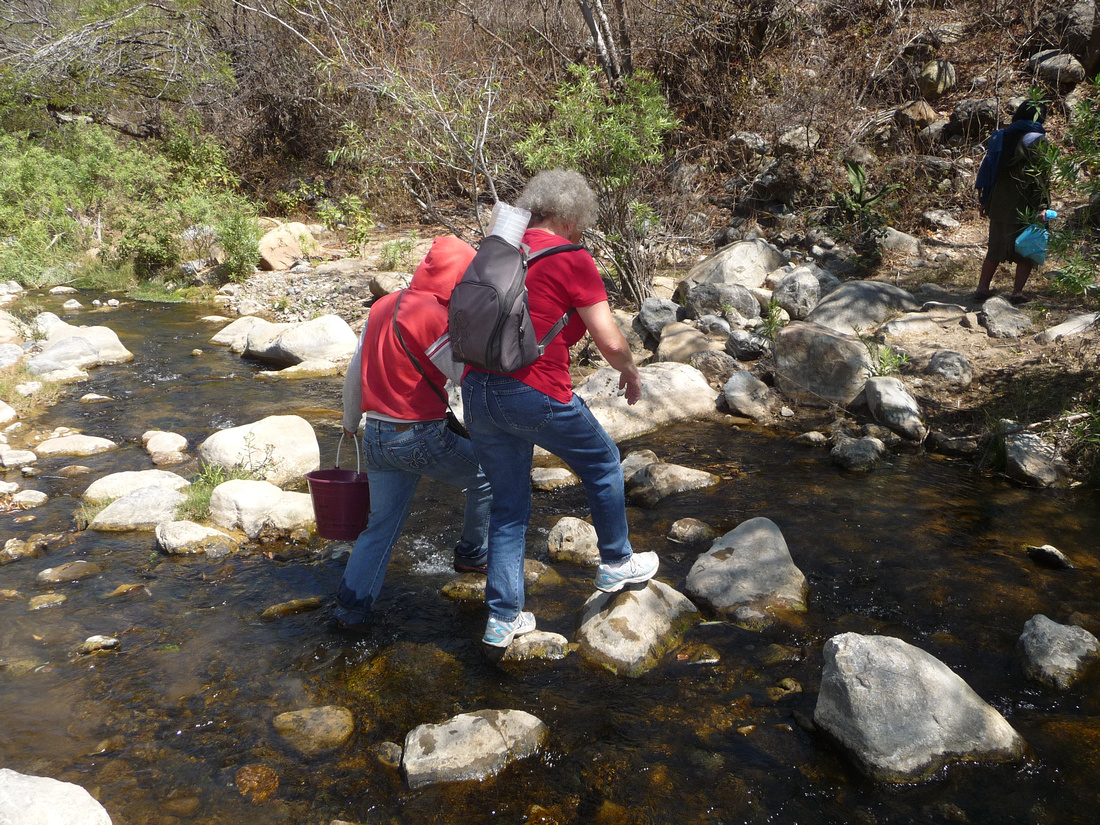
These are the beginnings of some of the unusual rock formations. These rocks look like they have been welded or cemented together. Scientists believe they are the result of fallout from a massive volcanic eruption in Mexico City thousands of years ago.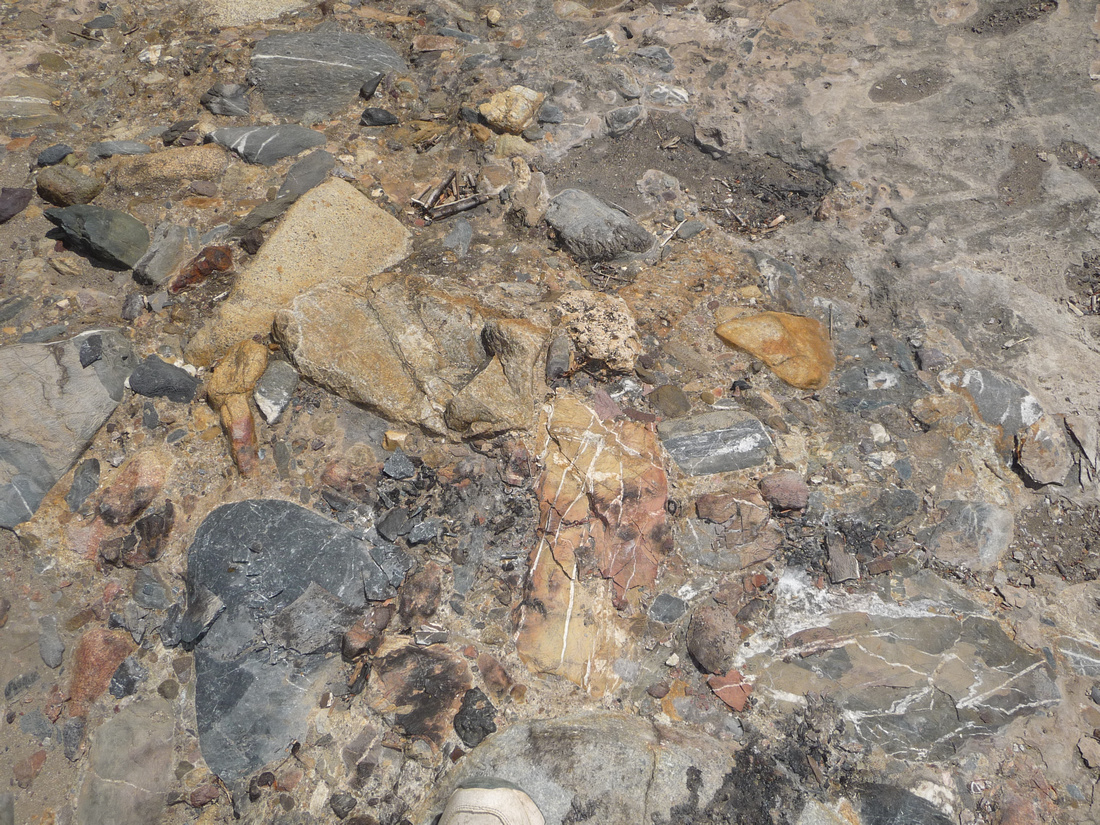
Here is the first glimpse I had of the canyon formed by action of the water in the river over thousands of years.
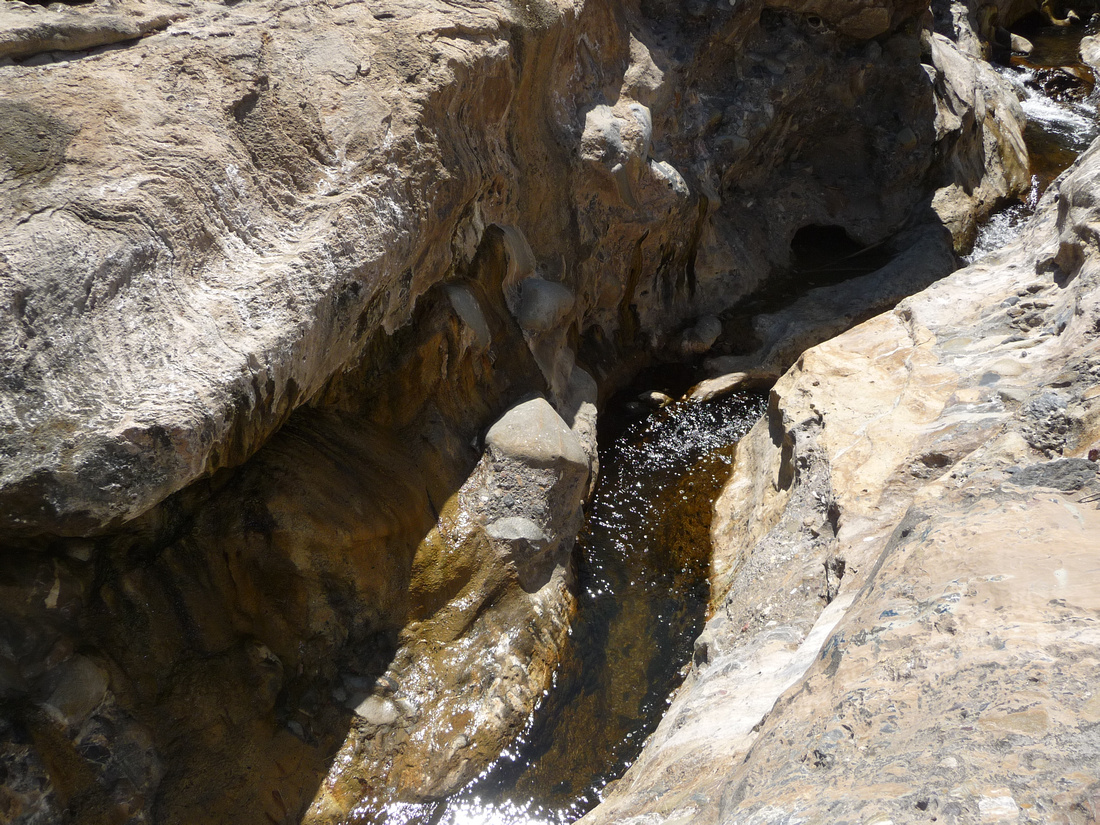
The photo below shows water continuously bubbling up from a tiny whole in the rocks. In some places the water is warm.
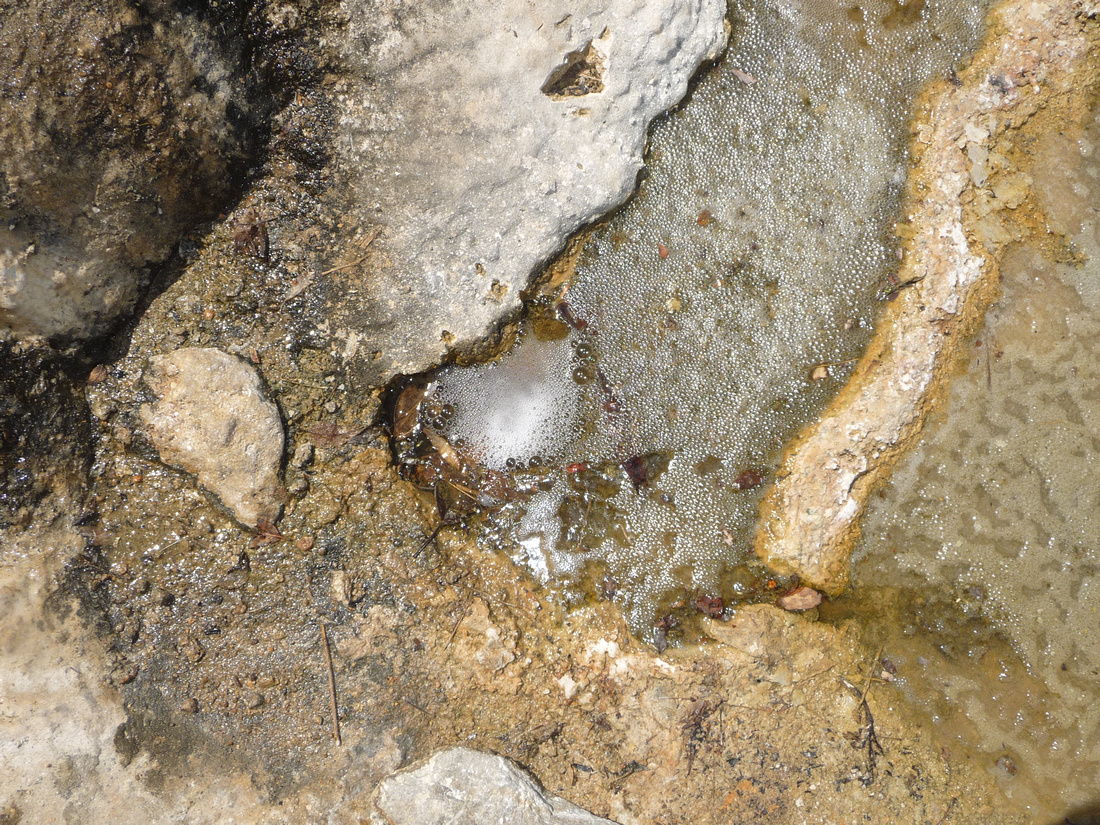
The large leafed plant at the top of this photo is a variety of maguey called tobalah. Mexcal is also made from this type.
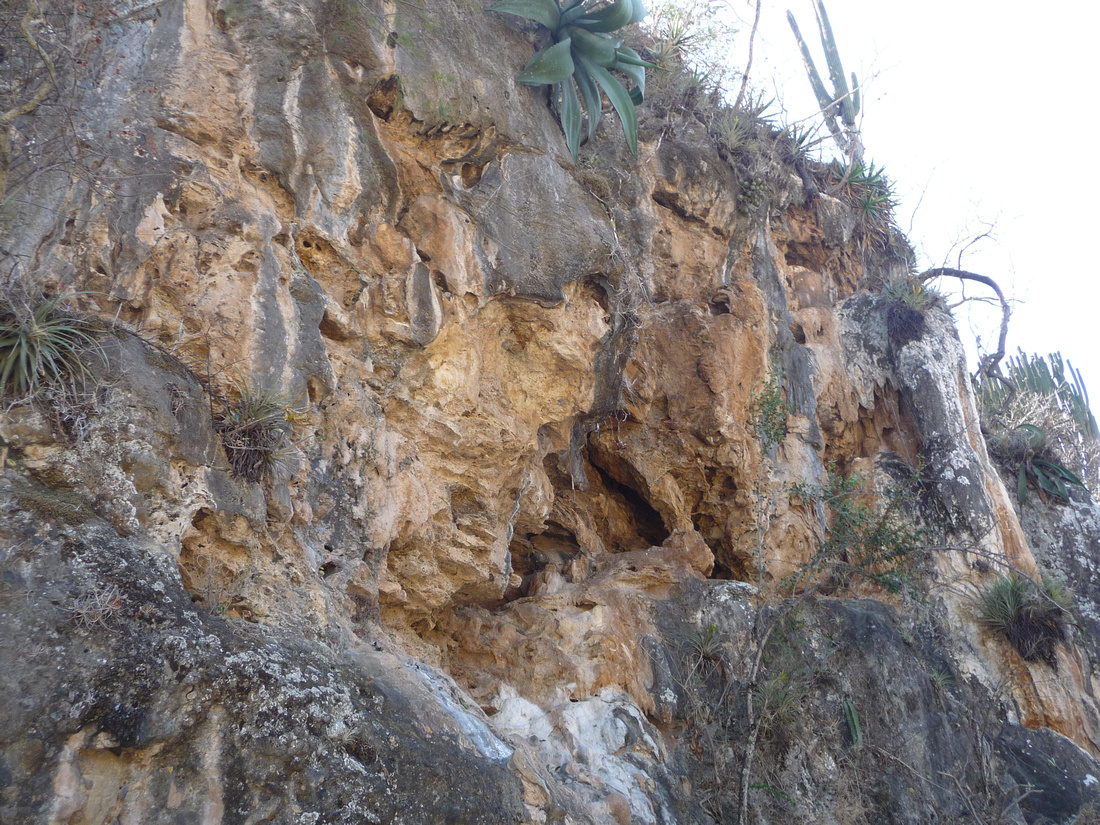
Jacobo's finger gives a perspective of the size of these rocks which have been formed together by pressure.
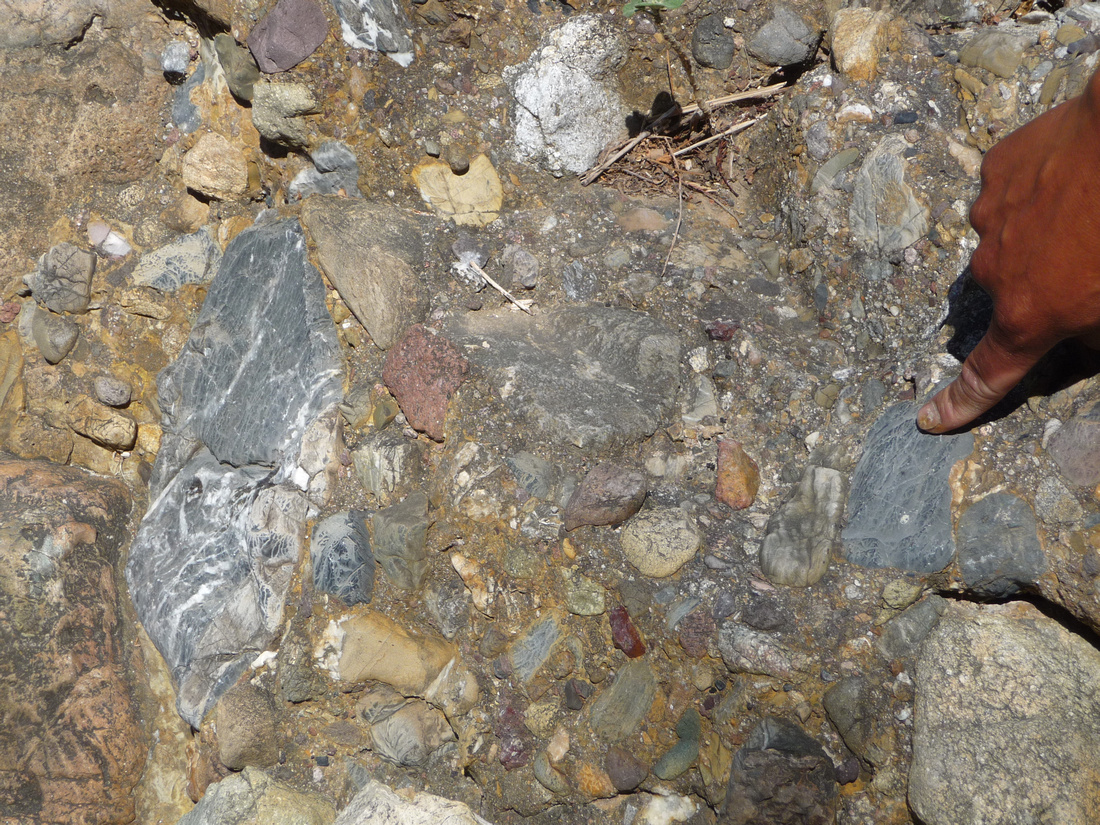
This green covering has been formed by minerals deposited on the rocks.
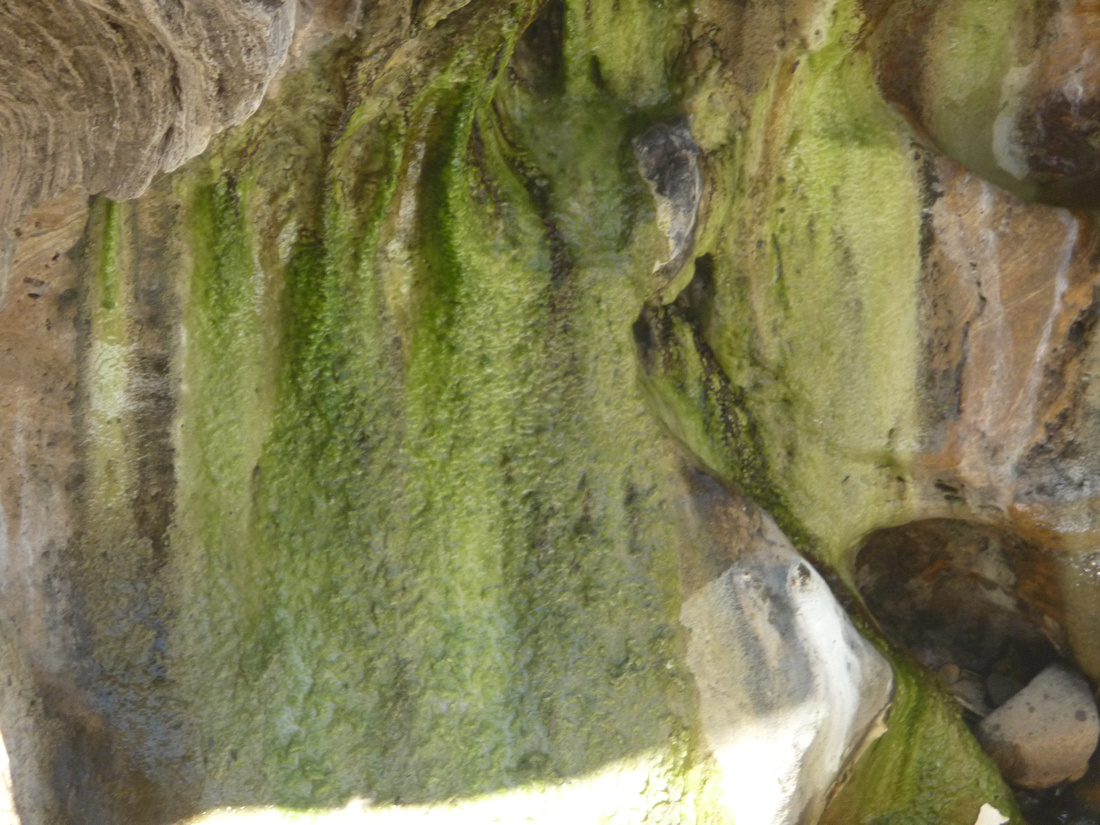
Here is another example of the action of water upon the rocks forming crevices and unusual shapes.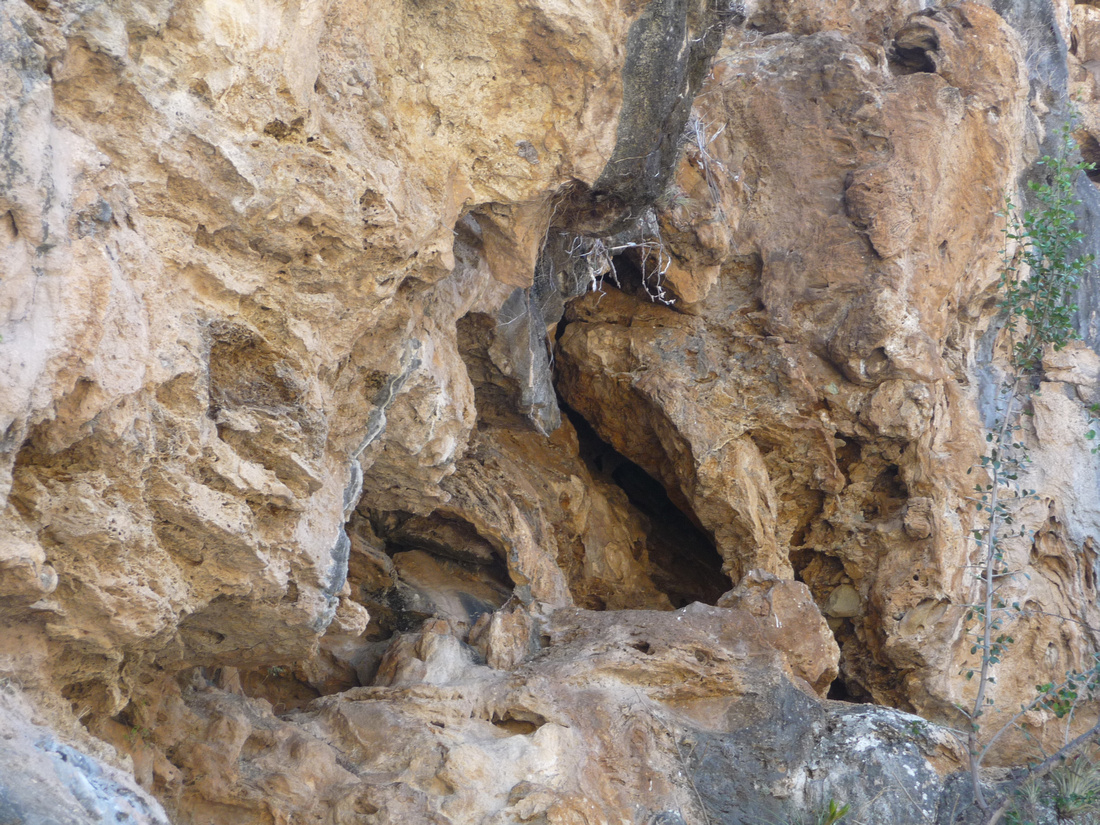
At this point the chasm is much deeper, slippery in spots, and a little dangerous. Everette found a stick for me to use to negotiate the river.
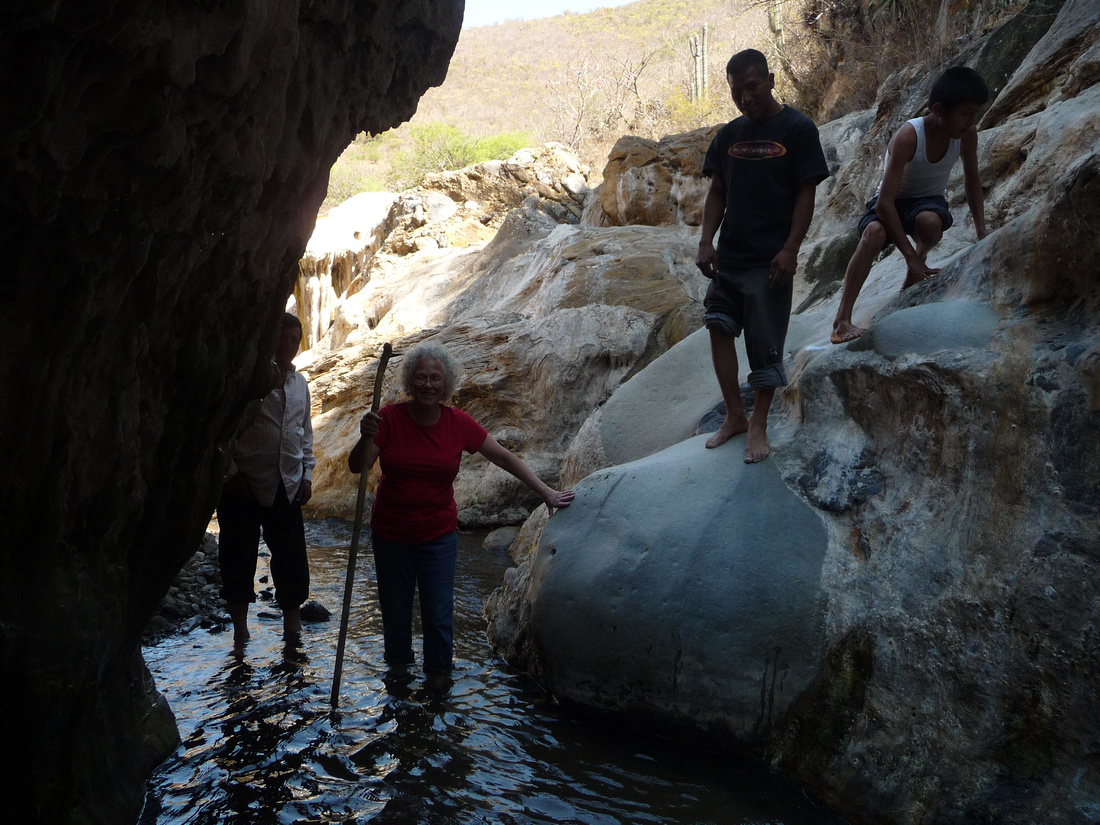
Mineral and rock formations create the walls and our passage was slow but very interesting. The shapes of the rocks are so varied. Some are rounded, some cylindrical, and some sharp.
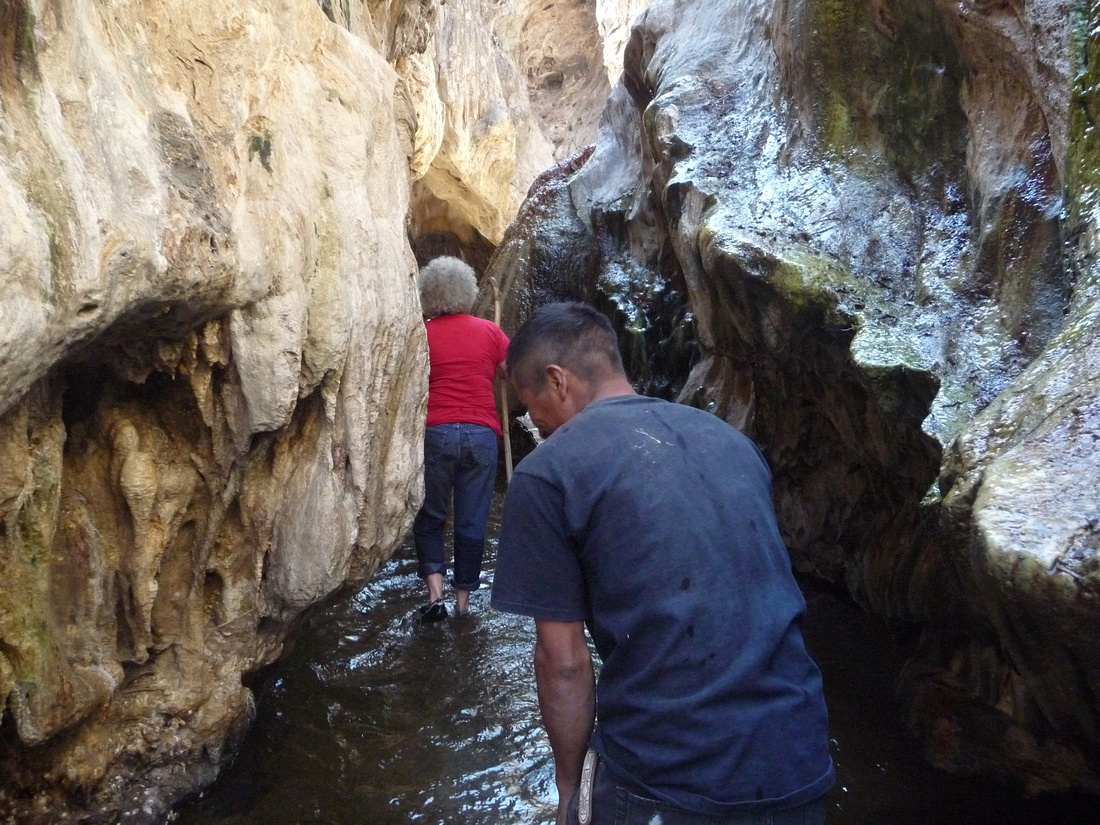
Here is Epifano, the father of this gang and a friend of ours since 1994.
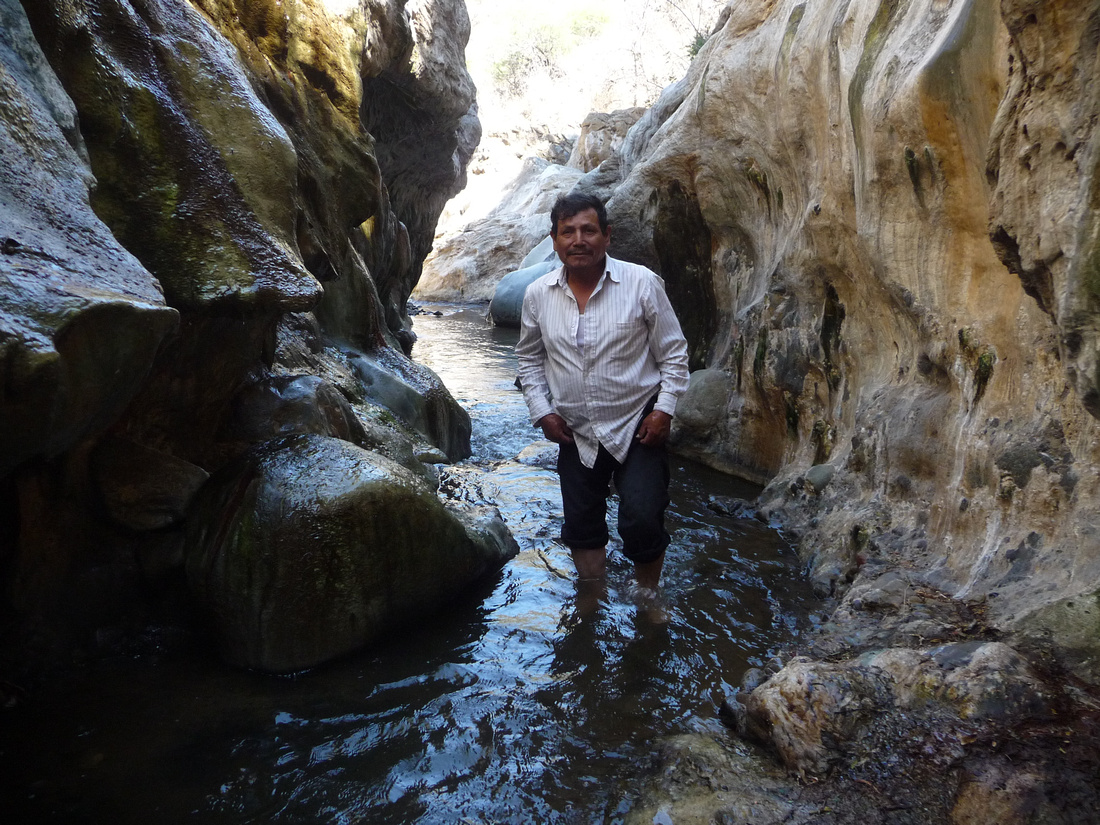
The mineral deposits and rock formations are stupendous but unfortunately the camera didn't due justice to the colors due to the low light.
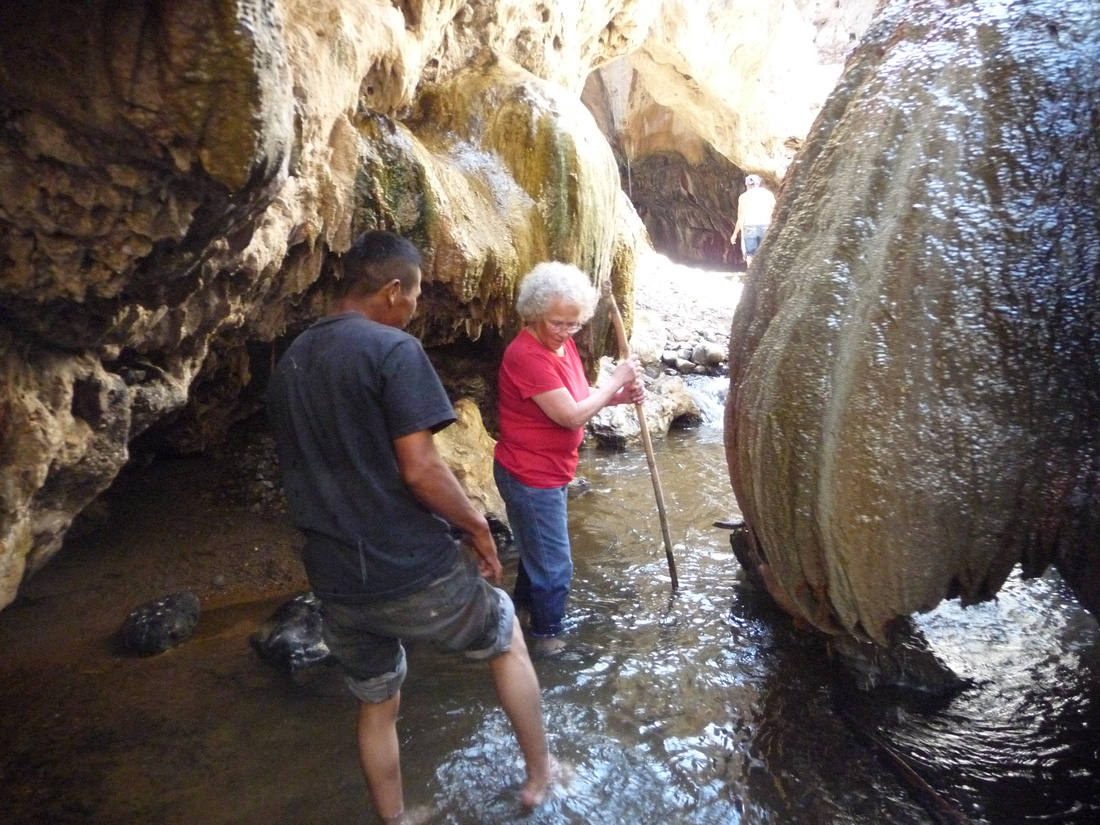
The mineral deposits come in a variety of rich colors which are determined by the mineral content. The reddish color suggests the presence of iron. They are still being actively formed by the water running over the rocks.
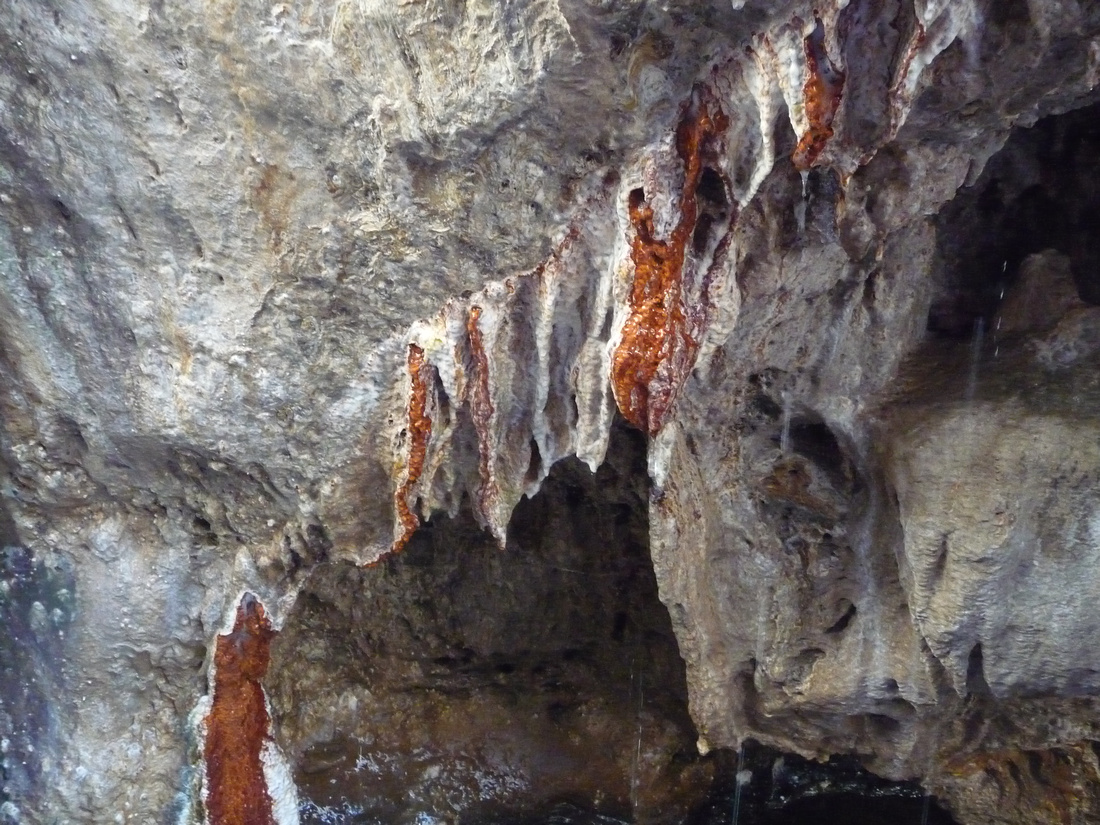
Here is an excellent view of this river canyon.
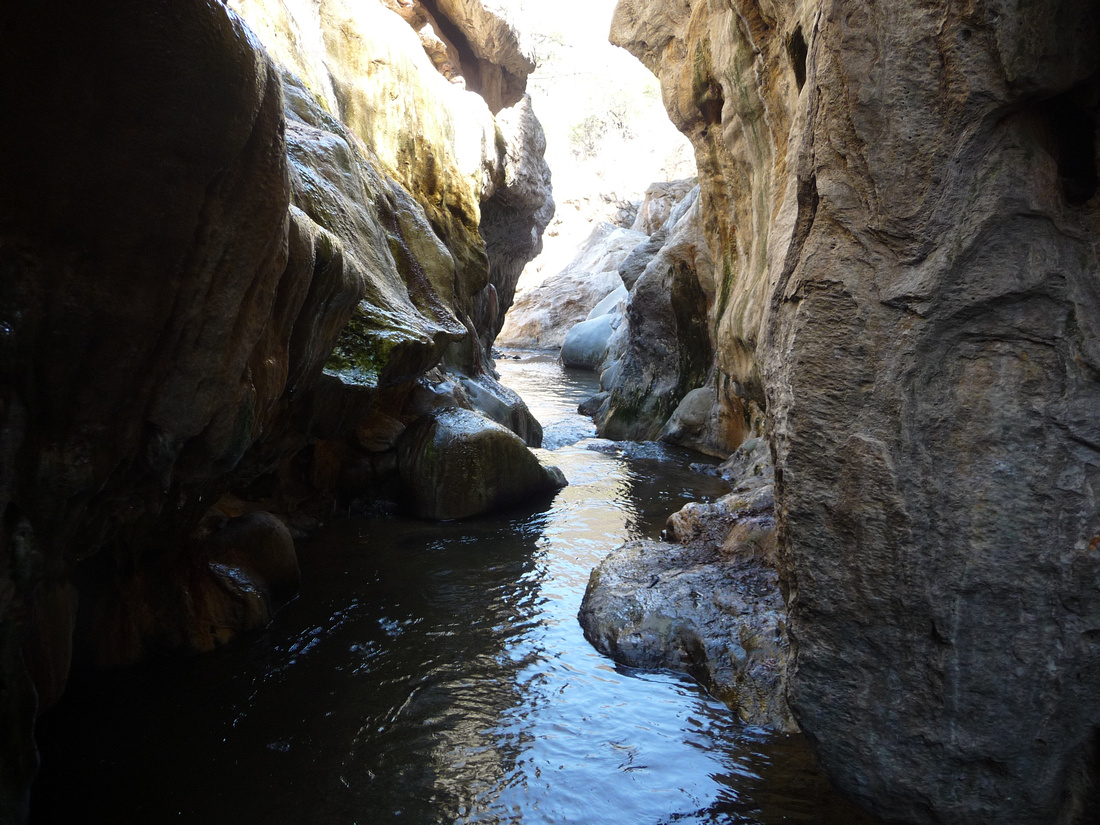
Wish we had a geologist with us to explain the different types of rocks, deposits, and formations.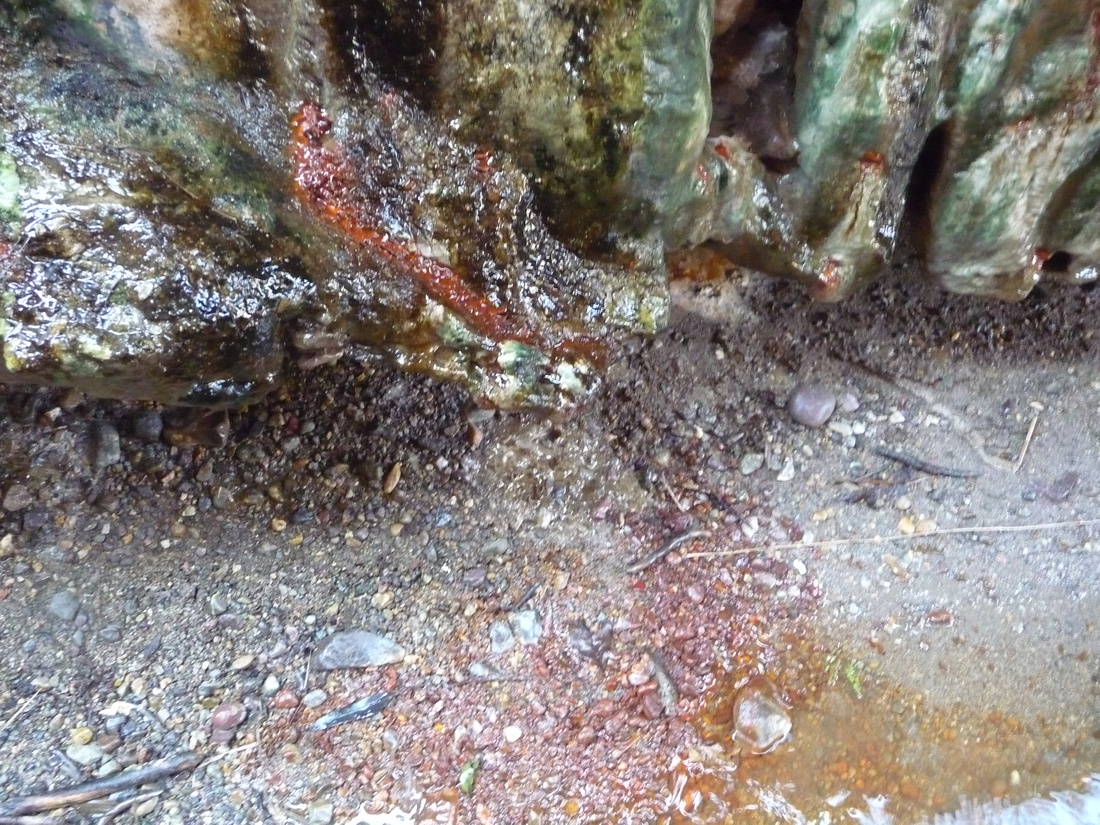
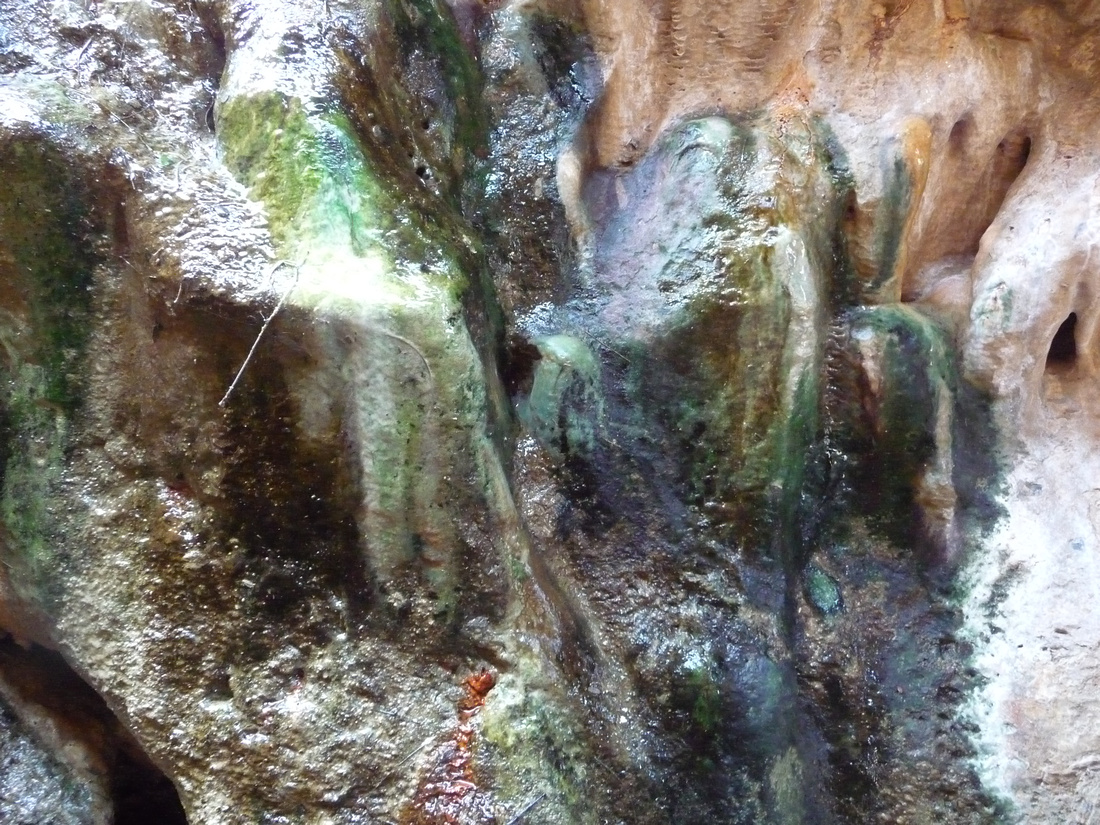
Here is the entrance to the swimming spot with the waterfall at the end. In some spots on the walls the water streaming out is warm. If you are cold from swimming in the chilly river, you can press yourself up against one of these spots to warm up.
The shape of this swimming spot is round and closed in with the waterfall at the end. The water is quite chilly, but no one could resist diving in including two of Epifano's daughters and me. Next time I will brings shorts - my jeans were wet the rest of the day.

The next two pictures show more evidence of the extreme pressure exerted by the volcanic ash. It's amazing since Mexico City is at least 250 miles from here.


Here are some of the guys enjoying the water and a good view of the waterfall.
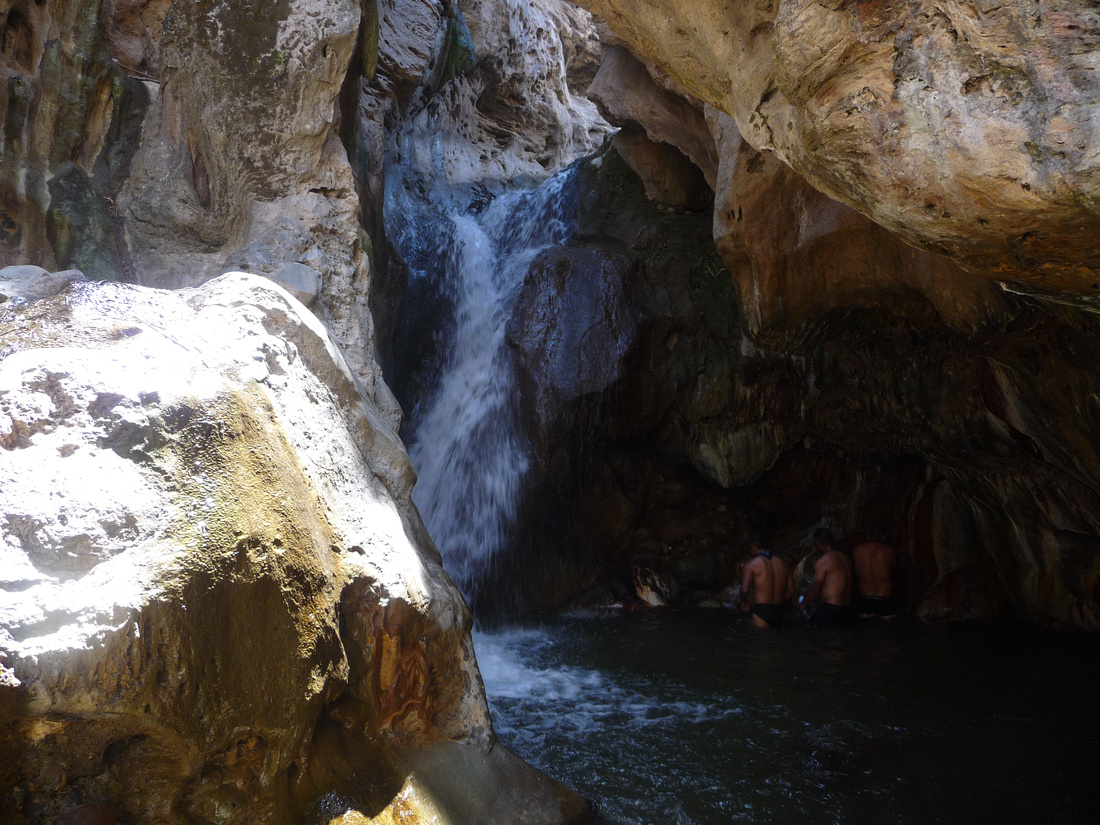
The pattern and variety of colors here is just amazing. This is like contemporary art but it is a natural formation.
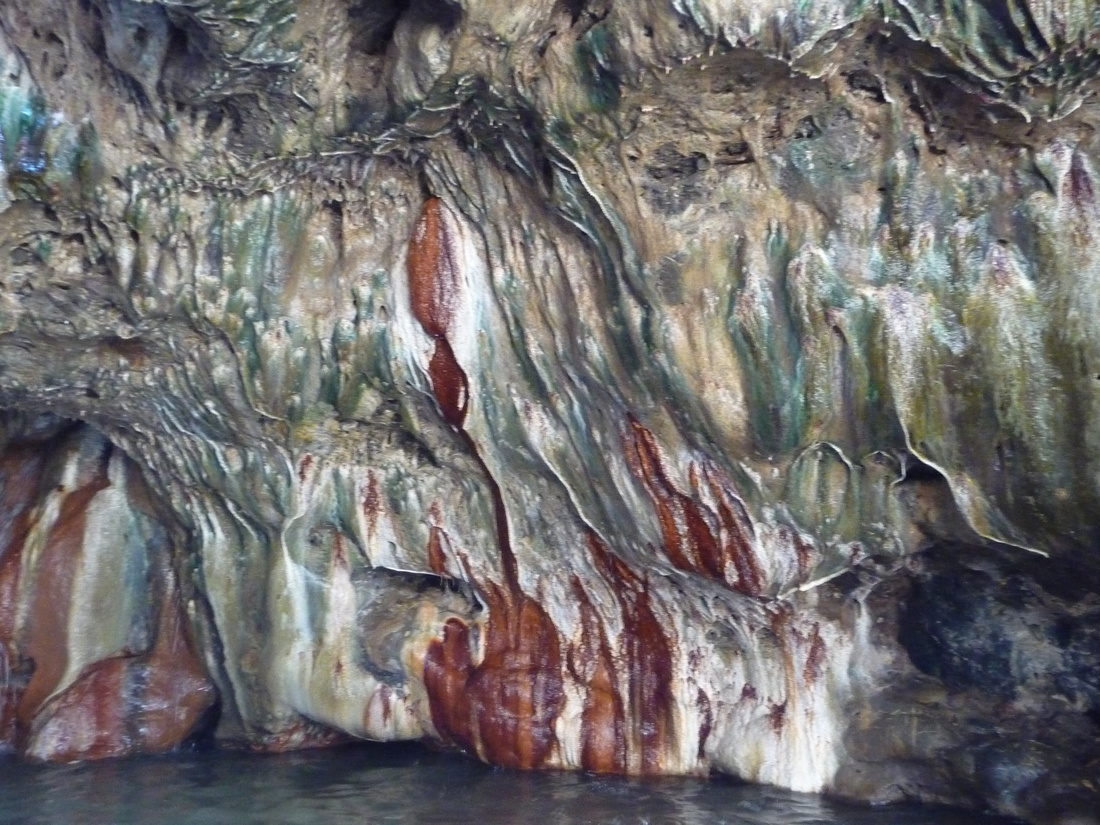





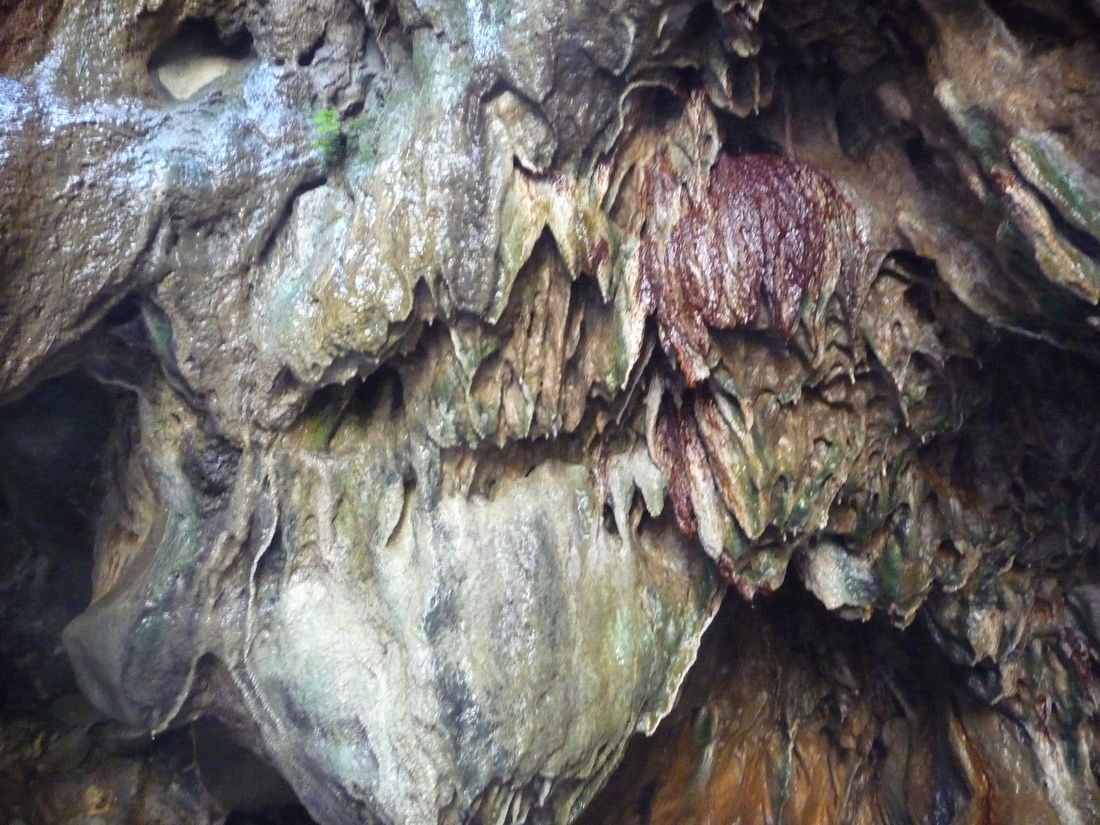
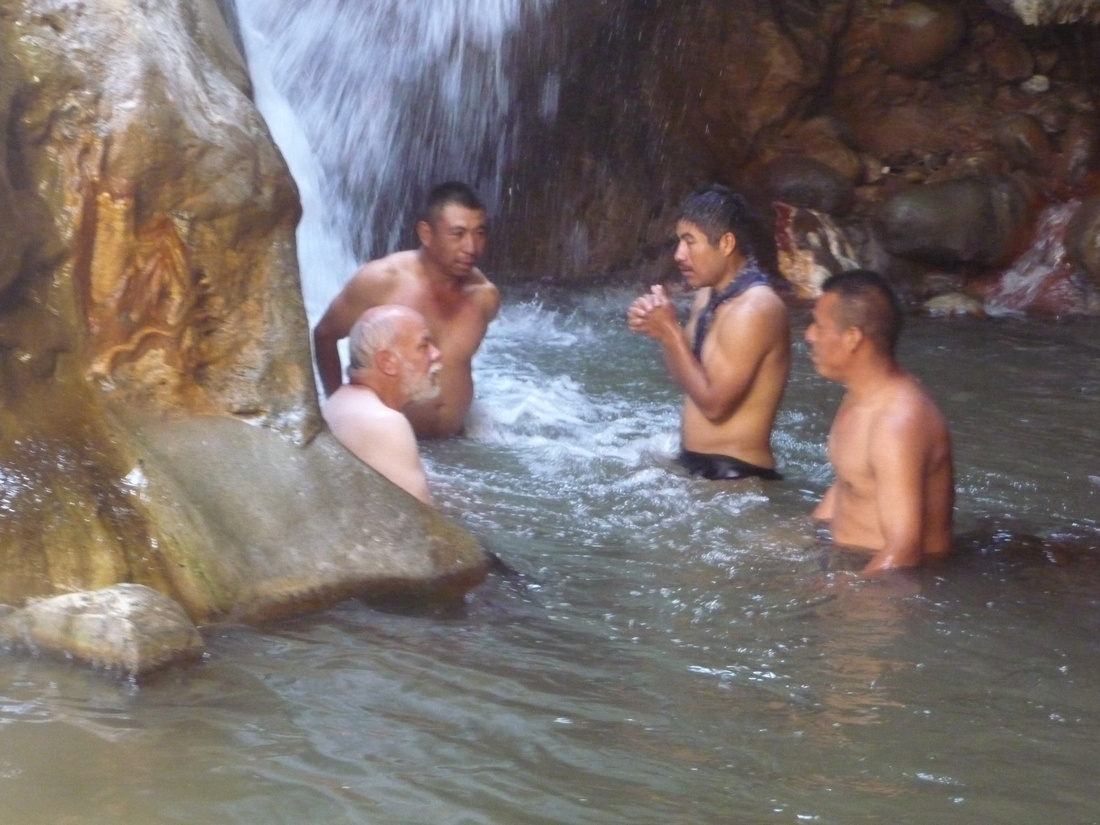 Ofelia and Beatriz decided to join the fun.
Ofelia and Beatriz decided to join the fun.
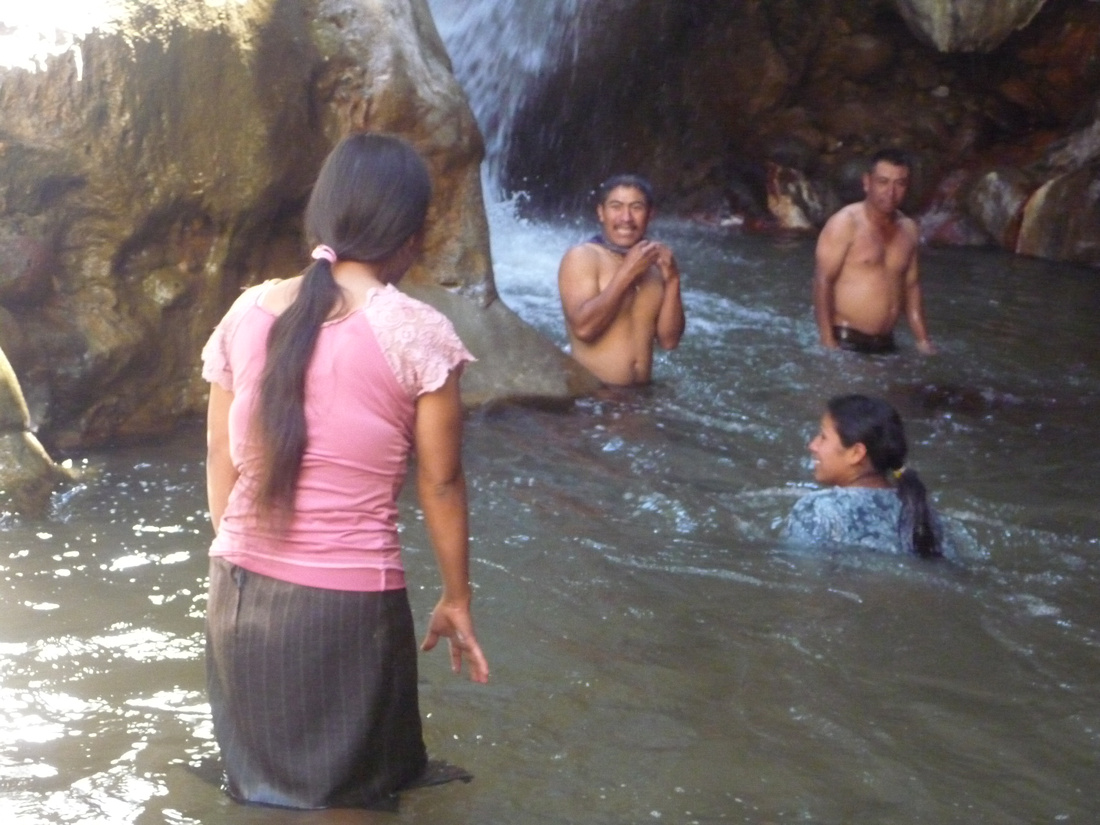
When we returned from our swimming adventure, lunch was served. The women had prepared chicken and rice at home and everyone had carried it to this spot. We also enjoyed salsa, refrescos, fruit, and tortillas. The little charcoal stove was used to reheat the chicken and tortillas.
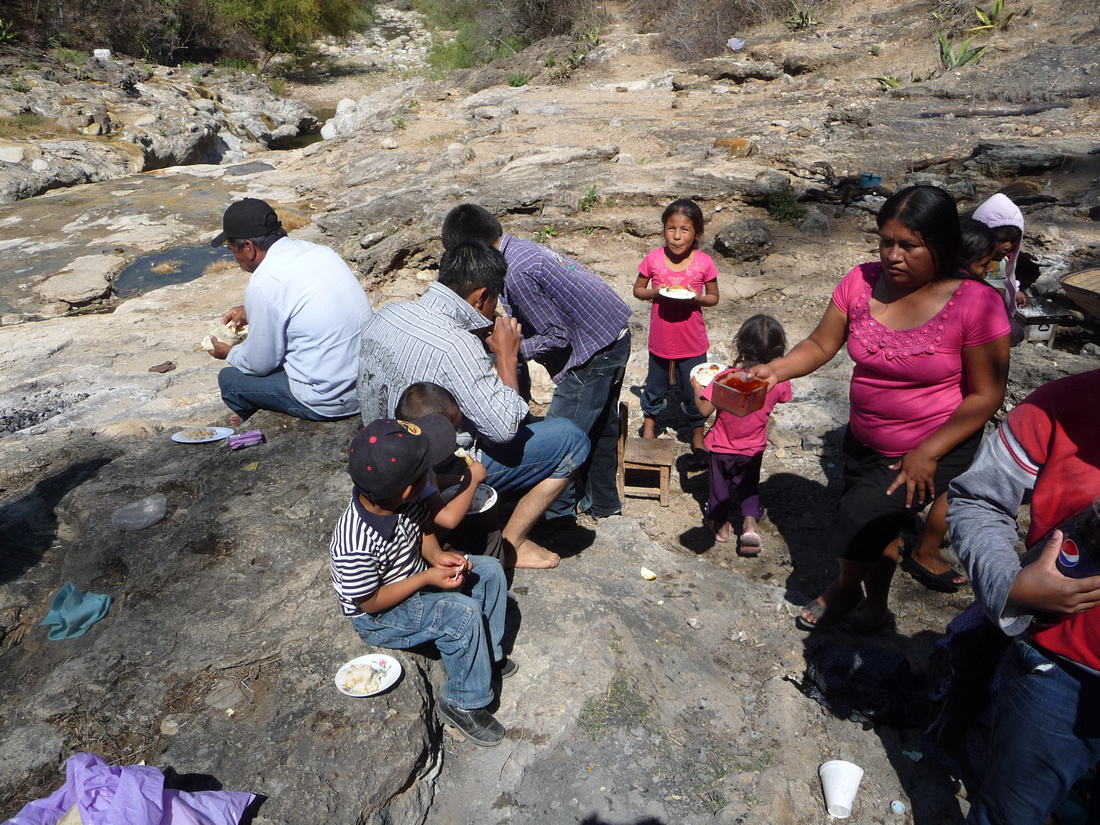
Everyone found a spot on the rocks to sit and enjoy the meal.
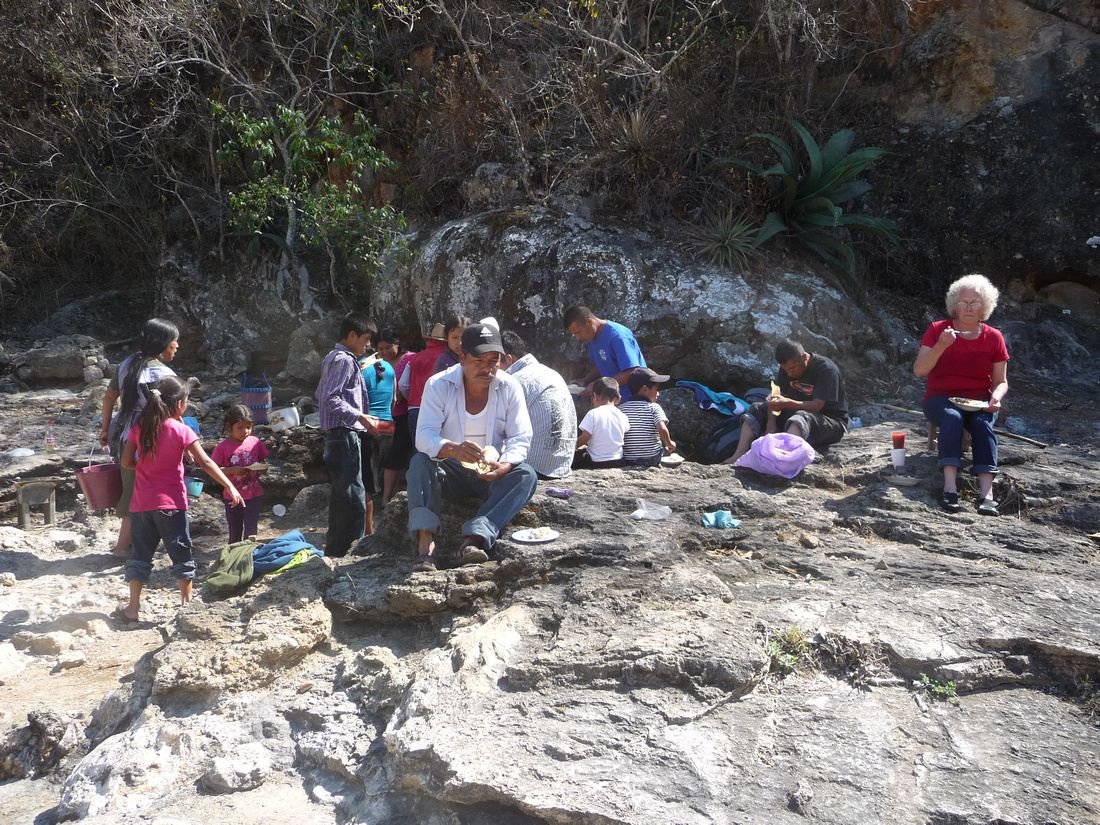
Here we found a couple more small holes that allowed the water to bubble up to the surface.
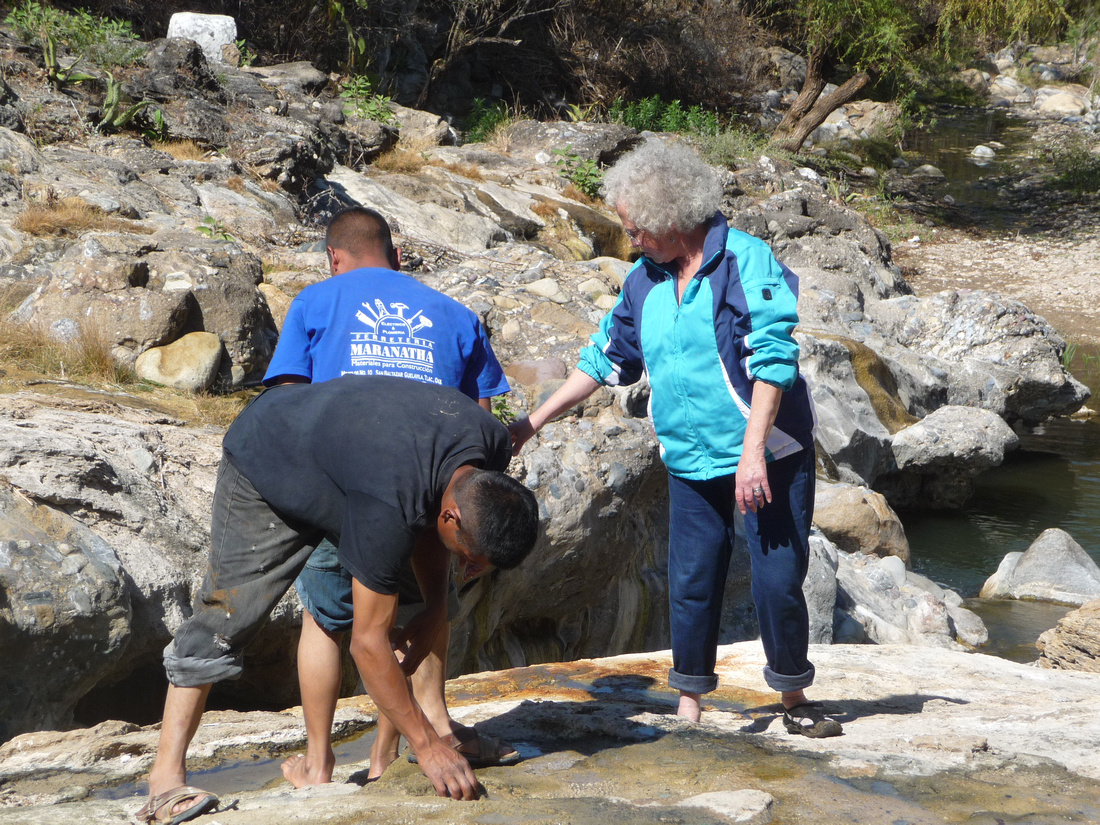
Here are two more examples of rocks that appear welded together.
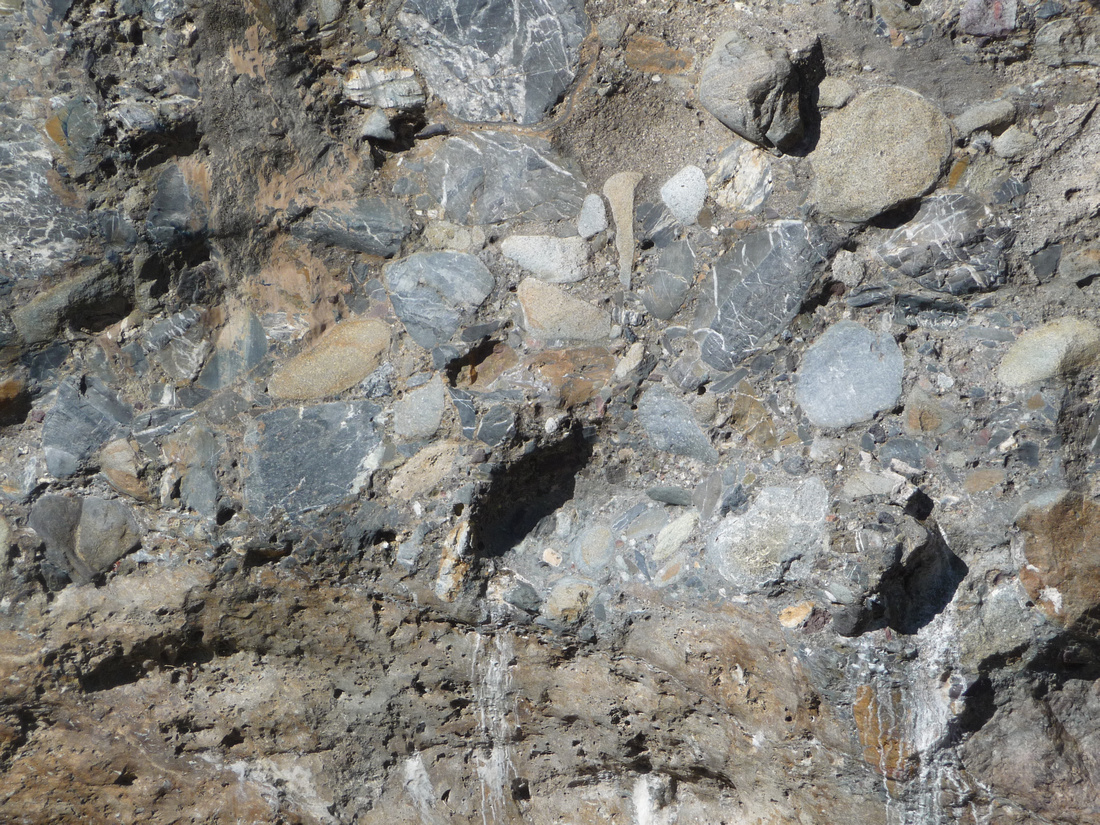
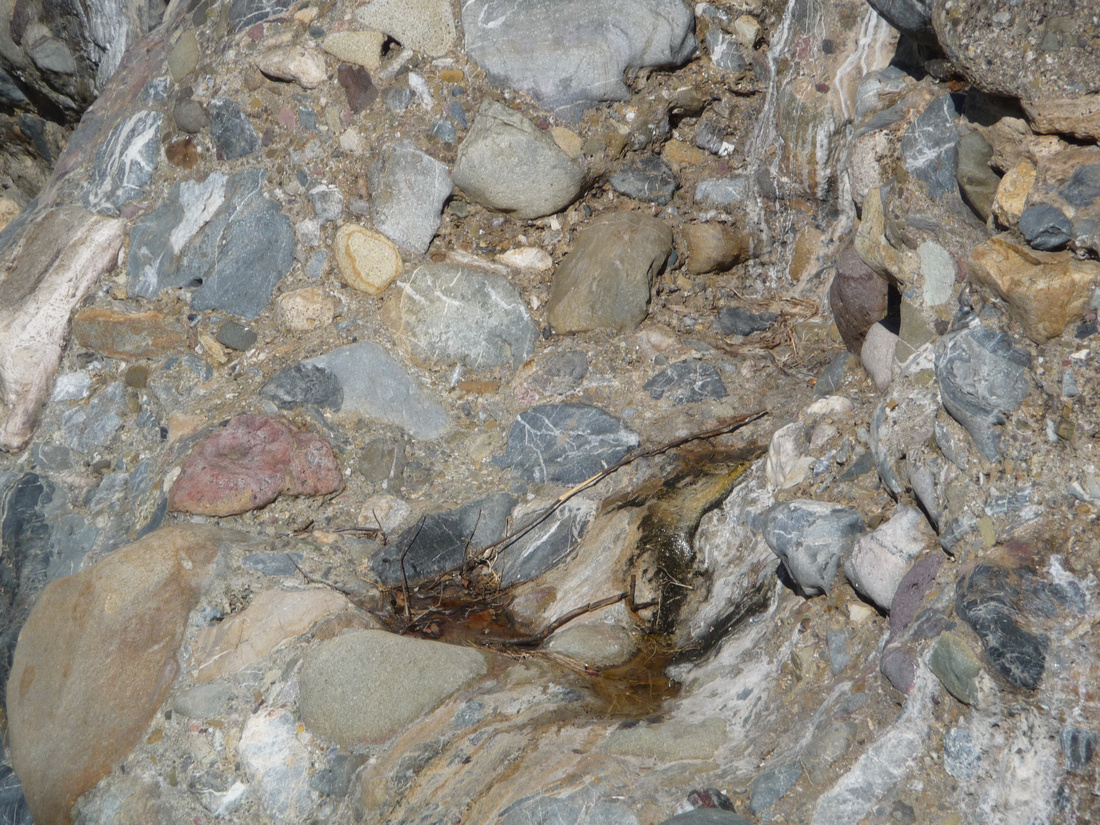
This is our last look at the canyon as we leave.
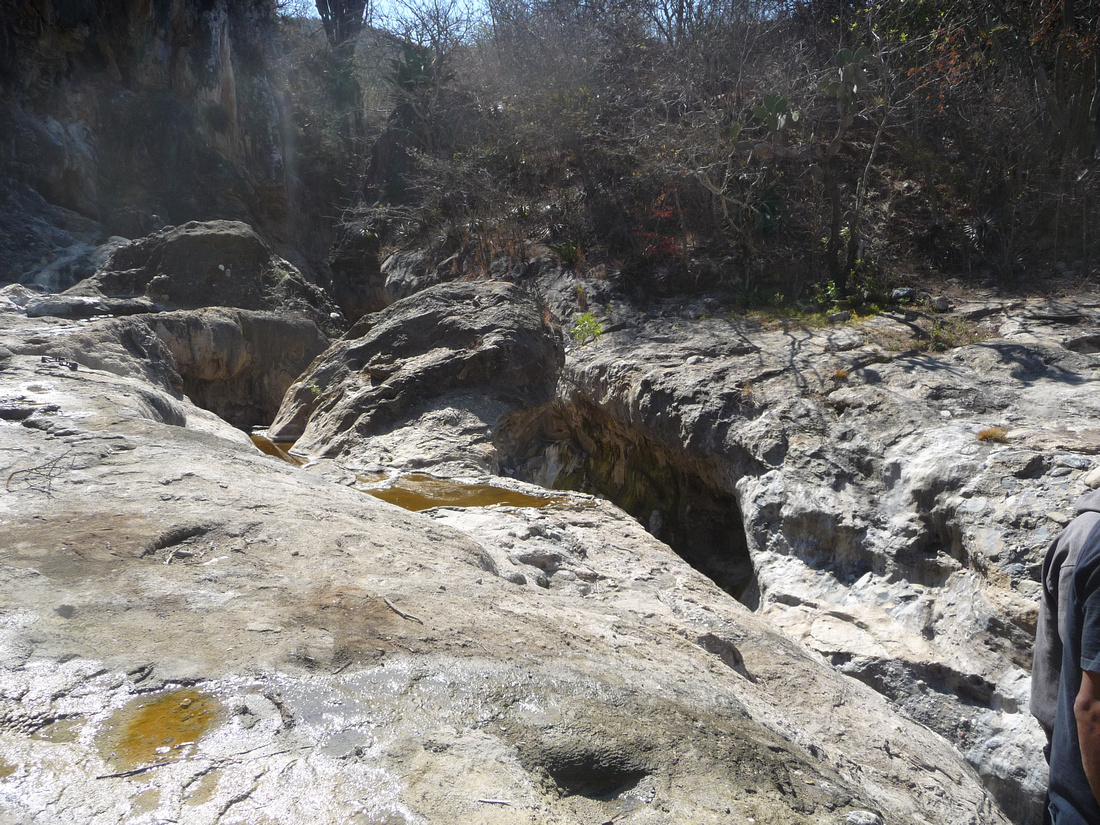
From this area we could look north east and see the back of Hieve al Agua with its famous mineral formations.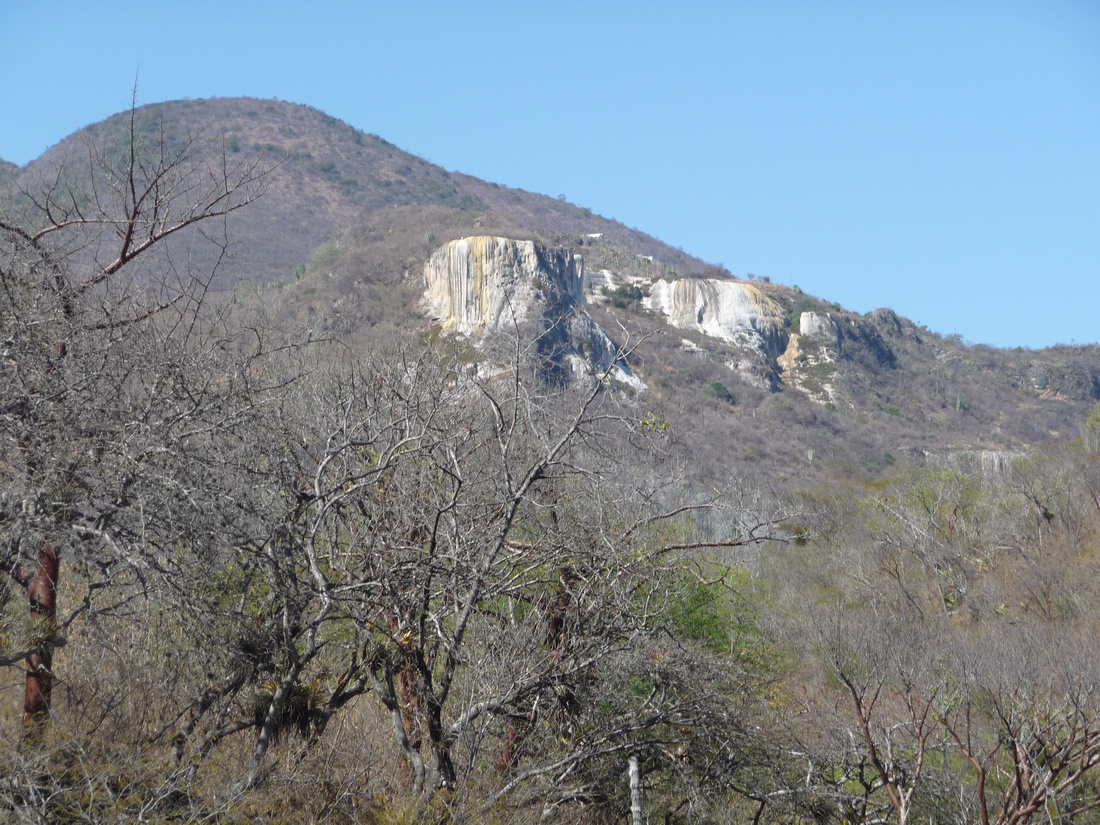
We're on our way back to the truck after a very pleasant Sunday afternoon.
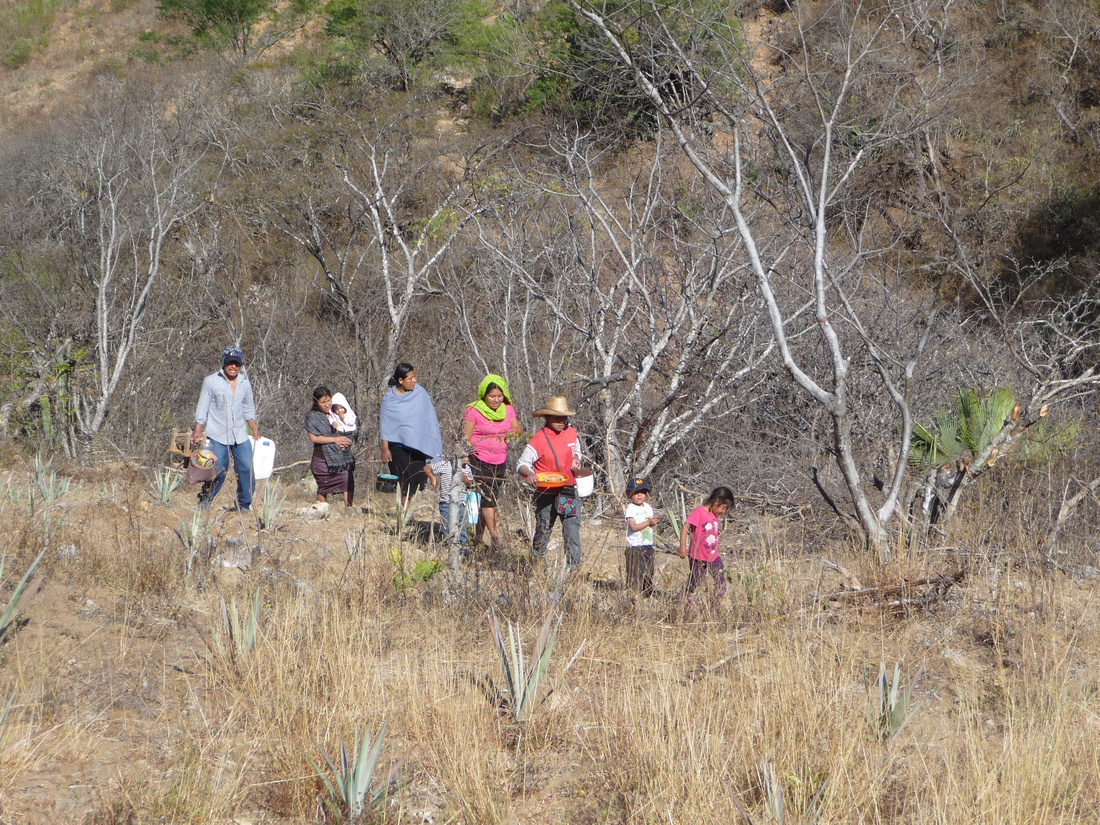
When we arrived here in Oaxaca a well had been started for us. It is located where the green dot is. We ran into a few problems with it. It's so far from the house (about two hundred meters); it is in an old riverbed so the likely hood of contamination in the future is possible; the water has a slightly salty taste to it; and while there is sufficient water to use at home, there is not enough to water the crops we would like to plant. The concrete rings had been set into place which meant if we wanted to dig further the rings had to come out to avoid a possible collapse. The rings weigh about six hundred pounds a piece. Installing them or removing them is dangerous and time consuming. On top of that we had no assurance that we would hit a more substantial pocket of water. So we changed locations to the red dot. The photo with the dots was taken back in winter 2004 before work began on the house.
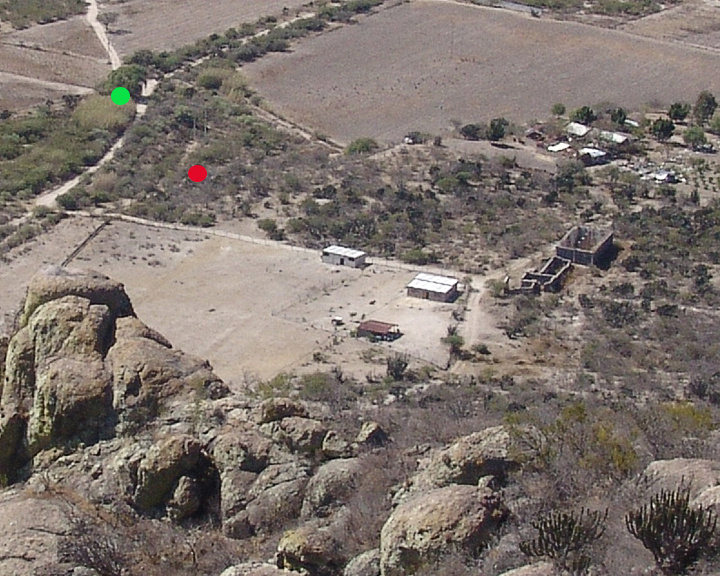
Before the work began on the green dot well, an attempt had been made to dig a well at the red dot but a large rock of very hard sandstone was encountered. After days of trying to get past the rock the decision was made to abandon the well and move to the area with the green dot. With new workers I decided to return to the red dot. The hard rock was located about two meters down. The rain had caused the partially dug well to fill with sand consequently the first day of work entailed removing the sand.
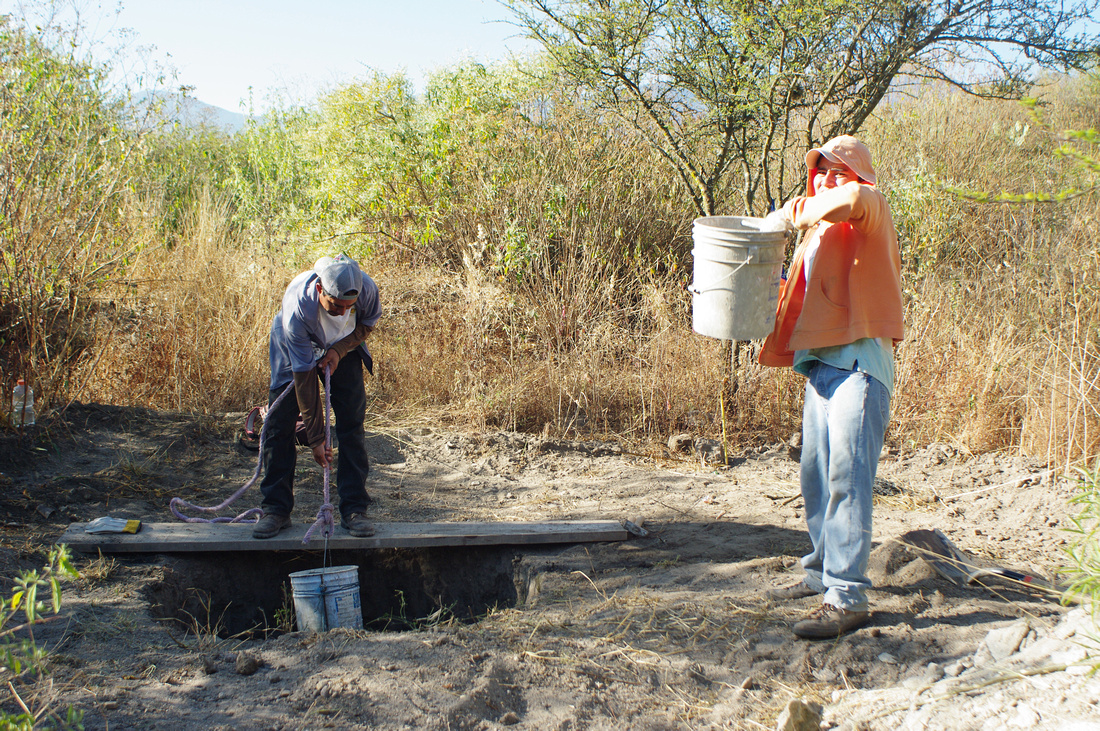 By day two the rock was exposed and the gruling work of cutting past the rock began. Sledge hammers, chisels, and a long bar with a point were used to cut through the rock. Many times a chisel would be driven completely into the rock without any results so a second chisel was driven in next to the first. Often a third chisel was needed just to break off a small piece of the rock. On an earlier post (Pizcando Mazorca) I commented on the back breaking job of harvesting corn. Trying to cut through rock far surpasses picking corn in difficulty. Basically the job entails swinging an eight pound sledge hammer all day. Turns are taken with one man in the well with the other on top hauling out the pieces with a bucket. They rotate when the day is half over.
By day two the rock was exposed and the gruling work of cutting past the rock began. Sledge hammers, chisels, and a long bar with a point were used to cut through the rock. Many times a chisel would be driven completely into the rock without any results so a second chisel was driven in next to the first. Often a third chisel was needed just to break off a small piece of the rock. On an earlier post (Pizcando Mazorca) I commented on the back breaking job of harvesting corn. Trying to cut through rock far surpasses picking corn in difficulty. Basically the job entails swinging an eight pound sledge hammer all day. Turns are taken with one man in the well with the other on top hauling out the pieces with a bucket. They rotate when the day is half over.
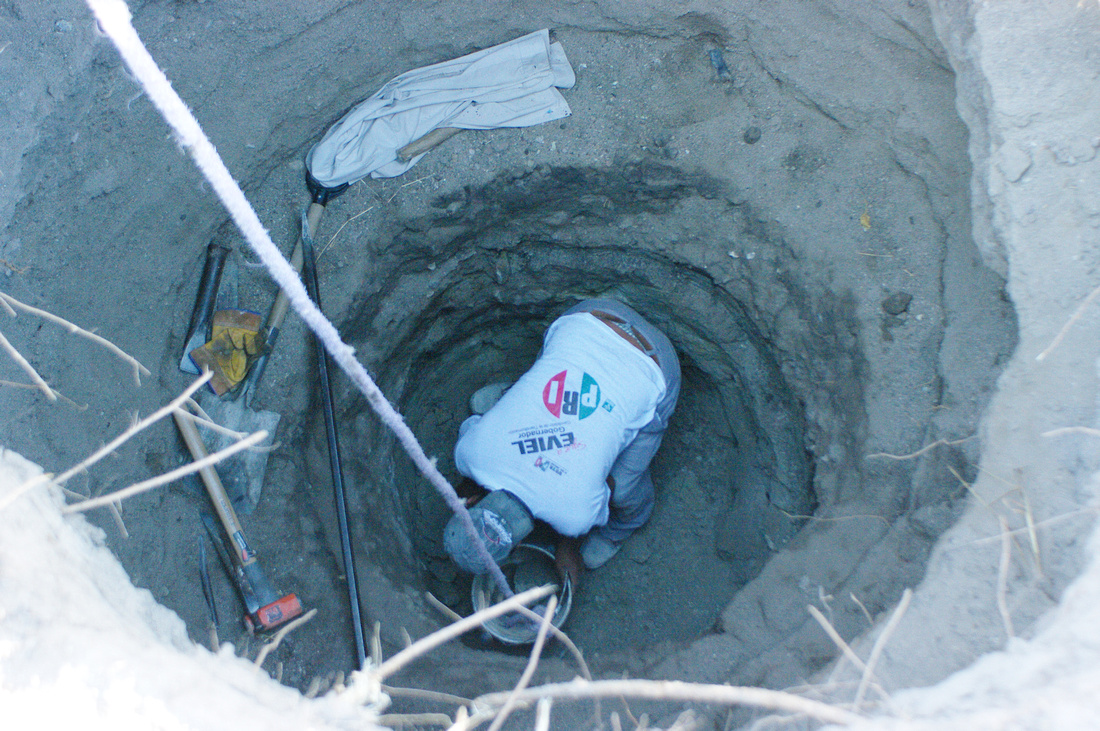
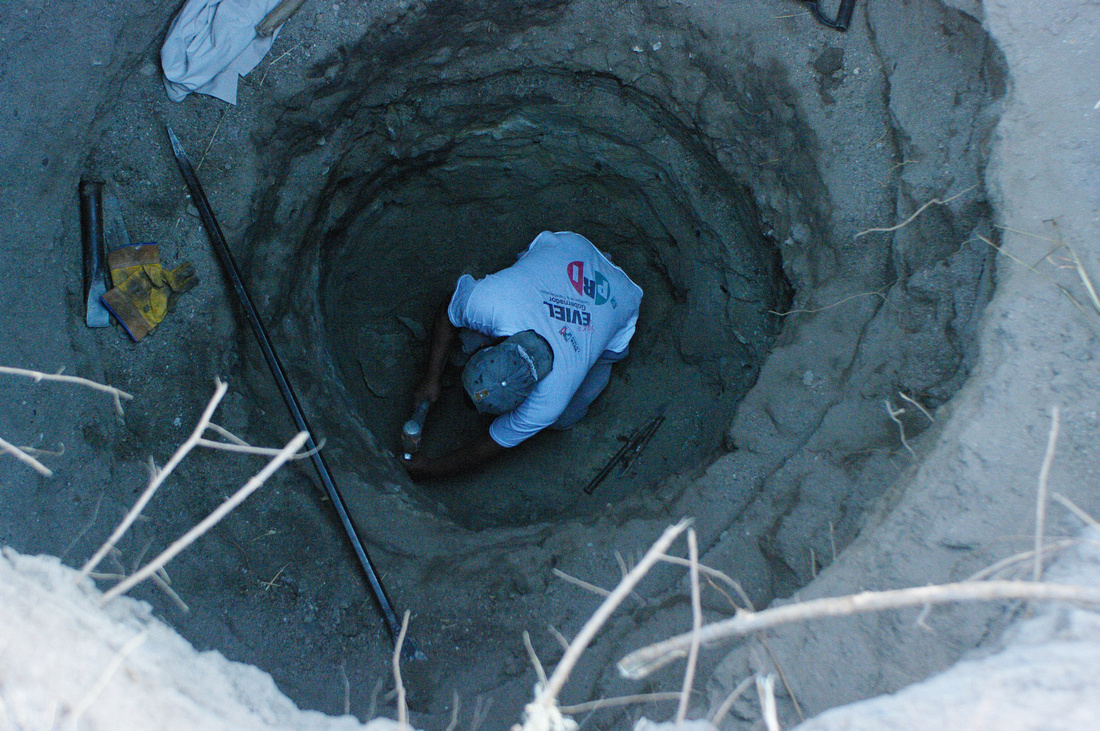
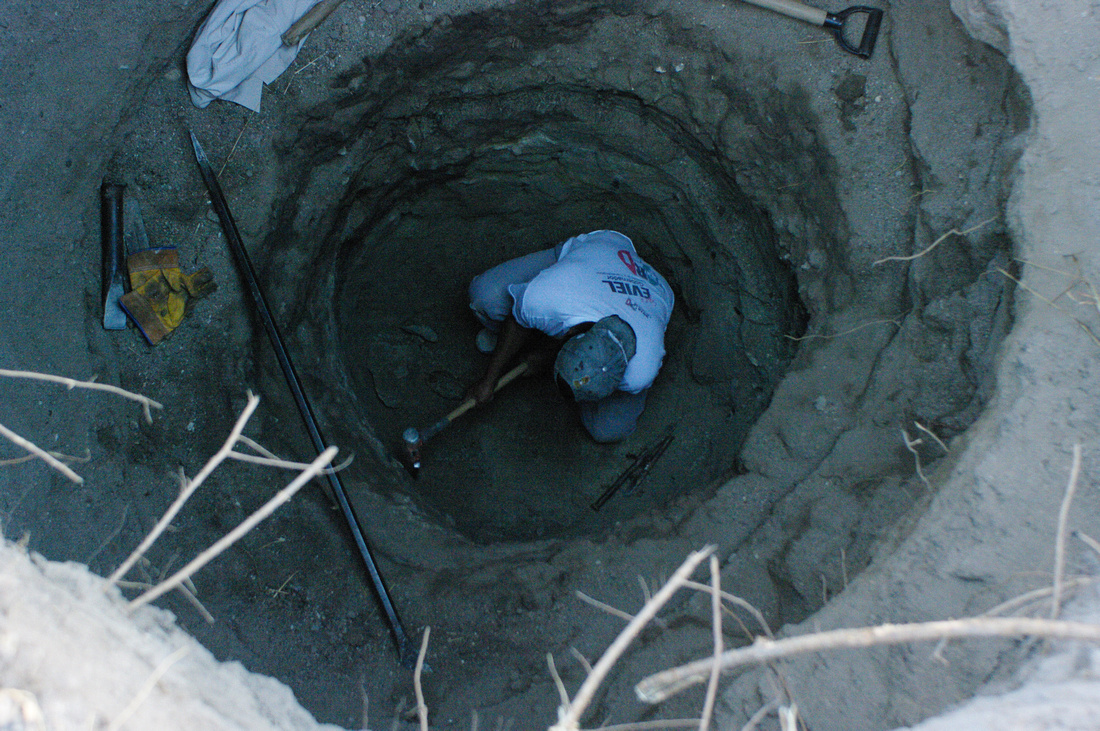
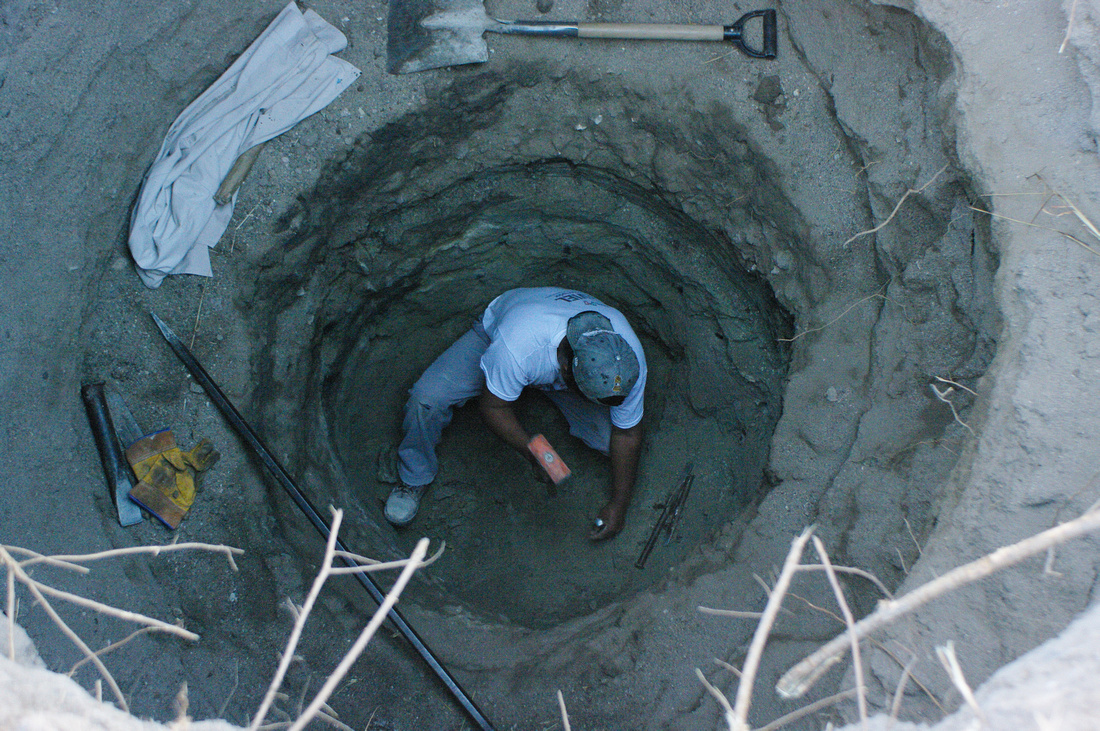 Some days a little more than a foot was gained.
Some days a little more than a foot was gained.
After the first week one of the workers, Selverio, had to go to Vera Cruz to visit his mother so Luis (the other worker) brought his father to help. The father (Genaro) mostly worked up top which meant that Luis was in the well most of the day. When full I'm guessing the buckets weigh about thirty pounds. I attempted to help Genaro but he wouldn't let me. Later in the week I found out that Genaro was eighty years old. I couldn't believe that this gentleman was still so strong!
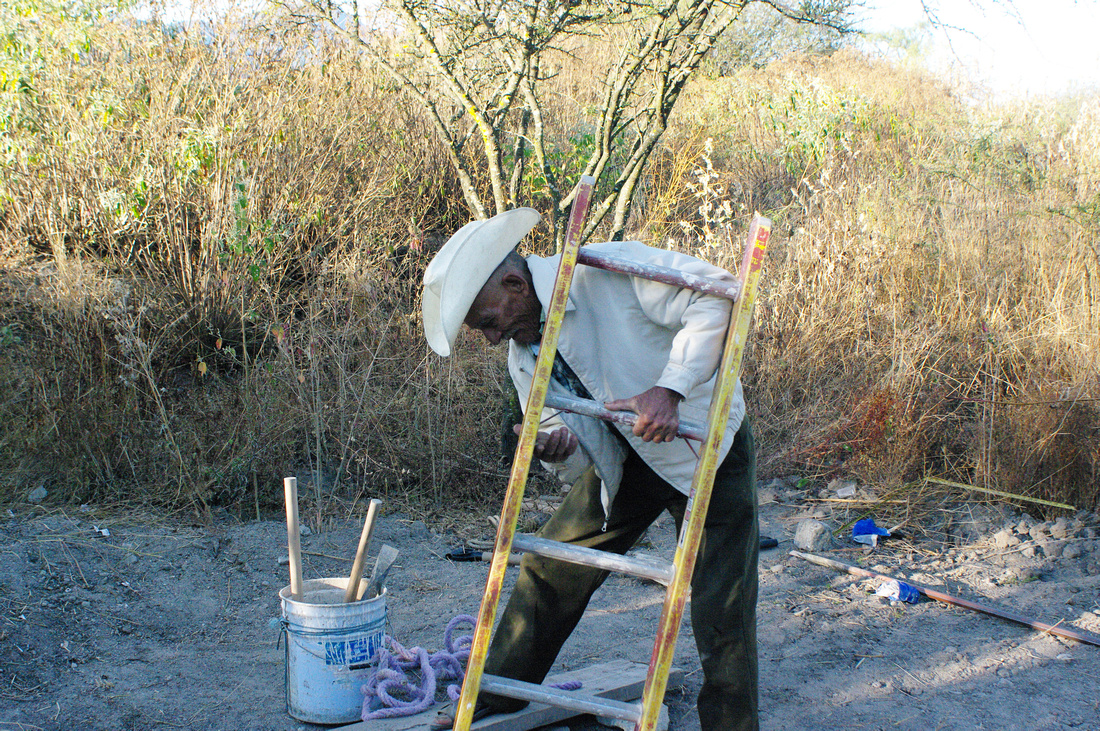

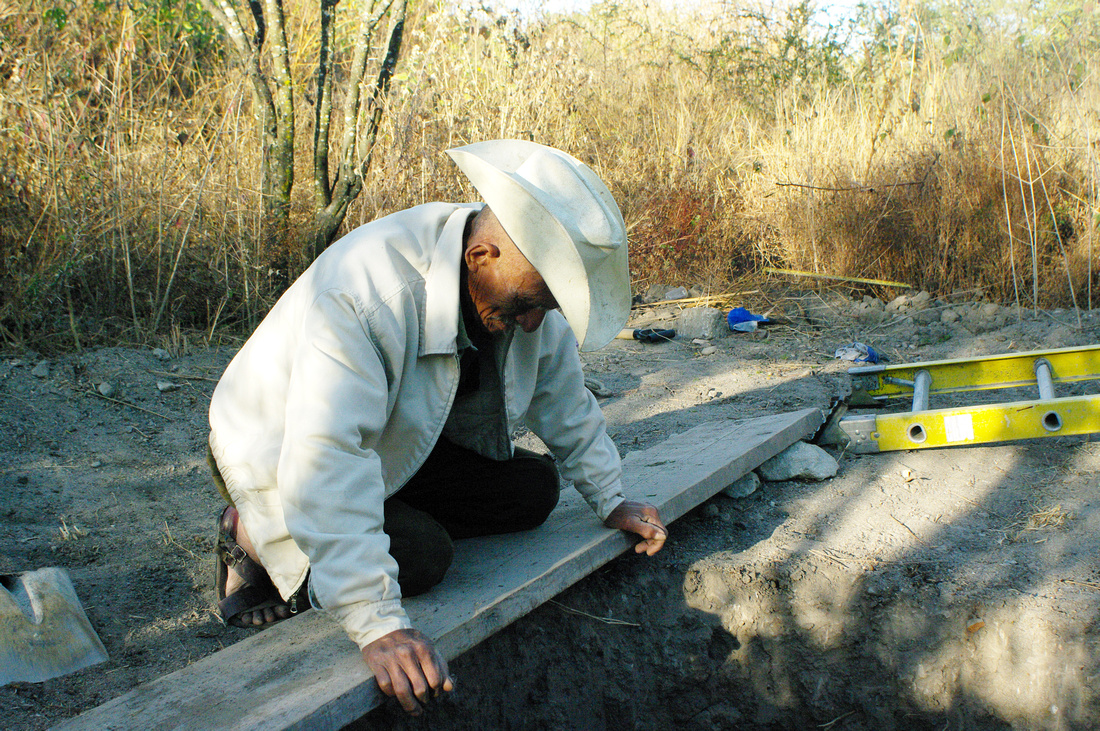 Digging a well is an iffy proposition. You aren't sure if the work being done is going to pay off. Even though wages are much less here than in the States, day after day it still adds up. We got a glimmer of hope at about four and a half meters which is a pretty shallow depth considering many wells are thirty feet to water. Some go to sixty feet. The photo below was taken in the morning. The water was an accumulation of seepage throughout the night.
Digging a well is an iffy proposition. You aren't sure if the work being done is going to pay off. Even though wages are much less here than in the States, day after day it still adds up. We got a glimmer of hope at about four and a half meters which is a pretty shallow depth considering many wells are thirty feet to water. Some go to sixty feet. The photo below was taken in the morning. The water was an accumulation of seepage throughout the night.
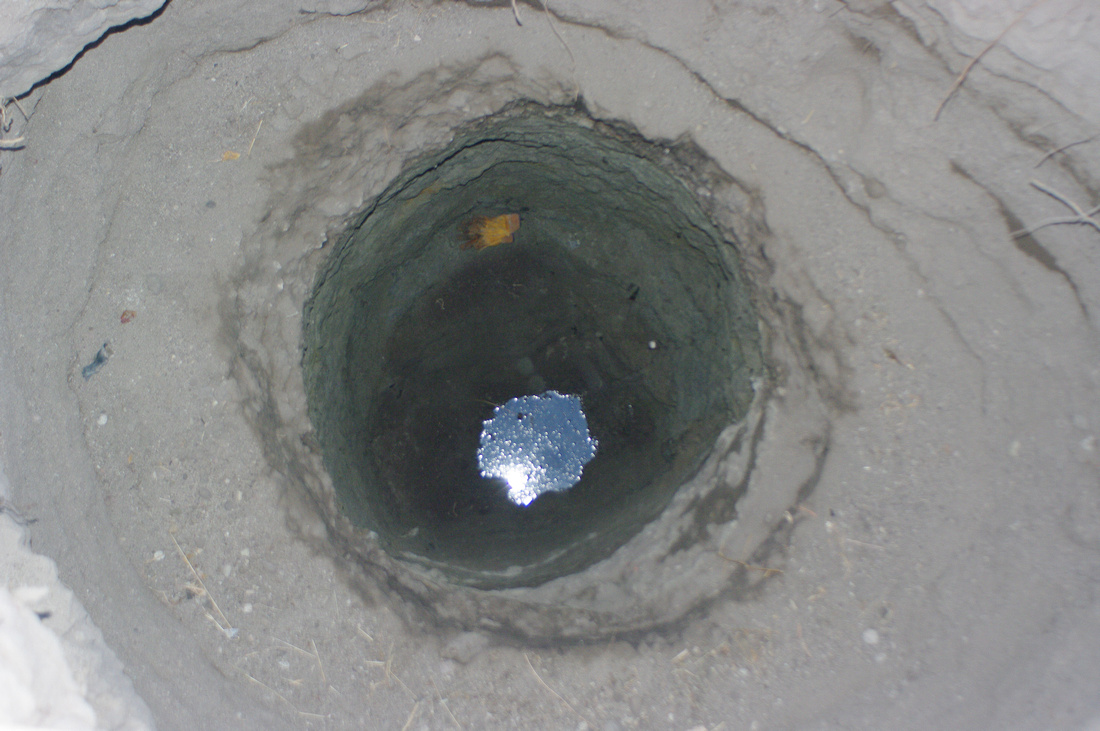 Here are a couple of shots of what is being removed.
Here are a couple of shots of what is being removed.
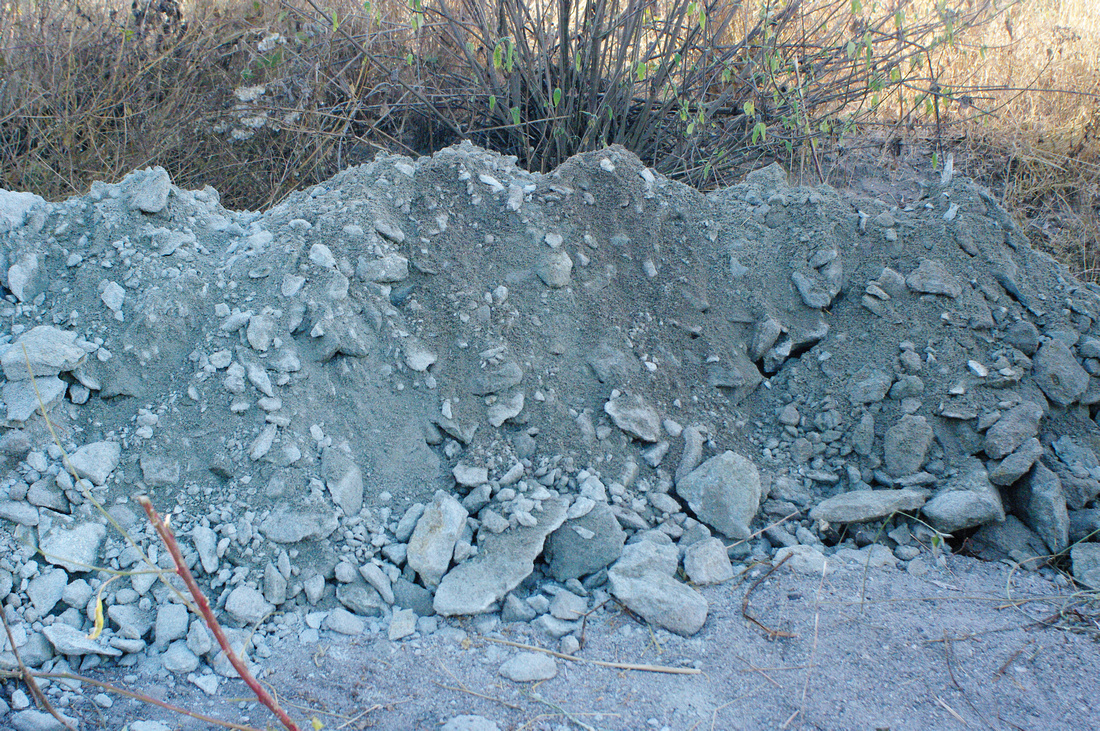
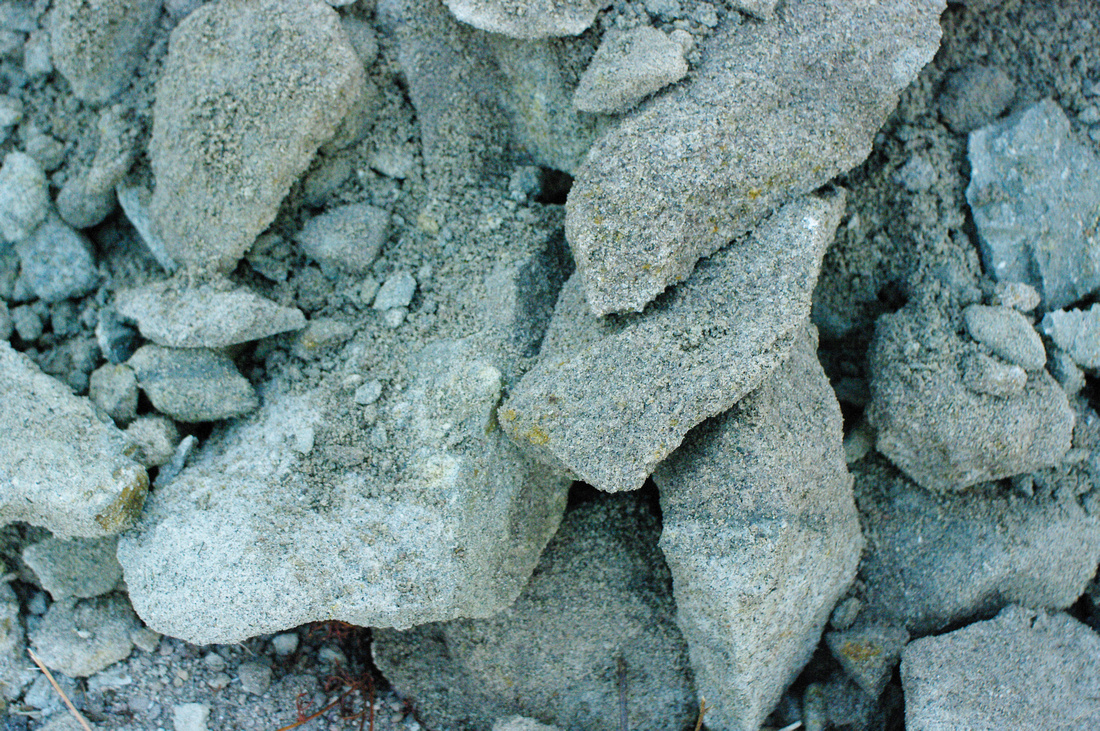
As the digging continued it seemed that a little more water was in the well when work started in the morning. Still work was very slow.
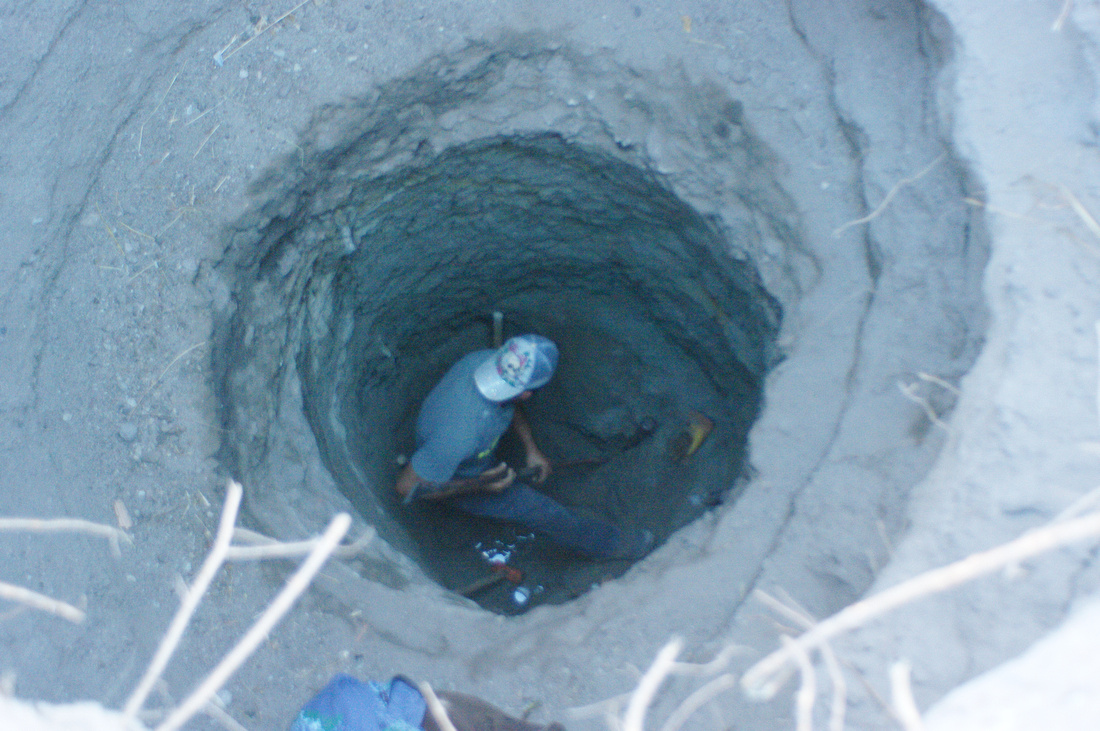 A pulley was installed to bring the dug up contents to the surface.
A pulley was installed to bring the dug up contents to the surface.



 1/18 At the end of the day yesterday we were at a little over seven meters deep. Tomorrow will mark three weeks of work. Before Luis came up at the end of the day he sent up a sample from his present digging. It was mud like. Very different from anything we have yet encountered. I was told that this is what is usually found right above water. Guess we'll see.
1/18 At the end of the day yesterday we were at a little over seven meters deep. Tomorrow will mark three weeks of work. Before Luis came up at the end of the day he sent up a sample from his present digging. It was mud like. Very different from anything we have yet encountered. I was told that this is what is usually found right above water. Guess we'll see.
1/22 We are a little over eight meters. Yesterday morning about five hundred liters were taken out before work could start. Selverio had to stand in over knee deep water until the well was emptied. No one worked Sunday so the well sat for two days. Luis gave me a good size chunk of rock. I wanted it to remember just how difficult some areas were. I'm having to take chisels and the long bar to Tlacolula every few days. It's amazing how quickly they become dull. Sometimes they get doubled over. The tools can't be ground on a grinder or they lose their temper. We take the tools to a blacksmith shop in Tlacolula. I love watching them work. They are masters!
1/23 No changes really. A little deeper and a little more water. My twenty foot extension ladder is now useless. They raise and lower themselves with the rope and pulley. I've been tempted to go down for a look but don't know about getting back up.

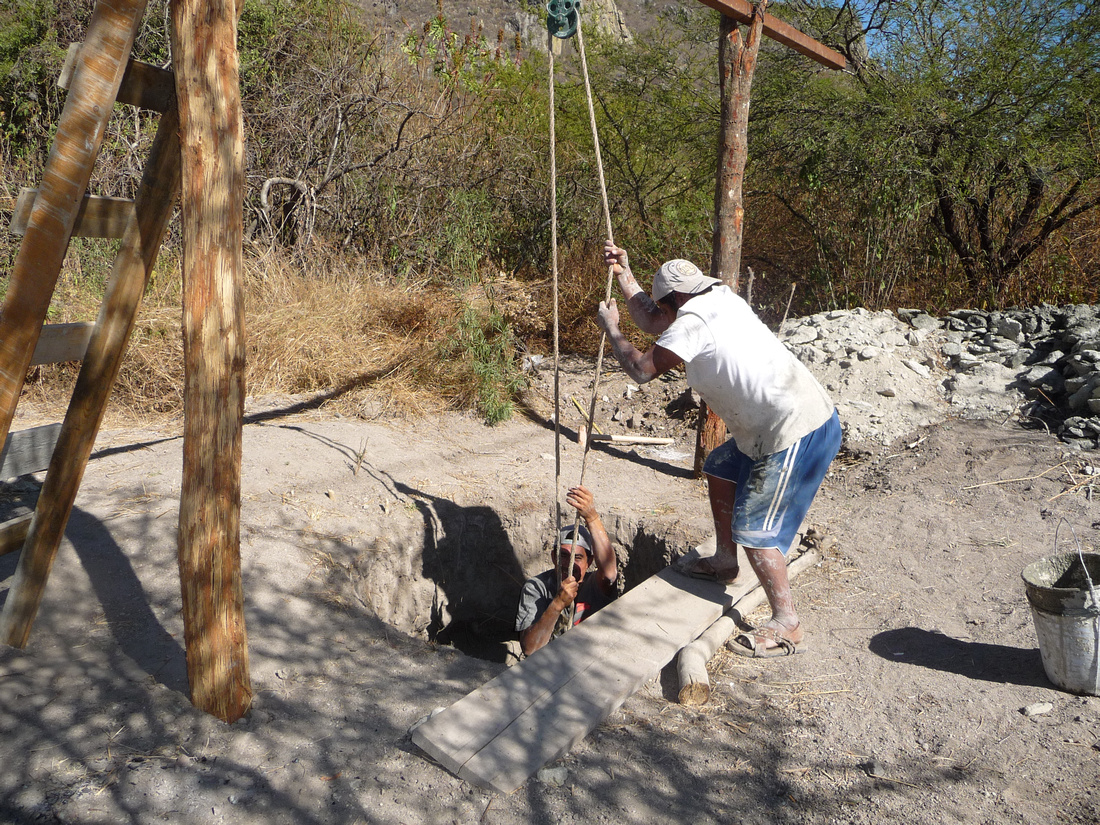
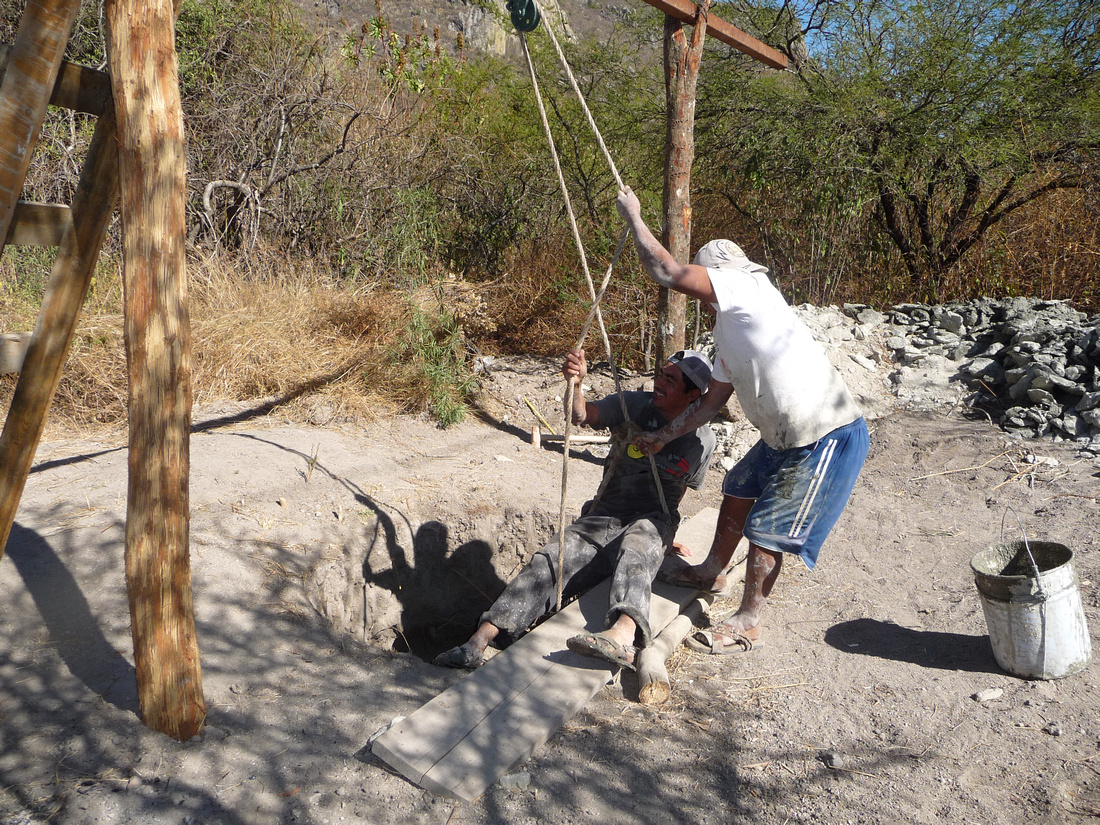
1/26 8.8 meters or about 29 feet at the end of the day. We're four weeks in and are keeping our fingers crossed. The sandstone is softer but it still takes a sledge and chisel to loosen it up. Felipe, Alejandra, Beto and his family, and Beth and I watched them work today for about forty-five minutes. We are close to the point of having enough water to live but not enough for plants. Luis gave me a bottle with water from the well today. It tasted great. This vein is coming from under the mountains. I haven't tested it yet but expect it to be pretty pure. The workers have been drinking it for a couple of weeks.
1/27 No work today. Epifanio and his family came from San Baltazar to spend the day. Beth prepared dinner for nineteen people but had lots of help. Epifanio is an albanil (bricklayer). He began working on our house back in 1994 and we've been friends ever since. I might have mentioned it before but their first language was Zapotec so their use of Spanish is limited like ours. We communicate quite well.
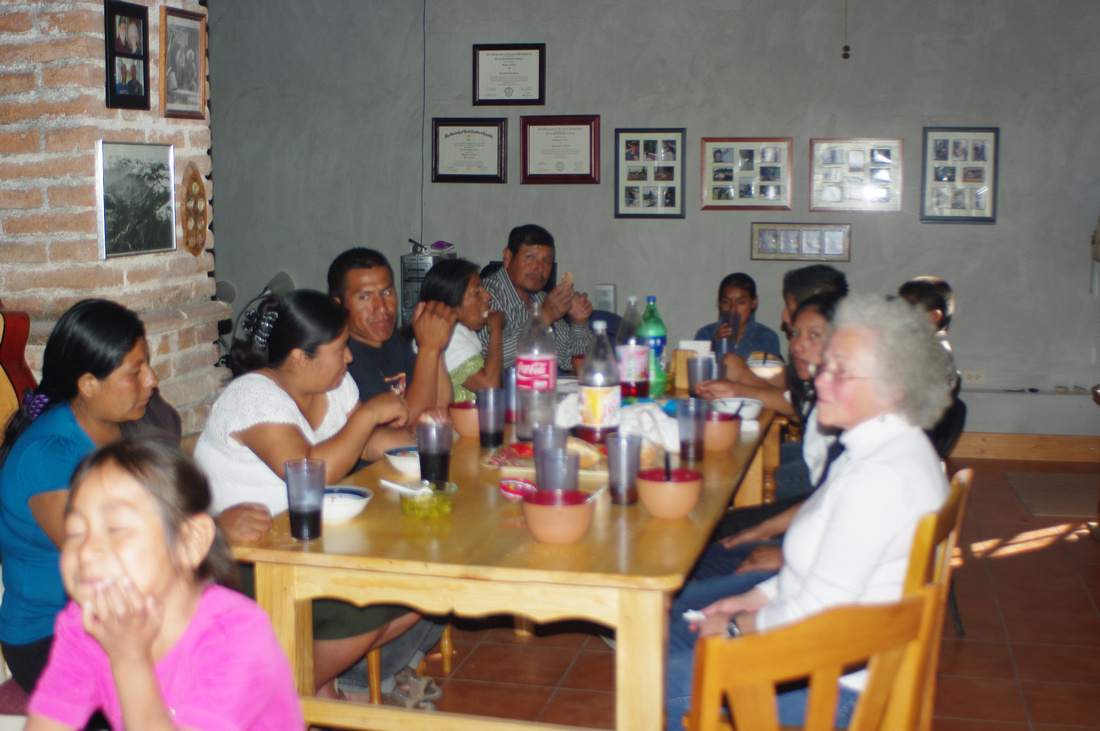
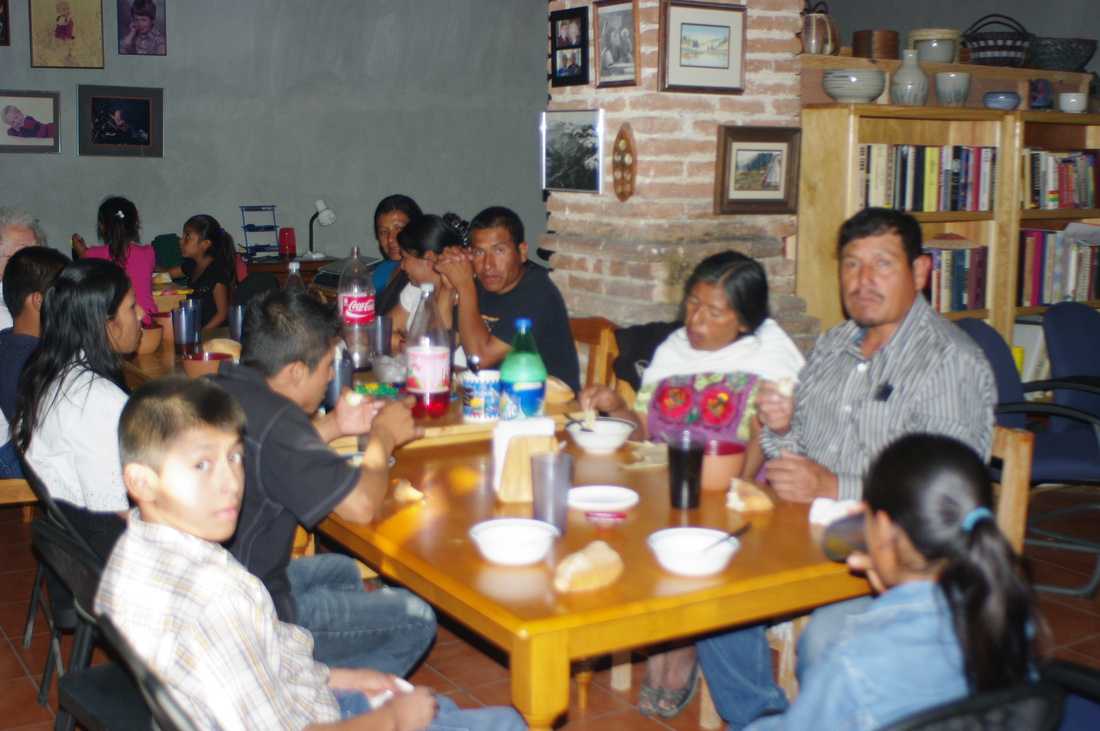
1/28 Eight hundred liters taken out this morning! There was water in the well all day. At the end of the day before Luis came up he was working the barreta (long bar) into the middle of the well. He commented that is was soft and sand like. After about five minutes of digging water started appearing. We are hopeful that it is from below and not from the sides.
Here is a short video of Luis working in the well. Notice the change of the sledge hitting the chisel when the rock starts to break. It becomes more of a hollow sound instead of a solid one.
1/29 No change. The water is still just coming in from the sides. Luis told me that this was the hardest well he'd dug. It's pretty much been hard sandstone the whole way.
Beth had had thyroid problems in Brownsville so we went to a specialist in Oaxaca last week for a checkup. He did a physical exam and sent us for blood tests and a sonogram. We returned to his office to review the results today. Every thing is fine and our total cost was 2000 pesos or about one hundred and seventy dollars. The doctor is very interesting. He earned his doctorate in Montreal, Canada, and studied endocrinology for four years in France. At the end of our first visit he told us if we needed help of any kind we were to feel free to call him on his personal cell phone (I have a little trouble imagining a doctor in the US telling me this). Unfortunately other patients kept us from chatting to great lengths. We invited him to Don Pedrillo. I would love to spend an evening with he and his family.
1/30 Removed three hundred and fifty liters this morning. 9.30 meters deep.
I've decided to go ahead and post this. I suppose i'll update as work progresses.
2/5 Began removing water in the morning with a pump. Much less labor intensive than hauling it up a bucket at a time.
2/6 Filled up our first five gallon water containers from the well. We did a test of the water and it's fine so our days of buying drinking water are over.
2/9 11 meters down. Took out 840 liters of water this morning. Yesterday Luis hit a spot and the water began squirting into the well. Hopefully today it will open up more. Every morning water has to be pumped out before work can resume. I bought some additional hose so the water being pumped out goes into our small tinaco which I then haul up to the house and pump into our large tinaco. I cleaned the large tinaco before we started this process to insure that the water would be safe throughout the house. We can now drink water and brush our teeth from the faucets.
2/19 While enduring the dilemma of the well we got good news from our first electric bill from our own cables. We paid $75 for two months. Our gas which we use for the hot water heater and the stove runs about $50 for two months. Gas for our truck is about $4 a gallon.We don't eat much meat aside from chicken. Beef is expensive as is fish. The meat of choice here and the most expensive is goat.
We returned to the first well to take out eight rings to be put in the second well.
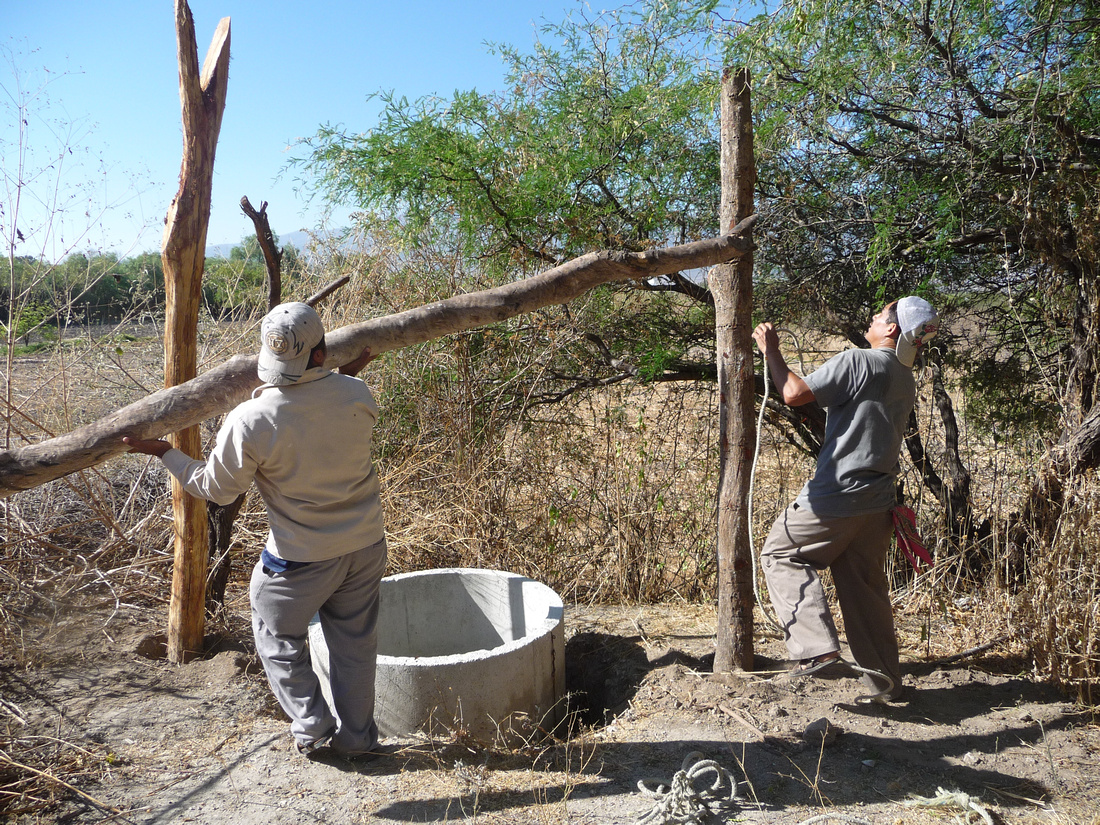
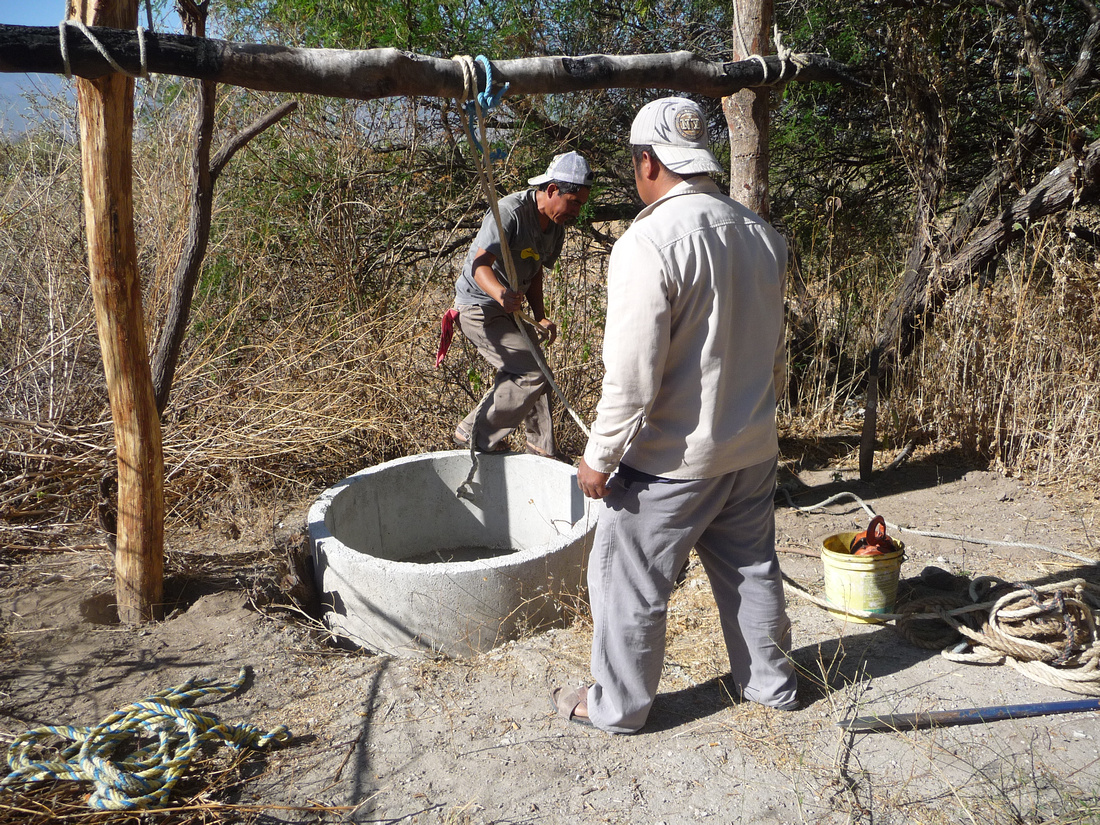 As I mentioned earlier the rings are heavy. I was expecting a brutal day but the workers knew short cuts so it ended up being a lot safer and easier than I had imagined.
As I mentioned earlier the rings are heavy. I was expecting a brutal day but the workers knew short cuts so it ended up being a lot safer and easier than I had imagined. 
 Luis is very sure footed. He moved around very easily which contributed to the ease of the job.
Luis is very sure footed. He moved around very easily which contributed to the ease of the job. 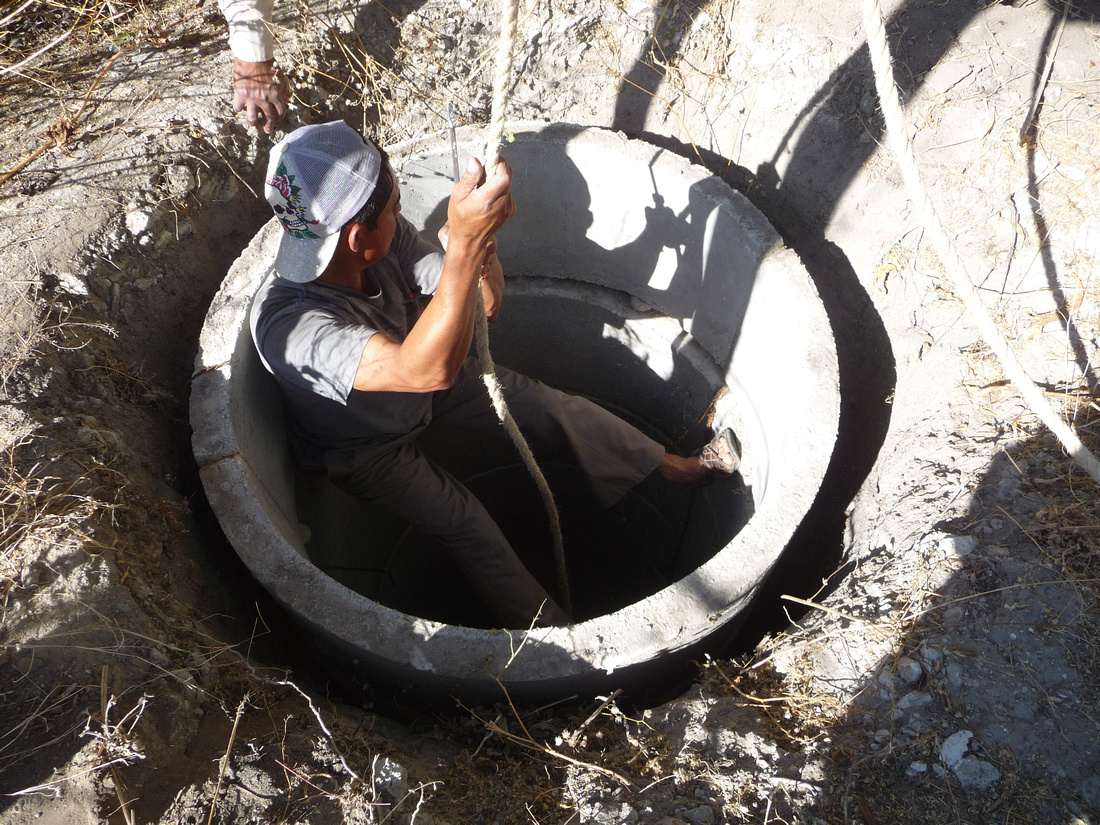
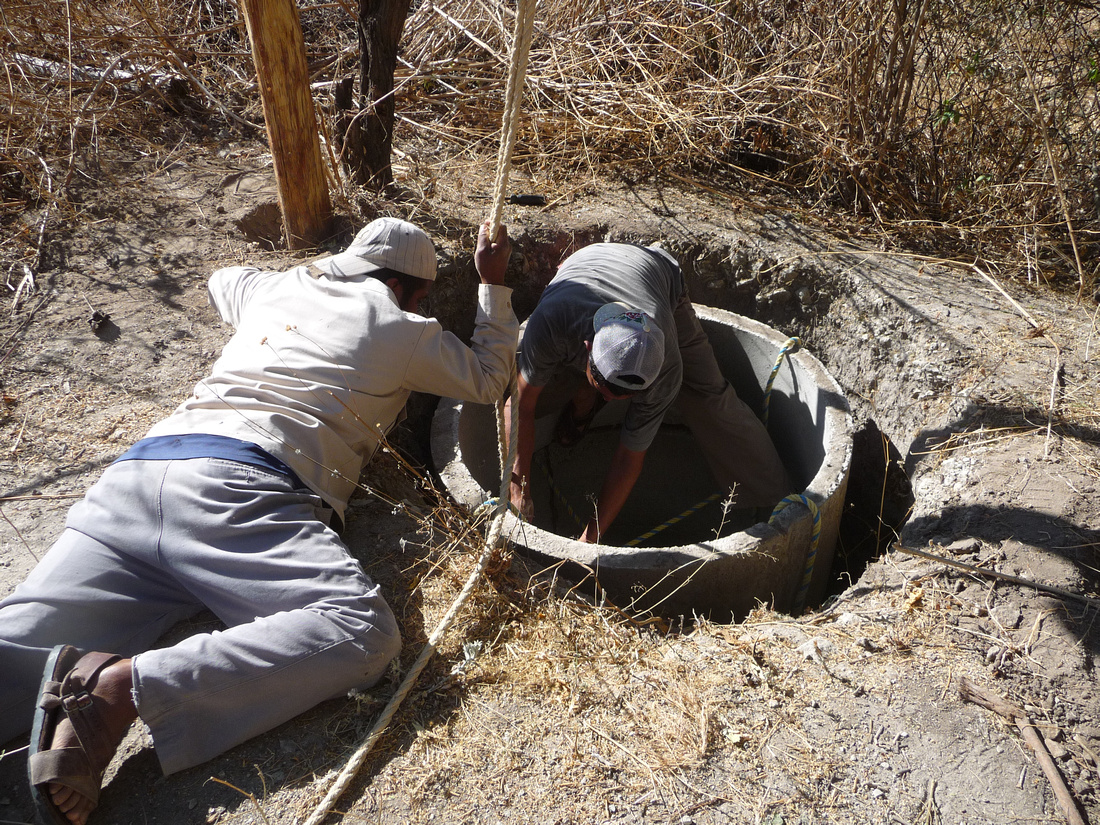 A friend loaned me a chain hoist which allowed things to go much quicker
A friend loaned me a chain hoist which allowed things to go much quicker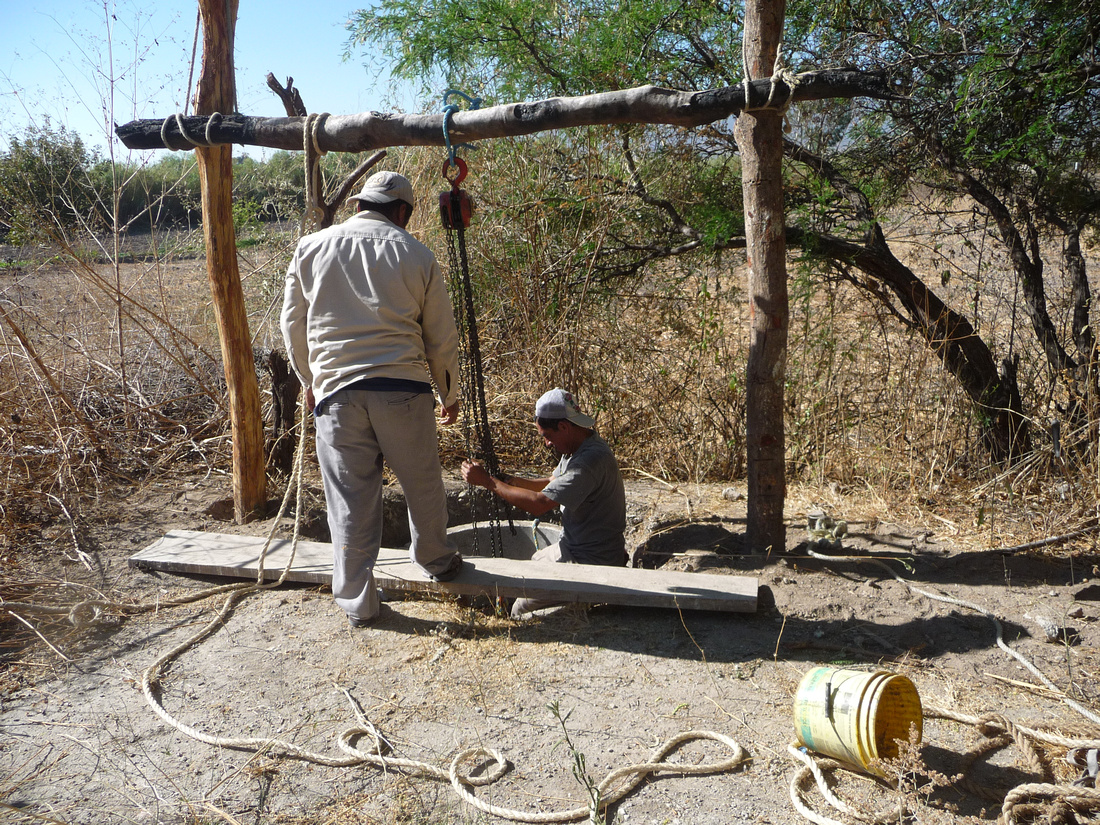
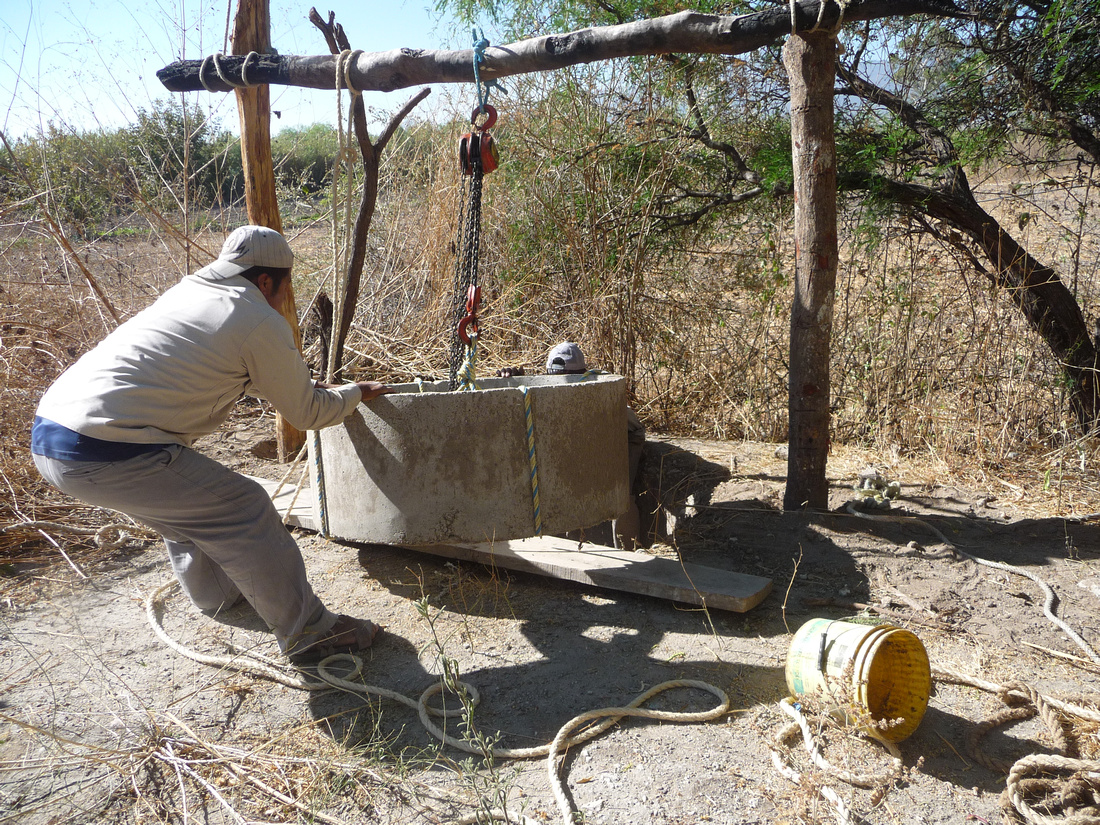
 My neighbors Felix and Manuel. Digging a well here is a major event. Wherever I go it is a topic of conversation.
My neighbors Felix and Manuel. Digging a well here is a major event. Wherever I go it is a topic of conversation. 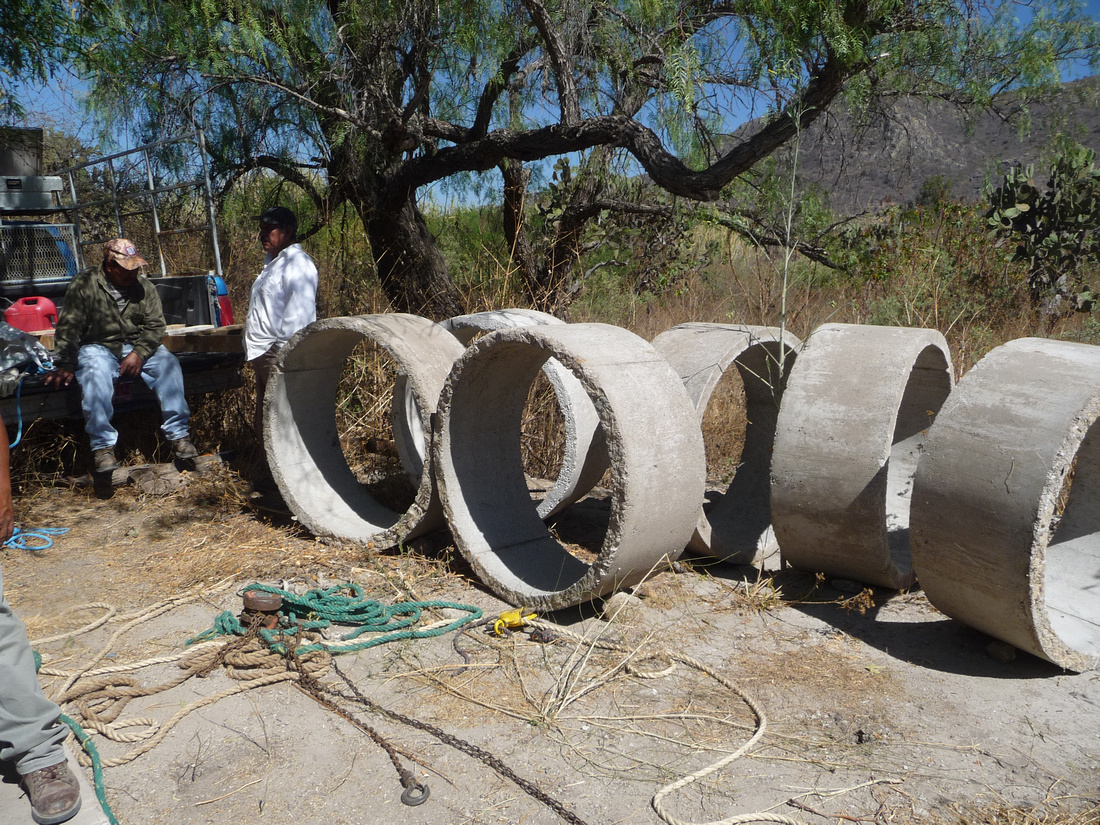 Once all the rings were removed they were rolled up a 2X12 and on to Felipe's truck. We moved four at a time.
Once all the rings were removed they were rolled up a 2X12 and on to Felipe's truck. We moved four at a time.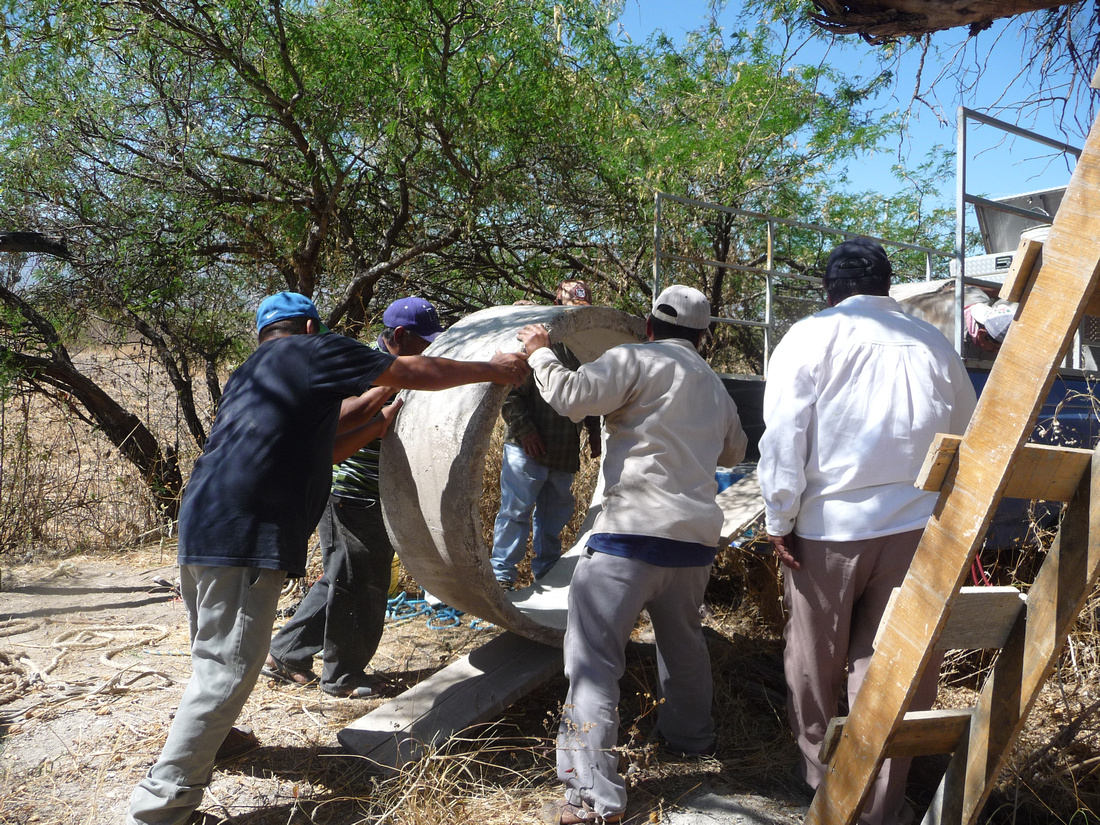
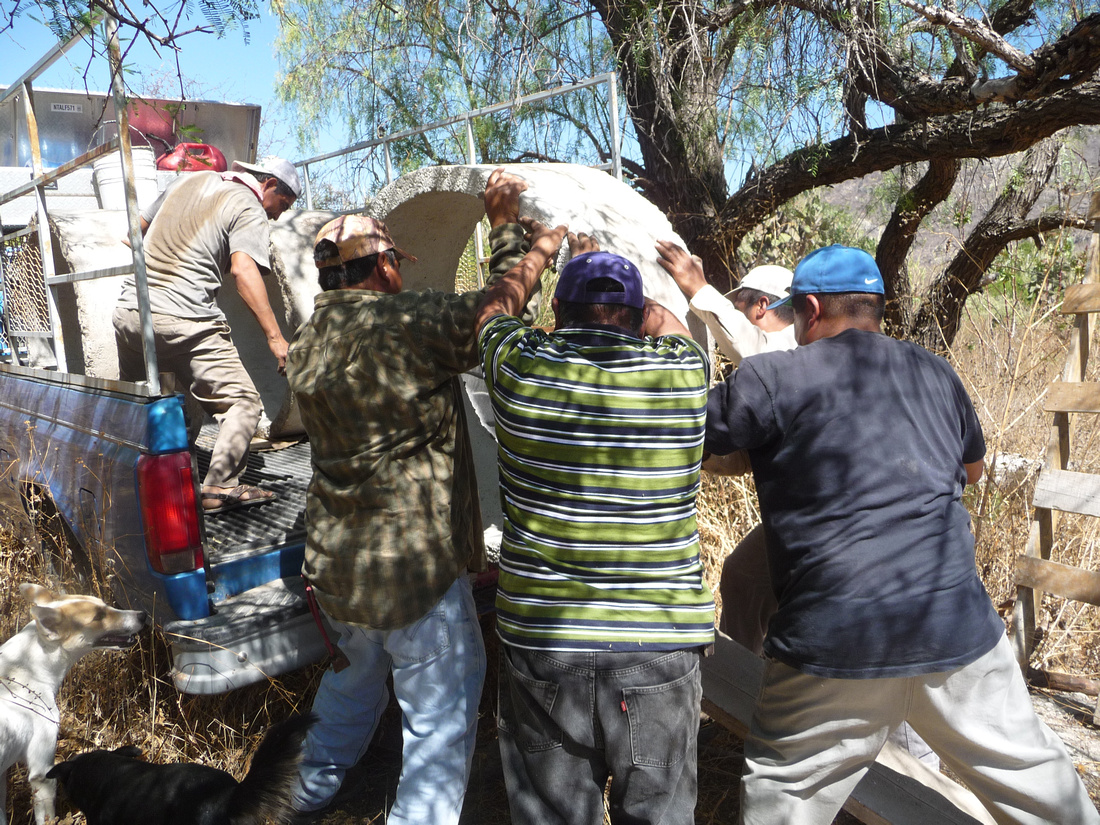
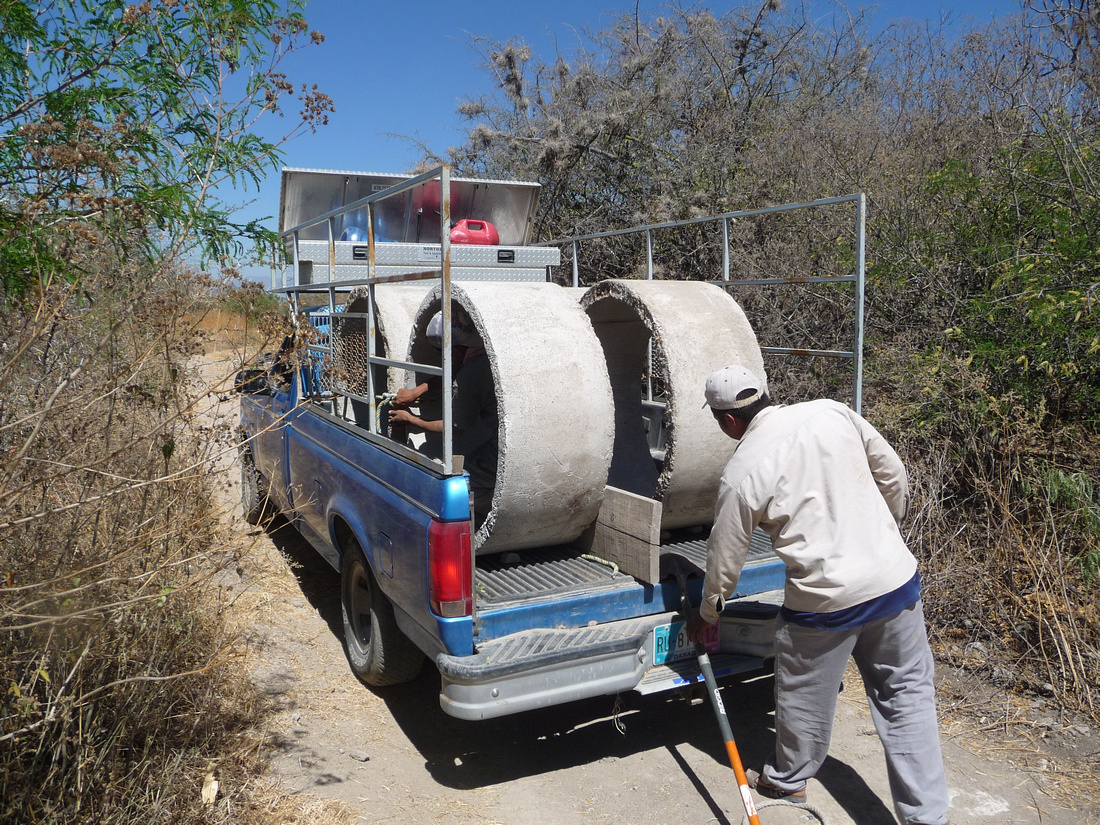 We discovered at the new well that the rings were a little too small.
We discovered at the new well that the rings were a little too small.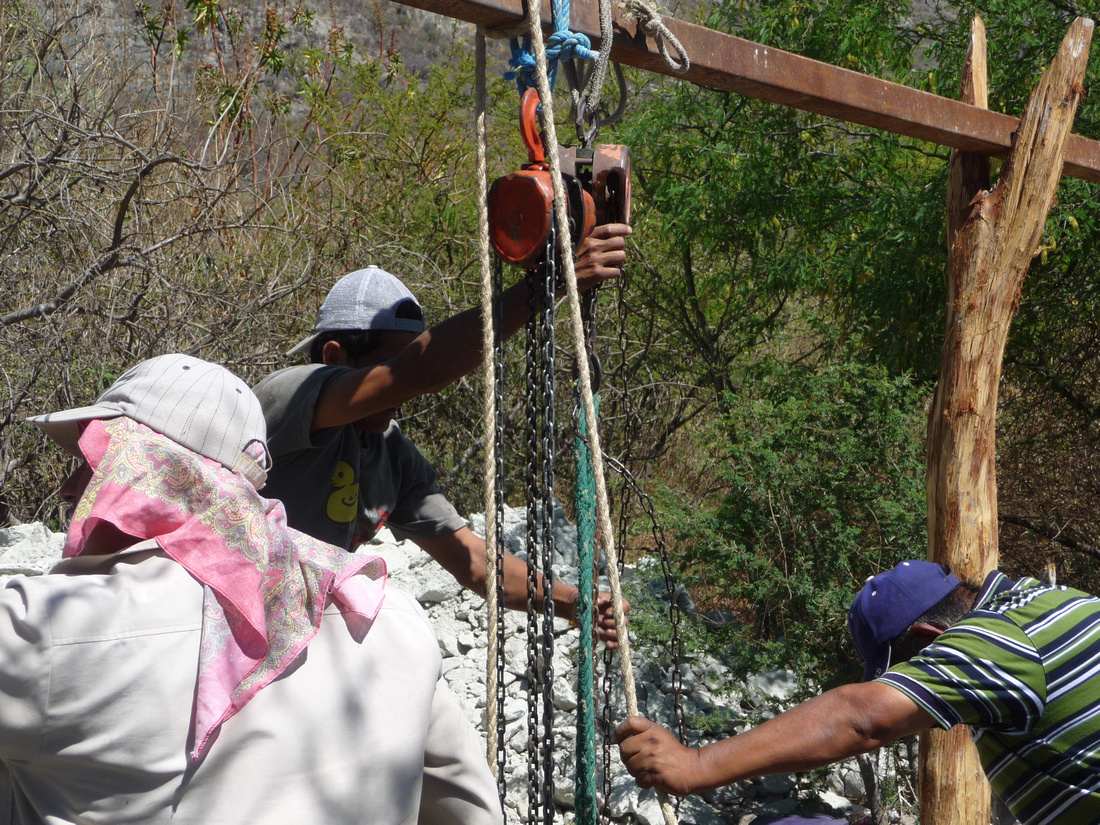 Two concrete posts were set on top of a solid rock base and were used to support the rings. Rocks filled the space between the rings and the well. Then plastic was laid on top of the rocks so dirt could be added without it falling into the well. Juan from Matatlan and his brother in law showed up to give us a hand.
Two concrete posts were set on top of a solid rock base and were used to support the rings. Rocks filled the space between the rings and the well. Then plastic was laid on top of the rocks so dirt could be added without it falling into the well. Juan from Matatlan and his brother in law showed up to give us a hand.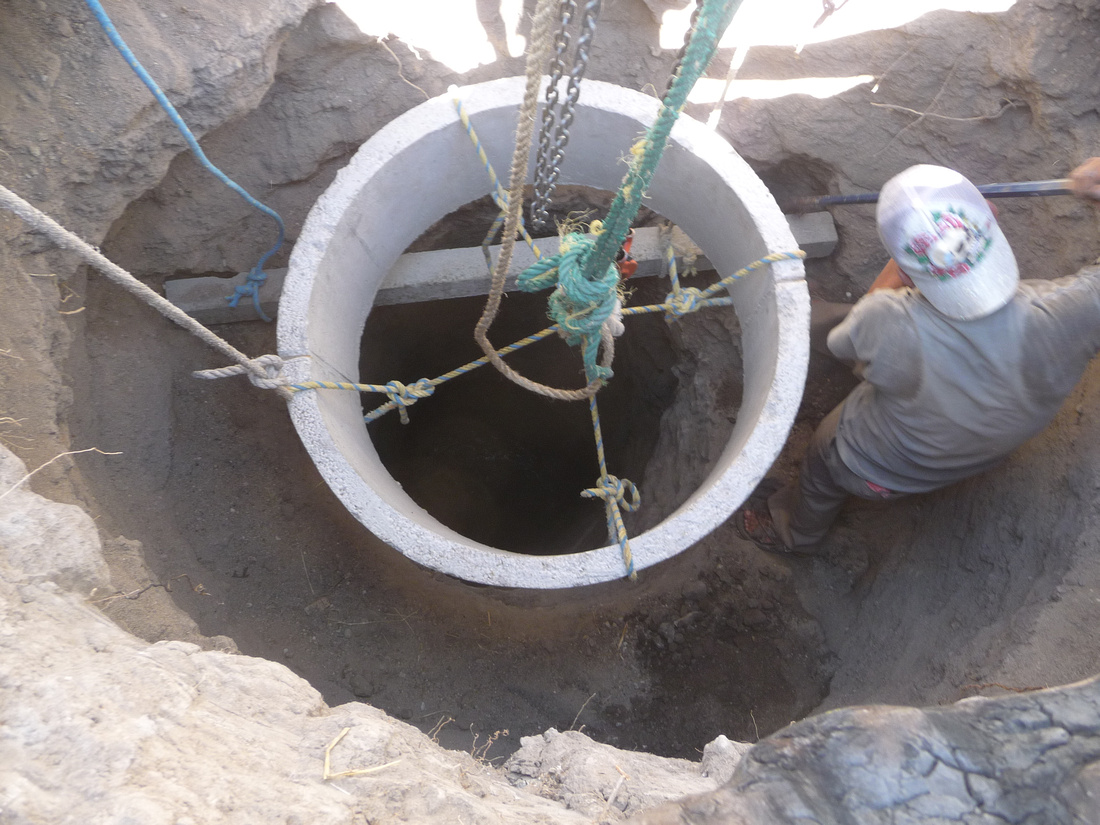
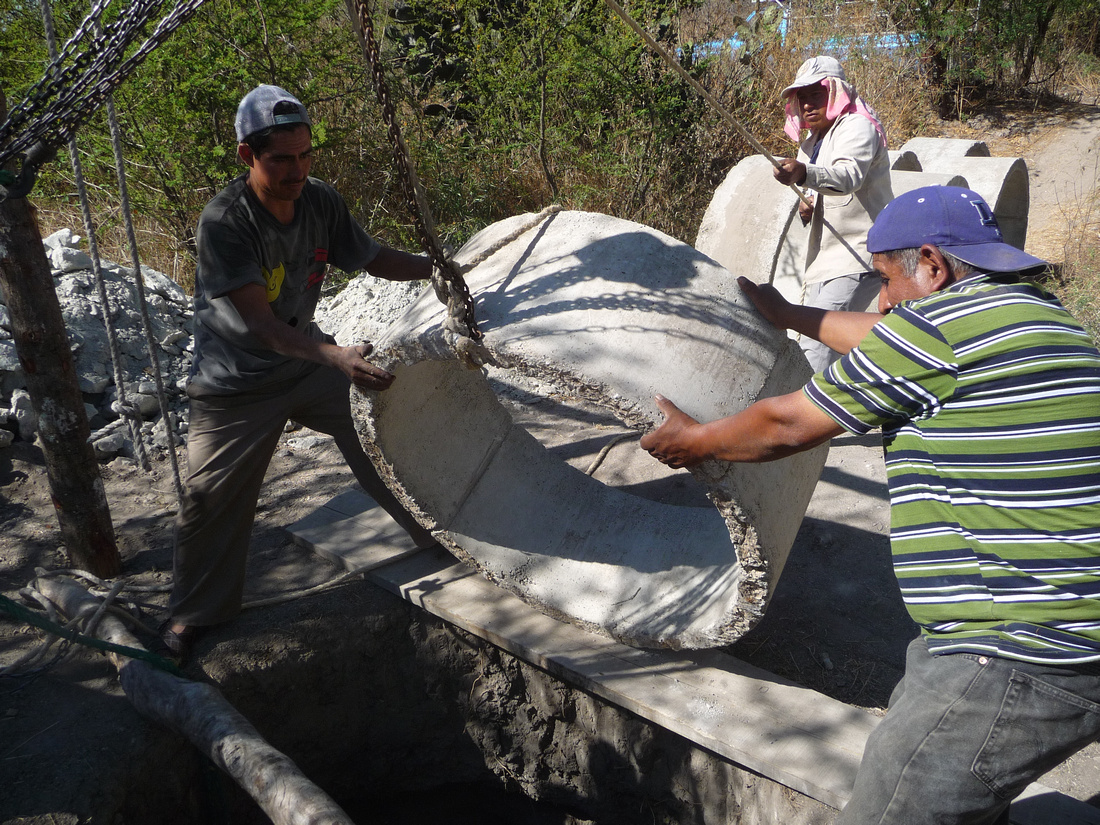
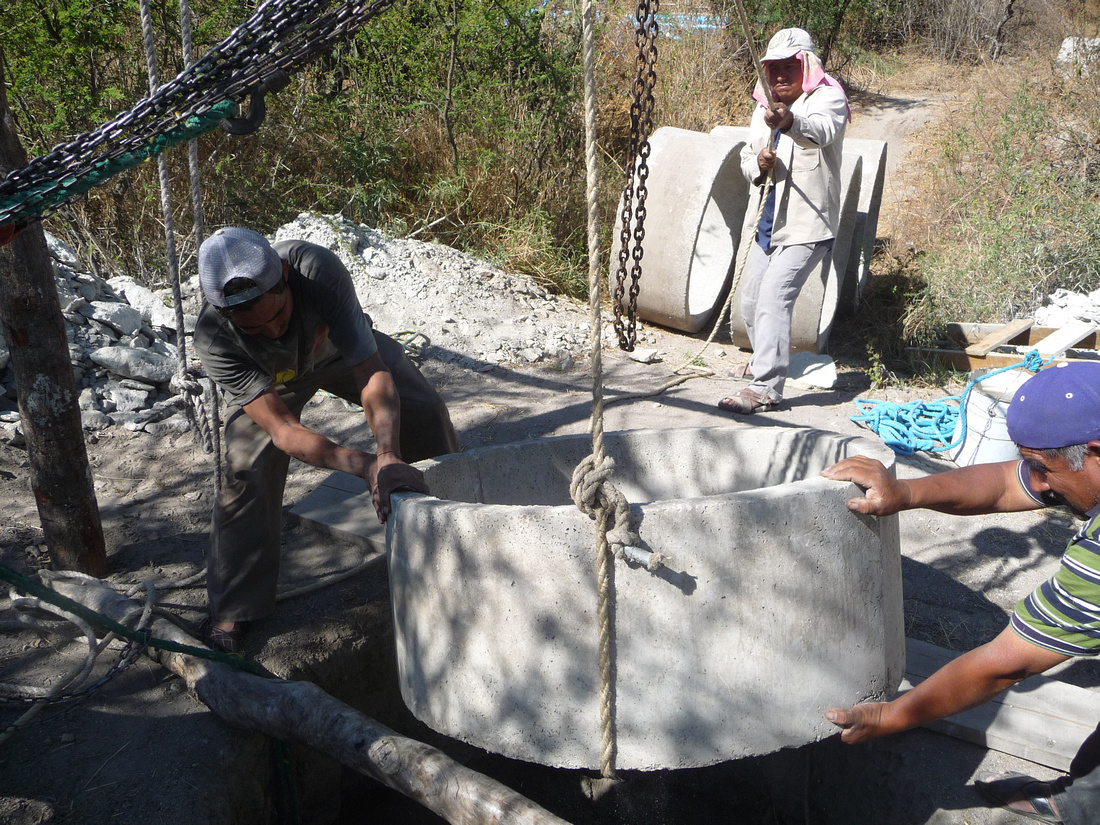
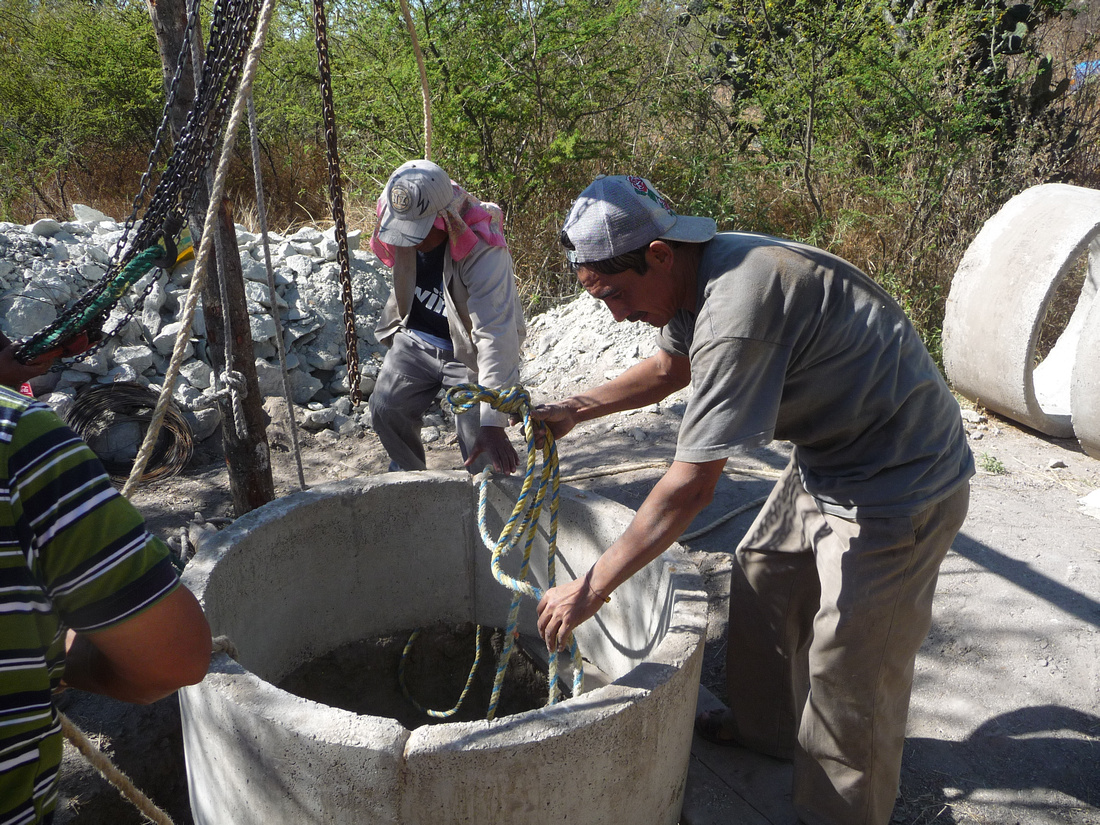 2/27 Water hadn't been pumped out of the well for five days so we expected a lot of water. We pumped out 5,000 liters which is very close to a tinaco a day.
2/27 Water hadn't been pumped out of the well for five days so we expected a lot of water. We pumped out 5,000 liters which is very close to a tinaco a day.
We experienced our first accident. While using the sledge and chisel a piece of the chisel broke off and cut Selverio's leg. It was only about an inch long but was deep. I took him to Tlacolula to get stitched up. The doctor's charge was about $25 and another $5 for pain pills.
I drive to Union Zapata every morning to pick up Luis and Selverio. I like to get there early and read for a while. It's so much fun watching the rancho come to life. There are two major construction projects going on nearby. The workers from Union Zapata gather near the center of town and wait for their rides to work. Trucks with alfalfa pass by on their way to the market. Some men are already out in their fields. Kids begin to arrive for elementery and middle school. There is no high school in Union Zapata so the kids take a bus to Mitla or Tlacolula. My favorite event is watching the women carrying their buckets of maize to the molina to be ground for the day's tortillas. It's such a rich and timeless tradition. The corn is placed in a plastic bucket at night along with water and lime. By morning the corn is soft and is ground into a paste. How fortunate are the women that live close to the molina. For others it's close to a half a mile walk. There is a small factory that makes tortillas but the difference between a factory made or hand made tortilla is similar to the difference between store bought and home made bread.
As one might expect most of the work here is very physical. I was so proud when I wore through my first pair of leather gloves. Kind of a badge of honor.
Here is the well with the rings in place along with dirt packed around it. When we are done digging we'll add one more ring. The opening will be about three feet off the ground so there will be no chance of rain water getting into the well. We added a tarp for shade. It's gotten hot so the man bringing out the dirt in the afternoon doesn't have to suffer in the sun. Luis continues here to haul out rock one bucket at a time.
By now everyone has grown accustomed to me carrying my camera with me. I have a little point and shoot Lumix that is almost always in my pocket or in the truck.
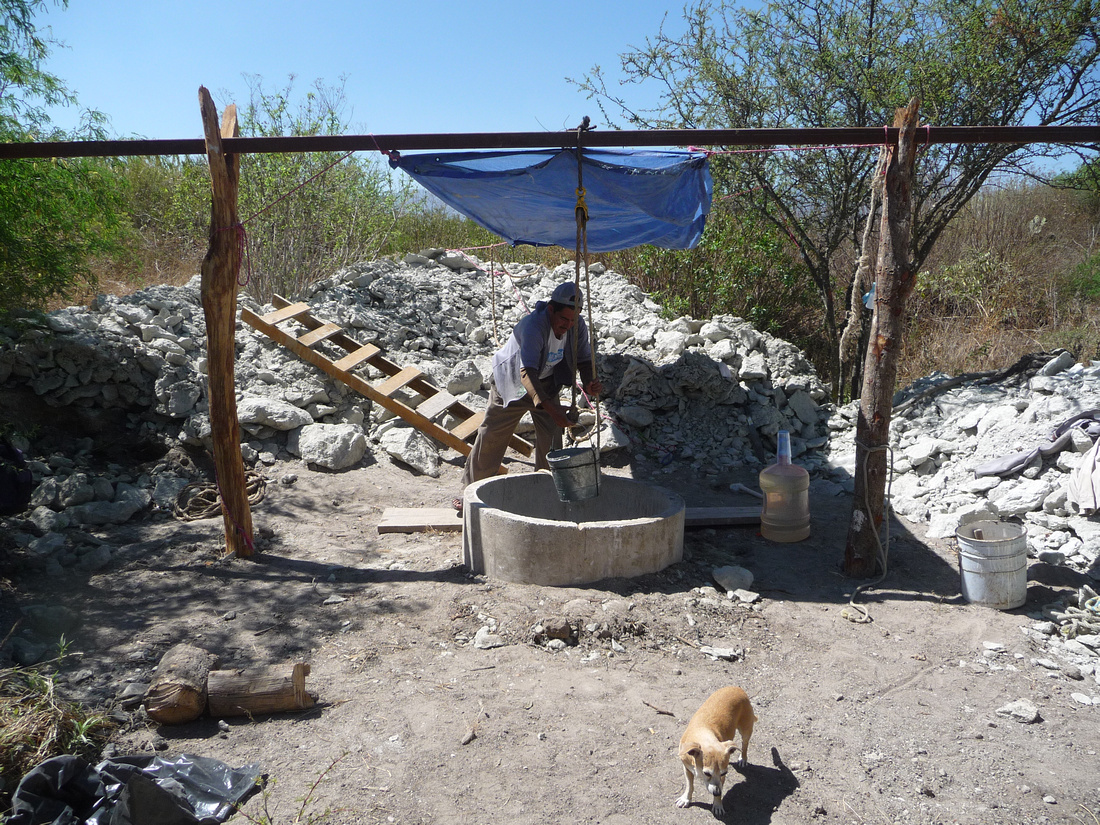
This is Scooter. We have owned him for over eight years. He is a mix of who knows what. He's always been a very grouchy guy but we love him. His life in Brownsville consisted of being in the house with us except for bathroom and exercise walks. To put it plainly he was a house dog!
 Our other dog is Einstein. We have owned him for a little over a year. He is the complete opposite of Scooter. He is always happy and ready to play. The months we owned him in Brownsville we also considered him a house dog. Most of his time was spent getting into mischief and begging for attention.
Our other dog is Einstein. We have owned him for a little over a year. He is the complete opposite of Scooter. He is always happy and ready to play. The months we owned him in Brownsville we also considered him a house dog. Most of his time was spent getting into mischief and begging for attention.
 In Brownsville, when outside, they were always on a leash. That changed when we arrived here in Oaxaca. There is little or no traffic here by the house so they get to run free. They don't roam. They stick close to the house but have taken well to their freedom.
In Brownsville, when outside, they were always on a leash. That changed when we arrived here in Oaxaca. There is little or no traffic here by the house so they get to run free. They don't roam. They stick close to the house but have taken well to their freedom.
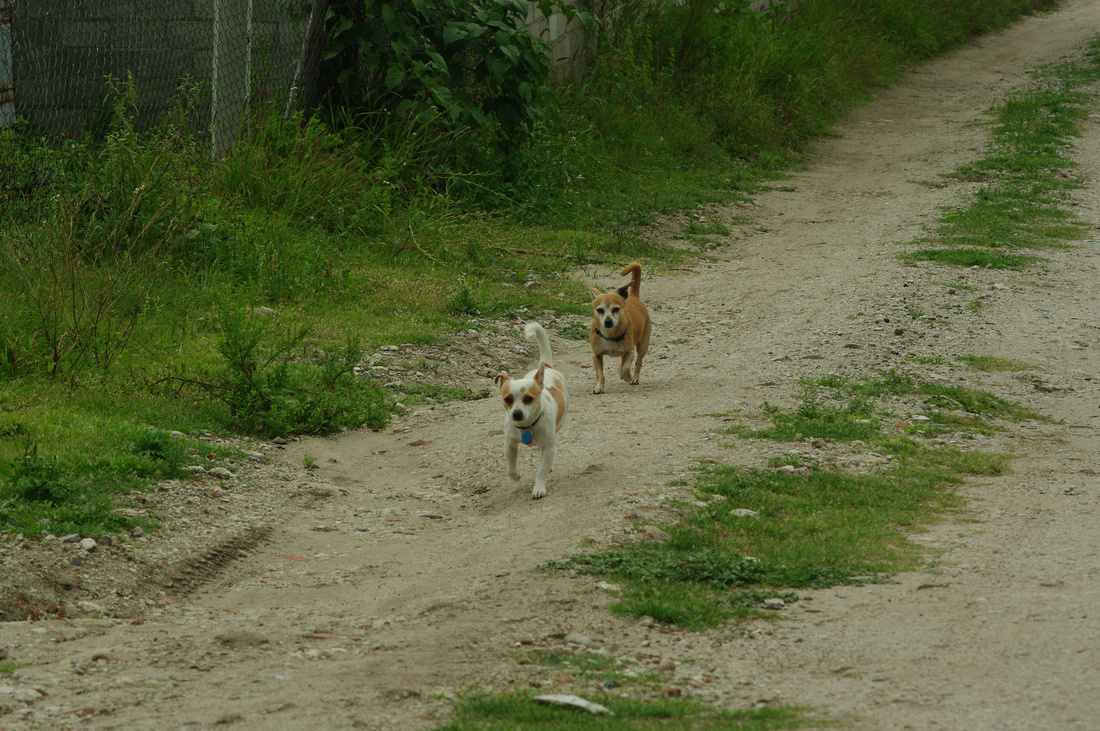 They both have become great watch dogs. They alert us when someone or something is near the house. The drastic change has been watching our little domesticated house dogs morph into killers. Because we live in the country there is a plentiful amount of rats. Not the kind you find in the city, but rats non the less. Our house is sealed off pretty well so we don't have a problem inside. The patio side is not sealed so it is accessible to the rats. Every morning the dogs make the rounds looking for intruders. I'll not be too graphic but their manner of disposing of our unwanted guests was quite shocking. Einstein has proven to be the better hunter. He loves the hunt. They will both spend hours in the patio hunting down their prey. Einstein loves to parade around with his prey in his mouth. He is usually pretty obedient but refuses to relinquish his catch. I even tried prying one out of his mouth but he refused. He didn't growl but stubbornly refused to give it up. I have to tempt him with something more savory to get him to drop his catch. Word has apparently gotten around outside because our rat problem has all but diminished. Still the boys make the rounds each morning.
They both have become great watch dogs. They alert us when someone or something is near the house. The drastic change has been watching our little domesticated house dogs morph into killers. Because we live in the country there is a plentiful amount of rats. Not the kind you find in the city, but rats non the less. Our house is sealed off pretty well so we don't have a problem inside. The patio side is not sealed so it is accessible to the rats. Every morning the dogs make the rounds looking for intruders. I'll not be too graphic but their manner of disposing of our unwanted guests was quite shocking. Einstein has proven to be the better hunter. He loves the hunt. They will both spend hours in the patio hunting down their prey. Einstein loves to parade around with his prey in his mouth. He is usually pretty obedient but refuses to relinquish his catch. I even tried prying one out of his mouth but he refused. He didn't growl but stubbornly refused to give it up. I have to tempt him with something more savory to get him to drop his catch. Word has apparently gotten around outside because our rat problem has all but diminished. Still the boys make the rounds each morning.
Another type of intruder is the fruit fly. They are very prolific here. We bought fly strips but they were pretty ineffective. One evening we'd had company and drank a few shots of mezcal. At the end of the night a shot glass of mezcal was left on the table. In the morning there were fruit flies in the shot glass. We have learned that an open shot glass filled with mezcal is the perfect control method. Here in Oaxaca cremas are made from mezcal. They are thick and sweet and come in a multitude of flavors. As an experiment we set out a shot of crema but discovered the straight mezcal is more popular. Of course we felt pretty high and mighty about our discovery so we wanted to enlighten our friends. We were knocked down a peg when we found that our method is common knowledge. In fact the fruit flies here are called burrachos (drunkards) because of their propensity to like mezcal. Anyway, our fruit fly problem has been resolved.
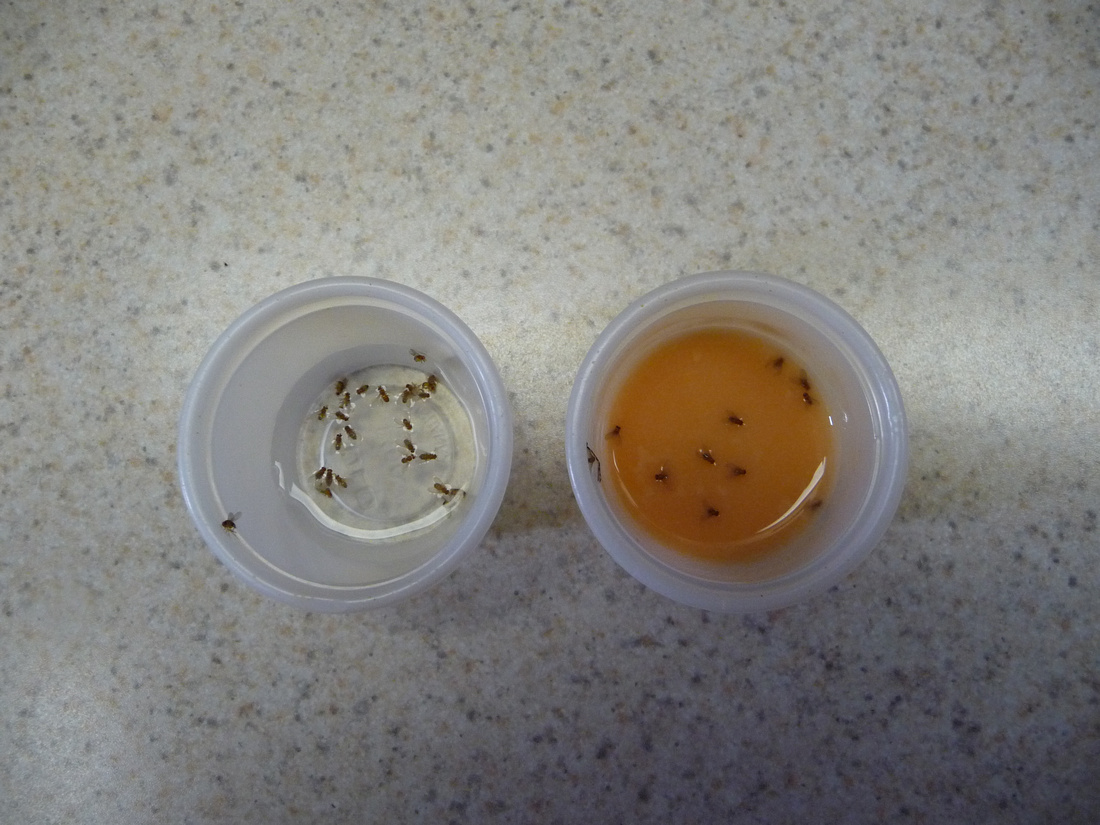 At the top of our unwanted guest list are scorpions. I'm sure there are many species here (too lazy to investigate); the two most popular are a small brown one that we've seen reach about an inch and a half, and a black one that we've seen reach to about four and a half inches. I did research years ago and found that scorpion bites here in the valley are non-lethal. They do hurt though. Over the years Beth has been bitten twice and I once. The initial sensation is one of being poked with a needle. The pain is acute for several minutes. Eventually the bite resembles a bee sting with swelling for a few days. When we first moved into Don Pedrillo, we expected to be inundated with them. After all we were moving into their habitat. Surprisingly we saw only one. It has been the change in weather (colder), that has increased sightings here in the house. In our five months here we have only seen five in the house but it can be very unnerving when you run across one in the safety of your home especially the big black ones. Again our dogs have come to the rescue. I noticed one evening that Scooter's bark was more than playful. I could tell that he was uncomfortable. I looked into the space that had drawn his attention and saw a black scorpion. He has alerted us on two other occasions. The black scorpion looks more ominous but the small brown one actually carries a more powerful sting. I read that homes with cats or dogs are less apt to receive unwanted visitations from scorpions. It must be true because we are certainly in scorpion country. I saved the first two scorpions and ended up giving them to a friend. Some people here enjoy putting unusual things in their mezcal. I felt a bit bad about that so now we catch and release.
At the top of our unwanted guest list are scorpions. I'm sure there are many species here (too lazy to investigate); the two most popular are a small brown one that we've seen reach about an inch and a half, and a black one that we've seen reach to about four and a half inches. I did research years ago and found that scorpion bites here in the valley are non-lethal. They do hurt though. Over the years Beth has been bitten twice and I once. The initial sensation is one of being poked with a needle. The pain is acute for several minutes. Eventually the bite resembles a bee sting with swelling for a few days. When we first moved into Don Pedrillo, we expected to be inundated with them. After all we were moving into their habitat. Surprisingly we saw only one. It has been the change in weather (colder), that has increased sightings here in the house. In our five months here we have only seen five in the house but it can be very unnerving when you run across one in the safety of your home especially the big black ones. Again our dogs have come to the rescue. I noticed one evening that Scooter's bark was more than playful. I could tell that he was uncomfortable. I looked into the space that had drawn his attention and saw a black scorpion. He has alerted us on two other occasions. The black scorpion looks more ominous but the small brown one actually carries a more powerful sting. I read that homes with cats or dogs are less apt to receive unwanted visitations from scorpions. It must be true because we are certainly in scorpion country. I saved the first two scorpions and ended up giving them to a friend. Some people here enjoy putting unusual things in their mezcal. I felt a bit bad about that so now we catch and release.
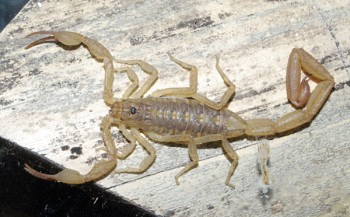
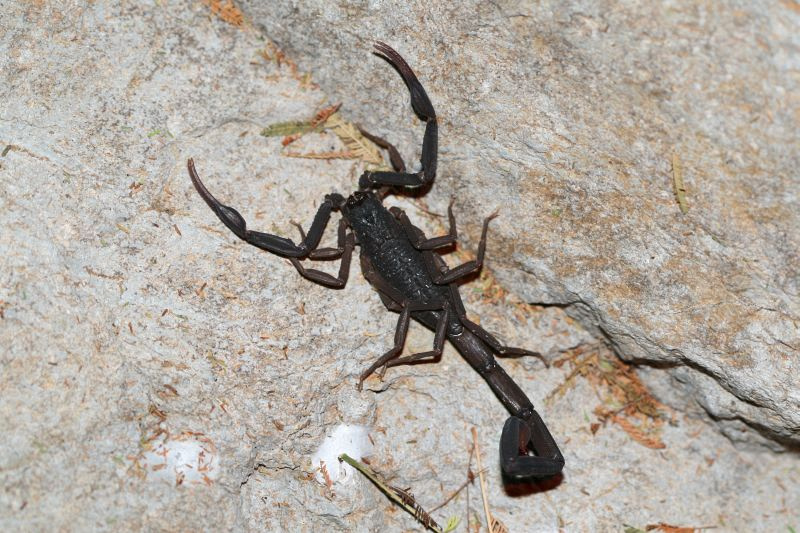 Near the house we see a great variety of birds. Most are very colorful. Hummingbirds are occasionally seen as are hawks and eagles. There are quite a few birds that are a type of vulture. Haven't seen a snake yet but wasps are plentiful. We've seen several owls returning home at night and often hear them hooting. Coyotes come down from the mountains to hunt at night but we've yet to see one. There are lots of rabbits and of course the field rats. There are insects galore! They are everywhere. Most have beautiful designs. Even the beetles have unique patterns. Ant mounds are everywhere. The other night while driving down our driveway Beth and I spotted a large and small animal (probably mother and child) they immediately fled but we did make out that they were from the cat family. We've questioned friends but no one knows what they were.
Near the house we see a great variety of birds. Most are very colorful. Hummingbirds are occasionally seen as are hawks and eagles. There are quite a few birds that are a type of vulture. Haven't seen a snake yet but wasps are plentiful. We've seen several owls returning home at night and often hear them hooting. Coyotes come down from the mountains to hunt at night but we've yet to see one. There are lots of rabbits and of course the field rats. There are insects galore! They are everywhere. Most have beautiful designs. Even the beetles have unique patterns. Ant mounds are everywhere. The other night while driving down our driveway Beth and I spotted a large and small animal (probably mother and child) they immediately fled but we did make out that they were from the cat family. We've questioned friends but no one knows what they were.
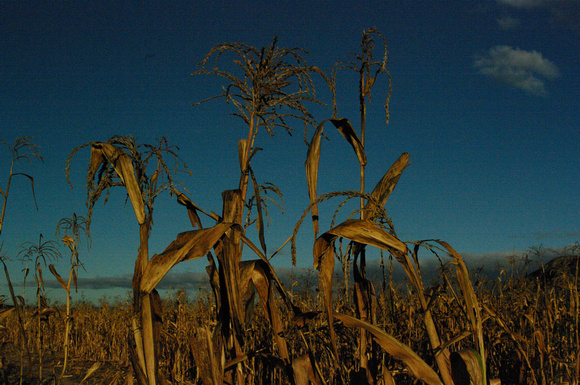
Thursday morning at 7:30 I met several men in a corn field that belongs to Felipe. From their trucks they gathered large baskets and began strapping them to their backs. As they were preparing themselves, one of the men came around with a bottle of mezcal offering each man a drink. Everyone accepted their portion because they knew what awaited them. They were there to pick corn.
For the next eight hours these men walked along the corn stalks picking and tossing ears of corn over their shoulders into their baskets. Felipe had asked me to photograph the day so his children in the States could see the results of their investment. Thank goodness! I'm sure I would have been embarrassed if I had tried to keep up the pace with everyone else.
When full the baskets can weigh up to forty kilos. The way they attacked the field reminded me of insects devouring a crop. Within minutes I understood the purpose of the mezcal. The work is like no other I've ever witnessed. It is truly a grueling, backbreaking job. Maneuvering through the field with a large basket in its self is difficult. As the basket is filled it becomes more challenging. I felt a bit foolish stumbling along trying to keep up with just a camera.
When a basket is filled it is taken to a truck and emptied. When the first truck load was filled it was taken to Felipe's and unloaded. I rode with the driver and discovered that the women had been preparing breakfast. After the corn was unloaded, the women returned with the truck to the field. The meal was laid out and soon the men arrived. Already some looked worn. Cups of mezcal were again passed around before eating. The conversation during the meal became jovial. Insults were thrown back and forth in jest. Of course I was ribbed for not participating. It was offered several times that I should at least have a photo taken with a basket on my back so I could boast at having worked alongside.
After the meal the men returned to work, and the women returned to Felipe's to begin preparation for the evening meal. What will forever remain in my thoughts is the light hardiness manner in which all the tasks were completed. While the men didn't talk a lot, when they did there was never an air of drudgery. The women also chatted and laughed while they worked.
At about 4:30 the men returned with the last loads of the day. The trucks were emptied while others stretched to find relief from pain. The mezcal came out again as the men cleaned up to eat.
My biggest shock came when Felipe brought out his money to settle for the day. Not one of his friends would accept payment! I suppose it’s because we view manual labor differently but I sat there in disbelief as they turned down any pay. Felipe is recovering from a recent operation on one of his eyes and is unable to work. He is fortunate to have such loyal friends.
I had been uncomfortable during the evening meal because I knew that I’d not done my share of physical labor. As if he sensed my uneasiness one of the men turned to me and said how wonderful it is that his grand kids are going to have a record of their grandpa working in the fields. Beth and I have started displaying photos with our friends in the patio. He made reference to his grandchildren coming to our home and seeing grandpa.
After the meal, much mezcal, and conversation everyone left. The job now is to remove the husks, which will be used to make tamales, let the corn dry after which it will be beaten with a stick to remove the kernels from the cob, and the stalks will be cut down and gathered for animal feed.
In a conversation with one of the men, I learned that there was another job that surpassed picking corn in its difficulty. Juan makes mezcal, (how convenient for us), when the agave plants are harvested the stems are cut right to the head of the plant. The heart or head is then loaded into a truck. Some of these heads weigh up to four hundred pounds and they are lifted shoulder high.
Beth and I have had the luxury of having two friends who produce mezcal. It’s become quite a nasty business. Because the market for mezcal is high and there is little control some fabricas have begun to use unscrupulous methods creating their product. Most common is adding chemicals to encourage quick fermentation. Other trampas are adding water or pure alcohol to make their product go farther. Aguardiente, a nasty drink made from sugarcane, may also be added.
Many times during comidas or get-togethers, Juan or Casto bring pulque, a drink that was made by the indigenous people before the arrival of the Spanish. Pulque is taken from the agave plant while the plant is still alive. The top of the head is exposed and a hole is made in the top of the head. Each day for several days the owner can dip out the liquid that has seeped into the hole. This is a very rich drink. It is sweet yet tangy. Initially, fresh pulque is slightly alcoholic; as it ages, the fermentation process continues and the alcohol content rises. I remember reading that before the arrival of the Spanish many people practically subsisted on pulque. It is very rich in nutrients. It was with the arrival of the Spanish that the distilling process began which resulted in mezcal.
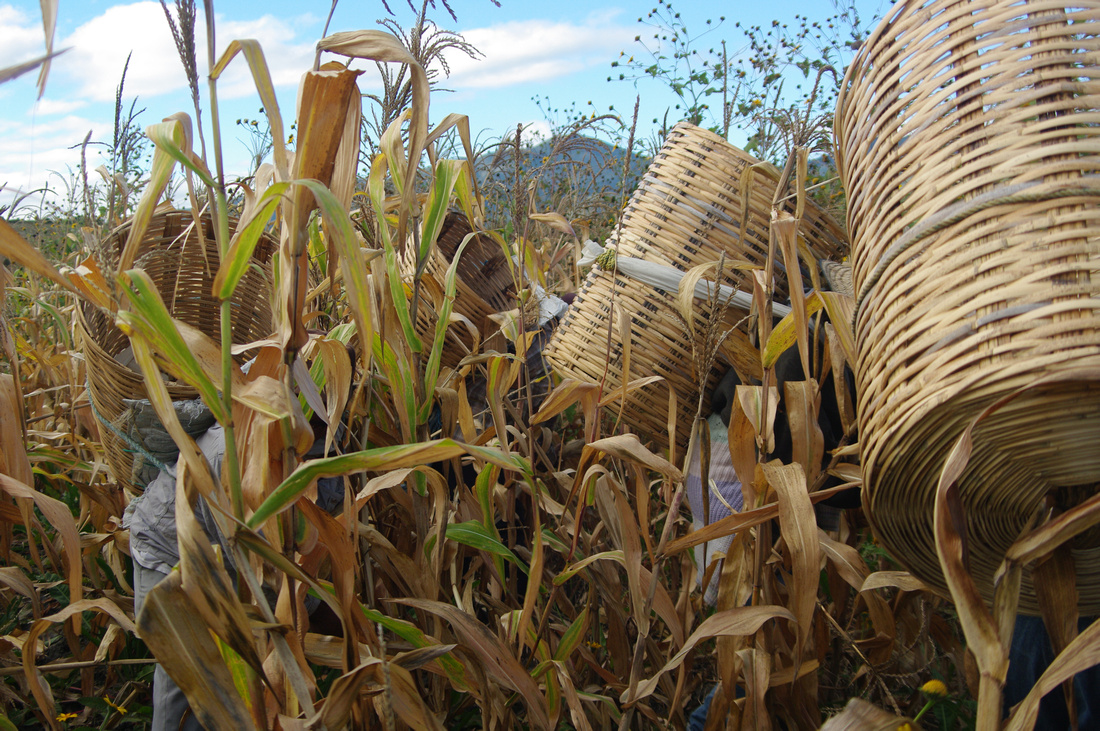

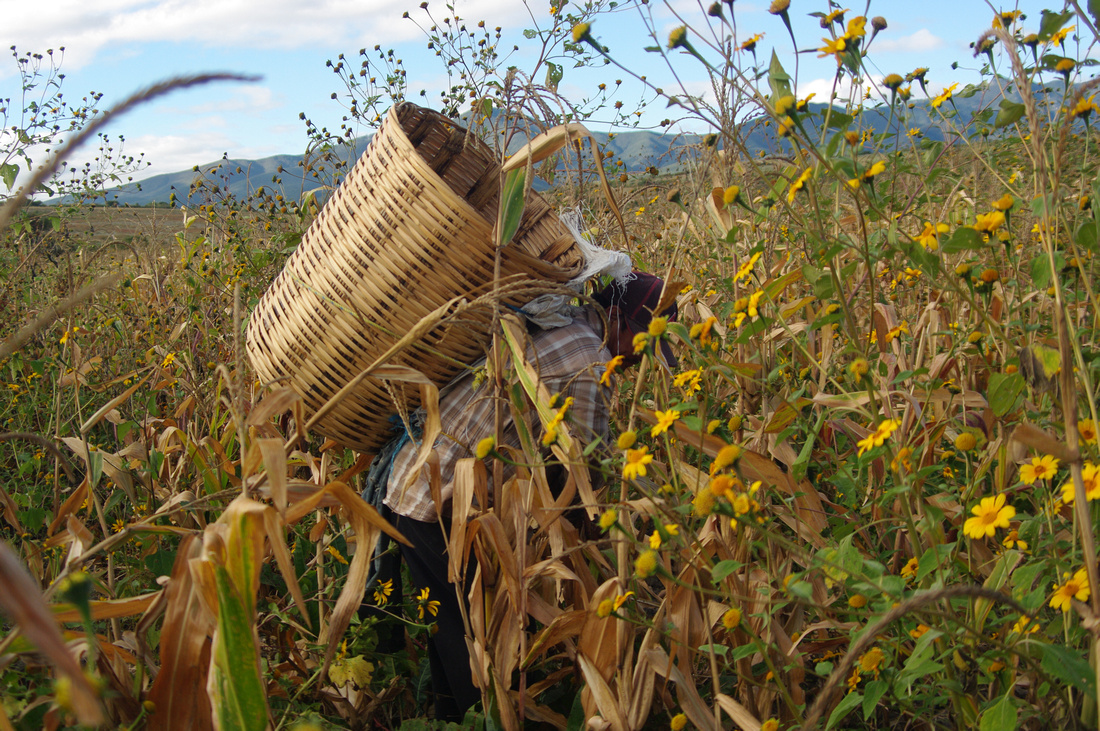

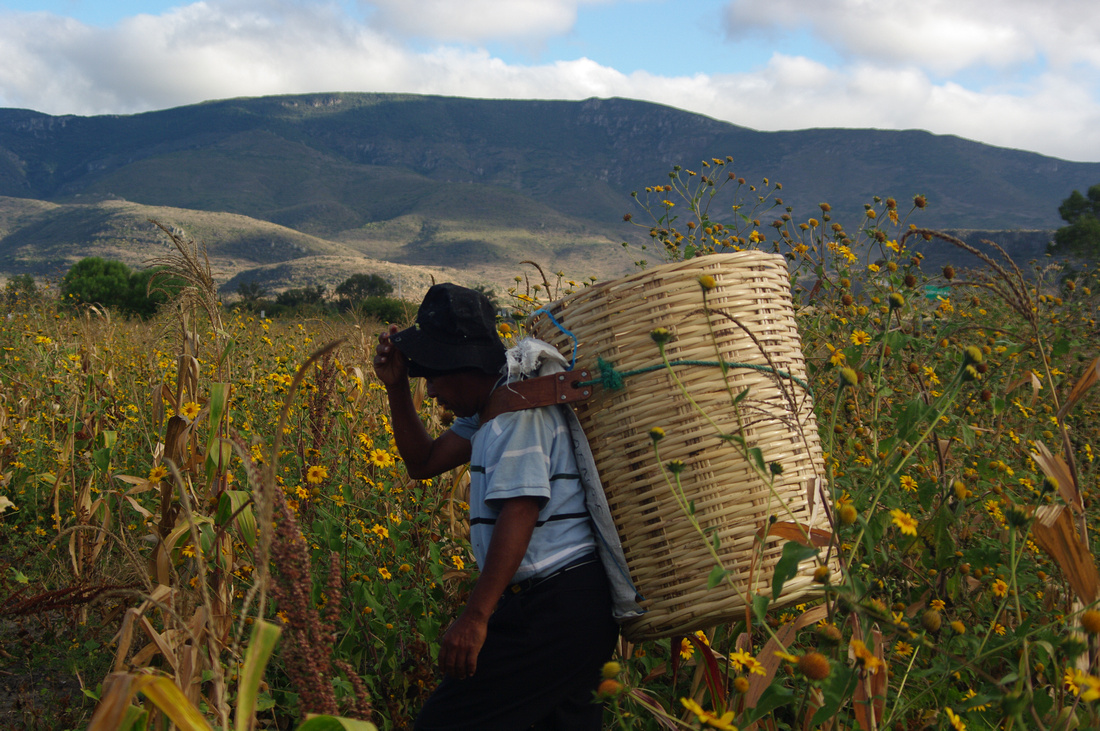
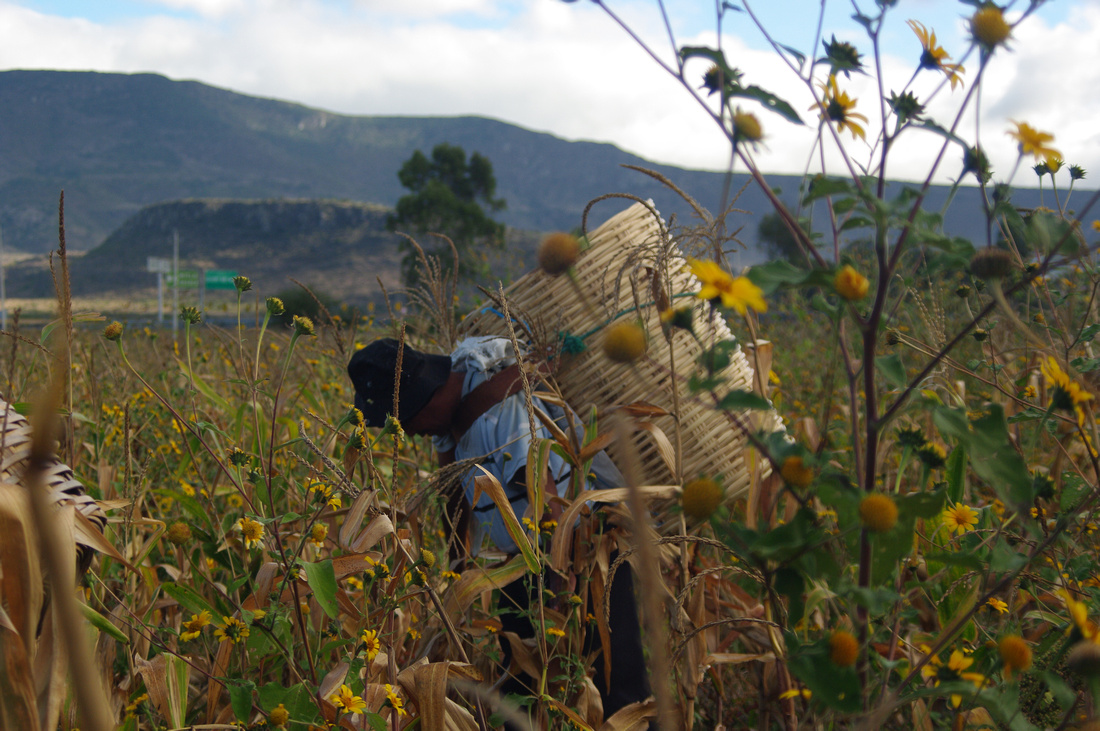

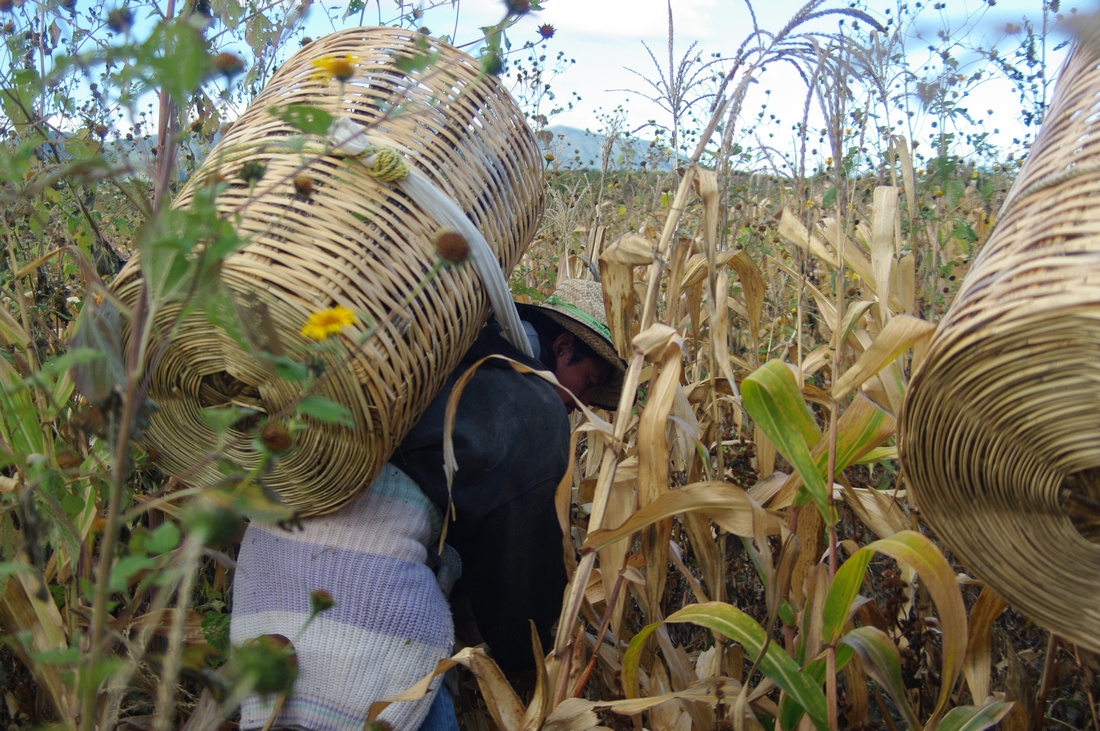


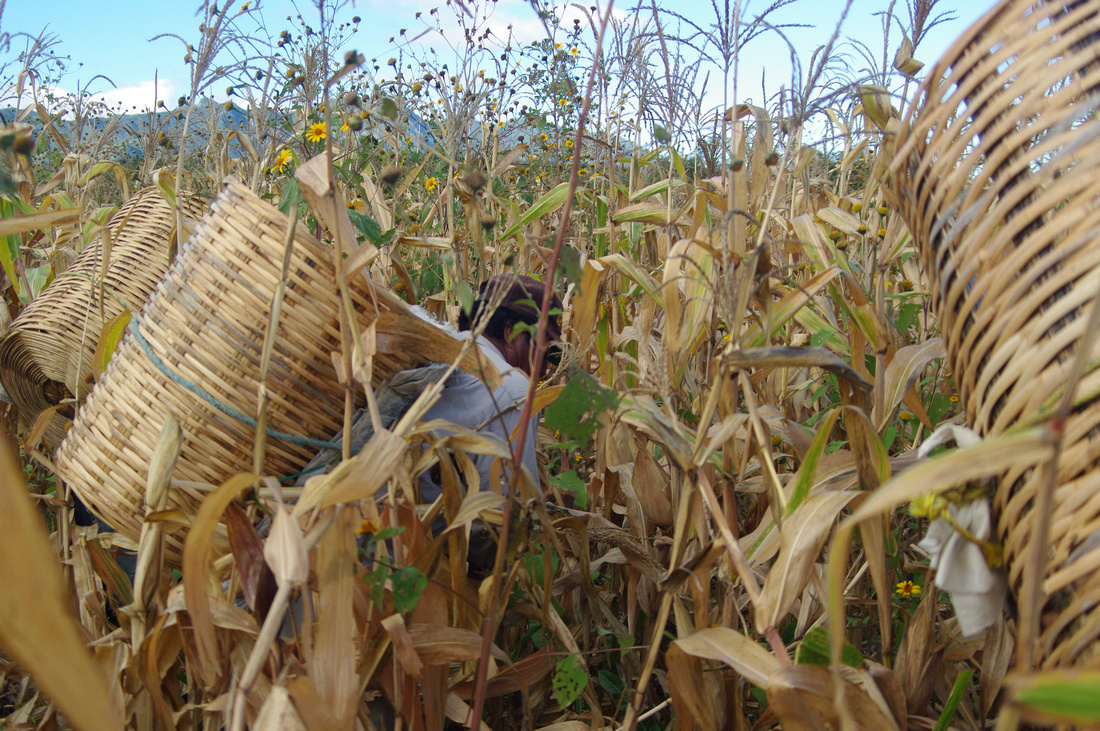
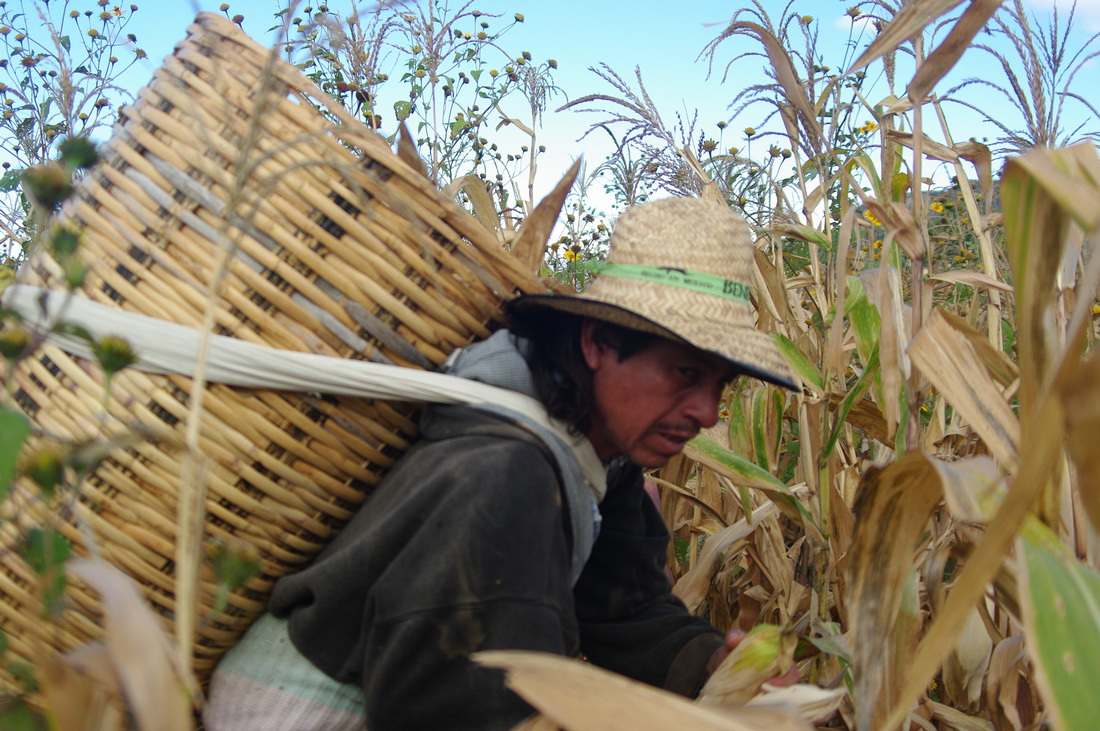
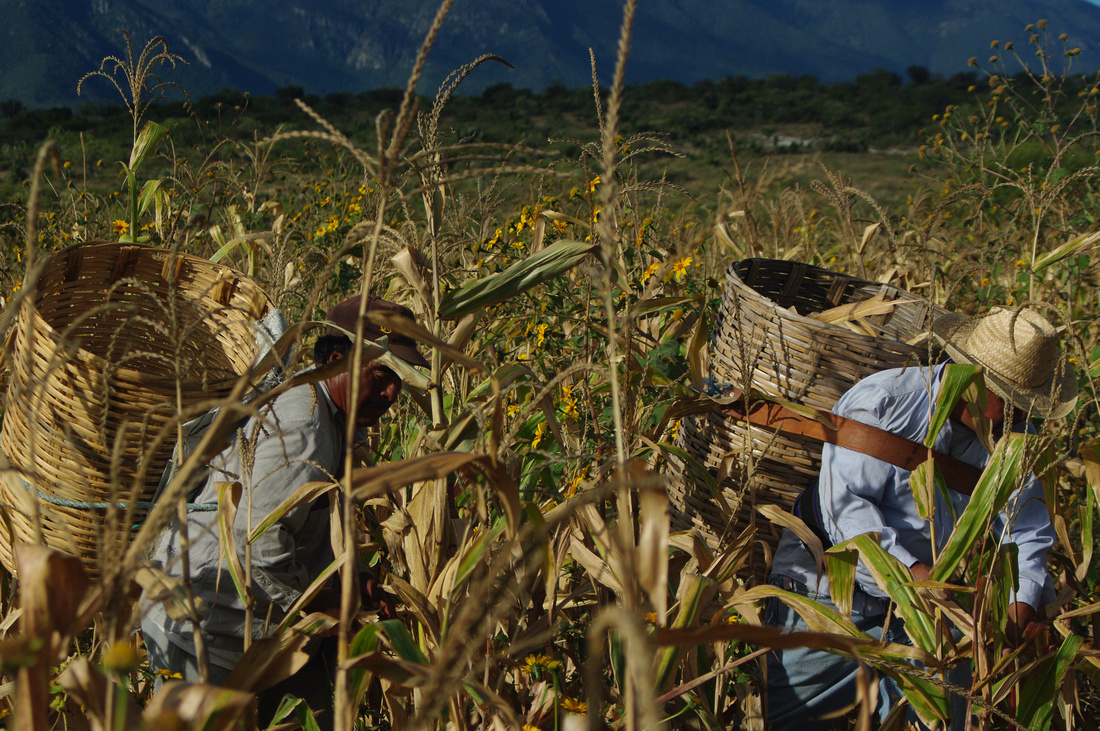

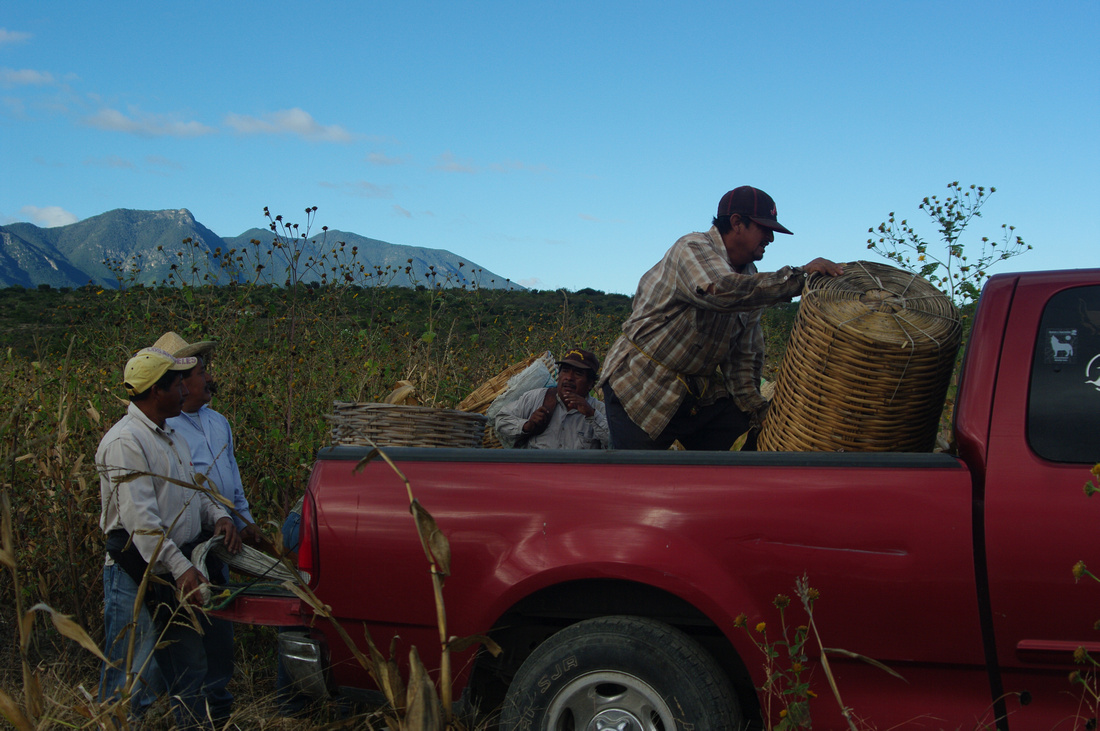
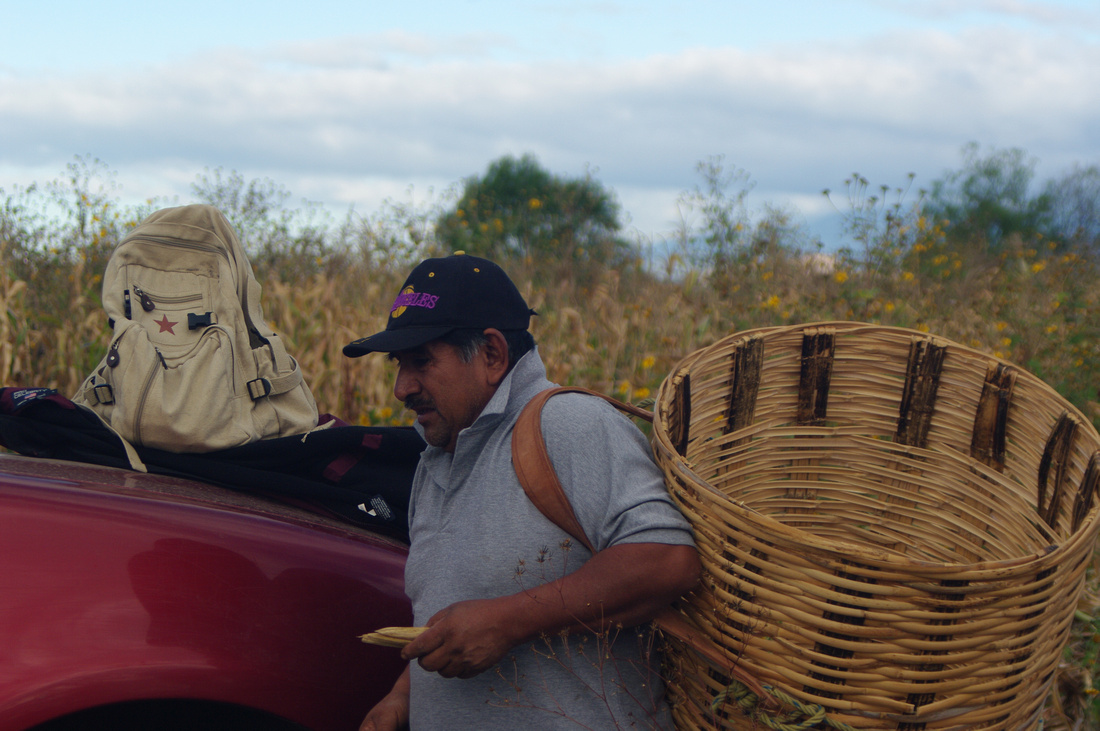

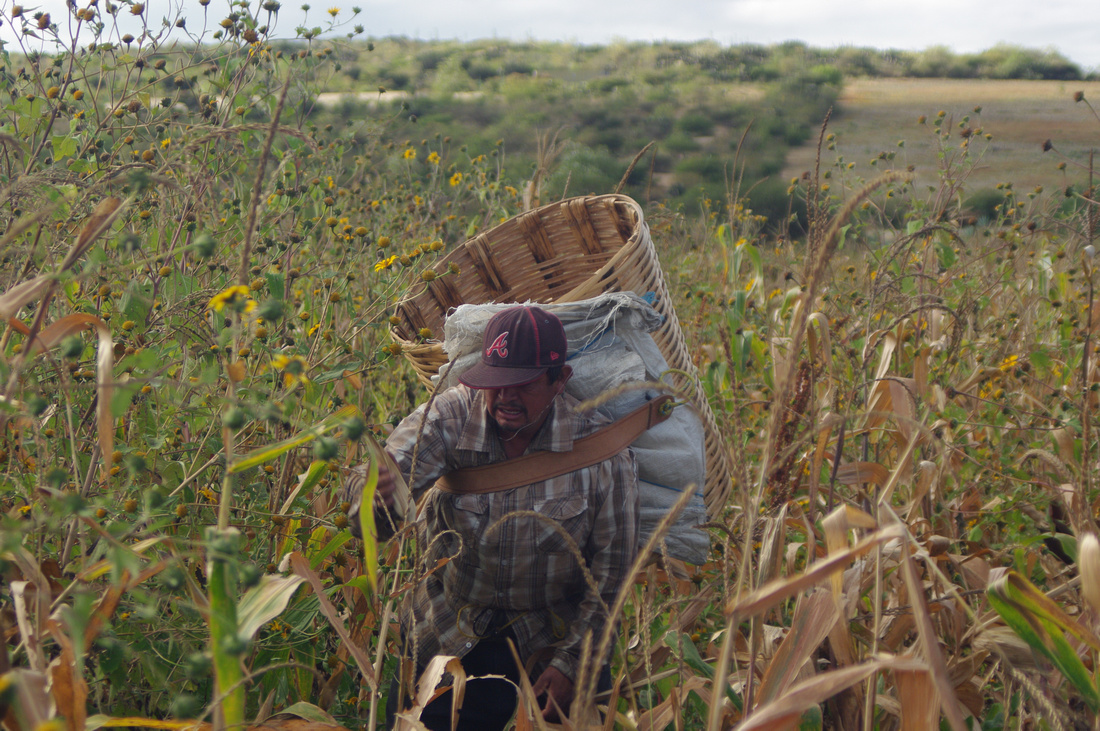
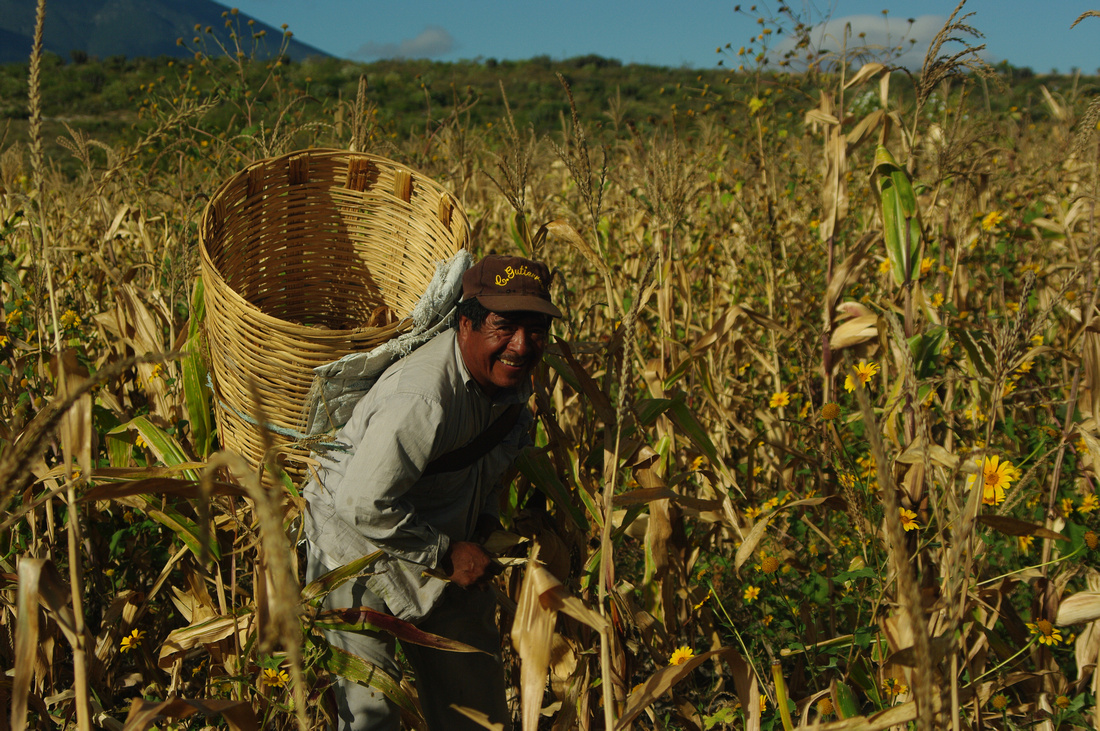
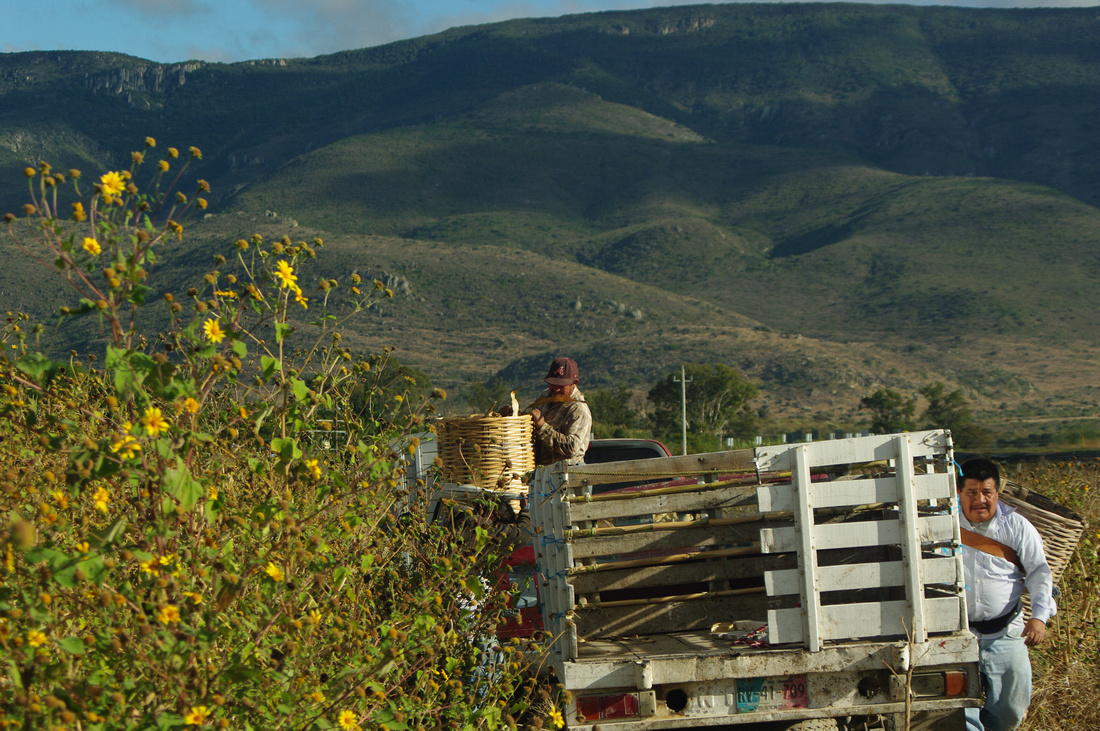
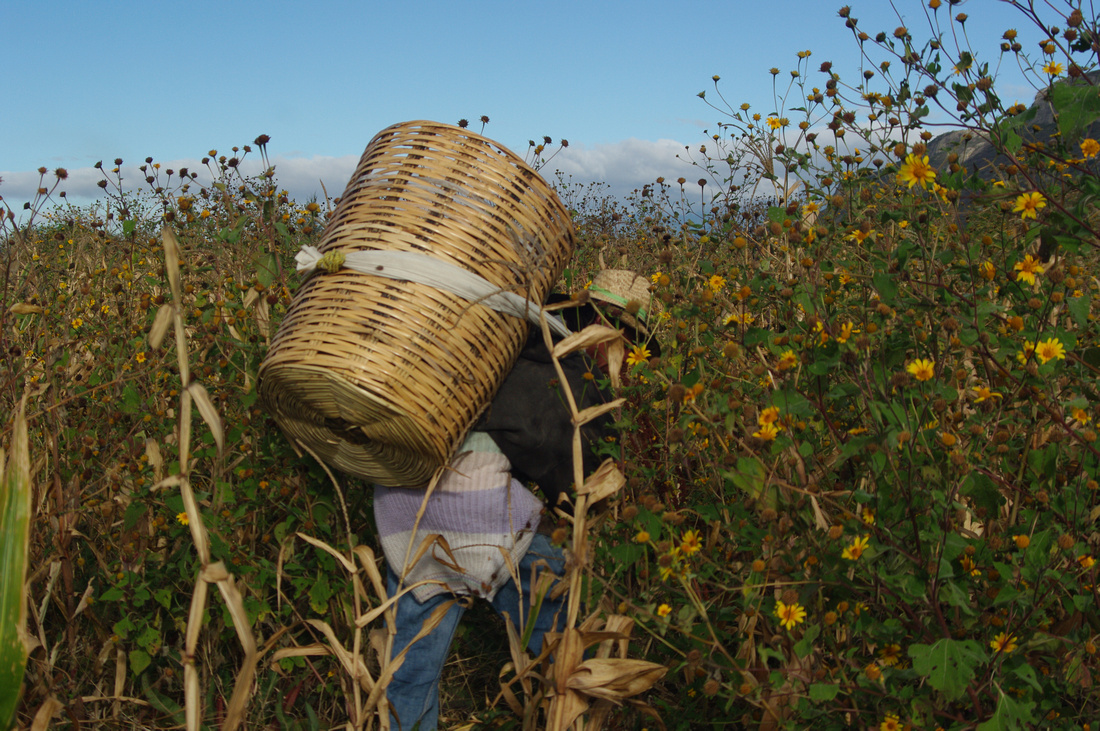
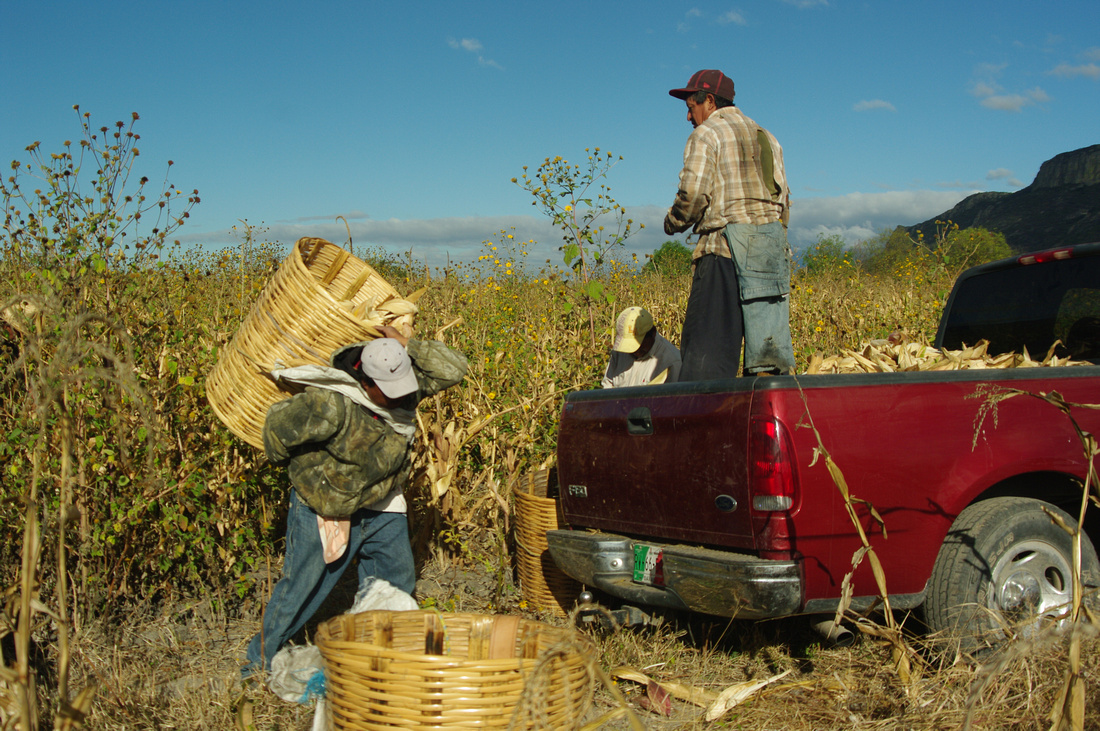
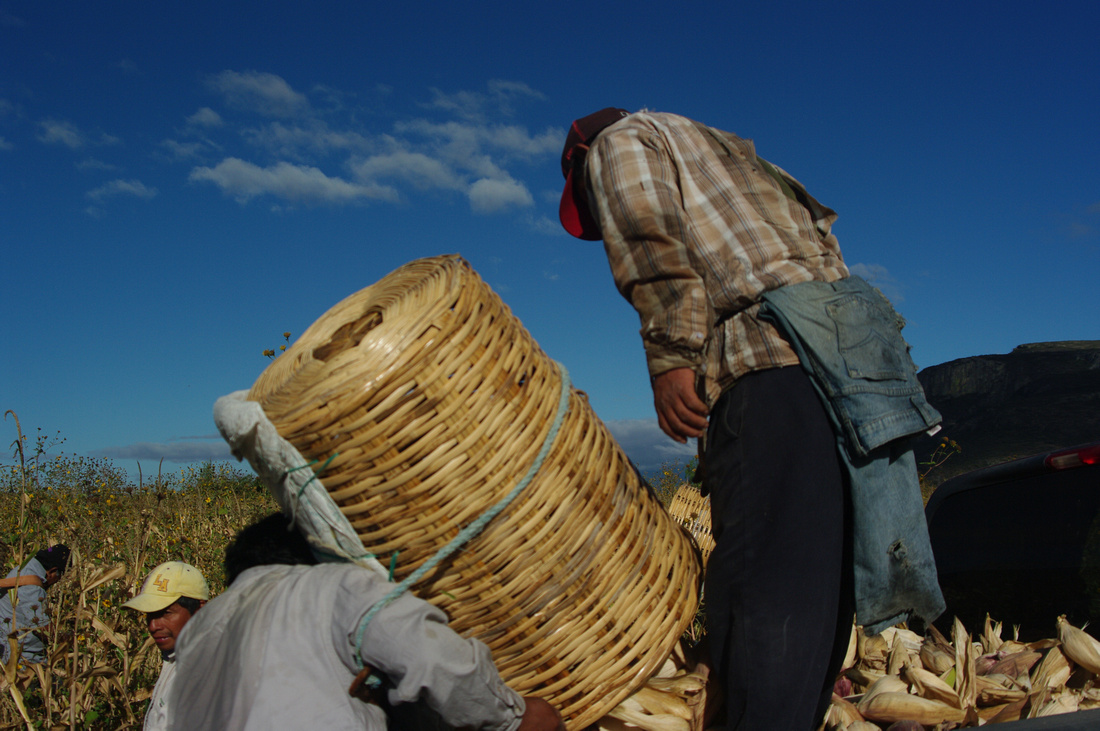


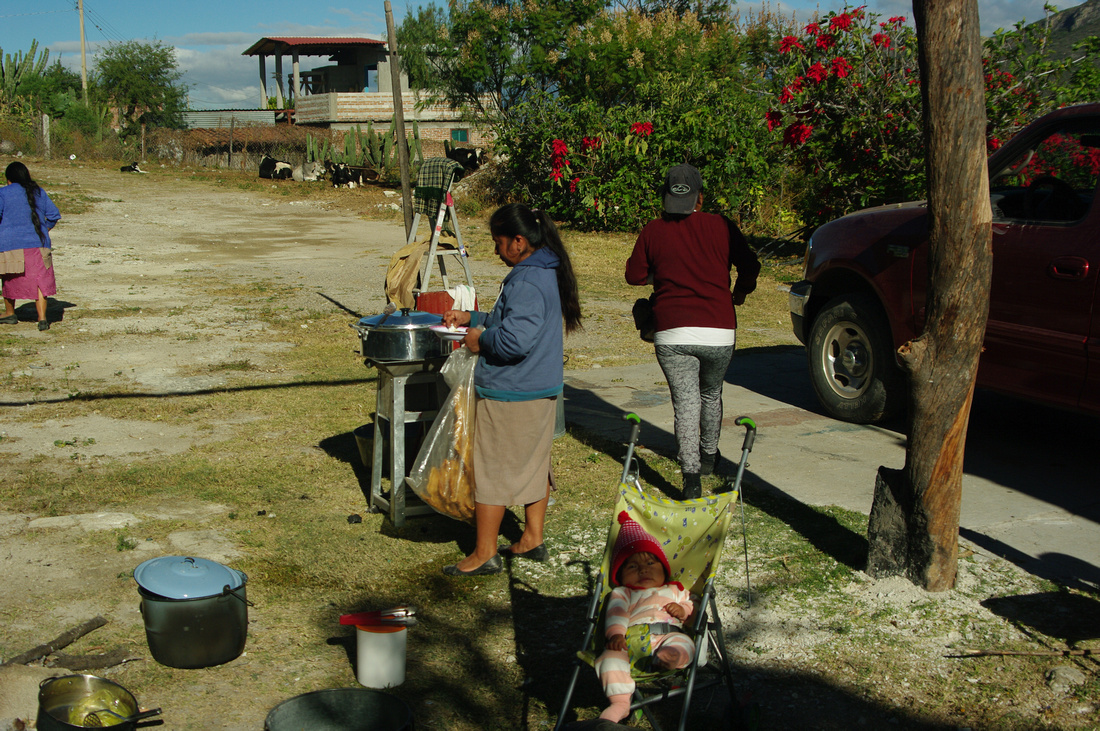
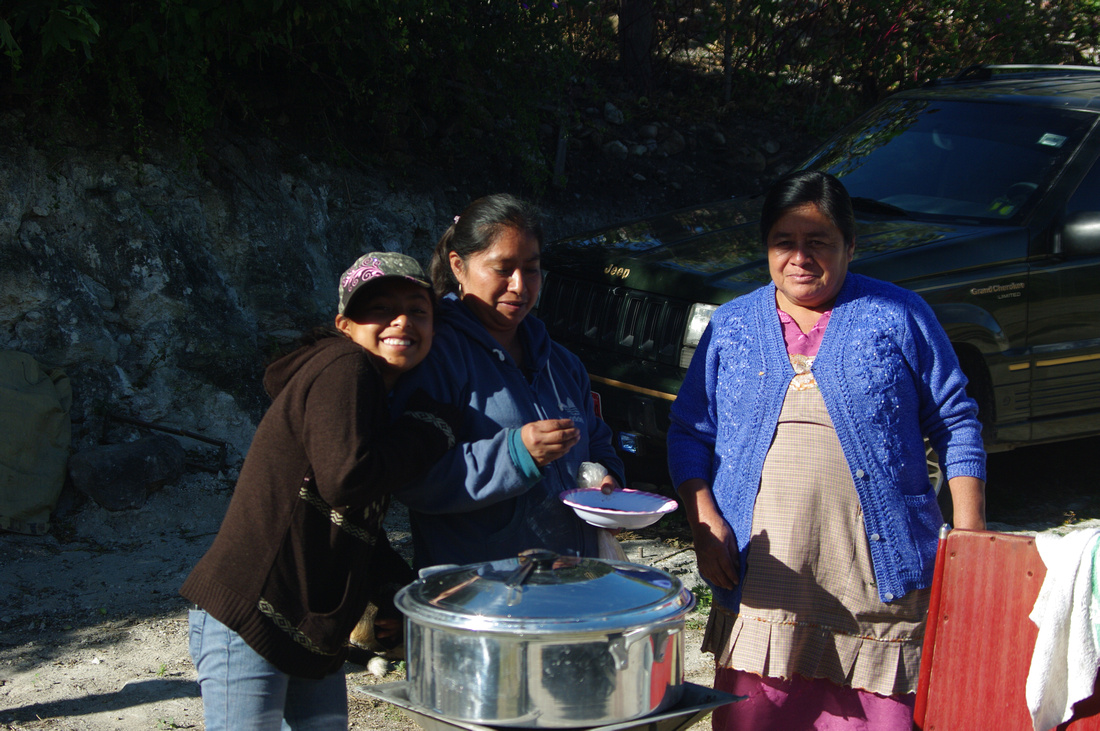

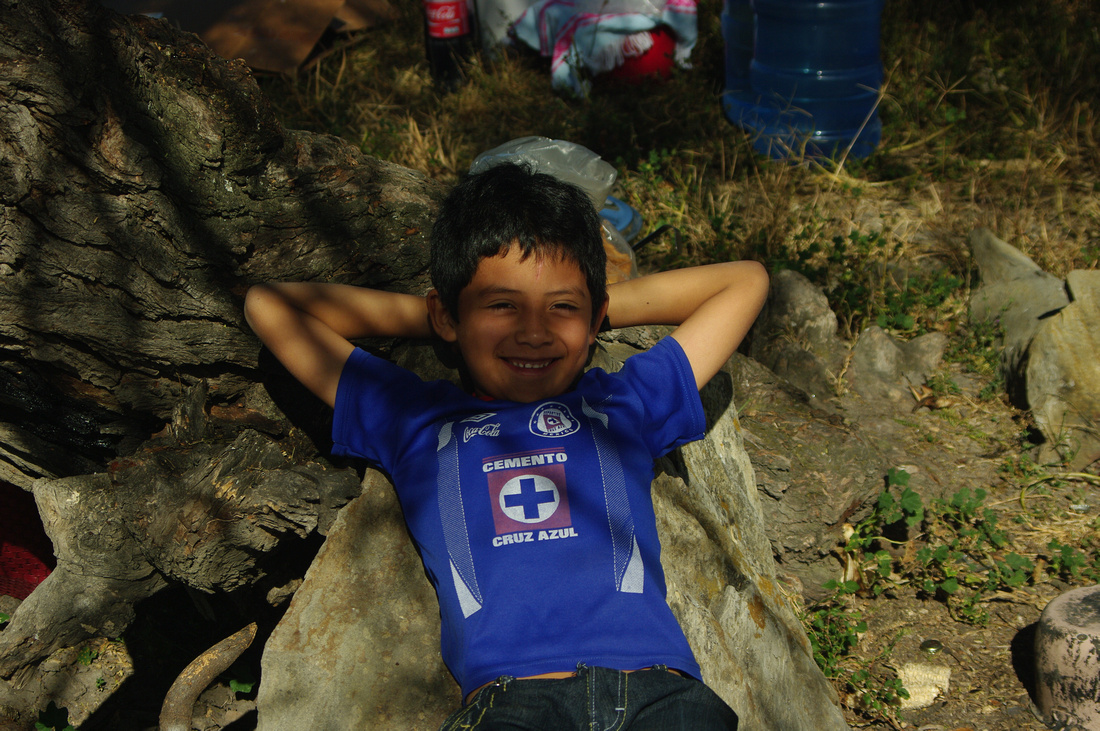

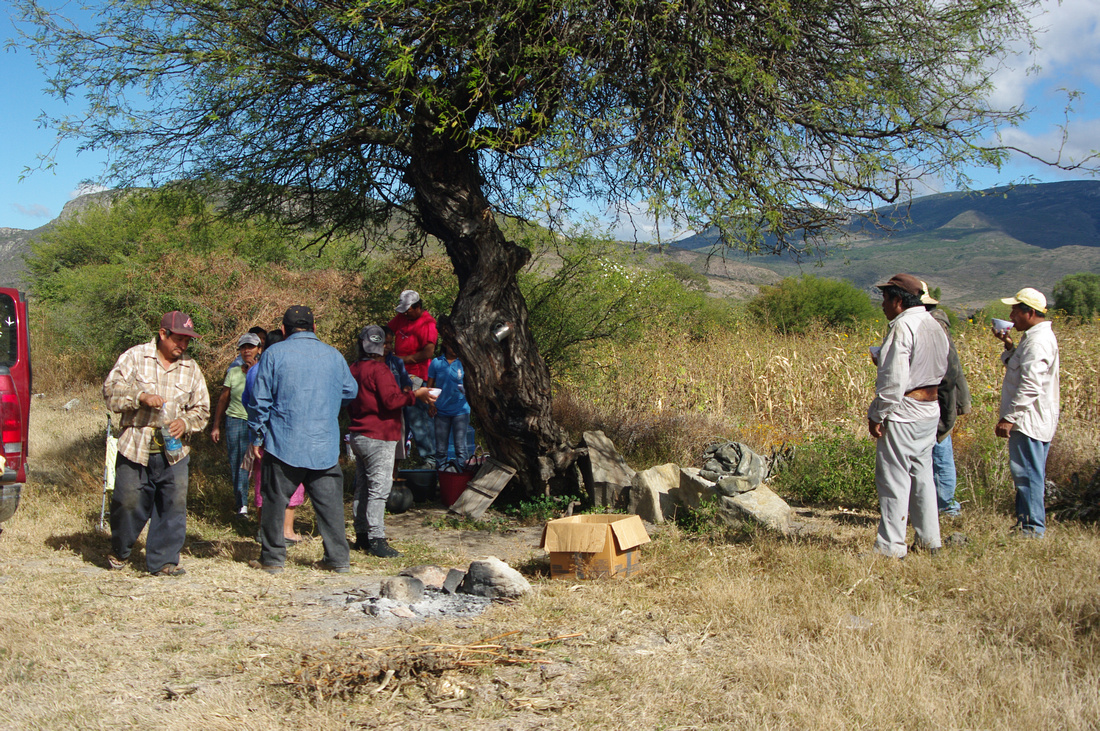

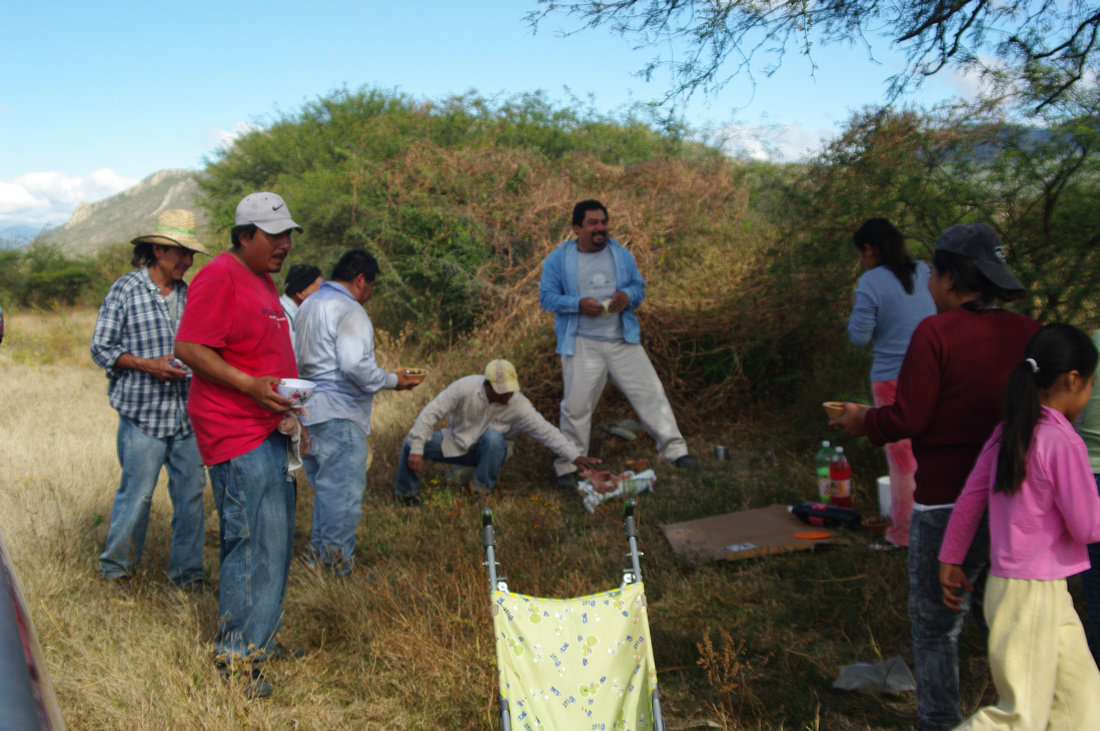
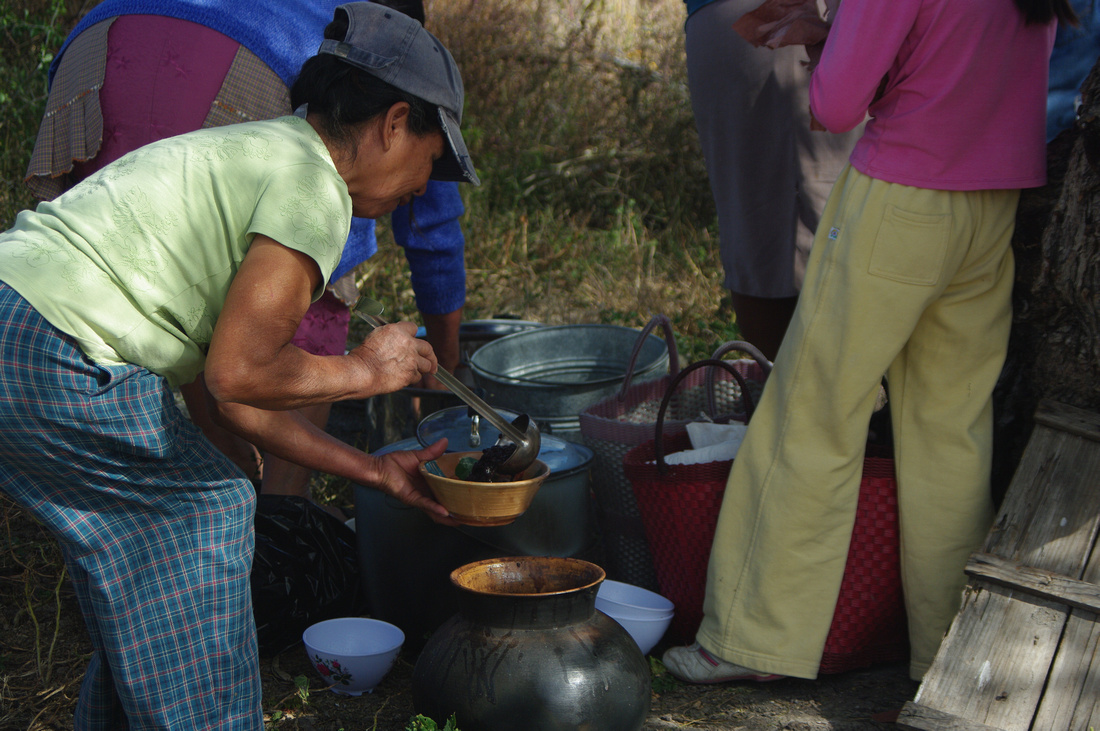
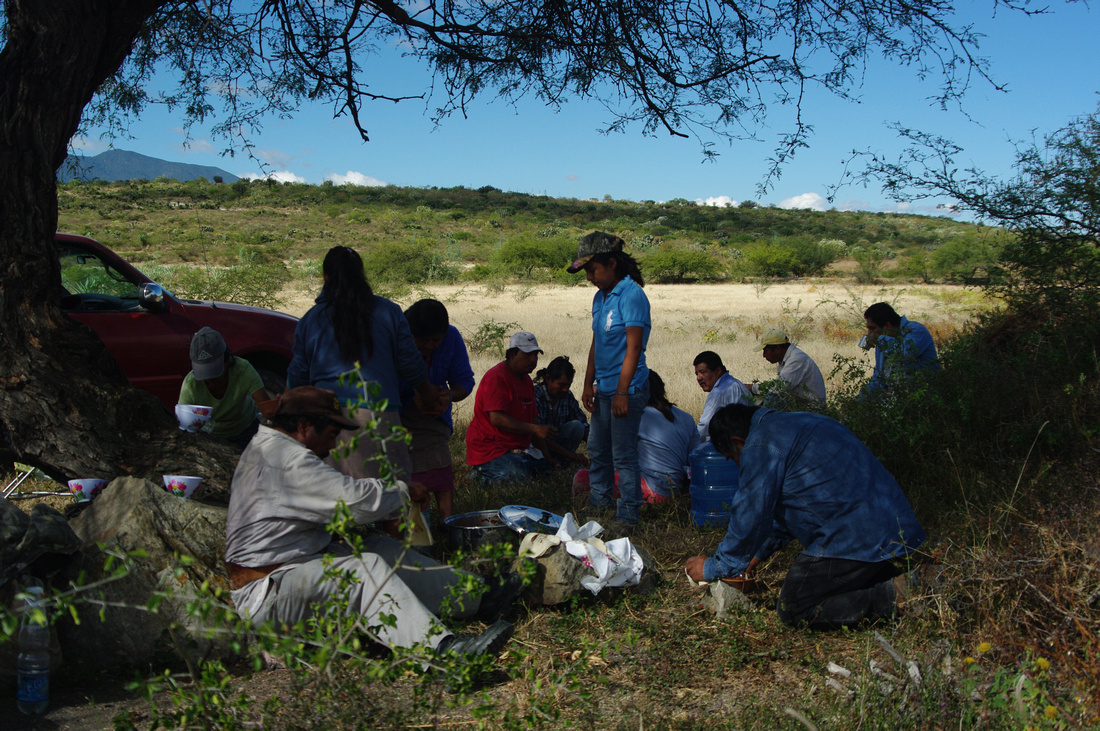
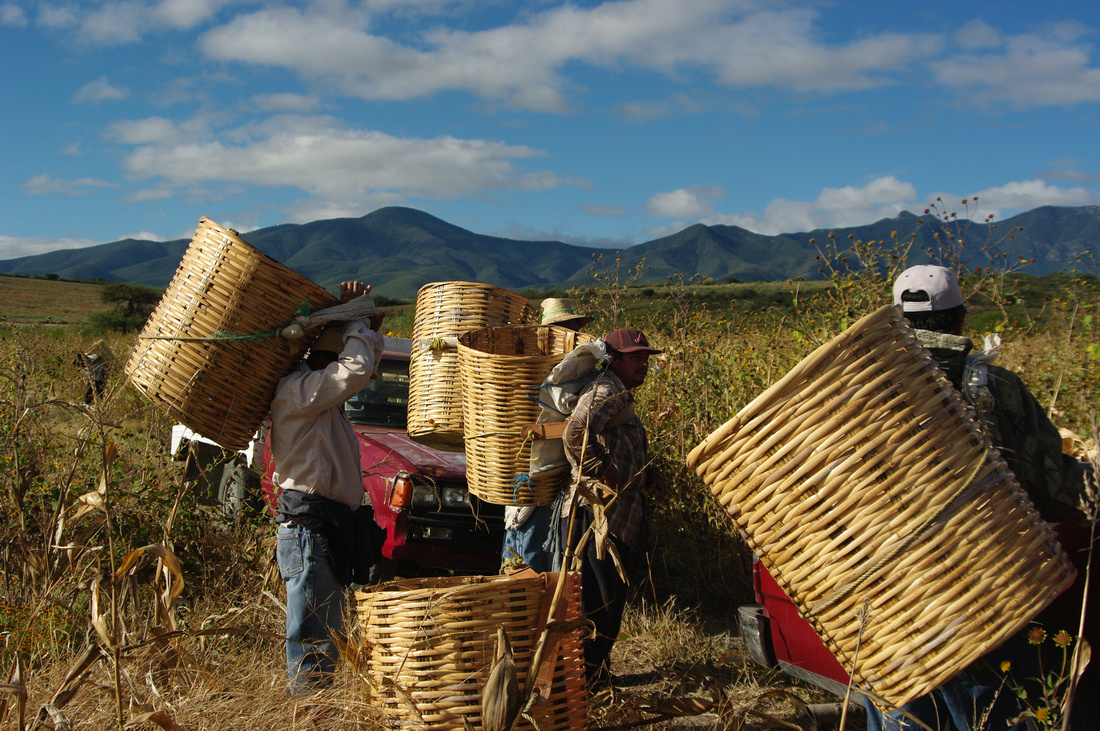
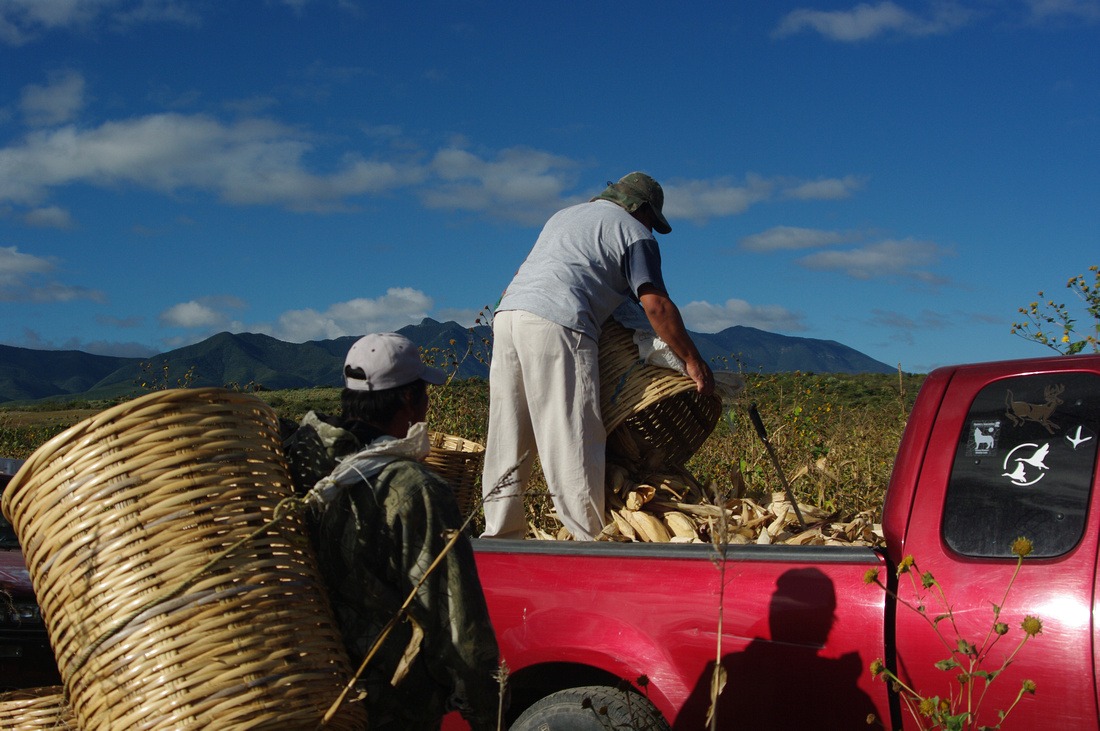
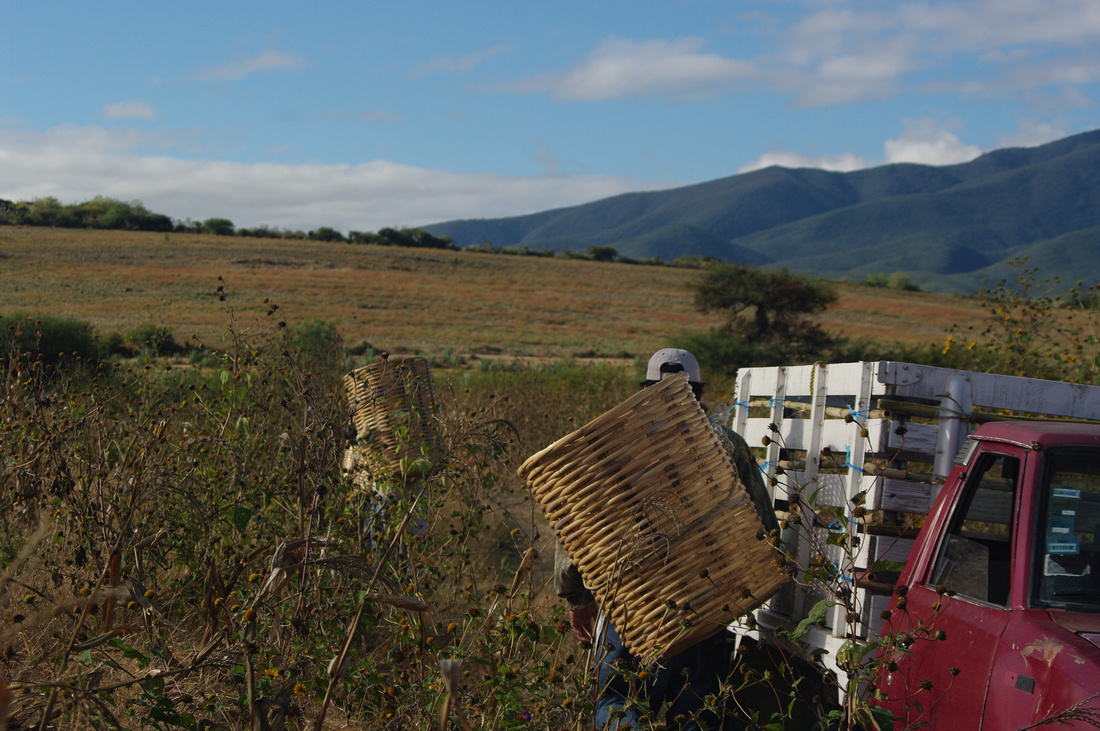
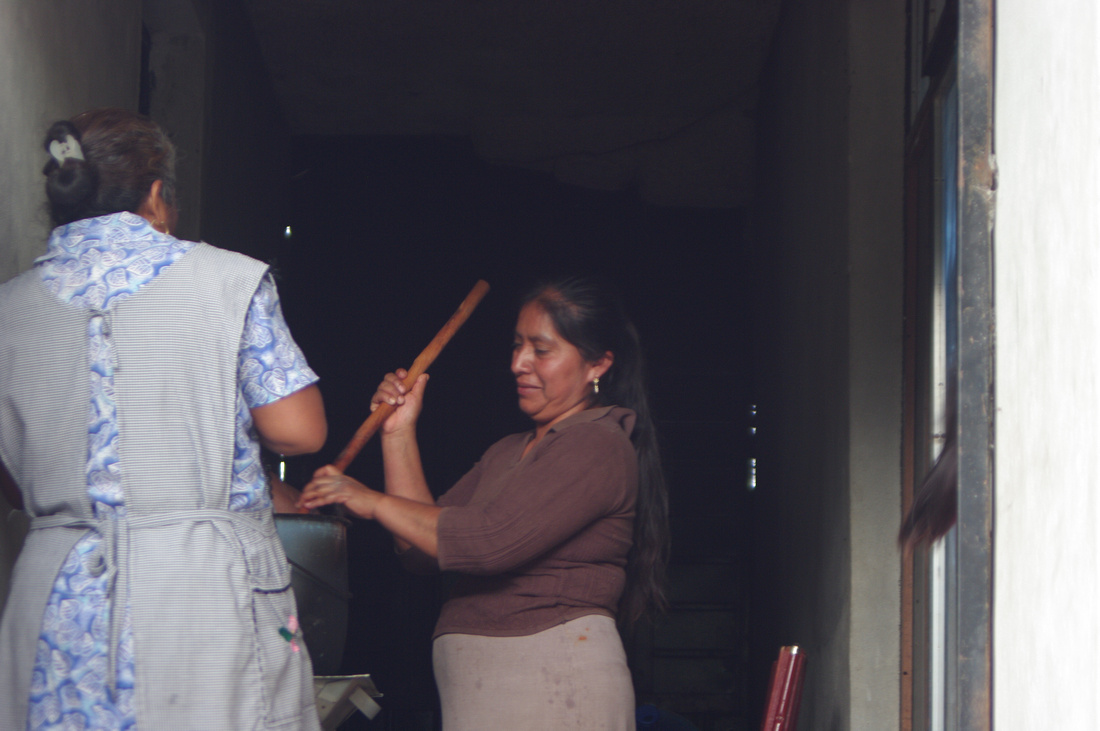
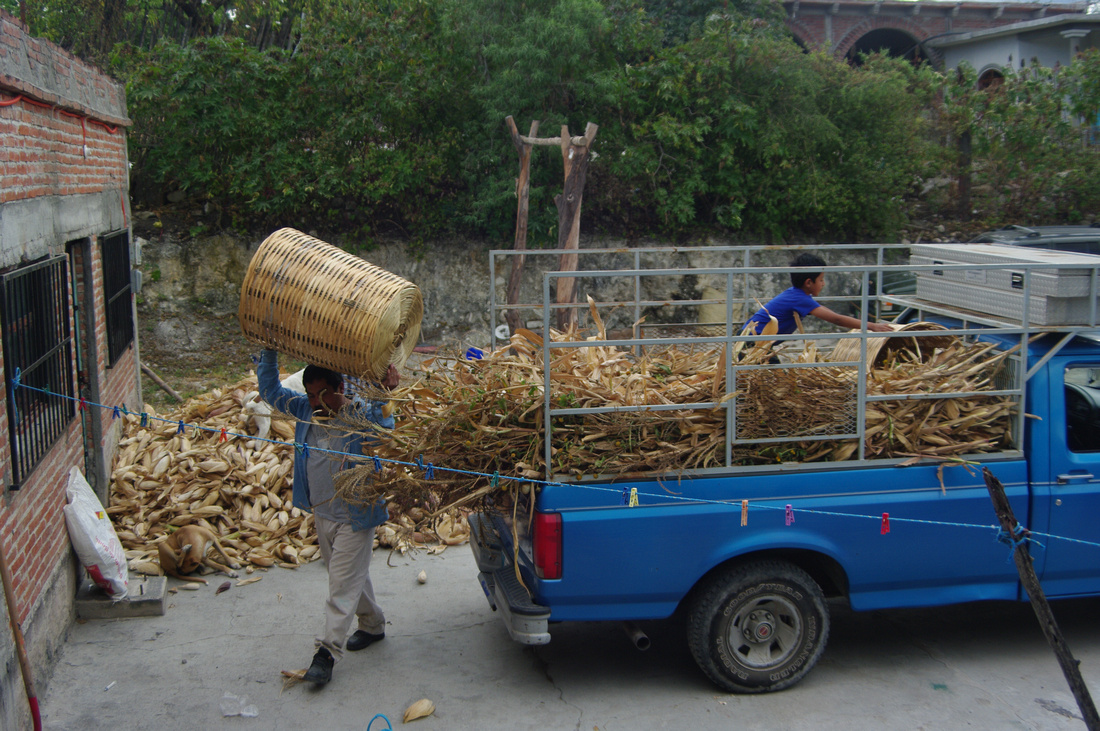
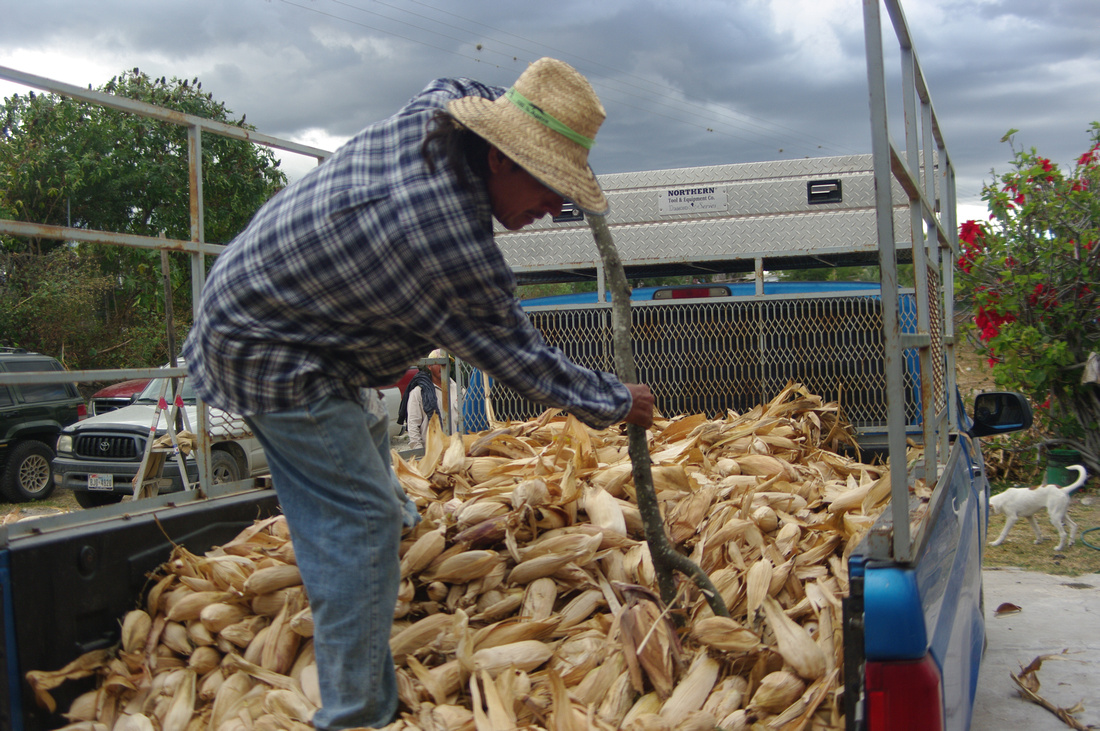
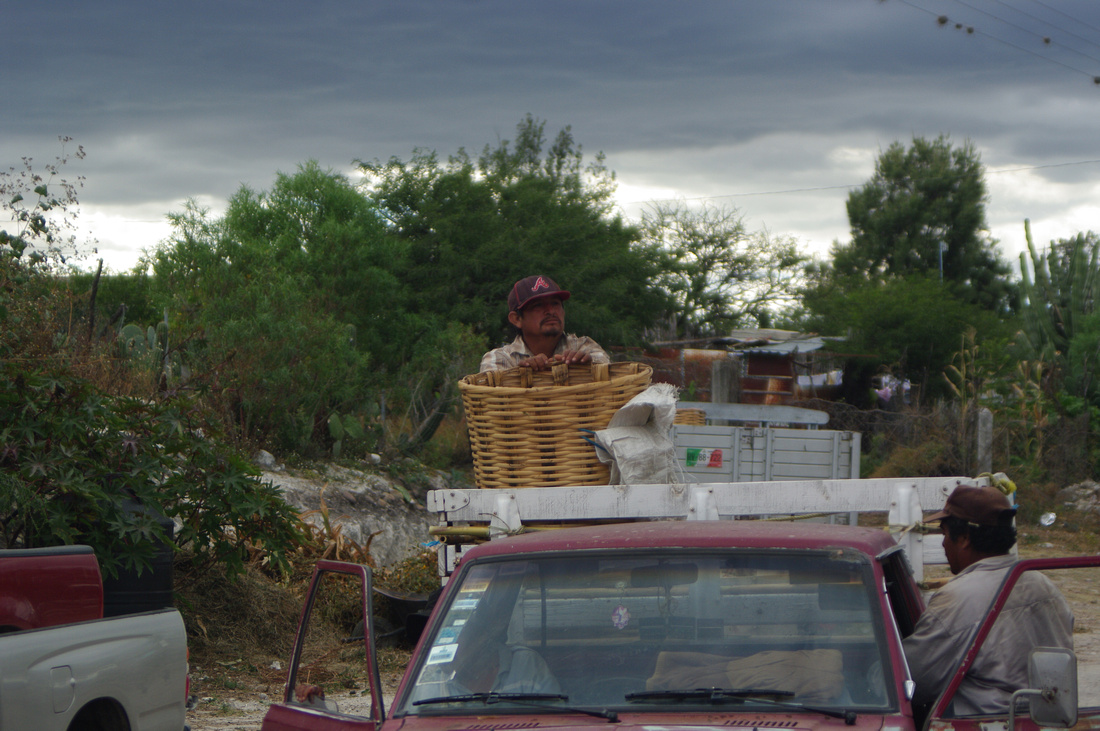


Monday was Beth's birthday. It was also our first attempt at hosting a comida. We invited 47 people and 45 showed up. It was a wonderful evening. Friends from Union Zapata, Mitla, Matatlan, San Dionisio, and Tlacolula attended.
Everyone was warned that the food was going to be a little different. We served hot dogs, potato salad, coleslaw, and Boston Baked Beans. Not a typical menu aqui in Oaxaca. Beth was asked for her recipes which is a good sign that the food was enjoyed.
We have attended many fiestas here in Oaxaca. How different it is to attend or give a small comida where all of the faces, regardless of where you look, are faces of close friends.
As is the custom here Beth was prompted to take a bite, (mordida), of the cake before it was cut. It's kinda of a fun version of the bride and groom cutting the cake at a wedding. Often someone manages to sneak around behind the birthday person and push their face into the cake resulting in icing from chin to forehead. I suppose that not knowing what her reaction would be Beth was not accosted.
Later in the night Beth and I were coaxed into having a birthday dance. We felt like king and queen as we danced to "Don't Let Our Love Start Slipping Away", by Vince Gill.
It's such a great feeling to see friends enjoying themselves and even greater watching a loved one bask in the light of such wonderful friendships.
Today, another comida in Mitla to celebrate a friend's birthday.
Tomorrow morning at seven we have been volunteered to help pescar corn in the field of a friend. Should be interesting!
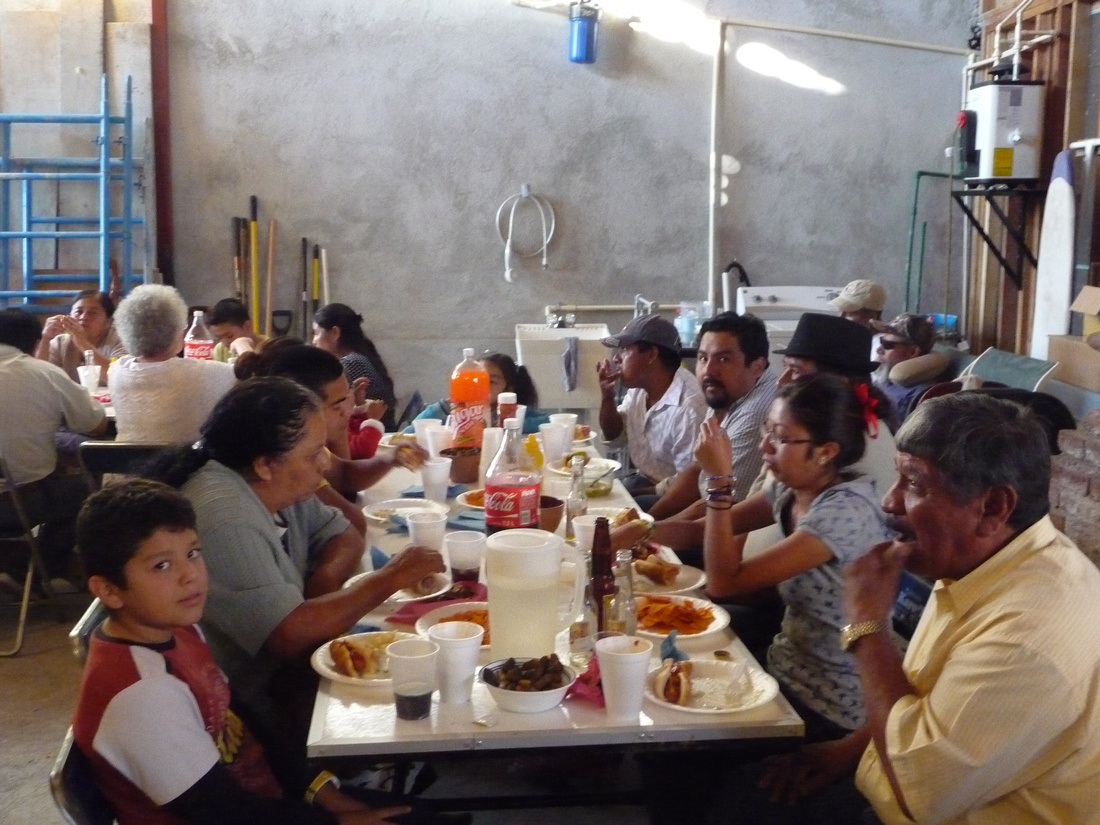
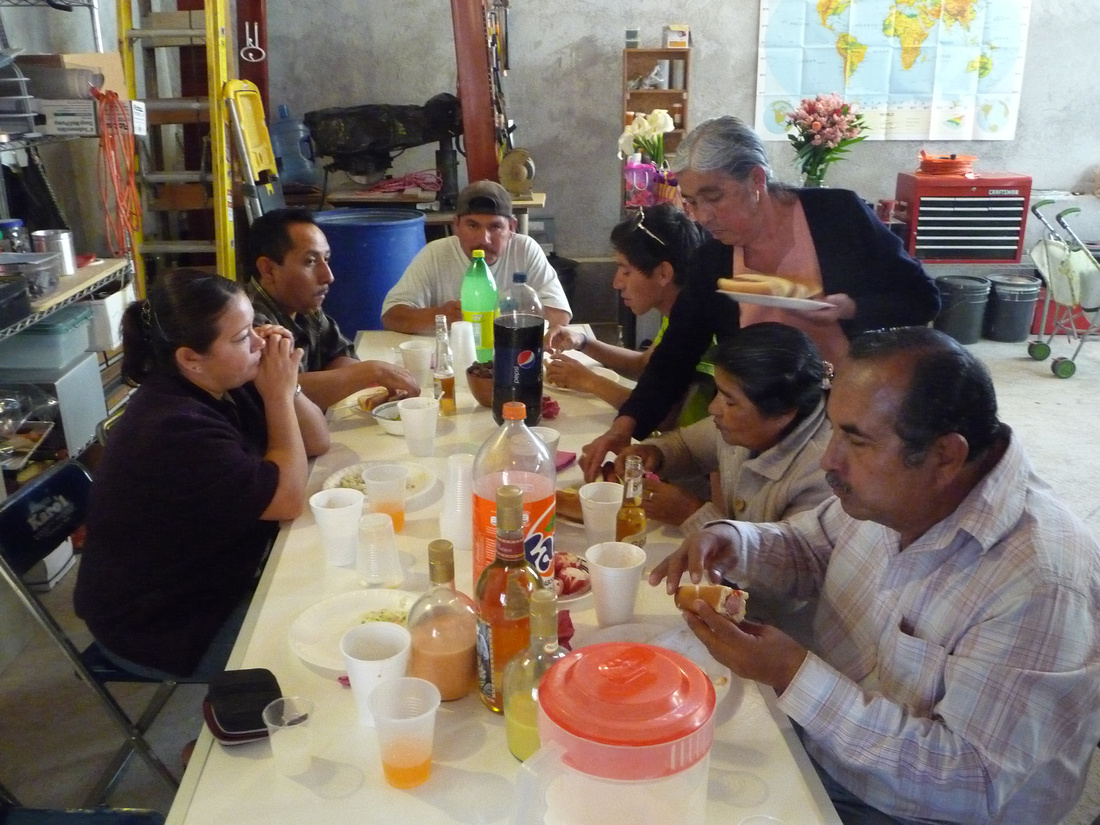
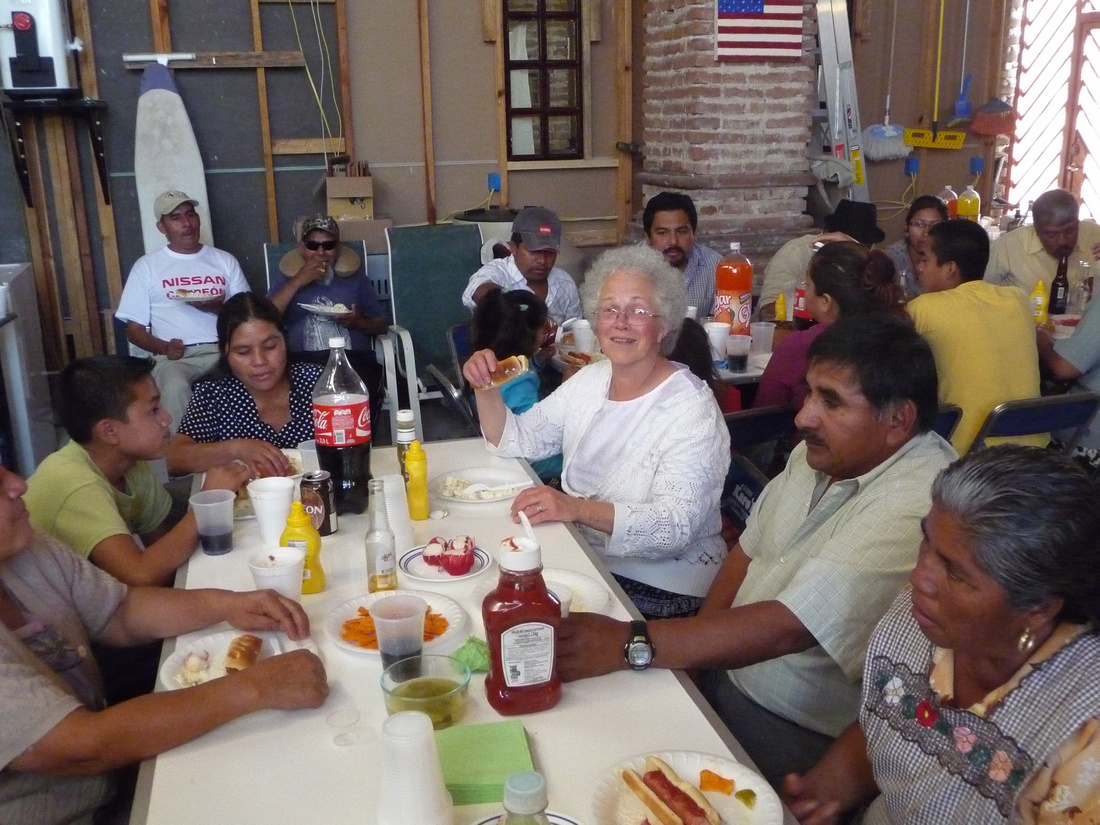
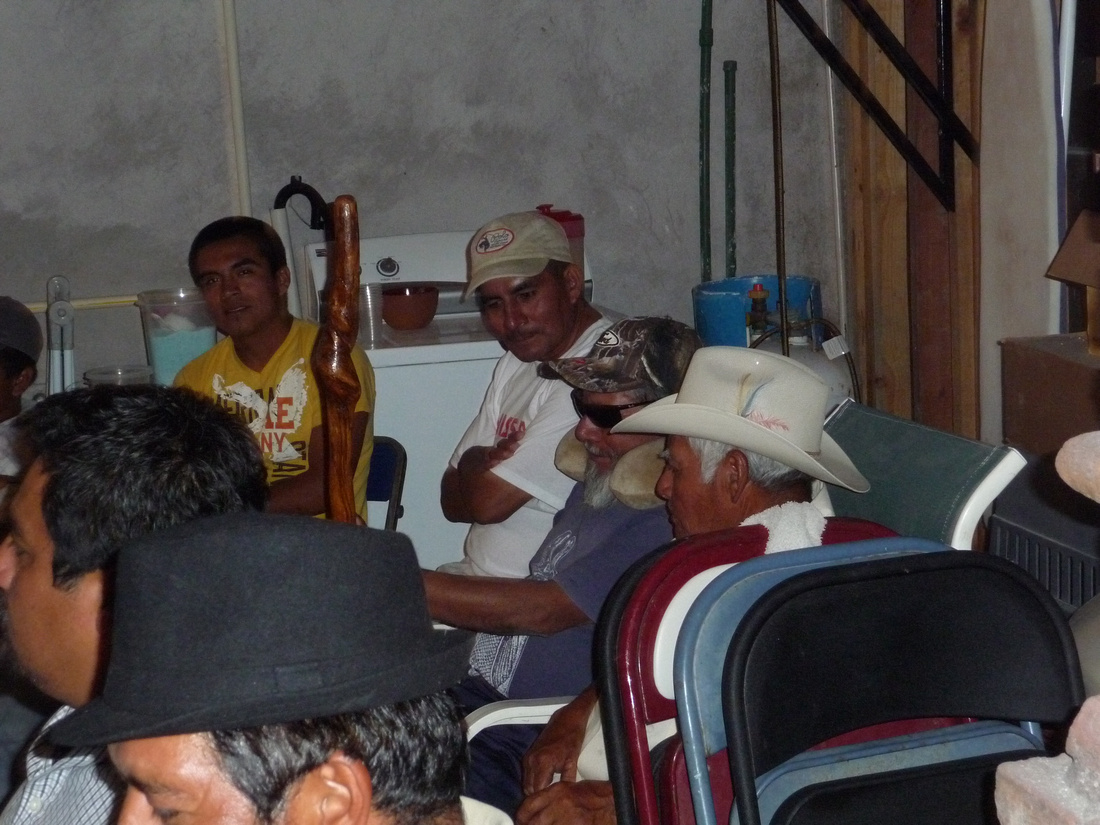
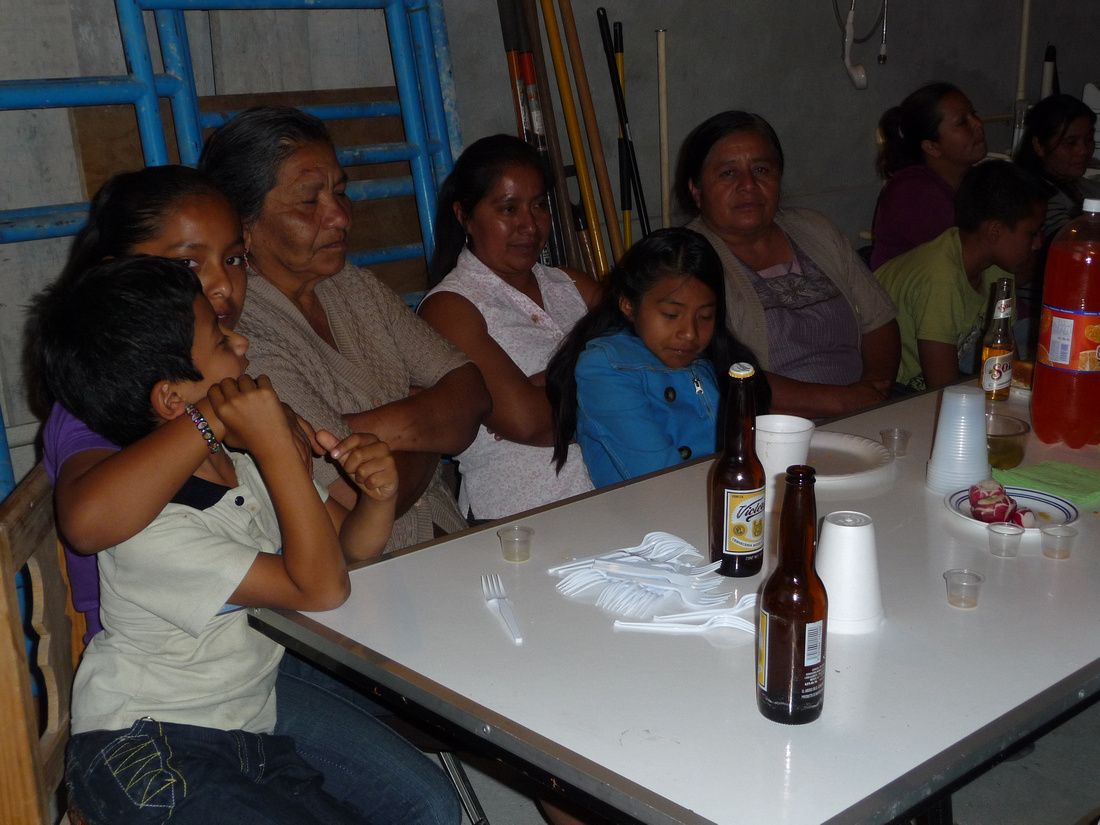
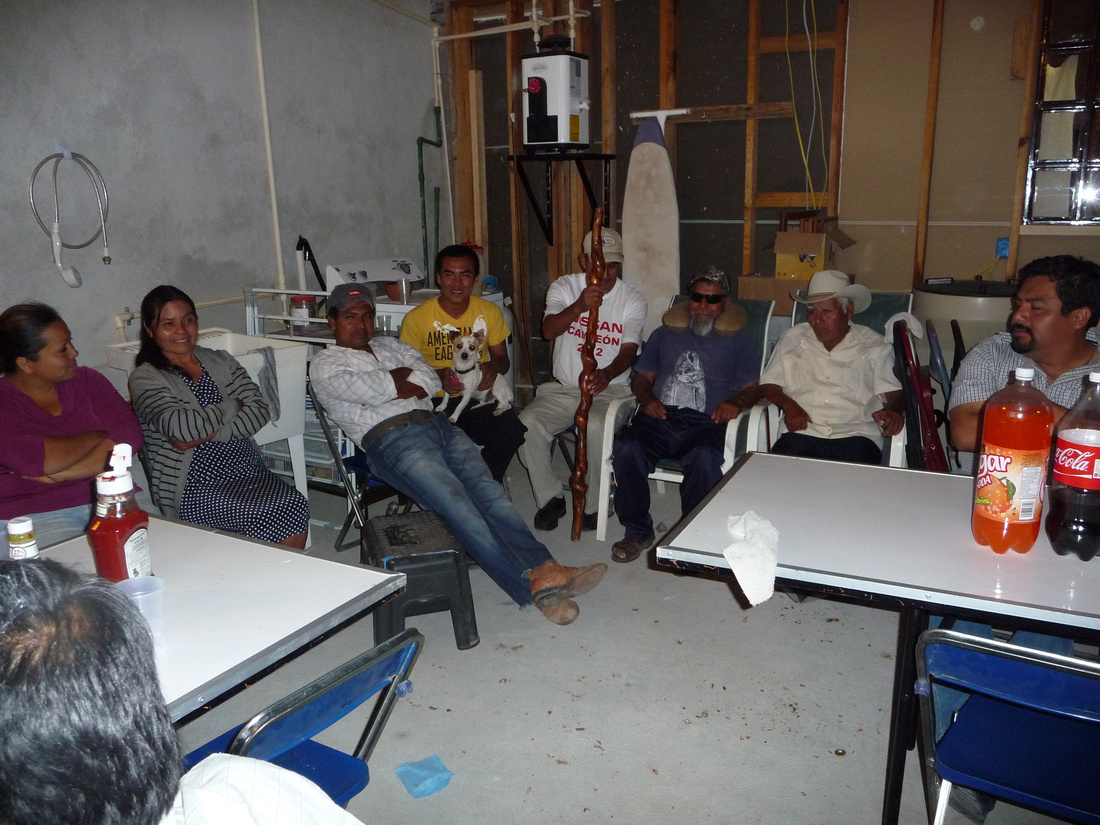

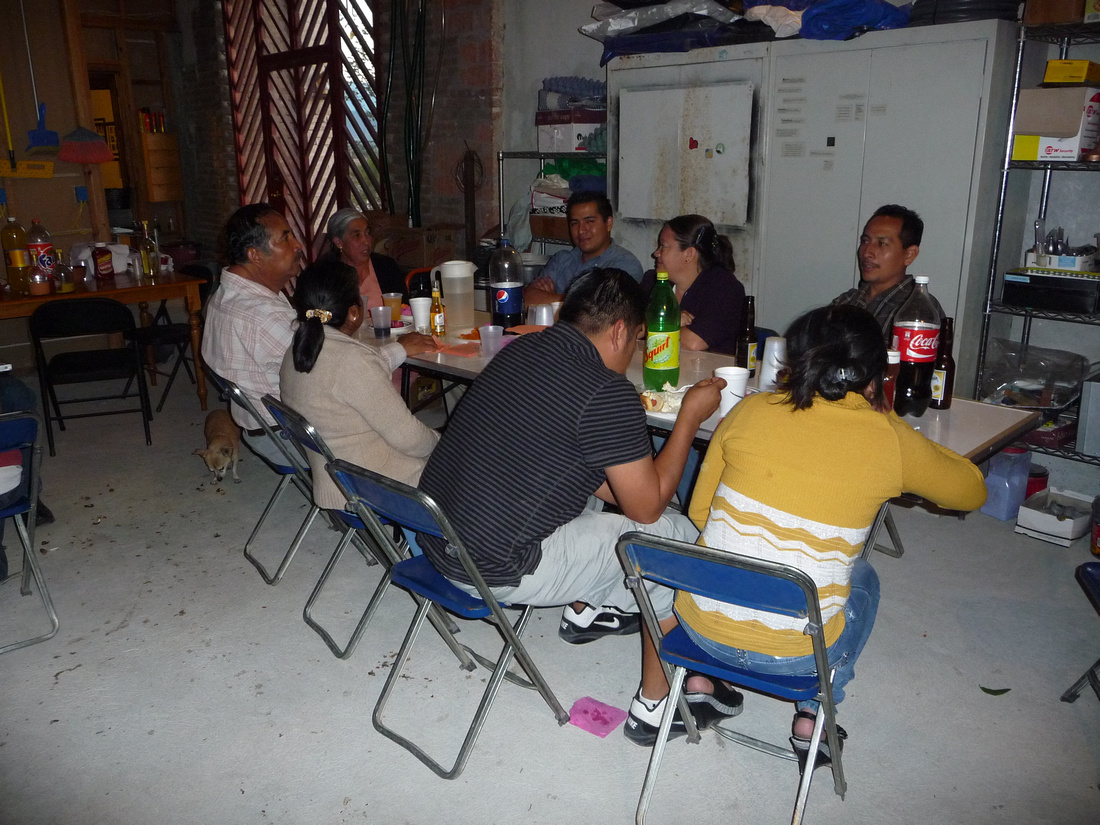


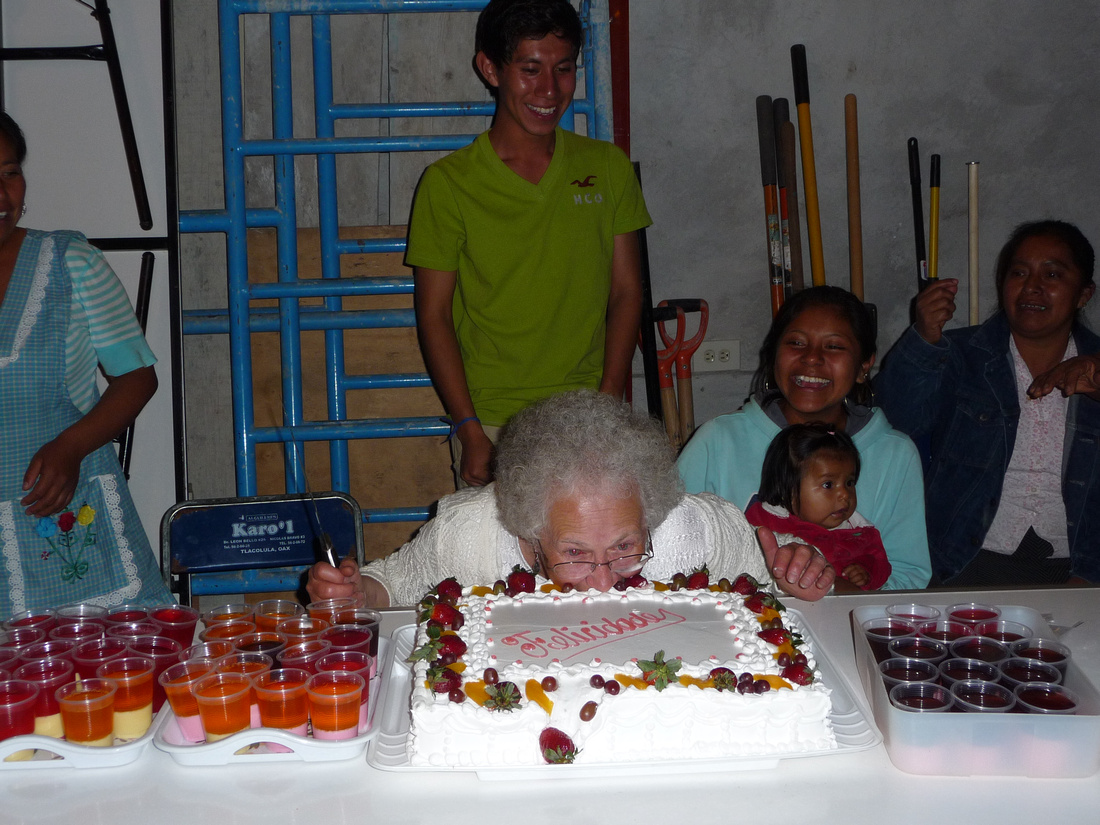
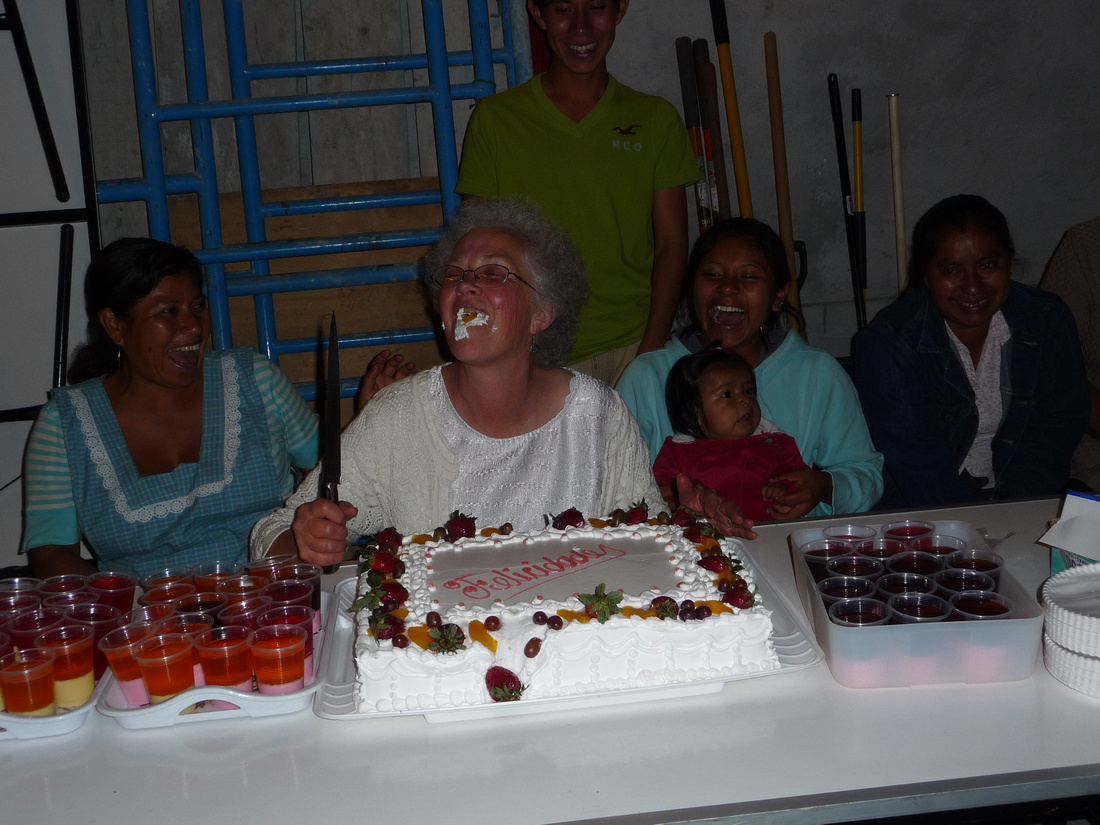

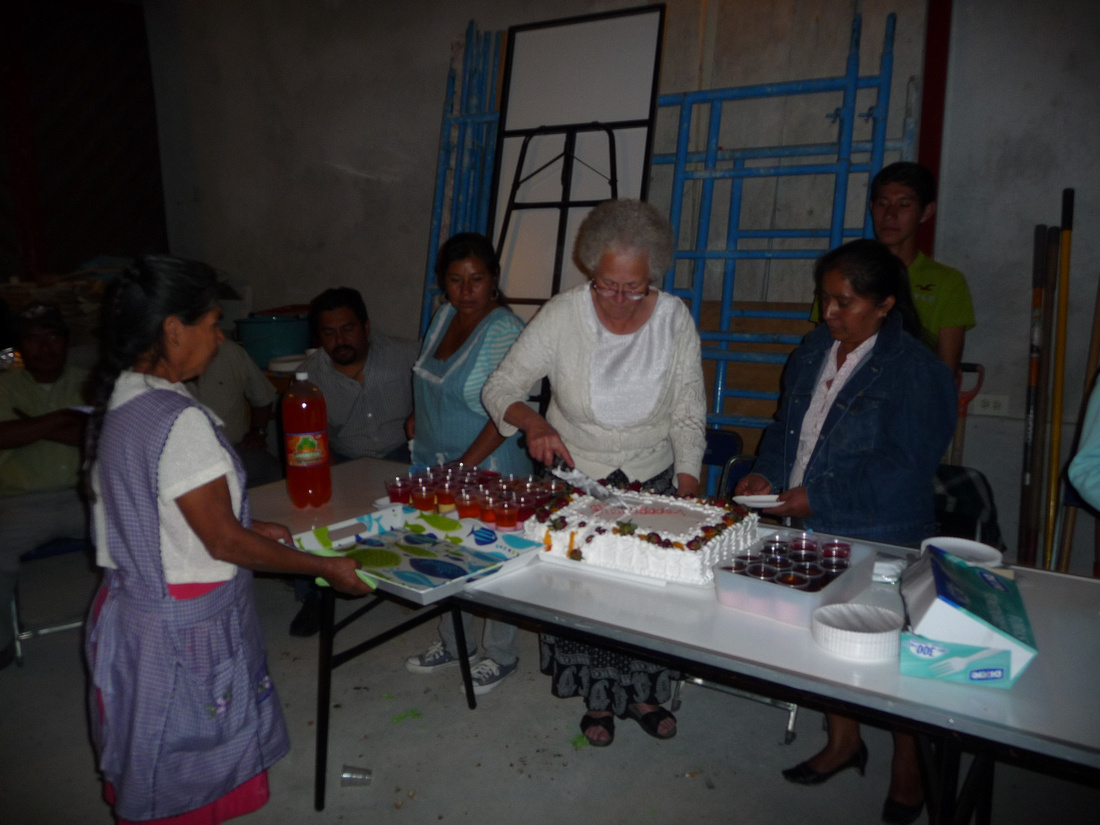
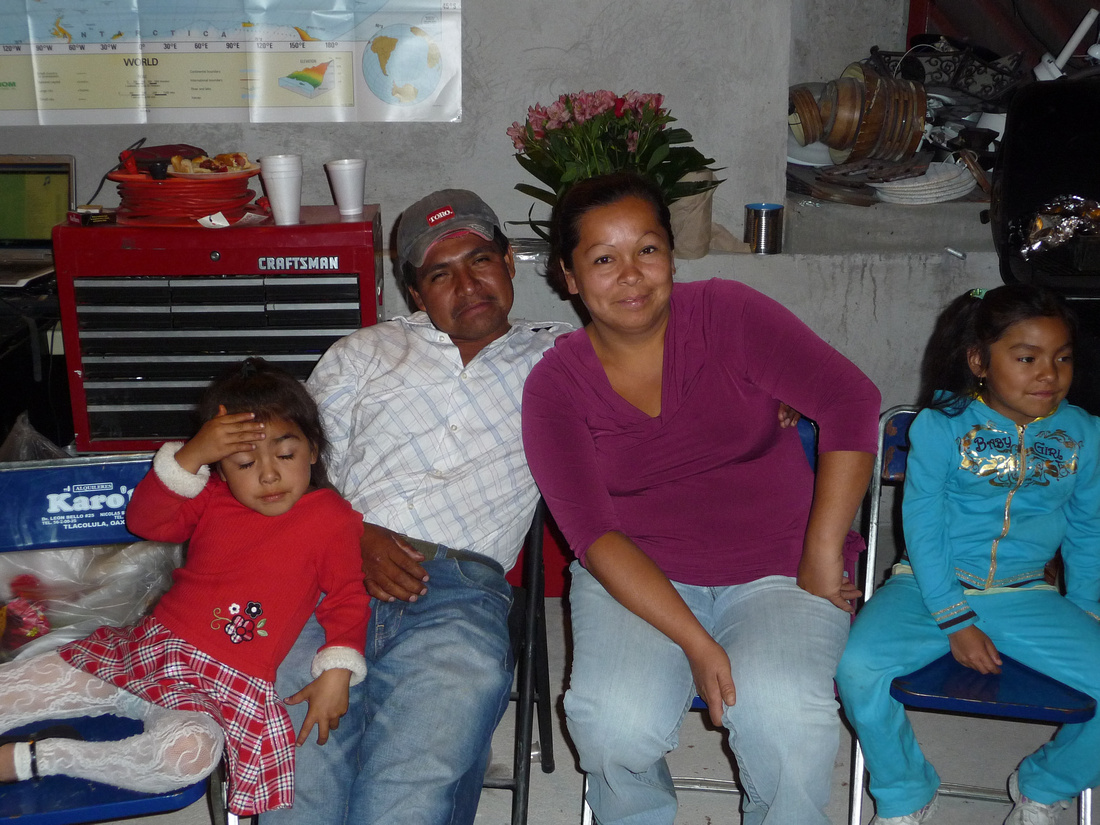
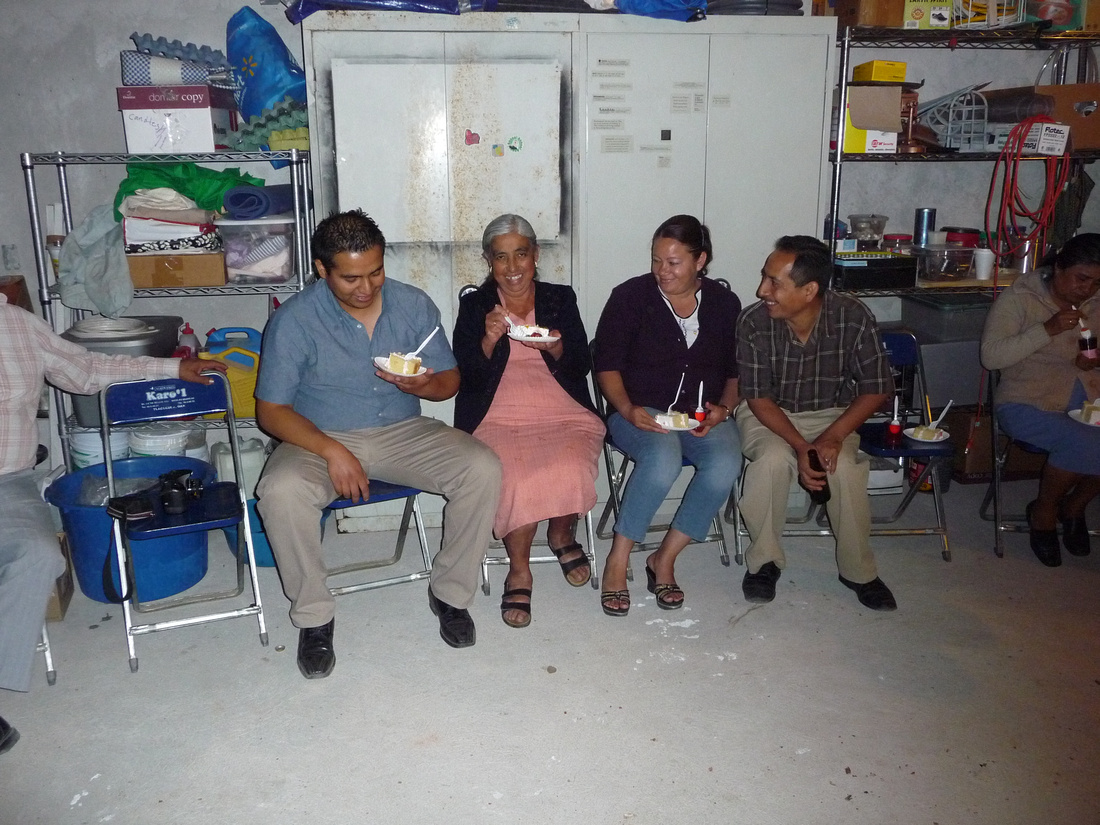
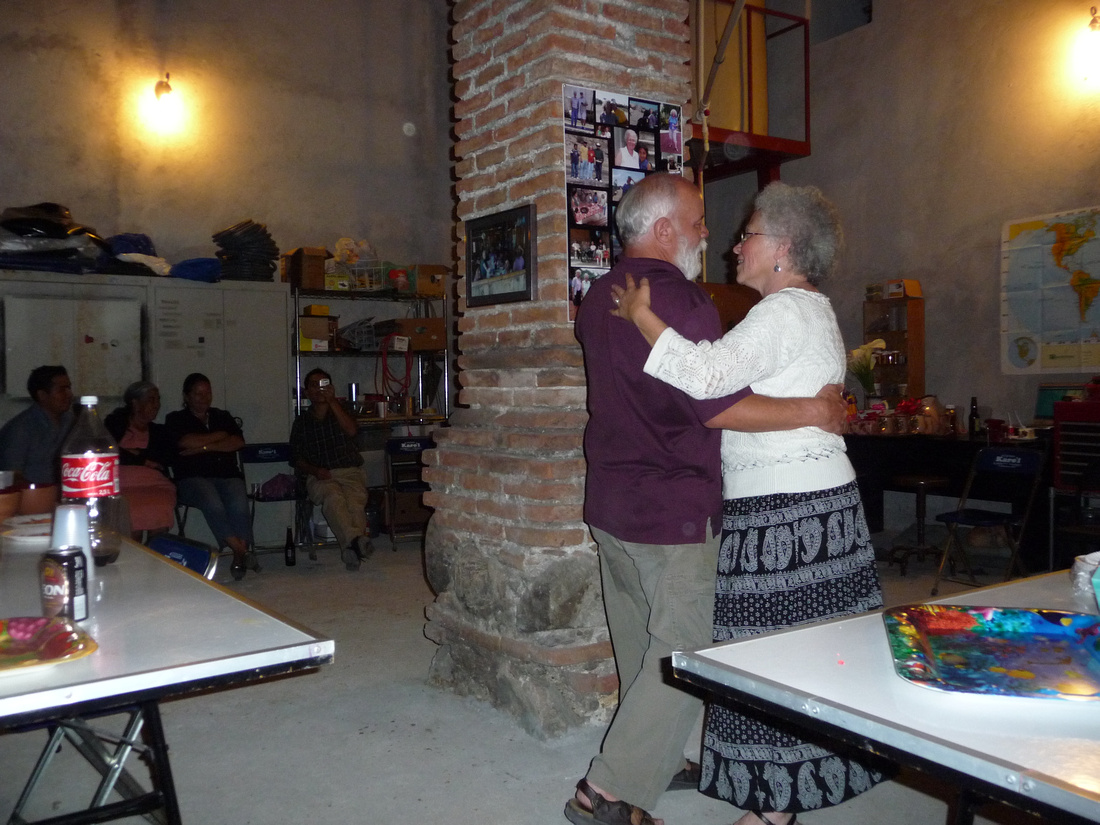

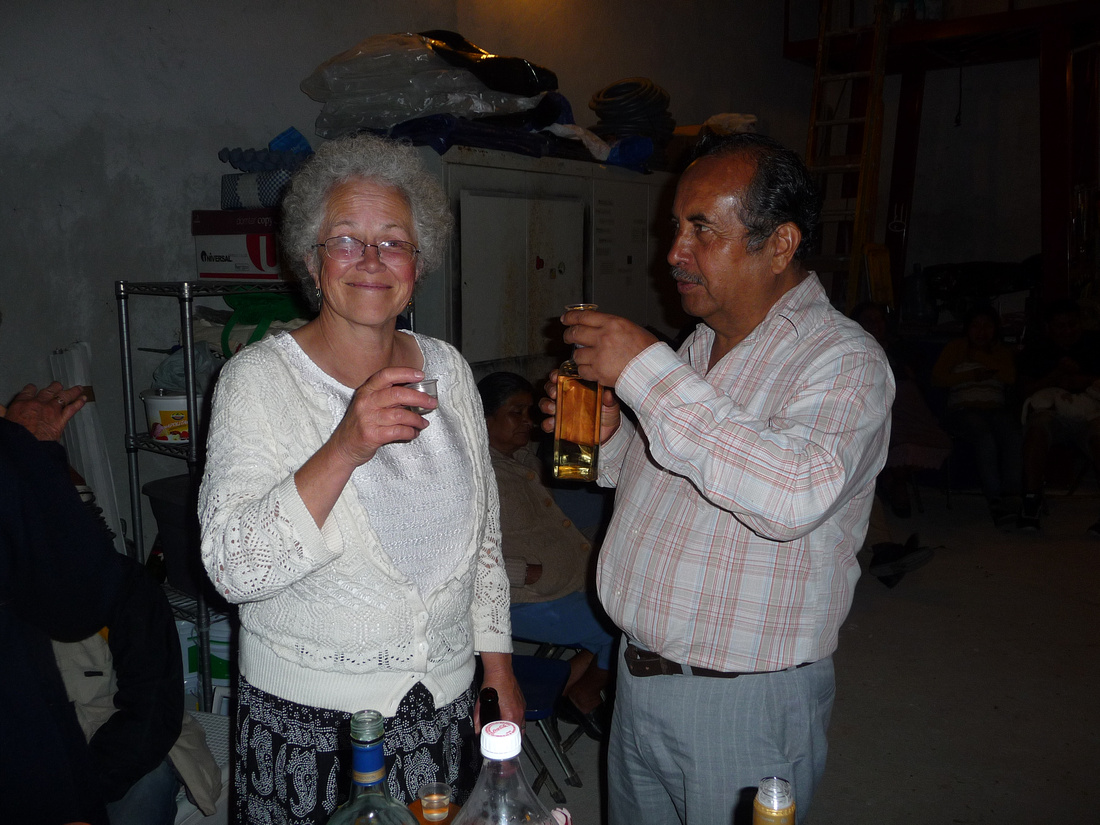
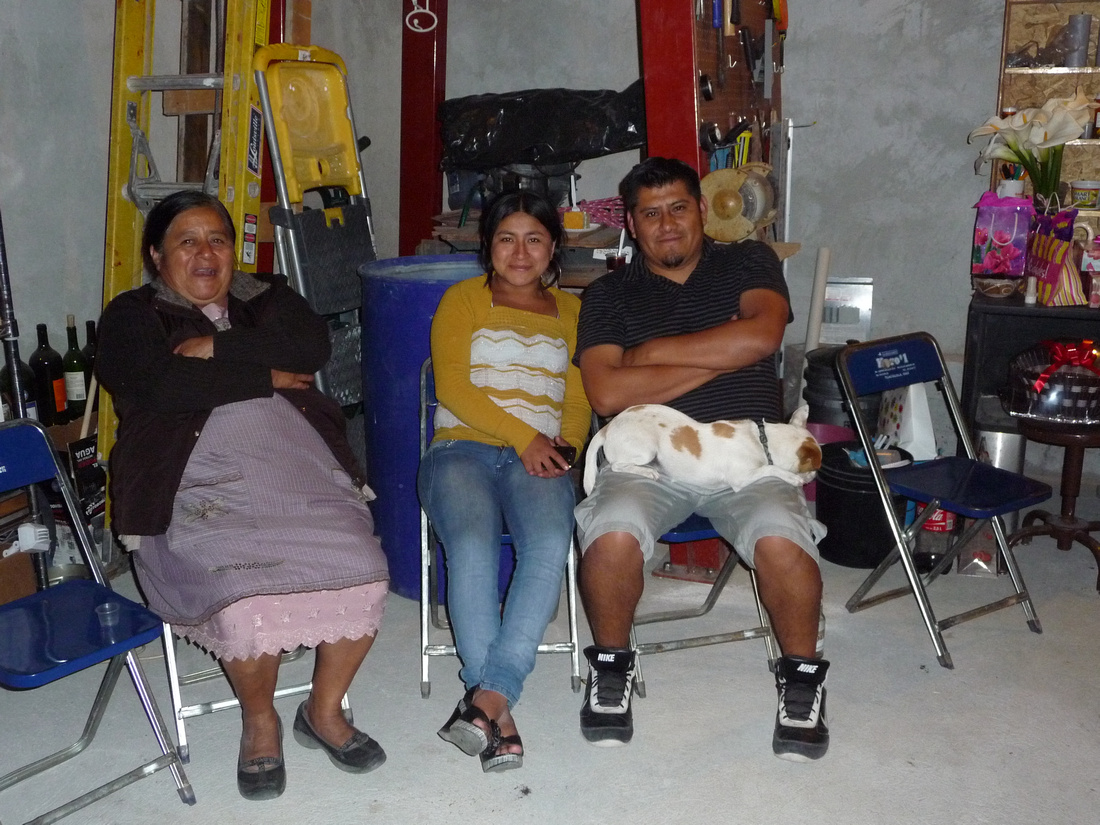
Beth just finished making a beautiful set of curtains for the windows. We bought the natural 100% heavy cotton in Oaxaca. These really finishe off the kitchen and give us some privacy.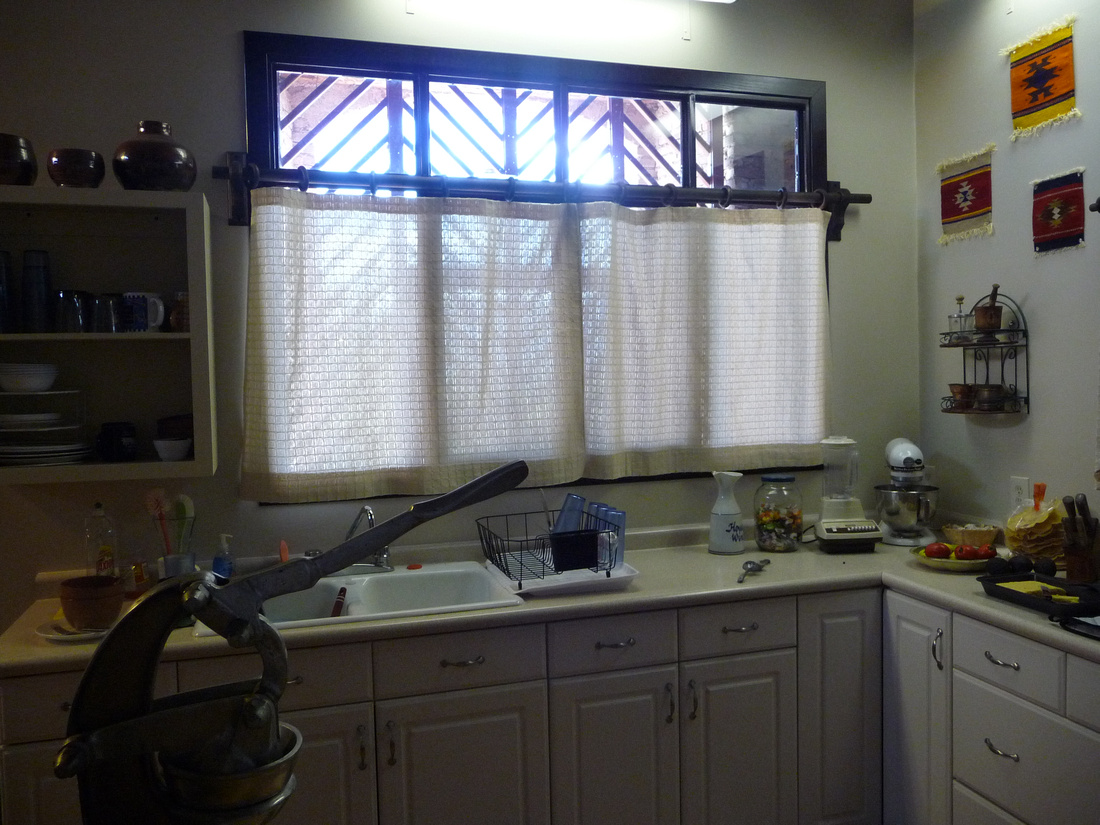

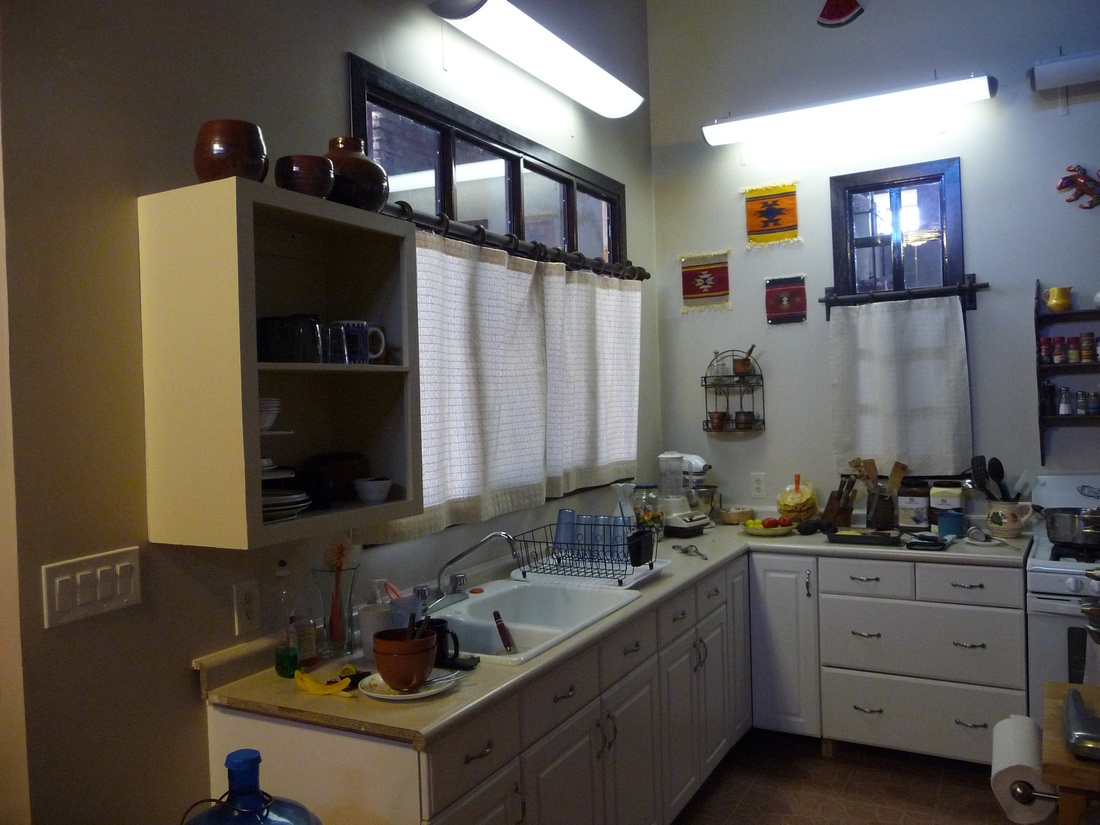
We also bought three Petates, (woven palm leaves), to hide all the junk we have stored above the bathroom. They are not completely installed as we are stretching them but they look great.
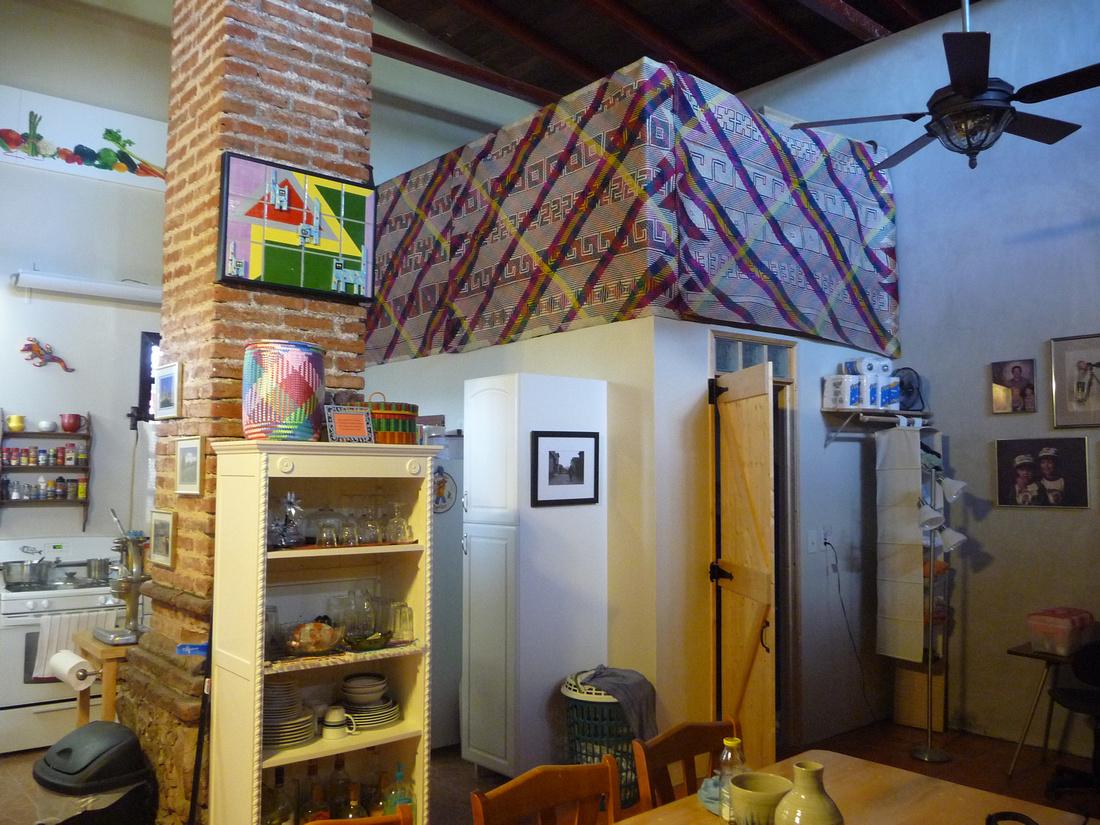
Here is a close up of the work involved. It's very hard to try and negotiate for a lower price when so much work is required to create each one.

Saturday we drove to a couple of lakes near the small town of Huayapam just a few miles outside of the city of Oaxaca. For those who have not traveled in Mexico, sites like this are a lot less common than in the States, which makes it all the more precious. We are so glad that we've found another spot to visit. Oddly, fishing and swimming are not allowed but the view was spectacular for a couple ex Washingtonians. There are three large restaurants which have seating outside overlooking the lake as well as inside. On our next trip we plan to try one.
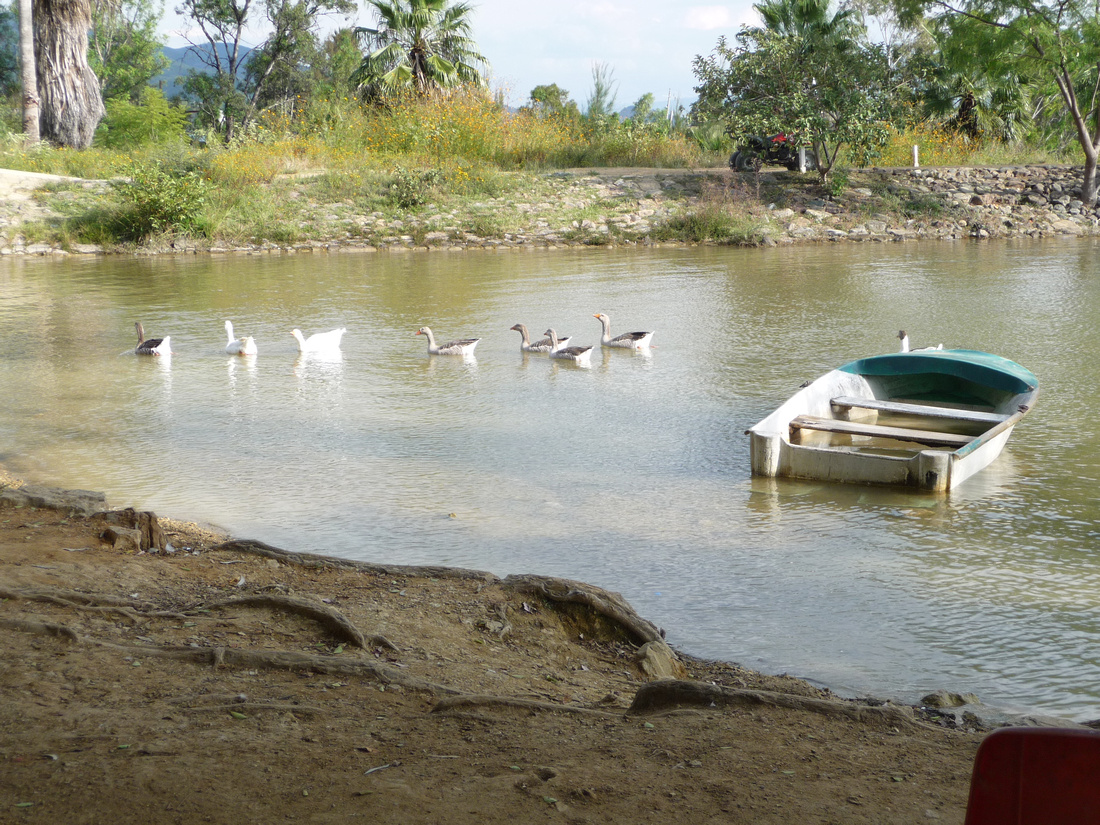
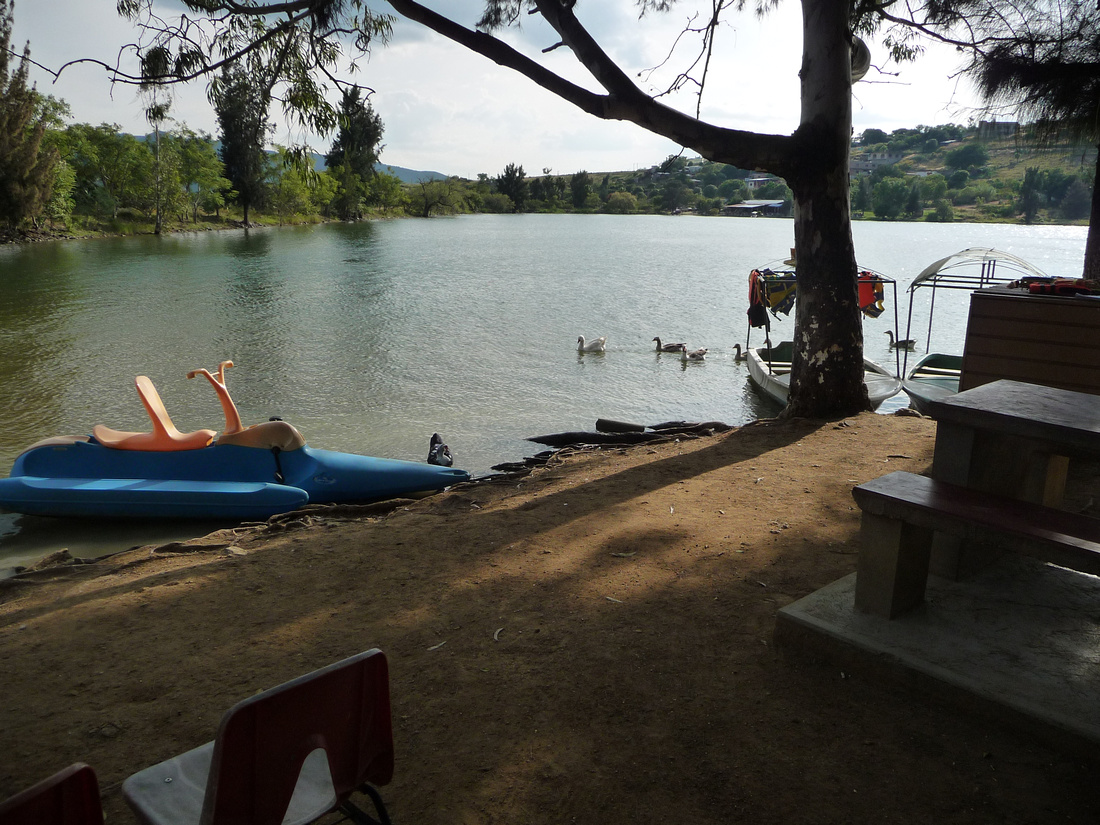 Paddle boats are available for rent. There are several small food stands, but don't expect hot dogs, hamburgers, and fries! Instead, expect to find tortas, aguas de fruta, refrescos, sabritos, dulces and fruit with polvo de chili.
Paddle boats are available for rent. There are several small food stands, but don't expect hot dogs, hamburgers, and fries! Instead, expect to find tortas, aguas de fruta, refrescos, sabritos, dulces and fruit with polvo de chili.
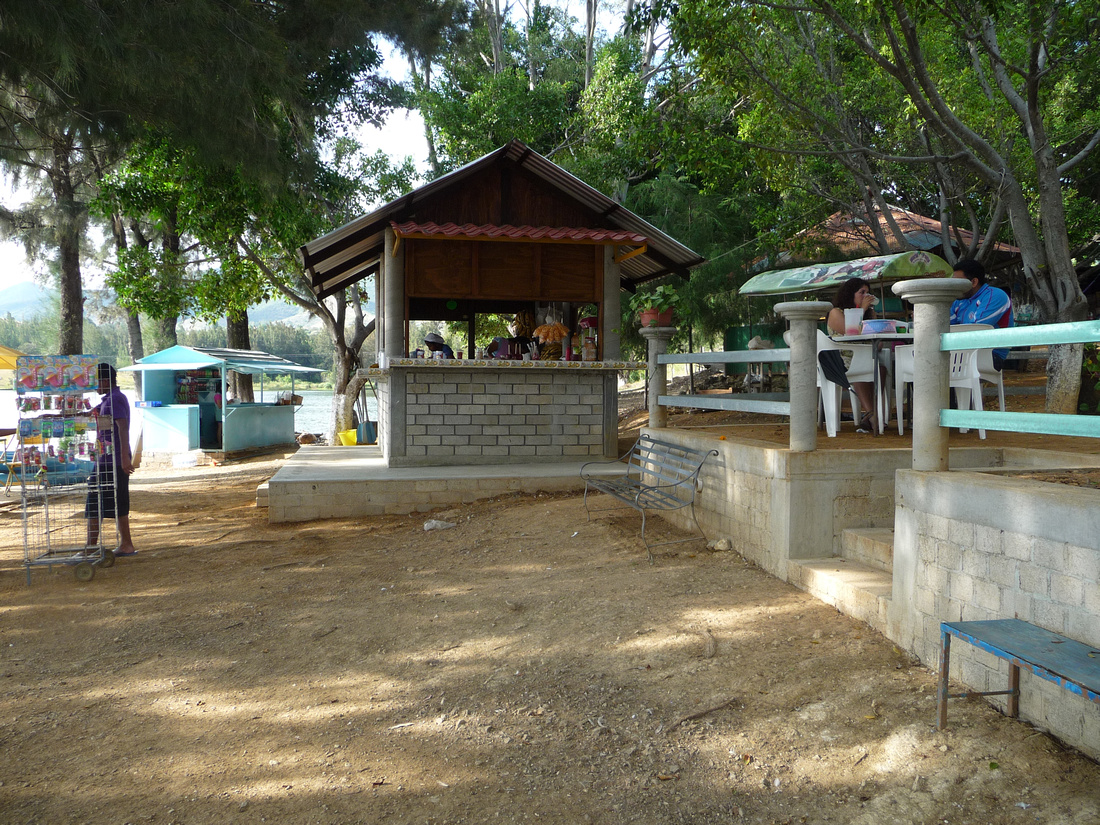

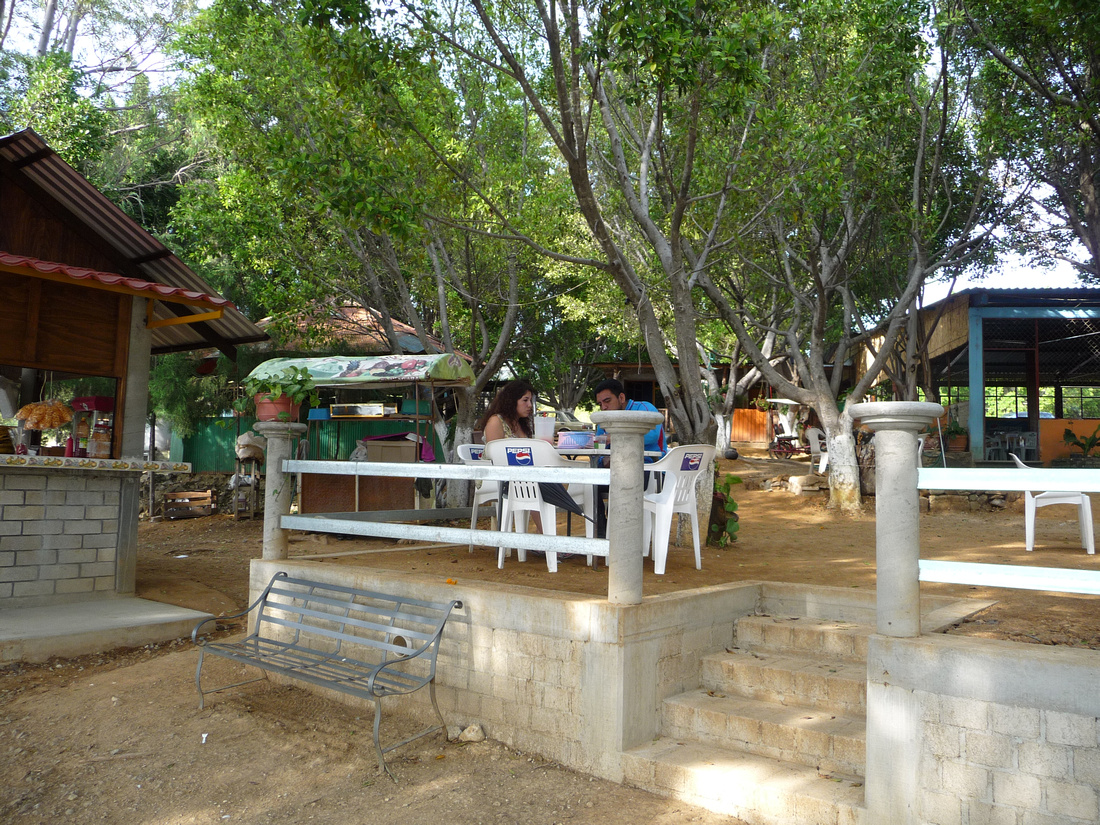
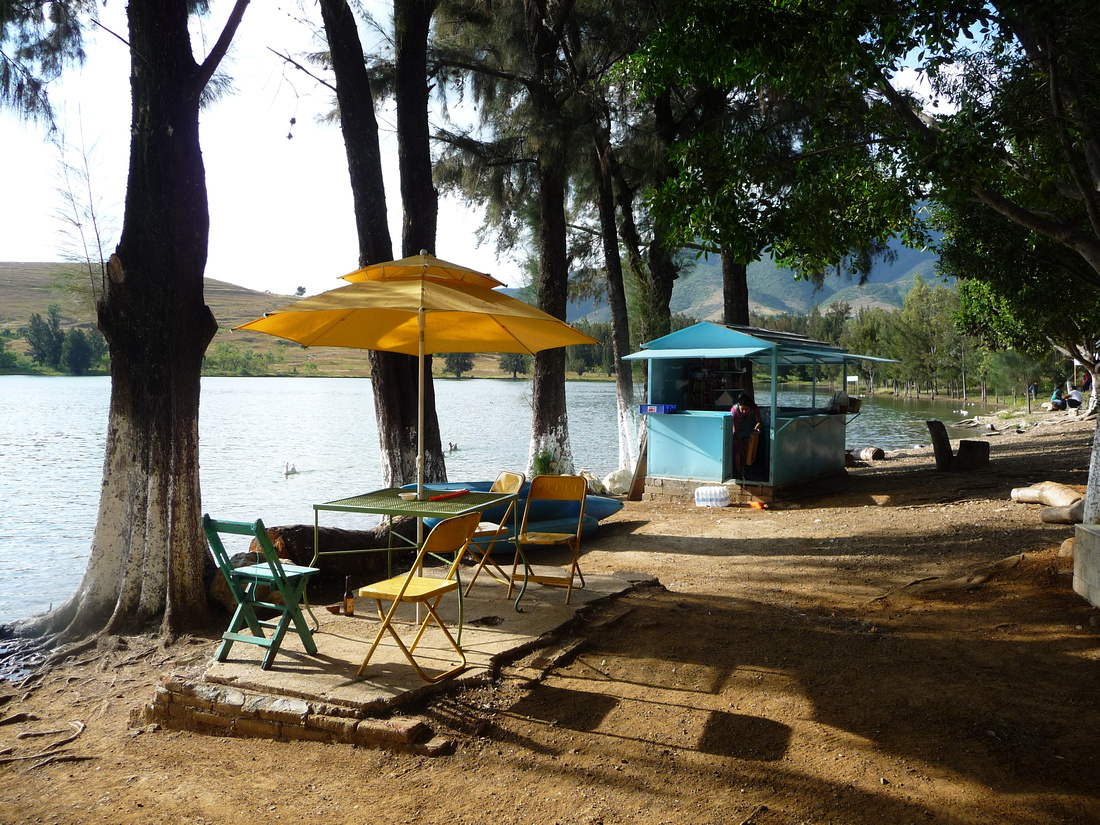
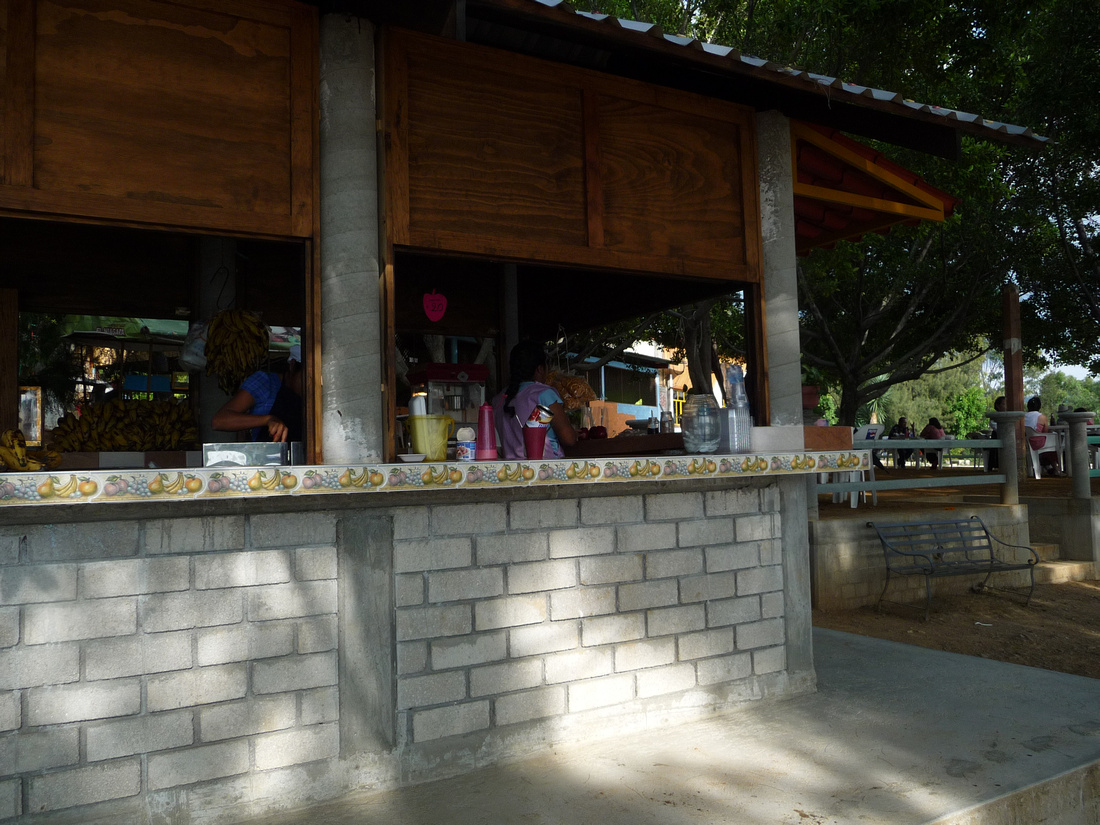
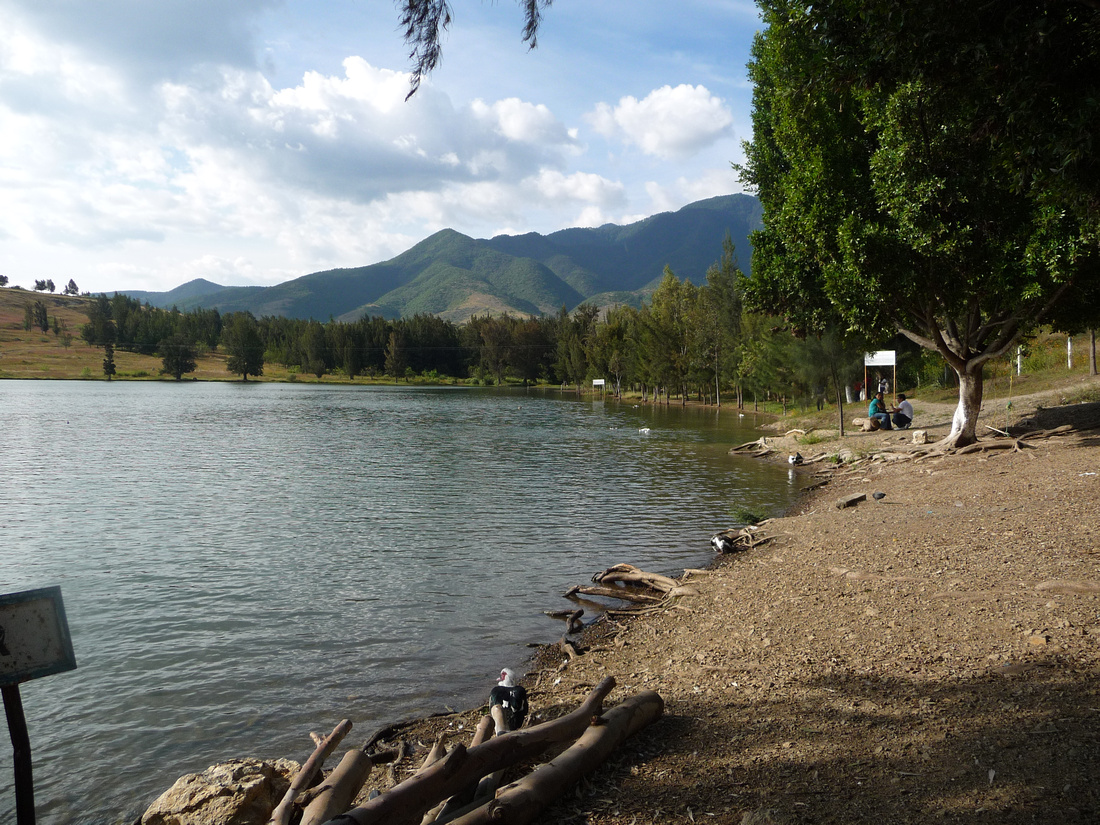
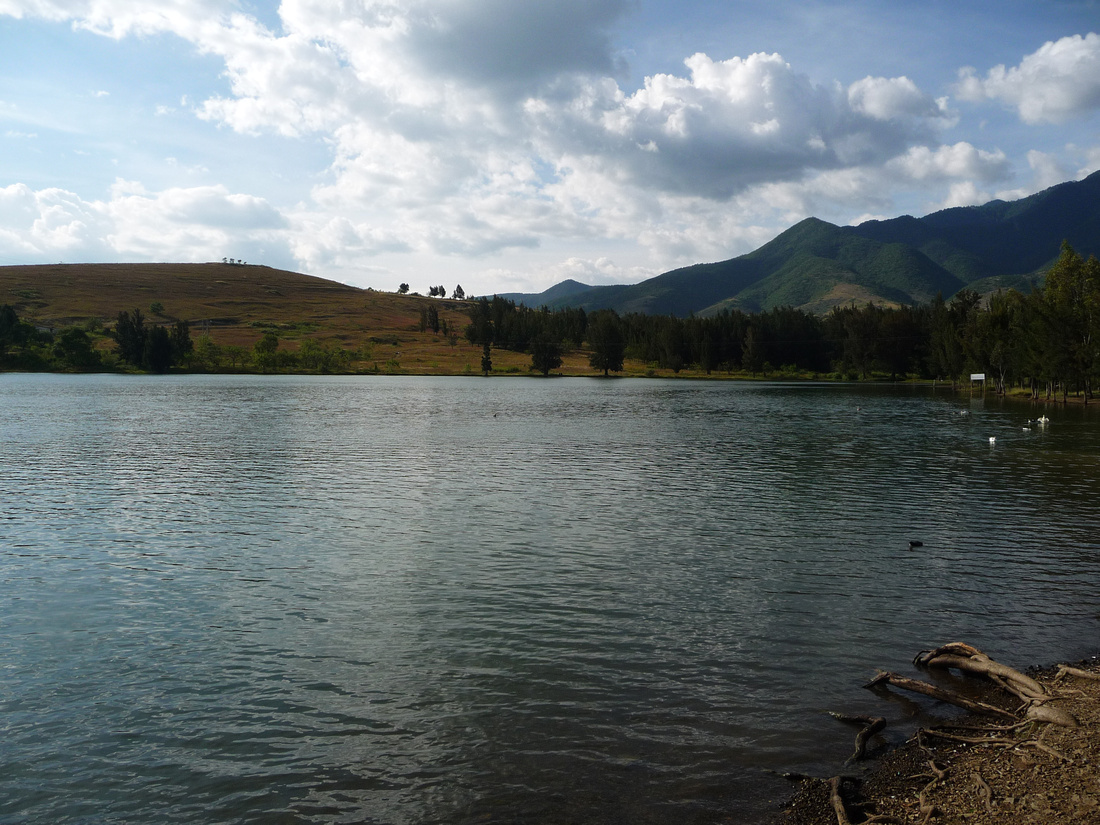
Many years ago while planning our retirement to Oaxaca we pondered the idea of creating a little extra money to supliment our fixed income. Having owned the photography studio for years and having a photo bank with thousands of photos taken during our several trips down to Oaxaca each year, offering them for sell to tourists seemed the most practical way to bring in a little extra.
We have a friend from Matatlan who has a store in Tule, Oaxaca. Tule is one of the major tourist destinations in Oaxaca. It's main attraction is a Cypress tree that some claim to be the oldest tree in the world. Here is a quick read about Tule. http://www.delange.org/Tule/Tule.htm. Anyway we are going to display some photos there and see what happens.
Most of the digital cameras I've owned through the years have been incapable of producing a large quality print for resale. To compensate we've made a series of collages with the individual prints ranging from about 5x7 to 8x10. The overall size of the collages is 16x20. We're starting with a series of fifteen prints and will increase our inventory if we are successful in our sales.
We put a spot or two of color in some of the collages and were happy with the results.
We were invited to a comida tomorrow. All of the meat is non domestic. Should be interesting.
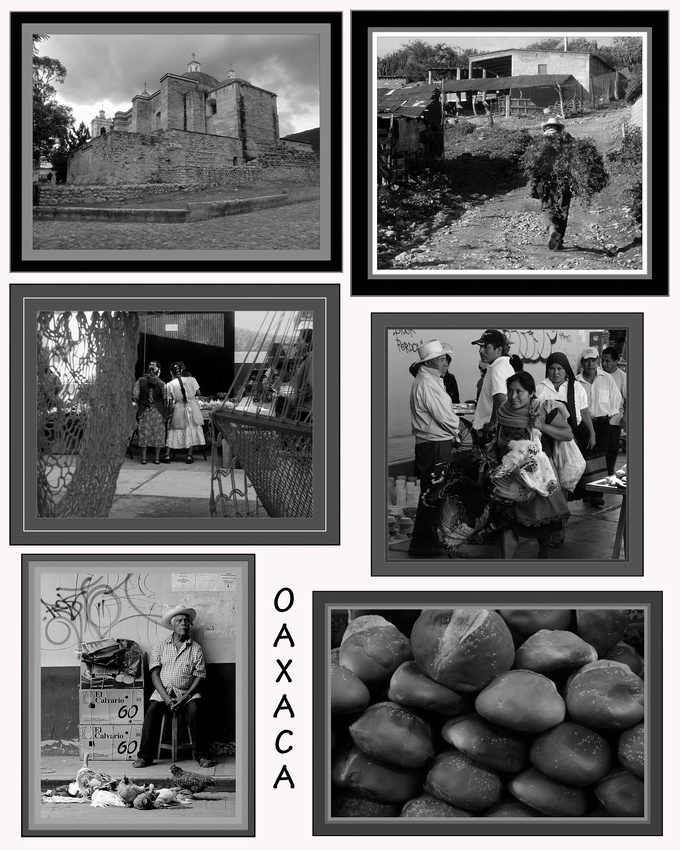

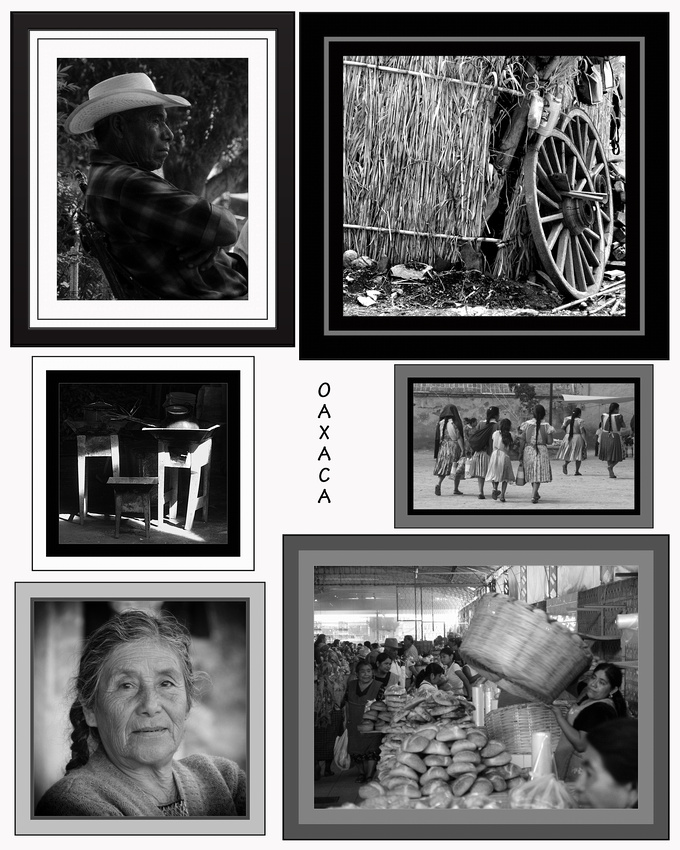



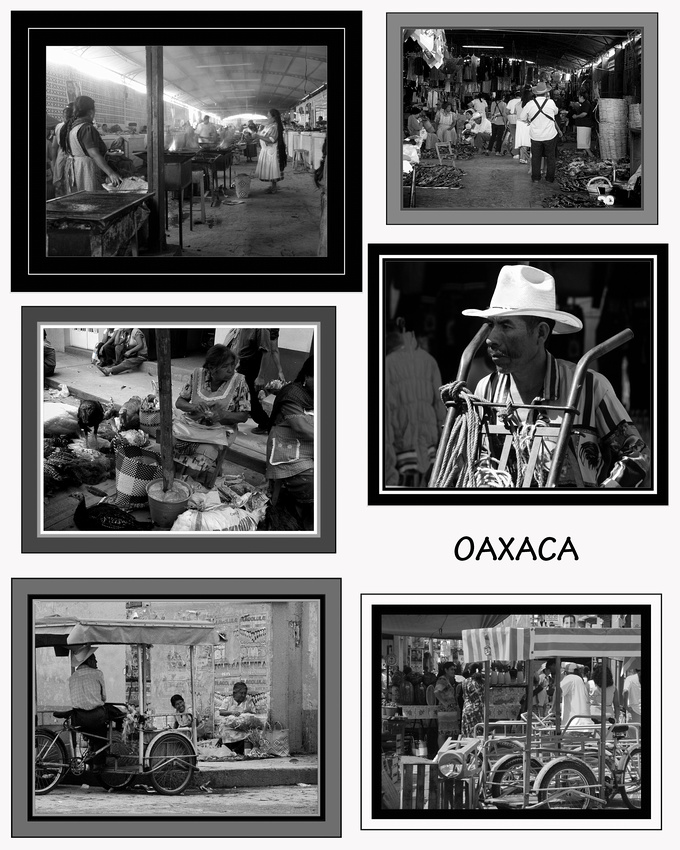

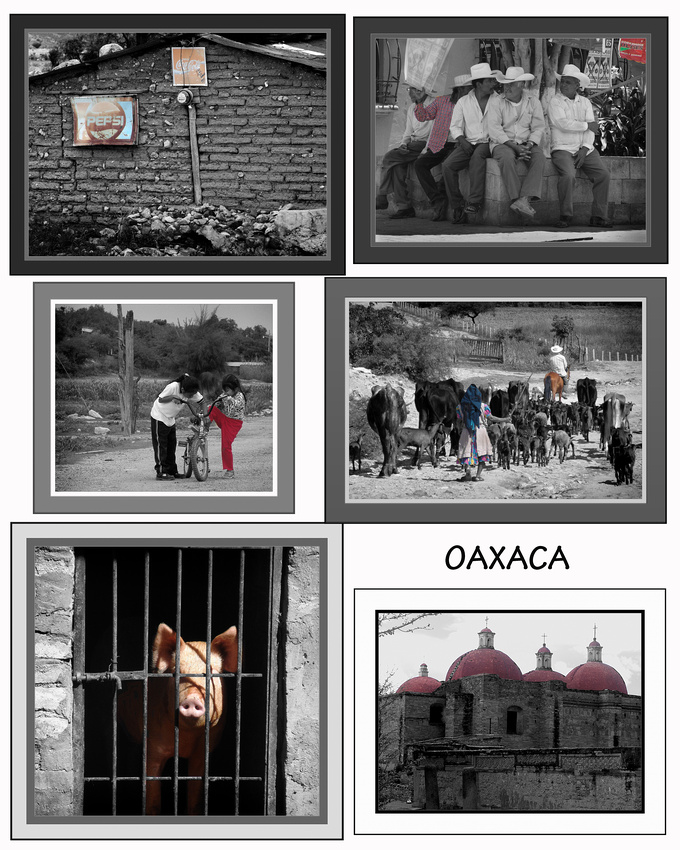



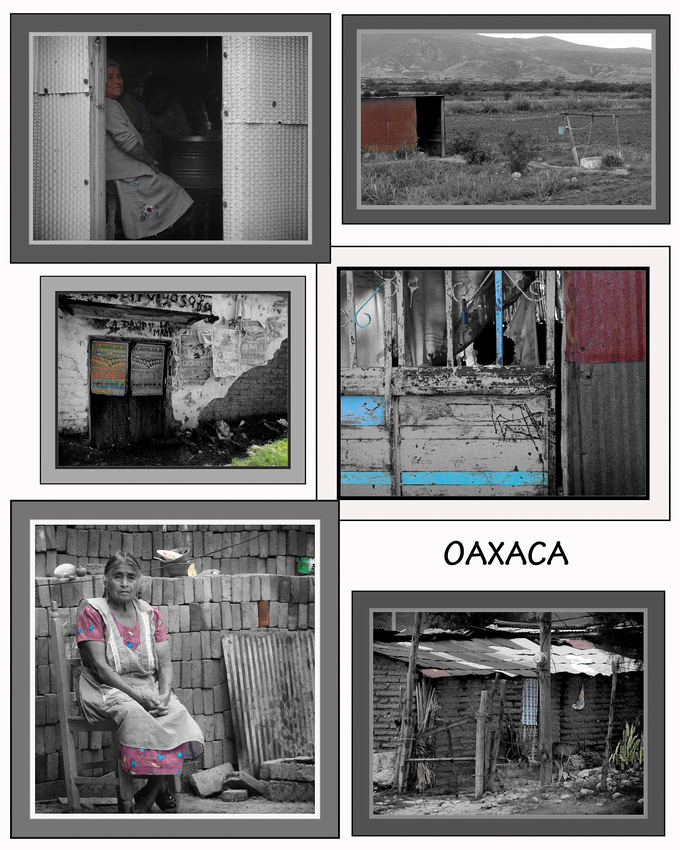


In my last post I mentioned that we were still having water trucked in for home use. That changed yesterday. Last week we bought a small pump and some hose. After much trial and error figuring out how to use the pump, we drove our truck down to the spring fed well that used to accommodate the washing of clothes and filled a 450 liter tinaco with water. Drove home and pumped it into our home system. We can now get water whenever we like.
Further work on our well is postponed until the ground around the well dries up. The problem is that it will not stop raining. Of course we are happy to see the rain. Many farmers have no way to irrigate their fields. They rely exclusively on rain water.
Here is the spring fed well. There is water year round. And it's clean!
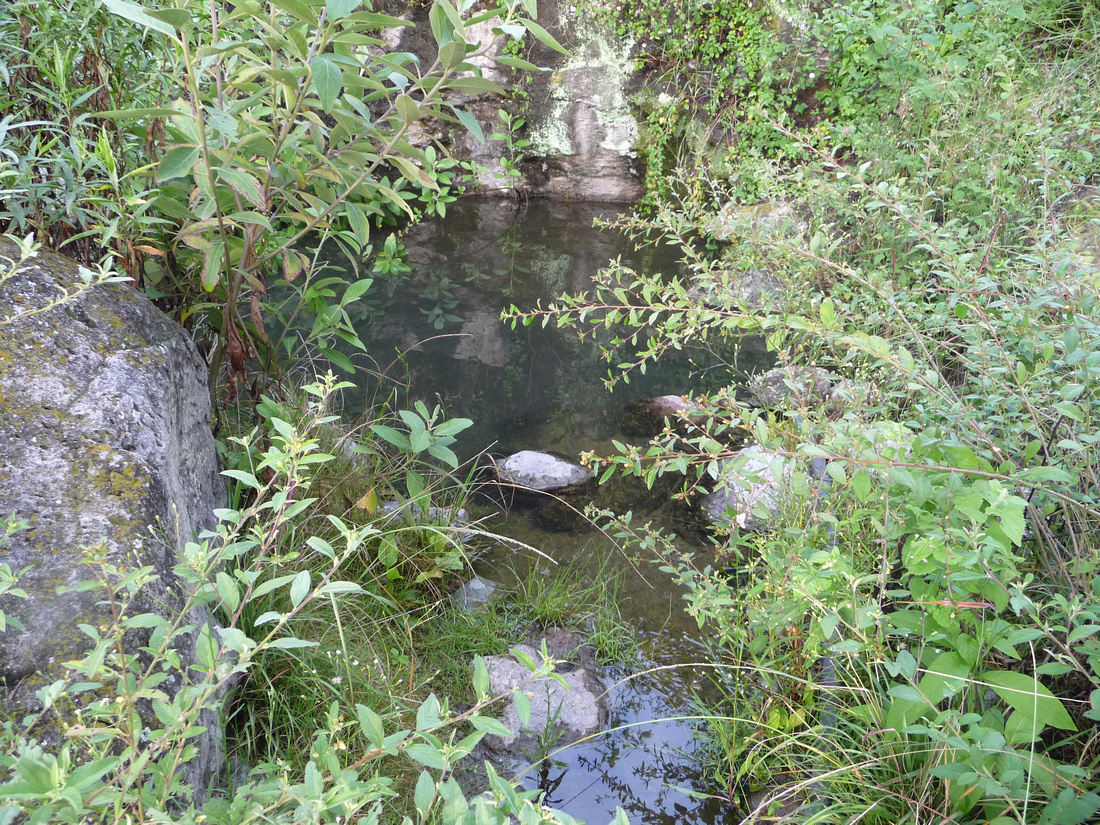
Our set up pumping water into the house.

The following photos are from July I believe.
Work being done on the well. Water level is about 35 feet. Water is being pumped out so that work can continue. Concrete rings are placed in the well to keep it from collapsing and to keep the water free of dirt.

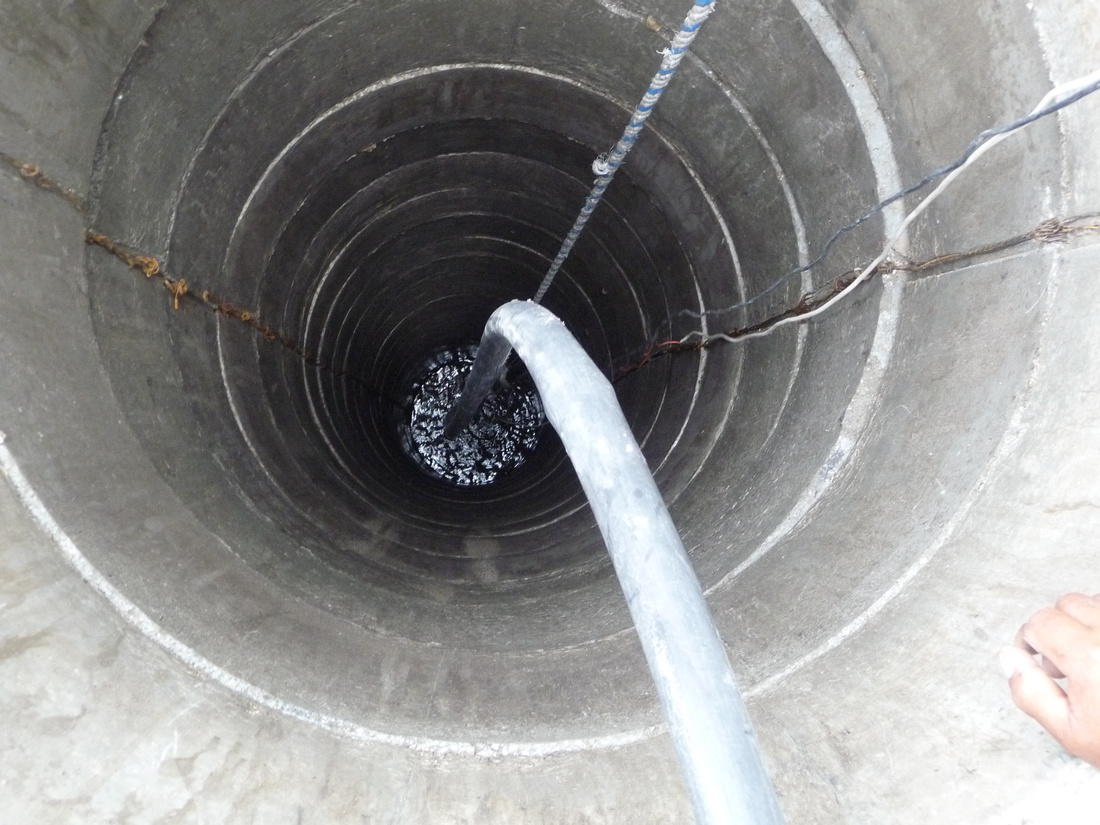
The pump they were using would not pull water from the top so the pump had to be lowered down to the water.
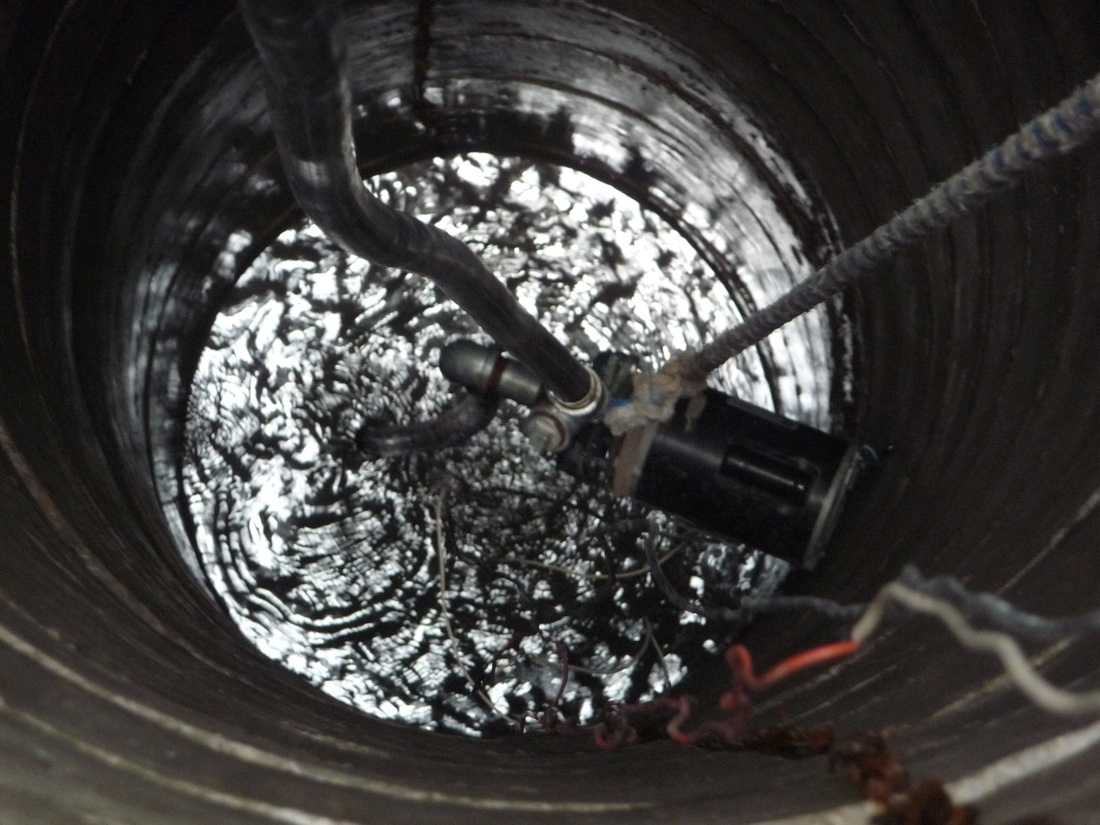
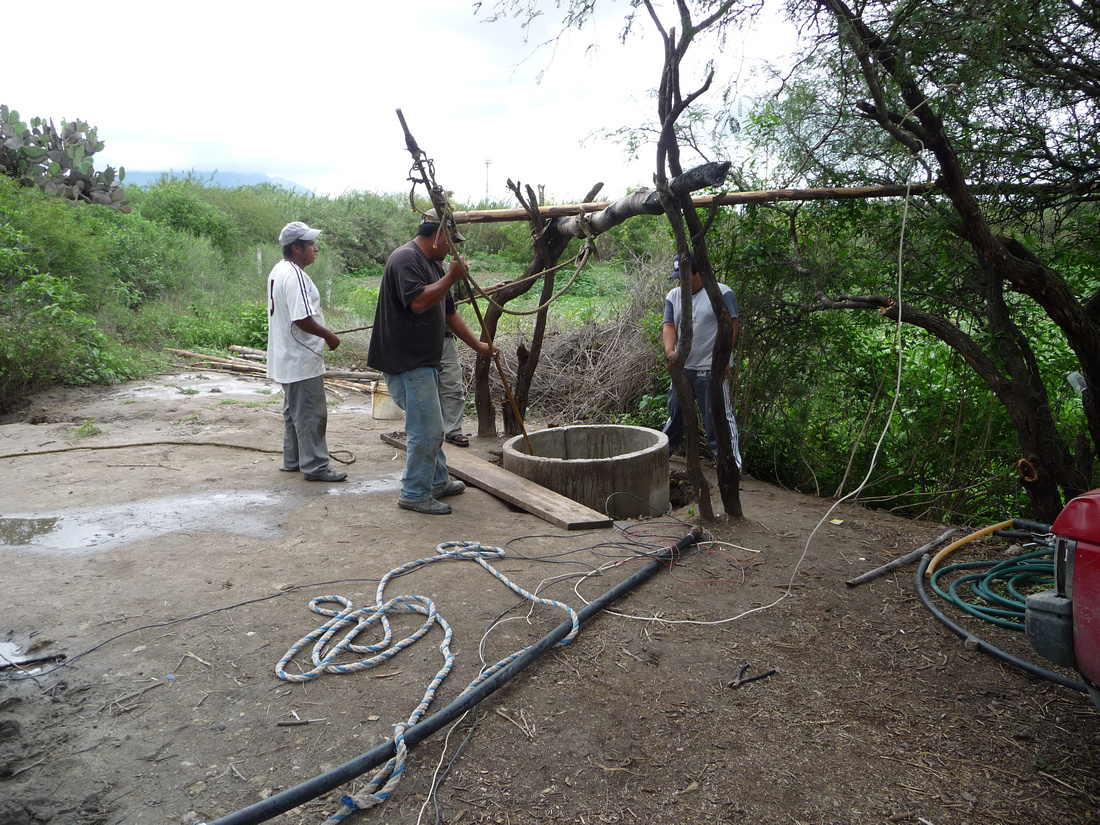
Woke up the other morning and this was the view from our front door. Its beautiful every morning but I thought this was especially captivating. But for the screen on one of our kitchen windows this shot could have been take from in front of the sink. The haze is from my camera. The view was actually perfectly clear. Too lazy to Photoshop it! The town at the base of the mountain is San Bartolo. It's an indigenous village, Zapoteca being their native language. I remember years ago you'd never see any of the young girls working in Tlacolula. My only contact with them was when they came to town to purchase. Today they work at many of the stores and restaurants. After conversations with friends I learned that the village is changing and becoming more progressive in thought. Most of the women, (young girls included), still dress in the traditional manner. In the photos of Tlacolula you'll notice some of the women in bright multi-colored attire. These women are from villages similar to San Bartolo. I don't ever remember seeing a young girl from one of these villages in a pair of pants. Oddly enough we obtain our internet signal from San Bartolo.
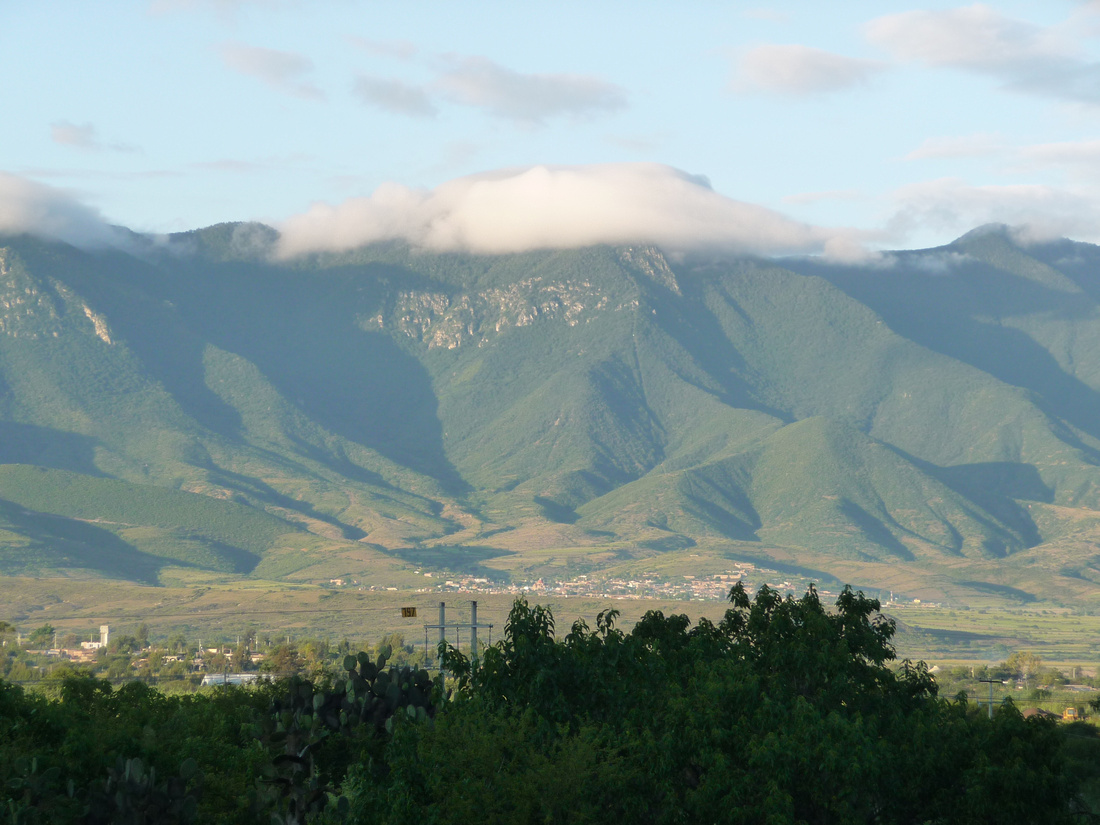
This view is from in front of the house looking Northeast. You can hear the crashing of the water from inside of the house. Unfortunately this is purely rain water so it's not a view we enjoy daily. The rock wall on the right is called Eagle mountain. Or I should say was called Eagle mountain. From my first look I saw the head of a bear on the very top. I renamed it and I think it's catching on.
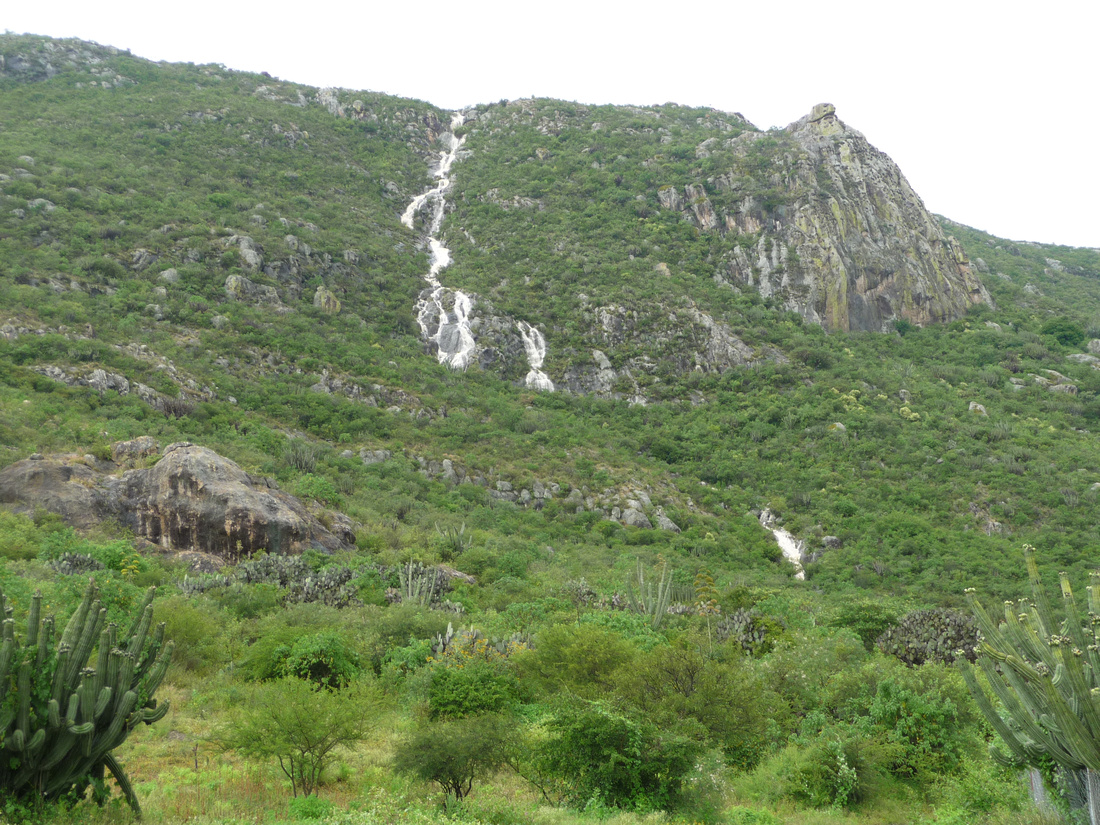
We've had some changes in the house. The sheet rock wall separating the house from the patio was sanded and painted. We've also begun to personalize a little. I hung a couple of ceiling fans. The house is so dark they really help. The bathroom was also sanded and painted. A carpenter from Mitla installed wood trim around the shower walls.

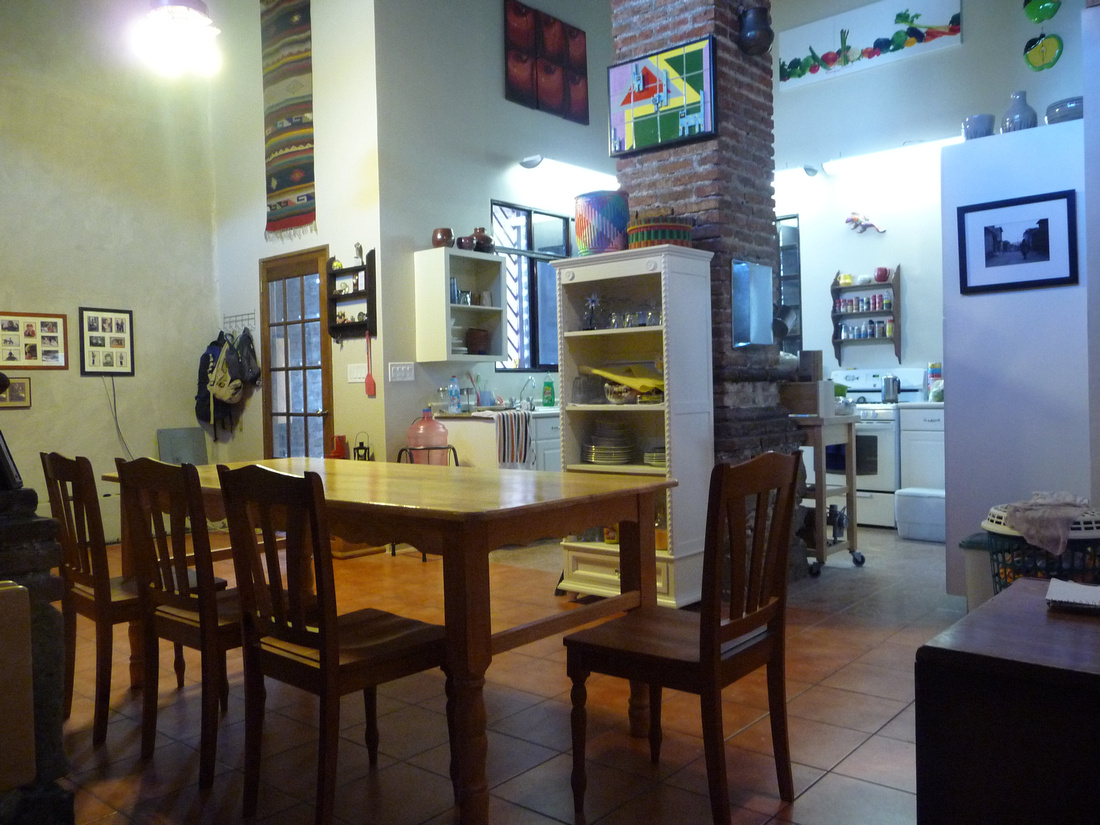
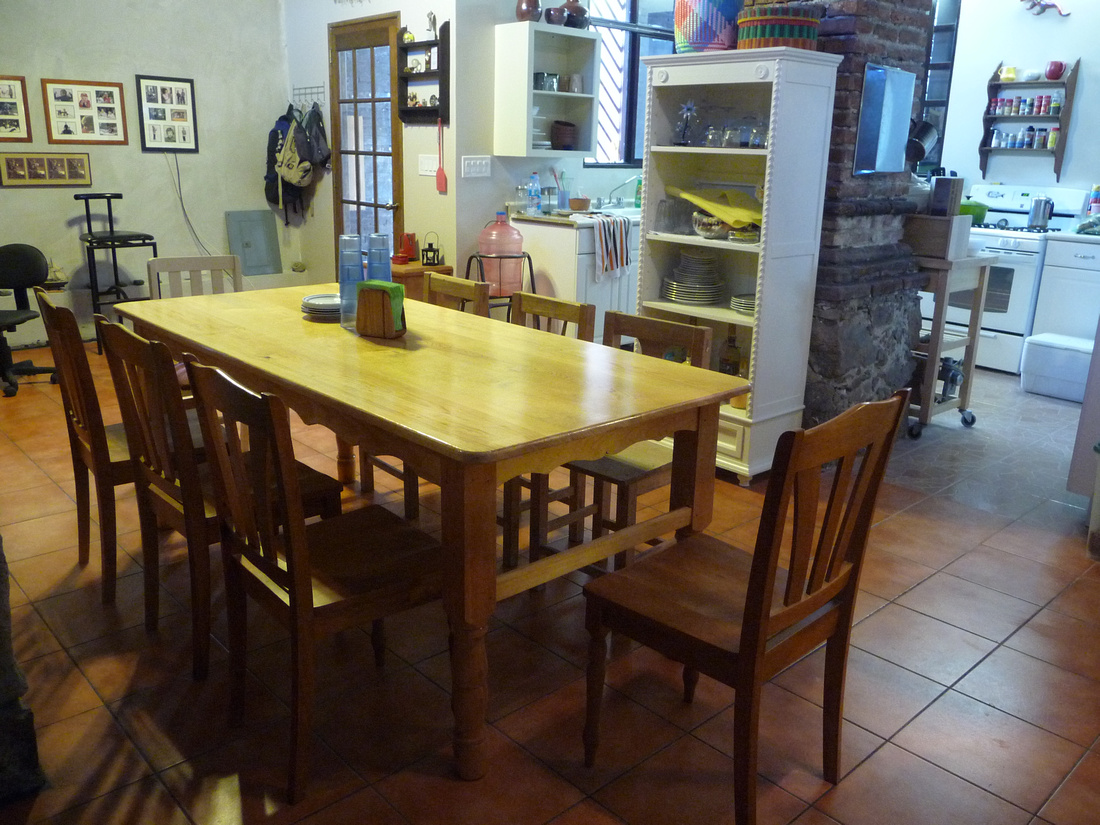

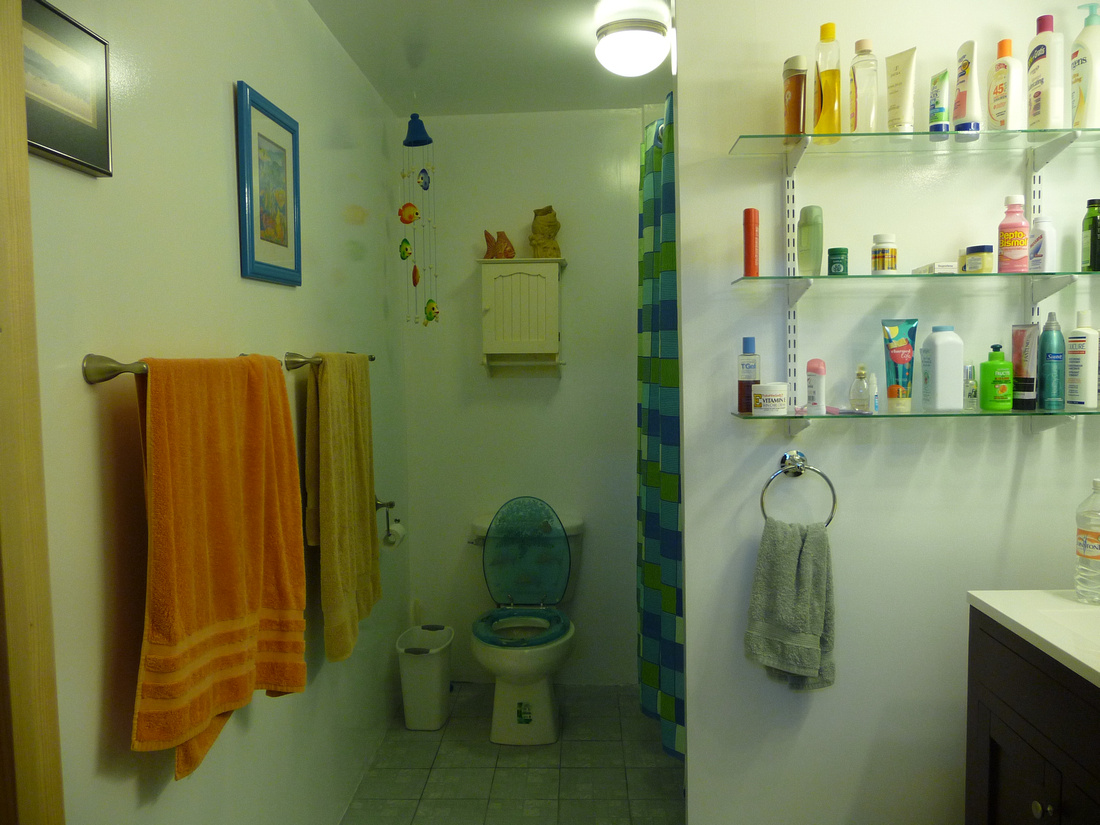


I finally have the patio cleaned up enough that i'm not embarrassed to show it. The water container on the top left is where our water is stored. Our water pressure is purely gravity fed. While we wait for our well to be finished we pay to have a truck come in and fill the tinaco.

The water enters the house in the bottom right. The filter and hot water heater are Mexican products. Both work wonderfully. The hot water heater is tank less so it works only when needed. Having the water trucked in really makes you aware of water consumption. No long showers!

We have five fiestas to attend in the next eight days so work on the house will come to a halt for a while. Mezcal, Mezcal, and more Mezcal!
For three days beginning on July 25th Beth and I celebrated the wedding of a dear friend's daughter in San Baltazar. We first met Epifanio, his wife Paula, and their eight children back in 1994. How frustrating it was trying to communicate with our very limited knowledge of Spanish. Needless to say our pocket translators were well used. Added to the problem was Paula's inability to speak Spanish. It would be years before she spoke outside of her native Zapotec. Beatrice, the bride, was three years old when we first met her. Through our twice a year trips down to Oaxaca we got to see her grow into the beautiful young lady that she now is.
Beatrice and Marcos
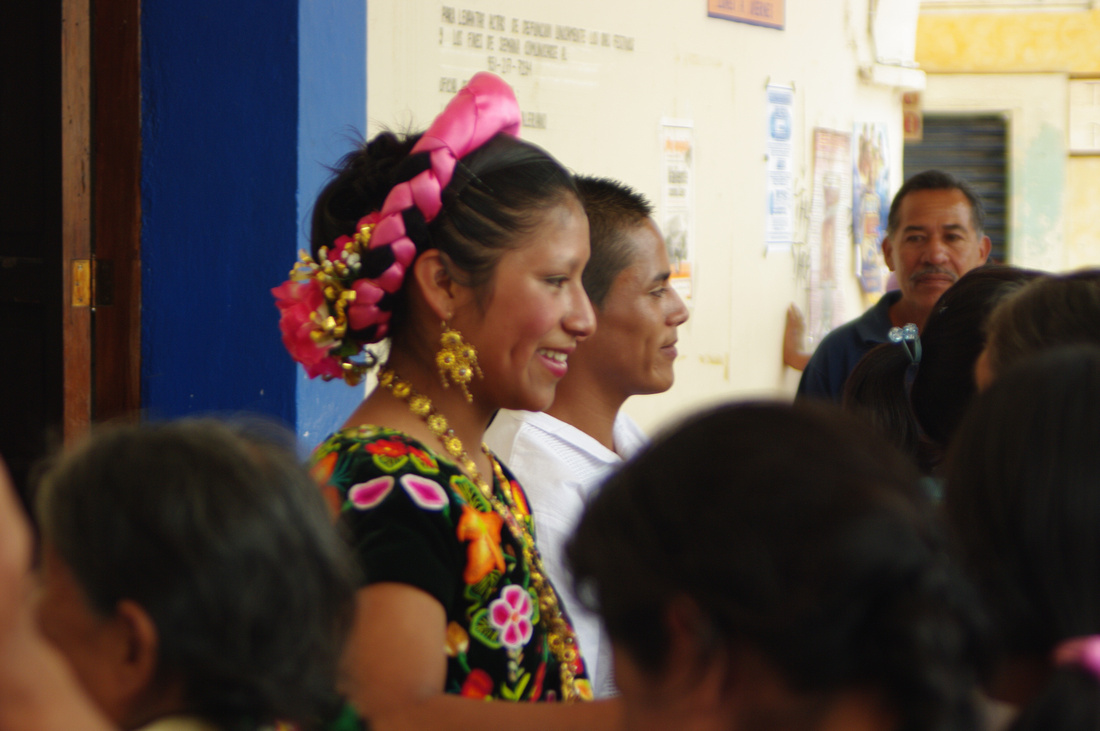
As Beth and I now have a home here we eat more traditional American meals. Three days of Oaxacan food was a little rough. In Mexico when an animal is killed it is eaten immediately so the flavor is much stronger than in the States. Also many foods are heavy on spices and chilies. It's kinda like a natural laxative.
Epifanio and his family are Seventh Day Adventist, consequently, missing at the celebration was the presence of any hard liquor, (a rarity here in the valley). Usually extended celebrations include lots and lots of drinking of mostly Mezcal.
A couple of weeks after the wedding, Jacobo, Beatrice's brother, came to our house to do some brick work. During lunch Beth and I were horrified as Jacobo related Beatrice's new living conditions. The groom was from Mitla so the two are now living there. They reside in a one room home made of sheet metal. The floor is dirt. There is no running water so drinking water is carried in and bathing is done, (not so privately), in a nearby river. Meals are taken in the standing position as they have no chairs. A good nights sleep is hampered by the constant scurrying of rats around the room.
A few days after our conversation with Jacobo three couples came to our home to visit. As we talked I mentioned in detail Beatrice's new living conditions. After I had finished I was surprised at the so-what looks I received. It turns out they all began their married lives in a similar manner. They saw nothing unique about Beatrice's life. I had some hard times growing up and remember starting out with little. My new perspective on "little" has shown me just how fortunate I have been. It's comforting to know that Beatrice is going to be fine. She and her husband will spend their lives working and making life for themselves and their future children as comfortable as they are able. They will grow up as fighters and will be proud of their accomplishments.
I remember when America was more that way! Today in America they would be considered victims along with the other several other million that have been given that label. How strange that millions of Mexicans pass through life working hard and expect little from their government. Many Americans seem to feel they are unable to survive without government. In Mexico going without means that you haven't used your mind or your back sufficiently to obtain what you want. In America somehow the government hasn't done it's job if you lack for anything.
The other day Beth and I took a walk East of our home. We passed by a well that is fed by an underground spring. Not too many years ago women from the surrounding villages came to the well to wash clothes. Dipping water from the well was much easier than drawing water from their deep wells a bucket at a time. Flat rocks surround the well to accommodate washing clothes. A major change here in the valley is most villages have a communal well. The water is pumped to a cistern and gravity fed to each home. This doesn't mean there is water in the house. Most faucets are in the yard where water is drawn for cooking and cleaning. Running water in a kitchen is almost unheard of. More and more people have updated to a more modern bathroom. More often than not these modern bathrooms entail having a faucet near by to fill a bucket to pour into the toilet to flush it. This means that they have installed some type of septic tank. Many kitchens here are separate structures away from the home. They are usually covered, have a gas stove, a local made wooden table, a way to cook with fire wood, and multiple multicolored plastic buckets filled with water to prepare food and clean.
Our walk provided us with a view of our home that we normally don't see.
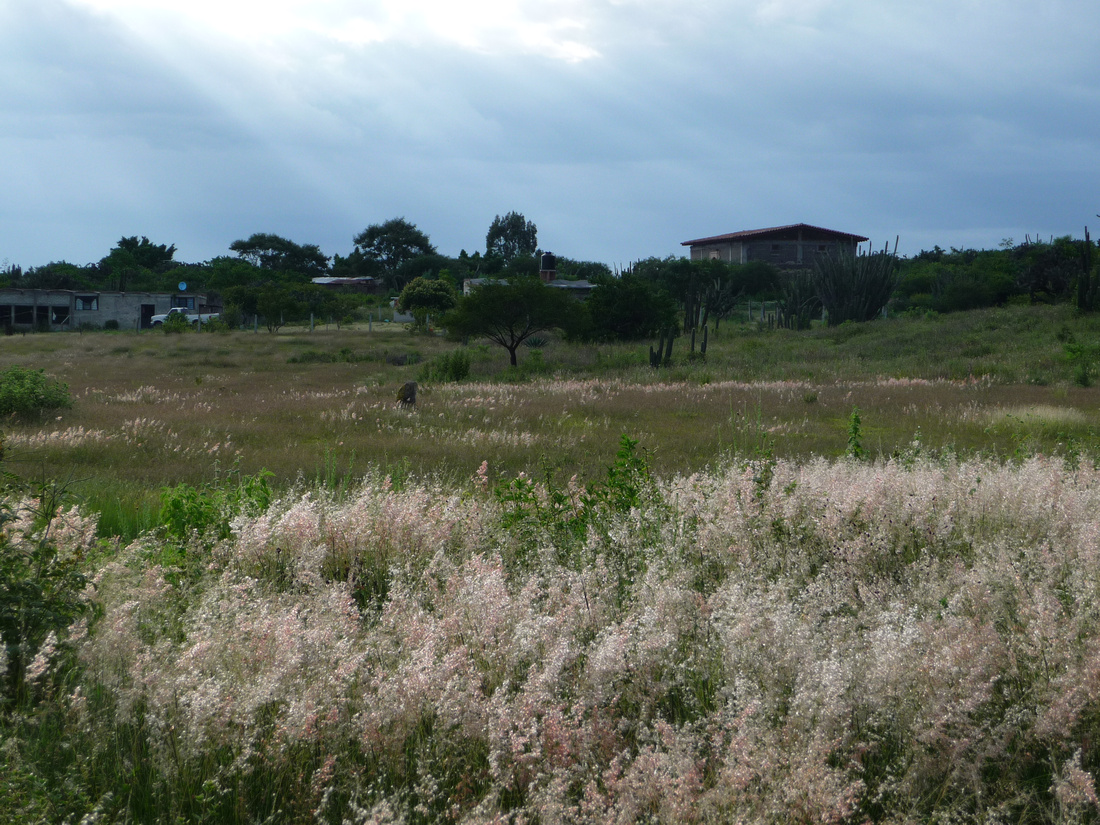

Last week we took a ride to Xaaga, (pronounced Saw-gah), to see the sister Hacienda of our home. It too was built in the late 1600s. The Xaaga Hacienda is owned by the village and there is talk of restoring the site as a tourist attraction. The village is largely inhabited by ancestors of the people who worked at the old Hacienda. For that reason Zapotec is not spoken. The Spanish insisted that Spanish was the spoken language. What a treat it is to view structures that are over three hundred years old. While Beth and I enjoy the remaining structures of the Zapotec people we find the Spanish archaeological remains much more interesting. I suppose it's because they are more intact and there is less conjecture as to how they lived.
Here is Beth and I in front of the Xaaga Hacienda

 More pics of the Xaaga Hacienda can be found at http://edeese.zenfolio.com/p148421161
More pics of the Xaaga Hacienda can be found at http://edeese.zenfolio.com/p148421161
Another step forward today when we hooked up our washing machine and did our first load. For the past two months we have been taking our dirty clothes to a "lavanderia" at about $15.00 per week. This morning Everette ran the electric out in the patio to the washing machine and beyond. Then we hooked up the drain and the intake hoses for water to the washer. While the machine completed it's first load, we strung cable across the patio to hang up the clean clothes. While still in Brownsville, we had decided not to purchase a dryer. We have the time to wait for our clothes to dry and we prefer not to use the extra electricity. (We got our first electric bill for two weeks and it was about $4.50!) So, now our first load is drying out there. Each advancement feels great!
As I mentioned yesterday when we purchased Don Pedrillo in 1994 it consisted of only four adobe walls and four columns. Here are some photographs that show it's condition at the time of purchase. Because the structure had set for so long the top of the adobe walls and the columns had become soft from the years of exposure. You can see that plants were actually growing on top of the columns and especially on top of the walls.


 The first task was to remove all the plants. It was determined that several feet of the columns and walls needed to be removed down to a level that was still stable. You can see in the picture below how the roots had penetrated down into the the walls.
The first task was to remove all the plants. It was determined that several feet of the columns and walls needed to be removed down to a level that was still stable. You can see in the picture below how the roots had penetrated down into the the walls.

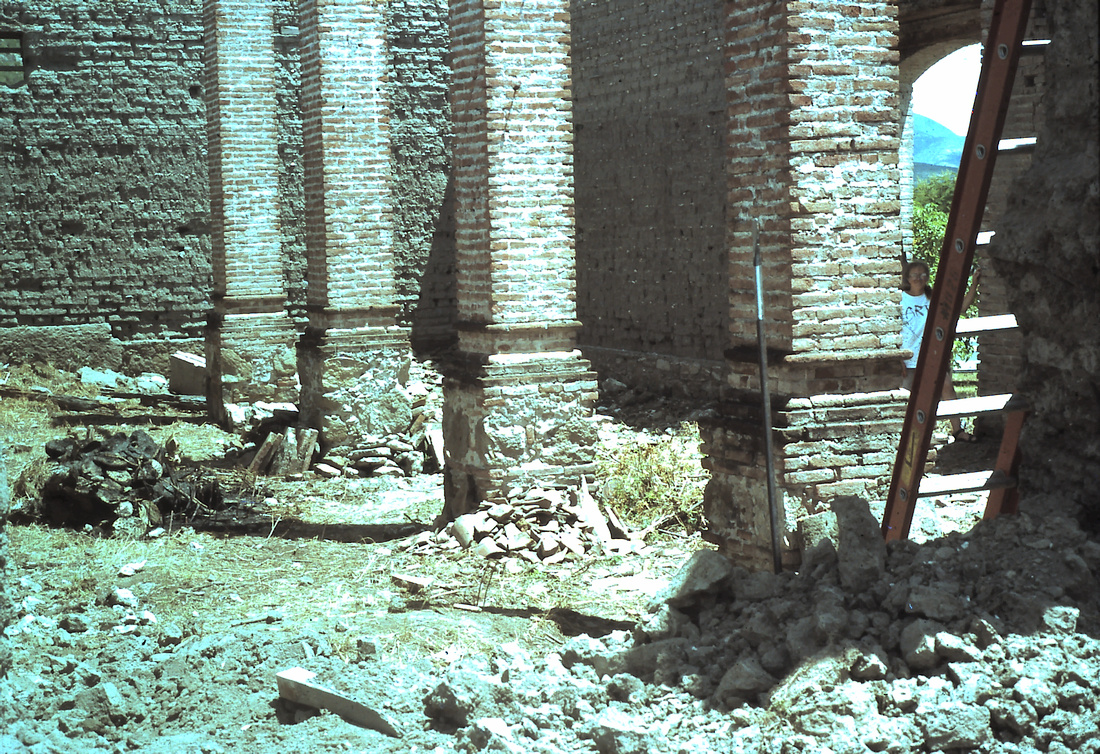
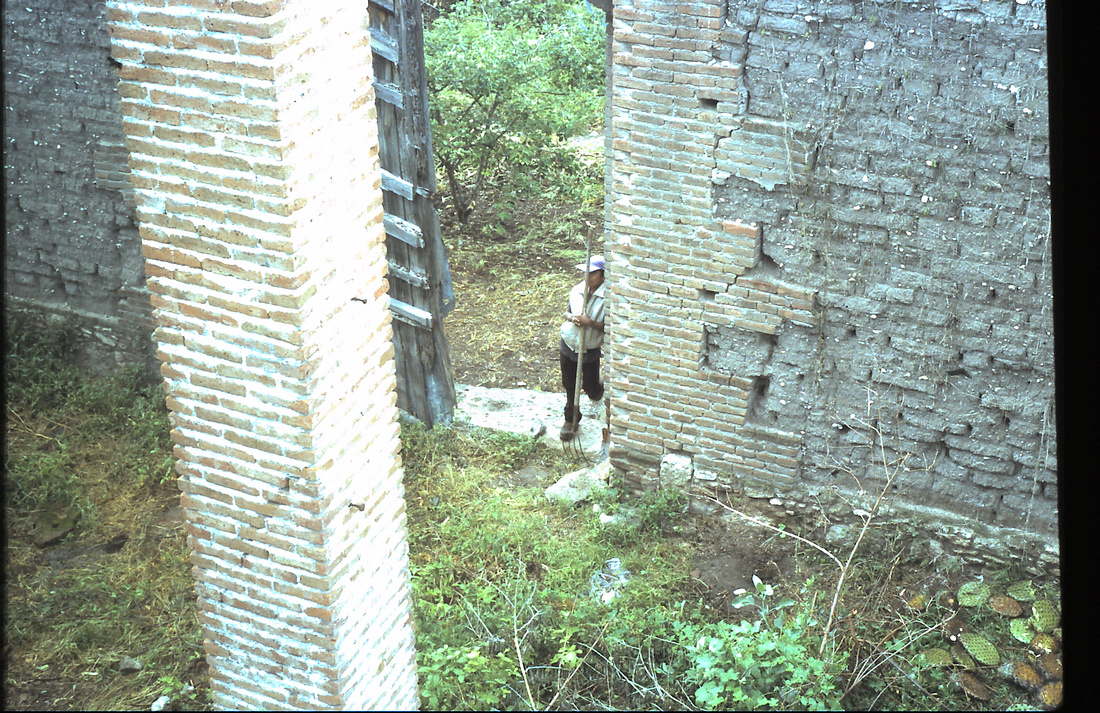 The walls being three feet thick provided a relatively safe work environment. Cutting the columns down was a little trickier. The columns were put together with a lime mixture. No cement in those days. I have always been amazed that when you eyeball down the columns standing on the ground they appear to be perfectly aligned. Incredible considering the tools they possessed or didn't possess over three hundred years ago.
The walls being three feet thick provided a relatively safe work environment. Cutting the columns down was a little trickier. The columns were put together with a lime mixture. No cement in those days. I have always been amazed that when you eyeball down the columns standing on the ground they appear to be perfectly aligned. Incredible considering the tools they possessed or didn't possess over three hundred years ago. 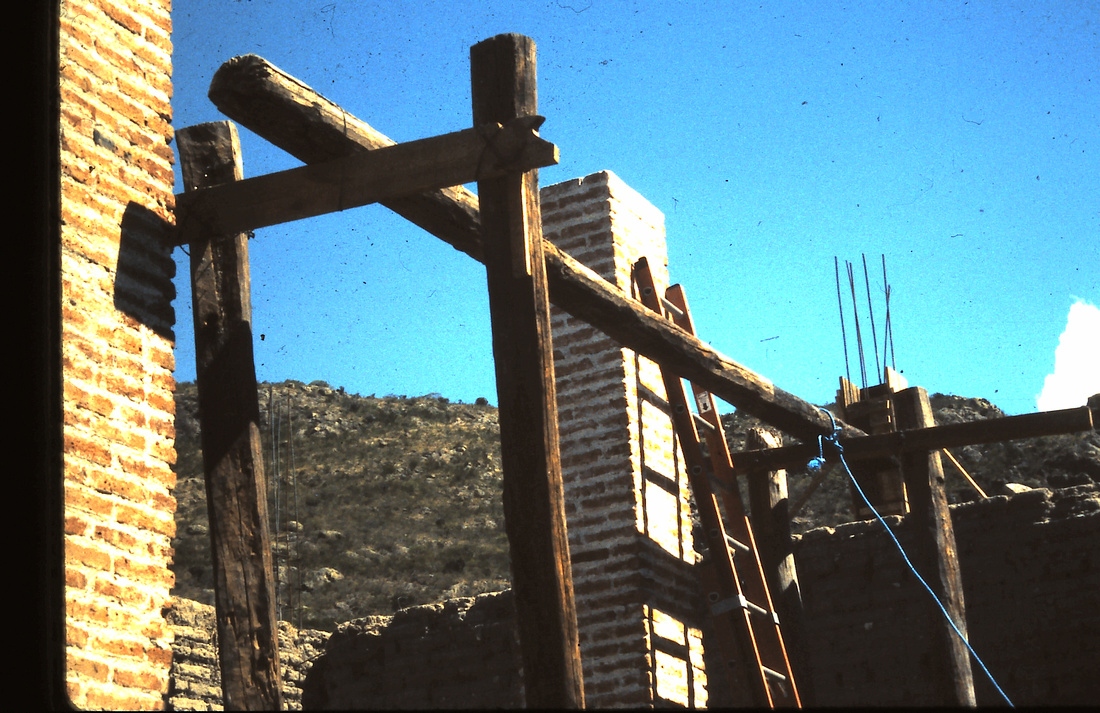



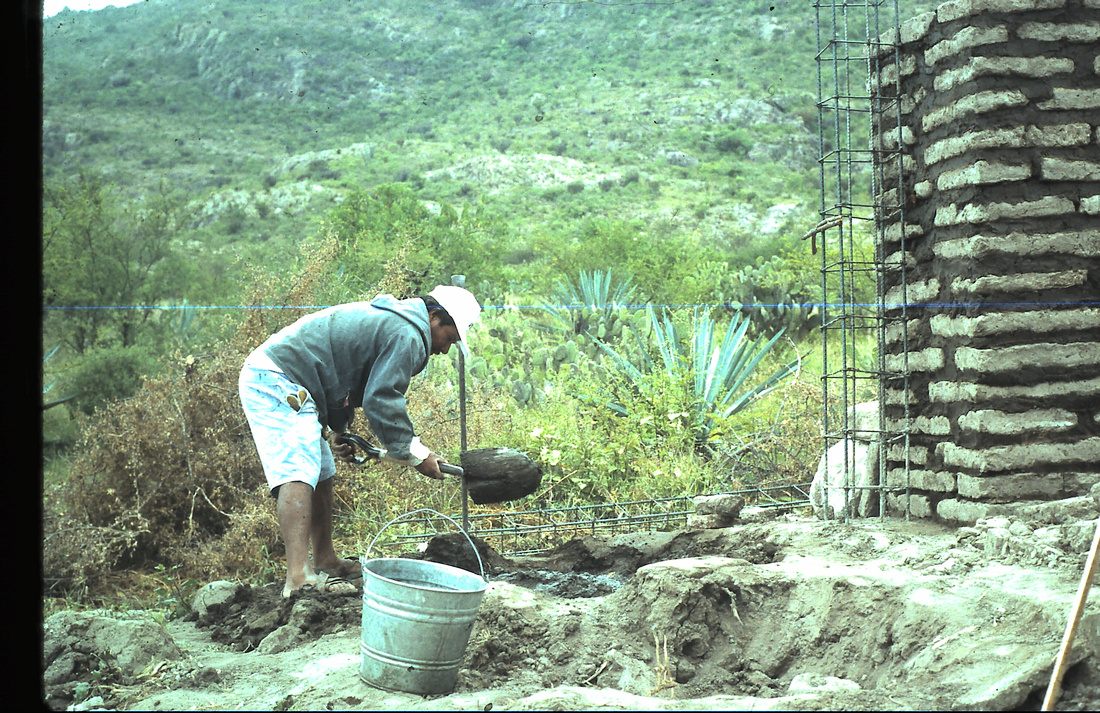
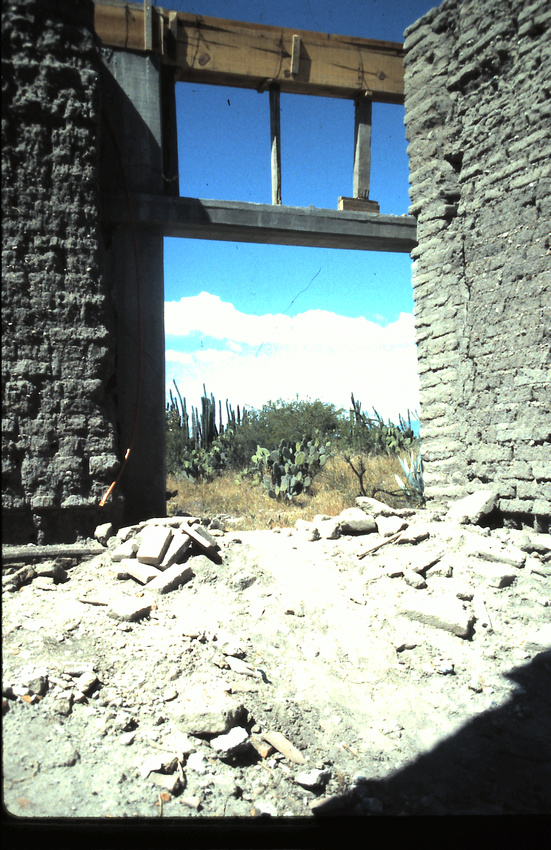 That opening eventually looked like this.
That opening eventually looked like this.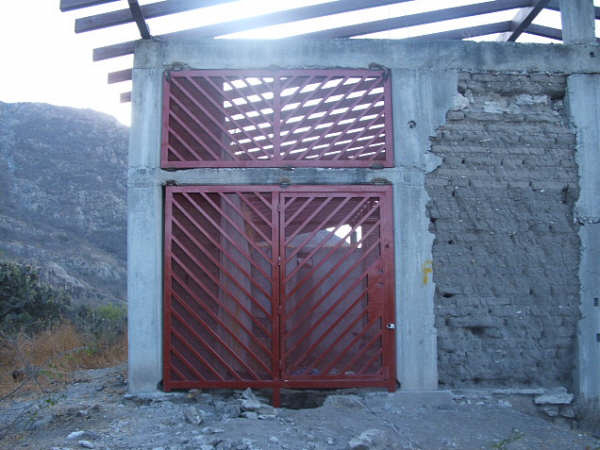
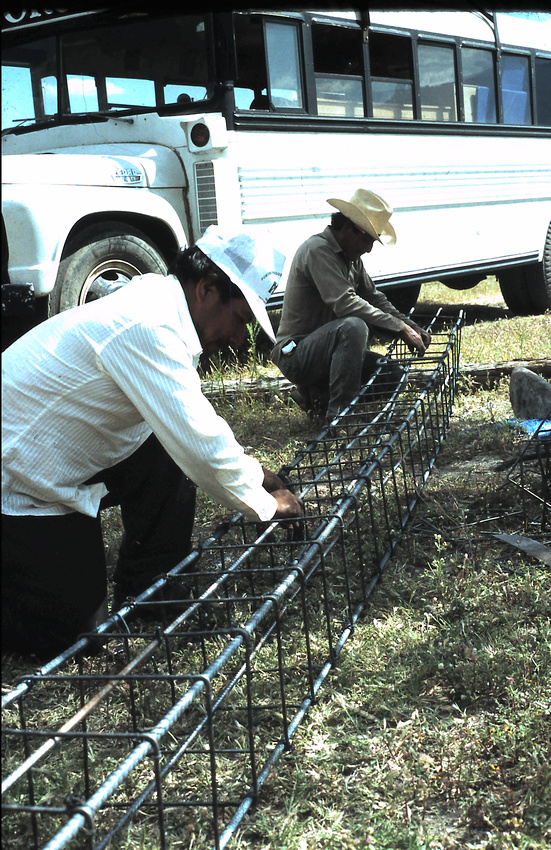
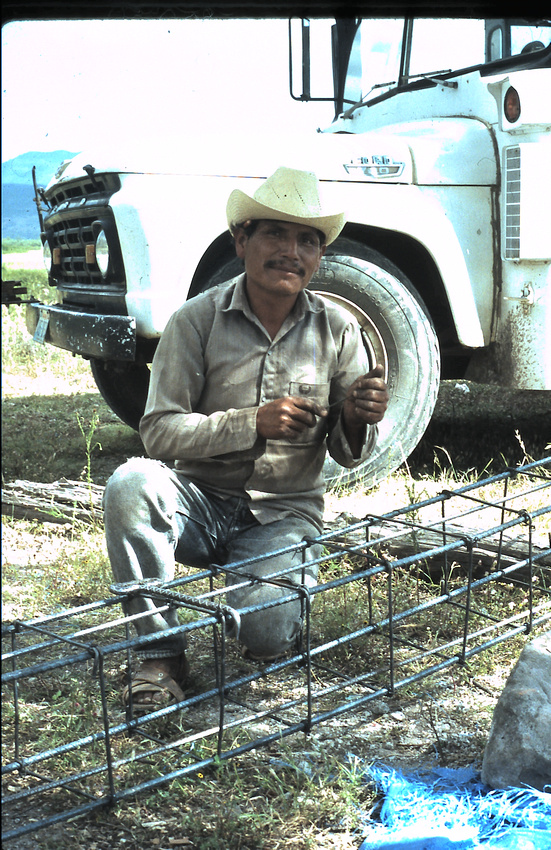

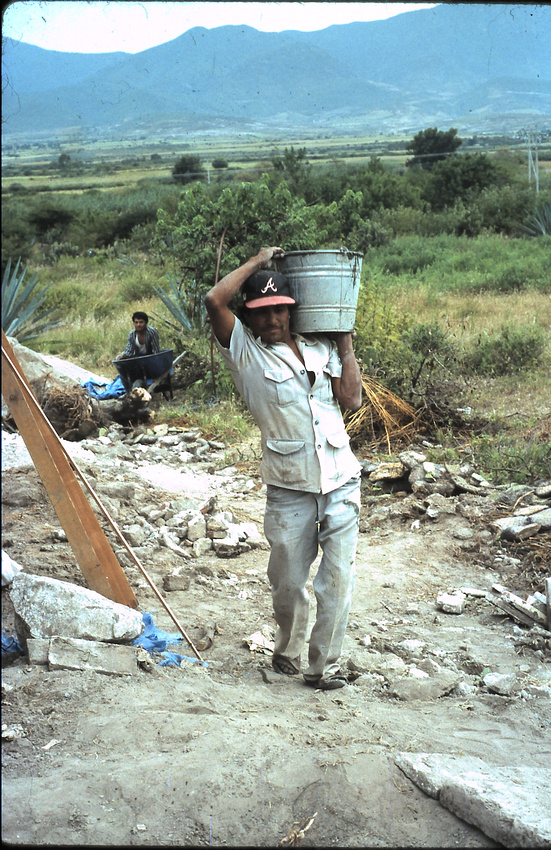

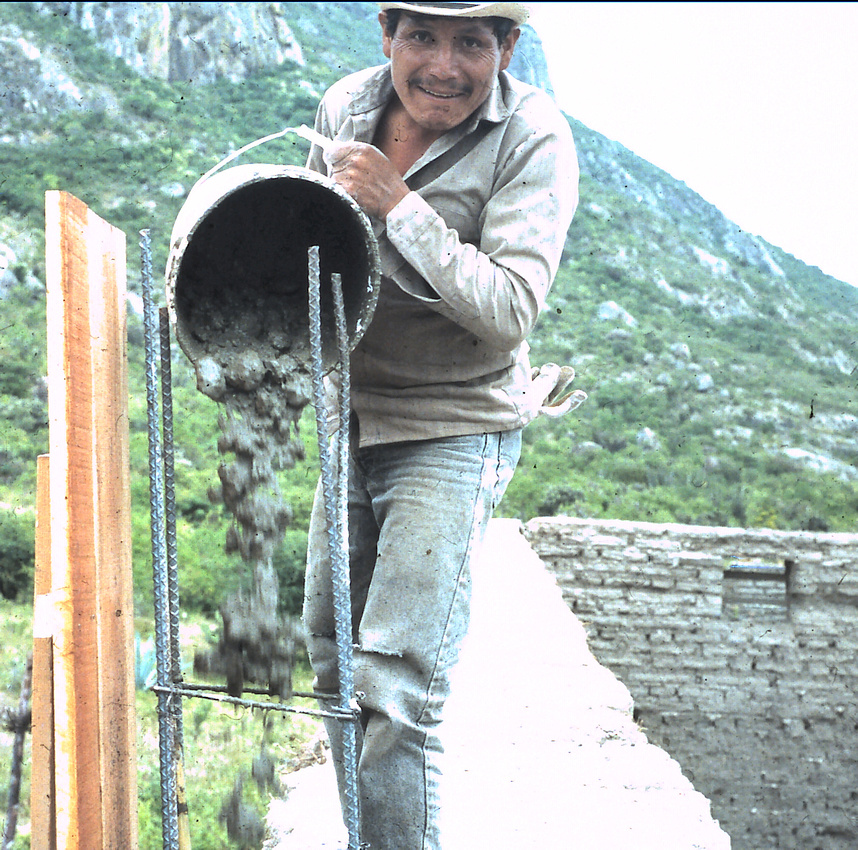
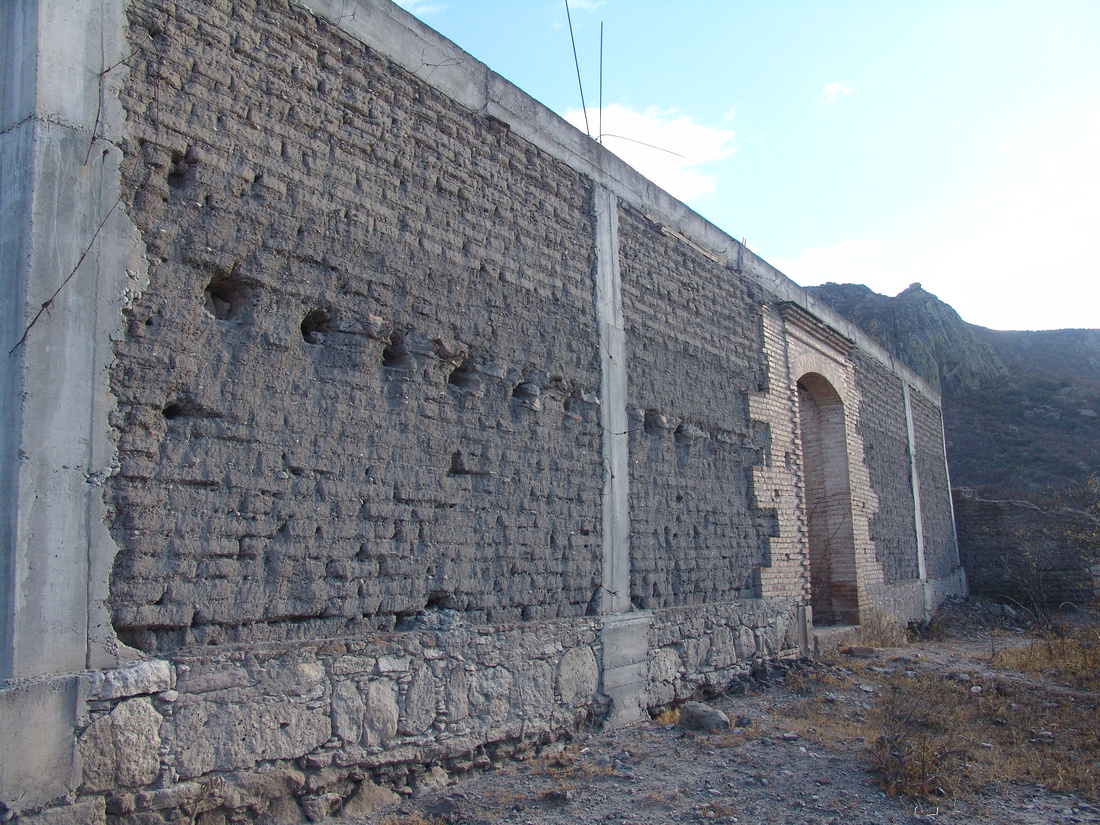
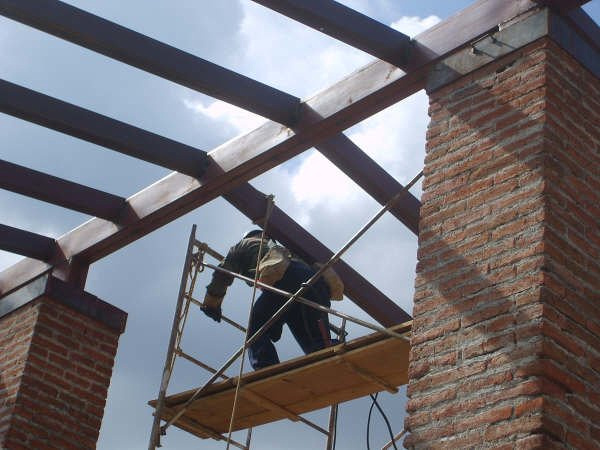
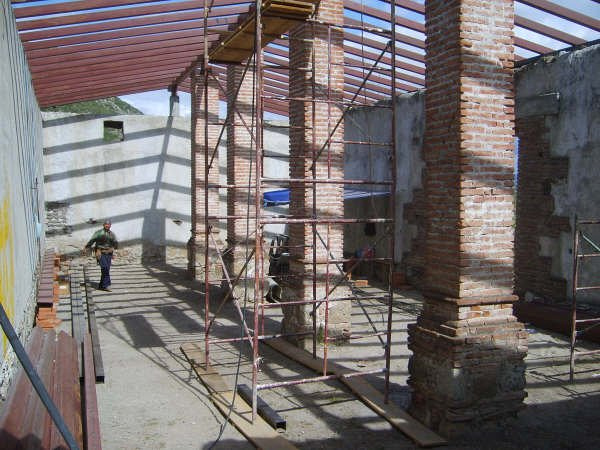

 Here are the gates! Front
Here are the gates! Front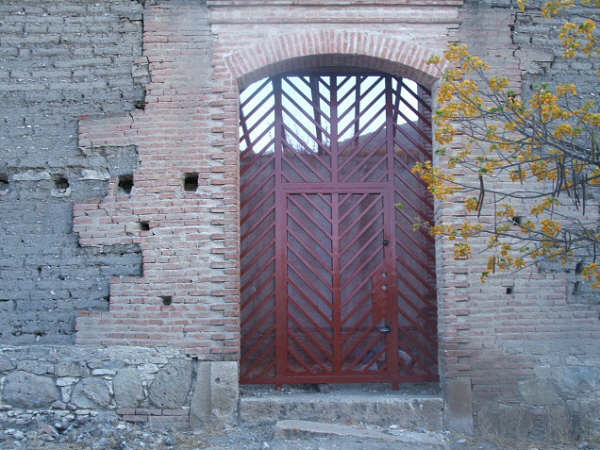
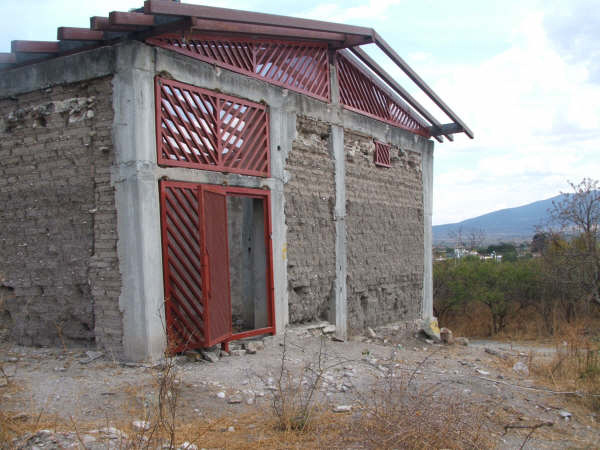 500 boards were treated and screwed on top of the metal structure. The view from below.
500 boards were treated and screwed on top of the metal structure. The view from below.

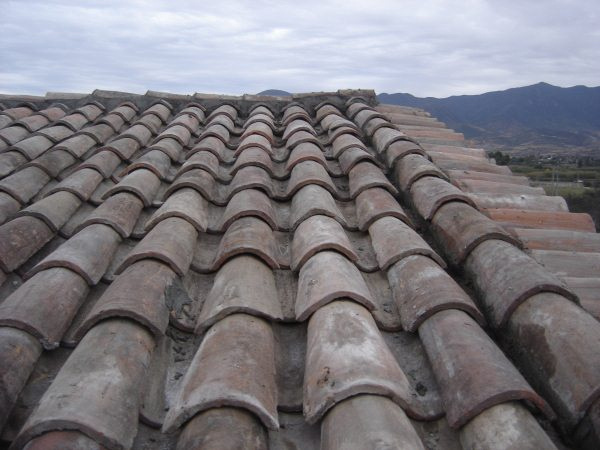 The inside got a coat of cement to cover the adobe. It's called repello. All hoses and boxes for electricity are installed before the repello is applied.
The inside got a coat of cement to cover the adobe. It's called repello. All hoses and boxes for electricity are installed before the repello is applied.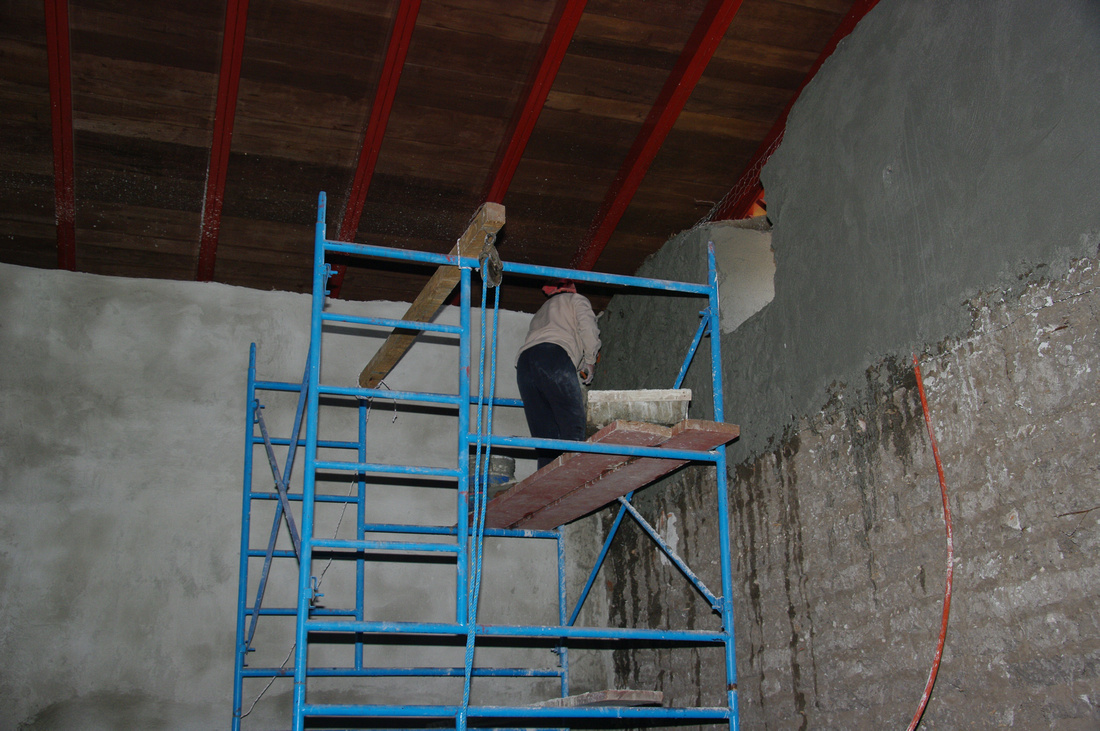
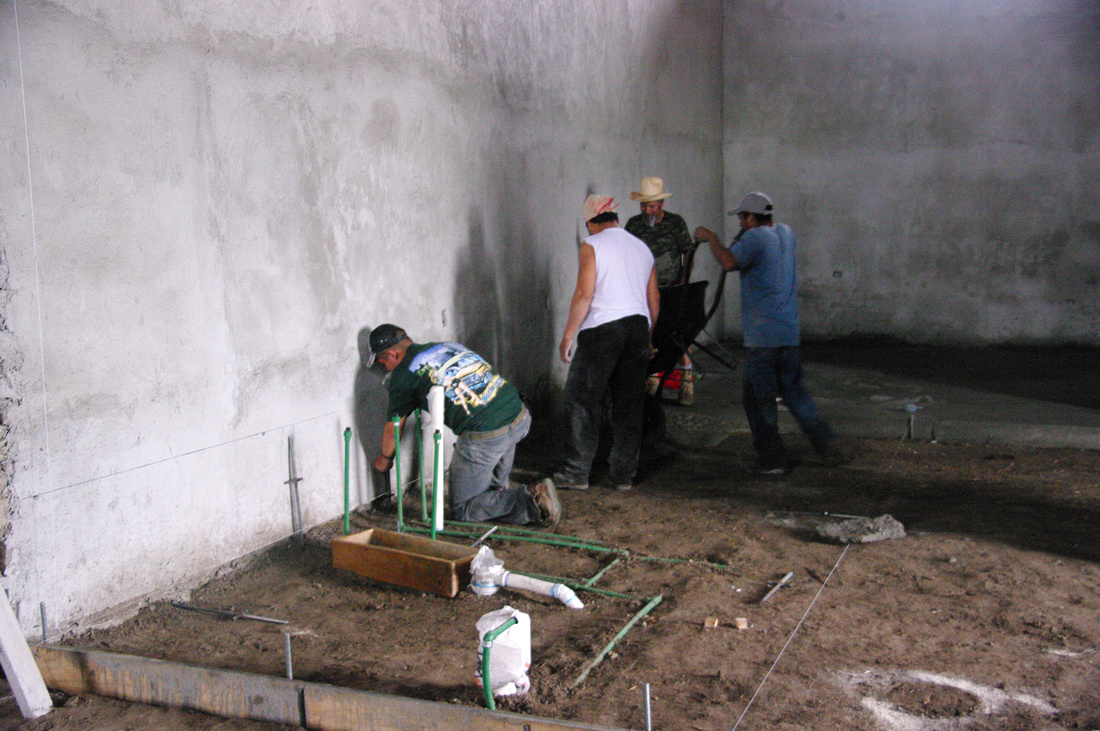

Sand and gravel are carried to the mixer by hand. It's backbreaking work. You can see in the background we had a portion of the land cleared.
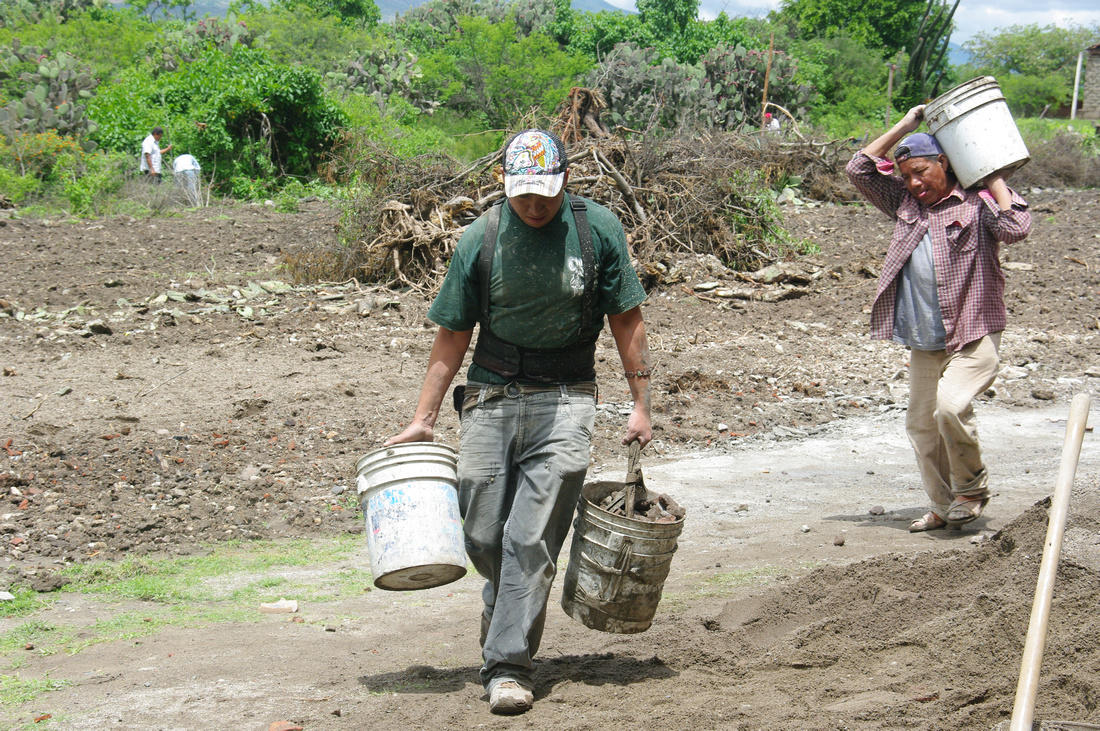 The finished product!!!!!!! The floor to the patio comes later.
The finished product!!!!!!! The floor to the patio comes later.

Here we are after the floor was done
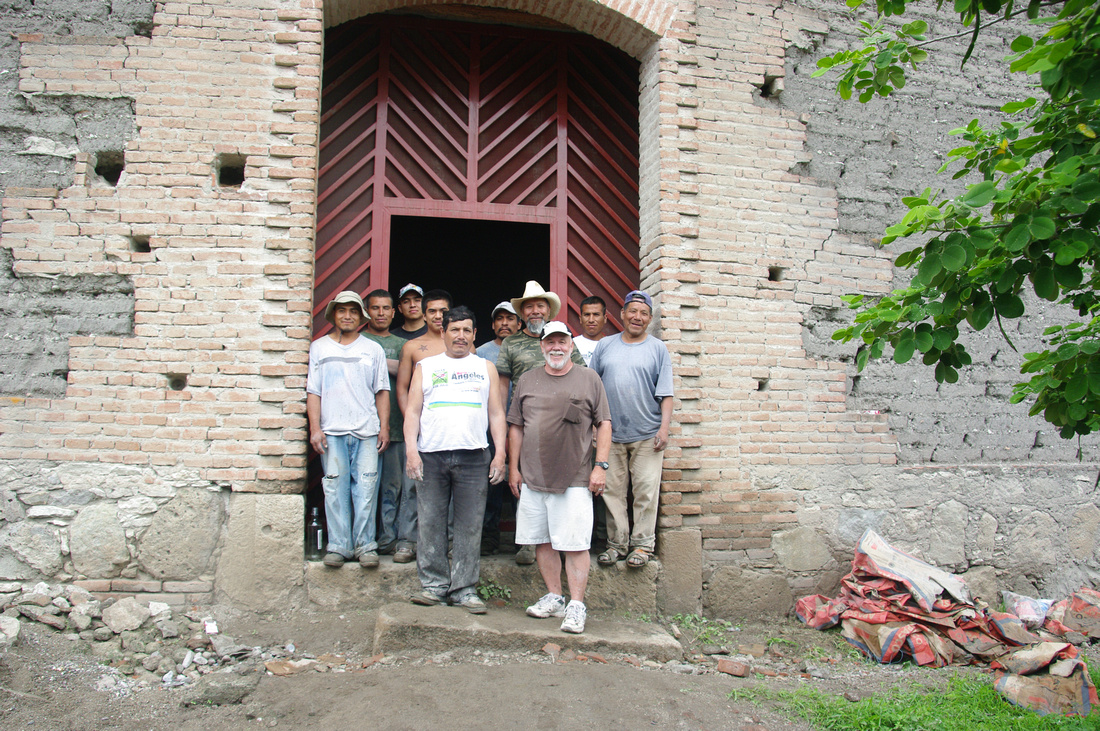
We broke from tradition and installed a sheet rock wall to separate the house from the patio. Much to the dismay of many of my friends.
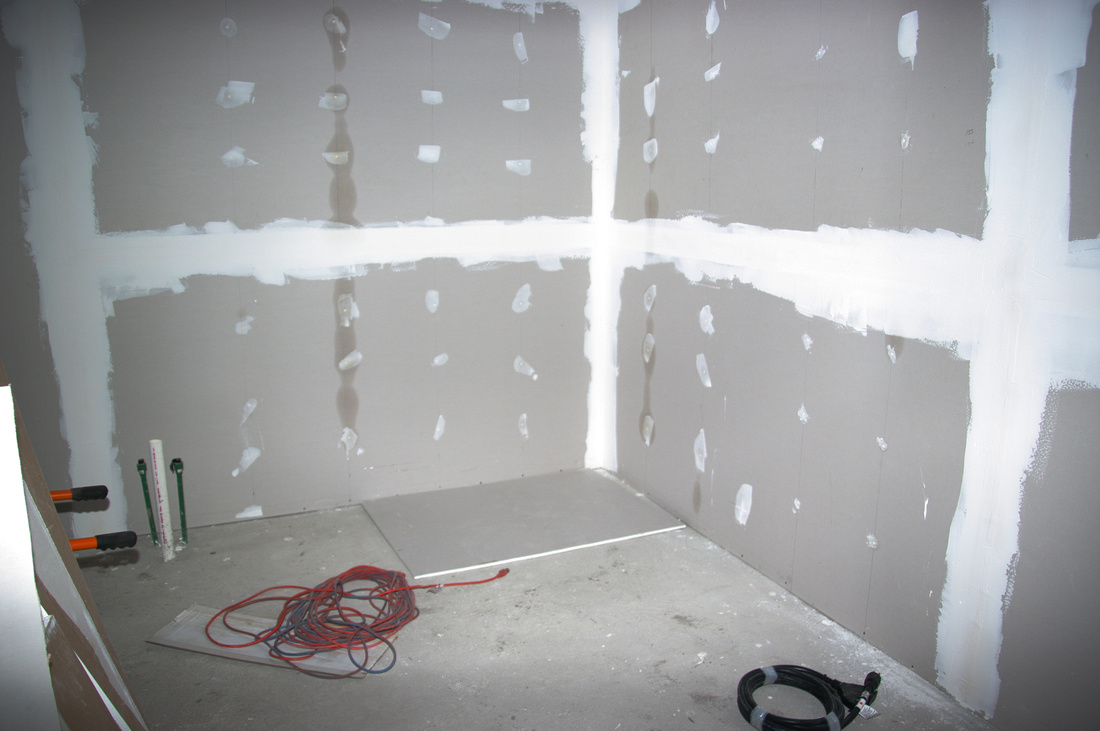
I wasn't here when the floor in the patio was poured but I was told that the cement was mixed outside and carried in by five gallon buckets. A friend took some photos for me.

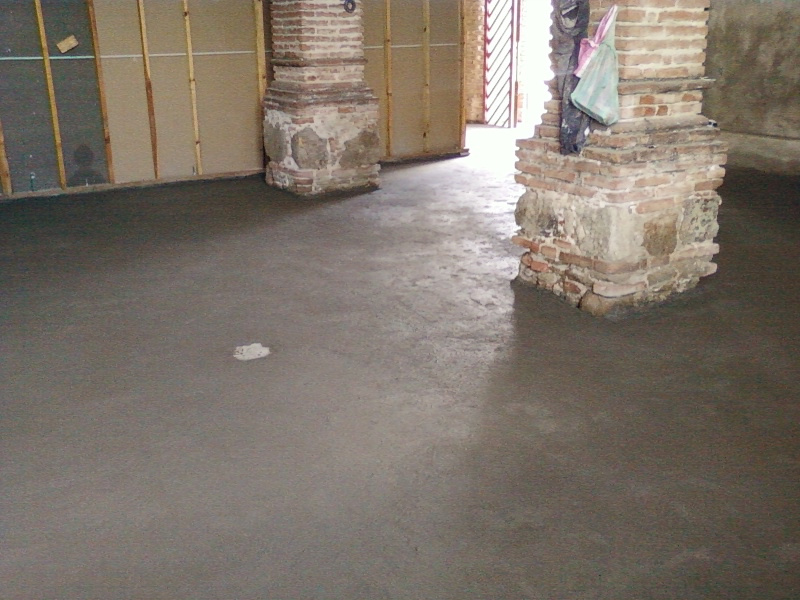 Without dragging you through all of the other work that has been done here is where we are now. It's still a work in progress.
Without dragging you through all of the other work that has been done here is where we are now. It's still a work in progress.
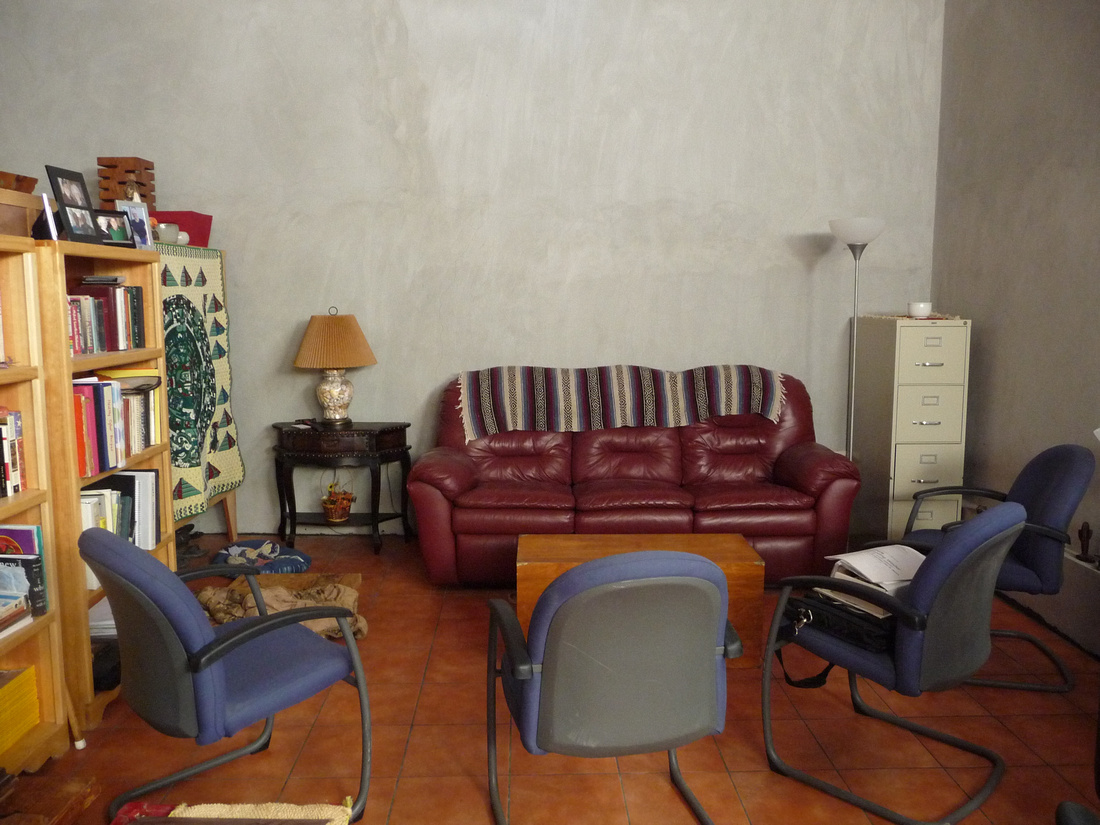
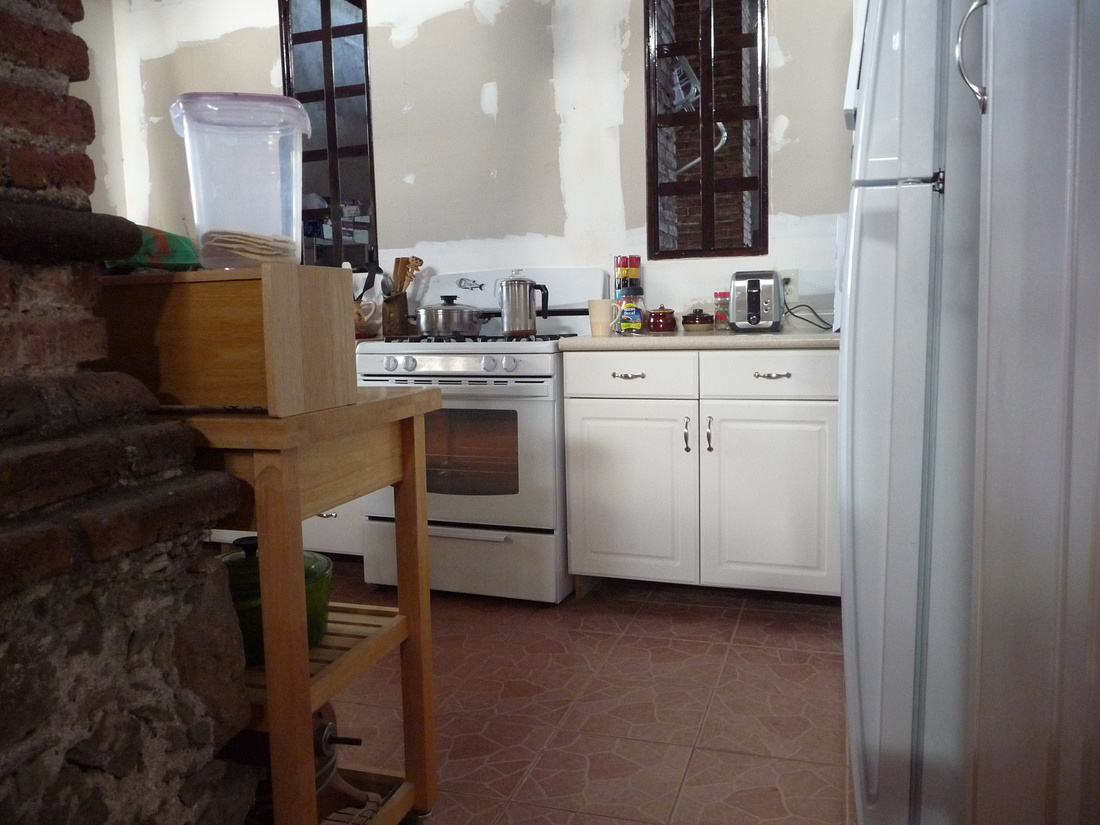

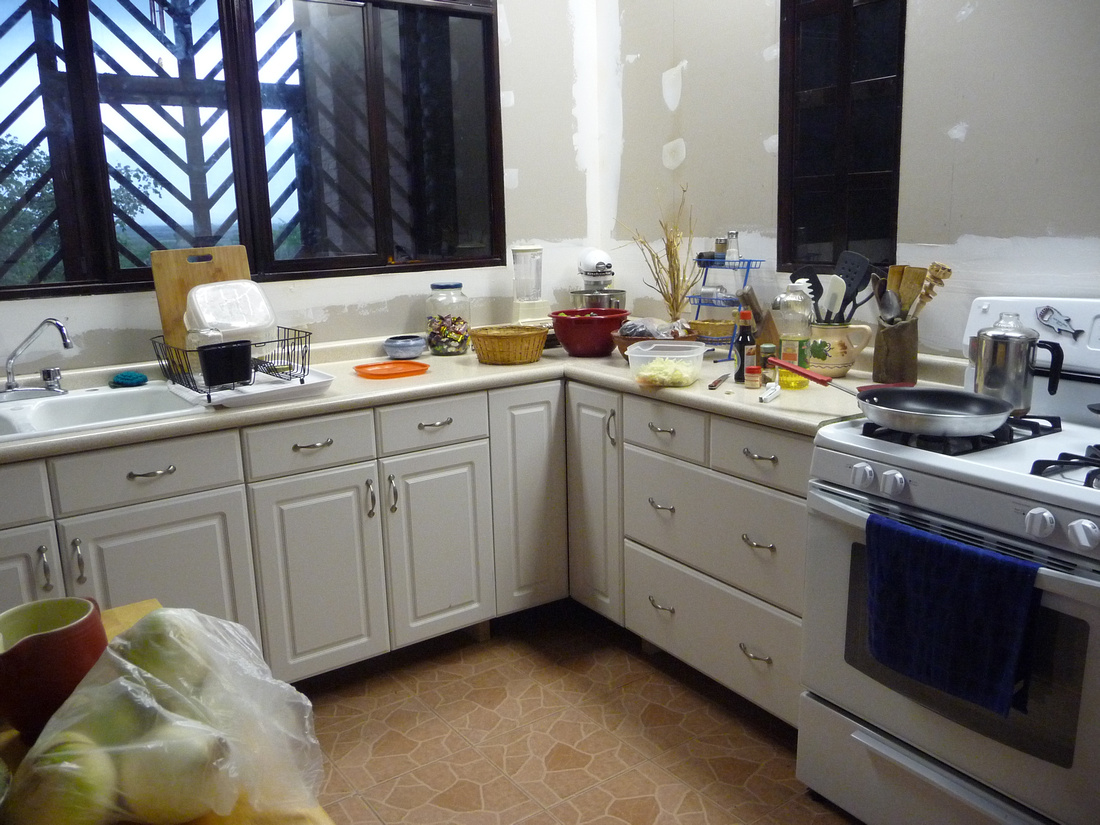
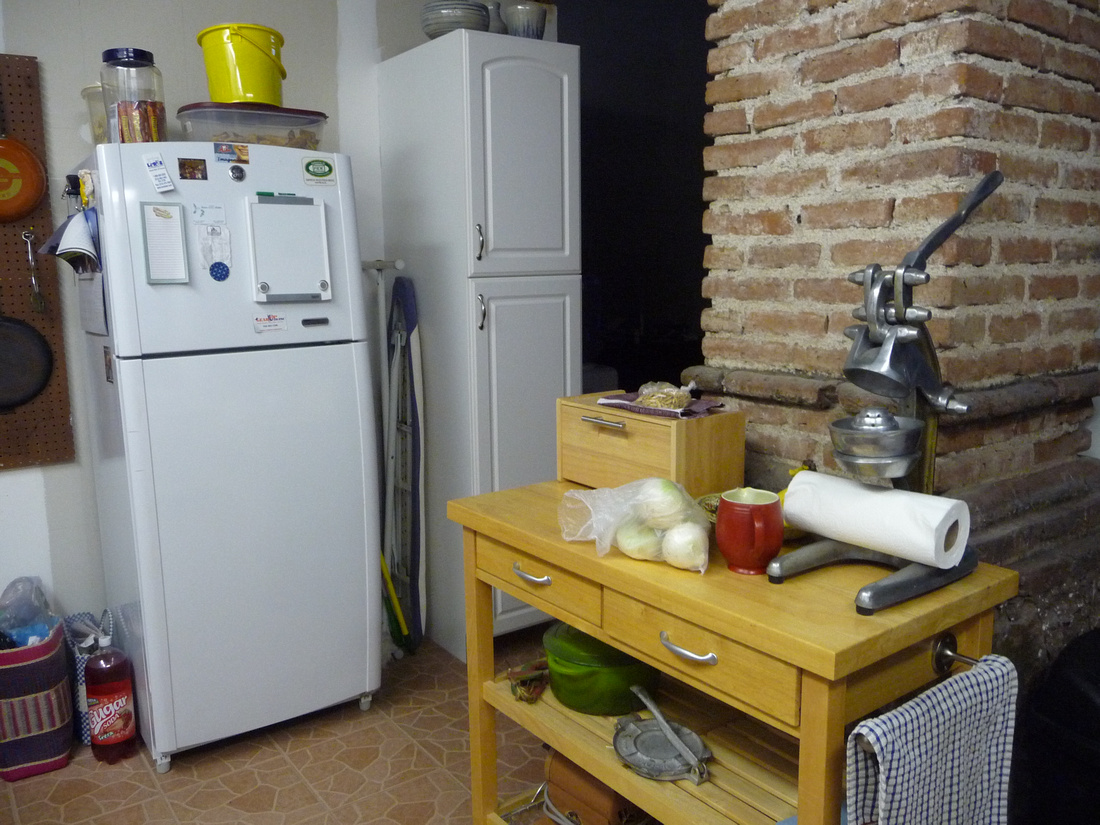

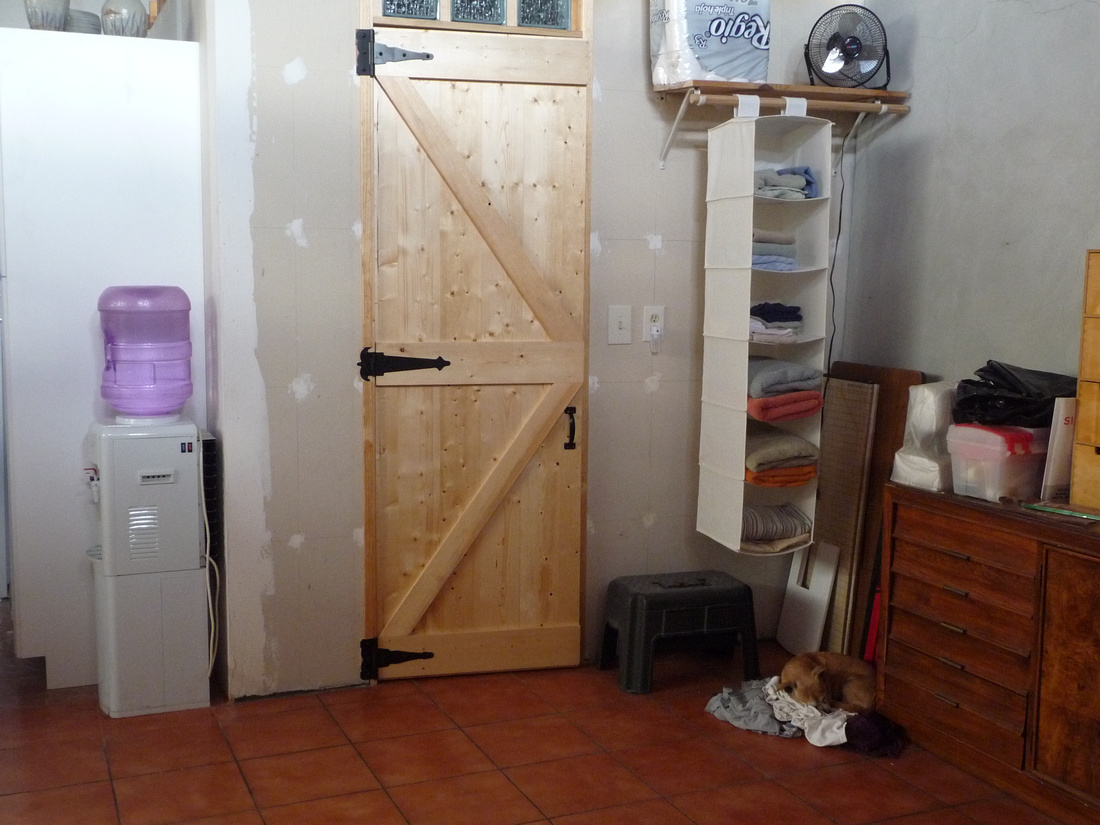
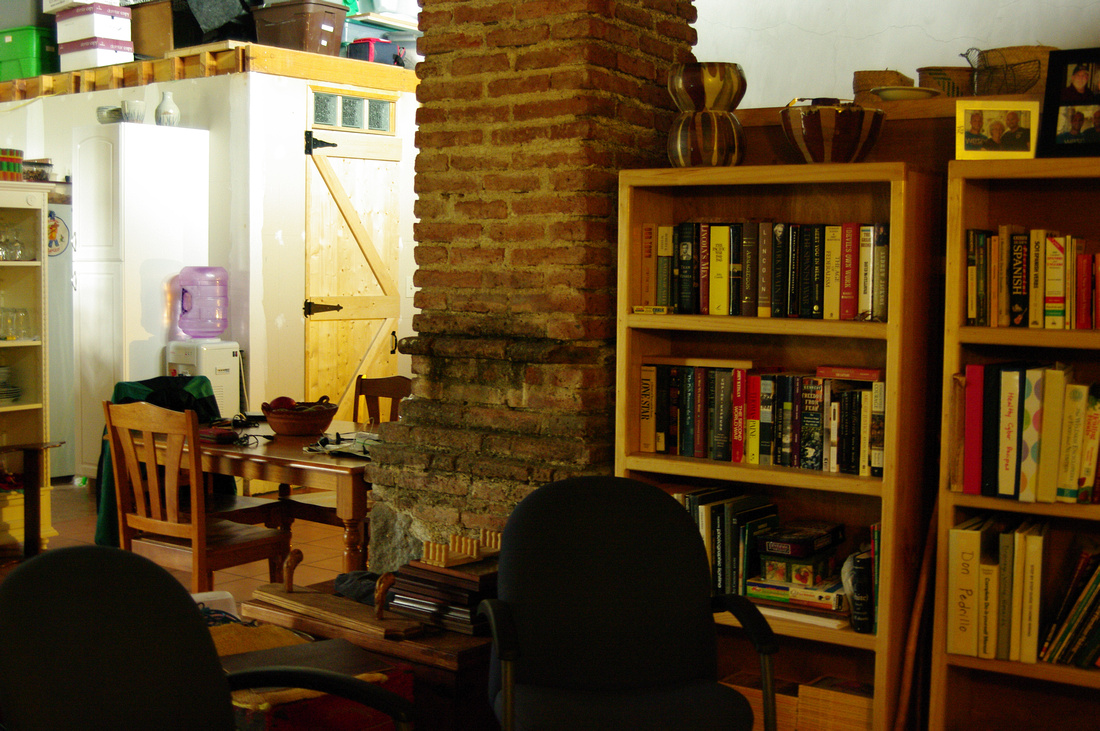


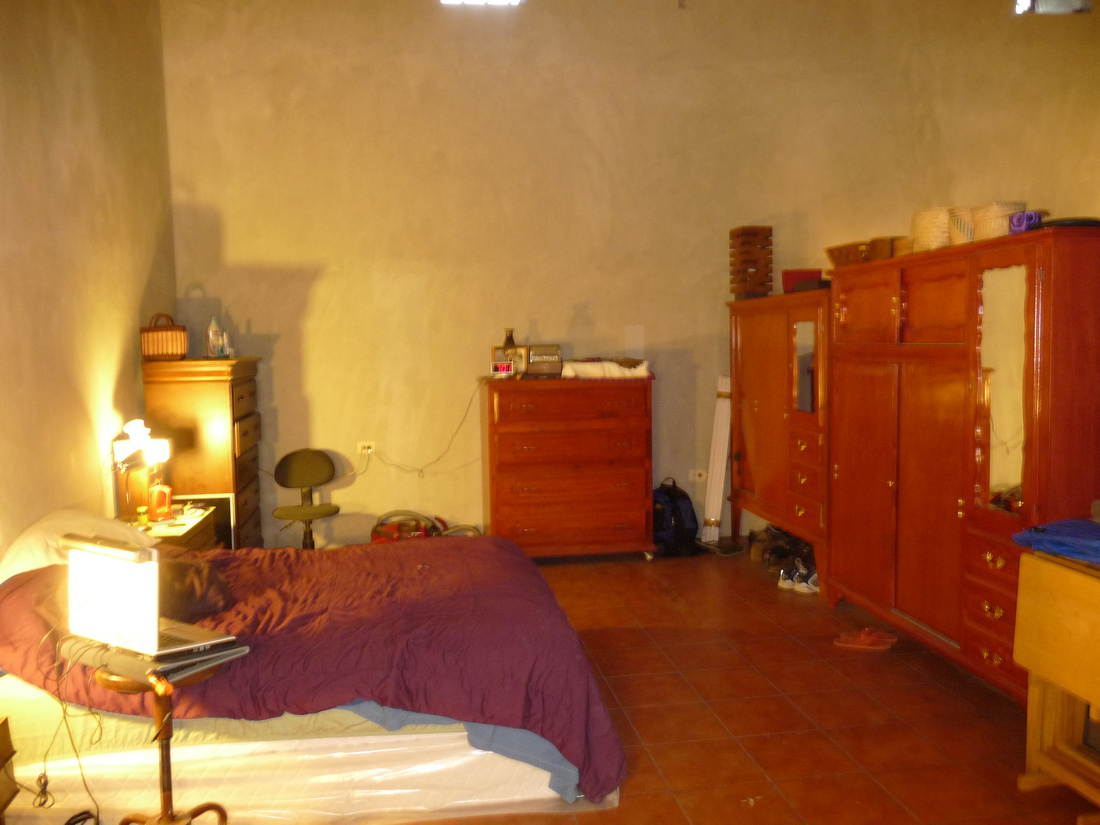
Inside the patio looking at the front door into the house.
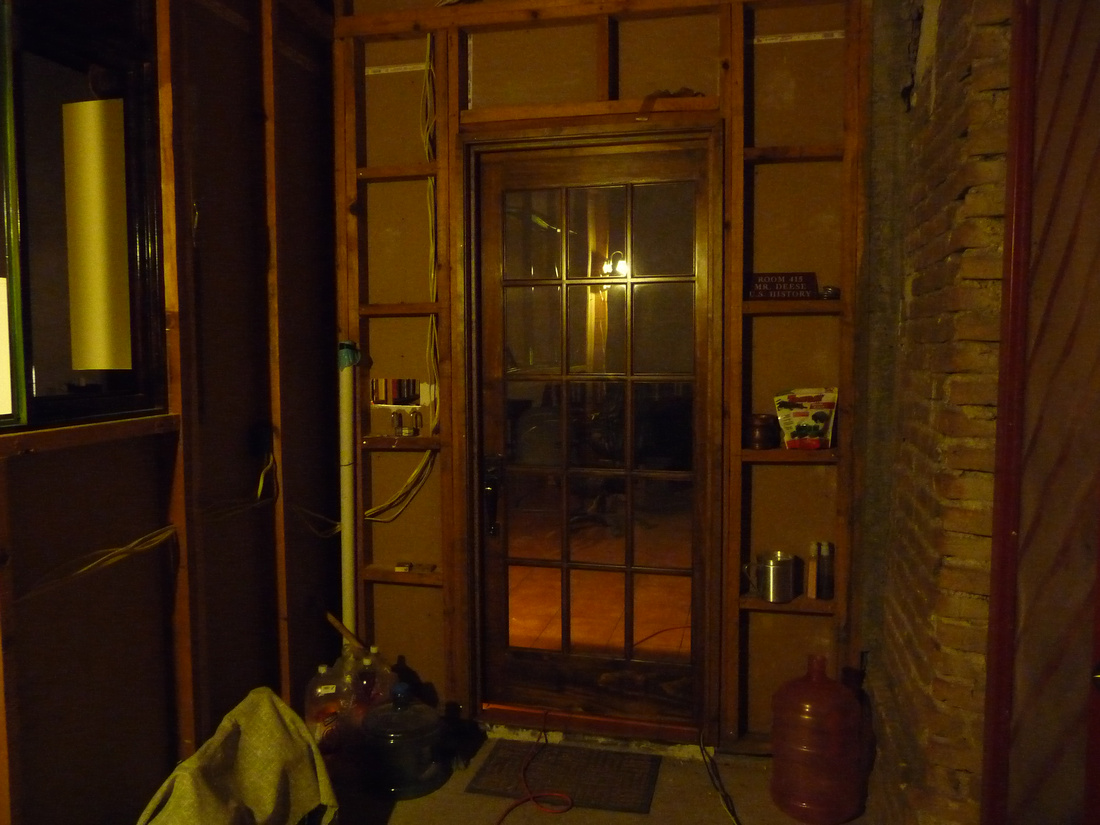
Beth and I are so thankful to have found Don Pedrillo. There is still much to do but we are reducing our workload and enjoying our friends more along with a little bit of exploring. Every day is an adventure. Regardless of what you hear about Mexico there are many wonderful people here living out their lives. We refuse to become embroiled in the politics of Mexico and must say it's a luxury to be distant from the politics of the United States. It's such a treasure to wake up in the morning and continue living our dream. The obstacles and challenges from living in another country are fascinating. Again we owe thanks to our wonderful friends for looking out for us. Sorry for the long posts. I'm so excited I can't help it!!!!!!!!!!!!!!!!!!!
Today is our 62nd day in Oaxaca and our 58th in Don Pedrillo. Our first days at Don Pedrillo were without water, power, or bathroom. We used candles at night, bathed at the home of friends, did our business in the woods, ate our meals in restaurants, used the generator to power tools, and had water trucked in. Needless to say, the first few days were very challenging.
Other than being stopped several times by the Federal Police our trip down was without incident. We were very apprehensive when we left because of the travel warnings due to the activities of the drug cartels. It seemed that everyone we talked to in Texas had a story of a friend of a friend being confronted in some degree by cartel members. As we pulled out of Matomoros we were hopeful but wary. It soon became obvious however that the highways seemed safe. There were literally hundreds of other travelers’ and the ominous presence of the Federal Police and Mexican Military.
The trip took three days. We were always in a hotel before dark. Because we’d made the trip several times in the past we knew the route well along with our favorite places to eat and sleep. Mickey and Yadi made the trip with us along with Polo and his wife Amparo, who’d driven their truck and trailer up to the boarder to help us move our things.
From Matamoros to San Luis Potosi, well, I can’t say much. But from San Luis to Oaxaca was beautiful. Also from San Luis south the roads are much better. Mostly freeway with at least two lanes each way with a divider.
Mexico’s gas stations are owned by the government. When we made our first trip in 1994 they were few and far between with minimal services. Today Pemex gas stations flood the highways. They are usually accompanied by a store. Many times you’ll find restaurants, Cappuccino outlets, gift stores, and a multitude of various types of vendors. Mexican gas prices don’t fluctuate like they do in the states. I compared prices the other day and found the price to be close to Texas prices.
Oaxaca is located about 900 miles from the southernmost point of Texas, (Brownsville). I included a map of Mexico with Oaxaca underlined in red.
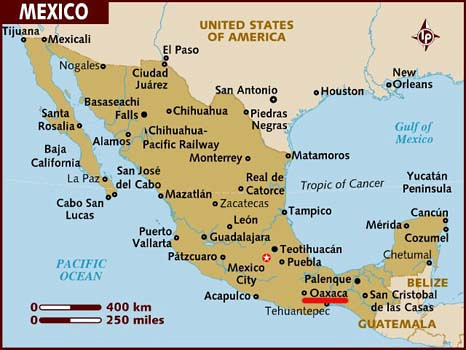
I’ve also included a map of the valley showing where we live in relation to local towns and villages. Don Pedrillo lies between Tlacolula and Mitla. It’s marked by a green arrow.

Most of our shopping is done in Tlacolula, a town of about 20,000 inhabitants. It hosts a fabulous outdoor market every Sunday. People come from the surrounding villages and towns to buy and sell. The market has gained worldwide recognition. It’s not unusual to hear several European languages spoken on any given Sunday. The market offers fruits and vegetables, meats, furniture, a variety of live animals, electric appliances, building material, local cuisine, clothing, shoes, and about everything else a family needs to survive. Beth and I choose to shop early and get done before the thousands of attendees arrive. Tlacolula is the county seat of the valley and is much more progressive than the surrounding towns and villages. Many of the people from nearby indigenous villages do their shopping in Tlacolula. Their traditional dress is a great contrast to many of the modern dressed residents of Tlacolula. It’s a classic scenario of old world new world. After countless visits to this town I have yet to tire of it’s uniqueness.
Mitla’s population is about 11,000. It’s also an international tourist site. Some of it’s archeological ruins have been dated back 10,000 years. Their Saturday market is also very popular but is a fraction of the size of Tlacolula’s. Walking the streets in Mitla at any hour is possible. Violent crime is almost nonexistent. Wonderful hand craft items can be purchased in Mitla including Mezcal, a strong drink made from the maguey plant. I believe the producers shoot for about 46% alcohol. The high from Mezcal is like no other drink. It’s almost drug like. Liters can be purchased for as little as two dollars a bottle so it is the drink of choice. Abuse is rampant. Three month binges are not unusual. Poverty and disparity are often motivating factors. While Tlacolula shuts down before dark for the most part. Many stores and restaurants remain open in Mitla until eleven or later. A walk during early night in Mitla is like a walk through small town America fifty years ago.
Don Pedrillo, the name of our home and the surrounding land, is an old Spanish hacienda. It was built sometime in the late sixteen hundreds. The building which we have converted into our home was the warehouse portion of the Hacienda. The walls are three feet thick and the roof at the peak is about twenty feet high. It has been an incredible experience turning those walls into a home. Much of the work was completely foreign to us. We have our friends to thank for their patience and advice. Some projects I refused to bend on. I was adamant about doing it my way. Consequently we’ve created a conglomeration of a mixed cultured dwelling. For several years one of my major preoccupations was staying cool. It turns out that keeping warm might be a greater concern. I am already considering having a wood stove built to remove the morning chill. It appears as though a range from the high sixties to the low seventies is going to be the average temperature inside the house regardless of the temperature outside.
Our lives are fuller than they have been in several years. Between working on our home, visiting and entertaining friends, exploring the area, adjusting to the culture, and giving sufficient attention to our dogs Scooter and Einstein our days are incredibly satisfying. We have high speed internet and are using Skype to communicate along with Facebook and email. We look forward to visits from friends and family.